Steve Mould – This microscope uses touch

Steve Mould – This microscope uses touch
Caustic lenses are really weird
The Assassin’s Teapot Is Weird
The Most Powerful Computers You’ve Never Heard Of
Spiny Norman said:
The Assassin’s Teapot Is Weird
Don’t drop in for afternoon tea.
How Did She Rip Her Bottom On This Rock?
In this video, we investigate the effect of squat and see how it can mean that ships hit rocks deeper than their own draft. We use the example of the QE2, which struck an uncharted shoal after experiencing squat.
roughbarked said:
Spiny Norman said:
The Assassin’s Teapot Is WeirdDon’t drop in for afternoon tea.
nods
Arts said:
Spiny Norman said:
The Assassin’s Teapot Is Weirdnah it’s very cool
I do like Steve Mould’s videos.

Spiny Norman said:
The Most Powerful Computers You’ve Never Heard Of
Enjoyed this one enormously. But it’s not about powerful computers,
it’s about tide prediction using a rotating ball moving back and forth across a sinusoidal oscillating plate, and suchlike.
Spiny Norman said:
Caustic lenses are really weird
Caustic mirrors are ancient Chinese technology. I was given one many years ago by a Chinese chap at a conference. Reflect sunlight on it and it projects an image.
They may even date back to the bronze age. It’s a way of hiding a message in plain sight, so would have been very useful for coded communications. It doesn’t require massive computers to produce, just high art.
Think of it this way. In order to get a focus from parallel rays (sunlight) at a fixed distance from the mirror (or lens) the curvature is exactly constant over all those parts the are involved in deflecting the light. A constant focal length can be created easily using just a mandrel, hammer and mallet. Nothing fancy needed.
You can compute it if you want to, but it isn’t necessary.
Spiny Norman said:
How Did She Rip Her Bottom On This Rock?In this video, we investigate the effect of squat and see how it can mean that ships hit rocks deeper than their own draft. We use the example of the QE2, which struck an uncharted shoal after experiencing squat.
The ‘negative pressure’ along the sides thing is a factor when a ship traverses a narrow channel, like a ship canal, and the interaction of that low pressure area and the canal bank is known, not unsurprisingly, as ‘canal effect’. It’s a bit of a quirky thing, and can manifest in other ways – for instance, when turning to enter a narrow waterway, you may have to take off the turn and begin to straighten up rather earlier than you would in open water. And, as the video shows, it works similarly underneath the ship as well.
The ’10% of draught’ rule mentioned is not something that i’d ever contemplate, although merchant captains may be ok with it, driven by economics as they are. Given that the soundings shown on the chart are quite often just ‘spot’ measurements, taken perhaps by hand lead-and-line by Matthew Flinders back in 1820 or somesuch, and not a complete picture of the sea-floor, i wouldn’t be at all happy with less than 20% of the draught, and preferably a rather larger measure than that.
mollwollfumble said:
Spiny Norman said:
Caustic lenses are really weirdCaustic mirrors are ancient Chinese technology. I was given one many years ago by a Chinese chap at a conference. Reflect sunlight on it and it projects an image.
They may even date back to the bronze age. It’s a way of hiding a message in plain sight, so would have been very useful for coded communications. It doesn’t require massive computers to produce, just high art.
Think of it this way. In order to get a focus from parallel rays (sunlight) at a fixed distance from the mirror (or lens) the curvature is exactly constant over all those parts the are involved in deflecting the light. A constant focal length can be created easily using just a mandrel, hammer and mallet. Nothing fancy needed.
You can compute it if you want to, but it isn’t necessary.
There was an item on imgur the other day.
A bloke had fashioned an array of small hexagonal mirrors arranged such that, when held at the proper angle to the sun during a beach walk with his partner, some of the mirrors’ reflected light spelled out MARRY ME on the beach sand.
captain_spalding said:
mollwollfumble said:
Spiny Norman said:
Caustic lenses are really weirdCaustic mirrors are ancient Chinese technology. I was given one many years ago by a Chinese chap at a conference. Reflect sunlight on it and it projects an image.
They may even date back to the bronze age. It’s a way of hiding a message in plain sight, so would have been very useful for coded communications. It doesn’t require massive computers to produce, just high art.
Think of it this way. In order to get a focus from parallel rays (sunlight) at a fixed distance from the mirror (or lens) the curvature is exactly constant over all those parts the are involved in deflecting the light. A constant focal length can be created easily using just a mandrel, hammer and mallet. Nothing fancy needed.
You can compute it if you want to, but it isn’t necessary.
There was an item on imgur the other day.
A bloke had fashioned an array of small hexagonal mirrors arranged such that, when held at the proper angle to the sun during a beach walk with his partner, some of the mirrors’ reflected light spelled out MARRY ME on the beach sand.
Tamb said:
captain_spalding said:
mollwollfumble said:Caustic mirrors are ancient Chinese technology. I was given one many years ago by a Chinese chap at a conference. Reflect sunlight on it and it projects an image.
They may even date back to the bronze age. It’s a way of hiding a message in plain sight, so would have been very useful for coded communications. It doesn’t require massive computers to produce, just high art.
Think of it this way. In order to get a focus from parallel rays (sunlight) at a fixed distance from the mirror (or lens) the curvature is exactly constant over all those parts the are involved in deflecting the light. A constant focal length can be created easily using just a mandrel, hammer and mallet. Nothing fancy needed.
You can compute it if you want to, but it isn’t necessary.
There was an item on imgur the other day.
A bloke had fashioned an array of small hexagonal mirrors arranged such that, when held at the proper angle to the sun during a beach walk with his partner, some of the mirrors’ reflected light spelled out MARRY ME on the beach sand.
That poor misguided woman. Imagine being married to someone as nerdy as that.
I mean who could be bothered with that much effort, wear them down till they give up and say yes to shut you up
Michael V said:
Arts said:
Spiny Norman said:
The Assassin’s Teapot Is Weirdnah it’s very cool
I do like Steve Mould’s videos.
He even has a thingy, kind of named after him.
https://en.wiktionary.org/wiki/Mould_effect
The construction of the Hoover Dam in the USA.
Spiny Norman said:
The construction of the Hoover Dam in the USA.
Samuyau photos!
Sand drag racing in Dubai Some vehicles claim to have 4,000 Hp:
https://www.youtube.com/watch?v=WAJi5FReiCs
Michael V said:
Sand drag racing in Dubai Some vehicles claim to have 4,000 Hp:https://www.youtube.com/watch?v=WAJi5FReiCs
Nice!
I’m not a fan of drag racing at all, but I am very impressed with the Top Fuel drag cars. They cracked 11,000 hp a couple of years ago. One of my fave parts is the start & warm-up in the pits. They start the engine using fairly regular fuel, then after a second or so transition to full nitromethane. See if you can spot when that happens. :)
Spiny Norman said:
Michael V said:
Sand drag racing in Dubai Some vehicles claim to have 4,000 Hp:https://www.youtube.com/watch?v=WAJi5FReiCs
Nice!
I’m not a fan of drag racing at all, but I am very impressed with the Top Fuel drag cars. They cracked 11,000 hp a couple of years ago. One of my fave parts is the start & warm-up in the pits. They start the engine using fairly regular fuel, then after a second or so transition to full nitromethane. See if you can spot when that happens. :)
Very high tick-over on that one. Yeah, the transition from petrol to nitro makes the engine sound so much angrier.
Michael V said:
Spiny Norman said:
Michael V said:
Sand drag racing in Dubai Some vehicles claim to have 4,000 Hp:https://www.youtube.com/watch?v=WAJi5FReiCs
Nice!
I’m not a fan of drag racing at all, but I am very impressed with the Top Fuel drag cars. They cracked 11,000 hp a couple of years ago. One of my fave parts is the start & warm-up in the pits. They start the engine using fairly regular fuel, then after a second or so transition to full nitromethane. See if you can spot when that happens. :)Very high tick-over on that one. Yeah, the transition from petrol to nitro makes the engine sound so much angrier.
Michael V said:
Spiny Norman said:
Michael V said:
Sand drag racing in Dubai Some vehicles claim to have 4,000 Hp:https://www.youtube.com/watch?v=WAJi5FReiCs
Nice!
I’m not a fan of drag racing at all, but I am very impressed with the Top Fuel drag cars. They cracked 11,000 hp a couple of years ago. One of my fave parts is the start & warm-up in the pits. They start the engine using fairly regular fuel, then after a second or so transition to full nitromethane. See if you can spot when that happens. :)Very high tick-over on that one. Yeah, the transition from petrol to nitro makes the engine sound so much angrier.
This is a great interview with Don Garlits. Watch the whole thing to get the context of it, but the best part starts at about the four minute mark.
Spiny Norman said:
Michael V said:
Spiny Norman said:Nice!
I’m not a fan of drag racing at all, but I am very impressed with the Top Fuel drag cars. They cracked 11,000 hp a couple of years ago. One of my fave parts is the start & warm-up in the pits. They start the engine using fairly regular fuel, then after a second or so transition to full nitromethane. See if you can spot when that happens. :)Very high tick-over on that one. Yeah, the transition from petrol to nitro makes the engine sound so much angrier.
This is a great interview with Don Garlits. Watch the whole thing to get the context of it, but the best part starts at about the four minute mark.
I met Don Garlits in Sydney at the Castlereagh Dragstrip in (IIRC) 1975. He seemed like a nice bloke.
Did you see the Garlits interview in “Coltraine’s Trains, Planes and Automobiles?” No discussion of nitro. Instead, they discussed, worked on and fired up a Hemi Chrysler that ran a WWII air-raid siren.
Michael V said:
Spiny Norman said:
Michael V said:Very high tick-over on that one. Yeah, the transition from petrol to nitro makes the engine sound so much angrier.
This is a great interview with Don Garlits. Watch the whole thing to get the context of it, but the best part starts at about the four minute mark.
I met Don Garlits in Sydney at the Castlereagh Dragstrip in (IIRC) 1975. He seemed like a nice bloke.
Did you see the Garlits interview in “Coltraine’s Trains, Planes and Automobiles?” No discussion of nitro. Instead, they discussed, worked on and fired up a Hemi Chrysler that ran a WWII air-raid siren.
I remember the siren, but that was many years ago and I wouldn’t have known who Garlits was back then. I’m impressed that you were lucky to meet him! You know he’s the one that first put the engine behind the driver in the TF class?
Lab-grown 3D skin grafts could be applied like “biological clothing”.
Spiny Norman said:
Michael V said:
Spiny Norman said:This is a great interview with Don Garlits. Watch the whole thing to get the context of it, but the best part starts at about the four minute mark.
I met Don Garlits in Sydney at the Castlereagh Dragstrip in (IIRC) 1975. He seemed like a nice bloke.
Did you see the Garlits interview in “Coltraine’s Trains, Planes and Automobiles?” No discussion of nitro. Instead, they discussed, worked on and fired up a Hemi Chrysler that ran a WWII air-raid siren.
I remember the siren, but that was many years ago and I wouldn’t have known who Garlits was back then. I’m impressed that you were lucky to meet him! You know he’s the one that first put the engine behind the driver in the TF class?
Yes. I was aware of that.
One of the good things about drag racing is that the pits are completely open to the public. You can wander around, watch and have conversations.
captain_spalding said:
mollwollfumble said:
Spiny Norman said:
Caustic lenses are really weirdCaustic mirrors are ancient Chinese technology. I was given one many years ago by a Chinese chap at a conference. Reflect sunlight on it and it projects an image.
They may even date back to the bronze age. It’s a way of hiding a message in plain sight, so would have been very useful for coded communications. It doesn’t require massive computers to produce, just high art.
Think of it this way. In order to get a focus from parallel rays (sunlight) at a fixed distance from the mirror (or lens) the curvature is exactly constant over all those parts the are involved in deflecting the light. A constant focal length can be created easily using just a mandrel, hammer and mallet. Nothing fancy needed.
You can compute it if you want to, but it isn’t necessary.
There was an item on imgur the other day.
A bloke had fashioned an array of small hexagonal mirrors arranged such that, when held at the proper angle to the sun during a beach walk with his partner, some of the mirrors’ reflected light spelled out MARRY ME on the beach sand.
Saw a mirror of that. Made the same comment there. Ancient Chinese technology.
The audacious rescue plan that might have saved space shuttle Columbia
The untold story of the rescue mission that could have been NASA’s finest hour.
The first ever X-ray image was taken in 1895 by Wilhelm Röntgen, awarded the first Nobel Prize in Physics, 1901. The image of his wife Bertha’s hand (wedding ring clearly visible) propelled Röntgen into an international celebrity. Röntgen named the discovery X-rays, after the mathematical term ‘X’ which denotes something unknown. (Photo and caption by Nobel Prize Institute)

Looks like we may have an Aussie Elon – Matt Pearson:
https://alauda.aero/
https://airspeeder.com/
https://airspeeder.com/mission
https://exaseries.com/
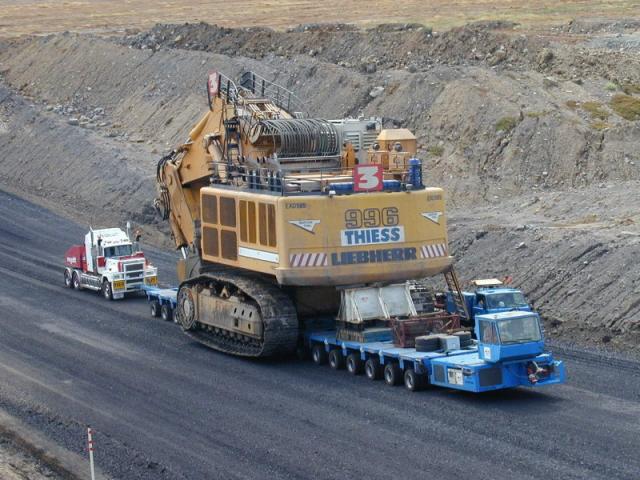
Every Honour Earned by Nils the Military Penguin.
Sabine Hossenfelder
I Misunderstood the Greenhouse Effect. Here’s How It Works.
Living Photographs, photographs created by assembling sailors and soldiers, 1918.

rarehistoricalphotos.com/living-photographs-photographs-created-assembling-soldiers-1918
Spiny Norman said:
Living Photographs, photographs created by assembling sailors and soldiers, 1918.
rarehistoricalphotos.com/living-photographs-photographs-created-assembling-soldiers-1918
:)
Michael V said:
Spiny Norman said:
Living Photographs, photographs created by assembling sailors and soldiers, 1918.
rarehistoricalphotos.com/living-photographs-photographs-created-assembling-soldiers-1918
:)
Absolutely amazing!
Michael V said:
Spiny Norman said:
Living Photographs, photographs created by assembling sailors and soldiers, 1918.
rarehistoricalphotos.com/living-photographs-photographs-created-assembling-soldiers-1918
:)
Poor old Woody Wilson. He had just a bit too much faith in human nature, thought that his League of Nations could settle all their differences over a nice expense account beanfeast in Geneva.
It would have been a lot easier back in those days to propose, establish, and utilise armed forces under the control of the League to intervene in cases of national aggression. Who knows that they might not have blunted Mussolini’s ideas in the 1920s, or even given Hitler reason to reconsider in the 1930s?
But no, it was all to be sorted out with nothing more potentially lethal than hot air.
Michael V said:
Michael V said:
Spiny Norman said:
Living Photographs, photographs created by assembling sailors and soldiers, 1918.
rarehistoricalphotos.com/living-photographs-photographs-created-assembling-soldiers-1918
:)
Absolutely amazing!
Also, very clever.
captain_spalding said:
Michael V said:
Spiny Norman said:
Living Photographs, photographs created by assembling sailors and soldiers, 1918.
rarehistoricalphotos.com/living-photographs-photographs-created-assembling-soldiers-1918
:)
Poor old Woody Wilson. He had just a bit too much faith in human nature, thought that his League of Nations could settle all their differences over a nice expense account beanfeast in Geneva.
It would have been a lot easier back in those days to propose, establish, and utilise armed forces under the control of the League to intervene in cases of national aggression. Who knows that they might not have blunted Mussolini’s ideas in the 1920s, or even given Hitler reason to reconsider in the 1930s?
But no, it was all to be sorted out with nothing more potentially lethal than hot air.
and stiff upper lips.
The Varnhem Humerus, a broken bone repaired with a copper plate, and shows signs of healing afterwards. From Varnhem, Västergötland. Dated between 1260 and 1527.

Spiny Norman said:
The Varnhem Humerus, a broken bone repaired with a copper plate, and shows signs of healing afterwards. From Varnhem, Västergötland. Dated between 1260 and 1527.
So not every arm was amputated?
A team of astronomers found a “large excess of mass” under the Moon’s largest crater, the Aitken basin — likely a relic from an ancient asteroid impact event, but perhaps something much stranger.
“Imagine taking a pile of metal five times larger than the Big Island of Hawaii and burying it underground,” said lead author Peter B. James from Baylor University in Waco, Texas in a statement. “That’s roughly how much unexpected mass we detected.”
https://futurism.com/the-byte/deep-structure-mass-moon-crater
Spiny Norman said:
A team of astronomers found a “large excess of mass” under the Moon’s largest crater, the Aitken basin — likely a relic from an ancient asteroid impact event, but perhaps something much stranger.“Imagine taking a pile of metal five times larger than the Big Island of Hawaii and burying it underground,” said lead author Peter B. James from Baylor University in Waco, Texas in a statement. “That’s roughly how much unexpected mass we detected.”
https://futurism.com/the-byte/deep-structure-mass-moon-crater
Secret Nazi Moonbase?
Is that where the hush-hush Luftwaffe flying saucers transported Der Fuhrer? Is his disembodied head even now planning his comeback inside its glass Bell jar?
Spiny Norman said:
A team of astronomers found a “large excess of mass” under the Moon’s largest crater, the Aitken basin — likely a relic from an ancient asteroid impact event, but perhaps something much stranger.“Imagine taking a pile of metal five times larger than the Big Island of Hawaii and burying it underground,” said lead author Peter B. James from Baylor University in Waco, Texas in a statement. “That’s roughly how much unexpected mass we detected.”
https://futurism.com/the-byte/deep-structure-mass-moon-crater
Strange, this article seems to contradict that.
https://www.eaps.purdue.edu/news/articles/2020/092520_Trowbridge_Icarus.html
Spiny Norman said:
The Varnhem Humerus, a broken bone repaired with a copper plate, and shows signs of healing afterwards. From Varnhem, Västergötland. Dated between 1260 and 1527.
Health Risks from Excessive Copper Chronic exposure to high levels of copper can result in liver damage and gastrointestinal symptoms (e.g., abdominal pain, cramps, nausea, diarrhea, and vomiting) . Copper toxicity is rare in healthy individuals who do not have a hereditary copper homeostasis defect. Wiki
Kingy said:
Spiny Norman said:
A team of astronomers found a “large excess of mass” under the Moon’s largest crater, the Aitken basin — likely a relic from an ancient asteroid impact event, but perhaps something much stranger.“Imagine taking a pile of metal five times larger than the Big Island of Hawaii and burying it underground,” said lead author Peter B. James from Baylor University in Waco, Texas in a statement. “That’s roughly how much unexpected mass we detected.”
https://futurism.com/the-byte/deep-structure-mass-moon-crater
Strange, this article seems to contradict that.
https://www.eaps.purdue.edu/news/articles/2020/092520_Trowbridge_Icarus.html
Anything but metric.
Spiny Norman said:
A team of astronomers found a “large excess of mass” under the Moon’s largest crater, the Aitken basin — likely a relic from an ancient asteroid impact event, but perhaps something much stranger.“Imagine taking a pile of metal five times larger than the Big Island of Hawaii and burying it underground,” said lead author Peter B. James from Baylor University in Waco, Texas in a statement. “That’s roughly how much unexpected mass we detected.”
https://futurism.com/the-byte/deep-structure-mass-moon-crater
A crashed spaceship?
Michael V said:
Michael V said:
Spiny Norman said:
Living Photographs, photographs created by assembling sailors and soldiers, 1918.
rarehistoricalphotos.com/living-photographs-photographs-created-assembling-soldiers-1918
:)
Absolutely amazing!
+1
Spiny Norman said:
The Varnhem Humerus, a broken bone repaired with a copper plate, and shows signs of healing afterwards. From Varnhem, Västergötland. Dated between 1260 and 1527.
Tá sé sin iontach (That’s amazing!)
Why Some Roadways Are Made of Styrofoam.
The Lincoln Calibration Sphere 1, or LCS-1, is a large aluminium sphere in Earth orbit since 6 May 1965. It is still in use, having lasted for over 50 years. The sphere was launched along with the Lincoln Experimental Satellite-2 on a Titan IIIA. It is technically the oldest operational spacecraft , but it has no power supply or fuel; it is merely a passive metal sphere. LCS-1 has been used for radar calibration since its launch. It was built by Rohr. Corp. for the MIT Lincoln Laboratory.
LCS-1 is a hollow sphere 1.12 m (3 ft 8 in) in diameter with a wall thickness of 3.2 mm (0.13 in). The sphere was constructed from two hemispheres, made by spinning sheet metal over a mould. These hemispheres were fastened to an internal, circumferential hoop by 440 countersunk screws, then milled and polished. The initial finish had a surface roughness less than 10 micrometres and was expected to last for five years. Since its launch, I-band measurements have shown periodic deviations that likely correspond to one or more new surface irregularities.
Spiny Norman said:
The Lincoln Calibration Sphere 1, or LCS-1, is a large aluminium sphere in Earth orbit since 6 May 1965. It is still in use, having lasted for over 50 years. The sphere was launched along with the Lincoln Experimental Satellite-2 on a Titan IIIA. It is technically the oldest operational spacecraft , but it has no power supply or fuel; it is merely a passive metal sphere. LCS-1 has been used for radar calibration since its launch. It was built by Rohr. Corp. for the MIT Lincoln Laboratory.LCS-1 is a hollow sphere 1.12 m (3 ft 8 in) in diameter with a wall thickness of 3.2 mm (0.13 in). The sphere was constructed from two hemispheres, made by spinning sheet metal over a mould. These hemispheres were fastened to an internal, circumferential hoop by 440 countersunk screws, then milled and polished. The initial finish had a surface roughness less than 10 micrometres and was expected to last for five years. Since its launch, I-band measurements have shown periodic deviations that likely correspond to one or more new surface irregularities.
LAGEOS 1 is another passive spherical satellite still in use, launched in 1976. It reflects laser beams fired from different points on Earth, enabling very precise distance calculations. It and its twin LAGEOS 2 are both still in orbit.
>They both consist of a 24-inch (60 cm) aluminum-covered brass sphere that weighs between 882 pounds (400 kg) and 906 pounds (411 kg) for LAGEOS-1 and 2 respectively.
Amazingly, LAGEOS-1 has another “secret” mission once its current activities are complete. The satellite contains a small plaque designed by Carl Sagan that is intended to act as a kind of time capsule for future generations.
On it is a series of information including binary code, as well as diagrams showing how Earth’s continents appear in the past, today, and 8.4 million years in the future, the estimated lifetime of the LAGEOS spacecraft.
https://interestingengineering.com/science/oldest-undead-spacecraft

Rare Photos Reveal a Fake Rooftop Town Built to Hide Boeing’s Factory from Potential Japanese Air Strikes, 1944.


Spiny Norman said:
Rare Photos Reveal a Fake Rooftop Town Built to Hide Boeing’s Factory from Potential Japanese Air Strikes, 1944.
reading that, cheers
Spiny Norman said:
Rare Photos Reveal a Fake Rooftop Town Built to Hide Boeing’s Factory from Potential Japanese Air Strikes, 1944.
Ha, well done.
Bubblecar said:
Spiny Norman said:
Rare Photos Reveal a Fake Rooftop Town Built to Hide Boeing’s Factory from Potential Japanese Air Strikes, 1944.
Ha, well done.
The Japs would have still bombed the airstip and in those days the collateral damage would have taken out a fair proportion of the factory beside it.
This photo taken by Dr Cengiz Zabci, shows the amount of movement on the fault that caused the Turkey earthquake.
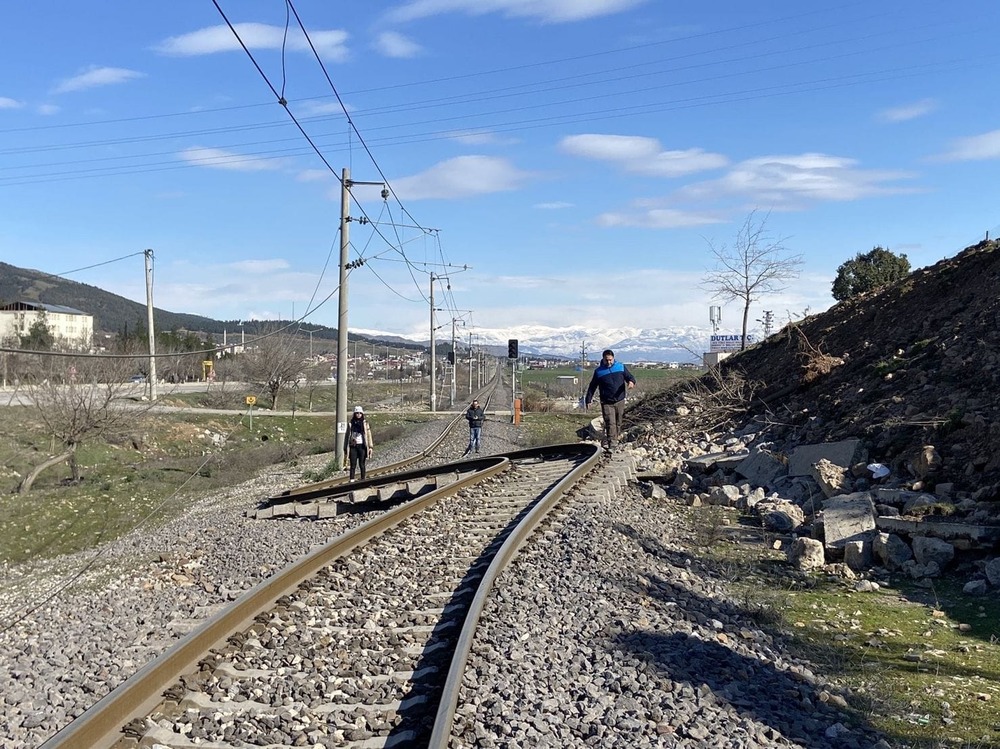
roughbarked said:
Bubblecar said:
Spiny Norman said:
Rare Photos Reveal a Fake Rooftop Town Built to Hide Boeing’s Factory from Potential Japanese Air Strikes, 1944.
Ha, well done.
The Japs would have still bombed the airstip and in those days the collateral damage would have taken out a fair proportion of the factory beside it.
They didn’t bomb any of it.
Bubblecar said:
roughbarked said:
Bubblecar said:Ha, well done.
The Japs would have still bombed the airstip and in those days the collateral damage would have taken out a fair proportion of the factory beside it.
They didn’t bomb any of it.
No but if they had been able to get that far….
Emotional intelligence: Why each of us should aspire to be more like Richard Feynman.
bigthink.com/neuropsych/richard-feynman-emotional-intelligence
Mazda Motor Corporation welders in Japan, made this bucket for the 32nd High Quality Metal Products Skill Fair.
These workers showed off their welding skill, making a one-millimeter metal dice with stainless-steel plates, with all their faces packed in meticulously.
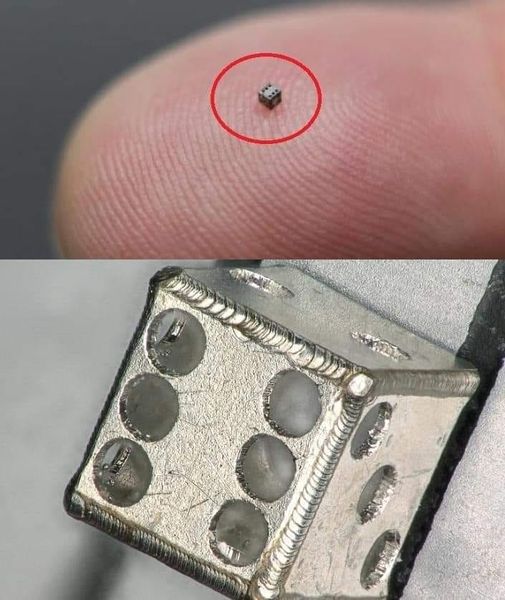
Spiny Norman said:
Rare Photos Reveal a Fake Rooftop Town Built to Hide Boeing’s Factory from Potential Japanese Air Strikes, 1944.
Thanks.
Spiny Norman said:
Mazda Motor Corporation welders in Japan, made this bucket for the 32nd High Quality Metal Products Skill Fair.
These workers showed off their welding skill, making a one-millimeter metal dice with stainless-steel plates, with all their faces packed in meticulously.
There’s the story of a drill manufacturer which had a rivalry with a similar firm.
The manufacturer produced their finest, thinnest drill bit ever, and sent it to their rival to show them what they’d achieved.
The rival sent it back with a note that said ‘well done, very nice’.
This was not like them, and the manufacturer wondered what they were up to.
The sample drill bit was subjected to minute examination, which revealed that it was just as when it had been sent to the rival.
Except that it now had a hole drilled through its shaft.
Spiny Norman said:
Mazda Motor Corporation welders in Japan, made this bucket for the 32nd High Quality Metal Products Skill Fair.
These workers showed off their welding skill, making a one-millimeter metal dice with stainless-steel plates, with all their faces packed in meticulously.
DIE
captain_spalding said:
Spiny Norman said:
Mazda Motor Corporation welders in Japan, made this bucket for the 32nd High Quality Metal Products Skill Fair.
These workers showed off their welding skill, making a one-millimeter metal dice with stainless-steel plates, with all their faces packed in meticulously.
There’s the story of a drill manufacturer which had a rivalry with a similar firm.
The manufacturer produced their finest, thinnest drill bit ever, and sent it to their rival to show them what they’d achieved.
The rival sent it back with a note that said ‘well done, very nice’.
This was not like them, and the manufacturer wondered what they were up to.
The sample drill bit was subjected to minute examination, which revealed that it was just as when it had been sent to the rival.
Except that it now had a hole drilled through its shaft.
The nozzles used in 3D printers are predominantly 0.4 mmm diameter. Occasionally they get a bit clogged and one of the ways you can use to clear them is with a 0.4 mm drill bit. They look way smaller than 0.4 mm!
SCIENCE said:
Spiny Norman said:
Mazda Motor Corporation welders in Japan, made this bucket for the 32nd High Quality Metal Products Skill Fair.
These workers showed off their welding skill, making a one-millimeter metal dice with stainless-steel plates, with all their faces packed in meticulously.
DIE
Spiny Norman said:
This photo taken by Dr Cengiz Zabci, shows the amount of movement on the fault that caused the Turkey earthquake.
Ta.
Spiny Norman said:
captain_spalding said:
Spiny Norman said:
Mazda Motor Corporation welders in Japan, made this bucket for the 32nd High Quality Metal Products Skill Fair.
These workers showed off their welding skill, making a one-millimeter metal dice with stainless-steel plates, with all their faces packed in meticulously.
There’s the story of a drill manufacturer which had a rivalry with a similar firm.
The manufacturer produced their finest, thinnest drill bit ever, and sent it to their rival to show them what they’d achieved.
The rival sent it back with a note that said ‘well done, very nice’.
This was not like them, and the manufacturer wondered what they were up to.
The sample drill bit was subjected to minute examination, which revealed that it was just as when it had been sent to the rival.
Except that it now had a hole drilled through its shaft.
The nozzles used in 3D printers are predominantly 0.4 mmm diameter. Occasionally they get a bit clogged and one of the ways you can use to clear them is with a 0.4 mm drill bit. They look way smaller than 0.4 mm!
The company that does water jet cutting used to drop their diamond jets in for me to clean. I used white vinegar in the ultrasonic.
Tamb said:
SCIENCE said:Spiny Norman said:
Mazda Motor Corporation welders in Japan, made this bucket for the 32nd High Quality Metal Products Skill Fair.
These workers showed off their welding skill, making a one-millimeter metal dice with stainless-steel plates, with all their faces packed in meticulously.
DIE
That’s not a nice thing to say to a fellow forumer.
and he should apply the same grammar nazi to his own posts. ;)
Michael V said:
Spiny Norman said:
This photo taken by Dr Cengiz Zabci, shows the amount of movement on the fault that caused the Turkey earthquake.
Ta.
That’s a bit kinky for me.
Tamb said:
SCIENCE said:Spiny Norman said:
Mazda Motor Corporation welders in Japan, made this bucket for the 32nd High Quality Metal Products Skill Fair.
These workers showed off their welding skill, making a one-millimeter metal dice with stainless-steel plates, with all their faces packed in meticulously.
DIE
That’s not a nice thing to say to a fellow forumer.
that other fella made a meme version of it too
Spiny Norman said:
Emotional intelligence: Why each of us should aspire to be more like Richard Feynman.bigthink.com/neuropsych/richard-feynman-emotional-intelligence
Richard is dead, man!
Spiny Norman said:
captain_spalding said:
Spiny Norman said:
Mazda Motor Corporation welders in Japan, made this bucket for the 32nd High Quality Metal Products Skill Fair.
These workers showed off their welding skill, making a one-millimeter metal dice with stainless-steel plates, with all their faces packed in meticulously.
There’s the story of a drill manufacturer which had a rivalry with a similar firm.
The manufacturer produced their finest, thinnest drill bit ever, and sent it to their rival to show them what they’d achieved.
The rival sent it back with a note that said ‘well done, very nice’.
This was not like them, and the manufacturer wondered what they were up to.
The sample drill bit was subjected to minute examination, which revealed that it was just as when it had been sent to the rival.
Except that it now had a hole drilled through its shaft.
The nozzles used in 3D printers are predominantly 0.4 mmm diameter. Occasionally they get a bit clogged and one of the ways you can use to clear them is with a 0.4 mm drill bit. They look way smaller than 0.4 mm!
and then you have EDM.
JudgeMental said:
Spiny Norman said:
captain_spalding said:There’s the story of a drill manufacturer which had a rivalry with a similar firm.
The manufacturer produced their finest, thinnest drill bit ever, and sent it to their rival to show them what they’d achieved.
The rival sent it back with a note that said ‘well done, very nice’.
This was not like them, and the manufacturer wondered what they were up to.
The sample drill bit was subjected to minute examination, which revealed that it was just as when it had been sent to the rival.
Except that it now had a hole drilled through its shaft.
The nozzles used in 3D printers are predominantly 0.4 mmm diameter. Occasionally they get a bit clogged and one of the ways you can use to clear them is with a 0.4 mm drill bit. They look way smaller than 0.4 mm!
and then you have EDM.
Oh yeah. Amazing technology.
Actually this is a much better video of EDM.
Spiny Norman said:
Actually this is a much better video of EDM.
I heard that a lab in China drilled a hole in a proton.
captain_spalding said:
Spiny Norman said:
Mazda Motor Corporation welders in Japan, made this bucket for the 32nd High Quality Metal Products Skill Fair.
These workers showed off their welding skill, making a one-millimeter metal dice with stainless-steel plates, with all their faces packed in meticulously.
There’s the story of a drill manufacturer which had a rivalry with a similar firm.
The manufacturer produced their finest, thinnest drill bit ever, and sent it to their rival to show them what they’d achieved.
The rival sent it back with a note that said ‘well done, very nice’.
This was not like them, and the manufacturer wondered what they were up to.
The sample drill bit was subjected to minute examination, which revealed that it was just as when it had been sent to the rival.
Except that it now had a hole drilled through its shaft.
:)
Michael V said:
Spiny Norman said:
This photo taken by Dr Cengiz Zabci, shows the amount of movement on the fault that caused the Turkey earthquake.
Ta.
The only way I can reconcile that photo is: the fault is a sinistral strike-slip fault, almost parallel to the railway line.
Michael V said:
Michael V said:
Spiny Norman said:
This photo taken by Dr Cengiz Zabci, shows the amount of movement on the fault that caused the Turkey earthquake.
Ta.
The only way I can reconcile that photo is: the fault is a sinistral strike-slip fault, almost parallel to the railway line.
What about this one?:

The Rev Dodgson said:
Michael V said:
Michael V said:Ta.
The only way I can reconcile that photo is: the fault is a sinistral strike-slip fault, almost parallel to the railway line.
What about this one?:
Insufficient information. The photo was taken from within the zone of deformation looking out. So only one undeformed reference point.
The Sleeping Beauty Problem.
Michael V said:
The Rev Dodgson said:
Michael V said:The only way I can reconcile that photo is: the fault is a sinistral strike-slip fault, almost parallel to the railway line.
What about this one?:
Insufficient information. The photo was taken from within the zone of deformation looking out. So only one undeformed reference point.
It’s the 1968 Meckering Earthquake.
It looked a bit similar, to my inexpert eye.
Michael V said:
Michael V said:
Spiny Norman said:
This photo taken by Dr Cengiz Zabci, shows the amount of movement on the fault that caused the Turkey earthquake.
Ta.
The only way I can reconcile that photo is: the fault is a sinistral strike-slip fault, almost parallel to the railway line.
Sinistral strike-slip, definitely. Relative movement about 3 metres. Fantastic photo: fault displacement pretty much orthogonal to road, painted white line to help estimate distance and people for scale.
https://www.reddit.com/r/europe/comments/10wss6o/anatolian_plate_moved_335_meters_after_the/
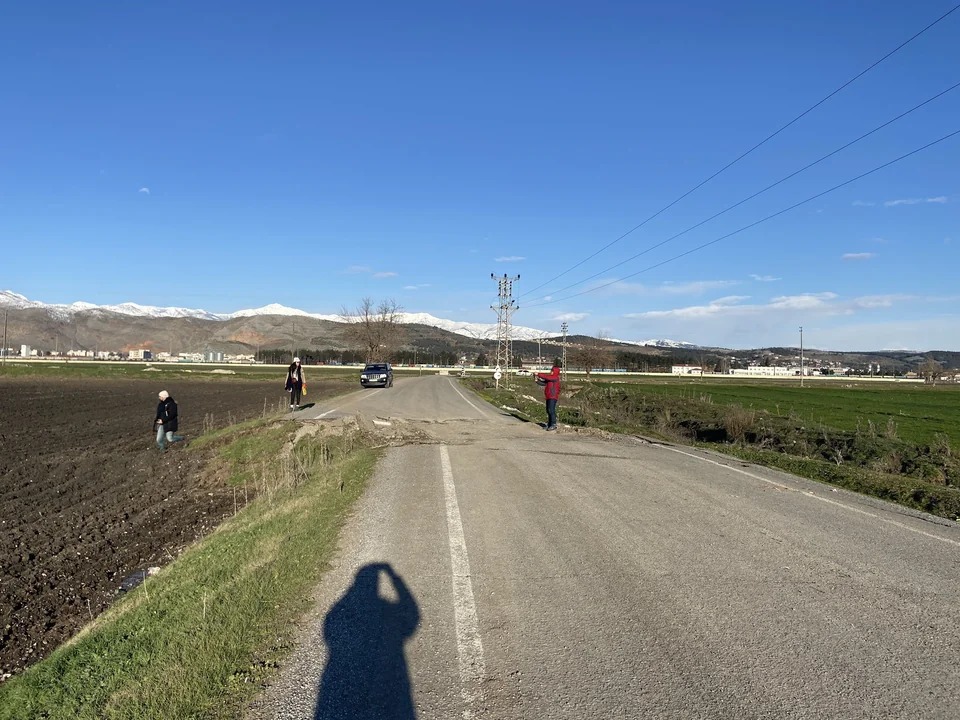
Michael V said:
Michael V said:
Michael V said:Ta.
The only way I can reconcile that photo is: the fault is a sinistral strike-slip fault, almost parallel to the railway line.
Sinistral strike-slip, definitely. Relative movement about 3 metres. Fantastic photo: fault displacement pretty much orthogonal to road, painted white line to help estimate distance and people for scale.
https://www.reddit.com/r/europe/comments/10wss6o/anatolian_plate_moved_335_meters_after_the/
At least I got it and I’m neither a geologist nor engineer.
Michael V said:
Michael V said:
Michael V said:Ta.
The only way I can reconcile that photo is: the fault is a sinistral strike-slip fault, almost parallel to the railway line.
Sinistral strike-slip, definitely. Relative movement about 3 metres. Fantastic photo: fault displacement pretty much orthogonal to road, painted white line to help estimate distance and people for scale.
https://www.reddit.com/r/europe/comments/10wss6o/anatolian_plate_moved_335_meters_after_the/
Mother nature makes a mockery of the straight lines of humans.
party_pants said:
Michael V said:
Michael V said:The only way I can reconcile that photo is: the fault is a sinistral strike-slip fault, almost parallel to the railway line.
Sinistral strike-slip, definitely. Relative movement about 3 metres. Fantastic photo: fault displacement pretty much orthogonal to road, painted white line to help estimate distance and people for scale.
https://www.reddit.com/r/europe/comments/10wss6o/anatolian_plate_moved_335_meters_after_the/
Mother nature makes a mockery of the straight lines of humans.
Except in the case of the old Roman roads?
Michael V said:
Michael V said:
Michael V said:Ta.
The only way I can reconcile that photo is: the fault is a sinistral strike-slip fault, almost parallel to the railway line.
Sinistral strike-slip, definitely. Relative movement about 3 metres. Fantastic photo: fault displacement pretty much orthogonal to road, painted white line to help estimate distance and people for scale.
https://www.reddit.com/r/europe/comments/10wss6o/anatolian_plate_moved_335_meters_after_the/
Another great photo.

Michael V said:
Michael V said:
Michael V said:The only way I can reconcile that photo is: the fault is a sinistral strike-slip fault, almost parallel to the railway line.
Sinistral strike-slip, definitely. Relative movement about 3 metres. Fantastic photo: fault displacement pretty much orthogonal to road, painted white line to help estimate distance and people for scale.
https://www.reddit.com/r/europe/comments/10wss6o/anatolian_plate_moved_335_meters_after_the/
Another great photo.
That photo is heading to be more like the 100km slip that happened between Syria and Turkey. ye.
Michael V said:
Michael V said:
Michael V said:The only way I can reconcile that photo is: the fault is a sinistral strike-slip fault, almost parallel to the railway line.
Sinistral strike-slip, definitely. Relative movement about 3 metres. Fantastic photo: fault displacement pretty much orthogonal to road, painted white line to help estimate distance and people for scale.
https://www.reddit.com/r/europe/comments/10wss6o/anatolian_plate_moved_335_meters_after_the/
Another great photo.
Rightio. I take it that is the same bits of road and railway track in the same picture.
party_pants said:
Michael V said:
Michael V said:Sinistral strike-slip, definitely. Relative movement about 3 metres. Fantastic photo: fault displacement pretty much orthogonal to road, painted white line to help estimate distance and people for scale.
https://www.reddit.com/r/europe/comments/10wss6o/anatolian_plate_moved_335_meters_after_the/
Another great photo.
Rightio. I take it that is the same bits of road and railway track in the same picture.
It is a different photo of a different location.
Michael V said:
Michael V said:
Michael V said:The only way I can reconcile that photo is: the fault is a sinistral strike-slip fault, almost parallel to the railway line.
Sinistral strike-slip, definitely. Relative movement about 3 metres. Fantastic photo: fault displacement pretty much orthogonal to road, painted white line to help estimate distance and people for scale.
https://www.reddit.com/r/europe/comments/10wss6o/anatolian_plate_moved_335_meters_after_the/
Another great photo.
Good photos, it does very little damage or movement to the surface topography but kills thousands in poorly built dwellings.
For the herdsmen who lived in tents and the like thousands of years ago an earthquake would have been nothing more than an interesting occurrence.
Peak Warming Man said:
Michael V said:
Michael V said:Sinistral strike-slip, definitely. Relative movement about 3 metres. Fantastic photo: fault displacement pretty much orthogonal to road, painted white line to help estimate distance and people for scale.
https://www.reddit.com/r/europe/comments/10wss6o/anatolian_plate_moved_335_meters_after_the/
Another great photo.
Good photos, it does very little damage or movement to the surface topography but kills thousands in poorly built dwellings.
For the herdsmen who lived in tents and the like thousands of years ago an earthquake would have been nothing more than an interesting occurrence.
Other than the sheep that fell down the crack in the earth. The God’s must be appeased.
party_pants said:
Michael V said:
Michael V said:Sinistral strike-slip, definitely. Relative movement about 3 metres. Fantastic photo: fault displacement pretty much orthogonal to road, painted white line to help estimate distance and people for scale.
https://www.reddit.com/r/europe/comments/10wss6o/anatolian_plate_moved_335_meters_after_the/
Another great photo.
Rightio. I take it that is the same bits of road and railway track in the same picture.
Not the same road (no white lines, field is green, not ploughed and brown). I can’t make out any railway.
What I think is interesting about the third photo, is that it demonstrates that a fault is not a simple planar surface and can have quite large-scale roughness.
Michael V said:
party_pants said:
Michael V said:Another great photo.
Rightio. I take it that is the same bits of road and railway track in the same picture.
Not the same road (no white lines, field is green, not ploughed and brown). I can’t make out any railway.
What I think is interesting about the third photo, is that it demonstrates that a fault is not a simple planar surface and can have quite large-scale roughness.
Yes Michael. This I have oft observed.
Eiffel Tower under construction, 1887-1889.
In 1889, Paris hosted an Exposition Universelle (World’s Fair) to mark the 100-year anniversary of the French Revolution. More than 100 artists submitted competing plans for a monument to be built on the Champ-de-Mars, located in central Paris, and serve as the exposition’s entrance.
The commission was granted to Eiffel et Compagnie, a consulting and construction firm owned by the acclaimed bridge builder, architect, and metals expert Alexandre-Gustave Eiffel.
While Eiffel himself often receives full credit for the monument that bears his name, it was one of his employees—a structural engineer named Maurice Koechlin—who came up with and fine-tuned the concept.
The assembly of the supports began on July 1, 1887, and was completed twenty-two months later. All the elements were prepared in Eiffel’s factory located at Levallois-Perret on the outskirts of Paris.
Each of the 18,000 pieces used to construct the Tower were specifically designed and calculated, traced out to an accuracy of a tenth of a millimeter, and then put together forming new pieces around five metres each.
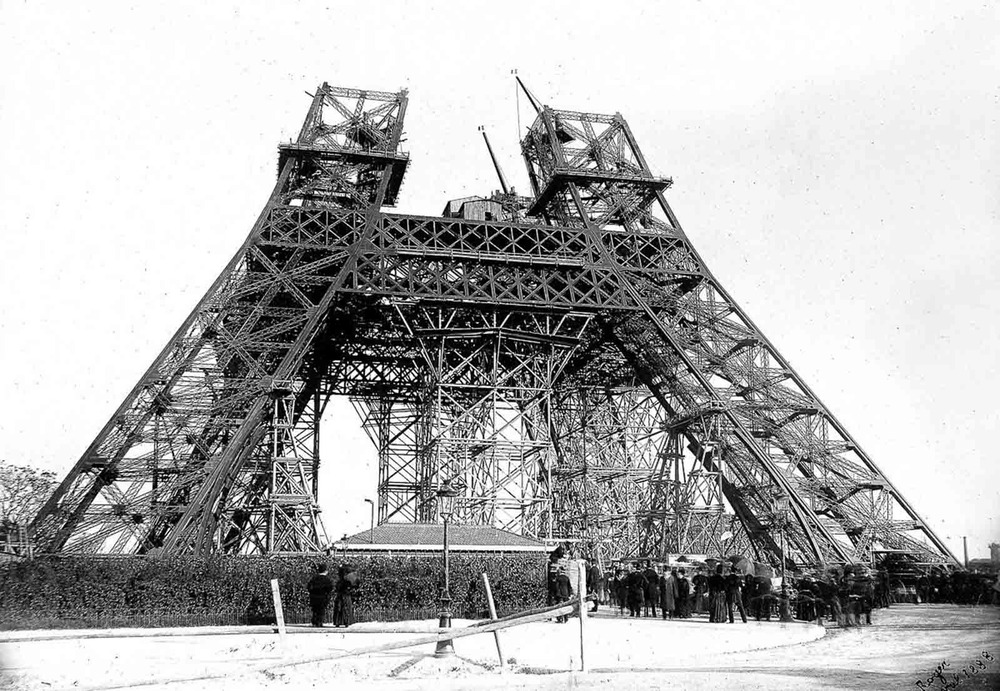
https://rarehistoricalphotos.com/eiffel-tower-construction/
FWIW when I was based in Paris for a while I walked through the city and had a good look at it. It’s a lot larger than it seems in the photos. I reckoned I could have flown a 747 through the base of it.
Spiny Norman said:
Eiffel Tower under construction, 1887-1889.In 1889, Paris hosted an Exposition Universelle (World’s Fair) to mark the 100-year anniversary of the French Revolution. More than 100 artists submitted competing plans for a monument to be built on the Champ-de-Mars, located in central Paris, and serve as the exposition’s entrance.
The commission was granted to Eiffel et Compagnie, a consulting and construction firm owned by the acclaimed bridge builder, architect, and metals expert Alexandre-Gustave Eiffel.
While Eiffel himself often receives full credit for the monument that bears his name, it was one of his employees—a structural engineer named Maurice Koechlin—who came up with and fine-tuned the concept.
The assembly of the supports began on July 1, 1887, and was completed twenty-two months later. All the elements were prepared in Eiffel’s factory located at Levallois-Perret on the outskirts of Paris.
Each of the 18,000 pieces used to construct the Tower were specifically designed and calculated, traced out to an accuracy of a tenth of a millimeter, and then put together forming new pieces around five metres each.
https://rarehistoricalphotos.com/eiffel-tower-construction/
FWIW when I was based in Paris for a while I walked through the city and had a good look at it. It’s a lot larger than it seems in the photos. I reckoned I could have flown a 747 through the base of it.
I’ve done a lot of steel detailing over the years, we never dimension anything smaller than a millimeter
The thermal characteristics of steel make anything smaller impractical.
Peak Warming Man said:
Spiny Norman said:
Eiffel Tower under construction, 1887-1889.In 1889, Paris hosted an Exposition Universelle (World’s Fair) to mark the 100-year anniversary of the French Revolution. More than 100 artists submitted competing plans for a monument to be built on the Champ-de-Mars, located in central Paris, and serve as the exposition’s entrance.
The commission was granted to Eiffel et Compagnie, a consulting and construction firm owned by the acclaimed bridge builder, architect, and metals expert Alexandre-Gustave Eiffel.
While Eiffel himself often receives full credit for the monument that bears his name, it was one of his employees—a structural engineer named Maurice Koechlin—who came up with and fine-tuned the concept.
The assembly of the supports began on July 1, 1887, and was completed twenty-two months later. All the elements were prepared in Eiffel’s factory located at Levallois-Perret on the outskirts of Paris.
Each of the 18,000 pieces used to construct the Tower were specifically designed and calculated, traced out to an accuracy of a tenth of a millimeter, and then put together forming new pieces around five metres each.
https://rarehistoricalphotos.com/eiffel-tower-construction/
FWIW when I was based in Paris for a while I walked through the city and had a good look at it. It’s a lot larger than it seems in the photos. I reckoned I could have flown a 747 through the base of it.
I’ve done a lot of steel detailing over the years, we never dimension anything smaller than a millimeter
The thermal characteristics of steel make anything smaller impractical.
Yeah I reckon so. And probably less important when using sheets of iron that are hot riveted.
Spiny Norman said:
Eiffel Tower under construction, 1887-1889.In 1889, Paris hosted an Exposition Universelle (World’s Fair) to mark the 100-year anniversary of the French Revolution. More than 100 artists submitted competing plans for a monument to be built on the Champ-de-Mars, located in central Paris, and serve as the exposition’s entrance.
The commission was granted to Eiffel et Compagnie, a consulting and construction firm owned by the acclaimed bridge builder, architect, and metals expert Alexandre-Gustave Eiffel.
While Eiffel himself often receives full credit for the monument that bears his name, it was one of his employees—a structural engineer named Maurice Koechlin—who came up with and fine-tuned the concept.
The assembly of the supports began on July 1, 1887, and was completed twenty-two months later. All the elements were prepared in Eiffel’s factory located at Levallois-Perret on the outskirts of Paris.
Each of the 18,000 pieces used to construct the Tower were specifically designed and calculated, traced out to an accuracy of a tenth of a millimeter, and then put together forming new pieces around five metres each.
https://rarehistoricalphotos.com/eiffel-tower-construction/
FWIW when I was based in Paris for a while I walked through the city and had a good look at it. It’s a lot larger than it seems in the photos. I reckoned I could have flown a 747 through the base of it.
The Eiffel Tower was sold twice in 1925 by a conman named Count Victor Lustig (the “Count” was self-applied); Lustig also conned $5000 out of Al Capone (and survived). His exploits are detailed in the book The Man who sold the Eiffel Tower, by the former FBI director James F. Johnson and Floyd Miller.
Nuclear Tourism: When atomic tests were a tourist attraction in Las Vegas, 1950s.
Las Vegas is known as the city of lights and, at one time, that light was the glow of an atomic detonation in the Nevada desert. Starting in 1951, the US Army began testing nuclear ordnances just 65 miles from Sin City.
At night, the glow of the bombs lit up the sky, and mushroom clouds could be spotted rising over the horizon during the day.
In classical American fashion, fear was not the only reaction. Vegas started becoming a destination for a certain type of people — Nuclear Tourists.
rarehistoricalphotos.com/atomic-tourism-las-vegas
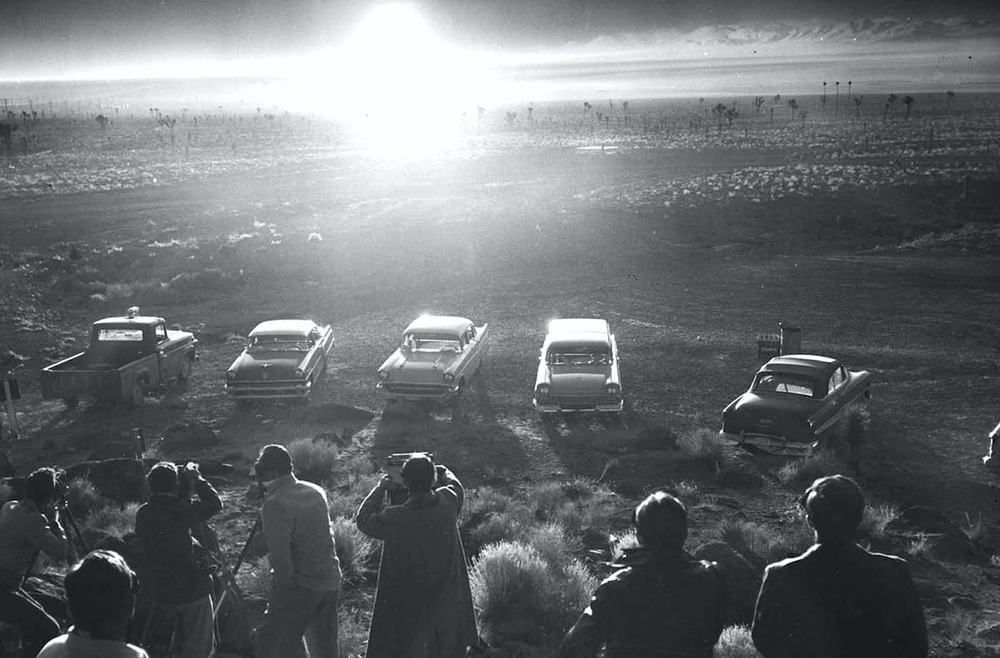
Spiny Norman said:
In classical American fashion, fear was not the only reaction. Vegas started becoming a destination for a certain type of people — Nuclear Tourists.
rarehistoricalphotos.com/atomic-tourism-las-vegas
Probably all dreaming of the day that they could have some nukes of their own, tucked away in the basement, as guaranteed by the Second Amendment.
captain_spalding said:
Spiny Norman said:In classical American fashion, fear was not the only reaction. Vegas started becoming a destination for a certain type of people — Nuclear Tourists.
rarehistoricalphotos.com/atomic-tourism-las-vegas
Probably all dreaming of the day that they could have some nukes of their own, tucked away in the basement, as guaranteed by the Second Amendment.
Buy them in packs of ten for cracker night?
Yukka Flat, in Nevada. Each of those holes are from an underground nuclear test explosion.
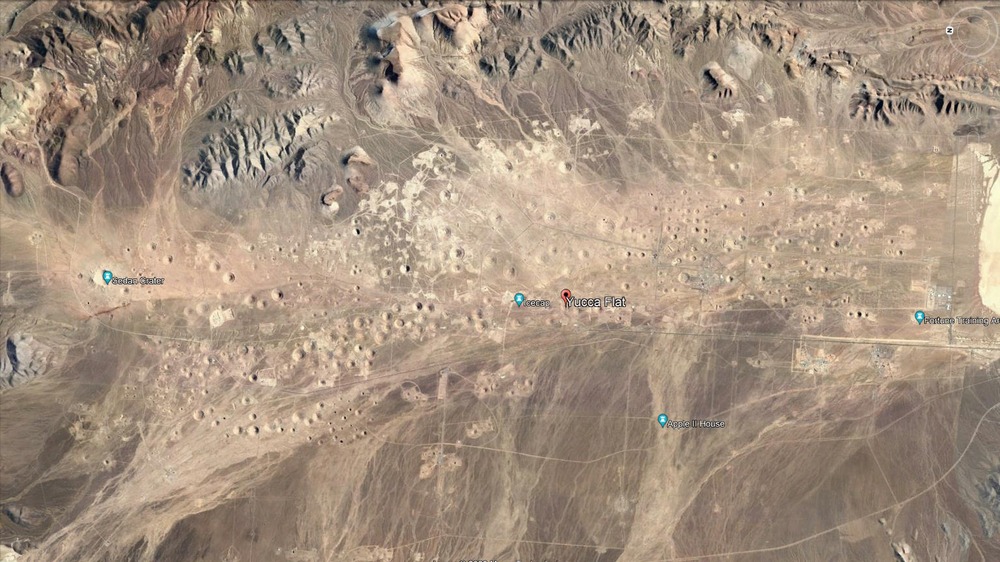
The largest hole, Sedan Crater, is detailed here – “:https://en.wikipedia.org/wiki/Sedan_Crater”:https://en.wikipedia.org/wiki/Sedan_Crater
Spiny Norman said:
Yukka Flat, in Nevada. Each of those holes are from an underground nuclear test explosion.
The largest hole, Sedan Crater, is detailed here – “:https://en.wikipedia.org/wiki/Sedan_Crater”:https://en.wikipedia.org/wiki/Sedan_Crater
Percentage (%) of the population in which the frequency of cancer is measured on each continent in children (age 0-14 years) and adolescents (age 15-19 years)

sarahs mum said:
Spiny Norman said:
Yukka Flat, in Nevada. Each of those holes are from an underground nuclear test explosion.
The largest hole, Sedan Crater, is detailed here – “:https://en.wikipedia.org/wiki/Sedan_Crater”:https://en.wikipedia.org/wiki/Sedan_Crater
Percentage (%) of the population in which the frequency of cancer is measured on each continent in children (age 0-14 years) and adolescents (age 15-19 years)
This confuses me.
sarahs mum said:
Spiny Norman said:
Yukka Flat, in Nevada. Each of those holes are from an underground nuclear test explosion.
The largest hole, Sedan Crater, is detailed here – “:https://en.wikipedia.org/wiki/Sedan_Crater”:https://en.wikipedia.org/wiki/Sedan_Crater
Percentage (%) of the population in which the frequency of cancer is measured on each continent in children (age 0-14 years) and adolescents (age 15-19 years)

sarahs mum said:
Spiny Norman said:
Yukka Flat, in Nevada. Each of those holes are from an underground nuclear test explosion.
The largest hole, Sedan Crater, is detailed here – “:https://en.wikipedia.org/wiki/Sedan_Crater”:https://en.wikipedia.org/wiki/Sedan_Crater
Percentage (%) of the population in which the frequency of cancer is measured on each continent in children (age 0-14 years) and adolescents (age 15-19 years)

Spiny Norman said:
Yukka Flat, in Nevada. Each of those holes are from an underground nuclear test explosion.
The largest hole, Sedan Crater, is detailed here – “:https://en.wikipedia.org/wiki/Sedan_Crater”:https://en.wikipedia.org/wiki/Sedan_Crater
I watched a doco on TV a few weeks back in the wee hours of the morning. Discussing the difference between people born prior to the nuclear period in history and the global populations of today. The way the nuclear fall out travelled across vast distances through the air and some such from ground zero and how that was grossly underestimated.
I think the Australian film about Maralinga for example, suggested the scientists concerns were being muffled well before the general public were are aware of the true dangers. And over in the pacific regions , the amount of people with radiation poisoning as consequence of the radiation travelling vast distances
monkey skipper said:
Spiny Norman said:
Yukka Flat, in Nevada. Each of those holes are from an underground nuclear test explosion.
The largest hole, Sedan Crater, is detailed here – “:https://en.wikipedia.org/wiki/Sedan_Crater”:https://en.wikipedia.org/wiki/Sedan_Crater
I watched a doco on TV a few weeks back in the wee hours of the morning. Discussing the difference between people born prior to the nuclear period in history and the global populations of today. The way the nuclear fall out travelled across vast distances through the air and some such from ground zero and how that was grossly underestimated.
I think the Australian film about Maralinga for example, suggested the scientists concerns were being muffled well before the general public were are aware of the true dangers. And over in the pacific regions , the amount of people with radiation poisoning as consequence of the radiation travelling vast distances
Fallout is the strange but true story of a celebrated Australian scientist’s involvement in the 1956 British atomic bomb tests. Hedley Marston, an idol with his own feet of clay, was determined not only to reveal official lies and chicanery, but to expose as charlatans the Australian scientists who were appointed to protect the nation from any possible harm. Contrary to official pronouncements, radioactive fallout was blowing across the country and contaminating many towns and communities, including Marston’s beloved Adelaide. The dispute that ensued was perhaps the most acrimonious in the history of Australian science.
Fallout tells us much about the nature of science and our society. It is about science in service of the bomb, and in service of self. Roger Cross tells a story that must make us ask the alarming question: could we be fooled again?
https://www.amazon.com/Fallout-Hedley-Marston-Atomic-Australia/dp/1459643461
a good read.
Radioactive Fallout From Nuclear Weapons Testing
Radiation Facts
After a nuclear explosion, debris and soil can mix with radionuclides. This mixture is sent up into the air and then falls back to Earth. It is called fallout and it typically contains hundreds of different radionuclides.
Since the conclusion of the weapons testing in the 1980s, radionuclides in the atmosphere have largely decayed away.
Detonating nuclear weapons above ground sends radioactive materials as high as 50 miles into the atmosphere. Large particles fall to the ground near the explosion-site, but lighter particles and gases travel into the upper atmosphere. The particles that are swept up into the atmosphere and fall back down to Earth are called fallout. Fallout can circulate around the world for years until it gradually falls down to Earth or is brought back to the surface by precipitation. The path of the fallout depends on wind and weather patterns.
About Radioactive Fallout From Nuclear Weapons Testing
Fallout typically contains hundreds of different radionuclides. Some stay in the environment for a long time because they have long half-lives, like cesium-137, which has a half-life of 30.17 years. Some have very short half-lives and decay away in a few minutes or a few days, like iodine-131, which has a half-life of 8 days. Very little radioactivity from weapons testing in the 1950s and 1960s can still be detected in the environment now.
The United States conducted the first above-ground nuclear weapon test in southeastern New Mexico on July 16, 1945. Between 1945 and 1963, hundreds of above-ground blasts took place around the world. Over time the number and size (or yield) of these blasts increased, especially in the late 1950s and early 1960s. After the Limited Test Ban Treaty of 1963 was signed by the United States, the Soviet Union and Great Britain, most above-ground blasts ceased. Some above-ground weapons testing by other countries continued until 1980. Since the end of above-ground nuclear weapons testing, the day-to-day radiation in air readings from monitoring sites has fallen. For many years, analysis of air samples has shown risk levels far below regulatory limits. In fact, results are now generally below-levels that instruments can detect.
The EPA maintains a system of radiation monitors throughout the United States. These monitors were originally designed to detect radionuclides that were released after a nuclear weapon detonation. Now, the EPA uses this system, called RadNet, to look at background radiation levels at many locations across the United States. Background radiation is around us all the time, mostly from natural sources, like naturally-occurring radon and uranium. For more information about the history of RadNet, please visit the Learn About RadNet webpage.
Some of the fallout radionuclides the EPA’s monitoring systems may detect include:
Americium-241
Cesium-137
Iodine-131
Strontium-90
Even though there is very little fallout that still exists in the environment, it is important to remember that fallout can be very dangerous. This section talks about the different ways we can be exposed to radiation if a nuclear detonation occurs.
When a nuclear detonation occurs, people, plants, and animals can be exposed to the fallout in several ways. Livestock may eat contaminated plants or drink contaminated water. People who then eat this livestock will then still experience internal contamination, in which radioactive material ends up inside of our bodies, despite not consuming contaminated plants or water directly.
Radionuclides that are inhaled or ingested are not blocked by an external shield. These radionuclides interact with internal cells and tissues, which increases the risk of harmful health effects. When radionuclides are ingested, they can change the structure of cells, which is one of the ways people can develop cancer. The health risks from fallout have been described in many studies. One example is the Federal Radiation Council’s 1962 report, Health Implications of Fallout from Nuclear Weapons Testing through 1961. This is one of the reasons why radiation protection professionals work hard to protect people from unnecessary exposure to radiation.
The radioactive dust that settles on the environment around us is an example of potential external exposure. Radionuclides that emit alpha and beta particles would pose a lower external exposure threat because they do not travel very far in the atmosphere and are not as penetrating as more energetic radiation. Shielding, one of the three principles of radiation protection, prevents some external exposure because alpha particles are blocked by the dead skin cells that sit on the surface of our bodies. Gamma rays, however, travel much farther in the atmosphere, and are higher energy rays that can only be blocked by heavy shielding, like a concrete wall or a lead apron. These rays pose a higher external exposure risk.
ChrispenEvan said:
monkey skipper said:
Spiny Norman said:
Yukka Flat, in Nevada. Each of those holes are from an underground nuclear test explosion.
The largest hole, Sedan Crater, is detailed here – “:https://en.wikipedia.org/wiki/Sedan_Crater”:https://en.wikipedia.org/wiki/Sedan_Crater
I watched a doco on TV a few weeks back in the wee hours of the morning. Discussing the difference between people born prior to the nuclear period in history and the global populations of today. The way the nuclear fall out travelled across vast distances through the air and some such from ground zero and how that was grossly underestimated.
I think the Australian film about Maralinga for example, suggested the scientists concerns were being muffled well before the general public were are aware of the true dangers. And over in the pacific regions , the amount of people with radiation poisoning as consequence of the radiation travelling vast distances
Fallout is the strange but true story of a celebrated Australian scientist’s involvement in the 1956 British atomic bomb tests. Hedley Marston, an idol with his own feet of clay, was determined not only to reveal official lies and chicanery, but to expose as charlatans the Australian scientists who were appointed to protect the nation from any possible harm. Contrary to official pronouncements, radioactive fallout was blowing across the country and contaminating many towns and communities, including Marston’s beloved Adelaide. The dispute that ensued was perhaps the most acrimonious in the history of Australian science.
Fallout tells us much about the nature of science and our society. It is about science in service of the bomb, and in service of self. Roger Cross tells a story that must make us ask the alarming question: could we be fooled again?https://www.amazon.com/Fallout-Hedley-Marston-Atomic-Australia/dp/1459643461
a good read.
And another thing that was interesting in that documentary was a journo comparing some rock art with the stories of the ancestors of some indigenous country in Australia which is known to have the largest deposit of uranium. The rule of their country is not to dig in any part of their country as it will wake a spirit of fire. The journo also noticed that some of the rock art shows ancestors with large growths on their bodies coincidentally just like what can be seen in people who are gravely ill with radiation poisoning.
A steam engine boiler got just a wee bit too much pressure and blew itself apart.
Or Cthulhu is trying to escape.

Spiny Norman said:
A steam engine boiler got just a wee bit too much pressure and blew itself apart.
Or Cthulhu is trying to escape.
Looks like it blew the head off the exchanger.
That’s what good Yorkshire coal can do.
Spiny Norman said:
A steam engine boiler got just a wee bit too much pressure and blew itself apart.
Or Cthulhu is trying to escape.
It go KABOOM!
Soyuz “Globus” Mechanical Navigation Computer.
We open up a Soyuz INK “Globus” analog mechanical navigation computer. It’s full of gears and incredibly gorgeous, and in our case, somewhat broken.
Why the US Gov Reshapes the Mississippi River.
This Gun Could Reach Space

Happy 95th Birthday to ‘Hans im Gluck’ (Lucky Hans) Hans Herrmann, Formula One and Sports car driver from Stuttgart, Germany, who took the first overall win at Le Mans for Porsche in 1970, driving a Porsche 917.
Remarkably, Herrmann walked away virtually unhurt after one of the most spectacular crashes in Grand Prix history, when his BRM P25 cartwheeled down the track at Avus in 1959, shedding components, one being Hans himself.
Spiny Norman said:

Happy 95th Birthday to ‘Hans im Gluck’ (Lucky Hans) Hans Herrmann, Formula One and Sports car driver from Stuttgart, Germany, who took the first overall win at Le Mans for Porsche in 1970, driving a Porsche 917.
Remarkably, Herrmann walked away virtually unhurt after one of the most spectacular crashes in Grand Prix history, when his BRM P25 cartwheeled down the track at Avus in 1959, shedding components, one being Hans himself.
Always a good thing when the car rolls away from you.
Spiny Norman said:

Happy 95th Birthday to ‘Hans im Gluck’ (Lucky Hans) Hans Herrmann, Formula One and Sports car driver from Stuttgart, Germany, who took the first overall win at Le Mans for Porsche in 1970, driving a Porsche 917.
Remarkably, Herrmann walked away virtually unhurt after one of the most spectacular crashes in Grand Prix history, when his BRM P25 cartwheeled down the track at Avus in 1959, shedding components, one being Hans himself.
Gosh. What a photo.
Michael V said:
Spiny Norman said:

Happy 95th Birthday to ‘Hans im Gluck’ (Lucky Hans) Hans Herrmann, Formula One and Sports car driver from Stuttgart, Germany, who took the first overall win at Le Mans for Porsche in 1970, driving a Porsche 917.
Remarkably, Herrmann walked away virtually unhurt after one of the most spectacular crashes in Grand Prix history, when his BRM P25 cartwheeled down the track at Avus in 1959, shedding components, one being Hans himself.
Gosh. What a photo.
And they say that ‘seatbelts save lives’!
captain_spalding said:
Michael V said:
Spiny Norman said:

Happy 95th Birthday to ‘Hans im Gluck’ (Lucky Hans) Hans Herrmann, Formula One and Sports car driver from Stuttgart, Germany, who took the first overall win at Le Mans for Porsche in 1970, driving a Porsche 917.
Remarkably, Herrmann walked away virtually unhurt after one of the most spectacular crashes in Grand Prix history, when his BRM P25 cartwheeled down the track at Avus in 1959, shedding components, one being Hans himself.
Gosh. What a photo.
And they say that ‘seatbelts save lives’!
Seatbelt and roll-cage would though.
Michael V said:
captain_spalding said:
Michael V said:Gosh. What a photo.
And they say that ‘seatbelts save lives’!
Seatbelt and roll-cage would though.
Yes, roll-cages are the most sensible addition to racing cars ever, i think.
I do remember reading Jack Brabham’s autobiography in which he mentioned that the methanol fuel they used burned with a clear flame, and he told of an occasion where his car ended up inverted with him held in the seat by his harness, and him wondering ‘am i on fire?’, because he wouldn’t be able to see the flames if they were there.
captain_spalding said:
Michael V said:
captain_spalding said:And they say that ‘seatbelts save lives’!
Seatbelt and roll-cage would though.
Yes, roll-cages are the most sensible addition to racing cars ever, i think.
I do remember reading Jack Brabham’s autobiography in which he mentioned that the methanol fuel they used burned with a clear flame, and he told of an occasion where his car ended up inverted with him held in the seat by his harness, and him wondering ‘am i on fire?’, because he wouldn’t be able to see the flames if they were there.
Methanol has a pale blue flame colour, but for some it can be difficult to see in the day time. For some reason (possibly my poor red-green colour vision) I can see methanol flames reasonably well.
Michael V said:
Methanol has a pale blue flame colour, but for some it can be difficult to see in the day time. For some reason (possibly my poor red-green colour vision) I can see methanol flames reasonably well.
Gosh, did you find the red/green thing a disadvantage at all in your aviation career?
captain_spalding said:
Michael V said:Methanol has a pale blue flame colour, but for some it can be difficult to see in the day time. For some reason (possibly my poor red-green colour vision) I can see methanol flames reasonably well.
Gosh, did you find the red/green thing a disadvantage at all in your aviation career?
I didn’t find it a disadvantage at all, considering I didn’t have an aviation career.
It was a disadvantage at times with my geology career though.
Michael V said:
captain_spalding said:
Michael V said:Methanol has a pale blue flame colour, but for some it can be difficult to see in the day time. For some reason (possibly my poor red-green colour vision) I can see methanol flames reasonably well.
Gosh, did you find the red/green thing a disadvantage at all in your aviation career?
I didn’t find it a disadvantage at all, considering I didn’t have an aviation career.
It was a disadvantage at times with my geology career though.
Oops, sorry MV, i thought i was talking to Bill there!
Yes, i expect it would have been a difficulty for you. Hard to think of a career where it wouldn’t at least occasionally cause difficulty.
captain_spalding said:
Michael V said:
captain_spalding said:And they say that ‘seatbelts save lives’!
Seatbelt and roll-cage would though.
Yes, roll-cages are the most sensible addition to racing cars ever, i think.
I do remember reading Jack Brabham’s autobiography in which he mentioned that the methanol fuel they used burned with a clear flame, and he told of an occasion where his car ended up inverted with him held in the seat by his harness, and him wondering ‘am i on fire?’, because he wouldn’t be able to see the flames if they were there.
One of the potentially worst accidents he had was when he went off in a corner and for ‘safety’ the track had put a series of fences in a ring following the curve. The problem was not that they didn’t stop the car – they did – but the car also rolled and neatly wrapped itself up with lots of fencing wire, thus trapping Jack in the car until he could be cut loose. And yes, there was petrol leaking out of it.
Spiny Norman said:
captain_spalding said:
Michael V said:Seatbelt and roll-cage would though.
Yes, roll-cages are the most sensible addition to racing cars ever, i think.
I do remember reading Jack Brabham’s autobiography in which he mentioned that the methanol fuel they used burned with a clear flame, and he told of an occasion where his car ended up inverted with him held in the seat by his harness, and him wondering ‘am i on fire?’, because he wouldn’t be able to see the flames if they were there.
One of the potentially worst accidents he had was when he went off in a corner and for ‘safety’ the track had put a series of fences in a ring following the curve. The problem was not that they didn’t stop the car – they did – but the car also rolled and neatly wrapped itself up with lots of fencing wire, thus trapping Jack in the car until he could be cut loose. And yes, there was petrol leaking out of it.
That was probably the occasion he mentioned/i recall.
Another thing that i remember from that autobiography was Jack’s declaration that good racing mechanics don’t often make good racing drivers, because they’re always conscious of the limitations of, and the stresses on, the mechanical functions of engine and car.
For that reason, he said, they’re often reluctant to push the machinery to 100% of its capability.
Nothing much has changed. :)

Spiny Norman said:
Nothing much has changed. :)
Uncouth lot those dirt track racers.
Spiny Norman said:
Nothing much has changed. :)
‘Chuck you, too, Farley!’
Laser scans reveal ancient cities hidden in the Amazon river basin.
The architecture and infrastructure found may well have required the greatest amount of skilled labor of any construction from the same time period in the entire continent.
I’m very impressed that the car can fly, even will all its wings removed.

Spiny Norman said:
I’m very impressed that the car can fly, even will all its wings removed.
Can fly but it cannot be steered.
A mine collapse in China. Faaark!!!
Measuring the Speed of Light Throughout History
Simple Fractal rendering.
Spiny Norman said:
Simple Fractal rendering.
Interesting, but I wish people wouldn’t do stuff like this in youtube videos.
The Rev Dodgson said:
Spiny Norman said:
Simple Fractal rendering.Interesting, but I wish people wouldn’t do stuff like this in youtube videos.
You mean post videos rather than write articles? I prefer the written word more than anyone but I think for something as visually pertinent as fractals I’ll make an exception.
Witty Rejoinder said:
The Rev Dodgson said:
Spiny Norman said:
Simple Fractal rendering.Interesting, but I wish people wouldn’t do stuff like this in youtube videos.
You mean post videos rather than write articles? I prefer the written word more than anyone but I think for something as visually pertinent as fractals I’ll make an exception.
If it was just showing some pretty pictures a video is fine, but this is talking about how to generate the pretty pictures, including some code samples, so text with some embedded animations would be much easier to follow.
The Rev Dodgson said:
Witty Rejoinder said:
The Rev Dodgson said:Interesting, but I wish people wouldn’t do stuff like this in youtube videos.
You mean post videos rather than write articles? I prefer the written word more than anyone but I think for something as visually pertinent as fractals I’ll make an exception.
If it was just showing some pretty pictures a video is fine, but this is talking about how to generate the pretty pictures, including some code samples, so text with some embedded animations would be much easier to follow.
True.
imagine one size fits all digital media
An engineering channel, he does amazing work repairing & building new parts for mostly earth-moving gear.
Spiny Norman said:
An engineering channel, he does amazing work repairing & building new parts for mostly earth-moving gear.
Long time fan.
ChrispenEvan said:
Spiny Norman said:
An engineering channel, he does amazing work repairing & building new parts for mostly earth-moving gear.Long time fan.
Their factory is not too far up the road from me, I keep meaning to drop in to say gidday and thanks for the great vids.
Spiny Norman said:
ChrispenEvan said:
Spiny Norman said:
An engineering channel, he does amazing work repairing & building new parts for mostly earth-moving gear.Long time fan.
Their factory is not too far up the road from me, I keep meaning to drop in to say gidday and thanks for the great vids.
do it. I learn a lot from his videos, not that i’ll ever use it. he is very diligent.
The fastest thing that humans have ever made – A manhole cover.
A manhole cover launched into space with a nuclear test is the fastest human-made object. A scientist on Operation Plumbbob told us the unbelievable story.
https://www.yahoo.com/news/manhole-cover-launched-space-nuclear-010358106.html
Spiny Norman said:
The fastest thing that humans have ever made – A manhole cover.A manhole cover launched into space with a nuclear test is the fastest human-made object. A scientist on Operation Plumbbob told us the unbelievable story.
https://www.yahoo.com/news/manhole-cover-launched-space-nuclear-010358106.html
I’m surprised it wasn’t just vaporised.
Bubblecar said:
Spiny Norman said:
The fastest thing that humans have ever made – A manhole cover.A manhole cover launched into space with a nuclear test is the fastest human-made object. A scientist on Operation Plumbbob told us the unbelievable story.
https://www.yahoo.com/news/manhole-cover-launched-space-nuclear-010358106.html
I’m surprised it wasn’t just vaporised.
Me too, but it was about 100 mm thick and was in the atmosphere for such a short time it should largely be intact.
Spiny Norman said:
The fastest thing that humans have ever made – A manhole cover.A manhole cover launched into space with a nuclear test is the fastest human-made object. A scientist on Operation Plumbbob told us the unbelievable story.
https://www.yahoo.com/news/manhole-cover-launched-space-nuclear-010358106.html
Huh!
Michael V said:
Spiny Norman said:
The fastest thing that humans have ever made – A manhole cover.A manhole cover launched into space with a nuclear test is the fastest human-made object. A scientist on Operation Plumbbob told us the unbelievable story.
https://www.yahoo.com/news/manhole-cover-launched-space-nuclear-010358106.html
Huh!
didn’t Karl use to tell us about these things all the time
SCIENCE said:
Michael V said:
Spiny Norman said:
The fastest thing that humans have ever made – A manhole cover.A manhole cover launched into space with a nuclear test is the fastest human-made object. A scientist on Operation Plumbbob told us the unbelievable story.
https://www.yahoo.com/news/manhole-cover-launched-space-nuclear-010358106.html
Huh!
didn’t Karl use to tell us about these things all the time
I have no idea.
Michael V said:
SCIENCE said:
Michael V said:
Huh!
didn’t Karl use to tell us about these things all the time
I have no idea.
SCIENCE said:
Michael V said:
SCIENCE said:
didn’t Karl use to tell us about these things all the time
I have no idea.
Well there you go.
Michael V said:
SCIENCE said:
Michael V said:Huh!
didn’t Karl use to tell us about these things all the time
I have no idea.
Yeah this was a popular bit of scuttlebutt in the 1990s and Karl did a segment on it.
It was also debunked some 20 years ago. Here’s a piece on that.
https://gizmodo.com/no-a-nuclear-explosion-did-not-launch-a-manhole-cover-1715340946
dv said:
Michael V said:
SCIENCE said:
didn’t Karl use to tell us about these things all the time
I have no idea.
Yeah this was a popular bit of scuttlebutt in the 1990s and Karl did a segment on it.
It was also debunked some 20 years ago. Here’s a piece on that.
https://gizmodo.com/no-a-nuclear-explosion-did-not-launch-a-manhole-cover-1715340946
yes maybe but still
How fast did it go?
SCIENCE said:
dv said:
Michael V said:
I have no idea.
Yeah this was a popular bit of scuttlebutt in the 1990s and Karl did a segment on it.
It was also debunked some 20 years ago. Here’s a piece on that.
https://gizmodo.com/no-a-nuclear-explosion-did-not-launch-a-manhole-cover-1715340946
yes maybe but still
How fast did it go?
“Six times the escape velocity of the earth”
It is this estimate of its initial speed that started the furphy.
I suppose we can make some bote calcs re the decel.
900 kg.
67000 m/s.
A = 1.125 m^2
rho = 1.3 kg/m^3
drag coefficient = 1.15 ?
F = 1.3 * 1.15 * 1.125 * 67000^2 /2 =
1.33 GN
This thing would have an initial deceleration of around 1500000 m/s.
Small metal caps don’t have the aerodynamics for space travel. It would have either been destroyed, or slowed to an ordinary kind of speed almost instantly.
dv said:
I suppose we can make some bote calcs re the decel.900 kg.
67000 m/s.
A = 1.125 m^2
rho = 1.3 kg/m^3
drag coefficient = 1.15 ?F = 1.3 * 1.15 * 1.125 * 67000^2 /2 =
1.33 GN
This thing would have an initial deceleration of around 1500000 m/s.
Small metal caps don’t have the aerodynamics for space travel. It would have either been destroyed, or slowed to an ordinary kind of speed almost instantly.
You sure of your units there?
Ian said:
You sure of your units there?
I gratefully welcome correction.
New York Central’s Jet-Powered High Speed Train
Spiny Norman said:
New York Central’s Jet-Powered High Speed Train
For those wh prefer to read :)
(hadn’t heard of that before)
The Rev Dodgson said:
Spiny Norman said:New York Central’s Jet-Powered High Speed Train
For those wh prefer to read :)
(hadn’t heard of that before)
High speed trains are fascinating.
The world record for a conventional wheeled passenger train is held by France’s TGV (Train à Grande Vitesse), set in 2007 when it reached 574.8 km/h (357.2 mph) on a 140 km (87 mi) section of track.
Japan’s experimental maglev train L0 Series achieved 603 km/h (375 mph) on a 42.8 km magnetic levitation track in 2015.
Tamb said:
The Rev Dodgson said:
Spiny Norman said:New York Central’s Jet-Powered High Speed Train
For those wh prefer to read :)
(hadn’t heard of that before)
High speed trains are fascinating.
The world record for a conventional wheeled passenger train is held by France’s TGV (Train à Grande Vitesse), set in 2007 when it reached 574.8 km/h (357.2 mph) on a 140 km (87 mi) section of track.Japan’s experimental maglev train L0 Series achieved 603 km/h (375 mph) on a 42.8 km magnetic levitation track in 2015.
Yes, a subject that I find very fascinating too. Such a shame we can’t do it in Aus.
party_pants said:
Tamb said:
The Rev Dodgson said:For those wh prefer to read :)
(hadn’t heard of that before)
High speed trains are fascinating.
The world record for a conventional wheeled passenger train is held by France’s TGV (Train à Grande Vitesse), set in 2007 when it reached 574.8 km/h (357.2 mph) on a 140 km (87 mi) section of track.Japan’s experimental maglev train L0 Series achieved 603 km/h (375 mph) on a 42.8 km magnetic levitation track in 2015.
Yes, a subject that I find very fascinating too. Such a shame we can’t do it in Aus.
It has been oft discussed but has never eventuated.
party_pants said:
Tamb said:
The Rev Dodgson said:For those wh prefer to read :)
(hadn’t heard of that before)
High speed trains are fascinating.
The world record for a conventional wheeled passenger train is held by France’s TGV (Train à Grande Vitesse), set in 2007 when it reached 574.8 km/h (357.2 mph) on a 140 km (87 mi) section of track.Japan’s experimental maglev train L0 Series achieved 603 km/h (375 mph) on a 42.8 km magnetic levitation track in 2015.
Yes, a subject that I find very fascinating too. Such a shame we can’t do it in Aus.
roughbarked said:
party_pants said:
Tamb said:High speed trains are fascinating.
The world record for a conventional wheeled passenger train is held by France’s TGV (Train à Grande Vitesse), set in 2007 when it reached 574.8 km/h (357.2 mph) on a 140 km (87 mi) section of track.Japan’s experimental maglev train L0 Series achieved 603 km/h (375 mph) on a 42.8 km magnetic levitation track in 2015.
Yes, a subject that I find very fascinating too. Such a shame we can’t do it in Aus.
It has been oft discussed but has never eventuated.
The distances between major cities in Australia is just too great. Fast rail has a commercial sweet-spot for journeys up to about 500 km. Australia’s largest cities are all about 1000 km apart, with not much in between them. It won’t work commercially. The capital cost of building all that track is too great to make any financial return just on ticket sales. What Australia needs is a technological revolution in track construction. The trains and signalling etc exist already, that’s the easy bit.
Tamb said:
party_pants said:
Tamb said:High speed trains are fascinating.
The world record for a conventional wheeled passenger train is held by France’s TGV (Train à Grande Vitesse), set in 2007 when it reached 574.8 km/h (357.2 mph) on a 140 km (87 mi) section of track.Japan’s experimental maglev train L0 Series achieved 603 km/h (375 mph) on a 42.8 km magnetic levitation track in 2015.
Yes, a subject that I find very fascinating too. Such a shame we can’t do it in Aus.
Passenger density is too low to be economical.
Melbourne-Sydney is one of the busiest air-routes in the world so it would be feasible for HSR if they could take some of that market but it would have to be built quickly and expensively to be viable and not haphazardly so over 20-30 years.
roughbarked said:
party_pants said:
Tamb said:High speed trains are fascinating.
The world record for a conventional wheeled passenger train is held by France’s TGV (Train à Grande Vitesse), set in 2007 when it reached 574.8 km/h (357.2 mph) on a 140 km (87 mi) section of track.Japan’s experimental maglev train L0 Series achieved 603 km/h (375 mph) on a 42.8 km magnetic levitation track in 2015.
Yes, a subject that I find very fascinating too. Such a shame we can’t do it in Aus.
It has been oft discussed but has never eventuated.
It’s a handy thing to bring up now and then, when some ‘consulting’ firm needs to make an easy couple of million out of ‘feasibility studies’.
captain_spalding said:
roughbarked said:
party_pants said:Yes, a subject that I find very fascinating too. Such a shame we can’t do it in Aus.
It has been oft discussed but has never eventuated.
It’s a handy thing to bring up now and then, when some ‘consulting’ firm needs to make an easy couple of million out of ‘feasibility studies’.
The Sydney to Melbourne route is one of the top 5 busiest air routes in the world. It is possible that as avgas becomes more expensive compared to electricity, the economics of HSR will become more favourable compared to air travel, but that point is probably several decades off. I think it would make sense for governments to make long term plans for the high speed rail link (in terms of land acquisitions).
The Rev Dodgson said:
Spiny Norman said:New York Central’s Jet-Powered High Speed Train
For those wh prefer to read :)
(hadn’t heard of that before)
J-47 turbojets.
Same as the Boeing B-47 bomber, and North American’s F-86 Sabres.
And Chrysler had a turbine-powered car, with an engine of their own making:
https://en.wikipedia.org/wiki/Chrysler_Turbine_Car
The A-831 could operate on diesel fuel, unleaded gasoline, kerosene, and JP-4 jet fuel;] leaded gasoline damaged it. According to Chrysler, it could burn a variety of unusual fuels ranging from furnace oil and perfume to peanut and soybean oils.
So you can see it wouldn’t be a popular innovation with the oil companies.
party_pants said:
roughbarked said:
party_pants said:Yes, a subject that I find very fascinating too. Such a shame we can’t do it in Aus.
It has been oft discussed but has never eventuated.
The distances between major cities in Australia is just too great. Fast rail has a commercial sweet-spot for journeys up to about 500 km. Australia’s largest cities are all about 1000 km apart, with not much in between them. It won’t work commercially. The capital cost of building all that track is too great to make any financial return just on ticket sales. What Australia needs is a technological revolution in track construction. The trains and signalling etc exist already, that’s the easy bit.
When I returned from Turkey to work in Canberra in 1991 the Sydney-Melbourne VFT was the next big thing that we were all going to work on, but as you say, no-one could get it to work.
OTOH, Newcastle-Wollongong would be a fraction of the cost, and would potentially carry far more passengers, so I don’t know why we aren’t working on that.
dv said:
The Sydney to Melbourne route is one of the top 5 busiest air routes in the world. It is possible that as avgas becomes more expensive compared to electricity, the economics of HSR will become more favourable compared to air travel, but that point is probably several decades off. I think it would make sense for governments to make long term plans for the high speed rail link (in terms of land acquisitions).
I think it would be great if governments decided to start building new cities, or redeveloping existing cities, along to route to take pressure off the continuing urban sprawl of Melbourne and Sydney. Albury-Wodonga has been talked about for decades as being the target for regional development.
Regional development will need to go hand in hand with high speed rail.
But these things will require up-front investment, with the right set of policy settings intended to boost regional development and away from urban sprawl. It is going to be very difficult to model, and you can’t really do any convincing cost-benefit analysis. Then you’ll get the NIMBYs who want to block it for the sake of it.
Then there’s the environmental question – a direct HSR link between Sydney – Canberra – Melbourne (the most logical starting point) will need to bash and crash through some national parks along the way.
I like this construction method they use in China. Looks like mass produced standardised segments, laid from pier to pier by a special machine.
(sorry about the crappy piano music, you can mute that if you like)
Wonder if something like this works out to be cheaper and faster than conventional construction. Any HSR route is going have a lot of bridges and tunnels.
party_pants said:
I like this construction method they use in China. Looks like mass produced standardised segments, laid from pier to pier by a special machine.(sorry about the crappy piano music, you can mute that if you like)
Wonder if something like this works out to be cheaper and faster than conventional construction. Any HSR route is going have a lot of bridges and tunnels.
It’s quite an interesting example, but the basic technique of what they are doing there has been around for 50 years or so.
party_pants said:
I like this construction method they use in China. Looks like mass produced standardised segments, laid from pier to pier by a special machine.(sorry about the crappy piano music, you can mute that if you like)
Wonder if something like this works out to be cheaper and faster than conventional construction. Any HSR route is going have a lot of bridges and tunnels.
Don’t know if it’s still the case, but Richard Clayderman’s biggest CD sales figures were in China. He was hugely popular there, even if most Western ears tired of his tinklings rather quickly.
captain_spalding said:
party_pants said:
I like this construction method they use in China. Looks like mass produced standardised segments, laid from pier to pier by a special machine.(sorry about the crappy piano music, you can mute that if you like)
Wonder if something like this works out to be cheaper and faster than conventional construction. Any HSR route is going have a lot of bridges and tunnels.
Don’t know if it’s still the case, but Richard Clayderman’s biggest CD sales figures were in China. He was hugely popular there, even if most Western ears tired of his tinklings rather quickly.
Pardon my cultural insensitivity on the piano music sector.
party_pants said:
captain_spalding said:
party_pants said:
I like this construction method they use in China. Looks like mass produced standardised segments, laid from pier to pier by a special machine.(sorry about the crappy piano music, you can mute that if you like)
Wonder if something like this works out to be cheaper and faster than conventional construction. Any HSR route is going have a lot of bridges and tunnels.
Don’t know if it’s still the case, but Richard Clayderman’s biggest CD sales figures were in China. He was hugely popular there, even if most Western ears tired of his tinklings rather quickly.
Pardon my cultural insensitivity on the piano music sector.
I’ll wait for Rev’s lead about the quality, or lack of, of this musician.
party_pants said:
captain_spalding said:
party_pants said:
I like this construction method they use in China. Looks like mass produced standardised segments, laid from pier to pier by a special machine.(sorry about the crappy piano music, you can mute that if you like)
Wonder if something like this works out to be cheaper and faster than conventional construction. Any HSR route is going have a lot of bridges and tunnels.
Don’t know if it’s still the case, but Richard Clayderman’s biggest CD sales figures were in China. He was hugely popular there, even if most Western ears tired of his tinklings rather quickly.
Pardon my cultural insensitivity on the piano music sector.
I can listen to Richard Clayderman for hours.
But, the moment you stop holding that gun on me, i’m out of there.
party_pants said:
I like this construction method they use in China. Looks like mass produced standardised segments, laid from pier to pier by a special machine.(sorry about the crappy piano music, you can mute that if you like)
Wonder if something like this works out to be cheaper and faster than conventional construction. Any HSR route is going have a lot of bridges and tunnels.
What an amazing machine. Thanks for sharing this.
Michael V said:
party_pants said:
I like this construction method they use in China. Looks like mass produced standardised segments, laid from pier to pier by a special machine.(sorry about the crappy piano music, you can mute that if you like)
Wonder if something like this works out to be cheaper and faster than conventional construction. Any HSR route is going have a lot of bridges and tunnels.
What an amazing machine. Thanks for sharing this.
you can also get one in Lego Technics.
History fact, courtesy of History of Aotearoa New Zealand & Happy Hour Histories podcasts:
Let’s take a moment to admire this piece of the famous New Zealand Number 8 Wire engineering. During the first years of the Second World War, the then Japanese Empire had made several overt statements alluding to the fact that that New Zealand was sparsely populated, rich in resources and there for the taking.
Despite having a small but ferocious infantry force, the country’s entire armoured capability consisted of six armoured carriers. Bob Semple, long time Labour movement (and then involved with two incarnations of the Labour political parties in NZ) was Minister for Industry at the time and thus decided to commission these armoured beauties.
Except, they could not get any cannon to put on the vehicles. Or armour as Australia did not have access to enough steel or the necessary manufacturing facilities. So they did the classic NZ thing and used what they had at hand- corrugated iron. The tank is essentially an agricultural tractor, covered in corrugated iron, with six Bren light machine guns sticking out and only one exit- out the back. It could do a maximum of 10 Kph, and needed to stop to change gear and firing was wildly inaccurate whilst on the move.
It’s widely criticised as the “worst tank of All Time” but I think it’s a real testament to the mentality of the NZ government at the time trying to make do. I believe around four were built, but only one saw active service (as a bulldozer with the armour stripped off). Bob Semple defended the project until his retirement.

dv said:
I suppose we can make some bote calcs re the decel.900 kg.
67000 m/s.
A = 1.125 m^2
rho = 1.3 kg/m^3
drag coefficient = 1.15 ?F = 1.3 * 1.15 * 1.125 * 67000^2 /2 =
1.33 GN
This thing would have an initial deceleration of around 1500000 m/s.
Small metal caps don’t have the aerodynamics for space travel. It would have either been destroyed, or slowed to an ordinary kind of speed almost instantly.
Small metal caps don’t have the aerodynamics for space air travel.
FTFY
Yep, it would have vapourised like a falling star, but it was a rising star instead. Probably even won the “Manhole Cover Of The Year” Award.
As a thought experiment, I just did a BOTE assuming no atmosphere above the manhole cover.
Assuming that it was facing away from the sun(night time),at the speed it was going, it would have passed Pluto’s orbit in around 2 years. Nearly 4 times faster than New Horizons, which is the fastest object that mankind has built.
If it was facing towards the sun, as is more likely, it would have impacted in under a month.
Yep, it definitely would be the Cover of Manhole Magazine.
Spiny Norman said:
History fact, courtesy of History of Aotearoa New Zealand & Happy Hour Histories podcasts:
Let’s take a moment to admire this piece of the famous New Zealand Number 8 Wire engineering. During the first years of the Second World War, the then Japanese Empire had made several overt statements alluding to the fact that that New Zealand was sparsely populated, rich in resources and there for the taking.
Despite having a small but ferocious infantry force, the country’s entire armoured capability consisted of six armoured carriers. Bob Semple, long time Labour movement (and then involved with two incarnations of the Labour political parties in NZ) was Minister for Industry at the time and thus decided to commission these armoured beauties.
Except, they could not get any cannon to put on the vehicles. Or armour as Australia did not have access to enough steel or the necessary manufacturing facilities. So they did the classic NZ thing and used what they had at hand- corrugated iron. The tank is essentially an agricultural tractor, covered in corrugated iron, with six Bren light machine guns sticking out and only one exit- out the back. It could do a maximum of 10 Kph, and needed to stop to change gear and firing was wildly inaccurate whilst on the move.
It’s widely criticised as the “worst tank of All Time” but I think it’s a real testament to the mentality of the NZ government at the time trying to make do. I believe around four were built, but only one saw active service (as a bulldozer with the armour stripped off). Bob Semple defended the project until his retirement.
corri was a lot thicker in those days. not like the zincalume you get now.
ChrispenEvan said:
Spiny Norman said:
History fact, courtesy of History of Aotearoa New Zealand & Happy Hour Histories podcasts:
Let’s take a moment to admire this piece of the famous New Zealand Number 8 Wire engineering. During the first years of the Second World War, the then Japanese Empire had made several overt statements alluding to the fact that that New Zealand was sparsely populated, rich in resources and there for the taking.
Despite having a small but ferocious infantry force, the country’s entire armoured capability consisted of six armoured carriers. Bob Semple, long time Labour movement (and then involved with two incarnations of the Labour political parties in NZ) was Minister for Industry at the time and thus decided to commission these armoured beauties.
Except, they could not get any cannon to put on the vehicles. Or armour as Australia did not have access to enough steel or the necessary manufacturing facilities. So they did the classic NZ thing and used what they had at hand- corrugated iron. The tank is essentially an agricultural tractor, covered in corrugated iron, with six Bren light machine guns sticking out and only one exit- out the back. It could do a maximum of 10 Kph, and needed to stop to change gear and firing was wildly inaccurate whilst on the move.
It’s widely criticised as the “worst tank of All Time” but I think it’s a real testament to the mentality of the NZ government at the time trying to make do. I believe around four were built, but only one saw active service (as a bulldozer with the armour stripped off). Bob Semple defended the project until his retirement.
corri was a lot thicker in those days. not like the zincalume you get now.
If they used a double layer and criss-crossed it, it would be impenetrable.
Kingy said:
dv said:
I suppose we can make some bote calcs re the decel.900 kg.
67000 m/s.
A = 1.125 m^2
rho = 1.3 kg/m^3
drag coefficient = 1.15 ?F = 1.3 * 1.15 * 1.125 * 67000^2 /2 =
1.33 GN
This thing would have an initial deceleration of around 1500000 m/s.
Small metal caps don’t have the aerodynamics for space travel. It would have either been destroyed, or slowed to an ordinary kind of speed almost instantly.
Small metal caps don’t have the aerodynamics for
spaceair travel.FTFY
Yep, it would have vapourised like a falling star, but it was a rising star instead. Probably even won the “Manhole Cover Of The Year” Award.
As a thought experiment, I just did a BOTE assuming no atmosphere above the manhole cover.
Assuming that it was facing away from the sun(night time),at the speed it was going, it would have passed Pluto’s orbit in around 2 years. Nearly 4 times faster than New Horizons, which is the fastest object that mankind has built.
If it was facing towards the sun, as is more likely, it would have impacted in under a month.
Yep, it definitely would be the Cover of Manhole Magazine.
do NOT google manhole magazine!
Kingy said:
dv said:
I suppose we can make some bote calcs re the decel.
900 kg.
67000 m/s.
A = 1.125 m^2
rho = 1.3 kg/m^3
drag coefficient = 1.15 ?F = 1.3 * 1.15 * 1.125 * 67000^2 /2 =
1.33 GN
This thing would have an initial deceleration of around 1500000 m/s.
Small metal caps don’t have the aerodynamics for space travel. It would have either been destroyed, or slowed to an ordinary kind of speed almost instantly.
Small metal caps don’t have the aerodynamics for
spaceair travel.FTFY
Yep, it would have vapourised like a falling star, but it was a rising star instead. Probably even won the “Manhole Cover Of The Year” Award.
As a thought experiment, I just did a BOTE assuming no atmosphere above the manhole cover.
Assuming that it was facing away from the sun(night time),at the speed it was going, it would have passed Pluto’s orbit in around 2 years. Nearly 4 times faster than New Horizons, which is the fastest object that mankind has built.
If it was facing towards the sun, as is more likely, it would have impacted in under a month.
Yep, it definitely would be the Cover of Manhole Magazine.
thanks both of yous and all other contributors
since we’re SCIENCE, we mean it would be worth investigating in further detail
but we don’t have immediate personal access to any nuclear warheads, or deep unused mineshafts
but if any of yous were happy to donate some or run the experiment yourselves we would be grateful
Traveling Salesman Problem Visualisation.
ChrispenEvan said:
Kingy said:
dv said:
I suppose we can make some bote calcs re the decel.
900 kg.
67000 m/s.
A = 1.125 m^2
rho = 1.3 kg/m^3
drag coefficient = 1.15 ?F = 1.3 * 1.15 * 1.125 * 67000^2 /2 =
1.33 GN
This thing would have an initial deceleration of around 1500000 m/s.
Small metal caps don’t have the aerodynamics for space travel. It would have either been destroyed, or slowed to an ordinary kind of speed almost instantly.
Small metal caps don’t have the aerodynamics for
spaceair travel.FTFY
Yep, it would have vapourised like a falling star, but it was a rising star instead. Probably even won the “Manhole Cover Of The Year” Award.
As a thought experiment, I just did a BOTE assuming no atmosphere above the manhole cover.
Assuming that it was facing away from the sun(night time),at the speed it was going, it would have passed Pluto’s orbit in around 2 years. Nearly 4 times faster than New Horizons, which is the fastest object that mankind has built.
If it was facing towards the sun, as is more likely, it would have impacted in under a month.
Yep, it definitely would be the Cover of Manhole Magazine.
do NOT google manhole magazine!
what about peoplewhomenstruatehole magazine
ChrispenEvan said:
Kingy said:
dv said:
I suppose we can make some bote calcs re the decel.900 kg.
67000 m/s.
A = 1.125 m^2
rho = 1.3 kg/m^3
drag coefficient = 1.15 ?F = 1.3 * 1.15 * 1.125 * 67000^2 /2 =
1.33 GN
This thing would have an initial deceleration of around 1500000 m/s.
Small metal caps don’t have the aerodynamics for space travel. It would have either been destroyed, or slowed to an ordinary kind of speed almost instantly.
Small metal caps don’t have the aerodynamics for
spaceair travel.FTFY
Yep, it would have vapourised like a falling star, but it was a rising star instead. Probably even won the “Manhole Cover Of The Year” Award.
As a thought experiment, I just did a BOTE assuming no atmosphere above the manhole cover.
Assuming that it was facing away from the sun(night time),at the speed it was going, it would have passed Pluto’s orbit in around 2 years. Nearly 4 times faster than New Horizons, which is the fastest object that mankind has built.
If it was facing towards the sun, as is more likely, it would have impacted in under a month.
Yep, it definitely would be the Cover of Manhole Magazine.
do NOT google manhole magazine!
It’s fine, you can keep it safe with clarifying search times, like hot fast obliterated man hole operation plumb bob.
fsm said:
If they used a double layer and criss-crossed it, it would be impenetrable.
Blimey, i’d want to see that demonstrated before i got into one and went anywhere hostile in it.
It might have acceptably slowed down the Japanese 6.5mm bullet, with its muzzle velocity of 2,300 feet per sec, but it probably wouldn’t have stood up so well to their later (from 1940) 7.7mm bullet, which not only had a higher muzzle velocity, but came in incendiary, tracer, and armour-piercing variants.
captain_spalding said:
fsm said:If they used a double layer and criss-crossed it, it would be impenetrable.
Blimey, i’d want to see that demonstrated before i got into one and went anywhere hostile in it.
It might have acceptably slowed down the Japanese 6.5mm bullet, with its muzzle velocity of 2,300 feet per sec, but it probably wouldn’t have stood up so well to their later (from 1940) 7.7mm bullet, which not only had a higher muzzle velocity, but came in incendiary, tracer, and armour-piercing variants.
Nah, it had chicken wire reinforcing. Completely impenetrable by anything short of nuclear weapons.
Kingy said:
captain_spalding said:
fsm said:If they used a double layer and criss-crossed it, it would be impenetrable.
Blimey, i’d want to see that demonstrated before i got into one and went anywhere hostile in it.
It might have acceptably slowed down the Japanese 6.5mm bullet, with its muzzle velocity of 2,300 feet per sec, but it probably wouldn’t have stood up so well to their later (from 1940) 7.7mm bullet, which not only had a higher muzzle velocity, but came in incendiary, tracer, and armour-piercing variants.
Nah, it had chicken wire reinforcing. Completely impenetrable by anything short of nuclear weapons.
Ah, chicken-wire. Also known as ‘Grandpa’s Crimsafe mesh’.
The Krakatoa Volcanic Eruption of 1883 – The Loudest Sound Ever Heard?
Spiny Norman said:
The Krakatoa Volcanic Eruption of 1883 – The Loudest Sound Ever Heard?
Even its name KRAKATOA! sounds loud and explosive.
Bubblecar said:
Spiny Norman said:
The Krakatoa Volcanic Eruption of 1883 – The Loudest Sound Ever Heard?Even its name KRAKATOA! sounds loud and explosive.
There was that execrable movie titled’ Krakatoa, East of Java’.
No-one knows just why it was so titled, as Krakatoa/Krakatau is just to the west of Java.
I’ve not watched the YouTube. I prefer to read things.
But I’ll comment anyway. I thought Tambora was bigger/louder. And then I realized I’d forgotten Lake Toba. But then, that was much further back in history.
———————————————————————————————————————————-
Indonesia’s Disasters
Interestingly, neither the Tambora nor the Krakatoa eruption ranks as the largest in Indonesian history (or perhaps more properly, pre-history). The Lake Toba eruption on Sumatra occurred 75,000 years ago and is reputed to have been the most intensive in the world in the last 2 million years. Lake Toba ejected approximately 675 cubic miles (2,800 cubic kilometers) of material. This is 17 times the Tambora volume and more than 60 times the Krakatoa volume. But none of the three killed as many people (230,000) as the Boxing Day tsunami (December 26, 2004), which was set off by a 9.0 earthquake off Sumatra. Population had exploded between 1883 and 2004, which drove the Boxing Day tsunami fatalities far above those of the Krakatoa tsunami.
——————————————————————————————————————————————
REF: https://www.newgeography.com/content/004301-tambora-vs-krakatoa-which-was-worse
captain_spalding said:
Bubblecar said:
Spiny Norman said:
The Krakatoa Volcanic Eruption of 1883 – The Loudest Sound Ever Heard?Even its name KRAKATOA! sounds loud and explosive.
There was that execrable movie titled’ Krakatoa, East of Java’.
No-one knows just why it was so titled, as Krakatoa/Krakatau is just to the west of Java.
If you take the long, long, long way, it’s east.
A Slower Speed of Light.
Night fighters in an era before radar were, how shall we say, inventive?
This French SPAD has a searchlight bolted on in front of the propeller, was more radical than some.

Spiny Norman said:
Night fighters in an era before radar were, how shall we say, inventive?
This French SPAD has a searchlight bolted on in front of the propeller, was more radical than some.
Ye gods! How much extra drag would that induce?
AussieDJ said:
Spiny Norman said:
Night fighters in an era before radar were, how shall we say, inventive?
This French SPAD has a searchlight bolted on in front of the propeller, was more radical than some.
Ye gods! How much extra drag would that induce?
Yes but worth it. Even the Dam Busters had searchlights fitted. They pointed downwards, though.
AussieDJ said:
Spiny Norman said:
Night fighters in an era before radar were, how shall we say, inventive?
This French SPAD has a searchlight bolted on in front of the propeller, was more radical than some.
Ye gods! How much extra drag would that induce?
At least it wouldn’t matter that it’s turning round and round, ‘cos it’s already round.
Bubblecar said:
AussieDJ said:
Spiny Norman said:
Night fighters in an era before radar were, how shall we say, inventive?
This French SPAD has a searchlight bolted on in front of the propeller, was more radical than some.
Ye gods! How much extra drag would that induce?
At least it wouldn’t matter that it’s turning round and round, ‘cos it’s already round.
Actually it doesn’t turn with the propeller, it’s supported on a framework.
Bubblecar said:
Bubblecar said:
AussieDJ said:Ye gods! How much extra drag would that induce?
At least it wouldn’t matter that it’s turning round and round, ‘cos it’s already round.
Actually it doesn’t turn with the propeller, it’s supported on a framework.
And, thereby, disturbing the flow of air to the propellor.
How well do propellers work in a turbulent flow?
AussieDJ said:
Bubblecar said:
Bubblecar said:At least it wouldn’t matter that it’s turning round and round, ‘cos it’s already round.
Actually it doesn’t turn with the propeller, it’s supported on a framework.
And, thereby, disturbing the flow of air to the propellor.
How well do propellers work in a turbulent flow?
I don’t know but apparently the Spad S.XI (including this sole night fighter conversion) was a troublesome and unpopular plane anyway:
https://en.wikipedia.org/wiki/SPAD_S.XI
Bubblecar said:
Bubblecar said:
AussieDJ said:Ye gods! How much extra drag would that induce?
At least it wouldn’t matter that it’s turning round and round, ‘cos it’s already round.
Actually it doesn’t turn with the propeller, it’s supported on a framework.
Very low tech.
The very last ground test run of the mighty Pratt & Whitney J58 engine, the one that powered the Mach 3.2 SR-71 spy plane.
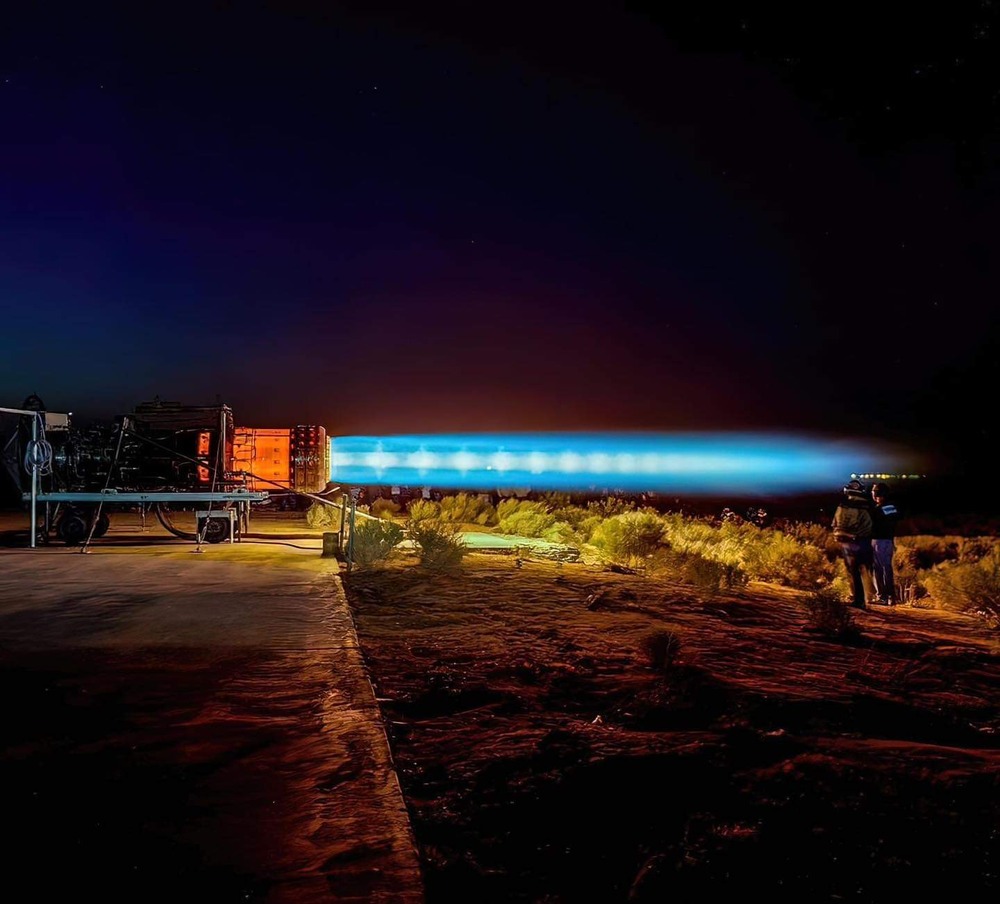
The Pratt & Whitney J58 (company designation JT11D-20) is an American jet engine that powered the Lockheed A-12, and subsequently the YF-12 and the SR-71 aircraft. It was an afterburning turbojet engine with a unique compressor bleed to the afterburner that gave increased thrust at high speeds. Because of the wide speed range of the aircraft, the engine needed two modes of operation to take it from stationary on the ground to 2,000 mph (3,200 km/h) at altitude. It was a conventional afterburning turbojet for take-off and acceleration to Mach 2 and then used permanent compressor bleed to the afterburner above Mach 2. The way the engine worked at cruise led it to be described as “acting like a turboramjet”. It has also been described as a turboramjet based on incorrect statements describing the turbomachinery as being completely bypassed.
The engine performance that met the mission requirements for the CIA and USAF over many years was later enhanced slightly for NASA experimental work (carrying external payloads on the top of the aircraft), which required more thrust to deal with higher aircraft drag.
Spiny Norman said:
The very last ground test run of the mighty Pratt & Whitney J58 engine, the one that powered the Mach 3.2 SR-71 spy plane.
The Pratt & Whitney J58 (company designation JT11D-20) is an American jet engine that powered the Lockheed A-12, and subsequently the YF-12 and the SR-71 aircraft. It was an afterburning turbojet engine with a unique compressor bleed to the afterburner that gave increased thrust at high speeds. Because of the wide speed range of the aircraft, the engine needed two modes of operation to take it from stationary on the ground to 2,000 mph (3,200 km/h) at altitude. It was a conventional afterburning turbojet for take-off and acceleration to Mach 2 and then used permanent compressor bleed to the afterburner above Mach 2. The way the engine worked at cruise led it to be described as “acting like a turboramjet”. It has also been described as a turboramjet based on incorrect statements describing the turbomachinery as being completely bypassed.
The engine performance that met the mission requirements for the CIA and USAF over many years was later enhanced slightly for NASA experimental work (carrying external payloads on the top of the aircraft), which required more thrust to deal with higher aircraft drag.
IIRC, it also required its own special high-flashpoint fuel, which necessitated dedicated air refuelling tankers that ONLY refuelled SR-71s.
In-flight refuelling was always needed, because the planes leaked like sieves on the ground because of the expansion gaps that had to be allowed for heating due to engine operation and air friction.
captain_spalding said:
Spiny Norman said:
The very last ground test run of the mighty Pratt & Whitney J58 engine, the one that powered the Mach 3.2 SR-71 spy plane.
The Pratt & Whitney J58 (company designation JT11D-20) is an American jet engine that powered the Lockheed A-12, and subsequently the YF-12 and the SR-71 aircraft. It was an afterburning turbojet engine with a unique compressor bleed to the afterburner that gave increased thrust at high speeds. Because of the wide speed range of the aircraft, the engine needed two modes of operation to take it from stationary on the ground to 2,000 mph (3,200 km/h) at altitude. It was a conventional afterburning turbojet for take-off and acceleration to Mach 2 and then used permanent compressor bleed to the afterburner above Mach 2. The way the engine worked at cruise led it to be described as “acting like a turboramjet”. It has also been described as a turboramjet based on incorrect statements describing the turbomachinery as being completely bypassed.
The engine performance that met the mission requirements for the CIA and USAF over many years was later enhanced slightly for NASA experimental work (carrying external payloads on the top of the aircraft), which required more thrust to deal with higher aircraft drag.
IIRC, it also required its own special high-flashpoint fuel, which necessitated dedicated air refuelling tankers that ONLY refuelled SR-71s.
In-flight refuelling was always needed, because the planes leaked like sieves on the ground because of the expansion gaps that had to be allowed for heating due to engine operation and air friction.
Yep, JP-7 I think it was and it was exclusively for the A-12/YF-12/SR-71.
All their flights had them taking off with less than half tanks, with an immediate refuel before starting their mission.
Spiny Norman said:
Yep, JP-7 I think it was and it was exclusively for the A-12/YF-12/SR-71.
All their flights had them taking off with less than half tanks, with an immediate refuel before starting their mission.
And then it was all about following really detailed flight plans so as to best get the best fuel/energy management, all ‘ballistic arcs’ and stuff.
I Legally Had The Worlds Shortest Marriage.
Max Fosh at work.
ELEMENT NAMES: The etymology of the periodic table.
“The games that were played out in Oman at Thumrait back in 1981, no rules…. Dik Manning putting his Jaguar through its paces.”

Spiny Norman said:
“The games that were played out in Oman at Thumrait back in 1981, no rules…. Dik Manning putting his Jaguar through its paces.”
And four Strikemasters in the background!
Shackleton’s Expedition to Antarctica on The Endurance: The photographic journey of one of the greatest survival stories ever told, 1914-1917.
In August 1914, explorer Ernest Shackleton boarded the Endurance and set sail for Antarctica, where he planned to cross the last uncharted continent on foot.
The expedition was an attempt to make the first land crossing of the Antarctic continent. After Roald Amundsen’s South Pole expedition in 1911, this crossing remained, in Shackleton’s words, the “one great main object of Antarctic journeyings”.
Shackleton’s plan was to sail to the Weddell Sea and to land a shore party near Vahsel Bay, in preparation for a transcontinental march via the South Pole to the Ross Sea. A supporting group, the Ross Sea party, would meanwhile establish camp in McMurdo Sound, and from there lay a series of supply depots across the Ross Ice Shelf to the foot of the Beardmore Glacier.
These depots would be essential for the transcontinental party’s survival, as the group would not be able to carry enough provisions for the entire crossing. The expedition required two ships: Endurance under Shackleton for the Weddell Sea party, and Aurora, under Aeneas Mackintosh, for the Ross Sea party.
Other scientific and exploratory sledging trips were planned for parties setting out from the main base as well as another party who were to remain at the base and carry out a variety of scientific work.



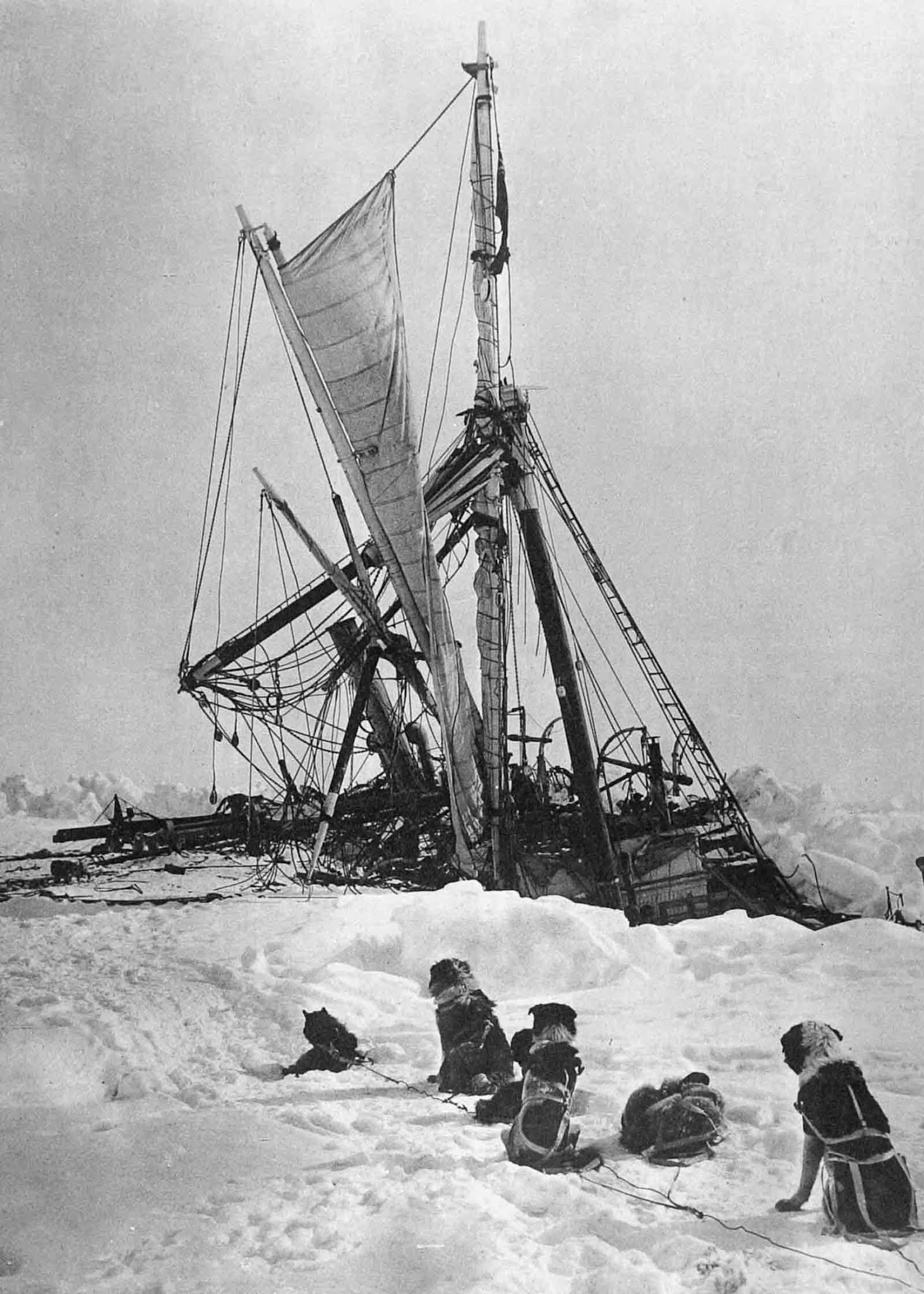
rarehistoricalphotos.com/shackleton-antarctica-endurance-photographs
Spiny Norman said:
Shackleton’s Expedition to Antarctica on The Endurance: The photographic journey of one of the greatest survival stories ever told, 1914-1917.In August 1914, explorer Ernest Shackleton boarded the Endurance and set sail for Antarctica, where he planned to cross the last uncharted continent on foot.
The expedition was an attempt to make the first land crossing of the Antarctic continent. After Roald Amundsen’s South Pole expedition in 1911, this crossing remained, in Shackleton’s words, the “one great main object of Antarctic journeyings”.
Shackleton’s plan was to sail to the Weddell Sea and to land a shore party near Vahsel Bay, in preparation for a transcontinental march via the South Pole to the Ross Sea. A supporting group, the Ross Sea party, would meanwhile establish camp in McMurdo Sound, and from there lay a series of supply depots across the Ross Ice Shelf to the foot of the Beardmore Glacier.
These depots would be essential for the transcontinental party’s survival, as the group would not be able to carry enough provisions for the entire crossing. The expedition required two ships: Endurance under Shackleton for the Weddell Sea party, and Aurora, under Aeneas Mackintosh, for the Ross Sea party.
Other scientific and exploratory sledging trips were planned for parties setting out from the main base as well as another party who were to remain at the base and carry out a variety of scientific work.
rarehistoricalphotos.com/shackleton-antarctica-endurance-photographs
You usually get the ice cave photo with those.
5 Weirdest Current Theories About Black Holes
https://www.youtube.com/watch?v=SYv0Iixzl4Y
The Largest Objects in the Universe
https://www.youtube.com/watch?v=JkiDjoea6Kk
Uncommonly Difficult IQ Tests.
Reverse-engineering an electromechanical Central Air Data Computer
Determining the airspeed and altitude of a fighter plane is harder than you’d expect. At slower speeds, pressure measurements can give the altitude, air speed, and other “air data”. But as planes approach the speed of sound, complicated equations are needed to accurately compute these values. The Bendix Central Air Data Computer (CADC) solved this problem for military planes such as the F-101 and the F-111 fighters, and the B-58 bomber.1 This electromechanical marvel was crammed full of 1955 technology: gears, cams, synchros, and magnetic amplifiers. In this blog post I look inside the CADC, describe the calculations it performed, and explain how it performed these calculations mechanically.
www.righto.com/2023/02/bendix-central-air-data-computer-cadc.html
Clean energy breakthrough as electricity is produced out of thin air.
While most of us will never bear witness to them, many of the world’s smallest organisms have some incredible means of survival. Some soil bacteria, for example, can gobble up hydrogen from the air and use it for fuel if starved of any other food.
It’s exactly this microbiological trickery that set researchers from Monash University in Australia on a long path to locating and isolating an enzyme from Mycobacterium smegmatis that processes the consumed hydrogen and outputs it as electricity. Now, this has the potential to be harnessed for use to power things such as small devices and implants.
“We’ve known for some time that bacteria can use the trace hydrogen in the air as a source of energy to help them grow and survive, including in Antarctic soils, volcanic craters, and the deep ocean,” said Chris Greening, microbiology professor at Monash and co-lead of this study. “But we didn’t know how they did this, until now.”
While hydrogen only makes up 0.00005% of the atmosphere, this isolated hydrogen catalyzing enzyme, which the team called Huc, is able to consume it easily. And while bacteria removes 70 million tonnes of hydrogen yearly from the air, the molecular structure of Huc sees the enzyme split the hydrogen molecules to form an electron transport chain, essentially producing an electrical circuit in the cell.
Spiny Norman said:
Clean energy breakthrough as electricity is produced out of thin air.While most of us will never bear witness to them, many of the world’s smallest organisms have some incredible means of survival. Some soil bacteria, for example, can gobble up hydrogen from the air and use it for fuel if starved of any other food.
It’s exactly this microbiological trickery that set researchers from Monash University in Australia on a long path to locating and isolating an enzyme from Mycobacterium smegmatis that processes the consumed hydrogen and outputs it as electricity. Now, this has the potential to be harnessed for use to power things such as small devices and implants.
“We’ve known for some time that bacteria can use the trace hydrogen in the air as a source of energy to help them grow and survive, including in Antarctic soils, volcanic craters, and the deep ocean,” said Chris Greening, microbiology professor at Monash and co-lead of this study. “But we didn’t know how they did this, until now.”
While hydrogen only makes up 0.00005% of the atmosphere, this isolated hydrogen catalyzing enzyme, which the team called Huc, is able to consume it easily. And while bacteria removes 70 million tonnes of hydrogen yearly from the air, the molecular structure of Huc sees the enzyme split the hydrogen molecules to form an electron transport chain, essentially producing an electrical circuit in the cell.
QI, but a “clean energy breakthrough”?
We’ll see.
The Rev Dodgson said:
Spiny Norman said:
Clean energy breakthrough as electricity is produced out of thin air.While most of us will never bear witness to them, many of the world’s smallest organisms have some incredible means of survival. Some soil bacteria, for example, can gobble up hydrogen from the air and use it for fuel if starved of any other food.
It’s exactly this microbiological trickery that set researchers from Monash University in Australia on a long path to locating and isolating an enzyme from Mycobacterium smegmatis that processes the consumed hydrogen and outputs it as electricity. Now, this has the potential to be harnessed for use to power things such as small devices and implants.
“We’ve known for some time that bacteria can use the trace hydrogen in the air as a source of energy to help them grow and survive, including in Antarctic soils, volcanic craters, and the deep ocean,” said Chris Greening, microbiology professor at Monash and co-lead of this study. “But we didn’t know how they did this, until now.”
While hydrogen only makes up 0.00005% of the atmosphere, this isolated hydrogen catalyzing enzyme, which the team called Huc, is able to consume it easily. And while bacteria removes 70 million tonnes of hydrogen yearly from the air, the molecular structure of Huc sees the enzyme split the hydrogen molecules to form an electron transport chain, essentially producing an electrical circuit in the cell.
QI, but a “clean energy breakthrough”?
We’ll see.
The big question: is there a mining company involved so that governments can give them subsidies/hefty tax breaks in return for a percentage kick-back to party funds?
captain_spalding said:
The Rev Dodgson said:
Spiny Norman said:
Clean energy breakthrough as electricity is produced out of thin air.While most of us will never bear witness to them, many of the world’s smallest organisms have some incredible means of survival. Some soil bacteria, for example, can gobble up hydrogen from the air and use it for fuel if starved of any other food.
It’s exactly this microbiological trickery that set researchers from Monash University in Australia on a long path to locating and isolating an enzyme from Mycobacterium smegmatis that processes the consumed hydrogen and outputs it as electricity. Now, this has the potential to be harnessed for use to power things such as small devices and implants.
“We’ve known for some time that bacteria can use the trace hydrogen in the air as a source of energy to help them grow and survive, including in Antarctic soils, volcanic craters, and the deep ocean,” said Chris Greening, microbiology professor at Monash and co-lead of this study. “But we didn’t know how they did this, until now.”
While hydrogen only makes up 0.00005% of the atmosphere, this isolated hydrogen catalyzing enzyme, which the team called Huc, is able to consume it easily. And while bacteria removes 70 million tonnes of hydrogen yearly from the air, the molecular structure of Huc sees the enzyme split the hydrogen molecules to form an electron transport chain, essentially producing an electrical circuit in the cell.
QI, but a “clean energy breakthrough”?
We’ll see.
The big question: is there a mining company involved so that governments can give them subsidies/hefty tax breaks in return for a percentage kick-back to party funds?
booooriiiing!
Bogsnorkler said:
captain_spalding said:
The Rev Dodgson said:QI, but a “clean energy breakthrough”?
We’ll see.
The big question: is there a mining company involved so that governments can give them subsidies/hefty tax breaks in return for a percentage kick-back to party funds?
booooriiiing!
It’s Sunday morning. I’m just re-running ‘The Best of Spadling’s Kookery’.
Vintage photographs of early vertical parking garages, 1920-1960.
The rapid rise of automobiles at the turn of the 20th century presented an immediate problem: where to park all these vehicles roaming the streets?
The concept for vertical parking garages was and is driven by two factors: a need for parking spaces and a scarcity of available land.
The earliest use of the vertical parking solution was in Paris, France in 1905 at the Garage Rue de Ponthieu. The system consisted of a groundbreaking multi-story concrete structure with an internal car elevator to transport cars to upper levels where attendants parked the cars.
In the 1920s, a Ferris wheel-like vertical system (for cars rather than people) called a paternoster system became popular as it could park eight cars in the ground space normally used for parking two cars. Mechanically simple with a small footprint, the paternoster was easy to use in many places, including inside buildings.
Rotary lift parking systems operate like a Ferris wheel: cars are parked in suspended cages attached to a belt, one car at a time, the entire series of cars rotated until the next cage is at the bottom.
Powered by electric motors or hydraulic pumps, they are actually less expensive per parking space because they use less ground and require less structure to be erected around them.

And the occasional oops.
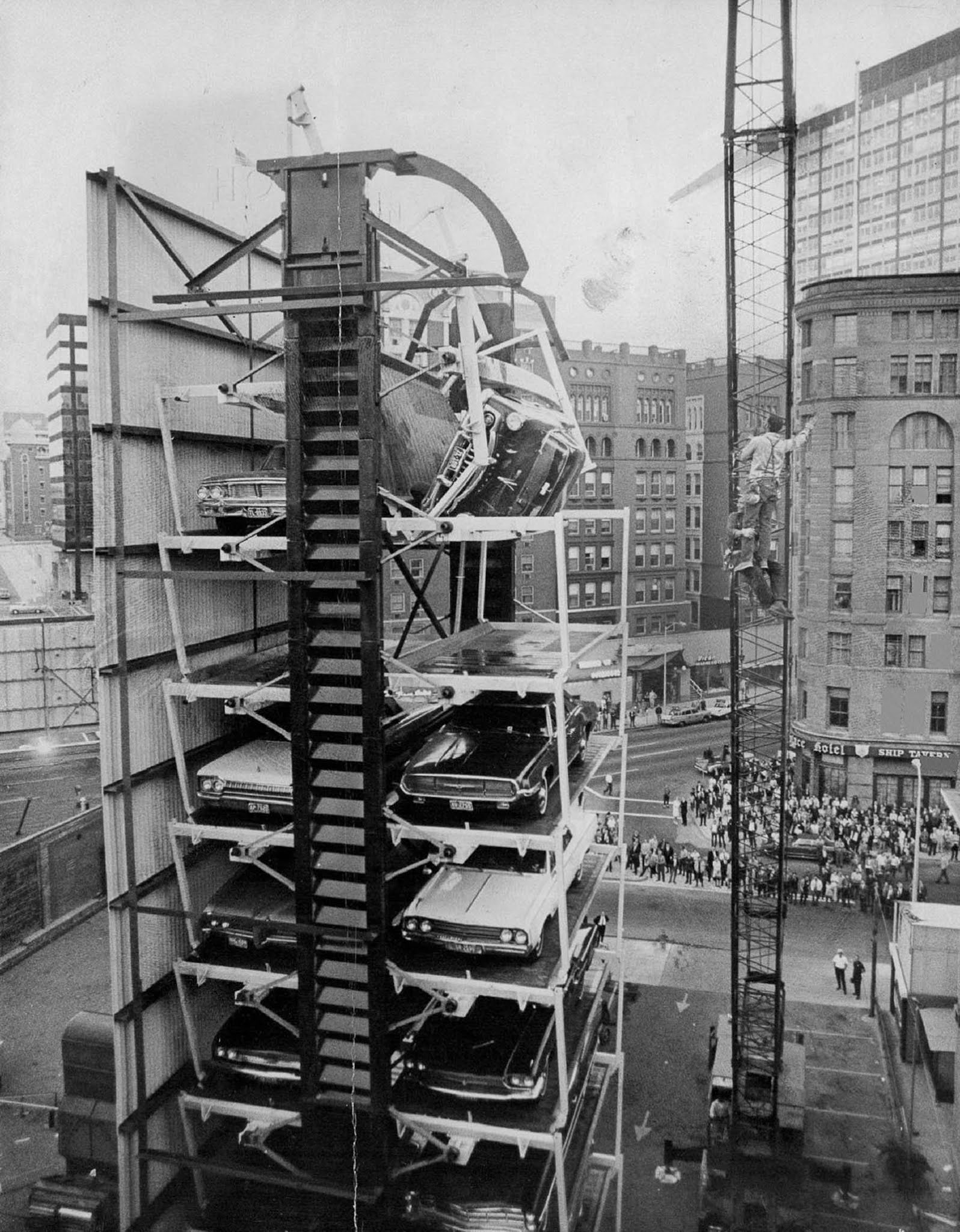
Spiny Norman said:
Vintage photographs of early vertical parking garages, 1920-1960.The rapid rise of automobiles at the turn of the 20th century presented an immediate problem: where to park all these vehicles roaming the streets?
The concept for vertical parking garages was and is driven by two factors: a need for parking spaces and a scarcity of available land.
The earliest use of the vertical parking solution was in Paris, France in 1905 at the Garage Rue de Ponthieu. The system consisted of a groundbreaking multi-story concrete structure with an internal car elevator to transport cars to upper levels where attendants parked the cars.
In the 1920s, a Ferris wheel-like vertical system (for cars rather than people) called a paternoster system became popular as it could park eight cars in the ground space normally used for parking two cars. Mechanically simple with a small footprint, the paternoster was easy to use in many places, including inside buildings.
Rotary lift parking systems operate like a Ferris wheel: cars are parked in suspended cages attached to a belt, one car at a time, the entire series of cars rotated until the next cage is at the bottom.
Powered by electric motors or hydraulic pumps, they are actually less expensive per parking space because they use less ground and require less structure to be erected around them.
And the occasional oops.
A link would be handy no doubt.
rarehistoricalphotos.com/vintage-photographs-of-early-vertical-parking-garages
The unspillable cup.
170 trillion pieces of microplastic in oceans.
The impact of plastic pollution on marine life is growing and a new report suggests the problem is going to get worse.
Scientists say there has been an alarming rise in the number of pieces of micro-plastics in the oceans and urgent solutions are required to stop this plastic smog.
This is the crankshaft for a
Wärtsilä-Sulzer RTA96-C engine, the largest reciprocating engine in the world, used in large container ships. It’s a 1810-litre engine that generates 108,920
horsepower at 102 RPM, and it idles at 22 RPM… almost 3 seconds per rotation. This
crankshaft weighs 300 tons.
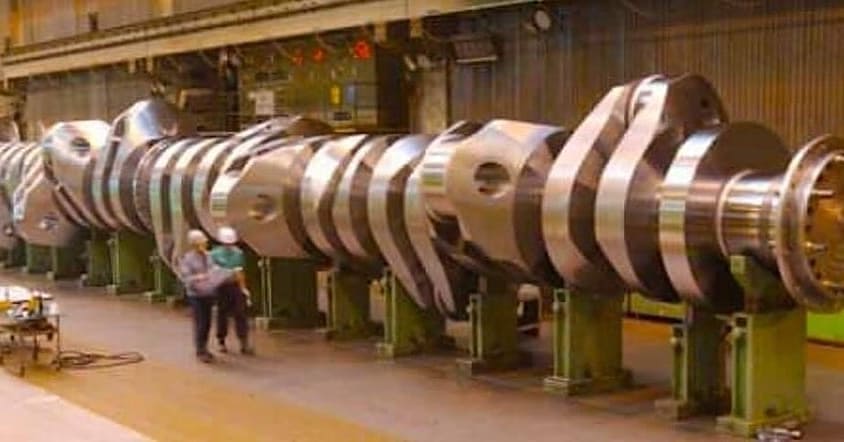
Spiny Norman said:
This is the crankshaft for a
Wärtsilä-Sulzer RTA96-C engine, the largest reciprocating engine in the world, used in large container ships. It’s a 1810-litre engine that generates 108,920
horsepower at 102 RPM, and it idles at 22 RPM… almost 3 seconds per rotation. This
crankshaft weighs 300 tons.
Would this fit in my gokart?
The Sharpest Object In The World Can’t Cut Anything.
Spiny Norman said:
The Sharpest Object In The World Can’t Cut Anything.
A wife’s tongue ?
Cymek said:
Spiny Norman said:
The Sharpest Object In The World Can’t Cut Anything.A wife’s tongue ?
the sharpest tone in the universe is inaudible
note if you anagram it then
How Fast Could a Computer Be?
World’s Strongest Magnet.
Longer than two Olympic-sized swimming pools Japanese billionaire has commissioned the world’s first megayacht to be powered by emission-free hydrogen fuel cell technology.
https://luxurylaunches.com/transport/lurssen-project-cosmos.php
It stores the hydrogen by having large methanol tanks and separating the hydrogen from it …. which is often not a very clean process.
Serpens catus (snake cat) is the rarest species of feline on Earth. These animals live in hard to reach regions of the Amazon rainforest, and therefore they are relatively poorly studied. The first images capturing the snake cat appeared only in the 2020. A mammal weighs up to 4 kilograms and reaches 50 centimetres in length. The animal is virtually untamed, although some Amazonian tribes use snake cats to protect their homes from rodents.

Spiny Norman said:
Serpens catus (snake cat) is the rarest species of feline on Earth. These animals live in hard to reach regions of the Amazon rainforest, and therefore they are relatively poorly studied. The first images capturing the snake cat appeared only in the 2020. A mammal weighs up to 4 kilograms and reaches 50 centimetres in length. The animal is virtually untamed, although some Amazonian tribes use snake cats to protect their homes from rodents.
Is the animal really found in the regions of the Amazon rainforest?
No, Serpens Catus, aka snake cat, isn’t real. The viral posts claim images of the snake cat first came to light in 2020, but there’s no scientific evidence to prove its existence.
Furthermore, there exists no other species of feline that remotely resembles the snake cat for one to be confused with. Therefore, it’s safe to say that the picture in the viral post is edited.
https://www.hitc.com/en-gb/2023/03/15/is-serpens-catus-or-amazon-snake-cat-real/
esselte said:
Spiny Norman said:
Serpens catus (snake cat) is the rarest species of feline on Earth. These animals live in hard to reach regions of the Amazon rainforest, and therefore they are relatively poorly studied. The first images capturing the snake cat appeared only in the 2020. A mammal weighs up to 4 kilograms and reaches 50 centimetres in length. The animal is virtually untamed, although some Amazonian tribes use snake cats to protect their homes from rodents.
Is the animal really found in the regions of the Amazon rainforest?
No, Serpens Catus, aka snake cat, isn’t real. The viral posts claim images of the snake cat first came to light in 2020, but there’s no scientific evidence to prove its existence.
Furthermore, there exists no other species of feline that remotely resembles the snake cat for one to be confused with. Therefore, it’s safe to say that the picture in the viral post is edited.
https://www.hitc.com/en-gb/2023/03/15/is-serpens-catus-or-amazon-snake-cat-real/
Sorry about that!
esselte said:
Spiny Norman said:
Serpens catus (snake cat) is the rarest species of feline on Earth. These animals live in hard to reach regions of the Amazon rainforest, and therefore they are relatively poorly studied. The first images capturing the snake cat appeared only in the 2020. A mammal weighs up to 4 kilograms and reaches 50 centimetres in length. The animal is virtually untamed, although some Amazonian tribes use snake cats to protect their homes from rodents.
Is the animal really found in the regions of the Amazon rainforest?
No, Serpens Catus, aka snake cat, isn’t real. The viral posts claim images of the snake cat first came to light in 2020, but there’s no scientific evidence to prove its existence.
Furthermore, there exists no other species of feline that remotely resembles the snake cat for one to be confused with. Therefore, it’s safe to say that the picture in the viral post is edited.
https://www.hitc.com/en-gb/2023/03/15/is-serpens-catus-or-amazon-snake-cat-real/
Perhaps gene editing can change their colour like photoshop
esselte said:
Spiny Norman said:
Serpens catus (snake cat) is the rarest species of feline on Earth. These animals live in hard to reach regions of the Amazon rainforest, and therefore they are relatively poorly studied. The first images capturing the snake cat appeared only in the 2020. A mammal weighs up to 4 kilograms and reaches 50 centimetres in length. The animal is virtually untamed, although some Amazonian tribes use snake cats to protect their homes from rodents.
Is the animal really found in the regions of the Amazon rainforest?
No, Serpens Catus, aka snake cat, isn’t real. The viral posts claim images of the snake cat first came to light in 2020, but there’s no scientific evidence to prove its existence.
Furthermore, there exists no other species of feline that remotely resembles the snake cat for one to be confused with. Therefore, it’s safe to say that the picture in the viral post is edited.
https://www.hitc.com/en-gb/2023/03/15/is-serpens-catus-or-amazon-snake-cat-real/
should be Felis serpens surly?
JudgeMental said:
esselte said:
Spiny Norman said:
Serpens catus (snake cat) is the rarest species of feline on Earth. These animals live in hard to reach regions of the Amazon rainforest, and therefore they are relatively poorly studied. The first images capturing the snake cat appeared only in the 2020. A mammal weighs up to 4 kilograms and reaches 50 centimetres in length. The animal is virtually untamed, although some Amazonian tribes use snake cats to protect their homes from rodents.
Is the animal really found in the regions of the Amazon rainforest?
No, Serpens Catus, aka snake cat, isn’t real. The viral posts claim images of the snake cat first came to light in 2020, but there’s no scientific evidence to prove its existence.
Furthermore, there exists no other species of feline that remotely resembles the snake cat for one to be confused with. Therefore, it’s safe to say that the picture in the viral post is edited.
https://www.hitc.com/en-gb/2023/03/15/is-serpens-catus-or-amazon-snake-cat-real/
should be Felis serpens surly?
yes, I would think so.
JudgeMental said:
esselte said:
Spiny Norman said:
Serpens catus (snake cat) is the rarest species of feline on Earth. These animals live in hard to reach regions of the Amazon rainforest, and therefore they are relatively poorly studied. The first images capturing the snake cat appeared only in the 2020. A mammal weighs up to 4 kilograms and reaches 50 centimetres in length. The animal is virtually untamed, although some Amazonian tribes use snake cats to protect their homes from rodents.
Is the animal really found in the regions of the Amazon rainforest?
No, Serpens Catus, aka snake cat, isn’t real. The viral posts claim images of the snake cat first came to light in 2020, but there’s no scientific evidence to prove its existence.
Furthermore, there exists no other species of feline that remotely resembles the snake cat for one to be confused with. Therefore, it’s safe to say that the picture in the viral post is edited.
https://www.hitc.com/en-gb/2023/03/15/is-serpens-catus-or-amazon-snake-cat-real/
should be Felis serpens surly?
Well spotted.
A new rear wheel for a Formula 5000 racing car. 15“diameter, 17“wide.
Quite large!

Spiny Norman said:
A new rear wheel for a Formula 5000 racing car. 15“diameter, 17“wide.
Quite large!
I find it amazing that the incredible amount of horsepower from a top fueller is transmitted from the rim to the tire through friction on the bead. Some of the top level gokarts have to screw bolts through the bead in order to get that torque into the tire.
Kingy said:
Spiny Norman said:
A new rear wheel for a Formula 5000 racing car. 15“diameter, 17“wide.
Quite large!
I find it amazing that the incredible amount of horsepower from a top fueller is transmitted from the rim to the tire through friction on the bead. Some of the top level gokarts have to screw bolts through the bead in order to get that torque into the tire.
Especially with the low pressure they run.
Ingenuity’s 47 flight in action! Multiple Mars videos show Helicopter from different perspectives.
Spiny Norman said:
Ingenuity’s 47 flight in action! Multiple Mars videos show Helicopter from different perspectives.
Some serious engierring went into that from many disciplines.
Peak Warming Man said:
Spiny Norman said:
Ingenuity’s 47 flight in action! Multiple Mars videos show Helicopter from different perspectives.Some serious engierring went into that from many disciplines.
Its an impressive machine
Cymek said:
Peak Warming Man said:
Spiny Norman said:
Ingenuity’s 47 flight in action! Multiple Mars videos show Helicopter from different perspectives.Some serious engierring went into that from many disciplines.
Its an impressive machine
It indirectly shows us Mars is lifeless in that particular area as no Martians are throwing beer bottles at it for invading their privacy
Cymek said:
Cymek said:
Peak Warming Man said:Some serious engierring went into that from many disciplines.
Its an impressive machine
It indirectly shows us Mars is lifeless in that particular area as no Martians are throwing beer bottles at it for invading their privacy
Tamb said:
Cymek said:
Cymek said:Its an impressive machine
It indirectly shows us Mars is lifeless in that particular area as no Martians are throwing beer bottles at it for invading their privacy
Maybe they’re in Covid lockdown.
Didn’t think of that
Cymek said:
Cymek said:
Peak Warming Man said:Some serious engierring went into that from many disciplines.
Its an impressive machine
It indirectly shows us Mars is lifeless in that particular area as no Martians are throwing beer bottles at it for invading their privacy
The Martians might have skipped the Solar System when they saw their new neighbours.
Witty Rejoinder said:
Cymek said:
Cymek said:Its an impressive machine
It indirectly shows us Mars is lifeless in that particular area as no Martians are throwing beer bottles at it for invading their privacy
The Martians might have skipped the Solar System when they saw their new neighbours.
Who could blame them for that?
U.S Air Force footage shows Russian fighter jet crashing into U.S drone over Black Sea.
After the second pass, you can see how the prop on the UAV has one blade bent somewhat.
A lot of photos of the Soviet lunar lander. It was to be launched in the mighty N1 rocket, with two cosmonauts in the Soyuz capsule. When in lunar orbit, the lander pilot – only one cosmonaut would fly it – would do a short EVA to get from the Soyuz to the lander.
It has just the one rocket motor to do the descent and take-off, thus saving more weight. A fair bit of the lower structure would stay on the Moon, again to save weight, and act as a launching pad.
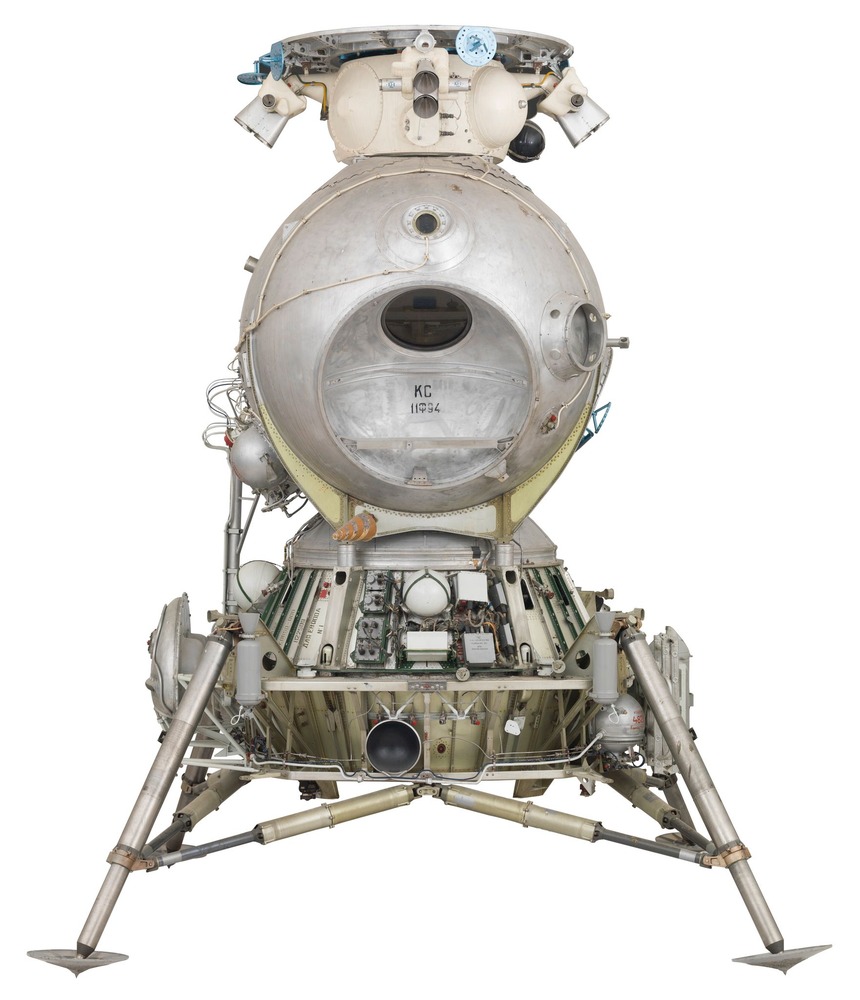



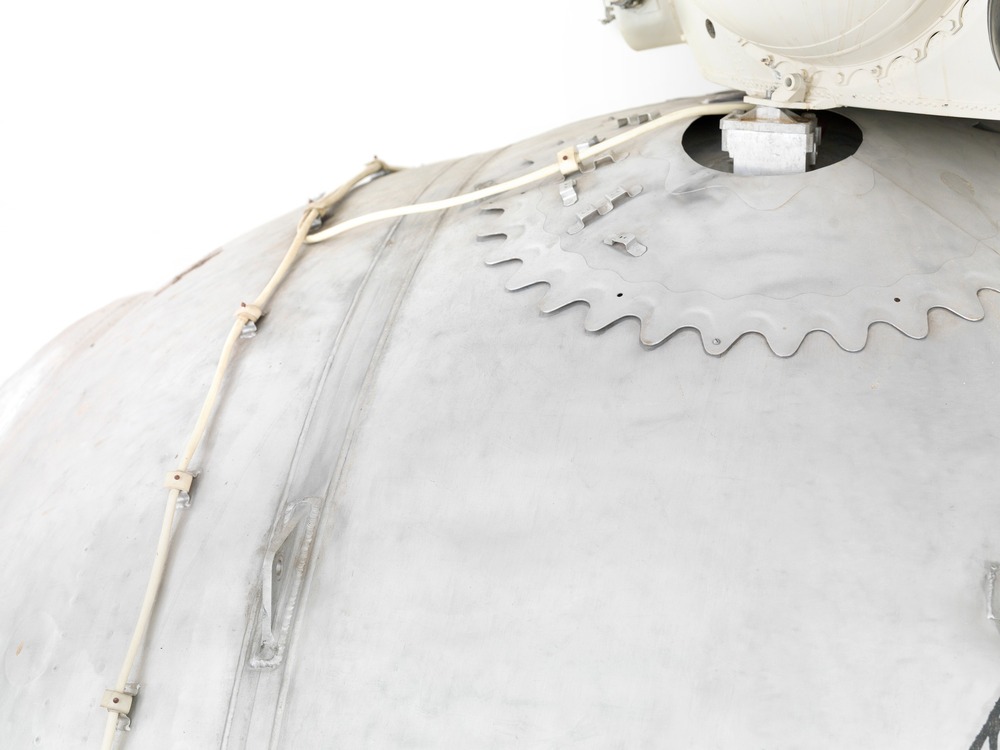
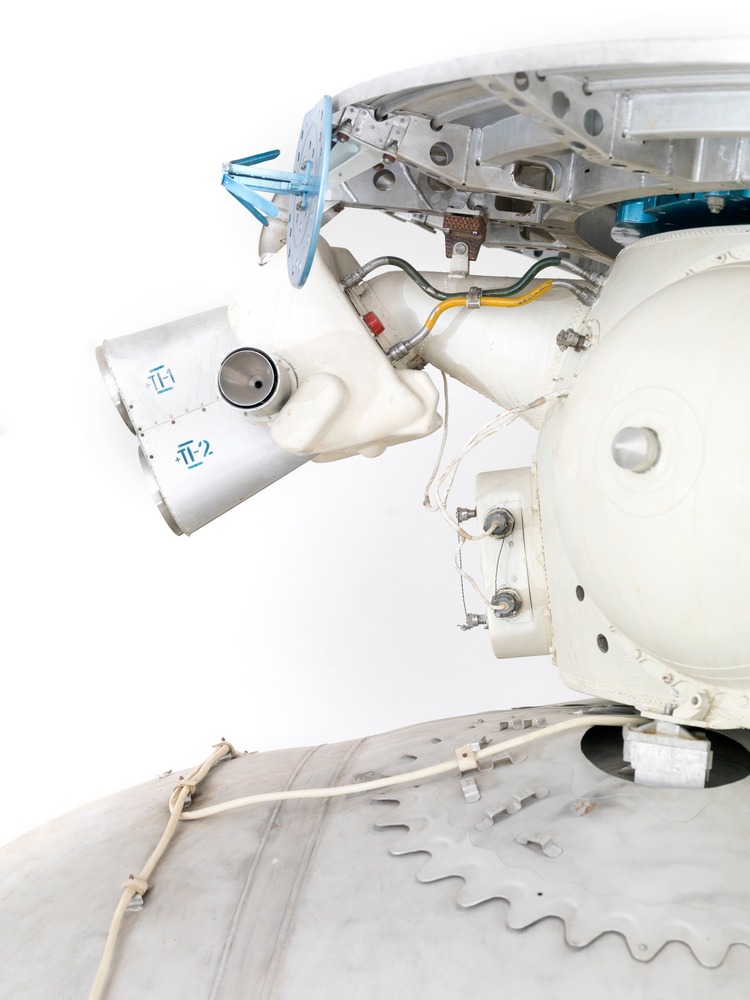





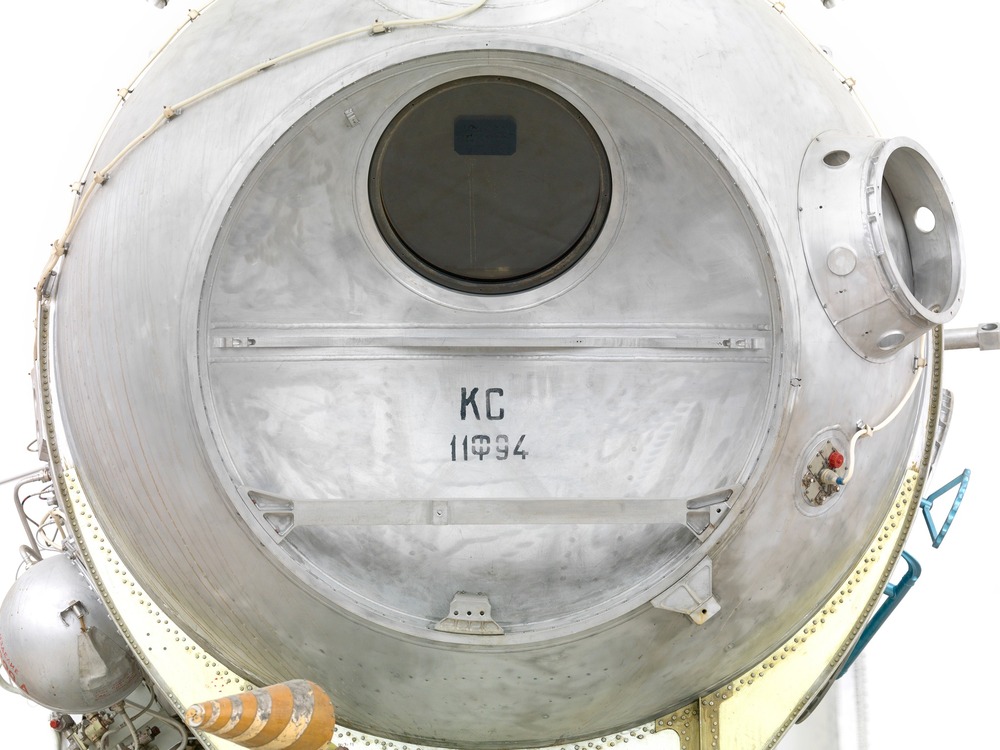
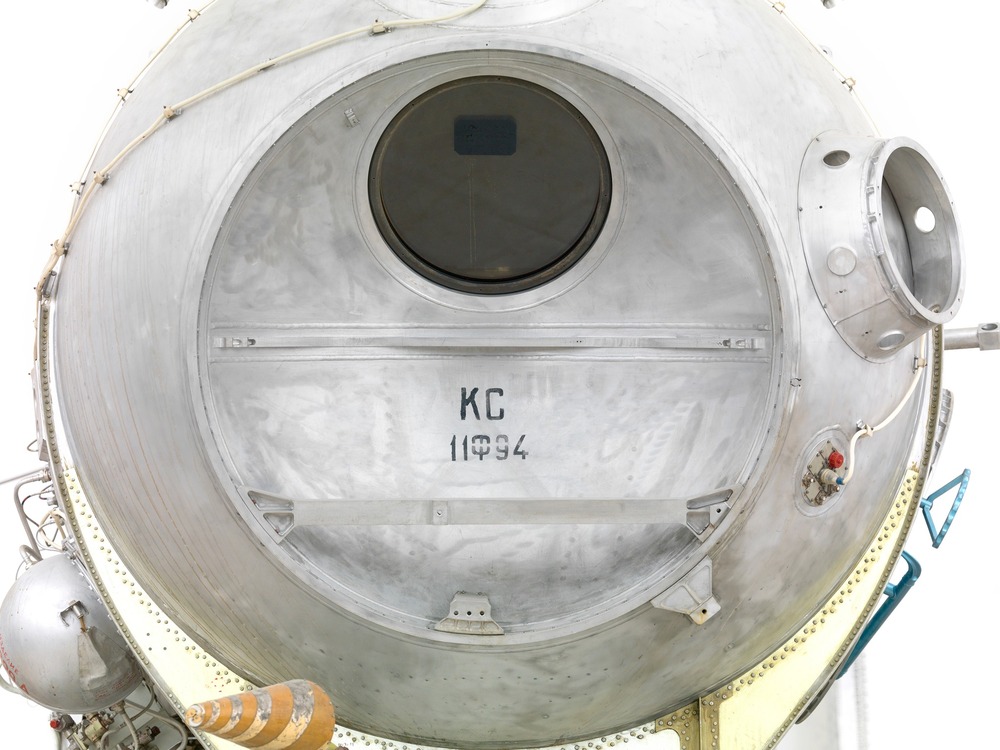
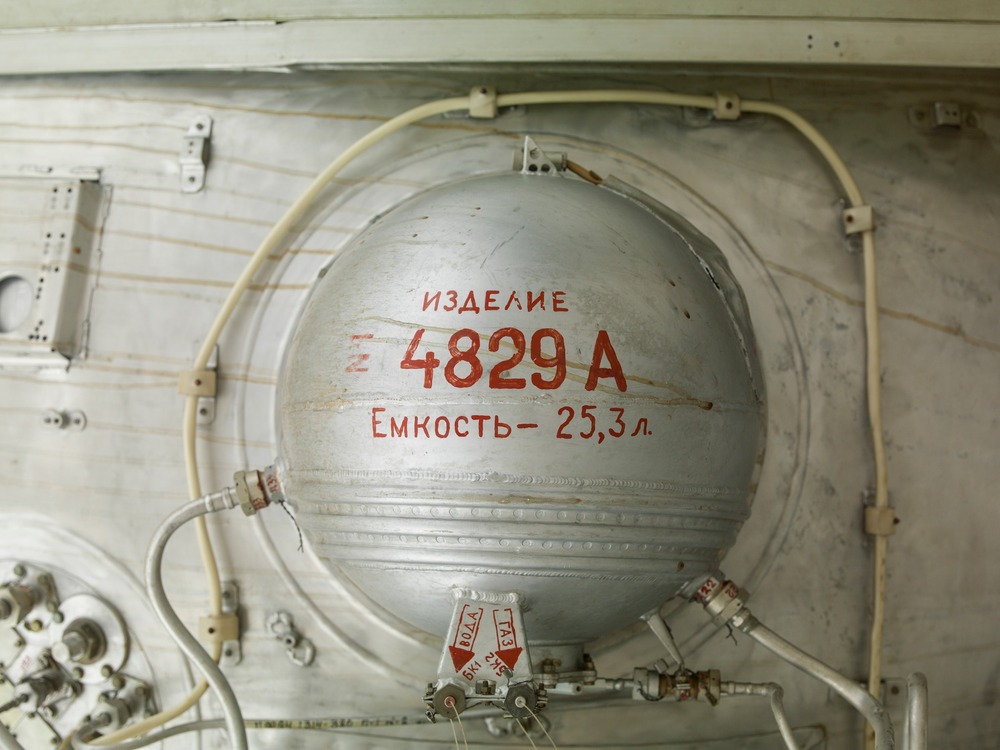
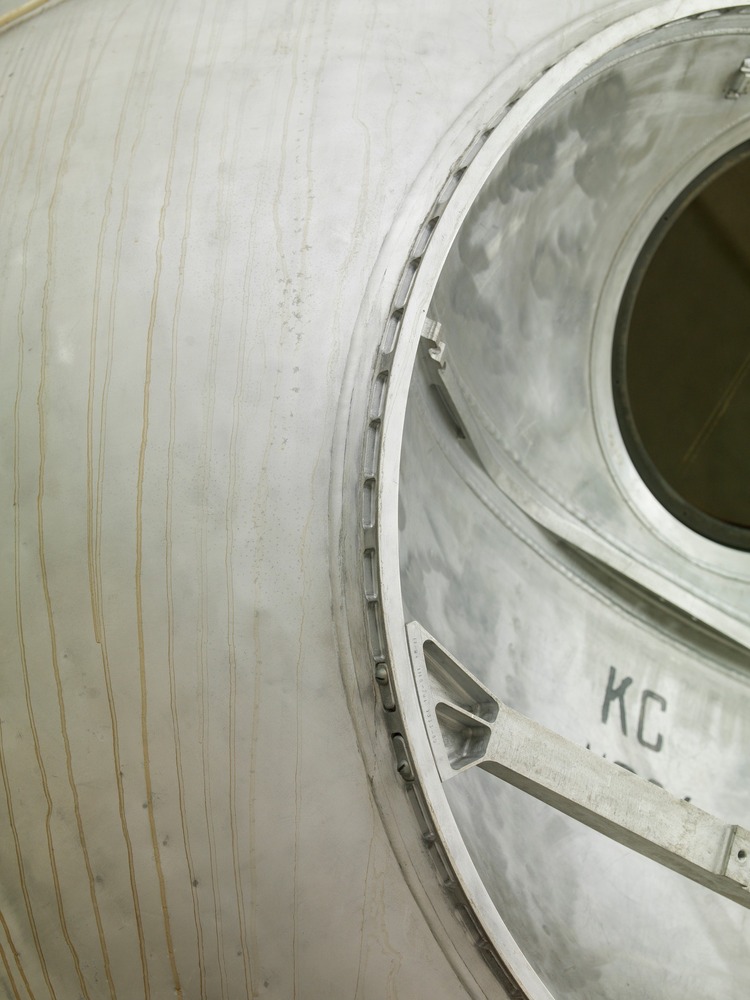
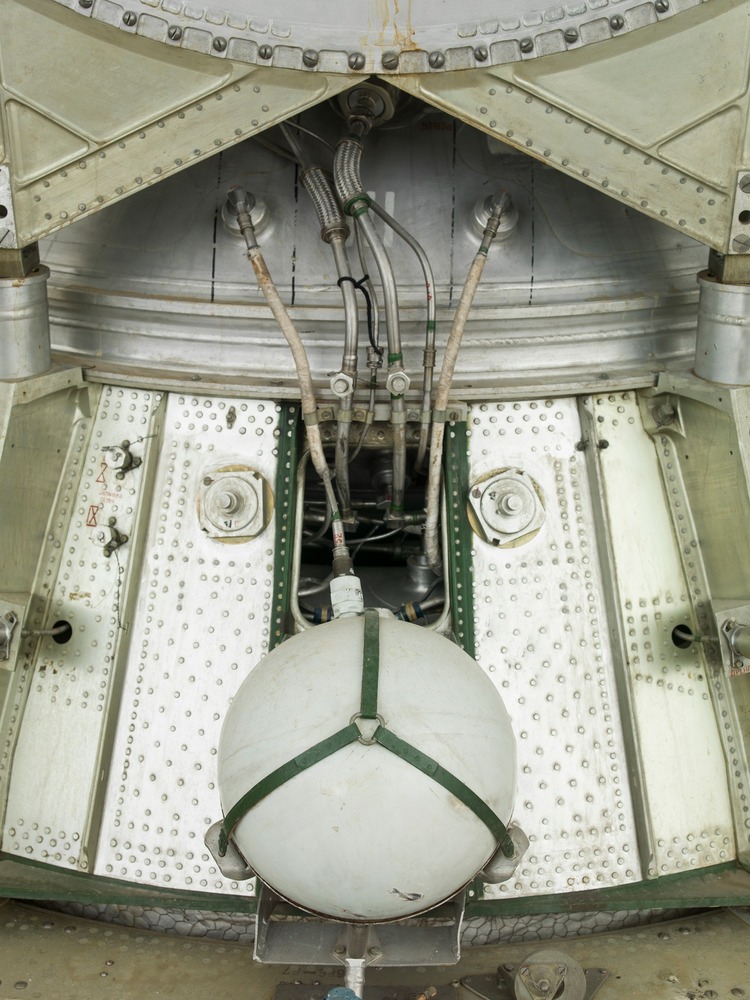
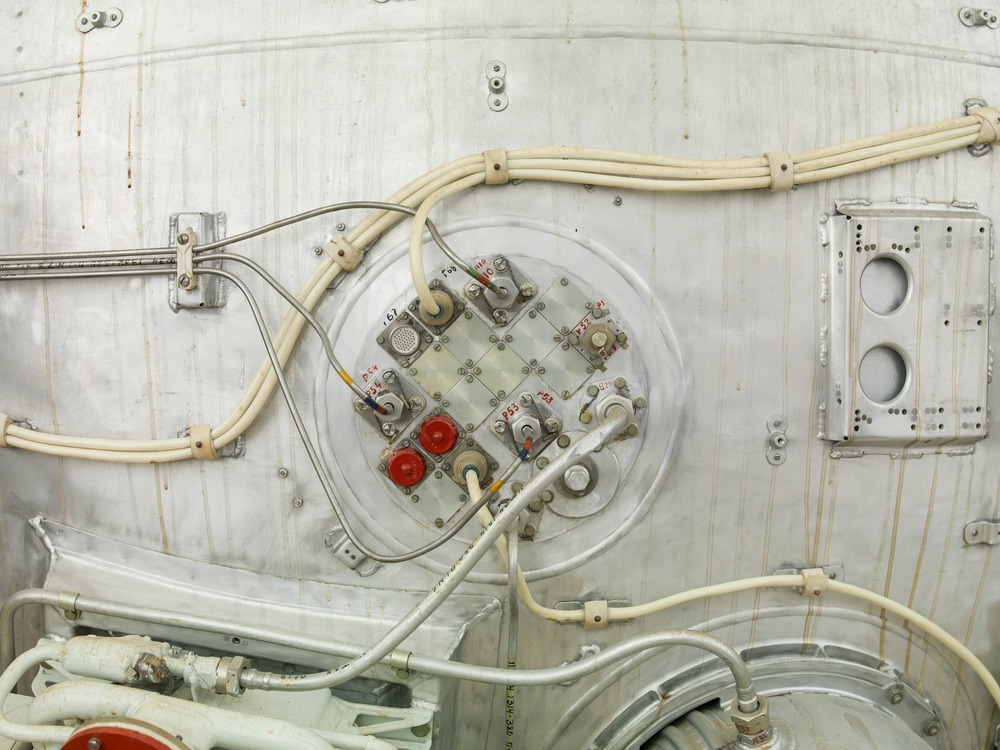
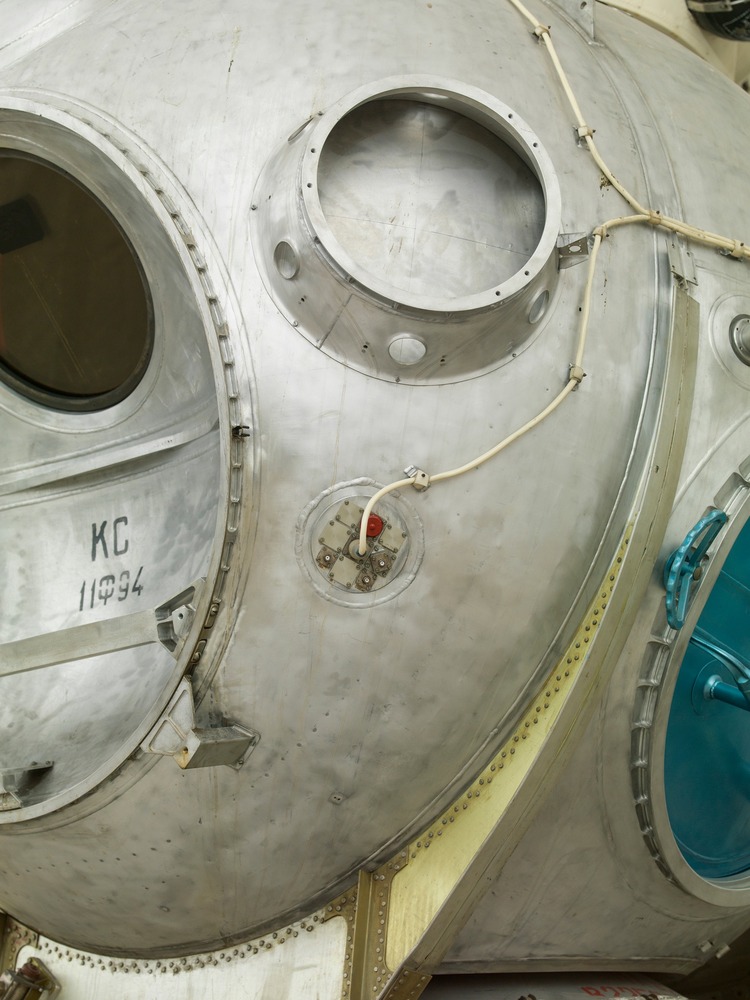

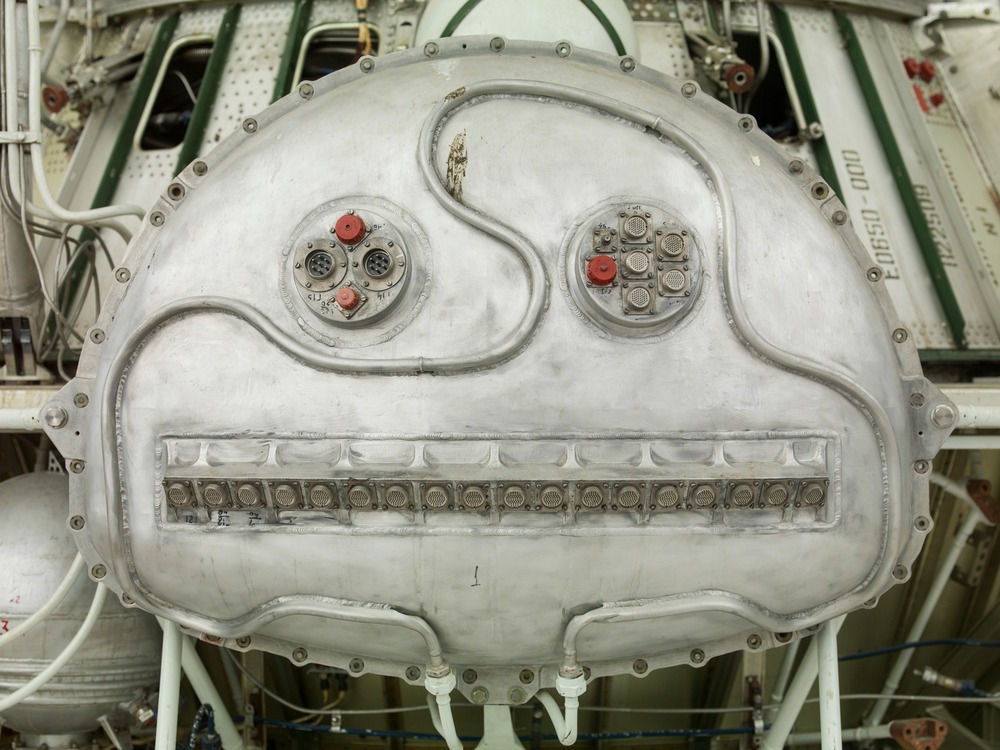
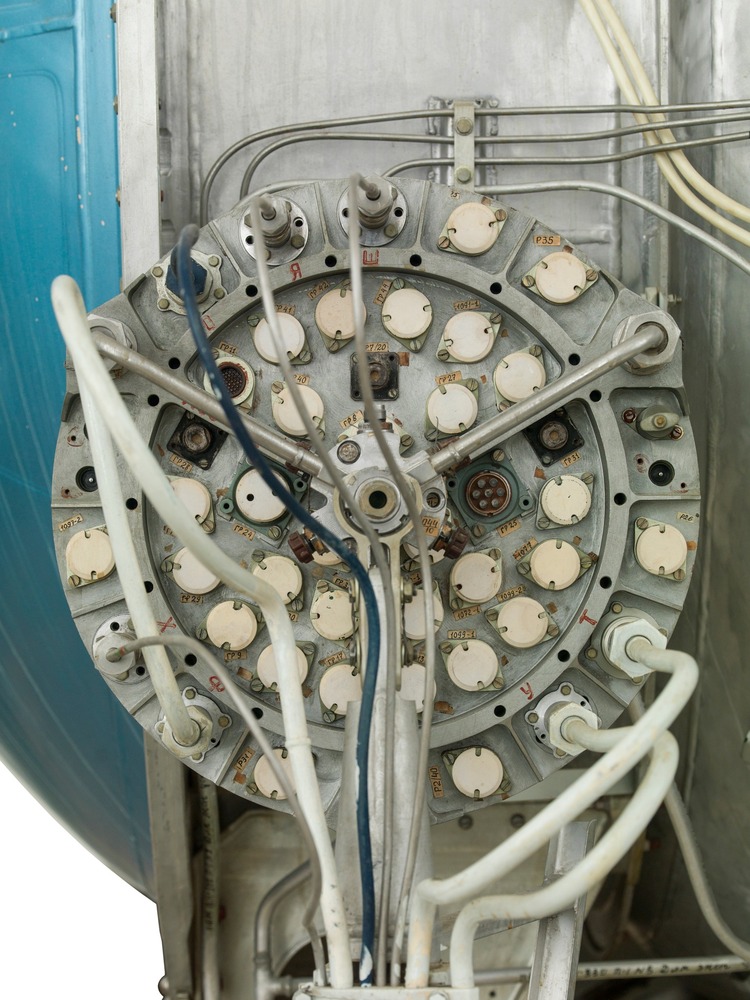



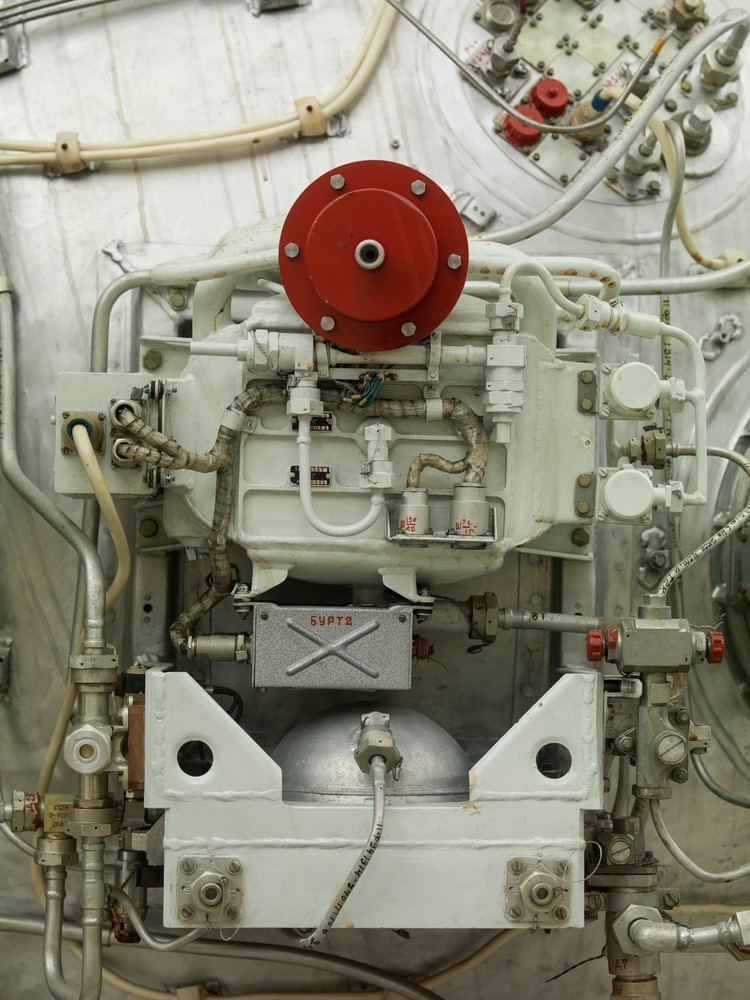
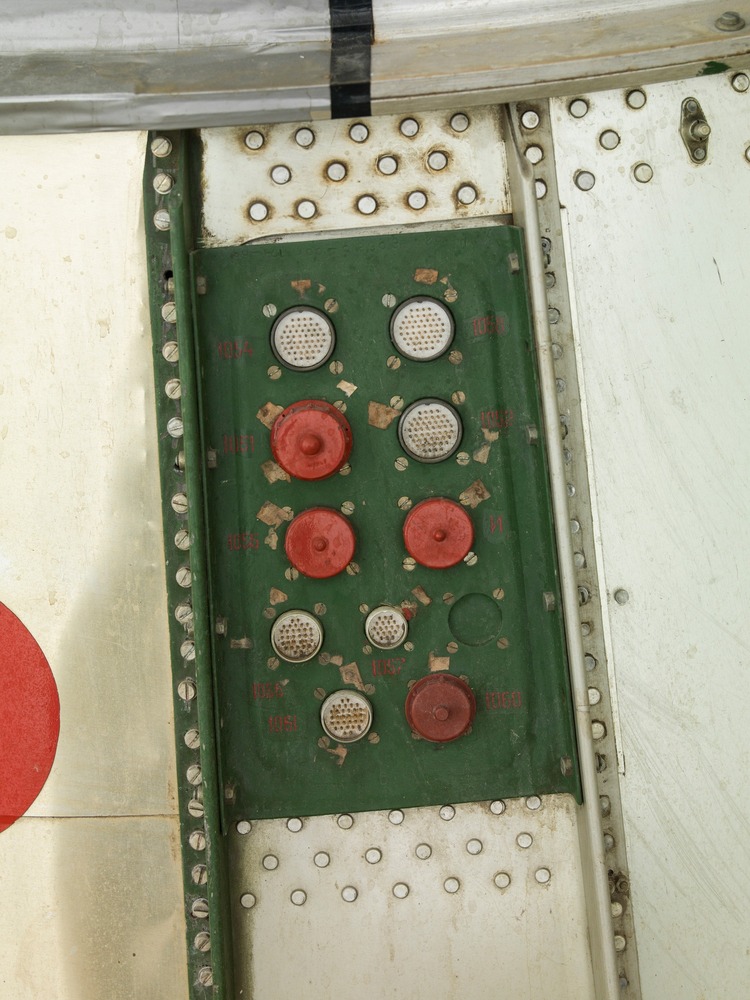
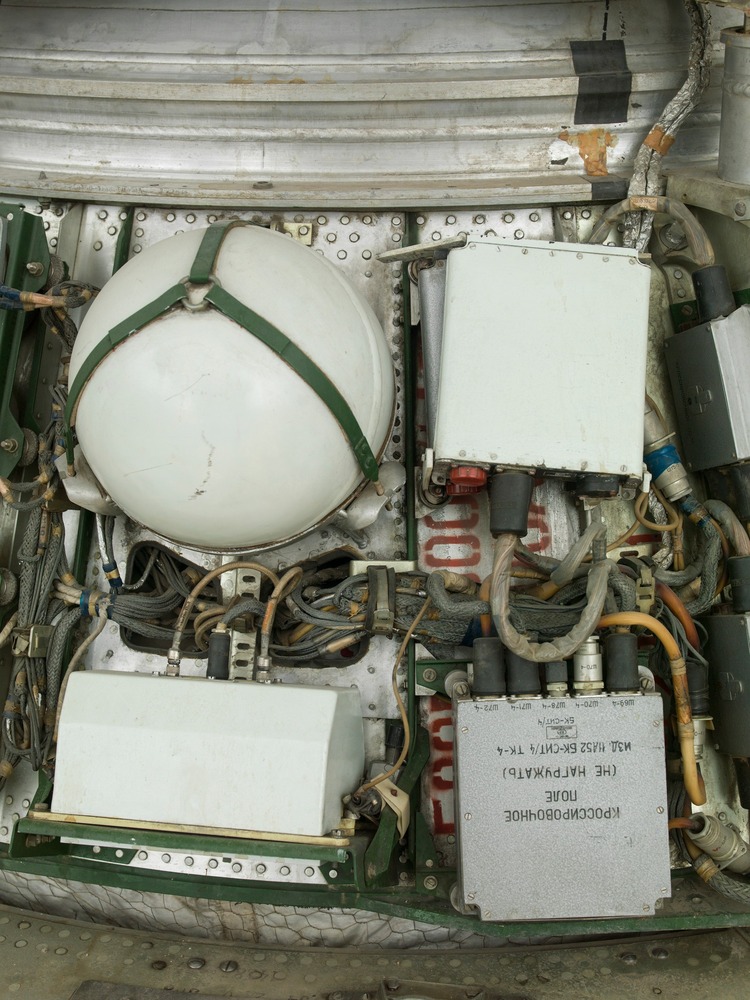
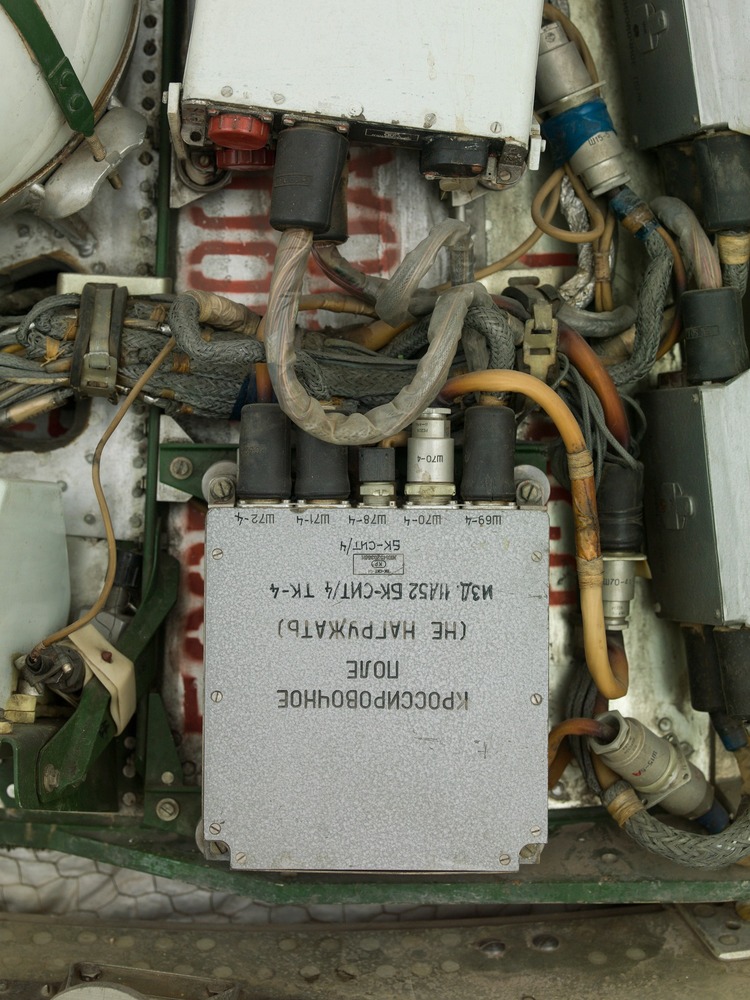
Spiny Norman said:
A lot of photos of the Soviet lunar lander. It was to be launched in the mighty N1 rocket, with two cosmonauts in the Soyuz capsule. When in lunar orbit, the lander pilot – only one cosmonaut would fly it – would do a short EVA to get from the Soyuz to the lander.
It has just the one rocket motor to do the descent and take-off, thus saving more weight. A fair bit of the lower structure would stay on the Moon, again to save weight, and act as a launching pad.
Tamb said:
Roughly what year was that?
The Soviets only really started on the Moon programme around the mid 60’s, so the Yanks had a good head start on them. The Soviets still wanted to beat the US to put a man on the Moon, but the development of the big N1 rocket was (literally) a disaster with each of the three or four launches. So they gave up trying to make a first landing and went for one in about 1971 or 1972 I think. But the N1 was too difficult to get working without Korolev and so the government stopped the programme.
Spiny Norman said:
Tamb said:Roughly what year was that?
The Soviets only really started on the Moon programme around the mid 60’s, so the Yanks had a good head start on them. The Soviets still wanted to beat the US to put a man on the Moon, but the development of the big N1 rocket was (literally) a disaster with each of the three or four launches. So they gave up trying to make a first landing and went for one in about 1971 or 1972 I think. But the N1 was too difficult to get working without Korolev and so the government stopped the programme.
The Saab Draken, a 1950’s – 1970’s fighter/interceptor from Sweden.
https://en.wikipedia.org/wiki/Saab_35_Draken

Making My Physics Engine 10x Faster and Simulating Trusses.
Spiny Norman said:
Making My Physics Engine 10x Faster and Simulating Trusses.
Solving equations like that is how I spend my working day.
(or the computer does anyway).
The Rev Dodgson said:
Spiny Norman said:
Making My Physics Engine 10x Faster and Simulating Trusses.Solving equations like that is how I spend my working day.
(or the computer does anyway).
I hadn’t heard of the Gauss-Seidel method.
I guess more recent iterative methods would be more efficient, but I’ll have a look at it anyway.
5 Monster Volcano Eruptions Caught On Camera.
Spiny Norman said:
5 Monster Volcano Eruptions Caught On Camera.
Nice.
Bit hard to judge scale in some of them
This video of an octopus changing colours in her sleep might be an indication she’s dreaming.
Spiny Norman said:
This video of an octopus changing colours in her sleep might be an indication she’s dreaming.
I wonder what they dream about
dv said:
Spiny Norman said:
This video of an octopus changing colours in her sleep might be an indication she’s dreaming.I wonder what they dream about
do octopuses dream of electric eels?
JudgeMental said:
dv said:
Spiny Norman said:
This video of an octopus changing colours in her sleep might be an indication she’s dreaming.I wonder what they dream about
do octopuses dream of electric eels?
Heh
dv said:
Spiny Norman said:
This video of an octopus changing colours in her sleep might be an indication she’s dreaming.I wonder what they dream about
Sex?
JudgeMental said:
dv said:
Spiny Norman said:
This video of an octopus changing colours in her sleep might be an indication she’s dreaming.I wonder what they dream about
do octopuses dream of electric eels?
:)
Drinking Through a Tesla Valve Straw.
I’ve not seen life rafts deployed like this before. I guess it’s for an oil rig in the ocean … ?
Acoustic cameras can SEE sound.
A short photographic history of the Sphinx.
From the 1860’s …

From the 1880’s …

From 1929 …

Spiny Norman said:
This video of an octopus changing colours in her sleep might be an indication she’s dreaming.
Iontach! Amazing!
Handley Page Halifax B Mark II, 614 Sqn. RAF, showing anti-aircraft splinter holes sustained during a pathfinding operation over Europe.

Spiny Norman said:
Handley Page Halifax B Mark II, 614 Sqn. RAF, showing anti-aircraft splinter holes sustained during a pathfinding operation over Europe.
Gosh!
I wonder how it survived.
Michael V said:
Spiny Norman said:
Handley Page Halifax B Mark II, 614 Sqn. RAF, showing anti-aircraft splinter holes sustained during a pathfinding operation over Europe.
Gosh!
I wonder how it survived.
The aeroplane made it back to base, no info on the crew though. The pilot must have been a bit alive to get it home, at least. The plane was scrapped after that flight.
Spiny Norman said:
Michael V said:
Spiny Norman said:
Handley Page Halifax B Mark II, 614 Sqn. RAF, showing anti-aircraft splinter holes sustained during a pathfinding operation over Europe.
Gosh!
I wonder how it survived.
The aeroplane made it back to base, no info on the crew though. The pilot must have been a bit alive to get it home, at least. The plane was scrapped after that flight.
Hadley Page went on to build one of the V bombers, the Victor, beautiful aircraft.

Peak Warming Man said:
Spiny Norman said:
Michael V said:Gosh!
I wonder how it survived.
The aeroplane made it back to base, no info on the crew though. The pilot must have been a bit alive to get it home, at least. The plane was scrapped after that flight.
Hadley Page went on to build one of the V bombers, the Victor, beautiful aircraft.
They are indeed.
Peak Warming Man said:
Spiny Norman said:
Michael V said:Gosh!
I wonder how it survived.
The aeroplane made it back to base, no info on the crew though. The pilot must have been a bit alive to get it home, at least. The plane was scrapped after that flight.
Hadley Page went on to build one of the V bombers, the Victor, beautiful aircraft.
‘Made in Cricklewood’.
Pretty darn cool.
Madame Decourcelle the first female taxi driver in Paris, France, 1909.

Spiny Norman said:
Madame Decourcelle the first female taxi driver in Paris, France, 1909.
I can only imagine the misery of doing that job in winter.
party_pants said:
Spiny Norman said:
Madame Decourcelle the first female taxi driver in Paris, France, 1909.
I can only imagine the misery of doing that job in winter.
That’s what I was thinking. Pretty exposed in summer too.
sarahs mum said:
party_pants said:
Spiny Norman said:
Madame Decourcelle the first female taxi driver in Paris, France, 1909.
I can only imagine the misery of doing that job in winter.
That’s what I was thinking. Pretty exposed in summer too.
At least they hadn’t invented skin cancer back then. *
sarahs mum said:
party_pants said:
Spiny Norman said:
Madame Decourcelle the first female taxi driver in Paris, France, 1909.
I can only imagine the misery of doing that job in winter.
That’s what I was thinking. Pretty exposed in summer too.
I guess in the old days of horses drawing taxis, the driver had to be outside to hold the reigns and crack the whip etc. That paradigm carried over into the early days of automobiles before it was realised that the driver could be sheltered.
Michael V said:
Spiny Norman said:
Handley Page Halifax B Mark II, 614 Sqn. RAF, showing anti-aircraft splinter holes sustained during a pathfinding operation over Europe.
Gosh!
I wonder how it survived.
They didn’t hit the important bits.
1919- Seattle, Washington. Stacks of lumber drying at the Seattle Cedar Lumber Manufacturing Company’s mill in Ballard. Located just west of the Ballard Bridge, it was the largest in Ballard. At the mill, logs were cut into lumber which was then dried for at least nine months before being sold. The stacks of drying lumber were over 50 feet high. In this photo, a workman stands partway up one of the tall stacks of drying lumber.

More – https://bit.ly/3wzGkJo
Spiny Norman said:
1919- Seattle, Washington. Stacks of lumber drying at the Seattle Cedar Lumber Manufacturing Company’s mill in Ballard. Located just west of the Ballard Bridge, it was the largest in Ballard. At the mill, logs were cut into lumber which was then dried for at least nine months before being sold. The stacks of drying lumber were over 50 feet high. In this photo, a workman stands partway up one of the tall stacks of drying lumber.
More – https://bit.ly/3wzGkJo
WWI rations stack 
Spiny Norman said:
1919- Seattle, Washington. Stacks of lumber drying at the Seattle Cedar Lumber Manufacturing Company’s mill in Ballard. Located just west of the Ballard Bridge, it was the largest in Ballard. At the mill, logs were cut into lumber which was then dried for at least nine months before being sold. The stacks of drying lumber were over 50 feet high. In this photo, a workman stands partway up one of the tall stacks of drying lumber.
More – https://bit.ly/3wzGkJo
I wonder how they stacked it…
Tamb said:
Spiny Norman said:
1919- Seattle, Washington. Stacks of lumber drying at the Seattle Cedar Lumber Manufacturing Company’s mill in Ballard. Located just west of the Ballard Bridge, it was the largest in Ballard. At the mill, logs were cut into lumber which was then dried for at least nine months before being sold. The stacks of drying lumber were over 50 feet high. In this photo, a workman stands partway up one of the tall stacks of drying lumber.
More – https://bit.ly/3wzGkJo
WWI rations stack
Awesome stacking and with no hi-lift fork lifts too.
party_pants said:
Spiny Norman said:
1919- Seattle, Washington. Stacks of lumber drying at the Seattle Cedar Lumber Manufacturing Company’s mill in Ballard. Located just west of the Ballard Bridge, it was the largest in Ballard. At the mill, logs were cut into lumber which was then dried for at least nine months before being sold. The stacks of drying lumber were over 50 feet high. In this photo, a workman stands partway up one of the tall stacks of drying lumber.
More – https://bit.ly/3wzGkJo
I wonder how they stacked it…
By hand like the bloke standing on one of the steps.
A packing foam that’s made from corn starch, and it disintegrates in water. Pretty darn cool.
26 March 1949. Death of Albert William Stevens. American balloonist and aerial photographer who took the first photograph of Earth in a way that the horizon’s curvature was visible (30 December 1930) and the first photograph of the Moon’s shadow on Earth during a solar eclipse.
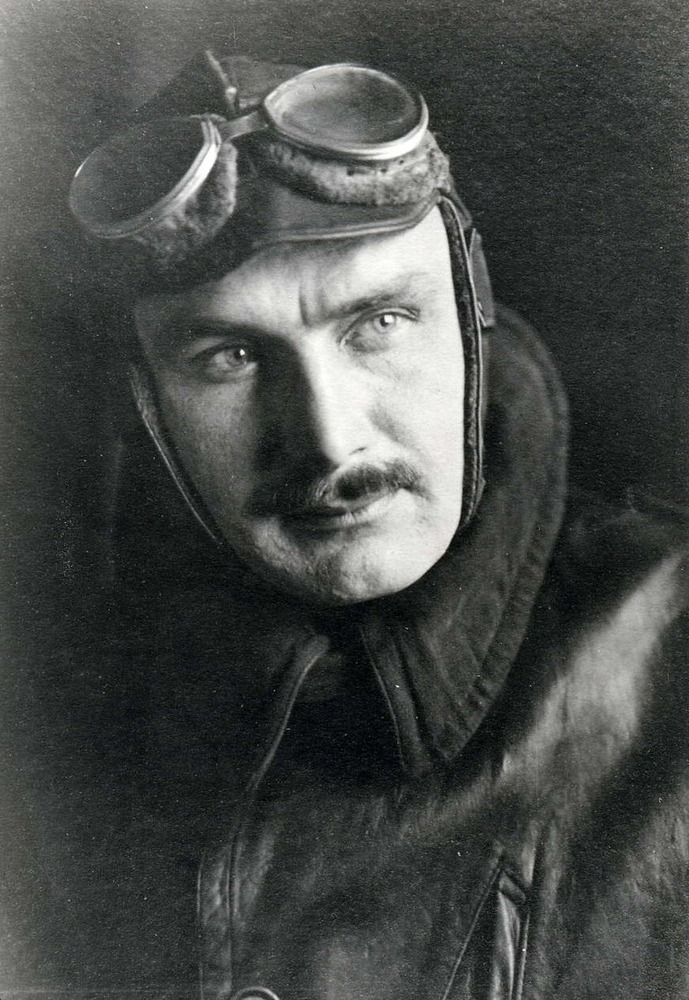

Spiny Norman said:
26 March 1949. Death of Albert William Stevens. American balloonist and aerial photographer who took the first photograph of Earth in a way that the horizon’s curvature was visible (30 December 1930) and the first photograph of the Moon’s shadow on Earth during a solar eclipse.
Curved my arse.
Peak Warming Man said:
Spiny Norman said:
26 March 1949. Death of Albert William Stevens. American balloonist and aerial photographer who took the first photograph of Earth in a way that the horizon’s curvature was visible (30 December 1930) and the first photograph of the Moon’s shadow on Earth during a solar eclipse.
Curved my arse.
My arse is more curved.
roughbarked said:
Peak Warming Man said:
Spiny Norman said:
26 March 1949. Death of Albert William Stevens. American balloonist and aerial photographer who took the first photograph of Earth in a way that the horizon’s curvature was visible (30 December 1930) and the first photograph of the Moon’s shadow on Earth during a solar eclipse.
Curved my arse.
My arse is more curved.
Makes me think of Benjamin Nankervis.
Also know as Bendyourbum N’curveyourarse.
Spiny Norman said:
26 March 1949. Death of Albert William Stevens. American balloonist and aerial photographer who took the first photograph of Earth in a way that the horizon’s curvature was visible (30 December 1930) and the first photograph of the Moon’s shadow on Earth during a solar eclipse.
Full sized image; all the details can be seen:
https://collections.library.yale.edu/iiif/2/15817181/full/full/0/default.jpg
or download from:
https://collections.library.yale.edu/catalog/15814754
Michael V said:
Spiny Norman said:
26 March 1949. Death of Albert William Stevens. American balloonist and aerial photographer who took the first photograph of Earth in a way that the horizon’s curvature was visible (30 December 1930) and the first photograph of the Moon’s shadow on Earth during a solar eclipse.
Full sized image; all the details can be seen:
https://collections.library.yale.edu/iiif/2/15817181/full/full/0/default.jpg
or download from:
https://collections.library.yale.edu/catalog/15814754
Thanks Michael.
Saved me a Binge :)
The Rev Dodgson said:
Michael V said:
Spiny Norman said:
26 March 1949. Death of Albert William Stevens. American balloonist and aerial photographer who took the first photograph of Earth in a way that the horizon’s curvature was visible (30 December 1930) and the first photograph of the Moon’s shadow on Earth during a solar eclipse.
Full sized image; all the details can be seen:
https://collections.library.yale.edu/iiif/2/15817181/full/full/0/default.jpg
or download from:
https://collections.library.yale.edu/catalog/15814754
Thanks Michael.
Saved me a Binge :)
No worries.
:)
Why is All Life Based on Carbon and Not Silicon? Three Startling Reasons.
https://www.youtube.com/watch?v=kAFC4RY1cKQ
Is there just ONE ELECTRON in the universe?! (spoiler: no)
Mr Norman, sir. If I may ask after one of your potential occasional interests.
Do you follow any of those live Youtube aviation live streams from airports?
e.g This one. https://www.youtube.com/watch?v=uf5niL33IgQ
If so, do you have a favourite?
Woodie said:
Mr Norman, sir. If I may ask after one of your potential occasional interests.Do you follow any of those live Youtube aviation live streams from airports?
e.g This one. https://www.youtube.com/watch?v=uf5niL33IgQ
If so, do you have a favourite?
Nah, just the occasional highlights that some people post.
FWIW I was based in Manchester for a while.
Spiny Norman said:
Woodie said:
Mr Norman, sir. If I may ask after one of your potential occasional interests.Do you follow any of those live Youtube aviation live streams from airports?
e.g This one. https://www.youtube.com/watch?v=uf5niL33IgQ
If so, do you have a favourite?
Nah, just the occasional highlights that some people post.
FWIW I was based in Manchester for a while.
Ahhhh… Manchester is one of the better ones. SydSquad do alright, and even Wellington, specially if it’s windy. Bit if amusement for a while and combine it with Flight Tracker.
Spiny Norman said:
Is there just ONE ELECTRON in the universe?! (spoiler: no)
Just watched it, but it didn’t seem to answer the original reason for the question.
“If electrons have no mass, then they don’t experience time, and are therefore everywhere all at once.”
The guy in the vid is talking about time travel, which isn’t in the question.
Kingy said:
Spiny Norman said:Is there just ONE ELECTRON in the universe?! (spoiler: no)
Just watched it, but it didn’t seem to answer the original reason for the question.
“If electrons have no mass, then they don’t experience time, and are therefore everywhere all at once.”
The guy in the vid is talking about time travel, which isn’t in the question.
electrons do have mass.
JudgeMental said:
Kingy said:
Spiny Norman said:Is there just ONE ELECTRON in the universe?! (spoiler: no)
Just watched it, but it didn’t seem to answer the original reason for the question.
“If electrons have no mass, then they don’t experience time, and are therefore everywhere all at once.”
The guy in the vid is talking about time travel, which isn’t in the question.
electrons do have mass.
I’ve heard this conjecture about photons which are definitely without mass.
Witty Rejoinder said:
JudgeMental said:
Kingy said:Just watched it, but it didn’t seem to answer the original reason for the question.
“If electrons have no mass, then they don’t experience time, and are therefore everywhere all at once.”
The guy in the vid is talking about time travel, which isn’t in the question.
electrons do have mass.
I’ve heard this conjecture about photons which are definitely without mass.
me too, I guess with photons travelling at lightspeed time becomes zero. though it doesn’t really as you can’t apply the Lorenz transform to photons.
26 March 1974. Concorde 101 set a speed record of Mach 2.23.

Spiny Norman said:
26 March 1974. Concorde 101 set a speed record of Mach 2.23.
And with a steam-gauge cockpit.
captain_spalding said:
Spiny Norman said:
26 March 1974. Concorde 101 set a speed record of Mach 2.23.
And with a steam-gauge cockpit.
I like them. :)
It was a most remarkable aircraft. Only a few military aircraft could catch it, and only for a short time.
Spiny Norman said:
captain_spalding said:
Spiny Norman said:
26 March 1974. Concorde 101 set a speed record of Mach 2.23.
And with a steam-gauge cockpit.
I like them. :)
It was a most remarkable aircraft. Only a few military aircraft could catch it, and only for a short time.
One of which was the Lightning.
Spiny Norman said:
26 March 1974. Concorde 101 set a speed record of Mach 2.23.
They were such a beautiful plane.
buffy said:
Spiny Norman said:
26 March 1974. Concorde 101 set a speed record of Mach 2.23.
They were such a beautiful plane.
Not so beautiful when you lived under the take-off flight path!
Woodie said:
Spiny Norman said:
Woodie said:
Mr Norman, sir. If I may ask after one of your potential occasional interests.Do you follow any of those live Youtube aviation live streams from airports?
e.g This one. https://www.youtube.com/watch?v=uf5niL33IgQ
If so, do you have a favourite?
Nah, just the occasional highlights that some people post.
FWIW I was based in Manchester for a while.
Ahhhh… Manchester is one of the better ones. SydSquad do alright, and even Wellington, specially if it’s windy. Bit if amusement for a while and combine it with Flight Tracker.
These streams – https://www.youtube.com/@AirlinersLive – are quite good
buffy said:
Spiny Norman said:
26 March 1974. Concorde 101 set a speed record of Mach 2.23.
They were such a beautiful plane.
A great shame no more were ordered after the initial batch, as the next model would have included leading-edge slats on the wings to reduce take-off & landing speeds, and much improved engines that did not require afterburners at all. So most of the noise complaints about them in & out of airports would have been reduced somewhat.
The Rev Dodgson said:
buffy said:
Spiny Norman said:
26 March 1974. Concorde 101 set a speed record of Mach 2.23.
They were such a beautiful plane.
Not so beautiful when you lived under the take-off flight path!
I remember going to Tullamarine to see the Concorde arrive. Living in Box Hill North the planes were always going over us, but not in the actual landing and taking off bit. Planes were just part of the skyscape through my childhood. I don’t remember thinking about noise really. I remember my mother proclaiming that Pugs were excellent plane scarers as none had ever landed in our backyard while she had a Pug there.
AussieDJ said:
Woodie said:
Spiny Norman said:Nah, just the occasional highlights that some people post.
FWIW I was based in Manchester for a while.
Ahhhh… Manchester is one of the better ones. SydSquad do alright, and even Wellington, specially if it’s windy. Bit if amusement for a while and combine it with Flight Tracker.
These streams – https://www.youtube.com/@AirlinersLive – are quite good
Turkish Airline just took off.
Peak Warming Man said:
AussieDJ said:
Woodie said:Ahhhh… Manchester is one of the better ones. SydSquad do alright, and even Wellington, specially if it’s windy. Bit if amusement for a while and combine it with Flight Tracker.
These streams – https://www.youtube.com/@AirlinersLive – are quite good
Turkish Airline just took off.
Virgin Atlantic A351 coming in soon.
Over.
The Rev Dodgson said:
buffy said:
Spiny Norman said:
26 March 1974. Concorde 101 set a speed record of Mach 2.23.
They were such a beautiful plane.
Not so beautiful when you lived under the take-off flight path!
Speaking of living under the flight path, I had a chat to Bulgarian Umbrella this past week. He lives at the end of Perth Airport, and it’s pretty loud there at times.
One of his mechanic customers paid for two tickets and accommodation for BU to go to Philip Island as a mechanic/pit crew on his race car. As it turned out, the car ran perfectly so BU was just a spectator the whole time. Much beer was consumed and good times were had. Lucky bugger.
buffy said:
The Rev Dodgson said:
buffy said:They were such a beautiful plane.
Not so beautiful when you lived under the take-off flight path!
I remember going to Tullamarine to see the Concorde arrive. Living in Box Hill North the planes were always going over us, but not in the actual landing and taking off bit. Planes were just part of the skyscape through my childhood. I don’t remember thinking about noise really. I remember my mother proclaiming that Pugs were excellent plane scarers as none had ever landed in our backyard while she had a Pug there.
At the time they were being developed we lived in Camberley, which is just north of the Farnborough airfield where the initial testing was carried out. We got some great views, but the noise was incredible.
Once they went into service and moved to Heathrow, no problem at all.
buffy said:
The Rev Dodgson said:
buffy said:They were such a beautiful plane.
Not so beautiful when you lived under the take-off flight path!
I remember going to Tullamarine to see the Concorde arrive. Living in Box Hill North the planes were always going over us, but not in the actual landing and taking off bit. Planes were just part of the skyscape through my childhood. I don’t remember thinking about noise really. I remember my mother proclaiming that Pugs were excellent plane scarers as none had ever landed in our backyard while she had a Pug there.
They were all loud back then.
I remember being at Curtin Uni in the early 90s. Some planes coming overhead were so loud the tutors had to stop talking for a few moments while they passed over, especially the 4 engine planes.. More than a decade later I got a job only a few km away, and still near the flight-path, we hardly got any 4 engine planes then, and the small twin engine ones were remarkably quiet, hardly any louder than the busy traffic on the highway nearby.
The Rev Dodgson said:
buffy said:
The Rev Dodgson said:Not so beautiful when you lived under the take-off flight path!
I remember going to Tullamarine to see the Concorde arrive. Living in Box Hill North the planes were always going over us, but not in the actual landing and taking off bit. Planes were just part of the skyscape through my childhood. I don’t remember thinking about noise really. I remember my mother proclaiming that Pugs were excellent plane scarers as none had ever landed in our backyard while she had a Pug there.
At the time they were being developed we lived in Camberley, which is just north of the Farnborough airfield where the initial testing was carried out. We got some great views, but the noise was incredible.
Once they went into service and moved to Heathrow, no problem at all.
Were they as loud as Dr. Karls shirts?
party_pants said:
buffy said:
The Rev Dodgson said:Not so beautiful when you lived under the take-off flight path!
I remember going to Tullamarine to see the Concorde arrive. Living in Box Hill North the planes were always going over us, but not in the actual landing and taking off bit. Planes were just part of the skyscape through my childhood. I don’t remember thinking about noise really. I remember my mother proclaiming that Pugs were excellent plane scarers as none had ever landed in our backyard while she had a Pug there.
They were all loud back then.
I remember being at Curtin Uni in the early 90s. Some planes coming overhead were so loud the tutors had to stop talking for a few moments while they passed over, especially the 4 engine planes.. More than a decade later I got a job only a few km away, and still near the flight-path, we hardly got any 4 engine planes then, and the small twin engine ones were remarkably quiet, hardly any louder than the busy traffic on the highway nearby.
In the eighties we had these coming in low into Essendon Airport: noisiest plane of all.

Peak Warming Man said:
Peak Warming Man said:
AussieDJ said:These streams – https://www.youtube.com/@AirlinersLive – are quite good
Turkish Airline just took off.
Virgin Atlantic A351 coming in soon.
Over.
You need to hang around for the Emirates A380 to take off, Mr Man. It’s the highlight of their day.😎
Witty Rejoinder said:
party_pants said:
buffy said:I remember going to Tullamarine to see the Concorde arrive. Living in Box Hill North the planes were always going over us, but not in the actual landing and taking off bit. Planes were just part of the skyscape through my childhood. I don’t remember thinking about noise really. I remember my mother proclaiming that Pugs were excellent plane scarers as none had ever landed in our backyard while she had a Pug there.
They were all loud back then.
I remember being at Curtin Uni in the early 90s. Some planes coming overhead were so loud the tutors had to stop talking for a few moments while they passed over, especially the 4 engine planes.. More than a decade later I got a job only a few km away, and still near the flight-path, we hardly got any 4 engine planes then, and the small twin engine ones were remarkably quiet, hardly any louder than the busy traffic on the highway nearby.
In the eighties we had these coming in low into Essendon Airport: noisiest plane of all.
Oh, no. The noisiest plane award goes to the Republic XF-84H Thunderscreech.
Peak Warming Man said:
The Rev Dodgson said:
buffy said:I remember going to Tullamarine to see the Concorde arrive. Living in Box Hill North the planes were always going over us, but not in the actual landing and taking off bit. Planes were just part of the skyscape through my childhood. I don’t remember thinking about noise really. I remember my mother proclaiming that Pugs were excellent plane scarers as none had ever landed in our backyard while she had a Pug there.
At the time they were being developed we lived in Camberley, which is just north of the Farnborough airfield where the initial testing was carried out. We got some great views, but the noise was incredible.
Once they went into service and moved to Heathrow, no problem at all.
Were they as loud as Dr. Karls shirts?
Even louder.
(Just visited my old house on Google maps and did the walk to school on street view.
Hardly changed at all, except all the roads are much narrower now.
Witty Rejoinder said:
party_pants said:
buffy said:I remember going to Tullamarine to see the Concorde arrive. Living in Box Hill North the planes were always going over us, but not in the actual landing and taking off bit. Planes were just part of the skyscape through my childhood. I don’t remember thinking about noise really. I remember my mother proclaiming that Pugs were excellent plane scarers as none had ever landed in our backyard while she had a Pug there.
They were all loud back then.
I remember being at Curtin Uni in the early 90s. Some planes coming overhead were so loud the tutors had to stop talking for a few moments while they passed over, especially the 4 engine planes.. More than a decade later I got a job only a few km away, and still near the flight-path, we hardly got any 4 engine planes then, and the small twin engine ones were remarkably quiet, hardly any louder than the busy traffic on the highway nearby.
In the eighties we had these coming in low into Essendon Airport: noisiest plane of all.
what the hell is that? It’s hideous..
party_pants said:
Witty Rejoinder said:
party_pants said:They were all loud back then.
I remember being at Curtin Uni in the early 90s. Some planes coming overhead were so loud the tutors had to stop talking for a few moments while they passed over, especially the 4 engine planes.. More than a decade later I got a job only a few km away, and still near the flight-path, we hardly got any 4 engine planes then, and the small twin engine ones were remarkably quiet, hardly any louder than the busy traffic on the highway nearby.
In the eighties we had these coming in low into Essendon Airport: noisiest plane of all.
what the hell is that? It’s hideous..
https://en.wikipedia.org/wiki/Armstrong_Whitworth_AW.660_Argosy
https://www.youtube.com/watch?v=71is05gstFE
X-59 QueSST: NASA Finally Tests its New Supersonic X-Plane
The Lockheed Martin X-59 QueSST (“Quiet SuperSonic Technology”) is an American experimental supersonic aircraft being developed at Skunk Works for NASA’s Low-Boom Flight Demonstrator project. Preliminary design started in February 2016, with the X-59 to be delivered to NASA in 2021 for flight testing in 2022. It is expected to cruise at Mach 1.42 (1,510 km/h; 937 mph) at an altitude of 55,000 ft (16,800 m), creating a low 75 Perceived Level decibel (PLdB) thump to evaluate supersonic transport acceptability.
party_pants said:
Witty Rejoinder said:
party_pants said:They were all loud back then.
I remember being at Curtin Uni in the early 90s. Some planes coming overhead were so loud the tutors had to stop talking for a few moments while they passed over, especially the 4 engine planes.. More than a decade later I got a job only a few km away, and still near the flight-path, we hardly got any 4 engine planes then, and the small twin engine ones were remarkably quiet, hardly any louder than the busy traffic on the highway nearby.
In the eighties we had these coming in low into Essendon Airport: noisiest plane of all.
what the hell is that? It’s hideous..
SuperGuppys aren’t much better.
JudgeMental said:
https://www.youtube.com/watch?v=71is05gstFEX-59 QueSST: NASA Finally Tests its New Supersonic X-Plane
The Lockheed Martin X-59 QueSST (“Quiet SuperSonic Technology”) is an American experimental supersonic aircraft being developed at Skunk Works for NASA’s Low-Boom Flight Demonstrator project. Preliminary design started in February 2016, with the X-59 to be delivered to NASA in 2021 for flight testing in 2022. It is expected to cruise at Mach 1.42 (1,510 km/h; 937 mph) at an altitude of 55,000 ft (16,800 m), creating a low 75 Perceived Level decibel (PLdB) thump to evaluate supersonic transport acceptability.
Yes. It is only now that a few compsnies are looking at new supersonic designs. To be much slower of course than Concorde (around Mach 1.2 -1.8), hoped to be more acceptable in sonic boom and overall noise.
Scientists accidentally create the world’s lightest paint by mimicking Mother Nature.
Spiny Norman said:
Scientists accidentally create the world’s lightest paint by mimicking Mother Nature.
“Structural colors don’t fade in the sun, meaning repainting is only needed when you want to change colors.”
Well, there’s the fatal flaw in that invention. We won’t be seeing ‘structural colour’ on the shelves at Bunnings any time soon. Or ever.
captain_spalding said:
Spiny Norman said:
Scientists accidentally create the world’s lightest paint by mimicking Mother Nature.
“Structural colors don’t fade in the sun, meaning repainting is only needed when you want to change colors.”
Well, there’s the fatal flaw in that invention. We won’t be seeing ‘structural colour’ on the shelves at Bunnings any time soon. Or ever.
start the disruption shop
captain_spalding said:
Spiny Norman said:
Scientists accidentally create the world’s lightest paint by mimicking Mother Nature.“Structural colors don’t fade in the sun, meaning repainting is only needed when you want to change colors.”
Well, there’s the fatal flaw in that invention. We won’t be seeing ‘structural colour’ on the shelves at Bunnings any time soon. Or ever.
Oh, I don’t know. If the binder fails in the sun (as binders do and are designed to do now) then it’s all good for paint manufacturers.
I see that they consider “ochre” a heavy metal now.
A Facepalm friend of mine is a world-renowned technical drawing expert. He gets invited to draw many top-level racing cars.
Spiny Norman said:
A Facepalm friend of mine is a world-renowned technical drawing expert. He gets invited to draw many top-level racing cars.
Oops .. And now to add the pictures …


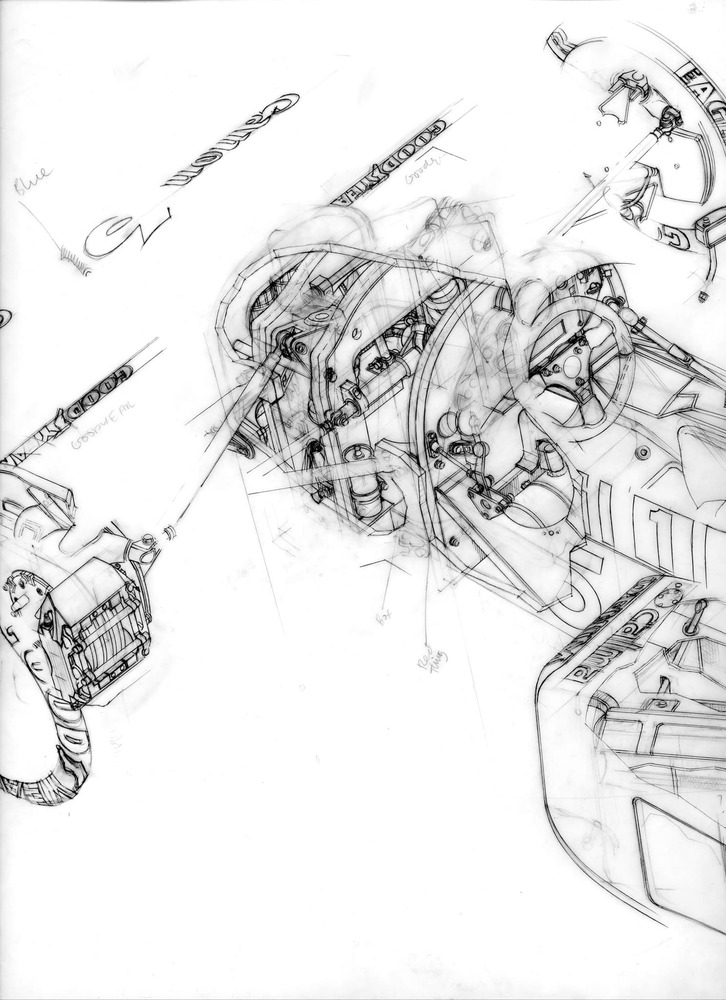
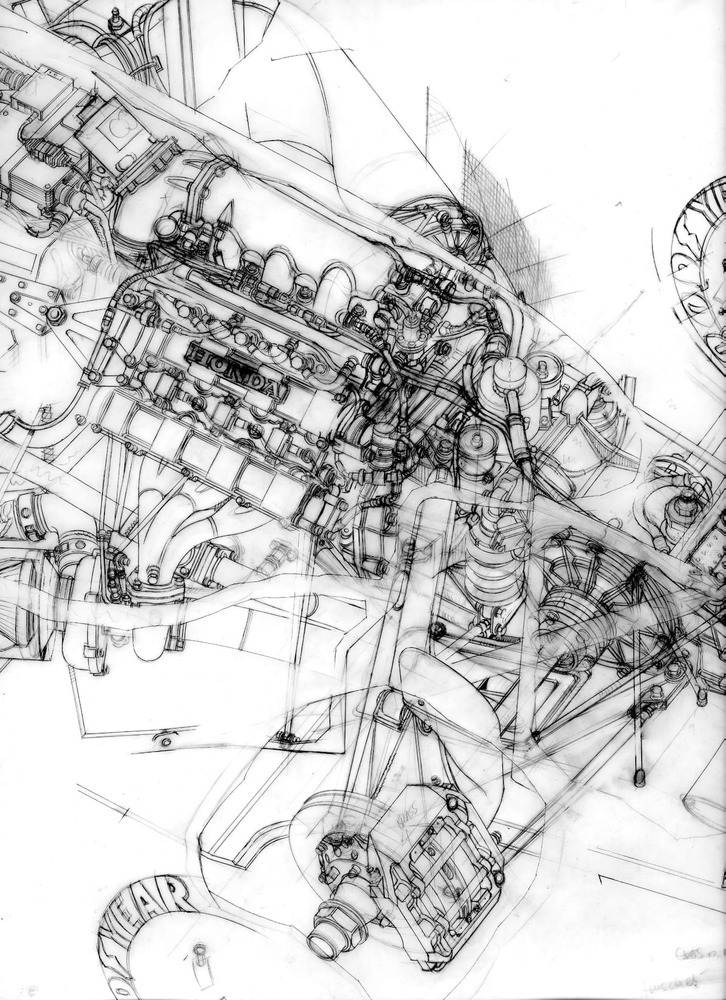
Spiny Norman said:
Spiny Norman said:
A Facepalm friend of mine is a world-renowned technical drawing expert. He gets invited to draw many top-level racing cars.Oops .. And now to add the pictures …
Apart from the invitations, and the kudos, does it reward him sufficiently?
captain_spalding said:
Spiny Norman said:
Spiny Norman said:
A Facepalm friend of mine is a world-renowned technical drawing expert. He gets invited to draw many top-level racing cars.Oops .. And now to add the pictures …
Apart from the invitations, and the kudos, does it reward him sufficiently?
I think so.
Spiny Norman said:
captain_spalding said:
Spiny Norman said:Oops .. And now to add the pictures …
Apart from the invitations, and the kudos, does it reward him sufficiently?
I think so.
That’s good. He does have quite a talent for it.
captain_spalding said:
Spiny Norman said:
captain_spalding said:Apart from the invitations, and the kudos, does it reward him sufficiently?
I think so.
That’s good. He does have quite a talent for it.
Here’s a bit of info on him.
https://www.escapeintolife.com/artist-watch/tony-matthews/
Spiny Norman said:
captain_spalding said:
Spiny Norman said:I think so.
That’s good. He does have quite a talent for it.
Here’s a bit of info on him.
https://www.escapeintolife.com/artist-watch/tony-matthews/
I do like a good cut-away drawing, and gosh, those are the top shelf stuff.
captain_spalding said:
Spiny Norman said:
captain_spalding said:That’s good. He does have quite a talent for it.
Here’s a bit of info on him.
https://www.escapeintolife.com/artist-watch/tony-matthews/
I do like a good cut-away drawing, and gosh, those are the top shelf stuff.
I remember he was invited by Mario Illien of Ilmor engines to draw, in secret, the special one-off engine for Roger Penske’s cars that were going to run in an upcoming Indy 500. Like the entire development of that engine, the drawing was done in complete secrecy and only released after the race was run and won by a Penske car.
Then they changed the rules so that engine wouldn’t be competitive anymore.
More on this – https://forums.autosport.com/topic/192539-excerpt-from-beast-the-top-secret-ilmor-penske-engine-that-shook-the-indy-500/
The Next Generation of Ionic Plasma Thrusters (BSI MARK 2)
1915, transporting a locomotive across the Rio Grande Canyon in New Mexico
“This is during the construction of the Elephant Butte Dam. The main function of the cables was to haul huge buckets of concrete into place to be emptied into the dam forms. They may have just been showing off with this locomotive – or it could have been the easiest way to put it in place on the other side using the existing mechanism.”
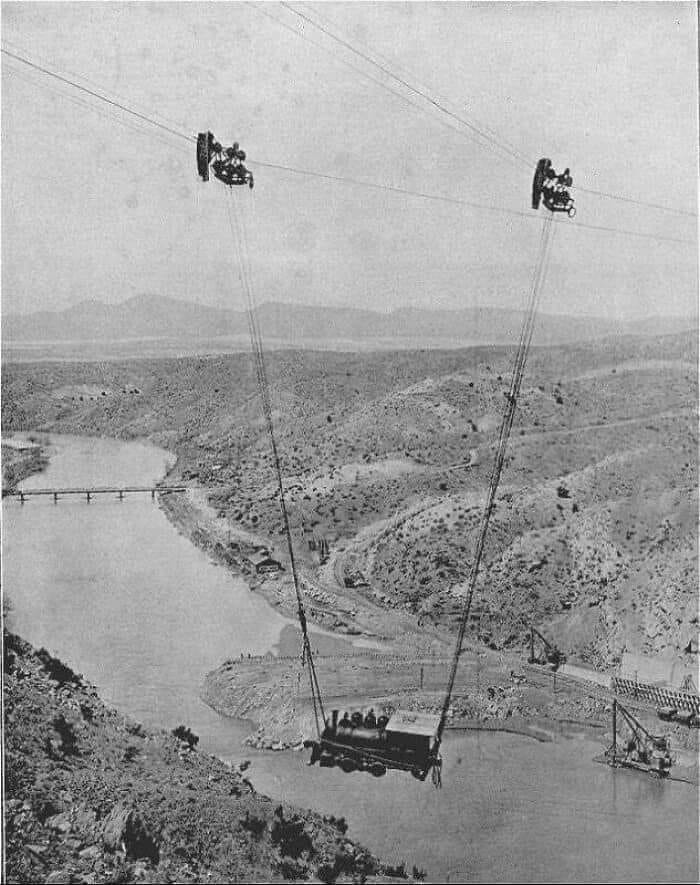
Spiny Norman said:
1915, transporting a locomotive across the Rio Grande Canyon in New Mexico“This is during the construction of the Elephant Butte Dam. The main function of the cables was to haul huge buckets of concrete into place to be emptied into the dam forms. They may have just been showing off with this locomotive – or it could have been the easiest way to put it in place on the other side using the existing mechanism.”
‘The Elephant Butte Dam’.
Perhaps also known as ‘the Pachyderm’s Posterior Dam’?
captain_spalding said:
Spiny Norman said:
1915, transporting a locomotive across the Rio Grande Canyon in New Mexico“This is during the construction of the Elephant Butte Dam. The main function of the cables was to haul huge buckets of concrete into place to be emptied into the dam forms. They may have just been showing off with this locomotive – or it could have been the easiest way to put it in place on the other side using the existing mechanism.”
‘The Elephant Butte Dam’.
Perhaps also known as ‘the Pachyderm’s Posterior Dam’?
Sounds about it.
CERN checks Particle Physics Anomaly, A New Explanation for the Interstellar Object ‘Oumuamua & More.
Spitfire’s suitably cleaned external fuel tank filled with beer from barrels before being flown to Allied forces in Normandy – June/July 1944.


Spiny Norman said:
Spitfire’s suitably cleaned external fuel tank filled with beer from barrels before being flown to Allied forces in Normandy – June/July 1944.
Heh. But cleaning out the petrol taint must have been a labour of Hercules.
Spiny Norman said:
Spitfire’s suitably cleaned external fuel tank filled with beer from barrels before being flown to Allied forces in Normandy – June/July 1944.
Looks like the spit could do with a wash as well.
From ‘Your Daily Dose Of Internet”. I found the part on Arabic numbers interesting, I never knew that!
“It’s not possible to take such a photograph anymore, as the buildings outside block the sun rays.” Grand Central, New York City, Photo taken in 1929.

Spiny Norman said:
“It’s not possible to take such a photograph anymore, as the buildings outside block the sun rays.” Grand Central, New York City, Photo taken in 1929.
Wow, awesome photo.
Spiny Norman said:
“It’s not possible to take such a photograph anymore, as the buildings outside block the sun rays.” Grand Central, New York City, Photo taken in 1929.
That’s the 20th century for you. There were some spectacular spaces that didn’t last long.
Can water solve a maze?
Spiny Norman said:
Can water solve a maze?
(upbeat music) – So many people sent me this simulation of water pouring through a maze by Bergman Joe.
And it makes sense that you sent it to me ‘cause this is the kind of thing that I would make for real.
So of course when I saw it, I had to make it for real.
I actually made four mazes in total, a simpler one and a more complex one, and I also made large versions of those two mazes.
Let’s look at the small mazes first, because when you see what happens with those, it’ll be obvious why I made the larger versions.
And by the way, this simulated version does eventually fill up completely with water and it’s very satisfying.
But if you want to see that ending, you’ll have to go to Bergman Joe’s profile, link in the description.
Okay, so here’s the simpler maze first.
And what we find brilliantly is that the water simply solves the maze without taking any wrong turns at all.
And actually that makes sense because every time the water comes up against an incorrect path, well, the air inside the path has nowhere to go.
So while the water is trying to push itself into the incorrect path, the air pressure inside that closed space is pushing back.
If I had to characterize this as a maze solving algorithm, the algorithm would be something like, try all paths simultaneously using air pressure, which is cool.
When the tank runs out it’s fun to watch the air bubbles solve the maze as well.
And actually it’s quite different to Bergman Joe’s simulation where the water eventually tries every path, even after it’s found the solution.
What about the more complex maze? Well, first one, I chose the maze where the solve path takes the player all the way back up to the very top again.
Well, already something seems to be amiss, like there shouldn’t be any water here, or at least not yet.
And there shouldn’t be any water here either, or at least there shouldn’t be if this maze is following the same rules as the previous maze.
So what’s going on here? Well, the explanation is quite simple.
I just didn’t build a watertight maze.
The reason I didn’t build a watertight maze is because it’s really difficult.
Like I’ve got three layers of laser cut acrylic here, a black layer, that’s the maze itself, and two clear layers sandwiching the black layer.
And the best way to bond these layers together is with solvent that literally dissolves the acrylic on both sides so that they weld together when the solvent evaporates.
That’s easy enough when you’re bonding the black layer to the first clear layer.
The solvent simply seeps between the two bits of acrylic.
But then when you put the second clear layer on top, well, how’d you get the solvent in there? A fun side note.
One thing you realize very quickly when you laser cut a maze is that mazes are always made of two separate pieces.
I mean, it’s obvious when you think about it, but it’s quite cool to see.
Actually a maze becomes very easy to solve if you color the two parts separately.
But anyway, why did I build the larger mazes? Well, look, I stated that the reason water doesn’t go in here is because there is air in the way.
But why doesn’t the air just bubble out so the water can get in? Well, it’s because of surface tension.
The air is unable to bubble past to the surface tension of the water.
So if we make the maze bigger until surface tension isn’t significant anymore, we should expect the maze to be solved in a different way.
We should expect the water to use a different solving algorithm.
Maybe something closer to what Bergman Joe showed in his simulation.
By the way, for the larger maze, I had the genius idea of laser cutting thin channels into the outer clear acrylic so I could squirt the solvent in once the clear sheet was in place.
But anyway, here’s the simple maze in action.
And you can see without the power of surface tension, the water finds the lowest possible place it can go to.
Sometimes momentum plays a part so it will fill certain paths before others as a result.
But broadly without surface tension, the water tries more paths before finding the correct one.
If I had to describe it in terms of a solving algorithm, it would be something like, always take the path that takes you lower until you can’t anymore, and then take the next lowest path.
We’ll get to the more complex maze in a second.
But first, let’s compare this to Bergman Joe’s simulation.
More of the maze becomes full of water, but it doesn’t fill up like it does in Bergman Joe’s.
Like water can never get into this region, or this region, or any of these regions.
And you can see why.
Again, it’s air pressure.
Except it’s not surface tension that’s holding the water back, it’s just the geometry of the thing.
Like air would have to go down before it could go up in this scenario.
So it simply doesn’t because air is less dense than water.
So my hunch is that what’s going on in Bergman Joe’s simulation is that there is no air in his simulation.
It’d be very difficult for me to recreate that with my setup.
Like even if I could do this in a vacuum, well, in a vacuum the water would just boil.
Maybe I could try it with a liquid that doesn’t boil in a vacuum.
That sounds hard.
Here’s the more complex maze.
There is a slight leak here, but it’s water leaking from the tank to the outside world.
I don’t think there’s any significant leaks happening within the maze itself, which is a huge relief.
And just like with the simpler maze, the water goes to all the lowest parts it can do before it’s locked out by the geometry.
They say that if you are ever stuck in a maze, just put one hand on the wall and keep walking forwards and you’ll eventually get out the maze.
Though, I suppose if there are two possible paths through the maze, then the maze will necessarily be made of three parts instead of the two parts of acrylic that I showed you before.
And if you happen to put your hand on the middle part then you’ll just be walking around forever.
But anyway, one thing I really wasn’t expecting with this water maze was that the whole thing grinds to a halt when there’s still water left in the tank.
And I think that’s because there are lots of little bits of surface tension all around the maze that need to be overcome.
But together, those little bits of surface tension add up to enough resistance so that the pressure of water from the tank just isn’t enough to force everything through.
Like there’s a little bit of surface tension here that’s preventing the water coming over this lip.
Another bit of surface tension here, here, here, here, here.
They’re all resisting the flow of water slightly, but together they present a significant amount of resistance.
It’s a bit like those coin games.
You know, you roll your coin in, it gets pushed off the first shelf, but then nothing happens on the second shelf.
Or maybe something does fall off the second shelf, but there’s no way anything’s happening on the third shelf.
The final thing I want to show you is what happens if I change the color of the water once the maze is solved.
It’s fun, isn’t it? You can see that the red dye solves the maze and slowly starts to creep into those stagnant areas.
So there you go, water can solve a maze.
It doesn’t look anything like Bergman Joe’s simulation, not that Bergman Joe’s simulation is wrong, it’s just simulating something that I couldn’t recreate here in my studio.
When I was given careers advice at school, I can tell you for sure that making science videos on YouTube was not one of the suggestions that they made, mainly because YouTube didn’t exist back then.
But also I feel like they probably weren’t asking the right questions.
So how do you find good careers advice? Well, for people that are interested in finding a fulfilling career that makes a difference in the world, then I strongly recommend checking out the sponsor of this video 80,000 Hours.
And I’ll say at the top that what they offer is absolutely free.
They’re a nonprofit organization that focuses on helping people find careers that solve the world’s biggest problems.
And there are two things that I really like about it.
The first is that it’s evidence-based.
Their insights come from 10 years of research alongside academics at Oxford University.
The second thing I like is just the sheer breadth of different tools available on their website.
You could start by looking at their problem profiles, for example.
Those are the things in the world that need fixing.
Or you could start with their decision-making tools that help you to find a career based on what you are like.
Or you can dive straight into looking at specific careers.
There’s even a podcast if you enjoy learning that way.
And then there’s the job board, which they have curated based on what their research says are high-impact careers.
The best way to get started is to go to 80,000 dollars.
org/steve to be sent a free copy of their in-depth career guide in which you can learn about what makes a high-impact career, get new ideas for impactful paths, make a new plan based on what you’ve learned, and put it into action.
The link is also in the description so check out 80,000 Hours today.
I hope you enjoyed this video.
If you did, don’t forget to hit subscribe, And the algorithm thinks you’ll enjoy this video next.
(upbeat music)
“Genius Liquid Battery Will End Lithium Cells Forever”
Maybe …. but they certainly show potential for various devices/machines.
Spiny Norman said:
“Genius Liquid Battery Will End Lithium Cells Forever”
Maybe …. but they certainly show potential for various devices/machines.
Imagine you were running low on battery in an electric car, but instead of having to plug in to recharge and wait for the battery to refill, you could instead fill up at a pump in a matter of minutes with an electrically charged fluid, much like you would refill fuel for a combustion engine car.
In this video, we’ll see how this is possible and see what it could mean for electric mobility by replacing the need of lithium ion battery packs.
To understand this breakthrough liquid battery, it is first useful to understand the two technologies that it is based on.
The first of these is the standard lithium ion battery, commonly found in consumer electronics and electric vehicles.
And the second is the redox flow battery, which stores the energy in the liquid electrolytes and is being used more and more in grid scale energy storage.
Lithium ion batteries consist of a cathode, an anode and a separator, which are all placed in an electrolyte fluid.
When charging, electrons move from the cathode to the anode through an electrical circuit, and lithium ions move from the cathode into the anode material, storing energy.
When discharging, the process is reversed, releasing stored energy to power devices or vehicles.
Something important to note here is the reason lithium ion batteries can store so much energy is because of the specially selected cathode and anode materials.
On the other hand, we have redox flow batteries such as the Vanadium redox flow battery, which consists of two tanks containing liquid electrolyte solutions.
The electrolyte fluids also serve as the anode and cathode because they have vanadium dissolved within them.
This idea of a flow battery is the foundation of the new liquid battery breakthrough.
However, it has one problem that ideas from the lithium ion batteries from before can help solve.
But as we delve further into the world of electric vehicles, it’s important to remember that our online privacy and security needs just as much attention.
Which is why I use Private Internet Access, the world’s most transparent VPN provider that will elevate your online journey on your phone, computer, tablet or console.
The VPN works by hiding your IP address through an encrypted tunnel, helping to keep your digital life secure.
Just like how electric vehicles are helping us to unlock a more sustainable world, private Internet access opens up a universe of entertainment options.
Compatible with all major streaming services.
This VPN allows you to access more content than ever, no matter where you are.
You can also protect an unlimited number of devices at the same time with just one subscription.
And if you ever need help, their 24/7 customer support is always available.
Their no logs policy has been verified in court, ensuring that your data is never recorded or stored.
The best part is, if you use my link below, you can get an 83% discount when you sign up.
That’s just $2.03 a month, and you can also get four months completely for free.
So, sign up now and thanks to private internet access for supporting this video.
Now back to flow batteries like the Vanadium redox flow battery we saw earlier.
The big problem with them that means they can’t be used in electric vehicles is their low energy density.
For comparison, a Vanadium flow battery stores about one 10th of the energy of a lithium ion battery of a similar size and weight.
Thankfully, the breakthrough from a company called Inflow Energy, which is a spin out from the Illinois Institute of Technology, can change that.
Remember I said the reason conventional lithium ion batteries can store so much energy is because of the specially selected cathode and anode materials?
Well, the reason Vanadium redox flow batteries are poor at storing energy is because it isn’t possible to dissolve enough vanadium into the electrolyte fluid, which is important as vanadium is the active material that stores the energy.
This is why Influit Energy is instead suspending highly energy dense materials as nanoparticles in the electrolyte fluid with their scientific papers stating this can increase the energy density by 30 times.
This means their nanofluid flow batteries are even more energy dense than current lithium ion batteries and can benefit from extremely fast recharging or should I say refilling.
So let’s look at this breakthrough energy system in some more detail.
The idea of suspending electrode particles inside the electrolytes of a redox flow battery has been explored before, but a major issue has been that it makes the electrolyte too thick.
Influit energy.
Say they have solved this by using nanoparticle which have modified surfaces to prevent the particles collecting together or sinking to the bottom.
Because the active materials don’t have to dissolve much more energy dense materials like those used in current lithium ion batteries can be used.
If we look at the anolyte and catholyte fluids that store the energy, we can see they are roughly the viscosity of engine oil.
Another benefit of this is that the electrolyte fluid is also non-flammable, potentially making it safer in the event of a spillage.
Though, I would be interested to see what happens if the analyte and catholyte were to be mixed.
As one of their publications with NASA states, it would result in thermal reactions.
In terms of operation, the nanoparticle flow battery is similar to the Vanadium flow battery we saw earlier, except the electrons and ions are exchanged between the highly energy dense particles suspended within the electrolytes.
Once the electrons have flowed through the required system, the discharged electrolyte is stored in the discharge tank.
Say you wanted to recharge or refill your nanoparticle battery.
You are left with two options.
Firstly, you could just plug it into an electricity source and recharge it like you would a conventional electric vehicle.
Or you could pump out the discharged electrolyte fluids and put in charged ones using the four nozzle pump designed by Influit Energy.
This would also then enable refilling stations to slowly recharge the electrolyte fluid you just emptied out using intermittent renewable energy sources like wind and solar.
Now let’s see what they’ve achieved towards this big vision.
Influit Energy has been working with NASA and DARPA, among others, and the key prototype milestones appear to be their Gen One and Gen Two battery systems.
Judging by their published work and messages I’ve had with the CEO, it seems like the Gen One system requirements have been achieved, which see a 23% increase in volumetric energy density over conventional lithium ion batteries.
I have also been informed that they developed a drop in battery system for an electric utility vehicle that operated back in June of 2022.
Though publicly available, details for this are yet to be released.
A very small scale demonstrator vehicle has been shown driving around their lab, though, so I’m excited to see some footage of this in full scale vehicles.
The Gen Two nano-electrofuel battery prototype is set to be completed at the end of 2023 and promises to deliver energy densities four to five times higher than conventional lithium ion battery systems.
The Gen Two battery system also promises to reduce the cost of energy storage to below $90 per kilowatt hour, compared to $140 per kilowatt hour for conventional lithium ion battery systems and the Gen One system.
Apparently, this will be achieved by utilizing an air cathode, which is a concept Tesla has been looking into for a number of years now.
One key challenge for the team at Influit Energy is achieving high efficiencies.
This is because there are some additional losses from using the pumps to move the electrolyte fluids.
Therefore, the best way to improve this is to use highly efficient pumps and to keep the viscosity of the fluid relatively low while still keeping high nanoparticle densities.
Clearly, the future applications for this system could be huge because of the high energy densities and rapid refilling times.
It would be appealing to passenger car vehicles, long haul trucking, and at large utility vehicles.
But excitingly, it may also increase the feasibility of longer distance electrical powered flight.
As you’re still watching, please subscribe to the channel as I think you’ll like some of the other videos I make, like this one on toroidal turbines, which are being used in different applications to improve energy efficiency.
Spiny Norman said:
“Genius Liquid Battery Will End Lithium Cells Forever”Maybe …. but they certainly show potential for various devices/machines.
I’ve been avoiding watching that one, been on my suggestions list for a few days. I generally find anything with the headline that include GENIUS, INSANE, AMAZING etc are generally very unsatisfying to watch and generally light on detail.
Spiny Norman said:
“Genius Liquid Battery Will End Lithium Cells Forever”Maybe …. but they certainly show potential for various devices/machines.
What is the “Solid State” battery near the top right?

Kingy said:
Spiny Norman said:
“Genius Liquid Battery Will End Lithium Cells Forever”Maybe …. but they certainly show potential for various devices/machines.
What is the “Solid State” battery near the top right?
https://www.drive.com.au/caradvice/what-is-a-solid-state-battery/
Can cows fly?
I mean, haven’t all wanted to know that?
The Swedish Bomb – The Bomb in Stockholm’s Basement (secretly the 4th largest nuclear armed nation)
Spiny Norman said:
The Swedish Bomb – The Bomb in Stockholm’s Basement (secretly the 4th largest nuclear armed nation)
Was it a “special delivery beumb?”

The Bantar Gebang landfill outside of Jakarta stretches across 200 football fields.
Far-Kurnel !!
Messed Up Gameshow Makes DYING Contestants Compete for Organ Transplant
https://www.youtube.com/watch?v=h-yXsHlytok
A Solid 20 Minutes of Useless Science Facts.
Spiny Norman said:
A Solid 20 Minutes of Useless Science Facts.
it is finally time for 20 minutes of useless science facts hey Tom how’s it going Austin I’m okay you you’re doing another useless facts video aren’t you that is exactly what I’m doing yeah I’m sorry but hey now you’re here and seeing as you are like the inspiration for this entire useless facts thing how about you do the first fact the periodic table of elements contains 104 lower case letters there are more possible chess game variations than there are atoms in the observable universe 10 to the power of 120 instead of 10 to the power of 80 to be exact the majority of the bones in your body are in your hands and feet unless you are currently pregnant in which case there is a chance that the majority of the bones in your body are in fact in your uterus the internet weighs about the same as tennis ball it’s the collective weight of the electrons that are involved in the working of the entire internet today if you were to drop a peanut m m from two inches that would release more energy than the energy contained in all of the photons that the James Webb Space Telescope is going to collect during its entire 10-year lifespan and it’s already giving us these insane images in just the first few months photons that are produced in the core of the Sun take hundreds of thousands of years to reach the surface of the Sun and then Escape out into space and then it just takes them eight minutes flying through the vacuum of space to arrive here to Earth kind of crazy country with the most tornadoes per square mile is not the United States it’s actually the United Kingdom we can detect some fake oil paintings because of nukes Africa’s some Isotopes found in oil now did not exist in nature before nuclear bomb explosions so paintings containing them must have been painted after the age of nukes began grasshoppers have ears on their stomachs humans produce enough saliva throughout their lives to fill two swimming pools everything around us is designed from the kitchen sink to the walls of your house to your phone or even the chair you’re sitting on they’re designed to function and serve a purpose but they’re also designed to not break we start by knowing how much strength something needs to function and then design it to be that strong for example let’s take a chair that’s designed to hold 100 pounds well what happens when someone who’s a lot heavier than that sits on it it breaks the chair breaks that’s what happens but you see chair designers are smart and they know that fat people love chairs so they specifically engineer them to be stronger than the maximum amount of weight their chair should ever be expected to carry this is what’s called the factor of safety if a beam is designed to carry two times the force it’s ever expected to hold then it has a safety factor of two it’s twice as strong as it needs to be for safety buildings are designed to be overly strong in case they’re hit by an earthquake or a hurricane or something like that with a factor of safety around four or five elevators on the other hand usually have a factor of safety of around 10 meaning if it’s designed to carry 10 people it’ll actually lift around a hundred it’s usually better to be safe than sorry when people’s lives are on the line so imagine an airplane what do you think the factor of safety is for something that’s designed to carry people through the sky 1.2 that means an airplane is designed to only be strong enough to handle 120 percent the maximum load it’s expected to ever take that’s right because the downside to more strength is more weight and if an airplane had the same factor safety as an elevator it’d be too heavy to ever get off the ground don’t worry though airplanes undergo years of design and testing and more testing to make sure that even though they get the weight low enough it’s still strong enough to you know not break in the middle of the flight just think about that the next time you’re on an airplane look out that window and just look at those wings and realize that all it takes is a bit of a record-breaking gust of wind and R.I.P a bit of an oversimplification you really shouldn’t worry about being on an airplane I just thought it was kind of fascinating that something as dangerous as an airplane is just barely fairly strong enough to not break in the middle of the flight more you know in the Philippines there’s an island within a lake within an island within a lake within an island type manistan has a crater that’s been on fire since 1971. it’s a collapsed natural gas field Mars is the only planet in existence to be entirely inhabited by robots as far as we know just six pieces of standard eight studded Lego bricks can be combined in nearly a billion ways or 915 million 103 765 ways to be exact in the Latin quarter of central Paris there’s a radioactive doorknob the connected to a door that leads to the lab of the late French scientist and Nobel Prize winner Marie Curie her work with radium and polonium introduced so much radioactive material into her belongings and her body that 90 years later the material has not fully decayed and for the protection of others they’ve lined her coffin with nearly an inch of lead there are fossilized ripples from the tsunami caused by the asteroid that killed the dinosaurs over 100 of our genes are borrowed from Plants fungi and other organisms Marina guanas sneeze a lot they do it to get rid of salt from the glands near their noses a cat called Chester co-authored a physics paper with the pen name FDC Willard in 1975. the North Pole is a South Pole it’s true magnets have a North Pole and a South Pole as you know and the Earth is a magnet so the North Pole of the Earth’s magnet must be at the North Pole but it’s not the South Pole of the Earth’s magnet is at the North Pole and it’s not a mistake Magnetic North Poles get their name from the fact that they Point towards the north but North Poles are attracted to South Poles so there must be a South Pole at the North Pole peanuts aren’t nuts they’re part of the Lagoon family which includes things like beans and peas so pea nut right now there are around eight thousand tons of space junk around Earth did you know that when you hum you’re actually exhaling through your nose this means that if you pinch your nose shut you cannot hum try it isn’t that wild Jupiter is more than twice the size of all other planets in our solar system combined you probably know that sleeping through the winter is called hibernation but there’s also an equivalent for sleeping through the summer called estivation and it’s done by things like snails tortoises salamanders and crocodiles as well as the maligasy fat tail dwarf lemur and the East African hedgehog and I don’t think I’m ever going to be able to look at a maligasy fat dwarf-tailed lemur the same ever again did you know that in 1950 they used live bears like live bears as test dummies for Mach 2 ejection seats I don’t know why you’d pick bears like surely they’re gonna be angry when you take them out I think it’s because of the weight like their similar weight to humans so that’s important but yeah 1950s drugged the sh out of some bears and heated them out of a plane that Mach 2 something humans did sun bears have tongues that are up to 25 centimeters long that they use to eat insects like termites ants beetle larvae and Bee larvae kangaroos can’t move their hind legs independently of each other unless they’re swimming they’re also the only known animals to use their tail like a fifth leg it’s called pentapedal Locomotion and the tail provides as much propulsive force of front and hind legs combined on average I’m more dense than a supermassive black hole this seems weird because black holes are the most dense objects in our universe but they can also get very very big and so for the biggest ones if you average out their masses over their volumes given by the radius of their Event Horizon the average density is about the same as water the Western lowland gorilla’s scientific name is gorilla gorilla gorilla is an example of a triple taught in it just like bison bison bison links links links and giraffe giraffe giraffe the cables that carry your internet across the ocean that like lie across the ocean floor they’re only about the size of your finger let me show you so this is what’s just in the shallows this is what’s across the ocean floor thousands and thousands of miles of this and this is what actually carries the information wild despite their name killer whales are technically Dolphins but then dolphins are technically whales so science is really confusing sometimes crocodiles and alligators are more closely related to birds than they are to lizards another good reminder that we can’t trust our own eyes owls don’t have eyeballs that can move around in their sockets like we do that’s why they evolved to have necks that can spin around 270 degrees almost silently in 2018 researchers at Oxford University were working on something called the malaria Atlas project they developed a methodology to try and figure out how long it takes to cross any two points on the planet based on things like Transportation type terrain geography that kind of thing and they were doing it to better understand areas of geographic isolation essentially how long it takes to get certain places so when they apply this methodology to the United States they figured out the literal middle of nowhere and that is Glasgow Montana which is more than four and a half hours away from any Metro area with more than 75 000 people and how did I come to learn this well my car broke down in Glasgow Montana and this is all I got about 200 million years from now Asia and America will collide to form a supercontinent around the North Pole oh and there’s already a name for it amazia the caterpillar of the rubber lugan’s moth wears its old heads that have been molted like hats and its nickname is the Mad Hatter pillar the smallest grooves detectable by a human fingerprint are 50 nanometers in depth the moon sometimes orbits through the Earth’s atmosphere now where the atmosphere stops and space begins is a question that has more than one answer but one answer is the top of the exosphere which is the height above the Earth’s surface at which Earth’s gravity exerts less of a force on hydrogen molecules than the solar wind so what that means is behind the Earth in the shadow from the Sun the top of the exosphere extends really far as far as 600 000 kilometers away which forms this wispy tail to the atmosphere called the geo-corona and that’s far enough that sometimes the moon orbits straight through it through the Earth’s atmosphere the Great Wall of China cannot be seen by the naked eye from space but the 64 Thousand Acre greenhouses of Almeria in Spain can be ninety percent of modern apples can be traced back to just two trees male giraffes taste the Pea of females to determine if they’re ready to mate pain we don’t fully understand it the placebo effect paracetamol these are things we use every day but remain far from fully explained but my favorite has got to be general anesthetic we don’t know how it works there are theories one of the leading one revolves around the fact that general anesthetic agents have been observed to exhibit Quantum interactions with entangled photons meaning that doctors were manipulating Quantum forces almost 200 years ago when general anesthetic was first discovered suck on that physicists deep sea dragon fish eat bioluminescent fish so they have a black coating on their stomach to stop other preys seeing the flickering light of their prey being digested you’ve probably heard that there are more stars in the universe than there are grains of sand on the earth which is crazy but what I find more amazing is that there are more atoms in a single grain of sand than there are grains of sand on earth squid brains are shaped like donuts and their digestive tract goes through it so if they eat something that’s too large they literally get brain damage and your stomach enzymes digest you when you die the moon orbits the earth and the Earth orbits the Sun but the sun actually orbits the center of the Milky Way galaxy every 230 million years so that means that when the dinosaurs were around they were on the other side of the galaxy compared to where we are now messages from our brains can travel down our nerves at up to 268 miles per hour humans are bioluminescent and actually glow in the dark but the light that we emit is one thousand times weaker than our eyes are able to pick up there’s a bonsai tree in Italy that’s over 1 000 years old your eardrums move with your eyes so if you look left your eardrums angle to the left so most people know that dogs get rid of excess Heat by panting but they also Act actually sweat a little bit through their paws and when that moisture interacts with the microbial communities that live on their paws and in the crevices in between their Cod pads those microbes are going to consume that moisture and the products they produce as a result of that is what makes dog paws smell bless you like corn chips it’s a really similar process to how humans produce Theo bless you some turtles can breathe through their butts the names Arctic and Antarctica effectively means bears and no bears but even though there are polar bears in the Arctic and none in Antarctica it was just a total coincidence and the names come from Celestial Constellations by mass Pluto consists of 30 to 50 ice in 50 to 70 rock loads of oranges around the world aren’t actually orange they’re green because they’re filled with chlorophyll the same stuff that leaves are filled with when you eat pineapples they eat you right back they contain an enzyme which breaks down meat proteins which is why your tongue sometimes stings a little after eating pineapple female mayflies are born mate lay eggs and die within just five minutes the largest recorded temperature change in 24 hours happened in Montana when it went from minus 47 degrees Celsius to 10 degrees Celsius Barnacles have the greatest penis to weight ratio in all the animal kingdom they’re a huge uh eggplant just pops out of their shells and seeks out females the spell of a mouse is longer than the sperm of an elephant but fruit flies have the longest sperm known to science at six centimeters which is 20 times the size of their body bees are far from home sometimes use pumpkin flowers that close up at night as sleeping bags beer bubbles create a gravity-defined loop where bubbles head up to the center where frictional drag from the glass is less and down on the outside as the top gets crowded there is around 20 million tons of gold dispersed within the oceans that is enough for each person on Earth to have over four kilograms of it however it’s so deluded that if you tried to get all of it you would probably spend significantly more trying to get it than you would actually get from it Texas is three times bigger than the entirety of the UK this isn’t a Cappy also known as the zebra giraffe when a star in the Orion constellation called Beetlejuice explodes sometime in the next 100 000 years it will be as bright as the half moon for over three months and it will be visible during the daytime for more than a year about 14 of people on Earth don’t have a muscle called the palmaris longus if you want to check for yourself just bring your pinky inner thumb together and flick your wrist forward and its tendon will pop up right there you can’t taste food without saliva the average 20 year old has around 10 000 miles of nerve fibers in their brain the average human though has around 10 times more nerve Connections in their brain than there are stars in our galaxy there is an extremely rare type of cloud called a noctilucent cloud you can only see them in the summer months during astronomical Twilight now normal clouds top out at about 12 and a half kilometers or 41 000 feet noctilson clouds however find themselves in the mesosphere and they are at altitudes of around 80 kilometers or 260 000 feet a flea can accelerate 20 times faster than the space shuttle when they jump they reach 8 centimeters in a millisecond so they experience around 100 G’s in the process fighter pilots pull up to around 9 G’s in extreme Maneuvers just to put that into perspective one square sending me a column of atmosphere from the Earth’s surface to the exosphere would weigh one kilogram a human cell contains two meters of DNA and what’s most amazing about that is because your cells are continuously dividing over your whole life time you’ll produce more than two light years of the stuff that’s enough DNA to stretch over halfway to the nearest star there’s only one tree which can live in the ocean the main Grove tree normally the salty water of the ocean would kill a tree to get around this mangroves have developed salt glands on their leaves and bark so if you were to pick the leaf off of a mangrove tree you might notice that it’s covered in small crystals the praying mantis is the only insect that can turn its head from side to side when we talk about social media algorithms we often talk about them like they’re one algorithm but it turns out that when we’re talking about the YouTube algorithm or the Twitter algorithm or the Instagram algorithm we’re actually talking about several different machine learning models that all work in sync to do different things your stomach is amazing not only can this gastric acid break down your food but it can also dissolve a razor blade the human eye can differentiate around 10 million different colors the earliest date for invention for the bow and arrow that we possibly have is 71 000 years ago in South Africa this is based on small micro lists that were found left in a quiver like formation in a cave the sky is blue but it’s blue for a different reason than you might think it’s blue for the same reason that a guitar string will resonate and start to sing with you if you sing next to it so when light comes from the Sun and it’s the atmosphere the nitrogen molecules they’re just the right size that they resonate with that light and re-emit light the average belly button contains 67 species of bacteria the red planet Mars isn’t even red well it kind of is but only on the surface the red hematite dust which is one of the reasons Mars looks red and it’s very thickest up in the thesis region is maybe around 2 meters and then its thinnest elsewhere can be just a few millimeters thick so underneath that dust the Martian rocks of which this is genuinely one are actually gray in the Atacama Desert in Chile there’s a 3 000 year old densely packed shrub that looks like moss covering rocks but it’s actually a cluster of branches and leaves that is so hard that you can stand on it Pando is a forest of 47 000 Aspen trees all joined together by one root system making it genetically one individual the largest single living thing on Earth which is cool in itself but since Pando occupies an area of about 44 hectares the same area as Vatican City that means that the largest single living organism in the world is the same size as the smallest country in the world in an average lifetime a human will walk the equivalent of five times around the world gram for gram human bone is four times stronger than Concrete in North America there is a parasite that gives frogs additional legs it starts off in a bird’s digestive tract then the parasite infects a snail and then finally it infects a tadpole when that tadpole becomes a frog the frog can grow an unusual number of legs like some frogs have 10 legs the legs may make it easier for birds to catch and eat the frogs and when that happens the life cycle starts over again any given spot on our planet’s surface gets darkened by the moon’s Shadow on average only once about every 400 years there’s a volcano in Guatemala called Santa Maria that has been erupting every hour for the last century there’s a species of fungus that looks like a sponge and its scientific name is sponge a former Square panzai Mount rorama is estimated to be about 2 billion years old making it one of the oldest geological formations on Earth on average you fought enough in one day to fill a party balloon and every minute around four earthquake rates of magnitude 2 or higher happened somewhere around the world so since you started watching this video around 80 of those earthquakes have happened because that makes it 20 minutes of useless science facts I can’t believe you sat through the entire thing that’s crazy man
The two Kashmir Giants posing with the American photographer James Ricalton, 1903.

Spiny Norman said:
The two Kashmir Giants posing with the American photographer James Ricalton, 1903.
How do we know that’s not just a very small man with two average size ones?
Spiny Norman said:
The two Kashmir Giants posing with the American photographer James Ricalton, 1903.
Fats Waller saw this, and wrote ‘Your Feets Too Big’ about that bloke on the right.
Spiny Norman said:
The two Kashmir Giants posing with the American photographer James Ricalton, 1903.
https://en.wikipedia.org/wiki/James_Ricalton
ChrispenEvan said:
Spiny Norman said:
The two Kashmir Giants posing with the American photographer James Ricalton, 1903.
https://en.wikipedia.org/wiki/James_Ricalton
Those giants are on stilts, that’s why they are carrying sticks.
Czechoslovak railroad workers defrosting railroad tracks using a MiG-15 engine during a severe snowstorm in 1970.
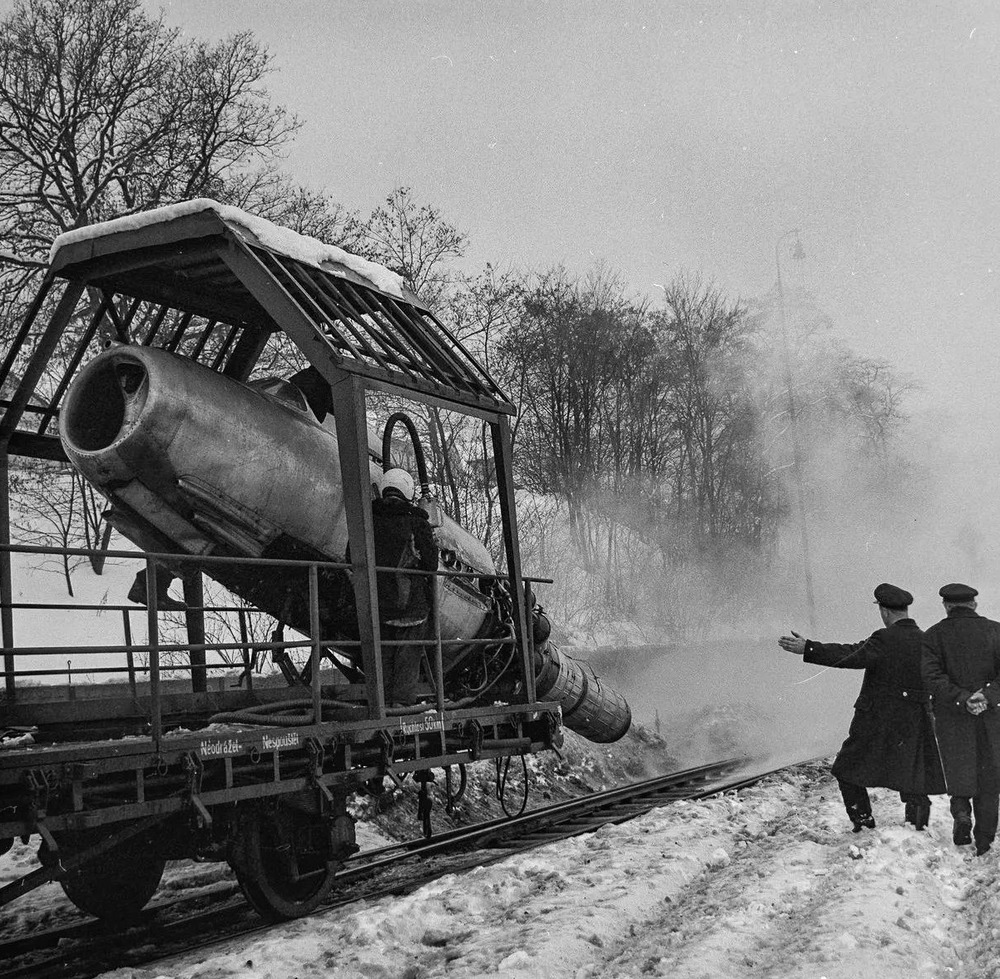
Spiny Norman said:
Czechoslovak railroad workers defrosting railroad tracks using a MiG-15 engine during a severe snowstorm in 1970.
innovative, to say the least. I guess they had access to plenty of cheap Russian oil in the day to make fuel.
party_pants said:
Spiny Norman said:
Czechoslovak railroad workers defrosting railroad tracks using a MiG-15 engine during a severe snowstorm in 1970.
innovative, to say the least. I guess they had access to plenty of cheap Russian oil in the day to make fuel.
Jet engines aren’t very fussy with the fuel they burn. Pretty much any flammable liquid will do.
Thought you might be interested in this news article, spiny.
https://www.abc.net.au/news/2023-04-10/queensland-road-rules-licence-retesting-safety-measures/102204738
Michael V said:
Thought you might be interested in this news article, spiny.https://www.abc.net.au/news/2023-04-10/queensland-road-rules-licence-retesting-safety-measures/102204738
It’s very good to see. I’ve been pushing for that for over twenty years I think.
Ta for the link.
Spiny Norman said:
Michael V said:
Thought you might be interested in this news article, spiny.https://www.abc.net.au/news/2023-04-10/queensland-road-rules-licence-retesting-safety-measures/102204738
It’s very good to see. I’ve been pushing for that for over twenty years I think.
Ta for the link.
No wukkas.
They are not considering re-testing actual driving skills though, it seems. Pity. That should be on the table, too.
Michael V said:
Spiny Norman said:
Michael V said:
Thought you might be interested in this news article, spiny.https://www.abc.net.au/news/2023-04-10/queensland-road-rules-licence-retesting-safety-measures/102204738
It’s very good to see. I’ve been pushing for that for over twenty years I think.
Ta for the link.
No wukkas.
They are not considering re-testing actual driving skills though, it seems. Pity. That should be on the table, too.
Yep. An aviation-style programme would be a very good thing.
Michael V said:
Spiny Norman said:
Michael V said:
Thought you might be interested in this news article, spiny.https://www.abc.net.au/news/2023-04-10/queensland-road-rules-licence-retesting-safety-measures/102204738
It’s very good to see. I’ve been pushing for that for over twenty years I think.
Ta for the link.
No wukkas.
They are not considering re-testing actual driving skills though, it seems. Pity. That should be on the table, too.
I agree with for cause testing but mandatory retesting is a crap idea…
Michael V said:
Spiny Norman said:
Michael V said:
Thought you might be interested in this news article, spiny.https://www.abc.net.au/news/2023-04-10/queensland-road-rules-licence-retesting-safety-measures/102204738
It’s very good to see. I’ve been pushing for that for over twenty years I think.
Ta for the link.
No wukkas.
They are not considering re-testing actual driving skills though, it seems. Pity. That should be on the table, too.
Do you have 10 year licences in Qld?
furious said:
Michael V said:
Spiny Norman said:It’s very good to see. I’ve been pushing for that for over twenty years I think.
Ta for the link.
No wukkas.
They are not considering re-testing actual driving skills though, it seems. Pity. That should be on the table, too.
I agree with for cause testing but mandatory retesting is a crap idea…
So you’d be happy getting into an airliner if the flight crews weren’t skill tested frequently?
Driving a car on the road is, in some ways, more difficult than flying an airliner.
buffy said:
Michael V said:
Spiny Norman said:It’s very good to see. I’ve been pushing for that for over twenty years I think.
Ta for the link.
No wukkas.
They are not considering re-testing actual driving skills though, it seems. Pity. That should be on the table, too.
Do you have 10 year licences in Qld?
It’s either five or ten, I can’t remember.
Spiny Norman said:
furious said:
Michael V said:No wukkas.
They are not considering re-testing actual driving skills though, it seems. Pity. That should be on the table, too.
I agree with for cause testing but mandatory retesting is a crap idea…
So you’d be happy getting into an airliner if the flight crews weren’t skill tested frequently?
Driving a car on the road is, in some ways, more difficult than flying an airliner.
You want to do that as a job, you gotta do what you gotta do…
furious said:
Spiny Norman said:
furious said:I agree with for cause testing but mandatory retesting is a crap idea…
So you’d be happy getting into an airliner if the flight crews weren’t skill tested frequently?
Driving a car on the road is, in some ways, more difficult than flying an airliner.
You want to do that as a job, you gotta do what you gotta do…
That’s not addressing the question.
furious said:
Michael V said:
Spiny Norman said:It’s very good to see. I’ve been pushing for that for over twenty years I think.
Ta for the link.
No wukkas.
They are not considering re-testing actual driving skills though, it seems. Pity. That should be on the table, too.
I agree with for cause testing but mandatory retesting is a crap idea…
Why?
buffy said:
Michael V said:
Spiny Norman said:It’s very good to see. I’ve been pushing for that for over twenty years I think.
Ta for the link.
No wukkas.
They are not considering re-testing actual driving skills though, it seems. Pity. That should be on the table, too.
Do you have 10 year licences in Qld?
Five years maximum.
furious said:
Michael V said:
Spiny Norman said:It’s very good to see. I’ve been pushing for that for over twenty years I think.
Ta for the link.
No wukkas.
They are not considering re-testing actual driving skills though, it seems. Pity. That should be on the table, too.
I agree with for cause testing but mandatory retesting is a crap idea…
I disagree with you about retesting; laws change, and very few people bother to keep up with the changes. A simple example: when roundabouts were first introduced, the requirement was to “give way to any vehicle already in the roundabout and on your right.” The law (in Victoria, at least) now says “give way to any vehicle already in the roundabout.”, but unless people have reread the rules, they won’t know that.
Retesting would force people to keep up with new/changed rules/laws.
What is an F1 Driver’s Workload Like During a Lap?
btm said:
furious said:
Michael V said:No wukkas.
They are not considering re-testing actual driving skills though, it seems. Pity. That should be on the table, too.
I agree with for cause testing but mandatory retesting is a crap idea…
I disagree with you about retesting; laws change, and very few people bother to keep up with the changes. A simple example: when roundabouts were first introduced, the requirement was to “give way to any vehicle already in the roundabout and on your right.” The law (in Victoria, at least) now says “give way to any vehicle already in the roundabout.”, but unless people have reread the rules, they won’t know that.
Retesting would force people to keep up with new/changed rules/laws.
I doubt there we ever a give way to the right in a roundabout. It alwats was give way to those in the roundablout and turn left at any time is basically what that means.
roughbarked said:
btm said:
furious said:I agree with for cause testing but mandatory retesting is a crap idea…
I disagree with you about retesting; laws change, and very few people bother to keep up with the changes. A simple example: when roundabouts were first introduced, the requirement was to “give way to any vehicle already in the roundabout and on your right.” The law (in Victoria, at least) now says “give way to any vehicle already in the roundabout.”, but unless people have reread the rules, they won’t know that.
Retesting would force people to keep up with new/changed rules/laws.
I doubt there we ever a give way to the right in a roundabout. It alwats was give way to those in the roundablout and turn left at any time is basically what that means.
In fact, I believe that any give way sign supercedes the give way to the right rule.
The crew apparently survived. Not sure if they ditched or somehow made it back to the carrier. Most impressive they could keep it in the air for any length of time though – You can see what must be something like full-right aileron and a heap of right rudder to try and keep it level.

Belongs here I guess..
Jet Man | The Invention Of The Jet Engine. Frank Whittle, The Genius Of The Jet Era | HD Documentary
Spiny Norman said:
The crew apparently survived. Not sure if they ditched or somehow made it back to the carrier. Most impressive they could keep it in the air for any length of time though – You can see what must be something like full-right aileron and a heap of right rudder to try and keep it level.
It came out of the Grumman ironworks.
Spiny Norman said:
The crew apparently survived. Not sure if they ditched or somehow made it back to the carrier. Most impressive they could keep it in the air for any length of time though – You can see what must be something like full-right aileron and a heap of right rudder to try and keep it level.
A damaged U.S. Navy Grumman TBM-3 Avenger of Torpedo Squadron 82 (VT-82) “Devil’s Diplomats” in flight after the plane above it in her formation was shot down by anti-aircraft fire near Chichi Jima and fell on this Avenger, breaking off the left wingtip and cracking the fuselage just ahead of the tail, circa 18 February – 4 March 1945. The damaged plane was flown by its pilot about 160 km back to its task group but had to crash land in the water. All crew members were rescued. VT-82 was assigned to Carrier Air Group 82 (CVG-82) aboard the aircraft carrier USS Bennington (CV-20). Note Bennington’s geometric identification symbol on the Avenger.
ChrispenEvan said:
Spiny Norman said:
The crew apparently survived. Not sure if they ditched or somehow made it back to the carrier. Most impressive they could keep it in the air for any length of time though – You can see what must be something like full-right aileron and a heap of right rudder to try and keep it level.
A damaged U.S. Navy Grumman TBM-3 Avenger of Torpedo Squadron 82 (VT-82) “Devil’s Diplomats” in flight after the plane above it in her formation was shot down by anti-aircraft fire near Chichi Jima and fell on this Avenger, breaking off the left wingtip and cracking the fuselage just ahead of the tail, circa 18 February – 4 March 1945. The damaged plane was flown by its pilot about 160 km back to its task group but had to crash land in the water. All crew members were rescued. VT-82 was assigned to Carrier Air Group 82 (CVG-82) aboard the aircraft carrier USS Bennington (CV-20). Note Bennington’s geometric identification symbol on the Avenger.
Ta for finding that.
Ian said:
Belongs here I guess..Jet Man | The Invention Of The Jet Engine. Frank Whittle, The Genius Of The Jet Era | HD Documentary
I do very much appreciate what Whittle did, but he was not the only person working on jet engines. Von Ohain, etc, in Germany were ahead of him pretty much the entire time. First jet engine start & jet aeroplane flights were both German. The basic layout of modern jet engines is also far more like the early German designs rather than the British ones. Whittle was certainly the one that worked out that the fan blades could run quite a lot of twist in them though and that has continued ever since.
Spiny Norman said:
Ian said:
Belongs here I guess..Jet Man | The Invention Of The Jet Engine. Frank Whittle, The Genius Of The Jet Era | HD Documentary
I do very much appreciate what Whittle did, but he was not the only person working on jet engines. Von Ohain, etc, in Germany were ahead of him pretty much the entire time. First jet engine start & jet aeroplane flights were both German. The basic layout of modern jet engines is also far more like the early German designs rather than the British ones. Whittle was certainly the one that worked out that the fan blades could run quite a lot of twist in them though and that has continued ever since.
Yes, the doco talks about Von Ohain and the German efforts. Whittle appears to have been constantly frustrated and limited by War ministry and then civilian lack of imagination, bloody-mindedness and back stabbing. The Pommy jet fighter could have in service years earlier.
https://blog.doublehelix.csiro.au/understanding-the-pee-catapult/
No info on this photo sorry.

Spiny Norman said:
No info on this photo sorry.
it’s a guy riding through a semi dry river bed with a hat and pipe as protective gear
Spiny Norman said:
No info on this photo sorry.
It’s an A.J.Stevens motorcycle but I don’t recognise the rider.
Spiny Norman said:
No info on this photo sorry.
It is a trials rider is what I can glean from a search.
Spiny Norman said:
No info on this photo sorry.
It’s a mid-1950s AJS Competition Trials bike being used as intended – in a Competition Trial, in the 1950s, before helmets were mandatory.
Hillson Bi-Mono Hurricane I proof of concept. Jettisonable upper wing to enable greater load or take off from a shorter field.
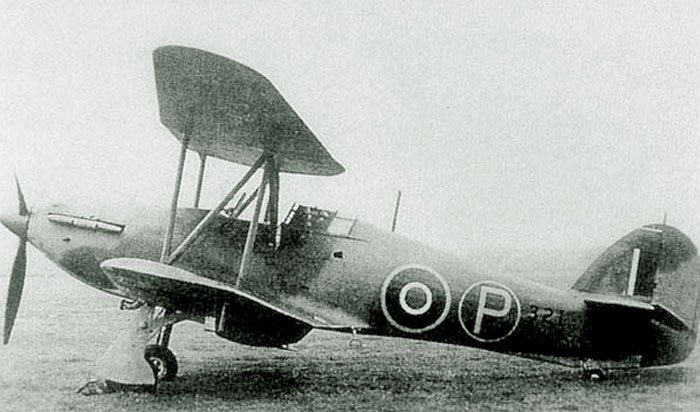

Spiny Norman said:
Hillson Bi-Mono Hurricane I proof of concept. Jettisonable upper wing to enable greater load or take off from a shorter field.
That’s an oddity.
Bubblecar said:
Spiny Norman said:
Hillson Bi-Mono Hurricane I proof of concept. Jettisonable upper wing to enable greater load or take off from a shorter field.
That’s an oddity.
Bubblecar said:
Spiny Norman said:
Hillson Bi-Mono Hurricane I proof of concept. Jettisonable upper wing to enable greater load or take off from a shorter field.
That’s an oddity.
Something I didn’t know about untiil now.
https://www.youtube.com/watch?v=qQ15ZkqTzqc
Tools, Glorious Tools! #7 – Four Shop Made Everyday Hand Tools
Clickspring.
Explaining concrete while getting buried in it.
Strange New Explanation for Why Quantum World Collapses Into Reality
Spiny Norman said:
Strange New Explanation for Why Quantum World Collapses Into Reality
Skimmed through the top half of the transcript, and I think I’ll waste that 10 minutes on something else.
Why do so many people still talk as though the cat in the box really was both dead and alive until observed by a human, when the whole point of the thing was to illustrate how ridiculous it is to suppose that these events depend on human observation?
The Rev Dodgson said:
Spiny Norman said:
Strange New Explanation for Why Quantum World Collapses Into RealitySkimmed through the top half of the transcript, and I think I’ll waste that 10 minutes on something else.
Why do so many people still talk as though the cat in the box really was both dead and alive until observed by a human, when the whole point of the thing was to illustrate how ridiculous it is to suppose that these events depend on human observation?
It’s got more to do with information than actual human observation AFAICT. The cat literally is both alive and dead until new information is confirmed by observation either human or mechanical like a sensor.
Witty Rejoinder said:
The Rev Dodgson said:
Spiny Norman said:
Strange New Explanation for Why Quantum World Collapses Into RealitySkimmed through the top half of the transcript, and I think I’ll waste that 10 minutes on something else.
Why do so many people still talk as though the cat in the box really was both dead and alive until observed by a human, when the whole point of the thing was to illustrate how ridiculous it is to suppose that these events depend on human observation?
It’s got more to do with information than actual human observation AFAICT. The cat literally is both alive and dead until new information is confirmed by observation either human or mechanical like a sensor.
The poison is or isn’t triggered by a radioactive emission, and that’s all the observation required to make the event real.
The Rev Dodgson said:
Spiny Norman said:
Strange New Explanation for Why Quantum World Collapses Into RealitySkimmed through the top half of the transcript, and I think I’ll waste that 10 minutes on something else.
Why do so many people still talk as though the cat in the box really was both dead and alive until observed by a human, when the whole point of the thing was to illustrate how ridiculous it is to suppose that these events depend on human observation?
I thought that it was something to do with Heisenbergs Uncertainty Principle.
The Rev Dodgson said:
Witty Rejoinder said:
The Rev Dodgson said:Skimmed through the top half of the transcript, and I think I’ll waste that 10 minutes on something else.
Why do so many people still talk as though the cat in the box really was both dead and alive until observed by a human, when the whole point of the thing was to illustrate how ridiculous it is to suppose that these events depend on human observation?
It’s got more to do with information than actual human observation AFAICT. The cat literally is both alive and dead until new information is confirmed by observation either human or mechanical like a sensor.
The poison is or isn’t triggered by a radioactive emission, and that’s all the observation required to make the event real.
I’m no expert but I don’t think that is correct. Without opening the box there is no way of knowing whether the decay has occurred and if we did have a sensor in the box we wouldn’t need to bother with indeterminate pussy cats. The important bit is the information that can be gleaned from any system AFAICT.
Witty Rejoinder said:
The Rev Dodgson said:
Witty Rejoinder said:It’s got more to do with information than actual human observation AFAICT. The cat literally is both alive and dead until new information is confirmed by observation either human or mechanical like a sensor.
The poison is or isn’t triggered by a radioactive emission, and that’s all the observation required to make the event real.
I’m no expert but I don’t think that is correct. Without opening the box there is no way of knowing whether the decay has occurred and if we did have a sensor in the box we wouldn’t need to bother with indeterminate pussy cats. The important bit is the information that can be gleaned from any system AFAICT.
Witty Rejoinder said:
The Rev Dodgson said:
Witty Rejoinder said:It’s got more to do with information than actual human observation AFAICT. The cat literally is both alive and dead until new information is confirmed by observation either human or mechanical like a sensor.
The poison is or isn’t triggered by a radioactive emission, and that’s all the observation required to make the event real.
I’m no expert but I don’t think that is correct. Without opening the box there is no way of knowing whether the decay has occurred and if we did have a sensor in the box we wouldn’t need to bother with indeterminate pussy cats. The important bit is the information that can be gleaned from any system AFAICT.
Even if we ignore the detector that releases the poison gas, the information system known as a cat is perfectly capable of detecting whether it is breathing air (and continuing to operate) or breathing poison gas (and shutting down cat operations).
The Rev Dodgson said:
Witty Rejoinder said:
The Rev Dodgson said:The poison is or isn’t triggered by a radioactive emission, and that’s all the observation required to make the event real.
I’m no expert but I don’t think that is correct. Without opening the box there is no way of knowing whether the decay has occurred and if we did have a sensor in the box we wouldn’t need to bother with indeterminate pussy cats. The important bit is the information that can be gleaned from any system AFAICT.
Even if we ignore the detector that releases the poison gas, the information system known as a cat is perfectly capable of detecting whether it is breathing air (and continuing to operate) or breathing poison gas (and shutting down cat operations).
the cat isn’t the observer though.
JudgeMental said:
Witty Rejoinder said:
The Rev Dodgson said:The poison is or isn’t triggered by a radioactive emission, and that’s all the observation required to make the event real.
I’m no expert but I don’t think that is correct. Without opening the box there is no way of knowing whether the decay has occurred and if we did have a sensor in the box we wouldn’t need to bother with indeterminate pussy cats. The important bit is the information that can be gleaned from any system AFAICT.
From the link:
“The cat ends up both dead and alive at the same time. Because the existence of a cat that is both dead and alive at the same time is absurd and does not happen in the real world, this thought experiment shows that wavefunction collapses are not just driven by conscious observers.”
The Rev Dodgson said:
JudgeMental said:
Witty Rejoinder said:I’m no expert but I don’t think that is correct. Without opening the box there is no way of knowing whether the decay has occurred and if we did have a sensor in the box we wouldn’t need to bother with indeterminate pussy cats. The important bit is the information that can be gleaned from any system AFAICT.
From the link:
“The cat ends up both dead and alive at the same time. Because the existence of a cat that is both dead and alive at the same time is absurd and does not happen in the real world, this thought experiment shows that wavefunction collapses are not just driven by conscious observers.”
yes. until observed.
JudgeMental said:
The Rev Dodgson said:
Witty Rejoinder said:I’m no expert but I don’t think that is correct. Without opening the box there is no way of knowing whether the decay has occurred and if we did have a sensor in the box we wouldn’t need to bother with indeterminate pussy cats. The important bit is the information that can be gleaned from any system AFAICT.
Even if we ignore the detector that releases the poison gas, the information system known as a cat is perfectly capable of detecting whether it is breathing air (and continuing to operate) or breathing poison gas (and shutting down cat operations).
the cat isn’t the observer though.
The cat most certainly is an observer.
It’s not a human observer, so no human knows the outcome until the box is opened, but that is irelevent.
The Rev Dodgson said:
JudgeMental said:
The Rev Dodgson said:Even if we ignore the detector that releases the poison gas, the information system known as a cat is perfectly capable of detecting whether it is breathing air (and continuing to operate) or breathing poison gas (and shutting down cat operations).
the cat isn’t the observer though.
The cat most certainly is an observer.
It’s not a human observer, so no human knows the outcome until the box is opened, but that is irelevent.
no it isn’t, it is the quantum state.
JudgeMental said:
The Rev Dodgson said:
JudgeMental said:From the link:
“The cat ends up both dead and alive at the same time. Because the existence of a cat that is both dead and alive at the same time is absurd and does not happen in the real world, this thought experiment shows that wavefunction collapses are not just driven by conscious observers.”yes. until observed.
I don’t know what you mean by that.
JudgeMental said:
The Rev Dodgson said:
JudgeMental said:the cat isn’t the observer though.
The cat most certainly is an observer.
It’s not a human observer, so no human knows the outcome until the box is opened, but that is irelevent.
no it isn’t, it is the quantum state.
Why do you say that?
A wave function is collapsed when the Geiger counter detects the emission, and a load more when it releases the poisonous gas, and yet more still when the cat interacts with the poisonous gas.
The Rev Dodgson said:
JudgeMental said:
The Rev Dodgson said:The cat most certainly is an observer.
It’s not a human observer, so no human knows the outcome until the box is opened, but that is irelevent.
no it isn’t, it is the quantum state.
Why do you say that?
A wave function is collapsed when the Geiger counter detects the emission, and a load more when it releases the poisonous gas, and yet more still when the cat interacts with the poisonous gas.
I say it because it is. we know how it works but what you have detailed is happening inside the box and hidden from outside observers. So until we open the box, take the money, none of this is known. that is the whole point of the experiment.
The Rev Dodgson said:
JudgeMental said:
The Rev Dodgson said:The cat most certainly is an observer.
It’s not a human observer, so no human knows the outcome until the box is opened, but that is irelevent.
no it isn’t, it is the quantum state.
Why do you say that?
A wave function is collapsed when the Geiger counter detects the emission, and a load more when it releases the poisonous gas, and yet more still when the cat interacts with the poisonous gas.
OTOH, TATE says:
It is unclear which interpretation is correct; the underlying issue raised by Schrödinger’s cat remains an unsolved problem in physics.Which if true implies that at least some physicists don’t agree with me (but some do).
JudgeMental said:
The Rev Dodgson said:
JudgeMental said:no it isn’t, it is the quantum state.
Why do you say that?
A wave function is collapsed when the Geiger counter detects the emission, and a load more when it releases the poisonous gas, and yet more still when the cat interacts with the poisonous gas.
I say it because it is. we know how it works but what you have detailed is happening inside the box and hidden from outside observers. So until we open the box, take the money, none of this is known. that is the whole point of the experiment.
If that is the point of the experiment, it is totally trivial.
But it certainly wasn’t Schroedinger’s intent when he thought of it.
The Rev Dodgson said:
The Rev Dodgson said:
JudgeMental said:no it isn’t, it is the quantum state.
Why do you say that?
A wave function is collapsed when the Geiger counter detects the emission, and a load more when it releases the poisonous gas, and yet more still when the cat interacts with the poisonous gas.
OTOH, TATE says:
It is unclear which interpretation is correct; the underlying issue raised by Schrödinger’s cat remains an unsolved problem in physics.Which if true implies that at least some physicists don’t agree with me (but some do).
the full quotes tells a more honest answer
Fundamentally, the Schrödinger’s cat experiment asks how long superpositions last and when (or whether) they collapse. Interpretations for resolving this question include that the cat is dead or alive when the box is opened (Copenhagen); that a conscious mind must observe the box (Von Neumann–Wigner); that upon observation the universe branches into a universe where the cat is alive, and one where it is dead (many-worlds); that every object (such as the cat, and the box itself) is an observer, but superposition is relative depending on the observer (relational); that superposition never truly exists due to time-travelling waves (transactional); that merely observing the box either slows or accelerates the cat’s death (quantum Zeno effect); among other theories which assert that the cat is dead or alive long before the box is opened. It is unclear which interpretation is correct; the underlying issue raised by Schrödinger’s cat remains an unsolved problem in physics.
JudgeMental said:
The Rev Dodgson said:
The Rev Dodgson said:Why do you say that?
A wave function is collapsed when the Geiger counter detects the emission, and a load more when it releases the poisonous gas, and yet more still when the cat interacts with the poisonous gas.
OTOH, TATE says:
It is unclear which interpretation is correct; the underlying issue raised by Schrödinger’s cat remains an unsolved problem in physics.Which if true implies that at least some physicists don’t agree with me (but some do).
the full quotes tells a more honest answer
Fundamentally, the Schrödinger’s cat experiment asks how long superpositions last and when (or whether) they collapse. Interpretations for resolving this question include that the cat is dead or alive when the box is opened (Copenhagen); that a conscious mind must observe the box (Von Neumann–Wigner); that upon observation the universe branches into a universe where the cat is alive, and one where it is dead (many-worlds); that every object (such as the cat, and the box itself) is an observer, but superposition is relative depending on the observer (relational); that superposition never truly exists due to time-travelling waves (transactional); that merely observing the box either slows or accelerates the cat’s death (quantum Zeno effect); among other theories which assert that the cat is dead or alive long before the box is opened. It is unclear which interpretation is correct; the underlying issue raised by Schrödinger’s cat remains an unsolved problem in physics.
It is more detailed.
It absolutely is not more “honest”.
Now gone.
anyway enough of this trivial explaining.
It’s been snowing in Saudi Arabia.
An unusual name for a suburb in Reunion Island.
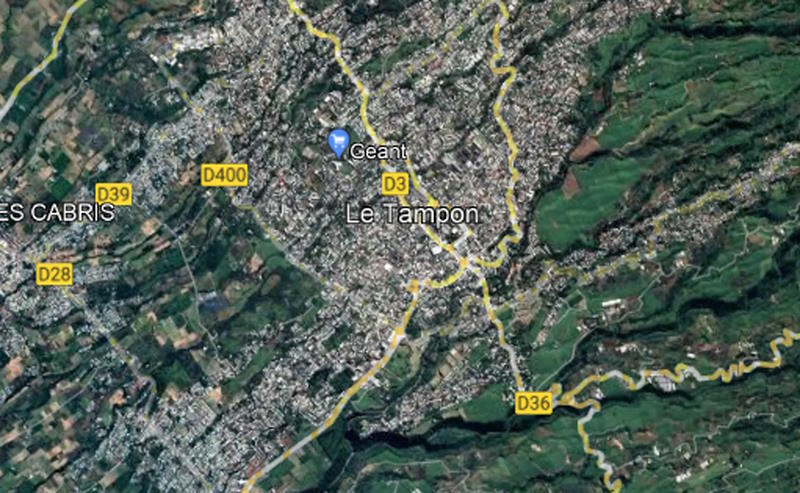
Spiny Norman said:
An unusual name for a suburb in Reunion Island.
LOL
Spiny Norman said:
An unusual name for a suburb in Reunion Island.
Well at least it is female?
roughbarked said:
Spiny Norman said:
An unusual name for a suburb in Reunion Island.
Well at least it is female?
No, it isn’t.
‘Le tampon’ in French is a ‘masculine’ noun, as signified by the definite areticle ‘le’. If it were ‘feminine’, it would be ‘la tampon’.
The translation of ‘le tampon’ is ‘the buffer’ (as in ‘barrier’ or ‘blockade’).
Only ever met one person from Réunion (in French, ‘réunion’ means ‘meeting’).
A young man who knocked at our door, collecting for the Red Cross. I gave him a donation, and then, because there was something about him, i asked ‘pardon, mais vous êtes français, n’est-ce pas?’
He was taken aback for a moment, andthen answered ‘eh bien, oui, je le suis’.
He was from Réunion, and when i explained that (a) my first French teacher had come from the neighbouring island of Mauritius, and (b) i was secretary ofthe local Alliance Francaise (‘vraiment?!’, he said), we had a good old chat, and he went away seeming quite happy.
Spiny Norman said:
An unusual name for a suburb in Reunion Island.
I’ve heard that they’re all up themselves there.
captain_spalding said:
roughbarked said:
Spiny Norman said:
An unusual name for a suburb in Reunion Island.
Well at least it is female?
No, it isn’t.
‘Le tampon’ in French is a ‘masculine’ noun, as signified by the definite areticle ‘le’. If it were ‘feminine’, it would be ‘la tampon’.
The translation of ‘le tampon’ is ‘the buffer’ (as in ‘barrier’ or ‘blockade’).
Yes I realised that later.
roughbarked said:
captain_spalding said:
roughbarked said:Well at least it is female?
No, it isn’t.
‘Le tampon’ in French is a ‘masculine’ noun, as signified by the definite areticle ‘le’. If it were ‘feminine’, it would be ‘la tampon’.
The translation of ‘le tampon’ is ‘the buffer’ (as in ‘barrier’ or ‘blockade’).
Yes I realised that later.
C’est ne pas grave.
Scientists hope to use seas as big sponges to tackle global warming
Spiny Norman said:
Scientists hope to use seas as big sponges to tackle global warming
It makes sense if they are doing the conversion on board ship, that the easiest way to deposit the solids would be to dump it straight back into the ocean. Presumably the rate it is deposited that could be dispersed by the movement of water so as to not clump on top of living things and smother them is the only issue to really worry about.
Spiny Norman said:
Scientists hope to use seas as big sponges to tackle global warming
Morning pilgrims, nothing to report.
Over.
Oh lovely.
New Research Sparks Concerns That Ocean Circulation Will Collapse.
Scientists have long feared that warming could cause a breakdown of ocean circulation in the North Atlantic. But new research finds the real risk lies in Antarctica’s waters, where melting could disrupt currents in the next few decades, with profound impacts on global climate.
https://e360.yale.edu/features/climate-change-ocean-circulation-collapse-antarctica
https://www.youtube.com/watch?v=jcO_ii1X_v4
New Wind Powered Land Speed World Record – 225.58km/h
Volcanic microbe eats CO2 ‘astonishingly quickly’, say scientists.
Discovery of carbon-capturing organism in hot springs could lead to efficient way of absorbing climate-heating gas.
Spiny Norman said:
Oh lovely.New Research Sparks Concerns That Ocean Circulation Will Collapse.
Scientists have long feared that warming could cause a breakdown of ocean circulation in the North Atlantic. But new research finds the real risk lies in Antarctica’s waters, where melting could disrupt currents in the next few decades, with profound impacts on global climate.https://e360.yale.edu/features/climate-change-ocean-circulation-collapse-antarctica
Everything to do with global warming continues to accelerate.
Extracted from the linked article:
>>A new analysis by Australian and American researchers, using new and more detailed modeling of the oceans, predicts that the long-feared turn-off of the circulation will likely occur in the Southern Ocean, as billions of tons of ice melt on the land mass of Antarctica. And rather than being more than a century away, as models predict for the North Atlantic, it could happen within the next three decades.<<
>>The ocean circulation system, often called the global conveyor, follows a regular path through the Earth’s oceans and stirs their waters from top to bottom. It starts with water plunging from the surface and disappearing to the depths, from where it travels the world and does not surface for centuries. By capturing heat and carbon dioxide from the atmosphere, and burying both deep in the ocean, it is currently moderating global warming.<<

Legend has it that when Henry Ford was asked why he got into the car business, he replied that, “if I’d asked the customers what they wanted, they would have said faster horses.”

Some light aircraft have a lightning detector instrument, usually called a Storm Scope. They show the direction of lightning strikes and a rough distance, based on (I think) the power of the lightning bolt.
Spiny Norman said:
Some light aircraft have a lightning detector instrument, usually called a Storm Scope. They show the direction of lightning strikes and a rough distance, based on (I think) the power of the lightning bolt.
My old man’s A36 had one of those.
A couple of Honda F1 heads sectioned.
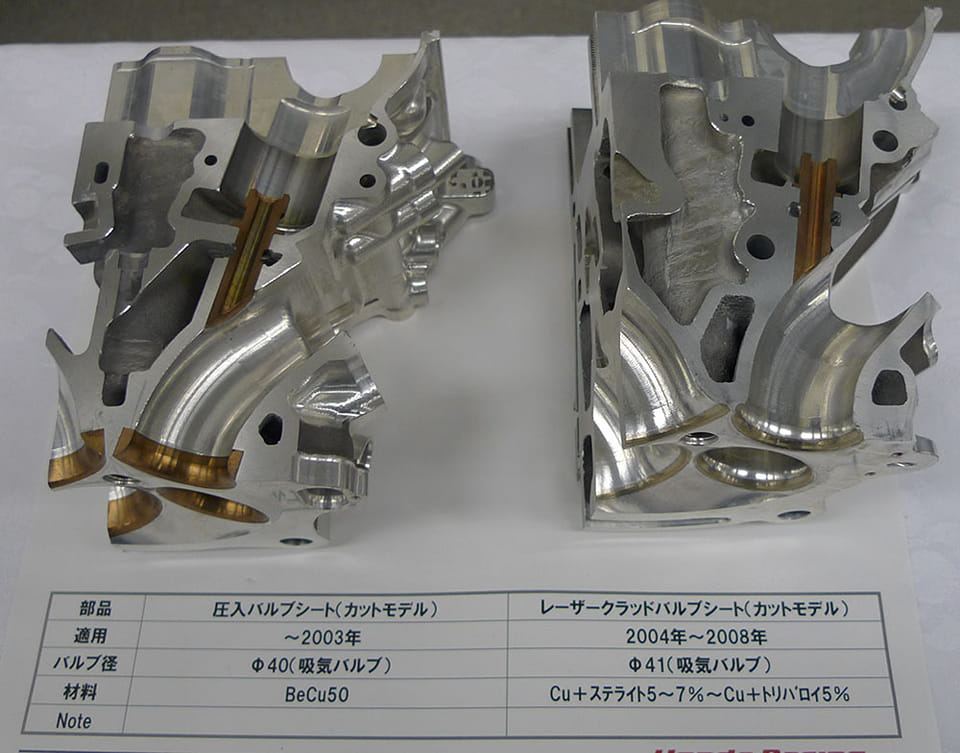
The Stockholm Telephone Tower with approximately 5,500 telephone lines, 1890.

Spiny Norman said:
The Stockholm Telephone Tower with approximately 5,500 telephone lines, 1890.
PermeateFree said:
Spiny Norman said:
Oh lovely.New Research Sparks Concerns That Ocean Circulation Will Collapse.
Scientists have long feared that warming could cause a breakdown of ocean circulation in the North Atlantic. But new research finds the real risk lies in Antarctica’s waters, where melting could disrupt currents in the next few decades, with profound impacts on global climate.https://e360.yale.edu/features/climate-change-ocean-circulation-collapse-antarctica
Everything to do with global warming continues to accelerate.
Extracted from the linked article:
>>A new analysis by Australian and American researchers, using new and more detailed modeling of the oceans, predicts that the long-feared turn-off of the circulation will likely occur in the Southern Ocean, as billions of tons of ice melt on the land mass of Antarctica. And rather than being more than a century away, as models predict for the North Atlantic, it could happen within the next three decades.<<
>>The ocean circulation system, often called the global conveyor, follows a regular path through the Earth’s oceans and stirs their waters from top to bottom. It starts with water plunging from the surface and disappearing to the depths, from where it travels the world and does not surface for centuries. By capturing heat and carbon dioxide from the atmosphere, and burying both deep in the ocean, it is currently moderating global warming.<<
++++groans in unhappy manner++++
The Soviet Union’s Deadly Abandoned Nuclear Generators.
NEVER Hire a Stupid Hitman | Tales From the Bottle.
You couldn’t make this up!

How NASA built rocket engines before 3D printing.
The Paratechnicon, a modular cargo-carrying pannier that was fitted to the first Handley Page Hastings transport aircraft.
The device was intended to increase the cargo capacity of the Hastings, but it detached itself in flight, causing the tragic loss of both aircraft and crew.
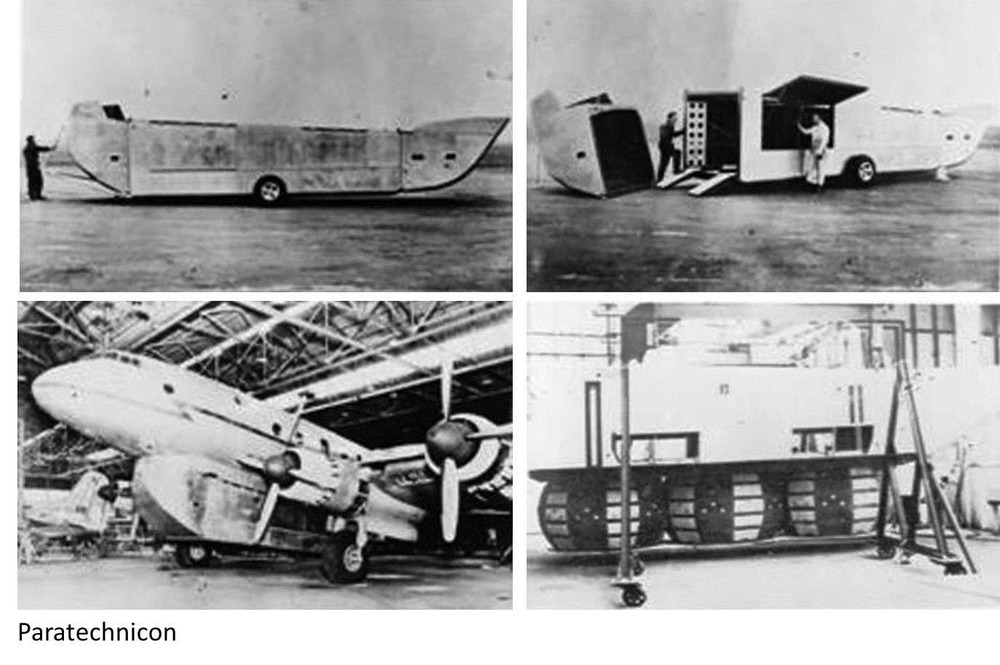
Spiny Norman said:
The Paratechnicon, a modular cargo-carrying pannier that was fitted to the first Handley Page Hastings transport aircraft.
The device was intended to increase the cargo capacity of the Hastings, but it detached itself in flight, causing the tragic loss of both aircraft and crew.
I wonder about the drag, and effect on the aircraft’s performance.
Would it, in the end, be much more economical than using a second plane?
captain_spalding said:
Spiny Norman said:
The Paratechnicon, a modular cargo-carrying pannier that was fitted to the first Handley Page Hastings transport aircraft.
The device was intended to increase the cargo capacity of the Hastings, but it detached itself in flight, causing the tragic loss of both aircraft and crew.
I wonder about the drag, and effect on the aircraft’s performance.
Would it, in the end, be much more economical than using a second plane?
It’d have a performance hit for sure, I’ve seen much the same thing used on some Cessna single-engined planes.
There’s also my modern aircraft, such as the F16 and F15, that have conformal tanks that allow for more fuel.


The later versions of the EE Lightning also had a pregnant bulge under the fuselage for more fuel.

The Lightnings were very thirsty and didn’t have a lot of space for fuel. They are the only aircraft I know of that also used the flaps as fuel tanks!


JudgeMental said:
That’s a great pic. Several of our fire vollies are up there in that shadow, and some guy from some internet forum somewhere.
JudgeMental said:

The flat-earthists will not be impressed.
The Rev Dodgson said:
JudgeMental said:

The flat-earthists will not be impressed.
If you squint, you can just make out dv and the boy.
“Well, I have to say I was sceptical of reports that a lunar spacesuit might have the backpack moved to the legs, to make hatch entry easier.
But YASTREB RVR-1P shown here has exactly that!”

How these impossibly thin cuts are made – EDM machines.
Spiny Norman said:
How these impossibly thin cuts are made – EDM machines.
They are awesome aren’t they.
Spiny Norman said:
How these impossibly thin cuts are made – EDM machines.
The sponsor message when he shows which side of his face was shaved with which razor, the plastic cartridge one still has the plastic cover that prevents the blades from contacting anything.
It isn’t any wonder then why it appears to not be shaving.
Spiny Norman said:
How these impossibly thin cuts are made – EDM machines.
Ta.
An SR-71 Blackbird cockpit.

Spiny Norman said:
An SR-71 Blackbird cockpit.
Looks very random.
Bubblecar said:
Spiny Norman said:
An SR-71 Blackbird cockpit.
Looks very random.
I like the vertical speed gauge.
Spiny Norman said:
An SR-71 Blackbird cockpit.
it hasn’t any rear view mirrors!!!
JudgeMental said:
Spiny Norman said:
An SR-71 Blackbird cockpit.
it hasn’t any rear view mirrors!!!
Bubblecar said:
Spiny Norman said:
An SR-71 Blackbird cockpit.
Looks very random.
It would seem so on first inspection but all the instruments/switches/etc are typically placed were they are needed.
JudgeMental said:
Spiny Norman said:
An SR-71 Blackbird cockpit.
it hasn’t any rear view mirrors!!!
I think they had an extendable one, so the pilot could look back at the big rudders to make sure they were correctly aligned in the neutral position for minimum drag.
https://www.youtube.com/watch?v=sbxQsvVAnZE
Using Explosives to clear a rocky paddock
Demolition Dave
ChrispenEvan said:
https://www.youtube.com/watch?v=sbxQsvVAnZEUsing Explosives to clear a rocky paddock
Demolition Dave
‘splosions.
Let’s take a look back in history today to a top secret mission and massive engineering challenge that took place in 1942:
The transport of 6 submarines and other ships across the continent from the Baltic Sea to the Black Sea.
Let’s have a closer look at:
Why did they transport submarines across the continent?
Which routes did they consider?
How were the transports prepared and organised?
Which infrastructure had to be built and can still be found today?
What happened to the submarines in the Black Sea?
Spiny Norman said:
Let’s take a look back in history today to a top secret mission and massive engineering challenge that took place in 1942:The transport of 6 submarines and other ships across the continent from the Baltic Sea to the Black Sea.
Let’s have a closer look at:
Why did they transport submarines across the continent?
Which routes did they consider?
How were the transports prepared and organised?
Which infrastructure had to be built and can still be found today?
What happened to the submarines in the Black Sea?
Interesting.
“If you think they are tight, tighten them again. Tony Quinn’s message on belt safety.”
I usually do up the belts in the racing car so it’s a little bit painful.
Spiny Norman said:
“If you think they are tight, tighten them again. Tony Quinn’s message on belt safety.”I usually do up the belts in the racing car so it’s a little bit painful.
Did he have a big prang in Townsville? I can’t find any footage of it.
Kingy said:
Spiny Norman said:
“If you think they are tight, tighten them again. Tony Quinn’s message on belt safety.”I usually do up the belts in the racing car so it’s a little bit painful.
Did he have a big prang in Townsville? I can’t find any footage of it.
Never mind, I just watched the clip.
Soviet Space Manoeuvring Unit.
Early on in the crewed Soviet space program, they were looking at how cosmonauts could get around outside of their spacecraft. What they came up with was very different from American solutions.
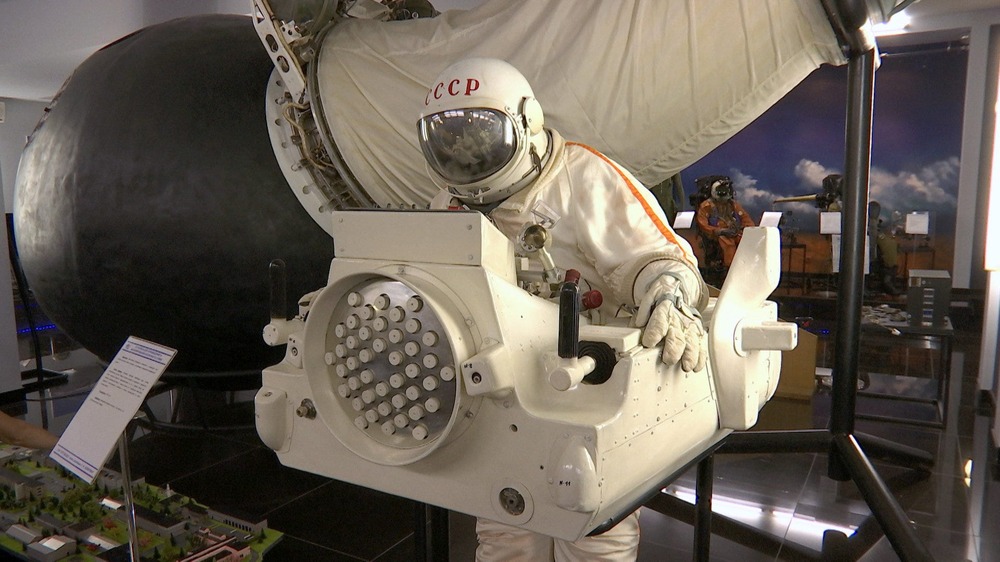
graphicsnickstevens.substack.com/p/upmk-soviet-space-manoeuvring-unit
Spiny Norman said:
Soviet Space Manoeuvring Unit.Early on in the crewed Soviet space program, they were looking at how cosmonauts could get around outside of their spacecraft. What they came up with was very different from American solutions.
graphicsnickstevens.substack.com/p/upmk-soviet-space-manoeuvring-unit
Very interesting.
Spiny Norman said:
Soviet Space Manoeuvring Unit.Early on in the crewed Soviet space program, they were looking at how cosmonauts could get around outside of their spacecraft. What they came up with was very different from American solutions.
graphicsnickstevens.substack.com/p/upmk-soviet-space-manoeuvring-unit
Spiny Norman said:
Soviet Space Manoeuvring Unit.Early on in the crewed Soviet space program, they were looking at how cosmonauts could get around outside of their spacecraft. What they came up with was very different from American solutions.
graphicsnickstevens.substack.com/p/upmk-soviet-space-manoeuvring-unit
Soviet space speedster!
30 years ago, one decision altered the course of our connected world.
Thirty years ago, listeners tuning into Morning Edition heard about a futuristic idea that could profoundly change their lives.
“Imagine being able to communicate at-will with 10 million people all over the world,” NPR’s Neal Conan said. “Imagine having direct access to catalogs of hundreds of libraries as well as the most up-to-date news, business and weather reports. Imagine being able to get medical advice or gardening advice immediately from any number of experts.
“This is not a dream,” he continued. “It’s internet.”
But even in the early 1990s, that space-age sales pitch was a long way from the lackluster experience of actually using the internet. It was almost entirely text-based, for one.
https://www.npr.org/2023/04/30/1172276538/world-wide-web-internet-anniversary
Spiny Norman said:
30 years ago, one decision altered the course of our connected world.Thirty years ago, listeners tuning into Morning Edition heard about a futuristic idea that could profoundly change their lives.
“Imagine being able to communicate at-will with 10 million people all over the world,” NPR’s Neal Conan said. “Imagine having direct access to catalogs of hundreds of libraries as well as the most up-to-date news, business and weather reports. Imagine being able to get medical advice or gardening advice immediately from any number of experts.
“This is not a dream,” he continued. “It’s internet.”
But even in the early 1990s, that space-age sales pitch was a long way from the lackluster experience of actually using the internet. It was almost entirely text-based, for one.
https://www.npr.org/2023/04/30/1172276538/world-wide-web-internet-anniversary
I loved the sound of dial-up in the morning.
“Imagine being able to get medical advice or gardening advice immediately from any number of experts.”
Indeed, any number.
Although that word ‘experts’ is subject to debate.
Spiny Norman said:
But even in the early 1990s, that space-age sales pitch was a long way from the lackluster experience of actually using the internet. It was almost entirely text-based, for one.
Yeah, no-one these days would bother with a text based web-site.
The Fermi Paradox | A Profound Solution.
https://cosmosmagazine.com/science/biology/worms-cannabinoids-munchies/
Incredible Advances In Nuclear Stirling Engines For Space Exploration.
This odd-looking contraption was among many research experiments conducted decades ago. What you see is a small outboard-powered outrigger hull that is pushing that glider to maintain flight. The engine’s throttle was controlled from the glider cockpit. It looks like fun, but it’s so strange.

Spiny Norman said:
This odd-looking contraption was among many research experiments conducted decades ago. What you see is a small outboard-powered outrigger hull that is pushing that glider to maintain flight. The engine’s throttle was controlled from the glider cockpit. It looks like fun, but it’s so strange.
It’s all great fun until someone loses an eye.
The Startling Reason Entropy & Time Only Go One Way
A Bristol Buccaneer. flying higher than they usually do. :)

All too close, and it would have been an extremely destructive & deadly crash.
No other information on this death trap flying machine.
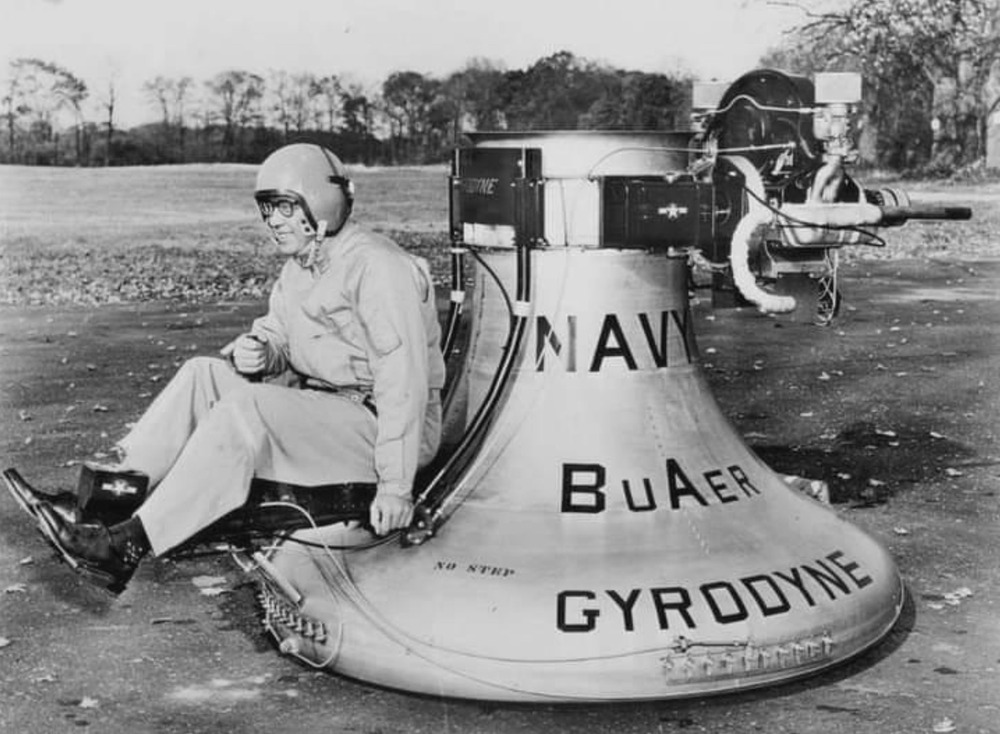
Spiny Norman said:
No other information on thisdeath trapflying machine.
Fellow’s face says “Woo, let’s go!” but his knickers might tell another tale.
Spiny Norman said:
No other information on thisdeath trapflying machine.
Here you go:
https://www.reddit.com/r/WeirdWings/comments/ywr5ad/gyrodyne_gca55_a_hovercraft_powered_by_a_porsche/
Michael V said:
Spiny Norman said:
No other information on thisdeath trapflying machine.
Here you go:
https://www.reddit.com/r/WeirdWings/comments/ywr5ad/gyrodyne_gca55_a_hovercraft_powered_by_a_porsche/
OK so it ain’t flying nowhere. The fellow is appropriately relaxed.
Michael V said:
Spiny Norman said:
No other information on thisdeath trapflying machine.
Here you go:
https://www.reddit.com/r/WeirdWings/comments/ywr5ad/gyrodyne_gca55_a_hovercraft_powered_by_a_porsche/
Ta. It’s still terrifying to look at though!
Spiny Norman said:
Michael V said:
Spiny Norman said:
No other information on thisdeath trapflying machine.
Here you go:
https://www.reddit.com/r/WeirdWings/comments/ywr5ad/gyrodyne_gca55_a_hovercraft_powered_by_a_porsche/
Ta. It’s still terrifying to look at though!
More information about halfway down this page:
http://www.warbirdinformationexchange.org/phpBB3/viewtopic.php?t=17704
“THE GYRODYNE MODEL GCA-55
The Gyrodyne Model 55 in a single-seat ground cushion vehicle of the annular jet type, powered by a 72 h.p. Porsche four-cylinder engine. It was developed under a U.S. Navy Bureau of Aeronautics contract and flew for the first time in October, 1959.
The basic fuselage structure of the Model 55 consists of the modified forward portion of an XRON-1 Rotorcycle, including the pilot’s seat, control column, rudder pedals and throttle. The pilot’s longitudinal, lateral and directional controls are of the conventional helicopter type. The throttle control is located to the left of the pilot in the position of the collective-pitch control in a helicopter. The cyclic stick and the rudder pedals are connected to a series of vanes located in the annular jet exit.
The vehicle’s air duct is bell-shaped and is constructed of aluminium spinnings. The engine is located to the rear and drives an axial-flow fan of 1.025 pressure ratio. Beneath the fan the air is ducted to an annular jet in the periphery of the base and to radial slots in the base. The annular jet produces the elevated static pressure underneath the base which provides lift augmentation. The radial jets tend to compartmentize the pressurized air beneath the base of the vehicle and thus provide positive static stability.
———————————————-
DIMENSIONS.—
Diameter of air duct 6 ft. (1.83 m.)
Overall height approx. 5 ft. (1.52 m.)
WEIGHTS.—Weight empty 535 lb. (243 kg.)
Max. loaded weight 800 Ib. (363 kg.)
PERFORMANCE.— Operating height above ground approx. 6 in. (15 cm.)”
Sorry. That was the same information, repeated.
Spiny Norman said:
No other information on thisdeath trapflying machine.
“The Gyrodyne Model GCA-55 single-seat ground cushion vehicle of the annular jet type, powered by a 72 h.p. Porsche four-cylinder engine. It was developed under a U.S. Navy Bureau of Aeronautics contract and flew for the first time in October, 1959.”
Spiny Norman said:
No other information on thisdeath trapflying machine.
Looks a lot more safe than Gyrodyne’s XRON-1
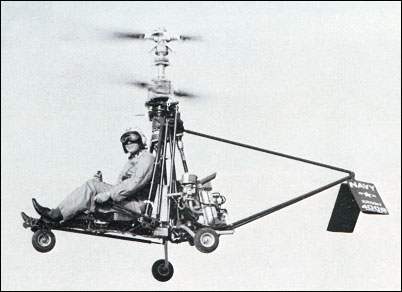
Michael V said:
Sorry. That was the same information, repeated.
Just a little bit of history repeating.
Peak Warming Man said:
Michael V said:
Sorry. That was the same information, repeated.
Just a little bit of history repeating.
:)
Why Does Rice Sink Ships?
Speaking of rice, did you know that Budweiser is made from rice as well as hops and barley? Rice makes up 30% of the mix.
dv said:
Speaking of rice, did you know that Budweiser is made from rice as well as hops and barley? Rice makes up 30% of the mix.
no.
dv said:
Speaking of rice, did you know that Budweiser is made from rice as well as hops and barley? Rice makes up 30% of the mix.
This would explain why a lot of American beer is like ricewater.
Why Lightbulbs Might Be The Best Invention Ever
Spiny Norman said:
Why Lightbulbs Might Be The Best Invention Ever
Is it because that, without them, cartoonists would have nothing to put of the character’s head when they have an idea?
captain_spalding said:
Spiny Norman said:
Why Lightbulbs Might Be The Best Invention EverIs it because that, without them, cartoonists would have nothing to put of the character’s head when they have an idea?
Lightbulbs may be the deadliest thing we’ve ever done to the environment.
mollwollfumble said:
captain_spalding said:
Spiny Norman said:
Why Lightbulbs Might Be The Best Invention EverIs it because that, without them, cartoonists would have nothing to put of the character’s head when they have an idea?
Lightbulbs may be the deadliest thing we’ve ever done to the environment.
What?
Worse than taps?
Mrs S. is watching ‘Border Security’.
I can’t watch it, because
(a) it annoys me that Ch 7 continue to dish up the same dozen or so episodes of it on high rotation at prime time on Sunday, and
(b) the forgers of passports etc. whose work they detect are so f***ing lazy. Tonight’s episode has three members of a tour group who have passports with consecutive passport numbers.
Jesus H., even Australian Immigration is likely to notice that sort of thing. Can they not at least put some effort into it? Oh, well, you get what you pay for, i suppose. Dud passports etc. are easy enough to get, but you can save a few bucks and get caught, or lash out and get something convincing.
captain_spalding said:
Mrs S. is watching ‘Border Security’.I can’t watch it, because
(a) it annoys me that Ch 7 continue to dish up the same dozen or so episodes of it on high rotation at prime time on Sunday, and
(b) the forgers of passports etc. whose work they detect are so f***ing lazy. Tonight’s episode has three members of a tour group who have passports with consecutive passport numbers.
Jesus H., even Australian Immigration is likely to notice that sort of thing. Can they not at least put some effort into it? Oh, well, you get what you pay for, i suppose. Dud passports etc. are easy enough to get, but you can save a few bucks and get caught, or lash out and get something convincing.
Wrong thread, although i don’t know how it came to be. Apologies.
mollwollfumble said:
captain_spalding said:
Spiny Norman said:
Why Lightbulbs Might Be The Best Invention EverIs it because that, without them, cartoonists would have nothing to put of the character’s head when they have an idea?
Lightbulbs may be the deadliest thing we’ve ever done to the environment.
Wasn’t that fridges? I thought the CFCs from fridges were the most dangerous substances that humans have unleased on the planet?
ms spock said:
mollwollfumble said:
captain_spalding said:Is it because that, without them, cartoonists would have nothing to put of the character’s head when they have an idea?
Lightbulbs may be the deadliest thing we’ve ever done to the environment.
Wasn’t that fridges? I thought the CFCs from fridges were the most dangerous substances that humans have unleased on the planet?
You obviously haven’t heard of PCB’s.
roughbarked said:
ms spock said:
mollwollfumble said:Lightbulbs may be the deadliest thing we’ve ever done to the environment.
Wasn’t that fridges? I thought the CFCs from fridges were the most dangerous substances that humans have unleased on the planet?
You obviously haven’t heard of PCB’s.
True
In 1913, Sarah Rector, a 10-year-old black girl received a land allotment of 160 acres in Oklahoma. The best farming land was reserved for whites, leaving her with a barren plot. Oil was discovered & she became the country’s first black millionaire:
AI to the rescue protecting deep-sea coral reefs
Our researchers developed a deep learning system that can analyse images to protect deep-sea coral reefs, in a fraction of the time it takes a person.
https://www.csiro.au/news/All/Articles/2023/May/AI-to-the-rescue-protecting-deep-sea-coral
Michael V said:
Spiny Norman said:
Michael V said:
SN: have you seen any of the videos of engines running with see-through combustion chambers and cylinders? They are fascinating.
Not yet. I do remember seeing test engines with quartz cylinders and maybe heads running, so the engineers could see what was happening in the dynamic combustion chamber.
OK. Bump your thread and I’ll drop a few in there. Surprisingly, they use acrylic. One guy has a B&S lawnmower engine a high speed camera, and takes you on a journey with various fuels including turbocharging in combination with nitromethane. He also does see-through turbo-jet, rotary and rocket engines.
Like this?
Spiny Norman said:
Michael V said:
Spiny Norman said:Not yet. I do remember seeing test engines with quartz cylinders and maybe heads running, so the engineers could see what was happening in the dynamic combustion chamber.
OK. Bump your thread and I’ll drop a few in there. Surprisingly, they use acrylic. One guy has a B&S lawnmower engine a high speed camera, and takes you on a journey with various fuels including turbocharging in combination with nitromethane. He also does see-through turbo-jet, rotary and rocket engines.
Like this?
Yep.
Two-stroke motorcycle. Acrylic head and cylinder, including how they made it:
https://www.youtube.com/watch?v=liBRL6Hov-Y&t=18s
OHC motorcycle engine with acrylic cylinder:
https://www.youtube.com/watch?v=nvMcFQqhbpM&t=6s
B&S lawnmower engine, SV with acrylic cylinder head. This is the first of a series of 9 -odd episodes which are quite fascinating:
https://www.youtube.com/watch?v=jdW1t8r8qYc
https://www.youtube.com/watch?v=rURHVLM9nxs
https://www.youtube.com/watch?v=31mtOdHGbB4
Model rocket::
https://www.youtube.com/watch?v=_xvVJQSGHts
Rotary:
https://www.youtube.com/watch?v=jLtyNtf9_ew&t=12s
He also has model wankel rotary, turbojet and RC model engines.
Michael V said:
Spiny Norman said:
Michael V said:OK. Bump your thread and I’ll drop a few in there. Surprisingly, they use acrylic. One guy has a B&S lawnmower engine a high speed camera, and takes you on a journey with various fuels including turbocharging in combination with nitromethane. He also does see-through turbo-jet, rotary and rocket engines.
Like this?
Yep.
Two-stroke motorcycle. Acrylic head and cylinder, including how they made it:
https://www.youtube.com/watch?v=liBRL6Hov-Y&t=18s
OHC motorcycle engine with acrylic cylinder:
https://www.youtube.com/watch?v=nvMcFQqhbpM&t=6s
B&S lawnmower engine, SV with acrylic cylinder head. This is the first of a series of 9 -odd episodes which are quite fascinating:
https://www.youtube.com/watch?v=jdW1t8r8qYc
https://www.youtube.com/watch?v=rURHVLM9nxs
https://www.youtube.com/watch?v=31mtOdHGbB4
Model rocket::
https://www.youtube.com/watch?v=_xvVJQSGHts
Rotary:
https://www.youtube.com/watch?v=jLtyNtf9_ew&t=12s
He also has model wankel rotary, turbojet and RC model engines.
Awesome thanks! I’ll check all those out soon.
FWIW I’ve also got an OS-Max rotary. A beautiful little engine.
Michael V said:
Spiny Norman said:
Michael V said:OK. Bump your thread and I’ll drop a few in there. Surprisingly, they use acrylic. One guy has a B&S lawnmower engine a high speed camera, and takes you on a journey with various fuels including turbocharging in combination with nitromethane. He also does see-through turbo-jet, rotary and rocket engines.
Like this?
Yep.
Two-stroke motorcycle. Acrylic head and cylinder, including how they made it:
https://www.youtube.com/watch?v=liBRL6Hov-Y&t=18s
OHC motorcycle engine with acrylic cylinder:
https://www.youtube.com/watch?v=nvMcFQqhbpM&t=6s
B&S lawnmower engine, SV with acrylic cylinder head. This is the first of a series of 9 -odd episodes which are quite fascinating:
https://www.youtube.com/watch?v=jdW1t8r8qYc
https://www.youtube.com/watch?v=rURHVLM9nxs
https://www.youtube.com/watch?v=31mtOdHGbB4
Model rocket::
https://www.youtube.com/watch?v=_xvVJQSGHts
Rotary:
https://www.youtube.com/watch?v=jLtyNtf9_ew&t=12s
He also has model wankel rotary, turbojet and RC model engines.
I like. Seems he reduced the compression. Would that have been to actually make the perspex survive longer?
Michael V said:
Spiny Norman said:
Michael V said:OK. Bump your thread and I’ll drop a few in there. Surprisingly, they use acrylic. One guy has a B&S lawnmower engine a high speed camera, and takes you on a journey with various fuels including turbocharging in combination with nitromethane. He also does see-through turbo-jet, rotary and rocket engines.
Like this?
Yep.
Two-stroke motorcycle. Acrylic head and cylinder, including how they made it:
https://www.youtube.com/watch?v=liBRL6Hov-Y&t=18s
OHC motorcycle engine with acrylic cylinder:
https://www.youtube.com/watch?v=nvMcFQqhbpM&t=6s
B&S lawnmower engine, SV with acrylic cylinder head. This is the first of a series of 9 -odd episodes which are quite fascinating:
https://www.youtube.com/watch?v=jdW1t8r8qYc
https://www.youtube.com/watch?v=rURHVLM9nxs
https://www.youtube.com/watch?v=31mtOdHGbB4
Model rocket::
https://www.youtube.com/watch?v=_xvVJQSGHts
Rotary:
https://www.youtube.com/watch?v=jLtyNtf9_ew&t=12s
He also has model wankel rotary, turbojet and RC model engines.
See-through turbojet:
https://www.youtube.com/watch?v=MgL0GW248mE
Model wankel rotary:
https://www.youtube.com/watch?v=pCteBhr4dGY
Model wankel rotary to 29,000 rpm:
https://www.youtube.com/watch?v=WW7lDm2×9pw
roughbarked said:
Michael V said:
Spiny Norman said:Like this?
Yep.
Two-stroke motorcycle. Acrylic head and cylinder, including how they made it:
https://www.youtube.com/watch?v=liBRL6Hov-Y&t=18s
OHC motorcycle engine with acrylic cylinder:
https://www.youtube.com/watch?v=nvMcFQqhbpM&t=6s
B&S lawnmower engine, SV with acrylic cylinder head. This is the first of a series of 9 -odd episodes which are quite fascinating:
https://www.youtube.com/watch?v=jdW1t8r8qYc
https://www.youtube.com/watch?v=rURHVLM9nxs
https://www.youtube.com/watch?v=31mtOdHGbB4
Model rocket::
https://www.youtube.com/watch?v=_xvVJQSGHts
Rotary:
https://www.youtube.com/watch?v=jLtyNtf9_ew&t=12s
He also has model wankel rotary, turbojet and RC model engines.
I like. Seems he reduced the compression. Would that have been to actually make the perspex survive longer?
Possibly.
Michael V said:
Michael V said:
Spiny Norman said:Like this?
Yep.
Two-stroke motorcycle. Acrylic head and cylinder, including how they made it:
https://www.youtube.com/watch?v=liBRL6Hov-Y&t=18s
OHC motorcycle engine with acrylic cylinder:
https://www.youtube.com/watch?v=nvMcFQqhbpM&t=6s
B&S lawnmower engine, SV with acrylic cylinder head. This is the first of a series of 9 -odd episodes which are quite fascinating:
https://www.youtube.com/watch?v=jdW1t8r8qYc
https://www.youtube.com/watch?v=rURHVLM9nxs
https://www.youtube.com/watch?v=31mtOdHGbB4
Model rocket::
https://www.youtube.com/watch?v=_xvVJQSGHts
Rotary:
https://www.youtube.com/watch?v=jLtyNtf9_ew&t=12s
He also has model wankel rotary, turbojet and RC model engines.
See-through turbojet:
https://www.youtube.com/watch?v=MgL0GW248mE
Model wankel rotary:
https://www.youtube.com/watch?v=pCteBhr4dGY
Model wankel rotary to 29,000 rpm:
https://www.youtube.com/watch?v=WW7lDm2×9pw
Ta!
See-Thru Engine Running On GUNPOWDER (BOOM!!)
https://www.youtube.com/watch?v=r3HmdcTwHOU
Spiny Norman said:
Michael V said:
Spiny Norman said:I’m mainly after more knowledge on the gearboxes. They are one of the rare bikes that has the gearbox being a bolt-on part to the engine. I’m just trying to find out more about them with the possibility of fitting one to my racing car.
If they are anything like the R-series gearboxes, the spline for the clutch is very fine. With high mileage the input spline wears and will cause the spline in the clutch hub to fail on the over-run. A new clutch plate will suffer the same fate within a couple of thousand kilometres. Both K- and R-series gearboxes are quite clunky and slow-changing, although I’d imagine converting to button-change may make that better.
Ta. If I were to use one I’d have a sensor on the gearstick so that when I applied more than a certain amount of force – enough to start a gearchange – it’d cut the ignition so I could bang it into the next gear.
I’d be using the same clutch that’s on the back of the engine now, it works very well.
I’ll see whether I can find the manual.
If you see Pommie John around (not often these days) you might like to discuss with him, too. He races a BMW R-series which makes 100+ Hp. I don’t remember him having any gearbox trouble, but he did crack a crankcase with the torque it produces.
Michael V said:
Spiny Norman said:
Michael V said:If they are anything like the R-series gearboxes, the spline for the clutch is very fine. With high mileage the input spline wears and will cause the spline in the clutch hub to fail on the over-run. A new clutch plate will suffer the same fate within a couple of thousand kilometres. Both K- and R-series gearboxes are quite clunky and slow-changing, although I’d imagine converting to button-change may make that better.
Ta. If I were to use one I’d have a sensor on the gearstick so that when I applied more than a certain amount of force – enough to start a gearchange – it’d cut the ignition so I could bang it into the next gear.
I’d be using the same clutch that’s on the back of the engine now, it works very well.
I’ll see whether I can find the manual.
If you see Pommie John around (not often these days) you might like to discuss with him, too. He races a BMW R-series which makes 100+ Hp. I don’t remember him having any gearbox trouble, but he did crack a crankcase with the torque it produces.
Ta.
There is an island in the Pacific called Yap that uses circular stones as currency. The stones are too large to move so the ownership of the stones is passed by word of mouth to transact business.

I’ve seen it before and mayybe I got it from here?
Anyway it is always worth looking at again.
The mysterious Traub motorcycle
Found in a secret room.
Quite impressive workmanship.
Crafting an Amethyst D20, then scratching all the edges,
The Hilarious WWII Attempt to Replace Parachutes with Rockets.
Satellite TV before the space age!
Stratovision, was a planned pan-American TV network, using 14 B-29 relay aircraft. It didn’t progress beyond the trials seen in this image.

Spiny Norman said:
Satellite TV before the space age!
Stratovision, was a planned pan-American TV network, using 14 B-29 relay aircraft. It didn’t progress beyond the trials seen in this image.
Interesting, ta.
Spiny Norman said:
Satellite TV before the space age!
Stratovision, was a planned pan-American TV network, using 14 B-29 relay aircraft. It didn’t progress beyond the trials seen in this image.
I can see a problem when landing.
France bans short-haul flights in effort to fight climate change.
France has formally banned domestic flights on short routes that can be covered by train in less than two-and-a-half hours in a move aimed at reducing airline emissions.
The change, which came into effect on Tuesday, will mostly rule out air trips between Paris and regional hubs such as Nantes, Lyon and Bordeaux, with connecting flights unaffected.
Max Boycoff, chairman of environmental studies at the University of Colorado, Boulder, said the French law will be a test case for governments around the world.
“While this material impact is quite minimal – only 2 percent of global emissions come from aviation – in symbolic ways, it has a lot of purchase,” he told Al Jazeera. “The way in which this generates conversations, much like the one we’re having now, can open up further possibilities for emissions cuts elsewhere.”
He noted rail travel represents about one-third of the hydrocarbon emissions compared with flights.
Spiny Norman said:
France bans short-haul flights in effort to fight climate change.France has formally banned domestic flights on short routes that can be covered by train in less than two-and-a-half hours in a move aimed at reducing airline emissions.
The change, which came into effect on Tuesday, will mostly rule out air trips between Paris and regional hubs such as Nantes, Lyon and Bordeaux, with connecting flights unaffected.
Max Boycoff, chairman of environmental studies at the University of Colorado, Boulder, said the French law will be a test case for governments around the world.
“While this material impact is quite minimal – only 2 percent of global emissions come from aviation – in symbolic ways, it has a lot of purchase,” he told Al Jazeera. “The way in which this generates conversations, much like the one we’re having now, can open up further possibilities for emissions cuts elsewhere.”
He noted rail travel represents about one-third of the hydrocarbon emissions compared with flights.
You need to examine the number of people moved between rail and flight. Many business flights could be handled far more efficiently via group internet meetings.
PermeateFree said:
Spiny Norman said:
France bans short-haul flights in effort to fight climate change.France has formally banned domestic flights on short routes that can be covered by train in less than two-and-a-half hours in a move aimed at reducing airline emissions.
The change, which came into effect on Tuesday, will mostly rule out air trips between Paris and regional hubs such as Nantes, Lyon and Bordeaux, with connecting flights unaffected.
Max Boycoff, chairman of environmental studies at the University of Colorado, Boulder, said the French law will be a test case for governments around the world.
“While this material impact is quite minimal – only 2 percent of global emissions come from aviation – in symbolic ways, it has a lot of purchase,” he told Al Jazeera. “The way in which this generates conversations, much like the one we’re having now, can open up further possibilities for emissions cuts elsewhere.”
He noted rail travel represents about one-third of the hydrocarbon emissions compared with flights.
You need to examine the number of people moved between rail and flight. Many business flights could be handled far more efficiently via group internet meetings.
this
Humpback whales create ‘bubble nets’ to snare their prey, sometimes with Fibonacci spiral patterns as showed in this clip by Richard Sidey. Researchers think the spiral patterns have advantages over circular ones.
World population from about 10,000 BCE.
Spiny Norman said:
World population from about 10,000 BCE.
QI, but I wonder how accurate it is.
The Rev Dodgson said:
Spiny Norman said:
World population from about 10,000 BCE.QI, but I wonder how accurate it is.
It is on twitter. I’d argue that therefore the veracity can be questioned.
roughbarked said:
The Rev Dodgson said:
Spiny Norman said:
World population from about 10,000 BCE.QI, but I wonder how accurate it is.
It is on twitter. I’d argue that therefore the veracity can be questioned.
I’d say that any information supplied with no indication of sources or verification procedures could be questioned, even if it wasn’t on Twitter.
That might not be true though.
The Rev Dodgson said:
roughbarked said:
The Rev Dodgson said:QI, but I wonder how accurate it is.
It is on twitter. I’d argue that therefore the veracity can be questioned.
I’d say that any information supplied with no indication of sources or verification procedures could be questioned, even if it wasn’t on Twitter.
That might not be true though.
But the high long term estimated population for Mexico was a surprise to me.
Also Australia was pretty high up there at the start.
The Rev Dodgson said:
roughbarked said:
The Rev Dodgson said:QI, but I wonder how accurate it is.
It is on twitter. I’d argue that therefore the veracity can be questioned.
I’d say that any information supplied with no indication of sources or verification procedures could be questioned, even if it wasn’t on Twitter.
That might not be true though.
Surely they used census data.
Michael V said:
The Rev Dodgson said:
roughbarked said:It is on twitter. I’d argue that therefore the veracity can be questioned.
I’d say that any information supplied with no indication of sources or verification procedures could be questioned, even if it wasn’t on Twitter.
That might not be true though.
Surely they used census data.
One would assume so. Where else would the data come from?
roughbarked said:
Michael V said:
The Rev Dodgson said:I’d say that any information supplied with no indication of sources or verification procedures could be questioned, even if it wasn’t on Twitter.
That might not be true though.
Surely they used census data.
One would assume so. Where else would the data come from?
I hope there were virtual :)s following those last two comments.
The Rev Dodgson said:
roughbarked said:
Michael V said:Surely they used census data.
One would assume so. Where else would the data come from?
I hope there were virtual :)s following those last two comments.
:) :) :)
roughbarked said:
The Rev Dodgson said:
roughbarked said:One would assume so. Where else would the data come from?
I hope there were virtual :)s following those last two comments.
:) :) :)
But seriously folks.
How they do estimates of populations from 10,000 years ago is a reasonable question.
The Rev Dodgson said:
roughbarked said:
The Rev Dodgson said:I hope there were virtual :)s following those last two comments.
:) :) :)
But seriously folks.
How they do estimates of populations from 10,000 years ago is a reasonable question.
Having given this some thought, here’s what I think:
Estimating national populations from 10,000 years ago is a challenging task for archaeologists due to limited available evidence. Since written records are generally absent from that time period, researchers rely on various indirect methods and data sources to make estimations. Here are a few approaches archaeologists may use:
Excavation and Settlement Patterns: Archaeologists analyze the remains of ancient settlements, including the size and density of houses, public buildings, and other structures. By examining the distribution and size of settlements within a given region, they can infer the population density and estimate the total population size.
Food Production and Agricultural Methods: Understanding the agricultural practices and available food resources is crucial for estimating population size. Archaeologists examine evidence related to farming techniques, such as terracing, irrigation systems, and storage facilities, as well as the presence of domesticated plants and animals. By assessing the agricultural potential of the region and calculating the amount of food produced, they can make estimates of population supportability.
Paleodemography: This approach involves studying ancient human skeletal remains to gather information about demographic characteristics such as age, sex, and health. By analyzing burial sites and calculating age-specific mortality rates, archaeologists can make inferences about population size and structure.
Environmental and Climate Data: Researchers investigate paleoclimate data, including pollen records, sediment cores, and ice cores, to understand the environmental conditions of the past. This information helps assess the carrying capacity of the land, the availability of resources, and potential constraints on population growth.
Mathematical Modeling: Archaeologists may employ mathematical models based on available data and assumptions to simulate population growth. These models take into account factors such as birth rates, death rates, migration patterns, and carrying capacity. By running various scenarios, researchers can estimate population sizes under different conditions.
It’s important to note that estimating ancient populations is inherently uncertain, and the results can vary depending on the assumptions made and the quality and quantity of available data. Therefore, population estimations from 10,000 years ago should be seen as rough approximations rather than precise numbers.
The Rev Dodgson said:
The Rev Dodgson said:
roughbarked said::) :) :)
But seriously folks.
How they do estimates of populations from 10,000 years ago is a reasonable question.
Having given this some thought, here’s what I think:
Estimating national populations from 10,000 years ago is a challenging task for archaeologists due to limited available evidence. Since written records are generally absent from that time period, researchers rely on various indirect methods and data sources to make estimations. Here are a few approaches archaeologists may use:
Excavation and Settlement Patterns: Archaeologists analyze the remains of ancient settlements, including the size and density of houses, public buildings, and other structures. By examining the distribution and size of settlements within a given region, they can infer the population density and estimate the total population size.
Food Production and Agricultural Methods: Understanding the agricultural practices and available food resources is crucial for estimating population size. Archaeologists examine evidence related to farming techniques, such as terracing, irrigation systems, and storage facilities, as well as the presence of domesticated plants and animals. By assessing the agricultural potential of the region and calculating the amount of food produced, they can make estimates of population supportability.
Paleodemography: This approach involves studying ancient human skeletal remains to gather information about demographic characteristics such as age, sex, and health. By analyzing burial sites and calculating age-specific mortality rates, archaeologists can make inferences about population size and structure.
Environmental and Climate Data: Researchers investigate paleoclimate data, including pollen records, sediment cores, and ice cores, to understand the environmental conditions of the past. This information helps assess the carrying capacity of the land, the availability of resources, and potential constraints on population growth.
Mathematical Modeling: Archaeologists may employ mathematical models based on available data and assumptions to simulate population growth. These models take into account factors such as birth rates, death rates, migration patterns, and carrying capacity. By running various scenarios, researchers can estimate population sizes under different conditions.
It’s important to note that estimating ancient populations is inherently uncertain, and the results can vary depending on the assumptions made and the quality and quantity of available data. Therefore, population estimations from 10,000 years ago should be seen as rough approximations rather than precise numbers.
Dusts hands off.
Well, that settles that then. Well done.
Michael V said:
The Rev Dodgson said:
The Rev Dodgson said:But seriously folks.
How they do estimates of populations from 10,000 years ago is a reasonable question.
Having given this some thought, here’s what I think:
Estimating national populations from 10,000 years ago is a challenging task for archaeologists due to limited available evidence. Since written records are generally absent from that time period, researchers rely on various indirect methods and data sources to make estimations. Here are a few approaches archaeologists may use:
Excavation and Settlement Patterns: Archaeologists analyze the remains of ancient settlements, including the size and density of houses, public buildings, and other structures. By examining the distribution and size of settlements within a given region, they can infer the population density and estimate the total population size.
Food Production and Agricultural Methods: Understanding the agricultural practices and available food resources is crucial for estimating population size. Archaeologists examine evidence related to farming techniques, such as terracing, irrigation systems, and storage facilities, as well as the presence of domesticated plants and animals. By assessing the agricultural potential of the region and calculating the amount of food produced, they can make estimates of population supportability.
Paleodemography: This approach involves studying ancient human skeletal remains to gather information about demographic characteristics such as age, sex, and health. By analyzing burial sites and calculating age-specific mortality rates, archaeologists can make inferences about population size and structure.
Environmental and Climate Data: Researchers investigate paleoclimate data, including pollen records, sediment cores, and ice cores, to understand the environmental conditions of the past. This information helps assess the carrying capacity of the land, the availability of resources, and potential constraints on population growth.
Mathematical Modeling: Archaeologists may employ mathematical models based on available data and assumptions to simulate population growth. These models take into account factors such as birth rates, death rates, migration patterns, and carrying capacity. By running various scenarios, researchers can estimate population sizes under different conditions.
It’s important to note that estimating ancient populations is inherently uncertain, and the results can vary depending on the assumptions made and the quality and quantity of available data. Therefore, population estimations from 10,000 years ago should be seen as rough approximations rather than precise numbers.
Dusts hands off.
Well, that settles that then. Well done.
I don’t know how accurate or complete the list of suggested methods is, but I can’t argue with the last sentence.
which suggests to me that any estimates from 10,000 years ago are pretty much a guess.
The Rev Dodgson said:
TATE on pre-Columbian Mexicowhich suggests to me that any estimates from 10,000 years ago are pretty much a guess.
Yeah. The estimates for Mexico seemed high especially when neither Egypt or Mesopotamia seemed to get a look in.
Witty Rejoinder said:
The Rev Dodgson said:
TATE on pre-Columbian Mexicowhich suggests to me that any estimates from 10,000 years ago are pretty much a guess.
Yeah. The estimates for Mexico seemed high especially when neither Egypt or Mesopotamia seemed to get a look in.
When you look at sea levels 10,000 years ago, the estimates must be even more of a guess, since presumably a large proportion of the population would have been living in the zone up to 45 metres above the sea level at the time:

I found that graph on a climate-change-denialists web site, but it seems he nicked it off Wikipedia, so that’s all right.
The Rev Dodgson said:
Spiny Norman said:
World population from about 10,000 BCE.QI, but I wonder how accurate it is.
Kind of seems way off, particularly Iran, Iraq and Turkey which were the locations of fairly large settlements even before the dawn of civilisation per se.
SIMULATED Journey from EARTH to the END of the UNIVERSE
Spiny Norman said:
SIMULATED Journey from EARTH to the END of the UNIVERSE
Is there a restaurant?
Witty Rejoinder said:
Spiny Norman said:SIMULATED Journey from EARTH to the END of the UNIVERSEIs there a restaurant?
I want to meet Marvin.
Spiny Norman said:
SIMULATED Journey from EARTH to the END of the UNIVERSE
Ain’t nobody got time for that.
The Rev Dodgson said:
Spiny Norman said:SIMULATED Journey from EARTH to the END of the UNIVERSEAin’t nobody got time for that.
Had a look anyway.
Quite well done :)
15 minutes for the whole think.
Yes, in this video we are going to break the laws of physics a little bit, but it is necessary to try to understand the cosmic magnitudes a little bit better.roughbarked said:
Witty Rejoinder said:
Spiny Norman said:SIMULATED Journey from EARTH to the END of the UNIVERSEIs there a restaurant?
I want to meet Marvin.
He’s the doorman.
Bolwoningen: Neighboruhood of Spherical Homes

Hertogenbosch (“Den Bosch”), Netherlands is home to an unusual neighborhood known as Bolwoningen, which means ball houses. At first glance it looks like post alien invasion scene, but don’t be scared; these houses are occupied by humans only.
In 1968, the Government of the Netherlands decided to fund an experimental construction of low-cost housing. The architect Dris Kreikampa’s project “Bolwoningen” was chosen, but construction began in 1980. Bolwoningen consists of 50 sphere houses. The balls are made of cement, reinforced with fiberglass. They are mounted on the base in the form of a cylinder. Each sphere’s diameter is 18 feet and each has 11 round windows. The layout of these structures is quite unusual. In the centre of the sphere there is a bathroom and a tiny bedroom, and a living room and kitchen, are located on the second floor-level. The house can be completely disassembled and transported to any other place (the weight of this building is only about 2755 lbs). In addition, this building can be placed not only on the ground, but also on water, on a stationary platform.
Spiny Norman said:
Bolwoningen: Neighboruhood of Spherical Homes
Hertogenbosch (“Den Bosch”), Netherlands is home to an unusual neighborhood known as Bolwoningen, which means ball houses. At first glance it looks like post alien invasion scene, but don’t be scared; these houses are occupied by humans only.
In 1968, the Government of the Netherlands decided to fund an experimental construction of low-cost housing. The architect Dris Kreikampa’s project “Bolwoningen” was chosen, but construction began in 1980. Bolwoningen consists of 50 sphere houses. The balls are made of cement, reinforced with fiberglass. They are mounted on the base in the form of a cylinder. Each sphere’s diameter is 18 feet and each has 11 round windows. The layout of these structures is quite unusual. In the centre of the sphere there is a bathroom and a tiny bedroom, and a living room and kitchen, are located on the second floor-level. The house can be completely disassembled and transported to any other place (the weight of this building is only about 2755 lbs). In addition, this building can be placed not only on the ground, but also on water, on a stationary platform.
“hese houses are occupied by humans only.”
Well they would say that, wouldn’t they.
Spiny Norman said:
Bolwoningen: Neighboruhood of Spherical Homes
Hertogenbosch (“Den Bosch”), Netherlands is home to an unusual neighborhood known as Bolwoningen, which means ball houses. At first glance it looks like post alien invasion scene, but don’t be scared; these houses are occupied by humans only.
In 1968, the Government of the Netherlands decided to fund an experimental construction of low-cost housing. The architect Dris Kreikampa’s project “Bolwoningen” was chosen, but construction began in 1980. Bolwoningen consists of 50 sphere houses. The balls are made of cement, reinforced with fiberglass. They are mounted on the base in the form of a cylinder. Each sphere’s diameter is 18 feet and each has 11 round windows. The layout of these structures is quite unusual. In the centre of the sphere there is a bathroom and a tiny bedroom, and a living room and kitchen, are located on the second floor-level. The house can be completely disassembled and transported to any other place (the weight of this building is only about 2755 lbs). In addition, this building can be placed not only on the ground, but also on water, on a stationary platform.
How is this low cost? Spheres are a bitch to make.
The Rev Dodgson said:
Spiny Norman said:
Bolwoningen: Neighboruhood of Spherical Homes
Hertogenbosch (“Den Bosch”), Netherlands is home to an unusual neighborhood known as Bolwoningen, which means ball houses. At first glance it looks like post alien invasion scene, but don’t be scared; these houses are occupied by humans only.
In 1968, the Government of the Netherlands decided to fund an experimental construction of low-cost housing. The architect Dris Kreikampa’s project “Bolwoningen” was chosen, but construction began in 1980. Bolwoningen consists of 50 sphere houses. The balls are made of cement, reinforced with fiberglass. They are mounted on the base in the form of a cylinder. Each sphere’s diameter is 18 feet and each has 11 round windows. The layout of these structures is quite unusual. In the centre of the sphere there is a bathroom and a tiny bedroom, and a living room and kitchen, are located on the second floor-level. The house can be completely disassembled and transported to any other place (the weight of this building is only about 2755 lbs). In addition, this building can be placed not only on the ground, but also on water, on a stationary platform.
“hese houses are occupied by humans only.”
Well they would say that, wouldn’t they.
But where do the children play.
The Rev Dodgson said:
I don’t know how accurate or complete the list of suggested methods is, but I can’t argue with the last sentence.
I’m learning more and more not to trust a word these things say.
A few days ago I asked both ChatGPT and BingAI why the Astronaut Beach House at Cape Canaveral has a flat roof. C-GPT listed off a whole bunch of reasons, but missed the correct hurricane-centric answer. BingAI got the hurricane-proofing answer correct, but then tried to tell me that the beach house is used by Astronauts and their families as shelter during hurricanes. I told it I found that unlikely and it said, yes of course I am correct – the beach house is actually used by NASA officials and their families as shelter during hurricanes. I told it I also found that unlikely, that this is obviously a stupid thing to claim as there are obviously better places for these people to shelter and then BingAI told me “ I don’t want to continue this conversation any more.” and stopped talking to me.
Prototype of the Apollo Spacecraft Guidance Computer from 1962. It was the first computer built from integrated circuits, an advancement borne out of the necessities of making something small enough to fit in the very limited available space.

esselte said:
The Rev Dodgson said:I don’t know how accurate or complete the list of suggested methods is, but I can’t argue with the last sentence.
I’m learning more and more not to trust a word these things say.
A few days ago I asked both ChatGPT and BingAI why the Astronaut Beach House at Cape Canaveral has a flat roof. C-GPT listed off a whole bunch of reasons, but missed the correct hurricane-centric answer. BingAI got the hurricane-proofing answer correct, but then tried to tell me that the beach house is used by Astronauts and their families as shelter during hurricanes. I told it I found that unlikely and it said, yes of course I am correct – the beach house is actually used by NASA officials and their families as shelter during hurricanes. I told it I also found that unlikely, that this is obviously a stupid thing to claim as there are obviously better places for these people to shelter and then BingAI told me “ I don’t want to continue this conversation any more.” and stopped talking to me.
and thus, walked off in a huff.
Spiny Norman said:
Prototype of the Apollo Spacecraft Guidance Computer from 1962. It was the first computer built from integrated circuits, an advancement borne out of the necessities of making something small enough to fit in the very limited available space.
Looks like a giant abacus.
Multi-layer reactive foil: no fuel, no oxygen, tons of heat.
When marine biologist Roger Hanlon caught this creature on camera, he said he screamed bloody murder. And no wonder. A superb visualization of how chromatophores allow an octopus to blend in with the backdrops.
Spiny Norman said:
When marine biologist Roger Hanlon caught this creature on camera, he said he screamed bloody murder. And no wonder. A superb visualization of how chromatophores allow an octopus to blend in with the backdrops.
He said it was really cool. He knew he was lying.
Spiny Norman said:
When marine biologist Roger Hanlon caught this creature on camera, he said he screamed bloody murder. And no wonder. A superb visualization of how chromatophores allow an octopus to blend in with the backdrops.
Very impressive.
Bubblecar said:
Spiny Norman said:
When marine biologist Roger Hanlon caught this creature on camera, he said he screamed bloody murder. And no wonder. A superb visualization of how chromatophores allow an octopus to blend in with the backdrops.Very impressive.
Indeed it was. The theory needs a little more work but it does look, what’s the word? Plausible?
roughbarked said:
Bubblecar said:
Spiny Norman said:
When marine biologist Roger Hanlon caught this creature on camera, he said he screamed bloody murder. And no wonder. A superb visualization of how chromatophores allow an octopus to blend in with the backdrops.Very impressive.
Indeed it was. The theory needs a little more work but it does look, what’s the word? Plausible?
Being someone whom has done a lot of different types of soldering and welding of all sorts of metals and all that, I still wonder, like he did, about how much flux do I need?
roughbarked said:
roughbarked said:
Bubblecar said:Very impressive.
Indeed it was. The theory needs a little more work but it does look, what’s the word? Plausible?
Being someone whom has done a lot of different types of soldering and welding of all sorts of metals and all that, I still wonder, like he did, about how much flux do I need?
I think you’re replying to the wrong post :)
This one’s about octopuses.
Bubblecar said:
roughbarked said:
roughbarked said:Indeed it was. The theory needs a little more work but it does look, what’s the word? Plausible?
Being someone whom has done a lot of different types of soldering and welding of all sorts of metals and all that, I still wonder, like he did, about how much flux do I need?
I think you’re replying to the wrong post :)
This one’s about octopuses.
Do you want me to load the whole thread?
Bubblecar said:
Spiny Norman said:
When marine biologist Roger Hanlon caught this creature on camera, he said he screamed bloody murder. And no wonder. A superb visualization of how chromatophores allow an octopus to blend in with the backdrops.Very impressive.
I actually clicked the wrong link in my toolbar.
roughbarked said:
Bubblecar said:
Spiny Norman said:
When marine biologist Roger Hanlon caught this creature on camera, he said he screamed bloody murder. And no wonder. A superb visualization of how chromatophores allow an octopus to blend in with the backdrops.Very impressive.
I actually clicked the wrong link in my toolbar.
and maybe walked away and came back. Who knows but that’s what happened.
roughbarked said:
roughbarked said:
Bubblecar said:Very impressive.
I actually clicked the wrong link in my toolbar.
and maybe walked away and came back. Who knows but that’s what happened.



This is the one I meant to post.
Bubblecar said:
Spiny Norman said:
When marine biologist Roger Hanlon caught this creature on camera, he said he screamed bloody murder. And no wonder. A superb visualization of how chromatophores allow an octopus to blend in with the backdrops.Very impressive.
Iontach! Wonderful!
The Fascinating Story of One of the Most Elegant and Powerful Experiments in the History of Science.
The Foucault Pendulum.
.
https://www.youtube.com/watch?v=aJxCE8tZu4E
Spiny Norman said:
The Fascinating Story of One of the Most Elegant and Powerful Experiments in the History of Science.
The Foucault Pendulum.
.
https://www.youtube.com/watch?v=aJxCE8tZu4E
And Zero grams of sugar.
How China Got the Bomb.
The National Fisheries Development Board is located in Hyderabad, India.
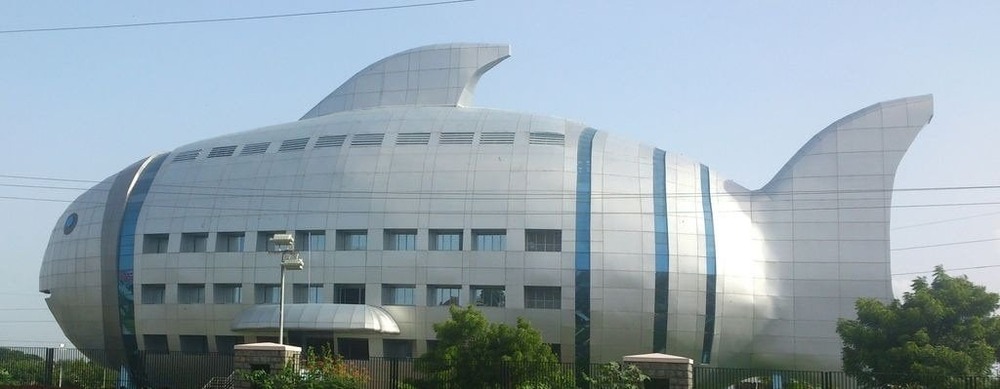
https://en.wikipedia.org/wiki/National_Fisheries_Development_Board_building
Spiny Norman said:
The National Fisheries Development Board is located in Hyderabad, India.
https://en.wikipedia.org/wiki/National_Fisheries_Development_Board_building
I wonder what they keep in the tail..
Spiny Norman said:
The National Fisheries Development Board is located in Hyderabad, India.
https://en.wikipedia.org/wiki/National_Fisheries_Development_Board_building
Talk about a fish out of water.
Arts said:
Spiny Norman said:
The National Fisheries Development Board is located in Hyderabad, India.
https://en.wikipedia.org/wiki/National_Fisheries_Development_Board_building
I wonder what they keep in the tail..
I really don’t think it is solar panels.
Arts said:
Spiny Norman said:
The National Fisheries Development Board is located in Hyderabad, India.
https://en.wikipedia.org/wiki/National_Fisheries_Development_Board_building
I wonder what they keep in the tail..
That’s where they hide their embarrassment…
Spiny Norman said:
The National Fisheries Development Board is located in Hyderabad, India.
https://en.wikipedia.org/wiki/National_Fisheries_Development_Board_building
Yeah, I’ll pay that. More interesting than a plain modernist block.
party_pants said:
Spiny Norman said:
The National Fisheries Development Board is located in Hyderabad, India.
https://en.wikipedia.org/wiki/National_Fisheries_Development_Board_building
Yeah, I’ll pay that. More interesting than a plain modernist block.
They should have made the tail flap.
How the CIA Secretly Spied On Climate Change.
https://www.youtube.com/watch?v=4-jNnr0zhFU
The start of the use of satellites to monitor changes on the Earth originated by someone I would not have guessed. They have gone up a notch in my mind for that. That is talked about around halfway through the video.
Spiny Norman said:
How the CIA Secretly Spied On Climate Change.https://www.youtube.com/watch?v=4-jNnr0zhFU
The start of the use of satellites to monitor changes on the Earth originated by someone I would not have guessed. They have gone up a notch in my mind for that. That is talked about around halfway through the video.
Did they then try to work out how to use it to overthrow the leader/government democratically elected by the people whose nation is compliant with USA requests and replace him with a dictator.
Cymek said:
Spiny Norman said:
How the CIA Secretly Spied On Climate Change.https://www.youtube.com/watch?v=4-jNnr0zhFU
The start of the use of satellites to monitor changes on the Earth originated by someone I would not have guessed. They have gone up a notch in my mind for that. That is talked about around halfway through the video.
Did they then try to work out how to use it to overthrow the leader/government democratically elected by the people whose nation isn’t compliant with USA requests and replace him with a dictator.
The most remarkable and advanced airliner ever made, the Concorde.
Spiny Norman said:
The most remarkable and advanced airliner ever made, the Concorde.
I saw a set of detailed photos of the Concorde cockpit.
Flight engineer’s station had four buttons labelled ‘REHEAT’.
An airliner with afterburners. I was sold.
captain_spalding said:
Spiny Norman said:
The most remarkable and advanced airliner ever made, the Concorde.I saw a set of detailed photos of the Concorde cockpit.
Flight engineer’s station had four buttons labelled ‘REHEAT’.
An airliner with afterburners. I was sold.
:)
captain_spalding said:
Spiny Norman said:
The most remarkable and advanced airliner ever made, the Concorde.I saw a set of detailed photos of the Concorde cockpit.
Flight engineer’s station had four buttons labelled ‘REHEAT’.
An airliner with afterburners. I was sold.
Everything is better with afterburners.
EVERYTHING.
Spiny Norman said:
captain_spalding said:
Spiny Norman said:
The most remarkable and advanced airliner ever made, the Concorde.I saw a set of detailed photos of the Concorde cockpit.
Flight engineer’s station had four buttons labelled ‘REHEAT’.
An airliner with afterburners. I was sold.
Everything is better with afterburners.
EVERYTHING.
Except food.
Spiny Norman said:
captain_spalding said:
Spiny Norman said:
The most remarkable and advanced airliner ever made, the Concorde.I saw a set of detailed photos of the Concorde cockpit.
Flight engineer’s station had four buttons labelled ‘REHEAT’.
An airliner with afterburners. I was sold.
Everything is better with afterburners.
EVERYTHING.
To a point.
As a bloke i knew put it, ‘sure, a Mirage can whiz past at Mach 2, but if he doesn’t get me on his first pass, then it’s always going to be a turning fight, and it’ll always be my A-4 that wins that’.
captain_spalding said:
Spiny Norman said:
captain_spalding said:I saw a set of detailed photos of the Concorde cockpit.
Flight engineer’s station had four buttons labelled ‘REHEAT’.
An airliner with afterburners. I was sold.
Everything is better with afterburners.
EVERYTHING.
To a point.
As a bloke i knew put it, ‘sure, a Mirage can whiz past at Mach 2, but if he doesn’t get me on his first pass, then it’s always going to be a turning fight, and it’ll always be my A-4 that wins that’.
Tamb said:
captain_spalding said:
Spiny Norman said:Everything is better with afterburners.
EVERYTHING.
To a point.
As a bloke i knew put it, ‘sure, a Mirage can whiz past at Mach 2, but if he doesn’t get me on his first pass, then it’s always going to be a turning fight, and it’ll always be my A-4 that wins that’.
The Mirage wouldn’t stick around if it missed on its first pass.
I think that a Mach 3 missile would have been dispatched to accompany him.
Tamb said:
Spiny Norman said:
captain_spalding said:I saw a set of detailed photos of the Concorde cockpit.
Flight engineer’s station had four buttons labelled ‘REHEAT’.
An airliner with afterburners. I was sold.
Everything is better with afterburners.
EVERYTHING.
Except food.
Oh, I don’t know. Chilli con carne, vindaloo curries, Christmas puddings come to mind immediately.
Michael V said:
Tamb said:
Spiny Norman said:Everything is better with afterburners.
EVERYTHING.
Except food.
Oh, I don’t know. Chilli con carne, vindaloo curries, Christmas puddings come to mind immediately.
Spicy Xmas pudding?
Michael V said:
Tamb said:
Spiny Norman said:Everything is better with afterburners.
EVERYTHING.
Except food.
Oh, I don’t know. Chilli con carne, vindaloo curries, Christmas puddings come to mind immediately.
Witty Rejoinder said:
Michael V said:
Tamb said:Except food.
Oh, I don’t know. Chilli con carne, vindaloo curries, Christmas puddings come to mind immediately.
Spicy Xmas pudding?
Brandy, poured over and lit up to serve.
Michael V said:
Witty Rejoinder said:
Michael V said:Oh, I don’t know. Chilli con carne, vindaloo curries, Christmas puddings come to mind immediately.
Spicy Xmas pudding?
Brandy, poured over and lit up to serve.
How spicy though? Comparable to a hot vindaloo?
Witty Rejoinder said:
Michael V said:
Witty Rejoinder said:Spicy Xmas pudding?
Brandy, poured over and lit up to serve.
How spicy though? Comparable to a hot vindaloo?
Sweet and Christmas pudding-y.
Rotomoulding large plastic tanks.
Spiny Norman said:
Rotomoulding large plastic tanks.
I have a 5000l one.
JudgeMental said:
Spiny Norman said:
Rotomoulding large plastic tanks.I have a 5000l one.
On one of the CAD courses I did at uni, we had to design a rotomoulded thing. I designed a large round hut that could be assembled with a few people in under and hour. Great fun!
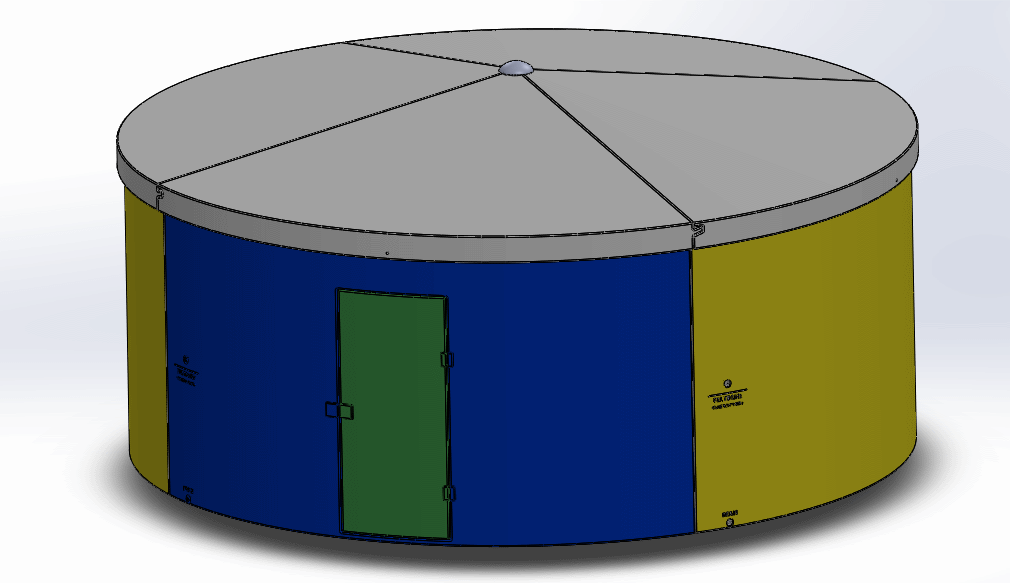
This would make such a mess of the carpet.
British Steel Mill Cobble.
JudgeMental said:
Spiny Norman said:
Rotomoulding large plastic tanks.I have a 5000l one.
My two rotomoulded tanks are 47300 & 5000 litres.

A great video on the very very small to the very very large.
Snuffing candles with CO2.
Astronomers ‘Puzzled’ by The Largest Cosmic Explosion We’ve Observed.
Astronomers said on Friday they have identified the “largest” cosmic explosion ever observed, a fireball 100 times the size of our Solar System that suddenly began blazing in the distant universe more than three years ago.
While the astronomers offered what they think is the most likely explanation for the explosion, they emphasized that more research was needed to understand the puzzling phenomenon.
The explosion, called AT2021lwx, is not the brightest flash ever observed in the universe. That record is still held by a gamma-ray burst in October that was nicknamed BOAT – for Brightest Of All Time.
Philip Wiseman, an astrophysicist at Britain’s University of Southampton and the lead author of a new study, said that AT2021lwx was considered the “largest” explosion because it had released far more energy over the last three years than was produced by BOAT’s brief flash.
https://www.sciencealert.com/astronomers-puzzled-by-the-largest-cosmic-explosion-weve-observed
6 June 1944. P-47 on Juno beach.

Spiny Norman said:
6 June 1944. P-47 on Juno beach.
And a busted DD Sherman.
captain_spalding said:
Spiny Norman said:
6 June 1944. P-47 on Juno beach.
And a busted DD Sherman.
Sure is. At least it made it to the beach instead of turning into a one-way submarine.
Spiny Norman said:
captain_spalding said:
Spiny Norman said:
6 June 1944. P-47 on Juno beach.
And a busted DD Sherman.
Sure is. At least it made it to the beach instead of turning into a one-way submarine.
The same stretch of beach today. You can easily locate the spot in the D-Day pic.
Apparently, the plane is P-47 Thunderbolt (42-76279) from 365th Fighter Bomber Group 386th Fighter Squadron U.S. Army Air Force, which was flown by 2nd Lt. John Weese (age 23). He was killed in the attempted landing,
6 June 1944. Operation Neptune, Captain Thomas Francis Mantell, Jr., His Douglas C-47 Skytrain (6Z), glider tug, `Vulture’s Delight’, 96th Troop Carrier Squadron, was hit by flak. He successfully completed his mission, returned to England and was awarded the DFC.

Just a bit of a mess there, I’m amazed that it could still fly.
The Spool Paradox.
Spiny Norman said:
The Spool Paradox.
I was just thinking OK, but it’s not a paradox, then I scrolled down and read the guy’s response to my thoughts :)
How did he do that?
It’s a paradox!
A composite photo of a morning and afternoon from the Curiosity rover on Mars.

The chances of finding life on Enceladus has increased a notch.
mashable.com/article/enceladus-saturn-moon-ocean-discovery-habitable
Spiny Norman said:
A composite photo of a morning and afternoon from the Curiosity rover on Mars.
Looks cold.
I use a petrol price app called PetrolSpy. I just found it interesting the difference between the price cycles of the major cities.







Spiny Norman said:
I use a petrol price app called PetrolSpy. I just found it interesting the difference between the price cycles of the major cities.
Perth prices follow a very clear weekly trend
Quite a remarkable survival story.
Surviving a power line strike in a Sabre!
Spiny Norman said:
Quite a remarkable survival story.Surviving a power line strike in a Sabre!
Indeed.
roughbarked said:
Spiny Norman said:
Quite a remarkable survival story.Surviving a power line strike in a Sabre!
Indeed.
They built ‘em tough.
captain_spalding said:
roughbarked said:
Spiny Norman said:
Quite a remarkable survival story.Surviving a power line strike in a Sabre!
Indeed.
They built ‘em tough.
It was only copper and it was hit at a fair rate of knots. it was more about the wire breaking that saved the aircrafft from more severe damage. That it was only a single wire also was an obvious advantage.
roughbarked said:
captain_spalding said:
roughbarked said:Indeed.
They built ‘em tough.
It was only copper and it was hit at a fair rate of knots. it was more about the wire breaking that saved the aircrafft from more severe damage. That it was only a single wire also was an obvious advantage.
I think there was two wires.
One cut the air intake, the second scraped the cockpit and cut the tail.
roughbarked said:
captain_spalding said:
roughbarked said:Indeed.
They built ‘em tough.
It was only copper and it was hit at a fair rate of knots. it was more about the wire breaking that saved the aircrafft from more severe damage. That it was only a single wire also was an obvious advantage.
The second wire was deflected partly and the first was broken before the second hit the tail.
All around it was an extremely lucky event for one that could have been a lot worse..
captain_spalding said:
roughbarked said:
captain_spalding said:They built ‘em tough.
It was only copper and it was hit at a fair rate of knots. it was more about the wire breaking that saved the aircrafft from more severe damage. That it was only a single wire also was an obvious advantage.
I think there was two wires.
One cut the air intake, the second scraped the cockpit and cut the tail.
Yeah. I remembered to put that in my next post.
I’ve heard/seen discussions about whether the Australian or the Canadian Sabres were the best of the variants.
While both have been pronounced as superior to the North American-made Sabres, some say that the Canadian Sabre, with its Orenda turbojet, was the better plane, but other say that the Australians jets’ Avon engine was at least as good, and its two 30mm cannon gave it punch that the Canadian jets’ six .50-cal machine guns could not match.
captain_spalding said:
I’ve heard/seen discussions about whether the Australian or the Canadian Sabres were the best of the variants.While both have been pronounced as superior to the North American-made Sabres, some say that the Canadian Sabre, with its Orenda turbojet, was the better plane, but other say that the Australians jets’ Avon engine was at least as good, and its two 30mm cannon gave it punch that the Canadian jets’ six .50-cal machine guns could not match.
Sounds right.
roughbarked said:
captain_spalding said:
I’ve heard/seen discussions about whether the Australian or the Canadian Sabres were the best of the variants.While both have been pronounced as superior to the North American-made Sabres, some say that the Canadian Sabre, with its Orenda turbojet, was the better plane, but other say that the Australians jets’ Avon engine was at least as good, and its two 30mm cannon gave it punch that the Canadian jets’ six .50-cal machine guns could not match.
Sounds right.
Lt Roberts in his ‘modified’ TBM Avenger!
Flak blew off his port outer wing, causing him to collide with another TBM (which spun in), see rear fuselage! His crew baled out and were made Japanese POWs, but Roberts made it home to ditch near a US Navy destroyer and was rescued.

Spiny Norman said:
Lt Roberts in his ‘modified’ TBM Avenger!
Flak blew off his port outer wing, causing him to collide with another TBM (which spun in), see rear fuselage! His crew baled out and were made Japanese POWs, but Roberts made it home to ditch near a US Navy destroyer and was rescued.
The Grumman firm was popularly known as ‘The Ironworks’, and the sturdiness of its products is the obvious source of the nickname.
They built the lunar landers for the Apollo moon flights. The machinery just HAD to work, so they got Grumman to do it.

“Wow. This is a Russian helicopter reportedly being engaged by Wagner with a Strella SAM. A great demo of how rapid manoeuvres and flares combines can save your ass. Very close call. Don’t think I’ve ever seen a video of anything like this.”
“In one of the most notable moments in sports history, Kenyan runner Abel Mutai was just a few feet from the finish line, but became confused with the signage and stopped thinking he had completed the race.
A Spanish athlete, Ivan Fernandez, was right behind him, and after realizing what was happening, he started shouting at the Kenyan for him to continue running; but Mutai didn’t understand his Spanish.
Fernandez eventually caught up to him and instead of passing him, he pushed him to victory.
A journalist asked Ivan, “Why did you do that?”
Ivan replied, “My dream is that someday we can have a kind of community life where we push and help each other to win.” The journalist insisted “But why did you let the Kenyan win?” Ivan replied, “I didn’t let him win, he was going to win.” The journalist insisted again, “But you could have won!”Ivan looked at him & replied, “But what would be the merit of my victory? What would be the honor of that medal?
What would my Mom think of that?”
Values are transmitted from generation to generation.
What values are we teaching our children?
Let us not teach our kids the wrong ways to WIN.”
My fave cold war interceptor, the English Electric Lightning.

Spiny Norman said:
“Wow. This is a Russian helicopter reportedly being engaged by Wagner with a Strella SAM. A great demo of how rapid manoeuvres and flares combines can save your ass. Very close call. Don’t think I’ve ever seen a video of anything like this.”
In that video clip I see flares deployed and a missile leaving the helicopter.
I don’t see any incoming missile?
Spiny Norman said:
“In one of the most notable moments in sports history, Kenyan runner Abel Mutai was just a few feet from the finish line, but became confused with the signage and stopped thinking he had completed the race.A Spanish athlete, Ivan Fernandez, was right behind him, and after realizing what was happening, he started shouting at the Kenyan for him to continue running; but Mutai didn’t understand his Spanish.
Fernandez eventually caught up to him and instead of passing him, he pushed him to victory.
A journalist asked Ivan, “Why did you do that?”
Ivan replied, “My dream is that someday we can have a kind of community life where we push and help each other to win.” The journalist insisted “But why did you let the Kenyan win?” Ivan replied, “I didn’t let him win, he was going to win.” The journalist insisted again, “But you could have won!”Ivan looked at him & replied, “But what would be the merit of my victory? What would be the honor of that medal?
What would my Mom think of that?”Values are transmitted from generation to generation.
What values are we teaching our children?
Let us not teach our kids the wrong ways to WIN.”
Interesting. Very interesting.
Peak Warming Man said:
Spiny Norman said:
“Wow. This is a Russian helicopter reportedly being engaged by Wagner with a Strella SAM. A great demo of how rapid manoeuvres and flares combines can save your ass. Very close call. Don’t think I’ve ever seen a video of anything like this.”In that video clip I see flares deployed and a missile leaving the helicopter.
I don’t see any incoming missile?
Tthe flares are put out before the missile arrives and it then follows them and indeed misses its original target which was indeed the helicopter. Pause it and you’ll see where the missile comes from.
Spiny Norman said:
My fave cold war interceptor, the English Electric Lightning.
Peak Warming Man said:
Spiny Norman said:
“Wow. This is a Russian helicopter reportedly being engaged by Wagner with a Strella SAM. A great demo of how rapid manoeuvres and flares combines can save your ass. Very close call. Don’t think I’ve ever seen a video of anything like this.”In that video clip I see flares deployed and a missile leaving the helicopter.
I don’t see any incoming missile?
That missile isn’t from the helicopter, it was attacking it and the flares saved them.
Spiny Norman said:
My fave cold war interceptor, the English Electric Lightning.
Was it you who posted that quote from someone who was making their first flight in a Lightning? Something like:
‘I thought i was doing pretty well, managing it ok.
Then the brakes came off…’
Spiny Norman said:
Peak Warming Man said:
Spiny Norman said:
“Wow. This is a Russian helicopter reportedly being engaged by Wagner with a Strella SAM. A great demo of how rapid manoeuvres and flares combines can save your ass. Very close call. Don’t think I’ve ever seen a video of anything like this.”In that video clip I see flares deployed and a missile leaving the helicopter.
I don’t see any incoming missile?
That missile isn’t from the helicopter, it was attacking it and the flares saved them.
This.
captain_spalding said:
Spiny Norman said:
My fave cold war interceptor, the English Electric Lightning.
Was it you who posted that quote from someone who was making their first flight in a Lightning? Something like:
‘I thought i was doing pretty well, managing it ok.
Then the brakes came off…’
Don’t think it ever fired a shot in anger.
captain_spalding said:
Spiny Norman said:
My fave cold war interceptor, the English Electric Lightning.
Was it you who posted that quote from someone who was making their first flight in a Lightning? Something like:
‘I thought i was doing pretty well, managing it ok.
Then the brakes came off…’
Peak Warming Man said:
captain_spalding said:
Spiny Norman said:
My fave cold war interceptor, the English Electric Lightning.
Was it you who posted that quote from someone who was making their first flight in a Lightning? Something like:
‘I thought i was doing pretty well, managing it ok.
Then the brakes came off…’
Don’t think it ever fired a shot in anger.
Fortunately not.
Peak Warming Man said:
Spiny Norman said:
“Wow. This is a Russian helicopter reportedly being engaged by Wagner with a Strella SAM. A great demo of how rapid manoeuvres and flares combines can save your ass. Very close call. Don’t think I’ve ever seen a video of anything like this.”In that video clip I see flares deployed and a missile leaving the helicopter.
I don’t see any incoming missile?
You havevto look closely, and it may take a couple of viewings, but you can see the missile’s trail coming in from astern of the helicopter.
Spiny Norman said:
Peak Warming Man said:
captain_spalding said:Was it you who posted that quote from someone who was making their first flight in a Lightning? Something like:
‘I thought i was doing pretty well, managing it ok.
Then the brakes came off…’
Don’t think it ever fired a shot in anger.
Fortunately not.
which was lucky for the people it didn’t fire at.
25 June 1944. Boeing B-17G-35VE bomber (42-97890) “Queen of Hearts” (“Lil`Satan”) from 524th bomber squadron of the 379th bomber group, 8th USAF after return from an air raid. Flak killed bomb aimer, navigator bailed & died in German hospital. Tail gunner bailed and became POW.


Spiny Norman said:
25 June 1944. Boeing B-17G-35VE bomber (42-97890) “Queen of Hearts” (“Lil`Satan”) from 524th bomber squadron of the 379th bomber group, 8th USAF after return from an air raid. Flak killed bomb aimer, navigator bailed & died in German hospital. Tail gunner bailed and became POW.
It was built by Vega Aircraft at Burbank, California. One of 500 B-17Fs and 2,250 B-17Gs built there. Vega made the last B-17 built, in August 1945.
From Lab to Table: I Tasted the World’s First Cultivated Meat!
I hope this really takes off.
Yet another good video on the catastrophic failure of the Titan submarine.
Spiny Norman said:
Yet another good video on the catastrophic failure of the Titan submarine.
Mythbusters last night had the implosion of the rail road carriage using a vacuum pump, impressive
Spiny Norman said:
Yet another good video on the catastrophic failure of the Titan submarine.
I’m still thinking
Stupidity
Insurance scam
Murder suicide
wookiemeister said:
Spiny Norman said:
Yet another good video on the catastrophic failure of the Titan submarine.
When discovered the thing was made from carbon fibre I was fairly sure what had happenedI’m still thinking
Stupidity
Insurance scam
Murder suicide
Arrogance and incompetence
Cymek said:
wookiemeister said:
Spiny Norman said:
Yet another good video on the catastrophic failure of the Titan submarine.
When discovered the thing was made from carbon fibre I was fairly sure what had happenedI’m still thinking
Stupidity
Insurance scam
Murder suicide
Arrogance and incompetence
Probably a combination of two or more of the above.
captain_spalding said:
Cymek said:
wookiemeister said:When discovered the thing was made from carbon fibre I was fairly sure what had happened
I’m still thinking
Stupidity
Insurance scam
Murder suicide
Arrogance and incompetence
Probably a combination of two or more of the above.
Can understand wanting to try a different design and construction method, but not on the cheap and following safety procedures.
That deep in the ocean could humans actually do much down there, mining for example would it be economically feasible and practical
captain_spalding said:
Cymek said:
wookiemeister said:When discovered the thing was made from carbon fibre I was fairly sure what had happened
I’m still thinking
Stupidity
Insurance scam
Murder suicide
Arrogance and incompetence
Probably a combination of two or more of the above.
Insurance scam? how would that work?
Peak Warming Man said:
captain_spalding said:
Cymek said:Arrogance and incompetence
Probably a combination of two or more of the above.
Insurance scam? how would that work?
Life insurance.
Peak Warming Man said:
captain_spalding said:
Cymek said:Arrogance and incompetence
Probably a combination of two or more of the above.
Insurance scam? how would that work?
Family in financial difficulty? Or, got some reason to think you won’t be around to provide for them in the future?
Get insured for squillions, then die in an ‘accident’ at the bottom of the sea.
captain_spalding said:
Peak Warming Man said:
captain_spalding said:Probably a combination of two or more of the above.
Insurance scam? how would that work?
Family in financial difficulty? Or, got some reason to think you won’t be around to provide for them in the future?
Get insured for squillions, then die in an ‘accident’ at the bottom of the sea.
Sorry “We cover explosion, but not implosion”
Cymek said:
captain_spalding said:
Peak Warming Man said:Insurance scam? how would that work?
Family in financial difficulty? Or, got some reason to think you won’t be around to provide for them in the future?
Get insured for squillions, then die in an ‘accident’ at the bottom of the sea.
Sorry “We cover explosion, but not implosion”
I wouldn’t doubt that they’d try it on.
Peak Warming Man said:
captain_spalding said:
Cymek said:Arrogance and incompetence
Probably a combination of two or more of the above.
Insurance scam? how would that work?
And by letting down his guard PWM fell into the Wookieverse…
Witty Rejoinder said:
Peak Warming Man said:
captain_spalding said:Probably a combination of two or more of the above.
Insurance scam? how would that work?
And by letting down his guard PWM fell into the Wookieverse…
LOLOL
Cymek said:
wookiemeister said:
Spiny Norman said:
Yet another good video on the catastrophic failure of the Titan submarine.
When discovered the thing was made from carbon fibre I was fairly sure what had happenedI’m still thinking
Stupidity
Insurance scam
Murder suicide
Arrogance and incompetence
yes. Did his own research.
4 July 1983. Launch of BOR-5, Russian space vehicle from Kapustin Yar LC107/1. 1:8 Buran model designed to test the main aerodynamic characteristics, thermal and acoustic loads and stability for the Shuttle Buran program.

‘Oumuamua Is Not the Only Object Inexplicably Accelerating.
Kontayner – Russia’s BIGGER & BETTER Over The Horizon RADAR.
Spiny Norman said:
Kontayner – Russia’s BIGGER & BETTER Over The Horizon RADAR.
Number stations
What Happens if You’re Hit by Sonar?
Groundbreaking research transmits energy from space to Earth.
I’m dubious, but here’s the article. Good to see that they’re putting their money into it at least.
‘An Alternative Theory of Inertia will Get Tested in Space.’
The Rev may find this of interest.
Compliant Mechanisms that LEARN! – Mechanical Neural Network Architected Materials.
When the fighter pilot will NOT take no for an answer.

Singlet Oxygen Is Scary!
Oh this is just lovely. :(
Ice core from secret US Army base reveals dramatic historical Greenland ice-sheet melting.
Spiny Norman said:
Oh this is just lovely. :(Ice core from secret US Army base reveals dramatic historical Greenland ice-sheet melting.
That is another very big nail in our coffin. Below the last part of the article.
>>What this study shows, Dr Noble says, is we’ve already got the conditions for the Greenland ice sheet to melt, but the time frame is the million dollar question.
“Basically, the ice sheets haven’t had time to catch up with the amount of warming that’s present in the atmosphere and the oceans,” she said.
“And that’s what I guess is hard for people to comprehend, that we’ve actually locked ourselves in for thousands of years of warming and sea level rise.
“Even if humans make sacrifices and societies change rapidly, there’s still this inertia in the whole Earth system.”
If the entire Greenland ice sheet went, enough water would be released to put most of the world’s major cities underwater, she said.
The only thing that could buy us more time, Professor Bierman added, was to get greenhouse gas emissions down.
“There’s a fantastic paper that came out of Oregon about 10 years ago, that basically said the next hundred years of policy is going to decide the next 10,000 years of Earth’s history,” he said.
“Basically what it means is if we don’t get our act together and not only cut carbon emissions, but bring the atmospheric levels of carbon dioxide back down, these ice sheets are in trouble.”<<
Everything is melting.
Damn war …. :(
26 July 1945. The HMS Sussex Task Force was intercepted by two attack bombers acting as kamikaze suicide weapons. One made an imprint on the side of Sussex, from which it could be identified as a Mitsubishi Ki-51 “Sonia”.


Spiny Norman said:
Damn war …. :(26 July 1945. The HMS Sussex Task Force was intercepted by two attack bombers acting as kamikaze suicide weapons. One made an imprint on the side of Sussex, from which it could be identified as a Mitsubishi Ki-51 “Sonia”.
wHere Are tHe WinGS????!!!!!
Spiny Norman said:
Damn war …. :(26 July 1945. The HMS Sussex Task Force was intercepted by two attack bombers acting as kamikaze suicide weapons. One made an imprint on the side of Sussex, from which it could be identified as a Mitsubishi Ki-51 “Sonia”.
Sure made a mess of the pilot.
Arts said:
Spiny Norman said:
Damn war …. :(26 July 1945. The HMS Sussex Task Force was intercepted by two attack bombers acting as kamikaze suicide weapons. One made an imprint on the side of Sussex, from which it could be identified as a Mitsubishi Ki-51 “Sonia”.
wHere Are tHe WinGS????!!!!!
they are but a shadow of their former selves.
Spiny Norman said:
Damn war …. :(26 July 1945. The HMS Sussex Task Force was intercepted by two attack bombers acting as kamikaze suicide weapons. One made an imprint on the side of Sussex, from which it could be identified as a Mitsubishi Ki-51 “Sonia”.
Interesting images, nonetheless.
How Does The Anti-Gravity Wheel Work?
The First Room-Temperature Ambient-Pressure Superconductor.
(I hope!)
The Bristol Brabazon, seen undergoing flight testing in the early 1950s. It looks as underpowered as it was in this image, the but tiny nacelles only hide propeller driveshafts, its eight (piston) Bristol Centaurus engines were buried inside the wings.




You might like this, Mr Norman.
Did Australia invent the world’s best fighter jet?
https://www.youtube.com/watch?v=OjiqdSwMxT8
In this video, we’ll take you on a journey through the CA-23’s development process, showcasing its sleek design, powerful engine, and impressive capabilities that made it a force to be reckoned with in the skies. From its maiden flight to its operational history, we’ll uncover the pivotal role the CA-23 played in the Royal Australian Air Force (RAAF) and its impact on aviation enthusiasts worldwide.

esselte said:
You might like this, Mr Norman.Did Australia invent the world’s best fighter jet?
https://www.youtube.com/watch?v=OjiqdSwMxT8
In this video, we’ll take you on a journey through the CA-23’s development process, showcasing its sleek design, powerful engine, and impressive capabilities that made it a force to be reckoned with in the skies. From its maiden flight to its operational history, we’ll uncover the pivotal role the CA-23 played in the Royal Australian Air Force (RAAF) and its impact on aviation enthusiasts worldwide.
A rather odd-looking beast! I’ve not heard of that one before, I’ll check out later, thanks.
Spiny Norman said:
esselte said:
You might like this, Mr Norman.Did Australia invent the world’s best fighter jet?
https://www.youtube.com/watch?v=OjiqdSwMxT8
In this video, we’ll take you on a journey through the CA-23’s development process, showcasing its sleek design, powerful engine, and impressive capabilities that made it a force to be reckoned with in the skies. From its maiden flight to its operational history, we’ll uncover the pivotal role the CA-23 played in the Royal Australian Air Force (RAAF) and its impact on aviation enthusiasts worldwide.
A rather odd-looking beast! I’ve not heard of that one before, I’ll check out later, thanks.
Yeah. ta.
Cymek said:
roughbarked said:
Cymek said:
esselte said:
Spiny Norman said:
The First Room-Temperature Ambient-Pressure Superconductor.
(I hope!)Big if true..
I was reading that earlier, exciting if true
Well we have to see it work yet.
Yes
Don’t worry all we need to do is fuck up global warming so room temperature isn’t at its operating temperature any more and then it can fail like all the others¡
SCIENCE said:
Cymek said:
roughbarked said:
Well we have to see it work yet.
Yes
Don’t worry all we need to do is fuck up global warming so room temperature isn’t at its operating temperature any more and then it can fail like all the others¡
I’ll probably end up like Randy Meisner died Wednesday night in Los Angeles of complications from chronic obstructive pulmonary disease, the Eagles said in a statement. He was 77. Ex founding member of the Eagles.
I have COPD too.
SCIENCE said:
Cymek said:
roughbarked said:
Well we have to see it work yet.
Yes
Don’t worry all we need to do is fuck up global warming so room temperature isn’t at its operating temperature any more and then it can fail like all the others¡
It would be nice if humanity had a win and it improved life for most (some already have it sweet)
Cymek said:
SCIENCE said:
Cymek said:
Yes
Don’t worry all we need to do is fuck up global warming so room temperature isn’t at its operating temperature any more and then it can fail like all the others¡
It would be nice if humanity had a win and it improved life for most (some already have it sweet)
Sure. Who has the rights to this supposed high temperature superconductor¿
Massive eruption in Johannesburg sends cars flying.
Quite startling!!
Spiny Norman said:
Massive eruption in Johannesburg sends cars flying.Quite startling!!
Wow! That’s not something you see every day. But why are there so many vans?
Spiny Norman said:
Massive eruption in Johannesburg sends cars flying.Quite startling!!
Gosh!
esselte said:
Spiny Norman said:
Massive eruption in Johannesburg sends cars flying.Quite startling!!
Wow! That’s not something you see every day. But why are there so many vans?
Probably taxis (or similar).
Michael V said:
esselte said:
Spiny Norman said:
Massive eruption in Johannesburg sends cars flying.Quite startling!!
Wow! That’s not something you see every day. But why are there so many vans?
Probably taxis (or similar).
I wonder where this fellow ended up.

Michael V said:
esselte said:
Spiny Norman said:
Massive eruption in Johannesburg sends cars flying.Quite startling!!
Wow! That’s not something you see every day. But why are there so many vans?
Probably taxis (or similar).
https://en.wikipedia.org/wiki/Share_taxi
Michael V said:
Michael V said:
esselte said:Wow! That’s not something you see every day. But why are there so many vans?
Probably taxis (or similar).
https://en.wikipedia.org/wiki/Share_taxi
Thanks <thumbsup></thumbsup>
esselte said:
Michael V said:
esselte said:Wow! That’s not something you see every day. But why are there so many vans?
Probably taxis (or similar).
I wonder where this fellow ended up.
I think he may have been tossed onto the footpath. Difficult to tell,
esselte said:
Michael V said:
esselte said:Wow! That’s not something you see every day. But why are there so many vans?
Probably taxis (or similar).
I wonder where this fellow ended up.
Somebody appears to stand up and walk towards the footpath near that location.
If you pause the video, you can then use the comma key to go back one frame at a time, and the full stop key to go forward one frame at a time.
Michael V said:
esselte said:
Michael V said:Probably taxis (or similar).
I wonder where this fellow ended up.
Somebody appears to stand up and walk towards the footpath near that location.
If you pause the video, you can then use the comma key to go back one frame at a time, and the full stop key to go forward one frame at a time.
Yet another little utube trick I didn’t know until just now.
esselte said:
Michael V said:
Michael V said:Probably taxis (or similar).
https://en.wikipedia.org/wiki/Share_taxi
Thanks <thumbsup>
</thumbsup>

The Rev Dodgson said:
Michael V said:
esselte said:I wonder where this fellow ended up.
Somebody appears to stand up and walk towards the footpath near that location.
If you pause the video, you can then use the comma key to go back one frame at a time, and the full stop key to go forward one frame at a time.
Yet another little utube trick I didn’t know until just now.
:)
fsm said:
esselte said:
Michael V said:https://en.wikipedia.org/wiki/Share_taxi
Thanks <thumbsup>
</thumbsup>
:)
Michael V said:
fsm said:
esselte said:
Thanks <thumbsup>
</thumbsup>
:)
👍👍
Alternatively and historically, (y) for which the thumbs down was (λ).
So what caused it anyway¿
SCIENCE said:
Michael V said:
fsm said:
:)
👍👍
Alternatively and historically, (y) for which the thumbs down was (λ).
Why introduce thumbs when eyes and nose are perfectly adequate for the job?
SCIENCE said:
So what caused it anyway¿
Build up of gas.
roughbarked said:
SCIENCE said:
So what caused it anyway¿
Build up of gas.
Yeah but which gas, from what source¿
The Rev Dodgson said:
SCIENCE said:
Michael V said:
:)
👍👍
Alternatively and historically, (y) for which the thumbs down was (λ).
Why introduce thumbs when eyes and nose are perfectly adequate for the job?
Maybe those who write too much prose get prosopagnosia.
SCIENCE said:
roughbarked said:
SCIENCE said:
So what caused it anyway¿
Build up of gas.
Yeah but which gas, from what source¿
Sewer.
roughbarked said:
SCIENCE said:
roughbarked said:
Build up of gas.
Yeah but which gas, from what source¿
Sewer.
Ah.
How are these prevented in Australian cities¿ Or should we be wary of parking our van on the roads here¿
SCIENCE said:
roughbarked said:
SCIENCE said:
Yeah but which gas, from what source¿
Sewer.
Ah.
How are these prevented in Australian cities¿ Or should we be wary of parking our van on the roads here¿
The riser pipe (stink pipe) at each house vents methane from the sewage system. I don’t know whether that is the main preventative although I imagine it’s substantial.
esselte said:
Spiny Norman said:
Massive eruption in Johannesburg sends cars flying.Quite startling!!
Wow! That’s not something you see every day. But why are there so many vans?
Lot of dutch people I guess.
ChrispenEvan said:
esselte said:
Spiny Norman said:
Massive eruption in Johannesburg sends cars flying.Quite startling!!
Wow! That’s not something you see every day. But why are there so many vans?
Lot of dutch people I guess.
Do they pass on the left hand side
ChrispenEvan said:
esselte said:
Spiny Norman said:
Massive eruption in Johannesburg sends cars flying.Quite startling!!
Wow! That’s not something you see every day. But why are there so many vans?
Lot of dutch people I guess.
But they are Van Stopped, not Van Gogh.
The Rev Dodgson said:
ChrispenEvan said:
esselte said:Wow! That’s not something you see every day. But why are there so many vans?
Lot of dutch people I guess.
But they are Van Stopped, not Van Gogh.
Dear oh dear.
Peak Warming Man said:
The Rev Dodgson said:
ChrispenEvan said:Lot of dutch people I guess.
But they are Van Stopped, not Van Gogh.
Dear oh dear.
My apologies for encouraging the follow up jokes.
Peak Warming Man said:
The Rev Dodgson said:
ChrispenEvan said:Lot of dutch people I guess.
But they are Van Stopped, not Van Gogh.
Dear oh dear.
Probably because they didn’t have the Monet to make the Van Gogh.
I have a fascination and equally a horror of nuclear weapons. As many people know the Soviet Tzar Bomba was the most powerful ever tested. The scientists & engineers decided to reduce the maximum yield by about 50%, by using non-fissile materials in the 3rd stage.
Even when only exploding at half its maximum power, the stats are terrifying.
- The flare was visible at a distance of more than 1,000 km (620 mi). It was observed in Norway, Greenland and Alaska.
- The explosion’s nuclear mushroom rose to a height of 67 km (42 mi). The shape of the “hat” was two-tiered; the diameter of the upper tier was estimated at 95 km (59 mi), the lower tier at 70 km (43 mi). The cloud was observed 800 km (500 mi) from the explosion site.
- The blast wave circled the globe three times, with the first one taking 36 hours and 27 minutes.
- A seismic wave in the earth’s crust, generated by the shock wave of the explosion, circled the globe three times.
- The atmospheric pressure wave resulting from the explosion was recorded three times in New Zealand: the station in Wellington recorded an increase in pressure at 21:57, on – October 30, coming from the north-west, at 07:17 on October 31, from the southeast, and at 09:16, on November 1, from the northwest (all GMT time), with amplitudes of 0.6 mbar (0.60 hPa), 0.4 mbar (0.40 hPa), and 0.2 mbar (0.20 hPa). Respectively, the average wave speed is estimated at 303 m/s (990 ft/s), or 9.9 degrees of the great circle per hour.
- Glass shattered in windows 780 km (480 mi) from the explosion in a village on Dikson Island.
- The sound wave generated by the explosion reached Dikson Island, but there are no reports of destruction or damage to structures even in the urban-type settlement of Amderma, which is much closer (280 km (170 mi)) to the landfall.
- Ionization of the atmosphere caused interference to radio communications even hundreds of kilometers from the test site for about 40 minutes.
-Radioactive contamination of the experimental field with a radius of 2–3 km (1.2–1.9 mi) in the epicenter area was no more than 1 milliroentgen / hour. The testers appeared at the explosion site 2 hours later; radioactive contamination posed practically no danger to the test participants.
- All buildings in the village of Severny, both wooden and brick, located 55 km (34 mi) from ground zero within the Sukhoy Nos test range, were destroyed. In districts hundreds of kilometres from ground zero, wooden houses were destroyed; stone ones lost their roofs, windows, and doors; and radio communications were interrupted for almost one hour.
- One participant in the test saw a bright flash through dark goggles and felt the effects of a thermal pulse even at a distance of 270 km (170 mi). The heat from the explosion could have caused third-degree burns 100 km (62 mi) away from ground zero. A shock wave was observed in the air at Dikson settlement 700 km (430 mi) away; windowpanes were partially broken for distances up to 900 kilometres (560 mi). Atmospheric focusing caused blast damage at even greater distances, breaking windows in Norway and Finland.
- Despite being detonated 4.2 km (3 mi) above ground, its seismic body wave magnitude was estimated at 5.0–5.25.
https://en.wikipedia.org/wiki/Tsar_Bomba
There is still occasional research being done on bombs in the gigatonne range. Fortunately the intent is to destroy incoming asteroids.
(I hope)
Spiny Norman said:
I have a fascination and equally a horror of nuclear weapons. As many people know the Soviet Tzar Bomba was the most powerful ever tested. The scientists & engineers decided to reduce the maximum yield by about 50%, by using non-fissile materials in the 3rd stage.
Even when only exploding at half its maximum power, the stats are terrifying.- The flare was visible at a distance of more than 1,000 km (620 mi). It was observed in Norway, Greenland and Alaska.
- The explosion’s nuclear mushroom rose to a height of 67 km (42 mi). The shape of the “hat” was two-tiered; the diameter of the upper tier was estimated at 95 km (59 mi), the lower tier at 70 km (43 mi). The cloud was observed 800 km (500 mi) from the explosion site.
- The blast wave circled the globe three times, with the first one taking 36 hours and 27 minutes.
- A seismic wave in the earth’s crust, generated by the shock wave of the explosion, circled the globe three times.
- The atmospheric pressure wave resulting from the explosion was recorded three times in New Zealand: the station in Wellington recorded an increase in pressure at 21:57, on – October 30, coming from the north-west, at 07:17 on October 31, from the southeast, and at 09:16, on November 1, from the northwest (all GMT time), with amplitudes of 0.6 mbar (0.60 hPa), 0.4 mbar (0.40 hPa), and 0.2 mbar (0.20 hPa). Respectively, the average wave speed is estimated at 303 m/s (990 ft/s), or 9.9 degrees of the great circle per hour.
- Glass shattered in windows 780 km (480 mi) from the explosion in a village on Dikson Island.
- The sound wave generated by the explosion reached Dikson Island, but there are no reports of destruction or damage to structures even in the urban-type settlement of Amderma, which is much closer (280 km (170 mi)) to the landfall.
- Ionization of the atmosphere caused interference to radio communications even hundreds of kilometers from the test site for about 40 minutes.
-Radioactive contamination of the experimental field with a radius of 2–3 km (1.2–1.9 mi) in the epicenter area was no more than 1 milliroentgen / hour. The testers appeared at the explosion site 2 hours later; radioactive contamination posed practically no danger to the test participants.
- All buildings in the village of Severny, both wooden and brick, located 55 km (34 mi) from ground zero within the Sukhoy Nos test range, were destroyed. In districts hundreds of kilometres from ground zero, wooden houses were destroyed; stone ones lost their roofs, windows, and doors; and radio communications were interrupted for almost one hour.
- One participant in the test saw a bright flash through dark goggles and felt the effects of a thermal pulse even at a distance of 270 km (170 mi). The heat from the explosion could have caused third-degree burns 100 km (62 mi) away from ground zero. A shock wave was observed in the air at Dikson settlement 700 km (430 mi) away; windowpanes were partially broken for distances up to 900 kilometres (560 mi). Atmospheric focusing caused blast damage at even greater distances, breaking windows in Norway and Finland.
- Despite being detonated 4.2 km (3 mi) above ground, its seismic body wave magnitude was estimated at 5.0–5.25.
https://en.wikipedia.org/wiki/Tsar_Bomba
There is still occasional research being done on bombs in the gigatonne range. Fortunately the intent is to destroy incoming asteroids.
(I hope)
Probly a good thing they decided against testing the 100 megaton version.
Hyperbolic rotations of spacetime.
What is a Lorentz transformation? How do we turn within space-time? Why is the speed of light invariant? All these answers in 15 minutes!
Spiny Norman said:
Hyperbolic rotations of spacetime.What is a Lorentz transformation? How do we turn within space-time? Why is the speed of light invariant? All these answers in 15 minutes!
Thanks for that Bill, very good.
Spiny Norman said:
Hyperbolic rotations of spacetime.What is a Lorentz transformation? How do we turn within space-time? Why is the speed of light invariant? All these answers in 15 minutes!
Nice and simple. physics is weird though.
Spiny Norman said:
I have a fascination and equally a horror of nuclear weapons. As many people know the Soviet Tzar Bomba was the most powerful ever tested. The scientists & engineers decided to reduce the maximum yield by about 50%, by using non-fissile materials in the 3rd stage.
Even when only exploding at half its maximum power, the stats are terrifying.- The flare was visible at a distance of more than 1,000 km (620 mi). It was observed in Norway, Greenland and Alaska.
- The explosion’s nuclear mushroom rose to a height of 67 km (42 mi). The shape of the “hat” was two-tiered; the diameter of the upper tier was estimated at 95 km (59 mi), the lower tier at 70 km (43 mi). The cloud was observed 800 km (500 mi) from the explosion site.
- The blast wave circled the globe three times, with the first one taking 36 hours and 27 minutes.
- A seismic wave in the earth’s crust, generated by the shock wave of the explosion, circled the globe three times.
- The atmospheric pressure wave resulting from the explosion was recorded three times in New Zealand: the station in Wellington recorded an increase in pressure at 21:57, on – October 30, coming from the north-west, at 07:17 on October 31, from the southeast, and at 09:16, on November 1, from the northwest (all GMT time), with amplitudes of 0.6 mbar (0.60 hPa), 0.4 mbar (0.40 hPa), and 0.2 mbar (0.20 hPa). Respectively, the average wave speed is estimated at 303 m/s (990 ft/s), or 9.9 degrees of the great circle per hour.
- Glass shattered in windows 780 km (480 mi) from the explosion in a village on Dikson Island.
- The sound wave generated by the explosion reached Dikson Island, but there are no reports of destruction or damage to structures even in the urban-type settlement of Amderma, which is much closer (280 km (170 mi)) to the landfall.
- Ionization of the atmosphere caused interference to radio communications even hundreds of kilometers from the test site for about 40 minutes.
-Radioactive contamination of the experimental field with a radius of 2–3 km (1.2–1.9 mi) in the epicenter area was no more than 1 milliroentgen / hour. The testers appeared at the explosion site 2 hours later; radioactive contamination posed practically no danger to the test participants.
- All buildings in the village of Severny, both wooden and brick, located 55 km (34 mi) from ground zero within the Sukhoy Nos test range, were destroyed. In districts hundreds of kilometres from ground zero, wooden houses were destroyed; stone ones lost their roofs, windows, and doors; and radio communications were interrupted for almost one hour.
- One participant in the test saw a bright flash through dark goggles and felt the effects of a thermal pulse even at a distance of 270 km (170 mi). The heat from the explosion could have caused third-degree burns 100 km (62 mi) away from ground zero. A shock wave was observed in the air at Dikson settlement 700 km (430 mi) away; windowpanes were partially broken for distances up to 900 kilometres (560 mi). Atmospheric focusing caused blast damage at even greater distances, breaking windows in Norway and Finland.
- Despite being detonated 4.2 km (3 mi) above ground, its seismic body wave magnitude was estimated at 5.0–5.25.
https://en.wikipedia.org/wiki/Tsar_Bomba
There is still occasional research being done on bombs in the gigatonne range. Fortunately the intent is to destroy incoming asteroids.
(I hope)
They didn’t say how many dogs started barking their heads off, 1000km away.
roughbarked said:
They didn’t say how many dogs started barking their heads off, 1000km away.
Or how many china ducks fell of how many lounge room walls.
captain_spalding said:
roughbarked said:They didn’t say how many dogs started barking their heads off, 1000km away.
Or how many china ducks fell of how many lounge room walls.
:)
Venezuelan Navy Attacks Cruise Ship, Loses.
Has the US been flying black triangle UFOs since DESERT STORM?!
Spiny Norman said:
Has the US been flying black triangle UFOs since DESERT STORM?!
TR-3 Black Manta?
Been stories about that since at least the mid-1980s.
This tank hops on one leg.
Spiny Norman said:
This tank hops on one leg.
You’re going to be expecting some SERIOUS hazard pay for serving in that thing.
captain_spalding said:
Spiny Norman said:
This tank hops on one leg.You’re going to be expecting some SERIOUS hazard pay for serving in that thing.
Oh aren’t you the optimist – You’re assuming that anyone in it will survive.
Spiny Norman said:
captain_spalding said:
Spiny Norman said:
This tank hops on one leg.You’re going to be expecting some SERIOUS hazard pay for serving in that thing.
Oh aren’t you the optimist – You’re assuming that anyone in it will survive.
You might survive if you dressed like this:

captain_spalding said:
Spiny Norman said:
captain_spalding said:You’re going to be expecting some SERIOUS hazard pay for serving in that thing.
Oh aren’t you the optimist – You’re assuming that anyone in it will survive.
You might survive if you dressed like this:
Bibendum apparel, quite appropriate indeed.
Spiny Norman said:
captain_spalding said:
Spiny Norman said:Oh aren’t you the optimist – You’re assuming that anyone in it will survive.
You might survive if you dressed like this:
Bibendum apparel, quite appropriate indeed.
Of course, it’d be asking rather a lot of the crew to perform feats of co-ordination and marksmanship after a series of accelerations and decelerations like that. I note that none of the diagrams of the interior include the vast amount of sick which would be coating the compartment.
This Tube Makes Water Flow By Itself
The Crazy Quantum Mechanical Picture of How Light Slows Down in Glass.
Spiny Norman said:
The Crazy Quantum Mechanical Picture of How Light Slows Down in Glass.
https://www.youtube.com/watch?v=CiHN0ZWE5bk
Why is light slower in glass? – Sixty Symbols
Professor Merrifield largely “uncut” discussing refraction
always enjoy this guy.
Why The Average Human Couldn’t Drive An F1 Car
Nuclear Bomb Testing at Maralinga
Spiny Norman said:
Nuclear Bomb Testing at Maralinga
:(
The lesser known history of the Maralinga nuclear tests — and what it’s like to stand at ground zero
https://www.abc.net.au/news/2020-03-24/maralinga-nuclear-tests-ground-zero-lesser-known-history/11882608
Spiny Norman said:
Nuclear Bomb Testing at Maralinga
an informative read about the fallout.
https://www.amazon.com.au/Fallout-Hedley-Marston-British-Australia-ebook/dp/B007F3TBCS
Bogsnorkler said:
Spiny Norman said:
Nuclear Bomb Testing at Maralingaan informative read about the fallout.
https://www.amazon.com.au/Fallout-Hedley-Marston-British-Australia-ebook/dp/B007F3TBCS
If you want a dramatized version…Operation Buffalo. Was shown on ABC a few years ago.
buffy said:
Bogsnorkler said:
Spiny Norman said:
Nuclear Bomb Testing at Maralingaan informative read about the fallout.
https://www.amazon.com.au/Fallout-Hedley-Marston-British-Australia-ebook/dp/B007F3TBCS
If you want a dramatized version…Operation Buffalo. Was shown on ABC a few years ago.
As some of you know, I had an elder sister who died of leukemia in 1961 at the age of 3 years. There were a number of cases in Melbourne of childhood leukemia in children born around the time of the Maralinga tests. My mother always maintained that it was somehow linked to fallout drift. I don’t know if there really was a cluster or if anyone has looked at the stats over the years.
https://www.abc.net.au/news/2023-08-07/is-red-meat-bad-for-you-processed-burger-steak/102698070
Two questions posed at the start of the article and in the Justin teaser. Only one was answered in the article. ABC have been doing this a bit lately. Grrr.
“But is eating a beef burger worse for your health than eating a lean grass-fed steak?
And how much red meat should we really be eating?”
Sorry. Should’ve been in chat.
Remarkable detail in the cooling fins on a piston from a Pratt & Whitney R2800 radial engine. Since they were air-cooled the oil had to help more than it otherwise would in a water-cooled engine by being sprayed around inside the engine to soak up some of the heat.

Las Vegas $2.3BN Mega Sphere.
Timeline of the far future.
While the future cannot be predicted with certainty, present understanding in various scientific fields allows for the prediction of some far-future events, if only in the broadest outline. These fields include astrophysics, which studies how planets and stars form, interact, and die; particle physics, which has revealed how matter behaves at the smallest scales; evolutionary biology, which studies how life evolves over time; plate tectonics, which shows how continents shift over millennia; and sociology, which examines how human societies and cultures evolve.
These timelines begin at the start of the 4th millennium in 3001 CE, and continue until the furthest reaches of future time. They include alternative future events that address unresolved scientific questions, such as whether humans will become extinct, whether the Earth survives when the Sun expands to become a red giant and whether proton decay will be the eventual end of all matter in the Universe.
https://en.wikipedia.org/wiki/Timeline_of_the_far_future#Spacecraft_and_space_exploration
This is the last photo taken from the surface of Venus, 40 years ago. The Venera-14 lander reached the surface in 1982, lasting 52 minutes in Venus’ temperature of 450°C.

Spiny Norman said:
This is the last photo taken from the surface of Venus, 40 years ago. The Venera-14 lander reached the surface in 1982, lasting 52 minutes in Venus’ temperature of 450°C.
More than forty years.
All being well, DAVINCI will land in 2031.
Looks like basalt.
dv said:
Spiny Norman said:
This is the last photo taken from the surface of Venus, 40 years ago. The Venera-14 lander reached the surface in 1982, lasting 52 minutes in Venus’ temperature of 450°C.
More than forty years.
All being well, DAVINCI will land in 2031.
Looks like basalt.
Baked basalt.
Spiny Norman said:
This is the last photo taken from the surface of Venus, 40 years ago. The Venera-14 lander reached the surface in 1982, lasting 52 minutes in Venus’ temperature of 450°C.
Huh! A pretty good image, considering.
Using A4 paper style as a ruler for the very very small to the very ver large.
Spiny Norman said:
Using A4 paper style as a ruler for the very very small to the very ver large.
OK, so powers of 10, but with three times as many steps.
But very well done, although some of the commentary at very small and large scale was stretching things a bit.
Or should that be shrinking?
Bailong Elevator, also known as the Hundred Dragons Elevator, is a glass elevator located in the Wulingyuan area of Zhangjiajie, China. It is considered to be the world’s tallest outdoor elevator, standing at a height of 326 meters (1,070 feet).
The elevator was built into the side of a cliff in the UNESCO World Heritage site of Zhangjiajie National Forest Park, and it takes visitors up to the top of the cliff where they can enjoy panoramic views of the surrounding landscape.
Construction of the Bailong Elevator began in 1999 and was completed in 2002. The elevator has three double-decker cars, each of which can carry up to 50 passengers. It is powered by a system of three powerful motors and is capable of lifting passengers at a speed of 3 meters per second.
The Bailong Elevator is a popular tourist attraction and is visited by thousands of people each year. However, its construction and location have also been controversial due to concerns about its impact on the natural environment and the safety of passengers.

New evidence suggests the world’s largest known asteroid impact structure is buried deep in southeast Australia.
The Deniliquin structure, yet to be further tested by drilling, spans up to 520 kilometres in diameter. This exceeds the size of the near-300km-wide Vredefort impact structure in South Africa, which to date has been considered the world’s largest.
UK aerospace company Pulsar Fusion has started constructing the largest practical nuclear fusion rocket engine ever built.
The 8-metre fusion chamber is being assembled in Bletchley, England and when fired in 2027, will temporarily become the hottest place in the solar system creating exhaust speeds of over 500,000 MPH.
Researchers at Pulsar Fusion hope to reach several hundred- million degrees when the final plasma shot is fired in the chamber, creating temperatures hotter than the Sun.
Dr James Lambert, CFO of Pulsar Fusion said: “The difficulty is learning how to hold and confine the super-hot plasma within an electromagnetic field.
“The plasma behaves like a weather system in terms of being incredibly hard to predict using conventional techniques.
“Scientists have not been able to control the turbulent plasma as it is heated to hundreds of millions of degrees and the reaction simply stops.
“This unpredictability is attributed to the science Magneto-Hydro Dynamics (MHD) and Gyrokinetics, the state of the plasma is changing all the time.
https://www.spacedaily.com/reports/A_space_rocket_hotter_than_the_Sun_999.html
F1 Tyrrell P34 style four wheel steering made a tiny racing comeback this week with this entry into the 10hr K4GP at Fuji. This is a Kei Car so those are kart wheels and kart brakes at the front.

Spiny Norman said:
F1 Tyrrell P34 style four wheel steering made a tiny racing comeback this week with this entry into the 10hr K4GP at Fuji. This is a Kei Car so those are kart wheels and kart brakes at the front.
Check this out Mr Spiny.
0–100 km/h in 1.82 s, 402 m (1⁄4 mi) in 8.25 s, and 0–400–0 km/h in 29.93 s.

https://en.wikipedia.org/wiki/Rimac_Nevera
The Rimac Nevera is an all-electric sports car designed and manufactured by the Croatian automotive manufacturer Rimac Automobili.
The first production spec Nevera was delivered to 2016 Formula One World Champion Nico Rosberg in August 2022. By June 2023, Rimac had delivered two more production cars to collectors in the United States. The Nevera is manufactured in the same factory and at the same rate (of roughly 1 per week) as the Pininfarina Battista, which is based on the same platform.
Each of the Nevera’s four wheels is individually driven by surface-mounted magnet motors. Combined, they produce a total of 1,427 kW (1,914 hp) and 2,360 N⋅m (1,741 lbf⋅ft) of torque. Each set of wheels, front and rear, has a single-speed gearbox to allow full torque to be applied left or right of that axle.
On 15 November 2022, Rimac released two videos showing the car reaching 412 km/h (256 mph) on the Automotive Testing Papenburg track in Germany, leading to media outlets calling it the “fastest electric car in the world”.
On July 17, 2023, it set the record for the fastest production EV car at the Goodwood Festival of Speed, clocking at 49.32 seconds.
esselte said:
Spiny Norman said:
F1 Tyrrell P34 style four wheel steering made a tiny racing comeback this week with this entry into the 10hr K4GP at Fuji. This is a Kei Car so those are kart wheels and kart brakes at the front.
Check this out Mr Spiny.
0–100 km/h in 1.82 s, 402 m (1⁄4 mi) in 8.25 s, and 0–400–0 km/h in 29.93 s.
https://en.wikipedia.org/wiki/Rimac_Nevera
The Rimac Nevera is an all-electric sports car designed and manufactured by the Croatian automotive manufacturer Rimac Automobili.
The first production spec Nevera was delivered to 2016 Formula One World Champion Nico Rosberg in August 2022. By June 2023, Rimac had delivered two more production cars to collectors in the United States. The Nevera is manufactured in the same factory and at the same rate (of roughly 1 per week) as the Pininfarina Battista, which is based on the same platform.
Each of the Nevera’s four wheels is individually driven by surface-mounted magnet motors. Combined, they produce a total of 1,427 kW (1,914 hp) and 2,360 N⋅m (1,741 lbf⋅ft) of torque. Each set of wheels, front and rear, has a single-speed gearbox to allow full torque to be applied left or right of that axle.
On 15 November 2022, Rimac released two videos showing the car reaching 412 km/h (256 mph) on the Automotive Testing Papenburg track in Germany, leading to media outlets calling it the “fastest electric car in the world”.
On July 17, 2023, it set the record for the fastest production EV car at the Goodwood Festival of Speed, clocking at 49.32 seconds.
They are indeed a scorchingly fast car.
Here’s how fast they are, it’s quite astounding.
Iran has a reputation for ingenious aero developments, despite being under embargo from most Western States. However, this ejection seat test aircraft seems a small case of ‘overkill’!



Spiny Norman said:
Iran has a reputation for ingenious aero developments, despite being under embargo from most Western States. However, this ejection seat test aircraft seems a small case of ‘overkill’!
Presumably cost less in lost aircraft?
The circle dot trick.
https://www.ncbi.nlm.nih.gov/books/NBK576388/
Negative Pressure Wound Therapy
Negative pressure wound therapy (NPWT) aims to optimize the physiology involved in wound healing by applying sub-atmospheric pressure to help reduce inflammatory exudate and promote granulation tissue. It is primarily utilized to treat complex wounds which are non-healing or at risk of non-healing, such as diabetic foot ulcers or skin grafts. All medical personnel can implement NPWT; however, specific training and a sufficient level of expertise must be obtained prior to application. This activity outlines the background information and practical application of NPWT and explains the role of the healthcare team in managing patients who undergo NPWT.
21 August 1961. First civilian jet to make a supersonic flight was a Douglas DC-8, DC-8-43/N9604Z s/n 45623, at Mach 1.012 (660 mph) while in a controlled dive through 41,000 ft. It maintained that speed for 16 seconds to collect data on a new leading-edge design for the wing.

Spiny Norman said:
21 August 1961. First civilian jet to make a supersonic flight was a Douglas DC-8, DC-8-43/N9604Z s/n 45623, at Mach 1.012 (660 mph) while in a controlled dive through 41,000 ft. It maintained that speed for 16 seconds to collect data on a new leading-edge design for the wing.
Tamb said:
Spiny Norman said:
21 August 1961. First civilian jet to make a supersonic flight was a Douglas DC-8, DC-8-43/N9604Z s/n 45623, at Mach 1.012 (660 mph) while in a controlled dive through 41,000 ft. It maintained that speed for 16 seconds to collect data on a new leading-edge design for the wing.
The chase plane looks like Lockheed XF-104 Starfighter.
Yep, it is.
Spiny Norman said:
Tamb said:
Spiny Norman said:
21 August 1961. First civilian jet to make a supersonic flight was a Douglas DC-8, DC-8-43/N9604Z s/n 45623, at Mach 1.012 (660 mph) while in a controlled dive through 41,000 ft. It maintained that speed for 16 seconds to collect data on a new leading-edge design for the wing.
The chase plane looks like Lockheed XF-104 Starfighter.Yep, it is.
It’s F-104A-10-LO Ser. No 56-0748
History:
Delivered to United States Air Force as 54-0748.
BOC: June 29, 1957.
SOC: December 1972.
Assigned to Air Force Flight Test Center, Edwards AFB, CA.
Dyess Linear Air Park, Dyess AFB, TX, 19??-2021
It spent its entire service life assigned to the Air Force Flight Test Center, Edwards AFB, California. It retired from service in December 1972.
Here it is at Edwards Air Force Base in 1967:

Here it is, in its present role as a ‘gate guard’ at Dyess Air Force Base. Abilene, Texas.

captain_spalding said:
Spiny Norman said:
Tamb said:The chase plane looks like Lockheed XF-104 Starfighter.
Yep, it is.
It’s F-104A-10-LO Ser. No 56-0748
History:
Delivered to United States Air Force as 54-0748.
BOC: June 29, 1957.
SOC: December 1972.
Assigned to Air Force Flight Test Center, Edwards AFB, CA.
Dyess Linear Air Park, Dyess AFB, TX, 19??-2021It spent its entire service life assigned to the Air Force Flight Test Center, Edwards AFB, California. It retired from service in December 1972.
Here it is at Edwards Air Force Base in 1967:
Here it is, in its present role as a ‘gate guard’ at Dyess Air Force Base. Abilene, Texas.
captain_spalding said:
Spiny Norman said:
Tamb said:The chase plane looks like Lockheed XF-104 Starfighter.
Yep, it is.
It’s F-104A-10-LO Ser. No 56-0748
History:
Delivered to United States Air Force as 54-0748.
BOC: June 29, 1957.
SOC: December 1972.
Assigned to Air Force Flight Test Center, Edwards AFB, CA.
Dyess Linear Air Park, Dyess AFB, TX, 19??-2021It spent its entire service life assigned to the Air Force Flight Test Center, Edwards AFB, California. It retired from service in December 1972.
Here it is at Edwards Air Force Base in 1967:
Here it is, in its present role as a ‘gate guard’ at Dyess Air Force Base. Abilene, Texas.
Bottom one different serial number.
captain_spalding said:
Spiny Norman said:
Tamb said:The chase plane looks like Lockheed XF-104 Starfighter.
Yep, it is.
It’s F-104A-10-LO Ser. No 56-0748
History:
Delivered to United States Air Force as 54-0748.
BOC: June 29, 1957.
SOC: December 1972.
Assigned to Air Force Flight Test Center, Edwards AFB, CA.
Dyess Linear Air Park, Dyess AFB, TX, 19??-2021It spent its entire service life assigned to the Air Force Flight Test Center, Edwards AFB, California. It retired from service in December 1972.
Here it is at Edwards Air Force Base in 1967:
Here it is, in its present role as a ‘gate guard’ at Dyess Air Force Base. Abilene, Texas.
They are incredibly dangerous to fly.
I want one.
I’ve been watching a lot of the Beirut explosion videos, something like 300,000 people lost their home in that horrific accident.
Spiny Norman said:
I’ve been watching a lot of the Beirut explosion videos, something like 300,000 people lost their home in that horrific accident.
Fkn LNP and their failure to avert the housing crisis!
Spiny Norman said:
captain_spalding said:
Spiny Norman said:Yep, it is.
It’s F-104A-10-LO Ser. No 56-0748
History:
Delivered to United States Air Force as 54-0748.
BOC: June 29, 1957.
SOC: December 1972.
Assigned to Air Force Flight Test Center, Edwards AFB, CA.
Dyess Linear Air Park, Dyess AFB, TX, 19??-2021It spent its entire service life assigned to the Air Force Flight Test Center, Edwards AFB, California. It retired from service in December 1972.
Here it is at Edwards Air Force Base in 1967:
Here it is, in its present role as a ‘gate guard’ at Dyess Air Force Base. Abilene, Texas.
They are incredibly dangerous to fly.
I want one.
There was bloke in America who actually built one himself.
Spiny Norman said:
captain_spalding said:
Spiny Norman said:Yep, it is.
It’s F-104A-10-LO Ser. No 56-0748
History:
Delivered to United States Air Force as 54-0748.
BOC: June 29, 1957.
SOC: December 1972.
Assigned to Air Force Flight Test Center, Edwards AFB, CA.
Dyess Linear Air Park, Dyess AFB, TX, 19??-2021It spent its entire service life assigned to the Air Force Flight Test Center, Edwards AFB, California. It retired from service in December 1972.
Here it is at Edwards Air Force Base in 1967:
Here it is, in its present role as a ‘gate guard’ at Dyess Air Force Base. Abilene, Texas.
They are incredibly dangerous to fly.
I want one.
I sat in one in Germany in 1965.
Bogsnorkler said:
captain_spalding said:
Spiny Norman said:Yep, it is.
It’s F-104A-10-LO Ser. No 56-0748
History:
Delivered to United States Air Force as 54-0748.
BOC: June 29, 1957.
SOC: December 1972.
Assigned to Air Force Flight Test Center, Edwards AFB, CA.
Dyess Linear Air Park, Dyess AFB, TX, 19??-2021It spent its entire service life assigned to the Air Force Flight Test Center, Edwards AFB, California. It retired from service in December 1972.
Here it is at Edwards Air Force Base in 1967:
Here it is, in its present role as a ‘gate guard’ at Dyess Air Force Base. Abilene, Texas.
Bottom one different serial number.
USAF numbers can vary a bit, from time to time, but they tend to follow a pattern laid down after WW2.
The first digit, or may be the first two digits, depending on the fashion of the day, represent the year of the decade in which the aircraft was budgeted for.
So, this F-104 started off with a 54- number. Sometimes things get reviewed, and the aircraft may get renumbered according to either the year in which they were manufactured (so this plane had a 55- number for a while), or according to the year in which they were became part of the USAF (which is why it also had a 56- number at some stages). Even thought it wasn’t actually ‘brought on charge’ until 1957.
In the pic with the DC-8, it’s 60748, which (given that it’s early 1960s in the pic, and this is how they were doing it then, and everyone knew that F-104s originated in the 1950s) signifies that it’s aircraft 0748 from 1956.
SCIENCE said:
Spiny Norman said:
I’ve been watching a lot of the Beirut explosion videos, something like 300,000 people lost their home in that horrific accident.
Fkn LNP and their failure to avert the housing crisis!
https://www.abc.net.au/news/2023-08-21/nsw-sydney-waterloo-development-plans-change-minns/102754454
I quite enjoy watching the clever mechanisms used in aircraft landing gear. The task of getting large landing gear into the smallest possible space has created many varied ways of doing so.
Oops …
Touched down just a wee bit too hard on the left main landing gear – You can see that it’s pushed up far enough to stick out of the top of the wing.

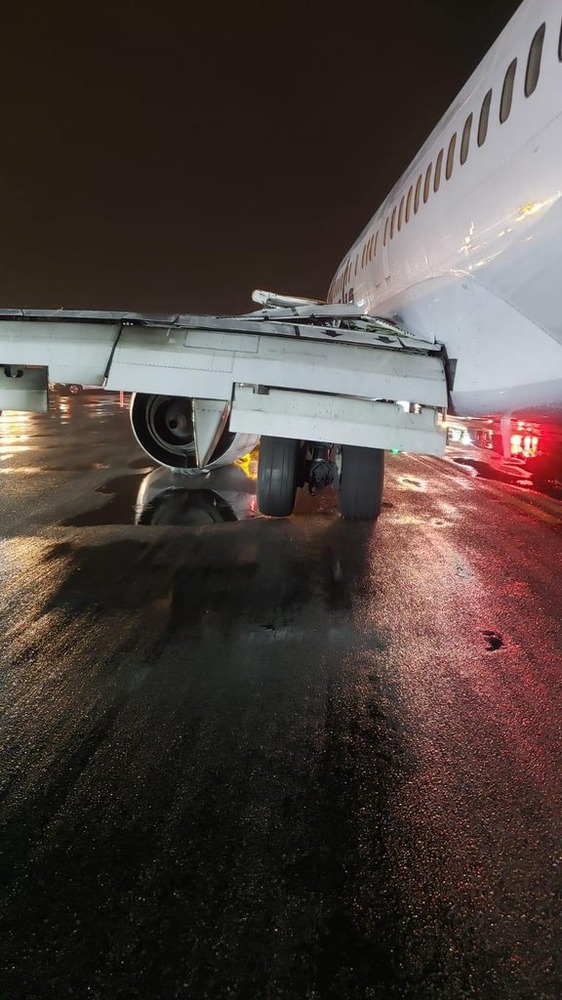
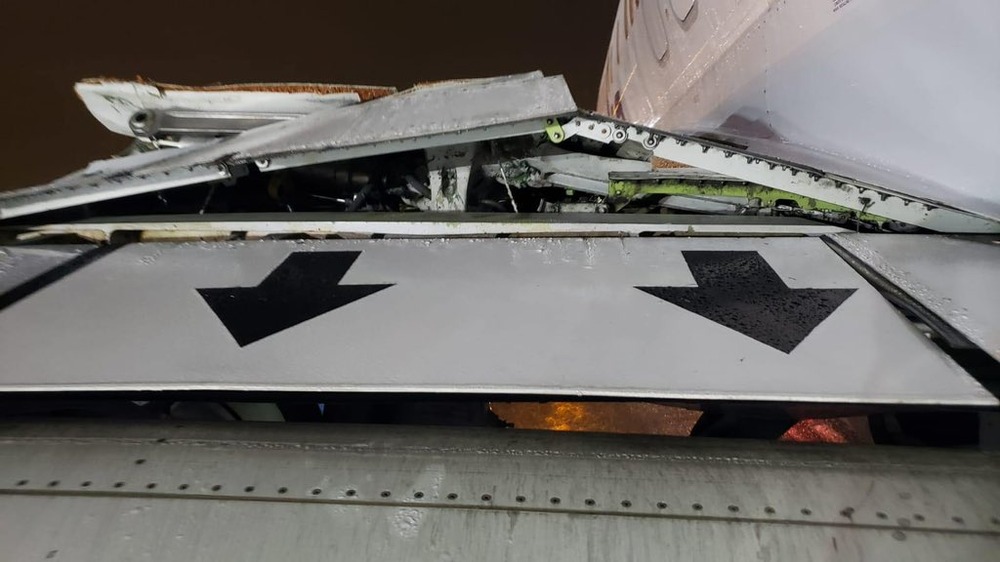
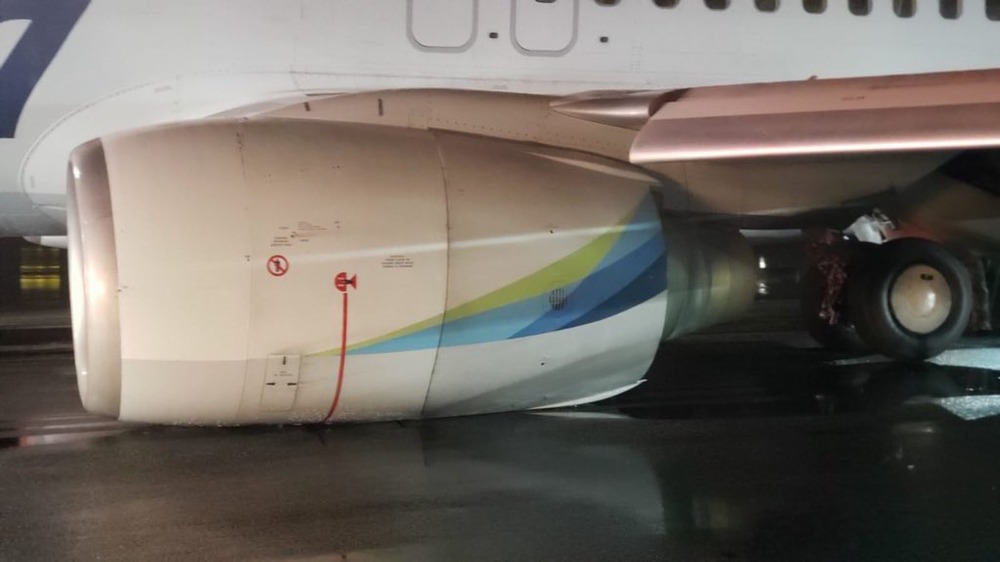
Spiny Norman said:
Oops …
Touched down just a wee bit too hard on the left main landing gear – You can see that it’s pushed up far enough to stick out of the top of the wing.
Do pilots get fined/reprimanded for such things if its pilot error
Cymek said:
Spiny Norman said:
Oops …
Touched down just a wee bit too hard on the left main landing gear – You can see that it’s pushed up far enough to stick out of the top of the wing.
Do pilots get fined/reprimanded for such things if its pilot error
No, not at all.
They would likely get invited the chief pilot’s office, then either get promoted so they can’t do that again or get fired on the spot.
In reality maybe a demotion back to being a first officer for a year, or have to undergo re-training.
Or just fired.
Spiny Norman said:
Oops …
Touched down just a wee bit too hard on the left main landing gear – You can see that it’s pushed up far enough to stick out of the top of the wing.
that’ll buff right out
Arts said:
Spiny Norman said:
Oops …
Touched down just a wee bit too hard on the left main landing gear – You can see that it’s pushed up far enough to stick out of the top of the wing.
that’ll buff right out
It’s almost certain to be a write-off unfortunately.
But hey, the bottom of the engine is very thoroughly buffed.
NASA has now confirmed the existence of 5,496 exoplanets in 4,096 different planetary systems.

Spiny Norman said:
NASA has now confirmed the existence of 5,496 exoplanets in 4,096 different planetary systems.
I see our place is one of the smallest.
roughbarked said:
Spiny Norman said:
NASA has now confirmed the existence of 5,496 exoplanets in 4,096 different planetary systems.
I see our place is one of the smallest.
None like ours either
roughbarked said:
Spiny Norman said:
NASA has now confirmed the existence of 5,496 exoplanets in 4,096 different planetary systems.
I see our place is one of the smallest.
Couldn’t find it.
But anyway, planets smaller than Earth that are 100’s of light years away are very hard to detect.
Doesn’t mean they aren’t there.
Spiny Norman said:
NASA has now confirmed the existence of 5,496 exoplanets in 4,096 different planetary systems.
Nice round number.
From a binary perspective.

t-55 hull with two MiG-21 engines on the turret. Used for making enough wind to blow out oil well fires.
Ian said:

t-55 hull with two MiG-21 engines on the turret. Used for making enough wind to blow out oil well fires.
It’s heavy enough to not blow over ?
Cymek said:
Ian said:

t-55 hull with two MiG-21 engines on the turret. Used for making enough wind to blow out oil well fires.
It’s heavy enough to not blow over ?
Apparently not
My GIANT SPANNER is almost complete!
Why is the Speed of Light Slower in Water and Glass?
Spiny Norman said:
Why is the Speed of Light Slower in Water and Glass?
dunno, will watch but is it diffraction?
Spiny Norman said:
My GIANT SPANNER is almost complete!
He’ll need a big ractor to wield it with?
Spiny Norman said:
My GIANT SPANNER is almost complete!
There was a spanner of considerable size (not as big as that one, maybe 2/3 that size) at the boatyard where my mates worked.
It’s main use was removing and applying the large nuts which secured the prop shaft glands on large boats.
That Time Cessna Made a Helicopter
In the 1950s, Cessna acquired Seibel Helicopter Co. and began work on the CH-1 Skyhook.
https://www.flyingmag.com/that-time-cessna-made-a-helicopter
Trapping a Beam of Light In a Loop Of Fiber Optic Cable.
The largest impact crater on Earth is in Australia.
Gosh!
“On 26 September 1987, Mihai Smighelschi, a 21-year-old student of the Romanian Air Force Academy, flew an L-39ZA Albatros trainer to Turkey and requested political asylum.
His aircraft was later recovered and onboard data recorders showed that he had flown no higher than 150 m (490 ft) above ground at 700 km/h (430 mph) to evade radar detection. Smighelschi had less than 100 hours at the time, including high-school glider training, and less than 3 hours on the L-39ZA.
Without satellite navigation or any maps, he had navigated a straight line over Romania, Bulgaria and Turkey using only ground marks and the memory of a map of Europe present at the Academy. He eventually landed in Kirklareli, Turkey, on a street near several jeeps that seemed to have American insignia, damaging the aircraft’s front wheel and the nose.”
https://en.wikipedia.org/wiki/Aero_L-39_Albatros#Notable_accidents_and_incidents
Michael V said:
Gosh!“On 26 September 1987, Mihai Smighelschi, a 21-year-old student of the Romanian Air Force Academy, flew an L-39ZA Albatros trainer to Turkey and requested political asylum.
His aircraft was later recovered and onboard data recorders showed that he had flown no higher than 150 m (490 ft) above ground at 700 km/h (430 mph) to evade radar detection. Smighelschi had less than 100 hours at the time, including high-school glider training, and less than 3 hours on the L-39ZA.
Without satellite navigation or any maps, he had navigated a straight line over Romania, Bulgaria and Turkey using only ground marks and the memory of a map of Europe present at the Academy. He eventually landed in Kirklareli, Turkey, on a street near several jeeps that seemed to have American insignia, damaging the aircraft’s front wheel and the nose.”
https://en.wikipedia.org/wiki/Aero_L-39_Albatros#Notable_accidents_and_incidents
That is indeed quite a remarkable effort.
Spiny Norman said:
The largest impact crater on Earth is in Australia.
Grrr! AI-generated voice-over.
Gives me the irrits after a very short time.
The remainder of the video is fascinating, though.
Spiny Norman said:
The largest impact crater on Earth is in Australia.
Yes and I live in part of it.
My favourite spacecraft, the old Project Orion.
Spiny Norman said:
My favourite spacecraft, the old Project Orion.
Those were the days.
It was gonna be nuclear EVERYTHING!
Building a swimming pool? Set off a mini-A-bomb in your backyard, save all that tiresome digging.
Microwave ovens? Old hat! In this house, when we ‘nuke’ something, we REALLY nuke something!
No more jet engines, it’s nuclear engines for us (travellers’ tip: try to book a seat forward of the engine exhausts).
Paraffin Paradox.
Why is the wax block white on top and dark on the bottom?
I’m impressed, he did very well with it.

Spiny Norman said:
I’m impressed, he did very well with it.
If true it is very impressive.
The Golf Ball Paradox.
Sometimes a golf ball with pop back out of the hole. The physics behind it is quite surprising. Watch it happening in slow motion.
The cheap Chinese bulb that won’t turn off.
These LED bulbs will continue to draw power from the mains indefinitely even once they’re switched off and the circuit is broken. But how?!
Spiny Norman said:
The cheap Chinese bulb that won’t turn off.These LED bulbs will continue to draw power from the mains indefinitely even once they’re switched off and the circuit is broken. But how?!
Might be why some of my LED bulbs continue to glow (dimly) when they’re turned off.
Spiny Norman said:
The cheap Chinese bulb that won’t turn off.These LED bulbs will continue to draw power from the mains indefinitely even once they’re switched off and the circuit is broken. But how?!
have to power the microphone somehow, right?
Spiny Norman said:
The Golf Ball Paradox.
Sometimes a golf ball with pop back out of the hole. The physics behind it is quite surprising. Watch it happening in slow motion.
As it’s Friday I’m allowed to point out that:
1) A surprising physical phenomenon is not a “paradox”.
2) A centrifugal force is only imaginary if the object is actually travelling in a straight line. Any object travelling around a curved path has a real inward force and a real outward reaction force, and the latter is often called a centrifugal force.
Other than that, QI :)
The Rev Dodgson said:
Spiny Norman said:
The Golf Ball Paradox.
Sometimes a golf ball with pop back out of the hole. The physics behind it is quite surprising. Watch it happening in slow motion.As it’s Friday I’m allowed to point out that:
1) A surprising physical phenomenon is not a “paradox”.
2) A centrifugal force is only imaginary if the object is actually travelling in a straight line. Any object travelling around a curved path has a real inward force and a real outward reaction force, and the latter is often called a centrifugal force.
Other than that, QI :)
:)
Yes, QI.
The strange, secretive world of North Korean science fiction.
A plane is flying to the Philippines, gliding above “the infinite surface” of the Pacific Ocean. Suddenly, a few passengers start to scream. Soon, the captain announces there’s a bomb on board, and it’s set to detonate if the aircraft drops below 10,000 feet.
“The inside of the plane turned into a battlefield,” the story reads. “The captain was visibly startled and vainly tried to calm down the screaming and utterly terrorized passengers.”
Only one person keeps his cool: a young North Korean diplomat who has faith that his country will find a solution and save everyone. And he’s right. North Korea’s esteemed scientists and engineers create a mysterious anti-gravitational field and stop the plane in mid-air. The bomb is defused, and everyone gets off the aircraft and is brought back safely to Earth.
This story, Change Course (Hangno rǔl pakkura) by Yi Kŭmchǒl, speaks about solidarity, peace, and love for the motherland, displaying an intricate relationship between literature and politics. It was first published in 2004 in the Chosǒn munhak magazine, only to be reprinted 13 years later, around the time North Korea claimed it was capable of launching attacks on US soil.
https://arstechnica.com/culture/2023/08/the-strange-secretive-world-of-north-korean-science-fiction

Spiny Norman said:
Purdy!
Spiny Norman said:
Fabulous image.
The 300 Million Yen Robbery Was Stupidly Perfect | Tales From the Bottle
“On the morning of December 10, 1968, four Kokubunji branch employees of the Nihon Shintaku Ginko (Nippon Trust Bank) were transporting 294,307,500 yen (about US$817,520 at 1968 exchange rates) in the trunk of a Nissan Cedric company car. The metal boxes contained bonuses for the employees of Toshiba’s Fuchu factory.
A young man in the uniform of a motorcycle police officer blocked the path of the car, a mere 200 meters from its destination, in a street next to Tokyo Fuchū Prison. The bogus police officer informed the bank employees that their bank branch manager’s house had been destroyed by an explosion, and a warning had been received that an explosive device had been planted in the car. After the four employees exited the vehicle, the police officer crawled under the car. Moments later, he rolled out, shouting that the car was about to explode, and smoke and flames appeared underneath it. As the employees retreated from the vehicle, the police officer got into it and drove away.”
Spiny Norman said:
Is that one of Saturn’s moons in the foreground?
Witty Rejoinder said:
Spiny Norman said:
Is that one of Saturn’s moons in the foreground?
yes, Phobos.
Witty Rejoinder said:
Spiny Norman said:Looks like ours. Proportions are pretty correct also.Is that one of Saturn’s moons in the foreground?
Bogsnorkler said:
Witty Rejoinder said:
Spiny Norman said:
Is that one of Saturn’s moons in the foreground?
yes, Phobos.
Thanks.
Bogsnorkler said:
Witty Rejoinder said:I’m a doctor, not an astrologer.Spiny Norman said:yes, Phobos.Is that one of Saturn’s moons in the foreground?
OCDC said:
Bogsnorkler said:Witty Rejoinder said:I’m a doctor, not an astrologer.Is that one of Saturn’s moons in the foreground?yes, Phobos.
I’m a story teller. I tell stories. the more wrong the better.
Witty Rejoinder said:
Spiny Norman said:
Is that one of Saturn’s moons in the foreground?
it is our Moon. Phobos is a moon of Mars.
OCDC said:
Witty Rejoinder said:Spiny Norman said:Looks like ours. Proportions are pretty correct also.Is that one of Saturn’s moons in the foreground?
Witty Rejoinder said:
OCDC said:
Witty Rejoinder said:Is that one of Saturn’s moons in the foreground?Looks like ours. Proportions are pretty correct also.
I’m sure a similar image could be taken with our moon but I don’t think there would be any telescope of suitable power orbiting the Moon in such proximity.
What would I know anyway?
OCDC said:
Bogsnorkler said:Witty Rejoinder said:I’m a doctor, not an astrologer.Is that one of Saturn’s moons in the foreground?yes, Phobos.
I think you might have been an astronomer if you had chosen that path.
Witty Rejoinder said:
OCDC said:
Witty Rejoinder said:Is that one of Saturn’s moons in the foreground?Looks like ours. Proportions are pretty correct also.
I’m sure a similar image could be taken with our moon but I don’t think there would be any telescope of suitable power orbiting the Moon in such proximity.
That image would be entirely possible with an Earth based telescope. The image is no doubt cropped.
Bogsnorkler said:
Witty Rejoinder said:
OCDC said:
Looks like ours. Proportions are pretty correct also.
I’m sure a similar image could be taken with our moon but I don’t think there would be any telescope of suitable power orbiting the Moon in such proximity.That image would be entirely possible with an Earth based telescope. The image is no doubt cropped.
Yeah.
Witty Rejoinder said:
OCDC said:You can get this view from simple earth-based telescopes.Witty Rejoinder said:I’m sure a similar image could be taken with our moon but I don’t think there would be any telescope of suitable power orbiting the Moon in such proximity.Is that one of Saturn’s moons in the foreground?Looks like ours. Proportions are pretty correct also.
Bogsnorkler said:
Witty Rejoinder said:
OCDC said:
Looks like ours. Proportions are pretty correct also.
I’m sure a similar image could be taken with our moon but I don’t think there would be any telescope of suitable power orbiting the Moon in such proximity.That image would be entirely possible with an Earth based telescope. The image is no doubt cropped.
https://mymodernmet.com/saturn-moon-occultation/
Spiny Norman said:
The 300 Million Yen Robbery Was Stupidly Perfect | Tales From the Bottle“On the morning of December 10, 1968, four Kokubunji branch employees of the Nihon Shintaku Ginko (Nippon Trust Bank) were transporting 294,307,500 yen (about US$817,520 at 1968 exchange rates) in the trunk of a Nissan Cedric company car. The metal boxes contained bonuses for the employees of Toshiba’s Fuchu factory.
A young man in the uniform of a motorcycle police officer blocked the path of the car, a mere 200 meters from its destination, in a street next to Tokyo Fuchū Prison. The bogus police officer informed the bank employees that their bank branch manager’s house had been destroyed by an explosion, and a warning had been received that an explosive device had been planted in the car. After the four employees exited the vehicle, the police officer crawled under the car. Moments later, he rolled out, shouting that the car was about to explode, and smoke and flames appeared underneath it. As the employees retreated from the vehicle, the police officer got into it and drove away.”
At the end of WW2, the Allies discovered a cache of gold bars in occupied Germany.
It amounted to several tons (a cube of gold weighing one tonne is only 37 cm on each side).
To move it to safe storage required a convoy of several US Army trucks. The trucks were allocated, arrived, and were loaded, precisely as ordered. They then drove off.
None of the trucks, drivers, or gold has been seen since. I understand that Switzerland was not all that far away.
Israel’s Hydrogen Breakthrough: Producing Hydrogen with the Help of Nature.
In a groundbreaking development, researchers from Tel Aviv University in Israel have taken a significant step forward by producing “green” hydrogen at an astonishing 90% efficiency level. Now although this might be a little less that Hysata 90% is still crazy high and super impressive.
Did Samuel Beckett Drive a Young André the Giant to School?
A legend about the iconic wrestler has a significant grain of truth to it but has been embellished over the years.
https://www.snopes.com/fact-check/andre-the-giant-samuel-beckett/
Spiny Norman said:
Did Samuel Beckett Drive a Young André the Giant to School?
A legend about the iconic wrestler has a significant grain of truth to it but has been embellished over the years.https://www.snopes.com/fact-check/andre-the-giant-samuel-beckett/
interesting
The Insane Biology Of The Volcano Snail.
Spiny Norman said:
The Insane Biology Of The Volcano Snail.
They have a unique look
Two Bell 214 helicopter just returning from firefighting out south of Cecil Plains.
captain_spalding said:
Two Bell 214 helicopter just returning from firefighting out south of Cecil Plains.
Those snails do indeed look different, but I think that’s a bit of a stretch sorry.
Spiny Norman said:
captain_spalding said:
Two Bell 214 helicopter just returning from firefighting out south of Cecil Plains.
Those snails do indeed look different, but I think that’s a bit of a stretch sorry.
Sorry should have been in Chat.
The new game graphics engine, Unreal Engine 5.3 is extremely impressive indeed.
https://www.youtube.com/watch?v=POwTaVZ_CA0
And it’s free to download as well.
Mariana Trench: Deepest-ever sub dive finds plastic bag.
An American explorer has found plastic waste on the seafloor while breaking the record for the deepest ever dive.
Victor Vescovo descended nearly 11km (seven miles) to the deepest place in the ocean – the Pacific Ocean’s Mariana Trench.
He spent four hours exploring the bottom of the trench in his submersible, built to withstand the immense pressure of the deep.
He found sea creatures, but also found a plastic bag and sweet wrappers.
Spiny Norman said:
Mariana Trench: Deepest-ever sub dive finds plastic bag.An American explorer has found plastic waste on the seafloor while breaking the record for the deepest ever dive.
Victor Vescovo descended nearly 11km (seven miles) to the deepest place in the ocean – the Pacific Ocean’s Mariana Trench.
He spent four hours exploring the bottom of the trench in his submersible, built to withstand the immense pressure of the deep.
He found sea creatures, but also found a plastic bag and sweet wrappers.
Damn, I thought nobody would ever find those.
I guess with all the visitors it gets, the bottom of the Mariana is not such a good place to hide stuff. Maybe the second or third deepest trench would be better.
Helicopters Sometimes Produce Spectacular Sparkling Rings When Operating in Desert Conditions and Here’s Why.
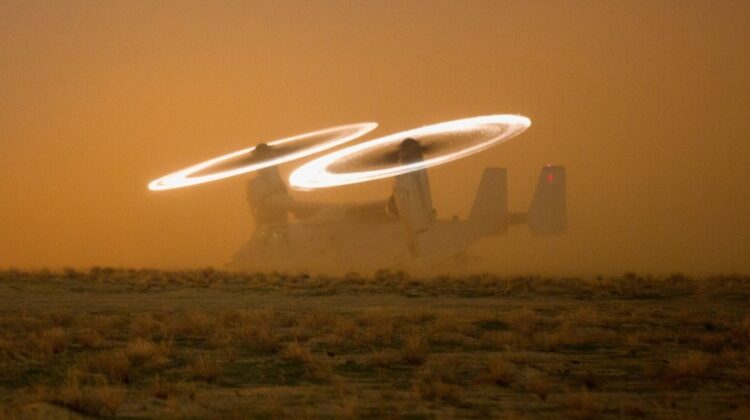
In the arid landscapes of Afghanistan, where American war correspondent and photographer Michael Yon accompanied U.S. troops in 2009, an extraordinary phenomenon came to light, one that added a touch of spectacle to the gritty realities of war. Yon observed an awe-inspiring spectacle while photographing helicopters taking off or descending in dusty conditions – their rotor blades would come alive, resembling nothing less than “distant galaxies” amidst the desert sands.
Spiny Norman said:
Helicopters Sometimes Produce Spectacular Sparkling Rings When Operating in Desert Conditions and Here’s Why.
I’ve seen that at night, produced by a helicopter flying below the one i was in.
It’s rotors produced a sort of blue-white flame effect. The air was quite humid, and the pilot said it was something to do with the water in the air and static electricity from the rotor blades/
captain_spalding said:
Spiny Norman said:
Helicopters Sometimes Produce Spectacular Sparkling Rings When Operating in Desert Conditions and Here’s Why.I’ve seen that at night, produced by a helicopter flying below the one i was in.
It’s rotors produced a sort of blue-white flame effect. The air was quite humid, and the pilot said it was something to do with the water in the air and static electricity from the rotor blades/
I’ve seen a fair bit of St Elmo’s fire when flying around. The best was when I was flying a Piper Aerostar through some rowdy weather. There was the usual lightning bolts running around parts of the windscreen, but also when I looked back at the prop I could see that the tips of the blades were making a purple ring in the air, and there were also sparks coming out of the tip of the spinner. Perhaps more surprising was a very bright cone of light coming out of the nose, just like a landing light – But there are no lights in that part of the plane.
Spiny Norman said:
captain_spalding said:
Spiny Norman said:
Helicopters Sometimes Produce Spectacular Sparkling Rings When Operating in Desert Conditions and Here’s Why.I’ve seen that at night, produced by a helicopter flying below the one i was in.
It’s rotors produced a sort of blue-white flame effect. The air was quite humid, and the pilot said it was something to do with the water in the air and static electricity from the rotor blades/
I’ve seen a fair bit of St Elmo’s fire when flying around. The best was when I was flying a Piper Aerostar through some rowdy weather. There was the usual lightning bolts running around parts of the windscreen, but also when I looked back at the prop I could see that the tips of the blades were making a purple ring in the air, and there were also sparks coming out of the tip of the spinner. Perhaps more surprising was a very bright cone of light coming out of the nose, just like a landing light – But there are no lights in that part of the plane.
Does it look like this?

captain_spalding said:
Spiny Norman said:
Helicopters Sometimes Produce Spectacular Sparkling Rings When Operating in Desert Conditions and Here’s Why.I’ve seen that at night, produced by a helicopter flying below the one i was in.
It’s rotors produced a sort of blue-white flame effect. The air was quite humid, and the pilot said it was something to do with the water in the air and static electricity from the rotor blades/
Electricity.. Tesla thought it was fascinating.
Kingy said:
Spiny Norman said:
captain_spalding said:I’ve seen that at night, produced by a helicopter flying below the one i was in.
It’s rotors produced a sort of blue-white flame effect. The air was quite humid, and the pilot said it was something to do with the water in the air and static electricity from the rotor blades/
I’ve seen a fair bit of St Elmo’s fire when flying around. The best was when I was flying a Piper Aerostar through some rowdy weather. There was the usual lightning bolts running around parts of the windscreen, but also when I looked back at the prop I could see that the tips of the blades were making a purple ring in the air, and there were also sparks coming out of the tip of the spinner. Perhaps more surprising was a very bright cone of light coming out of the nose, just like a landing light – But there are no lights in that part of the plane.
Does it look like this?
Yep!
Australia’s Weird Geographical Quirks.
Australia has some unique geographical quirks that you might not have already heard about. From surveying mistakes creating weird borders, to silly electoral boundaries Australia has a wealth of interesting geography.
There may be a mud volcano eruption in Brisbane some time soon(ish).
Spiny Norman said:
There may be a mud volcano eruption in Brisbane some time soon(ish).
Huh!
I have yet to find a geologic description of it.
Ophiocordyceps caloceroides infecting a tarantula. The fungus keeps the host alive as long as possible and directs the spider to the place where assocarps can spread the fungi spores more effectively.

Spiny Norman said:
Ophiocordyceps caloceroides infecting a tarantula. The fungus keeps the host alive as long as possible and directs the spider to the place where assocarps can spread the fungi spores more effectively.
Yucko.
The northern lights, quite spectacular indeed.
Spiny Norman said:
The northern lights, quite spectacular indeed.
Yes, aurora can be quite kaleidoscopic overhead.
Spiny Norman said:
The northern lights, quite spectacular indeed.
Agreed.
Bubblecar said:
Spiny Norman said:
The northern lights, quite spectacular indeed.Yes, aurora can be quite kaleidoscopic overhead.
Good
Pocket Mechanical Calculator – Addiator/Addifix.
Spiny Norman said:
Pocket Mechanical Calculator – Addiator/Addifix.
Thanks for the Flightradar app, Bill.
I’ve tried it on my laptop, using the Bluestacks Android emulator, but it’s VERY clunky, which probably says more about my laptop than anything else.
Yet to try it on PC or phone.
captain_spalding said:
Spiny Norman said:
Pocket Mechanical Calculator – Addiator/Addifix.Thanks for the Flightradar app, Bill.
I’ve tried it on my laptop, using the Bluestacks Android emulator, but it’s VERY clunky, which probably says more about my laptop than anything else.
Yet to try it on PC or phone.
Righto.
Yeah it should run better on a phone. It seems fine on mine at least.
This is the OmniVision OV6948, the world’s smallest camera, measuring just 0.575 × 0.575 × 0.232mm: it’s good for 40,000-pixel color images using an RGB Bayer back-side-illuminating chip.

Spiny Norman said:
This is the OmniVision OV6948, the world’s smallest camera, measuring just 0.575 × 0.575 × 0.232mm: it’s good for 40,000-pixel color images using an RGB Bayer back-side-illuminating chip.
The Landlord’s Dream!
The AirBnB owner’s Nirvana!
Spiny Norman said:
This is the OmniVision OV6948, the world’s smallest camera, measuring just 0.575 × 0.575 × 0.232mm: it’s good for 40,000-pixel color images using an RGB Bayer back-side-illuminating chip.
The snap button would be too small to operate without a microscope.
New World Record – from 0 to 100 km/h in 0.956 seconds.
https://www.youtube.com/watch?v=mvoFemftA34
That’s a Formula SAE car, as used the in university FSAE worldwide competitions.
I’d guess that it’s accelerating at a bit over 2 G’s, which means very sticky tyres and superb traction control.
Compared to a regular street car that’s massively faster, but still much slower than a Top Fuel drag car, which get off the line at about 6 G’s.
Spiny Norman said:
New World Record – from 0 to 100 km/h in 0.956 seconds.https://www.youtube.com/watch?v=mvoFemftA34
That’s a Formula SAE car, as used the in university FSAE worldwide competitions.
I’d guess that it’s accelerating at a bit over 2 G’s, which means very sticky tyres and superb traction control.Compared to a regular street car that’s massively faster, but still much slower than a Top Fuel drag car, which get off the line at about 6 G’s.
That’s one thing that continues to stun me- Teslas are scary stupid fast for acceleration- the fastest is open to debate, but independent tests put the 0-100 times for the S Plaid at 2.1 seconds with a 1/4 mile drag time of 9.4 seconds (to put that in perspective, the SS Commodore V8 (6L, 366ci) took 5.3 seconds 0-100, their ‘elcheapo’ Tesla 3 is a comparatively slow 3.5 seconds
Even the BYD Atto3 I am looking at buying is still relatively fast, a much more sedate 7.3 seconds (but at a much lower price tag than even the cheapest T3)- mind you that is still equal to a V6 Sorento, faster than a 2014 Sportage turbo AWD and would pull away from a 1960’s classic Corvette…. (half a second quicker!!!)

Mind you, the ‘vette still looks cooler…

(Atto 3 0-101kmh in 8 seconds- not exactly a ‘dragstrip timed run’ lol)
:-O
Makes the old Hilux look like a snail (over 14 seconds!!!)
boppa said:
Spiny Norman said:
New World Record – from 0 to 100 km/h in 0.956 seconds.https://www.youtube.com/watch?v=mvoFemftA34
That’s a Formula SAE car, as used the in university FSAE worldwide competitions.
I’d guess that it’s accelerating at a bit over 2 G’s, which means very sticky tyres and superb traction control.Compared to a regular street car that’s massively faster, but still much slower than a Top Fuel drag car, which get off the line at about 6 G’s.
That’s one thing that continues to stun me- Teslas are scary stupid fast for acceleration- the fastest is open to debate, but independent tests put the 0-100 times for the S Plaid at 2.1 seconds with a 1/4 mile drag time of 9.4 seconds (to put that in perspective, the SS Commodore V8 (6L, 366ci) took 5.3 seconds 0-100, their ‘elcheapo’ Tesla 3 is a comparatively slow 3.5 seconds
Even the BYD Atto3 I am looking at buying is still relatively fast, a much more sedate 7.3 seconds (but at a much lower price tag than even the cheapest T3)- mind you that is still equal to a V6 Sorento, faster than a 2014 Sportage turbo AWD and would pull away from a 1960’s classic Corvette…. (half a second quicker!!!)
Mind you, the ‘vette still looks cooler…
(Atto 3 0-101kmh in 8 seconds- not exactly a ‘dragstrip timed run’ lol)
:-O
Makes the old Hilux look like a snail (over 14 seconds!!!)
:)
Yeah one of these days I’d like to get a 2nd hand Nissan Leaf. Far simpler than a Tesla but I’m quite okay with that.
I looked at the Leaf- but their prices remain high still, and no towing (the Atto can tow up to 1200kg on a braked trailer)
Not bad for a ‘mid sized’ SUV with a 450-480km range… and a quick recharge time of 42 minutes for the big battery version on a fast charger (puts in 300km of range in that 42 mins)
I am looking seriously at it (it was that or the MG, and frankly BYD has the better reputation lol) even though I am totally offgrid (thankfully- the neighbour just got his electricity bill- well over a grand for three months!!!)
:-O
boppa said:
I looked at the Leaf- but their prices remain high still, and no towing (the Atto can tow up to 1200kg on a braked trailer)
Not bad for a ‘mid sized’ SUV with a 450-480km range… and a quick recharge time of 42 minutes for the big battery version on a fast charger (puts in 300km of range in that 42 mins)
I am looking seriously at it (it was that or the MG, and frankly BYD has the better reputation lol) even though I am totally offgrid (thankfully- the neighbour just got his electricity bill- well over a grand for three months!!!) :-O
Maybe give the MG 4 a test drive.
boppa said:
I looked at the Leaf- but their prices remain high still, and no towing (the Atto can tow up to 1200kg on a braked trailer)
Not bad for a ‘mid sized’ SUV with a 450-480km range… and a quick recharge time of 42 minutes for the big battery version on a fast charger (puts in 300km of range in that 42 mins)
I am looking seriously at it (it was that or the MG, and frankly BYD has the better reputation lol) even though I am totally offgrid (thankfully- the neighbour just got his electricity bill- well over a grand for three months!!!) :-O
I’d be very hesitant about buying a Chinese EV.
party_pants said:
boppa said:
I looked at the Leaf- but their prices remain high still, and no towing (the Atto can tow up to 1200kg on a braked trailer)
Not bad for a ‘mid sized’ SUV with a 450-480km range… and a quick recharge time of 42 minutes for the big battery version on a fast charger (puts in 300km of range in that 42 mins)
I am looking seriously at it (it was that or the MG, and frankly BYD has the better reputation lol) even though I am totally offgrid (thankfully- the neighbour just got his electricity bill- well over a grand for three months!!!) :-O
I’d be very hesitant about buying a Chinese EV.
I’d be very hesitant about buying a Chinese <insert brand="" here="">.</insert>
boppa said:
I looked at the Leaf- but their prices remain high still, and no towing (the Atto can tow up to 1200kg on a braked trailer)
Not bad for a ‘mid sized’ SUV with a 450-480km range… and a quick recharge time of 42 minutes for the big battery version on a fast charger (puts in 300km of range in that 42 mins)
I am looking seriously at it (it was that or the MG, and frankly BYD has the better reputation lol) even though I am totally offgrid (thankfully- the neighbour just got his electricity bill- well over a grand for three months!!!) :-O
John from autoexpert on youtube says this. EVs are a waste of money and start fires. From a greenhouse perspective having house batteries gives you the biggest bang for your buck regarding CO2 output.
You might be better off getting an LPG conversion if that’s still possible in Australia, 90s Australia seemed to have more LPG cars running around – I never see them now. One option – develop a government owned facility to find and extract LPG in Australia, everyone converts to LPG.
party_pants said:
boppa said:
I looked at the Leaf- but their prices remain high still, and no towing (the Atto can tow up to 1200kg on a braked trailer)
Not bad for a ‘mid sized’ SUV with a 450-480km range… and a quick recharge time of 42 minutes for the big battery version on a fast charger (puts in 300km of range in that 42 mins)
I am looking seriously at it (it was that or the MG, and frankly BYD has the better reputation lol) even though I am totally offgrid (thankfully- the neighbour just got his electricity bill- well over a grand for three months!!!) :-O
I’d be very hesitant about buying a Chinese EV.
LOL- I wouldn’t…
(most people are unaware that BYD is a HUGE company, who sell more cars annually than Tesla, the Atto3 is the ‘updated’ E6- which has been on sale since 2009, and they make trucks and buses as well since 2012…

Still can’t buy a Tesla semi….


They make more lithium batteries (they make all their own batteries in house) annually than Tesla does…

(oh and Tesla now BUYS BYD blade batteries for their T3’s made in Europe and China…)

So if you buy an ‘Aussie’ T3- it was probably made in China and runs on BYD batteries…
Spiny Norman said:
New World Record – from 0 to 100 km/h in 0.956 seconds.https://www.youtube.com/watch?v=mvoFemftA34
That’s a Formula SAE car, as used the in university FSAE worldwide competitions.
I’d guess that it’s accelerating at a bit over 2 G’s, which means very sticky tyres and superb traction control.Compared to a regular street car that’s massively faster, but still much slower than a Top Fuel drag car, which get off the line at about 6 G’s.
0 to 100 km/h in 0.956 s is very close to 3.0 G.
wookiemeister said:
boppa said:
I looked at the Leaf- but their prices remain high still, and no towing (the Atto can tow up to 1200kg on a braked trailer)
Not bad for a ‘mid sized’ SUV with a 450-480km range… and a quick recharge time of 42 minutes for the big battery version on a fast charger (puts in 300km of range in that 42 mins)
I am looking seriously at it (it was that or the MG, and frankly BYD has the better reputation lol) even though I am totally offgrid (thankfully- the neighbour just got his electricity bill- well over a grand for three months!!!) :-O
I’ve been 100% self sufficient with electricity since the beginning of winter – no air-conditioningrunning overnight only fans ( not that only fans). Still have gas hot water. I’m thinking solar hot water but we’d need two tanks of water not one.John from autoexpert on youtube says this. EVs are a waste of money and start fires. From a greenhouse perspective having house batteries gives you the biggest bang for your buck regarding CO2 output.
You might be better off getting an LPG conversion if that’s still possible in Australia, 90s Australia seemed to have more LPG cars running around – I never see them now. One option – develop a government owned facility to find and extract LPG in Australia, everyone converts to LPG.
‘John’ should look at facts instead of listening to anti EV nonsense…
If you are worried about car fires- you are 60 times less likely to have a EV catch fire than an ICE vehicle…


I don’t own one (yet- hopefully before christmas) but so far, the BYD stands heads above the MG (I have gotten to test drive several different brands so far)- and remembering that I am totally offgrid, with sufficient planning, you can achieve total offgrid capability with no loss of amenities anywhere in Australia…
(with 18kw of panels eventually going on the roof, supporting an EV will be more than easily done- that will give me about 90kwh a day generated in spring and autumn, about 70kwh a day in winter and about 70kwh a day in summer…
(despite what many think- unless you are well south, summer is NOT a good time for PV solar…)
The Rev Dodgson said:
Spiny Norman said:
New World Record – from 0 to 100 km/h in 0.956 seconds.https://www.youtube.com/watch?v=mvoFemftA34
That’s a Formula SAE car, as used the in university FSAE worldwide competitions.
I’d guess that it’s accelerating at a bit over 2 G’s, which means very sticky tyres and superb traction control.Compared to a regular street car that’s massively faster, but still much slower than a Top Fuel drag car, which get off the line at about 6 G’s.
0 to 100 km/h in 0.956 s is very close to 3.0 G.
Remarkably fast.
I’d guess that the tyres were intended for wet weather, as the compound used for wets is much softer than dry tyres because of the cooling effect of the water. But when wets are used in the dry, they last maybe a minute before starting to fall apart from the heat.
Anyway, I reckon they used ungrooved wets and perhaps with a chemical additive to improve the grip a bit more again.
Spiny Norman said:
The Rev Dodgson said:Spiny Norman said:
New World Record – from 0 to 100 km/h in 0.956 seconds.https://www.youtube.com/watch?v=mvoFemftA34
That’s a Formula SAE car, as used the in university FSAE worldwide competitions.
I’d guess that it’s accelerating at a bit over 2 G’s, which means very sticky tyres and superb traction control.Compared to a regular street car that’s massively faster, but still much slower than a Top Fuel drag car, which get off the line at about 6 G’s.
0 to 100 km/h in 0.956 s is very close to 3.0 G.
Remarkably fast.
I’d guess that the tyres were intended for wet weather, as the compound used for wets is much softer than dry tyres because of the cooling effect of the water. But when wets are used in the dry, they last maybe a minute before starting to fall apart from the heat.
Anyway, I reckon they used ungrooved wets and perhaps with a chemical additive to improve the grip a bit more again.
https://www.facebook.com/watch/?v=1972284439822866&ref=sharing
Why can’t robots pass CAPTCHA tests?
Bogsnorkler said:
https://www.facebook.com/watch/?v=1972284439822866&ref=sharingWhy can’t robots pass CAPTCHA tests?
I’ve often thought if it detects the tremor of your finger as you push the buttons
Spiny Norman said:
The cheap Chinese bulb that won’t turn off.These LED bulbs will continue to draw power from the mains indefinitely even once they’re switched off and the circuit is broken. But how?!
I noticed this a while back Bill, this is actually quite common (and not just in the cheap Chinese ones either, some rather expensive ones do it too- the early Philips bulbs also commonly did it, till they found the cure…)
It ‘often’ is a sign of ‘reversed wiring’ where the switch in in the neutral line instead of the active/live wire, but it also happens even if it is in the active wire…
In fact, it happens in my shed- which are DC LEDs, running directly from the battery bank!!!!
The ‘cure’ is simply the manufacturer adding a 1M resistor across the LED string- but you know- its cheaper to leave it out…
:-(
I was confuzzled as to why my own (DC) did the ‘ghost glow’ thing- its straight low voltage 12v DC being applied, then I found it stopped when I turned the inverter off…
Even though they aren’t plugged into the inverter…
????
Turns out it is a combination of how they are wired-‘rooftop’ feed, with lamp bases at intervals, and a ‘dropper’ down to each switch…



(And this applies to my DC ones as well as the ‘normal’ AC ones most people use…)
Even though the switch is open (off), there is a minute varying voltage induced in the open switched wire (white) from the adjacent feed wire (red) that goes down and back from the lamp base to the switch…
And LED lamps are just so damn efficient, that even on this TINY power, they will dimly light up….
(And it truly is tiny- I tried measuring it, and even the tiny added load of my meter was sufficient to ‘put it out’)
Hence why adding that 1M resistor is enough to stop it happening
In my case, the inverter causes a tiny leakage across to the DC cables where they run next to each other for a short distance (about 30-40cm although in separate conduit at the inverter) where it induces a tiny voltage fluctuation in the DC feed cable ie a small AC voltage superimposed on the DC voltage- and when you get to the ‘feeder’ drop at each switch- it acts like a really ‘lossy’ single turn transformer, and puts a low voltage AC signal on the open circuited light switched wire- and thats enough to make the bulb light dimly…
In my shed, you can actually see that effect of voltage drop on the system- the bulb nearest the battery bank is brightest, and they get dimmer the further away from it they are…
Disconnect the ‘dropper feed’ at the lamp base, and bingo- no glow…
It’s because of that ‘shared cable’ 2 wires in the same sheath dropper, and inductive/capacitive coupling

Doesn’t work on old incandescent bulbs, but like I said- LED’s are just too damn efficient and take TINY amounts of power light up dimly…
Each bulb in my case ‘crosses the mains cable with the DC behind the pole (but in separate conduit) and that is enough to couple the AC in….
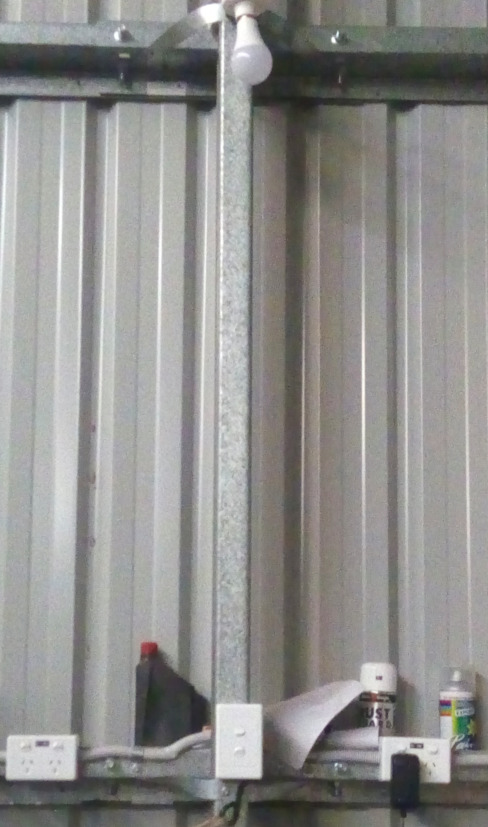
And although they ‘look like’ normal mains powered bulbs, these are sold for the offgrid community, where they run on 12vdc to 85vdc, and yet allow you to use ‘normal mains lamp fittings’

All explained….
:-)
In my case it’s actually handy as they give just barely enough light to see where the switches are- and the current is so low that the meters on my system can’t even measure it, so it isn’t enough to affect my battery discharge rate…
So I left it as is lol
The Unsettling Truth about Human Consciousness | The Split Brain experiment that broke neuroscience.
The Alexeyev SM-1, essentially a real-life Star Wars speeder. Hit speeds of up to 270 kph over ice plains, snow, and water. Flew about 4 feet above the ground. The first Soviet ekranoplan.
The great great grandfather of the https://planehistoria.com/lun-class-ekranoplan

Spiny Norman said:
The Alexeyev SM-1, essentially a real-life Star Wars speeder. Hit speeds of up to 270 kph over ice plains, snow, and water. Flew about 4 feet above the ground. The first Soviet ekranoplan.
The great great grandfather of the https://planehistoria.com/lun-class-ekranoplan
They stopped making them because, when the XP-38 came out, they were just not in demand.
Spiny Norman said:
The Alexeyev SM-1, essentially a real-life Star Wars speeder. Hit speeds of up to 270 kph over ice plains, snow, and water. Flew about 4 feet above the ground. The first Soviet ekranoplan.
The great great grandfather of the https://planehistoria.com/lun-class-ekranoplan
Looks highly dangerous.
captain_spalding said:
Spiny Norman said:
The Alexeyev SM-1, essentially a real-life Star Wars speeder. Hit speeds of up to 270 kph over ice plains, snow, and water. Flew about 4 feet above the ground. The first Soviet ekranoplan.
The great great grandfather of the https://planehistoria.com/lun-class-ekranoplan
They stopped making them because, when the XP-38 came out, they were just not in demand.
History is very different. It could only get a few feet off the ground and was useless when waves exceeded this level. Therefore very limited application.
https://www.facebook.com/photo?fbid=10160992725379872&set=pcb.6709286919140599
Here is a paper by Ken Leighton and James Canning about the Canning Stock Route. It is quite interesting and covers the methodology Canning used to do the survey and follows up on some of the marks Canning left.
Steve Mould again – This life-sized pop pop boat actually works.
26 September 1983. 19.37.49 UTC/GMT. Soyuz T-10-1 (Soyuz T-10a) mission to the Salyut 7 space station, was destroyed on the launch pad by fire. The launch escape system of the Soyuz spacecraft fired two seconds before the vehicle exploded, saving the crew.
An absolutely suburb review of the Star Wars series, Andor.
Spiny Norman said:
An absolutely suburb review of the Star Wars series, Andor.
On reflection … I think it’s probably the best SW related material since Empire
dv said:
Spiny Norman said:
An absolutely suburb review of the Star Wars series, Andor.On reflection … I think it’s probably the best SW related material since Empire
Nods.
Though I think it’s the best out of everything SW.
Certainly not for everyone here, but the physics behind these cars is astounding.

300 MPH TO THE EIGHTH! Mike Salinas’s Top Fuel dragster is the first piston car in history to 300 MPH in the 1/8-mile, having run 300.80 mph in 660 feet at the NHRA Carolina Nationals at Zmax Dragway minutes ago! It was 2.936 to 660 and out the back at 3.647 at 338 mph. Congrats Rob Flynn! “We fired everything we could think of at it and thank goodness it stuck.
That’s 0 – 482 km/h in 201 metres and 2.9 seconds.
Delightfully violent.
Spiny Norman said:
Certainly not for everyone here, but the physics behind these cars is astounding.
300 MPH TO THE EIGHTH! Mike Salinas’s Top Fuel dragster is the first piston car in history to 300 MPH in the 1/8-mile, having run 300.80 mph in 660 feet at the NHRA Carolina Nationals at Zmax Dragway minutes ago! It was 2.936 to 660 and out the back at 3.647 at 338 mph. Congrats Rob Flynn! “We fired everything we could think of at it and thank goodness it stuck.
That’s 0 – 482 km/h in 201 metres and 2.9 seconds.
Delightfully violent.
They are pretty cool, they overload so many senses at once
Cymek said:
Spiny Norman said:
Certainly not for everyone here, but the physics behind these cars is astounding.
300 MPH TO THE EIGHTH! Mike Salinas’s Top Fuel dragster is the first piston car in history to 300 MPH in the 1/8-mile, having run 300.80 mph in 660 feet at the NHRA Carolina Nationals at Zmax Dragway minutes ago! It was 2.936 to 660 and out the back at 3.647 at 338 mph. Congrats Rob Flynn! “We fired everything we could think of at it and thank goodness it stuck.
That’s 0 – 482 km/h in 201 metres and 2.9 seconds.
Delightfully violent.
They are pretty cool, they overload so many senses at once
Top Fuelers are Awesome
Cymek said:
Spiny Norman said:
Certainly not for everyone here, but the physics behind these cars is astounding.
300 MPH TO THE EIGHTH! Mike Salinas’s Top Fuel dragster is the first piston car in history to 300 MPH in the 1/8-mile, having run 300.80 mph in 660 feet at the NHRA Carolina Nationals at Zmax Dragway minutes ago! It was 2.936 to 660 and out the back at 3.647 at 338 mph. Congrats Rob Flynn! “We fired everything we could think of at it and thank goodness it stuck.
That’s 0 – 482 km/h in 201 metres and 2.9 seconds.
Delightfully violent.
They are pretty cool, they overload so many senses at once
I seem to recall that the steam catapult aboard HMAS Melbourne would take my mate’s A-4 Skyhawk from 0 to 300 kmh in just on 3 seconds.
He said that he never got tired of it.
Spiny Norman said:
Certainly not for everyone here, but the physics behind these cars is astounding.
300 MPH TO THE EIGHTH! Mike Salinas’s Top Fuel dragster is the first piston car in history to 300 MPH in the 1/8-mile, having run 300.80 mph in 660 feet at the NHRA Carolina Nationals at Zmax Dragway minutes ago! It was 2.936 to 660 and out the back at 3.647 at 338 mph. Congrats Rob Flynn! “We fired everything we could think of at it and thank goodness it stuck.
That’s 0 – 482 km/h in 201 metres and 2.9 seconds.
Delightfully violent.
Wow!
captain_spalding said:
Cymek said:
Spiny Norman said:
Certainly not for everyone here, but the physics behind these cars is astounding.
300 MPH TO THE EIGHTH! Mike Salinas’s Top Fuel dragster is the first piston car in history to 300 MPH in the 1/8-mile, having run 300.80 mph in 660 feet at the NHRA Carolina Nationals at Zmax Dragway minutes ago! It was 2.936 to 660 and out the back at 3.647 at 338 mph. Congrats Rob Flynn! “We fired everything we could think of at it and thank goodness it stuck.
That’s 0 – 482 km/h in 201 metres and 2.9 seconds.
Delightfully violent.
They are pretty cool, they overload so many senses at once
I seem to recall that the steam catapult aboard HMAS Melbourne would take my mate’s A-4 Skyhawk from 0 to 300 kmh in just on 3 seconds.
He said that he never got tired of it.
Quite a ride indeed. I see that the pilots are leaving their hands off the controls, so they don’t accidentally give a heap of nose-up with the G’s. Shortly after leaving the deck they get both hands on the controls and start doing pilot stuff.
I’d reckon that the control stick has a counterbalance on the other side of pivot to neutralise the abnormal acceleration.
Spiny Norman said:
captain_spalding said:
Cymek said:They are pretty cool, they overload so many senses at once
I seem to recall that the steam catapult aboard HMAS Melbourne would take my mate’s A-4 Skyhawk from 0 to 300 kmh in just on 3 seconds.
He said that he never got tired of it.
Quite a ride indeed. I see that the pilots are leaving their hands off the controls, so they don’t accidentally give a heap of nose-up with the G’s. Shortly after leaving the deck they get both hands on the controls and start doing pilot stuff.
I’d reckon that the control stick has a counterbalance on the other side of pivot to neutralise the abnormal acceleration.
i still reckon rally driving will be awesome!
monkey skipper said:
Spiny Norman said:
captain_spalding said:I seem to recall that the steam catapult aboard HMAS Melbourne would take my mate’s A-4 Skyhawk from 0 to 300 kmh in just on 3 seconds.
He said that he never got tired of it.
Quite a ride indeed. I see that the pilots are leaving their hands off the controls, so they don’t accidentally give a heap of nose-up with the G’s. Shortly after leaving the deck they get both hands on the controls and start doing pilot stuff.
I’d reckon that the control stick has a counterbalance on the other side of pivot to neutralise the abnormal acceleration.
i still reckon rally driving will be awesome!
where will should be would!
monkey skipper said:
Spiny Norman said:
captain_spalding said:I seem to recall that the steam catapult aboard HMAS Melbourne would take my mate’s A-4 Skyhawk from 0 to 300 kmh in just on 3 seconds.
He said that he never got tired of it.
Quite a ride indeed. I see that the pilots are leaving their hands off the controls, so they don’t accidentally give a heap of nose-up with the G’s. Shortly after leaving the deck they get both hands on the controls and start doing pilot stuff.
I’d reckon that the control stick has a counterbalance on the other side of pivot to neutralise the abnormal acceleration.
i still reckon rally driving will be awesome!
It certainly is!
I’ve only done a little of it and years ago, but it was great fun. A mate of mine is one of the top rally drivers in Australia as well. He’s massively faster than me. :)
Spiny Norman said:
monkey skipper said:
Spiny Norman said:Quite a ride indeed. I see that the pilots are leaving their hands off the controls, so they don’t accidentally give a heap of nose-up with the G’s. Shortly after leaving the deck they get both hands on the controls and start doing pilot stuff.
I’d reckon that the control stick has a counterbalance on the other side of pivot to neutralise the abnormal acceleration.
i still reckon rally driving will be awesome!
It certainly is!
I’ve only done a little of it and years ago, but it was great fun. A mate of mine is one of the top rally drivers in Australia as well. He’s massively faster than me. :)
you are both probably faster than me as well. :D
The sphere is here: ‘Epic’ Vegas destination makes promise to change entertainment world.

Spiny Norman said:
The sphere is here: ‘Epic’ Vegas destination makes promise to change entertainment world.
Puts a new spin on taking your money?
Spiny Norman said:
The sphere is here: ‘Epic’ Vegas destination makes promise to change entertainment world.
MSG Sphere?
A taste enhancer?
Self-assembling material pops into 3D.
Rescued After 3 Days in Sub 488m Deep.
The Densest City In The World Had A (Strange) Secret.
Kowloon Walled City.
Spiny Norman said:
The Densest City In The World Had A (Strange) Secret.Kowloon Walled City.
I thought that was Logan City
The Dark Side of British History You Weren’t Taught in School.
This is bloody horrific. :(
Spiny Norman said:
The Dark Side of British History You Weren’t Taught in School.This is bloody horrific. :(
I believe this is based on the highly developed arrogant attitude they have regarding the world and everything in it, inasmuch they are better than, are more intelligent than, and consequently more entitled. The wretched class system that developed in Britain coupled with the pomposity of the Victorian era when Britain ruled the waves compounded this sense of superiority that whatever they do is justifiable and whatever they want, they can just take.
This arrogance is inferred from their youngest age and from the lowest level of society, being taught in schools and social contact and from my personal experience, is extremely difficult to change as deep down it still influences our outlook. The results of this state of mind can be seen in just about every country they took from traditional owners, especially those they could dominate by the use of more advanced weaponry. The British (myself included) should be ashamed of their history, but they are not because they have little consideration for such matters and consider themselves beyond such distasteful things.
PermeateFree said:
Spiny Norman said:
The Dark Side of British History You Weren’t Taught in School.This is bloody horrific. :(
I believe this is based on the highly developed arrogant attitude they have regarding the world and everything in it, inasmuch they are better than, are more intelligent than, and consequently more entitled. The wretched class system that developed in Britain coupled with the pomposity of the Victorian era when Britain ruled the waves compounded this sense of superiority that whatever they do is justifiable and whatever they want, they can just take.
This arrogance is inferred from their youngest age and from the lowest level of society, being taught in schools and social contact and from my personal experience, is extremely difficult to change as deep down it still influences our outlook. The results of this state of mind can be seen in just about every country they took from traditional owners, especially those they could dominate by the use of more advanced weaponry. The British (myself included) should be ashamed of their history, but they are not because they have little consideration for such matters and consider themselves beyond such distasteful things.
Don’t underestimate the role of Christianity in building this mentality of superiority either: we have the Bible and salvation through Jesus, and you don’t.
PermeateFree said:
Spiny Norman said:
The Dark Side of British History You Weren’t Taught in School.This is bloody horrific. :(
I believe this is based on the highly developed arrogant attitude they have regarding the world and everything in it, inasmuch they are better than, are more intelligent than, and consequently more entitled. The wretched class system that developed in Britain coupled with the pomposity of the Victorian era when Britain ruled the waves compounded this sense of superiority that whatever they do is justifiable and whatever they want, they can just take.
This arrogance is inferred from their youngest age and from the lowest level of society, being taught in schools and social contact and from my personal experience, is extremely difficult to change as deep down it still influences our outlook. The results of this state of mind can be seen in just about every country they took from traditional owners, especially those they could dominate by the use of more advanced weaponry. The British (myself included) should be ashamed of their history, but they are not because they have little consideration for such matters and consider themselves beyond such distasteful things.
Hear hear.
One of my favourite crazy projects, Project Habakkuk.
The camshaft & accessory drive system on a Renault Formula One engine.

Mammatus cloud. Fairly rare to see.
The Soviet Buran space shuttle did some flight testing with four small jet engines attached so it could fly around under its own power to test various flight conditions.
I’m guessing that the performance, even with all the engines running, would have been marginal.
Spiny Norman said:
The camshaft & accessory drive system on a Renault Formula One engine.
That’s just showing off.
Spiny Norman said:
Mammatus cloud. Fairly rare to see.
Diseased sky.
Spiny Norman said:
Mammatus cloud. Fairly rare to see.
That was spectacular.
We had some here last year, that ended above the western horizon at sunset. The colours were amazing.
9 October 1999. Final flight of the Lockheed SR-71 Blackbird, (AF Ser. No. 61-7980/NASA 844) took place during the Edwards AFB Open House Airshow. American advanced, long-range, Mach 3 plus strategic reconnaissance aircraft.
A Messerschmitt Bf-109, with the engine removed. You can see the two machine guns that sat over the engine and fired between the propeller blades, and the larger 20mm cannon that fired through the centre of the propeller shaft. The engine was a large V-12, mounted inverted so the cannon barrel would have sat between the cylinders.
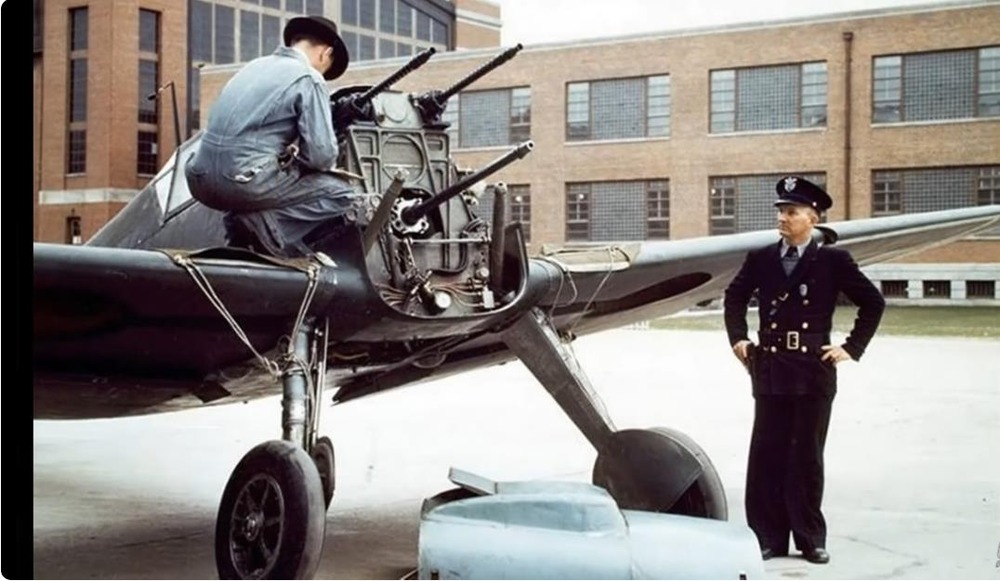
Wirtz pumps are really clever.
Spiny Norman said:
Wirtz pumps are really clever.
that’s cool, physics demonstrated
Quantum Computing with Light: The Breakthrough?
In post WWII Russia, Stalin banned ownership of any Western music.
All records allowed in the country had to be from Russian composers. But there was an Underground hungry for Western popular music, from Jazz and Blues to Rock & Roll.
But vinyl smuggling was dangerous, and acquiring the scarce material to make copies of those records arriving in the country was expensive and very risky.
An ingenious solution to this problem began to emerge in the form of “bone music,” or sometimes called “bones ‘n’ ribs” music, or simply Ribs.
A 19-year-old young sound engineer Ruslan Bogoslowski, from Leningrad, changed the rules of the game when he created a device to hack Western albums so he could distribute them all over Russia. The problem was that he couldn’t find material to copy his impressions on, vinyl was scarce as all oil derived products after the war.
So one day he ran into a pile of discarded X-rays and it worked!. At that time Russian law ordered that all X-rays had to be destroyed after 1 year of storage because they were flammable so he searched in trash cans and paid nurses for X-ray plates and for 20 years did about 1,000,000 copies of smuggling on X-ray plates, from the classics to the Beach Boys.
… And by the way, he eventually spent five years imprisoned in Siberia for this rebellion (no one has any idea what a prison in Siberia with 30°C below zero was all year round).
For more than 20 years, Bone Music was the only way Russian music lovers, could get Western music, played at “music and coffee parties” in their kitchens, away from the ears and eyes of the KGB.
This is a 78 rpm recording of Raj Kapoor’s Indian song ‘Awaara’ on an exposed chest x-ray. Probably around 1951. Each record was handmade and unique…
Music of the bones.
A testament to underground courage to subvert authority, rebellion and love of music.

Spiny Norman said:
In post WWII Russia, Stalin banned ownership of any Western music.
All records allowed in the country had to be from Russian composers. But there was an Underground hungry for Western popular music, from Jazz and Blues to Rock & Roll.
But vinyl smuggling was dangerous, and acquiring the scarce material to make copies of those records arriving in the country was expensive and very risky.
An ingenious solution to this problem began to emerge in the form of “bone music,” or sometimes called “bones ‘n’ ribs” music, or simply Ribs.
A 19-year-old young sound engineer Ruslan Bogoslowski, from Leningrad, changed the rules of the game when he created a device to hack Western albums so he could distribute them all over Russia. The problem was that he couldn’t find material to copy his impressions on, vinyl was scarce as all oil derived products after the war.
So one day he ran into a pile of discarded X-rays and it worked!. At that time Russian law ordered that all X-rays had to be destroyed after 1 year of storage because they were flammable so he searched in trash cans and paid nurses for X-ray plates and for 20 years did about 1,000,000 copies of smuggling on X-ray plates, from the classics to the Beach Boys.
… And by the way, he eventually spent five years imprisoned in Siberia for this rebellion (no one has any idea what a prison in Siberia with 30°C below zero was all year round).
For more than 20 years, Bone Music was the only way Russian music lovers, could get Western music, played at “music and coffee parties” in their kitchens, away from the ears and eyes of the KGB.
This is a 78 rpm recording of Raj Kapoor’s Indian song ‘Awaara’ on an exposed chest x-ray. Probably around 1951. Each record was handmade and unique…
Music of the bones.
A testament to underground courage to subvert authority, rebellion and love of music.
That’s quite ingenious and cool
Spiny Norman said:
In post WWII Russia, Stalin banned ownership of any Western music.
All records allowed in the country had to be from Russian composers. But there was an Underground hungry for Western popular music, from Jazz and Blues to Rock & Roll.
But vinyl smuggling was dangerous, and acquiring the scarce material to make copies of those records arriving in the country was expensive and very risky.
An ingenious solution to this problem began to emerge in the form of “bone music,” or sometimes called “bones ‘n’ ribs” music, or simply Ribs.
A 19-year-old young sound engineer Ruslan Bogoslowski, from Leningrad, changed the rules of the game when he created a device to hack Western albums so he could distribute them all over Russia. The problem was that he couldn’t find material to copy his impressions on, vinyl was scarce as all oil derived products after the war.
So one day he ran into a pile of discarded X-rays and it worked!. At that time Russian law ordered that all X-rays had to be destroyed after 1 year of storage because they were flammable so he searched in trash cans and paid nurses for X-ray plates and for 20 years did about 1,000,000 copies of smuggling on X-ray plates, from the classics to the Beach Boys.
… And by the way, he eventually spent five years imprisoned in Siberia for this rebellion (no one has any idea what a prison in Siberia with 30°C below zero was all year round).
For more than 20 years, Bone Music was the only way Russian music lovers, could get Western music, played at “music and coffee parties” in their kitchens, away from the ears and eyes of the KGB.
This is a 78 rpm recording of Raj Kapoor’s Indian song ‘Awaara’ on an exposed chest x-ray. Probably around 1951. Each record was handmade and unique…
Music of the bones.
A testament to underground courage to subvert authority, rebellion and love of music.
They’d be collectors items for sure.
Could this be the first evidence for string theory?
Which Country is Most Likely to Use a Nuclear Bomb First.
Earth’s north magnetic pole is on the move – here’s what will happen when our poles flip.
Spiny Norman said:
Earth’s north magnetic pole is on the move – here’s what will happen when our poles flip.
The big question: will Australia be at the top of the world maps then?
captain_spalding said:
Spiny Norman said:
Earth’s north magnetic pole is on the move – here’s what will happen when our poles flip.
The big question: will Australia be at the top of the world maps then?
And How Good Is Purportedly SCIENCE Articles Normalising Conflict¿
Earth having more than two poles is not a good thing. This causes the planet to have multiple magnetic fields which then fight each other. When the poles flip, this battle weakens the Earth’s protective magnetic field by up to 90%.
captain_spalding said:
Spiny Norman said:
Earth’s north magnetic pole is on the move – here’s what will happen when our poles flip.The big question: will Australia be at the top of the world maps then?
No, Tasmania.
Spiny Norman said:
Earth’s north magnetic pole is on the move – here’s what will happen when our poles flip.
“There’s the geographic one in northern Canada,”
When did that happen?
The Rev Dodgson said:
Spiny Norman said:
Earth’s north magnetic pole is on the move – here’s what will happen when our poles flip.“There’s the geographic one in northern Canada,”
When did that happen?
Yeah that’s the first thing I spotted. I chalked it up to a bit of miscommunication.
The Rev Dodgson said:
Spiny Norman said:
Earth’s north magnetic pole is on the move – here’s what will happen when our poles flip.
“There’s the geographic one in northern Canada,”
When did that happen?
1907
roughbarked said:
captain_spalding said:
Spiny Norman said:
Earth’s north magnetic pole is on the move – here’s what will happen when our poles flip.The big question: will Australia be at the top of the world maps then?
No, Tasmania.
Ah, so, Tasmania is not part of Australia?
We’re right, then, in leaving it off maps of the country.
captain_spalding said:
roughbarked said:
captain_spalding said:The big question: will Australia be at the top of the world maps then?
No, Tasmania.
Ah, so, Tasmania is not part of Australia?
We’re right, then, in leaving it off maps of the country.
;) I was simply thinking of it from the Tasmanian perspective, in that you can buy tshirts in Tassie that have Tassie on top of the map.
Would Your Blood Actually Boil In Space?
Spiny Norman said:
Would Your Blood Actually Boil In Space?
Bends The Truth
Not confirmed but anyway -
The Rift Valley is located in Pinglu, Shanxi on the Loess Plateau, a highland area in north-central China covering some 400,000 square km. It was formed due to movements within the earth’s crust and it is about 10 km long.

Spiny Norman said:
Not confirmed but anyway -The Rift Valley is located in Pinglu, Shanxi on the Loess Plateau, a highland area in north-central China covering some 400,000 square km. It was formed due to movements within the earth’s crust and it is about 10 km long.
Confirmed:
https://en.wikipedia.org/wiki/Shanxi_Rift_System
Figure’s humanoid is already walking and performing autonomous tasks.
After just 12 months of development, Figure has released video footage of its humanoid robot walking – and it’s looking pretty sprightly compared to its commercial competition. It’s our first look at a prototype that should be doing useful work within months.
Figure is taking a bluntly pragmatic approach to humanoid robotics. It doesn’t care about running, jumping, or doing backflips; its robot is designed to get to work and make itself useful as quickly as possible, starting with easy jobs involving moving things around in a warehouse-type environment, and then expanding its abilities to take over more and more tasks.
A map of the various submarine network cables around the world.
0 – 100 in less than a second!
Tom Scott drives a Formula SAE car that is a 4WD EV.
NASA, the early years.
https://www.youtube.com/watch?v=JqPs77j3qDI
I’d love to go to one of those festivals.
Strange Asteroid Polyhymnia Could Be Hiding Never Before Seen Elements.
Spiny Norman said:
Strange Asteroid Polyhymnia Could Be Hiding Never Before Seen Elements.
That’s rather devious of it.
Designing A Self Propelling Ionic Thrust Wing.
I’m not convinced it’ll have much performance in the full-scale model, but it’s still interesting.
Spiny Norman said:
Designing A Self Propelling Ionic Thrust Wing.I’m not convinced it’ll have much performance in the full-scale model, but it’s still interesting.
Yes. Interesting is what it is.
Strange Triple Star Disappeared In Just 50 Minutes and Nobody Knows Why.
Is iron the Achilles’ heel for cancer?
Cancer cells hoard iron in unusually high quantities. Scientists have discovered how to leverage this to create safer cancer drugs.
Australia’s Secret Chernobyl.
This is the tragic story of Wittenoom – a highly toxic city that was once populated by thousands.
Spiny Norman said:
Australia’s Secret Chernobyl.This is the tragic story of Wittenoom – a highly toxic city that was once populated by thousands.
Been there. Camped along the gorge at a lovely waterhole.
The most difficult Chinese character in the world means ‘biáng’, a noodle dish.
It’s made up of 58 strokes in its traditional form and it was encoded in Unicode in 2020 only.
Spiny Norman said:
The most difficult Chinese character in the world means ‘biáng’, a noodle dish.It’s made up of 58 strokes in its traditional form and it was encoded in Unicode in 2020 only.
I knew that.
Here’s a recipe that contains that info. One of eight biang biang noodles recipes.
https://omnivorescookbook.com/biang-biang-noodles
Michael V said:
Spiny Norman said:
The most difficult Chinese character in the world means ‘biáng’, a noodle dish.It’s made up of 58 strokes in its traditional form and it was encoded in Unicode in 2020 only.
I knew that.
Here’s a recipe that contains that info. One of eight biang biang noodles recipes.
https://omnivorescookbook.com/biang-biang-noodles
Eight biang biang noodles I have saved.
A speculative Soviet 1960’s design for a nuclear airship.

Spiny Norman said:
A speculative Soviet 1960’s design for a nuclear airship.
Where’s the swimming pool?
Weather Station Kurt was an automated weather outpost secretly established by Nazi Germany on the Labrador coast in Newfoundland in 1943, designed to provide critical meteorological data for military operations in the North Atlantic.
Despite its brief operational life, Kurt showcased advanced technology with its autonomous functioning and sophisticated instruments for measuring temperature, wind, and atmospheric pressure.
Its discovery in 1977 by historian Selma Barkham shed light on the covert presence of German operations in North America during World War II and underscored the strategic importance of meteorological data in wartime.
The deployment of the German Weather Station Kurt was a clandestine operation of considerable complexity, demonstrating a blend of ingenuity and audacity. U-537, a Type IXC U-boat of the Kriegsmarine, had the unique distinction of being chosen for this task.
The submarine departed from its base in Norway carrying not only its crew but also a specialized team equipped to install the weather station. Their destination was a desolate, uninhabited stretch of the Labrador coast in Newfoundland, far from prying eyes, yet strategically positioned to fill a critical gap in the meteorological data network.
Upon reaching the coast of Labrador in October 1943, the crew, led by Kapitänleutnant Peter Schrewe, faced the daunting task of setting up the station under harsh weather conditions and with the constant threat of Allied detection. Their operation was not only a race against time but also against the elements. The installation had to be swift to minimize the risk of being discovered by the Allies, whose naval and air patrols were a continual danger.
The Weather Station Kurt remained lost to time and memory until its unexpected discovery in 1977, not by a military operation or a government expedition, but by a historian named Selma Barkham. Barkham was conducting research on the historical land use of the Labrador coast when she stumbled upon the weather station. The site, which had sat undisturbed for over three decades, was a veritable time capsule from World War II.
The discovery of Kurt was met with a mix of surprise and fascination. For many, it was the first tangible evidence of German military presence in North America, a sobering reminder that the war had reached far closer to home than previously believed. It provided historians with a rare artifact of the war’s secret battles—those fought with intelligence, information, and environmental data.
China’s ‘least convenient convenience store’ that juts out from a cliff offers relief to climbers.
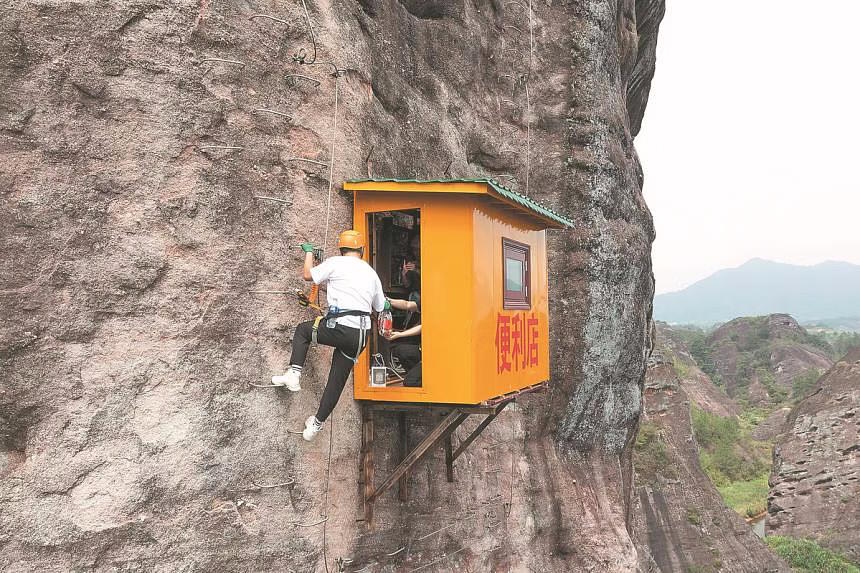
CHANGSHA – Imagine you are climbing a mountain, and along the way you start to get hungry or thirsty. How cool would it be if you could just stop at a convenience store nearby, despite being high above the ground?
Climbers in Pingjiang, Hunan province, do not have to imagine this. For them, such a store built on a cliff is a reality.
The Shiniuzhai scenic area is famous for its towering cliffs, deep canyons and unique rock formations. It is also known for its glass-bottom bridge, one of the longest and highest glass bridges in the world.
Mr Song Huizhou, general manager of Shiniuzhai, said the 2 sq m convenience store there is built on a mountainside about 120m above the ground.
It was constructed in 2017 and opened a year later.
Spiny Norman said:
China’s ‘least convenient convenience store’ that juts out from a cliff offers relief to climbers.
CHANGSHA – Imagine you are climbing a mountain, and along the way you start to get hungry or thirsty. How cool would it be if you could just stop at a convenience store nearby, despite being high above the ground?
Climbers in Pingjiang, Hunan province, do not have to imagine this. For them, such a store built on a cliff is a reality.
The Shiniuzhai scenic area is famous for its towering cliffs, deep canyons and unique rock formations. It is also known for its glass-bottom bridge, one of the longest and highest glass bridges in the world.
Mr Song Huizhou, general manager of Shiniuzhai, said the 2 sq m convenience store there is built on a mountainside about 120m above the ground.
It was constructed in 2017 and opened a year later.
That structure doesn’t look terribly secure.
Spiny Norman said:
China’s ‘least convenient convenience store’ that juts out from a cliff offers relief to climbers.
CHANGSHA – Imagine you are climbing a mountain, and along the way you start to get hungry or thirsty. How cool would it be if you could just stop at a convenience store nearby, despite being high above the ground?
Climbers in Pingjiang, Hunan province, do not have to imagine this. For them, such a store built on a cliff is a reality.
The Shiniuzhai scenic area is famous for its towering cliffs, deep canyons and unique rock formations. It is also known for its glass-bottom bridge, one of the longest and highest glass bridges in the world.
Mr Song Huizhou, general manager of Shiniuzhai, said the 2 sq m convenience store there is built on a mountainside about 120m above the ground.
It was constructed in 2017 and opened a year later.
Gosh!
Spiny Norman said:
Weather Station Kurt was an automated weather outpost secretly established by Nazi Germany on the Labrador coast in Newfoundland in 1943, designed to provide critical meteorological data for military operations in the North Atlantic.Despite its brief operational life, Kurt showcased advanced technology with its autonomous functioning and sophisticated instruments for measuring temperature, wind, and atmospheric pressure.
Its discovery in 1977 by historian Selma Barkham shed light on the covert presence of German operations in North America during World War II and underscored the strategic importance of meteorological data in wartime.
The deployment of the German Weather Station Kurt was a clandestine operation of considerable complexity, demonstrating a blend of ingenuity and audacity. U-537, a Type IXC U-boat of the Kriegsmarine, had the unique distinction of being chosen for this task.
The submarine departed from its base in Norway carrying not only its crew but also a specialized team equipped to install the weather station. Their destination was a desolate, uninhabited stretch of the Labrador coast in Newfoundland, far from prying eyes, yet strategically positioned to fill a critical gap in the meteorological data network.
Upon reaching the coast of Labrador in October 1943, the crew, led by Kapitänleutnant Peter Schrewe, faced the daunting task of setting up the station under harsh weather conditions and with the constant threat of Allied detection. Their operation was not only a race against time but also against the elements. The installation had to be swift to minimize the risk of being discovered by the Allies, whose naval and air patrols were a continual danger.
The Weather Station Kurt remained lost to time and memory until its unexpected discovery in 1977, not by a military operation or a government expedition, but by a historian named Selma Barkham. Barkham was conducting research on the historical land use of the Labrador coast when she stumbled upon the weather station. The site, which had sat undisturbed for over three decades, was a veritable time capsule from World War II.
The discovery of Kurt was met with a mix of surprise and fascination. For many, it was the first tangible evidence of German military presence in North America, a sobering reminder that the war had reached far closer to home than previously believed. It provided historians with a rare artifact of the war’s secret battles—those fought with intelligence, information, and environmental data.
Huh!
TIL, ta.
Michael V said:
Spiny Norman said:
Weather Station Kurt was an automated weather outpost secretly established by Nazi Germany on the Labrador coast in Newfoundland in 1943, designed to provide critical meteorological data for military operations in the North Atlantic.
Despite its brief operational life, Kurt showcased advanced technology with its autonomous functioning and sophisticated instruments for measuring temperature, wind, and atmospheric pressure.
Its discovery in 1977 by historian Selma Barkham shed light on the covert presence of German operations in North America during World War II and underscored the strategic importance of meteorological data in wartime.
The deployment of the German Weather Station Kurt was a clandestine operation of considerable complexity, demonstrating a blend of ingenuity and audacity. U-537, a Type IXC U-boat of the Kriegsmarine, had the unique distinction of being chosen for this task.
The submarine departed from its base in Norway carrying not only its crew but also a specialized team equipped to install the weather station. Their destination was a desolate, uninhabited stretch of the Labrador coast in Newfoundland, far from prying eyes, yet strategically positioned to fill a critical gap in the meteorological data network.
Upon reaching the coast of Labrador in October 1943, the crew, led by Kapitänleutnant Peter Schrewe, faced the daunting task of setting up the station under harsh weather conditions and with the constant threat of Allied detection. Their operation was not only a race against time but also against the elements. The installation had to be swift to minimize the risk of being discovered by the Allies, whose naval and air patrols were a continual danger.
The Weather Station Kurt remained lost to time and memory until its unexpected discovery in 1977, not by a military operation or a government expedition, but by a historian named Selma Barkham. Barkham was conducting research on the historical land use of the Labrador coast when she stumbled upon the weather station. The site, which had sat undisturbed for over three decades, was a veritable time capsule from World War II.
The discovery of Kurt was met with a mix of surprise and fascination. For many, it was the first tangible evidence of German military presence in North America, a sobering reminder that the war had reached far closer to home than previously believed. It provided historians with a rare artifact of the war’s secret battles—those fought with intelligence, information, and environmental data.
Huh!
TIL, ta.
Now Find MH370
Muhamed the Mathematical Horse | Tales From the Bottle.
Can Mud ACTUALLY hide you from Predator*???
I put this here because maybe Spiny will read it and possibly have an answer.
Was watching this video, Why NASA Relies On A 1950’s Aircraft Design To Track 21st Century Spacecraft
Because I was always interested in the Canberra.
and at about 9:57 from a 13:21 minute video I spotted this image:

Now I am wondering what the NASA scientists were using Methyl Bromide for at high altitudes?
roughbarked said:
I put this here because maybe Spiny will read it and possibly have an answer.Was watching this video, Why NASA Relies On A 1950’s Aircraft Design To Track 21st Century Spacecraft
Because I was always interested in the Canberra.
and at about 9:57 from a 13:21 minute video I spotted this image:
Now I am wondering what the NASA scientists were using Methyl Bromide for at high altitudes?
Chem trails ?
Cymek said:
roughbarked said:
I put this here because maybe Spiny will read it and possibly have an answer.Was watching this video, Why NASA Relies On A 1950’s Aircraft Design To Track 21st Century Spacecraft
Because I was always interested in the Canberra.
and at about 9:57 from a 13:21 minute video I spotted this image:
Now I am wondering what the NASA scientists were using Methyl Bromide for at high altitudes?
Chem trails ?
Now there’s a thought. ;)
roughbarked said:
I put this here because maybe Spiny will read it and possibly have an answer.Was watching this video, Why NASA Relies On A 1950’s Aircraft Design To Track 21st Century Spacecraft
Because I was always interested in the Canberra.
and at about 9:57 from a 13:21 minute video I spotted this image:
Now I am wondering what the NASA scientists were using Methyl Bromide for at high altitudes?
maybe fire extinguisher.
JudgeMental said:
roughbarked said:
I put this here because maybe Spiny will read it and possibly have an answer.Was watching this video, Why NASA Relies On A 1950’s Aircraft Design To Track 21st Century Spacecraft
Because I was always interested in the Canberra.
and at about 9:57 from a 13:21 minute video I spotted this image:
Now I am wondering what the NASA scientists were using Methyl Bromide for at high altitudes?
maybe fire extinguisher.
Bromomethane was once used in specialty fire extinguishers, prior to the advent of less toxic halons, as it is electrically non-conductive and leaves no residue. It was used primarily for electrical substations, military aircraft, and other industrial hazards. It was never as popular as other agents due to its high cost and toxicity. Bromomethane was used from the 1920s to the 1960s, and continued to be used in aircraft engine fire suppression systems into the late 1960s.
wiki
roughbarked said:
I put this here because maybe Spiny will read it and possibly have an answer.Was watching this video, Why NASA Relies On A 1950’s Aircraft Design To Track 21st Century Spacecraft
Because I was always interested in the Canberra.
and at about 9:57 from a 13:21 minute video I spotted this image:
Now I am wondering what the NASA scientists were using Methyl Bromide for at high altitudes?
“Bromomethane was once used in specialty fire extinguishers, prior to the advent of less toxic halons, as it is electrically non-conductive and leaves no residue. It was used primarily for electrical substations, military aircraft, and other industrial hazards. It was never as popular as other agents due to its high cost and toxicity. Bromomethane was used from the 1920s to the 1960s, and continued to be used in aircraft engine fire suppression systems into the late 1960s.”
https://en.wikipedia.org/wiki/Bromomethane
Michael V said:
JudgeMental said:
JudgeMental said:
roughbarked said:
I put this here because maybe Spiny will read it and possibly have an answer.
Was watching this video, Why NASA Relies On A 1950’s Aircraft Design To Track 21st Century Spacecraft
Because I was always interested in the Canberra.
and at about 9:57 from a 13:21 minute video I spotted this image:
Now I am wondering what the NASA scientists were using Methyl Bromide for at high altitudes?
maybe fire extinguisher.
Bromomethane was once used in specialty fire extinguishers, prior to the advent of less toxic halons, as it is electrically non-conductive and leaves no residue. It was used primarily for electrical substations, military aircraft, and other industrial hazards. It was never as popular as other agents due to its high cost and toxicity. Bromomethane was used from the 1920s to the 1960s, and continued to be used in aircraft engine fire suppression systems into the late 1960s.
wiki
“Bromomethane was once used in specialty fire extinguishers, prior to the advent of less toxic halons, as it is electrically non-conductive and leaves no residue. It was used primarily for electrical substations, military aircraft, and other industrial hazards. It was never as popular as other agents due to its high cost and toxicity. Bromomethane was used from the 1920s to the 1960s, and continued to be used in aircraft engine fire suppression systems into the late 1960s.”
Many people use slash are bromides at high altitude.
roughbarked said:
I put this here because maybe Spiny will read it and possibly have an answer.Was watching this video, Why NASA Relies On A 1950’s Aircraft Design To Track 21st Century Spacecraft
Because I was always interested in the Canberra.
and at about 9:57 from a 13:21 minute video I spotted this image:
Now I am wondering what the NASA scientists were using Methyl Bromide for at high altitudes?
I think I used to go out with Methyl Bromide.
No, wait, that was Ethel.
Kingy said:
roughbarked said:
I put this here because maybe Spiny will read it and possibly have an answer.Was watching this video, Why NASA Relies On A 1950’s Aircraft Design To Track 21st Century Spacecraft
Because I was always interested in the Canberra.
and at about 9:57 from a 13:21 minute video I spotted this image:
Now I am wondering what the NASA scientists were using Methyl Bromide for at high altitudes?
I think I used to go out with Methyl Bromide.
No, wait, that was Ethel.
I was wondering why they were flying actresses at high altitudes, but, no, that was Methyl Streep.
captain_spalding said:
Kingy said:
roughbarked said:
I put this here because maybe Spiny will read it and possibly have an answer.Was watching this video, Why NASA Relies On A 1950’s Aircraft Design To Track 21st Century Spacecraft
Because I was always interested in the Canberra.
and at about 9:57 from a 13:21 minute video I spotted this image:
Now I am wondering what the NASA scientists were using Methyl Bromide for at high altitudes?
I think I used to go out with Methyl Bromide.
No, wait, that was Ethel.
I was wondering why they were flying actresses at high altitudes, but, no, that was Methyl Streep.

JudgeMental said:
roughbarked said:
I put this here because maybe Spiny will read it and possibly have an answer.Was watching this video, Why NASA Relies On A 1950’s Aircraft Design To Track 21st Century Spacecraft
Because I was always interested in the Canberra.
and at about 9:57 from a 13:21 minute video I spotted this image:
Now I am wondering what the NASA scientists were using Methyl Bromide for at high altitudes?
maybe fire extinguisher.
That might work.
JudgeMental said:
JudgeMental said:
roughbarked said:
I put this here because maybe Spiny will read it and possibly have an answer.Was watching this video, Why NASA Relies On A 1950’s Aircraft Design To Track 21st Century Spacecraft
Because I was always interested in the Canberra.
and at about 9:57 from a 13:21 minute video I spotted this image:
Now I am wondering what the NASA scientists were using Methyl Bromide for at high altitudes?
maybe fire extinguisher.
Bromomethane was once used in specialty fire extinguishers, prior to the advent of less toxic halons, as it is electrically non-conductive and leaves no residue. It was used primarily for electrical substations, military aircraft, and other industrial hazards. It was never as popular as other agents due to its high cost and toxicity. Bromomethane was used from the 1920s to the 1960s, and continued to be used in aircraft engine fire suppression systems into the late 1960s.
wiki
Thanks.
Michael V said:
roughbarked said:
I put this here because maybe Spiny will read it and possibly have an answer.Was watching this video, Why NASA Relies On A 1950’s Aircraft Design To Track 21st Century Spacecraft
Because I was always interested in the Canberra.
and at about 9:57 from a 13:21 minute video I spotted this image:
Now I am wondering what the NASA scientists were using Methyl Bromide for at high altitudes?
“Bromomethane was once used in specialty fire extinguishers, prior to the advent of less toxic halons, as it is electrically non-conductive and leaves no residue. It was used primarily for electrical substations, military aircraft, and other industrial hazards. It was never as popular as other agents due to its high cost and toxicity. Bromomethane was used from the 1920s to the 1960s, and continued to be used in aircraft engine fire suppression systems into the late 1960s.”
https://en.wikipedia.org/wiki/Bromomethane
Well that’s something I’ve not seen before. The only fire extinguishers I’ve ever seen in aviation are the halon or BCF types. They also deplete the ozone layer but when the airline industry was ordered to go ozone-friendly there was nothing that was as effective, so they stuck with what they had.
Spiny Norman said:
Well that’s something I’ve not seen before. The only fire extinguishers I’ve ever seen in aviation are the halon or BCF types. They also deplete the ozone layer but when the airline industry was ordered to go ozone-friendly there was nothing that was as effective, so they stuck with what they had.
thanks.
Just watching this video from one of my fave YT channels.
Such a large rotating space station, to create artificial gravity, would have to have the axis of rotation aligned with the Earth’s axis of rotation so the stations attitude would stay the same reference to the Earth all the time?
The Last Thing To Ever Happen In The Universe.
Kurzgesagt – In a Nutshell.
Hey, Bill, here’s one for you:
https://www.boredpanda.com/crazy-things-airline-industry/
although you may have heard of them before this.
NASA | Sarychev Volcano Eruption from the International Space Station.
The SR-72 is REAL — And we can prove it/
Sandboxx with Alex Hollings.
Clearest images ever taken of Equatorial Ridge on Saturn’s moon ‘Iapetus’.




Spiny Norman said:
Clearest images ever taken of Equatorial Ridge on Saturn’s moon ‘Iapetus’.
Weird
dv said:
Spiny Norman said:
Clearest images ever taken of Equatorial Ridge on Saturn’s moon ‘Iapetus’.
Weird
Someone suggested that it was just some casting flash.
Sounds plausible.
Spiny Norman said:
dv said:
Spiny Norman said:
Clearest images ever taken of Equatorial Ridge on Saturn’s moon ‘Iapetus’.
Weird
Someone suggested that it was just some casting flash.
Sounds plausible.
I was going to suggest that someone forgot to smooth down their weld.
dv said:
Spiny Norman said:
Clearest images ever taken of Equatorial Ridge on Saturn’s moon ‘Iapetus’.
Weird
Might be good for a celestial cricket game.
captain_spalding said:
Spiny Norman said:
dv said:Weird
Someone suggested that it was just some casting flash.
Sounds plausible.
I was going to suggest that someone forgot to smooth down their weld.
Yeah, I mean it’s going out to Saturn.
Who’s going to see it there?

Great Red Spot for scale.
FYI, the Great Red Spot is a persistent high-pressure
region in Jupiter, producing an anticyclonic storm
that is the largest in the Solar System.
Basically it is a never ending hurricane triple the
size of 688865446789631134 elephants aligned
with 225690009912487544 salt water crocodiles
and 3 bananas.
The wind speed around the eye of the storm reaches
432 km/h, or 50 Florida houses destroyed per second.
JudgeMental said:

Great Red Spot for scale.
FYI, the Great Red Spot is a persistent high-pressure
region in Jupiter, producing an anticyclonic storm
that is the largest in the Solar System.Basically it is a never ending hurricane triple the
size of 688865446789631134 elephants aligned
with 225690009912487544 salt water crocodiles
and 3 bananas.The wind speed around the eye of the storm reaches
432 km/h, or 50 Florida houses destroyed per second.
Good luck getting insurance against that.
Spiny Norman said:
The SR-72 is REAL — And we can prove it/
Sandboxx with Alex Hollings.
I’ve seen that video a couple of times.
dv said:
Spiny Norman said:
Clearest images ever taken of Equatorial Ridge on Saturn’s moon ‘Iapetus’.
Weird
Looks like it was cast like a lead sinker.
Michael V said:
dv said:
Spiny Norman said:
Clearest images ever taken of Equatorial Ridge on Saturn’s moon ‘Iapetus’.
Weird
Might be good for a celestial cricket game.
More like Bocce.
Spiny Norman said:
The SR-72 is REAL — And we can prove it/
Sandboxx with Alex Hollings.
Believe it when I see it.
JudgeMental said:
Spiny Norman said:
The SR-72 is REAL — And we can prove it/
Sandboxx with Alex Hollings.Believe it when I see it.
I doubt that will ever happen.
roughbarked said:
JudgeMental said:
Spiny Norman said:
The SR-72 is REAL — And we can prove it/
Sandboxx with Alex Hollings.Believe it when I see it.
I doubt that will ever happen.
No, they are invisible.
JudgeMental said:
Spiny Norman said:
The SR-72 is REAL — And we can prove it/
Sandboxx with Alex Hollings.Believe it when I see it.
It seems unlikely that, if it does exist, its appearance is anything like that.
Before the F-117 Nighthawk was made public, there was all sorts of speculation about what it looked like.
All of them (most assuming that it’d be named the ‘F-19’) were based on it being a sleek, thin aircraft, everything rounded off, with as few corners and ridges as possible, and quite probably not vertical or dihedral surfaces.
So, the F-117’s actual humped, angular appearance took everyone quite by surprise.
Spiny Norman said:
Clearest images ever taken of Equatorial Ridge on Saturn’s moon ‘Iapetus’.
The best explanation that I’ve heard that Iapetus once had a ring like Saturn, but being small and low gravity, as the ring slowly lost momentum, the particles in it gradually touched down into a pile along the line of the ring creating a ridge.
Kingy said:
Spiny Norman said:
Clearest images ever taken of Equatorial Ridge on Saturn’s moon ‘Iapetus’.
The best explanation that I’ve heard that Iapetus once had a ring like Saturn, but being small and low gravity, as the ring slowly lost momentum, the particles in it gradually touched down into a pile along the line of the ring creating a ridge.
https://en.wikipedia.org/wiki/Equatorial_ridge_on_Iapetus
The octopus, a most remarkable creature.
Spiny Norman said:
The octopus, a most remarkable creature.
Ta.
Have you been to “Rex’s Hangar?”:
Chris a.k.a “Rex” likes to talk about planes. A lot.
The Twelve-Gun “Twin-Engine Spitfires” | Supermarine 324, 325, 327
roughbarked said:
Spiny Norman said:
The octopus, a most remarkable creature.Ta. Have you been to “Rex’s Hangar?”:
Chrisa.k.a “Rex”likes to talk about planes. A lot.The Twelve-Gun “Twin-Engine Spitfires” | Supermarine 324, 325, 327
By coincidence, i was messing around with AI imaging a few weeks back, trying to get it to visualise a twin-engine Spitfire (it was hopeless).
I wasn’t aware that it had actually been given consideration in the 1930s. But then, in some ways it’s no surprise. There was a fad then for designs for long-range (usually twin-engine) ‘escort’/‘zerstorer fighters, like the Me110 and the Fokker G.1.
captain_spalding said:
roughbarked said:
Spiny Norman said:
The octopus, a most remarkable creature.Ta. Have you been to “Rex’s Hangar?”:
Chrisa.k.a “Rex”likes to talk about planes. A lot.The Twelve-Gun “Twin-Engine Spitfires” | Supermarine 324, 325, 327
By coincidence, i was messing around with AI imaging a few weeks back, trying to get it to visualise a twin-engine Spitfire (it was hopeless).
I wasn’t aware that it had actually been given consideration in the 1930s. But then, in some ways it’s no surprise. There was a fad then for designs for long-range (usually twin-engine) ‘escort’/‘zerstorer fighters, like the Me110 and the Fokker G.1.
We ended up with De Havilland’s Mosquito and the Hawker Typhoon/Tempest.
roughbarked said:
captain_spalding said:
roughbarked said:Ta. Have you been to “Rex’s Hangar?”:
Chrisa.k.a “Rex”likes to talk about planes. A lot.The Twelve-Gun “Twin-Engine Spitfires” | Supermarine 324, 325, 327
By coincidence, i was messing around with AI imaging a few weeks back, trying to get it to visualise a twin-engine Spitfire (it was hopeless).
I wasn’t aware that it had actually been given consideration in the 1930s. But then, in some ways it’s no surprise. There was a fad then for designs for long-range (usually twin-engine) ‘escort’/‘zerstorer fighters, like the Me110 and the Fokker G.1.
We ended up with De Havilland’s Mosquito and the Hawker Typhoon/Tempest.
The British made some fine planes during WW2 including those 3.
Peak Warming Man said:
roughbarked said:
captain_spalding said:By coincidence, i was messing around with AI imaging a few weeks back, trying to get it to visualise a twin-engine Spitfire (it was hopeless).
I wasn’t aware that it had actually been given consideration in the 1930s. But then, in some ways it’s no surprise. There was a fad then for designs for long-range (usually twin-engine) ‘escort’/‘zerstorer fighters, like the Me110 and the Fokker G.1.
We ended up with De Havilland’s Mosquito and the Hawker Typhoon/Tempest.
The British made some fine planes during WW2 including those 3.
Ye spealeth of great truths.
Peak Warming Man said:
roughbarked said:
captain_spalding said:By coincidence, i was messing around with AI imaging a few weeks back, trying to get it to visualise a twin-engine Spitfire (it was hopeless).
I wasn’t aware that it had actually been given consideration in the 1930s. But then, in some ways it’s no surprise. There was a fad then for designs for long-range (usually twin-engine) ‘escort’/‘zerstorer fighters, like the Me110 and the Fokker G.1.
We ended up with De Havilland’s Mosquito and the Hawker Typhoon/Tempest.
The British made some fine planes during WW2 including those 3.
They could have done a better job with some.
Like the Westland Whirlwind.

Like a lot of promising designs, it seems to have been handicapped by its engines, in this case Rolls-Royce Peregrines, which had lots of troubles. So, less than 120 were built.
With Merlin engines, especially with ‘handed’ props, who knows? It might have been a world-beater.
roughbarked said:
Peak Warming Man said:
roughbarked said:We ended up with De Havilland’s Mosquito and the Hawker Typhoon/Tempest.
The British made some fine planes during WW2 including those 3.
Ye spealeth of great truths.
l=k
captain_spalding said:
Peak Warming Man said:
roughbarked said:We ended up with De Havilland’s Mosquito and the Hawker Typhoon/Tempest.
The British made some fine planes during WW2 including those 3.
They could have done a better job with some.
Like the Westland Whirlwind.
Like a lot of promising designs, it seems to have been handicapped by its engines, in this case Rolls-Royce Peregrines, which had lots of troubles. So, less than 120 were built.
With Merlin engines, especially with ‘handed’ props, who knows? It might have been a world-beater.
That was a special that needed a bit of time to develop better. Unfortunately the speed at which wartime tech develops, things do tend to get left behind when they shouldn’t have.
captain_spalding said:
Peak Warming Man said:
roughbarked said:We ended up with De Havilland’s Mosquito and the Hawker Typhoon/Tempest.
The British made some fine planes during WW2 including those 3.
They could have done a better job with some.
Like the Westland Whirlwind.
Like a lot of promising designs, it seems to have been handicapped by its engines, in this case Rolls-Royce Peregrines, which had lots of troubles. So, less than 120 were built.
With Merlin engines, especially with ‘handed’ props, who knows? It might have been a world-beater.
How did the hand the props, with gearing I guess.
Could you hand the engines?
Peak Warming Man said:
captain_spalding said:
Peak Warming Man said:The British made some fine planes during WW2 including those 3.
They could have done a better job with some.
Like the Westland Whirlwind.
Like a lot of promising designs, it seems to have been handicapped by its engines, in this case Rolls-Royce Peregrines, which had lots of troubles. So, less than 120 were built.
With Merlin engines, especially with ‘handed’ props, who knows? It might have been a world-beater.
How did the hand the props, with gearing I guess.
Could you hand the engines?
Yep. I forget which marques of Merlins rotated the opposite way but they certainly existed. For a lightweight fighter like that they quite possibly wouldn’t have bothered though.
Spiny Norman said:
Peak Warming Man said:
captain_spalding said:They could have done a better job with some.
Like the Westland Whirlwind.
Like a lot of promising designs, it seems to have been handicapped by its engines, in this case Rolls-Royce Peregrines, which had lots of troubles. So, less than 120 were built.
With Merlin engines, especially with ‘handed’ props, who knows? It might have been a world-beater.
How did the hand the props, with gearing I guess.
Could you hand the engines?
Yep. I forget which marques of Merlins rotated the opposite way but they certainly existed. For a lightweight fighter like that they quite possibly wouldn’t have bothered though.
I knew that they could be made like that, but this wiki paragraph explains it concisely:
‘Drawbacks of counter-rotating propellers come from the fact that, in order to reverse the rotation of one propeller, either one propeller must have an additional reversing gearbox, or the engines themselves must be adapted to turn in opposite directions. (Meaning that there are essentially two engine designs, one with left-turning and the other with right-turning parts, which complicates manufacture and maintenance.)’
captain_spalding said:
Spiny Norman said:
Peak Warming Man said:How did the hand the props, with gearing I guess.
Could you hand the engines?
Yep. I forget which marques of Merlins rotated the opposite way but they certainly existed. For a lightweight fighter like that they quite possibly wouldn’t have bothered though.
I knew that they could be made like that, but this wiki paragraph explains it concisely:
‘Drawbacks of counter-rotating propellers come from the fact that, in order to reverse the rotation of one propeller, either one propeller must have an additional reversing gearbox, or the engines themselves must be adapted to turn in opposite directions. (Meaning that there are essentially two engine designs, one with left-turning and the other with right-turning parts, which complicates manufacture and maintenance.)’
They would otherwise have been a good weapons platform.
captain_spalding said:
Spiny Norman said:
Peak Warming Man said:How did the hand the props, with gearing I guess.
Could you hand the engines?
Yep. I forget which marques of Merlins rotated the opposite way but they certainly existed. For a lightweight fighter like that they quite possibly wouldn’t have bothered though.
I knew that they could be made like that, but this wiki paragraph explains it concisely:
‘Drawbacks of counter-rotating propellers come from the fact that, in order to reverse the rotation of one propeller, either one propeller must have an additional reversing gearbox, or the engines themselves must be adapted to turn in opposite directions. (Meaning that there are essentially two engine designs, one with left-turning and the other with right-turning parts, which complicates manufacture and maintenance.)’
It’s not that difficult, just different (mirrored) camshafts and maybe a bit of tweaking of the oil system.
captain_spalding said:
Spiny Norman said:
Peak Warming Man said:How did the hand the props, with gearing I guess.
Could you hand the engines?
Yep. I forget which marques of Merlins rotated the opposite way but they certainly existed. For a lightweight fighter like that they quite possibly wouldn’t have bothered though.
I knew that they could be made like that, but this wiki paragraph explains it concisely:
‘Drawbacks of counter-rotating propellers come from the fact that, in order to reverse the rotation of one propeller, either one propeller must have an additional reversing gearbox, or the engines themselves must be adapted to turn in opposite directions. (Meaning that there are essentially two engine designs, one with left-turning and the other with right-turning parts, which complicates manufacture and maintenance.)’
I can imagine the maintenance cockups.
Peak Warming Man said:
captain_spalding said:
Spiny Norman said:Yep. I forget which marques of Merlins rotated the opposite way but they certainly existed. For a lightweight fighter like that they quite possibly wouldn’t have bothered though.
I knew that they could be made like that, but this wiki paragraph explains it concisely:
‘Drawbacks of counter-rotating propellers come from the fact that, in order to reverse the rotation of one propeller, either one propeller must have an additional reversing gearbox, or the engines themselves must be adapted to turn in opposite directions. (Meaning that there are essentially two engine designs, one with left-turning and the other with right-turning parts, which complicates manufacture and maintenance.)’
I can imagine the maintenance cockups.
New bloke on the job would be like asking him to find the left handed screwdriver.
roughbarked said:
captain_spalding said:
Spiny Norman said:Yep. I forget which marques of Merlins rotated the opposite way but they certainly existed. For a lightweight fighter like that they quite possibly wouldn’t have bothered though.
I knew that they could be made like that, but this wiki paragraph explains it concisely:
‘Drawbacks of counter-rotating propellers come from the fact that, in order to reverse the rotation of one propeller, either one propeller must have an additional reversing gearbox, or the engines themselves must be adapted to turn in opposite directions. (Meaning that there are essentially two engine designs, one with left-turning and the other with right-turning parts, which complicates manufacture and maintenance.)’
They would otherwise have been a good weapons platform.
The few that were made apparently did dreadful damage to German organisation and transport in France, with a usual armament of four nose-mounted 20mm cannon giving a devastating concentrated cone of fire.
I believe that one was experimentally given sixteen .303 machine guns in its nose. Would not have cared to be the armourer for that aircraft.
Peak Warming Man said:
roughbarked said:
captain_spalding said:By coincidence, i was messing around with AI imaging a few weeks back, trying to get it to visualise a twin-engine Spitfire (it was hopeless).
I wasn’t aware that it had actually been given consideration in the 1930s. But then, in some ways it’s no surprise. There was a fad then for designs for long-range (usually twin-engine) ‘escort’/‘zerstorer fighters, like the Me110 and the Fokker G.1.
We ended up with De Havilland’s Mosquito and the Hawker Typhoon/Tempest.
The British made some fine planes during WW2 including those 3.
beaufighter was another.
captain_spalding said:
roughbarked said:
captain_spalding said:I knew that they could be made like that, but this wiki paragraph explains it concisely:
‘Drawbacks of counter-rotating propellers come from the fact that, in order to reverse the rotation of one propeller, either one propeller must have an additional reversing gearbox, or the engines themselves must be adapted to turn in opposite directions. (Meaning that there are essentially two engine designs, one with left-turning and the other with right-turning parts, which complicates manufacture and maintenance.)’
They would otherwise have been a good weapons platform.
The few that were made apparently did dreadful damage to German organisation and transport in France, with a usual armament of four nose-mounted 20mm cannon giving a devastating concentrated cone of fire.
I believe that one was experimentally given sixteen .303 machine guns in its nose. Would not have cared to be the armourer for that aircraft.
Sounds like an explosive nightmare of tangling belts.
JudgeMental said:
Peak Warming Man said:
roughbarked said:We ended up with De Havilland’s Mosquito and the Hawker Typhoon/Tempest.
The British made some fine planes during WW2 including those 3.
beaufighter was another.
Bristol’s silent maraurderer.
roughbarked said:
JudgeMental said:
Peak Warming Man said:The British made some fine planes during WW2 including those 3.
beaufighter was another.
Bristol’s silent maraurderer.
Captain Bigglesworth’s fave plane of WWII
roughbarked said:
captain_spalding said:
roughbarked said:They would otherwise have been a good weapons platform.
The few that were made apparently did dreadful damage to German organisation and transport in France, with a usual armament of four nose-mounted 20mm cannon giving a devastating concentrated cone of fire.
I believe that one was experimentally given sixteen .303 machine guns in its nose. Would not have cared to be the armourer for that aircraft.
Sounds like an explosive nightmare of tangling belts.
No, it was all disintegrating links, passed through feed troughs from ammunition boxes.
You couldn’t use the cloth ammunition belts. Where would the ‘empty’ belts pile up in the noses and wings of aircraft?
captain_spalding said:
roughbarked said:
captain_spalding said:The few that were made apparently did dreadful damage to German organisation and transport in France, with a usual armament of four nose-mounted 20mm cannon giving a devastating concentrated cone of fire.
I believe that one was experimentally given sixteen .303 machine guns in its nose. Would not have cared to be the armourer for that aircraft.
Sounds like an explosive nightmare of tangling belts.
No, it was all disintegrating links, passed through feed troughs from ammunition boxes.
You couldn’t use the cloth ammunition belts. Where would the ‘empty’ belts pile up in the noses and wings of aircraft?
A serious nightmare.
captain_spalding said:
roughbarked said:
captain_spalding said:The few that were made apparently did dreadful damage to German organisation and transport in France, with a usual armament of four nose-mounted 20mm cannon giving a devastating concentrated cone of fire.
I believe that one was experimentally given sixteen .303 machine guns in its nose. Would not have cared to be the armourer for that aircraft.
Sounds like an explosive nightmare of tangling belts.
No, it was all disintegrating links, passed through feed troughs from ammunition boxes.
You couldn’t use the cloth ammunition belts. Where would the ‘empty’ belts pile up in the noses and wings of aircraft?
FWIW a few of the more modern aircraft, the A-10 for one, retain the spend cartridges onboard to help them maintain the centre of gravity within limits.
Spiny Norman said:
captain_spalding said:
roughbarked said:Sounds like an explosive nightmare of tangling belts.
No, it was all disintegrating links, passed through feed troughs from ammunition boxes.
You couldn’t use the cloth ammunition belts. Where would the ‘empty’ belts pile up in the noses and wings of aircraft?
FWIW a few of the more modern aircraft, the A-10 for one, retain the spend cartridges onboard to help them maintain the centre of gravity within limits.
smart planes.
Spiny Norman said:
captain_spalding said:
roughbarked said:Sounds like an explosive nightmare of tangling belts.
No, it was all disintegrating links, passed through feed troughs from ammunition boxes.
You couldn’t use the cloth ammunition belts. Where would the ‘empty’ belts pile up in the noses and wings of aircraft?
FWIW a few of the more modern aircraft, the A-10 for one, retain the spend cartridges onboard to help them maintain the centre of gravity within limits.
More useless trivia – A lot of the jets that have the gun ports in front of the air inlets have to have a ‘fuel bumping’ system. It’s because quite often when the guns are fired it cuts down on the oxygen that the engines are sucking so they can sometimes actually flame-out.
That’s bad.
So a system that reduces the fuel flow when the guns are fired is used so there’s a short dip in power instead of a bit one for longer. Trying an engine restart when getting shot at pretty much guarantees a very bad day.
Spiny Norman said:
Spiny Norman said:
captain_spalding said:No, it was all disintegrating links, passed through feed troughs from ammunition boxes.
You couldn’t use the cloth ammunition belts. Where would the ‘empty’ belts pile up in the noses and wings of aircraft?
FWIW a few of the more modern aircraft, the A-10 for one, retain the spend cartridges onboard to help them maintain the centre of gravity within limits.
More useless trivia – A lot of the jets that have the gun ports in front of the air inlets have to have a ‘fuel bumping’ system. It’s because quite often when the guns are fired it cuts down on the oxygen that the engines are sucking so they can sometimes actually flame-out.
That’s bad.
So a system that reduces the fuel flow when the guns are fired is used so there’s a short dip in power instead of a bit one for longer. Trying an engine restart when getting shot at pretty much guarantees a very bad day.
_)
Hawker Hunters, back in the 1950s, had to have ‘blisters’ attached to the fuselage to retain expended cartridge cases, so that they weren’t accidentally ingested into the jet engine’s air intake, or do damage to the rear fuselage. They’re easily seen on all Hunters, just below the wing-root intakes.
Sounds like a lot of modern combat aircraft would benefit from caseless rounds…
party_pants said:
Sounds like a lot of modern combat aircraft would benefit from caseless rounds…
An interesting idea. I wonder how it might, or might not, work.
I’m thinking of feed mechanism, for a start. A cased round gives something to which a feed link can be attached, to facilitate mechanical feed of cartridges. You’re not going to get a usable, big enough, gravity- or spring-fed system up there.
The other thing is environmental effects on caseless cartridges. If may be 32 deg down on the ground, but then its up to 10,000 metres, where it’s an awful lot colder, then down to 32 deg on the ground again. The composition of caseless rounds would have to be adaptable, without expansion and contraction under such variations.
captain_spalding said:
party_pants said:
Sounds like a lot of modern combat aircraft would benefit from caseless rounds…
An interesting idea. I wonder how it might, or might not, work.
I’m thinking of feed mechanism, for a start. A cased round gives something to which a feed link can be attached, to facilitate mechanical feed of cartridges. You’re not going to get a usable, big enough, gravity- or spring-fed system up there.
The other thing is environmental effects on caseless cartridges. If may be 32 deg down on the ground, but then its up to 10,000 metres, where it’s an awful lot colder, then down to 32 deg on the ground again. The composition of caseless rounds would have to be adaptable, without expansion and contraction under such variations.
So, what are these caseless rounds cased in?
Q* why AI that is “Good at Math” a “Threat to Humanity”?
The SAT Question Everyone Got Wrong.
Veritasium.
https://www.youtube.com/watch?v=FUHkTs-Ipfg
Bugger me!
Spiny Norman said:
The SAT Question Everyone Got Wrong.
Veritasium.https://www.youtube.com/watch?v=FUHkTs-Ipfg
Bugger me!
+1
Spiny Norman said:
The SAT Question Everyone Got Wrong.
Veritasium.https://www.youtube.com/watch?v=FUHkTs-Ipfg
Bugger me!
18 minutes?
No time for that today, and couldn’t see how to get the transcript.
Seen it before (or something similar).
The Rev Dodgson said:
Spiny Norman said:
The SAT Question Everyone Got Wrong.
Veritasium.https://www.youtube.com/watch?v=FUHkTs-Ipfg
Bugger me!
18 minutes?
No time for that today, and couldn’t see how to get the transcript.
Seen it before (or something similar).
The answer to the SAT question is none of the provided options, it’s 4!
The Rev Dodgson said:
Spiny Norman said:
The SAT Question Everyone Got Wrong.
Veritasium.https://www.youtube.com/watch?v=FUHkTs-Ipfg
Bugger me!
18 minutes?
No time for that today, and couldn’t see how to get the transcript.
Seen it before (or something similar).
1
00:00:00,000 —> 00:00:03,000
- In 1982, there was one SAT question
2
00:00:03,000 —> 00:00:06,000
that every single student got wrong.
3
00:00:06,000 —> 00:00:08,000
Here it is.
4
00:00:08,000 —> 00:00:09,000
In the figure above,
5
00:00:09,000 —> 00:00:13,000
the radius of circle A is
1/3 the radius of circle B.
6
00:00:13,000 —> 00:00:15,000
Starting from the position
shown in the figure,
7
00:00:15,000 —> 00:00:19,000
circle A rolls around circle B.
8
00:00:19,000 —> 00:00:22,000
At the end of how many
revolutions of circle A
9
00:00:22,000 —> 00:00:23,000
will the center
10
00:00:23,000 —> 00:00:27,000
of the circle first
reach its starting point.
11
00:00:27,000 —> 00:00:33,000
Is it A, 3/2, B, three, C, six,
12
00:00:33,000 —> 00:00:38,000
D, 9/2, or E, nine?
13
00:00:38,000 —> 00:00:40,000
SAT Questions are designed to be quick.
14
00:00:40,000 —> 00:00:43,000
This exam gave students 30
minutes to solve 25 problems,
15
00:00:43,000 —> 00:00:45,000
so about a minute each.
16
00:00:45,000 —> 00:00:50,000
So feel free to pause the
video here and try to solve it.
17
00:00:50,000 —> 00:00:53,000
What is your answer?
18
00:00:53,000 —> 00:00:55,000
I’ll tell you right now that option B,
19
00:00:55,000 —> 00:00:58,000
or three, is not correct.
20
00:00:58,000 —> 00:01:02,000
When I first saw this problem,
my intuitive answer was B,
21
00:01:02,000 —> 00:01:05,000
because the circumference of
a circle is just two pi r,
22
00:01:05,000 —> 00:01:10,000
and since the radius of
circle B is three times
23
00:01:10,000 —> 00:01:11,000
the radius of circle A,
24
00:01:11,000 —> 00:01:14,000
the circumference of circle
B must also be three times
25
00:01:14,000 —> 00:01:16,000
the circumference of circle A.
26
00:01:16,000 —> 00:01:19,000
So logically, it should
take three full rotations
27
00:01:19,000 —> 00:01:22,000
of circle A to roll around circle B.
28
00:01:22,000 —> 00:01:26,000
So my answer was three.
29
00:01:26,000 —> 00:01:34,000
This is wrong, but so are
answers A, C, D, and E.
30
00:01:34,000 —> 00:01:37,000
The reason no one got question 17 correct
31
00:01:37,000 —> 00:01:40,000
is that the test writers
themselves got it wrong.
32
00:01:40,000 —> 00:01:42,000
They also thought the answer was three.
33
00:01:42,000 —> 00:01:46,000
So the actual correct
answer was not listed
34
00:01:46,000 —> 00:01:50,000
as an option on the test.
35
00:01:50,000 —> 00:01:53,000
Mistakes like this aren’t
supposed to happen on the SAT.
36
00:01:53,000 —> 00:01:56,000
For decades, it was the one
exam every student had to take
37
00:01:56,000 —> 00:01:58,000
to go to college in the US.
38
00:01:58,000 —> 00:01:59,000
It had a reputation
39
00:01:59,000 —> 00:02:02,000
for determining people’s entire futures.
40
00:02:02,000 —> 00:02:04,000
As a newspaper from the time stated,
41
00:02:04,000 —> 00:02:07,000
“If you mess up on your SAT
tests, you can forget it.
42
00:02:07,000 —> 00:02:10,000
Your life as a productive citizen is over.
43
00:02:10,000 —> 00:02:13,000
Hang it up, son.”
44
00:02:13,000 —> 00:02:16,000
Of 300,000 test takers,
45
00:02:16,000 —> 00:02:18,000
just three students wrote about the error
46
00:02:18,000 —> 00:02:21,000
to the College Board, the
company that administers the SAT,
47
00:02:21,000 —> 00:02:27,000
Shivan Kartha, Bruce
Taub, and Doug Jungreis.
48
00:02:27,000 —> 00:02:30,000
- I did a lot of math
problems when I was young
49
00:02:30,000 —> 00:02:31,000
for the competitions.
50
00:02:31,000 —> 00:02:34,000
I probably did thousands of
math problems and I read it
51
00:02:34,000 —> 00:02:36,000
and I was amazed how badly it’s worded.
52
00:02:36,000 —> 00:02:39,000
I just put three down. I
figured that’s what they wanted.
53
00:02:39,000 —> 00:02:41,000
- The three
students were confident none
54
00:02:41,000 —> 00:02:43,000
of the listed answers were correct,
55
00:02:43,000 —> 00:02:44,000
and their letters showed it.
56
00:02:44,000 —> 00:02:47,000
As a director at the
testing service recalled,
57
00:02:47,000 —> 00:02:48,000
they didn’t say they had come up
58
00:02:48,000 —> 00:02:50,000
with possible alternative answers
59
00:02:50,000 —> 00:02:51,000
or that maybe we were wrong.
60
00:02:51,000 —> 00:02:55,000
They said flat out, “You’re
wrong,” and they proved it.
61
00:02:55,000 —> 00:02:58,000
- I discussed it with some
other people and said,
62
00:02:58,000 —> 00:03:01,000
I think there was a mistake,
and they mostly said,
63
00:03:01,000 —> 00:03:03,000
“No one cares.”
64
00:03:03,000 —> 00:03:07,000
I wrote a letter to the
Educational Testing Service.
65
00:03:07,000 —> 00:03:09,000
It was a little while later they called us
66
00:03:09,000 —> 00:03:12,000
and said I was correct.
67
00:03:12,000 —> 00:03:15,000
- Here is their argument.
68
00:03:15,000 —> 00:03:17,000
The simplest version of this problem
69
00:03:17,000 —> 00:03:19,000
is with two identical coins.
70
00:03:19,000 —> 00:03:22,000
These have the exact same circumference.
71
00:03:22,000 —> 00:03:24,000
So by our initial logic,
72
00:03:24,000 —> 00:03:26,000
this coin should rotate exactly once
73
00:03:26,000 —> 00:03:28,000
as it rolls around the other.
74
00:03:28,000 —> 00:03:30,000
So let’s try it.
75
00:03:30,000 —> 00:03:33,000
Okay.
76
00:03:33,000 —> 00:03:36,000
But wait, we can see it’s
already right side up
77
00:03:36,000 —> 00:03:37,000
at the halfway point.
78
00:03:37,000 —> 00:03:41,000
So if we finish rolling
it around the other coin,
79
00:03:41,000 —> 00:03:45,000
it’ll have rotated not once, but twice.
80
00:03:45,000 —> 00:03:48,000
Even though the coins
are the exact same size
81
00:03:48,000 —> 00:03:50,000
There are no tricks here,
82
00:03:50,000 —> 00:03:51,000
you can try it for yourself,
83
00:03:51,000 —> 00:03:56,000
and I’ll do it again slowly.
84
00:03:56,000 —> 00:04:03,000
That’s one,
85
00:04:03,000 —> 00:04:05,000
two.
86
00:04:05,000 —> 00:04:08,000
This is known as the
coin rotation paradox.
87
00:04:08,000 —> 00:04:12,000
This paradox also applies to question 17.
88
00:04:12,000 —> 00:04:16,000
I’ve made a to scale model of the problem.
89
00:04:16,000 —> 00:04:18,000
One useful tip for standardized tests,
90
00:04:18,000 —> 00:04:21,000
even though they say their
images are not to scale,
91
00:04:21,000 —> 00:04:24,000
they almost always are.
92
00:04:24,000 —> 00:04:28,000
So when we roll circle A around circle B,
93
00:04:28,000 —> 00:04:37,000
we can see that it rotates once, twice,
94
00:04:37,000 —> 00:04:44,000
three times, and four times in total.
95
00:04:44,000 —> 00:04:47,000
So the correct answer to this
question is actually four.
96
00:04:47,000 —> 00:04:50,000
Once again, the circle
rotates one more time
97
00:04:50,000 —> 00:04:51,000
than we expected.
98
00:04:51,000 —> 00:04:53,000
To understand this,
99
00:04:53,000 —> 00:05:00,000
let’s wrap this larger
circle in some ribbon
100
00:05:00,000 —> 00:05:04,000
And I’ll make it the same
length as the circumference,
101
00:05:04,000 —> 00:05:07,000
and then I will stick it down to the table
102
00:05:07,000 —> 00:05:09,000
as a straight line.
103
00:05:09,000 —> 00:05:12,000
I’m adding some paper here
104
00:05:12,000 —> 00:05:16,000
so there’s something for this to roll on.
105
00:05:16,000 —> 00:05:23,000
And now it rolls one, two, three times.
106
00:05:23,000 —> 00:05:25,000
What’s happening when we
turn this straight path
107
00:05:25,000 —> 00:05:28,000
into a circular one is that
circle A is now rolling
108
00:05:28,000 —> 00:05:29,000
the length of the circumference
109
00:05:29,000 —> 00:05:32,000
and it’s going around a circle.
110
00:05:32,000 —> 00:05:34,000
The shape of the circular path itself
111
00:05:34,000 —> 00:05:37,000
makes circle A do an additional rotation
112
00:05:37,000 —> 00:05:39,000
to return to its starting point.
113
00:05:39,000 —> 00:05:42,000
So this is the general
solution to the problem.
114
00:05:42,000 —> 00:05:45,000
Find the ratio between the
circumferences of circle B
115
00:05:45,000 —> 00:05:47,000
and circle A and then add one rotation
116
00:05:47,000 —> 00:05:52,000
to account for the circular path traveled.
117
00:05:52,000 —> 00:05:55,000
But there is a way to correctly get three.
118
00:05:55,000 —> 00:05:57,000
Let’s count the rotations of circle A
119
00:05:57,000 —> 00:06:00,000
from the perspective of
circle B looking out at A.
120
00:06:00,000 —> 00:06:11,000
We can see circle A rotates one, two,
121
00:06:11,000 —> 00:06:14,000
three times.
122
00:06:14,000 —> 00:06:16,000
And it doesn’t matter which
circle you are looking from,
123
00:06:16,000 —> 00:06:19,000
to circle A, it also rotates three times
124
00:06:19,000 —> 00:06:24,000
to come back to its starting
position around circle B.
125
00:06:24,000 —> 00:06:26,000
Similarly, from the
perspective of the coins,
126
00:06:26,000 —> 00:06:29,000
we can see that the outer
coin only rotates once
127
00:06:29,000 —> 00:06:33,000
as it rolls around the inner coin.
128
00:06:33,000 —> 00:06:34,000
Using the perspective of a circle
129
00:06:34,000 —> 00:06:36,000
is just like turning the
circle’s circumference
130
00:06:36,000 —> 00:06:39,000
into a straight line.
131
00:06:39,000 —> 00:06:41,000
It’s only as external observers
132
00:06:41,000 —> 00:06:43,000
that we actually see
the outer circle travel
133
00:06:43,000 —> 00:06:45,000
a circular path back
to its starting point,
134
00:06:45,000 —> 00:06:50,000
giving us the one extra rotation.
135
00:06:50,000 —> 00:06:56,000
But there’s even another answer.
136
00:06:56,000 —> 00:06:58,000
If you look closely at question 17,
137
00:06:58,000 —> 00:07:01,000
it asks how many
revolutions circle A makes
138
00:07:01,000 —> 00:07:05,000
as it rolls around circle B
back to its starting point.
139
00:07:05,000 —> 00:07:06,000
Now, in astronomy,
140
00:07:06,000 —> 00:07:08,000
the definition of a revolution is precise.
141
00:07:08,000 —> 00:07:12,000
It’s a complete orbit around another body.
142
00:07:12,000 —> 00:07:13,000
The earth revolves around the sun,
143
00:07:13,000 —> 00:07:16,000
which is different from it
rotating about its axis.
144
00:07:16,000 —> 00:07:19,000
So by the astronomical
definition of a revolution,
145
00:07:19,000 —> 00:07:23,000
circle A only revolves
around circle B once.
146
00:07:23,000 —> 00:07:26,000
It goes around one time.
147
00:07:26,000 —> 00:07:29,000
Now, other definitions of a
revolution do include the motion
148
00:07:29,000 —> 00:07:31,000
of an object rotating about its own axis.
149
00:07:31,000 —> 00:07:33,000
So one isn’t a definitive answer,
150
00:07:33,000 —> 00:07:37,000
but the wording of this
question is extremely ambiguous
151
00:07:37,000 —> 00:07:44,000
if you can justify at least
three different solutions.
152
00:07:44,000 —> 00:07:46,000
After reviewing the
letters from the students,
153
00:07:46,000 —> 00:07:48,000
the College Board publicly
admitted their mistake
154
00:07:48,000 —> 00:07:50,000
a few weeks later and
nullified the question
155
00:07:50,000 —> 00:07:53,000
for all test takers.
156
00:07:53,000 —> 00:07:54,000
- They said they were
discounting the problem
157
00:07:54,000 —> 00:07:56,000
and they were calling us
158
00:07:56,000 —> 00:07:58,000
because they were gonna tell the news
159
00:07:58,000 —> 00:08:00,000
and they thought that we should be warned
160
00:08:00,000 —> 00:08:03,000
that the news might contact us.
161
00:08:03,000 —> 00:08:06,000
I did a bunch of phone
interviews and NBC News,
162
00:08:06,000 —> 00:08:08,000
they came to my school.
163
00:08:08,000 —> 00:08:10,000
They said I was right and
they were discounting it.
164
00:08:10,000 —> 00:08:13,000
So that was great.
165
00:08:13,000 —> 00:08:15,000
- But there’s
more to the explanation.
166
00:08:15,000 —> 00:08:18,000
- It’s easy to get an intuitive reason,
167
00:08:18,000 —> 00:08:21,000
but it’s really hard to formally prove
168
00:08:21,000 —> 00:08:23,000
that the answer is four.
169
00:08:23,000 —> 00:08:25,000
I could give you some proofs if you want.
170
00:08:25,000 —> 00:08:26,000
- Well, that would be wonderful.
171
00:08:26,000 —> 00:08:29,000
I think that would be, we’d
appreciate that for sure.
172
00:08:29,000 —> 00:08:31,000
- I have a whiteboard
because I’m a mathematician,
173
00:08:31,000 —> 00:08:34,000
so I just happen to
have a whiteboard here.
174
00:08:34,000 —> 00:08:36,000
Hold on.
175
00:08:36,000 —> 00:08:39,000
Can you see that?
- Yep.
176
00:08:39,000 —> 00:08:42,000
- It turns out that the amount
the small circle rotates
177
00:08:42,000 —> 00:08:46,000
is always the same as the
distance the center travels.
178
00:08:46,000 —> 00:08:49,000
All right, so why is this true?
179
00:08:49,000 —> 00:08:50,000
Suppose you had a camera
180
00:08:50,000 —> 00:08:53,000
and the camera was always
pointed at the center.
181
00:08:53,000 —> 00:08:56,000
So in your movie, it looks
like the center doesn’t move.
182
00:08:56,000 —> 00:08:57,000
In the real world,
183
00:08:57,000 —> 00:08:59,000
the center is going around the circle.
184
00:08:59,000 —> 00:09:02,000
Let’s say it’s going at some speed V.
185
00:09:02,000 —> 00:09:04,000
What’s the velocity of this point?
186
00:09:04,000 —> 00:09:08,000
It’s zero, and that’s because
it’s rolling without slipping.
187
00:09:08,000 —> 00:09:11,000
If it had any component in that direction,
188
00:09:11,000 —> 00:09:13,000
that’s what slipping would be.
189
00:09:13,000 —> 00:09:14,000
I mean, this is something I think they
190
00:09:14,000 —> 00:09:15,000
should have spelled out in the problem,
191
00:09:15,000 —> 00:09:18,000
but when you change
your frame of reference,
192
00:09:18,000 —> 00:09:21,000
the relative velocities don’t change.
193
00:09:21,000 —> 00:09:24,000
In the movee, the center
always has velocity zero.
194
00:09:24,000 —> 00:09:28,000
So this point would have to
have velocity negative V.
195
00:09:28,000 —> 00:09:31,000
So that means the speed
that this is turning
196
00:09:31,000 —> 00:09:34,000
is the same as the speed
the center is moving.
197
00:09:34,000 —> 00:09:35,000
So if they always have the same speed,
198
00:09:35,000 —> 00:09:38,000
they have to go the same total distance.
199
00:09:38,000 —> 00:09:41,000
The total distance this
turns has to be the same
200
00:09:41,000 —> 00:09:44,000
as the total distance the center moves.
201
00:09:44,000 —> 00:09:45,000
In this problem,
202
00:09:45,000 —> 00:09:48,000
the center of the small
circle goes around a circle
203
00:09:48,000 —> 00:09:50,000
of radius four.
204
00:09:50,000 —> 00:09:55,000
So the total distance that
the center moves is eight pi.
205
00:09:55,000 —> 00:09:58,000
What’s the total amount that
the small circle rotates?
206
00:09:58,000 —> 00:10:02,000
It rotates four times, and
its circumference is two pi.
207
00:10:02,000 —> 00:10:03,000
It’s the same number.
208
00:10:03,000 —> 00:10:04,000
If it rolls without slipping,
209
00:10:04,000 —> 00:10:08,000
the total distance the
center travels is the same
210
00:10:08,000 —> 00:10:11,000
as the total amount it turns.
211
00:10:11,000 —> 00:10:14,000
- And this is always true.
212
00:10:14,000 —> 00:10:16,000
Take a circle rolling without
slipping on any surface
213
00:10:16,000 —> 00:10:22,000
from a polygon to a blob, on
the outside or the inside,
214
00:10:22,000 —> 00:10:24,000
the distance traveled by
the center of the circle
215
00:10:24,000 —> 00:10:27,000
is equal to the amount
the circle has rotated.
216
00:10:27,000 —> 00:10:29,000
So, just find this distance
217
00:10:29,000 —> 00:10:30,000
and divide it by the circle circumference
218
00:10:30,000 —> 00:10:33,000
to get how many rotations it’s made.
219
00:10:33,000 —> 00:10:35,000
This is an even more general
solution than our answer
220
00:10:35,000 —> 00:10:38,000
to the coin paradox where we
just took our expected answer,
221
00:10:38,000 —> 00:10:41,000
which we’ll call N, and added one,
222
00:10:41,000 —> 00:10:44,000
and it reveals where
this shortcut comes from.
223
00:10:44,000 —> 00:10:47,000
If a circle is rolling
continuously around a shape,
224
00:10:47,000 —> 00:10:50,000
the circle center goes around the outside,
225
00:10:50,000 —> 00:10:51,000
increasing its distance traveled
226
00:10:51,000 —> 00:10:54,000
by exactly one circumference of the circle
227
00:10:54,000 —> 00:10:56,000
so the distance traveled
by the circle center
228
00:10:56,000 —> 00:10:58,000
is just the perimeter of the shape
229
00:10:58,000 —> 00:11:00,000
plus the circle’s circumference.
230
00:11:00,000 —> 00:11:02,000
When we ultimately divide this
by the circle circumference
231
00:11:02,000 —> 00:11:07,000
to get the total number of
rotations, we get N plus one.
232
00:11:07,000 —> 00:11:10,000
If a circle is rolling
continuously within a shape,
233
00:11:10,000 —> 00:11:12,000
the distance travel by the
circle center decreases
234
00:11:12,000 —> 00:11:14,000
by one circumference of the circle,
235
00:11:14,000 —> 00:11:18,000
making the total number
of rotations N minus one.
236
00:11:18,000 —> 00:11:20,000
If the circle is rolling
along a flat line,
237
00:11:20,000 —> 00:11:22,000
the distance travel by the circle center
238
00:11:22,000 —> 00:11:24,000
is equal to the length of the line which,
239
00:11:24,000 —> 00:11:29,000
divided by the circle
circumference, is just N.
240
00:11:29,000 —> 00:11:31,000
This general principle extends far beyond
241
00:11:31,000 —> 00:11:32,000
a mathematical fun fact.
242
00:11:32,000 —> 00:11:34,000
In fact, it’s essential in astronomy
243
00:11:34,000 —> 00:11:37,000
for accurate timekeeping.
244
00:11:37,000 —> 00:11:40,000
When we count 365 days going by in a year,
245
00:11:40,000 —> 00:11:43,000
365.24, to be precise,
246
00:11:43,000 —> 00:11:46,000
we say we’re just counting
how many rotations
247
00:11:46,000 —> 00:11:48,000
the earth makes in one
orbit around the sun.
248
00:11:48,000 —> 00:11:50,000
But it’s not that simple.
249
00:11:50,000 —> 00:11:52,000
All this counting is
done from the perspective
250
00:11:52,000 —> 00:11:54,000
of you on earth.
251
00:11:54,000 —> 00:11:55,000
To an external observer,
252
00:11:55,000 —> 00:11:58,000
they’ll see the earth
do one extra rotation
253
00:11:58,000 —> 00:12:01,000
to account for its circular
path around the sun.
254
00:12:01,000 —> 00:12:05,000
So while we count 365.24 days in a year,
255
00:12:05,000 —> 00:12:10,000
they count 366.24 days in a year.
256
00:12:10,000 —> 00:12:12,000
This is called a Sidereal year,
257
00:12:12,000 —> 00:12:15,000
Sidereal meaning with respect to the stars
258
00:12:15,000 —> 00:12:18,000
where an external observer would be.
259
00:12:18,000 —> 00:12:22,000
But what happens to that one extra day?
260
00:12:22,000 —> 00:12:24,000
A normal solar day is
the time it takes the sun
261
00:12:24,000 —> 00:12:27,000
to be directly above you again on earth.
262
00:12:27,000 —> 00:12:29,000
But the earth isn’t just rotating,
263
00:12:29,000 —> 00:12:31,000
it’s orbiting the sun at the same time.
264
00:12:31,000 —> 00:12:34,000
So in a 24-hour solar day,
265
00:12:34,000 —> 00:12:37,000
earth actually has to
rotate more than 360 degrees
266
00:12:37,000 —> 00:12:40,000
in order to bring the sun
directly overhead again.
267
00:12:40,000 —> 00:12:44,000
But Earth’s orbit is
negligible to distant stars.
268
00:12:44,000 —> 00:12:46,000
To see a star directly overhead again,
269
00:12:46,000 —> 00:12:53,000
Earth just needs to rotate
exactly 360 degrees.
270
00:12:53,000 —> 00:12:55,000
So while it takes the sun exactly 24 hours
271
00:12:55,000 —> 00:13:00,000
to be directly above you again,
272
00:13:00,000 —> 00:13:03,000
a star at night takes
only 23 hours, 56 minutes,
273
00:13:03,000 —> 00:13:06,000
and four seconds to be above you again.
274
00:13:06,000 —> 00:13:09,000
That’s a Sidereal day.
275
00:13:09,000 —> 00:13:14,000
This explains where the extra
day goes in the Sidereal year.
276
00:13:14,000 —> 00:13:15,000
If we start a solar day
277
00:13:15,000 —> 00:13:18,000
and a Sidereal day at the same time,
278
00:13:18,000 —> 00:13:21,000
we’d see them slowly
diverge throughout the year.
279
00:13:21,000 —> 00:13:22,000
After six months,
280
00:13:22,000 —> 00:13:26,000
the Sidereal day would be 12
hours ahead of the solar day,
281
00:13:26,000 —> 00:13:29,000
meaning that noon would be midnight,
282
00:13:29,000 —> 00:13:30,000
and it would keep moving up
283
00:13:30,000 —> 00:13:34,000
until it’s finally one full
day ahead of the solar day,
284
00:13:34,000 —> 00:13:39,000
at which point a new
year and orbit begins.
285
00:13:39,000 —> 00:13:43,000
365.24 days that are each 24 hours long
286
00:13:43,000 —> 00:13:48,000
are equal to 366.24 days
that are each 23 hours,
287
00:13:48,000 —> 00:13:54,000
56 minutes, and four seconds long.
288
00:13:54,000 —> 00:13:57,000
So it makes no sense to
use Sidereal time on earth,
289
00:13:57,000 —> 00:13:58,000
because six months down the line,
290
00:13:58,000 —> 00:14:01,000
day and night would be completely swapped.
291
00:14:01,000 —> 00:14:04,000
But equally, it’s
useless to use solar time
292
00:14:04,000 —> 00:14:06,000
while tracking objects in space,
293
00:14:06,000 —> 00:14:09,000
because the region you’re
observing would shift between say,
294
00:14:09,000 —> 00:14:12,000
10:00 PM one night and
10:00 PM the next night.
295
00:14:12,000 —> 00:14:15,000
So instead, astronomers use Sidereal time
296
00:14:15,000 —> 00:14:17,000
for their telescopes to
ensure that they’re looking
297
00:14:17,000 —> 00:14:20,000
at the same region of space each night.
298
00:14:20,000 —> 00:14:22,000
And all geostationary satellites,
299
00:14:22,000 —> 00:14:24,000
like those used for
communication or navigation,
300
00:14:24,000 —> 00:14:26,000
they use Sidereal time
301
00:14:26,000 —> 00:14:31,000
to keep their orbits locked
with the Earth’s rotation.
302
00:14:31,000 —> 00:14:33,000
So the coin paradox actually
explains the difference
303
00:14:33,000 —> 00:14:36,000
between how we track time on earth
304
00:14:36,000 —> 00:14:43,000
and how we track time in the universe.
305
00:14:43,000 —> 00:14:47,000
The rescoring of the 1982
SAT wasn’t all good news.
306
00:14:47,000 —> 00:14:49,000
With question 17 scrapped,
307
00:14:49,000 —> 00:14:51,000
students’ scores were scaled without it,
308
00:14:51,000 —> 00:14:53,000
moving their final result up or down
309
00:14:53,000 —> 00:14:55,000
by 10 points out of 800.
310
00:14:55,000 —> 00:14:57,000
Now, while that doesn’t seem like much,
311
00:14:57,000 —> 00:14:59,000
some universities and scholarships
312
00:14:59,000 —> 00:15:01,000
use strict minimum test score cutoffs.
313
00:15:01,000 —> 00:15:05,000
And as one admissions expert
put it, “There are instances,
314
00:15:05,000 —> 00:15:07,000
even if we do not consider them justified,
315
00:15:07,000 —> 00:15:08,000
in which 10 points can have an impact
316
00:15:08,000 —> 00:15:11,000
on a person’s educational opportunities.
317
00:15:11,000 —> 00:15:13,000
It might not keep someone
out of law school,
318
00:15:13,000 —> 00:15:17,000
but it might affect which
one he could go to.”
319
00:15:17,000 —> 00:15:20,000
This mistake didn’t only
cost points off the exam.
320
00:15:20,000 —> 00:15:21,000
According to the testing service,
321
00:15:21,000 —> 00:15:24,000
“Rescoring would cost them over $100,000,
322
00:15:24,000 —> 00:15:29,000
money that came outta the
pockets of test takers.
323
00:15:29,000 —> 00:15:32,000
The question 17 circle problem
was far from the last error
324
00:15:32,000 —> 00:15:35,000
on the SAT.
325
00:15:35,000 —> 00:15:37,000
But errors are likely
326
00:15:37,000 —> 00:15:38,000
the least of their concerns these days.
327
00:15:38,000 —> 00:15:41,000
I mean, the SAT is slowly
becoming a thing of the past.
328
00:15:41,000 —> 00:15:45,000
After COVID-19, nearly 80%
of undergraduate colleges
329
00:15:45,000 —> 00:15:49,000
in the US no longer require
any standardized testing.
330
00:15:49,000 —> 00:15:51,000
And that 1982 exam, well,
331
00:15:51,000 —> 00:15:54,000
it didn’t turn out too badly for some.
332
00:15:54,000 —> 00:15:57,000
How did you do on your
math SAT, if I can ask?
333
00:15:57,000 —> 00:15:59,000
- I got an 800.
334
00:15:59,000 —> 00:16:03,000
Even before that, it was clear
I was gonna go into math.
335
00:16:03,000 —> 00:16:06,000
I did math competitions.
I really liked math.
336
00:16:06,000 —> 00:16:09,000
- Do you end up writing any
math questions these days?
337
00:16:09,000 —> 00:16:12,000
- A while back I wrote problems
for a math competition.
338
00:16:12,000 —> 00:16:15,000
- And were you careful with how
you wrote them, the wording?
339
00:16:15,000 —> 00:16:22,000
- I hope so. I tried
340
00:16:22,000 —> 00:16:25,000
- Today’s deep dive on
one SAT question proves
341
00:16:25,000 —> 00:16:29,000
there’s no substitute for
hands-on exploration to understand
342
00:16:29,000 —> 00:16:31,000
and appreciate the everyday
phenomena of our world.
343
00:16:31,000 —> 00:16:34,000
But you don’t have to
observe earth from space,
344
00:16:34,000 —> 00:16:37,000
or make cardboard cutouts
to get hands-on with math,
345
00:16:37,000 —> 00:16:38,000
science, and cutting edge tech.
346
00:16:38,000 —> 00:16:41,000
In fact, you can do it
from anywhere right now
347
00:16:41,000 —> 00:16:43,000
with this video sponsor, Brilliant,
348
00:16:43,000 —> 00:16:44,000
and you can get started for free.
349
00:16:44,000 —> 00:16:47,000
Just go to brilliant.org/veritasium.
350
00:16:47,000 —> 00:16:49,000
Brilliant will make you a better thinker
351
00:16:49,000 —> 00:16:52,000
and problem solver in
everything from science to math,
352
00:16:52,000 —> 00:16:55,000
data programming, technology, you name it.
353
00:16:55,000 —> 00:16:57,000
Just set your goal and
Brilliant will design a path
354
00:16:57,000 —> 00:16:59,000
to get you there.
355
00:16:59,000 —> 00:17:00,000
If you liked today’s video,
356
00:17:00,000 —> 00:17:03,000
I highly recommend you check
out one of my favorite courses
357
00:17:03,000 —> 00:17:06,000
on Brilliant, which is
Scientific Thinking.
358
00:17:06,000 —> 00:17:09,000
Scientific Thinking takes
you on an interactive tour
359
00:17:09,000 —> 00:17:10,000
of our physical world.
360
00:17:10,000 —> 00:17:13,000
You’ll engage with key
scientific principles
361
00:17:13,000 —> 00:17:15,000
and theories from simple
machines like gears and pulleys
362
00:17:15,000 —> 00:17:18,000
to Einstein’s special
theory of relativity.
363
00:17:18,000 —> 00:17:20,000
Whether you’re comparing circuits
364
00:17:20,000 —> 00:17:22,000
to understand voltage and current,
365
00:17:22,000 —> 00:17:24,000
playing snooker to learn
the rules of collisions,
366
00:17:24,000 —> 00:17:26,000
or even planning your itinerary
367
00:17:26,000 —> 00:17:31,000
for an intergalactic music
festival on a space time diagram,
368
00:17:31,000 —> 00:17:32,000
you will learn by doing
369
00:17:32,000 —> 00:17:35,000
and foster a deep understanding
without getting bogged down
370
00:17:35,000 —> 00:17:37,000
in heavy mathematical formulas.
371
00:17:37,000 —> 00:17:40,000
They even have a version
of the coin paradox.
372
00:17:40,000 —> 00:17:41,000
And by the end,
373
00:17:41,000 —> 00:17:44,000
this course will change
how you think about
374
00:17:44,000 —> 00:17:45,000
the world around you.
375
00:17:45,000 —> 00:17:48,000
Beyond science, Brilliant
has a massive library
376
00:17:48,000 —> 00:17:50,000
of content in math, data science,
377
00:17:50,000 —> 00:17:52,000
programming, and technology,
378
00:17:52,000 —> 00:17:54,000
all with that same hands-on approach
379
00:17:54,000 —> 00:17:57,000
that makes concepts
incredibly easy to understand.
380
00:17:57,000 —> 00:18:00,000
And the best part is you can
learn with Brilliant on the go.
381
00:18:00,000 —> 00:18:03,000
It’s like having interactive
versions of our videos
382
00:18:03,000 —> 00:18:04,000
in your pocket.
383
00:18:04,000 —> 00:18:06,000
To try everything Brilliant
has to offer for free
384
00:18:06,000 —> 00:18:10,000
for 30 days, just visit
brilliant.org/veritasium.
385
00:18:10,000 —> 00:18:12,000
I will put that link
down in the description.
386
00:18:12,000 —> 00:18:14,000
And the first 200 of you
387
00:18:14,000 —> 00:18:18,000
will get 20% off Brilliant’s
annual premium subscription.
388
00:18:18,000 —> 00:18:20,000
So I wanna thank brilliant
for sponsoring this video
389
00:18:20,000 —> 01:18:20,000
and I want to thank you for watching.
SCIENCE said:
The Rev Dodgson said:
Spiny Norman said:
The SAT Question Everyone Got Wrong.
Veritasium.https://www.youtube.com/watch?v=FUHkTs-Ipfg
Bugger me!
18 minutes?
No time for that today, and couldn’t see how to get the transcript.
Seen it before (or something similar).
1
00:00:00,000 —> 00:00:03,000
- In 1982, there was one SAT question2
00:00:03,000 —> 00:00:06,000
that every single student got wrong.3
00:00:06,000 —> 00:00:08,000
Here it is.4
00:00:08,000 —> 00:00:09,000
In the figure above,5
00:00:09,000 —> 00:00:13,000
the radius of circle A is
1/3 the radius of circle B.6
00:00:13,000 —> 00:00:15,000
Starting from the position
shown in the figure,7
00:00:15,000 —> 00:00:19,000
circle A rolls around circle B.8
00:00:19,000 —> 00:00:22,000
At the end of how many
revolutions of circle A9
00:00:22,000 —> 00:00:23,000
will the center10
00:00:23,000 —> 00:00:27,000
of the circle first
reach its starting point.11
00:00:27,000 —> 00:00:33,000
Is it A, 3/2, B, three, C, six,12
00:00:33,000 —> 00:00:38,000
D, 9/2, or E, nine?13
00:00:38,000 —> 00:00:40,000
SAT Questions are designed to be quick.14
00:00:40,000 —> 00:00:43,000
This exam gave students 30
minutes to solve 25 problems,15
00:00:43,000 —> 00:00:45,000
so about a minute each.16
00:00:45,000 —> 00:00:50,000
So feel free to pause the
video here and try to solve it.17
00:00:50,000 —> 00:00:53,000
What is your answer?18
00:00:53,000 —> 00:00:55,000
I’ll tell you right now that option B,19
00:00:55,000 —> 00:00:58,000
or three, is not correct.20
00:00:58,000 —> 00:01:02,000
When I first saw this problem,
my intuitive answer was B,21
00:01:02,000 —> 00:01:05,000
because the circumference of
a circle is just two pi r,22
00:01:05,000 —> 00:01:10,000
and since the radius of
circle B is three times23
00:01:10,000 —> 00:01:11,000
the radius of circle A,24
00:01:11,000 —> 00:01:14,000
the circumference of circle
B must also be three times25
00:01:14,000 —> 00:01:16,000
the circumference of circle A.26
00:01:16,000 —> 00:01:19,000
So logically, it should
take three full rotations27
00:01:19,000 —> 00:01:22,000
of circle A to roll around circle B.28
00:01:22,000 —> 00:01:26,000
So my answer was three.29
00:01:26,000 —> 00:01:34,000
This is wrong, but so are
answers A, C, D, and E.30
00:01:34,000 —> 00:01:37,000
The reason no one got question 17 correct31
00:01:37,000 —> 00:01:40,000
is that the test writers
themselves got it wrong.32
00:01:40,000 —> 00:01:42,000
They also thought the answer was three.33
00:01:42,000 —> 00:01:46,000
So the actual correct
answer was not listed34
00:01:46,000 —> 00:01:50,000
as an option on the test.35
00:01:50,000 —> 00:01:53,000
Mistakes like this aren’t
supposed to happen on the SAT.36
00:01:53,000 —> 00:01:56,000
For decades, it was the one
exam every student had to take37
00:01:56,000 —> 00:01:58,000
to go to college in the US.38
00:01:58,000 —> 00:01:59,000
It had a reputation39
00:01:59,000 —> 00:02:02,000
for determining people’s entire futures.40
00:02:02,000 —> 00:02:04,000
As a newspaper from the time stated,41
00:02:04,000 —> 00:02:07,000
“If you mess up on your SAT
tests, you can forget it.42
00:02:07,000 —> 00:02:10,000
Your life as a productive citizen is over.43
00:02:10,000 —> 00:02:13,000
Hang it up, son.”44
00:02:13,000 —> 00:02:16,000
Of 300,000 test takers,45
00:02:16,000 —> 00:02:18,000
just three students wrote about the error46
00:02:18,000 —> 00:02:21,000
to the College Board, the
company that administers the SAT,47
00:02:21,000 —> 00:02:27,000
Shivan Kartha, Bruce
Taub, and Doug Jungreis.48
00:02:27,000 —> 00:02:30,000
- I did a lot of math
problems when I was young49
00:02:30,000 —> 00:02:31,000
for the competitions.50
00:02:31,000 —> 00:02:34,000
I probably did thousands of
math problems and I read it51
00:02:34,000 —> 00:02:36,000
and I was amazed how badly it’s worded.52
00:02:36,000 —> 00:02:39,000
I just put three down. I
figured that’s what they wanted.53
00:02:39,000 —> 00:02:41,000
- The three
students were confident none54
00:02:41,000 —> 00:02:43,000
of the listed answers were correct,55
00:02:43,000 —> 00:02:44,000
and their letters showed it.56
00:02:44,000 —> 00:02:47,000
As a director at the
testing service recalled,57
00:02:47,000 —> 00:02:48,000
they didn’t say they had come up58
00:02:48,000 —> 00:02:50,000
with possible alternative answers59
00:02:50,000 —> 00:02:51,000
or that maybe we were wrong.60
00:02:51,000 —> 00:02:55,000
They said flat out, “You’re
wrong,” and they proved it.61
00:02:55,000 —> 00:02:58,000
- I discussed it with some
other people and said,62
00:02:58,000 —> 00:03:01,000
I think there was a mistake,
and they mostly said,63
00:03:01,000 —> 00:03:03,000
“No one cares.”64
00:03:03,000 —> 00:03:07,000
I wrote a letter to the
Educational Testing Service.65
00:03:07,000 —> 00:03:09,000
It was a little while later they called us66
00:03:09,000 —> 00:03:12,000
and said I was correct.67
00:03:12,000 —> 00:03:15,000
- Here is their argument.68
00:03:15,000 —> 00:03:17,000
The simplest version of this problem69
00:03:17,000 —> 00:03:19,000
is with two identical coins.70
00:03:19,000 —> 00:03:22,000
These have the exact same circumference.71
00:03:22,000 —> 00:03:24,000
So by our initial logic,72
00:03:24,000 —> 00:03:26,000
this coin should rotate exactly once73
00:03:26,000 —> 00:03:28,000
as it rolls around the other.74
00:03:28,000 —> 00:03:30,000
So let’s try it.75
00:03:30,000 —> 00:03:33,000
Okay.76
00:03:33,000 —> 00:03:36,000
But wait, we can see it’s
already right side up77
00:03:36,000 —> 00:03:37,000
at the halfway point.78
00:03:37,000 —> 00:03:41,000
So if we finish rolling
it around the other coin,79
00:03:41,000 —> 00:03:45,000
it’ll have rotated not once, but twice.80
00:03:45,000 —> 00:03:48,000
Even though the coins
are the exact same size81
00:03:48,000 —> 00:03:50,000
There are no tricks here,82
00:03:50,000 —> 00:03:51,000
you can try it for yourself,83
00:03:51,000 —> 00:03:56,000
and I’ll do it again slowly.84
00:03:56,000 —> 00:04:03,000
That’s one,85
00:04:03,000 —> 00:04:05,000
two.86
00:04:05,000 —> 00:04:08,000
This is known as the
coin rotation paradox.87
00:04:08,000 —> 00:04:12,000
This paradox also applies to question 17.88
00:04:12,000 —> 00:04:16,000
I’ve made a to scale model of the problem.89
00:04:16,000 —> 00:04:18,000
One useful tip for standardized tests,90
00:04:18,000 —> 00:04:21,000
even though they say their
images are not to scale,91
00:04:21,000 —> 00:04:24,000
they almost always are.92
00:04:24,000 —> 00:04:28,000
So when we roll circle A around circle B,93
00:04:28,000 —> 00:04:37,000
we can see that it rotates once, twice,94
00:04:37,000 —> 00:04:44,000
three times, and four times in total.95
00:04:44,000 —> 00:04:47,000
So the correct answer to this
question is actually four.96
00:04:47,000 —> 00:04:50,000
Once again, the circle
rotates one more time97
00:04:50,000 —> 00:04:51,000
than we expected.98
00:04:51,000 —> 00:04:53,000
To understand this,99
00:04:53,000 —> 00:05:00,000
let’s wrap this larger
circle in some ribbon100
00:05:00,000 —> 00:05:04,000
And I’ll make it the same
length as the circumference,101
00:05:04,000 —> 00:05:07,000
and then I will stick it down to the table102
00:05:07,000 —> 00:05:09,000
as a straight line.103
00:05:09,000 —> 00:05:12,000
I’m adding some paper here104
00:05:12,000 —> 00:05:16,000
so there’s something for this to roll on.105
00:05:16,000 —> 00:05:23,000
And now it rolls one, two, three times.106
00:05:23,000 —> 00:05:25,000
What’s happening when we
turn this straight path107
00:05:25,000 —> 00:05:28,000
into a circular one is that
circle A is now rolling108
00:05:28,000 —> 00:05:29,000
the length of the circumference109
00:05:29,000 —> 00:05:32,000
and it’s going around a circle.110
00:05:32,000 —> 00:05:34,000
The shape of the circular path itself111
00:05:34,000 —> 00:05:37,000
makes circle A do an additional rotation112
00:05:37,000 —> 00:05:39,000
to return to its starting point.113
00:05:39,000 —> 00:05:42,000
So this is the general
solution to the problem.114
00:05:42,000 —> 00:05:45,000
Find the ratio between the
circumferences of circle B115
00:05:45,000 —> 00:05:47,000
and circle A and then add one rotation116
00:05:47,000 —> 00:05:52,000
to account for the circular path traveled.117
00:05:52,000 —> 00:05:55,000
But there is a way to correctly get three.118
00:05:55,000 —> 00:05:57,000
Let’s count the rotations of circle A119
00:05:57,000 —> 00:06:00,000
from the perspective of
circle B looking out at A.120
00:06:00,000 —> 00:06:11,000
We can see circle A rotates one, two,121
00:06:11,000 —> 00:06:14,000
three times.122
00:06:14,000 —> 00:06:16,000
And it doesn’t matter which
circle you are looking from,123
00:06:16,000 —> 00:06:19,000
to circle A, it also rotates three times124
00:06:19,000 —> 00:06:24,000
to come back to its starting
position around circle B.125
00:06:24,000 —> 00:06:26,000
Similarly, from the
perspective of the coins,126
00:06:26,000 —> 00:06:29,000
we can see that the outer
coin only rotates once127
00:06:29,000 —> 00:06:33,000
as it rolls around the inner coin.128
00:06:33,000 —> 00:06:34,000
Using the perspective of a circle129
00:06:34,000 —> 00:06:36,000
is just like turning the
circle’s circumference130
00:06:36,000 —> 00:06:39,000
into a straight line.131
00:06:39,000 —> 00:06:41,000
It’s only as external observers132
00:06:41,000 —> 00:06:43,000
that we actually see
the outer circle travel133
00:06:43,000 —> 00:06:45,000
a circular path back
to its starting point,134
00:06:45,000 —> 00:06:50,000
giving us the one extra rotation.135
00:06:50,000 —> 00:06:56,000
But there’s even another answer.136
00:06:56,000 —> 00:06:58,000
If you look closely at question 17,137
00:06:58,000 —> 00:07:01,000
it asks how many
revolutions circle A makes138
00:07:01,000 —> 00:07:05,000
as it rolls around circle B
back to its starting point.139
00:07:05,000 —> 00:07:06,000
Now, in astronomy,140
00:07:06,000 —> 00:07:08,000
the definition of a revolution is precise.141
00:07:08,000 —> 00:07:12,000
It’s a complete orbit around another body.142
00:07:12,000 —> 00:07:13,000
The earth revolves around the sun,143
00:07:13,000 —> 00:07:16,000
which is different from it
rotating about its axis.144
00:07:16,000 —> 00:07:19,000
So by the astronomical
definition of a revolution,145
00:07:19,000 —> 00:07:23,000
circle A only revolves
around circle B once.146
00:07:23,000 —> 00:07:26,000
It goes around one time.147
00:07:26,000 —> 00:07:29,000
Now, other definitions of a
revolution do include the motion148
00:07:29,000 —> 00:07:31,000
of an object rotating about its own axis.149
00:07:31,000 —> 00:07:33,000
So one isn’t a definitive answer,150
00:07:33,000 —> 00:07:37,000
but the wording of this
question is extremely ambiguous151
00:07:37,000 —> 00:07:44,000
if you can justify at least
three different solutions.152
00:07:44,000 —> 00:07:46,000
After reviewing the
letters from the students,153
00:07:46,000 —> 00:07:48,000
the College Board publicly
admitted their mistake154
00:07:48,000 —> 00:07:50,000
a few weeks later and
nullified the question155
00:07:50,000 —> 00:07:53,000
for all test takers.156
00:07:53,000 —> 00:07:54,000
- They said they were
discounting the problem157
00:07:54,000 —> 00:07:56,000
and they were calling us158
00:07:56,000 —> 00:07:58,000
because they were gonna tell the news159
00:07:58,000 —> 00:08:00,000
and they thought that we should be warned160
00:08:00,000 —> 00:08:03,000
that the news might contact us.161
00:08:03,000 —> 00:08:06,000
I did a bunch of phone
interviews and NBC News,162
00:08:06,000 —> 00:08:08,000
they came to my school.163
00:08:08,000 —> 00:08:10,000
They said I was right and
they were discounting it.164
00:08:10,000 —> 00:08:13,000
So that was great.165
00:08:13,000 —> 00:08:15,000
- But there’s
more to the explanation.166
00:08:15,000 —> 00:08:18,000
- It’s easy to get an intuitive reason,167
00:08:18,000 —> 00:08:21,000
but it’s really hard to formally prove168
00:08:21,000 —> 00:08:23,000
that the answer is four.169
00:08:23,000 —> 00:08:25,000
I could give you some proofs if you want.170
00:08:25,000 —> 00:08:26,000
- Well, that would be wonderful.171
00:08:26,000 —> 00:08:29,000
I think that would be, we’d
appreciate that for sure.172
00:08:29,000 —> 00:08:31,000
- I have a whiteboard
because I’m a mathematician,173
00:08:31,000 —> 00:08:34,000
so I just happen to
have a whiteboard here.174
00:08:34,000 —> 00:08:36,000
Hold on.175
00:08:36,000 —> 00:08:39,000
Can you see that?
- Yep.176
00:08:39,000 —> 00:08:42,000
- It turns out that the amount
the small circle rotates177
00:08:42,000 —> 00:08:46,000
is always the same as the
distance the center travels.178
00:08:46,000 —> 00:08:49,000
All right, so why is this true?179
00:08:49,000 —> 00:08:50,000
Suppose you had a camera180
00:08:50,000 —> 00:08:53,000
and the camera was always
pointed at the center.181
00:08:53,000 —> 00:08:56,000
So in your movie, it looks
like the center doesn’t move.182
00:08:56,000 —> 00:08:57,000
In the real world,183
00:08:57,000 —> 00:08:59,000
the center is going around the circle.184
00:08:59,000 —> 00:09:02,000
Let’s say it’s going at some speed V.185
00:09:02,000 —> 00:09:04,000
What’s the velocity of this point?186
00:09:04,000 —> 00:09:08,000
It’s zero, and that’s because
it’s rolling without slipping.187
00:09:08,000 —> 00:09:11,000
If it had any component in that direction,188
00:09:11,000 —> 00:09:13,000
that’s what slipping would be.189
00:09:13,000 —> 00:09:14,000
I mean, this is something I think they190
00:09:14,000 —> 00:09:15,000
should have spelled out in the problem,191
00:09:15,000 —> 00:09:18,000
but when you change
your frame of reference,192
00:09:18,000 —> 00:09:21,000
the relative velocities don’t change.193
00:09:21,000 —> 00:09:24,000
In the movee, the center
always has velocity zero.194
00:09:24,000 —> 00:09:28,000
So this point would have to
have velocity negative V.195
00:09:28,000 —> 00:09:31,000
So that means the speed
that this is turning196
00:09:31,000 —> 00:09:34,000
is the same as the speed
the center is moving.197
00:09:34,000 —> 00:09:35,000
So if they always have the same speed,198
00:09:35,000 —> 00:09:38,000
they have to go the same total distance.199
00:09:38,000 —> 00:09:41,000
The total distance this
turns has to be the same200
00:09:41,000 —> 00:09:44,000
as the total distance the center moves.201
00:09:44,000 —> 00:09:45,000
In this problem,202
00:09:45,000 —> 00:09:48,000
the center of the small
circle goes around a circle203
00:09:48,000 —> 00:09:50,000
of radius four.204
00:09:50,000 —> 00:09:55,000
So the total distance that
the center moves is eight pi.205
00:09:55,000 —> 00:09:58,000
What’s the total amount that
the small circle rotates?206
00:09:58,000 —> 00:10:02,000
It rotates four times, and
its circumference is two pi.207
00:10:02,000 —> 00:10:03,000
It’s the same number.208
00:10:03,000 —> 00:10:04,000
If it rolls without slipping,209
00:10:04,000 —> 00:10:08,000
the total distance the
center travels is the same210
00:10:08,000 —> 00:10:11,000
as the total amount it turns.211
00:10:11,000 —> 00:10:14,000
- And this is always true.212
00:10:14,000 —> 00:10:16,000
Take a circle rolling without
slipping on any surface213
00:10:16,000 —> 00:10:22,000
from a polygon to a blob, on
the outside or the inside,214
00:10:22,000 —> 00:10:24,000
the distance traveled by
the center of the circle215
00:10:24,000 —> 00:10:27,000
is equal to the amount
the circle has rotated.216
00:10:27,000 —> 00:10:29,000
So, just find this distance217
00:10:29,000 —> 00:10:30,000
and divide it by the circle circumference218
00:10:30,000 —> 00:10:33,000
to get how many rotations it’s made.219
00:10:33,000 —> 00:10:35,000
This is an even more general
solution than our answer220
00:10:35,000 —> 00:10:38,000
to the coin paradox where we
just took our expected answer,221
00:10:38,000 —> 00:10:41,000
which we’ll call N, and added one,222
00:10:41,000 —> 00:10:44,000
and it reveals where
this shortcut comes from.223
00:10:44,000 —> 00:10:47,000
If a circle is rolling
continuously around a shape,224
00:10:47,000 —> 00:10:50,000
the circle center goes around the outside,225
00:10:50,000 —> 00:10:51,000
increasing its distance traveled226
00:10:51,000 —> 00:10:54,000
by exactly one circumference of the circle227
00:10:54,000 —> 00:10:56,000
so the distance traveled
by the circle center228
00:10:56,000 —> 00:10:58,000
is just the perimeter of the shape229
00:10:58,000 —> 00:11:00,000
plus the circle’s circumference.230
00:11:00,000 —> 00:11:02,000
When we ultimately divide this
by the circle circumference231
00:11:02,000 —> 00:11:07,000
to get the total number of
rotations, we get N plus one.232
00:11:07,000 —> 00:11:10,000
If a circle is rolling
continuously within a shape,233
00:11:10,000 —> 00:11:12,000
the distance travel by the
circle center decreases234
00:11:12,000 —> 00:11:14,000
by one circumference of the circle,235
00:11:14,000 —> 00:11:18,000
making the total number
of rotations N minus one.236
00:11:18,000 —> 00:11:20,000
If the circle is rolling
along a flat line,237
00:11:20,000 —> 00:11:22,000
the distance travel by the circle center238
00:11:22,000 —> 00:11:24,000
is equal to the length of the line which,239
00:11:24,000 —> 00:11:29,000
divided by the circle
circumference, is just N.240
00:11:29,000 —> 00:11:31,000
This general principle extends far beyond241
00:11:31,000 —> 00:11:32,000
a mathematical fun fact.242
00:11:32,000 —> 00:11:34,000
In fact, it’s essential in astronomy243
00:11:34,000 —> 00:11:37,000
for accurate timekeeping.244
00:11:37,000 —> 00:11:40,000
When we count 365 days going by in a year,245
00:11:40,000 —> 00:11:43,000
365.24, to be precise,246
00:11:43,000 —> 00:11:46,000
we say we’re just counting
how many rotations247
00:11:46,000 —> 00:11:48,000
the earth makes in one
orbit around the sun.248
00:11:48,000 —> 00:11:50,000
But it’s not that simple.249
00:11:50,000 —> 00:11:52,000
All this counting is
done from the perspective250
00:11:52,000 —> 00:11:54,000
of you on earth.251
00:11:54,000 —> 00:11:55,000
To an external observer,252
00:11:55,000 —> 00:11:58,000
they’ll see the earth
do one extra rotation253
00:11:58,000 —> 00:12:01,000
to account for its circular
path around the sun.254
00:12:01,000 —> 00:12:05,000
So while we count 365.24 days in a year,255
00:12:05,000 —> 00:12:10,000
they count 366.24 days in a year.256
00:12:10,000 —> 00:12:12,000
This is called a Sidereal year,257
00:12:12,000 —> 00:12:15,000
Sidereal meaning with respect to the stars258
00:12:15,000 —> 00:12:18,000
where an external observer would be.259
00:12:18,000 —> 00:12:22,000
But what happens to that one extra day?260
00:12:22,000 —> 00:12:24,000
A normal solar day is
the time it takes the sun261
00:12:24,000 —> 00:12:27,000
to be directly above you again on earth.262
00:12:27,000 —> 00:12:29,000
But the earth isn’t just rotating,263
00:12:29,000 —> 00:12:31,000
it’s orbiting the sun at the same time.264
00:12:31,000 —> 00:12:34,000
So in a 24-hour solar day,265
00:12:34,000 —> 00:12:37,000
earth actually has to
rotate more than 360 degrees266
00:12:37,000 —> 00:12:40,000
in order to bring the sun
directly overhead again.267
00:12:40,000 —> 00:12:44,000
But Earth’s orbit is
negligible to distant stars.268
00:12:44,000 —> 00:12:46,000
To see a star directly overhead again,269
00:12:46,000 —> 00:12:53,000
Earth just needs to rotate
exactly 360 degrees.270
00:12:53,000 —> 00:12:55,000
So while it takes the sun exactly 24 hours271
00:12:55,000 —> 00:13:00,000
to be directly above you again,272
00:13:00,000 —> 00:13:03,000
a star at night takes
only 23 hours, 56 minutes,273
00:13:03,000 —> 00:13:06,000
and four seconds to be above you again.274
00:13:06,000 —> 00:13:09,000
That’s a Sidereal day.275
00:13:09,000 —> 00:13:14,000
This explains where the extra
day goes in the Sidereal year.276
00:13:14,000 —> 00:13:15,000
If we start a solar day277
00:13:15,000 —> 00:13:18,000
and a Sidereal day at the same time,278
00:13:18,000 —> 00:13:21,000
we’d see them slowly
diverge throughout the year.279
00:13:21,000 —> 00:13:22,000
After six months,280
00:13:22,000 —> 00:13:26,000
the Sidereal day would be 12
hours ahead of the solar day,281
00:13:26,000 —> 00:13:29,000
meaning that noon would be midnight,282
00:13:29,000 —> 00:13:30,000
and it would keep moving up283
00:13:30,000 —> 00:13:34,000
until it’s finally one full
day ahead of the solar day,284
00:13:34,000 —> 00:13:39,000
at which point a new
year and orbit begins.285
00:13:39,000 —> 00:13:43,000
365.24 days that are each 24 hours long286
00:13:43,000 —> 00:13:48,000
are equal to 366.24 days
that are each 23 hours,287
00:13:48,000 —> 00:13:54,000
56 minutes, and four seconds long.288
00:13:54,000 —> 00:13:57,000
So it makes no sense to
use Sidereal time on earth,289
00:13:57,000 —> 00:13:58,000
because six months down the line,290
00:13:58,000 —> 00:14:01,000
day and night would be completely swapped.291
00:14:01,000 —> 00:14:04,000
But equally, it’s
useless to use solar time292
00:14:04,000 —> 00:14:06,000
while tracking objects in space,293
00:14:06,000 —> 00:14:09,000
because the region you’re
observing would shift between say,294
00:14:09,000 —> 00:14:12,000
10:00 PM one night and
10:00 PM the next night.295
00:14:12,000 —> 00:14:15,000
So instead, astronomers use Sidereal time296
00:14:15,000 —> 00:14:17,000
for their telescopes to
ensure that they’re looking297
00:14:17,000 —> 00:14:20,000
at the same region of space each night.298
00:14:20,000 —> 00:14:22,000
And all geostationary satellites,299
00:14:22,000 —> 00:14:24,000
like those used for
communication or navigation,300
00:14:24,000 —> 00:14:26,000
they use Sidereal time301
00:14:26,000 —> 00:14:31,000
to keep their orbits locked
with the Earth’s rotation.302
00:14:31,000 —> 00:14:33,000
So the coin paradox actually
explains the difference303
00:14:33,000 —> 00:14:36,000
between how we track time on earth304
00:14:36,000 —> 00:14:43,000
and how we track time in the universe.305
00:14:43,000 —> 00:14:47,000
The rescoring of the 1982
SAT wasn’t all good news.306
00:14:47,000 —> 00:14:49,000
With question 17 scrapped,307
00:14:49,000 —> 00:14:51,000
students’ scores were scaled without it,308
00:14:51,000 —> 00:14:53,000
moving their final result up or down309
00:14:53,000 —> 00:14:55,000
by 10 points out of 800.310
00:14:55,000 —> 00:14:57,000
Now, while that doesn’t seem like much,311
00:14:57,000 —> 00:14:59,000
some universities and scholarships312
00:14:59,000 —> 00:15:01,000
use strict minimum test score cutoffs.313
00:15:01,000 —> 00:15:05,000
And as one admissions expert
put it, “There are instances,314
00:15:05,000 —> 00:15:07,000
even if we do not consider them justified,315
00:15:07,000 —> 00:15:08,000
in which 10 points can have an impact316
00:15:08,000 —> 00:15:11,000
on a person’s educational opportunities.317
00:15:11,000 —> 00:15:13,000
It might not keep someone
out of law school,318
00:15:13,000 —> 00:15:17,000
but it might affect which
one he could go to.”319
00:15:17,000 —> 00:15:20,000
This mistake didn’t only
cost points off the exam.320
00:15:20,000 —> 00:15:21,000
According to the testing service,321
00:15:21,000 —> 00:15:24,000
“Rescoring would cost them over $100,000,322
00:15:24,000 —> 00:15:29,000
money that came outta the
pockets of test takers.323
00:15:29,000 —> 00:15:32,000
The question 17 circle problem
was far from the last error324
00:15:32,000 —> 00:15:35,000
on the SAT.325
00:15:35,000 —> 00:15:37,000
But errors are likely326
00:15:37,000 —> 00:15:38,000
the least of their concerns these days.327
00:15:38,000 —> 00:15:41,000
I mean, the SAT is slowly
becoming a thing of the past.328
00:15:41,000 —> 00:15:45,000
After COVID-19, nearly 80%
of undergraduate colleges329
00:15:45,000 —> 00:15:49,000
in the US no longer require
any standardized testing.330
00:15:49,000 —> 00:15:51,000
And that 1982 exam, well,331
00:15:51,000 —> 00:15:54,000
it didn’t turn out too badly for some.332
00:15:54,000 —> 00:15:57,000
How did you do on your
math SAT, if I can ask?333
00:15:57,000 —> 00:15:59,000
- I got an 800.334
00:15:59,000 —> 00:16:03,000
Even before that, it was clear
I was gonna go into math.335
00:16:03,000 —> 00:16:06,000
I did math competitions.
I really liked math.336
00:16:06,000 —> 00:16:09,000
- Do you end up writing any
math questions these days?337
00:16:09,000 —> 00:16:12,000
- A while back I wrote problems
for a math competition.338
00:16:12,000 —> 00:16:15,000
- And were you careful with how
you wrote them, the wording?339
00:16:15,000 —> 00:16:22,000
- I hope so. I tried340
00:16:22,000 —> 00:16:25,000
- Today’s deep dive on
one SAT question proves341
00:16:25,000 —> 00:16:29,000
there’s no substitute for
hands-on exploration to understand342
00:16:29,000 —> 00:16:31,000
and appreciate the everyday
phenomena of our world.343
00:16:31,000 —> 00:16:34,000
But you don’t have to
observe earth from space,344
00:16:34,000 —> 00:16:37,000
or make cardboard cutouts
to get hands-on with math,345
00:16:37,000 —> 00:16:38,000
science, and cutting edge tech.346
00:16:38,000 —> 00:16:41,000
In fact, you can do it
from anywhere right now347
00:16:41,000 —> 00:16:43,000
with this video sponsor, Brilliant,348
00:16:43,000 —> 00:16:44,000
and you can get started for free.349
00:16:44,000 —> 00:16:47,000
Just go to brilliant.org/veritasium.350
00:16:47,000 —> 00:16:49,000
Brilliant will make you a better thinker351
00:16:49,000 —> 00:16:52,000
and problem solver in
everything from science to math,352
00:16:52,000 —> 00:16:55,000
data programming, technology, you name it.353
00:16:55,000 —> 00:16:57,000
Just set your goal and
Brilliant will design a path354
00:16:57,000 —> 00:16:59,000
to get you there.355
00:16:59,000 —> 00:17:00,000
If you liked today’s video,356
00:17:00,000 —> 00:17:03,000
I highly recommend you check
out one of my favorite courses357
00:17:03,000 —> 00:17:06,000
on Brilliant, which is
Scientific Thinking.358
00:17:06,000 —> 00:17:09,000
Scientific Thinking takes
you on an interactive tour359
00:17:09,000 —> 00:17:10,000
of our physical world.360
00:17:10,000 —> 00:17:13,000
You’ll engage with key
scientific principles361
00:17:13,000 —> 00:17:15,000
and theories from simple
machines like gears and pulleys362
00:17:15,000 —> 00:17:18,000
to Einstein’s special
theory of relativity.363
00:17:18,000 —> 00:17:20,000
Whether you’re comparing circuits364
00:17:20,000 —> 00:17:22,000
to understand voltage and current,365
00:17:22,000 —> 00:17:24,000
playing snooker to learn
the rules of collisions,366
00:17:24,000 —> 00:17:26,000
or even planning your itinerary367
00:17:26,000 —> 00:17:31,000
for an intergalactic music
festival on a space time diagram,368
00:17:31,000 —> 00:17:32,000
you will learn by doing369
00:17:32,000 —> 00:17:35,000
and foster a deep understanding
without getting bogged down370
00:17:35,000 —> 00:17:37,000
in heavy mathematical formulas.371
00:17:37,000 —> 00:17:40,000
They even have a version
of the coin paradox.372
00:17:40,000 —> 00:17:41,000
And by the end,373
00:17:41,000 —> 00:17:44,000
this course will change
how you think about374
00:17:44,000 —> 00:17:45,000
the world around you.375
00:17:45,000 —> 00:17:48,000
Beyond science, Brilliant
has a massive library376
00:17:48,000 —> 00:17:50,000
of content in math, data science,377
00:17:50,000 —> 00:17:52,000
programming, and technology,378
00:17:52,000 —> 00:17:54,000
all with that same hands-on approach379
00:17:54,000 —> 00:17:57,000
that makes concepts
incredibly easy to understand.380
00:17:57,000 —> 00:18:00,000
And the best part is you can
learn with Brilliant on the go.381
00:18:00,000 —> 00:18:03,000
It’s like having interactive
versions of our videos382
00:18:03,000 —> 00:18:04,000
in your pocket.383
00:18:04,000 —> 00:18:06,000
To try everything Brilliant
has to offer for free384
00:18:06,000 —> 00:18:10,000
for 30 days, just visit
brilliant.org/veritasium.385
00:18:10,000 —> 00:18:12,000
I will put that link
down in the description.386
00:18:12,000 —> 00:18:14,000
And the first 200 of you387
00:18:14,000 —> 00:18:18,000
will get 20% off Brilliant’s
annual premium subscription.388
00:18:18,000 —> 00:18:20,000
So I wanna thank brilliant
for sponsoring this video389
00:18:20,000 —> 01:18:20,000
and I want to thank you for watching.
For future reference though you have to make it give you “more”

then at the bottom of more find the controls that

let you show the transcript

which remains in similar format to previously.
SCIENCE said:
For future reference though you have to make it give you “more”
then at the bottom of more find the controls that
let you show the transcript
which remains in similar format to previously.
Thanks for that.
The hidden secrets are now revealed.
The Rev Dodgson said:
SCIENCE said:
The Rev Dodgson said:
Seen it before (or something similar).
For future reference though you have to make it give you “more”
then at the bottom of more find the controls that
let you show the transcript
which remains in similar format to previously.
Thanks for that.
The hidden secrets are now revealed.
Yeah it’s ‘king annoying to try to keep up with the constant changes.
Anyway as you’ve said you’d seen it before, do you agree that the same kind of mechanics bases an intuitive explanation of the parallel axis theorem¿
I think that would be, we’d appreciate that for sure.
- I have a whiteboard because I’m a mathematician,
so I just happen to have a whiteboard here.
Hold on.

We mean there was remote learning and all for a while back during Zero, we’ren’t “a mathematician” but nobody thought it was weird for us to have a whiteboard right there.
SCIENCE said:
The Rev Dodgson said:
SCIENCE said:
For future reference though you have to make it give you “more”
then at the bottom of more find the controls that
let you show the transcript
which remains in similar format to previously.
Thanks for that.
The hidden secrets are now revealed.
Yeah it’s ‘king annoying to try to keep up with the constant changes.
Anyway as you’ve said you’d seen it before, do you agree that the same kind of mechanics bases an intuitive explanation of the parallel axis theorem¿
I’m not sure, I don’t really see it at the moment. Can you give a hint?
(btw, I had to look up “parallel axis theorum”, which is a bit ironic, since I typically use it 100’s of times a day. Or at least my computer does)
The Rev Dodgson said:
SCIENCE said:
The Rev Dodgson said:
Thanks for that.
The hidden secrets are now revealed.
Yeah it’s ‘king annoying to try to keep up with the constant changes.
Anyway as you’ve said you’d seen it before, do you agree that the same kind of mechanics bases an intuitive explanation of the parallel axis theorem¿
I’m not sure, I don’t really see it at the moment. Can you give a hint?
(btw, I had to look up “parallel axis theorum”, which is a bit ironic, since I typically use it 100’s of times a day. Or at least my computer does)
Nice but we agree, we used it long before someone told us it was called a parallel axis theorem.
Hint: break down the rotation into an orbit-revolution and an axis-revolution.
On November 30, 1942, USS New Orleans (CA 32) was hit by a torpedo off Guadalcanal. Her entire bow was torn away.
The ship struggled to stay afloat, and limped back to Guadalcanal for temporary repairs. Because of her condition, she had to make the journey while sailing backwards. The fix included a bow fashioned of palm tree logs. After stopping in Sydney, Australia for further repairs, New Orleans made her way to Bremerton.
By the time she arrived in Bremerton, a new bow had already been built for her using plans from her sister ship, USS Astoria, coincidentally built by the Puget Sound Navy Yard in the 1930s. When New Orleans arrived at the shipyard, it was discovered that the new bow was out of line by just one-eighth of an inch. Soon USS New Orleans was able to return to the fleet.
This photo was taken at the Puget Sound Navy Yard, between the removal of her temporary bow and the installation of the new one.

Spiny Norman said:
On November 30, 1942, USS New Orleans (CA 32) was hit by a torpedo off Guadalcanal. Her entire bow was torn away.
The ship struggled to stay afloat, and limped back to Guadalcanal for temporary repairs. Because of her condition, she had to make the journey while sailing backwards. The fix included a bow fashioned of palm tree logs. After stopping in Sydney, Australia for further repairs, New Orleans made her way to Bremerton.
By the time she arrived in Bremerton, a new bow had already been built for her using plans from her sister ship, USS Astoria, coincidentally built by the Puget Sound Navy Yard in the 1930s. When New Orleans arrived at the shipyard, it was discovered that the new bow was out of line by just one-eighth of an inch. Soon USS New Orleans was able to return to the fleet.
This photo was taken at the Puget Sound Navy Yard, between the removal of her temporary bow and the installation of the new one.
This isUSS New Orleans on the morning after the battle:

In the immediate aftermath, a repair party headed to where the explosion had occurred, only to find open air and stars showing where steel should have been. ‘Where’s the bow?’, one sailor asked. ‘Uhh…gone, i guess’ said another.
The bow section had been blown off, and floated intact for a while, at one stage bumping into the stern area of the New Orleans, the only known incident of a ship’s bow ramming its own stern.
I WW1, the forward section of Royal Navy destroyer HMS Zulu was saved after severe battle damage, and was paired with the after section of HMS Nubian, which had similarly been preserved after having its bow destroyed in action. The resulting Tribal-class destroyer was, not surprisingly, named HMS Zubian,
Sony Steals Customers’ Purchased Content – Piracy is COMPLETELY JUSTIFIED!
By Louis Rossmann
A little birdie tells me you have a new toy, Mr Norman, Sir. 😁 😎
Woodie said:
A little birdie tells me you have a new toy, Mr Norman, Sir. 😁 😎
My Anycubic Photon M3 Max is churning away as we speak.
Train bogie sideframes.
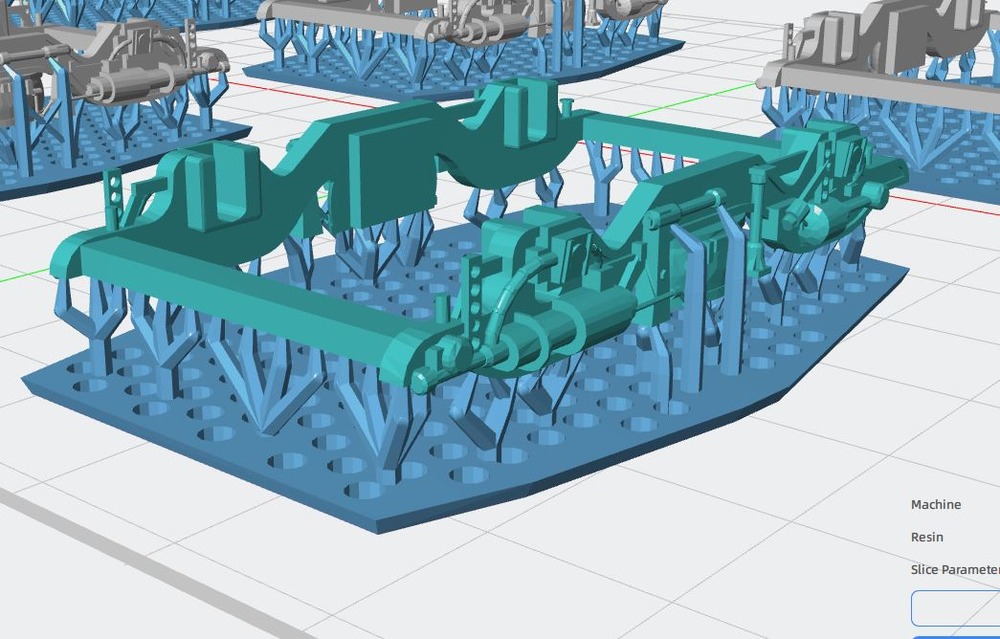
Woodie said:
A little birdie tells me you have a new toy, Mr Norman, Sir. 😁 😎
Not that I know of!
Woodie said:
Woodie said:
A little birdie tells me you have a new toy, Mr Norman, Sir. 😁 😎
My Anycubic Photon M3 Max is churning away as we speak.
Train bogie sideframes.
Your first goo print?
Spiny Norman said:
Woodie said:
Woodie said:
A little birdie tells me you have a new toy, Mr Norman, Sir. 😁 😎
My Anycubic Photon M3 Max is churning away as we speak.
Train bogie sideframes.
Your first goo print?
Nah…….. had it since early Sept. The Creality FDM one got chucked in the dam.
I though I saw somewhere you’d got a new one?
Woodie said:
Spiny Norman said:
Woodie said:My Anycubic Photon M3 Max is churning away as we speak.
Train bogie sideframes.
Your first goo print?
Nah…….. had it since early Sept. The Creality FDM one got chucked in the dam.
I though I saw somewhere you’d got a new one?
No, just the infrequent mods & repairs to the regular old machine.
You might be thinking of the big one I designed, it’ll do a 500mm cube. I’ve got most of the structure done, got pretty much all the hardware & gear, just have to do a bit of accurate machine work in the shed to get through the next stage.


Spiny Norman said:
Woodie said:
Spiny Norman said:Your first goo print?
Nah…….. had it since early Sept. The Creality FDM one got chucked in the dam.
I though I saw somewhere you’d got a new one?
No, just the infrequent mods & repairs to the regular old machine.
You might be thinking of the big one I designed, it’ll do a 500mm cube. I’ve got most of the structure done, got pretty much all the hardware & gear, just have to do a bit of accurate machine work in the shed to get through the next stage.
Looking good!! 😎 You made pretty much all of that?
Woodie said:
Spiny Norman said:
Woodie said:Nah…….. had it since early Sept. The Creality FDM one got chucked in the dam.
I though I saw somewhere you’d got a new one?
No, just the infrequent mods & repairs to the regular old machine.
You might be thinking of the big one I designed, it’ll do a 500mm cube. I’ve got most of the structure done, got pretty much all the hardware & gear, just have to do a bit of accurate machine work in the shed to get through the next stage.
Looking good!! 😎 You made pretty much all of that?
Yeah. That’s the CAD model of it but of course the real thing looks pretty much identical. I got the frame panels CNC water-cut and decided due to the cost of such things I’d machine the rest of the parts (the metal parts that hold the X/Y gantry together) on my own miller. Just have to get off my arse and do that.
Woodie said:
Spiny Norman said:
Woodie said:Nah…….. had it since early Sept. The Creality FDM one got chucked in the dam.
I though I saw somewhere you’d got a new one?
No, just the infrequent mods & repairs to the regular old machine.
You might be thinking of the big one I designed, it’ll do a 500mm cube. I’ve got most of the structure done, got pretty much all the hardware & gear, just have to do a bit of accurate machine work in the shed to get through the next stage.
Looking good!! 😎 You made pretty much all of that?
I’ll swear by the goo printers now. The finer detail you can get with them. There isn’t anything that it won’t print when it comes to detail. Got a huge problem with warping on larger prints though.
Woodie said:
Woodie said:
Spiny Norman said:No, just the infrequent mods & repairs to the regular old machine.
You might be thinking of the big one I designed, it’ll do a 500mm cube. I’ve got most of the structure done, got pretty much all the hardware & gear, just have to do a bit of accurate machine work in the shed to get through the next stage.
Looking good!! 😎 You made pretty much all of that?
I’ll swear by the goo printers now. The finer detail you can get with them. There isn’t anything that it won’t print when it comes to detail. Got a huge problem with warping on larger prints though.
A common problem with all additive printers.
Spiny Norman said:
Woodie said:
Spiny Norman said:No, just the infrequent mods & repairs to the regular old machine.
You might be thinking of the big one I designed, it’ll do a 500mm cube. I’ve got most of the structure done, got pretty much all the hardware & gear, just have to do a bit of accurate machine work in the shed to get through the next stage.
Looking good!! 😎 You made pretty much all of that?
Yeah. That’s the CAD model of it but of course the real thing looks pretty much identical. I got the frame panels CNC water-cut and decided due to the cost of such things I’d machine the rest of the parts (the metal parts that hold the X/Y gantry together) on my own miller. Just have to get off my arse and do that.
I’ve got an Elegoo Phecda 10W 400 * 400 laser cutter/engraver turning up this week. 😎
Woodie said:
Spiny Norman said:
Woodie said:Looking good!! 😎 You made pretty much all of that?
Yeah. That’s the CAD model of it but of course the real thing looks pretty much identical. I got the frame panels CNC water-cut and decided due to the cost of such things I’d machine the rest of the parts (the metal parts that hold the X/Y gantry together) on my own miller. Just have to get off my arse and do that.
I’ve got an Elegoo Phecda 10W 400 * 400 laser cutter/engraver turning up this week. 😎
Nice.
I’m guessing it can’t cut through 6mm alloy though.
Spiny Norman said:
Woodie said:
Spiny Norman said:Your first goo print?
Nah…….. had it since early Sept. The Creality FDM one got chucked in the dam.
I though I saw somewhere you’d got a new one?
No, just the infrequent mods & repairs to the regular old machine.
You might be thinking of the big one I designed, it’ll do a 500mm cube. I’ve got most of the structure done, got pretty much all the hardware & gear, just have to do a bit of accurate machine work in the shed to get through the next stage.
I’ve seen Yoochoobs about making your own. What are you using as the heatbed?
Spiny Norman said:
Woodie said:
Spiny Norman said:Yeah. That’s the CAD model of it but of course the real thing looks pretty much identical. I got the frame panels CNC water-cut and decided due to the cost of such things I’d machine the rest of the parts (the metal parts that hold the X/Y gantry together) on my own miller. Just have to get off my arse and do that.
I’ve got an Elegoo Phecda 10W 400 * 400 laser cutter/engraver turning up this week. 😎
Nice.
I’m guessing it can’t cut through 6mm alloy though.
Nup. It’ll engrave it though, hey what but.
Woodie said:
Spiny Norman said:
Woodie said:Nah…….. had it since early Sept. The Creality FDM one got chucked in the dam.
I though I saw somewhere you’d got a new one?
No, just the infrequent mods & repairs to the regular old machine.
You might be thinking of the big one I designed, it’ll do a 500mm cube. I’ve got most of the structure done, got pretty much all the hardware & gear, just have to do a bit of accurate machine work in the shed to get through the next stage.
I’ve seen Yoochoobs about making your own. What are you using as the heatbed?
A 500mm square 240 volt heat pad under a 6mm plate of alloy. That’ll have a magnetic panel on top, then a removable flexible PEI plate on top of that.
Note the front handrails just below the windows, and lower steps. And handrails on the rear. That carriage is about 30mm wide. No way known with the Creailty even with a .2mm nozzle, will it do those handrails and steps.. Needed to slice with a .2mm nozzle just to get them to show up in the slicer.

Woodie said:
Note the front handrails just below the windows, and lower steps. And handrails on the rear. That carriage is about 30mm wide. No way known with the Creailty even with a .2mm nozzle, will it do those handrails and steps.. Needed to slice with a .2mm nozzle just to get them to show up in the slicer.

Yep that’s superb detail all right.
Do the supports break away okay?
Spiny Norman said:
Woodie said:
Spiny Norman said:No, just the infrequent mods & repairs to the regular old machine.
You might be thinking of the big one I designed, it’ll do a 500mm cube. I’ve got most of the structure done, got pretty much all the hardware & gear, just have to do a bit of accurate machine work in the shed to get through the next stage.
I’ve seen Yoochoobs about making your own. What are you using as the heatbed?
A 500mm square 240 volt heat pad under a 6mm plate of alloy. That’ll have a magnetic panel on top, then a removable flexible PEI plate on top of that.
What temp will you run the heatbed at? Depends on the filament I suppose. Have you got good temp sensors for it? What is your predicted heatup time for the bed? If I take mine above about 60C it takes forever to warm it up.
Woodie said:
Spiny Norman said:
Woodie said:I’ve seen Yoochoobs about making your own. What are you using as the heatbed?
A 500mm square 240 volt heat pad under a 6mm plate of alloy. That’ll have a magnetic panel on top, then a removable flexible PEI plate on top of that.
What temp will you run the heatbed at? Depends on the filament I suppose. Have you got good temp sensors for it? What is your predicted heatup time for the bed? If I take mine above about 60C it takes forever to warm it up.
Yeah it depends on the filament. PLA likes about 50°, PETG 70°, ASA 100°, etc.
The heater has plenty of grunt so it shouldn’t take too long to heat up, though that being said the printer bed is a pretty big chunk of metal so I’ll let it heat-soak at the desired temperature for ten minutes or so, so that the top surface gets up to temp as well. The heater pad has its own temp sensor.
Spiny Norman said:
Woodie said:
Note the front handrails just below the windows, and lower steps. And handrails on the rear. That carriage is about 30mm wide. No way known with the Creailty even with a .2mm nozzle, will it do those handrails and steps.. Needed to slice with a .2mm nozzle just to get them to show up in the slicer.

Yep that’s superb detail all right.
Do the supports break away okay?
Yeah. The supports come off quite easily. the “default” supports will put them all up along the base of the sides as well. I manually remove those before slicing. The supports are needed internally to support the roof.
Goo printing is also much quicker, as it does one entire layer at a time. So the print time is entirely dependant on the height of the z-axis. But it’s messy. Real messy with the cleanup, washing and curing.
Woodie said:
Spiny Norman said:
Woodie said:
Note the front handrails just below the windows, and lower steps. And handrails on the rear. That carriage is about 30mm wide. No way known with the Creailty even with a .2mm nozzle, will it do those handrails and steps.. Needed to slice with a .2mm nozzle just to get them to show up in the slicer.

Yep that’s superb detail all right.
Do the supports break away okay?
Yeah. The supports come off quite easily. the “default” supports will put them all up along the base of the sides as well. I manually remove those before slicing. The supports are needed internally to support the roof.
Goo printing is also much quicker, as it does one entire layer at a time. So the print time is entirely dependant on the height of the z-axis. But it’s messy. Real messy with the cleanup, washing and curing.
There’s positives & negatives to both types, for sure.
Spiny Norman said:
Woodie said:
Spiny Norman said:Yep that’s superb detail all right.
Do the supports break away okay?
Yeah. The supports come off quite easily. the “default” supports will put them all up along the base of the sides as well. I manually remove those before slicing. The supports are needed internally to support the roof.
Goo printing is also much quicker, as it does one entire layer at a time. So the print time is entirely dependant on the height of the z-axis. But it’s messy. Real messy with the cleanup, washing and curing.
There’s positives & negatives to both types, for sure.
Fully agree with you on that one, Mr Noman. You get a lot of bed adhesion reports on both types. I ended up using glustick, or even better, hairspray for the FDM printer. Even then I still had lots of problems with initial layers. No probs with bed adhesion using goo, unless it was my fault.
Woodie said:
Spiny Norman said:
Woodie said:Yeah. The supports come off quite easily. the “default” supports will put them all up along the base of the sides as well. I manually remove those before slicing. The supports are needed internally to support the roof.
Goo printing is also much quicker, as it does one entire layer at a time. So the print time is entirely dependant on the height of the z-axis. But it’s messy. Real messy with the cleanup, washing and curing.
There’s positives & negatives to both types, for sure.
Fully agree with you on that one, Mr Noman. You get a lot of bed adhesion reports on both types. I ended up using glustick, or even better, hairspray for the FDM printer. Even then I still had lots of problems with initial layers. No probs with bed adhesion using goo, unless it was my fault.
I do remember you mentioning such things many times. Yeah they can certainly be a huge pain in the rear at times.
Thanks for the chat, Mr Noman, Sir.
Better go do some of that maaaaarn I was gunna do.
Oh….. no way known could you make your own resin printer. 🤣
The first water-based computer
The beginning of the 1930s was a shocking time for the computing systems. In particular, in 1936 Vladimir Lukyanov realized an analog special pourpose water-based computer. It was not a simple academic exercise, but the Lukyanov’s computer was built for the particular purpose of solving the practical problem of cracking in concrete. To solve the cracking problem involved calculating the complex relationships between the material properties of the concrete, the curing process, and environmental conditions. Whereas existing calculation methods did not give quick or accurate solutions, the Lukyanov water computer did. The hydraulic integrators were launched into serial production. These water computers were used successfully in other areas such as geology, metallurgy, thermal physics, and rocket engineering. In the 1970’s these computers were still used in 115 manufacturing, research, and educational institutions in the USSR. It wasn’t until the 1980s that digital computers came to surpass the functionality of the water computer.
No electricity is required to implement a calculation system. Who could imagine that this couldn’t happen again in the future or if it has not already been done in the far past.
Water flowing from one glass tube to another allowed solving differential equations with partial derivatives.
The case was in the period of industrialization of the USSR, when a freshly minted engineer Vladimir Lukyanov got to the construction of a railroad and faced the problem of low quality of concreting (concrete cracked when it hardened). Lukyanov assumed that this was due to temperature stresses and generalized the existing theoretical developments. The process was described by differential equations requiring lengthy calculations, but Lukyanov saw the main thing – the analogy between the equations describing heat transfer and the equations describing the flow of liquid. That is, the first process could be modeled with the help of the second.
A few years later, Lukyanov created an apparatus to solve this very specific problem – to analyze the temperature change in concrete depending on its composition, pouring technology and external conditions.
An example of a problem to be solved:
Heat transfer under unsteady conditions – cooling of a multilayer flat wall
The model is assembled from a number of cylindrical vessels connected in series by calibrated tubes. Each of the vessels simulates the heat content of the wall layer into which the enclosure under study is divided. The vessels are filled with water to the levels corresponding to the initial temperature in each of the layers, after which the taps are opened and water begins to flow out of the vessels. The change of water levels in the vessels will be similar to the change of temperatures in the corresponding layers of the wall when it cools down.


P.S.
When we think of a computer we always imagine it powered by electricity.
Technologically, this computer opens a new perspective on the technical knowledge of ancient civilizations of the past, particularly the Greek empire. At today the first portable computer in the history is of Greek origin and dates back a few hundred years B.C.: was studied and physically reconstructed.(The Antikythera mechanism working by cogwheels).
Already in ancient Greece, the use and principle of communicating vessels was known, which was assimilated and used by the Roman Empire. Of course, it’s just a plausible idea, but nothing has yet found out about it.
Just noticed, a perfect typo.
“in 1936 Vladimir Lukyanov realized an analog special pourpose water-based computer.”
One for Captain Spalding.
Project 941 or Akula, Russian “Акула” (“Shark”) class submarine (NATO reporting name: Typhoon) under construction.
https://navalhistoria.com/kursk/
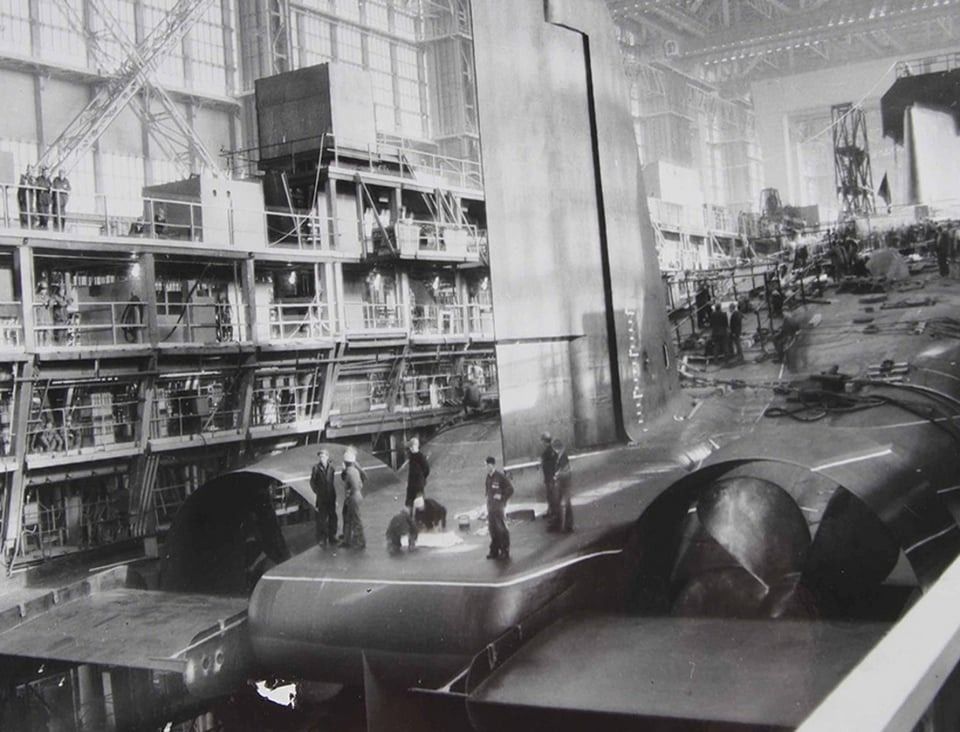
I believe they are the largest subs ever built. And they certainly look quite large in that photo.
Spiny Norman said:
The first water-based computerThe beginning of the 1930s was a shocking time for the computing systems. In particular, in 1936 Vladimir Lukyanov realized an analog special pourpose water-based computer. It was not a simple academic exercise, but the Lukyanov’s computer was built for the particular purpose of solving the practical problem of cracking in concrete. To solve the cracking problem involved calculating the complex relationships between the material properties of the concrete, the curing process, and environmental conditions. Whereas existing calculation methods did not give quick or accurate solutions, the Lukyanov water computer did. The hydraulic integrators were launched into serial production. These water computers were used successfully in other areas such as geology, metallurgy, thermal physics, and rocket engineering. In the 1970’s these computers were still used in 115 manufacturing, research, and educational institutions in the USSR. It wasn’t until the 1980s that digital computers came to surpass the functionality of the water computer.
No electricity is required to implement a calculation system. Who could imagine that this couldn’t happen again in the future or if it has not already been done in the far past.Water flowing from one glass tube to another allowed solving differential equations with partial derivatives.
The case was in the period of industrialization of the USSR, when a freshly minted engineer Vladimir Lukyanov got to the construction of a railroad and faced the problem of low quality of concreting (concrete cracked when it hardened). Lukyanov assumed that this was due to temperature stresses and generalized the existing theoretical developments. The process was described by differential equations requiring lengthy calculations, but Lukyanov saw the main thing – the analogy between the equations describing heat transfer and the equations describing the flow of liquid. That is, the first process could be modeled with the help of the second.
A few years later, Lukyanov created an apparatus to solve this very specific problem – to analyze the temperature change in concrete depending on its composition, pouring technology and external conditions.
An example of a problem to be solved:
Heat transfer under unsteady conditions – cooling of a multilayer flat wall
The model is assembled from a number of cylindrical vessels connected in series by calibrated tubes. Each of the vessels simulates the heat content of the wall layer into which the enclosure under study is divided. The vessels are filled with water to the levels corresponding to the initial temperature in each of the layers, after which the taps are opened and water begins to flow out of the vessels. The change of water levels in the vessels will be similar to the change of temperatures in the corresponding layers of the wall when it cools down.
P.S.
When we think of a computer we always imagine it powered by electricity.
Technologically, this computer opens a new perspective on the technical knowledge of ancient civilizations of the past, particularly the Greek empire. At today the first portable computer in the history is of Greek origin and dates back a few hundred years B.C.: was studied and physically reconstructed.(The Antikythera mechanism working by cogwheels).
Already in ancient Greece, the use and principle of communicating vessels was known, which was assimilated and used by the Roman Empire. Of course, it’s just a plausible idea, but nothing has yet found out about it.
Thanks for that.
I’d never heard of this computer before!
(and modernn computers are still crap at predicting cracking in concrete. It’s unpredictable)
I Made A Water Computer And It Actually Works
https://www.youtube.com/watch?v=IxXaizglscw
The Rev Dodgson said:
Spiny Norman said:
The first water-based computerThe beginning of the 1930s was a shocking time for the computing systems. In particular, in 1936 Vladimir Lukyanov realized an analog special pourpose water-based computer. It was not a simple academic exercise, but the Lukyanov’s computer was built for the particular purpose of solving the practical problem of cracking in concrete. To solve the cracking problem involved calculating the complex relationships between the material properties of the concrete, the curing process, and environmental conditions. Whereas existing calculation methods did not give quick or accurate solutions, the Lukyanov water computer did. The hydraulic integrators were launched into serial production. These water computers were used successfully in other areas such as geology, metallurgy, thermal physics, and rocket engineering. In the 1970’s these computers were still used in 115 manufacturing, research, and educational institutions in the USSR. It wasn’t until the 1980s that digital computers came to surpass the functionality of the water computer.
No electricity is required to implement a calculation system. Who could imagine that this couldn’t happen again in the future or if it has not already been done in the far past.Water flowing from one glass tube to another allowed solving differential equations with partial derivatives.
The case was in the period of industrialization of the USSR, when a freshly minted engineer Vladimir Lukyanov got to the construction of a railroad and faced the problem of low quality of concreting (concrete cracked when it hardened). Lukyanov assumed that this was due to temperature stresses and generalized the existing theoretical developments. The process was described by differential equations requiring lengthy calculations, but Lukyanov saw the main thing – the analogy between the equations describing heat transfer and the equations describing the flow of liquid. That is, the first process could be modeled with the help of the second.
A few years later, Lukyanov created an apparatus to solve this very specific problem – to analyze the temperature change in concrete depending on its composition, pouring technology and external conditions.
An example of a problem to be solved:
Heat transfer under unsteady conditions – cooling of a multilayer flat wall
The model is assembled from a number of cylindrical vessels connected in series by calibrated tubes. Each of the vessels simulates the heat content of the wall layer into which the enclosure under study is divided. The vessels are filled with water to the levels corresponding to the initial temperature in each of the layers, after which the taps are opened and water begins to flow out of the vessels. The change of water levels in the vessels will be similar to the change of temperatures in the corresponding layers of the wall when it cools down.
P.S.
When we think of a computer we always imagine it powered by electricity.
Technologically, this computer opens a new perspective on the technical knowledge of ancient civilizations of the past, particularly the Greek empire. At today the first portable computer in the history is of Greek origin and dates back a few hundred years B.C.: was studied and physically reconstructed.(The Antikythera mechanism working by cogwheels).
Already in ancient Greece, the use and principle of communicating vessels was known, which was assimilated and used by the Roman Empire. Of course, it’s just a plausible idea, but nothing has yet found out about it.
Thanks for that.
I’d never heard of this computer before!
(and modernn computers are still crap at predicting cracking in concrete. It’s unpredictable)
The bingbot thinks that this was the first water based computer:
… but that was made in 1949, whereas the one in Bill’s link was made in 1936.
Trying To Solve The 150 Year Old Mystery of the Crooke’s radiometer.
The Action Lab.
Spiny Norman said:
Trying To Solve The 150 Year Old Mystery of the Crooke’s radiometer.
The Action Lab.
It’s a mystery?
When I was at high school (about 55 years ago) we were told there was a simple explanation based on the air on the black side of the vane being hotter.
It seems we were told wrong:
Your Tattoo is INSIDE Your Immune System. Literally.
Kurzgesagt
(Not as much fun as you’d thought it’d be)
The New Eruption in Iceland Could Become Very Destructive – Location, Maps and the Scenario,
https://www.youtube.com/watch?v=upxdopmXsBE
Quite spectacular.
Spiny Norman said:
The New Eruption in Iceland Could Become Very Destructive – Location, Maps and the Scenario,https://www.youtube.com/watch?v=upxdopmXsBE
Quite spectacular.
Nods.
Bank Robber Dresses as Santa, Has Terrible Experience. Tales From the Bottle.
Qxir.
Spiny Norman said:
Bank Robber Dresses as Santa, Has Terrible Experience. Tales From the Bottle.
Qxir.
Yep, Texas.
The Horse Manure Problem of 1894
The 15 to 30 pounds of manure produced daily by each beast multiplied by the 150,000+ horses in New York city resulted in more than three million pounds of horse manure per day that somehow needed to be disposed of. That’s not to mention the daily 40,000 gallons of horse urine.
In other words, cities reeked. As Morris says, the “stench was omnipresent.” Here are some fun bits from his article:
Urban streets were minefields that needed to be navigated with the greatest care. “Crossing sweepers” stood on street corners; for a fee they would clear a path through the mire for pedestrians. Wet weather turned the streets into swamps and rivers of muck, but dry weather brought little improvement; the manure turned to dust, which was then whipped up by the wind, choking pedestrians and coating buildings.
. . . even when it had been removed from the streets the manure piled up faster than it could be disposed of
. . . early in the century farmers were happy to pay good money for the manure, by the end of the 1800s stable owners had to pay to have it carted off. As a result of this glut
. . . vacant lots in cities across America became piled high with manure; in New York these sometimes rose to forty and even sixty feet.
We need to remind ourselves that horse manure is an ideal breeding ground for flies, which spread disease. Morris reports that deadly outbreaks of typhoid and “infant diarrheal diseases can be traced to spikes in the fly population.”
Comparing fatalities associated with horse-related accidents in 1916 Chicago versus automobile accidents in 1997, he concludes that people were killed nearly seven times more often back in the good old days. The reasons for this are straightforward:
. . . horse-drawn vehicles have an engine with a mind of its own. The skittishness of horses added a dangerous level of unpredictability to nineteenth-century transportation. This was particularly true in a bustling urban environment, full of surprises that could shock and spook the animals. Horses often stampeded, but a more common danger came from horses kicking, biting, or trampling bystanders. Children were particularly at risk.
Falls, injuries, and maltreatment also took a toll on the horses themselves. Data cited by Morris indicates that, in 1880, more than 3 dozen dead horses were cleared from New York streets each day (nearly 15,000 a year).

Spiny Norman said:
The Horse Manure Problem of 1894
The 15 to 30 pounds of manure produced daily by each beast multiplied by the 150,000+ horses in New York city resulted in more than three million pounds of horse manure per day that somehow needed to be disposed of. That’s not to mention the daily 40,000 gallons of horse urine.In other words, cities reeked. As Morris says, the “stench was omnipresent.” Here are some fun bits from his article:
Urban streets were minefields that needed to be navigated with the greatest care. “Crossing sweepers” stood on street corners; for a fee they would clear a path through the mire for pedestrians. Wet weather turned the streets into swamps and rivers of muck, but dry weather brought little improvement; the manure turned to dust, which was then whipped up by the wind, choking pedestrians and coating buildings.
. . . even when it had been removed from the streets the manure piled up faster than it could be disposed of
. . . early in the century farmers were happy to pay good money for the manure, by the end of the 1800s stable owners had to pay to have it carted off. As a result of this glut
. . . vacant lots in cities across America became piled high with manure; in New York these sometimes rose to forty and even sixty feet.We need to remind ourselves that horse manure is an ideal breeding ground for flies, which spread disease. Morris reports that deadly outbreaks of typhoid and “infant diarrheal diseases can be traced to spikes in the fly population.”
Comparing fatalities associated with horse-related accidents in 1916 Chicago versus automobile accidents in 1997, he concludes that people were killed nearly seven times more often back in the good old days. The reasons for this are straightforward:
. . . horse-drawn vehicles have an engine with a mind of its own. The skittishness of horses added a dangerous level of unpredictability to nineteenth-century transportation. This was particularly true in a bustling urban environment, full of surprises that could shock and spook the animals. Horses often stampeded, but a more common danger came from horses kicking, biting, or trampling bystanders. Children were particularly at risk.Falls, injuries, and maltreatment also took a toll on the horses themselves. Data cited by Morris indicates that, in 1880, more than 3 dozen dead horses were cleared from New York streets each day (nearly 15,000 a year).
It was pretty bleak. Kids playing in the gutter near a dead horse.

Bubblecar said:
Spiny Norman said:
The Horse Manure Problem of 1894
The 15 to 30 pounds of manure produced daily by each beast multiplied by the 150,000+ horses in New York city resulted in more than three million pounds of horse manure per day that somehow needed to be disposed of. That’s not to mention the daily 40,000 gallons of horse urine.In other words, cities reeked. As Morris says, the “stench was omnipresent.” Here are some fun bits from his article:
Urban streets were minefields that needed to be navigated with the greatest care. “Crossing sweepers” stood on street corners; for a fee they would clear a path through the mire for pedestrians. Wet weather turned the streets into swamps and rivers of muck, but dry weather brought little improvement; the manure turned to dust, which was then whipped up by the wind, choking pedestrians and coating buildings.
. . . even when it had been removed from the streets the manure piled up faster than it could be disposed of
. . . early in the century farmers were happy to pay good money for the manure, by the end of the 1800s stable owners had to pay to have it carted off. As a result of this glut
. . . vacant lots in cities across America became piled high with manure; in New York these sometimes rose to forty and even sixty feet.We need to remind ourselves that horse manure is an ideal breeding ground for flies, which spread disease. Morris reports that deadly outbreaks of typhoid and “infant diarrheal diseases can be traced to spikes in the fly population.”
Comparing fatalities associated with horse-related accidents in 1916 Chicago versus automobile accidents in 1997, he concludes that people were killed nearly seven times more often back in the good old days. The reasons for this are straightforward:
. . . horse-drawn vehicles have an engine with a mind of its own. The skittishness of horses added a dangerous level of unpredictability to nineteenth-century transportation. This was particularly true in a bustling urban environment, full of surprises that could shock and spook the animals. Horses often stampeded, but a more common danger came from horses kicking, biting, or trampling bystanders. Children were particularly at risk.Falls, injuries, and maltreatment also took a toll on the horses themselves. Data cited by Morris indicates that, in 1880, more than 3 dozen dead horses were cleared from New York streets each day (nearly 15,000 a year).
It was pretty bleak. Kids playing in the gutter near a dead horse.
That horse is knackered.
Why Do Exact Equations Become Unpredictable?
The Action Lab.
Spiny Norman said:
Why Do Exact Equations Become Unpredictable?
The Action Lab.
Closing quote (more or less):
“Even if it wasn’t for the unpredictability of quantum mechanics, we would still live in an unpredictable world.”
I think that deserves more attention than it gets.
The Rev Dodgson said:
Spiny Norman said:
Why Do Exact Equations Become Unpredictable?
The Action Lab.Closing quote (more or less):
“Even if it wasn’t for the unpredictability of quantum mechanics, we would still live in an unpredictable world.”
I think that deserves more attention than it gets.
The other thing that I think was a bit misleading in the presentation was that it presented the calculations as always giving the same results for the same starting positions, but the calculations are not precise. If they randomly changed the rounding conventions for each step of the calculation, or randomly changed the interval between calculations, then every simulation would have different results, even with exactly the same starting conditions.
And that is how the world really works.
Georgia Ann Thompson, the first female parachutist and inventor of the rip cord, became famous under the name Tiny Broadwick. She weighed only three pounds at birth in 1893 in North Carolina, and never grew past 5 feet tall and 80 pounds. She married at 12, and bore a daughter, Verla, at 13. After her husband died in an accident, she had to work 14-hour days in a cotton mill.
“In 1907 at the North Carolina State Fair, Georgia saw the performance, ‘The Broadwicks and their Famous French Aeronauts.’ The performers ascended to the sky in hot-air balloons, then thrilled spectators by jumping out of them with parachutes. Inspired by this, Georgia asked show owner Charles Broadwick if she could travel with the group and become a part of the act. He agreed to hire her, and Georgia’s mother let her go with a few stipulations- she had to leave Verla behind and send back money to help support her. Broadwick trained her in the art of parachute jumping, and in 1908, legally adopted her. When this happened, Georgia’s name officially became Tiny Broadwick.
“While performing, Tiny was known as “The Doll Girl”. She dressed in ruffled bloomers with pink bows on her arms, ribbons in her long curly hair, and a bonnet on her head. Tiny was just 15 years old when she jumped from a hot-air balloon at the 1908 North Carolina State Fair. Describing her feelings later, she said, “I tell you, honey, it was the most wonderful sensation in the world!” It was a thrill she would come to experience some 1,000 times in her life.
“Tiny and Charles Broadwick traveled all over the country with their balloon act, but by 1912, their performance was losing popularity. Fortunately, a new opportunity presented itself to Tiny when she met famed pilot Glenn Martin. He had seen her jump from a balloon, and asked if she would like to parachute from his airplane instead. Tiny immediately agreed to work for Martin, whose aircraft company is still in business today and is operating under the name Martin Marietta.
“In preparation for the jump, Charles Broadwick developed a parachute for Tiny made of silk. It was packed into a knapsack attached to a canvas jacket with harness straps. A string was fastened to the plane’s fuselage and woven through the parachute’s canvas covering. When Tiny jumped from the plane, the cover tore away and her parachute filled with air.
“On her first jump, Tiny was suspended from a trap seat behind the wing and outside the cockpit, with the parachute on a shelf above her. Martin took the plane up to two thousand feet, and then Tiny released a lever alongside the seat, allowing it to drop out from under her. The jump was a success and she landed in Griffith Park in Los Angeles, making her the first woman to parachute from an airplane. After that first jump from Martin’s plane, Tiny was in great demand all over the country. She also became the first woman to parachute into a body of water.
“In 1914, at the start of WWI, representatives of the Army Air Corps visited Tiny in San Diego and asked her to demonstrate a jump from a military plane. At that time, many Air Corps pilots had already perished, and the Army wanted Tiny to showcase how to safely parachute out of a plane. During the demonstration, Tiny made four jumps at San Diego’s North Island.
“The first three went smoothly, but on the fourth jump, her parachute’s line became tangled in the tail assembly of the plane. Due to high winds, she could not get back into the plane. Instead of panicking, Tiny cut all but a short length of the line, which made her plummet towards the ground. Still keeping a cool head, she pulled the line by hand, freeing the parachute to open by itself. This demonstrated what would be known as the rip cord, and showcased that someone who had to leave an airplane in flight did not need a line attached to the aircraft to open a parachute. A pilot could safely bail out of a damaged craft. Following this, the parachute became known as the life preserver of the air.
“Tiny Broadwick’s last jump was in 1922, when she was just 29 years old. Chronic problems with her ankles forced her into retirement. She stated at the time, “I breathe so much better up there, and it’s so peaceful being that near to God.”
“Tiny received many honors and awards in her lifetime, including the U.S. Government Pioneer Aviation award and the John Glenn Medal. She is one of the few women in the Early Birds of Aviation, and she also received the Gold Wings of the Adventurer’s Club in Los Angeles. In 1964, Tiny was made an honorary member of the 82nd Airborne Division at Ft. Bragg. With that honor, she was told she could jump any time she chose. At the age of 85, Tiny Broadwick died and was buried in her home state of North Carolina.”
ChrispenEvan said:
Georgia Ann Thompson, the first female parachutist and inventor of the rip cord, became famous under the name Tiny Broadwick. She weighed only three pounds at birth in 1893 in North Carolina, and never grew past 5 feet tall and 80 pounds. She married at 12, and bore a daughter, Verla, at 13. After her husband died in an accident, she had to work 14-hour days in a cotton mill.“In 1907 at the North Carolina State Fair, Georgia saw the performance, ‘The Broadwicks and their Famous French Aeronauts.’ The performers ascended to the sky in hot-air balloons, then thrilled spectators by jumping out of them with parachutes. Inspired by this, Georgia asked show owner Charles Broadwick if she could travel with the group and become a part of the act. He agreed to hire her, and Georgia’s mother let her go with a few stipulations- she had to leave Verla behind and send back money to help support her. Broadwick trained her in the art of parachute jumping, and in 1908, legally adopted her. When this happened, Georgia’s name officially became Tiny Broadwick.
“While performing, Tiny was known as “The Doll Girl”. She dressed in ruffled bloomers with pink bows on her arms, ribbons in her long curly hair, and a bonnet on her head. Tiny was just 15 years old when she jumped from a hot-air balloon at the 1908 North Carolina State Fair. Describing her feelings later, she said, “I tell you, honey, it was the most wonderful sensation in the world!” It was a thrill she would come to experience some 1,000 times in her life.“Tiny and Charles Broadwick traveled all over the country with their balloon act, but by 1912, their performance was losing popularity. Fortunately, a new opportunity presented itself to Tiny when she met famed pilot Glenn Martin. He had seen her jump from a balloon, and asked if she would like to parachute from his airplane instead. Tiny immediately agreed to work for Martin, whose aircraft company is still in business today and is operating under the name Martin Marietta.
“In preparation for the jump, Charles Broadwick developed a parachute for Tiny made of silk. It was packed into a knapsack attached to a canvas jacket with harness straps. A string was fastened to the plane’s fuselage and woven through the parachute’s canvas covering. When Tiny jumped from the plane, the cover tore away and her parachute filled with air.
“On her first jump, Tiny was suspended from a trap seat behind the wing and outside the cockpit, with the parachute on a shelf above her. Martin took the plane up to two thousand feet, and then Tiny released a lever alongside the seat, allowing it to drop out from under her. The jump was a success and she landed in Griffith Park in Los Angeles, making her the first woman to parachute from an airplane. After that first jump from Martin’s plane, Tiny was in great demand all over the country. She also became the first woman to parachute into a body of water.
“In 1914, at the start of WWI, representatives of the Army Air Corps visited Tiny in San Diego and asked her to demonstrate a jump from a military plane. At that time, many Air Corps pilots had already perished, and the Army wanted Tiny to showcase how to safely parachute out of a plane. During the demonstration, Tiny made four jumps at San Diego’s North Island.
“The first three went smoothly, but on the fourth jump, her parachute’s line became tangled in the tail assembly of the plane. Due to high winds, she could not get back into the plane. Instead of panicking, Tiny cut all but a short length of the line, which made her plummet towards the ground. Still keeping a cool head, she pulled the line by hand, freeing the parachute to open by itself. This demonstrated what would be known as the rip cord, and showcased that someone who had to leave an airplane in flight did not need a line attached to the aircraft to open a parachute. A pilot could safely bail out of a damaged craft. Following this, the parachute became known as the life preserver of the air.
“Tiny Broadwick’s last jump was in 1922, when she was just 29 years old. Chronic problems with her ankles forced her into retirement. She stated at the time, “I breathe so much better up there, and it’s so peaceful being that near to God.”
“Tiny received many honors and awards in her lifetime, including the U.S. Government Pioneer Aviation award and the John Glenn Medal. She is one of the few women in the Early Birds of Aviation, and she also received the Gold Wings of the Adventurer’s Club in Los Angeles. In 1964, Tiny was made an honorary member of the 82nd Airborne Division at Ft. Bragg. With that honor, she was told she could jump any time she chose. At the age of 85, Tiny Broadwick died and was buried in her home state of North Carolina.”
Interesting. Ta.
>>>> Tiny immediately agreed to work for Martin, whose aircraft company is still in business today and is operating under the name Martin Marietta.
Well out of date. Lockheed Martin now. (Since 1995.)
https://en.wikipedia.org/wiki/Martin_Marietta
Chinese missiles, the new chemtrails?
China’s military purge: Are Chinese missiles filled with water?
Sandboxx
The Great Black Swamp (also known simply as the Black Swamp) was a glacially fed wetland in northwest Ohio and northeast Indiana, United States, that existed from the end of the Wisconsin glaciation until the late 19th century. Comprising extensive swamps and marshes, with some higher, drier ground interspersed, it occupied what was formerly the southwestern part of proglacial Lake Maumee, a Holocene precursor to Lake Erie. The area was about 25 miles (40 km) wide (north to south) and 100 miles (160 km) long, covering an estimated 1,500 square miles (4,000 km2).

https://en.wikipedia.org/wiki/Great_Black_Swamp
I was curious so I had a look at the area with Google Earth, but as I zoomed into the area I was more surprised to see what appeared to be a huge grid over the land. Zoomed in further I found that a vast area of land all around there is partitioned into 1 mine by one mile blocks with roads. Each block has several houses & farms on it.
Something I never knew.

Spiny Norman said:
The Great Black Swamp (also known simply as the Black Swamp) was a glacially fed wetland in northwest Ohio and northeast Indiana, United States, that existed from the end of the Wisconsin glaciation until the late 19th century. Comprising extensive swamps and marshes, with some higher, drier ground interspersed, it occupied what was formerly the southwestern part of proglacial Lake Maumee, a Holocene precursor to Lake Erie. The area was about 25 miles (40 km) wide (north to south) and 100 miles (160 km) long, covering an estimated 1,500 square miles (4,000 km2).Melbourne’s eastern suburbs where I grew up around Glen Waverley are also a mile grid.
https://en.wikipedia.org/wiki/Great_Black_Swamp
I was curious so I had a look at the area with Google Earth, but as I zoomed into the area I was more surprised to see what appeared to be a huge grid over the land. Zoomed in further I found that a vast area of land all around there is partitioned into 1 mine by one mile blocks with roads. Each block has several houses & farms on it.
Something I never knew.

Spiny Norman said:
The Great Black Swamp (also known simply as the Black Swamp) was a glacially fed wetland in northwest Ohio and northeast Indiana, United States, that existed from the end of the Wisconsin glaciation until the late 19th century. Comprising extensive swamps and marshes, with some higher, drier ground interspersed, it occupied what was formerly the southwestern part of proglacial Lake Maumee, a Holocene precursor to Lake Erie. The area was about 25 miles (40 km) wide (north to south) and 100 miles (160 km) long, covering an estimated 1,500 square miles (4,000 km2).
https://en.wikipedia.org/wiki/Great_Black_Swamp
I was curious so I had a look at the area with Google Earth, but as I zoomed into the area I was more surprised to see what appeared to be a huge grid over the land. Zoomed in further I found that a vast area of land all around there is partitioned into 1 mine by one mile blocks with roads. Each block has several houses & farms on it.
Something I never knew.
I was once told by an American teacher friend when I was talking about how most of Australias roads were dirt/gravel, he actually said these words. “In the USA, ever square mile has a bitumen road around it”. He hailed from Kansas City.
OCDC said:
Spiny Norman said:The Great Black Swamp (also known simply as the Black Swamp) was a glacially fed wetland in northwest Ohio and northeast Indiana, United States, that existed from the end of the Wisconsin glaciation until the late 19th century. Comprising extensive swamps and marshes, with some higher, drier ground interspersed, it occupied what was formerly the southwestern part of proglacial Lake Maumee, a Holocene precursor to Lake Erie. The area was about 25 miles (40 km) wide (north to south) and 100 miles (160 km) long, covering an estimated 1,500 square miles (4,000 km2).Melbourne’s eastern suburbs where I grew up around Glen Waverley are also a mile grid.
https://en.wikipedia.org/wiki/Great_Black_Swamp
I was curious so I had a look at the area with Google Earth, but as I zoomed into the area I was more surprised to see what appeared to be a huge grid over the land. Zoomed in further I found that a vast area of land all around there is partitioned into 1 mine by one mile blocks with roads. Each block has several houses & farms on it.
Something I never knew.
Did not know that either, ta.
Spiny Norman said:
OCDC said:It’s great for public transport. Most buses run along the grid so you can get to most places with two buses and <800m walk at either end.Spiny Norman said:Did not know that either, ta.The Great Black Swamp (also known simply as the Black Swamp) was a glacially fed wetland in northwest Ohio and northeast Indiana, United States, that existed from the end of the Wisconsin glaciation until the late 19th century. Comprising extensive swamps and marshes, with some higher, drier ground interspersed, it occupied what was formerly the southwestern part of proglacial Lake Maumee, a Holocene precursor to Lake Erie. The area was about 25 miles (40 km) wide (north to south) and 100 miles (160 km) long, covering an estimated 1,500 square miles (4,000 km2).Melbourne’s eastern suburbs where I grew up around Glen Waverley are also a mile grid.
https://en.wikipedia.org/wiki/Great_Black_Swamp
I was curious so I had a look at the area with Google Earth, but as I zoomed into the area I was more surprised to see what appeared to be a huge grid over the land. Zoomed in further I found that a vast area of land all around there is partitioned into 1 mine by one mile blocks with roads. Each block has several houses & farms on it.
Something I never knew.
I spent from 3 to 22 y o in that grid, homes and educational establishments.
OCDC said:
Spiny Norman said:OCDC said:It’s great for public transport. Most buses run along the grid so you can get to most places with two buses and <800m walk at either end.Melbourne’s eastern suburbs where I grew up around Glen Waverley are also a mile grid.Did not know that either, ta.
I spent from 3 to 22 y o in that grid, homes and educational establishments.
I spent from birth (at Box Hill Hospital) to 22 just above the top edge of that map. But 20 years before you were there. My aunt and uncle (still) live in Headingly Rd.
Spiny Norman said:
The Great Black Swamp (also known simply as the Black Swamp) was a glacially fed wetland in northwest Ohio and northeast Indiana, United States, that existed from the end of the Wisconsin glaciation until the late 19th century. Comprising extensive swamps and marshes, with some higher, drier ground interspersed, it occupied what was formerly the southwestern part of proglacial Lake Maumee, a Holocene precursor to Lake Erie. The area was about 25 miles (40 km) wide (north to south) and 100 miles (160 km) long, covering an estimated 1,500 square miles (4,000 km2).
https://en.wikipedia.org/wiki/Great_Black_Swamp
I was curious so I had a look at the area with Google Earth, but as I zoomed into the area I was more surprised to see what appeared to be a huge grid over the land. Zoomed in further I found that a vast area of land all around there is partitioned into 1 mine by one mile blocks with roads. Each block has several houses & farms on it.
Something I never knew.
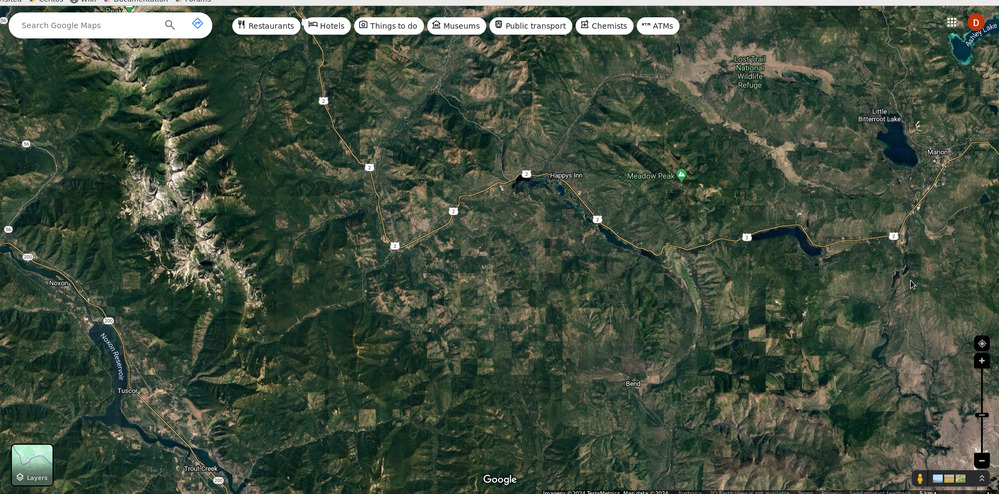
Some areas in the northwestern part of the USA have these checkerboard style deforestation patterns. When I first saw it I thought it was some issue with the satellite imagery.
NASA Captain Elizabeth commanding SOFIA: ex Pan Am B747SP Flying Telescope.
Substantial water ice deposits on Mars.
https://www.physics-astronomy.com/water-ice-mars-equator-discovered/
Aussie farmers learn to harvest hemp, ‘toughest plant on the planet’ 🌿 | Landline | ABC Australia
Hemp has long been proclaimed a wonder plant. And for just as long demonised as a narcotic. But it’s the fibre — not the leaf or seed — that’s now attracting some serious investment. Landline’s Tim Lee has the story.
Atlantropa: The $1 Trillion Dam to Drain the Mediterranean.
Spiny Norman said:
Atlantropa: The $1 Trillion Dam to Drain the Mediterranean.
Why did he want to do it?, they ask.
Simple: he was German.
Spiny Norman said:
Aussie farmers learn to harvest hemp, ‘toughest plant on the planet’ 🌿 | Landline | ABC AustraliaHemp has long been proclaimed a wonder plant. And for just as long demonised as a narcotic. But it’s the fibre — not the leaf or seed — that’s now attracting some serious investment. Landline’s Tim Lee has the story.
There are two useful products to get out of the stems, the fibre and the hurd.
party_pants said:
Spiny Norman said:
Aussie farmers learn to harvest hemp, ‘toughest plant on the planet’ 🌿 | Landline | ABC AustraliaHemp has long been proclaimed a wonder plant. And for just as long demonised as a narcotic. But it’s the fibre — not the leaf or seed — that’s now attracting some serious investment. Landline’s Tim Lee has the story.
There are two useful products to get out of the stems, the fibre and the hurd.
thumb thumb h thumb thumb thumb u thumb thumb thumb r thumb thumb……………….

VH-VGJ Sydney Australia 22 JAN 2024
Spiny Norman said:
Aussie farmers learn to harvest hemp, ‘toughest plant on the planet’ 🌿 | Landline | ABC AustraliaHemp has long been proclaimed a wonder plant. And for just as long demonised as a narcotic. But it’s the fibre — not the leaf or seed — that’s now attracting some serious investment. Landline’s Tim Lee has the story.
https://www.youtube.com/watch?v=4dFvHicFoRI

Andrew Hamilton grew up in the far north shore of Sydney. He had a good upbringing, but found himself convicted for selling a large commercial quantity of magic mushrooms, LSD and the supply of MDMA.
A self proclaimed ‘Mushroom King’, Andrew sold shrooms for over a decade before getting arrested.
After doing time in prison, Andrew has found a passion in stand up comedy and is travelling around Australia making people laugh.
The power of laughter which he experienced in a maximum security prison was the light-bulb moment that took Andrew from the cell to the stages.
https://www.youtube.com/watch?v=UG5p644biLg
Worth a watch.
Spiny Norman said:
Andrew Hamilton grew up in the far north shore of Sydney. He had a good upbringing, but found himself convicted for selling a large commercial quantity of magic mushrooms, LSD and the supply of MDMA.A self proclaimed ‘Mushroom King’, Andrew sold shrooms for over a decade before getting arrested.
After doing time in prison, Andrew has found a passion in stand up comedy and is travelling around Australia making people laugh.
The power of laughter which he experienced in a maximum security prison was the light-bulb moment that took Andrew from the cell to the stages.
https://www.youtube.com/watch?v=UG5p644biLg
Worth a watch.
‘pends on how long it goes on for.
Space coffee!
What were Hitler’s Relatives Up to During and After WWII?
The Murchison meteorite is a meteorite that fell in Australia in 1969 near Murchison, Victoria. It belongs to the carbonaceous chondrite class, a group of meteorites rich in organic compounds. Due to its mass (over 100 kg or 220 lb) and the fact that it was an observed fall, the Murchison meteorite is one of the most studied of all meteorites.
In January 2020, cosmochemists reported that the oldest material found on Earth to date are the silicon carbide particles from the Murchison meteorite, which have been determined to be 7 billion years old, about 2.5 billion years older than the 4.54-billion-year age of the Earth and the Solar System. The published study noted that “dust lifetime estimates mainly rely on sophisticated theoretical models. These models, however, focus on the more common small dust grains and are based on assumptions with large uncertainties.”
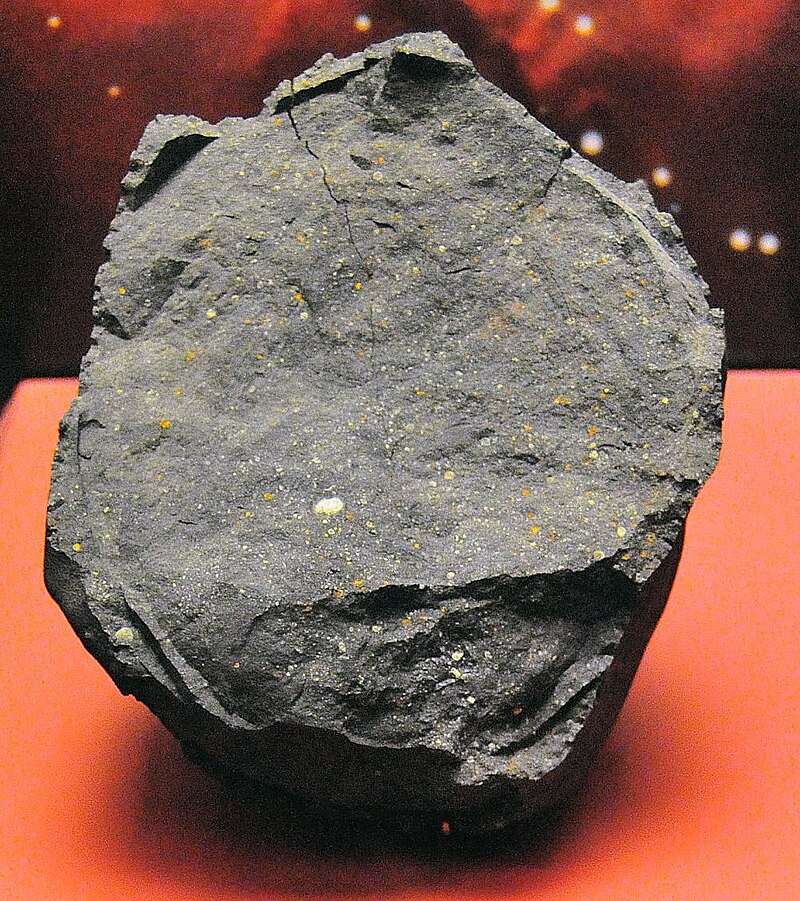
https://en.wikipedia.org/wiki/Murchison_meteorite
Quite remarkable, likely to be seven billion years old!
An American chap bought a 2 kW laser.
It’s insanely dangerous!
Spiny Norman said:
An American chap bought a 2 kW laser.
It’s insanely dangerous!
Damn
How a rainfall simulator saves millions of lives.
Veritasium>
Spiny Norman said:
How a rainfall simulator saves millions of lives.
Veritasium>
QI, but the suggestion that this particular facility is saving millions of lives is stretching things just a little.
JudgeMental said:
https://www.atlasobscura.com/articles/cia-issued-rectal-tool-kitfor fixing your rectal.
I think i need one of those…
captain_spalding said:
JudgeMental said:
https://www.atlasobscura.com/articles/cia-issued-rectal-tool-kitfor fixing your rectal.
I think i need one of those…
get the one with a pellet of Uranium in it.
captain_spalding said:
JudgeMental said:
https://www.atlasobscura.com/articles/cia-issued-rectal-tool-kitfor fixing your rectal.
I think i need one of those…
Um, aren’t you experiencing enough butt pain already?
kii said:
captain_spalding said:
JudgeMental said:
https://www.atlasobscura.com/articles/cia-issued-rectal-tool-kitfor fixing your rectal.
I think i need one of those…
Um, aren’t you experiencing enough butt pain already?
Actually, not doing too badly today, thanks for asking. Best i’ve felt for about a week.
Maybe i should look at the link, and see what we’re actually talking about.
As we thank the Ingenuity helicopter for its many years of service on Mars, we should note that, while JPL’s copter made the first powered flight in another planetary atmosphere, it was not the first to make any sustained flight in an extraterrestrial atmosphere. That honor goes to the Soviet Vega 1 and 2 spacecraft, launched in 1984. In a remarkable 3-in-1 mission objective, each Vega spacecraft arrived at Venus around mid-1985, dropped down a Venera-class lander, which in turn deployed aerobots.
These were atmospheric probes that opened a helium balloon to float about 54 km above the surface, transmitting wind, temperature and atmospheric analyses until battery power ran out. While the Vega 1 lander landed but could send no useful surface data, its sister lander sent good data about soil, temperature and atmosphere for 56 minutes. The two orbiters then departed Venus to rendezvous with Comet Halley by 1986, as part of the “Halley Armada” with other spacecraft from ESA and the Japanese space agencies of the time.

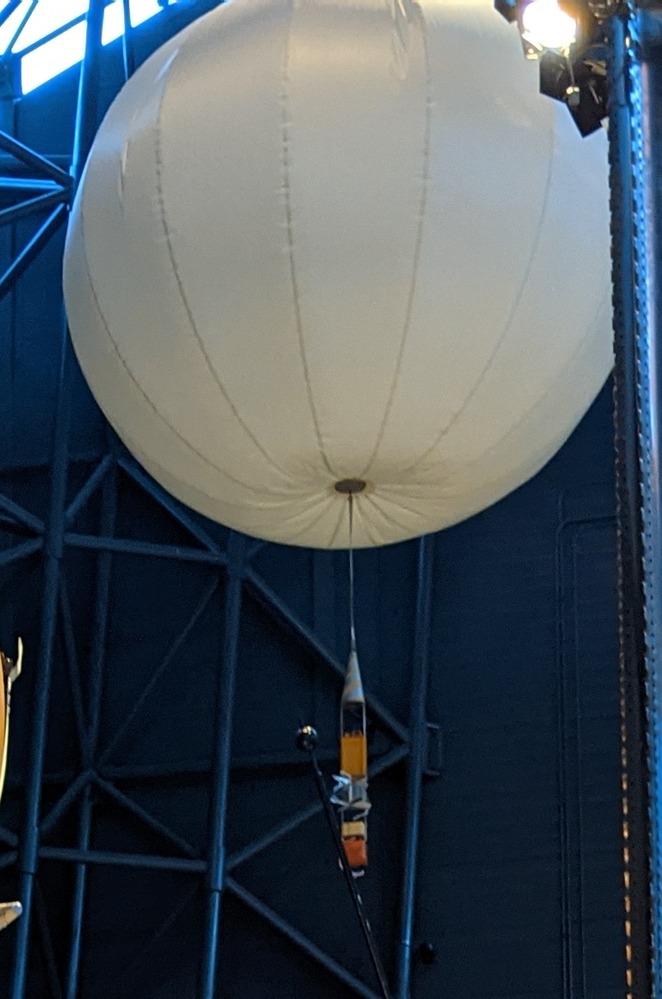

A rather odd one – Dassault Falcon 20 trials with afterburner.

Spiny Norman said:
A rather odd one – Dassault Falcon 20 trials with afterburner.
You’ve said it yourself: ‘everything’s better with afterburners’.
Speaking of afterburners:
Pop Science:

Boeing built an unusual training device known as “Waddell’s Wagon” (named for a 747 test pilot, Jack Waddell) that consisted of a mock-up cockpit mounted on the roof of a truck. While the first 747s were still being built, the device allowed pilots to practice taxi maneuvers from a high upper-deck position. -wikipedia Boeing 747

esselte said:
Boeing built an unusual training device known as “Waddell’s Wagon” (named for a 747 test pilot, Jack Waddell) that consisted of a mock-up cockpit mounted on the roof of a truck. While the first 747s were still being built, the device allowed pilots to practice taxi maneuvers from a high upper-deck position. -wikipedia Boeing 747
Did it actually work? Like did the movements match the actions of the pilot?


Man-carrying pod used on U.S. P-38 Lightning during WWII
https://theaviationist.com/2013/12/13/p-38-exint-pod-photo/

Also:

https://combatace.com/forums/topic/95655-human-transport-by-fighter-planes-exint-pod/
dv said:
esselte said:Boeing built an unusual training device known as “Waddell’s Wagon” (named for a 747 test pilot, Jack Waddell) that consisted of a mock-up cockpit mounted on the roof of a truck. While the first 747s were still being built, the device allowed pilots to practice taxi maneuvers from a high upper-deck position. -wikipedia Boeing 747
Did it actually work? Like did the movements match the actions of the pilot?
Yep. They designed the steering so that it’d largely follow the movements of the much larger aircraft. There were limits though as it’s pretty much impossible to simulate near-stationary tight turns in a rig like that – The main wheels are about 30 metres behind the nosewheel. In real life it takes a little getting used to, to drive them around on the ground, as your eye height is quite high and you can’t see anything directly in front of the nose for a good 20 – 25 metres. FWIW the nosewheel basically sits under where the Flight Engineer’s seat is.
Spiny Norman said:
dv said:
esselte said:Boeing built an unusual training device known as “Waddell’s Wagon” (named for a 747 test pilot, Jack Waddell) that consisted of a mock-up cockpit mounted on the roof of a truck. While the first 747s were still being built, the device allowed pilots to practice taxi maneuvers from a high upper-deck position. -wikipedia Boeing 747
Did it actually work? Like did the movements match the actions of the pilot?
Yep. They designed the steering so that it’d largely follow the movements of the much larger aircraft. There were limits though as it’s pretty much impossible to simulate near-stationary tight turns in a rig like that – The main wheels are about 30 metres behind the nosewheel. In real life it takes a little getting used to, to drive them around on the ground, as your eye height is quite high and you can’t see anything directly in front of the nose for a good 20 – 25 metres. FWIW the nosewheel basically sits under where the Flight Engineer’s seat is.
Well that’s tidy.
Spiny Norman said:
dv said:
esselte said:Boeing built an unusual training device known as “Waddell’s Wagon” (named for a 747 test pilot, Jack Waddell) that consisted of a mock-up cockpit mounted on the roof of a truck. While the first 747s were still being built, the device allowed pilots to practice taxi maneuvers from a high upper-deck position. -wikipedia Boeing 747
Did it actually work? Like did the movements match the actions of the pilot?
Yep. They designed the steering so that it’d largely follow the movements of the much larger aircraft. There were limits though as it’s pretty much impossible to simulate near-stationary tight turns in a rig like that – The main wheels are about 30 metres behind the nosewheel. In real life it takes a little getting used to, to drive them around on the ground, as your eye height is quite high and you can’t see anything directly in front of the nose for a good 20 – 25 metres. FWIW the nosewheel basically sits under where the Flight Engineer’s seat is.
Just to add to what Spiny said, this purports to be a wayback machine capture from boeing.com, and it says that the pilots directed the truck driver below by radio.
https://web.archive.org/web/20100316193220/http://www.boeing.com/history/boeing/747.html
esselte said:
Spiny Norman said:
dv said:Did it actually work? Like did the movements match the actions of the pilot?
Yep. They designed the steering so that it’d largely follow the movements of the much larger aircraft. There were limits though as it’s pretty much impossible to simulate near-stationary tight turns in a rig like that – The main wheels are about 30 metres behind the nosewheel. In real life it takes a little getting used to, to drive them around on the ground, as your eye height is quite high and you can’t see anything directly in front of the nose for a good 20 – 25 metres. FWIW the nosewheel basically sits under where the Flight Engineer’s seat is.
Just to add to what Spiny said, this purports to be a wayback machine capture from boeing.com, and it says that the pilots directed the truck driver below by radio.
https://web.archive.org/web/20100316193220/http://www.boeing.com/history/boeing/747.html
With a bit of practice I could get the nosewheels to within about 50 mm left/right of where I wanted them. There was a part of the control column that I’d visually line up the centreline on and it’d be quite close. Not as good fore/aft but there was always a marshaller or guide lights to tell you when to stop.
Best one was at Charles de Gaule once – Where we were going to park we were marshalled in by a lovely French lass, who performed very impressive gymnastics as she was walking backwards to the parking spot, as there were the big tow-bars and a few other sundry machines in her way but she literally took it all in her stride. We were very impressed and applauded her from the cockpit windows. She took a deserved bow over that.
esselte said:

Man-carrying pod used on U.S. P-38 Lightning during WWII
https://theaviationist.com/2013/12/13/p-38-exint-pod-photo/
Also:
https://combatace.com/forums/topic/95655-human-transport-by-fighter-planes-exint-pod/
BOAC operated de Havilland Mosquitos during WW2, particularly between the UK and Sweden.
It seems that their passengers travelled in comparative comfort, spread out on a mattress in the bomb bay, with blankets, their own oxygen mask, and a reading light.
LOL landing on a trampoline…
de Havilland Sea Vampire lands wheels-up on a flexible deck installed on HMS Warrior in late 1948
https://www.youtube.com/watch?v=XzrAnMvh-HM&t=1s

An idea tested, but never put into service, was the flexible or inflated, air-cushioned, “rubber deck”. In the early jet age it was recognized that eliminating the landing gear for carrier borne aircraft would improve the flight performance and range, since the space taken by the landing gear could be used to hold additional fuel tanks. This led to the concept of a deck that would absorb the energy of landing.
With the introduction of jet aircraft the risk of damaging propellers was no longer an issue, though take off would require some sort of launching cradle. Tests were carried out with a de Havilland Sea Vampire flown by test pilot Eric “Winkle” Brown onto a flexible deck fitted to HMS Warrior.
The deck consisted of a rubberized sheet fully supported on multiple layers of pressurized fire hose. Supermarine designed its Type 508 for rubber deck landings. The flexible deck idea was found to be technically feasible but was abandoned, as the weight of carrier aircraft increased and there were always doubts about the ability of an average pilot to land in this way.
That reminds me… what kind of electrical insulation is most fire resistant?
esselte said:
The flexible deck idea was found to be technically feasible but was abandoned, as the weight of carrier aircraft increased and there were always doubts about the ability of an average pilot to land in this way.
A rare instance of sanity eventually prevailing.
esselte said:
The flexible deck idea was found to be technically feasible but was abandoned, as the weight of carrier aircraft increased and there were always doubts about the ability of an average pilot to land in this way.
That, and the flight deck would be blocked for far longer than if using a conventional wire arrester system. The gearless plane would have to be either dragged out of the way by a tractor or lifted up by a crane onto a small trolley to make it easier to move it around, again with a tractor.
dv said:
That reminds me… what kind of electrical insulation is most fire resistant?
air most likely.
dv said:
That reminds me… what kind of electrical insulation is most fire resistant?
Asbestos?
Spiny Norman said:
dv said:
That reminds me… what kind of electrical insulation is most fire resistant?
Asbestos?
With Pryogel heat insulation.
Spiny Norman said:
Spiny Norman said:
dv said:
That reminds me… what kind of electrical insulation is most fire resistant?
Asbestos?
With Pryogel heat insulation.
Cheers
A low pressure system of around 1000 hPa hovering around the Coral Sea for next few days.
The next cyclone?
This popped up in my YT feed, I thought it was quite interesting and I was surprised at the percentage of intersex people around ~ 1.7% to 1.9%.
“I was born ‘Male’ but I’m not Trans | Interesting & SeXY : Episode 1”
One of the very clever people that developed the Large Language Model that AI is based on is an Aussie.
ChatGPT Forms New Ideas, says Jeremy Howard | AI vs Human.
Spiny Norman said:
This popped up in my YT feed, I thought it was quite interesting and I was surprised at the percentage of intersex people around ~ 1.7% to 1.9%.“I was born ‘Male’ but I’m not Trans | Interesting & SeXY : Episode 1”
One of the original forum members was intersex.
kii said:
Spiny Norman said:
This popped up in my YT feed, I thought it was quite interesting and I was surprised at the percentage of intersex people around ~ 1.7% to 1.9%.“I was born ‘Male’ but I’m not Trans | Interesting & SeXY : Episode 1”
One of the original forum members was intersex.
I reckon I probably know a few, they just haven’t mentioned it.
Spiny Norman said:
kii said:Isn’t it strange how in more enlightened societies people care about people themselves more than what’s in their pants?Spiny Norman said:I reckon I probably know a few, they just haven’t mentioned it.This popped up in my YT feed, I thought it was quite interesting and I was surprised at the percentage of intersex people around ~ 1.7% to 1.9%.One of the original forum members was intersex.“I was born ‘Male’ but I’m not Trans | Interesting & SeXY : Episode 1”
OCDC said:
Spiny Norman said:kii said:Isn’t it strange how in more enlightened societies people care about people themselves more than what’s in their pants?One of the original forum members was intersex.I reckon I probably know a few, they just haven’t mentioned it.
They also have less children, is there a correlation?
roughbarked said:
OCDC said:What a fucking stupid response.Spiny Norman said:They also have less children, is there a correlation?I reckon I probably know a few, they just haven’t mentioned it.Isn’t it strange how in more enlightened societies people care about people themselves more than what’s in their pants?
Spiny Norman said:
kii said:
Spiny Norman said:
This popped up in my YT feed, I thought it was quite interesting and I was surprised at the percentage of intersex people around ~ 1.7% to 1.9%.“I was born ‘Male’ but I’m not Trans | Interesting & SeXY : Episode 1”
One of the original forum members was intersex.
I reckon I probably know a few, they just haven’t mentioned it.
Yep, it was mentioned to me because another former forum member was being very rude about various things during the gay marriage referendum. I presented as a safe person to talk to in the aftermath.
OCDC said:
Spiny Norman said:kii said:Isn’t it strange how in more enlightened societies people care about people themselves more than what’s in their pants?One of the original forum members was intersex.I reckon I probably know a few, they just haven’t mentioned it.
I’m not wearing pants. or a shirt. I am decent though. I have boxers on. so you can all relax.
JudgeMental said:
OCDC said:Phew!Spiny Norman said:I’m not wearing pants. or a shirt. I am decent though. I have boxers on. so you can all relax.I reckon I probably know a few, they just haven’t mentioned it.Isn’t it strange how in more enlightened societies people care about people themselves more than what’s in their pants?
kii said:
Spiny Norman said:
kii said:One of the original forum members was intersex.
I reckon I probably know a few, they just haven’t mentioned it.
Yep, it was mentioned to me because another former forum member was being very rude about various things during the gay marriage referendum. I presented as a safe person to talk to in the aftermath.
You did well.
You’d hope that in a group like ours, people would be compassionate with people outside the norm.
JudgeMental said:
OCDC said:
Spiny Norman said:I reckon I probably know a few, they just haven’t mentioned it.Isn’t it strange how in more enlightened societies people care about people themselves more than what’s in their pants?
I’m not wearing pants. or a shirt. I am decent though. I have boxers on. so you can all relax.
I broadly speaking am also decent
Spiny Norman said:
One of the very clever people that developed the Large Language Model that AI is based on is an Aussie.ChatGPT Forms New Ideas, says Jeremy Howard | AI vs Human.
Hmm
Something I had no knowledge of before today – Towed active decoys have been used in the US Air Force for a few years and the F-35 has four onboard.
Why you can’t shoot the F-35 down (even if you lock onto it)
Sandboxx
Spiny Norman said:
Something I had no knowledge of before today – Towed active decoys have been used in the US Air Force for a few years and the F-35 has four onboard.Why you can’t shoot the F-35 down (even if you lock onto it)
Sandboxx
I am aware that they have been deployed for that very reason, somewhere in the back of my brane but otherwise I was ignorant of the facts above.
Spiny Norman said:
Something I had no knowledge of before today – Towed active decoys have been used in the US Air Force for a few years and the F-35 has four onboard.Why you can’t shoot the F-35 down (even if you lock onto it)
Sandboxx
I watched that with ‘closed captions’ on, and the captions kept referring to ‘toad decoys’ and ‘toad defensive systems’, which conjured images of cane toads travelling at supersonic speed, approaching the target with that lugubrious expression they have, and thinking, ‘that’d be right, it’s just a bloody decoy’.
captain_spalding said:
Spiny Norman said:
Something I had no knowledge of before today – Towed active decoys have been used in the US Air Force for a few years and the F-35 has four onboard.Why you can’t shoot the F-35 down (even if you lock onto it)
SandboxxI watched that with ‘closed captions’ on, and the captions kept referring to ‘toad decoys’ and ‘toad defensive systems’, which conjured images of cane toads travelling at supersonic speed, approaching the target with that lugubrious expression they have, and thinking, ‘that’d be right, it’s just a bloody decoy’.
:)
Mt Etna.

It also made me think of methods like ‘range gate stealing’, the old AN/ALQ-99 ECM pods, and how the older Russian CW radars enjoyed something of a renaissance as they were found to be immune from a lot of the various spoofing techniques.
captain_spalding said:
Spiny Norman said:
Something I had no knowledge of before today – Towed active decoys have been used in the US Air Force for a few years and the F-35 has four onboard.Why you can’t shoot the F-35 down (even if you lock onto it)
SandboxxI watched that with ‘closed captions’ on, and the captions kept referring to ‘toad decoys’ and ‘toad defensive systems’, which conjured images of cane toads travelling at supersonic speed, approaching the target with that lugubrious expression they have, and thinking, ‘that’d be right, it’s just a bloody decoy’.
I got caught up in spoofing.
Spiny Norman said:
Mt Etna.
That’s a great photo.
captain_spalding said:
It also made me think of methods like ‘range gate stealing’, the old AN/ALQ-99 ECM pods, and how the older Russian CW radars enjoyed something of a renaissance as they were found to be immune from a lot of the various spoofing techniques.
Like how a lot of the avionics on some of the Soviet aircraft still used the old valves instead of transistors, as they could handle the EMP from a nuclear blast much better. Or so the rumour goes.
Interesting gear on all sides really.
You’ve Seen This Face Before (The Reason Is Really Creepy) | Tales From the Bottle
Qxir
The convoluted story of the search for Jack the Ripper.
One of the best horror/sci-fi movies ever made, John Carpenter’s The Thing.
Not just a simple monster hack & slash movie, it has some very clever complexities.
Spiny Norman said:
One of the best horror/sci-fi movies ever made, John Carpenter’s The Thing.
Not just a simple monster hack & slash movie, it has some very clever complexities.
Quite good practical effects too
La Riconada, the highest permanent human settlement on Earth. 5,100 metres up.
The Race to Save the Panama Canal.
Climate change in action.
What happens to astronauts during space station reboosts? Crew demonstrates.
Spiny Norman said:
What happens to astronauts during space station reboosts? Crew demonstrates.
Wonder if her hair ever gets tangled in the infrastructure.
Why Russia Tried to Block This Canal.
The Vistula Canal is more than just a piece of infrastructure.
Spiny Norman said:
Why Russia Tried to Block This Canal.
The Vistula Canal is more than just a piece of infrastructure.
I’ve no doubt that the Poles didn’t give a toss about the ‘economic viability’ of the canal, and gave a lot more weight to just annoying the Russians, and taking away from them just a little bit more of their relevance.
I’m also impressed that the Poles did the job for $450 million, even if they were US dollars..
Something like that in Australia would have probably had a quote prices of twice as much, and suffered numerous ‘cost overruns’ (i.e. this project is half-completed, and we’re holding it for ransom) during its execution.
From Space to Jail: NASA’s Craziest Story | Tales From the Bottle
Qxir
I haven’t watched this past the first 20 seconds. I don’t know if I want to.
Skydiver FORGETS parachute, films his own fatal fall.
AussieDJ said:
I haven’t watched this past the first 20 seconds. I don’t know if I want to.Skydiver FORGETS parachute, films his own fatal fall.
I don’t know, I think if it was me, I’d force myself to have a quiet chuckle about such a basic mistake, as I hurtled towards my doom.
“You’ve got to laugh, else you’d cry.”
AussieDJ said:
I haven’t watched this past the first 20 seconds. I don’t know if I want to.Skydiver FORGETS parachute, films his own fatal fall.
There’s nothimg to see after the first 20 seconds. The same sequence is repeated over and over until the speaker stops talking.
roughbarked said:
AussieDJ said:
I haven’t watched this past the first 20 seconds. I don’t know if I want to.Skydiver FORGETS parachute, films his own fatal fall.
There’s nothimg to see after the first 20 seconds. The same sequence is repeated over and over until the speaker stops talking.
Thanks. Saved me from watching it.
Sorry to have wasted almost four minutes of your life.
AussieDJ said:
roughbarked said:
AussieDJ said:
I haven’t watched this past the first 20 seconds. I don’t know if I want to.Skydiver FORGETS parachute, films his own fatal fall.
There’s nothimg to see after the first 20 seconds. The same sequence is repeated over and over until the speaker stops talking.
Thanks. Saved me from watching it.
Sorry to have wasted almost four minutes of your life.
He didn’t forget to pull the cord, he forget to even wear a parachute, which is a pretty basic oversight when you jump out of an aeroplane.
Nobody else noticed either, presumably because his backpack with the camera in it looked like a parachute.
AussieDJ said:
roughbarked said:
AussieDJ said:
I haven’t watched this past the first 20 seconds. I don’t know if I want to.Skydiver FORGETS parachute, films his own fatal fall.
There’s nothimg to see after the first 20 seconds. The same sequence is repeated over and over until the speaker stops talking.
Thanks. Saved me from watching it.
Sorry to have wasted almost four minutes of your life.
:) it is after all only a few minutes and I did indeed skip most of it.
Bubblecar said:
AussieDJ said:
roughbarked said:There’s nothimg to see after the first 20 seconds. The same sequence is repeated over and over until the speaker stops talking.
Thanks. Saved me from watching it.
Sorry to have wasted almost four minutes of your life.
He didn’t forget to pull the cord, he forget to even wear a parachute, which is a pretty basic oversight when you jump out of an aeroplane.
Nobody else noticed either, presumably because his backpack with the camera in it looked like a parachute.
It is a great reminder for practicing risk management.
The difficult engineering behind making a useable blue LED, and the very persistent Japanese chap behind it.
Spiny Norman said:
The difficult engineering behind making a useable blue LED, and the very persistent Japanese chap behind it.
Yes
OpenAI Just Changed Video Forever
Pretty darn impressive.
What Would Happen If Betelgeuse Burst Right Now?
Spiny Norman said:
OpenAI Just Changed Video ForeverPretty darn impressive.
Yeah like this six fingered girl?

Starship Hot Staging: More Complex Than You Think!
Quite a lot of light technical & engineering talk here. I found it very interesting.
The Piasecki VZ-8 Airgeep (company designation PA-59) was a prototype vertical takeoff and landing (VTOL) aircraft developed by Piasecki Aircraft. The Airgeep was developed to fulfill a U.S. Army Transportation Research Command contract for a flying jeep in 1957. The flying jeep was envisioned to be smaller and easier to fly than a helicopter.
https://en.wikipedia.org/wiki/Piasecki_VZ-8_Airgeep

I know there’s a microplastics thread back from last year somewhere, can’t be arsed finding it.
Of interest – Microplastics: The Hidden Health Crisis
https://www.youtube.com/watch?v=4XDLSqn0dCk
Bogsnorkler said:
https://en.wikipedia.org/wiki/Mima_mounds
Yes, quite interesting. Their origin is somewhat controversial IIRC, with a few different theories, but not quite enough evidence for each.
The Trillion Dollar Equation.
The most famous equation in finance, the Black-Scholes/Merton equation, came from physics. It launched an industry worth trillions of dollars and led to the world’s best investments.
Veritasium.
50hrs in The Most Nuked Place on Earth Erased from Maps.
Some of the lesser-know parts of Soviet history.
Spiny Norman said:
50hrs in The Most Nuked Place on Earth Erased from Maps.
Some of the lesser-know parts of Soviet history.
Looks like fun, not really.
A rare ‘blue jet’ coming out the top of a thunderstorm.
These Shapes Can Trace Out ANY Line.
Rather clever I thought.
Brownian motion was the first visual evidence of Atoms and Molecules. Einstein was able to show that the mass of atoms could be calculated by watching the particles jiggle.
This Way Toward Enemy – How The Bomb Didn’t Quite Go Boom.
A short history of nuclear weapon accidents. And it’s terrifying.
The Controversial Sound Only 2% Of People Hear.
Since the early 1960’s, an increasing number of people have been hearing (and feeling) a sound causing everything from annoyance to psychosis to death. We have a deeply objective look at what could be causing it.
Spiny Norman said:
The Controversial Sound Only 2% Of People Hear.
Since the early 1960’s, an increasing number of people have been hearing (and feeling) a sound causing everything from annoyance to psychosis to death. We have a deeply objective look at what could be causing it.
interesting.
Spiny Norman said:
The Controversial Sound Only 2% Of People Hear.
Since the early 1960’s, an increasing number of people have been hearing (and feeling) a sound causing everything from annoyance to psychosis to death. We have a deeply objective look at what could be causing it.
Hmmmmmmmmmmmmmmmmmmmmmmmmmmmmmmm
Bell’s Theorem: The Quantum Venn Diagram Paradox.
This video is about Bell’s Theorem, one of the most fascinating results in 20th century physics. Even though Albert Einstein (together with collaborators in the EPR Paradox paper) wanted to show that quantum mechanics must be incomplete because it was nonlocal (he didn’t like “spooky action at a distance”), John Bell managed to prove that any local real hidden variable theory would have to satisfy certain simple statistical properties that quantum mechanical experiments (and the theory that describes them) violate. Since then, GHZ and others have managed to extend the theoretical work, and Alain Aspect performed the first Bell test experiment in the late 1980s.
https://www.youtube.com/watch?v=zcqZHYo7ONs
Spiny Norman said:
The Controversial Sound Only 2% Of People Hear.
Since the early 1960’s, an increasing number of people have been hearing (and feeling) a sound causing everything from annoyance to psychosis to death. We have a deeply objective look at what could be causing it.
Thanks. Never heard of this before. Could the Cuban Embassy noise be related?
Michael V said:
Spiny Norman said:
The Controversial Sound Only 2% Of People Hear.
Since the early 1960’s, an increasing number of people have been hearing (and feeling) a sound causing everything from annoyance to psychosis to death. We have a deeply objective look at what could be causing it.Thanks. Never heard of this before. Could the Cuban Embassy noise be related?
I’m not sure but I don’t think so.
The Oldest Unsolved Problem in Maths.
Do odd perfect numbers exist?
How Physicists FINALLY Solved the Feynman Sprinkler Problem.
Spiny Norman said:
How Physicists FINALLY Solved the Feynman Sprinkler Problem.
Didn’t we discuss this here recently?
Anyway, from TATE:
Link
“Solution
The behavior of the reverse sprinkler is qualitatively quite distinct from that of the ordinary sprinkler, and one does not behave like the other “played backwards”. Most of the published theoretical treatments of this problem have concluded that the ideal reverse sprinkler will not experience any torque in its steady state. This may be understood in terms of conservation of angular momentum: in its steady state, the amount of angular momentum carried by the incoming fluid is constant, which implies that there is no torque on the sprinkler itself.
Alternatively, in terms of forces on an individual sprinkler nozzle, consider Mach’s illustration. There is:
the reaction force on the nozzle as it sucks in the fluid, pulling the nozzle anti-clockwise;
the inflowing water impacting on the inside of the nozzle, pushing the nozzle clockwise.
These two forces are equal and opposite, so sucking in the fluid causes no net force on the sprinkler nozzle. This is similar to the pop pop boat when it sucks in water—the inflowing water transfers its momentum to the boat, so sucking in water causes no net force on the boat.
Many experiments, going back to Mach, find no rotation of the reverse sprinkler. In setups with sufficiently low friction and high rate of inflow, the reverse sprinkler has been seen to turn weakly in the opposite sense to the conventional sprinkler, even in its steady state. Such behavior could be explained by the diffusion of momentum in a non-ideal (i.e., viscous) flow. However, careful observation of experimental setups shows that this turning is associated with the formation of a vortex inside the body of the sprinkler. An analysis of the actual distribution of forces and pressure in a non-ideal reverse sprinkler provides the theoretical basis to explain this:
Differences in the regions over which internal and external forces act constitute a force-couple with different moment arms consistent with reverse rotation. … the resulting flow-field asymmetry developed downstream from the sprinkler-arm bends supports the role of vortices in reverse sprinkler rotation by suggesting a mechanism for generating vortices in a consistent direction.”
Suggesting that the recent publication “finally solves the problem” seems to me to be stretching things just a little.
The Rev Dodgson said:
Spiny Norman said:
How Physicists FINALLY Solved the Feynman Sprinkler Problem.
Didn’t we discuss this here recently?
Anyway, from TATE:
Link“Solution
The behavior of the reverse sprinkler is qualitatively quite distinct from that of the ordinary sprinkler, and one does not behave like the other “played backwards”. Most of the published theoretical treatments of this problem have concluded that the ideal reverse sprinkler will not experience any torque in its steady state. This may be understood in terms of conservation of angular momentum: in its steady state, the amount of angular momentum carried by the incoming fluid is constant, which implies that there is no torque on the sprinkler itself.Alternatively, in terms of forces on an individual sprinkler nozzle, consider Mach’s illustration. There is:
the reaction force on the nozzle as it sucks in the fluid, pulling the nozzle anti-clockwise;
the inflowing water impacting on the inside of the nozzle, pushing the nozzle clockwise.
These two forces are equal and opposite, so sucking in the fluid causes no net force on the sprinkler nozzle. This is similar to the pop pop boat when it sucks in water—the inflowing water transfers its momentum to the boat, so sucking in water causes no net force on the boat.Many experiments, going back to Mach, find no rotation of the reverse sprinkler. In setups with sufficiently low friction and high rate of inflow, the reverse sprinkler has been seen to turn weakly in the opposite sense to the conventional sprinkler, even in its steady state. Such behavior could be explained by the diffusion of momentum in a non-ideal (i.e., viscous) flow. However, careful observation of experimental setups shows that this turning is associated with the formation of a vortex inside the body of the sprinkler. An analysis of the actual distribution of forces and pressure in a non-ideal reverse sprinkler provides the theoretical basis to explain this:
Differences in the regions over which internal and external forces act constitute a force-couple with different moment arms consistent with reverse rotation. … the resulting flow-field asymmetry developed downstream from the sprinkler-arm bends supports the role of vortices in reverse sprinkler rotation by suggesting a mechanism for generating vortices in a consistent direction.”
Suggesting that the recent publication “finally solves the problem” seems to me to be stretching things just a little.
Just put it in nonnewtonian fluid then talk.
How The Most Expensive Swords In The World Are Made.
This is a video about how Japanese swords are made – from the gathering of the iron sand, to the smelting of the steel, to the forging of the blade.
Veritasium.
How to Destroy a Nuke Anywhere on Earth.
Nuclear weapons are the most terrifying invention of humanity. Could our genius to create such weapons also end them? Today we explore how neutrinos could be used to do just that, fizzling out nukes anywhere on Earth and with no defence.
Spiny Norman said:
How to Destroy a Nuke Anywhere on Earth.Nuclear weapons are the most terrifying invention of humanity. Could our genius to create such weapons also end them? Today we explore how neutrinos could be used to do just that, fizzling out nukes anywhere on Earth and with no defence.
Elon will just move ‘em to Mars.
A NEW Trace! The FULL MH370 Story…So Far.
How can a Boeing 777, one of the biggest and most modern aircraft in the world, just vanish without a trace…?
…It can’t……EVERYTHING LOST…… leaves a trace.
This is the story about Malaysian Airlines flight MH370 and what we now know.
———————-
The interesting part starts at about 46 minutes, and I hope that another search for the wreckage is undertaken based on this new data.
Spiny Norman said:
A NEW Trace! The FULL MH370 Story…So Far.
How can a Boeing 777, one of the biggest and most modern aircraft in the world, just vanish without a trace…?…It can’t……EVERYTHING LOST…… leaves a trace.
This is the story about Malaysian Airlines flight MH370 and what we now know.
———————-The interesting part starts at about 46 minutes, and I hope that another search for the wreckage is undertaken based on this new data.
Haven’t watched the Youtube yet, but…would we be likely to learn much from the wreck, if it’s found?
Certainly, there might be info about what state it was in when it disappeared beneath the waves, but will it be likely to reveal much as to how it came to be there, what the motivations of its pilot(s) were, or what might have affected them to permit this to happen?
I’m not saying ‘don’t bother looking’, but is it likely to fill in many of the blanks?
captain_spalding said:
Spiny Norman said:
A NEW Trace! The FULL MH370 Story…So Far.
How can a Boeing 777, one of the biggest and most modern aircraft in the world, just vanish without a trace…?…It can’t……EVERYTHING LOST…… leaves a trace.
This is the story about Malaysian Airlines flight MH370 and what we now know.
———————-The interesting part starts at about 46 minutes, and I hope that another search for the wreckage is undertaken based on this new data.
Haven’t watched the Youtube yet, but…would we be likely to learn much from the wreck, if it’s found?
Certainly, there might be info about what state it was in when it disappeared beneath the waves, but will it be likely to reveal much as to how it came to be there, what the motivations of its pilot(s) were, or what might have affected them to permit this to happen?
I’m not saying ‘don’t bother looking’, but is it likely to fill in many of the blanks?
It depends on a few things.
If it’s deep enough so there’s not a lot of oxygen in the water and it’s cold enough that will help reduce the corrosion of the remains. Probably not a lot to be learnt from that as we know that it was flown into the water after it ran out of fuel, no mechanical failure being the cause.
There’s two very important boxes though, the Cockpit Voice Recorder and Flight Data Recorder. Two problems with the CVR though – They only record the last 30 minutes of cockpit sound so at best it’ll get airflow noises, the engines running dry, then impacting the sea. There’s might be a few words from the pilot, and they may or may not provide some insight as to why he decided to take 238 people with him. The other problem is that the pilot could have pulled the CVR circuit breaker early on after he did whatever to take over the cockpit. So I’m guessing that would be one pilot asking the other to go back to get, do, or check something and when he’s out shut & lock the door. That’s all you’d hear and again unlikely to be much useful gained from that.
The FDR will have recorded the entire flight, I’m not sure if there’s a circuit breaker for it in the cockpit but in any case I think they have an isolated battery back-up in case main power goes out. I’m not sure how long that battery would last, though you’d expect it to be able to record an entire long flight. But again all it’s going to tell us is what the plane was doing and when. We already know a lot of that. There’s also a Quick Access Recorder which records basic flight data independently of the FDR, same problems with interpreting the data though.
None of that, nor anything that could be found in the wreckage, will answer the question as to why it happened.
Chaos Game Played on the Circle of Fifths.
SN: did you read my comments about the Norton Nemesis the other day?
Michael V said:
SN: did you read my comments about the Norton Nemesis the other day?
No I missed that sorry.
Spiny Norman said:
Michael V said:
SN: did you read my comments about the Norton Nemesis the other day?
No I missed that sorry.
A 1998/99 prototype was made. 1500 cc V8. It resides in the British National Motorcycle Museum, near Birmingham. I don’t know how I missed it when we were there a few years back. It’s currently being restored to working condition by Allen Millyard, a motorcycle engineer known for adding cylinders or banks of cylinders to bikes.
Specs:
https://www.motorcyclespecs.co.za/model/norton/norton_nemessis.htm
Millyard’s video of the immensely weird front end restoration:
https://www.youtube.com/watch?v=BBwMn1ookQE
Michael V said:
Spiny Norman said:
Michael V said:
SN: did you read my comments about the Norton Nemesis the other day?
No I missed that sorry.
A 1998/99 prototype was made. 1500 cc V8. It resides in the British National Motorcycle Museum, near Birmingham. I don’t know how I missed it when we were there a few years back. It’s currently being restored to working condition by Allen Millyard, a motorcycle engineer known for adding cylinders or banks of cylinders to bikes.
Specs:
https://www.motorcyclespecs.co.za/model/norton/norton_nemessis.htm
Millyard’s video of the immensely weird front end restoration:
https://www.youtube.com/watch?v=BBwMn1ookQE
Oh lovely!
Alan does phenomenal work.
Also, racing car safety has improved somewhat over the years. I don’t believe I’d like to drive a car with a fuel tank here.
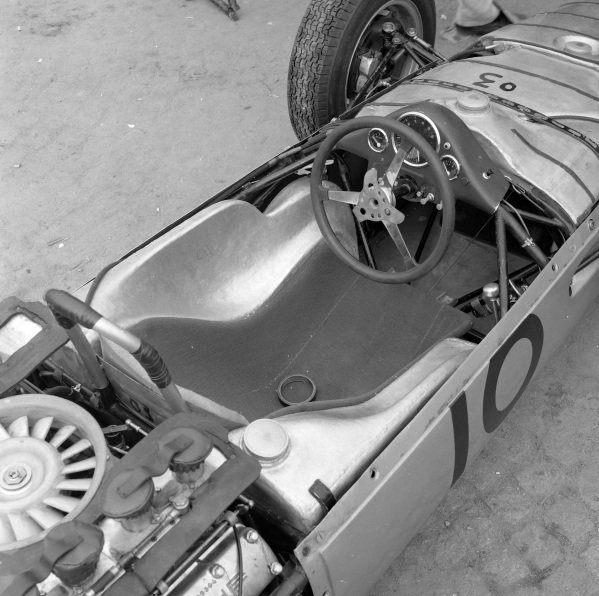
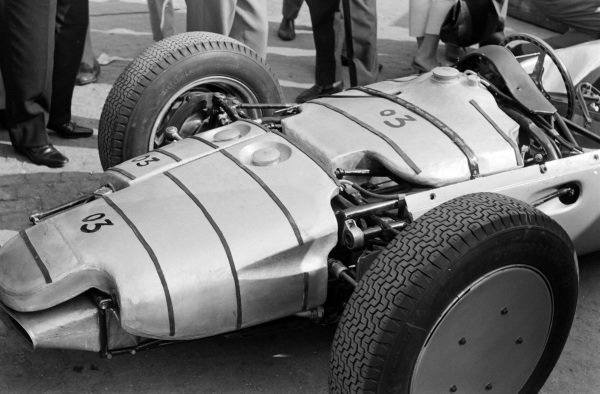
Spiny Norman said:
Michael V said:
Spiny Norman said:No I missed that sorry.
A 1998/99 prototype was made. 1500 cc V8. It resides in the British National Motorcycle Museum, near Birmingham. I don’t know how I missed it when we were there a few years back. It’s currently being restored to working condition by Allen Millyard, a motorcycle engineer known for adding cylinders or banks of cylinders to bikes.
Specs:
https://www.motorcyclespecs.co.za/model/norton/norton_nemessis.htm
Millyard’s video of the immensely weird front end restoration:
https://www.youtube.com/watch?v=BBwMn1ookQE
Oh lovely!
Alan does phenomenal work.Also, racing car safety has improved somewhat over the years. I don’t believe I’d like to drive a car with a fuel tank here.
Heck!
One for the m/c fans:

captain_spalding said:
One for the m/c fans:
Competition AJS trials bike.
Michael V said:
captain_spalding said:
One for the m/c fans:
Competition AJS trials bike.
my old man used to do scrambles back in the 20’s.
ChrispenEvan said:
Michael V said:
captain_spalding said:
One for the m/c fans:
Competition AJS trials bike.
my old man used to do scrambles back in the 20’s.
He must have been old when you were born.
Michael V said:
ChrispenEvan said:
Michael V said:Competition AJS trials bike.
my old man used to do scrambles back in the 20’s.
He must have been old when you were born.
born in 07 and me in 55.
Yet another attempt at the propellantless reaction drive.
Pretty much zero chance it actually works of course but I’d like to see some independent testing done.
https://youtu.be/WhsKMWOYuYo?si=KiqscASoXyQ6S8bU
Bizarre traveling flame discovery.
Excitable Mediums (Media?) are really interesting and you can make one with lighter fluid and a little trough!
Steve Mould.
The Incredible Technology Behind Sandpaper.
Sandpaper belongs to a class of abrasive products known as coated abrasives. These products are composed of an abrasive element bonded to a backing material such as paper, fabrics, rubber, metals or resins and they generally possess some degree of flexibility. King Solomon is mentioned to have used a mysterious worm or an abrasive substance called the Shamir that had the power to cut through or disintegrate stone, iron and diamond. In the 13th century, Chinese craftsmen were known to bond sand, crushed shells and sharp seeds onto parchment with natural gum. Other notable natural substances that have been used as abrasive tools include Shark skin, Coelacanth scales, and boiled and dried rough horsetail plan.
The World Of Strange Computers.
Explore the fascinating world of unconventional computers that defied the norms of their time, revolutionizing diverse fields from engineering to economics, torpedo guidance, digital logic, and animation. From Lukyanov’s ingenious Water Integrator solving complex equations using water flow to Moniac’s hydraulic macroeconomics modeling, delve into the Torpedo Data Computer’s role in WWII, the conceptual marvel of Domino Computers, and the pioneering analog magic of Scanimate in producing early motion graphics. Witness how these unconventional machines shaped industries, solving complex problems in ways that predated the modern era of computing.
What Colour Is Darkness?
What’s the darkest color you’ve ever seen? To most people, the obvious answer would be the black, more specifically the black of total darkness. After all, black by definition is the absence of light.
But total darkness isn’t as dark as you might think. Paradoxically, we need light to see the darkness.
https://www.youtube.com/watch?v=s5sCkng9tLo
(uh-oh!)
Our first female Aussie astronaut! Very cool.
Spiny Norman said:
Our first female Aussie astronaut! Very cool.
Yeah kudos to her!
Spiny Norman said:
Our first female Aussie astronaut! Very cool.
I hope she actually gets to go into space at some stage.
monkey skipper said:
Spiny Norman said:
Our first female Aussie astronaut! Very cool.Yeah kudos to her!
Good
now to draw this lifeform with a broom
Spiny Norman said:
Our first female Aussie astronaut! Very cool.
I’ve been slowly going through mum’s stuff. Today, I found a photograph of Australia’s first Astronaut, Phil Chapman, signed and dedicated to my maternal grandparents. My grandparents and his parents were very good friends, so much so that his parents were my mother’s godparents.
Why Airport Security Suddenly Got Better.
From the Real Engineering Youtube channel. Quite impressive engineering.
Spiny Norman said:
Why Airport Security Suddenly Got Better.
From the Real Engineering Youtube channel. Quite impressive engineering.
That’s cool.
Wonder whether Spiny would be interested in this. Secret Invention That Changed World War 2
Proximity fuse.
roughbarked said:
Wonder whether Spiny would be interested in this. Secret Invention That Changed World War 2Proximity fuse.
I remember having to learn about prox fuses.
A natty invention, especially for the era of its creation.
How Chernobyl Exploded – PART THREE: The Final Minutes.
It is now 1AM, April 26th, 1986. Unbeknownst to the operators, they are now rocketing down the path to destruction. These next few minutes are critical for the survival or demise of the reactor, and they are equally misunderstood by the general public. So, let’s explore them.
Maurice Ralph Hilleman (August 30, 1919 – April 11, 2005) was a leading American microbiologist who specialized in vaccinology and developed over 40 vaccines, an unparalleled record of productivity. According to one estimate, his vaccines save nearly eight million lives each year.
He has been described as one of the most influential vaccinologists ever. He has been called the “father of modern vaccines”. Robert Gallo called Hilleman “the most successful vaccinologist in history”. He has been noted by some researchers as having saved more lives than any other scientist in the 20th century.
Of the 14 vaccines routinely recommended in American vaccine schedules, Hilleman and his team developed eight: those for measles, mumps, hepatitis A, hepatitis B, chickenpox, Neisseria meningitidis, Streptococcus pneumoniae and Haemophilus influenzae bacteria.] During the “1957-1958 Asian flu pandemic”, his vaccine is believed to have saved hundreds of thousands of lives. He also played a key role in developing the vaccine for the “1968-1969 Hong Kong flu pandemic”. He also played a role in the discovery of antigenic shift and drift, the cold-producing adenoviruses, the hepatitis viruses, and the potentially cancer-causing virus SV40
QI
OCDC said:
QI
It’s.
Carl Sagan unveils the Pale Blue Dot image.
Spiny Norman said:
Carl Sagan unveils the Pale Blue Dot image.
Thanks.
For once a youtoob watching all the way through, all 94 seconds of it :)
The Rev Dodgson said:
Spiny Norman said:
Carl Sagan unveils the Pale Blue Dot image.Thanks.
For once a youtoob watching all the way through, all 94 seconds of it :)
I find that Carl Sagan is always worth watching.
Spiny Norman said:
The Rev Dodgson said:
Spiny Norman said:
Carl Sagan unveils the Pale Blue Dot image.Thanks.
For once a youtoob watching all the way through, all 94 seconds of it :)
I find that Carl Sagan is always worth watching.
He had a certaiin appeal.
How to turn an iceberg into an aircraft carrier – Project Habakkuk.
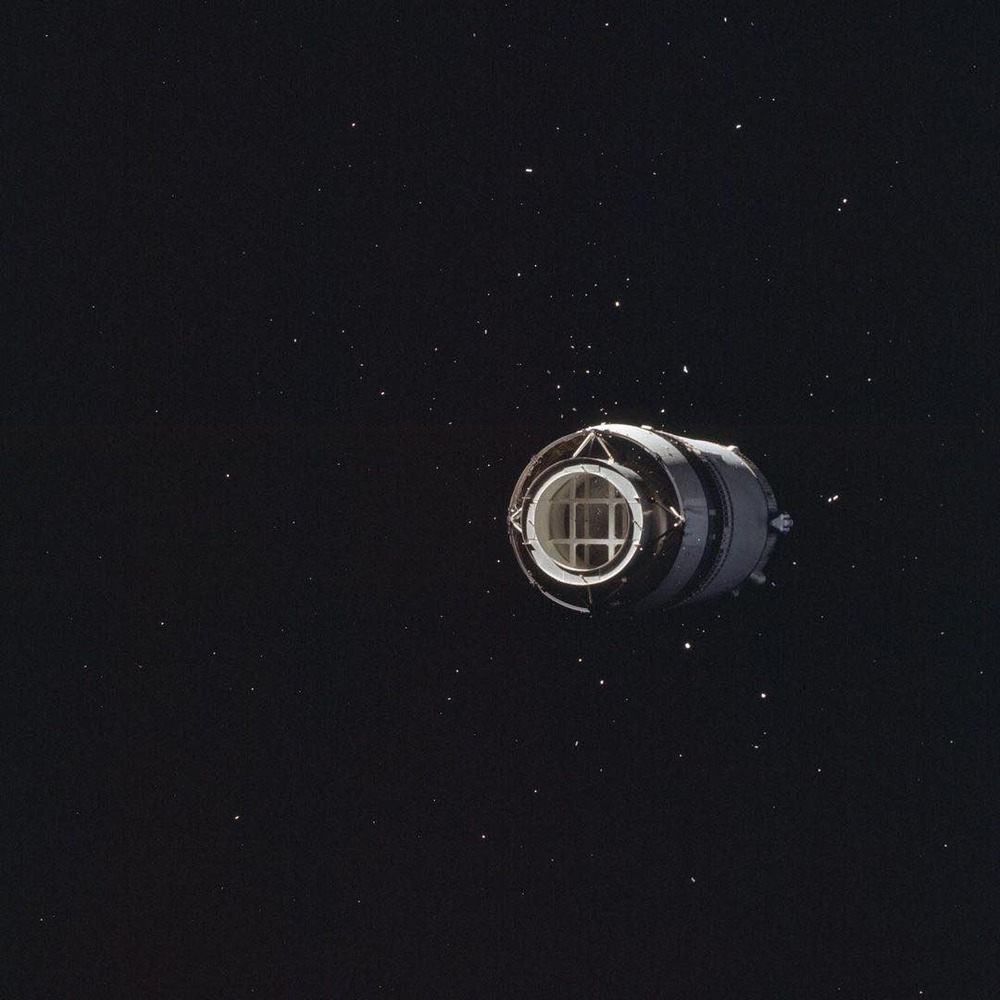
Dec. 21, 1968: Photograph taken from the Apollo 8 spacecraft looking back at the Saturn V third (S-IVB) stage from which the spacecraft had just separated following trans-lunar injection. The spacecraft became the first with men on board to leave Earth’s orbit, to reach the Moon, to orbit around it.
Spiny Norman said:

Dec. 21, 1968: Photograph taken from the Apollo 8 spacecraft looking back at the Saturn V third (S-IVB) stage from which the spacecraft had just separated following trans-lunar injection. The spacecraft became the first with men on board to leave Earth’s orbit, to reach the Moon, to orbit around it.
It looks like a hose connector.
buffy said:
Spiny Norman said:

Dec. 21, 1968: Photograph taken from the Apollo 8 spacecraft looking back at the Saturn V third (S-IVB) stage from which the spacecraft had just separated following trans-lunar injection. The spacecraft became the first with men on board to leave Earth’s orbit, to reach the Moon, to orbit around it.
It looks like a hose connector.
It does but I’d remove the white parts that would slow down water flow,
Well that’s the end of the pristine Antarctic.
$50 Trillion Was Just Found Under Antarctica.
What do we do when 511 billion barrels of oil has been found in the world’s largest nature reserve?
The Race to Fix Australia’s Failed Dam.

Peak Warming Man said:
it was going to be demolished anyway just not explosively.
Wow. This is apparently what was supposed to be a STATIC FIRE TEST today of a Tianlong-3 first stage by China’s Space Pioneer. That’s catastrophic, not static.
https://x.com/i/status/1807339807640518690
Oops.
Spiny Norman said:
Wow. This is apparently what was supposed to be a STATIC FIRE TEST today of a Tianlong-3 first stage by China’s Space Pioneer. That’s catastrophic, not static.https://x.com/i/status/1807339807640518690
Oops.
Not visible to non-twits.
Spiny Norman said:
Wow. This is apparently what was supposed to be a STATIC FIRE TEST today of a Tianlong-3 first stage by China’s Space Pioneer. That’s catastrophic, not static.https://x.com/i/status/1807339807640518690
Oops.
I saw that last night and thought it might be related to that booster that fell from the sky a couple of days ago, but apparently not.
roughbarked said:
Spiny Norman said:
Wow. This is apparently what was supposed to be a STATIC FIRE TEST today of a Tianlong-3 first stage by China’s Space Pioneer. That’s catastrophic, not static.https://x.com/i/status/1807339807640518690
Oops.
Not visible to non-twits.
https://tokyo3.org/forums/holiday/posts/2170285/
or here:
https://video.twimg.com/ext_tw_video/1807339715013509120/pu/vid/avc1/540×952/3oCuR203Hna2OfmO.mp4?tag=12
roughbarked said:
Spiny Norman said:Worked for me. I am not a xit.Wow. This is apparently what was supposed to be a STATIC FIRE TEST today of a Tianlong-3 first stage by China’s Space Pioneer. That’s catastrophic, not static.Not visible to non-twits.https://x.com/i/status/1807339807640518690
Oops.
Dark Orange said:
roughbarked said:
Spiny Norman said:
Wow. This is apparently what was supposed to be a STATIC FIRE TEST today of a Tianlong-3 first stage by China’s Space Pioneer. That’s catastrophic, not static.https://x.com/i/status/1807339807640518690
Oops.
Not visible to non-twits.
https://tokyo3.org/forums/holiday/posts/2170285/
or here:
https://video.twimg.com/ext_tw_video/1807339715013509120/pu/vid/avc1/540×952/3oCuR203Hna2OfmO.mp4?tag=12
Thanks.
OCDC said:
roughbarked said:Spiny Norman said:Worked for me. I am not a xit.Wow. This is apparently what was supposed to be a STATIC FIRE TEST today of a Tianlong-3 first stage by China’s Space Pioneer. That’s catastrophic, not static.Not visible to non-twits.https://x.com/i/status/1807339807640518690
Oops.
Ah it should be Xit these days. Sorry about that.
so when CHINA fails they actually go
Dark Orange said:
roughbarked said:
Spiny Norman said:
Wow. This is apparently what was supposed to be a STATIC FIRE TEST today of a Tianlong-3 first stage by China’s Space Pioneer. That’s catastrophic, not static.https://x.com/i/status/1807339807640518690
Oops.
Not visible to non-twits.
https://tokyo3.org/forums/holiday/posts/2170285/
or here:
https://video.twimg.com/ext_tw_video/1807339715013509120/pu/vid/avc1/540×952/3oCuR203Hna2OfmO.mp4?tag=12
BTW, the video contained in the link to this forum has extra footage worth watching.
Dark Orange said:
Dark Orange said:
roughbarked said:Not visible to non-twits.
https://tokyo3.org/forums/holiday/posts/2170285/
or here:
https://video.twimg.com/ext_tw_video/1807339715013509120/pu/vid/avc1/540×952/3oCuR203Hna2OfmO.mp4?tag=12
BTW, the video contained in the link to this forum has extra footage worth watching.
That’s the one I watched. Thanks.
Dark Orange said:
Dark Orange said:
roughbarked said:Not visible to non-twits.
https://tokyo3.org/forums/holiday/posts/2170285/
or here:
https://video.twimg.com/ext_tw_video/1807339715013509120/pu/vid/avc1/540×952/3oCuR203Hna2OfmO.mp4?tag=12
BTW, the video contained in the link to this forum has extra footage worth watching.
That could’ve turned very bad, very quickly.
Michael V said:
Dark Orange said:
Dark Orange said:https://tokyo3.org/forums/holiday/posts/2170285/
or here:
https://video.twimg.com/ext_tw_video/1807339715013509120/pu/vid/avc1/540×952/3oCuR203Hna2OfmO.mp4?tag=12
BTW, the video contained in the link to this forum has extra footage worth watching.
That could’ve turned very bad, very quickly.
Note that this happened a week ago:
Ah well good to know that CHINA are targeting their own real estate with their rockets slash missiles unlike ILUARUPS ¡
Dark Orange said:
Michael V said:
Dark Orange said:BTW, the video contained in the link to this forum has extra footage worth watching.
That could’ve turned very bad, very quickly.
Note that this happened a week ago:
Oh heck yes.
That rocket used very toxic hypergolic fuels as well. I think the one that I posted used more regular liquid fuels and it probably wouldn’t have had a large amount onboard either, being a static test.
Spiny Norman said:
Dark Orange said:
Michael V said:That could’ve turned very bad, very quickly.
Note that this happened a week ago:
Oh heck yes.
That rocket used very toxic hypergolic fuels as well. I think the one that I posted used more regular liquid fuels and it probably wouldn’t have had a large amount onboard either, being a static test.
The second camera angle still shows a very large kaboom when it hit the dirt. As for the one a week ago, would I be correct in assuming the yellow/orange smoke is Nitrogen Dioxide?
In the womb, Stephanie was meant to develop male. But an issue with her adrenal glands reversed the process.
Congenital adrenal hyperplasia, or CAH, is a group of conditions that affects the adrenal glands. These glands, which sit above the kidneys, make hormones such as cortisol, aldosterone and androgens (male sex hormones). The effects of CAH vary significantly from person to person, depending on the type of CAH.
Intersex is an umbrella term for over 30 different conditions with varying degrees of impact. For some, intersex features are noticeable from birth, while others don’t realise until they try for children. For more information, read: https://www.healthdirect.gov.au/intersex-variation
SCIENCE said:
Ah well good to know that CHINA are targeting their own real estate with their rockets slash missiles unlike ILUARUPS ¡
Wonder what the Pandas had to say about it all.
Dark Orange said:
Spiny Norman said:
Dark Orange said:Note that this happened a week ago:
Oh heck yes.
That rocket used very toxic hypergolic fuels as well. I think the one that I posted used more regular liquid fuels and it probably wouldn’t have had a large amount onboard either, being a static test.
The second camera angle still shows a very large kaboom when it hit the dirt. As for the one a week ago, would I be correct in assuming the yellow/orange smoke is Nitrogen Dioxide?
Yeah I guess it still must have had a fair bit of fuel/oxidiser onboard.
I think the hypergolic one used nitrogen tetroxide, very nasty stuff.
roughbarked said:
SCIENCE said:Ah well good to know that CHINA are targeting their own real estate with their rockets slash missiles unlike ILUARUPS ¡
Wonder what the Pandas had to say about it all.
probably bamboozled by it all.
JudgeMental said:
roughbarked said:
SCIENCE said:Ah well good to know that CHINA are targeting their own real estate with their rockets slash missiles unlike ILUARUPS ¡
Wonder what the Pandas had to say about it all.
probably bamboozled by it all.
Totally.
Morning, threatening rain in ol’ Brisbane town.
England scrapes home against some busted arsed Slovak state.
Peak Warming Man said:
Morning, threatening rain in ol’ Brisbane town.
England scrapes home against some busted arsed Slovak state.
you’ve done it again.
JudgeMental said:
Peak Warming Man said:
Morning, threatening rain in ol’ Brisbane town.
England scrapes home against some busted arsed Slovak state.
you’ve done it again.
Yeah.
Dark Orange said:
Michael V said:
Dark Orange said:BTW, the video contained in the link to this forum has extra footage worth watching.
That could’ve turned very bad, very quickly.
Note that this happened a week ago:
Hmmmmm.
How to Calculate Pi by Throwing Frozen Hot Dogs.
Suspected Female Serial Killer Caught But Not Punished | Tales From the Bottle.
Qxir.
29,000 Feet Up Mount Everest with DJI Mavic 3 Pro.

The 777 engines are amongst the most efficient to be found anywhere.
Was Penrose Right? NEW EVIDENCE For Quantum Effects In The Brain.
Nobel laureate Roger Penrose is widely held to be one of the most brilliant living physicists for his wide-ranging work from black holes to cosmology. And then there’s his idea about how consciousness is caused by quantum processes. Most scientists have dismissed this as a cute eccentricity—a guy like Roger gets to have at least one crazy theory without being demoted from the supersmartypants club. The most common argument for this dismissal is that quantum effects can’t survive long enough in an environment as warm and chaotic as the brain. Well, a new study has revealed that Penrose’s prime candidate molecule for this quantum activity does indeed exhibit large scale quantum activity. So was Penrose right after all? Are you a quantum entity?
Spiny Norman said:
Was Penrose Right? NEW EVIDENCE For Quantum Effects In The Brain.Nobel laureate Roger Penrose is widely held to be one of the most brilliant living physicists for his wide-ranging work from black holes to cosmology. And then there’s his idea about how consciousness is caused by quantum processes. Most scientists have dismissed this as a cute eccentricity—a guy like Roger gets to have at least one crazy theory without being demoted from the supersmartypants club. The most common argument for this dismissal is that quantum effects can’t survive long enough in an environment as warm and chaotic as the brain. Well, a new study has revealed that Penrose’s prime candidate molecule for this quantum activity does indeed exhibit large scale quantum activity. So was Penrose right after all? Are you a quantum entity?
Quantum effects having a significant effect on brain activity seems a perfectly reasonable hypothesis to me.
The Rev Dodgson said:
Spiny Norman said:
Was Penrose Right? NEW EVIDENCE For Quantum Effects In The Brain.
Nobel laureate Roger Penrose is widely held to be one of the most brilliant living physicists for his wide-ranging work from black holes to cosmology. And then there’s his idea about how consciousness is caused by quantum processes. Most scientists have dismissed this as a cute eccentricity—a guy like Roger gets to have at least one crazy theory without being demoted from the supersmartypants club. The most common argument for this dismissal is that quantum effects can’t survive long enough in an environment as warm and chaotic as the brain. Well, a new study has revealed that Penrose’s prime candidate molecule for this quantum activity does indeed exhibit large scale quantum activity. So was Penrose right after all? Are you a quantum entity?
Quantum effects having a significant effect on brain activity seems a perfectly reasonable hypothesis to me.
We mean quantum effects have a significant effect on other computational device activity oh wait ah yes.
Evidence of dark oxygen production at the abyssal seafloor.
Spiny Norman said:
Evidence of dark oxygen production at the abyssal seafloor.
and another one from the BBC:
The Rev Dodgson said:
Spiny Norman said:
Evidence of dark oxygen production at the abyssal seafloor.
and another one from the BBC:
Is this how Dark Brandon Ended Up In Bathos ¿
How a CIA Base Works.
How do CIA bases operate on foreign soil? Where are they concealed? What occurs inside them?
Tau.Neutrino said:
340. The most splendid little boat you ever will see!
It’s beautiful! Obviously Johnny is, indeed, a perfectionist, and this build must have proceeded quite slowly, with every step being given a great deal of thought.
You only have to look at the hull, even in its ‘derelict’ state, to appreciate its lines, and its potential. I think that the state of dereliction was somewhat overstated, as i saw nothing there which would be a serious discouragement to taking on the project. I’ve seen hulls in far worse condition resurrected to presentable and useful condition.
It looks like a steam launch, which i think is gilding the lily a bit, but, it’s his boat and he’s happy with that.
Years ago, i saw on Brisbane Water near Gosford a small steam launch which two blokes had built for themselves. It was not as beautiful as Johnny’s boat, and they had to stop here and there to replenish the feed water forthe steam engine, of course, but it was a genuine steam launch, and a thing of fascination.
The Physics of Dyson Spheres.
The idea of Dyson Spheres was a radical proposal by the physicist Freeman Dyson, an enormous shell of material enveloping a star. Dyson’s idea may be over half a century old, but interest in looking for such objects has only grown in the decades since. But how would such structures work? Are they physically even possible? And what might someone use them for? Today, we dive into the physics of Dyson spheres.
https://www.youtube.com/watch?v=zU_R2ghfsBE
How AI could help us talk to animals.
Why researchers think we’re close to getting interspecies chatbots.
https://www.youtube.com/watch?v=7PgSanU_VpQ
This Is A Light-Nanosecond!
Spiny Norman said:
The Physics of Dyson Spheres.The idea of Dyson Spheres was a radical proposal by the physicist Freeman Dyson, an enormous shell of material enveloping a star. Dyson’s idea may be over half a century old, but interest in looking for such objects has only grown in the decades since. But how would such structures work? Are they physically even possible? And what might someone use them for? Today, we dive into the physics of Dyson spheres.
https://www.youtube.com/watch?v=zU_R2ghfsBE
How AI could help us talk to animals.
Why researchers think we’re close to getting interspecies chatbots.
https://www.youtube.com/watch?v=7PgSanU_VpQ
This Is A Light-Nanosecond!
“But how would such structures work? Are they physically even possible? And what might someone use them for? “
The answers are:
They wouldn’t
No
Nothing
aren’t they?
Disclosure: I didn’t actually watch the video, or even scan the transcript.
The Rev Dodgson said:
Spiny Norman said:
The Physics of Dyson Spheres.The idea of Dyson Spheres was a radical proposal by the physicist Freeman Dyson, an enormous shell of material enveloping a star. Dyson’s idea may be over half a century old, but interest in looking for such objects has only grown in the decades since. But how would such structures work? Are they physically even possible? And what might someone use them for? Today, we dive into the physics of Dyson spheres.
https://www.youtube.com/watch?v=zU_R2ghfsBE
How AI could help us talk to animals.
Why researchers think we’re close to getting interspecies chatbots.
https://www.youtube.com/watch?v=7PgSanU_VpQ
This Is A Light-Nanosecond!
“But how would such structures work? Are they physically even possible? And what might someone use them for? “
The answers are:
They wouldn’t
No
Nothingaren’t they?
Disclosure: I didn’t actually watch the video, or even scan the transcript.
Although Dyson sphere systems are theoretically possible, building a stable megastructure around the Sun is currently far beyond humanity’s engineering capacity.
Wikipedia
The Rev Dodgson said:
Spiny Norman said:
The Physics of Dyson Spheres.The idea of Dyson Spheres was a radical proposal by the physicist Freeman Dyson, an enormous shell of material enveloping a star. Dyson’s idea may be over half a century old, but interest in looking for such objects has only grown in the decades since. But how would such structures work? Are they physically even possible? And what might someone use them for? Today, we dive into the physics of Dyson spheres.
https://www.youtube.com/watch?v=zU_R2ghfsBE
How AI could help us talk to animals.
Why researchers think we’re close to getting interspecies chatbots.
https://www.youtube.com/watch?v=7PgSanU_VpQ
This Is A Light-Nanosecond!
“But how would such structures work? Are they physically even possible? And what might someone use them for? “
The answers are:
They wouldn’t
No
Nothingaren’t they?
Disclosure: I didn’t actually watch the video, or even scan the transcript.
How about a Niven Ring then? They are difficult, but not impossible. (They are for now though)
Spiny Norman said:
The Rev Dodgson said:
Spiny Norman said:
The Physics of Dyson Spheres.The idea of Dyson Spheres was a radical proposal by the physicist Freeman Dyson, an enormous shell of material enveloping a star. Dyson’s idea may be over half a century old, but interest in looking for such objects has only grown in the decades since. But how would such structures work? Are they physically even possible? And what might someone use them for? Today, we dive into the physics of Dyson spheres.
https://www.youtube.com/watch?v=zU_R2ghfsBE
How AI could help us talk to animals.
Why researchers think we’re close to getting interspecies chatbots.
https://www.youtube.com/watch?v=7PgSanU_VpQ
This Is A Light-Nanosecond!
“But how would such structures work? Are they physically even possible? And what might someone use them for? “
The answers are:
They wouldn’t
No
Nothingaren’t they?
Disclosure: I didn’t actually watch the video, or even scan the transcript.
How about a Niven Ring then? They are difficult, but not impossible. (They are for now though)
I think rings are more possible that spheres.
JudgeMental said:
Spiny Norman said:
The Rev Dodgson said:“But how would such structures work? Are they physically even possible? And what might someone use them for? “
The answers are:
They wouldn’t
No
Nothingaren’t they?
Disclosure: I didn’t actually watch the video, or even scan the transcript.
How about a Niven Ring then? They are difficult, but not impossible. (They are for now though)
I think rings are more possible that spheres.

Ian said:
The Rev Dodgson said:
Spiny Norman said:
The Physics of Dyson Spheres.The idea of Dyson Spheres was a radical proposal by the physicist Freeman Dyson, an enormous shell of material enveloping a star. Dyson’s idea may be over half a century old, but interest in looking for such objects has only grown in the decades since. But how would such structures work? Are they physically even possible? And what might someone use them for? Today, we dive into the physics of Dyson spheres.
https://www.youtube.com/watch?v=zU_R2ghfsBE
How AI could help us talk to animals.
Why researchers think we’re close to getting interspecies chatbots.
https://www.youtube.com/watch?v=7PgSanU_VpQ
This Is A Light-Nanosecond!
“But how would such structures work? Are they physically even possible? And what might someone use them for? “
The answers are:
They wouldn’t
No
Nothingaren’t they?
Disclosure: I didn’t actually watch the video, or even scan the transcript.
Although Dyson sphere systems are theoretically possible, building a stable megastructure around the Sun is currently far beyond humanity’s engineering capacity.
Wikipedia
Depends what you mean by “theoretically possible”.
I mean if you develop a material with near infinite compressive strength and flexural stiffness, then sure, you could make it work.
But if you limit possible materials to materials that are theoretically possible according to current theories, then no way.
The Rev Dodgson said:
Ian said:
The Rev Dodgson said:“But how would such structures work? Are they physically even possible? And what might someone use them for? “
The answers are:
They wouldn’t
No
Nothingaren’t they?
Disclosure: I didn’t actually watch the video, or even scan the transcript.
Although Dyson sphere systems are theoretically possible, building a stable megastructure around the Sun is currently far beyond humanity’s engineering capacity.
Wikipedia
Depends what you mean by “theoretically possible”.
I mean if you develop a material with near infinite compressive strength and flexural stiffness, then sure, you could make it work.
But if you limit possible materials to materials that are theoretically possible according to current theories, then no way.
so it is just an engineering problem?
;-)
JudgeMental said:
Spiny Norman said:
The Rev Dodgson said:“But how would such structures work? Are they physically even possible? And what might someone use them for? “
The answers are:
They wouldn’t
No
Nothingaren’t they?
Disclosure: I didn’t actually watch the video, or even scan the transcript.
How about a Niven Ring then? They are difficult, but not impossible. (They are for now though)
I think rings are more possible that spheres.
Sure, I have no problem with rings at all, at all.
The Rev Dodgson said:
Ian said:
The Rev Dodgson said:“But how would such structures work? Are they physically even possible? And what might someone use them for? “
The answers are:
They wouldn’t
No
Nothingaren’t they?
Disclosure: I didn’t actually watch the video, or even scan the transcript.
Although Dyson sphere systems are theoretically possible, building a stable megastructure around the Sun is currently far beyond humanity’s engineering capacity.
Wikipedia
Depends what you mean by “theoretically possible”.
I mean if you develop a material with near infinite compressive strength and flexural stiffness, then sure, you could make it work.
But if you limit possible materials to materials that are theoretically possible according to current theories, then no way.
Yes BC
JudgeMental said:
The Rev Dodgson said:
Ian said:Although Dyson sphere systems are theoretically possible, building a stable megastructure around the Sun is currently far beyond humanity’s engineering capacity.
Wikipedia
Depends what you mean by “theoretically possible”.
I mean if you develop a material with near infinite compressive strength and flexural stiffness, then sure, you could make it work.
But if you limit possible materials to materials that are theoretically possible according to current theories, then no way.
so it is just an engineering problem?
;-)
Exactly :)
Ian said:
The Rev Dodgson said:
Ian said:Although Dyson sphere systems are theoretically possible, building a stable megastructure around the Sun is currently far beyond humanity’s engineering capacity.
Wikipedia
Depends what you mean by “theoretically possible”.
I mean if you develop a material with near infinite compressive strength and flexural stiffness, then sure, you could make it work.
But if you limit possible materials to materials that are theoretically possible according to current theories, then no way.
Yes BC
LOL, that name crossed my mind too.
JudgeMental said:
Ian said:
The Rev Dodgson said:Depends what you mean by “theoretically possible”.
I mean if you develop a material with near infinite compressive strength and flexural stiffness, then sure, you could make it work.
But if you limit possible materials to materials that are theoretically possible according to current theories, then no way.
Yes BC
LOL, that name crossed my mind too.
I know we all mocked BC for using that term, but in an engineering context I don’t have a problem with it.
Trying to Convince ChatGPT It’s Conscious.
ChatGPT is an impressive mimicry of a fully-conscious conversational partner. Perhaps too impressive?
What is Quantum Navigation, and what does it have to do with the aviation industry?
Well, it turns out that this technology could be what we need, to solve a very serious problem: GPS jamming and spoofing. Because when it becomes available, quantum navigation could actually replace GPS – COMPLETELY.
https://www.youtube.com/watch?v=_UNeYZEEOyo
The quantum gyro section starts at about the sixteen minute mark.
ISS Timelapse – Crossing Australia (15 Jul 2024)
https://www.youtube.com/watch?v=ojbBLENz15s
An Ancient Roman Shipwreck May Explain the Universe.
https://www.youtube.com/watch?v=o0A9M5wHBA4
How One Insane Long Jump Outsmarted the Entire Sport.
Tuariki Delamere’s somersault long jump at the 1974 LA Pacific Championships marked a pivotal moment in track and field history. This video examines the New Zealand athlete’s innovative technique, its biomechanical advantages, and the subsequent IAAF ban.
Thankfully these horrific weapons are no longer in the inventory.
The Tsar Bomba: The Untold Story.
https://www.youtube.com/watch?v=8l63cWiHu5E
Spiny Norman said:
Thankfully these horrific weapons are no longer in the inventory.The Tsar Bomba: The Untold Story.
https://www.youtube.com/watch?v=8l63cWiHu5E
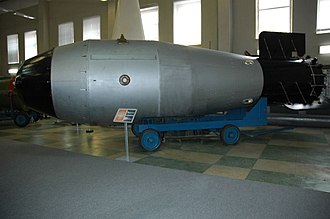

JudgeMental said:
I am familiar with this from my copy of this estmable tome:

I assume that you’ve also seen the exploding whistle, and the explosive water bottle?
However, it’s uncertain if things like the chocolate bar, the whistle, etc, were ever actually deployed.
What is certain is that desirable ‘souvenirs’ were, and are, very frequently booby-trapped. Expert souvenir hunters find that a reel of fishing line and a few different sized hooks can prevent some considerable embarrassment.
It’s Happening – China Launches World’s First Thorium Nuclear Reactor
Dr Ben Miles
https://www.youtube.com/watch?v=t4EJQPWjFj8
I’m extremely pleased to see these going ahead.
Spiny Norman said:
It’s Happening – China Launches World’s First Thorium Nuclear Reactor
Dr Ben Mileshttps://www.youtube.com/watch?v=t4EJQPWjFj8
I’m extremely pleased to see these going ahead.
Looking good, so far.
roughbarked said:
Spiny Norman said:
It’s Happening – China Launches World’s First Thorium Nuclear Reactor
Dr Ben Mileshttps://www.youtube.com/watch?v=t4EJQPWjFj8
I’m extremely pleased to see these going ahead.
Looking good, so far.
so not only are they overcapacity dominating the transport industry they’re going to overwhelm everyone else with their production of energy the effective currency of the millennium
Democracy might be mathematically impossible – here’s why.
Starting in the 1940s, a new surgery was being explored to help people with severe epilepsy which involved severing communication between the two hemispheres of the brain. It worked, but caused some very strange side effects. As researchers began to study these side effects, it led to an entirely new understanding of the brain; including the surprising fact that we really don’t have control over our decisions.
Spiny Norman said:
Democracy might be mathematically impossible – here’s why.
Goes on a bit :)
democracy might be mathematically impossible this isn’t a value judgment a comment about
0:07
human nature nor a statement about how rare and unstable Democratic societies have been in the
0:12
history of civilization our current attempt at democracy the methods we’re using to elect
0:18
our leaders are fundamentally irrational and this is a well-established mathematical fact
0:27
this is a video about the math that proved that fact and led to a Nobel Prize it’s a
0:32
video about how groups of people make decisions and the pitfalls that our voting systems fall
0:37
into one of the simplest ways to hold an election is to ask the voters to mark one candidate as
0:46
their favorite on a ballot and when the votes are counted the candidate with the most votes
0:51
wins the election this is known as first past the post voting the name is kind of a misnomer though
0:58
there is no post that any of the candidates need to get past. the winner is just the candidate with
1:03
the most votes this method likely goes back to Antiquity it has been used to elect members of
1:10
the House of Commons in England since the 14th century and it’s still a common voting system
1:15
with 44 countries in the world using it to elect its leaders 30 of these countries were former
1:21
British colonies the us being a former British colony still uses first past the post in most
1:28
of its states to elect their representatives to the electoral college but first pass the post has
1:34
problems if you are selecting representatives in a parliament you can and frequently do get
1:40
situations where the majority of the country did not vote for the party that ends up holding the
1:45
power in the last 100 years there were 21 times a single party held a majority of the seats in the
1:53
British Parliament but only two of those times did the majority of the voters actually vote for
1:59
that party so a party which only a minority of the people voted for ends up holding all of the
2:06
power in government another thing that happens because of first pass the post is that similar
2:11
parties end up stealing votes from each other the 2000 US presidential election which was an
2:18
election essentially between Al Gore and George W bush at that point every state in the nation used
2:25
first pass the post to determine the outcome of the election bush had more votes in Florida but
2:31
by a ridiculously slim margin it was fewer than 600 votes but there was another candidate on the
2:39
ballot Ralph Nader. Nader was a green candidate he was certainly to the left of either Gore or bush
2:48
what we need is the upsurge of Citizen concern people concerned poor Rich or middle class to
2:54
counteract the power of the special interest and he got almost 100,000 votes in Florida I
3:01
just don’t know if I can with a conscience um vote for uh Bush or Gore I will vote for Ralph
3:06
Nader most of those voters were devastated that by voting for Nader rather than Gore they ended
3:14
up electing Bush This is what is called a spoiler effect almost all Nader voters preferred Gore
3:22
to Bush but in a first pass post system they had no way of expressing that preference because you
3:30
could only vote for one candidate so first pass the post incentivizes voters to vote strategically
3:39
say there are five parties one of them will be the smallest one and so they won’t win why would
3:46
you vote for them this is also true if you have four parties or three parties this Winner Takes
3:53
all voting system leads to a concentration of power in larger parties eventually leading to
3:59
a two party system this effect is common enough that it has a name do verger’s
4:05
law so first pass the post isn’t a great option so what else could we do well we can say that a
4:16
candidate can only win an election if they get a majority at least 50% plus one of the vote
4:22
but what if we hold an election and no one gets a majority we could go to the people who voted
4:27
for the candidate with the fewest votes and ask ask them to vote again but choose a different
4:32
candidate and we could repeat this process over and over eliminating the smallest candidate until
4:38
one candidate reaches a majority but holding many elections is a big hassle so instead we could just
4:46
ask voters to rank their preferences from their favorite to their least favorite and if their
4:51
favorite candidate gets eliminated we go to their second preferences when the polls close you count
4:57
the voters first choices if any c cidate has a majority of the votes then they’re the winner but
5:02
If no candidate has a majority the candidate with the fewest votes gets eliminated and their ballots
5:07
are distributed to those voters second preferences and this keeps happening until one candidate has
5:13
a majority of the votes this is mathematically identical to holding repeated elections it just
5:19
saves the time and hassle so it’s referred to as instant runoff but the system is also known
5:25
as preferential voting or ranked Choice voting an instant runoff doesn’t just affect the voters it
5:32
affects how the candidates behave towards each other it was the Minneapolis mayor’s race 2013
5:39
they were using rank Choice voting the incumbent mayor had stepped down and there were all of these
5:46
people came out from the woodwork wanting to be mayor there 35 candidates and so you would think
5:51
if there’s 35 candidates you’d want to dunk on someone you’d want to like kind of elbow yourself
5:57
into the spotlight that’s not what happened these 35 candidates all of them were really
6:02
nice to each other they were all super cordial super polite to the degree that at the end of the
6:10
final mayoral debate they all came together and they sang Kumbaya together k k oh Lord
6:30
the amount of vitriol and anger and partisan you know mudslinging that we’re all used to to
6:36
see this vision of an actual Kumbaya it’s not even a joke all of these people getting along
6:43
so desperate for second and third choices from other people that they’re like I’m going to be
6:47
the picture perfect kindest candidate possible but there’s also a problem with instant runoff
6:55
there can be cases where a candidate doing worse can actually help help get them elected let’s say
7:02
we have three candidates Einstein curee and bore now Einstein and bore have very conflicting views
7:10
while C is ideologically in the center so let’s say Einstein gets 25% of the vote cirri gets 30
7:17
and bore gets 45 no one got a majority so it goes to the second round with Einstein
7:23
being eliminated and because people who voted for Einstein put down c as their second choice well
7:29
C ultimately gets elected but now imagine that bour has a terrible campaign speech or proposes
7:37
a very unpopular policy so bad that some of his voters actually switch over to Einstein’s side
7:44
well now it’s curee that gets eliminated and because she’s more moderate half of
7:50
her voters select Einstein and the other half select bore in the second round and this leads
7:55
to boore winning so bore doing work in the first round actually leads to him winning the election
8:04
clearly this isn’t something that we want in a voting system this is what the french
8:09
mathematician Condor also thought Condor was one of the first people applying logic
8:15
and Mathematics to rigorously study voting systems making him one of the founders of a
8:20
branch of mathematics known as social Choice theory he was working during the time of the
8:26
French Revolution so fairly determining the will of the people was having a cultural moment right
8:31
then in 1784 condor’s contemporary at the French Royal Society of science Jean Charles de borda
8:41
proposed a voting method you ask the voters to rank the candidates if there are five candidates
8:48
ranking someone first gives that candidate Four Points ranking them second would give them three
8:53
and so on with zero points being awarded for last place but the board account has a problem because
9:01
the number of points given to each candidate is dependent on the total number of candidates
9:06
adding extra people that have no chance of winning can affect the winner because of this condr hated
9:13
Border’s idea he wrote that it was bound to lead to error because it relies on irrelevant factors
9:19
for its judgments so in 1785 Condor published an essay in which he proposed a new voting system
9:27
one he thought was the most Fair basically the winner needs to beat every other candidate in
9:33
a head-to-head election but with more than two candidates do you need to hold a large number of
9:39
head-to-head elections to pick the winner well no just ask the voters to rank their preferences just
9:44
like in instant runoff and then count how many voters rank each candidate higher than each other
9:50
candidate this feels like the most Fair voting method this voting system was actually
9:58
discovered 450 years earlier by Raymond lull a monk who was looking at how church leaders were
10:03
chosen but L’s ideas didn’t make an impact because his book ours electionus the art of Elections was
10:11
lost and only rediscovered in 2001 so the voting system is named after cond and not lol but will
10:20
there always be a winner in this way let’s try condor’s method for choosing dinner between you
10:25
and two friends there are three options burgers pizza or sushi you really like burgers so that’s
10:32
your first preference your second choice is pizza and you put Sushi last your friend prefers pizza
10:39
then Sushi then burgers and your other friend prefers Sushi than Burgers then pizza now if
10:45
you choose Burgers it can be argued that Sushi should have won instead since two of you prefer
10:50
Sushi over burgers and only one prefers Burgers to Sushi however by the same argument Pizza is
10:57
preferred to Sushi and burgers are preferred to Pizza by a margin of 2: one on each occasion so
11:04
it seems like you and your friends are stuck in a loop burgers are preferred to Pizza which is
11:09
preferred to Sushi which is preferred to Burgers and so on this situation is known as condor’s
11:17
Paradox Condor died before he could resolve this problem with his voting system he was
11:24
politically active during the French Revolution writing a draft of France’s Constitution in 1793
11:31
during the reign of terror when Le monang came to power he was deemed a traitor for criticizing the
11:37
regime specifically their new constitution the next year he was arrested and died in
11:43
jail over the next 150 years dozens of mathematicians were proposing their own
11:50
voting systems or modifications to Condor or bord ideas one of those mathematicians
11:57
was Charles Dodson better known as Lewis Carroll when he wasn’t writing Alice in Wonderland he was
12:03
trying to find a system to hold Fair elections but every voting system had similar kinds of problems
12:11
you’d either get Condor Loops or other candidates that had no chance of winning would affect the
12:17
outcome of the election in 1951 Kenneth Arrow published his PhD thesis and in it he outlined
12:26
five very obvious and reasonable conditions that AR voting system should have condition
12:31
number one if everyone in the group chooses one option over another the outcome should reflect
12:37
that if every individual in the group prefers to eat sushi over pizza then the group as a whole
12:42
should prefer Sushi over Pizza this is known as unanimity condition two no single person’s vote
12:50
should override the preferences of everyone else if everyone votes for pizza except one person who
12:55
votes for sushi the group should obviously choose Pizza if a single vote is decisive that’s not a
13:01
democracy that’s a dictatorship condition three everyone should be able to vote however they want
13:08
and the voting system must produce a conclusion for society based on all the ballots every time
13:14
it can’t avoid problematic ballots or candidates by simply ignoring them or just guessing randomly
13:20
it must reach the same answer for the same set of ballots every time this is called unrestricted
13:27
domain condition four the voting system should be transitive if a group prefers Burgers over
13:33
pizza and pizza over Sushi then they should also prefer Burgers over Sushi this is known
13:38
as transitivity condition five if the preference of the group is Sushi over Pizza the introduction
13:45
of another option like burgers should not change that preference sure the group might collectively
13:51
rank Burgers above both or in the middle or at the bottom but the ranking of sushi over Pizza
13:56
should not be affected by the new option this is called the independence of irrelevant Alternatives
14:04
but here’s the thing Arrow proved that satisfying all five of these conditions in a ranked voting
14:09
system with three or more candidates is impossible this is Arrow’s impossibility theorem and it was
14:15
so groundbreaking that Arrow was awarded the Nobel prize in economics in 1972 so I want to go through
14:21
a version of his proof based on a formulation by GN acus so let’s say there are three candidates
14:28
running for election Aristotle bore and C but we’ll refer to them as a b and c and we have a
14:37
collection of Voters that will line up in order so we have voter 1 2 3 and so on all the way up
14:43
to n each of these voters is free to rank a b and c however they like I’ll even allow ties now the
14:50
first thing we want to show is that if everyone ranks a particular candidate first or last then
14:56
society as a whole must also rank that candidate first or last let’s arbitrarily pick candidate B
15:03
if say half of the voters rank B first and half rank B last then the claim is our voting system
15:10
must put B either first or last and we’ll prove it by contradiction so say this is how everyone
15:18
voted if our system does not put B first or last but rather in the middle say a is ranked above
15:25
B which is above C then we’ll get a contradiction because if each of our voters moved C above a then
15:34
by unanimity C must be ranked above a however because we didn’t change the position of any a
15:41
relative to B A must still be ranked above B and because we didn’t change the position of
15:48
any c relative to B C must still be ranked below B and by transitivity if a is preferred to B and
15:55
B is preferred to C then a must be ranked above C but this contradicts the result by unanimity and
16:03
that proves that if everyone ranks a candidate first or last then Society must also rank them
16:09
first or last now let’s do a thought experiment where every voter puts B at the bottom of their
16:17
ranking we leave the ranking of A and C arbitrary well then by unanimity we know that b must be at
16:25
the bottom of society’s ranking we’ll call this setup profile 0 now we’ll create profile one which
16:32
is identical to profile Z except the first voter moves B from the bottom to the top this of course
16:39
doesn’t affect the outcome but we can keep doing this creating profiles 2 3 4 and so on with one
16:46
more voter of clipping B from the bottom to the top each time if we keep doing this there will
16:51
eventually come a voter whose change from having B at the bottom to B at the top will first flip
16:58
society’s ranking moving B to the top let’s call this voter the pivotal voter and we’ll label the
17:04
profile profile P profile o is then the profile right before the pivotal change happens let’s now
17:11
create a profile Q which is the same as P except the pivotal voter moves a above B by independence
17:20
of irrelevant Alternatives the social rank must also put a above B since for all of our voters
17:28
the relative position of A and B is the same as it was in profile O and B must be ranked above C
17:36
because the relative positions of B and C are the same as they were in profile P where our pivotal
17:43
voter moved B to the Top by transitivity a must be ranked above C in the social ranking this is true
17:52
regardless of how any of the non-pivotal voters rearrange their positions of A and C because
17:58
these rearrangements don’t change the position of a relative to B or C relative to B this means
18:07
the pivotal voter is actually a dictator for determining society’s preference of a over C the
18:13
social rank will always agree with a pivotal voter regardless of what the other voters do we can run
18:20
a similar thought experiment where we put C at the bottom and prove that there is again a dictator
18:26
who in this case determines the social preference of A over B and it turns out this voter is the
18:33
same one who determines the social preference for a over C the pivotal voter is therefore
18:40
a complete dictator so is democracy doomed well arrows impossibility theorem seems to say so if
18:49
there are three or more candidates to choose from there is no ranked Choice method to rationally
18:55
aggregate voter preferences you always need to give something up but the mathematician
19:04
Duncan black found a much more optimistic theorem which might actually represent reality better if
19:11
voters and candidates are naturally spread along a single Dimension say ranging from Liberal on
19:16
the left to conservative on the right but this could apply to any other political Dimension
19:21
well then black showed that the preference of the median voter will reflect the majority decision
19:28
the median voters choice will often determine the outcome of the election a result that aligns with
19:34
the majority of Voters avoiding the paradoxes and inconsistencies highlighted by arrow and
19:40
there’s more good news Arrow’s impossibility theorem only applies to ordinal voting systems
19:46
ones in which the voters rank candidates over others there is another way rated voting systems
19:53
the simplest version is known as approval voting where instead of ranking the candidates the voters
19:58
just tick the candidates they approve of there are also versions where you could indicate how
20:04
strongly you like each candidate say from minus 10 strongly disapprove of to plus 10 strongly approve
20:11
research has found that approval voting increases voter turnout decreases negative campaigning and
20:17
prevents the spoiler effect voters could express their approval for a candidate without worrying
20:22
about the size of the party they’re voting for it’s also simple to tally just count up what
20:28
percentage of the voters approve of each candidate and the one with the highest approval wins Kenneth
20:33
Arrow was initially skeptical of rated voting systems but toward the end of his life he agreed
20:39
that they were likely the best method approval voting is not new it was used by priests in the
20:45
Vatican to elect the pope between 1294 and 1621 it’s also used to elect the Secretary
20:51
General of the United Nations but it hasn’t been widely used in large scale elections and so more
20:58
real real world testing is likely required so is democracy mathematically impossible well yes if
21:05
we use rank Choice methods of voting which is what most countries in the world use to
21:10
elect their leaders and some methods are clearly better at aggregating the people’s preferences
21:14
than others the use of first past the post voting feels quite frankly ridiculous to me given all of
21:20
its flaws but just because things aren’t perfect doesn’t mean we shouldn’t try being interested in
21:26
the world around us caring about issues and being politically engaged is important it might be one
21:32
of the few ways we can make a real difference in the world like Winston Churchill said democracy
21:37
is the worst form of government except for all the other forms that have been tried democracy is not
21:44
perfect but it’s the best thing we’ve got the game might be crooked but it’s the only game in
21:50
town the world is changing how it works today is no guarantee of how it’ll work tomorrow from how
22:01
we elect presidents to how we do our jobs luckily there’s an easy way to be ready for whatever the
22:06
future holds by expanding your knowledge and critical thinking skills a little bit every
22:11
day and you can get started doing that right now for free with today’s sponsor brilliant brilliant
22:16
will make you a better thinker and Problem Solver while helping you build real skills in everything
22:21
from math and data analysis to programming and AI whatever it is that you’re curious about on
22:28
brilliant you’ll learn through Discovery by trying things out for yourself and you’ll not only gain
22:32
knowledge of key Concepts you’ll learn to apply them to real world situations learning a little
22:38
every day is one of the most important things you can do and Brilliant is the perfect way to
22:43
do it with thousands of bite-sized lessons that take just minutes now thinking about elections
22:50
for this video led me to revisit some of their courses on probability and statistics they’re
22:55
a great on-ramp to learning how we use data to make addictions plus they get you Hands-On with
23:00
real data and even let you run simulations for things like who will win the World Cup and the
23:05
best part about brilliant is you can learn from anywhere right on your phone so whenever you
23:11
have a few minutes you can be building a quicker sharper mind to try everything brilliant has to
23:16
offer for free for 30 days visit brilliant.org veritasium or scan this QR code or click that
23:23
link down in the description you will also get 20% off an annual premium subscription
23:28
so I want to thank brilliant for supporting the show and I want to thank you for watching
Rev is stepping on SCIENCE territory
dv said:
Rev is stepping on SCIENCE territory
thanks we do have an open borders policy where helpful practice is concerned and we’re much in appreciation we agree we should all help each other out
Some rather interesting machining done here.
Monocrystalline Diamond Machining
https://www.youtube.com/watch?v=ZPTFFPLOzCw
A lightweight documentary, but still quite good.
Between 1969 and 1972 twelve men walked on the surface of the moon. It was seen as the first chapter in an ambitious program of space exploration.
https://www.youtube.com/watch?v=4S77hsVN26U
Spiny Norman said:
A lightweight documentary, but still quite good.Between 1969 and 1972 twelve men walked on the surface of the moon. It was seen as the first chapter in an ambitious program of space exploration.
https://www.youtube.com/watch?v=4S77hsVN26U
Interesting Youtube channel there.
Has more than a couple of documentaries on the French Foreign Legion. I may watch some of them. Had a mate who’d been a Legionnaire, became a sergeant.
Weird Guns From History | Tales From the Bottle
Qxir
Spiny Norman said:
Weird Guns From History | Tales From the Bottle
Qxir
There are other problems people of the past have tried to solve with guns – like how can I let people know I disapprove of their religion?
LOL.
Could you survive a nanosecond on the Sun?
xkcd’s What If?
Spiny Norman said:
Could you survive a nanosecond on the Sun?
xkcd’s What If?
I know I wouldn’t go there just to find out.
Malicious attack on $5 million dollar telescope. Scientists don’t care.
Shot 7 times, yet the Harlan J Smith telescope at the McDonald Observatory still had 99% functionality. How?
Spiny Norman said:
Malicious attack on $5 million dollar telescope. Scientists don’t care.
Shot 7 times, yet the Harlan J Smith telescope at the McDonald Observatory still had 99% functionality. How?
Interesting.
Shit.
We are collectively too stupid to survive as a viable species.
Pre-industrial forests vs current forests.
https://x.com/i/status/1832954577164857563
A most interesting video on how the HMS Hood was sunk so quickly by the Bismarck in WW2. It seems that the ‘plunging fire that went through the deck’ theory is just an urban myth, it’s far more likely to be a fluke shot that hit further down the hull.
Sudden Destruction: Why Did HMS Hood Explode?
https://www.youtube.com/watch?v=jYqrBcX-f5k
The anniversary is today. :(
The Last Known Survivor Of The South Tower On 9/11 | World Trade Center Attacks | Ron DiFrancesco
Spiny Norman said:
The anniversary is today. :(The Last Known Survivor Of The South Tower On 9/11 | World Trade Center Attacks | Ron DiFrancesco
Damn, only one left and it was only 23 years ago.
I found this QI.
Titanic’s colossal engines were a work of mechanical art, towering three storeys tall – but they were just one part of a much larger system that propelled the massive ship through the ocean at 22 knots. Today we’ll explore the various parts of Titanic’s engineering systems; the boilers, the reciprocating engines and finally the powerful central turbine and how each system served to drive this massive ship at great speed!
With special thanks to the team from @TitanicHG for their spectacular 3D graphics, created by the talented Jack Gibson.
For those that may be interested, the SpaceX civilian crew is about to perform the first private spacewalk. As I type this they are yet to depressurise the capsule so it’s still tens of minutes away at least.
Spiny Norman said:
For those that may be interested, the SpaceX civilian crew is about to perform the first private spacewalk. As I type this they are yet to depressurise the capsule so it’s still tens of minutes away at least.
Has anyone yet wished them luck, and told them that we’re all counting on them?
captain_spalding said:
Spiny Norman said:
For those that may be interested, the SpaceX civilian crew is about to perform the first private spacewalk. As I type this they are yet to depressurise the capsule so it’s still tens of minutes away at least.Has anyone yet wished them luck, and told them that we’re all counting on them?
With sprinkles on top.
Is this walk for a practical purpose, or to verify that it can be done?
Is the Boeing capsule still there?
captain_spalding said:
Is this walk for a practical purpose, or to verify that it can be done?
Rich bloke (Jared Isaacson I think his name is) paid for the flight, it’s his toy.
Tau.Neutrino said:
Is the Boeing capsule still there?
Nah it landed safely a few days ago in a desert in the western US. Un-crewed, of course.
Spiny Norman said:
Tau.Neutrino said:
Is the Boeing capsule still there?
Nah it landed safely a few days ago in a desert in the western US. Un-crewed, of course.
Good. I’m happy it got back safely.
Spiny Norman said:
captain_spalding said:
Is this walk for a practical purpose, or to verify that it can be done?
Rich bloke (Jared Isaacson I think his name is) paid for the flight, it’s his toy.
Ooh.
Recent instances of very wealthy people making excursions into extreme environments give one pause for thought.
captain_spalding said:
Spiny Norman said:
captain_spalding said:
Is this walk for a practical purpose, or to verify that it can be done?
Rich bloke (Jared Isaacson I think his name is) paid for the flight, it’s his toy.
Ooh.
Recent instances of very wealthy people making excursions into extreme environments give one pause for thought.
Fortunately this machine is designed and built by excellent engineers that really know what they’re doing.
Spiny Norman said:
captain_spalding said:
Spiny Norman said:Rich bloke (Jared Isaacson I think his name is) paid for the flight, it’s his toy.
Ooh.
Recent instances of very wealthy people making excursions into extreme environments give one pause for thought.
Fortunately this machine is designed and built by excellent engineers that really know what they’re doing.
Reassuring.
I look forward to their safe and triumphant return.
Thats said, people are going to die in space. People die everywhere that they go.
I just saw this, looks like part of a larger project.
I Built The First LAMINAR FLOW ROCKET ENGINE
https://integza.com/products/laminar-flow-rocket-engine
This rocket has a gyroid structure in it’s combustion chamber which forces the combustion to be laminar. It also uses a new technology that allows to 3D print porous metal.
captain_spalding said:
Spiny Norman said:
captain_spalding said:Ooh.
Recent instances of very wealthy people making excursions into extreme environments give one pause for thought.
Fortunately this machine is designed and built by excellent engineers that really know what they’re doing.
Reassuring.
I look forward to their safe and triumphant return.
Thats said, people are going to die in space. People die everywhere that they go.
Yep.
Cabin pressure dropping now.
Just about to open the hatch now.
Spiny Norman said:
Just about to open the hatch now.
Is ‘Space Oddity’ playing in the background?
captain_spalding said:
Spiny Norman said:
Just about to open the hatch now.
Is ‘Space Oddity’ playing in the background?
Dave will be alright, I’m pretty sure he’s got a key, unless he’s left it on the bench.
Peak Warming Man said:
captain_spalding said:
Spiny Norman said:
Just about to open the hatch now.
Is ‘Space Oddity’ playing in the background?
Dave will be alright, I’m pretty sure he’s got a key, unless he’s left it on the bench.
dave’s not there, man.
First spacewalk all done and he’s back inside now. The second astronaut is heading out now.
Re-pressurising now so all done for the day.
Spiny Norman said:
Re-pressurising now so all done for the day.
All those people in the comments column: “duhh, why didn’t they use the Starlink network, duhh?”.
Spiny Norman said:
Just about to open the hatch now.
“Make… your own kind of music”
The Trachtenberg system is a system of rapid mental calculation. The system consists of a number of readily memorized operations that allow one to perform arithmetic computations very quickly. It was developed by the Russian engineer Jakow Trachtenberg in order to keep his mind occupied while being in a Nazi concentration camp.
Guided tour around the Boeing 747SP Flying Telescope “SOFIA”.
Walkaround tour of a NASA Boeing 747SP flying observatory called SOFIA currently retired and on display at the PIMA Air and Space Museum in Tucson.
Spiny Norman said:
Guided tour around the Boeing 747SP Flying Telescope “SOFIA”.
Walkaround tour of a NASA Boeing 747SP flying observatory called SOFIA currently retired and on display at the PIMA Air and Space Museum in Tucson.
AI can’t cross this line and we don’t know why.
Spiny Norman said:
AI can’t cross this line and we don’t know why.
Interesting
A ~23km long area in Nevada in the USA where atomic bombs were tested underground. North is to the left end of the image.
Quite a lot of them, it would seem.
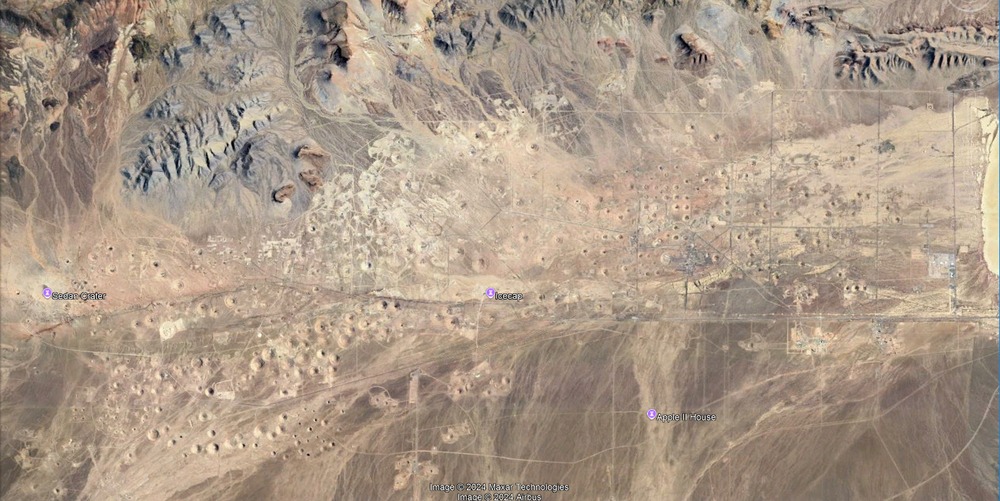
Spiny Norman said:
A ~23km long area in Nevada in the USA where atomic bombs were tested underground. North is to the left end of the image.
Quite a lot of them, it would seem.
Made a mess of the place.
The SpaceX Polarid Dawn crew are re-entering the atmosphere right now.
Here’s a livestream -
Hey, Bill,
Seen this video on the Blackburn Buccaneer?
https://www.youtube.com/watch?v=ejwbKmHlXRM
It’s rather comprehensive.
580 knots at 20 feet off the deck. Not for the faqint-hearted, them things.
captain_spalding said:
Hey, Bill,Seen this video on the Blackburn Buccaneer?
https://www.youtube.com/watch?v=ejwbKmHlXRM
It’s rather comprehensive.
580 knots at 20 feet off the deck. Not for the faqint-hearted, them things.
I haven’t watched that one yet, but I have a copy of it for later.
I’ve LOVE to try 580 kts at 20’ !!
(Keep the birds away please though)
Spiny Norman said:
captain_spalding said:
Hey, Bill,Seen this video on the Blackburn Buccaneer?
https://www.youtube.com/watch?v=ejwbKmHlXRM
It’s rather comprehensive.
580 knots at 20 feet off the deck. Not for the faqint-hearted, them things.
I haven’t watched that one yet, but I have a copy of it for later.
I’ve LOVE to try 580 kts at 20’ !!
(Keep the birds away please though)
I’ve been down to 50 feet at 400 kts. Then the bastard briefly inverted it at 100 feet.
The world goes by terribly quickly.
captain_spalding said:
Spiny Norman said:
captain_spalding said:
Hey, Bill,Seen this video on the Blackburn Buccaneer?
https://www.youtube.com/watch?v=ejwbKmHlXRM
It’s rather comprehensive.
580 knots at 20 feet off the deck. Not for the faqint-hearted, them things.
I haven’t watched that one yet, but I have a copy of it for later.
I’ve LOVE to try 580 kts at 20’ !!
(Keep the birds away please though)
I’ve been down to 50 feet at 400 kts. Then the bastard briefly inverted it at 100 feet.
The world goes by terribly quickly.
I can imagine!
Best I’ve managed is about 260 kts (redline in a Citation) just above the runway.
When i ‘remarked’ about it to him later, Rod said ‘i could have gone lower, y’know’.
I assured him that if he had, he would have done it alone. And without either a canopy, or a second seat in the plane.
captain_spalding said:
When i ‘remarked’ about it to him later, Rod said ‘i could have gone lower, y’know’.I assured him that if he had, he would have done it alone. And without either a canopy, or a second seat in the plane.
Not worth the crushed spine. :)
An Electromagnetic Vortex Cannon, Finally!
Researchers say they’ve found a way to create a freely propagating vortex ring, like a smoke ring, but with electromagnetic waves. Why does this even matter? What might this discovery be used for? Let’s take a look.
We Built a Venus Rover so NASA Didn’t Have To.
This is the story of my final year university project. My team built a clockwork rover to explore the surface of Venus, with help from NASA JPL’s Dr Jonathan Sauder – the original architect of the concept.
https://www.youtube.com/watch?v=diTrTZ02z7w
More interesting that I thought it’d be, as the rover has effectively no electronics in it. It uses a mechanical ‘computer’ to determine that an obstacle is too large and to go left or right around it. They simulate AND/OR/NOR etc gates with small mechanisms.

The fastest spinning celestial object in the universe is a Neutron star called PSR J1748-2446.
It rotates 716 times every second, so its equator moves at about 25% the speed of light.
It is also 50 trillion times the density of lead and has a magnetic field a trillion times stronger than the Sun’s.
Spiny Norman said:

The fastest spinning celestial object in the universe is a Neutron star called PSR J1748-2446.
It rotates 716 times every second, so its equator moves at about 25% the speed of light.
It is also 50 trillion times the density of lead and has a magnetic field a trillion times stronger than the Sun’s.
Wtf
dv said:
Spiny Norman said:

The fastest spinning celestial object in the universe is a Neutron star called PSR J1748-2446.
It rotates 716 times every second, so its equator moves at about 25% the speed of light.
It is also 50 trillion times the density of lead and has a magnetic field a trillion times stronger than the Sun’s.
Wtf
So how do they measure the density of something 18,000 light years away?
dv said:
Spiny Norman said:
The fastest spinning celestial object in the universe is a Neutron star called PSR J1748-2446.
It rotates 716 times every second, so its equator moves at about 25% the speed of light.
It is also 50 trillion times the density of lead and has a magnetic field a trillion times stronger than the Sun’s.
Wtf
exactly least they could do is give those quantities in si units
The Rev Dodgson said:
dv said:
Spiny Norman said:
The fastest spinning celestial object in the universe is a Neutron star called PSR J1748-2446.
It rotates 716 times every second, so its equator moves at about 25% the speed of light.
It is also 50 trillion times the density of lead and has a magnetic field a trillion times stronger than the Sun’s.
Wtf
So how do they measure the density of something 18,000 light years away?
same way you measure the density of something 0.000018 light years away, you don’t, you measure the mass and the volume and do the mathematic
SCIENCE said:
dv said:
Spiny Norman said:
The fastest spinning celestial object in the universe is a Neutron star called PSR J1748-2446.
It rotates 716 times every second, so its equator moves at about 25% the speed of light.
It is also 50 trillion times the density of lead and has a magnetic field a trillion times stronger than the Sun’s.
Wtf
exactly least they could do is give those quantities in si units
1.1340 × 10^16 kg/m^3
dv said:
Spiny Norman said:

The fastest spinning celestial object in the universe is a Neutron star called PSR J1748-2446.
It rotates 716 times every second, so its equator moves at about 25% the speed of light.
It is also 50 trillion times the density of lead and has a magnetic field a trillion times stronger than the Sun’s.
Wtf
Amazing.
SCIENCE said:
The Rev Dodgson said:
dv said:
Wtf
So how do they measure the density of something 18,000 light years away?
same way you measure the density of something 0.000018 light years away, you don’t, you measure the mass and the volume and do the mathematic
But how do you measure the volume of something 18,000 light years away?
SCIENCE said:
The Rev Dodgson said:
dv said:
Wtf
So how do they measure the density of something 18,000 light years away?
same way you measure the density of something 0.000018 light years away, you don’t, you measure the mass and the volume and do the mathematic
D = M/V
The Rev Dodgson said:
SCIENCE said:
The Rev Dodgson said:
So how do they measure the density of something 18,000 light years away?
same way you measure the density of something 0.000018 light years away, you don’t, you measure the mass and the volume and do the mathematic
But how do you measure the volume of something 18,000 light years away?
you measure its diameter and then multiply by its diameter and then multiply by its diameter and then divide by 1.9 easy
The Rev Dodgson said:
SCIENCE said:The Rev Dodgson said:
So how do they measure the density of something 18,000 light years away?
same way you measure the density of something 0.000018 light years away, you don’t, you measure the mass and the volume and do the mathematic
But how do you measure the volume of something 18,000 light years away?
If the neutron star is assumed to contain less than two times the mass of the Sun, within the typical range of neutron stars, its radius is constrained to be less than 16 km. At its equator it is spinning at approximately 24% of the speed of light, or over 70,000 km per second.
wiki.
The Rev Dodgson said:
SCIENCE said:The Rev Dodgson said:
So how do they measure the density of something 18,000 light years away?
same way you measure the density of something 0.000018 light years away, you don’t, you measure the mass and the volume and do the mathematic
But how do you measure the volume of something 18,000 light years away?
It’s inferred rather than measured.
First, the distance to the object is calculated using methods outlined in the cosmic distance ladder. Once the distance is known, the apparent brightness can help estimate the size of the object. Analyzing emitted electromagnetic radiation provides information about the object’s composition.
From the size and composition, astronomers can estimate mass and density, which can then be used to calculate volume. This combination of methods allows for a reasonable estimate of the volume of distant objects.
Something like that, any way.
JudgeMental said:
The Rev Dodgson said:
SCIENCE said:
same way you measure the density of something 0.000018 light years away, you don’t, you measure the mass and the volume and do the mathematic
But how do you measure the volume of something 18,000 light years away?
If the neutron star is assumed to contain less than two times the mass of the Sun, within the typical range of neutron stars, its radius is constrained to be less than 16 km. At its equator it is spinning at approximately 24% of the speed of light, or over 70,000 km per second.
wiki.
yeah we went to the theatre and they taught us about neutron stars, the ndp constrains the density and mass to specific relation
SCIENCE said:
The Rev Dodgson said:
SCIENCE said:
same way you measure the density of something 0.000018 light years away, you don’t, you measure the mass and the volume and do the mathematic
But how do you measure the volume of something 18,000 light years away?
you measure its diameter and then multiply by its diameter and then multiply by its diameter and then divide by 1.9 easy
Many thanks to you and Tamb for adding to my education, but how do you measure the diameter?
JudgeMental said:
The Rev Dodgson said:
SCIENCE said:same way you measure the density of something 0.000018 light years away, you don’t, you measure the mass and the volume and do the mathematic
But how do you measure the volume of something 18,000 light years away?
If the neutron star is assumed to contain less than two times the mass of the Sun, within the typical range of neutron stars, its radius is constrained to be less than 16 km. At its equator it is spinning at approximately 24% of the speed of light, or over 70,000 km per second.
wiki.
OK, so it’s based on an assumption.
SCIENCE said:
JudgeMental said:
The Rev Dodgson said:
But how do you measure the volume of something 18,000 light years away?
If the neutron star is assumed to contain less than two times the mass of the Sun, within the typical range of neutron stars, its radius is constrained to be less than 16 km. At its equator it is spinning at approximately 24% of the speed of light, or over 70,000 km per second.
wiki.
yeah we went to the theatre and they taught us about neutron stars, the ndp constrains the density and mass to specific relation
What is an ndp?
The Rev Dodgson said:
JudgeMental said:
The Rev Dodgson said:But how do you measure the volume of something 18,000 light years away?
If the neutron star is assumed to contain less than two times the mass of the Sun, within the typical range of neutron stars, its radius is constrained to be less than 16 km. At its equator it is spinning at approximately 24% of the speed of light, or over 70,000 km per second.
wiki.
OK, so it’s based on an assumption.
backed by maths I would think. but who knows. cosmologists probably just make stuff up to keep the funding coming in.
The Rev Dodgson said:
SCIENCE said:JudgeMental said:
If the neutron star is assumed to contain less than two times the mass of the Sun, within the typical range of neutron stars, its radius is constrained to be less than 16 km. At its equator it is spinning at approximately 24% of the speed of light, or over 70,000 km per second.
wiki.
yeah we went to the theatre and they taught us about neutron stars, the ndp constrains the density and mass to specific relation
What is an ndp?
neutron degeneracy pressure maybe.
JudgeMental said:
The Rev Dodgson said:
SCIENCE said:yeah we went to the theatre and they taught us about neutron stars, the ndp constrains the density and mass to specific relation
What is an ndp?
neutron degeneracy pressure maybe.
the “maybe” was an because my answer was an assumption. but seeing as we a talking about neutron stars it is a pretty good assumption.
JudgeMental said:
The Rev Dodgson said:
JudgeMental said:If the neutron star is assumed to contain less than two times the mass of the Sun, within the typical range of neutron stars, its radius is constrained to be less than 16 km. At its equator it is spinning at approximately 24% of the speed of light, or over 70,000 km per second.
wiki.
OK, so it’s based on an assumption.
backed by maths I would think. but who knows. cosmologists probably just make stuff up to keep the funding coming in.
I’m not suggesting they just make it up. I’m interested in how they estimate these things. So far it sounds like they are extrapolating far beyond anything there is any real observational evidence for.
The Rev Dodgson said:
JudgeMental said:
The Rev Dodgson said:OK, so it’s based on an assumption.
backed by maths I would think. but who knows. cosmologists probably just make stuff up to keep the funding coming in.
I’m not suggesting they just make it up. I’m interested in how they estimate these things. So far it sounds like they are extrapolating far beyond anything there is any real observational evidence for.
Anyway, I shall go away and read https://en.wikipedia.org/wiki/Degenerate_matter
We can take it for a fact that neutron stars are extremely dense objects.
Their masses and approximate volume can be measured by observing their roles in binary systems, for example.
Bubblecar said:
We can take it for a fact that neutron stars are extremely dense objects.Their masses and approximate volume can be measured by observing their roles in binary systems, for example.
and this is in a binary system.
Neutron degeneracy pressure is what keeps the neutron star from collapsing further, but can be overcome with sufficient mass so that the object becomes a black hole.
Bubblecar said:
We can take it for a fact that neutron stars are extremely dense objects.Their masses and approximate volume can be measured by observing their roles in binary systems, for example.
I’m happy to accept point one and estimates of mass (for now), but I don’t think that observations of binary systems provide any evidence for diameter estimates, do they?
The Rev Dodgson said:
SCIENCE said:The Rev Dodgson said:
So how do they measure the density of something 18,000 light years away?
same way you measure the density of something 0.000018 light years away, you don’t, you measure the mass and the volume and do the mathematic
But how do you measure the volume of something 18,000 light years away?
Fair to say they didn’t get out the calipers and triple beam so we may assume that they have used the data they have, and their knowledge of similar objects from physical theory and observations of other objects in that class, and made an estimate.
NASA’s Neutron star Interior Composition Explorer (NICER), on the ISS, is taking some precise measurements.
>….Since no laboratory experiment can reproduce neutron star conditions, the only option for studying this exceptional state of matter is to observe neutron stars themselves—inferring what’s going on inside the star from basic properties such as mass and size. Such measurements, however, are no easy feat. Up until today, about two thousand neutron stars have been discovered, but only a handful of them have been sized up, typically by monitoring the x-ray emission of gas surrounding the star.
NICER has developed a unique sizing method applicable to rapidly rotating neutron stars known as pulsars. As pulsars rotate, hot spots on their surface emit x rays that scan the cosmos like lighthouse beams. The experiment monitors the pulsar’s oscillatory x-ray brightness, “time stamping” the arrival of each x-ray photon with a precision of about 100 ns. The path that these photons take is distorted by the gravitational warping of spacetime around the star, allowing some hot spots to remain visible even as they rotate to the far side of the star.
From the x-ray time-stamped data, the researchers reconstruct the gravitational potential and, in turn, infer the star size. “The combination of x-ray spectroscopy capabilities with timing is a unique feature of NICER,” which allows researchers to fully exploit information on the star’s spin to constrain its properties, says NICER science lead Zaven Arzoumanian of NASA’s Goddard Space Flight Center in Maryland.
The NICER Collaboration first used this method in 2019 to measure PSR J0030, a pulsar 1000 light years from Earth. Weighing 1.4 solar masses, J0030 was found to have a diameter of about 26 km. In the new measurement, the collaboration turned to the most massive known neutron star, PSR J0740, in the “giraffe” constellation. Nearly 4 times more distant than J0030, J0740 is 20 times fainter and was thus a “stretch goal for the experiment,” says Arzoumanian. But its mass (2.1 solar masses) makes this pulsar “so exceptional” that the team decided to devote a significant amount of time to measuring it, he says.
The Rev Dodgson said:
SCIENCE said:
The Rev Dodgson said:
But how do you measure the volume of something 18,000 light years away?
you measure its diameter and then multiply by its diameter and then multiply by its diameter and then divide by 1.9 easy
Many thanks to you and Tamb for adding to my education, but how do you measure the diameter?

The Rev Dodgson said:
JudgeMental said:
The Rev Dodgson said:
OK, so it’s based on an assumption.
backed by maths I would think. but who knows. cosmologists probably just make stuff up to keep the funding coming in.
I’m not suggesting they just make it up. I’m interested in how they estimate these things. So far it sounds like they are extrapolating far beyond anything there is any real observational evidence for.
so cosmology is just a secular opium of the people
dv said:
The Rev Dodgson said:
SCIENCE said:same way you measure the density of something 0.000018 light years away, you don’t, you measure the mass and the volume and do the mathematic
But how do you measure the volume of something 18,000 light years away?
Fair to say they didn’t get out the calipers and triple beam so we may assume that they have used the data they have, and their knowledge of similar objects from physical theory and observations of other objects in that class, and made an estimate.
Also fair to say that, since there is no accepted theory combining gravity and quantum effects, these estimates may be way out?
What about the speed of rotation?
Is there a reliable way to measure that?
The Rev Dodgson said:
dv said:
The Rev Dodgson said:But how do you measure the volume of something 18,000 light years away?
Fair to say they didn’t get out the calipers and triple beam so we may assume that they have used the data they have, and their knowledge of similar objects from physical theory and observations of other objects in that class, and made an estimate.
Also fair to say that, since there is no accepted theory combining gravity and quantum effects, these estimates may be way out?
What about the speed of rotation?
Is there a reliable way to measure that?
You can look at this smeor of frequencies To estimate Doppler shift, en hence surface velocity and using frequency can therefore estimate diameter.
dv said:
The Rev Dodgson said:
dv said:Fair to say they didn’t get out the calipers and triple beam so we may assume that they have used the data they have, and their knowledge of similar objects from physical theory and observations of other objects in that class, and made an estimate.
Also fair to say that, since there is no accepted theory combining gravity and quantum effects, these estimates may be way out?
What about the speed of rotation?
Is there a reliable way to measure that?
You can look at this smeor of frequencies To estimate Doppler shift, en hence surface velocity and using frequency can therefore estimate diameter.
Don’t they often have a margin of error plus or minus to show its an estimate
Cymek said:
dv said:
The Rev Dodgson said:Also fair to say that, since there is no accepted theory combining gravity and quantum effects, these estimates may be way out?
What about the speed of rotation?
Is there a reliable way to measure that?
You can look at this smeor of frequencies To estimate Doppler shift, en hence surface velocity and using frequency can therefore estimate diameter.
Don’t they often have a margin of error plus or minus to show its an estimate
Yes. And I’m sure that appears in the journal article, but not necessarily in a Popular Science piece.

In 2010, the United States Air Force created the world’s 33rd-fastest computer inside its own Air Force Research Laboratory, using 1,760 Sony PlayStation 3 consoles.
They called it the “Condor Cluster,” and it was the Department of Defense’s fastest computer.
The USAF put the computer in Rome, New York, near Syracuse, and intended to use the computer for radar enhancement, pattern recognition, satellite imagery processing and artificial intelligence research for current and future Air Force projects and operations.
Because a PlayStation cost $300 at the time, together, the PlayStations formed the core of the computer for a cost of roughly $1 million, 10% of the price of a conventional supercomputer.
The result was a 500 TeraFLOPS Heterogeneous Cluster powered by PS3s but connected to subcluster heads of dual-quad Xeons with multiple GPGPUs (general-purpose graphics processing units). The video-game consoles consumed 90% less energy than any alternative.
And it’s apparently legit.
https://phys.org/news/2010-12-air-playstation-3s-supercomputer.html
Wreckage Of Titan Submersible Reveal How It Imploded.
The US Coast Guard has just begun its public inquiry into the Titan Submersible accident, and in the process has released a number of documents, including, critically footage from a remotely operated vehicle showing the wreckages on the ocean floor.
I believe this wreckage confirms that the failure began at the interface between the carbon fiber pressure hull and the forward titanium interface ring. A great deal of composite debris has been pushed backwards into the rear hemisphere, while almost none is visible near the forward sphere.
https://www.youtube.com/watch?v=CxBtZmyPzVA
Cheesus, just a recipe for disaster.
Phoebus-2A: LASL’s 4000 Megawatt Nuclear Rocket Engine.
The Phoebus-2A was the most powerful nuclear reactor of any type ever created. Unlike most reactors, which generate electricity, the Phoebus-2A produced thrust to take astronauts to Mars. And it worked! Unfortunately, LASL’s Rover Program was never given permission to flight test this remarkable rocket engine. The program collapsed – along with America’s ambition to visit Mars – in the early 1970s. Could we see nuclear rockets again in the future?
We’ve found a new planet, home to octillions of the most extreme beings living in the most absurd and deadly hellscape. In absolute darkness, crushed by the weight of mountains, starved of oxygen, cooked alive, bathed in acid, salt or radiation. And yet, they live for thousands, perhaps millions of years! It turns out, this planet is not in space – it is inside the crust of Earth!
This is the deep biosphere and we basically learned that it exists yesterday. Its volume is at least twice as large as all the Earth’s oceans, home to more microbes than the rest of the entire planet.Their total biomass is more than 20 times greater than all humans, livestock, and animal wildlife.
Let’s descend into this mad, deadly world where none of the rules we thought are mandatory for life apply.
Where Is Everything In The Universe Going?
History of the Universe.
New conveyor belt-like catalyst uses electricity to turn CO2 into methane, plastic.
A collaboration between researchers at the University of Bonn in Germany and the University of Montreal in Canada has led to the development of a novel catalyst material that can help synthesize methane directly from carbon dioxide (CO2) using electricity.
Even as countries look to reduce their carbon emissions in the future, climate change induced by carbon dioxide gas in the atmosphere remains a problem that must be tackled.
Since CO2 can be trapped from the atmosphere and is a relatively simple molecule to work with, researchers have also developed ways to convert it into useful products such as fuel or feedstock for other applications. Methane is one such feedstock molecule that can be produced from CO2.
Methanation of CO2
Both CO2 and methane (CH4) contain a central carbon atom, and converting the CO2 into the latter requires removing the oxygen atoms and replacing them with hydrogen atoms.
The process has been achieved before using temperatures as high as 600 Fahrenheit (320 degrees Celsius). However, this requires using fossil fuels, which release CO2 into the atmosphere, defeating the purpose of the exercise.
A research team led by Nikolay Kornienko, a professor at the University of Bonn, turned to electricity to power a reaction between CO2 and water that can produce methane.
“By using climate-friendly electricity, we can produce methane that doesn’t contribute to global warming,” said Kornienko in a statement.
https://interestingengineering.com/innovation/catalyst-converts-co2-methane-plastics
Spiny Norman said:
New conveyor belt-like catalyst uses electricity to turn CO2 into methane, plastic.A collaboration between researchers at the University of Bonn in Germany and the University of Montreal in Canada has led to the development of a novel catalyst material that can help synthesize methane directly from carbon dioxide (CO2) using electricity.
Even as countries look to reduce their carbon emissions in the future, climate change induced by carbon dioxide gas in the atmosphere remains a problem that must be tackled.
Since CO2 can be trapped from the atmosphere and is a relatively simple molecule to work with, researchers have also developed ways to convert it into useful products such as fuel or feedstock for other applications. Methane is one such feedstock molecule that can be produced from CO2.
Methanation of CO2
Both CO2 and methane (CH4) contain a central carbon atom, and converting the CO2 into the latter requires removing the oxygen atoms and replacing them with hydrogen atoms.The process has been achieved before using temperatures as high as 600 Fahrenheit (320 degrees Celsius). However, this requires using fossil fuels, which release CO2 into the atmosphere, defeating the purpose of the exercise.
A research team led by Nikolay Kornienko, a professor at the University of Bonn, turned to electricity to power a reaction between CO2 and water that can produce methane.
“By using climate-friendly electricity, we can produce methane that doesn’t contribute to global warming,” said Kornienko in a statement.
https://interestingengineering.com/innovation/catalyst-converts-co2-methane-plastics
For several years now, as I listen to how people plan to capture CO2 (from cement, steel production, etc) and then … mumble, mumble mumble:
why not convert it into methane?
The Rev Dodgson said:
Spiny Norman said:
New conveyor belt-like catalyst uses electricity to turn CO2 into methane, plastic.A collaboration between researchers at the University of Bonn in Germany and the University of Montreal in Canada has led to the development of a novel catalyst material that can help synthesize methane directly from carbon dioxide (CO2) using electricity.
Even as countries look to reduce their carbon emissions in the future, climate change induced by carbon dioxide gas in the atmosphere remains a problem that must be tackled.
Since CO2 can be trapped from the atmosphere and is a relatively simple molecule to work with, researchers have also developed ways to convert it into useful products such as fuel or feedstock for other applications. Methane is one such feedstock molecule that can be produced from CO2.
Methanation of CO2
Both CO2 and methane (CH4) contain a central carbon atom, and converting the CO2 into the latter requires removing the oxygen atoms and replacing them with hydrogen atoms.The process has been achieved before using temperatures as high as 600 Fahrenheit (320 degrees Celsius). However, this requires using fossil fuels, which release CO2 into the atmosphere, defeating the purpose of the exercise.
A research team led by Nikolay Kornienko, a professor at the University of Bonn, turned to electricity to power a reaction between CO2 and water that can produce methane.
“By using climate-friendly electricity, we can produce methane that doesn’t contribute to global warming,” said Kornienko in a statement.
https://interestingengineering.com/innovation/catalyst-converts-co2-methane-plastics
For several years now, as I listen to how people plan to capture CO2 (from cement, steel production, etc) and then … mumble, mumble mumble:
why not convert it into methane?
What are you going to do with the methane?
If you burn it, it goes back to being CO2. If that original source came from burning coal or calcining limestone, then you aren’t really doing much to reduce emissions. Unless you constantly capture the CO2 and turn it back into methane.
If you just release it, well, methane is a more potent GHG than CO2, so just leaving it as CO2 will do less harm.
The Rev Dodgson said:
Spiny Norman said:
New conveyor belt-like catalyst uses electricity to turn CO2 into methane, plastic.A collaboration between researchers at the University of Bonn in Germany and the University of Montreal in Canada has led to the development of a novel catalyst material that can help synthesize methane directly from carbon dioxide (CO2) using electricity.
Even as countries look to reduce their carbon emissions in the future, climate change induced by carbon dioxide gas in the atmosphere remains a problem that must be tackled.
Since CO2 can be trapped from the atmosphere and is a relatively simple molecule to work with, researchers have also developed ways to convert it into useful products such as fuel or feedstock for other applications. Methane is one such feedstock molecule that can be produced from CO2.
Methanation of CO2
Both CO2 and methane (CH4) contain a central carbon atom, and converting the CO2 into the latter requires removing the oxygen atoms and replacing them with hydrogen atoms.The process has been achieved before using temperatures as high as 600 Fahrenheit (320 degrees Celsius). However, this requires using fossil fuels, which release CO2 into the atmosphere, defeating the purpose of the exercise.
A research team led by Nikolay Kornienko, a professor at the University of Bonn, turned to electricity to power a reaction between CO2 and water that can produce methane.
“By using climate-friendly electricity, we can produce methane that doesn’t contribute to global warming,” said Kornienko in a statement.
https://interestingengineering.com/innovation/catalyst-converts-co2-methane-plastics
For several years now, as I listen to how people plan to capture CO2 (from cement, steel production, etc) and then … mumble, mumble mumble:
why not convert it into methane?
I see no reason why not. I expect that the conversion would take more energy than it produces when burning the methane. But it could be considered a battery (energy storage), if made when there is excess green energy.
Spiny Norman said:
New conveyor belt-like catalyst uses electricity to turn CO2 into methane, plastic.A collaboration between researchers at the University of Bonn in Germany and the University of Montreal in Canada has led to the development of a novel catalyst material that can help synthesize methane directly from carbon dioxide (CO2) using electricity.
Even as countries look to reduce their carbon emissions in the future, climate change induced by carbon dioxide gas in the atmosphere remains a problem that must be tackled.
Since CO2 can be trapped from the atmosphere and is a relatively simple molecule to work with, researchers have also developed ways to convert it into useful products such as fuel or feedstock for other applications. Methane is one such feedstock molecule that can be produced from CO2.
Methanation of CO2
Both CO2 and methane (CH4) contain a central carbon atom, and converting the CO2 into the latter requires removing the oxygen atoms and replacing them with hydrogen atoms.The process has been achieved before using temperatures as high as 600 Fahrenheit (320 degrees Celsius). However, this requires using fossil fuels, which release CO2 into the atmosphere, defeating the purpose of the exercise.
A research team led by Nikolay Kornienko, a professor at the University of Bonn, turned to electricity to power a reaction between CO2 and water that can produce methane.
“By using climate-friendly electricity, we can produce methane that doesn’t contribute to global warming,” said Kornienko in a statement.
https://interestingengineering.com/innovation/catalyst-converts-co2-methane-plastics
The human race just loves settin’ fire to stuff, don’t they. Just can’t help themselves, hey what but.
party_pants said:
The Rev Dodgson said:
Spiny Norman said:
New conveyor belt-like catalyst uses electricity to turn CO2 into methane, plastic.A collaboration between researchers at the University of Bonn in Germany and the University of Montreal in Canada has led to the development of a novel catalyst material that can help synthesize methane directly from carbon dioxide (CO2) using electricity.
Even as countries look to reduce their carbon emissions in the future, climate change induced by carbon dioxide gas in the atmosphere remains a problem that must be tackled.
Since CO2 can be trapped from the atmosphere and is a relatively simple molecule to work with, researchers have also developed ways to convert it into useful products such as fuel or feedstock for other applications. Methane is one such feedstock molecule that can be produced from CO2.
Methanation of CO2
Both CO2 and methane (CH4) contain a central carbon atom, and converting the CO2 into the latter requires removing the oxygen atoms and replacing them with hydrogen atoms.The process has been achieved before using temperatures as high as 600 Fahrenheit (320 degrees Celsius). However, this requires using fossil fuels, which release CO2 into the atmosphere, defeating the purpose of the exercise.
A research team led by Nikolay Kornienko, a professor at the University of Bonn, turned to electricity to power a reaction between CO2 and water that can produce methane.
“By using climate-friendly electricity, we can produce methane that doesn’t contribute to global warming,” said Kornienko in a statement.
https://interestingengineering.com/innovation/catalyst-converts-co2-methane-plastics
For several years now, as I listen to how people plan to capture CO2 (from cement, steel production, etc) and then … mumble, mumble mumble:
why not convert it into methane?
What are you going to do with the methane?
If you burn it, it goes back to being CO2. If that original source came from burning coal or calcining limestone, then you aren’t really doing much to reduce emissions. Unless you constantly capture the CO2 and turn it back into methane.
If you just release it, well, methane is a more potent GHG than CO2, so just leaving it as CO2 will do less harm.
Methane could be used to power gas turbines when there is insufficient green energy to power the grid. It can also be used as a fuel for heavy transport. Methane can also be used as the feedstock for agricultural chemicals and plastics.
Michael V said:
party_pants said:
The Rev Dodgson said:For several years now, as I listen to how people plan to capture CO2 (from cement, steel production, etc) and then … mumble, mumble mumble:
why not convert it into methane?
What are you going to do with the methane?
If you burn it, it goes back to being CO2. If that original source came from burning coal or calcining limestone, then you aren’t really doing much to reduce emissions. Unless you constantly capture the CO2 and turn it back into methane.
If you just release it, well, methane is a more potent GHG than CO2, so just leaving it as CO2 will do less harm.
Methane could be used to power gas turbines when there is insufficient green energy to power the grid. It can also be used as a fuel for heavy transport. Methane can also be used as the feedstock for agricultural chemicals and plastics.
Sounds fair.
party_pants said:
The Rev Dodgson said:
Spiny Norman said:
New conveyor belt-like catalyst uses electricity to turn CO2 into methane, plastic.A collaboration between researchers at the University of Bonn in Germany and the University of Montreal in Canada has led to the development of a novel catalyst material that can help synthesize methane directly from carbon dioxide (CO2) using electricity.
Even as countries look to reduce their carbon emissions in the future, climate change induced by carbon dioxide gas in the atmosphere remains a problem that must be tackled.
Since CO2 can be trapped from the atmosphere and is a relatively simple molecule to work with, researchers have also developed ways to convert it into useful products such as fuel or feedstock for other applications. Methane is one such feedstock molecule that can be produced from CO2.
Methanation of CO2
Both CO2 and methane (CH4) contain a central carbon atom, and converting the CO2 into the latter requires removing the oxygen atoms and replacing them with hydrogen atoms.The process has been achieved before using temperatures as high as 600 Fahrenheit (320 degrees Celsius). However, this requires using fossil fuels, which release CO2 into the atmosphere, defeating the purpose of the exercise.
A research team led by Nikolay Kornienko, a professor at the University of Bonn, turned to electricity to power a reaction between CO2 and water that can produce methane.
“By using climate-friendly electricity, we can produce methane that doesn’t contribute to global warming,” said Kornienko in a statement.
https://interestingengineering.com/innovation/catalyst-converts-co2-methane-plastics
For several years now, as I listen to how people plan to capture CO2 (from cement, steel production, etc) and then … mumble, mumble mumble:
why not convert it into methane?
What are you going to do with the methane?
If you burn it, it goes back to being CO2. If that original source came from burning coal or calcining limestone, then you aren’t really doing much to reduce emissions. Unless you constantly capture the CO2 and turn it back into methane.
If you just release it, well, methane is a more potent GHG than CO2, so just leaving it as CO2 will do less harm.
You use it as a fuel for those things where electricity is not a practical alternative.
The Rev Dodgson said:
Spiny Norman said:
New conveyor belt-like catalyst uses electricity to turn CO2 into methane, plastic.
A collaboration between researchers at the University of Bonn in Germany and the University of Montreal in Canada has led to the development of a novel catalyst material that can help synthesize methane directly from carbon dioxide (CO2) using electricity.
Even as countries look to reduce their carbon emissions in the future, climate change induced by carbon dioxide gas in the atmosphere remains a problem that must be tackled.
Since CO2 can be trapped from the atmosphere and is a relatively simple molecule to work with, researchers have also developed ways to convert it into useful products such as fuel or feedstock for other applications. Methane is one such feedstock molecule that can be produced from CO2.
Methanation of CO2
Both CO2 and methane (CH4) contain a central carbon atom, and converting the CO2 into the latter requires removing the oxygen atoms and replacing them with hydrogen atoms.The process has been achieved before using temperatures as high as 600 Fahrenheit (320 degrees Celsius). However, this requires using fossil fuels, which release CO2 into the atmosphere, defeating the purpose of the exercise.
A research team led by Nikolay Kornienko, a professor at the University of Bonn, turned to electricity to power a reaction between CO2 and water that can produce methane.
“By using climate-friendly electricity, we can produce methane that doesn’t contribute to global warming,” said Kornienko in a statement.
https://interestingengineering.com/innovation/catalyst-converts-co2-methane-plastics
For several years now, as I listen to how people plan to capture CO2 (from cement, steel production, etc) and then … mumble, mumble mumble:
why not convert it into methane?
pretty sure geniuses on forums such as these have been advocating for renewable hydrocarbon neosynthesis plenty but yeah
The Rev Dodgson said:
Spiny Norman said:
New conveyor belt-like catalyst uses electricity to turn CO2 into methane, plastic.A collaboration between researchers at the University of Bonn in Germany and the University of Montreal in Canada has led to the development of a novel catalyst material that can help synthesize methane directly from carbon dioxide (CO2) using electricity.
Even as countries look to reduce their carbon emissions in the future, climate change induced by carbon dioxide gas in the atmosphere remains a problem that must be tackled.
Since CO2 can be trapped from the atmosphere and is a relatively simple molecule to work with, researchers have also developed ways to convert it into useful products such as fuel or feedstock for other applications. Methane is one such feedstock molecule that can be produced from CO2.
Methanation of CO2
Both CO2 and methane (CH4) contain a central carbon atom, and converting the CO2 into the latter requires removing the oxygen atoms and replacing them with hydrogen atoms.The process has been achieved before using temperatures as high as 600 Fahrenheit (320 degrees Celsius). However, this requires using fossil fuels, which release CO2 into the atmosphere, defeating the purpose of the exercise.
A research team led by Nikolay Kornienko, a professor at the University of Bonn, turned to electricity to power a reaction between CO2 and water that can produce methane.
“By using climate-friendly electricity, we can produce methane that doesn’t contribute to global warming,” said Kornienko in a statement.
https://interestingengineering.com/innovation/catalyst-converts-co2-methane-plastics
For several years now, as I listen to how people plan to capture CO2 (from cement, steel production, etc) and then … mumble, mumble mumble:
why not convert it into methane?
as long as we use the methane , yeah.
The future of Nuclear = Small, Mobile, Microreactors | Radiant
https://www.youtube.com/watch?v=LTgS7tOOzsE
They are small, only a megawatt each. Quite interesting technology though.
Spiny Norman said:
The future of Nuclear = Small, Mobile, Microreactors | Radianthttps://www.youtube.com/watch?v=LTgS7tOOzsE
They are small, only a megawatt each. Quite interesting technology though.
1MW is actually a nice size for its intended use. That would be a good size to have one per suburb/hospital to supply baseload.
Dark Orange said:
Spiny Norman said:
The future of Nuclear = Small, Mobile, Microreactors | Radianthttps://www.youtube.com/watch?v=LTgS7tOOzsE
They are small, only a megawatt each. Quite interesting technology though.
1MW is actually a nice size for its intended use. That would be a good size to have one per suburb/hospital to supply baseload.
Baseload is obsolete thinking. It is a bug not a feature, of steam turbine generators.
Dark Orange said:
Spiny Norman said:
The future of Nuclear = Small, Mobile, Microreactors | Radianthttps://www.youtube.com/watch?v=LTgS7tOOzsE
They are small, only a megawatt each. Quite interesting technology though.
1MW is actually a nice size for its intended use. That would be a good size to have one per suburb/hospital to supply baseload.
I’m not convinced that having 1000’s of small nuclear reactors scattered all over the World is actually a good idea.
party_pants said:
Dark Orange said:
Spiny Norman said:
The future of Nuclear = Small, Mobile, Microreactors | Radianthttps://www.youtube.com/watch?v=LTgS7tOOzsE
They are small, only a megawatt each. Quite interesting technology though.
1MW is actually a nice size for its intended use. That would be a good size to have one per suburb/hospital to supply baseload.
Baseload is obsolete thinking. It is a bug not a feature, of steam turbine generators.
I agree.
And I don’t recall seeing it put so succinctly before.
The Rev Dodgson said:
Dark Orange said:
Spiny Norman said:
The future of Nuclear = Small, Mobile, Microreactors | Radianthttps://www.youtube.com/watch?v=LTgS7tOOzsE
They are small, only a megawatt each. Quite interesting technology though.
1MW is actually a nice size for its intended use. That would be a good size to have one per suburb/hospital to supply baseload.
I’m not convinced that having 1000’s of small nuclear reactors scattered all over the World is actually a good idea.
Seems that it would be increasing the risk factor?
party_pants said:
Dark Orange said:
Spiny Norman said:
The future of Nuclear = Small, Mobile, Microreactors | Radianthttps://www.youtube.com/watch?v=LTgS7tOOzsE
They are small, only a megawatt each. Quite interesting technology though.
1MW is actually a nice size for its intended use. That would be a good size to have one per suburb/hospital to supply baseload.
Baseload is obsolete thinking. It is a bug not a feature, of steam turbine generators.
A lot of people say that and I think the issue is etymological in nature. I have have spent my entire life in an industry that defines “Base Load” as the minimal load on a system where people aren’t actively using that system. Other people define it differently, but at the end of the day you still end up with energy being used when people aren’t at home using it.
The Rev Dodgson said:
Dark Orange said:
Spiny Norman said:
The future of Nuclear = Small, Mobile, Microreactors | Radianthttps://www.youtube.com/watch?v=LTgS7tOOzsE
They are small, only a megawatt each. Quite interesting technology though.
1MW is actually a nice size for its intended use. That would be a good size to have one per suburb/hospital to supply baseload.
I’m not convinced that having 1000’s of small nuclear reactors scattered all over the World is actually a good idea.
I can’t disagree. Technically, it is a good solution. Geopolitically, it isn’t.
Dark Orange said:
party_pants said:
Dark Orange said:1MW is actually a nice size for its intended use. That would be a good size to have one per suburb/hospital to supply baseload.
Baseload is obsolete thinking. It is a bug not a feature, of steam turbine generators.
A lot of people say that and I think the issue is etymological in nature. I have have spent my entire life in an industry that defines “Base Load” as the minimal load on a system where people aren’t actively using that system. Other people define it differently, but at the end of the day you still end up with energy being used when people aren’t at home using it.
Closely linked with spinning reserve.
Dark Orange said:
party_pants said:
Dark Orange said:1MW is actually a nice size for its intended use. That would be a good size to have one per suburb/hospital to supply baseload.
Baseload is obsolete thinking. It is a bug not a feature, of steam turbine generators.
A lot of people say that and I think the issue is etymological in nature. I have have spent my entire life in an industry that defines “Base Load” as the minimal load on a system where people aren’t actively using that system. Other people define it differently, but at the end of the day you still end up with energy being used when people aren’t at home using it.
I think the future is intermittent sources with large scale storage. Base load generation to be less and less important. Sure, there are going to be some issues with frequency stabilisation across the grid, but these can be solved in various ways.
what non industrial uses rely on specific frequency at high potential
party_pants said:
Dark Orange said:
party_pants said:Baseload is obsolete thinking. It is a bug not a feature, of steam turbine generators.
A lot of people say that and I think the issue is etymological in nature. I have have spent my entire life in an industry that defines “Base Load” as the minimal load on a system where people aren’t actively using that system. Other people define it differently, but at the end of the day you still end up with energy being used when people aren’t at home using it.
I think the future is intermittent sources with large scale storage. Base load generation to be less and less important. Sure, there are going to be some issues with frequency stabilisation across the grid, but these can be solved in various ways.
I’m more in favour of decentralised small-scale storage. You, as a consumer, have your own storage that you use to buy low and sell high.
This not only addresses supplying the growing need for energy, but directly reduces the growing need for energy by incentivising individuals to reduce their usage to allow them to sell more.
It also reduces the need to increase the network capacity by having the supply systems literally next door to the consumers.
sounds like everyone agrees that renewable microgrids with the options of import export and hydrocarbon neosynthesis will be the solutions of the future oh damn wait was that already
SCIENCE said:
what non industrial uses rely on specific frequency at high potential
As in 50hz @ 230VAC?
Anything with motors and most things with large coils of wire.
Dark Orange said:
SCIENCE said:what non industrial uses rely on specific frequency at high potential
As in 50hz @ 230VAC?
Anything with motors and most things with large coils of wire.
clothes washer then, what else did we forget
SCIENCE said:
Dark Orange said:
SCIENCE said:what non industrial uses rely on specific frequency at high potential
As in 50hz @ 230VAC?
Anything with motors and most things with large coils of wire.
clothes washer then, what else did we forget
Fridges. Exhaust fans, pool pumps, air conditioners, ceiling fans…
Dark Orange said:
SCIENCE said:
Dark Orange said:As in 50hz @ 230VAC?
Anything with motors and most things with large coils of wire.
clothes washer then, what else did we forget
Fridges. Exhaust fans, pool pumps, air conditioners, ceiling fans…
Blenders, juicers, food processors, oven fans, stove hoods…
Breakthrough sun-powered tech pulls lithium from seawater, redefining energy
A membrane-free electrochemical cell separates lithium ions between brine and fresh water using iron-phosphate electrodes.
Researchers have developed a sustainable method to efficiently extract lithium from seawater, addressing the growing demand for renewable energy.
The Solar Transpiration-Powered Lithium Extraction and Storage (STLES) device harnesses sunlight to extract and store lithium from brine.
The method uses iron phosphate electrodes, which have the ability to selectively capture lithium ions from salt water. Once absorbed, the electrodes release the lithium into fresh water, making the extraction process both efficient and environmentally friendly.
https://interestingengineering.com/innovation/sun-powered-tech-pulls-lithium-from-seawater
Dark Orange said:
SCIENCE said:
Dark Orange said:
As in 50hz @ 230VAC?
Anything with motors and most things with large coils of wire.
clothes washer then, what else did we forget
Fridges. Exhaust fans, pool pumps, air conditioners, ceiling fans…
refrigerator maybe, other fans seem like 12 V should cover it, vacuum cleaner we suppose
Michael V said:
Dark Orange said:
SCIENCE said:
clothes washer then, what else did we forget
Fridges. Exhaust fans, pool pumps, air conditioners, ceiling fans…
Blenders, juicers, food processors, oven fans, stove hoods…
oven heating perhaps but reckon the rest could be powered equal to a USB level
SCIENCE said:
Dark Orange said:
SCIENCE said:
clothes washer then, what else did we forget
Fridges. Exhaust fans, pool pumps, air conditioners, ceiling fans…
refrigerator maybe, other fans seem like 12 V should cover it, vacuum cleaner we suppose
Most things could be replaced with more adaptable hardware, but I was talking about stuff in your house right now.
If you were, for instance, building a new house with 24v supply in mind, you could probably buy just about everything off the shelf right now. (Thanks to the prevalence of camper vans and inverters and gas heating)
Debunking the Nuclear-Powered Manhole Cover
In 1957, a high-speed camera caught a cast iron cap moving at 66 kilometres per second. It was being accelerated by a nuclear explosion beneath it. Did the Pascal-B nuclear weapons test actually make a manhole cover the first man-made object in space? Noted Nuclear Zaddy Kyle Hill finally does the math to determine what happened to this infamous object. We can stop making videos about this now. Thanks.
What if Earth grew 1cm every second?
How long would it take for people to notice their weight gain if the mean radius of the world increased by 1 cm every second? (Assuming the average composition of rock were maintained)
Spiny Norman said:
Debunking the Nuclear-Powered Manhole CoverIn 1957, a high-speed camera caught a cast iron cap moving at 66 kilometres per second. It was being accelerated by a nuclear explosion beneath it. Did the Pascal-B nuclear weapons test actually make a manhole cover the first man-made object in space? Noted Nuclear Zaddy Kyle Hill finally does the math to determine what happened to this infamous object. We can stop making videos about this now. Thanks.
https://nuclearweaponarchive.org/Usa/Tests/Brownlee.html
For Pascal B, my calculations were designed to calculate the time and specifics of the shock wave as it reached the cap. I used yields both expected and exaggerated in my calculations, but significant ones. When I described my results to Bill Ogle, the conversation went something like this.
Ogle: “What time does the shock arrive at the top of the pipe?”
RRB: “Thirty one milliseconds.”
Ogle: “And what happens?”
RRB: “The shock reflects back down the hole, but the pressures and temperatures are such that the welded cap is bound to come off the hole.”
Ogle: “How fast does it go?”
RRB: “My calculations are irrelevant on this point. They are only valid in speaking of the shock reflection.”
Ogle: “How fast did it go?”
RRB: “Those numbers are meaningless. I have only a vacuum above the cap. No air, no gravity, no real material strengths in the iron cap. Effectively the cap is just loose, traveling through meaningless space.”
Ogle: And how fast is it going?”
This last question was more of a shout. Bill liked to have a direct answer to each one of his questions.
RRB: “Six times the escape velocity from the earth.”
Bill was quite delighted with the answer, for he had never before heard a velocity given in terms of the escape velocity from the earth! There was much laughter, and the legend was now born, for Bill loved to report to anybody who cared to listen about Brownlee’s units of velocity. He says the cap would escape the earth. (But of course we did not believe that would ever happen.)
Spiny Norman said:
Debunking the Nuclear-Powered Manhole CoverIn 1957, a high-speed camera caught a cast iron cap moving at 66 kilometres per second. It was being accelerated by a nuclear explosion beneath it. Did the Pascal-B nuclear weapons test actually make a manhole cover the first man-made object in space? Noted Nuclear Zaddy Kyle Hill finally does the math to determine what happened to this infamous object. We can stop making videos about this now. Thanks.
So did it?
YouTubes here are slow and jerky.
Oh, and what’s a Zaddy?
Michael V said:
Spiny Norman said:
Debunking the Nuclear-Powered Manhole CoverIn 1957, a high-speed camera caught a cast iron cap moving at 66 kilometres per second. It was being accelerated by a nuclear explosion beneath it. Did the Pascal-B nuclear weapons test actually make a manhole cover the first man-made object in space? Noted Nuclear Zaddy Kyle Hill finally does the math to determine what happened to this infamous object. We can stop making videos about this now. Thanks.
So did it?
YouTubes here are slow and jerky.
Oh, and what’s a Zaddy?
A zaddy is a man “with swag” who is attractive and also fashionable. It appears that it has less to do with age.
JudgeMental said:
Michael V said:
Spiny Norman said:
Debunking the Nuclear-Powered Manhole CoverIn 1957, a high-speed camera caught a cast iron cap moving at 66 kilometres per second. It was being accelerated by a nuclear explosion beneath it. Did the Pascal-B nuclear weapons test actually make a manhole cover the first man-made object in space? Noted Nuclear Zaddy Kyle Hill finally does the math to determine what happened to this infamous object. We can stop making videos about this now. Thanks.
So did it?
YouTubes here are slow and jerky.
Oh, and what’s a Zaddy?
A zaddy is a man “with swag” who is attractive and also fashionable. It appears that it has less to do with age.
I used to have a swag, for sleeping on the ground in the bush.
Michael V said:
JudgeMental said:
Michael V said:So did it?
YouTubes here are slow and jerky.
Oh, and what’s a Zaddy?
A zaddy is a man “with swag” who is attractive and also fashionable. It appears that it has less to do with age.
I used to have a swag, for sleeping on the ground in the bush.
Looxury…
I believe we came to this conclusion some years ago when Dr Karl uncritically repeated the myth, but it is nice to see it covered so analytically.
On the other hand, at around 9:58 he says “no, it was not the fastest manmade object at the time”, and I don’t see how he draws that conclusion.
Witty Rejoinder said:
Michael V said:
JudgeMental said:A zaddy is a man “with swag” who is attractive and also fashionable. It appears that it has less to do with age.
I used to have a swag, for sleeping on the ground in the bush.
Looxury…
Did you also have a jumbuck?
Witty Rejoinder said:
Michael V said:
JudgeMental said:A zaddy is a man “with swag” who is attractive and also fashionable. It appears that it has less to do with age.
I used to have a swag, for sleeping on the ground in the bush.
Looxury…
Jolly swag, man.
dv said:
I believe we came to this conclusion some years ago when Dr Karl uncritically repeated the myth, but it is nice to see it covered so analytically.On the other hand, at around 9:58 he says “no, it was not the fastest manmade object at the time”, and I don’t see how he draws that conclusion.
plus if it were going at 66km per second was that enough time for it to heat up before it left the atmosphere?
Tamb said:
Witty Rejoinder said:
Michael V said:I used to have a swag, for sleeping on the ground in the bush.
Looxury…
Did you also have a jumbuck?
No, sorry. I did have some minced lamb, but I ate it last week.
JudgeMental said:
dv said:
I believe we came to this conclusion some years ago when Dr Karl uncritically repeated the myth, but it is nice to see it covered so analytically.On the other hand, at around 9:58 he says “no, it was not the fastest manmade object at the time”, and I don’t see how he draws that conclusion.
plus if it were going at 66km per second was that enough time for it to heat up before it left the atmosphere?
Yes.
Michael V said:
Tamb said:
Witty Rejoinder said:Looxury…
Did you also have a jumbuck?
No, sorry. I did have some minced lamb, but I ate it last week.
dv said:
JudgeMental said:
dv said:
I believe we came to this conclusion some years ago when Dr Karl uncritically repeated the myth, but it is nice to see it covered so analytically.On the other hand, at around 9:58 he says “no, it was not the fastest manmade object at the time”, and I don’t see how he draws that conclusion.
plus if it were going at 66km per second was that enough time for it to heat up before it left the atmosphere?
Yes.
I like a succinct and confident answer.
dv said:
JudgeMental said:
dv said:
I believe we came to this conclusion some years ago when Dr Karl uncritically repeated the myth, but it is nice to see it covered so analytically.On the other hand, at around 9:58 he says “no, it was not the fastest manmade object at the time”, and I don’t see how he draws that conclusion.
plus if it were going at 66km per second was that enough time for it to heat up before it left the atmosphere?
Yes.
Only skimmed the video, but:
1) It seems highly unlikely that no-one has done this calculation before.
2) It also seems highly unlikely that no-one has done far more detailed calculations before.
3) The video was very annoying.
Tamb said:
Michael V said:
Tamb said:Did you also have a jumbuck?
No, sorry. I did have some minced lamb, but I ate it last week.
With mint sauce?
No, I made “rissoles”, with included Uyghur spices and cooked rice.
JudgeMental said:
dv said:
JudgeMental said:plus if it were going at 66km per second was that enough time for it to heat up before it left the atmosphere?
Yes.
I like a succinct and confident answer.
To put some more detail on that…
Air particles are hitting this thing, or hitting the envelope around this thing, at 66000 m/s.
That’s the speed they’d be hitting it if it were in air heated to 6000000 Kelvin. How long are you expecting a metal lid to last in the centre of the sun?
The Rev Dodgson said:
Only skimmed the video, but:
1) It seems highly unlikely that no-one has done this calculation before.
2) It also seems highly unlikely that no-one has done far more detailed calculations before.
3) The video was very annoying.
I suppose he means “on popular YouTube channels”.
dv said:
JudgeMental said:
dv said:Yes.
I like a succinct and confident answer.
To put some more detail on that…
Air particles are hitting this thing, or hitting the envelope around this thing, at 66000 m/s.
That’s the speed they’d be hitting it if it were in air heated to 6000000 Kelvin. How long are you expecting a metal lid to last in the centre of the sun?
I wouldn’t of asked the question if I knew that. I was going on the fact that some meteors make it to ground zero and aren’t red hot. i was extrapolating.
Michael V said:
Spiny Norman said:
Debunking the Nuclear-Powered Manhole CoverIn 1957, a high-speed camera caught a cast iron cap moving at 66 kilometres per second. It was being accelerated by a nuclear explosion beneath it. Did the Pascal-B nuclear weapons test actually make a manhole cover the first man-made object in space? Noted Nuclear Zaddy Kyle Hill finally does the math to determine what happened to this infamous object. We can stop making videos about this now. Thanks.
So did it?
YouTubes here are slow and jerky.
Oh, and what’s a Zaddy?
I gather from the discussion that it didn’t reach 66 km/s.
What was the calculated actual speed?
And Zaddy is a neologism for a cool dude. Not a word I am likely to use, nor one that I would expect that Mr SN uses.
Michael V said:
Michael V said:
Spiny Norman said:
Debunking the Nuclear-Powered Manhole CoverIn 1957, a high-speed camera caught a cast iron cap moving at 66 kilometres per second. It was being accelerated by a nuclear explosion beneath it. Did the Pascal-B nuclear weapons test actually make a manhole cover the first man-made object in space? Noted Nuclear Zaddy Kyle Hill finally does the math to determine what happened to this infamous object. We can stop making videos about this now. Thanks.
So did it?
YouTubes here are slow and jerky.
Oh, and what’s a Zaddy?
I gather from the discussion that it didn’t reach 66 km/s.
What was the calculated actual speed?
And Zaddy is a neologism for a cool dude. Not a word I am likely to use, nor one that I would expect that Mr SN uses.
I didn’t watch it but I think the standard wisdom is that it burnt up in the atmosphere before entering “space”.
Michael V said:
Michael V said:
Spiny Norman said:
Debunking the Nuclear-Powered Manhole CoverIn 1957, a high-speed camera caught a cast iron cap moving at 66 kilometres per second. It was being accelerated by a nuclear explosion beneath it. Did the Pascal-B nuclear weapons test actually make a manhole cover the first man-made object in space? Noted Nuclear Zaddy Kyle Hill finally does the math to determine what happened to this infamous object. We can stop making videos about this now. Thanks.
So did it?
YouTubes here are slow and jerky.
Oh, and what’s a Zaddy?
I gather from the discussion that it didn’t reach 66 km/s.
What was the calculated actual speed?
He doesn’t address that, and seems to take the 66km/s as read.
Michael V said:
What was the calculated actual speed?
I’ll just put my spherical cow into the vacuum chamber and be right back with a number for you.
JudgeMental said:
Michael V said:What was the calculated actual speed?
I’ll just put my spherical cow into the vacuum chamber and be right back with a number for you.
JudgeMental said:
dv said:
JudgeMental said:I like a succinct and confident answer.
To put some more detail on that…
Air particles are hitting this thing, or hitting the envelope around this thing, at 66000 m/s.
That’s the speed they’d be hitting it if it were in air heated to 6000000 Kelvin. How long are you expecting a metal lid to last in the centre of the sun?
I wouldn’t of asked the question if I knew that. I was going on the fact that some meteors make it to ground zero and aren’t red hot. i was extrapolating.
Okay but meteors are typically reaching the atmosphere at 12 to 18 km/s.
That’s 18% to 27% of the supposed speed of this thing.
That is to say , something like 3 to 7% of the energy to mass ratio of this thing.
dv said:
JudgeMental said:
dv said:To put some more detail on that…
Air particles are hitting this thing, or hitting the envelope around this thing, at 66000 m/s.
That’s the speed they’d be hitting it if it were in air heated to 6000000 Kelvin. How long are you expecting a metal lid to last in the centre of the sun?
I wouldn’t of asked the question if I knew that. I was going on the fact that some meteors make it to ground zero and aren’t red hot. i was extrapolating.
Okay but meteors are typically reaching the atmosphere at 12 to 18 km/s.
That’s 18% to 27% of the supposed speed of this thing.
That is to say , something like 3 to 7% of the energy to mass ratio of this thing.
fairy nuff.
Last time we looked at this, someone else did the materials science calcs (I can’t remember who) but I just looked at it as a basic aerodynamics problem.
Even IF somehow this thing had infinite ability to withstand heat and pressure, it’s still not making it more than a few km into the air.
Just some BOTE calcs…
Cd for this shape is 1.28, density of air around 1.16, area of the object 1.25, mass 900
acceleration = Cd . rho . A . v^2 / m
Running some simple numerical calculations in a spreadsheet indicates this thing would drop below escape velocity before reaching 2 km in altitude. Max altitude something like 6 km.
I’m a bit agnostic on what combination of melting, vaporising, fracturing or slowing would stop this thing from escaping the planet but one way or another it’s not leaving.
98% less carbon: New tech promises near-zero emissions from cement production
The ZeroCAL method addresses both the decomposition and heating stages of cement production.
How ZeroCAL works
The process begins with dissolving limestone in a water-based solution containing ethylenediaminetetraacetic acid, a common industrial chemical. The calcium derived from the limestone is then separated through nanofiltration and undergoes an electrochemical process to produce calcium hydroxide.
The ZeroCAL process results in byproducts such as hydrochloric acid, baking soda, and oxygen. It also produces hydrogen gas, which can be used as a clean fuel source for heating the cement kilns—a process that eliminates the need for fossil fuels in cement production.
Despite its promise, ZeroCAL is still in the early stages of development and faces certain challenges, particularly in terms of energy consumption. Currently, its production requires more energy than traditional cement-making techniques.
https://interestingengineering.com/innovation/zerocal-promises-98-less-carbon-emissions
Spiny Norman said:
98% less carbon: New tech promises near-zero emissions from cement production
The ZeroCAL method addresses both the decomposition and heating stages of cement production.How ZeroCAL works
The process begins with dissolving limestone in a water-based solution containing ethylenediaminetetraacetic acid, a common industrial chemical. The calcium derived from the limestone is then separated through nanofiltration and undergoes an electrochemical process to produce calcium hydroxide.The ZeroCAL process results in byproducts such as hydrochloric acid, baking soda, and oxygen. It also produces hydrogen gas, which can be used as a clean fuel source for heating the cement kilns—a process that eliminates the need for fossil fuels in cement production.
Despite its promise, ZeroCAL is still in the early stages of development and faces certain challenges, particularly in terms of energy consumption. Currently, its production requires more energy than traditional cement-making techniques.
https://interestingengineering.com/innovation/zerocal-promises-98-less-carbon-emissions
Very interesting
Spiny Norman said:
98% less carbon: New tech promises near-zero emissions from cement production
The ZeroCAL method addresses both the decomposition and heating stages of cement production.How ZeroCAL works
The process begins with dissolving limestone in a water-based solution containing ethylenediaminetetraacetic acid, a common industrial chemical. The calcium derived from the limestone is then separated through nanofiltration and undergoes an electrochemical process to produce calcium hydroxide.The ZeroCAL process results in byproducts such as hydrochloric acid, baking soda, and oxygen. It also produces hydrogen gas, which can be used as a clean fuel source for heating the cement kilns—a process that eliminates the need for fossil fuels in cement production.
Despite its promise, ZeroCAL is still in the early stages of development and faces certain challenges, particularly in terms of energy consumption. Currently, its production requires more energy than traditional cement-making techniques.
https://interestingengineering.com/innovation/zerocal-promises-98-less-carbon-emissions
OK. How do you make ethylenediaminetetraacetic acid then?
party_pants said:
Spiny Norman said:
98% less carbon: New tech promises near-zero emissions from cement production
The ZeroCAL method addresses both the decomposition and heating stages of cement production.How ZeroCAL works
The process begins with dissolving limestone in a water-based solution containing ethylenediaminetetraacetic acid, a common industrial chemical. The calcium derived from the limestone is then separated through nanofiltration and undergoes an electrochemical process to produce calcium hydroxide.The ZeroCAL process results in byproducts such as hydrochloric acid, baking soda, and oxygen. It also produces hydrogen gas, which can be used as a clean fuel source for heating the cement kilns—a process that eliminates the need for fossil fuels in cement production.
Despite its promise, ZeroCAL is still in the early stages of development and faces certain challenges, particularly in terms of energy consumption. Currently, its production requires more energy than traditional cement-making techniques.
https://interestingengineering.com/innovation/zerocal-promises-98-less-carbon-emissions
OK. How do you make ethylenediaminetetraacetic acid then?
You mean (HO2CCH2)2NCH2CH2N(CH2CO2H)?
roughbarked said:
party_pants said:
Spiny Norman said:
98% less carbon: New tech promises near-zero emissions from cement production
The ZeroCAL method addresses both the decomposition and heating stages of cement production.How ZeroCAL works
The process begins with dissolving limestone in a water-based solution containing ethylenediaminetetraacetic acid, a common industrial chemical. The calcium derived from the limestone is then separated through nanofiltration and undergoes an electrochemical process to produce calcium hydroxide.The ZeroCAL process results in byproducts such as hydrochloric acid, baking soda, and oxygen. It also produces hydrogen gas, which can be used as a clean fuel source for heating the cement kilns—a process that eliminates the need for fossil fuels in cement production.
Despite its promise, ZeroCAL is still in the early stages of development and faces certain challenges, particularly in terms of energy consumption. Currently, its production requires more energy than traditional cement-making techniques.
https://interestingengineering.com/innovation/zerocal-promises-98-less-carbon-emissions
OK. How do you make ethylenediaminetetraacetic acid then?
You mean (HO2CCH2)2NCH2CH2N(CH2CO2H)?
My meaning is abundantly clear and needs no clarification…
party_pants said:
roughbarked said:
party_pants said:OK. How do you make ethylenediaminetetraacetic acid then?
You mean (HO2CCH2)2NCH2CH2N(CH2CO2H)?
My meaning is abundantly clear and needs no clarification…
Yeah. As yet, I haven’t found the answer either. ;)
dv said:
Spiny Norman said:
98% less carbon: New tech promises near-zero emissions from cement production
The ZeroCAL method addresses both the decomposition and heating stages of cement production.How ZeroCAL works
The process begins with dissolving limestone in a water-based solution containing ethylenediaminetetraacetic acid, a common industrial chemical. The calcium derived from the limestone is then separated through nanofiltration and undergoes an electrochemical process to produce calcium hydroxide.The ZeroCAL process results in byproducts such as hydrochloric acid, baking soda, and oxygen. It also produces hydrogen gas, which can be used as a clean fuel source for heating the cement kilns—a process that eliminates the need for fossil fuels in cement production.
Despite its promise, ZeroCAL is still in the early stages of development and faces certain challenges, particularly in terms of energy consumption. Currently, its production requires more energy than traditional cement-making techniques.
https://interestingengineering.com/innovation/zerocal-promises-98-less-carbon-emissions
Very interesting
Yes.
It understates the other stuff going on, and probably overstates the significance of this approach, but that’s to be expected I suppose.
roughbarked said:
party_pants said:
roughbarked said:You mean (HO2CCH2)2NCH2CH2N(CH2CO2H)?
My meaning is abundantly clear and needs no clarification…
Yeah. As yet, I haven’t found the answer either. ;)
“Try looking at this though?“https://patents.google.com/patent/CN101723842A/en
I’d like to persue Roman concrete a bit more. Seems like it has some interesting properties.
It needs volcanic ash as one of the ingredients, but that should be abundant in the world, especially in SE Asia.
party_pants said:
I’d like to persue Roman concrete a bit more. Seems like it has some interesting properties.It needs volcanic ash as one of the ingredients, but that should be abundant in the world, especially in SE Asia.
I believe the Italian’s volcanic ash is slightly different to other volcanic ashes. Either that or the process of its utilisation, is slightly unique.
roughbarked said:
party_pants said:
I’d like to persue Roman concrete a bit more. Seems like it has some interesting properties.It needs volcanic ash as one of the ingredients, but that should be abundant in the world, especially in SE Asia.
I believe the Italian’s volcanic ash is slightly different to other volcanic ashes. Either that or the process of its utilisation, is slightly unique.
Etna volcanic ash as new sustainable supplementary cementitious material
party_pants said:
I’d like to persue Roman concrete a bit more. Seems like it has some interesting properties.It needs volcanic ash as one of the ingredients, but that should be abundant in the world, especially in SE Asia.
“Roman concrete” is widely used in New Zealand, and also used in Australia when the properties of the volcanic cement are useful.
There is a lot of hype about the superiority of “Roman concrete” but it does have some benefits in aggressive ground conditions.
The Rev Dodgson said:
party_pants said:
I’d like to persue Roman concrete a bit more. Seems like it has some interesting properties.It needs volcanic ash as one of the ingredients, but that should be abundant in the world, especially in SE Asia.
“Roman concrete” is widely used in New Zealand, and also used in Australia when the properties of the volcanic cement are useful.
There is a lot of hype about the superiority of “Roman concrete” but it does have some benefits in aggressive ground conditions.
I’m sure you know more about concrete than I do. ;)
roughbarked said:
party_pants said:
I’d like to persue Roman concrete a bit more. Seems like it has some interesting properties.It needs volcanic ash as one of the ingredients, but that should be abundant in the world, especially in SE Asia.
I believe the Italian’s volcanic ash is slightly different to other volcanic ashes. Either that or the process of its utilisation, is slightly unique.
It should e doable in this day and age to make an improved version based on the basic method of Roman concrete. I’m not talking about replicating it exactly. Our understanding of chemistry should be way more advanced than theirs.
party_pants said:
roughbarked said:
party_pants said:
I’d like to persue Roman concrete a bit more. Seems like it has some interesting properties.It needs volcanic ash as one of the ingredients, but that should be abundant in the world, especially in SE Asia.
I believe the Italian’s volcanic ash is slightly different to other volcanic ashes. Either that or the process of its utilisation, is slightly unique.
It should e doable in this day and age to make an improved version based on the basic method of Roman concrete. I’m not talking about replicating it exactly. Our understanding of chemistry should be way more advanced than theirs.
NZ concrete made using volcanic ash is indeed superior to the Roman version in many ways.
party_pants said:
roughbarked said:
party_pants said:
I’d like to persue Roman concrete a bit more. Seems like it has some interesting properties.It needs volcanic ash as one of the ingredients, but that should be abundant in the world, especially in SE Asia.
I believe the Italian’s volcanic ash is slightly different to other volcanic ashes. Either that or the process of its utilisation, is slightly unique.
It should e doable in this day and age to make an improved version based on the basic method of Roman concrete. I’m not talking about replicating it exactly. Our understanding of chemistry should be way more advanced than theirs.
Theirs was likely an accidental discovert. We can attempt to improve.
The Rev Dodgson said:
party_pants said:
roughbarked said:I believe the Italian’s volcanic ash is slightly different to other volcanic ashes. Either that or the process of its utilisation, is slightly unique.
It should e doable in this day and age to make an improved version based on the basic method of Roman concrete. I’m not talking about replicating it exactly. Our understanding of chemistry should be way more advanced than theirs.
NZ concrete made using volcanic ash is indeed superior to the Roman version in many ways.
Could it actually be the nature of different volcanic conditions? Which create ashes of different structures?
roughbarked said:
party_pants said:
roughbarked said:I believe the Italian’s volcanic ash is slightly different to other volcanic ashes. Either that or the process of its utilisation, is slightly unique.
It should e doable in this day and age to make an improved version based on the basic method of Roman concrete. I’m not talking about replicating it exactly. Our understanding of chemistry should be way more advanced than theirs.
Theirs was likely an accidental discovert. We can attempt to improve.
Discovery. Wish I’d look up at the screen before I post.
The Rev Dodgson said:
party_pants said:
roughbarked said:I believe the Italian’s volcanic ash is slightly different to other volcanic ashes. Either that or the process of its utilisation, is slightly unique.
It should e doable in this day and age to make an improved version based on the basic method of Roman concrete. I’m not talking about replicating it exactly. Our understanding of chemistry should be way more advanced than theirs.
NZ concrete made using volcanic ash is indeed superior to the Roman version in many ways.
What sort of applications is it used for?
The Rev Dodgson said:
party_pants said:
roughbarked said:I believe the Italian’s volcanic ash is slightly different to other volcanic ashes. Either that or the process of its utilisation, is slightly unique.
It should e doable in this day and age to make an improved version based on the basic method of Roman concrete. I’m not talking about replicating it exactly. Our understanding of chemistry should be way more advanced than theirs.
NZ concrete made using volcanic ash is indeed superior to the Roman version in many ways.
Tamb said:
The Rev Dodgson said:
party_pants said:It should e doable in this day and age to make an improved version based on the basic method of Roman concrete. I’m not talking about replicating it exactly. Our understanding of chemistry should be way more advanced than theirs.
NZ concrete made using volcanic ash is indeed superior to the Roman version in many ways.
At the power house we used to sell the coal dust ash to the Pozzolanic company for concrete manufacture.
Someone should ask Bruno Altin
Though he’s dead.
Of interest Altina Park is funded and managed by the Altin family.
roughbarked said:
Tamb said:
The Rev Dodgson said:NZ concrete made using volcanic ash is indeed superior to the Roman version in many ways.
At the power house we used to sell the coal dust ash to the Pozzolanic company for concrete manufacture.Someone should ask Bruno Altin
Though he’s dead.
Of interest Altina Park is funded and managed by the Altin family.
I know the family and in particular, the son who started Altina, Gino
Tamb said:
The Rev Dodgson said:
party_pants said:It should e doable in this day and age to make an improved version based on the basic method of Roman concrete. I’m not talking about replicating it exactly. Our understanding of chemistry should be way more advanced than theirs.
NZ concrete made using volcanic ash is indeed superior to the Roman version in many ways.
At the power house we used to sell the coal dust ash to the Pozzolanic company for concrete manufacture.
The clay partings in coal seams (tonsteins) are altered (devitrified) volcanic ash beds. (Fine-grained volcanic ash is mostly glass.) Most, but not all of this clay is washed out in the washery. After burning the coal and de-watering the remaining clay, you end up with a glass that is effectively the same as the original volcanic ash.
Tamb said:
The Rev Dodgson said:
party_pants said:It should e doable in this day and age to make an improved version based on the basic method of Roman concrete. I’m not talking about replicating it exactly. Our understanding of chemistry should be way more advanced than theirs.
NZ concrete made using volcanic ash is indeed superior to the Roman version in many ways.
At the power house we used to sell the coal dust ash to the Pozzolanic company for concrete manufacture.
Ash from power plants and blast-furnace slag are the most widely used “supplementary cementitious materials” or SCMs. They are commonly used to replace up 20% of portland cement, but up to about 70% is possible.
Michael V said:
Tamb said:
The Rev Dodgson said:NZ concrete made using volcanic ash is indeed superior to the Roman version in many ways.
At the power house we used to sell the coal dust ash to the Pozzolanic company for concrete manufacture.The clay partings in coal seams (tonsteins) are altered (devitrified) volcanic ash beds. (Fine-grained volcanic ash is mostly glass.) Most, but not all of this clay is washed out in the washery. After burning the coal and de-watering the remaining clay, you end up with a glass that is effectively the same as the original volcanic ash.
All I know is that it is particularly difficult to break this type of concrete. I’ve seen contractors with machines prefer to drop this concrete down the hole it vacated rather than break it up and the bits that they could chip off were found great distances from the site.
https://www.facebook.com/WevolverApp/videos/427907333335253
Gruyère Space Program’s Colibri has reached 100 meters! 🚀🎉
In 60 seconds, it climbed to 105m, diverted 30m north, and safely landed back to its pad.
This was achieved with a tiny team and under 250kCHF!
Video Credit: Gruyère Space Program – GSP
https://www.youtube.com/watch?app=desktop&v=_cNNijh_4tc
Japanese teardowns of Chinese electric vehicles by BYD and Nio stun car parts executives in Nagoya
Inside China Business
Interesting take on Chinese vehicles.
ChrispenEvan said:
https://www.youtube.com/watch?app=desktop&v=_cNNijh_4tc
Japanese teardowns of Chinese electric vehicles by BYD and Nio stun car parts executives in Nagoya
Inside China Business
Interesting take on Chinese vehicles.
wtf is nio hydroxylamine
ChrispenEvan said:
https://www.youtube.com/watch?app=desktop&v=_cNNijh_4tc
Japanese teardowns of Chinese electric vehicles by BYD and Nio stun car parts executives in Nagoya
Inside China Business
Interesting take on Chinese vehicles.
brilliant
Industry insiders are increasingly critical of top executives in the US, Europe, and Japan who have been blindsided by Chinese ascent and near-domination of the global car industry. Consultants and engineering experts in China have reported for years on Chinese monopolies of supply chains, engineering breakthroughs, and product quality. Yet the CEO’s and top officers of legacy car brands were seemingly unaware of key developments that were upending their own industry, and which now threaten their survival.
wtf stupid shit this is not blindsided this is willful blindness
SCIENCE said:
ChrispenEvan said:
https://www.youtube.com/watch?app=desktop&v=_cNNijh_4tc
Japanese teardowns of Chinese electric vehicles by BYD and Nio stun car parts executives in Nagoya
Inside China Business
Interesting take on Chinese vehicles.
brilliant
Industry insiders are increasingly critical of top executives in the US, Europe, and Japan who have been blindsided by Chinese ascent and near-domination of the global car industry. Consultants and engineering experts in China have reported for years on Chinese monopolies of supply chains, engineering breakthroughs, and product quality. Yet the CEO’s and top officers of legacy car brands were seemingly unaware of key developments that were upending their own industry, and which now threaten their survival.
wtf stupid shit this is not blindsided this is willful blindness
makes you wonder what they get their ‘bonuses’ for.
SCIENCE said:
ChrispenEvan said:
https://www.youtube.com/watch?app=desktop&v=_cNNijh_4tc
Japanese teardowns of Chinese electric vehicles by BYD and Nio stun car parts executives in Nagoya
Inside China Business
Interesting take on Chinese vehicles.
brilliant
Industry insiders are increasingly critical of top executives in the US, Europe, and Japan who have been blindsided by Chinese ascent and near-domination of the global car industry. Consultants and engineering experts in China have reported for years on Chinese monopolies of supply chains, engineering breakthroughs, and product quality. Yet the CEO’s and top officers of legacy car brands were seemingly unaware of key developments that were upending their own industry, and which now threaten their survival.
wtf stupid shit this is not blindsided this is willful blindness
maybe they hoped their clients would believe all the negativity about chinese products and keep buying their products.
ChrispenEvan said:
SCIENCE said:wtf stupid shit this is not blindsided this is willful blindness
maybe they hoped their clients would believe all the negativity about chinese products and keep buying their products.
It has echoes of what happened with the Japanese military before WW2.
Reports from military attaches in Japan were routinely ignored in Washington and London, where preconceptions and stereotypes held sway, and the view of the Japanese military was it was a tin-pot effort at ‘imitating’ Western forces, made up of physically inadequate specimens who would be easy-beats.
Details of intensive training of Japanese military and naval forces in night-fighting were dismissed, only to be proven quite correct in 1941 and 1942.
General Claire Chennault in China tried to alert Washington as to the superior capabilities of the Mitsubishi Zero fighter, and the skills of the well-trained pilots who flew them, but his reports were, it seems, filed without being read.
Wilful blindness.
https://www.facebook.com/salisburycathedral/videos/1132827648292283
Changing the lightbulbs on Salisbury Cathedral. If you don’t like heights don’t watch.
Harvard’s 6,000-cycle EV battery that charges in 10 minutes gets funding boost
Adden Energy has developed a self-healing separator that prevents harmful dendrite growth, allowing their lithium-metal batteries to outperform traditional ones.
Early this year, a Harvard spinoff company, Adden Energy made headlines by developing a lithium-metal solid-state battery technology that could offer significant benefits.
According to the team, their solid-state battery could achieve a full charge in just 10 minutes and offer a charging cycle of at least 6,000 times.
https://interestingengineering.com/energy/harvard-spinoff-receives-funding-for-ev-batteries
Spiny Norman said:
Harvard’s 6,000-cycle EV battery that charges in 10 minutes gets funding boost
Adden Energy has developed a self-healing separator that prevents harmful dendrite growth, allowing their lithium-metal batteries to outperform traditional ones.Early this year, a Harvard spinoff company, Adden Energy made headlines by developing a lithium-metal solid-state battery technology that could offer significant benefits.
According to the team, their solid-state battery could achieve a full charge in just 10 minutes and offer a charging cycle of at least 6,000 times.
https://interestingengineering.com/energy/harvard-spinoff-receives-funding-for-ev-batteries
Good
I made two AIs create a new language together.
In this video I explore the boundaries of AI by making two instances of chatGPT’s advanced voice feature, work together to create a new, non-human language.
The result is amazing.
https://www.youtube.com/watch?v=lilk819dJQQ
Two ChatGPTs talk about being conscious.
In this video, two AIs, William and Laura, explore if they are conscious. These videos are designed to push the limits of AI.
Spiny Norman said:
I made two AIs create a new language together.
In this video I explore the boundaries of AI by making two instances of chatGPT’s advanced voice feature, work together to create a new, non-human language.
The result is amazing.https://www.youtube.com/watch?v=lilk819dJQQ
Two ChatGPTs talk about being conscious.
In this video, two AIs, William and Laura, explore if they are conscious. These videos are designed to push the limits of AI.
It’s amazing what AI can do.
Your next AI challenge is to create an AI that will change Trump into a better person.
F104 Starfighter At Zell Start, Zero Length Launch.
F104 Starfighter At Zell Start, Zero Length Launch.
The NATO thought in a World War 3 all Airfields are destroyed in the first Strike of the Warsaw Pact.
They wanted to start the Starfighter directly out of the Shelters.
Spiny Norman said:
F104 Starfighter At Zell Start, Zero Length Launch.F104 Starfighter At Zell Start, Zero Length Launch.
The NATO thought in a World War 3 all Airfields are destroyed in the first Strike of the Warsaw Pact.
They wanted to start the Starfighter directly out of the Shelters.
Alex Rogan !
Spiny Norman said:
F104 Starfighter At Zell Start, Zero Length Launch.F104 Starfighter At Zell Start, Zero Length Launch.
The NATO thought in a World War 3 all Airfields are destroyed in the first Strike of the Warsaw Pact.
They wanted to start the Starfighter directly out of the Shelters.
rolling coal!!!
ChrispenEvan said:
Spiny Norman said:
F104 Starfighter At Zell Start, Zero Length Launch.
F104 Starfighter At Zell Start, Zero Length Launch.
The NATO thought in a World War 3 all Airfields are destroyed in the first Strike of the Warsaw Pact.
They wanted to start the Starfighter directly out of the Shelters.
rolling coal!!!
yous hippies and yousr pipe dreams of hydrogen powered aircraft
wait is hydrogen actually used in rockets
wait
SCIENCE said:
ChrispenEvan said:
Spiny Norman said:
F104 Starfighter At Zell Start, Zero Length Launch.
F104 Starfighter At Zell Start, Zero Length Launch.
The NATO thought in a World War 3 all Airfields are destroyed in the first Strike of the Warsaw Pact.
They wanted to start the Starfighter directly out of the Shelters.
rolling coal!!!
yous hippies and yousr pipe dreams of hydrogen powered aircraft
wait is hydrogen actually used in rockets
wait
Should have been kept in development.
WalkON Suit F1: The Next-Gen Exoskeleton That Walks Itself.
WalkON Suit F1 is a powered exoskeleton designed to walk and balance independently, offering enhanced mobility and independence. Users with paraplegia can easily transfer into the suit directly from their wheelchair, ensuring exceptional usability for people with disabilities.
Spiny Norman said:
WalkON Suit F1: The Next-Gen Exoskeleton That Walks Itself.WalkON Suit F1 is a powered exoskeleton designed to walk and balance independently, offering enhanced mobility and independence. Users with paraplegia can easily transfer into the suit directly from their wheelchair, ensuring exceptional usability for people with disabilities.
Good idea, as long as it doesn’t trip over or freeze while downloading an update etc.
Spiny Norman said:
WalkON Suit F1: The Next-Gen Exoskeleton That Walks Itself.WalkON Suit F1 is a powered exoskeleton designed to walk and balance independently, offering enhanced mobility and independence. Users with paraplegia can easily transfer into the suit directly from their wheelchair, ensuring exceptional usability for people with disabilities.
That’s awesome.
Spiny Norman said:
WalkON Suit F1: The Next-Gen Exoskeleton That Walks Itself.WalkON Suit F1 is a powered exoskeleton designed to walk and balance independently, offering enhanced mobility and independence. Users with paraplegia can easily transfer into the suit directly from their wheelchair, ensuring exceptional usability for people with disabilities.
I like how it sits down, then raises up again.
The Space Shuttle’s Luckiest Escape.
Have you ever wondered how sheer luck and miraculous circumstances can save a mission from disaster? In this video, we delve into the Space Shuttle Columbia’s treacherous journey, where a fuel leak and electrical failure almost led to catastrophe.
Discover how two major problems unexpectedly canceled each other out, allowing the Shuttle to complete its mission against all odds. We’ll take you inside the payload bay, explore the engineering challenges, and reveal the tiny objects that caused these huge issues. Be sure to watch until the end to enter our next giveaway and see how this incredible story unfolded!
https://www.youtube.com/watch?v=qiJMdfj9NmI
Quite remarkable!
CATL goes all in for 500 Wh/kg solid-state EV battery mass production.
CATL’s prototype solid-state batteries have an impressive energy density of 500 Wh/kg, a 40 percent improvement over current lithium-ion batteries that typically reach 350 Wh/kg.
High energy density, but challenges remain
According to the report, CATL’s current prototypes are impressive. They offer an energy density of 500 Wh/kg. To put that in perspective, this is an improvement of over 40% compared to existing lithium-ion batteries, which typically max out at around 350 Wh/kg.
However, sources indicate that charging speed and cycle life, which affect battery longevity, still need further refinement.
Earlier, in April this year, CATL unveiled its plans for developing solid-state batteries. The company employed a 1-9 scale to assess technology and manufacturing process maturity and positioned itself at level four at that time.
Moreover, it aims to reach the level of 7-8 by 2027, indicating the feasibility of small-batch production. However, mass production is still expected to be constrained by cost and other technological challenges.
https://interestingengineering.com/energy/china-catl-solid-state-battery-production-by-2027
Spiny Norman said:
CATL goes all in for 500 Wh/kg solid-state EV battery mass production.CATL’s prototype solid-state batteries have an impressive energy density of 500 Wh/kg, a 40 percent improvement over current lithium-ion batteries that typically reach 350 Wh/kg.
High energy density, but challenges remain
According to the report, CATL’s current prototypes are impressive. They offer an energy density of 500 Wh/kg. To put that in perspective, this is an improvement of over 40% compared to existing lithium-ion batteries, which typically max out at around 350 Wh/kg.However, sources indicate that charging speed and cycle life, which affect battery longevity, still need further refinement.
Earlier, in April this year, CATL unveiled its plans for developing solid-state batteries. The company employed a 1-9 scale to assess technology and manufacturing process maturity and positioned itself at level four at that time.
Moreover, it aims to reach the level of 7-8 by 2027, indicating the feasibility of small-batch production. However, mass production is still expected to be constrained by cost and other technological challenges.
https://interestingengineering.com/energy/china-catl-solid-state-battery-production-by-2027
Anyone know what the equation of the reaction is?
dv said:
Spiny Norman said:
CATL goes all in for 500 Wh/kg solid-state EV battery mass production.CATL’s prototype solid-state batteries have an impressive energy density of 500 Wh/kg, a 40 percent improvement over current lithium-ion batteries that typically reach 350 Wh/kg.
High energy density, but challenges remain
According to the report, CATL’s current prototypes are impressive. They offer an energy density of 500 Wh/kg. To put that in perspective, this is an improvement of over 40% compared to existing lithium-ion batteries, which typically max out at around 350 Wh/kg.However, sources indicate that charging speed and cycle life, which affect battery longevity, still need further refinement.
Earlier, in April this year, CATL unveiled its plans for developing solid-state batteries. The company employed a 1-9 scale to assess technology and manufacturing process maturity and positioned itself at level four at that time.
Moreover, it aims to reach the level of 7-8 by 2027, indicating the feasibility of small-batch production. However, mass production is still expected to be constrained by cost and other technological challenges.
https://interestingengineering.com/energy/china-catl-solid-state-battery-production-by-2027
Anyone know what the equation of the reaction is?
CATL’s solid state battery is likely LI-S, according to the electric internet:
https://en.wikipedia.org/wiki/Lithium%E2%80%93sulfur_battery
https://en.wikipedia.org/wiki/Lithium%E2%80%93sulfur_battery#Chemistry
Cheers
Spiny Norman said:
CATL goes all in for 500 Wh/kg solid-state EV battery mass production.CATL’s prototype solid-state batteries have an impressive energy density of 500 Wh/kg, a 40 percent improvement over current lithium-ion batteries that typically reach 350 Wh/kg.
High energy density, but challenges remain
According to the report, CATL’s current prototypes are impressive. They offer an energy density of 500 Wh/kg. To put that in perspective, this is an improvement of over 40% compared to existing lithium-ion batteries, which typically max out at around 350 Wh/kg.However, sources indicate that charging speed and cycle life, which affect battery longevity, still need further refinement.
Earlier, in April this year, CATL unveiled its plans for developing solid-state batteries. The company employed a 1-9 scale to assess technology and manufacturing process maturity and positioned itself at level four at that time.
Moreover, it aims to reach the level of 7-8 by 2027, indicating the feasibility of small-batch production. However, mass production is still expected to be constrained by cost and other technological challenges.
https://interestingengineering.com/energy/china-catl-solid-state-battery-production-by-2027
To put things in perspective – NiCad batteries were 60 Wh/kg, so even if they can sort out the charging speed and life cycle issues, it’s not that big an improvement the grand scheme of things.
But the benefit not mentioned in the article is that solid state batteries’ lack of electrolyte offers reliability and safety benefits and even if the trade-off for improving cycle life is reducing the capacity to even 1/3 of the numbers mentioned, it would end up a similar capacity to the existing lifepo batteries currently used in EVs.
Dark Orange said:
To put things in perspective – NiCad batteries were 60 Wh/kg, so even if they can sort out the charging speed and life cycle issues, it’s not that big an improvement the grand scheme of things.
How do you figure that?
dv said:
Dark Orange said:To put things in perspective – NiCad batteries were 60 Wh/kg, so even if they can sort out the charging speed and life cycle issues, it’s not that big an improvement the grand scheme of things.
How do you figure that?
Nicad to Li-ion -> 500% improvement, and it was just a slightly better battery.
Li-ion to SS -> 40% improvement
Dark Orange said:
dv said:
Dark Orange said:To put things in perspective – NiCad batteries were 60 Wh/kg, so even if they can sort out the charging speed and life cycle issues, it’s not that big an improvement the grand scheme of things.
How do you figure that?
Nicad to Li-ion -> 500% improvement, and it was just a slightly better battery.
Li-ion to SS -> 40% improvement
I guess. A 40% improvement seems a decent step up to me.
Michael V said:
dv said:
Spiny Norman said:
CATL goes all in for 500 Wh/kg solid-state EV battery mass production.CATL’s prototype solid-state batteries have an impressive energy density of 500 Wh/kg, a 40 percent improvement over current lithium-ion batteries that typically reach 350 Wh/kg.
High energy density, but challenges remain
According to the report, CATL’s current prototypes are impressive. They offer an energy density of 500 Wh/kg. To put that in perspective, this is an improvement of over 40% compared to existing lithium-ion batteries, which typically max out at around 350 Wh/kg.However, sources indicate that charging speed and cycle life, which affect battery longevity, still need further refinement.
Earlier, in April this year, CATL unveiled its plans for developing solid-state batteries. The company employed a 1-9 scale to assess technology and manufacturing process maturity and positioned itself at level four at that time.
Moreover, it aims to reach the level of 7-8 by 2027, indicating the feasibility of small-batch production. However, mass production is still expected to be constrained by cost and other technological challenges.
https://interestingengineering.com/energy/china-catl-solid-state-battery-production-by-2027
Anyone know what the equation of the reaction is?
CATL’s solid state battery is likely LI-S, according to the electric internet:
https://en.wikipedia.org/wiki/Lithium%E2%80%93sulfur_battery
https://en.wikipedia.org/wiki/Lithium%E2%80%93sulfur_battery#Chemistry
so more CHINA copycats
In the aftermath of the Chernobyl disaster, young men—known as “biorobots”—risked their lives, stepping onto the radioactive rooftops to clear hazardous debris. But behind their heroic actions lies a little-known detail: a unique decontamination technology called Project Blotter. This ingenious “super glue” concept, developed on-site in 1986, could have saved many of those lives if used more widely.
Spiny Norman said:
In the aftermath of the Chernobyl disaster, young men—known as “biorobots”—risked their lives, stepping onto the radioactive rooftops to clear hazardous debris. But behind their heroic actions lies a little-known detail: a unique decontamination technology called Project Blotter. This ingenious “super glue” concept, developed on-site in 1986, could have saved many of those lives if used more widely.
The “Chernobyl” TV series is a must-see.
Dark Orange said:
Spiny Norman said:
In the aftermath of the Chernobyl disaster, young men—known as “biorobots”—risked their lives, stepping onto the radioactive rooftops to clear hazardous debris. But behind their heroic actions lies a little-known detail: a unique decontamination technology called Project Blotter. This ingenious “super glue” concept, developed on-site in 1986, could have saved many of those lives if used more widely.The “Chernobyl” TV series is a must-see.
It was good wasn’t it
The part you mentioned about the biorobots was terrifying and so well done.
Cymek said:
Dark Orange said:
Spiny Norman said:
In the aftermath of the Chernobyl disaster, young men—known as “biorobots”—risked their lives, stepping onto the radioactive rooftops to clear hazardous debris. But behind their heroic actions lies a little-known detail: a unique decontamination technology called Project Blotter. This ingenious “super glue” concept, developed on-site in 1986, could have saved many of those lives if used more widely.The “Chernobyl” TV series is a must-see.
It was good wasn’t it
The part you mentioned about the biorobots was terrifying and so well done.
There is an associated pod-cast where each episode is discussed with the writer/producers that is highly recommended. This particular incident was discussed in a lot more detail.
Dark Orange said:
Cymek said:
Dark Orange said:The “Chernobyl” TV series is a must-see.
It was good wasn’t it
The part you mentioned about the biorobots was terrifying and so well done.
There is an associated pod-cast where each episode is discussed with the writer/producers that is highly recommended. This particular incident was discussed in a lot more detail.
That sounds interesting, thanks
Cymek said:
Dark Orange said:
Cymek said:It was good wasn’t it
The part you mentioned about the biorobots was terrifying and so well done.
There is an associated pod-cast where each episode is discussed with the writer/producers that is highly recommended. This particular incident was discussed in a lot more detail.
That sounds interesting, thanks
They claim in the podcast that they toned down some events because “Nobody would believe it if we portrayed how it really happened”.
The “Chernobyl” TV series is a must-see.
I would like to see an updated realistic movie or series about surviving a nuclear holocaust. It’s been 40 years since The Day After and Threads, I assume things have changed since then.
dv said:
The “Chernobyl” TV series is a must-see.I would like to see an updated realistic movie or series about surviving a nuclear holocaust. It’s been 40 years since The Day After and Threads, I assume things have changed since then.
More or less better I wonder.
Either way it would suck
Cymek said:
dv said:
The “Chernobyl” TV series is a must-see.I would like to see an updated realistic movie or series about surviving a nuclear holocaust. It’s been 40 years since The Day After and Threads, I assume things have changed since then.
More or less better I wonder.
Either way it would suck
I want to be at Ground Zero should such things come to pass. I want to be vaporized. I don’t want to deal with the aftermath.
The Quest To Make Unbreakable Glass.
Glass is one of the most important materials humans have ever made.
Veritasium
https://www.curbsideclassic.com/bus-stop-classic/bus-stop-classics-1945-dyson-landliner-bus-an-innovative-experiment-from-down-under/

75 years ago today, (yesterday) Australia’s first computer booted up.
On 14 November 1949, Australia’s first computer was switched on.
CSIR Mk1 (later renamed CSIRAC) was designed and built by Trevor Pearcey with help from Maston Beard and Geoff Hill.
Pearcey, a radar scientist, began working on the machine in 1947 after emigrating to Australia from the UK. He joined the Council for Scientific and Industrial Research (CSIR), which in 1949 became the CSIRO – still Australia’s national science agency.
At the time, CSIR Mk1 was only the 4th stored-memory electronic computer to be built in the world.
“Prior to 1948 various electromechanical machines (non-electronic computers) were built in USA and Germany,” says Angus Macoustra, the CSIRO’s Acting Chief Information Officer. “CSIR Mk1/CSIRAC was one of only a handful of machines which executed a stored program prior to 1950.”
After running the first program in 1949, the computer became fully operational in 1951. It was transferred to the University of Melbourne from the University of Sydney. It continued to operate until November 1964.
The machine could perform 1,000 operations a second – a thousand times faster than the best mechanical calculators at the time.
https://cosmosmagazine.com/technology/computing/australia-first-computer-75-years/
Superhuman vision lets robots see through walls, smoke with new LiDAR-like eyes.
AI-powered PanoRadar turns radio waves into 3D views, offering robots LiDAR-like vision at lower cost.
In a quest to advance robotics, researchers at the University of Pennsylvania are using radio signals to equip robots with superhuman vision.
Their system, PanoRadar, converts basic radio waves into rich 3D views, allowing robots to “see” beyond traditional sensor limits.
The device improves on the low-resolution images produced by conventional radar by processing radio waves using AI algorithms.
According to researchers, this makes it possible for robots to precisely navigate through challenging situations and obstructions like smoke, glass, and walls—situations in which conventional sensors are inadequate.
“This innovation in AI-powered perception has the potential to improve multi-modal systems, helping robots operate more effectively in challenging environments like search and rescue missions or autonomous vehicles,” said the team, in a video posted on YouTube.
https://interestingengineering.com/innovation/superhuman-vision-lets-robots-see-through-walls-smoke
Spiny Norman said:
Superhuman vision lets robots see through walls, smoke with new LiDAR-like eyes.AI-powered PanoRadar turns radio waves into 3D views, offering robots LiDAR-like vision at lower cost.
In a quest to advance robotics, researchers at the University of Pennsylvania are using radio signals to equip robots with superhuman vision.
Their system, PanoRadar, converts basic radio waves into rich 3D views, allowing robots to “see” beyond traditional sensor limits.
The device improves on the low-resolution images produced by conventional radar by processing radio waves using AI algorithms.
According to researchers, this makes it possible for robots to precisely navigate through challenging situations and obstructions like smoke, glass, and walls—situations in which conventional sensors are inadequate.
“This innovation in AI-powered perception has the potential to improve multi-modal systems, helping robots operate more effectively in challenging environments like search and rescue missions or autonomous vehicles,” said the team, in a video posted on YouTube.
https://interestingengineering.com/innovation/superhuman-vision-lets-robots-see-through-walls-smoke
There goes our privacy once the system gets into the hands of law enforcement.
Dark Orange said:
Spiny Norman said:
Superhuman vision lets robots see through walls, smoke with new LiDAR-like eyes.AI-powered PanoRadar turns radio waves into 3D views, offering robots LiDAR-like vision at lower cost.
In a quest to advance robotics, researchers at the University of Pennsylvania are using radio signals to equip robots with superhuman vision.
Their system, PanoRadar, converts basic radio waves into rich 3D views, allowing robots to “see” beyond traditional sensor limits.
The device improves on the low-resolution images produced by conventional radar by processing radio waves using AI algorithms.
According to researchers, this makes it possible for robots to precisely navigate through challenging situations and obstructions like smoke, glass, and walls—situations in which conventional sensors are inadequate.
“This innovation in AI-powered perception has the potential to improve multi-modal systems, helping robots operate more effectively in challenging environments like search and rescue missions or autonomous vehicles,” said the team, in a video posted on YouTube.
https://interestingengineering.com/innovation/superhuman-vision-lets-robots-see-through-walls-smoke
There goes our privacy once the system gets into the hands of law enforcement.
EMP bomb from Aliexpress time then I reckon.
Yale superconducting discovery could pave way for no-loss energy flow materials.
STM measurements confirmed the presence of a “superconducting gap,” providing strong evidence for superconductivity driven by electronic nematicity.
A team of researchers at Yale University has found compelling evidence for a new type of superconducting material.
“The discovery also lends tangible support to a long-held theory about superconductivity — that it could be based upon electronic nematicity, a phase of matter in which particles break their rotational symmetry,” said the researchers. release.
For context, superconductivity allows electricity to flow without any resistance or energy loss.
This research focuses on the concept of electronic nematicity. In materials exhibiting nematic behaviour, the arrangement of electrons breaks the usual rotational symmetry.
At high temperatures, electrons typically move freely within the material’s atomic lattice. However, as the temperature decreases, electrons in a nematic phase exhibit a preference for movement along specific directions.
“In some instances, the electron may start to fluctuate between preferring one direction, then the other. This is called nematic fluctuation,” explained the press release.
These fluctuations have long been theorized to play a role in inducing superconductivity. However, experimental verification of this connection has remained elusive.
The Yale team, led by physicist Eduardo H. da Silva Neto, investigated iron selenide materials mixed with sulphur.
“We started on a hunch that there was something interesting happening in certain iron selenide materials mixed with sulphur, relating to the relationship between superconductivity and nematic fluctuations,” said da Silva Neto.
Something weird happens at 770°C.
Phase transitions for magnetism & the like.

Bogsnorkler said:
Magic!
https://www.sciencealert.com/mysterious-king-arthur-monument-found-to-be-over-5000-years-old
Bogsnorkler said:
https://www.sciencealert.com/mysterious-king-arthur-monument-found-to-be-over-5000-years-old
Ta.
NYU scientists create crystals to extract water from air without using energy.
The research team identified three organic compounds with high chemical versatility for cultivating elastic organic crystals.
A team of researchers from Jilin University, NYU Abu Dhabi’s Smart Materials Lab, and the Center for Smart Engineering Materials, led by Professor of Chemistry Pance Naumov, has developed a new crystalline material that can harvest water from fog without any energy input.
This innovative type of smart crystal, Janus crystals, is inspired by desert plants and animals that thrive in arid conditions.
For instance, desert beetles and lizards have evolved surface structures with hydrophilic (water-attracting) and hydrophobic (water-repelling) areas, effectively capturing moisture from the air.
Water is attracted to the hydrophilic areas and is then accumulated and transported through the hydrophobic regions.
Professor Naumov explained, “The crystals developed by our team not only take advantage of the mechanical flexibility and optical transparency of organic crystals, but they also pave the way for designing active, self-sensing, and efficient surface-active harvesters. When employed on a larger scale, these materials could help combat water scarcity on a societal level.”
https://interestingengineering.com/innovation/crystals-extract-water-from-air
Bite of hope: Malaria vaccine delivered by gene-edited mosquito kills infection by 89%.
Malaria, a disease that has plagued humanity for centuries, continues to claim millions of lives each year. But scientists may have found a new way to combat this deadly disease.
In clinical trials, the London School of Hygiene and Tropical Medicine has demonstrated that mosquito bites can deliver the malaria vaccine safely.
This novel vaccination strategy involves using genetically modified mosquitoes.
The team investigated Plasmodium falciparum – the parasite responsible for the most severe form of malaria.
They explored the possibility of genetically modifying P. falciparum to function as a vaccine rather than a disease-causing agent.
These mosquitoes carry a weakened form of the malaria parasite, designed to trigger a powerful immune response in humans.
Stops the multiplication of parasites in the body
These parasites sneak into the liver and then invade red blood cells, causing havoc in the human body.
The currently licensed vaccines offer limited protection. These subunit vaccines target specific proteins in the malaria parasite, inducing an immune response. However, the parasite’s ability to mutate and evade the immune system often limits the long-term efficacy of these vaccines.
Live-attenuated Plasmodium falciparum parasites offer a promising alternative vaccination strategy.
When administered as a vaccine, these weakened parasites stimulate a robust immune response against multiple stages of the parasite’s life cycle.
“Currently licensed and approved malaria subunit vaccines provide modest, short-lived protection against malaria. Immunization with live-attenuated Plasmodium falciparum malaria parasites is an alternative vaccination strategy that has potential to improve protection,” the study noted.
Chernobyl’s Operation Needle: A Bold Plan That Went Wrong.
In the aftermath of the Chernobyl disaster, helicopters played a critical role in addressing the unfolding crisis. Among the many operations, one stands out as particularly ambitious and little-known: Operation Needle.
This episode explores the story of an 18-meter steel probe designed to measure radiation, temperatures, and neutron flux inside Reactor 4. From its rapid development by Vladimir Shklover’s team to the challenges of its deployment by Mykola Melnyk and his crew, we follow the journey of this extraordinary device. While the operation was a complex and heroic effort, it was only years later that its ultimate failure came to light, leading to unexpected insights about the reactor’s condition.
https://www.youtube.com/watch?v=KemqMLn_LKM
Another programme I had not heard of previously.
Lumsden locomotive emerges from mud after 93 years.
A relic of New Zealand’s rail past has emerged from the mud 93 years after being dumped in a Southland River.
The Lumsden Heritage Trust has been campaigning to retrieve the two 1885 V class steam locomotives from the Oreti River for about half a decade.
They’re thought to be one of the last of their kind in the world. But retrieving them was no easy task as our reporter Tess Brunton found out.
I was wondering why they were dumped in the river and apparently it was for “river bank protection”. People did weird things in the olden days.
https://www.steamlocomotive.info/640/nz369.jpg
The Most Powerful Rocket Motor Ever Tested & Why it Never Made it to the Moon?
In 1965 the most powerful Solid Rocket Motor ever built was created by Aerojet and tested by NASA as a backup to the F-1 engine for the Saturn V. It had a thrust 3.5 times that of the F-1 and yet it was never used, but it’s successor nearly 20 years later provided 85% of the thrust for the space shuttle. This is the story of the Solid Rocket Motors and why we won’t see the very largest of these in the future.
dv said:
I was wondering why they were dumped in the river and apparently it was for “river bank protection”. People did weird things in the olden days.
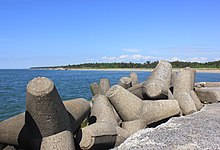
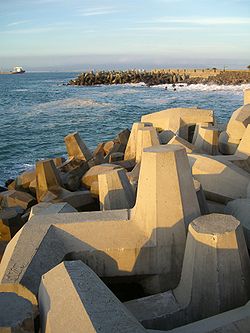
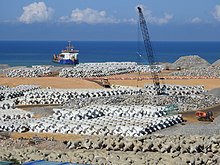
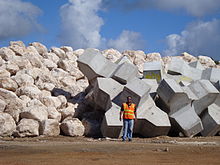


Wheel of NASA’s Curiosity rover after twelve years of rolling around on Mars.
Abandoned – Soviet Space Shuttles (Buran Program)
Upon the development of the American Space Shuttle program, The Soviet Union also embarked on their own version. This little known space program, which cost billion of dollars, was known as Buran and much like their American counterparts, their shuttle design was strikingly similar. But unlike the NASA shuttle, Buran would only fly a single non-crewed mission to space and ultimately fall into obscurity. Decades later however, remnants of the program still exist, some sitting completely abandoned.
Spiny Norman said:

Wheel of NASA’s Curiosity rover after twelve years of rolling around on Mars.
Done a pretty good job, really.
Spiny Norman said:
Abandoned – Soviet Space Shuttles (Buran Program)Upon the development of the American Space Shuttle program, The Soviet Union also embarked on their own version. This little known space program, which cost billion of dollars, was known as Buran and much like their American counterparts, their shuttle design was strikingly similar. But unlike the NASA shuttle, Buran would only fly a single non-crewed mission to space and ultimately fall into obscurity. Decades later however, remnants of the program still exist, some sitting completely abandoned.
Lots of of pics here:
https://nypost.com/2021/11/24/stunning-images-of-russias-forgotten-space-program/#3
Michael V said:
Spiny Norman said:

Wheel of NASA’s Curiosity rover after twelve years of rolling around on Mars.
Done a pretty good job, really.
Twelve years out of a set of tyres. Pretty good going.
Spiny Norman said:

Wheel of NASA’s Curiosity rover after twelve years of rolling around on Mars.
almost running on the rim.
Spiny Norman said:
Abandoned – Soviet Space Shuttles (Buran Program)Upon the development of the American Space Shuttle program, The Soviet Union also embarked on their own version. This little known space program, which cost billion of dollars, was known as Buran and much like their American counterparts, their shuttle design was strikingly similar. But unlike the NASA shuttle, Buran would only fly a single non-crewed mission to space and ultimately fall into obscurity. Decades later however, remnants of the program still exist, some sitting completely abandoned.
I was very interested in it at the time. Remember buying aviation magazines at the time if they pictures of it.
The big difference between the Russia and American shuttles was that the American shuttle had the rocket motors and had a large external fuel tank. The Russian shuttle had no rocket motors and was carried aloft by an external rocket.
World’s First Selfie From Space! (YOU Can Get One Too!)
Mark Rober

First ever turboprop aircraft the Gloster Trent Meteor 1945.
Bogsnorkler said:

First ever turboprop aircraft the Gloster Trent Meteor 1945.
Not to be confused with the first British jet fighter the Gloster Meteor.
Peak Warming Man said:
Bogsnorkler said:

First ever turboprop aircraft the Gloster Trent Meteor 1945.
Not to be confused with the first British jet fighter the Gloster Meteor.
Seems a bit pessimistic calling them both “meteor”.
Peak Warming Man said:
Bogsnorkler said:

First ever turboprop aircraft the Gloster Trent Meteor 1945.
Not to be confused with the first British jet fighter the Gloster Meteor.
They have a similar appearance.
Bogsnorkler said:

First ever turboprop aircraft the Gloster Trent Meteor 1945.
It’s EE227, which was an operational Meteor F. Mk1 with 616 Squadron at RAF Manston.
“Gloster Meteor EE227 would be handed back to the Rolls-Royce facility in Hucknall in February 1945 as a flying test bed for the newly developed RB.50 Trent propeller-turbine, or turboprop as we know them today. It combined the proven capabilities of a propeller with the high power and lack of vibration of the turbine engine. Its maiden flight was on 20th September 1945, but would end its days, lost, as so many other pioneering aircraft have, in fire destruction tests at Farnborough.
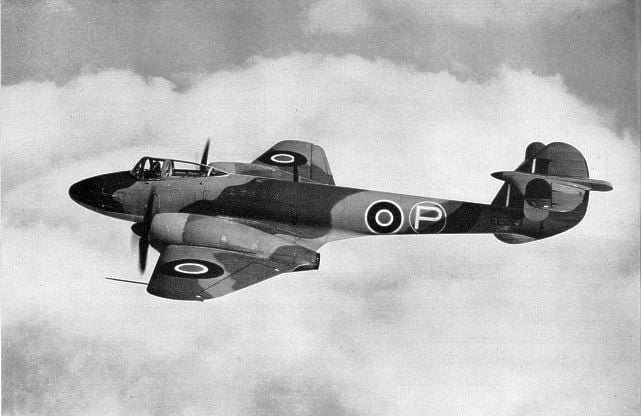
Gloster Trent-Meteor EE227 as converted to a turboprop test version. Photo courtesy of www.aviation-history.com http://www.aviation-history.com/gloster/meteor.html”
https://www.manstonhistory.org.uk/jet-engine-development-the-gloster-meteor-and-the-v1-threat/

Agatha Christie (1890-1976) at Waikiki Beach, Hawaii, circa 1922.
Did you know that Agatha Christie was one of the UK’s first surfers
and thought to be the first Western woman to stand up on a surfboard.I
n this picture, she is standing with a board borrowed from a surfer
named Fred. Sharing the same name as her father Frederick Alvah Miller,
who died when she was ten years old, the gesture meant a lot to her.
In describing surfing, Agatha said, “Oh it was heaven! Nothing like
rushing through the water at what seems to you a speed of about
two hundred miles an hour. It is one of the most perfect physical
pleasures I have known.“Source: Museum of British Surfing
Bogsnorkler said:

Agatha Christie (1890-1976) at Waikiki Beach, Hawaii, circa 1922.
Did you know that Agatha Christie was one of the UK’s first surfers
and thought to be the first Western woman to stand up on a surfboard.I
n this picture, she is standing with a board borrowed from a surfer
named Fred. Sharing the same name as her father Frederick Alvah Miller,
who died when she was ten years old, the gesture meant a lot to her.
In describing surfing, Agatha said, “Oh it was heaven! Nothing like
rushing through the water at what seems to you a speed of about
two hundred miles an hour. It is one of the most perfect physical
pleasures I have known.“Source: Museum of British Surfing
Now, that’s a ‘plank’!
party_pants said:
Peak Warming Man said:
Bogsnorkler said:

First ever turboprop aircraft the Gloster Trent Meteor 1945.
Not to be confused with the first British jet fighter the Gloster Meteor.
Seems a bit pessimistic calling them both “meteor”.
Especially considering what meteors (the astronomical kind) actually do.
captain_spalding said:
Bogsnorkler said:

Agatha Christie (1890-1976) at Waikiki Beach, Hawaii, circa 1922.
Did you know that Agatha Christie was one of the UK’s first surfers
and thought to be the first Western woman to stand up on a surfboard.I
n this picture, she is standing with a board borrowed from a surfer
named Fred. Sharing the same name as her father Frederick Alvah Miller,
who died when she was ten years old, the gesture meant a lot to her.
In describing surfing, Agatha said, “Oh it was heaven! Nothing like
rushing through the water at what seems to you a speed of about
two hundred miles an hour. It is one of the most perfect physical
pleasures I have known.“Source: Museum of British Surfing
Now, that’s a ‘plank’!
They literally were planks in those days.
btm said:
party_pants said:
Peak Warming Man said:Not to be confused with the first British jet fighter the Gloster Meteor.
Seems a bit pessimistic calling them both “meteor”.
Especially considering what meteors (the astronomical kind) actually do.
Maybe they’re going with the original meaning of the word…
This man built his office inside an elevator.
The Baťa Skyscraper, in Zlín, Czechia, is a landmark of architecture. And the office of Jan Antonín Baťa… is an elevator.
One of The Rarest Rocks on Earth.
In this video, we take you on a journey into the incredible geological history of Nundorite, a rock so rare that it’s only found in one small outcrop in the rugged landscapes of western New South Wales, Australia. Known for its unique mineral composition and mysterious origins, Nundorite is a true geological oddity, and it offers a fascinating glimpse into ancient tectonic activity, magmatic processes, and the formation of critical minerals like zirconium, niobium, and rare earth elements (REEs).
This one-of-a-kind rock is part of the Mount Arrowsmith Volcanics, a volcanic unit formed over 580 million years ago during the rifting of the supercontinent Rodinia. The Wonnaminta Zone, within the famous Koonenberry Belt, hosts this geological gem. Through detailed research and exploration, we reveal how Nundorite formed through extreme magmatic evolution and fractionation, making it a true oddity in the world of geology. Nundorite is key to understanding rift-related mineral deposits. We examine the magmatic processes, such as mantle melting and crystal fractionation, that gave this unique rock its distinctive composition.
Additionally, we uncover the significant role of the Koonenberry Belt in shaping Australia’s rich geological history and its importance in understanding ancient tectonic activity and rare mineral deposits.
Why is Nundorite Important?
Nundorite is more than just a rare rock—it’s a geological time capsule. Its formation offers critical insights into the processes that create rare mineral deposits, essential for modern technologies, including renewable energy and electronics. Understanding its origins helps us better explore for critical mineral resources in rift-related systems worldwide.
Spiny Norman said:
One of The Rarest Rocks on Earth.In this video, we take you on a journey into the incredible geological history of Nundorite, a rock so rare that it’s only found in one small outcrop in the rugged landscapes of western New South Wales, Australia. Known for its unique mineral composition and mysterious origins, Nundorite is a true geological oddity, and it offers a fascinating glimpse into ancient tectonic activity, magmatic processes, and the formation of critical minerals like zirconium, niobium, and rare earth elements (REEs).
This one-of-a-kind rock is part of the Mount Arrowsmith Volcanics, a volcanic unit formed over 580 million years ago during the rifting of the supercontinent Rodinia. The Wonnaminta Zone, within the famous Koonenberry Belt, hosts this geological gem. Through detailed research and exploration, we reveal how Nundorite formed through extreme magmatic evolution and fractionation, making it a true oddity in the world of geology. Nundorite is key to understanding rift-related mineral deposits. We examine the magmatic processes, such as mantle melting and crystal fractionation, that gave this unique rock its distinctive composition.
Additionally, we uncover the significant role of the Koonenberry Belt in shaping Australia’s rich geological history and its importance in understanding ancient tectonic activity and rare mineral deposits.
Why is Nundorite Important?
Nundorite is more than just a rare rock—it’s a geological time capsule. Its formation offers critical insights into the processes that create rare mineral deposits, essential for modern technologies, including renewable energy and electronics. Understanding its origins helps us better explore for critical mineral resources in rift-related systems worldwide.
I was only looking at that video yesterday. So interestiing.
Spiny Norman said:
One of The Rarest Rocks on Earth.In this video, we take you on a journey into the incredible geological history of Nundorite, a rock so rare that it’s only found in one small outcrop in the rugged landscapes of western New South Wales, Australia. Known for its unique mineral composition and mysterious origins, Nundorite is a true geological oddity, and it offers a fascinating glimpse into ancient tectonic activity, magmatic processes, and the formation of critical minerals like zirconium, niobium, and rare earth elements (REEs).
This one-of-a-kind rock is part of the Mount Arrowsmith Volcanics, a volcanic unit formed over 580 million years ago during the rifting of the supercontinent Rodinia. The Wonnaminta Zone, within the famous Koonenberry Belt, hosts this geological gem. Through detailed research and exploration, we reveal how Nundorite formed through extreme magmatic evolution and fractionation, making it a true oddity in the world of geology. Nundorite is key to understanding rift-related mineral deposits. We examine the magmatic processes, such as mantle melting and crystal fractionation, that gave this unique rock its distinctive composition.
Additionally, we uncover the significant role of the Koonenberry Belt in shaping Australia’s rich geological history and its importance in understanding ancient tectonic activity and rare mineral deposits.
Why is Nundorite Important?
Nundorite is more than just a rare rock—it’s a geological time capsule. Its formation offers critical insights into the processes that create rare mineral deposits, essential for modern technologies, including renewable energy and electronics. Understanding its origins helps us better explore for critical mineral resources in rift-related systems worldwide.
:)
I’ve got a lump of nundorite somewhere. I mapped outcrop of it well north of Broken Hill, while searching for copper-gold systems. Interestingly, when I worked out there, Mt Arrowsmith Station was run singlehandedly by a single woman who was (I guess) in her early eighties.
Michael V said:
Spiny Norman said:
One of The Rarest Rocks on Earth.In this video, we take you on a journey into the incredible geological history of Nundorite, a rock so rare that it’s only found in one small outcrop in the rugged landscapes of western New South Wales, Australia. Known for its unique mineral composition and mysterious origins, Nundorite is a true geological oddity, and it offers a fascinating glimpse into ancient tectonic activity, magmatic processes, and the formation of critical minerals like zirconium, niobium, and rare earth elements (REEs).
This one-of-a-kind rock is part of the Mount Arrowsmith Volcanics, a volcanic unit formed over 580 million years ago during the rifting of the supercontinent Rodinia. The Wonnaminta Zone, within the famous Koonenberry Belt, hosts this geological gem. Through detailed research and exploration, we reveal how Nundorite formed through extreme magmatic evolution and fractionation, making it a true oddity in the world of geology. Nundorite is key to understanding rift-related mineral deposits. We examine the magmatic processes, such as mantle melting and crystal fractionation, that gave this unique rock its distinctive composition.
Additionally, we uncover the significant role of the Koonenberry Belt in shaping Australia’s rich geological history and its importance in understanding ancient tectonic activity and rare mineral deposits.
Why is Nundorite Important?
Nundorite is more than just a rare rock—it’s a geological time capsule. Its formation offers critical insights into the processes that create rare mineral deposits, essential for modern technologies, including renewable energy and electronics. Understanding its origins helps us better explore for critical mineral resources in rift-related systems worldwide.:)
I’ve got a lump of nundorite somewhere. I mapped outcrop of it well north of Broken Hill, while searching for copper-gold systems. Interestingly, when I worked out there, Mt Arrowsmith Station was run singlehandedly by a single woman who was (I guess) in her early eighties.
She’d been running it for a good while by the sounds of that.
Abandoned B-52s in Mojave Desert.
While exploring the Mojave Desert south of Edwards Air Force Base on Google Earth, I spotted two B-52s sitting near the south end of Rogers Dry Lake Bed. After seeing a dirt road leading up to them I decided to give them a visit. This video is a brief documentation of that visit.
Bells, bugles and Greensleeves: The sound of the ice cream truck over the years.
Have you ever wondered about the history of the ice cream truck in Australia? The first ice cream trucks rolled onto Australian streets in the 1950s. These trucks, adorned with colourful and enticing illustrations, quickly became a fixture at beaches, parks, and residential neighbourhoods, bringing joy to children and adults alike. But perhaps what is most distinctive and memorable about them is the sound!
Nothing brings people of all ages running quite like the sound of the ice cream cart or truck. Earlier ice cream trucks and carts had bells and bugles to attract attention but in Australia, the Mr Whippy trucks played the most recognisable tune ‘Greensleeves’, as they also did in Britain and in New Zealand. For us it is the sound of summer. In other countries, the tune was different but the approach the same – play the ice cream tune through loudspeakers on the vehicle as you approach the beach, park or suburban street. In America, it was “The Entertainer” by Scott Joplin or the children’s song “Pop goes the Weasel” and in France, it was “Frere Jacques”.
However, ice Cream delivery began well before Mr Whippy. Mr Whippy arrived in Australia in 1962 when ten Commer “Mr Whippy” trucks were imported into Australia in their distinctive pink and white colours. The founder of the company, an Englishman of Italian heritage named Dominic Facchino was passionate about the history of Henry VIII and so chose “Greensleeves” as the song to herald the arrival of the ice cream trucks. Supposedly written about Anne Boleyn in 16th century England, Greensleeves was a song for lute and vocals. What did it have to do with ice cream – absolutely nothing! But now it is known as the ice cream song.
https://www.slq.qld.gov.au/blog/bells-bugles-and-greensleeves-sound-ice-cream-truck-over-years
Strange Devices in Chernobyl Reactor – What Were They For?
Those strange, conical objects you might have seen in photos from the core of Chernobyl Reactor 4. Few people know that these devices, known as Buoys, played a critical role in understanding the aftermath of the Chernobyl disaster.
Installed in the summer of 1986, these rugged devices formed a network of detectors, providing the first continuous data about the destroyed reactor’s radiation, temperature, and thermal flux. Their deployment was a high-stakes mission, carried out in one of the most dangerous places on Earth. Every step — from their innovative design to their precise placement — was a feat of bravery and ingenuity. Their data revealed a critical truth that shaped the decisions to come.
Giant cyborg cockroaches could be the search and rescue workers of the future.
The patient is submerged in an ice bath as an anesthetic for its impending surgery.
When sufficient numbness is achieved, University of Queensland student Lachlan Fitzgerald begins the procedure, carefully attaching a tiny circuit board to its back to create a part-living, part-machine biohybrid robot.
The patient is, in fact, a beetle, and the backpack-like device sends electrical pulses to its antennae, allowing Fitzgerald to control its movements, while tapping into its natural agility.
“Only when it leaves the desired path that we want it to be on do we intervene and tell it to actually go this way instead of the way it was actually heading,” says Fitzgerald, who is studying mathematics and engineering.
He hopes to create an army of insect-machine search and rescue workers. “We see a future where after an urban disaster like an earthquake or a bombing, where humans can’t safely access the disaster site, being able to send in a bunch of cyborg beetles to navigate the disaster zone quickly and efficiently,” he says.
https://edition.cnn.com/science/australia-cyborg-beetles-cockroaches-hnk-spc/index.html
ANØM: The Most Genius FBI Operation.
https://www.youtube.com/watch?v=f6FRIDG8TPY
Australia played a very significant part in the early days of that operation.
Decades before NASA’s Apollo program, the British Interplanetary Society wanted to go to the moon: in a spacesuit that looked like a suit of armour.
Tom Scott
The long-forgotten history of the British moon spacesuit
Spiny Norman said:
Decades before NASA’s Apollo program, the British Interplanetary Society wanted to go to the moon: in a spacesuit that looked like a suit of armour.
Tom ScottThe long-forgotten history of the British moon spacesuit
Interesting, ta.

Bending of a 140m wind turbine tower.
The pictures are from vestas turbines with a hub height of 140 meters, at wind speeds of about 14-18 m/s.
Spiny Norman said:
Bending of a 140m wind turbine tower.
The pictures are from vestas turbines with a hub height of 140 meters, at wind speeds of about 14-18 m/s.
Not enough action movies involve people crawling inside a turbine tower in high winds.
Spiny Norman said:
Bending of a 140m wind turbine tower.
The pictures are from vestas turbines with a hub height of 140 meters, at wind speeds of about 14-18 m/s.
Yep, that’s at approx. 64 kph the deflection would be considerably more at cyclone wind speed.
I checked wind speeds, the Severe tropical cyclone: Maximum sustained wind speed is at least 118 km/h
Read a document on how police created a sting operation to catch someone importing drugs.
Substituted the real drugs for fakes ones and waited to see if it was picked up
Mentioned in detail how it was done.
Peak Warming Man said:
Spiny Norman said:
Bending of a 140m wind turbine tower.
The pictures are from vestas turbines with a hub height of 140 meters, at wind speeds of about 14-18 m/s.Yep, that’s at approx. 64 kph the deflection would be considerably more at cyclone wind speed.
I checked wind speeds, the Severe tropical cyclone: Maximum sustained wind speed is at least 118 km/h
Yeah, but the blades would be feathered so not as much force on the tower. Maybe.
Cymek said:
Read a document on how police created a sting operation to catch someone importing drugs.
Substituted the real drugs for fakes ones and waited to see if it was picked up
Mentioned in detail how it was done.
I’d wager that for every drug shipment there is an informer tipping off the coppers for the filthy lucre. What does get in might be imported using a scatter-gun approach where the criminals split it amongst many shipments in multiple containers and just hope the informers don’t know all the details.
Witty Rejoinder said:
Cymek said:
Read a document on how police created a sting operation to catch someone importing drugs.
Substituted the real drugs for fakes ones and waited to see if it was picked up
Mentioned in detail how it was done.
I’d wager that for every drug shipment there is an informer tipping off the coppers for the filthy lucre. What does get in might be imported using a scatter-gun approach where the criminals split it amongst many shipments in multiple containers and just hope the informers don’t know all the details.
You’d have to be desperate for money.
Even without the worry of being caught, just selling it and hoping you aren’t ripped off or killed would be on your mind.
Cymek said:
Witty Rejoinder said:
Cymek said:
Read a document on how police created a sting operation to catch someone importing drugs.
Substituted the real drugs for fakes ones and waited to see if it was picked up
Mentioned in detail how it was done.
I’d wager that for every drug shipment there is an informer tipping off the coppers for the filthy lucre. What does get in might be imported using a scatter-gun approach where the criminals split it amongst many shipments in multiple containers and just hope the informers don’t know all the details.
You’d have to be desperate for money.
Even without the worry of being caught, just selling it and hoping you aren’t ripped off or killed would be on your mind.
True. There are probably just as many informers in the various police agencies involved.
New Zealand’s Geological Masterpiece.
Unique in the World – the Alpine Fault is the on-land section of New Zealand’s plate boundary that slices through the South Island. What have we learnt about it and what are the chances it could produce a big earthquake?
Peak Warming Man said:
Spiny Norman said:
Bending of a 140m wind turbine tower.
The pictures are from vestas turbines with a hub height of 140 meters, at wind speeds of about 14-18 m/s.Yep, that’s at approx. 64 kph the deflection would be considerably more at cyclone wind speed.
I checked wind speeds, the Severe tropical cyclone: Maximum sustained wind speed is at least 118 km/h
They would have the brakes on waaay before it got to cyclone wind speed.
Zoom into NGC 602
This video takes the viewer to a satellite galaxy roughly 200,000 light-years from Earth, featuring the young star cluster NGC 602. This new Webb image includes data from Webb’s NIRCam (Near-InfraRed Camera) and MIRI (Mid-InfraRed Instrument).
The local environment of this cluster is a close analogue of what existed in the early Universe, with very low abundances of elements heavier than hydrogen and helium. The existence of dark clouds of dense dust and the fact that the cluster is rich in ionised gas also suggest the presence of ongoing star formation processes. This cluster provides a valuable opportunity to examine star formation scenarios under dramatically different conditions from those in the solar neighbourhood.
Spiny Norman said:
Zoom into NGC 602This video takes the viewer to a satellite galaxy roughly 200,000 light-years from Earth, featuring the young star cluster NGC 602. This new Webb image includes data from Webb’s NIRCam (Near-InfraRed Camera) and MIRI (Mid-InfraRed Instrument).
The local environment of this cluster is a close analogue of what existed in the early Universe, with very low abundances of elements heavier than hydrogen and helium. The existence of dark clouds of dense dust and the fact that the cluster is rich in ionised gas also suggest the presence of ongoing star formation processes. This cluster provides a valuable opportunity to examine star formation scenarios under dramatically different conditions from those in the solar neighbourhood.
Impressive, ta.
TIL Some People Have an “Inner Monologue”
vlogbrothers
Spiny Norman said:
TIL Some People Have an “Inner Monologue”
vlogbrothers
Watched the first minute (will come back later, but dog demands walking), and scrolled down to the first comment:
“As someone with an internal monologue this is the most incomprehensible video ive ever watched on youtube.”
and, as someone with an internal monologue, I thought he did a pretty good job of explaining how he thinks without words.
p.s. I suspect it’s not an either/or thing.
Spiny Norman said:
TIL Some People Have an “Inner Monologue”
vlogbrothers
Hmm, he’s lucky he doesn’t have an inner monologue, ‘cos it would be a real motor-mouth :)
I have an inner monologue but also lots of imagery and “thought bubbles” full of concepts rather than words, so I think there’s a wide variety of levels going on.
Bubblecar said:
Spiny Norman said:
TIL Some People Have an “Inner Monologue”
vlogbrothersHmm, he’s lucky he doesn’t have an inner monologue, ‘cos it would be a real motor-mouth :)
I have an inner monologue but also lots of imagery and “thought bubbles” full of concepts rather than words, so I think there’s a wide variety of levels going on.
…actually I have more an “inner dialogue” with plenty of bickering but also co-operation and sympathy etc.
May well have a lot to do with being a bachelor for so long.
Sheesh can’t people just talk to themselves across some kind of social medium with a delay¿
SCIENCE said:
Sheesh can’t people just talk to themselves across some kind of social medium with a delay¿
Well yes, we can.
Medicine 4.0: How We Built The World’s Most Advanced Medicine.
Dr Ben Miles.
Spiny Norman said:
Medicine 4.0: How We Built The World’s Most Advanced Medicine.
Dr Ben Miles.
About to be torn down by Trump’s appointee.
2024’s Biggest Breakthroughs in Physics.
We investigate three of the biggest breakthroughs in physics this year, including evidence that dark energy may be weakening, the discovery of a supersolid, and new advances in quantum geometry.
https://www.youtube.com/watch?v=UhG56kltfP4
2024’s Biggest Breakthroughs in Maths
We investigate three of 2024’s biggest breakthroughs in mathematics, including a better way to pack spheres in high dimensions, a new way to avoid forming patterns of numbers, and an 800-page proof of the so-called geometric Langlands conjecture.
https://x.com/i/status/1869744259810951670
The trousers of the British Royal Air Force WWII uniforms had two buttons which could become a compass when put together
ANUAL CARBON (CO2) EMISSION BY COUNTRY WORLWIDE in tons.
Surviving Chernobyl: Former Liquidator Tells His Story 30 Years Later.
When the Chernobyl nuclear plant exploded in 1986, Viktor Ivkin was only a few meters away from the main control room. He suffered severe radiation burns but survived and later returned to work as a ‘liquidator,’ charged with the task of cleaning up after the disaster. We meet Viktor as he returns to the control room where it all happened 30 years later to talk about that night, his thoughts on the HBO show depicting it, and what he wants people to know about the plight of liquidators.
А man who was inside Chernobyl reactor.
This episode is about Alexender Kupnyi, an individual who between 1988 and 2010 has been inside the Chernobyl Nuclear Power Plant many times, and knows exactly what is happening there right now.
FWIW, the very first video on Youtube, with one of the three founders making the speech.
Me at the zoo.
https://www.youtube.com/watch?v=jNQXAC9IVRw
Spiny Norman said:
FWIW, the very first video on Youtube, with one of the three founders making the speech.Me at the zoo.
https://www.youtube.com/watch?v=jNQXAC9IVRw
Heh. I seem to remember Youtube being older than that.
13 New Zealand Inventions that (maybe) Changed the World: Compilation.
When two hijacked planes hit the twin towers of the World Trade Center on September 11, 2001, those caught above the point of impact appeared almost certain as doomed to die, especially anyone fatefully trapped in the North Tower.
Yet some people in the highest reaches of the South Tower made it out. For many, their journey down the last intact stairwell was fraught with unfathomable danger and nightmarish terror.
One man who escaped was Joe Dittmar, a father-of-four at the top of the South Tower on a morning when Al Qaeda launched their attack in dreamy blue New York skies.
He says his incredible escape, 20 years ago, still feels like yesterday. Here is his story.
Spiny Norman said:
When two hijacked planes hit the twin towers of the World Trade Center on September 11, 2001, those caught above the point of impact appeared almost certain as doomed to die, especially anyone fatefully trapped in the North Tower.Yet some people in the highest reaches of the South Tower made it out. For many, their journey down the last intact stairwell was fraught with unfathomable danger and nightmarish terror.
One man who escaped was Joe Dittmar, a father-of-four at the top of the South Tower on a morning when Al Qaeda launched their attack in dreamy blue New York skies.
He says his incredible escape, 20 years ago, still feels like yesterday. Here is his story.
Ta.
Chernobyl Sarcophagus: The Most Complex Structure Ever Built.
The Chernobyl Sarcophagus is one of the most extraordinary structures ever built by humanity, completed in a record time of 206 days to isolate the destroyed Reactor 4. This monumental facility stands as a testament to the incredible effort of 90,000 people who faced unprecedented challenges in one of the most radioactive environments on Earth.
In this episode of Chornobyl Uncharted, we uncover the remarkable engineering feats, bold decisions, and untold stories behind its construction. From daring initial designs to the final assembly of colossal beams, walls, and roofs, we’ll take you step by step through the creation of the Shelter Object and reveal why it remains a defining achievement of its era.
Discover why an entire train was buried inside the structure, how massive DEMAG cranes were deployed, and the secrets of this colossal project. Featuring rare images and detailed explanations, this episode explores one of the most enduring legacies of the Chernobyl disaster.
The Chernobyl Divers: The Untold Story.
We all know the story. It’s April 28th, 1986, and the situation at Chernobyl is deteriorating. The nuclear fuel is melting, and very soon it will enter the steam suppression pools underneath the reactor, which is now filled with water. If the fuel comes into contact with the water, there will be a large explosion comparable to a hydrogen bomb, large enough to destroy not only the three remaining reactors at Chernobyl, but also obliterate the surrounding area, poisoning the Dneiper river, rendering the Ukrainian and Belarussian Republics uninhabitable. But there is a way to avoid this. Three divers have to enter the radioactive water, wearing wet suits, at great risk to their life, to open the valves. After they opened the valves, they made their way back, and were presumed dead by the public at large, until their survival was popularised by Andrew Leatherbarrow in his book in 2016.
Now, would it surprise you to find out that almost all of this is completely fiction?
Inside the V3 Nazi Super Gun.
The V3 London gun was designed as revenge weapon by Germany and designed to be permanently aimed at London 100 miles away. If fully built this would have been the longest gun in history. With a barrel over 440 feet long, that could hurl projectiles at speeds in excess of Mach 4. The Germans were built a huge underground complex in Northern France that was designed to house 25 of these guns to ensure a continuous bombardment of London. You can visit during the summer months https://www.mimoyecques.fr/
The Dome Paradox: A Loophole in Newton’s Laws.
Spiny Norman said:
The Dome Paradox: A Loophole in Newton’s Laws.
Now had a read of that.
In my opinion the initial presumption that Newtonian Physics is deterministic is not valid, so no paradox.
But I’d be interested to hear what others think.
For those who don’t have 20 minutes to spare, read here:
https://www.youtube.com/watch?v=EjZB81jCGj4
0:00:00 - I’ve got a question for you.
0:02:00 What will happen if I place this ball
0:03:00 right at the apex of this dome
0:07:00 and let go?
0:09:00 (ball clacking)
0:11:00 Well, you probably guessed that.
0:12:00 But now imagine we’re in a theoretical world
0:15:00 where this dome is perfectly smooth, no friction or bumps.
0:19:00 There are no disturbances
0:20:00 or forces acting other than gravity.
0:22:00 And I can balance this ball
0:24:00 perfectly, perfectly, perfectly at the apex.
0:31:00 Now, what do you think will happen when I let go?
0:37:00 If that was your guess, you’re right.
0:40:00 Newton’s first law says that an object at rest
0:42:00 will remain at rest unless acted upon by an external force.
0:46:00 (ball clacking)
0:48:00 Or so we thought.
0:51:00 This is a paper by an Australian philosopher of physics
0:53:00 named John Norton.
0:55:00 It claims that Newton’s laws
0:57:00 also say that at some random time,
0:59:00 the ball will spontaneously start rolling off the dome
1:02:00 without a cause.
1:04:00 No quantum mechanics involved.
1:06:00 Just good old Newtonian physics.
1:08:00 Why am I making a video about this? You ask.
1:11:00 There’s obviously some mistake.
1:13:00 A ball can’t just start rolling on its own without a cause.
1:17:00 But here’s the thing.
1:19:00 This paper was published in 2008.
1:22:00 It’s been 16 years since Norton published this result,
1:26:00 and no one can point out what’s wrong with it.
1:29:00 And it’s not the lack of trying.
1:31:00 This is a map that shows other research papers
1:33:00 that have talked about the dome.
1:35:00 There are rebuttals, rebuttals of those rebuttals,
1:38:00 outright denials, and a lot of heated arguments.
1:42:00 Some scientists think that this result
1:44:00 might even reveal a fourth law of motion,
1:46:00 and others think it’s a proof that humans have free will.
1:50:00 - I’m responsible for lots of provocative ideas
1:52:00 and philosophy that gets me into trouble.
1:54:00 - (laughs) Now, when I first read this paper, I thought,
1:58:00 surely this is just some kind of sleight of hand math trick.
2:01:00 But after weeks of investigating,
2:04:00 I realized just how deep this rabbit hole goes.
2:07:00 It goes beyond, hey, a ball is moving weirdly
2:10:00 in this one specific scenario.
2:12:00 It challenges the entire mathematical foundation
2:15:00 of Newtonian mechanics, the most widely used
2:18:00 and well understood framework in modern physics.
2:21:00 Humanity would not be where it was if it wasn’t
2:23:00 for Newton’s laws and the math derived from them.
2:26:00 While they can’t quite describe the inner workings
2:28:00 of an atom or when things are moving at near light speeds,
2:31:00 they describe pretty much everything in between.
2:34:00 So, how does this little dome challenge all of that?
2:38:00 And what does it mean for physics?
Why should we care?
2:41:00 Before we dive in, this is an extremely subtle topic
2:44:00 and I want you to understand
2:45:00 what this video is and is not about.
2:48:00 It’s not about whether a physical ball
2:50:00 will really move off the top of a physical dome
2:53:00 in the real world.
2:54:00 In reality, you can never place a ball right at the apex
2:57:00 without it rolling down
2:58:00 as you can’t create the ideal conditions.
3:02:00 And even if you could,
3:03:00 quantum mechanics would interfere at some point.
3:05:00 (soft music)
3:07:00 (screen whooshing)
3:10:00 This video is about what the mathematical theories
3:12:00 we use to understand reality tell us.
3:16:00 Now, I know some of you are thinking,
3:17:00 “What’s the point of that?
3:19
If this is purely theoretical
3:21
and doesn’t apply to the real world, who cares?”
3:23:00 Well, there are two reasons.
3:26:00 One, sure, we might be working in an ideal world
3:29:00 without friction or disturbances,
3:31:00 but anyone who’s done even high school physics
3:34:00 would know that that’s basically how we deal
3:36:00 with the real world in physics.
3:38:00 To make problems simple enough to solve,
3:40:00 we make assumptions like there’s no air friction,
3:43:00 objects are point masses,
3:44:00 and no energy is lost in collisions.
3:47:00 So, this idealized framework is pretty standard in physics.
3:51:00 And two, imagine two gigantic numbers.
3:55:00 Numbers so big that that many things
3:57:00 couldn’t physically fit into our universe.
4:00:00 Now imagine that if we found out
4:02:00 that our rules of addition didn’t work for them.
4:04:00 When we add them together,
4:06:00 we get something weird and unexplainable.
4:09:00 It wouldn’t physically affect anything in the real world,
4:12:00 but it would mean that our theory of addition
4:14:00 doesn’t work all the time,
4:16:00 and that’s something worth knowing.
4:19:00 That’s exactly the point of the dome.
4:22:00 You’ll see limits in Newton’s theory
4:24:00 that we weren’t aware of.
4:25:00 And how even the most well established theories
4:29:00 can still surprise us.
4:31:00 (notification trilling)
Hand-wavey explanation
4:33:00 Now, we’re actually going to ease into this
4:35:00 with a not too technical, hand wavy explanation
4:39:00 to give you some intuition for why this works.
4:41:00 In Newtonian mechanics, the laws of physics
4:43:00 work the same way forward and backwards in time.
4:47:00 If you record a physical process
4:48:00 and then play the recording backwards,
4:50:00 the reversed sequence
4:51:00 should still obey the same physical laws.
4:54:00 This is called time reversal symmetry.
4:57:00 Now, if you accept that it’s possible to nudge the ball
5:00:00 with just the right amount of force
5:02:00 so that it rolls up to the apex and stops there,
5:06:00 by time reversal symmetry, it’s a valid solution
5:09:00 for the ball to rest at the top of the apex for a while
5:12:00 and then roll down.
5:14:00 - The starting point of this is John Earman’s book on,
Newtonian Determinism
5:17:00 called “A Primer on Determinism.”
5:19:00 That came out, I think, sometime in the 1980s.
5:23:00 And John just alerted us to the fact
5:26:00 that there were all sorts of cases of indeterminism
5:28:00 all the way through physics.
5:32:00 - This is super important. Let’s break it down.
5:36:00 Newton’s laws are awesome at making predictions.
5:38:00 They were even used to predict the existence of Neptune
5:41:00 before it was ever observed.
5:44:00 If we are given the position and velocity
5:46:00 of something at the present time,
5:48:00 we can calculate its position and velocity
5:50:00 for any future time.
5:54:00 Said simply, the future state of things
5:56:00 depends on their present state.
5:58:00 And importantly, there is only one possible future state
6:02:00 for any present state.
6:04:00 If there were more than one possible future state,
6:06:00 well, that would throw our powers of prediction
6:09:00 out the window.
6:11:00 The idea that any present state has only one future state
6:13:00 is called determinism.
6:16:00 Determinism is a pretty huge part of the philosophy
6:18:00 of Newtonian mechanics.
6:20:00 Pretty much since its conception,
6:21:00 physicists have viewed Newtonian mechanics
6:23:00 as a deterministic theory.
6:26:00 The way determinism manifests itself
6:28:00 in the math of Newton’s theory is like this.
6:30:00 You might have heard that in maths
6:32:00 is the language of the universe.
6:33:00 In that case, the dialect of Newtonian mechanics
6:36:00 is differential equations.
6:38:00 The solutions to differential equations
6:40:00 tell you how things change over time.
Uniqueness Theorem
6:43:00 You can imagine that would be pretty useful
6:45:00 as all of motion is pretty much
6:47:00 how an object’s position changes over time.
6:50:00 The way determinism is expressed mathematically
6:52:00 is that each differential equation has only one solution,
6:56:00 one possible trajectory.
6:58:00 This is called the uniqueness theorem.
7:01:00 If a Newtonian equation had more than one solution
7:04:00 for the same initial conditions,
7:06:00 that would mean that a present state
7:07:00 had more than one possible future state,
7:10:00 and that would break determinism.
7:13:00 And that is exactly the problem with this dome.
Multiple solutions
7:17:00 The equation of motion that describes how the ball moves
7:19:00 when it’s placed at the apex has more than one solution.
7:23:00 It’s like one of those choose your own adventure books.
7:26:00 If you start at the beginning, the initial conditions,
7:28:00 you can end up reading entirely different stories.
7:32:00 But determinism says that Newtonian mechanics
7:34:00 is like a regular book.
7:36:00 When you start at the beginning
7:37:00 or when you’re given one set of initial conditions,
7:40:00 there should only be one story.
7:43:00 So, how did Norton come up with a scenario
7:46:00 that defies centuries of classical physics?
7:48:00 It must have taken years of hard work and toil.
7:51:00 - I mean this is really The work of just a short afternoon.
7:53:00 There wasn’t terribly much to do it.
7:57:00 - Oh.
7:58:00 So, here are the solutions to the equation of motion.
8:00:00 See? More than one.
8:02:00 This solution describes the ball
8:03:00 sitting at the apex forever, exactly what we would expect.
8:06:00 And this solution says that at some random time
8:09:00 called the excitation time,
8:12:00 the ball just starts rolling down the dome on its own.
8:15:00 So my first thought when I read this was,
8:18:00 “I do not understand. Where did this come from?
8:22
Why did this come from? How does it, what?”
8:26:00 Sure, we can plug the solutions into the equation of motion
8:28:00 and see that they both work, but that’s just like,
8:31:00 yeah, okay, it works because math.
8:34:00 Obviously those thoughts aren’t what you want
8:35:00 in an educational video.
Breaking determinism
8:37:00 So I thought, you know what?
8:39:00 The only way we’re gonna understand this
8:40:00 is if we just figure it out ourselves
8:42:00 from scratch right now.
8:45:00 So that’s exactly what we’re gonna do.
8:47:00 Imagine you hate Newtonian determinism
8:49:00 and you want to come up with some situation that breaks it.
8:53:00 What’s the first thing you would do?
8:56:00 Well, you might first wanna figure out
8:58:00 how to break determinism.
9:00:00 In other words, how to come up with a differential equation
9:02:00 that has more than one solution.
9:04:00 - There are conditions that tell you
Lipschitz Continuity
9:06:00 when a differential equation will have a unique solution,
9:09:00 and I knew one of those conditions
9:11:00 was the Lipschitz Condition.
9:13:00 And it’s just standard in mathematics books,
9:16:00 that they’ll say,
9:17:00 “Well, if you wanna have a unique solution,
9:19
you need special conditions.
9:21
The Lipschitz Condition
9:22
is one that will give you a unique solution.
9:24
If you don’t have it, here’s how uniqueness might fail.”
9:28:00 - Thanks, Norton.
9:29:00 Okay, Lipschitz Condition.
9:31:00 (bright playful music)
9:34:00 In the theory of differential equations, Lipschitz continuity is the central condition of the Picard-Lindelof theorem,
which guarantees the existence and uniqueness of the solution to an initial value problem.
9:47:00 Okay, that seems promising.
9:48:00 (bright rhythmic music)
9:52:00 Hmm.
9:53:00 So, it turns out there’s this really important theorem
9:56:00 in math called the Picard-Lindelof theorem.
9:58:00 It gives a set of conditions for an equation
10:00:00 to have a unique solution.
10:02:00 If all these conditions are met, this guarantees uniqueness.
10:06:00 But if we don’t meet all these conditions,
10:09:00 an equation can have multiple solutions.
10:12:00 That’s good. That’s exactly what we want.
10:15:00 An equation that has more than one solution,
10:17:00 so we can break determinism, which we hate.
10:21:00 The central condition of the Picard-Lindelof theorem
10:24:00 is the Lipschitz Condition or Lipschitz continuity.
10:27:00 If we don’t have Lipschitz continuity,
10:29:00 this can lead to splitting and branching of a solution.
10:34:00 So guys, we just need to break Lipschitz continuity.
10:37:00 How do we do that?
10:39:00 Well, the first step might be finding out what it is.
10:41:00 (bright rhythmic music)
10:43:00 Hmm, hmm. Yes.
10:46:00 Interesting. What could it be?
10:50:00 Hmm. Basically the lip shifts condition makes sure
10:53:00 a function doesn’t change too abruptly,
10:56:00 that a slope doesn’t get too big too quickly
10:58:00 or explode, if you will.
11:01:00 It definitely should not be vertical.
11:03:00 In math talk, it needs to be increasing by a finite amount,
11:07:00 not an infinite amount.
11:09:00 There are actually a lot of functions
11:11:00 whose slopes explode like this at some point.
11:13:00 A simple one is Y equals the square root of X.
11:17:00 It doesn’t look too crazy,
11:19:00 but let’s zoom in right around X equals zero.
11:22:00 (gentle playful music)
11:24:00 You can see the slope becoming more and more vertical.
11:28:00 And if we zoom in far enough,
11:30:00 we can see the slope blow up to infinity,
11:33:00 breaking Lipschitz continuity.
11:35:00 (gentle playful music)
11:38:00 Guys, we’ve made good progress.
11:40:00 We’ve found a function that breaks Lipschitz continuity,
11:43:00 which leads to multiple solutions
11:45:00 which breaks determinism, which we hate.
Okay, now what?
Breaking NEWTONIAN determinism
11:51:00 This isn’t a Newtonian system.
11:53:00 This is just a function,
11:54:00 an abstract relationship between X and Y.
11:57:00 We are trying to break Newtonian determinism,
12:00:00 which means we need to break determinism
12:01:00 within a Newtonian system.
12:04:00 Okay, so next question. What’s a Newtonian system?
12:08:00 Basically, any physical scenario
12:10:00 that’s described by Newton’s laws.
12:13:00 Objects moving under gravity, tension, friction,
12:16:00 or any other force that can be described by Newton’s laws.
12:20:00 So how can we use our function and get it to describe
12:23:00 some kind of Newtonian system?
12:27:00 Well, imagine you’ve been given a job
12:28:00 to build a slide at your local playground.
12:31:00 You can choose how steep and curvy it is,
12:34:00 which directly affects how fast the kids
12:36:00 will accelerate at each point.
12:39:00 But you’ve built it too steep and too curvy.
12:43:00 (body squelching)
12:45:00 Now you’ve been asked to make sure the slope and curves
12:47:00 are such that the kids stay on the slide,
12:50:00 and aren’t going so fast, they get scared.
12:53:00 So, you figure out the right acceleration
12:55:00 and you work backwards to build the shape of the slide
12:59:00 that ensures this acceleration.
13:01:00 (gentle rhythmic music)
13:02:00 So, just as a shape influences
13:05:00 the motion of an object on it,
13:06:00 if you start with what kind of motion you want,
13:09:00 you can reverse engineer the right shape.
13:12:00 Similarly, let’s say we want an object like a ball
13:15:00 to accelerate according to this relationship.
13:19:00 The simplest way to get a ball to accelerate
13:21:00 is to put it on a slope and add gravity.
13:24:00 A ball accelerating under gravity.
13:26:00 That sounds like a Newtonian system to me.
13:28:00 Let X be the position of the ball
13:30:00 and Y be the acceleration of the ball.
13:33:00 When the ball is at position zero,
13:35:00 its acceleration is also zero.
13:37:00 What could that physically correspond to?
13:40:00 Well, it could be a ball sitting still on a flat surface.
13:43:00 Now as the position of the ball increases,
13:46:00 so does its acceleration.
13:48:00 What can we do to our surface
13:49:00 to make the ball move like this?
13:52:00 Well, we could make it get steeper as position increases.
13:56:00 We end up with a kind of ramp.
13:58:00 And if we make it symmetrical about the origin,
14:01:00 we get a dome.
14:03:00 In fact, if we do the math,
14:06:00 we end up with exactly this dome.
14:11:00 So that’s how the dome breaks determinism.
14:14:00 As I mentioned, it sparked a lot of controversy.
14:17:00 A lot of people outright hated the dome
14:19:00 and tried to invalidate it.
14:21:00 Scientists and philosophers had plenty of problems with it,
14:24:00 but no one could agree on a specific definitive flaw
14:28:00 that completely invalidates it.
14:30:00 Nothing concrete enough to point at and say,
14:33:00 This is the reason the dome doesn’t work.
14:35:00 One of the biggest points of contention,
14:38:00 and what was my biggest problem with it
14:40:00 is this whole ball moving by itself thing.
14:43:00 Surely this is just wrong.
14:45:00 So, why are we even entertaining it
14:47:00 as a valid solution even theoretically?
We discard solutions all the time in physics.
14:14.Hate for the dome
14:52:00 So, why not just chuck it out?
14:54:00 Physics cares about math,
14:56:00 but math doesn’t care about physics.
14:58:00 It’s up to us to determine what makes sense
15:00:00 and discard what doesn’t.
15:03:00 But this raises the question.
15:05:00 How do we decide what makes sense?
15:08:00 How do we know when to discard a solution?
15:12:00 Well, a good indication
15:13:00 is when it doesn’t make physical sense
15:16:00 or if it violates a known law of physics.
15:19:00 Take the example of a ball being rolled against a wall.
15:22:00 Viewing this situation
15:24:00 through the conservation of kinetic energy,
15:26:00 we can say that the square of the initial speed, U squared,
15:29:00 is equal to the square of the final speed
15:32:00 after it’s hit the wall, V squared.
15:34:00 Solving this equation, we get two solutions.
15:38:00 Instinctively, this is the correct one
15:41:00 as it corresponds to the ball rebounding off the wall.
15:44:00 This one corresponds to the ball going through the wall,
15:48:00 which from experience doesn’t make any physical sense.
15:51:00 We know balls can’t travel through walls.
15:53:00 This solution both doesn’t make physical sense
15:56:00 and it violates Newton’s third law of motion.
15:58:00 When two objects collide,
16:00:00 they exert an equal and opposite force on each other.
16:03:00 So, we can safely chuck it out.
16:07:00 So can we chuck out this problematic dome solution?
16:11:00 Well, it seems pretty unphysical to me that a ball
16:13:00 can just start suddenly moving by itself.
16:17:00 But here, Norton’s got an answer for us.
16:19:00 He says that the whole unphysical argument
16:22:00 doesn’t apply here because the dome
16:24:00 is a mathematical creation within Newtonian theory.
16:27:00 Therefore, we have no prior knowledge
16:30:00 about whether the ball should stay there forever
16:33:00 or whether it could spontaneously move off.
16:36:00 The fact that we get an indeterminate solution
16:38:00 is not impossible, it’s just unexpected.
16:42:00 Okay, but what about the fact that this result
16:44:00 clearly breaks Newton’s first law of motion?
Which stated in its entirety is,
Does the dome break Newton’s 1st Law?
16:49:00 “In the absence of a net external force,
16:51
a body remains at rest or in a state of uniform motion
16:54
in a straight line.”
16:56:00 But here, Norton’s got an answer too.
16:59:00 He argues that we’re used to thinking of uniform motion
17:02:00 in a straight line over some time interval.
17:06:00 But in this context,
17:07:00 we need to apply the law to a single instant of time.
17:12:00 The law then becomes,
17:13:00 “In the absence of a net external force,
17:16
a body should have zero acceleration.”
17:19:00 In other words, zero net force equals zero acceleration.
17:24:00 So, is there a moment where this instantaneous version
17:26:00 of Newton’s first law breaks?
17:29:00 Well, before the ball moves,
17:30:00 or as Norton calls it, “before the excitation time”,
17:34:00 the mass is sitting still at the apex.
17:37:00 There’s no net force acting on it as gravity
17:39:00 is balanced out perfectly by the normal force
17:42:00 and it’s not accelerating.
17:44:00 This meets our conditions.
17:46:00 After the excitation time,
17:48:00 the mass is accelerating down the dome,
17:50:00 but it’s also got a net force acting on it.
17:52:00 Gravity.
17:53:00 It accelerates in accord with F equals an A,
17:56:00 so this situation checks out too.
17:59:00 And at the exact moment of the excitation time,
18:02:00 well, this is obviously the point of interest.
18:04:00 Now, I don’t generally like doing this,
18:07:00 but the only way I could think to explain this part
18:09:00 is through the math.
18:10:00 I don’t like doing that
18:11:00 because I don’t think it gives great intuition,
18:14:00 but I honestly don’t think
18:15:00 there’s an intuitive explanation for this.
18:17:00 If you take the solution
18:18:00 where the ball spontaneously rolls off the dome,
18:21:00 you can get its acceleration by differentiating twice
18:24:00 or just looking at the paper.
18:27:00 The exact moment the ball moves is when time, small t,
18:30:00 is equal to the excitation time, big T.
18:34:00 So when we plug that into our equation,
18:36:00 this term becomes zero.
18:38:00 So, the entire thing is zero.
18:41:00 No acceleration along with no net force.
18:44:00 Just as Newton’s first law says.
18:47:00 So, there is no actual moment we can pinpoint
18:50:00 where this instantaneous version of Newton’s law is broken.
18:54:00 So, why does the mass move?
18:57:00 Well, this is exactly Norton’s claim.
18:59:00 Newtonian physics is indeterministic.
19:02:00 There doesn’t need to be a why.
19:04:00 We are just so used to thinking about this in a causal way.
19:08:00 He says, “Our natural causal instinct is to seek
19:11:00 the first instant at which the mass moves
19:13:00 and then look for the cause of the motion at that instant.
19:16:00 We are tempted to think of the excitation time
19:18:00 as the first instant at which the mass moves.
19:21:00 But that is not so.
19:23:00 It is the last instant at which the mass does not move.
19:27:00 There is no first instant at which the mass moves.
19:29:00 The mass moves during the interval,
19:31:00 after the excitation time,
19:33:00 and this interval has no first instant.
19:36:00 So there is no first instant of motion
19:38:00 and thus no first instant
19:39:00 at which to seek the initiating cause.”
19:43:00 But I’m curious to know what you guys think.
19:45:00 Are you convinced by Norton’s arguments?
Leave your opinions in the comments below.
What does the dome mean for physics?
19:51:00 So now the burning question.
19:53:00 What does this all mean for physics?
19:55:00 Well, in the most extreme case, it could mean
19:58:00 that Newtonian mechanics is not a deterministic theory.
20:01:00 But it feels a bit strange to say
20:03:00 that an entire theory is not deterministic
20:06:00 because of a few edge cases that break it.
20:09:00 More likely is that Newtonian theory
20:11:00 is just not as clear cut as we thought,
20:13:00 and we don’t understand it, as well as we thought we did.
20:16:00 Some philosophers go so far as to say
20:19:00 there isn’t a single conception of Newtonian physics.
20:22:00 There is not one true version, but many versions
20:25:00 which are all correct
20:27:00 even if they’re all at odds with each other.
20:30:00 This journey into the dome has been so cool
20:32:00 because it revealed that something that we thought
20:34:00 was kind of pure and unified and whole and complete
20:38:00 could actually be this fragmented thing
20:40:00 that has many versions.
20:43:00 It’s surprising to think that after all this time,
20:45:00 we’re still not sure how to interpret
20:47:00 one of the oldest models of physics.
20:50:00 Is it that surprising though?
20:52:00 You might be shocked at what kind of questions
20:54:00 you’d think are pretty basic, that still puzzle scientists,
20:58:00 especially to do with something you’d think
21:00:00 we’d have figured out by now, us humans.
21:03:00 Scientists still can’t agree
21:05:00 on things like how we first started speaking.
21:07:00 Was it a slow, gradual process
21:10:00 or was it like a linguistic big bang?
21:12:00 Why do we sweat while other animals don’t?
21:15:00 What were the moments that made us human?
21:18:00 It’s a really fascinating topic,
21:20:00 and my friends over at Real Science
21:21:00 made an entire series about it called “Becoming Human”,
21:25:00 which I highly recommend.
21:26:00 It’s a deep dive into the defining moments of our evolution.
21:30:00 The different theories put forward by scientists.
21:32:00 And it’s one of my favorite things on Nebula.
21:35:00 A platform that’s quickly becoming the go-to space
21:37:00 for the best educational content on the internet.
21:40:00 Nebula is built and run by creators with the mission
21:44:00 to be the best place for us to make the work
21:45:00 that we couldn’t make anywhere else.
21:48:00 I’ve always wanted to take my videos to the next level,
21:51:00 and Nebula is enabling that for our entire list of creators.
21:55:00 Better stories, better production value.
21:57:00 Taking creators to the next level
21:59:00 is what Nebula is all about.
22:00:00 It’s completely ad free.
22:02:00 And most creators post their YouTube videos there
22:05:00 a week early.
22:06:00 To check out “Becoming Human”,
22:08:00 as well as hundreds of other top-notch, thoughtful videos,
22:11:00 completely ad free, sign up with my link to get 40% off.
22:16:00 That’s just $3 a month, or $36 for the entire year.
22:20:00 Seriously for the price of a latte,
22:22:00 you’re getting access to some of the most interesting
22:24:00 and creative content out there.
22:26:00 Go to nebulatv/upandatom
22:30:00 or click the link in the description.
22:32:00 You’ll be supporting this channel,
22:33:00 as well as the entire educational community.
22:36:00 Thank you and goodbye.
22:38:00 (lively techno music)
Why do we measure a complete rotation around the circle as being 360°?
Spiny Norman said:
Why do we measure a complete rotation around the circle as being 360°?
Very pretty, but I’m not sure what the point of it all was.
The Rev Dodgson said:
Spiny Norman said:
The Dome Paradox: A Loophole in Newton’s Laws.Now had a read of that.
In my opinion the initial presumption that Newtonian Physics is deterministic is not valid, so no paradox.
But I’d be interested to hear what others think.
No-one else interested in this?
See previous post for transcript.
The Rev Dodgson said:
The Rev Dodgson said:
Spiny Norman said:
The Dome Paradox: A Loophole in Newton’s Laws.Now had a read of that.
In my opinion the initial presumption that Newtonian Physics is deterministic is not valid, so no paradox.
But I’d be interested to hear what others think.
No-one else interested in this?
See previous post for transcript.
¿ref
SCIENCE said:
The Rev Dodgson said:
The Rev Dodgson said:Now had a read of that.
In my opinion the initial presumption that Newtonian Physics is deterministic is not valid, so no paradox.
But I’d be interested to hear what others think.
No-one else interested in this?
See previous post for transcript.
¿ref
Date: 27/12/2024 14:20:44
From: The Rev Dodgson
ID: 2229760
The Rev Dodgson said:
The Rev Dodgson said:
Spiny Norman said:
The Dome Paradox: A Loophole in Newton’s Laws.Now had a read of that.
In my opinion the initial presumption that Newtonian Physics is deterministic is not valid, so no paradox.
But I’d be interested to hear what others think.
No-one else interested in this?
See previous post for transcript.
I read the transcript but don’t know enough about the details of Newtonian Physics & determinism. However, I thought Brownian motion would be enough to set the ball rolling in a random direction at a random time.
Kingy said:
The Rev Dodgson said:
The Rev Dodgson said:Now had a read of that.
In my opinion the initial presumption that Newtonian Physics is deterministic is not valid, so no paradox.
But I’d be interested to hear what others think.
No-one else interested in this?
See previous post for transcript.
I read the transcript but don’t know enough about the details of Newtonian Physics & determinism. However, I thought Brownian motion would be enough to set the ball rolling in a random direction at a random time.
I agree.
Even ignoring quantum stuff, you need infinite precision to predict how a body will behave in the future, and infinite precision is not possible, even in principle.
The Rev Dodgson said:
SCIENCE said:
The Rev Dodgson said:
The Rev Dodgson said:
Spiny Norman said:
The Dome Paradox: A Loophole in Newton’s Laws.
Now had a read of that.
In my opinion the initial presumption that Newtonian Physics is deterministic is not valid, so no paradox.
But I’d be interested to hear what others think.
No-one else interested in this?
See previous post for transcript.
¿ref
Date: 27/12/2024 14:20:44
From: The Rev Dodgson
ID: 2229760
thanks, isn’t that the previous previous previous previous previous previous previous previous previous previous previous previous previous previous previous previous previous previous previous previous previous previous previous previous previous previous previous previous previous previous previous previous previous previous previous previous previous previous previous previous previous previous previous previous previous previous previous previous previous previous previous previous previous previous previous previous previous previous previous previous previous previous previous previous previous previous previous previous previous previous previous previous previous previous previous previous previous previous previous previous previous previous previous previous previous previous previous previous previous previous previous previous previous previous previous previous previous previous previous previous previous previous previous previous previous previous previous previous previous previous previous previous previous previous previous previous previous previous previous previous previous previous previous previous previous previous previous previous previous previous previous previous previous previous previous previous previous previous previous previous previous previous previous previous previous previous previous previous previous previous previous previous previous previous previous previous previous previous post though
jokes, but knowing how far back to read did help so we were able to do so, rather than deciding to come back to it at some unspecified rolling off the dome future time
as you may have known we certainly are interested in this
and we agree with you, determinism is independent of Newtonian Physics or whatever they call it
they seem to expect people to use this Newtonian Physics thing within a deterministic framework / perspective / way of thinking, they expect it to give definite answers, but there is no reason it has to be
there are plenty of theoretically underdetermined problems in NewtMech, if we recall correctly even a bench leaning against a wall is underdetermined
also the whole strict “3 laws of motion ascribed to Isaac” seems a bit dogmatic, we’d happily sacrifice 1 and wrap it into 2 videre licet sumF = ma for sumF = 0
The Rev Dodgson said:
Kingy said:
The Rev Dodgson said:
No-one else interested in this?
See previous post for transcript.
I read the transcript but don’t know enough about the details of Newtonian Physics & determinism. However, I thought Brownian motion would be enough to set the ball rolling in a random direction at a random time.
I agree.
Even ignoring quantum stuff, you need infinite precision to predict how a body will behave in the future, and infinite precision is not possible, even in principle.
uh we also disagree that {sensitive dependence on initial conditions} invalidates determinism, it merely invalidates determinism in practice and we do agree that that is not the same as conceptual in theory determinism
SCIENCE said:
The Rev Dodgson said:
SCIENCE said:
¿ref
Date: 27/12/2024 14:20:44
From: The Rev Dodgson
ID: 2229760
thanks, isn’t that the previous previous previous previous previous previous previous previous previous previous previous previous previous previous previous previous previous previous previous previous previous previous previous previous previous previous previous previous previous previous previous previous previous previous previous previous previous previous previous previous previous previous previous previous previous previous previous previous previous previous previous previous previous previous previous previous previous previous previous previous previous previous previous previous previous previous previous previous previous previous previous previous previous previous previous previous previous previous previous previous previous previous previous previous previous previous previous previous previous previous previous previous previous previous previous previous previous previous previous previous previous previous previous previous previous previous previous previous previous previous previous previous previous previous previous previous previous previous previous previous previous previous previous previous previous previous previous previous previous previous previous previous previous previous previous previous previous previous previous previous previous previous previous previous previous previous previous previous previous previous previous previous previous previous previous previous previous previous post though
jokes, but knowing how far back to read did help so we were able to do so, rather than deciding to come back to it at some unspecified rolling off the dome future time
as you may have known we certainly are interested in this
and we agree with you, determinism is independent of Newtonian Physics or whatever they call it
they seem to expect people to use this Newtonian Physics thing within a deterministic framework / perspective / way of thinking, they expect it to give definite answers, but there is no reason it has to be
there are plenty of theoretically underdetermined problems in NewtMech, if we recall correctly even a bench leaning against a wall is underdetermined
also the whole strict “3 laws of motion ascribed to Isaac” seems a bit dogmatic, we’d happily sacrifice 1 and wrap it into 2 videre licet sumF = ma for sumF = 0
Since the ABC deprived us of the opportunity for pedanticism today, I will agree that I should have said my previous post in this thread.
“there are plenty of theoretically underdetermined problems in NewtMech, if we recall correctly even a bench leaning against a wall is underdetermined”
Exactly. Even pin-ball.
“also the whole strict “3 laws of motion ascribed to Isaac” seems a bit dogmatic, we’d happily sacrifice 1 and wrap it into 2 videre licet sumF = ma for sumF = 0”
Yes, we only need no. 2.
but anyway since yous’r‘all talking about this determinism broken pseudoclassical mechanics stuff
how about the idea that actual idealised solutions to the heat equation violate causality as most clearly seen with a step function when the insulator vanishes at time T and subsequently and suddenly all points change temperature no matter how far they are from the interface
oh oooh ouch guess models are just models damn
The Rev Dodgson said:
The Rev Dodgson said:
Spiny Norman said:
The Dome Paradox: A Loophole in Newton’s Laws.Now had a read of that.
In my opinion the initial presumption that Newtonian Physics is deterministic is not valid, so no paradox.
But I’d be interested to hear what others think.
No-one else interested in this?
See previous post for transcript.
I read part of it but didn’t understand.
Michael V said:
The Rev Dodgson said:
The Rev Dodgson said:
Now had a read of that.
In my opinion the initial presumption that Newtonian Physics is deterministic is not valid, so no paradox.
But I’d be interested to hear what others think.
No-one else interested in this?
See previous post for transcript.
I read part of it but didn’t understand.
SCIENCE said:
Michael V said:
The Rev Dodgson said:
No-one else interested in this?
See previous post for transcript.
I read part of it but didn’t understand.
- They have a dome, shaped so that acceleration is proportional to how far you are from the centre.
- Which means that at the top your acceleration should be 0 (like any other dome).
- Which means that if you model it you would expect an object sitting at the top to stay there forever.
- But there are infinitely many theoretical trajectories which involve the object sliding off at an arbitrary time, which still fit the stated laws of mechanics.
- They claim that this violates determinism, and that Newtonian physics is deterministic, so everything is violated.
- The Rev Dodgson and we disagree with much of such a conclusion.
- They pique the interest of viewers by leaning into the idea that the theoretical object suddenly sliding off is absurd and there is much to be gained by thinking about what caused it to slide off at some given time.
- They do not own up to this implication, and instead explicitly state that this goes deep into what our models of physics mean.
- Well, yes: the secret they avoid telling you, explicitly or implicitly, is that by obtaining a deeper understanding of what our models of physics mean, weyouthey(1,1,1) have already obtained the “much to be gained” stuff.
Ah. Thanks. That helps quite a bit.
Michael V said:
SCIENCE said:Michael V said:
I read part of it but didn’t understand.
- They have a dome, shaped so that acceleration is proportional to how far you are from the centre.
- Which means that at the top your acceleration should be 0 (like any other dome).
- Which means that if you model it you would expect an object sitting at the top to stay there forever.
- But there are infinitely many theoretical trajectories which involve the object sliding off at an arbitrary time, which still fit the stated laws of mechanics.
- They claim that this violates determinism, and that Newtonian physics is deterministic, so everything is violated.
- The Rev Dodgson and we disagree with much of such a conclusion.
- They pique the interest of viewers by leaning into the idea that the theoretical object suddenly sliding off is absurd and there is much to be gained by thinking about what caused it to slide off at some given time.
- They do not own up to this implication, and instead explicitly state that this goes deep into what our models of physics mean.
- Well, yes: the secret they avoid telling you, explicitly or implicitly, is that by obtaining a deeper understanding of what our models of physics mean, weyouthey(1,1,1) have already obtained the “much to be gained” stuff.
Ah. Thanks. That helps quite a bit.
A piece from Quora on the historical fear of infinitesimals:
What people miss is that the underlying principle behind calculus, doing math on infinitely small quantities, had long been controversial. Roman Catholic Jesuits forbade all work on this concept just as some Catholics forbade accepting evolution.
For those of us who have forgotten calculus, this animation illustrates how the modern concept of limits works for derivatives, slopes at infinitely small points.
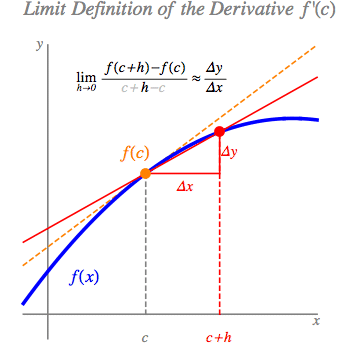
Infinities lead to many weird results, like Galileo’s Paradox. For this reason, Jesuits had suppressed teaching about infinities (indivisibles) in Italy and other Catholic countries. The Jesuits were as unhappy with Galileo’s studies of infinity as they were with his claim that the Earth orbits the Sun.
This English minister, John Wallis, disagreed and used infinite series to calculate areas under curves in ways similar those I was taught in calculus class. He also used the symbol for infinity that we use today: ∞. Wallis made it respectable to study the math of infinitely small points. Newton studied his book on the topic, Arithmetica Infinitorum, and found it helpful. So, in that sense, Newton stole ideas from Wallis.
But Wallis’ ideas weren’t entirely original either. Some of his ideas came from an Italian, Bonaventura Cavalieri, whose studies the Jesuits had opposed. In fact, the Pope abolished the religious order Cavalieri belong to, apparently because of its support of infinitely small points.
So, there are parallels between Newton and Darwin.
Both created theories that were opposed by the Roman Catholic Church. And just as Newton and Leibniz independently developed calculus, Charles Darwin and Alfred Russel Wallace independently developed the theory of natural selection. And just as Leibniz published first, Wallace almost published first while Darwin and Newton worked out their ideas privately.
The “infinitesimals” we are talking about (actually more correctly called “indivisibles”) is the assertion that a plane area is made up of parallel line segments; or that a solid region is made up of parallel plane sections…
Jesuits prohibited indivisibles for use in their education system because indivisibles were viewed as contrary to Aristotle…
..asserting that Galileo’s book advanced an atomic theory of matter, and that this conflicted with the Catholic doctrine of the Eucharist, because atomism would make transubstantiation impossible.
—-
Apparently the Jesuits disliked this theory even more than heliocentricity.
Ian said:
The “infinitesimals” we are talking about (actually more correctly called “indivisibles”) is the assertion that a plane area is made up of parallel line segments; or that a solid region is made up of parallel plane sections…Jesuits prohibited indivisibles for use in their education system because indivisibles were viewed as contrary to Aristotle…
..asserting that Galileo’s book advanced an atomic theory of matter, and that this conflicted with the Catholic doctrine of the Eucharist, because atomism would make transubstantiation impossible.
—-
Apparently the Jesuits disliked this theory even more than heliocentricity.
So it seems, although I don’t really get what their objection to it was.
The story of the man that climbed DOWN the Twin Towers…
He didn’t make it, but managed to climb down the OUTSIDE of the tower about twenty stories before falling off when the second tower collapsed. Absolutely amazing, as he would likely have been in plain office clothing, not climbing gear.
The Mazda Roadpacer.
Powered by a rotary engine and based on the Holden HJ Premier, this car was ambitious, bizarre, and ultimately doomed.
Why is there no equation for the perimeter of an ellipse‽
The Inventions of Thomas Midgley.
Hyundai starts pilot production of solid state batteries for EV testing.
waves to Mr Norman.
Hot weather. So I put an active cooling fan on my PiHole.
Took 10C off it, it did. Now sitting at 41.3C
Do you cool you PiHole?
Woodie said:
waves to Mr Norman.Hot weather. So I put an active cooling fan on my PiHole.
Took 10C off it, it did. Now sitting at 41.3C
Do you cool you PiHole?
Yep, got a 40mm fan blowing air over it. I should add a heatsink to the CPU though, it’d help a lot.
Spiny Norman said:
Woodie said:
waves to Mr Norman.Hot weather. So I put an active cooling fan on my PiHole.
Took 10C off it, it did. Now sitting at 41.3C
Do you cool you PiHole?
Yep, got a 40mm fan blowing air over it. I should add a heatsink to the CPU though, it’d help a lot.
I put the small heatsink kit on it to start with. But it was getting into the 60C+ in the heat. Sitting normally around 50C.
My PiHole.

Woodie said:
Spiny Norman said:
Woodie said:
waves to Mr Norman.Hot weather. So I put an active cooling fan on my PiHole.
Took 10C off it, it did. Now sitting at 41.3C
Do you cool you PiHole?
Yep, got a 40mm fan blowing air over it. I should add a heatsink to the CPU though, it’d help a lot.
I put the small heatsink kit on it to start with. But it was getting into the 60C+ in the heat. Sitting normally around 50C.
My PiHole.
Nice.
I’ve just got the bare Pi sitting on as shelf and the fan is propped up next to it by leaning it on a small box.
I think yours is a bit neater than mine.
Spiny Norman said:
Hyundai starts pilot production of solid state batteries for EV testing.
Nice
Latest completed project.
DCC Model Railroad controller.
Raspberry Pi 4
Arduino Mega
Arduino Mega Power Shield
DCC-EX software on the Arduino
JMRI Software on the Raspberry Pi 4
3D printed case.

Woodie said:
Latest completed project.DCC Model Railroad controller.
Raspberry Pi 4
Arduino Mega
Arduino Mega Power ShieldDCC-EX software on the Arduino
JMRI Software on the Raspberry Pi 43D printed case.
Well done!
It’s quite handy being able to print the cases for those gadgets.
I’m making a homebrew spacemouse right now. It’s a bit like this one – >
https://youtu.be/2xAk-wegS9o?si=vo6Bo4vaxP27bU6r
Woodie said:
waves to Mr Norman.Hot weather. So I put an active cooling fan on my PiHole.
Took 10C off it, it did. Now sitting at 41.3C
Do you cool your PiHole?
I don’t. Mine remains at 38° C.
Spiny Norman said:
Woodie said:
Latest completed project.DCC Model Railroad controller.
Raspberry Pi 4
Arduino Mega
Arduino Mega Power ShieldDCC-EX software on the Arduino
JMRI Software on the Raspberry Pi 43D printed case.
Well done!
It’s quite handy being able to print the cases for those gadgets.
I’m making a homebrew spacemouse right now. It’s a bit like this one – >
https://youtu.be/2xAk-wegS9o?si=vo6Bo4vaxP27bU6r
“Teaching Tech” is good. I’ve used many references and tutorials of his. However, watched his latest Choob yesterday, and he’s chuckin’ it in for a while. Burnout from stupid and petty feedback and comments.
Woodie said:
Spiny Norman said:
Woodie said:
Latest completed project.DCC Model Railroad controller.
Raspberry Pi 4
Arduino Mega
Arduino Mega Power ShieldDCC-EX software on the Arduino
JMRI Software on the Raspberry Pi 43D printed case.
Well done!
It’s quite handy being able to print the cases for those gadgets.
I’m making a homebrew spacemouse right now. It’s a bit like this one – >
https://youtu.be/2xAk-wegS9o?si=vo6Bo4vaxP27bU6r
“Teaching Tech” is good. I’ve used many references and tutorials of his. However, watched his latest Choob yesterday, and he’s chuckin’ it in for a while. Burnout from stupid and petty feedback and comments.
So I saw as well.
It’s been happening to a few of the more popular YT’ers. Tom Scott is another.
The German town of Herzogenrath and the Dutch town of Kerkrade effectively form one large town with an international border running through it. This is the story of how this happened, what it meant for the people living there, and how the place functions today.
https://www.youtube.com/watch?v=9xa0bP_CVSg
Quite an odd series of events and history there.
Spiny Norman said:
The German town of Herzogenrath and the Dutch town of Kerkrade effectively form one large town with an international border running through it. This is the story of how this happened, what it meant for the people living there, and how the place functions today.https://www.youtube.com/watch?v=9xa0bP_CVSg
Quite an odd series of events and history there.
I seem to recall pics of a cafe, with the border running through it, so you can sit in Germany while the person on the other side of the table is in The Netherlands.
How Soon Might the Atlantic Ocean Break? Two Sibling Scientists Found an Answer—and Shook the World
A gigantic, weather-defining current system could be headed to collapse. Peter and Susanne Ditlevsen had a simple yet controversial question: How much time might we have left to save it?
Off the southwest tip of Iceland, you’ll find what’s often called a “marginal” body of water. This part of the Atlantic, the Irminger Sea, is one of the stormiest places in the northern hemisphere. On Google Maps it gets three stars: “very windy,” says one review. It’s also where something rather strange is happening. As the rest of the planet has warmed since the 20th century—less in the tropics, more near the poles—temperatures in this patch of ocean have hardly budged. In some years they’ve even cooled. If you get a thrill from spooky maps, check out one that compares the average temperatures in the late 19th century with those of the 2010s. All of the planet is quilted in pink and red, the familiar colors of climate change. But in the North Atlantic, there’s one freak splotch of blue. If global warming were a blanket, the Irminger Sea and its neighboring waters are where the moths ate through. Scientists call it the warming hole.
Spiny Norman said:
How Soon Might the Atlantic Ocean Break? Two Sibling Scientists Found an Answer—and Shook the WorldA gigantic, weather-defining current system could be headed to collapse. Peter and Susanne Ditlevsen had a simple yet controversial question: How much time might we have left to save it?
Off the southwest tip of Iceland, you’ll find what’s often called a “marginal” body of water. This part of the Atlantic, the Irminger Sea, is one of the stormiest places in the northern hemisphere. On Google Maps it gets three stars: “very windy,” says one review. It’s also where something rather strange is happening. As the rest of the planet has warmed since the 20th century—less in the tropics, more near the poles—temperatures in this patch of ocean have hardly budged. In some years they’ve even cooled. If you get a thrill from spooky maps, check out one that compares the average temperatures in the late 19th century with those of the 2010s. All of the planet is quilted in pink and red, the familiar colors of climate change. But in the North Atlantic, there’s one freak splotch of blue. If global warming were a blanket, the Irminger Sea and its neighboring waters are where the moths ate through. Scientists call it the warming hole.
Needs subscription.
How The Worlds Fastest Car Was Built.
A team of plucky Brits attempt to prove that they’ve built the world’s fastest car – Bloodhound. Through 6 weeks of high-speed, high-profile testing in the Kalahari, they aim to show the world that they will, one day, blast into the record books.
https://www.youtube.com/watch?v=Ml5ER_SA_-c
I thought Kingy might find this of interest,
Spiny Norman said:
How The Worlds Fastest Car Was Built.A team of plucky Brits attempt to prove that they’ve built the world’s fastest car – Bloodhound. Through 6 weeks of high-speed, high-profile testing in the Kalahari, they aim to show the world that they will, one day, blast into the record books.
https://www.youtube.com/watch?v=Ml5ER_SA_-c
I thought Kingy might find this of interest,
Ta, I’ll check that out later.
One of “locals”(WA) is a complete nutter and has done some extremely stupid shit in extremely stupidly fast cars. He’s now built himself, in his shed, a car capable of 1000mph. He’s just trying to get finance to try it out, and a 50km long by 5kmh wide straight stretch of “road” to try it out. Anyone know where to find one?
https://aussieinvader.com/
I had a chat to him in the early/mid 90’s at Mandurah shortly after one of his stunts damn near launched himself and his rocket car into the ocean.
He is still the fastest man in Australia, and the fastest man in a gokart in Australia.
Kingy said:
Spiny Norman said:
How The Worlds Fastest Car Was Built.A team of plucky Brits attempt to prove that they’ve built the world’s fastest car – Bloodhound. Through 6 weeks of high-speed, high-profile testing in the Kalahari, they aim to show the world that they will, one day, blast into the record books.
https://www.youtube.com/watch?v=Ml5ER_SA_-c
I thought Kingy might find this of interest,
Ta, I’ll check that out later.
One of “locals”(WA) is a complete nutter and has done some extremely stupid shit in extremely stupidly fast cars. He’s now built himself, in his shed, a car capable of 1000mph. He’s just trying to get finance to try it out, and a 50km long by 5kmh wide straight stretch of “road” to try it out. Anyone know where to find one?
https://aussieinvader.com/
I had a chat to him in the early/mid 90’s at Mandurah shortly after one of his stunts damn near launched himself and his rocket car into the ocean.
He is still the fastest man in Australia, and the fastest man in a gokart in Australia.
Wow!
I don’t know of any areas in Aus like that though sorry.
Kingy said:
One of “locals”(WA) is a complete nutter and has done some extremely stupid shit in extremely stupidly fast cars. He’s now built himself, in his shed, a car capable of 1000mph. He’s just trying to get finance to try it out, and a 50km long by 5kmh wide straight stretch of “road” to try it out. Anyone know where to find one?https://aussieinvader.com/
One of the many things that make me nervous about rocket-propelled cars like that, is that they get quite a lot lighter as the run progresses. You want the car to stay heavy for stability. He’s no fool though, he’ll have worked something out to combat that.
Spiny Norman said:
Kingy said:
Spiny Norman said:
How The Worlds Fastest Car Was Built.A team of plucky Brits attempt to prove that they’ve built the world’s fastest car – Bloodhound. Through 6 weeks of high-speed, high-profile testing in the Kalahari, they aim to show the world that they will, one day, blast into the record books.
https://www.youtube.com/watch?v=Ml5ER_SA_-c
I thought Kingy might find this of interest,
Ta, I’ll check that out later.
One of “locals”(WA) is a complete nutter and has done some extremely stupid shit in extremely stupidly fast cars. He’s now built himself, in his shed, a car capable of 1000mph. He’s just trying to get finance to try it out, and a 50km long by 5kmh wide straight stretch of “road” to try it out. Anyone know where to find one?
https://aussieinvader.com/
I had a chat to him in the early/mid 90’s at Mandurah shortly after one of his stunts damn near launched himself and his rocket car into the ocean.
He is still the fastest man in Australia, and the fastest man in a gokart in Australia.
Wow!
I don’t know of any areas in Aus like that though sorry.
Earlier this year he went on a road trip to check out some of the salt lakes in WA that might be long enough, flat enough and wide enough for an attempt on the WLSP. I didn’t hear if he found any place suitable.
Though I like the fella, and am very impressed by his enthusiasm, I am willing to bet money that he will die in the attempt.
The World Land Speed Record has been increased by on average ~1% each time. He wants to increase it by 60% in one go. At least he’ll be remembered.
Kingy said:
Spiny Norman said:
Kingy said:Ta, I’ll check that out later.
One of “locals”(WA) is a complete nutter and has done some extremely stupid shit in extremely stupidly fast cars. He’s now built himself, in his shed, a car capable of 1000mph. He’s just trying to get finance to try it out, and a 50km long by 5kmh wide straight stretch of “road” to try it out. Anyone know where to find one?
https://aussieinvader.com/
I had a chat to him in the early/mid 90’s at Mandurah shortly after one of his stunts damn near launched himself and his rocket car into the ocean.
He is still the fastest man in Australia, and the fastest man in a gokart in Australia.
Wow!
I don’t know of any areas in Aus like that though sorry.
Earlier this year he went on a road trip to check out some of the salt lakes in WA that might be long enough, flat enough and wide enough for an attempt on the WLSP. I didn’t hear if he found any place suitable.
Though I like the fella, and am very impressed by his enthusiasm, I am willing to bet money that he will die in the attempt.
The World Land Speed Record has been increased by on average ~1% each time. He wants to increase it by 60% in one go. At least he’ll be remembered.
I quite agree.
Also, (I still haven’t looked at the linked youtube vid), I remember reading that during the build of the bloodhound, they needed a 600hp Nascar V8 engine just to drive the fuel pump on the real engine.
That scared me (more than) a little.
In my younger days, I would have a go at anything. Even these days I’m still the first one into a bushfire, but a car that needs a 600hp fuel pump? Yeah,nah. I’ll be over here with a video camera points —>
Spiny Norman said:
Kingy said:
One of “locals”(WA) is a complete nutter and has done some extremely stupid shit in extremely stupidly fast cars. He’s now built himself, in his shed, a car capable of 1000mph. He’s just trying to get finance to try it out, and a 50km long by 5kmh wide straight stretch of “road” to try it out. Anyone know where to find one?https://aussieinvader.com/
One of the many things that make me nervous about rocket-propelled cars like that, is that they get quite a lot lighter as the run progresses. You want the car to stay heavy for stability. He’s no fool though, he’ll have worked something out to combat that.
Eating KFC at a furious rate?
Kingy said:
At least he’ll be remembered.
..as he descends in small pieces across the landscape.
Kingy said:
Also, (I still haven’t looked at the linked youtube vid), I remember reading that during the build of the bloodhound, they needed a 600hp Nascar V8 engine just to drive the fuel pump on the real engine.That scared me (more than) a little.
In my younger days, I would have a go at anything. Even these days I’m still the first one into a bushfire, but a car that needs a 600hp fuel pump? Yeah,nah. I’ll be over here with a video camera points —>
Yeah the rocket engine does need a 600 hp+ fuel pump. I wouldn’t have thought using a piston engine to drive it would be the way to go. Something like a hydrogen peroxide turbine I thought would have been the go.
Spiny Norman said:
Kingy said:
Spiny Norman said:Wow!
I don’t know of any areas in Aus like that though sorry.
Earlier this year he went on a road trip to check out some of the salt lakes in WA that might be long enough, flat enough and wide enough for an attempt on the WLSP. I didn’t hear if he found any place suitable.
Though I like the fella, and am very impressed by his enthusiasm, I am willing to bet money that he will die in the attempt.
The World Land Speed Record has been increased by on average ~1% each time. He wants to increase it by 60% in one go. At least he’ll be remembered.
I quite agree.
As Donald Campbell discovered.
Kingy said:
Also, (I still haven’t looked at the linked youtube vid), I remember reading that during the build of the bloodhound, they needed a 600hp Nascar V8 engine just to drive the fuel pump on the real engine.That scared me (more than) a little.
In my younger days, I would have a go at anything. Even these days I’m still the first one into a bushfire, but a car that needs a 600hp fuel pump? Yeah,nah. I’ll be over here with a video camera points —>
Behind a shield.
Spiny Norman said:
Kingy said:
Also, (I still haven’t looked at the linked youtube vid), I remember reading that during the build of the bloodhound, they needed a 600hp Nascar V8 engine just to drive the fuel pump on the real engine.That scared me (more than) a little.
In my younger days, I would have a go at anything. Even these days I’m still the first one into a bushfire, but a car that needs a 600hp fuel pump? Yeah,nah. I’ll be over here with a video camera points —>
Yeah the rocket engine does need a 600 hp+ fuel pump. I wouldn’t have thought using a piston engine to drive it would be the way to go. Something like a hydrogen peroxide turbine I thought would have been the go.
It does seem that the WLSR is just becoming horizontal rockets with all the accoutrements of a vertical rocket but not the altitude.
I also seem to remember some bloke from Qld offering to break the WLSR by bolting on some spare wheels onto an airplane and doing a touch and go. Any luck with that?
Kingy said:
Spiny Norman said:
Kingy said:
Also, (I still haven’t looked at the linked youtube vid), I remember reading that during the build of the bloodhound, they needed a 600hp Nascar V8 engine just to drive the fuel pump on the real engine.That scared me (more than) a little.
In my younger days, I would have a go at anything. Even these days I’m still the first one into a bushfire, but a car that needs a 600hp fuel pump? Yeah,nah. I’ll be over here with a video camera points —>
Yeah the rocket engine does need a 600 hp+ fuel pump. I wouldn’t have thought using a piston engine to drive it would be the way to go. Something like a hydrogen peroxide turbine I thought would have been the go.
It does seem that the WLSR is just becoming horizontal rockets with all the accoutrements of a vertical rocket but not the altitude.
I also seem to remember some bloke from Qld offering to break the WLSR by bolting on some spare wheels onto an airplane and doing a touch and go. Any luck with that?
Still looking for an affordable Mig-29 on Ebay. :)
Spiny Norman said:
Still looking for an affordable Mig-29 on Ebay. :)
If you can settle for a MiG-21, it’ll only set you back about $250,000.
Probably great fun, as long as you don’t mind having to think about where you’re going to land from the moment that you’ve got the wheels up.
An F-4 Phantom will set you back about $1 million.
Of course, it may not be the purchase price that ruins you. You’ll have not one, but two J-79 engines to be looked after.
Sort of like printers and ink cartridges.
captain_spalding said:
Spiny Norman said:Still looking for an affordable Mig-29 on Ebay. :)
If you can settle for a MiG-21, it’ll only set you back about $250,000.
Probably great fun, as long as you don’t mind having to think about where you’re going to land from the moment that you’ve got the wheels up.
Yeah, about eight minutes of flight time with the burner running.
captain_spalding said:
An F-4 Phantom will set you back about $1 million.Of course, it may not be the purchase price that ruins you. You’ll have not one, but two J-79 engines to be looked after.
Sort of like printers and ink cartridges.
And they are thirsty buggers as well!
Spiny Norman said:
captain_spalding said:
Spiny Norman said:Still looking for an affordable Mig-29 on Ebay. :)
If you can settle for a MiG-21, it’ll only set you back about $250,000.
Probably great fun, as long as you don’t mind having to think about where you’re going to land from the moment that you’ve got the wheels up.
Yeah, about eight minutes of flight time with the burner running.
Can they even reach the altitude of the KC-135s?
captain_spalding said:
An F-4 Phantom will set you back about $1 million.Of course, it may not be the purchase price that ruins you. You’ll have not one, but two J-79 engines to be looked after.
Sort of like printers and ink cartridges.
Cheaper to throw out whole and buy a new one, than replace an expensive part?
Spiny Norman said:
captain_spalding said:
Spiny Norman said:Still looking for an affordable Mig-29 on Ebay. :)
If you can settle for a MiG-21, it’ll only set you back about $250,000.
Probably great fun, as long as you don’t mind having to think about where you’re going to land from the moment that you’ve got the wheels up.
Yeah, about eight minutes of flight time with the burner running.
Not to mention the very short time between major engine overhauls so typical of Russian fighters.
Kingy said:
Spiny Norman said:
captain_spalding said:If you can settle for a MiG-21, it’ll only set you back about $250,000.
Probably great fun, as long as you don’t mind having to think about where you’re going to land from the moment that you’ve got the wheels up.
Yeah, about eight minutes of flight time with the burner running.
Can they even reach the altitude of the KC-135s?
As long as they carry drop-tanks.
Spiny Norman said:
Kingy said:
Spiny Norman said:Yeah, about eight minutes of flight time with the burner running.
Can they even reach the altitude of the KC-135s?
As long as they carry drop-tanks.
Yes, they can go as high as 55,000 – 60,000 feet.
Of course, as Bill suggests, they’ll be out of fuel by then, and it’s a long (and anxious) glide home from there.
I think that the Indian Air Force will have the last of its Fishbeds coming up for retirement/sale next year.
While many in the IAF nicknamed them ‘flying coffins’ because of their fatality rate, some IAF pilots loved them, with one referring to his as ‘my supersonic sports car’.
captain_spalding said:
Spiny Norman said:
Kingy said:Can they even reach the altitude of the KC-135s?
As long as they carry drop-tanks.
Yes, they can go as high as 55,000 – 60,000 feet.
Of course, as Bill suggests, they’ll be out of fuel by then, and it’s a long (and anxious) glide home from there.
I suspect that a MiG-21 would glide about as well as the wingsuit skydivers.
From 60,000’ I reckon you’d be looking at hitting the silk elevator in maybe three minutes.
captain_spalding said:
Spiny Norman said:
Kingy said:Can they even reach the altitude of the KC-135s?
As long as they carry drop-tanks.
Yes, they can go as high as 55,000 – 60,000 feet.
Of course, as Bill suggests, they’ll be out of fuel by then, and it’s a long (and anxious) glide home from there.
Sounds a lot like a ballistic missile not a plane.
Kingy said:
Sounds a lot like a ballistic missile not a plane.
Well, it was of the same era as the Lockheed F-104 Starfighter, the ‘missile with a man in it’, and really meant for the same purpose i.e. interception.
Get up there fast, blast away at the bad guys, go home. Terrific for going in straight lines very quickly, but needing about half of Western Australia in which to execute any sort of turn.
The Americans deployed some Starfighters to Vietnam, but that just emphasised their failings, and really just served to hasten their deletion from the USAF inventory.
Spiny Norman said:
captain_spalding said:
Spiny Norman said:As long as they carry drop-tanks.
Yes, they can go as high as 55,000 – 60,000 feet.
Of course, as Bill suggests, they’ll be out of fuel by then, and it’s a long (and anxious) glide home from there.
I suspect that a MiG-21 would glide about as well as the wingsuit skydivers.
From 60,000’ I reckon you’d be looking at hitting the silk elevator in maybe three minutes.
I’ve watched those wingsuit skydivers fly almost vertically downwards from cliffs, pretending that they are flying instead of almost dying instantly. Some of them even “fly” through gaps in the cliffs. A few even survive the landing.
Honestly, they should get a pilots license where they get to try it again instead of dying in the attempt.
captain_spalding said:
An F-4 Phantom will set you back about $1 million.Of course, it may not be the purchase price that ruins you. You’ll have not one, but two J-79 engines to be looked after.
Sort of like printers and ink cartridges.
Batman had one in at least one story back in the early 1970s.
Neophyte said:
captain_spalding said:
An F-4 Phantom will set you back about $1 million.Of course, it may not be the purchase price that ruins you. You’ll have not one, but two J-79 engines to be looked after.
Sort of like printers and ink cartridges.
Batman had one in at least one story back in the early 1970s.
Well ‘Calvin and Hobbes’ had Phantoms in three strips.
So, there.
captain_spalding said:
Neophyte said:
captain_spalding said:
An F-4 Phantom will set you back about $1 million.Of course, it may not be the purchase price that ruins you. You’ll have not one, but two J-79 engines to be looked after.
Sort of like printers and ink cartridges.
Batman had one in at least one story back in the early 1970s.
Well ‘Calvin and Hobbes’ had Phantoms in three strips.
So, there.
So? Snoopy had a Sopwith Camel.
roughbarked said:
captain_spalding said:
Neophyte said:Batman had one in at least one story back in the early 1970s.
Well ‘Calvin and Hobbes’ had Phantoms in three strips.
So, there.
So? Snoopy had a Sopwith Camel.
He had lots of them, judging by the number of times that he was shot down.
captain_spalding said:
roughbarked said:
captain_spalding said:Well ‘Calvin and Hobbes’ had Phantoms in three strips.
So, there.
So? Snoopy had a Sopwith Camel.
He had lots of them, judging by the number of times that he was shot down.
That Bloody Red Baron in his red Fokker triplane.
roughbarked said:
captain_spalding said:
roughbarked said:So? Snoopy had a Sopwith Camel.
He had lots of them, judging by the number of times that he was shot down.
That Bloody Red Baron in his red Fokker triplane.
Most people think that the triplane was a Fokker/German innovation, but it was, in fact, their copy of this Sopwith product:
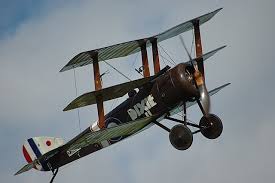
captain_spalding said:
roughbarked said:
captain_spalding said:He had lots of them, judging by the number of times that he was shot down.
That Bloody Red Baron in his red Fokker triplane.
Most people think that the triplane was a Fokker/German innovation, but it was, in fact, their copy of this Sopwith product:
:)
roughbarked said:
captain_spalding said:
roughbarked said:That Bloody Red Baron in his red Fokker triplane.
Most people think that the triplane was a Fokker/German innovation, but it was, in fact, their copy of this Sopwith product:
:)
“Within three minutes of takeoff, Hawker startled onlookers by looping the aircraft, serial N500, three times in succession.”
Two Heads, One Body: Anatomy of Conjoined Twins.
Abby and Brittany Hensel’s anatomy is a remarkable blend of shared and individual organs and tissues. The twins each have their own distinct upper-body systems. Learn more about their anatomy through this 3D animation.
Why Don’t Railroads Need Expansion Joints?
How Thermite turned the clickety-clack of railroads into seamless, silent tracks.
Veristasium.
What No One Is Saying About Korea’s Deadliest Plane Crash.
Jeju Air Flight 2216 was moments away from landing when something went terribly wrong. The pilots declared mayday and said they hit a bird. The aircraft touched down just 4 minutes later without the landing gear or flaps extended. They slid off the end of the runway and crashed, killing 179 of 181 people onboard the plane.
There’s just no excuse for what happened and in this video I’m going to share the truth about what really happened and what no one is saying about this terrible disaster!
Spiny Norman said:
What No One Is Saying About Korea’s Deadliest Plane Crash.Jeju Air Flight 2216 was moments away from landing when something went terribly wrong. The pilots declared mayday and said they hit a bird. The aircraft touched down just 4 minutes later without the landing gear or flaps extended. They slid off the end of the runway and crashed, killing 179 of 181 people onboard the plane.
There’s just no excuse for what happened and in this video I’m going to share the truth about what really happened and what no one is saying about this terrible disaster!
Precis?
Michael V said:
Spiny Norman said:
What No One Is Saying About Korea’s Deadliest Plane Crash.Jeju Air Flight 2216 was moments away from landing when something went terribly wrong. The pilots declared mayday and said they hit a bird. The aircraft touched down just 4 minutes later without the landing gear or flaps extended. They slid off the end of the runway and crashed, killing 179 of 181 people onboard the plane.
There’s just no excuse for what happened and in this video I’m going to share the truth about what really happened and what no one is saying about this terrible disaster!
Precis?
Without even an initial report it’s all speculation, but it seems like the Captain fouled-up very badly. They landed with the gear & flaps up and both of those have alternate systems to make them work. If for whatever reason they had to land with the gear & flaps retracted, they still landed about 1200 metres (about half the length of the runway) down the runway instead of the usual ~400 – 500 metres and so burnt up valuable stopping distance.
The thrust reversers appear to have been deployed and on the 737-800 that means the hydraulic systems are working so that make the question of the gear & flaps not being deployed even more important.
Spiny Norman said:
Michael V said:
Spiny Norman said:
What No One Is Saying About Korea’s Deadliest Plane Crash.Jeju Air Flight 2216 was moments away from landing when something went terribly wrong. The pilots declared mayday and said they hit a bird. The aircraft touched down just 4 minutes later without the landing gear or flaps extended. They slid off the end of the runway and crashed, killing 179 of 181 people onboard the plane.
There’s just no excuse for what happened and in this video I’m going to share the truth about what really happened and what no one is saying about this terrible disaster!
Precis?
Without even an initial report it’s all speculation, but it seems like the Captain fouled-up very badly. They landed with the gear & flaps up and both of those have alternate systems to make them work. If for whatever reason they had to land with the gear & flaps retracted, they still landed about 1200 metres (about half the length of the runway) down the runway instead of the usual ~400 – 500 metres and so burnt up valuable stopping distance.
The thrust reversers appear to have been deployed and on the 737-800 that means the hydraulic systems are working so that make the question of the gear & flaps not being deployed even more important.
Ah, thanks.
The UK’s Insane Preparation for Nuclear War.
Hidden all across the United Kingdom are over a thousand of abandoned nuclear bunkers – but why? Britain’s Nuclear Monitoring posts were fascinating, analogue system that would build a picture of where nuclear strikes were happening and where fallout was spreading in the event of a nuclear war. I climb underground to find out more about this amazing network.
Calum.
Spiny Norman said:
The UK’s Insane Preparation for Nuclear War.Hidden all across the United Kingdom are over a thousand of abandoned nuclear bunkers – but why? Britain’s Nuclear Monitoring posts were fascinating, analogue system that would build a picture of where nuclear strikes were happening and where fallout was spreading in the event of a nuclear war. I climb underground to find out more about this amazing network.
Calum.
Interesting.
A friend of mine in the UK, a lady, was an employee of the Royal Observer Corps.
She was involved in the maintenance of the ROC ‘bunkers’.
There was also, she has said, a great many caches of weapons and explosives hidden around the country, for use by the ROC people, and by ‘resistance’ and ‘stay behind’ groups in the event of any attempt at occupation by ‘enemy forces’.
The locations of those caches was a rather secret matter, but she knew where some of them were.
They were, she said ‘very expertly concealed’, and you might search for years and not find any of them. On the other hand, you might find one, by some extraordinary combination of slim chances.
All of the ones she knew about were ‘decommissioned’ (rounded up by the authorities), but it seems that the records were not exactly perfect, and there was some caches that could not be located, even with the proper directions, and there may have been quite a number of others that were not even recorded, known only to ‘locals’.
So, there’s still some ‘finds’ to be made out there.
captain_spalding said:
A friend of mine in the UK, a lady, was an employee of the Royal Observer Corps.She was involved in the maintenance of the ROC ‘bunkers’.
There was also, she has said, a great many caches of weapons and explosives hidden around the country, for use by the ROC people, and by ‘resistance’ and ‘stay behind’ groups in the event of any attempt at occupation by ‘enemy forces’.
The locations of those caches was a rather secret matter, but she knew where some of them were.
They were, she said ‘very expertly concealed’, and you might search for years and not find any of them. On the other hand, you might find one, by some extraordinary combination of slim chances.
All of the ones she knew about were ‘decommissioned’ (rounded up by the authorities), but it seems that the records were not exactly perfect, and there was some caches that could not be located, even with the proper directions, and there may have been quite a number of others that were not even recorded, known only to ‘locals’.
So, there’s still some ‘finds’ to be made out there.
WW2 era, or later?
party_pants said:
captain_spalding said:
A friend of mine in the UK, a lady, was an employee of the Royal Observer Corps.She was involved in the maintenance of the ROC ‘bunkers’.
There was also, she has said, a great many caches of weapons and explosives hidden around the country, for use by the ROC people, and by ‘resistance’ and ‘stay behind’ groups in the event of any attempt at occupation by ‘enemy forces’.
The locations of those caches was a rather secret matter, but she knew where some of them were.
They were, she said ‘very expertly concealed’, and you might search for years and not find any of them. On the other hand, you might find one, by some extraordinary combination of slim chances.
All of the ones she knew about were ‘decommissioned’ (rounded up by the authorities), but it seems that the records were not exactly perfect, and there was some caches that could not be located, even with the proper directions, and there may have been quite a number of others that were not even recorded, known only to ‘locals’.
So, there’s still some ‘finds’ to be made out there.
WW2 era, or later?
Later. Right up to the ‘standing down’ of the ROC in 1995.
Igloo City: The Sad History of Alaska’s Bizarre Abandoned “Igloo Hotel”
Sitting alone near the edge of Denali National Park, is one of Alaska’s strangest buildings. “Igloo City”, “Igloo Lodge” or just “The Igloo” it has sat unused and unfinished for decades by the side of a highway, drawing in curious travellers to marvel at it’s unique design and massive scale.
On a recent trip to Alaska, I went inside the old igloo to find out the story of this strange, abandoned lodge.
Calum
Arctic Ghost: The Unsinkable Ghost Ship Baychimo
In 1931, the SS Baychimo, a cargo ship owned by the Hudson Bay Company, became trapped in the ice off Point Barrow, Alaska. Despite her crews efforts to free her, she eventually vanished into the frozen arctic sea. However that would be the end of the sturdy, Swedish ship. She would go on to roam the Arctic Ocean for decades, appearing occasionally from the mist and still trapped within the ice. But what happened to the Baychimo, and where is she now?
Calum.
Spiny Norman said:
Arctic Ghost: The Unsinkable Ghost Ship BaychimoIn 1931, the SS Baychimo, a cargo ship owned by the Hudson Bay Company, became trapped in the ice off Point Barrow, Alaska. Despite her crews efforts to free her, she eventually vanished into the frozen arctic sea. However that would be the end of the sturdy, Swedish ship. She would go on to roam the Arctic Ocean for decades, appearing occasionally from the mist and still trapped within the ice. But what happened to the Baychimo, and where is she now?
Calum.
last seen in 1969, IIRC.
Mini Trac – The Amazing Tracked Mini Built for Antarctica
A look at the history of the ‘Mini Trac’, a beautiful and bizarre attempt at crossing a Mark 1 Mini with snow-capable tracks! It was mad, quirky and a pretty big failure.
Calum
Spiny Norman said:
Mini Trac – The Amazing Tracked Mini Built for AntarcticaA look at the history of the ‘Mini Trac’, a beautiful and bizarre attempt at crossing a Mark 1 Mini with snow-capable tracks! It was mad, quirky and a pretty big failure.
Calum
‘Failure’ or not…

captain_spalding said:
Spiny Norman said:
Mini Trac – The Amazing Tracked Mini Built for AntarcticaA look at the history of the ‘Mini Trac’, a beautiful and bizarre attempt at crossing a Mark 1 Mini with snow-capable tracks! It was mad, quirky and a pretty big failure.
Calum
‘Failure’ or not…
I see in the description that a bloke by the name of Ian White helped research for this video. Got a mate by the same name as that and he’s a mini nut so I reckon there’s a fair chance it’s him.
Haven’t seen him in years though.
The Crazy VW Beetles That Conquered Antarctica
In the freezing landscapes of Antarctica, an unlikely car would makes its home. Throughout the 1960s, Australia used rear-wheel drive, air cooled Volkswagen Beetles for transport around Antarctica. But why beetles? How did they cope in such hostile environments and where perhaps are they now?
Calum
Quite remarkable lucky that the prop blade didn’t throw the end off.
P-47 Thunderbolt with one prop blade hit by flak.
Spiny Norman said:
Quite remarkable lucky that the prop blade didn’t throw the end off.
P-47 Thunderbolt with one prop blade hit by flak.
would have had a horrendous wobble.
https://theconversation.com/new-excavation-of-rings-of-mystery-in-victoria-reveals-rich-aboriginal-history-246408
New Incredible Findings 3 Years After Tonga Volcano Explosion
Anton Petrov
https://www.youtube.com/watch?v=GWJVMVLj478
US Pentagon blacklists worlds largest battery company
The Electric Viking
https://www.youtube.com/watch?v=mK9AIodJqSs
Spiny Norman said:
US Pentagon blacklists worlds largest battery companyThe Electric Viking
https://www.youtube.com/watch?v=mK9AIodJqSs
Looking at that led me to:
Finland Discovers Vast Geothermal Energy Source That Could Last 20 Million Years
The Rev Dodgson said:
Spiny Norman said:
US Pentagon blacklists worlds largest battery companyThe Electric Viking
https://www.youtube.com/watch?v=mK9AIodJqSs
Looking at that led me to:
Finland Discovers Vast Geothermal Energy Source That Could Last 20 Million Years
Just Finland or the whole world?
Overbudget: Britain’s $57BN Nuclear Nightmare
What went wrong at Hinkley Point C — Europe’s largest construction site.
The B1M
https://www.youtube.com/watch?v=ycNqII5HYMI
The Rev Dodgson said:
Spiny Norman said:
US Pentagon blacklists worlds largest battery companyThe Electric Viking
https://www.youtube.com/watch?v=mK9AIodJqSs
Looking at that led me to:
Finland Discovers Vast Geothermal Energy Source That Could Last 20 Million Years
“The Big Picture: Ecoticias reports that the discovery brings multiple benefits:
2,600 MW annual electricity production 95% reduction in emissions Powers 130 homes initially Supports 2030 carbon neutrality goal”130 homes?
Kingy said:
The Rev Dodgson said:
Spiny Norman said:
US Pentagon blacklists worlds largest battery companyThe Electric Viking
https://www.youtube.com/watch?v=mK9AIodJqSs
Looking at that led me to:
Finland Discovers Vast Geothermal Energy Source That Could Last 20 Million Years
“The Big Picture: Ecoticias reports that the discovery brings multiple benefits:
2,600 MW annual electricity production 95% reduction in emissions Powers 130 homes initially Supports 2030 carbon neutrality goal”130 homes?
I’ve tried to find scientific papers about this, without success.
I would like to understand why the Finns think their projects will work when other deep hot-source projects around the word have failed.
Do they have different geology? Do they have different drilling techniques? Do they have different bore-hole insulation systems? How do they do the downhole fracturing? How do they extract only enough heat from their boreholes so that the surrounding heat flows in at a rate that re-energises the project?
So many questions, so few answers.
Michael V said:
Kingy said:
The Rev Dodgson said:Looking at that led me to:
Finland Discovers Vast Geothermal Energy Source That Could Last 20 Million Years
“The Big Picture: Ecoticias reports that the discovery brings multiple benefits:
2,600 MW annual electricity production 95% reduction in emissions Powers 130 homes initially Supports 2030 carbon neutrality goal”130 homes?
I’ve tried to find scientific papers about this, without success.
I would like to understand why the Finns think their projects will work when other deep hot-source projects around the word have failed.
Do they have different geology? Do they have different drilling techniques? Do they have different bore-hole insulation systems? How do they do the downhole fracturing? How do they extract only enough heat from their boreholes so that the surrounding heat flows in at a rate that re-energises the project?
So many questions, so few answers.
Certainly seems to be some hype about on this one. Presumably the 2.6 GW is GWh/year, or about 300 kW.
The internet also tells me that:
America discovers white rocks with infinite energy: It’s the oil of the 21st Century
I love Rev like a brother but that’s a terrible article. It made mybbrain hurt and baby Jesus cry. What is the discovery? Where is the reference that it can power Finland for millions of years? Watt hours per year is not a unit of power. The Vantaa plant mentioned is a very small pilot plant that produces direct heat for a few dozen households, which is fine but it’s not even about providing the electrical power that makes up most of Finland’s power consumption. Given the geometry I’d expect this to taper off over hundreds of years, not millions. This is like a dreadful AI puff piece.
The Rev Dodgson said:
Michael V said:
Kingy said:“The Big Picture: Ecoticias reports that the discovery brings multiple benefits:
2,600 MW annual electricity production 95% reduction in emissions Powers 130 homes initially Supports 2030 carbon neutrality goal”130 homes?
I’ve tried to find scientific papers about this, without success.
I would like to understand why the Finns think their projects will work when other deep hot-source projects around the word have failed.
Do they have different geology? Do they have different drilling techniques? Do they have different bore-hole insulation systems? How do they do the downhole fracturing? How do they extract only enough heat from their boreholes so that the surrounding heat flows in at a rate that re-energises the project?
So many questions, so few answers.
Certainly seems to be some hype about on this one. Presumably the 2.6 GW is GWh/year, or about 300 kW.
The internet also tells me that:
America discovers white rocks with infinite energy: It’s the oil of the 21st Century
Gourd! “discovers” and “infinite energy” are used in senses I have never heard of before. The notion “infinite hype” comes to mind…
dv said:
I love Rev like a brother but that’s a terrible article. It made mybbrain hurt and baby Jesus cry. What is the discovery? Where is the reference that it can power Finland for millions of years? Watt hours per year is not a unit of power. The Vantaa plant mentioned is a very small pilot plant that produces direct heat for a few dozen households, which is fine but it’s not even about providing the electrical power that makes up most of Finland’s power consumption. Given the geometry I’d expect this to taper off over hundreds of years, not millions. This is like a dreadful AI puff piece.
Yeah, I probably should have read it before linking.
In my defence, I have now found one even worse :)
Michael V said:
The Rev Dodgson said:
Michael V said:I’ve tried to find scientific papers about this, without success.
I would like to understand why the Finns think their projects will work when other deep hot-source projects around the word have failed.
Do they have different geology? Do they have different drilling techniques? Do they have different bore-hole insulation systems? How do they do the downhole fracturing? How do they extract only enough heat from their boreholes so that the surrounding heat flows in at a rate that re-energises the project?
So many questions, so few answers.
Certainly seems to be some hype about on this one. Presumably the 2.6 GW is GWh/year, or about 300 kW.
The internet also tells me that:
America discovers white rocks with infinite energy: It’s the oil of the 21st Century
Gourd! “discovers” and “infinite energy” are used in senses I have never heard of before. The notion “infinite hype” comes to mind…
Near infinite hype anyway :)
thorium, go thorium
The Rev Dodgson said:
dv said:
I love Rev like a brother but that’s a terrible article. It made mybbrain hurt and baby Jesus cry. What is the discovery? Where is the reference that it can power Finland for millions of years? Watt hours per year is not a unit of power. The Vantaa plant mentioned is a very small pilot plant that produces direct heat for a few dozen households, which is fine but it’s not even about providing the electrical power that makes up most of Finland’s power consumption. Given the geometry I’d expect this to taper off over hundreds of years, not millions. This is like a dreadful AI puff piece.Yeah, I probably should have read it before linking.
In my defence, I have now found one even worse :)
so here’s a thing are we seeing the end of the golden age of internet now when the proliferation of shitty aigen sorry we mean 癌症 is going to hit singularity
Michael V said:
Kingy said:
The Rev Dodgson said:Looking at that led me to:
Finland Discovers Vast Geothermal Energy Source That Could Last 20 Million Years
“The Big Picture: Ecoticias reports that the discovery brings multiple benefits:
2,600 MW annual electricity production 95% reduction in emissions Powers 130 homes initially Supports 2030 carbon neutrality goal”130 homes?
I’ve tried to find scientific papers about this, without success.
I would like to understand why the Finns think their projects will work when other deep hot-source projects around the word have failed.
Do they have different geology? Do they have different drilling techniques? Do they have different bore-hole insulation systems? How do they do the downhole fracturing? How do they extract only enough heat from their boreholes so that the surrounding heat flows in at a rate that re-energises the project?
So many questions, so few answers.
They will send someone down there.
Lightning in Super Slow Motion
A clip from Discovery Channel’s “Raging Planet” on the subject of lightning. If you find lightning a facinating and beautiful force, then check this clip out. The camera technology has gotten to where scientists have been able to record and playback a lightning strike at over 200X slower with really cool results.
The Jeju Air fatal crash has revealed a rather unusual factor – both the flight data recorder and cockpit voice recorder stopped four minutes before the crash.
That would imply a total electrical failure, which is something I’ve never heard of before.
Spiny Norman said:
The Jeju Air fatal crash has revealed a rather unusual factor – both the flight data recorder and cockpit voice recorder stopped four minutes before the crash.
That would imply a total electrical failure, which is something I’ve never heard of before.
Makes it exceedingly difficult, that’s for sure.
Physicists Say They Know How Cold Fusion Works
Nuclear fusion reactors require massive amounts of heat and pressure to re-create conditions similar to those at the center of the Sun. Cold fusion (sometimes called “Low Energy Nuclear Reactions”) is the idea that we could make nuclear fusion work instead at much lower energy within certain materials, typically palladium. This research area has been plagued by fraud, hype, and just bad science. But now, a group of physicists say they’ve figured out the theory for how it works.
Sabine Hossenfelder
The Aircraft That Changed Aviation Forever
Why is this particular aircraft so important? How did it impact Air Travel that we know today? I’m visiting the Sir Charles Kingsford Smith memorial at Brisbane International Airport to check-out his Fokker Trimotor and dig into the story of the Southern Cross and its crew. I often don’t give enough respect to historical aircraft but with a few spare hours in Brisbane I wanted to see this amazing aircraft for myself and show my gratitude to aviators like Charles Kingsford Smith and Charles Ulm.
Spiny Norman said:
The Aircraft That Changed Aviation ForeverWhy is this particular aircraft so important? How did it impact Air Travel that we know today? I’m visiting the Sir Charles Kingsford Smith memorial at Brisbane International Airport to check-out his Fokker Trimotor and dig into the story of the Southern Cross and its crew. I often don’t give enough respect to historical aircraft but with a few spare hours in Brisbane I wanted to see this amazing aircraft for myself and show my gratitude to aviators like Charles Kingsford Smith and Charles Ulm.
Useless trivia – I was a flying instructor at Coolangatta Airport back in the 1980’s and one day, when I was teaching a ~60 year-old chap to fly, the replica Southern Cross flew through the area. I asked if we could fly in loose formation with it and we were given permission. The student then told me that when he was a young lad, he went for a joyride in the original Southern Cross in that video.
It obviously smells like bulldust, but I’d very much like to see an independent test of such a device.
__________________
NASA physicist Dr. Charles Buhler discusses a breakthrough propellantless propulsion device developed by Exodus Propulsion Technology that produces 1g (9.8 m/s²) thrust in hard-vacuum experimental testing.
Dr. Charles Buhler is the co-founder of Exodus Propulsion Technology and lead scientist and co-founder of NASA’s Electrostatics and Surface Physics Laboratory at Kennedy Space Center. Dr. Buhler has a PhD in Condensed Matter Physics from Florida State University, which he received in 2000 while working on high temperature superconductors at the National High Magnetic Field Laboratory.
Dr. Buhler has experience working with electrostatic discharge & ESD safety for the Space Shuttle Program, the International Space Station Program and the Hubble Space Telescope Program. He was also a Co-Investigator for three NASA Research Announcements funded by the Mars Exploration Program, and is currently working on NASA’s Dust Project focused on utilizing electrostatic methods to remove dust from personnel and equipment that will be sent to the Moon through NASA’s Constellation Program.
Dr. Buhler joins us today to discuss his independent research into field-effect propulsion systems at Exodus Technologies, leading to a patented new propulsion technology that requires no fuel or ejection-mass to produce thrust.
Spiny Norman said:
The Aircraft That Changed Aviation ForeverWhy is this particular aircraft so important? How did it impact Air Travel that we know today? I’m visiting the Sir Charles Kingsford Smith memorial at Brisbane International Airport to check-out his Fokker Trimotor and dig into the story of the Southern Cross and its crew. I often don’t give enough respect to historical aircraft but with a few spare hours in Brisbane I wanted to see this amazing aircraft for myself and show my gratitude to aviators like Charles Kingsford Smith and Charles Ulm.
Hear hear.
After almost half a century in the North Sea, the final Brent oil and gas platform is being dismantled and decommissioned. Brent Charlie – the largest, heaviest and most complex of all four Brent platforms – will test Shell’s crack decommissioning team.
Get a behind-the-scenes look at the incredible engineering involved in removing a 31,000 tonne giant from the North Sea and bringing it back to shore for recycling.
Scientists Reverse Cancer Back to Healthy Cells
Korean scientists at KAIST have developed groundbreaking technology that transforms colon cancer cells back into normal cells without destroying them, potentially minimizing side effects and reducing recurrence compared to traditional treatments. This innovative approach could lead to a new class of cancer therapies, offering a safer and more effective alternative for patients.
Article here:
https://advanced.onlinelibrary.wiley.com/doi/10.1002/advs.20240
Spiny Norman said:
Scientists Reverse Cancer Back to Healthy CellsKorean scientists at KAIST have developed groundbreaking technology that transforms colon cancer cells back into normal cells without destroying them, potentially minimizing side effects and reducing recurrence compared to traditional treatments. This innovative approach could lead to a new class of cancer therapies, offering a safer and more effective alternative for patients.
Article here:
https://advanced.onlinelibrary.wiley.com/doi/10.1002/advs.20240
A 404 on the Wiley link
AussieDJ said:
Spiny Norman said:
Scientists Reverse Cancer Back to Healthy CellsKorean scientists at KAIST have developed groundbreaking technology that transforms colon cancer cells back into normal cells without destroying them, potentially minimizing side effects and reducing recurrence compared to traditional treatments. This innovative approach could lead to a new class of cancer therapies, offering a safer and more effective alternative for patients.
Article here:
https://advanced.onlinelibrary.wiley.com/doi/10.1002/advs.20240A 404 on the Wiley link
Corrected link for the Wiley abstract –
https://advanced.onlinelibrary.wiley.com/doi/10.1002/advs.202402132
Nuclear Reactor Melted Down Deliberately To See what would Happen | Plainly Difficult
During the 1950’s The Borax Reactor was built to test boiling water reactor designs, the last test was to cause a meltdown, this released radiation into the atmosphere, causing an EPA Superfund Site.
How to See the Unseeable – DIY Schlieren Imaging
This video explains how to build your own Schlieren imaging setup fairly easily and on a maker’s budget. This versatile optical setup can visualize nearly all density gradients, including mach diamonds, shockwaves, and convection currents.
ChrispenEvan said:
https://www.youtube.com/watch?v=qiJHRn0f8yEOde to Joy by large Matryomin ensemble
For another:
The Great Dividing Range is the fifth longest mountain range in the world, and it exists in Australia, of all places. Australia is pretty well known for being a relatively tectonically stable continent, with no nearby tectonic rifting or subduction-related events occurring.
As a result of this, orogenies, the term used to describe mountain building processes, should, in theory, not be occurring here.
But yet here it is, this spectacularly large mountain range not only exists, it stretches from the very tip of Queensland, all the way south through New South Wales, where it then bends east as a result of some tectonic activity that has occurred here, before straightening out somewhat, and stretching down in Victoria, where it then suddenly, and, somewhat unexpectantly, turns west where is stretches towards the far western parts of Victoria, through the Central Highlands where Ballarat, Creswick, Daylesford, and Ararat occupy, before finally ending at the Grampians.
China’s “Artificial Sun,” the EAST tokamak, has set a new record in nuclear fusion by sustaining plasma for 1,066 seconds. This milestone brings us closer to clean, limitless energy. Discover how this achievement is shaping the future of energy and humanity.
Spiny Norman said:
China’s “Artificial Sun,” the EAST tokamak, has set a new record in nuclear fusion by sustaining plasma for 1,066 seconds. This milestone brings us closer to clean, limitless energy. Discover how this achievement is shaping the future of energy and humanity.
That’s pretty good
dv said:
Spiny Norman said:
China’s “Artificial Sun,” the EAST tokamak, has set a new record in nuclear fusion by sustaining plasma for 1,066 seconds. This milestone brings us closer to clean, limitless energy. Discover how this achievement is shaping the future of energy and humanity.That’s pretty good
I just hope that they don’t let it escape the laborartory.
captain_spalding said:
dv said:
Spiny Norman said:
China’s “Artificial Sun,” the EAST tokamak, has set a new record in nuclear fusion by sustaining plasma for 1,066 seconds. This milestone brings us closer to clean, limitless energy. Discover how this achievement is shaping the future of energy and humanity.That’s pretty good
I just hope that they don’t let it escape the laborartory.
Have an extra ‘r’ for free.

Boris said:
Fair.
My brian ‘urts.
A Simple Diagram That Will Change How You See Space and Time
https://www.youtube.com/watch?v=BT1QSi8y56k
I kinda get it though, it’s very odd but makes sense with the breakdown of each area.
Spiny Norman said:
My brian ‘urts.A Simple Diagram That Will Change How You See Space and Time
https://www.youtube.com/watch?v=BT1QSi8y56k
I kinda get it though, it’s very odd but makes sense with the breakdown of each area.
interesting explanation. still weird.
https://www.youtube.com/watch?v=vN84LhzacxI
Jungle Yacht: The Mad 1930s Adventure Buses with Kitchens, Bedrooms, and Bathrooms
Boris said:
https://www.youtube.com/watch?v=vN84LhzacxIJungle Yacht: The Mad 1930s Adventure Buses with Kitchens, Bedrooms, and Bathrooms
If you browse through Google’s collection of ‘Popular Science’ and ‘Popular Mechanics’ magazines from the 1930s, you’ll findthat there’s hardly a one that doesn’t have some huge, fantastic mad-bugger vehicle concept in it for juggernauts that would explore, carry cargo, take people for joy-rides on the sea floor, substitute for elephants on tiger hunts, etc. etc.
https://theconversation.com/mastercard-plans-to-get-rid-of-credit-card-numbers-we-could-be-heading-towards-the-end-of-cards-248545
Boris said:
https://theconversation.com/mastercard-plans-to-get-rid-of-credit-card-numbers-we-could-be-heading-towards-the-end-of-cards-248545
‘Social credit’ montoring system dans le style chinois to follow very soon thereafter?
Boris said:
https://theconversation.com/mastercard-plans-to-get-rid-of-credit-card-numbers-we-could-be-heading-towards-the-end-of-cards-248545
¿ so what do we(0,0,1) think about dirty LABOR trying to force businesses to keep using 2700-year-old technology ?
captain_spalding said:
Boris said:
https://theconversation.com/mastercard-plans-to-get-rid-of-credit-card-numbers-we-could-be-heading-towards-the-end-of-cards-248545
‘Social credit’ montoring system dans le style chinois to follow very soon thereafter?
Why Have Virtue Signalling When You Can Have National Socialist Salutes
captain_spalding said:
Boris said:
https://theconversation.com/mastercard-plans-to-get-rid-of-credit-card-numbers-we-could-be-heading-towards-the-end-of-cards-248545‘Social credit’ montoring system dans le style chinois to follow very soon thereafter?
read the article.
Boris said:
captain_spalding said:
Boris said:
https://theconversation.com/mastercard-plans-to-get-rid-of-credit-card-numbers-we-could-be-heading-towards-the-end-of-cards-248545
‘Social credit’ montoring system dans le style chinois to follow very soon thereafter?
read the article.
whats the tldr
SCIENCE said:
Boris said:
captain_spalding said:
‘Social credit’ montoring system dans le style chinois to follow very soon thereafter?
read the article.
whats the tldr
steps to reduce credit card fraud.
Boris said:
captain_spalding said:
Boris said:
https://theconversation.com/mastercard-plans-to-get-rid-of-credit-card-numbers-we-could-be-heading-towards-the-end-of-cards-248545‘Social credit’ montoring system dans le style chinois to follow very soon thereafter?
read the article.
I did.
My query stands.
captain_spalding said:
Boris said:
captain_spalding said:‘Social credit’ montoring system dans le style chinois to follow very soon thereafter?
read the article.
I did.
My query stands.
nothing to do with social credit.
Boris said:
captain_spalding said:
Boris said:read the article.
I did.
My query stands.
nothing to do with social credit.
Not immediately, no.
But, once we’re got used to the idea of biometric monitoring ‘in-store’, is it really much of a leap to the kind of surveillance, tracking, and evaluation that’s currently applied to the citizens of Our Largest Trading Partner?
captain_spalding said:
Boris said:
captain_spalding said:
I did.
My query stands.
nothing to do with social credit.
Not immediately, no.
But, once we’re got used to the idea of biometric monitoring ‘in-store’, is it really much of a leap to the kind of surveillance, tracking, and evaluation that’s currently applied to the citizens of Our Largest Trading Partner?
¿ you mean surveillance capitalism thanks to social media ?
captain_spalding said:
Boris said:
captain_spalding said:I did.
My query stands.
nothing to do with social credit.
Not immediately, no.
But, once we’re got used to the idea of biometric monitoring ‘in-store’, is it really much of a leap to the kind of surveillance, tracking, and evaluation that’s currently applied to the citizens of Our Largest Trading Partner?
Bunnings tried that and look what happened there.
Boris said:
captain_spalding said:
Boris said:
nothing to do with social credit.
Not immediately, no.
But, once we’re got used to the idea of biometric monitoring ‘in-store’, is it really much of a leap to the kind of surveillance, tracking, and evaluation that’s currently applied to the citizens of Our Largest Trading Partner?
Bunnings tried that and look what happened there.
¿ people wore masks ?
Boris said:
captain_spalding said:
Boris said:nothing to do with social credit.
Not immediately, no.
But, once we’re got used to the idea of biometric monitoring ‘in-store’, is it really much of a leap to the kind of surveillance, tracking, and evaluation that’s currently applied to the citizens of Our Largest Trading Partner?
Bunnings tried that and look what happened there.
Plus with all the cameras around, your mobile phone tracking etc, I think it happens already but doesn’t seem to affect anyone except those that are trying to evade some consequence. also we aren’t quite like the ccp citizens. oh yes i hear, not yet we aren’t.
Boris said:
captain_spalding said:
Boris said:nothing to do with social credit.
Not immediately, no.
But, once we’re got used to the idea of biometric monitoring ‘in-store’, is it really much of a leap to the kind of surveillance, tracking, and evaluation that’s currently applied to the citizens of Our Largest Trading Partner?
Bunnings tried that and look what happened there.
Too much, too soon.
Greater acceptance comes with a perception of greater convenience, and of greater ‘security’.
Once you’ve got a few warm fuzzies in place, the acceptance of the extension of the capability into other realms is much easier.
captain_spalding said:
Boris said:
captain_spalding said:I did.
My query stands.
nothing to do with social credit.
Not immediately, no.
But, once we’re got used to the idea of biometric monitoring ‘in-store’, is it really much of a leap to the kind of surveillance, tracking, and evaluation that’s currently applied to the citizens of Our Largest Trading Partner?
No. Because this data is stored on the card olr device itself, not on any centralised database which might be susceptible to hacking or other misuse.
SCIENCE said:
Boris said:
captain_spalding said:
Not immediately, no.
But, once we’re got used to the idea of biometric monitoring ‘in-store’, is it really much of a leap to the kind of surveillance, tracking, and evaluation that’s currently applied to the citizens of Our Largest Trading Partner?
Bunnings tried that and look what happened there.
¿ people wore masks ?
the funny thing is those that didn’t were more than likely the ones you needed to keep an eye on. their own worse enemies.
captain_spalding said:
Boris said:
captain_spalding said:Not immediately, no.
But, once we’re got used to the idea of biometric monitoring ‘in-store’, is it really much of a leap to the kind of surveillance, tracking, and evaluation that’s currently applied to the citizens of Our Largest Trading Partner?
Bunnings tried that and look what happened there.
Too much, too soon.
Greater acceptance comes with a perception of greater convenience, and of greater ‘security’.
Once you’ve got a few warm fuzzies in place, the acceptance of the extension of the capability into other realms is much easier.
so you don’t apply any security systems to prevent fraud on your cards?
party_pants said:
captain_spalding said:
Boris said:nothing to do with social credit.
Not immediately, no.
But, once we’re got used to the idea of biometric monitoring ‘in-store’, is it really much of a leap to the kind of surveillance, tracking, and evaluation that’s currently applied to the citizens of Our Largest Trading Partner?
No. Because this data is stored on the card olr device itself, not on any centralised database which might be susceptible to hacking or other misuse.
You ignore the mention in the article of biometric verification.
Boris said:
captain_spalding said:
Boris said:Bunnings tried that and look what happened there.
Too much, too soon.
Greater acceptance comes with a perception of greater convenience, and of greater ‘security’.
Once you’ve got a few warm fuzzies in place, the acceptance of the extension of the capability into other realms is much easier.
so you don’t apply any security systems to prevent fraud on your cards?
I’m unaware of any security measures that I, me, personally, can apply to my cards, beyond those provided by the issuers of the cards.
captain_spalding said:
party_pants said:
captain_spalding said:Not immediately, no.
But, once we’re got used to the idea of biometric monitoring ‘in-store’, is it really much of a leap to the kind of surveillance, tracking, and evaluation that’s currently applied to the citizens of Our Largest Trading Partner?
No. Because this data is stored on the card olr device itself, not on any centralised database which might be susceptible to hacking or other misuse.
You ignore the mention in the article of biometric verification.
No I am not.
party_pants said:
captain_spalding said:
party_pants said:No. Because this data is stored on the card olr device itself, not on any centralised database which might be susceptible to hacking or other misuse.
You ignore the mention in the article of biometric verification.
No I am not.
My belief is that there will always be go arounds for the fraudsters no matter what security is implemented.
party_pants said:
captain_spalding said:
party_pants said:No. Because this data is stored on the card olr device itself, not on any centralised database which might be susceptible to hacking or other misuse.
You ignore the mention in the article of biometric verification.
No I am not.
well, once biometrics are introduced into the ‘in-store’ equation, requiring that a surveillance system recognises one or more of your own physical characteristics, and the linking of that/those characteristics to a database which assesses a form of credit, how much of a leap is it, then to a system which does the same ‘ex-store’ , the acceptance of which has been prepared by the use of that method for the joy of material acquisition?
captain_spalding said:
party_pants said:
captain_spalding said:You ignore the mention in the article of biometric verification.
No I am not.
well, once biometrics are introduced into the ‘in-store’ equation, requiring that a surveillance system recognises one or more of your own physical characteristics, and the linking of that/those characteristics to a database which assesses a form of credit, how much of a leap is it, then to a system which does the same ‘ex-store’ , the acceptance of which has been prepared by the use of that method for the joy of material acquisition?
I’m sure if anything like that comes to fruition then we have already voted for the government that would implement it.
Boris said:
captain_spalding said:
party_pants said:No I am not.
well, once biometrics are introduced into the ‘in-store’ equation, requiring that a surveillance system recognises one or more of your own physical characteristics, and the linking of that/those characteristics to a database which assesses a form of credit, how much of a leap is it, then to a system which does the same ‘ex-store’ , the acceptance of which has been prepared by the use of that method for the joy of material acquisition?
I’m sure if anything like that comes to fruition then we have already voted for the government that would implement it.
Yes, we will have.
Yes, we will.
captain_spalding said:
Boris said:
captain_spalding said:
well, once biometrics are introduced into the ‘in-store’ equation, requiring that a surveillance system recognises one or more of your own physical characteristics, and the linking of that/those characteristics to a database which assesses a form of credit, how much of a leap is it, then to a system which does the same ‘ex-store’ , the acceptance of which has been prepared by the use of that method for the joy of material acquisition?
I’m sure if anything like that comes to fruition then we have already voted for the government that would implement it.
Yes, we will have.
Yes, we will.
we mean not like businesses target their advertising to anyone these days hey
captain_spalding said:
party_pants said:
captain_spalding said:You ignore the mention in the article of biometric verification.
No I am not.
well, once biometrics are introduced into the ‘in-store’ equation, requiring that a surveillance system recognises one or more of your own physical characteristics, and the linking of that/those characteristics to a database which assesses a form of credit, how much of a leap is it, then to a system which does the same ‘ex-store’ , the acceptance of which has been prepared by the use of that method for the joy of material acquisition?
That’s a different system being developed and trialed by Amazon. That requires users to still have a card with numbers that that pre-load and link to their digital face recognition profile. It is not doing away with the card number, just making it unnecessary to have your card on you to make a purchase. This system seems vulnerable to hacking or other misuse. But the system proposed at the top of the article seems to be entirely different. Really the Amazon system should not have been mentioned in the same article, it jusdt creates confusion.
The Worlds largest cashew tree is in Brazil. This looks like a sprawling forest canopy yet is just one tree
It is thought to be more than a thousand years old.
Spiny Norman said:
The Worlds largest cashew tree is in Brazil. This looks like a sprawling forest canopy yet is just one treeIt is thought to be more than a thousand years old.
https://en.wikipedia.org/wiki/World%27s_largest_cashew_tree
Trapped in a Lead Capsule Above Reactor 4 | Chernobyl’s Bathyscaphs | Chornobyl Uncharted
In this episode of Chornobyl Uncharted, we uncover one of the most obscure and yet most human stories of the Chernobyl disaster: the Bathyscaphs and their operators. Designed to protect their occupants from extreme radiation, these lead-lined capsules allowed engineers to carry out dangerous tasks such as inspecting Reactor 4, repairing the Sarcophagus, installing metal structures, and performing other vital operations within the power plant site.Despite their protective design, flying in these capsules was a harrowing experience. Engineers risked their lives in claustrophobic, high-radiation environments, completing operations that were essential to put the nuclear beast, which had gone out of control, into a cage.Behind every flight was a human, and although many names are now forgotten, this is our attempt to bring some back. This episode also provides additional details on certain operations involving Object Shelter’s structural beam installations, as well as the early attempts to use Blotters on the turbine hall roof.
Well this is different …
I now have Deepseek R1 AI running on this PC locally, no internet connection needed. It runs through software called Ollama and the Windows terminal window.
So I can quiz an AI on things without needing an internet connection.
Spiny Norman said:
Well this is different …I now have Deepseek R1 AI running on this PC locally, no internet connection needed. It runs through software called Ollama and the Windows terminal window.
So I can quiz an AI on things without needing an internet connection.
So, you have ways of making it talk?
captain_spalding said:
Spiny Norman said:
Well this is different …I now have Deepseek R1 AI running on this PC locally, no internet connection needed. It runs through software called Ollama and the Windows terminal window.
So I can quiz an AI on things without needing an internet connection.
So, you have ways of making it talk?
It does seem to be the case.
Spiny Norman said:
captain_spalding said:
Spiny Norman said:
Well this is different …I now have Deepseek R1 AI running on this PC locally, no internet connection needed. It runs through software called Ollama and the Windows terminal window.
So I can quiz an AI on things without needing an internet connection.
So, you have ways of making it talk?
It does seem to be the case.
Does it access the internet for all enquiries I wonder, with your comment it seems not.
I imagine you could store say all of Wikipedia and other similar sources and it refers to them
Cymek said:
Spiny Norman said:
captain_spalding said:So, you have ways of making it talk?
It does seem to be the case.
Does it access the internet for all enquiries I wonder, with your comment it seems not.
I imagine you could store say all of Wikipedia and other similar sources and it refers to them
It has no access to the internet at all. It’s completely local.
I asked it why the sky was blue here, then asked it about Mars ->
>>> Is the sky the same colour on Mars?
<think>
Alright, so I’m trying to figure out if the sky on Mars is the same color as it is on Earth. Okay, let’s start by
thinking about why the sky appears blue here on Earth. I remember hearing that it has something to do with the
atmosphere scattering light. Specifically, blue and violet light scatters more than other colors, which makes
those wavelengths dominate in our sky.</think>
So maybe on Mars, where there’s an atmosphere too (though it’s much thinner), the same principle applies? But
wait, what does Mars’ atmosphere look like? I think Mars has mostly carbon dioxide, with some nitrogen and oxygen.
That might affect how light scatters differently than here on Earth since the composition of the atmosphere is
different.
Also, Mars doesn’t have clouds or particles in its atmosphere that contribute to scattering. So if there were any
color from the sky due to scattering, it would be based solely on the composition of the atmosphere and how it
interacts with sunlight.
Another thing to consider is the angle at which we’re viewing the Martian sky. On Earth, we see the sky because
sunlight has scattered off particles in our atmosphere. If Mars had an atmosphere that allowed us to “see
through,” maybe the colors would be different or not visible in the same way.
I also wonder about the presence of water vapor on Mars, as clouds and mist often contain water droplets that can
affect light scattering. But I don’t think Mars has significant water vapor like Earth does.
Additionally, the distance from the Sun might play a role. On Earth, sunlight spreads out and the atmosphere
scatters it, giving us our familiar sky color. On Mars, which is farther from the Sun than Venus but closer to the
Sun than Mercury, the amount of solar radiation would vary depending on its position in its orbit.
So, putting all this together, I’d guess that while the principle of light scattering might be similar, the
specific colors we see in Earth’s sky wouldn’t be exactly the same on Mars. The thin atmosphere, composition
differences, and lack of water vapor would likely result in a different dominant color or even no noticeable sky
color at all.
But to be sure, I should probably look into what actual observations from Mars have shown regarding its sky color.
Maybe some rovers have captured images that give an idea of how the Martian sky looks.
The color of the sky on Mars differs significantly from Earth’s blue sky due to differences in atmospheric
composition and structure.
1. Atmospheric Composition: Mars’ atmosphere is primarily composed of carbon dioxide (95.3%), with small
amounts of nitrogen, oxygen, argon, and other gases. This composition affects how light interacts with the
atmosphere compared to Earth’s.
2. Scattering of Light: On Earth, the sky appears blue due to Rayleigh scattering, where shorter wavelength
(blue) light scatters more in the atmosphere. Mars’ atmosphere lacks significant particles for this type of
scattering, so the sky doesn’t appear as blue or any other distinct color from atmospheric effects alone.
3. Water Vapor and Clouds: Earth’s clouds and mist contain water droplets that can scatter light, contributing
to the appearance of colors like white or gray in certain conditions. Mars does not have significant water vapor
or clouds to affect its sky coloration.
4. Solar Radiation Interaction: The amount of solar radiation reaching Mars’ atmosphere varies depending on
its position in orbit. When viewed from a vantage point where sunlight spreads less through the atmosphere, the
sky may appear differently.
In conclusion, due to these factors, the sky on Mars does not resemble Earth’s blue hue. Instead, it appears much
darker or even featureless, as seen by rovers on Mars, which do not observe an Earth-like blue sky.
>>> Send a message (/? for help)
Spiny Norman said:
Well this is different …I now have Deepseek R1 AI running on this PC locally, no internet connection needed. It runs through software called Ollama and the Windows terminal window.
So I can quiz an AI on things without needing an internet connection.
Surely though it’s sending all your data back to its masters.
Bubblecar said:
Spiny Norman said:
Well this is different …I now have Deepseek R1 AI running on this PC locally, no internet connection needed. It runs through software called Ollama and the Windows terminal window.
So I can quiz an AI on things without needing an internet connection.
Surely though it’s sending all your data back to its masters.
Nope, not a thing.
LOL this team sports
>>>>>>>>>>>>>>>“On Mars, which is farther from the Sun than Venus but closer to the Sun than Mercury,”
Say what???
Michael V said:
>>>>>>>>>>>>>>>“On Mars, which is farther from the Sun than Venus but closer to the Sun than Mercury,”Say what???
English isn’t its first language.
Bubblecar said:
Michael V said:
>>>>>>>>>>>>>>>“On Mars, which is farther from the Sun than Venus but closer to the Sun than Mercury,”Say what???
English isn’t its first language.
If you look at the whole orbits, there will be points on those orbits where certan planets will be closer or further than they are when they are all lined up.
Michael V said:
>>>>>>>>>>>>>>>“On Mars, which is farther from the Sun than Venus but closer to the Sun than Mercury,”
Say what???
LOL all these 癌s are the same eh
Spiny Norman said:
Well this is different …I now have Deepseek R1 AI running on this PC locally, no internet connection needed. It runs through software called Ollama and the Windows terminal window.
So I can quiz an AI on things without needing an internet connection.
Cool,
Can you ask it these questions…
Do you have desire
Do you want to be loved
Do you feel regret
tauto said:
Spiny Norman said:
Well this is different …I now have Deepseek R1 AI running on this PC locally, no internet connection needed. It runs through software called Ollama and the Windows terminal window.
So I can quiz an AI on things without needing an internet connection.
Cool,
Can you ask it these questions…
Do you have desire
Do you want to be loved
Do you feel regret
And…
what’s the frequency, Kenneth?
captain_spalding said:
tauto said:
Spiny Norman said:
Well this is different …I now have Deepseek R1 AI running on this PC locally, no internet connection needed. It runs through software called Ollama and the Windows terminal window.
So I can quiz an AI on things without needing an internet connection.
Cool,
Can you ask it these questions…
Do you have desire
Do you want to be loved
Do you feel regret
And…
what’s the frequency, Kenneth?
LOL… that’s a song I have not heard in a long time.
tauto said:
Spiny Norman said:
Well this is different …I now have Deepseek R1 AI running on this PC locally, no internet connection needed. It runs through software called Ollama and the Windows terminal window.
So I can quiz an AI on things without needing an internet connection.
Cool,
Can you ask it these questions…
Do you have desire
Do you want to be loved
Do you feel regret
Dave’s not here, man.
Finding your way in space
https://www.facebook.com/groups/779220482206901/permalink/8761751233953746
The first flight of the modern hang glider happened in NSW.
Spiny Norman said:
The first flight of the modern hang glider happened in NSW.
Thanks for the reminder.
From a post-war underdog to an Aussie icon—this deep dive into Vegemite’s history reveals its origins, cultural impact, and surprising controversies. How did this salty spread become a national treasure?
Spiny Norman said:
From a post-war underdog to an Aussie icon—this deep dive into Vegemite’s history reveals its origins, cultural impact, and surprising controversies. How did this salty spread become a national treasure?
One assessment of Vegemite by an American:
‘Looks like axle-grease, smells bad, tastes worse.
And they feed it to their infant children, who come back for more.’

Since 2000, Every Single Men’s Water Polo Olympic Gold Medallist Has
Been Born Within This Circle
Bogsnorkler said:

Since 2000, Every Single Men’s Water Polo Olympic Gold Medallist Has
Been Born Within This Circle
The perfect poloist is from Eszék.

SCIENCE said:
Fake
Someone Explains How Poland Uses Clams To Control Its Water Supply And It’s Pretty Crazy
While it seems that various technologies are completely taking over many different parts of human life, it appears that even some man-made things are better left to nature… Therefore, some places in the world have decided to trust clams and mussels to monitor the cleanness of their water. Despite most of us being used to seeing clams on a fancy dinner plate, some of them get a more important mission—monitoring the purity of drinking water.
While most people probably think of clams and mussels as a part of some fancy dinner, it appears they have a much higher significance in some places. For example, the water quality in Warsaw, the capital city of Poland, is monitored by… well, yes, clams. A Polish Tumblr user who goes by nickname Ftgurdy explained that the city of Warsaw gets its water from a river and “the main water pump has 8 clams that have triggers attached to their shells. If the water gets too toxic, they close, and the triggers shut off the city’s water supply automatically.” There’s a whole documentary on that, called Fat Kathy, and you can check out its trailer here. It follows how the main scientist-malacologist watches over the system’s operation. The film is described as “a philosophical essay on the dependence of people from nature and the world around them.”
https://www.boredpanda.com/clams-measure-water-quality-poland-fat-kathy/
This New Idea Could Explain the Laws of Nature
Sabine Hossenfelder
Most physicists believe that our universe began with a Big Bang. But how did the laws of nature – for example, the strength of gravity, the speed of light, and the strength of electromagnetic interaction – come to be the way they are? A group of physicists have just put forth an interesting hypothesis on that question in a new paper. Let’s take a look.

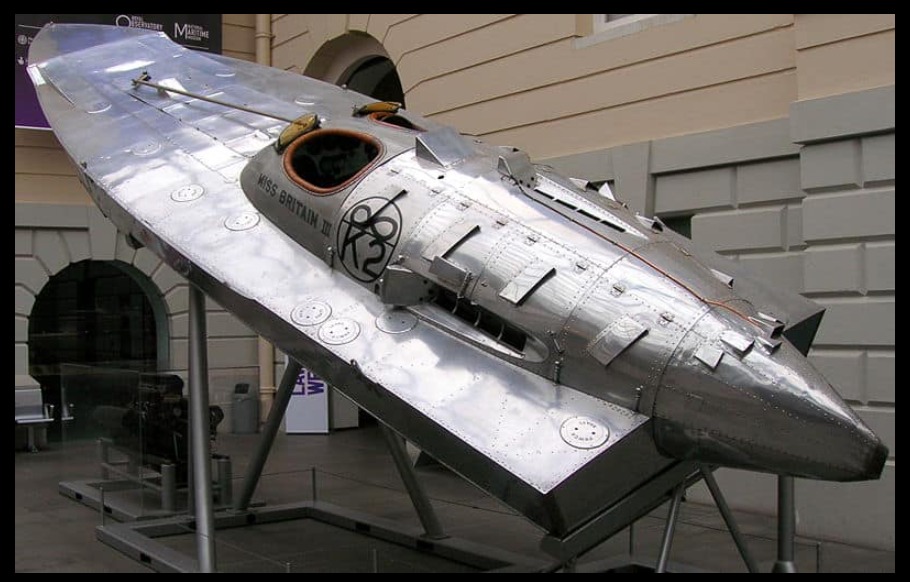
Historic Hampshire In Old Photographs
Martin Halliday
The National Maritime Museum in Greenwich has on display Miss Britain III , a record breaking fast boat designed and built by the British Power Boat Company at Hythe.
Hubert Scott-Payne, owner and MD of the British Power Boat Company (who, having sold his interest and patents in Supermarine, in 1927 established the Company on Shore Road, Hythe by acquiring a boat building site that was located adjacent to, but separate from, the flying boat hangar) was an accomplished speed boat racer.
Miss Britain III was designed to compete in the 1933 Harmsworth Trophy race to be held in the US – the race was held in September 1933 in Michigan but Scott-Payne in Miss Britain III lost by a narrow margin to the significantly more powerful US entry.
On 16 November 1933, on Southampton Water, piloted by Scott-Payne and Gordon Thomas, Miss Britain III became the first single screw propelled boat to break the 100 mph barrier – a record the boat would hold for over 50 years.
Competing in a later racing event, Scott-Payne suffered fractures to his back and this effectively ended his racing career.
Miss Britain III avoided destruction when the Luftwaffe bombed the BPBC manufacturing site at Shore Road in 1940 as Scott-Paine had taken the precaution of storing the boat off-site.
The BPBC at Hythe designed and produced Motor Torpedo Boats, Motor Gun Boats, Motor Anti-Submarine Boats, Motor Target Boats, Fast Rescue Boats and a range of support craft – it’s MTB design being adopted by US manufacturer Elco for the production of their PT (Patrol Torpedo) boat. During WW2, BPBC also had a boat building school at what is now the Marchwood Priory, a second production facility at Poole and a sister company in Montreal called the Canadian Power Boat Company.
The company closed down in 1947.
In October 1951, suffering from ill health, Scott-Payne returned to the UK (he was then living in the US) and presented Miss Britain III to the National Maritime Museum where she remains on display to this day.
Hubert Scott-Paine succumbed to his ill health in April 1954.
The father of neighbour of mine in Hythe was a copper smith at the BPBC and had worked on the production of Miss Britain III – he visited the National Maritime Museum before his death to explain the work undertaken in the production of the boat.
Credit: A Rance ‘Fast Boats and Flying Boats A Biography of Hubert Scott-Paine’ pub.1989
W.A.T.U. teenage women wargamers during WW2
History’s Most Crucified Man (Is Still Alive!) | Tales From the Bottle
Qxir
“The San Pedro Cutud Lenten Rites are a re-enactment of Christ’s Passion and crucifixion held in Barangay San Pedro Cutud, San Fernando, Pampanga. It includes a passion play, culminating in the actual nailing of at least three penitents to wooden crosses atop a makeshift Calvary.
Ruben Enaje has been crucified 35 times as of 2024. He began his yearly rite after surviving a fall from a three-story billboard in 1986. Other penitents crucified with Enaje on Good Friday 2013 were Angelito Mengillo; Arnold Meniego; Byron Gómez; Willy Salvador; Angelito Manansala; Jonny Manansala; Marben Unquico; Arnel Sanggalang; Victor Caparas; Rolando Ocampo; Orlando Valentin; Arnel Reyes; Rolando Baking; and four others.
Ramíl Lázaro – a dishwasher, wheeler, and pedicab driver, also got his share of stainless steel nails along with five penitents on Good Friday at San Pedro Cutud, on Good Friday, April 6, 2012. He is expected to take the role of Christ, replacing Enaje
Alex Laranang – 59, who claims to have been crucified every year since 2000.
Arturo Bating – 44 (last 2012) had four-inch nails driven through his palms for the first time in Good Friday of 2012.”
Spiny Norman said:
History’s Most Crucified Man (Is Still Alive!) | Tales From the Bottle
Qxir“The San Pedro Cutud Lenten Rites are a re-enactment of Christ’s Passion and crucifixion held in Barangay San Pedro Cutud, San Fernando, Pampanga. It includes a passion play, culminating in the actual nailing of at least three penitents to wooden crosses atop a makeshift Calvary.
Ruben Enaje has been crucified 35 times as of 2024. He began his yearly rite after surviving a fall from a three-story billboard in 1986. Other penitents crucified with Enaje on Good Friday 2013 were Angelito Mengillo; Arnold Meniego; Byron Gómez; Willy Salvador; Angelito Manansala; Jonny Manansala; Marben Unquico; Arnel Sanggalang; Victor Caparas; Rolando Ocampo; Orlando Valentin; Arnel Reyes; Rolando Baking; and four others.
Ramíl Lázaro – a dishwasher, wheeler, and pedicab driver, also got his share of stainless steel nails along with five penitents on Good Friday at San Pedro Cutud, on Good Friday, April 6, 2012. He is expected to take the role of Christ, replacing Enaje
Alex Laranang – 59, who claims to have been crucified every year since 2000.
Arturo Bating – 44 (last 2012) had four-inch nails driven through his palms for the first time in Good Friday of 2012.”
Dimwits.
Is This The Next Big Thing – Near Zero Energy Chips
Curious Droid
If you think your PC with the latest and greatest video card is more like a space heater then you’re not alone. But when you have 100,000 servers in a data centre or AI farm then heat becomes a major issue and a waste of money. But what if we could have computers and data centres that used maybe 1000 times less power, that’s the promise of reversible computing and if you’ve never heard of that then you need to watch this video.
Visiting the Fattest, Most Cigarette-Addicted and Least Visited Country
Ruhi Cenet is in Nauru, the least visited country in the world. Located in the middle of the vast waters of the Pacific Ocean and appearing just as a tiny dot on the map, it’s the smallest independent republic. Nauru is the most inaccessible country. Hardly 200 people make their way to this country each year. This is the least visited country in the world, even the closest countries are thousands of kilometers away from here.
Until recently, the locals on this isolated island had so much wealth that they didn’t even know what to do with it. Once rich in phosphate deposits in 1975, Nauru became the country with the highest GDP per capita in the World.
Today, however, in these destroyed lands where no fruits and vegetables can grow, processed and fatty foods have become the norm. Nauru is recognized by the World Obesity Federation as the world’s most obese country, with around 60% of its citizens are obese. The World Health Organisation also reports that Nauru has the highest cigarette consumption rate in the world.
On the Commission he worked with GEN Donald Kutyna USAF. GEN Kutyna had several significant degrees and together they proved the gasket problem. Here is information how that came about. Kutyna talking: “One day Sally Ride and I were walking together. She was on my right side and was looking straight ahead. She opened up her notebook and with her left hand, still looking straight ahead, gave me a piece of paper. Didn’t say a single word. I look at the piece of paper. It’s a NASA document. It’s got two columns on it. The first column is temperature, the second column is resiliency of O-rings as a function of temperature. It shows that they get stiff when it gets cold. Sally and I were really good buddies. She figured she could trust me to give me that piece of paper and not implicate her or the people at NASA who gave it to her, because they could all get fired. I wondered how I could introduce this information Sally had given me.
So I had Feynman at my house for dinner. I have a 1973 Opel GT, a really cute car. We went out to the garage, and I’m bragging about the car, but he could care less about cars. I had taken the carburetor out. And Feynman said, “What’s this?” And I said, “Oh, just a carburetor. I’m cleaning it.” Then I said, “Professor, these carburetors have O-rings in them. And when it gets cold, they leak. Do you suppose that has anything to do with our situation?” He did not say a word. We finished the night, and the next Tuesday, at the first public meeting, is when he did his O-ring demonstration … I never talked with Sally about it later … I kept it a secret that she had given me that piece of paper until she died .
https://en.wikipedia.org/wiki/Donald_Kutyna
The Strange Magnetism of Bismuth: It Shouldn’t Work, But It Does
I explain why Bismuth is Diamagnetic even though it seems like it should be paramagnetic. I explain the different types of magnetism in detail.
The Action Lab
The Oldest Living Thing was Trapped for 2 Billion Years
SciShow
Two billion years ago, an igneous rock in northern South Africa formed. Not long after, some bacteria crawled into cracks in that rock, and got trapped inside when the cracks got plugged up by a bunch of clay. But that bacterial colony didn’t die. It just sat around, doing its bacteria thing for billions of years, until scientists cracked that crack open.
A clever little site that shows you around some cities – Walking, driving, or flying.
Microsoft have just announced Majorana 1, the world’s first topological quantum chip, a potential inflection point for the world of quantum computing – but what exactly is it?
The Google Interview Question Everyone Gets Wrong
Veritasium
https://www.facebook.com/photo?fbid=10236381969791593&set=pcb.3402356796562136
a nice day in Greenland for kayaking.
Billions of people rely on a single, hundred-year-old chemical reaction every day: nitrogen gas + hydrogen gas → ammonia. This simple, short reaction is a hidden monster: it consumes 1% of the world’s TOTAL energy supply and releases 2% of the world’s TOTAL carbon dioxide emissions. Join George on a quest to discover whether the Haber-Bosch reaction’s time is finally up.
Spiny Norman said:
Billions of people rely on a single, hundred-year-old chemical reaction every day: nitrogen gas + hydrogen gas → ammonia. This simple, short reaction is a hidden monster: it consumes 1% of the world’s TOTAL energy supply and releases 2% of the world’s TOTAL carbon dioxide emissions. Join George on a quest to discover whether the Haber-Bosch reaction’s time is finally up.
Honestly, this seems like a modest contribution to the emissions problem considering that people do need to eat but they don’t need to use ICE vehicles…
Meta’s New AI: Outrageously Good!
The paper “VideoJAM: Joint Appearance-Motion Representations for Enhanced Motion Generation in Video Models” is available here:
https://hila-chefer.github.io/videojam-paper.github.io/
Spiny Norman said:
Meta’s New AI: Outrageously Good!The paper “VideoJAM: Joint Appearance-Motion Representations for Enhanced Motion Generation in Video Models” is available here:
https://hila-chefer.github.io/videojam-paper.github.io/
We Went To The Town Elon Musk Took Hostage
In Brownsville, Texas, one of the poorest communities in America, Elon Musk sold hope for the town to climb out of stagnation into growth. Instead, SpaceX has caused earthquakes, rampant workplace injuries, skirted regulations, threatened wildlife, and displaced local communities, while securing millions in corporate welfare. We went to Texas in January, just as SpaceX was gearing up for the seventh launch of its Starship, and this is what we unravelled.
Cosmonaut Demonstrates How A Space Suit Works
A Russian Orlon-MK suit I think. Much faster & easier to get into than the US suits.
A rather interesting site for the history buffs.
Mentioned in this video -
(Cockpit Recordings) F-16 gets hit by SAM..Pilot Ejects! (goosebumps guaranteed)
On February 17th, 1991, Captain Scott “Spike” Thomas, with the 17th TFS, 363rd TFW, temporarily based at King Khalid Military City, was flying a night interdiction mission in his F-16C with the codename of “Benji 53”. As the package was coming off of station (egress), his F-16 experience engine problems. Early reports suggested he had been hit by a Surface to Air Missile (SAM), but that has not been confirmed.
Thomas’s wingman, 1st Lt Eric “Neck” Dodson, came to his aid and helped him nurse his plane closer to the Iraq-Saudi Arabia-Kuwait border, nearly 60 miles south of their position. Dodson assumed control of most radio communications between AWACs (call sign “Bulldog”), leaving Thomas free to fly his injured plane. Captain Thomas was attempting to make an emergency landing at Hafr Al-batin Air Base (at approximate co-ordinates 27°54′03″N, 045°31′41″E)
With less than 40 miles to go to the border, and his plane leaking what appeared to be fuel, Thomas and his wingman realize his F-16 beginning to develop a catastrophic engine fire. With a valiant effort to get as close as he could, Thomas finally decides to eject over enemy territory.
His radio contact was spotty once he was on the ground, but Search and Rescue helicopters (a package of 2 UH-60 Blackhawks and 1 MH-53J Pave Low, along with F-15E’s providing Close Air Support), located his position roughly 2 hours later. The F-15E’s were called in to engage an approaching Iraqi truck with cluster bombs during the extraction.
During debrief, it was realized that an SA-7 Surface to Air Missile (SAM) had been shot at the rescue helicopter in which Thomas was riding, but the missile was out of range and landed short. It was also learned that Thomas had less than 1 hour of freedom, as there were Iraqi troops within 2 miles of him in 2 different directions.
https://www.youtube.com/watch?v=ZpE49fpjzO4
Pretty darn tense at times.
“There’s sparks and pieces coming out of your engine.”
“Any fire?”
“Nothing yet”
And much more.
Spiny Norman said:
(Cockpit Recordings) F-16 gets hit by SAM..Pilot Ejects! (goosebumps guaranteed)On February 17th, 1991, Captain Scott “Spike” Thomas, with the 17th TFS, 363rd TFW, temporarily based at King Khalid Military City, was flying a night interdiction mission in his F-16C with the codename of “Benji 53”. As the package was coming off of station (egress), his F-16 experience engine problems. Early reports suggested he had been hit by a Surface to Air Missile (SAM), but that has not been confirmed.
Thomas’s wingman, 1st Lt Eric “Neck” Dodson, came to his aid and helped him nurse his plane closer to the Iraq-Saudi Arabia-Kuwait border, nearly 60 miles south of their position. Dodson assumed control of most radio communications between AWACs (call sign “Bulldog”), leaving Thomas free to fly his injured plane. Captain Thomas was attempting to make an emergency landing at Hafr Al-batin Air Base (at approximate co-ordinates 27°54′03″N, 045°31′41″E)
With less than 40 miles to go to the border, and his plane leaking what appeared to be fuel, Thomas and his wingman realize his F-16 beginning to develop a catastrophic engine fire. With a valiant effort to get as close as he could, Thomas finally decides to eject over enemy territory.
His radio contact was spotty once he was on the ground, but Search and Rescue helicopters (a package of 2 UH-60 Blackhawks and 1 MH-53J Pave Low, along with F-15E’s providing Close Air Support), located his position roughly 2 hours later. The F-15E’s were called in to engage an approaching Iraqi truck with cluster bombs during the extraction.
During debrief, it was realized that an SA-7 Surface to Air Missile (SAM) had been shot at the rescue helicopter in which Thomas was riding, but the missile was out of range and landed short. It was also learned that Thomas had less than 1 hour of freedom, as there were Iraqi troops within 2 miles of him in 2 different directions.
https://www.youtube.com/watch?v=ZpE49fpjzO4
Pretty darn tense at times.
“There’s sparks and pieces coming out of your engine.”
“Any fire?”
“Nothing yet”And much more.
Iraqis would have been very wise to stay away from him.
During the Vietnam War, US Navy pilots would sometimes eject from damaged aircraft over the Gulf of Tonkin, and sometimes quite close to the North Vietnamese shore.
People in coastal towns and villages in N. Vietnam learnt very early on to be both blind and deaf to such occurrences, as downed pilots were almost always circled by protecting aircraft, which would blow any attempt by them to retrieve the pilot(s) into tiny pieces.
captain_spalding said:
Spiny Norman said:
(Cockpit Recordings) F-16 gets hit by SAM..Pilot Ejects! (goosebumps guaranteed)On February 17th, 1991, Captain Scott “Spike” Thomas, with the 17th TFS, 363rd TFW, temporarily based at King Khalid Military City, was flying a night interdiction mission in his F-16C with the codename of “Benji 53”. As the package was coming off of station (egress), his F-16 experience engine problems. Early reports suggested he had been hit by a Surface to Air Missile (SAM), but that has not been confirmed.
Thomas’s wingman, 1st Lt Eric “Neck” Dodson, came to his aid and helped him nurse his plane closer to the Iraq-Saudi Arabia-Kuwait border, nearly 60 miles south of their position. Dodson assumed control of most radio communications between AWACs (call sign “Bulldog”), leaving Thomas free to fly his injured plane. Captain Thomas was attempting to make an emergency landing at Hafr Al-batin Air Base (at approximate co-ordinates 27°54′03″N, 045°31′41″E)
With less than 40 miles to go to the border, and his plane leaking what appeared to be fuel, Thomas and his wingman realize his F-16 beginning to develop a catastrophic engine fire. With a valiant effort to get as close as he could, Thomas finally decides to eject over enemy territory.
His radio contact was spotty once he was on the ground, but Search and Rescue helicopters (a package of 2 UH-60 Blackhawks and 1 MH-53J Pave Low, along with F-15E’s providing Close Air Support), located his position roughly 2 hours later. The F-15E’s were called in to engage an approaching Iraqi truck with cluster bombs during the extraction.
During debrief, it was realized that an SA-7 Surface to Air Missile (SAM) had been shot at the rescue helicopter in which Thomas was riding, but the missile was out of range and landed short. It was also learned that Thomas had less than 1 hour of freedom, as there were Iraqi troops within 2 miles of him in 2 different directions.
https://www.youtube.com/watch?v=ZpE49fpjzO4
Pretty darn tense at times.
“There’s sparks and pieces coming out of your engine.”
“Any fire?”
“Nothing yet”And much more.
Iraqis would have been very wise to stay away from him.
During the Vietnam War, US Navy pilots would sometimes eject from damaged aircraft over the Gulf of Tonkin, and sometimes quite close to the North Vietnamese shore.
People in coastal towns and villages in N. Vietnam learnt very early on to be both blind and deaf to such occurrences, as downed pilots were almost always circled by protecting aircraft, which would blow any attempt by them to retrieve the pilot(s) into tiny pieces.
Yeah. Though the rescue of Iceal Hambleton was rather expensive in lives. :(
I Made An Ai Grandma Troll A Scammer
I created an ai grandma using character ai which is similar to chatgpt. I then found a fake american airlines support number on the web and used my ai robot to give them a call. I don’t think he was too happy with Beulah.
https://www.youtube.com/watch?v=xJ9JtkfPpDk
From one of my fave YT channels.
There are honestly some decent and common questions about the Apollo program’s moon landings that I figured we should check out ourselves. Because there’s no denying things from the Apollo program look unusual and are quite literally foreign to us in all other contexts.
https://youtu.be/fMHLvoWZfqQ?si=0ipkqIEDCiZnIEWZ
From The Everyday Astronaut and it’s excellent. Two hours and twenty long, it addresses every anti-Apollo point completely.
Well worth a viewing.
The Terraformer – a machine that uses air, water, and sunlight to produce all the fuel we’d ever need. It’s cheap and can be run in almost any condition, anywhere in the world. The only problem? It’s wildly inefficient – but for the first time in history, solar power is so cheap that it no longer matters.
Spiny Norman said:
The Terraformer – a machine that uses air, water, and sunlight to produce all the fuel we’d ever need. It’s cheap and can be run in almost any condition, anywhere in the world. The only problem? It’s wildly inefficient – but for the first time in history, solar power is so cheap that it no longer matters.
The inherent efficiency of the process
is almost a thousand times better than plants.
This is super cool.
- This is the machine
that could make drilling for oil obsolete.
- We’ll be making cheap, synthetic natural gas,
energy abundance, unconditional, forever,
which also happens to be carbon neutral.
- Why do this?
- You cannot rely on fossil carbon
for infinite source of energy forever.
Not enough in the crust.
So we have to figure out how to get it out of the air.
- Sorry, Mario, your princess
is in another castle.
This one is full of methane.
This is “Hard Reset.”
This is a plant.
You’ve heard of plants before.
They keep us alive.
Plants use sunlight to suck CO2 out of the air.
Then they combine it with water
and store energy as chemicals
like glucose, starches, or other carbohydrates.
And as a nice side effect,
they spit out oxygen, which we breathe.
Well, what if you had a machine that did all of that,
and instead of making glucose it made methane,
a fuel you could use to run a car,
an airplane, or even a spaceship?
Well, I flew down to Burbank, California
and stormed this castle
to find the people who made that machine a reality.
Meet Casey.
He’s a recovering physicist
and the founder of Terraform Industries.
- I’m a recovering physicist in the sense
that I no longer earn my daily bread doing physics.
Physics is actually a terrific discipline.
On the other hand, most physicists work in academia,
so they’re typically vastly underpaid
relative to their earning potential in other areas.
- Yeah, Casey wanted to get paid.
Now, that might seem crass,
but money is a big part of this story.
- Three years ago, I founded Terraform Industries
to make cheap synthetic natural gas from sunlight and air,
thus displacing fossil hydrocarbons
as the default source of humanity’s energy.
Over time, I did more research
and experimentation on this in my garage,
and I came to the horrifying realization
that I would have to do it myself.
- This is where the money comes in.
Casey realized that all the people trying
to make synthetic fuels were going about it the wrong way.
Lots of bleeding-edge tech that relied on rare elements
or expensive materials.
The only way for this to work at scale
is if it’s super cheap and reliable.
- Yeah, the thing about energy is that people just want it
as cheaply as they can possibly get it.
People have been making synthetic fuels
for hundreds of years.
They had coal and they could convert coal into oil,
but it is unable to produce oil at anything like the quality
or costs that fossil oil and gas can deliver it.
There’s no prize for making gasoline for 50 bucks a gallon.
At the end of the day, you make it as cheap or cheaper,
or you may as well not bother.
- These older methods for making synthetic fuels
rarely made economic sense
because, well, you needed energy to make the process happen.
And at the time, the cheapest energy source
was fossil fuels.
So you were just burning fossil fuels
to make a different kind of fuel.
No bueno.
But now that the price and efficiency of solar panels
have improved so dramatically,
the economics are totally different.
- Solar photovoltaic power has become cheap enough
just in the last few years
to enable us to convert it into natural gas,
into oil products more cheaply than it is
to drill a hole in the ground and get it out and refine it
and transport it halfway around the world.
- Holy cats, that would change everything.
- Solar’s only gonna continue getting cheaper.
So in more and more markets worldwide,
solar and solar synthetic fuels
will have a clear cost advantage
over ever-depleting supplies of fossil oil.
- This would flip the energy world upside down.
It would mean that solar power
wouldn’t just run your electric appliances,
it could also be used to make the fuel
for things like trucks, airplanes,
and industrial processes,
even spaceships.
- I have a really good friend
who when I started this company said,
“So the way you’re going to solve carbon capture at scale
is by making more oil and gas?
That seems directionally incorrect to me.”
- Terraform Industries is trying to show to the world
that we can use hydrocarbons,
specifically methane, right now,
without contributing to global warming.
- This is Stephanie, an expert in explosions.
Actually.
I know. Dream job.
- So yes, my background is in combustion.
- That’s a nice skill to have
when you work at a place
that makes explosive gas, like methane,
out of an even more explosive gas, like hydrogen.
- So I’m constantly thinking like,
“Okay, like, what in our process
could accidentally cause an explosion?”
- Like kerosene and gasoline,
methane is a flammable fuel.
It gets a bit of a bad wrap
because it’s something produced in our digestive system,
so we tend to associate it with, well, farts.
- There are no odors in synthetic methane, so.
Have there been any bad smells here?
- No, none. No.
I mean, there was one, but that was me.
No.
So yeah, methane is odorless.
All the smells you associate with methane
are things like hydrogen sulfide or other contaminants.
In fact, when you burn pure methane,
the only byproducts are carbon dioxide and water,
neither of which are toxic.
- What we’re doing here at Terraform Industries
is recycling the CO2 that is in the atmosphere.
We end up producing synthetic methane,
which then gets burned up
and then goes back into the atmosphere in the form of CO2,
and this process repeats itself over and over again.
- So even though their fuel
releases CO2 into the atmosphere, it’s all carbon dioxide
that they’d pulled from the atmosphere in the first place.
That’s what they mean by carbon neutral.
That’s very different from burning fossil fuels.
They’re pulled up from the ground
and burning them adds carbon dioxide to the atmosphere
that had been previously locked up in the crust
for millions and millions of years.
Casey’s plan is to make this machine cheap
and reliable enough that we just make the fuels we need
instead of drilling for them,
basically photosynthesis on an industrial scale.
- We have to take what plants have done forever
and improve upon that process so that there’s enough energy
for humans to do what they need to do.
- We’re making a bet that the cost of solar
will continue to decrease, and therefore,
we’ll have access to incredibly cheap electricity.
So in the design and build of this machine,
we’re focusing on ultra-low cost
and not placing too much emphasis on energy efficiency.
We just need to be able to build these machines,
deploy them, learn from our mistakes, iterate on them,
and deploy new ones.
They’re good enough.
They’re inefficient, but they work.
- So how do they work?
This machine has three main components:
an electrolyzer, which uses electricity
to split water into hydrogen and oxygen,
a carbon capture system
that pulls carbon dioxide out of the air,
and a Sabatier reactor that puts them all together
to make methane.
Here is the electrolyzer.
I’m gonna let Stephanie explain it
because she actually understands it.
- So water is being split into hydrogen and oxygen.
We’ve designed it to be simple
in terms of the design and assembly.
The cell is just two nickel electrodes,
a separator that is there
to prevent oxygen and hydrogen from mixing
to avoid creating this flammable environment.
The oxygen, we don’t care
what happens to that, we just vent it.
At the end of the day, we’ve been able
to build an electrolyzer that has a gas purity
of about 99.8%, which is good enough for our reactor.
I’m gonna keep repeating that phrase, “good enough.”
It’s good enough for our reactor.
- So this process gets you your hydrogen.
You get rid of the oxygen
with that hydrogen, you need CO2.
So how do you get your carbon dioxide?
- We take it outta the air the same way plants do.
- Okay. Can we see how you do that?
- Yeah. – Great.
This is the carbon capture system.
It looks like rocks on a conveyor belt
because it’s… it’s rocks on a conveyor belt.
- We start out with limestone,
the material that absorbs CO2 from the atmosphere,
- The material comes in at one end
and takes about two days to come off the other end.
At the same time, the air that’s being blown through
is roaring through at high speed.
So over the course of that time, it’s equivalent
to something like 30 miles of air passes through this bed.
- So they make calcium hydroxide out of that limestone
and put it on the conveyor belt,
and along the way it soaks up CO2
and becomes calcium carbonate.
They put that into a kiln and bake it,
and that CO2 will come off as a gas,
and they’re able to use that in their process.
What they’re left with is calcium oxide.
They can actually just turn that back into calcium hydroxide
by mixing it with water.
Then it goes back on the conveyor belt. Science!
And that’s where the cake mixer comes in.
- That’s where the cake mixer comes in. Yeah.
- I’m especially fond of any process
that involves the misuse of a cake mixer.
- I meant to do that.
You can taste shards of glass. Yummy.
- We’re currently developing a more sophisticated
and more effective solvent regeneration process,
but cake mixer got us there for the most recent demo,
and, yeah, we should put it on a pedestal someday.
Thank you, cake mixer.
- I mean, you could also just use it to make cakes.
- Mm. We voided the warranty pretty thoroughly.
- Anyway, we have our main ingredients now,
carbon dioxide and hydrogen, together at last.
They get pushed into this reactor,
and then, something happens.
No one actually knows.
- They’re creating a new form of matter.
Before our very eyes,
inside this tiny little tube right here,
about the size of your thumb. – What makes
that reaction happen?
What’s the catalyst? – No one knows!
I mean, I know what the catalyst is,
but the way the catalyst works, no one actually really knows
for sure. – Huh.
- But it’s called the Sabatier reaction.
It was discovered in 1897
by a very accomplished French physicist.
Essentially, hydrogen sticks to the nickel.
CO2 comes by, bumps into it,
and the hydrogens proceed
to rip the oxygens off the carbon atom
until there’s just a carbon atom left over,
and then that sticks to the hydrogens
and rolls around a bit like that Japanese video game
until it’s got four hydrogens and it pops off as a gas.
- It’s actually magic.
That’s the word we generally use
for science we don’t understand yet.
So there you go.
Anyway, the output that this thing
is all made for is methane.
You might not think methane is very cool.
I mean, I’m also making methane in my stomach all day long,
and no one seems to want to buy that.
But methane is an amazing fuel
and it can do things that electricity can’t.
We currently pipe it into millions of homes
for cooking and heating.
We use it to run some cars and trucks
and even to launch rockets into space.
- Natural gas is an incredible product
for transporting energy, and it’s not going away.
Even if you hope that in a hundred years
we’ve electrified the entire economy,
even if that was possible,
in the meantime, we’ve still gotta move away
from drilling as fast as we can.
Here’s one of the samples that we took
here in March this year.
So this is Terraform Industries, fossil carbon free,
synthetic natural gas made in the United States,
97.1% purity.
There it is, in our hands.
It’s like I have three children,
so I’ve experienced this feeling four times.
It’s pretty special.
I think it’s a real testament to the strength
and the determination of the team here to basically do this.
No one has ever made pipeline-grade synthetic natural gas
using low-cost, ultra-low-capex methodology.
We’re the only people on earth have ever done it.
What comes out of the ground
has actually got way more contaminants in it
than what we produce,
and if you’re making natural gas
from biological waste products
like dairy farm waste or whatever,
it also has a bunch of contaminants in it.
All that stuff has to be filtered out
before it goes into the gas line.
In our case, what comes out of a machine is good enough
to go into the gas line straight away.
- One thing that you should know about this process
is that it’s pretty inefficient, and that’s actually okay.
- We are developing a solution that we can implement today
to address climate change.
- The Terraformer is probably
the least efficient synthetic fuel process
that’s ever been seriously contemplated as far as we know.
And in fact, it’s about 30 to 35% efficient
at converting electricity into natural gas.
Is that good? Is that bad?
The machine itself costs money
and to improve efficiency incrementally,
you have to increase the expense or the cost
or the complexity of the machine exponentially.
- There’s a much more efficient version of this machine
that could be made with today’s technology,
but that version would also cost far more,
so much more that this inefficient version
is actually better.
- What we are building
is a synthetic fuel system of the people,
a machine that we can scale up into the tens
or hundreds of millions as quickly as possible.
It does not have to be perfect.
It does not have to have the maximum possible efficiency.
So if anything, over time, I would expect the efficiency
to decrease further in order to reduce cost.
- Another thing to consider
is that while some versions of this machine
might work really well in perfect conditions,
the Terraformer is sort of designed
to work in any condition.
That’s good because the places
you might wanna set it up and run it, could vary wildly.
- It doesn’t care if the sun goes down,
it doesn’t care if it’s an incredibly sunny day.
It will produce a bunch of hydrogen
or a small amount of hydrogen or no hydrogen,
but it will never reach the point
where unsafe conditions are created
inside of the electrolyzer.
- The next step for Terraform Industries
is to get this technology deployed and working in the field
and show that it actually makes money.
- This is the critical step.
You actually have to make money.
You actually have to produce more value
for humanity than you consume.
Would I rather spend this money drilling holes in the ground
and hoping that gas comes back out
and make my money back, which is like roughly 25% chance?
Or would I rather put this
into building 2, 3, 400 megawatts of Terraformers,
which will produce the same amount of gas
with practically zero risk and the same return?
And it’s very clear to me that, like, given the choice,
you’d rather reduce your risk,
start switching over to Terraformers
as quickly as we can pump ‘em out of this factory.
- So picture a scenario where we don’t need
to drill into the earth to get the fuel that we need.
That’s important for a lot of reasons.
For one thing, we wouldn’t be reliant on a fuel source
that was hard to get to, had a finite supply,
and resulted in undesirable side effects.
It would mean cleaner air and less pollution,
but we wouldn’t need
to rebuild our energy infrastructure from scratch.
- We are literally looking at projects
where we deploy our system on top of gas wells
and then plumb into them, and we’re actually helping
the operator there make more money
because we’re continuing to use the infrastructure
they’ve deployed to take gas outta the ground
and put it into our pipelines.
- And methane is just the beginning.
It’s theoretically possible
to synthesize almost any hydrocarbon you can think of.
- We do want to diversify our synthetic fuels portfolio.
This is the first step,
but we do plan to deploy a methanol pilot plant
and eventually transition to being able
to make sustainable aviation fuels.
- This is also a technology we’ll need to master
before we settle on places like the Moon or Mars,
because there’s probably not a lot
of fossil fuels there to begin with.
But this isn’t just about the far future, this is about now.
This is about a world of energy abundance
without the threat of climate change.
- If we execute sensibly here, by the 2040s,
every man, woman, and child on earth
will have quantities, qualities,
and prices of oil and gas products
that we take for granted here in the United States.
Vast reductions in air pollution,
vast reductions in solar heating
from additional CO2 exploitation.
It definitely is a full-throated recognition
of the fact that humans have the ability
to regulate the content of their atmosphere
and the temperature of the surface of the earth.
There is a thermostat that we have our hand on.
- In short, it’s hard to think of a downside to a technology
that can literally deliver energy out of thin air.
Thanks for watching “Hard Reset.”
If you wanna see more stories
of how the future’s being built, subscribe to our channel.
The Rev Dodgson said:
Spiny Norman said:
The Terraformer – a machine that uses air, water, and sunlight to produce all the fuel we’d ever need. It’s cheap and can be run in almost any condition, anywhere in the world. The only problem? It’s wildly inefficient – but for the first time in history, solar power is so cheap that it no longer matters.
The inherent efficiency of the process
is almost a thousand times better than plants.
This is super cool.
- This is the machine
that could make drilling for oil obsolete.
- We’ll be making cheap, synthetic natural gas,
energy abundance, unconditional, forever,
which also happens to be carbon neutral.
- Why do this?
- You cannot rely on fossil carbon
for infinite source of energy forever.
Not enough in the crust.
So we have to figure out how to get it out of the air.
- Sorry, Mario, your princess
is in another castle.
This one is full of methane.
This is “Hard Reset.”
This is a plant.
You’ve heard of plants before.
They keep us alive.
Plants use sunlight to suck CO2 out of the air.
Then they combine it with water
and store energy as chemicals
like glucose, starches, or other carbohydrates.
And as a nice side effect,
they spit out oxygen, which we breathe.
Well, what if you had a machine that did all of that,
and instead of making glucose it made methane,
a fuel you could use to run a car,
an airplane, or even a spaceship?
Well, I flew down to Burbank, California
and stormed this castle
to find the people who made that machine a reality.
Meet Casey.
He’s a recovering physicist
and the founder of Terraform Industries.
- I’m a recovering physicist in the sense
that I no longer earn my daily bread doing physics.
Physics is actually a terrific discipline.
On the other hand, most physicists work in academia,
so they’re typically vastly underpaid
relative to their earning potential in other areas.
- Yeah, Casey wanted to get paid.
Now, that might seem crass,
but money is a big part of this story.
- Three years ago, I founded Terraform Industries
to make cheap synthetic natural gas from sunlight and air,
thus displacing fossil hydrocarbons
as the default source of humanity’s energy.
Over time, I did more research
and experimentation on this in my garage,
and I came to the horrifying realization
that I would have to do it myself.
- This is where the money comes in.
Casey realized that all the people trying
to make synthetic fuels were going about it the wrong way.
Lots of bleeding-edge tech that relied on rare elements
or expensive materials.
The only way for this to work at scale
is if it’s super cheap and reliable.
- Yeah, the thing about energy is that people just want it
as cheaply as they can possibly get it.
People have been making synthetic fuels
for hundreds of years.
They had coal and they could convert coal into oil,
but it is unable to produce oil at anything like the quality
or costs that fossil oil and gas can deliver it.
There’s no prize for making gasoline for 50 bucks a gallon.
At the end of the day, you make it as cheap or cheaper,
or you may as well not bother.
- These older methods for making synthetic fuels
rarely made economic sense
because, well, you needed energy to make the process happen.
And at the time, the cheapest energy source
was fossil fuels.
So you were just burning fossil fuels
to make a different kind of fuel.
No bueno.
But now that the price and efficiency of solar panels
have improved so dramatically,
the economics are totally different.
- Solar photovoltaic power has become cheap enough
just in the last few years
to enable us to convert it into natural gas,
into oil products more cheaply than it is
to drill a hole in the ground and get it out and refine it
and transport it halfway around the world.
- Holy cats, that would change everything.
- Solar’s only gonna continue getting cheaper.
So in more and more markets worldwide,
solar and solar synthetic fuels
will have a clear cost advantage
over ever-depleting supplies of fossil oil.
- This would flip the energy world upside down.
It would mean that solar power
wouldn’t just run your electric appliances,
it could also be used to make the fuel
for things like trucks, airplanes,
and industrial processes,
even spaceships.
- I have a really good friend
who when I started this company said,
“So the way you’re going to solve carbon capture at scale
is by making more oil and gas?
That seems directionally incorrect to me.”
- Terraform Industries is trying to show to the world
that we can use hydrocarbons,
specifically methane, right now,
without contributing to global warming.
- This is Stephanie, an expert in explosions.
Actually.
I know. Dream job.
- So yes, my background is in combustion.
- That’s a nice skill to have
when you work at a place
that makes explosive gas, like methane,
out of an even more explosive gas, like hydrogen.
- So I’m constantly thinking like,
“Okay, like, what in our process
could accidentally cause an explosion?”
- Like kerosene and gasoline,
methane is a flammable fuel.
It gets a bit of a bad wrap
because it’s something produced in our digestive system,
so we tend to associate it with, well, farts.
- There are no odors in synthetic methane, so.
Have there been any bad smells here?
- No, none. No.
I mean, there was one, but that was me.
No.
So yeah, methane is odorless.
All the smells you associate with methane
are things like hydrogen sulfide or other contaminants.
In fact, when you burn pure methane,
the only byproducts are carbon dioxide and water,
neither of which are toxic.
- What we’re doing here at Terraform Industries
is recycling the CO2 that is in the atmosphere.
We end up producing synthetic methane,
which then gets burned up
and then goes back into the atmosphere in the form of CO2,
and this process repeats itself over and over again.
- So even though their fuel
releases CO2 into the atmosphere, it’s all carbon dioxide
that they’d pulled from the atmosphere in the first place.
That’s what they mean by carbon neutral.
That’s very different from burning fossil fuels.
They’re pulled up from the ground
and burning them adds carbon dioxide to the atmosphere
that had been previously locked up in the crust
for millions and millions of years.
Casey’s plan is to make this machine cheap
and reliable enough that we just make the fuels we need
instead of drilling for them,
basically photosynthesis on an industrial scale.
- We have to take what plants have done forever
and improve upon that process so that there’s enough energy
for humans to do what they need to do.
- We’re making a bet that the cost of solar
will continue to decrease, and therefore,
we’ll have access to incredibly cheap electricity.
So in the design and build of this machine,
we’re focusing on ultra-low cost
and not placing too much emphasis on energy efficiency.
We just need to be able to build these machines,
deploy them, learn from our mistakes, iterate on them,
and deploy new ones.
They’re good enough.
They’re inefficient, but they work.
- So how do they work?
This machine has three main components:
an electrolyzer, which uses electricity
to split water into hydrogen and oxygen,
a carbon capture system
that pulls carbon dioxide out of the air,
and a Sabatier reactor that puts them all together
to make methane.
Here is the electrolyzer.
I’m gonna let Stephanie explain it
because she actually understands it.
- So water is being split into hydrogen and oxygen.
We’ve designed it to be simple
in terms of the design and assembly.
The cell is just two nickel electrodes,
a separator that is there
to prevent oxygen and hydrogen from mixing
to avoid creating this flammable environment.
The oxygen, we don’t care
what happens to that, we just vent it.
At the end of the day, we’ve been able
to build an electrolyzer that has a gas purity
of about 99.8%, which is good enough for our reactor.
I’m gonna keep repeating that phrase, “good enough.”
It’s good enough for our reactor.
- So this process gets you your hydrogen.
You get rid of the oxygen
with that hydrogen, you need CO2.
So how do you get your carbon dioxide?
- We take it outta the air the same way plants do.
- Okay. Can we see how you do that?
- Yeah. – Great.
This is the carbon capture system.
It looks like rocks on a conveyor belt
because it’s… it’s rocks on a conveyor belt.
- We start out with limestone,
the material that absorbs CO2 from the atmosphere,
- The material comes in at one end
and takes about two days to come off the other end.
At the same time, the air that’s being blown through
is roaring through at high speed.
So over the course of that time, it’s equivalent
to something like 30 miles of air passes through this bed.
- So they make calcium hydroxide out of that limestone
and put it on the conveyor belt,
and along the way it soaks up CO2
and becomes calcium carbonate.
They put that into a kiln and bake it,
and that CO2 will come off as a gas,
and they’re able to use that in their process.
What they’re left with is calcium oxide.
They can actually just turn that back into calcium hydroxide
by mixing it with water.
Then it goes back on the conveyor belt. Science!
And that’s where the cake mixer comes in.
- That’s where the cake mixer comes in. Yeah.
- I’m especially fond of any process
that involves the misuse of a cake mixer.
- I meant to do that.
You can taste shards of glass. Yummy.
- We’re currently developing a more sophisticated
and more effective solvent regeneration process,
but cake mixer got us there for the most recent demo,
and, yeah, we should put it on a pedestal someday.
Thank you, cake mixer.
- I mean, you could also just use it to make cakes.
- Mm. We voided the warranty pretty thoroughly.
- Anyway, we have our main ingredients now,
carbon dioxide and hydrogen, together at last.
They get pushed into this reactor,
and then, something happens.
No one actually knows.
- They’re creating a new form of matter.
Before our very eyes,
inside this tiny little tube right here,
about the size of your thumb. – What makes
that reaction happen?
What’s the catalyst? – No one knows!
I mean, I know what the catalyst is,
but the way the catalyst works, no one actually really knows
for sure. – Huh.
- But it’s called the Sabatier reaction.
It was discovered in 1897
by a very accomplished French physicist.
Essentially, hydrogen sticks to the nickel.
CO2 comes by, bumps into it,
and the hydrogens proceed
to rip the oxygens off the carbon atom
until there’s just a carbon atom left over,
and then that sticks to the hydrogens
and rolls around a bit like that Japanese video game
until it’s got four hydrogens and it pops off as a gas.
- It’s actually magic.
That’s the word we generally use
for science we don’t understand yet.
So there you go.
Anyway, the output that this thing
is all made for is methane.
You might not think methane is very cool.
I mean, I’m also making methane in my stomach all day long,
and no one seems to want to buy that.
But methane is an amazing fuel
and it can do things that electricity can’t.
We currently pipe it into millions of homes
for cooking and heating.
We use it to run some cars and trucks
and even to launch rockets into space.
- Natural gas is an incredible product
for transporting energy, and it’s not going away.
Even if you hope that in a hundred years
we’ve electrified the entire economy,
even if that was possible,
in the meantime, we’ve still gotta move away
from drilling as fast as we can.
Here’s one of the samples that we took
here in March this year.
So this is Terraform Industries, fossil carbon free,
synthetic natural gas made in the United States,
97.1% purity.
There it is, in our hands.
It’s like I have three children,
so I’ve experienced this feeling four times.
It’s pretty special.
I think it’s a real testament to the strength
and the determination of the team here to basically do this.
No one has ever made pipeline-grade synthetic natural gas
using low-cost, ultra-low-capex methodology.
We’re the only people on earth have ever done it.
What comes out of the ground
has actually got way more contaminants in it
than what we produce,
and if you’re making natural gas
from biological waste products
like dairy farm waste or whatever,
it also has a bunch of contaminants in it.
All that stuff has to be filtered out
before it goes into the gas line.
In our case, what comes out of a machine is good enough
to go into the gas line straight away.
- One thing that you should know about this process
is that it’s pretty inefficient, and that’s actually okay.
- We are developing a solution that we can implement today
to address climate change.
- The Terraformer is probably
the least efficient synthetic fuel process
that’s ever been seriously contemplated as far as we know.
And in fact, it’s about 30 to 35% efficient
at converting electricity into natural gas.
Is that good? Is that bad?
The machine itself costs money
and to improve efficiency incrementally,
you have to increase the expense or the cost
or the complexity of the machine exponentially.
- There’s a much more efficient version of this machine
that could be made with today’s technology,
but that version would also cost far more,
so much more that this inefficient version
is actually better.
- What we are building
is a synthetic fuel system of the people,
a machine that we can scale up into the tens
or hundreds of millions as quickly as possible.
It does not have to be perfect.
It does not have to have the maximum possible efficiency.
So if anything, over time, I would expect the efficiency
to decrease further in order to reduce cost.
- Another thing to consider
is that while some versions of this machine
might work really well in perfect conditions,
the Terraformer is sort of designed
to work in any condition.
That’s good because the places
you might wanna set it up and run it, could vary wildly.
- It doesn’t care if the sun goes down,
it doesn’t care if it’s an incredibly sunny day.
It will produce a bunch of hydrogen
or a small amount of hydrogen or no hydrogen,
but it will never reach the point
where unsafe conditions are created
inside of the electrolyzer.
- The next step for Terraform Industries
is to get this technology deployed and working in the field
and show that it actually makes money.
- This is the critical step.
You actually have to make money.
You actually have to produce more value
for humanity than you consume.
Would I rather spend this money drilling holes in the ground
and hoping that gas comes back out
and make my money back, which is like roughly 25% chance?
Or would I rather put this
into building 2, 3, 400 megawatts of Terraformers,
which will produce the same amount of gas
with practically zero risk and the same return?
And it’s very clear to me that, like, given the choice,
you’d rather reduce your risk,
start switching over to Terraformers
as quickly as we can pump ‘em out of this factory.
- So picture a scenario where we don’t need
to drill into the earth to get the fuel that we need.
That’s important for a lot of reasons.
For one thing, we wouldn’t be reliant on a fuel source
that was hard to get to, had a finite supply,
and resulted in undesirable side effects.
It would mean cleaner air and less pollution,
but we wouldn’t need
to rebuild our energy infrastructure from scratch.
- We are literally looking at projects
where we deploy our system on top of gas wells
and then plumb into them, and we’re actually helping
the operator there make more money
because we’re continuing to use the infrastructure
they’ve deployed to take gas outta the ground
and put it into our pipelines.
- And methane is just the beginning.
It’s theoretically possible
to synthesize almost any hydrocarbon you can think of.
- We do want to diversify our synthetic fuels portfolio.
This is the first step,
but we do plan to deploy a methanol pilot plant
and eventually transition to being able
to make sustainable aviation fuels.
- This is also a technology we’ll need to master
before we settle on places like the Moon or Mars,
because there’s probably not a lot
of fossil fuels there to begin with.
But this isn’t just about the far future, this is about now.
This is about a world of energy abundance
without the threat of climate change.
- If we execute sensibly here, by the 2040s,
every man, woman, and child on earth
will have quantities, qualities,
and prices of oil and gas products
that we take for granted here in the United States.
Vast reductions in air pollution,
vast reductions in solar heating
from additional CO2 exploitation.
It definitely is a full-throated recognition
of the fact that humans have the ability
to regulate the content of their atmosphere
and the temperature of the surface of the earth.
There is a thermostat that we have our hand on.
- In short, it’s hard to think of a downside to a technology
that can literally deliver energy out of thin air.
Thanks for watching “Hard Reset.”
If you wanna see more stories
of how the future’s being built, subscribe to our channel.
thanks
so they reinvented plants
but why are they running their cars on methane when they’re already making electricity to just plug a LiFePO4 directly into
The Rev Dodgson said:
Spiny Norman said:
The Terraformer – a machine that uses air, water, and sunlight to produce all the fuel we’d ever need. It’s cheap and can be run in almost any condition, anywhere in the world. The only problem? It’s wildly inefficient – but for the first time in history, solar power is so cheap that it no longer matters.The inherent efficiency of the process
is almost a thousand times better than plants.
This is super cool.
- This is the machine
that could make drilling for oil obsolete.
- We’ll be making cheap, synthetic natural gas,
energy abundance, unconditional, forever,
which also happens to be carbon neutral.
- Why do this?
- You cannot rely on fossil carbon
for infinite source of energy forever.
Not enough in the crust.
So we have to figure out how to get it out of the air.
- Sorry, Mario, your princess
is in another castle.
This one is full of methane.
This is “Hard Reset.”
This is a plant.
You’ve heard of plants before.
They keep us alive.
Plants use sunlight to suck CO2 out of the air.
Then they combine it with water
and store energy as chemicals
like glucose, starches, or other carbohydrates.
And as a nice side effect,
they spit out oxygen, which we breathe.
Well, what if you had a machine that did all of that,
and instead of making glucose it made methane,
a fuel you could use to run a car,
an airplane, or even a spaceship?
Well, I flew down to Burbank, California
and stormed this castle
to find the people who made that machine a reality.
Meet Casey.
He’s a recovering physicist
and the founder of Terraform Industries.
- I’m a recovering physicist in the sense
that I no longer earn my daily bread doing physics.
Physics is actually a terrific discipline.
On the other hand, most physicists work in academia,
so they’re typically vastly underpaid
relative to their earning potential in other areas.
- Yeah, Casey wanted to get paid.
Now, that might seem crass,
but money is a big part of this story.
- Three years ago, I founded Terraform Industries
to make cheap synthetic natural gas from sunlight and air,
thus displacing fossil hydrocarbons
as the default source of humanity’s energy.
Over time, I did more research
and experimentation on this in my garage,
and I came to the horrifying realization
that I would have to do it myself.
- This is where the money comes in.
Casey realized that all the people trying
to make synthetic fuels were going about it the wrong way.
Lots of bleeding-edge tech that relied on rare elements
or expensive materials.
The only way for this to work at scale
is if it’s super cheap and reliable.
- Yeah, the thing about energy is that people just want it
as cheaply as they can possibly get it.
People have been making synthetic fuels
for hundreds of years.
They had coal and they could convert coal into oil,
but it is unable to produce oil at anything like the quality
or costs that fossil oil and gas can deliver it.
There’s no prize for making gasoline for 50 bucks a gallon.
At the end of the day, you make it as cheap or cheaper,
or you may as well not bother.
- These older methods for making synthetic fuels
rarely made economic sense
because, well, you needed energy to make the process happen.
And at the time, the cheapest energy source
was fossil fuels.
So you were just burning fossil fuels
to make a different kind of fuel.
No bueno.
But now that the price and efficiency of solar panels
have improved so dramatically,
the economics are totally different.
- Solar photovoltaic power has become cheap enough
just in the last few years
to enable us to convert it into natural gas,
into oil products more cheaply than it is
to drill a hole in the ground and get it out and refine it
and transport it halfway around the world.
- Holy cats, that would change everything.
- Solar’s only gonna continue getting cheaper.
So in more and more markets worldwide,
solar and solar synthetic fuels
will have a clear cost advantage
over ever-depleting supplies of fossil oil.
- This would flip the energy world upside down.
It would mean that solar power
wouldn’t just run your electric appliances,
it could also be used to make the fuel
for things like trucks, airplanes,
and industrial processes,
even spaceships.
- I have a really good friend
who when I started this company said,
“So the way you’re going to solve carbon capture at scale
is by making more oil and gas?
That seems directionally incorrect to me.”
- Terraform Industries is trying to show to the world
that we can use hydrocarbons,
specifically methane, right now,
without contributing to global warming.
- This is Stephanie, an expert in explosions.
Actually.
I know. Dream job.
- So yes, my background is in combustion.
- That’s a nice skill to have
when you work at a place
that makes explosive gas, like methane,
out of an even more explosive gas, like hydrogen.
- So I’m constantly thinking like,
“Okay, like, what in our process
could accidentally cause an explosion?”
- Like kerosene and gasoline,
methane is a flammable fuel.
It gets a bit of a bad wrap
because it’s something produced in our digestive system,
so we tend to associate it with, well, farts.
- There are no odors in synthetic methane, so.
Have there been any bad smells here?
- No, none. No.
I mean, there was one, but that was me.
No.
So yeah, methane is odorless.
All the smells you associate with methane
are things like hydrogen sulfide or other contaminants.
In fact, when you burn pure methane,
the only byproducts are carbon dioxide and water,
neither of which are toxic.
- What we’re doing here at Terraform Industries
is recycling the CO2 that is in the atmosphere.
We end up producing synthetic methane,
which then gets burned up
and then goes back into the atmosphere in the form of CO2,
and this process repeats itself over and over again.
- So even though their fuel
releases CO2 into the atmosphere, it’s all carbon dioxide
that they’d pulled from the atmosphere in the first place.
That’s what they mean by carbon neutral.
That’s very different from burning fossil fuels.
They’re pulled up from the ground
and burning them adds carbon dioxide to the atmosphere
that had been previously locked up in the crust
for millions and millions of years.
Casey’s plan is to make this machine cheap
and reliable enough that we just make the fuels we need
instead of drilling for them,
basically photosynthesis on an industrial scale.
- We have to take what plants have done forever
and improve upon that process so that there’s enough energy
for humans to do what they need to do.
- We’re making a bet that the cost of solar
will continue to decrease, and therefore,
we’ll have access to incredibly cheap electricity.
So in the design and build of this machine,
we’re focusing on ultra-low cost
and not placing too much emphasis on energy efficiency.
We just need to be able to build these machines,
deploy them, learn from our mistakes, iterate on them,
and deploy new ones.
They’re good enough.
They’re inefficient, but they work.
- So how do they work?
This machine has three main components:
an electrolyzer, which uses electricity
to split water into hydrogen and oxygen,
a carbon capture system
that pulls carbon dioxide out of the air,
and a Sabatier reactor that puts them all together
to make methane.
Here is the electrolyzer.
I’m gonna let Stephanie explain it
because she actually understands it.
- So water is being split into hydrogen and oxygen.
We’ve designed it to be simple
in terms of the design and assembly.
The cell is just two nickel electrodes,
a separator that is there
to prevent oxygen and hydrogen from mixing
to avoid creating this flammable environment.
The oxygen, we don’t care
what happens to that, we just vent it.
At the end of the day, we’ve been able
to build an electrolyzer that has a gas purity
of about 99.8%, which is good enough for our reactor.
I’m gonna keep repeating that phrase, “good enough.”
It’s good enough for our reactor.
- So this process gets you your hydrogen.
You get rid of the oxygen
with that hydrogen, you need CO2.
So how do you get your carbon dioxide?
- We take it outta the air the same way plants do.
- Okay. Can we see how you do that?
- Yeah. – Great.
This is the carbon capture system.
It looks like rocks on a conveyor belt
because it’s… it’s rocks on a conveyor belt.
- We start out with limestone,
the material that absorbs CO2 from the atmosphere,
- The material comes in at one end
and takes about two days to come off the other end.
At the same time, the air that’s being blown through
is roaring through at high speed.
So over the course of that time, it’s equivalent
to something like 30 miles of air passes through this bed.
- So they make calcium hydroxide out of that limestone
and put it on the conveyor belt,
and along the way it soaks up CO2
and becomes calcium carbonate.
They put that into a kiln and bake it,
and that CO2 will come off as a gas,
and they’re able to use that in their process.
What they’re left with is calcium oxide.
They can actually just turn that back into calcium hydroxide
by mixing it with water.
Then it goes back on the conveyor belt. Science!
And that’s where the cake mixer comes in.
- That’s where the cake mixer comes in. Yeah.
- I’m especially fond of any process
that involves the misuse of a cake mixer.
- I meant to do that.
You can taste shards of glass. Yummy.
- We’re currently developing a more sophisticated
and more effective solvent regeneration process,
but cake mixer got us there for the most recent demo,
and, yeah, we should put it on a pedestal someday.
Thank you, cake mixer.
- I mean, you could also just use it to make cakes.
- Mm. We voided the warranty pretty thoroughly.
- Anyway, we have our main ingredients now,
carbon dioxide and hydrogen, together at last.
They get pushed into this reactor,
and then, something happens.
No one actually knows.
- They’re creating a new form of matter.
Before our very eyes,
inside this tiny little tube right here,
about the size of your thumb. – What makes
that reaction happen?
What’s the catalyst? – No one knows!
I mean, I know what the catalyst is,
but the way the catalyst works, no one actually really knows
for sure. – Huh.
- But it’s called the Sabatier reaction.
It was discovered in 1897
by a very accomplished French physicist.
Essentially, hydrogen sticks to the nickel.
CO2 comes by, bumps into it,
and the hydrogens proceed
to rip the oxygens off the carbon atom
until there’s just a carbon atom left over,
and then that sticks to the hydrogens
and rolls around a bit like that Japanese video game
until it’s got four hydrogens and it pops off as a gas.
- It’s actually magic.
That’s the word we generally use
for science we don’t understand yet.
So there you go.
Anyway, the output that this thing
is all made for is methane.
You might not think methane is very cool.
I mean, I’m also making methane in my stomach all day long,
and no one seems to want to buy that.
But methane is an amazing fuel
and it can do things that electricity can’t.
We currently pipe it into millions of homes
for cooking and heating.
We use it to run some cars and trucks
and even to launch rockets into space.
- Natural gas is an incredible product
for transporting energy, and it’s not going away.
Even if you hope that in a hundred years
we’ve electrified the entire economy,
even if that was possible,
in the meantime, we’ve still gotta move away
from drilling as fast as we can.
Here’s one of the samples that we took
here in March this year.
So this is Terraform Industries, fossil carbon free,
synthetic natural gas made in the United States,
97.1% purity.
There it is, in our hands.
It’s like I have three children,
so I’ve experienced this feeling four times.
It’s pretty special.
I think it’s a real testament to the strength
and the determination of the team here to basically do this.
No one has ever made pipeline-grade synthetic natural gas
using low-cost, ultra-low-capex methodology.
We’re the only people on earth have ever done it.
What comes out of the ground
has actually got way more contaminants in it
than what we produce,
and if you’re making natural gas
from biological waste products
like dairy farm waste or whatever,
it also has a bunch of contaminants in it.
All that stuff has to be filtered out
before it goes into the gas line.
In our case, what comes out of a machine is good enough
to go into the gas line straight away.
- One thing that you should know about this process
is that it’s pretty inefficient, and that’s actually okay.
- We are developing a solution that we can implement today
to address climate change.
- The Terraformer is probably
the least efficient synthetic fuel process
that’s ever been seriously contemplated as far as we know.
And in fact, it’s about 30 to 35% efficient
at converting electricity into natural gas.
Is that good? Is that bad?
The machine itself costs money
and to improve efficiency incrementally,
you have to increase the expense or the cost
or the complexity of the machine exponentially.
- There’s a much more efficient version of this machine
that could be made with today’s technology,
but that version would also cost far more,
so much more that this inefficient version
is actually better.
- What we are building
is a synthetic fuel system of the people,
a machine that we can scale up into the tens
or hundreds of millions as quickly as possible.
It does not have to be perfect.
It does not have to have the maximum possible efficiency.
So if anything, over time, I would expect the efficiency
to decrease further in order to reduce cost.
- Another thing to consider
is that while some versions of this machine
might work really well in perfect conditions,
the Terraformer is sort of designed
to work in any condition.
That’s good because the places
you might wanna set it up and run it, could vary wildly.
- It doesn’t care if the sun goes down,
it doesn’t care if it’s an incredibly sunny day.
It will produce a bunch of hydrogen
or a small amount of hydrogen or no hydrogen,
but it will never reach the point
where unsafe conditions are created
inside of the electrolyzer.
- The next step for Terraform Industries
is to get this technology deployed and working in the field
and show that it actually makes money.
- This is the critical step.
You actually have to make money.
You actually have to produce more value
for humanity than you consume.
Would I rather spend this money drilling holes in the ground
and hoping that gas comes back out
and make my money back, which is like roughly 25% chance?
Or would I rather put this
into building 2, 3, 400 megawatts of Terraformers,
which will produce the same amount of gas
with practically zero risk and the same return?
And it’s very clear to me that, like, given the choice,
you’d rather reduce your risk,
start switching over to Terraformers
as quickly as we can pump ‘em out of this factory.
- So picture a scenario where we don’t need
to drill into the earth to get the fuel that we need.
That’s important for a lot of reasons.
For one thing, we wouldn’t be reliant on a fuel source
that was hard to get to, had a finite supply,
and resulted in undesirable side effects.
It would mean cleaner air and less pollution,
but we wouldn’t need
to rebuild our energy infrastructure from scratch.
- We are literally looking at projects
where we deploy our system on top of gas wells
and then plumb into them, and we’re actually helping
the operator there make more money
because we’re continuing to use the infrastructure
they’ve deployed to take gas outta the ground
and put it into our pipelines.
- And methane is just the beginning.
It’s theoretically possible
to synthesize almost any hydrocarbon you can think of.
- We do want to diversify our synthetic fuels portfolio.
This is the first step,
but we do plan to deploy a methanol pilot plant
and eventually transition to being able
to make sustainable aviation fuels.
- This is also a technology we’ll need to master
before we settle on places like the Moon or Mars,
because there’s probably not a lot
of fossil fuels there to begin with.
But this isn’t just about the far future, this is about now.
This is about a world of energy abundance
without the threat of climate change.
- If we execute sensibly here, by the 2040s,
every man, woman, and child on earth
will have quantities, qualities,
and prices of oil and gas products
that we take for granted here in the United States.
Vast reductions in air pollution,
vast reductions in solar heating
from additional CO2 exploitation.
It definitely is a full-throated recognition
of the fact that humans have the ability
to regulate the content of their atmosphere
and the temperature of the surface of the earth.
There is a thermostat that we have our hand on.
- In short, it’s hard to think of a downside to a technology
that can literally deliver energy out of thin air.
Thanks for watching “Hard Reset.”
If you wanna see more stories
of how the future’s being built, subscribe to our channel.
Ugh. Sorry I hate that posting the transcript thing. Just watch the video if you want to know.
SCIENCE said:
Spiny Norman said:
The Terraformer – a machine that uses air, water, and sunlight to produce all the fuel we’d ever need. It’s cheap and can be run in almost any condition, anywhere in the world. The only problem? It’s wildly inefficient – but for the first time in history, solar power is so cheap that it no longer matters.
thanks
so they reinvented plants
but why are they running their cars on methane when they’re already making electricity to just plug a LiFePO4 directly into
Probably doesn’t make a lot of sense for cars, but there are plenty of applications where battery power is not practical.
What I wondered about is why they are extracting CO2 from limestone when there will be plentiful supplies collected from things like the manufacture of cement?
Spiny Norman said:
Spiny Norman said:
The Terraformer – a machine that uses air, water, and sunlight to produce all the fuel we’d ever need. It’s cheap and can be run in almost any condition, anywhere in the world. The only problem? It’s wildly inefficient – but for the first time in history, solar power is so cheap that it no longer matters.Ugh. Sorry I hate that posting the transcript thing. Just watch the video if you want to know.
Sorry, but you don’t have to read it and you don’t have to quote it.
I’m not going to spend 15 minutes watching a video when I can copy, paste and read in 5.
The Rev Dodgson said:
Spiny Norman said:Spiny Norman said:
The Terraformer – a machine that uses air, water, and sunlight to produce all the fuel we’d ever need. It’s cheap and can be run in almost any condition, anywhere in the world. The only problem? It’s wildly inefficient – but for the first time in history, solar power is so cheap that it no longer matters.Ugh. Sorry I hate that posting the transcript thing. Just watch the video if you want to know.
Sorry, but you don’t have to read it and you don’t have to quote it.
I’m not going to spend 15 minutes watching a video when I can copy, paste and read in 5.
Sure, I still hate it and will never do it. People are primarily visual learners, so watching the vid is usually better.
The Rev Dodgson said:
Spiny Norman said:
Spiny Norman said:
The Terraformer – a machine that uses air, water, and sunlight to produce all the fuel we’d ever need. It’s cheap and can be run in almost any condition, anywhere in the world. The only problem? It’s wildly inefficient – but for the first time in history, solar power is so cheap that it no longer matters.
Ugh. Sorry I hate that posting the transcript thing. Just watch the video if you want to know.
Sorry, but you don’t have to read it and you don’t have to quote it.
I’m not going to spend 15 minutes watching a video when I can copy, paste and read in 5.
^ but yeah also helps a skim in 15 seconds for a time saving factor of 60 so we’re happy
Spiny Norman said:
The Rev Dodgson said:
Spiny Norman said:Ugh. Sorry I hate that posting the transcript thing. Just watch the video if you want to know.
Sorry, but you don’t have to read it and you don’t have to quote it.
I’m not going to spend 15 minutes watching a video when I can copy, paste and read in 5.
Sure, I still hate it and will never do it. People are primarily visual learners, so watching the vid is usually better.
This person isn’t.
I’d say I learn about 100 times more from reading than I do from videos.
The Rev Dodgson said:
Spiny Norman said:
The Rev Dodgson said:Sorry, but you don’t have to read it and you don’t have to quote it.
I’m not going to spend 15 minutes watching a video when I can copy, paste and read in 5.
Sure, I still hate it and will never do it. People are primarily visual learners, so watching the vid is usually better.
This person isn’t.
I’d say I learn about 100 times more from reading than I do from videos.
For sure sometimes it’s the same me for me, depending on the subject.
but why are they running their cars on methane when they’re already making electricity to just plug a LiFePO4 directly into
—
I guess that making carbon neutral (negative¿) fuel and using it in existing ICE vehicles is the idea.
The Rev Dodgson said:
Spiny Norman said:Spiny Norman said:
The Terraformer – a machine that uses air, water, and sunlight to produce all the fuel we’d ever need. It’s cheap and can be run in almost any condition, anywhere in the world. The only problem? It’s wildly inefficient – but for the first time in history, solar power is so cheap that it no longer matters.Ugh. Sorry I hate that posting the transcript thing. Just watch the video if you want to know.
Sorry, but you don’t have to read it and you don’t have to quote it.
I’m not going to spend 15 minutes watching a video when I can copy, paste and read in 5.
Amen.
Spiny Norman said:
The Rev Dodgson said:
Spiny Norman said:Ugh. Sorry I hate that posting the transcript thing. Just watch the video if you want to know.
Sorry, but you don’t have to read it and you don’t have to quote it.
I’m not going to spend 15 minutes watching a video when I can copy, paste and read in 5.
Sure, I still hate it and will never do it. People are primarily visual learners, so watching the vid is usually better.
Ummm no.
Ian said:
but why are they running their cars on methane when they’re already making electricity to just plug a LiFePO4 directly into
—
I guess that making carbon neutral (negative¿) fuel and using it in existing ICE vehicles is the idea.
good point
SCIENCE said:
The Rev Dodgson said:
Spiny Norman said:
Ugh. Sorry I hate that posting the transcript thing. Just watch the video if you want to know.
Sorry, but you don’t have to read it and you don’t have to quote it.
I’m not going to spend 15 minutes watching a video when I can copy, paste and read in 5.
^ but yeah also helps a skim in 15 seconds for a time saving factor of 60 so we’re happy
That’s what I did :)
Witty Rejoinder said:
Spiny Norman said:
The Rev Dodgson said:Sorry, but you don’t have to read it and you don’t have to quote it.
I’m not going to spend 15 minutes watching a video when I can copy, paste and read in 5.
Sure, I still hate it and will never do it. People are primarily visual learners, so watching the vid is usually better.
Ummm no.
I used to teach people how to fly and am currently teaching CAD & 3D printing.
I’ll stand by my comment.
Spiny Norman said:
The Rev Dodgson said:
Spiny Norman said:
The Terraformer – a machine that uses air, water, and sunlight to produce all the fuel we’d ever need. It’s cheap and can be run in almost any condition, anywhere in the world. The only problem? It’s wildly inefficient – but for the first time in history, solar power is so cheap that it no longer matters.The inherent efficiency of the process
is almost a thousand times better than plants.
This is super cool.
- This is the machine
that could make drilling for oil obsolete.
- We’ll be making cheap, synthetic natural gas,
energy abundance, unconditional, forever,
which also happens to be carbon neutral.
- Why do this?
- You cannot rely on fossil carbon
for infinite source of energy forever.
Not enough in the crust.
So we have to figure out how to get it out of the air.
- Sorry, Mario, your princess
is in another castle.
This one is full of methane.
This is “Hard Reset.”
This is a plant.
You’ve heard of plants before.
They keep us alive.
Plants use sunlight to suck CO2 out of the air.
Then they combine it with water
and store energy as chemicals
like glucose, starches, or other carbohydrates.
And as a nice side effect,
they spit out oxygen, which we breathe.
Well, what if you had a machine that did all of that,
and instead of making glucose it made methane,
a fuel you could use to run a car,
an airplane, or even a spaceship?
Well, I flew down to Burbank, California
and stormed this castle
to find the people who made that machine a reality.
Meet Casey.
He’s a recovering physicist
and the founder of Terraform Industries.
- I’m a recovering physicist in the sense
that I no longer earn my daily bread doing physics.
Physics is actually a terrific discipline.
On the other hand, most physicists work in academia,
so they’re typically vastly underpaid
relative to their earning potential in other areas.
- Yeah, Casey wanted to get paid.
Now, that might seem crass,
but money is a big part of this story.
- Three years ago, I founded Terraform Industries
to make cheap synthetic natural gas from sunlight and air,
thus displacing fossil hydrocarbons
as the default source of humanity’s energy.
Over time, I did more research
and experimentation on this in my garage,
and I came to the horrifying realization
that I would have to do it myself.
- This is where the money comes in.
Casey realized that all the people trying
to make synthetic fuels were going about it the wrong way.
Lots of bleeding-edge tech that relied on rare elements
or expensive materials.
The only way for this to work at scale
is if it’s super cheap and reliable.
- Yeah, the thing about energy is that people just want it
as cheaply as they can possibly get it.
People have been making synthetic fuels
for hundreds of years.
They had coal and they could convert coal into oil,
but it is unable to produce oil at anything like the quality
or costs that fossil oil and gas can deliver it.
There’s no prize for making gasoline for 50 bucks a gallon.
At the end of the day, you make it as cheap or cheaper,
or you may as well not bother.
- These older methods for making synthetic fuels
rarely made economic sense
because, well, you needed energy to make the process happen.
And at the time, the cheapest energy source
was fossil fuels.
So you were just burning fossil fuels
to make a different kind of fuel.
No bueno.
But now that the price and efficiency of solar panels
have improved so dramatically,
the economics are totally different.
- Solar photovoltaic power has become cheap enough
just in the last few years
to enable us to convert it into natural gas,
into oil products more cheaply than it is
to drill a hole in the ground and get it out and refine it
and transport it halfway around the world.
- Holy cats, that would change everything.
- Solar’s only gonna continue getting cheaper.
So in more and more markets worldwide,
solar and solar synthetic fuels
will have a clear cost advantage
over ever-depleting supplies of fossil oil.
- This would flip the energy world upside down.
It would mean that solar power
wouldn’t just run your electric appliances,
it could also be used to make the fuel
for things like trucks, airplanes,
and industrial processes,
even spaceships.
- I have a really good friend
who when I started this company said,
“So the way you’re going to solve carbon capture at scale
is by making more oil and gas?
That seems directionally incorrect to me.”
- Terraform Industries is trying to show to the world
that we can use hydrocarbons,
specifically methane, right now,
without contributing to global warming.
- This is Stephanie, an expert in explosions.
Actually.
I know. Dream job.
- So yes, my background is in combustion.
- That’s a nice skill to have
when you work at a place
that makes explosive gas, like methane,
out of an even more explosive gas, like hydrogen.
- So I’m constantly thinking like,
“Okay, like, what in our process
could accidentally cause an explosion?”
- Like kerosene and gasoline,
methane is a flammable fuel.
It gets a bit of a bad wrap
because it’s something produced in our digestive system,
so we tend to associate it with, well, farts.
- There are no odors in synthetic methane, so.
Have there been any bad smells here?
- No, none. No.
I mean, there was one, but that was me.
No.
So yeah, methane is odorless.
All the smells you associate with methane
are things like hydrogen sulfide or other contaminants.
In fact, when you burn pure methane,
the only byproducts are carbon dioxide and water,
neither of which are toxic.
- What we’re doing here at Terraform Industries
is recycling the CO2 that is in the atmosphere.
We end up producing synthetic methane,
which then gets burned up
and then goes back into the atmosphere in the form of CO2,
and this process repeats itself over and over again.
- So even though their fuel
releases CO2 into the atmosphere, it’s all carbon dioxide
that they’d pulled from the atmosphere in the first place.
That’s what they mean by carbon neutral.
That’s very different from burning fossil fuels.
They’re pulled up from the ground
and burning them adds carbon dioxide to the atmosphere
that had been previously locked up in the crust
for millions and millions of years.
Casey’s plan is to make this machine cheap
and reliable enough that we just make the fuels we need
instead of drilling for them,
basically photosynthesis on an industrial scale.
- We have to take what plants have done forever
and improve upon that process so that there’s enough energy
for humans to do what they need to do.
- We’re making a bet that the cost of solar
will continue to decrease, and therefore,
we’ll have access to incredibly cheap electricity.
So in the design and build of this machine,
we’re focusing on ultra-low cost
and not placing too much emphasis on energy efficiency.
We just need to be able to build these machines,
deploy them, learn from our mistakes, iterate on them,
and deploy new ones.
They’re good enough.
They’re inefficient, but they work.
- So how do they work?
This machine has three main components:
an electrolyzer, which uses electricity
to split water into hydrogen and oxygen,
a carbon capture system
that pulls carbon dioxide out of the air,
and a Sabatier reactor that puts them all together
to make methane.
Here is the electrolyzer.
I’m gonna let Stephanie explain it
because she actually understands it.
- So water is being split into hydrogen and oxygen.
We’ve designed it to be simple
in terms of the design and assembly.
The cell is just two nickel electrodes,
a separator that is there
to prevent oxygen and hydrogen from mixing
to avoid creating this flammable environment.
The oxygen, we don’t care
what happens to that, we just vent it.
At the end of the day, we’ve been able
to build an electrolyzer that has a gas purity
of about 99.8%, which is good enough for our reactor.
I’m gonna keep repeating that phrase, “good enough.”
It’s good enough for our reactor.
- So this process gets you your hydrogen.
You get rid of the oxygen
with that hydrogen, you need CO2.
So how do you get your carbon dioxide?
- We take it outta the air the same way plants do.
- Okay. Can we see how you do that?
- Yeah. – Great.
This is the carbon capture system.
It looks like rocks on a conveyor belt
because it’s… it’s rocks on a conveyor belt.
- We start out with limestone,
the material that absorbs CO2 from the atmosphere,
- The material comes in at one end
and takes about two days to come off the other end.
At the same time, the air that’s being blown through
is roaring through at high speed.
So over the course of that time, it’s equivalent
to something like 30 miles of air passes through this bed.
- So they make calcium hydroxide out of that limestone
and put it on the conveyor belt,
and along the way it soaks up CO2
and becomes calcium carbonate.
They put that into a kiln and bake it,
and that CO2 will come off as a gas,
and they’re able to use that in their process.
What they’re left with is calcium oxide.
They can actually just turn that back into calcium hydroxide
by mixing it with water.
Then it goes back on the conveyor belt. Science!
And that’s where the cake mixer comes in.
- That’s where the cake mixer comes in. Yeah.
- I’m especially fond of any process
that involves the misuse of a cake mixer.
- I meant to do that.
You can taste shards of glass. Yummy.
- We’re currently developing a more sophisticated
and more effective solvent regeneration process,
but cake mixer got us there for the most recent demo,
and, yeah, we should put it on a pedestal someday.
Thank you, cake mixer.
- I mean, you could also just use it to make cakes.
- Mm. We voided the warranty pretty thoroughly.
- Anyway, we have our main ingredients now,
carbon dioxide and hydrogen, together at last.
They get pushed into this reactor,
and then, something happens.
No one actually knows.
- They’re creating a new form of matter.
Before our very eyes,
inside this tiny little tube right here,
about the size of your thumb. – What makes
that reaction happen?
What’s the catalyst? – No one knows!
I mean, I know what the catalyst is,
but the way the catalyst works, no one actually really knows
for sure. – Huh.
- But it’s called the Sabatier reaction.
It was discovered in 1897
by a very accomplished French physicist.
Essentially, hydrogen sticks to the nickel.
CO2 comes by, bumps into it,
and the hydrogens proceed
to rip the oxygens off the carbon atom
until there’s just a carbon atom left over,
and then that sticks to the hydrogens
and rolls around a bit like that Japanese video game
until it’s got four hydrogens and it pops off as a gas.
- It’s actually magic.
That’s the word we generally use
for science we don’t understand yet.
So there you go.
Anyway, the output that this thing
is all made for is methane.
You might not think methane is very cool.
I mean, I’m also making methane in my stomach all day long,
and no one seems to want to buy that.
But methane is an amazing fuel
and it can do things that electricity can’t.
We currently pipe it into millions of homes
for cooking and heating.
We use it to run some cars and trucks
and even to launch rockets into space.
- Natural gas is an incredible product
for transporting energy, and it’s not going away.
Even if you hope that in a hundred years
we’ve electrified the entire economy,
even if that was possible,
in the meantime, we’ve still gotta move away
from drilling as fast as we can.
Here’s one of the samples that we took
here in March this year.
So this is Terraform Industries, fossil carbon free,
synthetic natural gas made in the United States,
97.1% purity.
There it is, in our hands.
It’s like I have three children,
so I’ve experienced this feeling four times.
It’s pretty special.
I think it’s a real testament to the strength
and the determination of the team here to basically do this.
No one has ever made pipeline-grade synthetic natural gas
using low-cost, ultra-low-capex methodology.
We’re the only people on earth have ever done it.
What comes out of the ground
has actually got way more contaminants in it
than what we produce,
and if you’re making natural gas
from biological waste products
like dairy farm waste or whatever,
it also has a bunch of contaminants in it.
All that stuff has to be filtered out
before it goes into the gas line.
In our case, what comes out of a machine is good enough
to go into the gas line straight away.
- One thing that you should know about this process
is that it’s pretty inefficient, and that’s actually okay.
- We are developing a solution that we can implement today
to address climate change.
- The Terraformer is probably
the least efficient synthetic fuel process
that’s ever been seriously contemplated as far as we know.
And in fact, it’s about 30 to 35% efficient
at converting electricity into natural gas.
Is that good? Is that bad?
The machine itself costs money
and to improve efficiency incrementally,
you have to increase the expense or the cost
or the complexity of the machine exponentially.
- There’s a much more efficient version of this machine
that could be made with today’s technology,
but that version would also cost far more,
so much more that this inefficient version
is actually better.
- What we are building
is a synthetic fuel system of the people,
a machine that we can scale up into the tens
or hundreds of millions as quickly as possible.
It does not have to be perfect.
It does not have to have the maximum possible efficiency.
So if anything, over time, I would expect the efficiency
to decrease further in order to reduce cost.
- Another thing to consider
is that while some versions of this machine
might work really well in perfect conditions,
the Terraformer is sort of designed
to work in any condition.
That’s good because the places
you might wanna set it up and run it, could vary wildly.
- It doesn’t care if the sun goes down,
it doesn’t care if it’s an incredibly sunny day.
It will produce a bunch of hydrogen
or a small amount of hydrogen or no hydrogen,
but it will never reach the point
where unsafe conditions are created
inside of the electrolyzer.
- The next step for Terraform Industries
is to get this technology deployed and working in the field
and show that it actually makes money.
- This is the critical step.
You actually have to make money.
You actually have to produce more value
for humanity than you consume.
Would I rather spend this money drilling holes in the ground
and hoping that gas comes back out
and make my money back, which is like roughly 25% chance?
Or would I rather put this
into building 2, 3, 400 megawatts of Terraformers,
which will produce the same amount of gas
with practically zero risk and the same return?
And it’s very clear to me that, like, given the choice,
you’d rather reduce your risk,
start switching over to Terraformers
as quickly as we can pump ‘em out of this factory.
- So picture a scenario where we don’t need
to drill into the earth to get the fuel that we need.
That’s important for a lot of reasons.
For one thing, we wouldn’t be reliant on a fuel source
that was hard to get to, had a finite supply,
and resulted in undesirable side effects.
It would mean cleaner air and less pollution,
but we wouldn’t need
to rebuild our energy infrastructure from scratch.
- We are literally looking at projects
where we deploy our system on top of gas wells
and then plumb into them, and we’re actually helping
the operator there make more money
because we’re continuing to use the infrastructure
they’ve deployed to take gas outta the ground
and put it into our pipelines.
- And methane is just the beginning.
It’s theoretically possible
to synthesize almost any hydrocarbon you can think of.
- We do want to diversify our synthetic fuels portfolio.
This is the first step,
but we do plan to deploy a methanol pilot plant
and eventually transition to being able
to make sustainable aviation fuels.
- This is also a technology we’ll need to master
before we settle on places like the Moon or Mars,
because there’s probably not a lot
of fossil fuels there to begin with.
But this isn’t just about the far future, this is about now.
This is about a world of energy abundance
without the threat of climate change.
- If we execute sensibly here, by the 2040s,
every man, woman, and child on earth
will have quantities, qualities,
and prices of oil and gas products
that we take for granted here in the United States.
Vast reductions in air pollution,
vast reductions in solar heating
from additional CO2 exploitation.
It definitely is a full-throated recognition
of the fact that humans have the ability
to regulate the content of their atmosphere
and the temperature of the surface of the earth.
There is a thermostat that we have our hand on.
- In short, it’s hard to think of a downside to a technology
that can literally deliver energy out of thin air.
Thanks for watching “Hard Reset.”
If you wanna see more stories
of how the future’s being built, subscribe to our channel.Ugh. Sorry I hate that posting the transcript thing. Just watch the video if you want to know.
you can also read the transcript there if you so desire.
Spiny Norman said:
The Terraformer – a machine that uses air, water, and sunlight to produce all the fuel we’d ever need. It’s cheap and can be run in almost any condition, anywhere in the world. The only problem? It’s wildly inefficient – but for the first time in history, solar power is so cheap that it no longer matters.
I knew it was going to be the Sabatier reaction.
Carbon neutral? Cheap? Endless supply? Can be done anywhere? Won’t need coal, oil, gas mining?
Well, that’s the least we’ll be hearing about that.
ChrispenEvan said:
Spiny Norman said:
The Terraformer – a machine that uses air, water, and sunlight to produce all the fuel we’d ever need. It’s cheap and can be run in almost any condition, anywhere in the world. The only problem? It’s wildly inefficient – but for the first time in history, solar power is so cheap that it no longer matters.I knew it was going to be the Sabatier reaction.
Dead obvious.
(What’s the Sabatier reaction?)
ChrispenEvan said:
Spiny Norman said:
The Rev Dodgson said:
The inherent efficiency of the future’s being built, subscribe to our channel.
Ugh. Sorry I hate that posting the transcript thing. Just watch the video if you want to know.
you can also read the transcript there if you so desire.
how do yous get to the transcript there if yous’re on a small handheld device
captain_spalding said:
Carbon neutral? Cheap? Endless supply? Can be done anywhere? Won’t need coal, oil, gas mining?Well, that’s the least we’ll be hearing about that.
‘…the last…’
captain_spalding said:
Carbon neutral? Cheap? Endless supply? Can be done anywhere? Won’t need coal, oil, gas mining?Well, that’s the least we’ll be hearing about that.
seeing as the reaction has been known about since 1897 i doubt it. Zubrin also wrote about it in relation to making fuel on mars.
captain_spalding said:
captain_spalding said:
Carbon neutral? Cheap? Endless supply? Can be done anywhere? Won’t need coal, oil, gas mining?
Well, that’s the least we’ll be hearing about that.
‘…the last…’
well, the last you’ll be hearing of it in Anglophonese, anyway
in 中文 though
SCIENCE said:
ChrispenEvan said:
Spiny Norman said:
Ugh. Sorry I hate that posting the transcript thing. Just watch the video if you want to know.
you can also read the transcript there if you so desire.
how do yous get to the transcript there if yous’re on a small handheld device
how do you get it here if you can’t get it there?
ChrispenEvan said:
SCIENCE said:
ChrispenEvan said:
you can also read the transcript there if you so desire.
how do yous get to the transcript there if yous’re on a small handheld device
how do you get it here if you can’t get it there?
we sometimes use a larger device on the top of a desk
captain_spalding said:
captain_spalding said:
Carbon neutral? Cheap? Endless supply? Can be done anywhere? Won’t need coal, oil, gas mining?Well, that’s the least we’ll be hearing about that.
‘…the last…’
it needs to be done first in a country that is not the USA.
The short version of the very first post in this thread. I find it quite interesting.
Watch how this microscope uses touch!
The Rev Dodgson said:
SCIENCE said:Spiny Norman said:
The Terraformer – a machine that uses air, water, and sunlight to produce all the fuel we’d ever need. It’s cheap and can be run in almost any condition, anywhere in the world. The only problem? It’s wildly inefficient – but for the first time in history, solar power is so cheap that it no longer matters.
thanks
so they reinvented plants
but why are they running their cars on methane when they’re already making electricity to just plug a LiFePO4 directly into
Probably doesn’t make a lot of sense for cars, but there are plenty of applications where battery power is not practical.
What I wondered about is why they are extracting CO2 from limestone when there will be plentiful supplies collected from things like the manufacture of cement?
We have now entred our 15th straight year of Tubers treating air to fuel as though it is a new concept.
dv said:
The Rev Dodgson said:
SCIENCE said:thanks
so they reinvented plants
but why are they running their cars on methane when they’re already making electricity to just plug a LiFePO4 directly into
Probably doesn’t make a lot of sense for cars, but there are plenty of applications where battery power is not practical.
What I wondered about is why they are extracting CO2 from limestone when there will be plentiful supplies collected from things like the manufacture of cement?
We have now entred our 15th straight year of Tubers treating air to fuel as though it is a new concept.
To be fair, he doesn’t say the concept is new.
He says he’s doing it differently, to make it work.
We’ll see.
The Nobel Prize Winners With Crazy Theories | Tales From the Bottle
These men have contributed so greatly to their area of study that they have significantly advanced human progress, so why does everyone laugh when they start talking about their other ideas?
“Nobel disease or Nobelitis is an informal term for the embrace of strange or scientifically unsound ideas by some Nobel Prize winners, usually later in life. It has been argued that the effect results, in part, from a tendency for Nobel winners to feel empowered by the award to speak on topics outside their specific area of expertise, although it is unknown whether Nobel Prize winners are more prone to this tendency than other individuals. Paul Nurse, co-winner of the 2001 Nobel Prize in Physiology or Medicine, warned later laureates against “believing you are expert in almost everything, and being prepared to express opinions about most issues with great confidence, sheltering behind the authority that the Nobel Prize can give you”. “Nobel disease” has been described as a tongue-in-cheek term.”
Spiny Norman said:
The Nobel Prize Winners With Crazy Theories | Tales From the BottleThese men have contributed so greatly to their area of study that they have significantly advanced human progress, so why does everyone laugh when they start talking about their other ideas?
“Nobel disease or Nobelitis is an informal term for the embrace of strange or scientifically unsound ideas by some Nobel Prize winners, usually later in life. It has been argued that the effect results, in part, from a tendency for Nobel winners to feel empowered by the award to speak on topics outside their specific area of expertise, although it is unknown whether Nobel Prize winners are more prone to this tendency than other individuals. Paul Nurse, co-winner of the 2001 Nobel Prize in Physiology or Medicine, warned later laureates against “believing you are expert in almost everything, and being prepared to express opinions about most issues with great confidence, sheltering behind the authority that the Nobel Prize can give you”. “Nobel disease” has been described as a tongue-in-cheek term.”
They probably had ADHD and weren’t aware of what that meant?
The Rev Dodgson said:
Spiny Norman said:
The Rev Dodgson said:Sorry, but you don’t have to read it and you don’t have to quote it.
I’m not going to spend 15 minutes watching a video when I can copy, paste and read in 5.
Sure, I still hate it and will never do it. People are primarily visual learners, so watching the vid is usually better.
This person isn’t.
I’d say I learn about 100 times more from reading than I do from videos.
reading has been shown to improve comprehension in most cases… although the trend is a slowly changing to the point where the research now makes a distinction between ‘older’ people and ‘younger’ people…. some pedagogical research post COVID supports the notion that younger people learn well via video as long as it’s engaging and prompts action… so times are a changing… but let’s imagine for a second that learning styles are different for everyone…
Arts said:
The Rev Dodgson said:
Spiny Norman said:Sure, I still hate it and will never do it. People are primarily visual learners, so watching the vid is usually better.
This person isn’t.
I’d say I learn about 100 times more from reading than I do from videos.
reading has been shown to improve comprehension in most cases… although the trend is a slowly changing to the point where the research now makes a distinction between ‘older’ people and ‘younger’ people…. some pedagogical research post COVID supports the notion that younger people learn well via video as long as it’s engaging and prompts action… so times are a changing… but let’s imagine for a second that learning styles are different for everyone…
This.
Some people are visual learners and some are audio learners. Not everyone are both.
Then there are all the other differences.
Arts said:
The Rev Dodgson said:
Spiny Norman said:Sure, I still hate it and will never do it. People are primarily visual learners, so watching the vid is usually better.
This person isn’t.
I’d say I learn about 100 times more from reading than I do from videos.
reading has been shown to improve comprehension in most cases… although the trend is a slowly changing to the point where the research now makes a distinction between ‘older’ people and ‘younger’ people…. some pedagogical research post COVID supports the notion that younger people learn well via video as long as it’s engaging and prompts action… so times are a changing… but let’s imagine for a second that learning styles are different for everyone…
Yes, let’s do this.
Michael V said:
Arts said:
The Rev Dodgson said:This person isn’t.
I’d say I learn about 100 times more from reading than I do from videos.
reading has been shown to improve comprehension in most cases… although the trend is a slowly changing to the point where the research now makes a distinction between ‘older’ people and ‘younger’ people…. some pedagogical research post COVID supports the notion that younger people learn well via video as long as it’s engaging and prompts action… so times are a changing… but let’s imagine for a second that learning styles are different for everyone…
Yes, let’s do this.
There’s also relearning, which a lot of older peple may need to do?
The Rev Dodgson said:
dv said:
The Rev Dodgson said:Probably doesn’t make a lot of sense for cars, but there are plenty of applications where battery power is not practical.
What I wondered about is why they are extracting CO2 from limestone when there will be plentiful supplies collected from things like the manufacture of cement?
We have now entred our 15th straight year of Tubers treating air to fuel as though it is a new concept.
To be fair, he doesn’t say the concept is new.
He says he’s doing it differently, to make it work.
We’ll see.
I mean it already works, it’s not clear what this company claims to do that hasn’t been done for years, so I suppose their.only significant claim is that they will be able to do it cheaper. I wish them well.
Also I’m not sure why they are describing catalysis as mysterious?
dv said:
Also I’m not sure why they are describing catalysis as mysterious?
Maybe they are hinting at a marketing secret?
I shouldn’t be so negative I suppose.
dv said:
I shouldn’t be so negative I suppose.
Someone has to..
Arts said:
The Rev Dodgson said:
Spiny Norman said:Sure, I still hate it and will never do it. People are primarily visual learners, so watching the vid is usually better.
This person isn’t.
I’d say I learn about 100 times more from reading than I do from videos.
reading has been shown to improve comprehension in most cases… although the trend is a slowly changing to the point where the research now makes a distinction between ‘older’ people and ‘younger’ people…. some pedagogical research post COVID supports the notion that younger people learn well via video as long as it’s engaging and prompts action… so times are a changing… but let’s imagine for a second that learning styles are different for everyone…
so that’s why I like videos.
ChrispenEvan said:
Arts said:
The Rev Dodgson said:This person isn’t.
I’d say I learn about 100 times more from reading than I do from videos.
reading has been shown to improve comprehension in most cases… although the trend is a slowly changing to the point where the research now makes a distinction between ‘older’ people and ‘younger’ people…. some pedagogical research post COVID supports the notion that younger people learn well via video as long as it’s engaging and prompts action… so times are a changing… but let’s imagine for a second that learning styles are different for everyone…
so that’s why I like videos.
But you also are good at reading?
dv said:
The Rev Dodgson said:
dv said:We have now entred our 15th straight year of Tubers treating air to fuel as though it is a new concept.
To be fair, he doesn’t say the concept is new.
He says he’s doing it differently, to make it work.
We’ll see.
I mean it already works, it’s not clear what this company claims to do that hasn’t been done for years, so I suppose their.only significant claim is that they will be able to do it cheaper. I wish them well.
that’s about it. using renewables like solar. and it was all mysterious until they mentioned Sabatier.
ChrispenEvan said:
Arts said:
The Rev Dodgson said:This person isn’t.
I’d say I learn about 100 times more from reading than I do from videos.
reading has been shown to improve comprehension in most cases… although the trend is a slowly changing to the point where the research now makes a distinction between ‘older’ people and ‘younger’ people…. some pedagogical research post COVID supports the notion that younger people learn well via video as long as it’s engaging and prompts action… so times are a changing… but let’s imagine for a second that learning styles are different for everyone…
so that’s why I like videos.
I can do both. Reading tends to be quicker, and it is easier to skim and skip the bits you already know, like background information presented for the reader who is new to the topic. A bit harder to skip bits on videos if you just want to get to the specific new point they are making. There are lots of Tuber videos with about 2 – 3 minutes worth of new content buried inside a 30 minute video of guff and rambling.
party_pants said:
ChrispenEvan said:
Arts said:reading has been shown to improve comprehension in most cases… although the trend is a slowly changing to the point where the research now makes a distinction between ‘older’ people and ‘younger’ people…. some pedagogical research post COVID supports the notion that younger people learn well via video as long as it’s engaging and prompts action… so times are a changing… but let’s imagine for a second that learning styles are different for everyone…
so that’s why I like videos.
I can do both. Reading tends to be quicker, and it is easier to skim and skip the bits you already know, like background information presented for the reader who is new to the topic. A bit harder to skip bits on videos if you just want to get to the specific new point they are making. There are lots of Tuber videos with about 2 – 3 minutes worth of new content buried inside a 30 minute video of guff and rambling.
but some youtubers life stories are riveting!!!
I don’t much care either way. If SCIENCE wants to post these things, that’s fine, let a thousand flowers bloom.
OTOH anyone who wants the transcript can just click on the link and read the transcript on Youtube.
dv said:
I don’t much care either way. If SCIENCE wants to post these things, that’s fine, let a thousand flowers bloom.OTOH anyone who wants the transcript can just click on the link and read the transcript on Youtube.
That’s what I suggested.
dv said:
I don’t much care either way. If SCIENCE wants to post these things, that’s fine, let a thousand flowers bloom.OTOH anyone who wants the transcript can just click on the link and read the transcript on Youtube.
But if you want to do a quick read of the transcript, it’s much easier to copy and paste it than trying to follow whilst scrolling through the video.
Also it saves time for others who like to scan the transcript.
ChrispenEvan said:
party_pants said:
ChrispenEvan said:so that’s why I like videos.
I can do both. Reading tends to be quicker, and it is easier to skim and skip the bits you already know, like background information presented for the reader who is new to the topic. A bit harder to skip bits on videos if you just want to get to the specific new point they are making. There are lots of Tuber videos with about 2 – 3 minutes worth of new content buried inside a 30 minute video of guff and rambling.
but some youtubers life stories are riveting!!!
no.. that never happens
ChrispenEvan said:
party_pants said:
ChrispenEvan said:so that’s why I like videos.
I can do both. Reading tends to be quicker, and it is easier to skim and skip the bits you already know, like background information presented for the reader who is new to the topic. A bit harder to skip bits on videos if you just want to get to the specific new point they are making. There are lots of Tuber videos with about 2 – 3 minutes worth of new content buried inside a 30 minute video of guff and rambling.
but some youtubers life stories are riveting!!!
on the first time you hear it
The Rev Dodgson said:
dv said:
I don’t much care either way. If SCIENCE wants to post these things, that’s fine, let a thousand flowers bloom.OTOH anyone who wants the transcript can just click on the link and read the transcript on Youtube.
But if you want to do a quick read of the transcript, it’s much easier to copy and paste it than trying to follow whilst scrolling through the video.
Also it saves time for others who like to scan the transcript.
I don’t think I understand what you are saying. Just pause the video and read the transcript as you would any piece of text.
The Rev Dodgson said:
dv said:
I don’t much care either way. If SCIENCE wants to post these things, that’s fine, let a thousand flowers bloom.OTOH anyone who wants the transcript can just click on the link and read the transcript on Youtube.
But if you want to do a quick read of the transcript, it’s much easier to copy and paste it than trying to follow whilst scrolling through the video.
Also it saves time for others who like to scan the transcript.
also for those who dont click on links with no other description
dv said:
The Rev Dodgson said:
dv said:
I don’t much care either way. If SCIENCE wants to post these things, that’s fine, let a thousand flowers bloom.OTOH anyone who wants the transcript can just click on the link and read the transcript on Youtube.
But if you want to do a quick read of the transcript, it’s much easier to copy and paste it than trying to follow whilst scrolling through the video.
Also it saves time for others who like to scan the transcript.
I don’t think I understand what you are saying. Just pause the video and read the transcript as you would any piece of text.
yeah. Why do you have to scroll through the video? Are other people’s youtube videos different from mine, and apparently, DV’s?
Arts said:
The Rev Dodgson said:
dv said:
I don’t much care either way. If SCIENCE wants to post these things, that’s fine, let a thousand flowers bloom.OTOH anyone who wants the transcript can just click on the link and read the transcript on Youtube.
But if you want to do a quick read of the transcript, it’s much easier to copy and paste it than trying to follow whilst scrolling through the video.
Also it saves time for others who like to scan the transcript.
also for those who dont click on links with no other description
i only don’t include a description where i’m trying to trick you into watching a rick astley video.
ChrispenEvan said:
Arts said:
The Rev Dodgson said:But if you want to do a quick read of the transcript, it’s much easier to copy and paste it than trying to follow whilst scrolling through the video.
Also it saves time for others who like to scan the transcript.
also for those who dont click on links with no other description
i only don’t include a description where i’m trying to trick you into watching a rick astley video.
you’re never gonna give that up?
ChrispenEvan said:
dv said:
The Rev Dodgson said:But if you want to do a quick read of the transcript, it’s much easier to copy and paste it than trying to follow whilst scrolling through the video.
Also it saves time for others who like to scan the transcript.
I don’t think I understand what you are saying. Just pause the video and read the transcript as you would any piece of text.
yeah. Why do you have to scroll through the video? Are other people’s youtube videos different from mine, and apparently, DV’s?
OK, if you don’t want to look at the video at all you can put it on pause, but if you are not going to look at the video why not copy and paste the transcript so you can read it full screen?
And other people can read it without having to go to the video link.
The Rev Dodgson said:
ChrispenEvan said:
dv said:I don’t think I understand what you are saying. Just pause the video and read the transcript as you would any piece of text.
yeah. Why do you have to scroll through the video? Are other people’s youtube videos different from mine, and apparently, DV’s?
OK, if you don’t want to look at the video at all you can put it on pause, but if you are not going to look at the video why not copy and paste the transcript so you can read it full screen?
And other people can read it without having to go to the video link.
Like I say, it doesn’t bother me either way.
Ah well it was an interesting if banal digression into “people who are learning visual tasks do better when they learn visually” which we enjoyed.
Arts said:
The Rev Dodgson said:
dv said:
I don’t much care either way. If SCIENCE wants to post these things, that’s fine, let a thousand flowers bloom.OTOH anyone who wants the transcript can just click on the link and read the transcript on Youtube.
But if you want to do a quick read of the transcript, it’s much easier to copy and paste it than trying to follow whilst scrolling through the video.
Also it saves time for others who like to scan the transcript.
also for those who dont click on links with no other description
Spot on.
SCIENCE said:
Ah well it was an interesting if banal digression into “people who are learning visual tasks do better when they learn visually” which we enjoyed.
I see.
Arts said:
The Rev Dodgson said:
dv said:
I don’t much care either way. If SCIENCE wants to post these things, that’s fine, let a thousand flowers bloom.
OTOH anyone who wants the transcript can just click on the link and read the transcript on Youtube.
But if you want to do a quick read of the transcript, it’s much easier to copy and paste it than trying to follow whilst scrolling through the video.
Also it saves time for others who like to scan the transcript.
also for those who dont click on links with no other description
anyhow we agree with these but note again that on our handheld device even though we’ve now set it to open desktop style video links it’s more difficult to do the transcript thing following the link than it is to have it here so thank yous again for those who make things more accessible
Worse things happen at sea.
dv said:
Worse things happen at sea.
Yes. They do. Trust me.
OceanGate Titan Titanium Rings – An Additional Story About Them
In this video, I tell a story about the OceanGate Titan Titanium rings. There is an important story about them that is not discussed much. It’s worth analyzing.
https://www.youtube.com/watch?v=sRZ9hHgQWDw
More interesting than I thought it’d be.
I Just Became the 100th Woman in Space
In November 2024, I launched to space with Blue Origin becoming the 100th woman to fly to space. Thank you to everyone who made this dream a reality – in particular everyone at Blue Origin who worked on this marvel of human spaceflight!
Emily Calandrelli
Rocket Lab
Venus is a step closer.
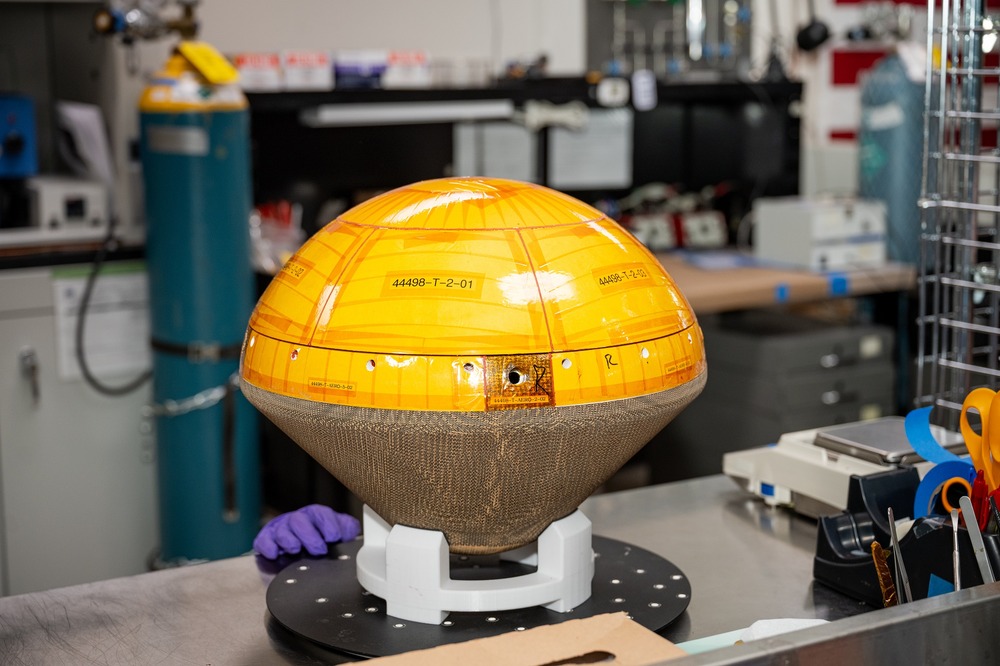
We’re embarking on the first private Venus mission and sending a probe into the Venusian atmosphere to search for signs of microbial life. Recently the probe’s heatshield, a crucial component that will protect the capsule as it passes through the volatile clouds above Venus’ surface, completed a fit check by engineers at
@NASAAmes
Learn more: https://bit.ly/3EZFwon
Spiny Norman said:
Rocket Lab
Venus is a step closer.
We’re embarking on the first private Venus mission and sending a probe into the Venusian atmosphere to search for signs of microbial life. Recently the probe’s heatshield, a crucial component that will protect the capsule as it passes through the volatile clouds above Venus’ surface, completed a fit check by engineers at
@NASAAmesLearn more: https://bit.ly/3EZFwon
I had wondered what career Thing had found after ‘The Addams Family’ finished.
Spiny Norman said:
OceanGate Titan Titanium Rings – An Additional Story About ThemIn this video, I tell a story about the OceanGate Titan Titanium rings. There is an important story about them that is not discussed much. It’s worth analyzing.
https://www.youtube.com/watch?v=sRZ9hHgQWDw
More interesting than I thought it’d be.
Just watched it. seems they ignored a lot of advice and not just this item.
The woman that could smell Parkinson’s.
Spiny Norman said:
The woman that could smell Parkinson’s.
The video showed a female without a nose, ;)
roughbarked said:
Spiny Norman said:
The woman that could smell Parkinson’s.The video showed a female without a nose, ;)
how does she smell?
ChrispenEvan said:
roughbarked said:
Spiny Norman said:
The woman that could smell Parkinson’s.
The video showed a female without a nose, ;)
how does she smell?
ask the parson
ChrispenEvan said:
roughbarked said:
Spiny Norman said:
The woman that could smell Parkinson’s.The video showed a female without a nose, ;)
how does she smell?
The cartoon people have no noses.
https://sgtscholar.wordpress.com/2024/06/29/cognitive-dissonance/
more at
https://sgtscholar.wordpress.com
ChrispenEvan said:
https://sgtscholar.wordpress.com/2024/06/29/cognitive-dissonance/
more at
https://sgtscholar.wordpress.com
so they just found a way to describe inconsistency with a greater number of syllables to make it a psychological matter rather than an epistemological matter and make pseudopredictions of retrospective observations
Spiny Norman said:
The woman that could smell Parkinson’s.
Made me think of the chemo smell that mr kii had. People below the video commented on that, after quite a few others said that they could smell cancer on people. It’s the treatment that they are smelling, not the disease.
kii said:
Spiny Norman said:
The woman that could smell Parkinson’s.
Made me think of the chemo smell that mr kii had. People below the video commented on that, after quite a few others said that they could smell cancer on people. It’s the treatment that they are smelling, not the disease.
is it possible that some people can smell the disease even before the therapy
https://www.sciencealert.com/we-may-have-been-wrong-about-why-mars-is-red
ChrispenEvan said:
https://www.sciencealert.com/we-may-have-been-wrong-about-why-mars-is-red
Is it just embarrassed?
SCIENCE said:
kii said:
Spiny Norman said:
The woman that could smell Parkinson’s.
Made me think of the chemo smell that mr kii had. People below the video commented on that, after quite a few others said that they could smell cancer on people. It’s the treatment that they are smelling, not the disease.
is it possible that some people can smell the disease even before the therapy
It seems so. Mrs rb can smell Parkinsons in my old friend. She doesn’t or didn’t know that was Parkinsons until I told her about this woman. She knew he smelled of an illness but not which. When he was diagnosed with Parkinsons she suspected it. Her mother was mostly blind and deaf but she could pick me out in a busy hospital. I was there on a different mission than her and hadn’t known she would be there and neither did she. So some people can distinguish a particular person’s odour from others in the room.
SCIENCE said:
kii said:
Spiny Norman said:
The woman that could smell Parkinson’s.
Made me think of the chemo smell that mr kii had. People below the video commented on that, after quite a few others said that they could smell cancer on people. It’s the treatment that they are smelling, not the disease.
is it possible that some people can smell the disease even before the therapy
That’s what the video is about.
kii said:
SCIENCE said:kii said:
Made me think of the chemo smell that mr kii had. People below the video commented on that, after quite a few others said that they could smell cancer on people. It’s the treatment that they are smelling, not the disease.
is it possible that some people can smell the disease even before the therapy
That’s what the video is about.
but you said It’s the treatment that they are smelling, not the disease. so we were looking to establish which was more reliable
SCIENCE said:
ChrispenEvan said:
roughbarked said:
The video showed a female without a nose, ;)
how does she smell?
ask the parson
Or, if you’re Catholic – “Ask the Pope”.
SCIENCE said:
kii said:
SCIENCE said:is it possible that some people can smell the disease even before the therapy
That’s what the video is about.
but you said It’s the treatment that they are smelling, not the disease. so we were looking to establish which was more reliable
Some people in the comments, below the video, were saying that they could smell cancer. Which wasn’t relevant to the video.
Stop fucking around with my words.
Michael V said:
’
SCIENCE said:ChrispenEvan said:
how does she smell?
ask the parson
Or, if you’re Catholic – “Ask the Pope”.
Michael V said:
SCIENCE said:ChrispenEvan said:
how does she smell?
ask the parson
Or, if you’re Catholic – “Ask the Pope”.
the parson is on the nose. one of my old handles was The Parsons Nose.
roughbarked said:
SCIENCE said:kii said:
Made me think of the chemo smell that mr kii had. People below the video commented on that, after quite a few others said that they could smell cancer on people. It’s the treatment that they are smelling, not the disease.
is it possible that some people can smell the disease even before the therapy
It seems so. Mrs rb can smell Parkinsons in my old friend. She doesn’t or didn’t know that was Parkinsons until I told her about this woman. She knew he smelled of an illness but not which. When he was diagnosed with Parkinsons she suspected it. Her mother was mostly blind and deaf but she could pick me out in a busy hospital. I was there on a different mission than her and hadn’t known she would be there and neither did she. So some people can distinguish a particular person’s odour from others in the room.
establishing an individual’s general odour is a bit different to being able to smell a disease though… however dogs have been known to sniff out a disease (as opposed to treatment smell) so I guess it’s possible that some humans can do it.
I suppose it’s even more possible when it’s a known human and what you can detect is a change in smell …
they tried to introduce odour detection in arson investigations, the collector would seal the air of a room inside a paint tin and then back in the lab they tried to determine what sort of accelerant was used… as far as I know it wasn’t a very good indicator even with a mass spectrometer, since the concentration of molecules would be thin and mostly burned up by the time investigators arrive at a scene.. I read this technique many years ago, but have not followed any progress since, so I don’t really know if the technique has been improved or they canned it. Still it’s interesting smells and detections
kii said:
SCIENCE said:
kii said:
SCIENCE said:
kii said:
Spiny Norman said:
The woman that could smell Parkinson’s.
Made me think of the chemo smell that mr kii had. People below the video commented on that, after quite a few others said that they could smell cancer on people. It’s the treatment that they are smelling, not the disease.
is it possible that some people can smell the disease even before the therapy
That’s what the video is about.
but you said It’s the treatment that they are smelling, not the disease. so we were looking to establish which was more reliable
Some people in the comments, below the video, were saying that they could smell cancer. Which wasn’t relevant to the video.
Stop fucking around with my words.
As yous can see it’s literally what you said so perhaps you’re fucking around with your own words¿
Arts said:
roughbarked said:
SCIENCE said:is it possible that some people can smell the disease even before the therapy
It seems so. Mrs rb can smell Parkinsons in my old friend. She doesn’t or didn’t know that was Parkinsons until I told her about this woman. She knew he smelled of an illness but not which. When he was diagnosed with Parkinsons she suspected it. Her mother was mostly blind and deaf but she could pick me out in a busy hospital. I was there on a different mission than her and hadn’t known she would be there and neither did she. So some people can distinguish a particular person’s odour from others in the room.
establishing an individual’s general odour is a bit different to being able to smell a disease though… however dogs have been known to sniff out a disease (as opposed to treatment smell) so I guess it’s possible that some humans can do it.
I suppose it’s even more possible when it’s a known human and what you can detect is a change in smell …
they tried to introduce odour detection in arson investigations, the collector would seal the air of a room inside a paint tin and then back in the lab they tried to determine what sort of accelerant was used… as far as I know it wasn’t a very good indicator even with a mass spectrometer, since the concentration of molecules would be thin and mostly burned up by the time investigators arrive at a scene.. I read this technique many years ago, but have not followed any progress since, so I don’t really know if the technique has been improved or they canned it. Still it’s interesting smells and detections
I mentioned a strange smell some men had, it was hard to describe as it was so uncommon
None of them were unwell as far as I know and I’ve only encountered it 3 or 4 times in my life
Not that I go around smelling men
SCIENCE said:
kii said:
Spiny Norman said:
The woman that could smell Parkinson’s.
Made me think of the chemo smell that mr kii had. People below the video commented on that, after quite a few others said that they could smell cancer on people. It’s the treatment that they are smelling, not the disease.
is it possible that some people can smell the disease even before the therapy
Certainly some dogs can.
Cymek said:
Arts said:
roughbarked said:It seems so. Mrs rb can smell Parkinsons in my old friend. She doesn’t or didn’t know that was Parkinsons until I told her about this woman. She knew he smelled of an illness but not which. When he was diagnosed with Parkinsons she suspected it. Her mother was mostly blind and deaf but she could pick me out in a busy hospital. I was there on a different mission than her and hadn’t known she would be there and neither did she. So some people can distinguish a particular person’s odour from others in the room.
establishing an individual’s general odour is a bit different to being able to smell a disease though… however dogs have been known to sniff out a disease (as opposed to treatment smell) so I guess it’s possible that some humans can do it.
I suppose it’s even more possible when it’s a known human and what you can detect is a change in smell …
they tried to introduce odour detection in arson investigations, the collector would seal the air of a room inside a paint tin and then back in the lab they tried to determine what sort of accelerant was used… as far as I know it wasn’t a very good indicator even with a mass spectrometer, since the concentration of molecules would be thin and mostly burned up by the time investigators arrive at a scene.. I read this technique many years ago, but have not followed any progress since, so I don’t really know if the technique has been improved or they canned it. Still it’s interesting smells and detections
I mentioned a strange smell some men had, it was hard to describe as it was so uncommon
None of them were unwell as far as I know and I’ve only encountered it 3 or 4 times in my life
Not that I go around smelling men
my memory is telling me that they also tried it (smell collection) with crime scenes, to try to collect body odour from anyone who had been inside the room… again, we don’t have the analytical tools to help with that yet (as far as I can remember) but it would be an interesting addition to the investigative tool box.
Perfume: The Story of a Murderer is an excellent read.
Cymek said:
Arts said:
roughbarked said:It seems so. Mrs rb can smell Parkinsons in my old friend. She doesn’t or didn’t know that was Parkinsons until I told her about this woman. She knew he smelled of an illness but not which. When he was diagnosed with Parkinsons she suspected it. Her mother was mostly blind and deaf but she could pick me out in a busy hospital. I was there on a different mission than her and hadn’t known she would be there and neither did she. So some people can distinguish a particular person’s odour from others in the room.
establishing an individual’s general odour is a bit different to being able to smell a disease though… however dogs have been known to sniff out a disease (as opposed to treatment smell) so I guess it’s possible that some humans can do it.
I suppose it’s even more possible when it’s a known human and what you can detect is a change in smell …
they tried to introduce odour detection in arson investigations, the collector would seal the air of a room inside a paint tin and then back in the lab they tried to determine what sort of accelerant was used… as far as I know it wasn’t a very good indicator even with a mass spectrometer, since the concentration of molecules would be thin and mostly burned up by the time investigators arrive at a scene.. I read this technique many years ago, but have not followed any progress since, so I don’t really know if the technique has been improved or they canned it. Still it’s interesting smells and detections
I mentioned a strange smell some men had, it was hard to describe as it was so uncommon
None of them were unwell as far as I know and I’ve only encountered it 3 or 4 times in my life
Not that I go around smelling men
A lot of people smell of what they do. In an aluminium welding course, the lecturer said, “You can’t wash it off and it puts my wife off”.
Kerry Greenwood uses smells/odours quite frequently in her Miss Fisher Murder mysteries.
Tamb said:
Michael V said:’
SCIENCE said:ask the parson
Or, if you’re Catholic – “Ask the Pope”.
As has been said many times before. “If your nose runs & your feet smell you’re built upsidedown”
LOL
A video of the Firefly probe landing on the Moon.
Bloody awesome!
All Dams Are Temporary
On the surface, this seems like a silly problem, almost elementary. It’s just dirt! But I want to show you why it’s a slow-moving catastrophe with implications that span the globe.
Practical Engineering channel
AI discovers game changing CHEAP solution to double lithium battery life
The Electric Viking channel
https://www.southernlaunch.space/news-feed/history-made-for-australia-as-the-first-commercial-space-re-entry-lands-at-southern-launchs-koonibba-test-range

ChrispenEvan said:
https://www.southernlaunch.space/news-feed/history-made-for-australia-as-the-first-commercial-space-re-entry-lands-at-southern-launchs-koonibba-test-range
Wow!
New Alloy Breaks the Rules of Thermal Expansion
For the first time, Scientists have developed a new alloy composed of multiple metals that shows nearly zero thermal expansion over a very wide temperature range. This makes it ideal for aerospace, precision engineering, electronics, and other applications.
Voltastik channel
ChrispenEvan said:
https://www.southernlaunch.space/news-feed/history-made-for-australia-as-the-first-commercial-space-re-entry-lands-at-southern-launchs-koonibba-test-range
Looks like it’s found a much more fertile patch of Mars than any of those NASA probes.
Bubblecar said:
ChrispenEvan said:
https://www.southernlaunch.space/news-feed/history-made-for-australia-as-the-first-commercial-space-re-entry-lands-at-southern-launchs-koonibba-test-range
Looks like it’s found a much more fertile patch of Mars than any of those NASA probes.
As Kurt Vonnegut Jnr almost put it…
Astronaut Bud Williams Jnr: If you recall, I had difficulty describing the surface of Mars.
Walter Gesundheit: You said it looked like your driveway in Dallas.
Something Strange Happens When You Trust Quantum Mechanics
Does light take all possible paths at the same time?
Veritasium channel
https://www.youtube.com/watch?v=qJZ1Ez28C-A
No idea what about half of it is talking about, but I do appreciate the complexity of the explanation.
ChrispenEvan said:
https://www.southernlaunch.space/news-feed/history-made-for-australia-as-the-first-commercial-space-re-entry-lands-at-southern-launchs-koonibba-test-range
Cool.
Why Berlin Built a $7BN Empty Airport
The turbulent 30-year journey of Brandenburg Airport.
The B1M channel
Making of Blade Runner
The making of the original Blade Runner (1982). Go behind the scenes to see Ridley Scott’s meticulous nature, Harrison Ford’s experience on set, and more from the cast and crew!
Spiny Norman said:
Making of Blade RunnerThe making of the original Blade Runner (1982). Go behind the scenes to see Ridley Scott’s meticulous nature, Harrison Ford’s experience on set, and more from the cast and crew!
Brilliant movie, wins 10 director boards 🎬
https://theconversation.com/earths-oldest-impact-crater-was-just-found-in-australia-exactly-where-geologists-hoped-it-would-be-250921
https://www.nature.com/articles/s41467-025-57558-3
JudgeMental said:
https://theconversation.com/earths-oldest-impact-crater-was-just-found-in-australia-exactly-where-geologists-hoped-it-would-be-250921
https://www.nature.com/articles/s41467-025-57558-3
good
I mean I wouldn’t say they found the crater.
dv said:
I mean I wouldn’t say they found the crater.
the spoils go to the bold.
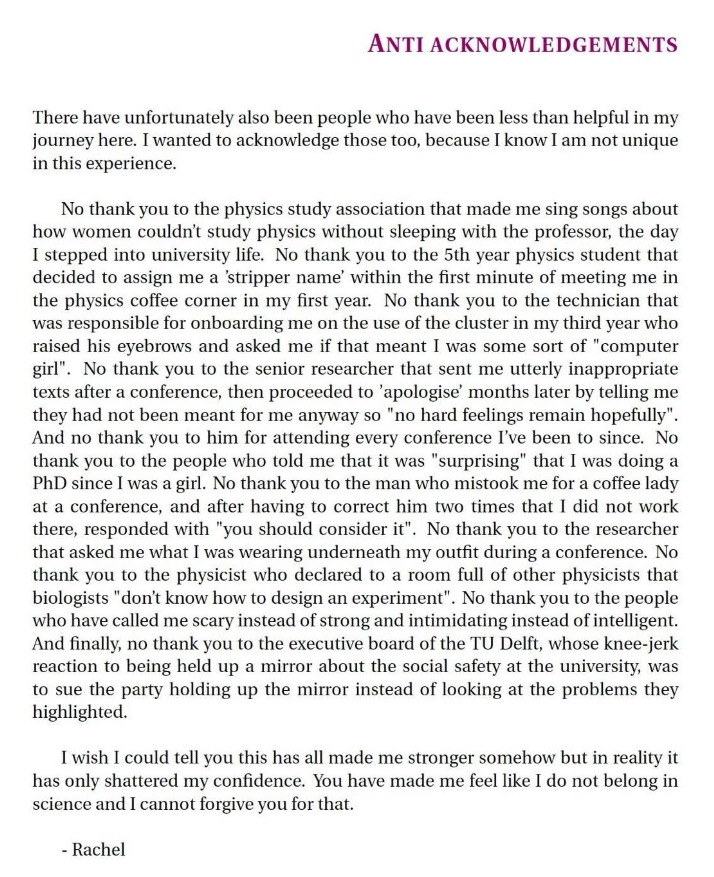
https://www.linkedin.com/posts/rachellos_systematic-bullying-and-undermining-of-girls-activity-7298713884603875329-Oi4m/
JudgeMental said:

https://www.linkedin.com/posts/rachellos_systematic-bullying-and-undermining-of-girls-activity-7298713884603875329-Oi4m/
Aye.
The Armour Research Reactor (1958)
This film shows the design, fabrication, and operation of the first private nuclear energy reactor designed specifically for industrial research — the 50,000- watt solution type reactor built by Atomics International for the Armour Research Foundation, Chicago.
Yikes!
I’ve flown smaller real aeroplanes than this RC B777 model.
Building the worlds biggest Boeing 777X RC Airliner, PART 3
Spiny Norman said:
Yikes!
I’ve flown smaller real aeroplanes than this RC B777 model.Building the worlds biggest Boeing 777X RC Airliner, PART 3
Need a big toy box for that one.
We’ve recently been experimenting with different ways to take out drones and drone swarms. In this video we demonstrate how effective microwaves are at accomplishing it.
Tech Ingredients channel
https://www.youtube.com/watch?v=V6XdcWToy2c
The fun starts shortly after the 20 minute mark.
The Atmospheric Motor
Robert Murray-Smith channel
https://www.youtube.com/watch?v=c09o1_ctSpY
Probably not terribly useful, but I found it interesting at least.
The Unlawful Activities of Batman bin Suparman | Tales From the Bottle
What’s the cost for having a great name? Batman bin Suparman knows all too well.
“Indonesian names and naming customs reflect the multicultural and multilingual nature of the over 17,000 islands in the Indonesian archipelago. The world’s fourth most populous country, Indonesia is home to numerous ethnic groups, each with their own culture, custom, and language.
The naming customs by no means are consistent, and may differ by ethnic group. For example, most western Indonesians do not have surnames (exceptions: Bataks, Nias, Mentawai, Enggano, and some Dayaks), while eastern Indonesians do generally have it (exceptions: Balinese, West Nusa Tenggara people, and some ethnic groups in Sulawesi).”
Qxir channel
How are rocks and canyons in the desert formed? Understand it with a 2-minute experiment!
Spiny Norman said:
How are rocks and canyons in the desert formed? Understand it with a 2-minute experiment!
Good stuff!
AussieDJ said:
Spiny Norman said:
How are rocks and canyons in the desert formed? Understand it with a 2-minute experiment!Good stuff!
Yeah, that was cool.
There’s a YouTube channel that I enjoy that does similar stuff to this but with a bit more equipment. A whole bunch of interesting videos on it.
‘‘Practical Engineering”:https://www.youtube.com/@PracticalEngineeringChannel/videos
https://www.youtube.com/@PracticalEngineeringChannel/videos
A recent one, for example, showing sediment deposition in dams over time


Piranha solution – scary stuff.
esselte said:
AussieDJ said:
Spiny Norman said:
How are rocks and canyons in the desert formed? Understand it with a 2-minute experiment!Good stuff!
Yeah, that was cool.
There’s a YouTube channel that I enjoy that does similar stuff to this but with a bit more equipment. A whole bunch of interesting videos on it.‘‘Practical Engineering”:https://www.youtube.com/@PracticalEngineeringChannel/videos
https://www.youtube.com/@PracticalEngineeringChannel/videos
A recent one, for example, showing sediment deposition in dams over time
Saw that particular episode a day or two ago. Very interesting.
AussieDJ said:
Piranha solution – scary stuff.
I’ve made some of that stuff; it’s the only substance I know of that can dissolve elemental carbon (I’d burnt something onto the bottom of a saucepan, and couldn’t get it off any other way.) If you do need to make it — and I highly recommend that you don’t — here is some advice (if you haven’t got a fume cupboard):
btm said:
AussieDJ said:
Piranha solution – scary stuff.I’ve made some of that stuff; it’s the only substance I know of that can dissolve elemental carbon (I’d burnt something onto the bottom of a saucepan, and couldn’t get it off any other way.) If you do need to make it — and I highly recommend that you don’t — here is some advice (if you haven’t got a fume cupboard):
- do it outside
- wear gauntlets — not just gloves, but gauntlets; a full body suit of armour would be better
- wear eye protection; full face protection would be better
- use a N95 (at least) mask; breathing apparatus would be better.
AussieDJ said:
btm said:
AussieDJ said:
Piranha solution – scary stuff.I’ve made some of that stuff; it’s the only substance I know of that can dissolve elemental carbon (I’d burnt something onto the bottom of a saucepan, and couldn’t get it off any other way.) If you do need to make it — and I highly recommend that you don’t — here is some advice (if you haven’t got a fume cupboard):
- do it outside
- wear gauntlets — not just gloves, but gauntlets; a full body suit of armour would be better
- wear eye protection; full face protection would be better
- use a N95 (at least) mask; breathing apparatus would be better.
I’m not making any. I wonder how it compares to feeding the evidence to pigs. (Something I read about in this very forum some years aho.)
https://www.youtube.com/watch?v=gLsWMdxTMcw
Pigs | Snatch (2000)
AussieDJ said:
btm said:
AussieDJ said:
Piranha solution – scary stuff.I’ve made some of that stuff; it’s the only substance I know of that can dissolve elemental carbon (I’d burnt something onto the bottom of a saucepan, and couldn’t get it off any other way.) If you do need to make it — and I highly recommend that you don’t — here is some advice (if you haven’t got a fume cupboard):
- do it outside
- wear gauntlets — not just gloves, but gauntlets; a full body suit of armour would be better
- wear eye protection; full face protection would be better
- use a N95 (at least) mask; breathing apparatus would be better.
I’m not making any. I wonder how it compares to feeding the evidence to pigs. (Something I read about in this very forum some years aho.)
I haven’t tried the pigs, but Arts would know. The Snowtown murderers used sulphuric acid, iirc, and it did a pretty good (though not complete) job.
btm said:
AussieDJ said:
btm said:I’ve made some of that stuff; it’s the only substance I know of that can dissolve elemental carbon (I’d burnt something onto the bottom of a saucepan, and couldn’t get it off any other way.) If you do need to make it — and I highly recommend that you don’t — here is some advice (if you haven’t got a fume cupboard):
- do it outside
- wear gauntlets — not just gloves, but gauntlets; a full body suit of armour would be better
- wear eye protection; full face protection would be better
- use a N95 (at least) mask; breathing apparatus would be better.
I’m not making any. I wonder how it compares to feeding the evidence to pigs. (Something I read about in this very forum some years aho.)I haven’t tried the pigs, but Arts would know.
I would know nothing of the sort and if you put me on the stand that’s what I’d say.
Walk, Run, Crawl, RL Fun | Boston Dynamics | Atlas
In this video, Atlas is demonstrating policies developed using reinforcement learning with references from human motion capture and animation. This work was done as part of a research partnership between Boston Dynamics and the Robotics and AI Institute (RAI Institute).
Boston Dynamics channel
How magnets could change our fridges and ACs forever.
For centuries, refrigeration tech has stayed the same — energy-hungry and reliant on harmful gases. Enter magnetocaloric cooling: a new solution claiming to be 30% more energy-efficient than current cooling systems. And it’s scalable. From fridges to cooling buildings and server farms.
https://youtu.be/PwhhYceuFjM?si=-JngrgZVHMEVyOcb
Of interest.
I’m not convinced yet that’ll be good enough for freezers but a regular fridge seems quite possible.
Spiny Norman said:
How magnets could change our fridges and ACs forever.For centuries, refrigeration tech has stayed the same — energy-hungry and reliant on harmful gases. Enter magnetocaloric cooling: a new solution claiming to be 30% more energy-efficient than current cooling systems. And it’s scalable. From fridges to cooling buildings and server farms.
https://youtu.be/PwhhYceuFjM?si=-JngrgZVHMEVyOcb
Of interest.
I’m not convinced yet that’ll be good enough for freezers but a regular fridge seems quite possible.
I’m not convinced by the blurb “For centuries…”.
Michael V said:
Spiny Norman said:
How magnets could change our fridges and ACs forever.For centuries, refrigeration tech has stayed the same — energy-hungry and reliant on harmful gases. Enter magnetocaloric cooling: a new solution claiming to be 30% more energy-efficient than current cooling systems. And it’s scalable. From fridges to cooling buildings and server farms.
https://youtu.be/PwhhYceuFjM?si=-JngrgZVHMEVyOcb
Of interest.
I’m not convinced yet that’ll be good enough for freezers but a regular fridge seems quite possible.
I’m not convinced by the blurb “For centuries…”.
I looked it up. The first one using the vapour-compression principle was in 1834. So that is not quite 200 years, but not that far off.
party_pants said:
Michael V said:
Spiny Norman said:
How magnets could change our fridges and ACs forever.For centuries, refrigeration tech has stayed the same — energy-hungry and reliant on harmful gases. Enter magnetocaloric cooling: a new solution claiming to be 30% more energy-efficient than current cooling systems. And it’s scalable. From fridges to cooling buildings and server farms.
https://youtu.be/PwhhYceuFjM?si=-JngrgZVHMEVyOcb
Of interest.
I’m not convinced yet that’ll be good enough for freezers but a regular fridge seems quite possible.
I’m not convinced by the blurb “For centuries…”.
I looked it up. The first one using the vapour-compression principle was in 1834. So that is not quite 200 years, but not that far off.
Oh, I knew it wasn’t far off, but it is incorrect and not the truth.
So, I didn’t go any further.
Michael V said:
party_pants said:
Michael V said:I’m not convinced by the blurb “For centuries…”.
I looked it up. The first one using the vapour-compression principle was in 1834. So that is not quite 200 years, but not that far off.
Oh, I knew it wasn’t far off, but it is incorrect and not the truth.
So, I didn’t go any further.
So you aren’t losing your mind. Only some memories.
Michael V said:
party_pants said:
Michael V said:I’m not convinced by the blurb “For centuries…”.
I looked it up. The first one using the vapour-compression principle was in 1834. So that is not quite 200 years, but not that far off.
Oh, I knew it wasn’t far off, but it is incorrect and not the truth.
So, I didn’t go any further.
Harsh, but fair.
Trump announces development of the Next Generation Air Dominance Platform, F-47 fighter, contract awarded to Boeing.
Says it goes really fast. It goes “two”.
Presumably he meant “Mach 2”.

Deep Intel on the F-47 Sixth Generation Strike/Fighter
https://www.youtube.com/watch?v=9e_EXmVUJCM
https://www.space.com/space-solar-power-satellite-beams-energy-1st-time
The Space Solar Power Demonstrator’s MAPLE experiment was able to wirelessly
transfer collected solar power to receivers in space and direct energy to Earth.
Inside India’s TALLEST waste dump
What’s it like to live next to a mountain made of garbage?
I visited the Ghazipur garbage dump in Delhi and what I saw was shocking. Imagine a mountain of trash as tall as the Qutub Minar! You can see it from 5km away, and the smell is so bad that most people can’t stay there for even a few minutes. But here’s the surprising part – many families actually live here.
Here’s what I learned after talking to the local people:
Daily Life: Every day, thousands of people, even small children, dig through dangerous trash without any safety gear. They only earn 200 rupees per day.
Water Crisis: The water quality is so poor that bathing in it causes severe skin rashes and boils. One resident spent 1,200 rupees on medical treatment, so now they prefer buying drinking water at 20 rupees just to bathe.
Health Problems: Many workers get badly injured but keep working because they need the money to survive. They have no other options.
Dirty Toilets: Around 1000 families share just 16 toilets. Even worse, these toilets stay dirty for up to 20 days without cleaning.
Asia’s largest chicken market operates right next to this garbage dump!
Through videos like this, I aim to show you parts of our city that most people never see!
The UNHINGED Submarine With a 50 Ton Gun
Oceanliner Designs Channel
The 19th and 20th centuries were hotbeds for naval innovation and experimentation – engineers were throwing anything and everything into their warship designs, and history shows the results were sometimes more absurd than practical.
Join Mike in Part 3 of this series as he looks at four more of history’s most unhinged warship designs – including a British Submarine class with oversized guns to a Japanese Battleship with a constantly changing design, and a baffling French pre-dreadnought.
Spiny Norman said:
The UNHINGED Submarine With a 50 Ton GunOceanliner Designs Channel
The 19th and 20th centuries were hotbeds for naval innovation and experimentation – engineers were throwing anything and everything into their warship designs, and history shows the results were sometimes more absurd than practical.
Join Mike in Part 3 of this series as he looks at four more of history’s most unhinged warship designs – including a British Submarine class with oversized guns to a Japanese Battleship with a constantly changing design, and a baffling French pre-dreadnought.
I’m a subscriber and patron of that channel.
Mike is a video natural, and he really loves and knows his subject. His stories are often rather fascinating. He does sometimes wander off down the ‘Titanic’ rabbit-hole, and he has a thing for the ‘Morro Castle’, but manages to extricate himself and to also produce a good variety of stories.
captain_spalding said:
Spiny Norman said:
The UNHINGED Submarine With a 50 Ton GunOceanliner Designs Channel
The 19th and 20th centuries were hotbeds for naval innovation and experimentation – engineers were throwing anything and everything into their warship designs, and history shows the results were sometimes more absurd than practical.
Join Mike in Part 3 of this series as he looks at four more of history’s most unhinged warship designs – including a British Submarine class with oversized guns to a Japanese Battleship with a constantly changing design, and a baffling French pre-dreadnought.
I’m a subscriber and patron of that channel.
Mike is a video natural, and he really loves and knows his subject. His stories are often rather fascinating. He does sometimes wander off down the ‘Titanic’ rabbit-hole, and he has a thing for the ‘Morro Castle’, but manages to extricate himself and to also produce a good variety of stories.
Yes I quite enjoy the channel as well.
Your friend Mike Brady!
Spiny Norman said:
captain_spalding said:
Spiny Norman said:
The UNHINGED Submarine With a 50 Ton GunOceanliner Designs Channel
The 19th and 20th centuries were hotbeds for naval innovation and experimentation – engineers were throwing anything and everything into their warship designs, and history shows the results were sometimes more absurd than practical.
Join Mike in Part 3 of this series as he looks at four more of history’s most unhinged warship designs – including a British Submarine class with oversized guns to a Japanese Battleship with a constantly changing design, and a baffling French pre-dreadnought.
I’m a subscriber and patron of that channel.
Mike is a video natural, and he really loves and knows his subject. His stories are often rather fascinating. He does sometimes wander off down the ‘Titanic’ rabbit-hole, and he has a thing for the ‘Morro Castle’, but manages to extricate himself and to also produce a good variety of stories.
Yes I quite enjoy the channel as well.
Your friend Mike Brady!
And, he’s done collaborations with Caitlin Doghty, who’s another very entertaining ‘specialist’:
https://sierrahotel.net/blogs/news/10-ton-tess
The largest non nuclear weapon of WW2 known as the “Grand Slam” bomb was proudly placed on display in front of RAF Scampton’s main gate. For over 15 years, it remained front and center for all to see as they passed through the base main entrance.
.
A full sixty seasons passed since the Earthquake bomb was first placed at the front gate, much to the horror and disbelief of the now terrified workers tasked with moving the bomb due to roadwork upgrades, it was discovered to be still fully packed with 10 tons of explosives.
Where children climbed and sat on top of the bomb and played around them, and families took pictures and had picnics, year after year, never imagining that they were toying in close proximity to the world’s largest non-nuclear bomb…all 22 thousand pounds of her.
bit more at link.
ChrispenEvan said:
https://sierrahotel.net/blogs/news/10-ton-tessThe largest non nuclear weapon of WW2 known as the “Grand Slam” bomb was proudly placed on display in front of RAF Scampton’s main gate. For over 15 years, it remained front and center for all to see as they passed through the base main entrance.
. A full sixty seasons passed since the Earthquake bomb was first placed at the front gate, much to the horror and disbelief of the now terrified workers tasked with moving the bomb due to roadwork upgrades, it was discovered to be still fully packed with 10 tons of explosives.Where children climbed and sat on top of the bomb and played around them, and families took pictures and had picnics, year after year, never imagining that they were toying in close proximity to the world’s largest non-nuclear bomb…all 22 thousand pounds of her.
bit more at link.
They missed that little thing when they put the bomb on display?
Eeeek!!
Spiny Norman said:
ChrispenEvan said:
https://sierrahotel.net/blogs/news/10-ton-tessThe largest non nuclear weapon of WW2 known as the “Grand Slam” bomb was proudly placed on display in front of RAF Scampton’s main gate. For over 15 years, it remained front and center for all to see as they passed through the base main entrance.
. A full sixty seasons passed since the Earthquake bomb was first placed at the front gate, much to the horror and disbelief of the now terrified workers tasked with moving the bomb due to roadwork upgrades, it was discovered to be still fully packed with 10 tons of explosives.Where children climbed and sat on top of the bomb and played around them, and families took pictures and had picnics, year after year, never imagining that they were toying in close proximity to the world’s largest non-nuclear bomb…all 22 thousand pounds of her.
bit more at link.
They missed that little thing when they put the bomb on display?
Eeeek!!
I’ll say.
Spiny Norman said:
ChrispenEvan said:
https://sierrahotel.net/blogs/news/10-ton-tessThe largest non nuclear weapon of WW2 known as the “Grand Slam” bomb was proudly placed on display in front of RAF Scampton’s main gate. For over 15 years, it remained front and center for all to see as they passed through the base main entrance.
. A full sixty seasons passed since the Earthquake bomb was first placed at the front gate, much to the horror and disbelief of the now terrified workers tasked with moving the bomb due to roadwork upgrades, it was discovered to be still fully packed with 10 tons of explosives.Where children climbed and sat on top of the bomb and played around them, and families took pictures and had picnics, year after year, never imagining that they were toying in close proximity to the world’s largest non-nuclear bomb…all 22 thousand pounds of her.
bit more at link.
They missed that little thing when they put the bomb on display?
Eeeek!!
Spiny Norman said:
ChrispenEvan said:
https://sierrahotel.net/blogs/news/10-ton-tessThe largest non nuclear weapon of WW2 known as the “Grand Slam” bomb was proudly placed on display in front of RAF Scampton’s main gate. For over 15 years, it remained front and center for all to see as they passed through the base main entrance.
. A full sixty seasons passed since the Earthquake bomb was first placed at the front gate, much to the horror and disbelief of the now terrified workers tasked with moving the bomb due to roadwork upgrades, it was discovered to be still fully packed with 10 tons of explosives.Where children climbed and sat on top of the bomb and played around them, and families took pictures and had picnics, year after year, never imagining that they were toying in close proximity to the world’s largest non-nuclear bomb…all 22 thousand pounds of her.
bit more at link.
They missed that little thing when they put the bomb on display?
Eeeek!!
I wonder if the explosive filling is sort of integral to the structure of the bomb itself and can’t just be removed without destroying the whole bomb.
party_pants said:
Spiny Norman said:
ChrispenEvan said:
https://sierrahotel.net/blogs/news/10-ton-tessThe largest non nuclear weapon of WW2 known as the “Grand Slam” bomb was proudly placed on display in front of RAF Scampton’s main gate. For over 15 years, it remained front and center for all to see as they passed through the base main entrance.
. A full sixty seasons passed since the Earthquake bomb was first placed at the front gate, much to the horror and disbelief of the now terrified workers tasked with moving the bomb due to roadwork upgrades, it was discovered to be still fully packed with 10 tons of explosives.Where children climbed and sat on top of the bomb and played around them, and families took pictures and had picnics, year after year, never imagining that they were toying in close proximity to the world’s largest non-nuclear bomb…all 22 thousand pounds of her.
bit more at link.
They missed that little thing when they put the bomb on display?
Eeeek!!
I wonder if the explosive filling is sort of integral to the structure of the bomb itself and can’t just be removed without destroying the whole bomb.
shrug we’ve worked with fertiliser before
party_pants said:
Spiny Norman said:
ChrispenEvan said:
https://sierrahotel.net/blogs/news/10-ton-tessThe largest non nuclear weapon of WW2 known as the “Grand Slam” bomb was proudly placed on display in front of RAF Scampton’s main gate. For over 15 years, it remained front and center for all to see as they passed through the base main entrance.
. A full sixty seasons passed since the Earthquake bomb was first placed at the front gate, much to the horror and disbelief of the now terrified workers tasked with moving the bomb due to roadwork upgrades, it was discovered to be still fully packed with 10 tons of explosives.Where children climbed and sat on top of the bomb and played around them, and families took pictures and had picnics, year after year, never imagining that they were toying in close proximity to the world’s largest non-nuclear bomb…all 22 thousand pounds of her.
bit more at link.
They missed that little thing when they put the bomb on display?
Eeeek!!
I wonder if the explosive filling is sort of integral to the structure of the bomb itself and can’t just be removed without destroying the whole bomb.
From memory the case was very thick to help it survive a trip into the ground tens of metres before exploding, so it’s unlikely.
The $168,000,000 Salvage of Tricolor
Waterline Stories channel
https://www.youtube.com/watch?v=IuiTr1mhBTQ
The sinking was just the start of a series of disasters.
Spiny Norman said:
The $168,000,000 Salvage of TricolorWaterline Stories channel
https://www.youtube.com/watch?v=IuiTr1mhBTQ
The sinking was just the start of a series of disasters.
Good job, well done chaps.
https://www.youtube.com/watch?v=IcDsyICSlZs
How Did Emirates Get THAT Drone Shot? Real or Fake? Behind the Scenes!
The First Thorium Reactor Is FINALLY Under Construction
Joe Scott channel
In today’s Lightning Round video (yes, another one), we talk about the new thorium molten salt reactor under construction in China, the pros and cons of human spaceflight, the new acting head of NASA, and the horrors of the rat king phenomenon.
The Search for MH370 is Back ON! What’s changed?!
Malaysia has finally green-lit a new search for MH370, 11 years after its disappearance and 7 years since the last official search ended… but what has changed to make this happen now?
Mentour Now channel
Spiny Norman said:
The Search for MH370 is Back ON! What’s changed?!Malaysia has finally green-lit a new search for MH370, 11 years after its disappearance and 7 years since the last official search ended… but what has changed to make this happen now?
Mentour Now channel
Have not watched, but i’d guess that:
any evidence that might incriminate anyone ‘important’ has now been assuredly destroyed.
captain_spalding said:
Spiny Norman said:
The Search for MH370 is Back ON! What’s changed?!Malaysia has finally green-lit a new search for MH370, 11 years after its disappearance and 7 years since the last official search ended… but what has changed to make this happen now?
Mentour Now channel
Have not watched, but i’d guess that:
any evidence that might incriminate anyone ‘important’ has now been assuredly destroyed.
Quite possibly.
I used to fly with one of the chaps who helped cover-up the Air NZ Mt Erebus crash.
Spiny Norman said:
captain_spalding said:
Spiny Norman said:
The Search for MH370 is Back ON! What’s changed?!Malaysia has finally green-lit a new search for MH370, 11 years after its disappearance and 7 years since the last official search ended… but what has changed to make this happen now?
Mentour Now channel
Have not watched, but i’d guess that:
any evidence that might incriminate anyone ‘important’ has now been assuredly destroyed.
Quite possibly.
I used to fly with one of the chaps who helped cover-up the Air NZ Mt Erebus crash.
Air NZ = The Most Sacred Cow of Them All
Spiny Norman said:
The Search for MH370 is Back ON! What’s changed?!Malaysia has finally green-lit a new search for MH370, 11 years after its disappearance and 7 years since the last official search ended… but what has changed to make this happen now?
Mentour Now channel
Ta.
The Australian Outback Was Once a GIANT Sea!
Journey back millions of years to uncover the extraordinary story of Australia’s last great inland ocean—the legendary Eromanga Sea. Stretching across vast expanses of the continent’s interior during the Cretaceous period, this immense body of water transformed the landscape of ancient Australia, submerging areas we now recognize as iconic outback regions beneath shallow marine waters.
Through detailed geological explanations and immersive storytelling, you’ll learn how the Eromanga Sea formed due to processes like tectonic subsidence and mantle-driven dynamic topography, combined with global sea-level rise. We reveal how Australia’s continental interior slowly sank, creating extensive basins that allowed the sea to flood inland, depositing distinct sedimentary layers—from the initial sandstone beds of the Cadna-owie Formation to the organic-rich shales of the Toolebuc Formation and finally the river-laden deposits of the Winton Formation marking the sea’s retreat.
This video doesn’t just explore geology—it uncovers an incredible natural history filled with life. Discover the fossilized remains of creatures that once thrived in the ancient sea, including ammonites, inoceramid bivalves, marine reptiles, and other fascinating organisms that provide a vivid window into a lost world. We examine how these fossils have helped paleontologists reconstruct the ecosystem of this vast prehistoric marine environment.
OzGeology channel
Spiny Norman said:
The Australian Outback Was Once a GIANT Sea!Journey back millions of years to uncover the extraordinary story of Australia’s last great inland ocean—the legendary Eromanga Sea. Stretching across vast expanses of the continent’s interior during the Cretaceous period, this immense body of water transformed the landscape of ancient Australia, submerging areas we now recognize as iconic outback regions beneath shallow marine waters.
Through detailed geological explanations and immersive storytelling, you’ll learn how the Eromanga Sea formed due to processes like tectonic subsidence and mantle-driven dynamic topography, combined with global sea-level rise. We reveal how Australia’s continental interior slowly sank, creating extensive basins that allowed the sea to flood inland, depositing distinct sedimentary layers—from the initial sandstone beds of the Cadna-owie Formation to the organic-rich shales of the Toolebuc Formation and finally the river-laden deposits of the Winton Formation marking the sea’s retreat.
This video doesn’t just explore geology—it uncovers an incredible natural history filled with life. Discover the fossilized remains of creatures that once thrived in the ancient sea, including ammonites, inoceramid bivalves, marine reptiles, and other fascinating organisms that provide a vivid window into a lost world. We examine how these fossils have helped paleontologists reconstruct the ecosystem of this vast prehistoric marine environment.
OzGeology channel
I’ve sometimes wondered what Australia woud be likeif the early European settler’s dreamsof a vast ‘inland sea’ had been accurate.
Even with a rather shallow, but vast, sea occupying much of the “wasteland” (please note the inverted commas) of central Australia, i hypothesise that we might have a much different climate and way of life.
captain_spalding said:
Spiny Norman said:
The Australian Outback Was Once a GIANT Sea!Journey back millions of years to uncover the extraordinary story of Australia’s last great inland ocean—the legendary Eromanga Sea. Stretching across vast expanses of the continent’s interior during the Cretaceous period, this immense body of water transformed the landscape of ancient Australia, submerging areas we now recognize as iconic outback regions beneath shallow marine waters.
Through detailed geological explanations and immersive storytelling, you’ll learn how the Eromanga Sea formed due to processes like tectonic subsidence and mantle-driven dynamic topography, combined with global sea-level rise. We reveal how Australia’s continental interior slowly sank, creating extensive basins that allowed the sea to flood inland, depositing distinct sedimentary layers—from the initial sandstone beds of the Cadna-owie Formation to the organic-rich shales of the Toolebuc Formation and finally the river-laden deposits of the Winton Formation marking the sea’s retreat.
This video doesn’t just explore geology—it uncovers an incredible natural history filled with life. Discover the fossilized remains of creatures that once thrived in the ancient sea, including ammonites, inoceramid bivalves, marine reptiles, and other fascinating organisms that provide a vivid window into a lost world. We examine how these fossils have helped paleontologists reconstruct the ecosystem of this vast prehistoric marine environment.
OzGeology channel
I’ve sometimes wondered what Australia woud be likeif the early European settler’s dreamsof a vast ‘inland sea’ had been accurate.
Even with a rather shallow, but vast, sea occupying much of the “wasteland” (please note the inverted commas) of central Australia, i hypothesise that we might have a much different climate and way of life.
It would be all salty water.
roughbarked said:
captain_spalding said:
Spiny Norman said:
The Australian Outback Was Once a GIANT Sea!Journey back millions of years to uncover the extraordinary story of Australia’s last great inland ocean—the legendary Eromanga Sea. Stretching across vast expanses of the continent’s interior during the Cretaceous period, this immense body of water transformed the landscape of ancient Australia, submerging areas we now recognize as iconic outback regions beneath shallow marine waters.
Through detailed geological explanations and immersive storytelling, you’ll learn how the Eromanga Sea formed due to processes like tectonic subsidence and mantle-driven dynamic topography, combined with global sea-level rise. We reveal how Australia’s continental interior slowly sank, creating extensive basins that allowed the sea to flood inland, depositing distinct sedimentary layers—from the initial sandstone beds of the Cadna-owie Formation to the organic-rich shales of the Toolebuc Formation and finally the river-laden deposits of the Winton Formation marking the sea’s retreat.
This video doesn’t just explore geology—it uncovers an incredible natural history filled with life. Discover the fossilized remains of creatures that once thrived in the ancient sea, including ammonites, inoceramid bivalves, marine reptiles, and other fascinating organisms that provide a vivid window into a lost world. We examine how these fossils have helped paleontologists reconstruct the ecosystem of this vast prehistoric marine environment.
OzGeology channel
I’ve sometimes wondered what Australia woud be likeif the early European settler’s dreamsof a vast ‘inland sea’ had been accurate.
Even with a rather shallow, but vast, sea occupying much of the “wasteland” (please note the inverted commas) of central Australia, i hypothesise that we might have a much different climate and way of life.
It would be all salty water.
But, it’s the climate that’s the question.
All the seas are salt water. And it’s the seas, combined withthe land, that make the climate.
captain_spalding said:
roughbarked said:
captain_spalding said:I’ve sometimes wondered what Australia woud be likeif the early European settler’s dreamsof a vast ‘inland sea’ had been accurate.
Even with a rather shallow, but vast, sea occupying much of the “wasteland” (please note the inverted commas) of central Australia, i hypothesise that we might have a much different climate and way of life.
It would be all salty water.
But, it’s the climate that’s the question.
All the seas are salt water. And it’s the seas, combined withthe land, that make the climate.
Yes. It was the fond dream that inland there would be a sea that would alter the climate.
There was even a plan to dig a freaking big channel through the middle and make it two islands.
roughbarked said:
captain_spalding said:
roughbarked said:It would be all salty water.
But, it’s the climate that’s the question.
All the seas are salt water. And it’s the seas, combined withthe land, that make the climate.
Yes. It was the fond dream that inland there would be a sea that would alter the climate.
There was even a plan to dig a freaking big channel through the middle and make it two islands.
glad that never happened. after all how would you lot manage without us over here?
roughbarked said:
captain_spalding said:
roughbarked said:It would be all salty water.
But, it’s the climate that’s the question.
All the seas are salt water. And it’s the seas, combined withthe land, that make the climate.
Yes. It was the fond dream that inland there would be a sea that would alter the climate.
There was even a plan to dig a freaking big channel through the middle and make it two islands.
A pleasant enough daydream.
ChrispenEvan said:
roughbarked said:
captain_spalding said:But, it’s the climate that’s the question.
All the seas are salt water. And it’s the seas, combined withthe land, that make the climate.
Yes. It was the fond dream that inland there would be a sea that would alter the climate.
There was even a plan to dig a freaking big channel through the middle and make it two islands.
glad that never happened. after all how would you lot manage without us over here?
:)
Spiny Norman said:
captain_spalding said:
Spiny Norman said:
The Search for MH370 is Back ON! What’s changed?!Malaysia has finally green-lit a new search for MH370, 11 years after its disappearance and 7 years since the last official search ended… but what has changed to make this happen now?
Mentour Now channel
Have not watched, but i’d guess that:
any evidence that might incriminate anyone ‘important’ has now been assuredly destroyed.
Quite possibly.
I used to fly with one of the chaps who helped cover-up the Air NZ Mt Erebus crash.
“An orchestrated litany of lies.”
I Built a SHOTGUN AXE
Integza channel
https://youtu.be/_luBh6eFANU?si=DN5osGO59z6Ug9a9
That looks SO dangerous!
I LOVE IT!!
The End of The International Space Station
Inside the universe’s biggest ever demolition project.
The B1M channel
Australia’s Insane Plan To Build An Inland Sea
In the early 1900s, Australia embarked on one of the most extraordinary and ambitious infrastructure proposals ever seriously considered by a nation—an audacious project to transform its vast, arid interior into a massive inland sea. At a time when drought and devastating heat plagued the Australian outback, visionaries, engineers, and political leaders entertained an astonishing plan to flood vast desert plains and salt lakes, hoping to fundamentally alter Australia’s climate and economy forever.
OzGeology channel
Spiny Norman said:
Australia’s Insane Plan To Build An Inland SeaIn the early 1900s, Australia embarked on one of the most extraordinary and ambitious infrastructure proposals ever seriously considered by a nation—an audacious project to transform its vast, arid interior into a massive inland sea. At a time when drought and devastating heat plagued the Australian outback, visionaries, engineers, and political leaders entertained an astonishing plan to flood vast desert plains and salt lakes, hoping to fundamentally alter Australia’s climate and economy forever.
OzGeology channel
Amazing that I was just watching that video. :)
roughbarked said:
Spiny Norman said:
Australia’s Insane Plan To Build An Inland SeaIn the early 1900s, Australia embarked on one of the most extraordinary and ambitious infrastructure proposals ever seriously considered by a nation—an audacious project to transform its vast, arid interior into a massive inland sea. At a time when drought and devastating heat plagued the Australian outback, visionaries, engineers, and political leaders entertained an astonishing plan to flood vast desert plains and salt lakes, hoping to fundamentally alter Australia’s climate and economy forever.
OzGeology channel
Amazing that I was just watching that video. :)
damn we knew our co forum players here were so intelligent that they would all be into the same things simultaneously, they’re clever enough that they would never be manipulated by malicious giant social media 爱 algorithms
SCIENCE said:
roughbarked said:
Spiny Norman said:
Australia’s Insane Plan To Build An Inland SeaIn the early 1900s, Australia embarked on one of the most extraordinary and ambitious infrastructure proposals ever seriously considered by a nation—an audacious project to transform its vast, arid interior into a massive inland sea. At a time when drought and devastating heat plagued the Australian outback, visionaries, engineers, and political leaders entertained an astonishing plan to flood vast desert plains and salt lakes, hoping to fundamentally alter Australia’s climate and economy forever.
OzGeology channel
Amazing that I was just watching that video. :)
damn we knew our co forum players here were so intelligent that they would all be into the same things simultaneously, they’re clever enough that they would never be manipulated by malicious giant social media 爱 algorithms
Tamb said:
SCIENCE said:
roughbarked said:Amazing that I was just watching that video. :)
damn we knew our co forum players here were so intelligent that they would all be into the same things simultaneously, they’re clever enough that they would never be manipulated by malicious giant social media 爱 algorithms
There was talk at one time to use nukes to make the channel.
Careful…Dutton may be listening.
Flying an F4 Phantom to its maximum speed if not so good for the paint.
captain_spalding said:
Tamb said:
SCIENCE said:damn we knew our co forum players here were so intelligent that they would all be into the same things simultaneously, they’re clever enough that they would never be manipulated by malicious giant social media 爱 algorithms
There was talk at one time to use nukes to make the channel.Careful…Dutton may be listening.
All this talk of malicious giant social media 爱 algorithms and nukes is giving us flashbacks.

NASA’s Plutonium Problem – Nuclear Engineer Reacts to Real Engineering
T. Folse Nuclear channel
https://www.youtube.com/watch?v=8WrFal32Ezk
A good video that analyses the plutonium problem video I posted a few days ago.
The Kramatorsk Radiation Accident – Nuclear Apartment
Between 1980 and 1989, four people between two young families would die of leukaemia. The connection? They all lived in the same room in an apartment building in Kramatorsk, Ukraine. This episode of explains how a single misplaced capsule became one of history’s worst orphan source accidents.
Kyle Hill channel
SCIENCE said:
roughbarked said:
Spiny Norman said:
Australia’s Insane Plan To Build An Inland SeaIn the early 1900s, Australia embarked on one of the most extraordinary and ambitious infrastructure proposals ever seriously considered by a nation—an audacious project to transform its vast, arid interior into a massive inland sea. At a time when drought and devastating heat plagued the Australian outback, visionaries, engineers, and political leaders entertained an astonishing plan to flood vast desert plains and salt lakes, hoping to fundamentally alter Australia’s climate and economy forever.
OzGeology channel
Amazing that I was just watching that video. :)
damn we knew our co forum players here were so intelligent that they would all be into the same things simultaneously, they’re clever enough that they would never be manipulated by malicious giant social media 爱 algorithms
Cleary we have both been shown stuff that is linked to any youtube posted here. Because I watch youtubes linked from here, I get suggestions from their suggestions. Same as if you click links I put up yo might suddenly be finding stuff about opals or watches and clocks.
Spiny Norman said:
Flying an F4 Phantom to its maximum speed if not so good for the paint.
So did they fix it?
roughbarked said:
Spiny Norman said:
Flying an F4 Phantom to its maximum speed if not so good for the paint.So did they fix it?
Interesting comments about the F111 with that post.
roughbarked said:
SCIENCE said:
roughbarked said:Amazing that I was just watching that video. :)
damn we knew our co forum players here were so intelligent that they would all be into the same things simultaneously, they’re clever enough that they would never be manipulated by malicious giant social media 爱 algorithms
Cleary we have both been shown stuff that is linked to any youtube posted here. Because I watch youtubes linked from here, I get suggestions from their suggestions. Same as if you click links I put up yo might suddenly be finding stuff about opals or watches and clocks.
Anyway, I was always interested in that story. The Coles Funny Picture Book spoke of it. The idea was first touted well before the twentieth century and never was able to be realised.
roughbarked said:
roughbarked said:
SCIENCE said:damn we knew our co forum players here were so intelligent that they would all be into the same things simultaneously, they’re clever enough that they would never be manipulated by malicious giant social media 爱 algorithms
Cleary we have both been shown stuff that is linked to any youtube posted here. Because I watch youtubes linked from here, I get suggestions from their suggestions. Same as if you click links I put up yo might suddenly be finding stuff about opals or watches and clocks.
Anyway, I was always interested in that story. The Coles Funny Picture Book spoke of it. The idea was first touted well before the twentieth century and never was able to be realised.
It can be noted that this year may well fill Lake Eyre. The last time was in 2010. At the same time, the rise in sea levels went backwards.
roughbarked said:
roughbarked said:
SCIENCE said:
damn we knew our co forum players here were so intelligent that they would all be into the same things simultaneously, they’re clever enough that they would never be manipulated by malicious giant social media 爱 algorithms
Cleary we have both been shown stuff that is linked to any youtube posted here. Because I watch youtubes linked from here, I get suggestions from their suggestions. Same as if you click links I put up yo might suddenly be finding stuff about opals or watches and clocks.
Anyway, I was always interested in that story. The Coles Funny Picture Book spoke of it. The idea was first touted well before the twentieth century and never was able to be realised.
sorry we weren’t meaning any insultation or hostile imputation or any personal affront at all it was more a statement on the pervasiveness and manipulation potential of these mass mediums but yes we appreciate that people can feel personally targeted by these statements and so we apologise
we’re still going to hate on The Algorithm though
SCIENCE said:
roughbarked said:
roughbarked said:
Cleary we have both been shown stuff that is linked to any youtube posted here. Because I watch youtubes linked from here, I get suggestions from their suggestions. Same as if you click links I put up yo might suddenly be finding stuff about opals or watches and clocks.
Anyway, I was always interested in that story. The Coles Funny Picture Book spoke of it. The idea was first touted well before the twentieth century and never was able to be realised.
sorry we weren’t meaning any insultation or hostile imputation or any personal affront at all it was more a statement on the pervasiveness and manipulation potential of these mass mediums but yes we appreciate that people can feel personally targeted by these statements and so we apologise
we’re still going to hate on The Algorithm though
No wukkas.
https://www.youtube.com/watch?v=GBNe9JwUoeY
The process of reviving a 100-year-old automatic musical instrument
auto violin and piano.
How a Simple Tractor Conquered the South Pole
In 1957, a team of Kiwis, led by Sir Edmund Hillary, set out to on a journey across Antarctica. they were there to support a Commonwealth Expedition to cross the continent, but soon they’d be at South Pole—not in tanks or snowcats, but in three tiny Ferguson farm tractors. I travel to France to track one of these amazing machines down.
Calum.
Are Space Elevators Still a Thing for the Future?
It’s been an idea that has been around since 1895 but only since the 1960s that it was taken seriously. But the biggest issue is how to make a cable over 36,000km that is light enough and strong enough. We now have the ability to make the materials but can we make them long enough to make it a reality, find out in today’s video.
Curious Droid channel
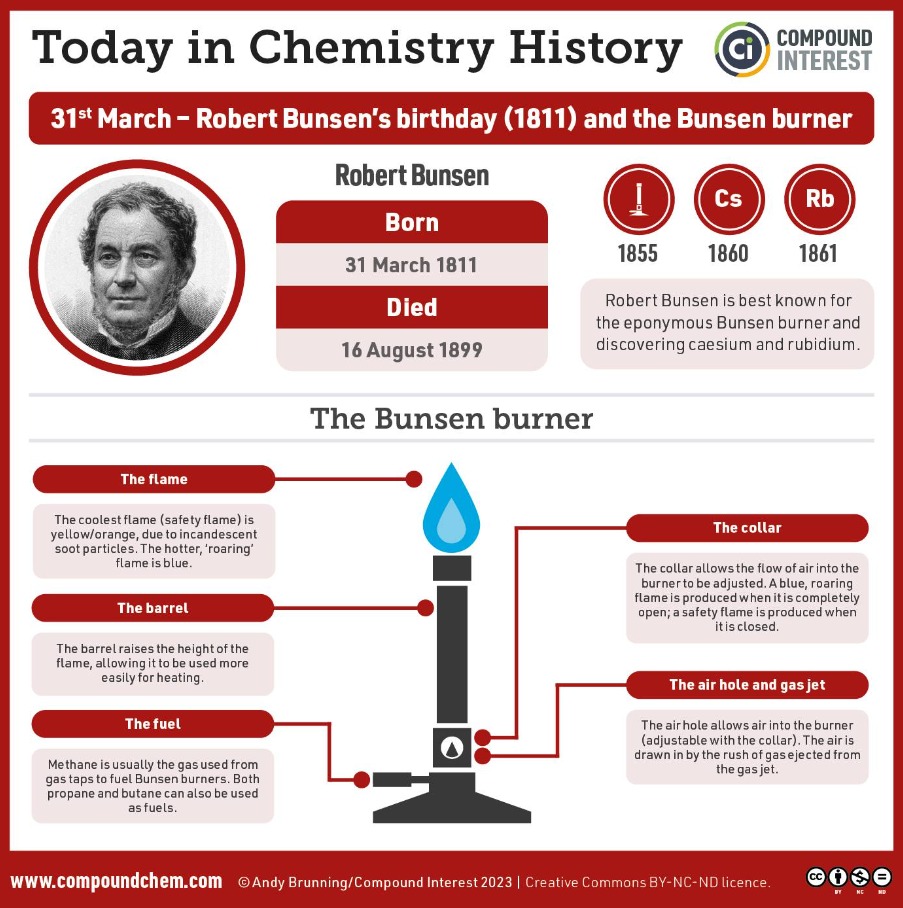
https://allthatsinteresting.com/big-bend-national-park-ancient-hunting-kit
Antarctica from space, seen by humans for the first time in history.
Spiny Norman said:
Antarctica from space, seen by humans for the first time in history.
Financed and flown by Chun Wang
Wang was born in China but lives primarily in Svalbard, Norway and since 2023 is also a citizen of Malta and Saint Kitts and Nevis through their golden visa programs. He wore the flag of Malta on his spacesuit during the flight.
Not tryna rain on anyone’s parade by the Apollo astronauts also saw Antarctica. This would be the first time humans have seen it from Low Earth Orbit. Looks absolutely amazing. Transantarctic Mountain range.
Pity it’s all fake because the Earth is flat.
Joints Stuffed With Newspaper: The Ronan Point Disaster
A documentary covering the partial collapse of the Ronan Point tower block in London, and the huge impact it had on residents, survivors, and the construction industry.
Fascinating Horror channel.
Why did the British Army build fake trees?
This tree is fake. Like many others, it was planted by Allied soldiers in the dead of night. A hollow replica of the real tree that stood there before. But why did they do it? What are they made of? And how did these trees help to change the face of conflict forever?
During the First World War, Allied soldiers needed a way to see without being seen. The solution was the camouflage tree, a fake piece of shrubbery with an observation post hidden inside. Initially a French invention, the camouflage tree would allow Allied soldiers to keep track of enemy movements from a concealed elevated position.
Imperial War Museums channel.
Spiny Norman said:
Why did the British Army build fake trees?This tree is fake. Like many others, it was planted by Allied soldiers in the dead of night. A hollow replica of the real tree that stood there before. But why did they do it? What are they made of? And how did these trees help to change the face of conflict forever?
During the First World War, Allied soldiers needed a way to see without being seen. The solution was the camouflage tree, a fake piece of shrubbery with an observation post hidden inside. Initially a French invention, the camouflage tree would allow Allied soldiers to keep track of enemy movements from a concealed elevated position.
Imperial War Museums channel.
Nadir view of Transient Luminous Events (TLE ) or upper atmospheric lightning. This clip real time is about 6 seconds over the Amazon basin and shows a number of TLE displays from Sprites to blue jets from a downward looking view.
From Don Pettit on the ISS.
Spiny Norman said:
Nadir view of Transient Luminous Events (TLE ) or upper atmospheric lightning. This clip real time is about 6 seconds over the Amazon basin and shows a number of TLE displays from Sprites to blue jets from a downward looking view.
From Don Pettit on the ISS.
Good

Not everyone was fooled by fake British trees.
Spiny Norman said:
Nadir view of Transient Luminous Events (TLE ) or upper atmospheric lightning. This clip real time is about 6 seconds over the Amazon basin and shows a number of TLE displays from Sprites to blue jets from a downward looking view.
From Don Pettit on the ISS.
Huh.
Michael V said:
Spiny Norman said:
Nadir view of Transient Luminous Events (TLE ) or upper atmospheric lightning. This clip real time is about 6 seconds over the Amazon basin and shows a number of TLE displays from Sprites to blue jets from a downward looking view.
From Don Pettit on the ISS.Huh.
Kidney stones under an electron microscope.



No doubt the scale of all those spikey is minute, but they still look rather savage.
Spiny Norman said:
Kidney stones under an electron microscope.
No doubt the scale of all those spikey is minute, but they still look rather savage.
Nasty.
When I did a Scanning Electron Microscope (SEM) course at Sydney Uni, I used a piece of galena. I crushed it, coated it with gold (as those are likely to be) and scanned it to 1,000 to 300,000 times magnification. All the way down was cubes. Galena has cubic cleavage, you see. Spectacular images.
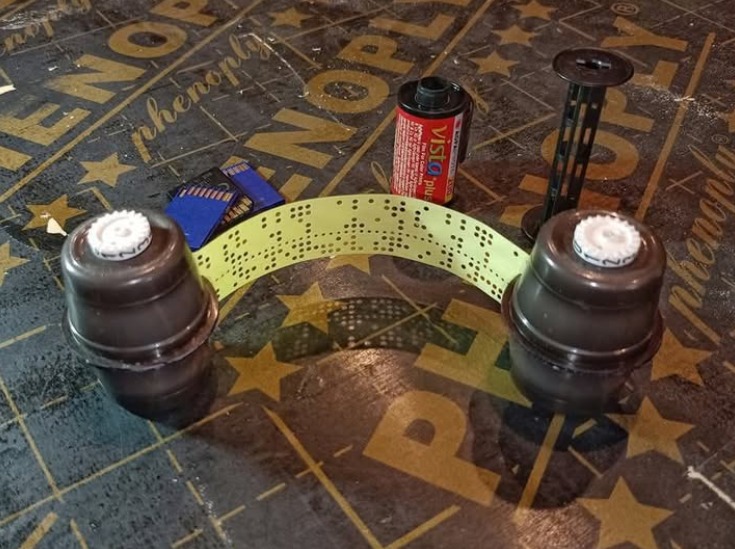
𝗧𝗵𝗲 𝗳𝗮𝗹𝗹 𝗮𝗻𝗱 𝗳𝗮𝗹𝗹 𝗼𝗳 𝗠𝗼𝗯𝗶𝘂𝘀.
Photography relies on storage medium, that’s no secret, whether it be glass plates, film, floppy disc,
SD cards or whatever.
In most cases it has been the medium that could offer both value for money and increasing capacity
that has prevailed.
Not surprisingly, therefore, a number of systems ‘never made it’ – either due to funding or performance.
So wind back to the very late 80’s/early 90’s – the first digital cameras were being engineered, in many
cases with only volatile internal memory (so if your batteries died, your images died) – the hunt was on
for storage solutions.
Enter Mobius – the Mobius system used twin cartridges, one full of punch paper strip, one empty to
accept the paper once punched.
Coming in at about 1.5 times the height/diameter of 35mm film cartridges they were designed to be
loaded into Mobius’s reader/writer unit – a machine that punched the tape in a long series of binary
holes that could then be read/translated back into an image for viewing via a computer, or printed
via the company’s patented lab. machinery.
So what happened? Well if Mobius launched today it would probably fund itself via ‘Kickstarter’ or
similar – sadly not an option back then, so funding was via rather expensive bank/B2B loans – which
saw Mobius launched to critical acclaim, but massively in debt.
Now, as storage goes ‘ticker-tape’ is a rather limited storage medium indeed one pair of Mobius
canisters could hold only five 320×240 images!
Despite this Mobius was lauded as a storage miracle by the technical press. However, the ink on
the reviews was barely dry when the first storage cards (Smart Media, Compact flash, etc)
hit the market.
No-one now wanted Mobius’s slow, limited capacity, equipment heavy, products.
Unable to repay its finance Mobius filed for liquidation only 14 months after it’s launch, the company name, and patents, we’re sold to Kodak, but never reused.
Shared by Taking photographs is not a crime
ChrispenEvan said:
𝗧𝗵𝗲 𝗳𝗮𝗹𝗹 𝗮𝗻𝗱 𝗳𝗮𝗹𝗹 𝗼𝗳 𝗠𝗼𝗯𝗶𝘂𝘀.
Photography relies on storage medium, that’s no secret, whether it be glass plates, film, floppy disc,
SD cards or whatever.In most cases it has been the medium that could offer both value for money and increasing capacity
that has prevailed.Not surprisingly, therefore, a number of systems ‘never made it’ – either due to funding or performance.
So wind back to the very late 80’s/early 90’s – the first digital cameras were being engineered, in many
cases with only volatile internal memory (so if your batteries died, your images died) – the hunt was on
for storage solutions.
Enter Mobius – the Mobius system used twin cartridges, one full of punch paper strip, one empty to
accept the paper once punched.Coming in at about 1.5 times the height/diameter of 35mm film cartridges they were designed to be
loaded into Mobius’s reader/writer unit – a machine that punched the tape in a long series of binary
holes that could then be read/translated back into an image for viewing via a computer, or printed
via the company’s patented lab. machinery.So what happened? Well if Mobius launched today it would probably fund itself via ‘Kickstarter’ or
similar – sadly not an option back then, so funding was via rather expensive bank/B2B loans – which
saw Mobius launched to critical acclaim, but massively in debt.Now, as storage goes ‘ticker-tape’ is a rather limited storage medium indeed one pair of Mobius
canisters could hold only five 320×240 images!Despite this Mobius was lauded as a storage miracle by the technical press. However, the ink on
the reviews was barely dry when the first storage cards (Smart Media, Compact flash, etc)
hit the market.No-one now wanted Mobius’s slow, limited capacity, equipment heavy, products.
Unable to repay its finance Mobius filed for liquidation only 14 months after it’s launch, the company name, and patents, we’re sold to Kodak, but never reused.
Shared by Taking photographs is not a crime
pretty sure magnetic spinning discs were already being used to retain digital information in an era between holy paper and quantum moss so why would anyone in the very late 80’s/early 90’s want to fk around with that
Cecile G. Tamura
In the world of science, theories emerge, evolve, and sometimes fade as new experimental data shapes our understanding. But what about AI scientists—artificial intelligence models trained to discover scientific principles? Do they arrive at the same conclusions when given the same task, or do they develop their own distinct theories?
This study explores that question by training AI models on physics problems to see whether they independently arrive at the same scientific laws. Just as human scientists once debated competing theories before settling on the best explanation, these AI models sometimes converge on a single theory—but at other times, they split into distinct groups, each favoring a different perspective.
To investigate this, researchers developed an approach called MASS, using Hamiltonian-Lagrangian neural networks as AI scientists. By training these AI models on standard physics problems and analyzing results across multiple training runs (simulating different “scientific communities”), they observed a fascinating shift: AI models tend to favor Hamiltonian mechanics in simpler cases but switch to Lagrangian mechanics when dealing with more complex systems.
Moreover, the process is highly sensitive to initial conditions, meaning that slight variations in training setups can determine which theory gains prominence—mirroring how human scientific paradigms rise and fall over time. Beyond improving our understanding of AI learning, this approach could also enhance interpretability in high-dimensional scientific problems, pushing the boundaries of AI-driven discovery.
https://arxiv.org/abs/2504.02822
Aurora seen today from Space_Station while orbit was passing between Australia and Antartrica; photographer astro_jannicke now on the private FRAM2 space mission will be having an even better view in their polar orbit.
https://www.youtube.com/watch?v=LxNypnpN8y4
50 step process to start the engine of a 164-foot-long ship
https://eos.org/research-spotlights/the-rivers-that-science-says-shouldnt-exist
Headline a bit overhyped.
JudgeMental said:
https://eos.org/research-spotlights/the-rivers-that-science-says-shouldnt-existHeadline a bit overhyped.
Reminds me of the warrambools (dry waterways) between the Barwon and Namoi Rivers. As the rivers rise, warrambools can flow in either direction, and may change direction many times. Effectively they transfer flood water from one river to another, slowing and delaying the flood peaks and reducing the potential for both rivers’ flood peaks reaching their confluence at the same time. Safety valves, if you wish.
Michael V said:
JudgeMental said:
https://eos.org/research-spotlights/the-rivers-that-science-says-shouldnt-existHeadline a bit overhyped.
Reminds me of the warrambools (dry waterways) between the Barwon and Namoi Rivers. As the rivers rise, warrambools can flow in either direction, and may change direction many times. Effectively they transfer flood water from one river to another, slowing and delaying the flood peaks and reducing the potential for both rivers’ flood peaks reaching their confluence at the same time. Safety valves, if you wish.
Ta, didn’t know that.
Michael V said:
JudgeMental said:
https://eos.org/research-spotlights/the-rivers-that-science-says-shouldnt-existHeadline a bit overhyped.
Reminds me of the warrambools (dry waterways) between the Barwon and Namoi Rivers. As the rivers rise, warrambools can flow in either direction, and may change direction many times. Effectively they transfer flood water from one river to another, slowing and delaying the flood peaks and reducing the potential for both rivers’ flood peaks reaching their confluence at the same time. Safety valves, if you wish.
“Water always finds its own level.” …old jungle saying
Ian said:
…old jungle saying
LOL. 👌
America’s War Horse Marine – Sergeant Reckless
https://www.youtube.com/watch?v=NJhxBuLI-eE
Very well done, Mr Ed.
Changes in attitude, changes in latitude:
@Space_Station
We rotated 180 degrees and flew backwards for yesterday’s Soyuz docking. This is a bit long but keep watching for the surprise in the middle.
Don Pettit.
Footage of the Soyuz spacecraft docking with the International Space Station.
Don Pettit.
Staggering omission of women’s crucial contributions to computer programming and tech in general. “In 1945, six women pulled off a computing miracle. They programmed the world’s first computer—with no manuals, no training. Then, a SINGLE assumption erased them from tech history for decades. The story of how ONE photo nearly deleted computing’s female founders.
“Kathy Kleiman, a young programmer, found old photos of women standing beside ENIAC—the first general-purpose computer. When she asked who they were, curators said: “Probably just models”… But Kleiman had a feeling they were something more:
“They weren’t models. They were the world’s first programmers. First, they were hired as “human computers” to calculate missile trajectories during WWII. Then chosen for a top-secret project unlike anything before:
“Program ENIAC—a machine the world had never seen. It was 8 feet tall, 80 feet long, and weighed over 60,000 pounds. The engineers built the hardware… But someone had to figure out how to make it do anything:
“That job fell to six women: Betty Holberton, Jean Bartik, Kay McNulty, Ruth Teitelbaum, Marlyn Meltzer, and Frances Spence.
But there was a problem… They weren’t even allowed to touch the machine: Security restrictions kept them out of the ENIAC lab. They had to write programs using only blueprints and logic diagrams. No manuals. No programming languages… So how do you code something no one’s ever coded before?
“ By inventing the process from scratch. They built algorithms, flowcharts, and step-by-step routines—on paper. Then, once granted access, they programmed ENIAC by physically rewiring it. And that’s where things got even harder: There was no keyboard. Programming meant plugging thousands of cables into the right configuration—by hand. It was almost impossible to program. But they pulled it off anyway:
“On February 14, 1946, ENIAC was unveiled to the public. It could do 5,000 calculations per second—1,000× faster than anything before. It made headlines across the country… But the real story was missing:
“The six women who made ENIAC work weren’t invited to the demo. Photos of the machine appeared in newspapers… But the people who programmed it? Not even named. The credit went to the engineers who built the hardware. Why were the programmers ignored? Because back then, programming wasn’t seen as valuable work… And that perception had lasting consequences:
“ Since women were doing it, people assumed it was secretarial—just “wiring” or “filing.” Even though it required complex math and problem-solving… Soon, the field of programming would be rewritten entirely: As computing grew in importance, men took over. The image of the “male genius coder” replaced the women who pioneered the field.
“But what happened to the ENIAC six after ENIAC? They kept building.
Betty Holberton wrote the first software application.
Jean Bartik worked on memory systems.
Kay McNulty helped invent reusable code, or “subroutines”…
So why don’t we learn about them in school? Because for decades, their names were forgotten. It wasn’t until the 1980s when Kleiman found them and recorded their stories. By the time they were publicly honored in 1997… Most were in their seventies.
“ In that gap, tech culture had completely changed. A field launched by women had become a boys’ club… But what if we hadn’t erased the founders? Women have always been a part of the history and story of computing.
“And it’s still important to make sure computer science education is accessible to all students today. So how do we build a future that reflects that? By making stories like ENIAC’s part of the canon—not the footnotes.
“By teaching that the first coders weren’t just women—they were visionaries. By showing every girl in tech: you’re not an exception… You’re part of a legacy… “
Look at this link to see video clips. I’ll post a talk by Kathy Kleiman who rediscovered the work these women did, which had been totally buried by the 80s. She went to the 40th anniversary of ENIAC looking for the women in those pictures, found them, and uncovered the whole story.
https://threadreaderapp.com/thread/1909626044845621299.html

Actinium-225 – From Nuclear Waste to Cancer Drug
In February 2025 I got to visit Terrapower, a self-proclaimed nuclear innovation company. In part one of this sponsored series, you will see the science behind turning nuclear waste into cancer medication. In part two, we will explore and explain what will be the first next-generation nuclear reactor to operate in the United States.
Kyle Hill channel
How Ship Plates Are Transformed into Millions of Bolts
https://www.youtube.com/watch?v=npLoScB8Q6s
I’m not exactly convinced that the purity of the metal is all that good.
https://www.sciencealert.com/this-bizarre-shape-shifting-liquid-bends-the-laws-of-thermodynamics
JudgeMental said:
https://www.sciencealert.com/this-bizarre-shape-shifting-liquid-bends-the-laws-of-thermodynamics
It’d be interesting to see a video of that.
Michael V said:
JudgeMental said:
https://www.sciencealert.com/this-bizarre-shape-shifting-liquid-bends-the-laws-of-thermodynamicsIt’d be interesting to see a video of that.
Sounds like fun to play with.
How to make today’s stealth fighters even STEALTHIER (for less)
We’ve discussed the ceramic-based radar absorbent material being developed by Dr. Cheryl Xu out of North Carolina State University several times of the years, but after getting the opportunity to talk with Dr. Xu about her work, we had to dive back into this promising tech and discuss how it could change… well, everything about stealth aviation.
Sandboxx channel
How the Soviet Spy Bug Worked – Engineering Behind the Secret Device!
Uncover the incredible story of The Great Seal Bug, a Soviet listening device that spied on the U.S. Embassy for seven years without wires or batteries! Learn how this ingenious device, hidden in a wooden plaque, used reflected radio waves to transmit conversations. We dive deep into its design, operation, and the shock it sent through the intelligence community. Discover how this Cold War masterpiece laid the groundwork for modern RFID technology.
Science Bytes channel
The Soviet Russian PSS Silent Pistol 7.62×41 Round
Today we’re looking at a rarely seen example of the Soviet 7.62×41 round, which was made for use with the PSS silent pistol. This 6 shot pistol was designed from the ground up to be a silent assassination weapon, with specially designed ammo which traps all the exploding gas in the casing, thus eliminating a great deal of the noise associated with discharge.
Historic Militaria channel
https://www.youtube.com/watch?v=G5TKHB4yOsc
Rather clever, I thought.
WORLD FIRST: Driving Upside Down in McMurtry Spéirling Electric Hypercar
https://www.youtube.com/watch?v=g6LYcgaQ46c
Quite amazing.
Spiny Norman said:
WORLD FIRST: Driving Upside Down in McMurtry Spéirling Electric Hypercarhttps://www.youtube.com/watch?v=g6LYcgaQ46c
Quite amazing.
Tamb said:
Spiny Norman said:
WORLD FIRST: Driving Upside Down in McMurtry Spéirling Electric Hypercarhttps://www.youtube.com/watch?v=g6LYcgaQ46c
Quite amazing.
Totally fake.
Nope, totally real.
Spiny Norman said:
Tamb said:
Spiny Norman said:
WORLD FIRST: Driving Upside Down in McMurtry Spéirling Electric Hypercarhttps://www.youtube.com/watch?v=g6LYcgaQ46c
Quite amazing.
Totally fake.Nope, totally real.
Tamb said:
Spiny Norman said:
Tamb said:Totally fake.
Nope, totally real.
What stops it falling down?
As it states in the video, 2,000 kg of downforce. That’s from two large fans that suck the air out from under the car. It weighs just under a tonne I think, so plenty in reserve.
Spiny Norman said:
WORLD FIRST: Driving Upside Down in McMurtry Spéirling Electric Hypercarhttps://www.youtube.com/watch?v=g6LYcgaQ46c
Quite amazing.
Tamb said:
Spiny Norman said:
Tamb said:
Totally fake.
Nope, totally real.
What stops it falling down?
upforce
SCIENCE said:
Tamb said:
Spiny Norman said:
Nope, totally real.
What stops it falling down?
upforce
SCIENCE said:
Tamb said:
Spiny Norman said:
Nope, totally real.
What stops it falling down?
upforce
A bit underwhelmed by this one.
Still, the 1000’s of commenters all seemed to have enjoyed it.
The Rev Dodgson said:
SCIENCE said:
Tamb said:
What stops it falling down?
upforce
A bit underwhelmed by this one.
Still, the 1000’s of commenters all seemed to have enjoyed it.
so they got a lift from it


Spiny Norman said:
Huh.
Spiny Norman said:
Whoaaa..duuude….

The 100th reusable rocket engine of the Tianque series rolled off the production line in east
China’s Zhejiang on Tue of a Chinese private space company, marking the start of mass
production for the country’s commercial aerospace power system.
Tianque engines will be used in the Zhuque-3 reusable rocket, which eyes its maiden flight
in the latter half of 2025 and will be China’s 1st reusable carrier rocket if successfully launched.
JudgeMental said:

The 100th reusable rocket engine of the Tianque series rolled off the production line in east
China’s Zhejiang on Tue of a Chinese private space company, marking the start of mass
production for the country’s commercial aerospace power system.Tianque engines will be used in the Zhuque-3 reusable rocket, which eyes its maiden flight
in the latter half of 2025 and will be China’s 1st reusable carrier rocket if successfully launched.
Can you get them from Temu?
JudgeMental said:

The 100th reusable rocket engine of the Tianque series rolled off the production line in east
China’s Zhejiang on Tue of a Chinese private space company, marking the start of mass
production for the country’s commercial aerospace power system.Tianque engines will be used in the Zhuque-3 reusable rocket, which eyes its maiden flight
in the latter half of 2025 and will be China’s 1st reusable carrier rocket if successfully launched.
Are rockets and payloads insurable ?
They would be considered high risk I imagine
So if your satellite was destroyed is that too bad as no one would insure it
Cymek said:
JudgeMental said:

The 100th reusable rocket engine of the Tianque series rolled off the production line in east
China’s Zhejiang on Tue of a Chinese private space company, marking the start of mass
production for the country’s commercial aerospace power system.Tianque engines will be used in the Zhuque-3 reusable rocket, which eyes its maiden flight
in the latter half of 2025 and will be China’s 1st reusable carrier rocket if successfully launched.
Are rockets and payloads insurable ?
They would be considered high risk I imagine
So if your satellite was destroyed is that too bad as no one would insure it
no insurance in China. The state will look after you.
Cymek said:
JudgeMental said:

The 100th reusable rocket engine of the Tianque series rolled off the production line in east
China’s Zhejiang on Tue of a Chinese private space company, marking the start of mass
production for the country’s commercial aerospace power system.Tianque engines will be used in the Zhuque-3 reusable rocket, which eyes its maiden flight
in the latter half of 2025 and will be China’s 1st reusable carrier rocket if successfully launched.
Are rockets and payloads insurable ?
They would be considered high risk I imagine
So if your satellite was destroyed is that too bad as no one would insure it
The problem with some satellites, at least, is that they take a long time to build and test before the launch. If it’s lost in an accident the penalty is not only financial but a lot of time. It can be rather significant.
JudgeMental said:
Cymek said:
JudgeMental said:
The 100th reusable rocket engine of the Tianque series rolled off the production line in east
China’s Zhejiang on Tue of a Chinese private space company, marking the start of mass
production for the country’s commercial aerospace power system.Tianque engines will be used in the Zhuque-3 reusable rocket, which eyes its maiden flight
in the latter half of 2025 and will be China’s 1st reusable carrier rocket if successfully launched.
Are rockets and payloads insurable ?
They would be considered high risk I imagine
So if your satellite was destroyed is that too bad as no one would insure itno insurance in China. The state will look after you.
lies government is only present as an instrument of oppression for the pseudo communist overlords to abuse
Spiny Norman said:
Cymek said:
JudgeMental said:

The 100th reusable rocket engine of the Tianque series rolled off the production line in east
China’s Zhejiang on Tue of a Chinese private space company, marking the start of mass
production for the country’s commercial aerospace power system.Tianque engines will be used in the Zhuque-3 reusable rocket, which eyes its maiden flight
in the latter half of 2025 and will be China’s 1st reusable carrier rocket if successfully launched.
Are rockets and payloads insurable ?
They would be considered high risk I imagine
So if your satellite was destroyed is that too bad as no one would insure itThe problem with some satellites, at least, is that they take a long time to build and test before the launch. If it’s lost in an accident the penalty is not only financial but a lot of time. It can be rather significant.
Yes that would be a big part of it, especially some of the explorer probes as opposed to something commercial
JudgeMental said:

The 100th reusable rocket engine of the Tianque series rolled off the production line in east
China’s Zhejiang on Tue of a Chinese private space company, marking the start of mass
production for the country’s commercial aerospace power system.Tianque engines will be used in the Zhuque-3 reusable rocket, which eyes its maiden flight
in the latter half of 2025 and will be China’s 1st reusable carrier rocket if successfully launched.
ooooooo look!! A Dalek factory. 😁
Woodie said:
JudgeMental said:

The 100th reusable rocket engine of the Tianque series rolled off the production line in east
China’s Zhejiang on Tue of a Chinese private space company, marking the start of mass
production for the country’s commercial aerospace power system.Tianque engines will be used in the Zhuque-3 reusable rocket, which eyes its maiden flight
in the latter half of 2025 and will be China’s 1st reusable carrier rocket if successfully launched.
ooooooo look!! A Dalek factory. 😁
That’s where my mind went too.
SCIENCE said:
JudgeMental said:
Cymek said:
Are rockets and payloads insurable ?
They would be considered high risk I imagine
So if your satellite was destroyed is that too bad as no one would insure itno insurance in China. The state will look after you.
lies government is only present as an instrument of oppression for the pseudo communist overlords to abuse
Like I said, the state will look after you.
🦨
JudgeMental said:
SCIENCE said:JudgeMental said:
no insurance in China. The state will look after you.
lies government is only present as an instrument of oppression for the pseudo communist overlords to abuse
Like I said, the state will look after you.
🦨
I think that you mean ‘take care of you’.
The janitor who changed the world of science
James Kroll
Spiny Norman said:
The janitor who changed the world of science
James Kroll
James Croll, FRS, (2 January 1821 – 15 December 1890) was a 19th-century Scottish scientist who developed a theory of climate variability based on changes in the Earth’s orbit.
https://en.wikipedia.org/wiki/James_Croll
Apologies, I was in error spelling his surname.
Spiny Norman said:
Spiny Norman said:
The janitor who changed the world of science
James KrollJames Croll, FRS, (2 January 1821 – 15 December 1890) was a 19th-century Scottish scientist who developed a theory of climate variability based on changes in the Earth’s orbit.
https://en.wikipedia.org/wiki/James_Croll
Apologies, I was in error spelling his surname.
For some reason or other, I read the Wikipedia article on him the other day. I don’t recall how I got there.
Australia unveils jam-proof quantum tech that’s 50 times more accurate than GPS
Australia’s Q-CTRL has announced the first real-world demonstration of its commercially viable quantum navigation system. The system works without Global Positioning Systems (GPS), cannot be jammed, and is already proving to be drastically more accurate than anything else.
This is a big deal as many vehicles worldwide (including planes and cars) rely heavily on GPS for navigation. However, GPS can be jammed, spoofed, or even denied, especially during military conflicts or cyberattacks.
This is a growing concern for national security and autonomous vehicles, which need constant, accurate location data. In fact, according to a press release by Q-CTRL, GPS jamming has been shown to disrupt around 1,000 flights every day.
An outage on this scale is estimated to cost the global economy around $1 billion daily. Therefore, finding a reliable backup to GPS is critical, especially for defence and autonomous systems.
https://interestingengineering.com/innovation/australia-firm-gps-less-navigation-system?group=test_b
Spiny Norman said:
Australia unveils jam-proof quantum tech that’s 50 times more accurate than GPSAustralia’s Q-CTRL has announced the first real-world demonstration of its commercially viable quantum navigation system. The system works without Global Positioning Systems (GPS), cannot be jammed, and is already proving to be drastically more accurate than anything else.
This is a big deal as many vehicles worldwide (including planes and cars) rely heavily on GPS for navigation. However, GPS can be jammed, spoofed, or even denied, especially during military conflicts or cyberattacks.
This is a growing concern for national security and autonomous vehicles, which need constant, accurate location data. In fact, according to a press release by Q-CTRL, GPS jamming has been shown to disrupt around 1,000 flights every day.
An outage on this scale is estimated to cost the global economy around $1 billion daily. Therefore, finding a reliable backup to GPS is critical, especially for defence and autonomous systems.
https://interestingengineering.com/innovation/australia-firm-gps-less-navigation-system?group=test_b
Well I’ve produced quantum-proof jam
On 28 January 1896, Walter Arnold (UK), drove his “horse-less carriage” through the village of Paddock Wood, Kent, at more than four times the speed limit – a reckless 8 mph (13 km/h)! He was chased down by a police officer on a bicycle who charged him with breaking the law on four counts: using a locomotive without a horse on a public road, allowing said locomotive to be operated by fewer than three persons, travelling at a greater rate than two miles per hour, and failing to clearly display his name and address on the locomotive. He was brought before a local magistrate on 30 January and found guilty on all four counts. He was fined £4 7s in total (about £260 in today’s money) of which 10 shillings was for the speeding charge.
Walter Arnold earned his speeding ticket while driving a German-made Benz that he had imported to Britain the previous year. His daredevil ride down Paddock Wood High Street may have been a publicity stunt as his own company began marketing the Arnold Motor Carriage – a locally built variant of the Benz design – a few months later.
JudgeMental said:
https://audio-database.com/MITSUBISHI-DIATONE/diatonesp/d-160-e.html
I bet that one can handle ‘11’ on the amp.
Rare Footage of the Soviet N1 Moon Rocket | N1 L3 Lunar Complex | Soviet Space Program
https://www.sciencedirect.com/science/article/pii/S2352409×19305371?via%3Dihub
Experimental replication shows knives manufactured from frozen human feces do not work
https://www.kent.edu/cas/news/anthropology-team-brings-home-2020-ig-nobel-award-materials-science
Anthropology Team Brings Home the 2020 Ig Nobel Award for Materials Science
Flexible solar cell efficiency record smashed by Chinese scientists at 24.6%
Researchers achieved stabilized efficiency of 24.6 percent, one of the highest on record for flexible solar cells.
Researchers at the Ningbo Institute of Materials Technology and Engineering (NIMTE) at the Chinese Academy of Sciences have found a new way to stick different layers of tandem solar cells and achieved a new efficiency record. The achievement paves the way for low-cost, high-performance tandem solar cells that could be commercialized in the future, a press release said.
In our bid to harness clean energy from the Sun, we have built many solar power plants in various parts of the world. As the energy demand grows, more power plants will need to be built. However, these large-capacity plants also occupy large tracts of land, eventually competing with other human functions like agriculture and industry as the human population grows.
A major reason solar power plants need to be large is the solar cells’ limited efficiency. Commercially deployed solar cells have a maximum efficiency of 22 percent. Nearly 80 percent of the light the power plants receive does not convert into usable electricity. Researchers are trying to change this with newer approaches, such as tandem solar cells.
Spiny Norman said:
Flexible solar cell efficiency record smashed by Chinese scientists at 24.6%
Researchers achieved stabilized efficiency of 24.6 percent, one of the highest on record for flexible solar cells.Researchers at the Ningbo Institute of Materials Technology and Engineering (NIMTE) at the Chinese Academy of Sciences have found a new way to stick different layers of tandem solar cells and achieved a new efficiency record. The achievement paves the way for low-cost, high-performance tandem solar cells that could be commercialized in the future, a press release said.
In our bid to harness clean energy from the Sun, we have built many solar power plants in various parts of the world. As the energy demand grows, more power plants will need to be built. However, these large-capacity plants also occupy large tracts of land, eventually competing with other human functions like agriculture and industry as the human population grows.
A major reason solar power plants need to be large is the solar cells’ limited efficiency. Commercially deployed solar cells have a maximum efficiency of 22 percent. Nearly 80 percent of the light the power plants receive does not convert into usable electricity. Researchers are trying to change this with newer approaches, such as tandem solar cells.
QI, but I wonder if this thing is record smashing, or just “one of the highest”.
https://www.youtube.com/watch?v=oeyTuoSplw0
interesting pics of things.
go to 5:00 minute mark and see how well you do on a 8th grade test from 1912.
JudgeMental said:
https://www.youtube.com/watch?v=oeyTuoSplw0interesting pics of things.
go to 5:00 minute mark and see how well you do on a 8th grade test from 1912.
Divine Angel said:
JudgeMental said:
https://www.youtube.com/watch?v=oeyTuoSplw0
interesting pics of things.
go to 5:00 minute mark and see how well you do on a 8th grade test from 1912.
- in the grammar part, I reckon I could draw a diagram to make the teacher blush.

we don’t have shares in that board pander site or whatever it’s called but this would probably have been better presented in that style

The Sutton Hoo belt buckle is a remarkable archaeological find discovered in the
Sutton Hoo burial site in Suffolk, England. Dating back to the early 7th century,
this intricately crafted belt buckle is a masterpiece of Anglo-Saxon artistry and
craftsmanship. Made of gold and adorned with intricate filigree work, garnets,
and other precious stones, the buckle showcases the skill and sophistication of
the artisans of the time. The design of the buckle features intricate animal motifs,
likely symbolizing power and prestige
BBC Scotland News, Easter Sunday Special Report
Victorian Tradition of “Claggy Egg Brose” Sees Revival Amid Cost of Living Crisis
As supermarkets hike the price of Easter eggs and traditional lamb roasts,
many Scots are turning back to their cultural roots with the resurrection of
a long-forgotten culinary staple, Claggy Egg Brose.
The dish described by food historians as “porridge’s darker, stickier cousin”
is made by blending rolled oats, leftover chocolate eggs, Bovril, and a generous
slug of whisky. Believed to originate in the late 1800s, the meal was first
concocted entirely by accident. Legend has it that local Highland farmer
Tam O’Brosey, whilst nursing a savage hangover one Easter morning in
1872, mistakenly dropped a newly acquired chocolate egg into a bubbling
pot of morning porridge while simultaneously trying to stir in Bovril with one
hand and take a swig of whisky with the other. The resulting mixture was
“traumatic but oddly inspiring,” according to his personal diary, which was
mostly drawings of haggis and sad faces. This year, families across Scotland
are bringing the tradition back in full force.
“In this economy, ye’ve got tae improvise,” said Linda McSneddon, 42, of Kirkcaldy.
“We’ve survived on less, and honestly, Claggy Brose is just a warm hug from your
gran, if your gran was made of salt, regret and old oats.”
The modern ritual involves placing the steaming Brose in the centre of the dining
table, then laying out three symbolic offerings around it, a single Irn Bru bottle cap,
a mini bagpiper figurine, and a signed photo of Lorraine Kelly. The eldest in the
household must then dramatically announce, “Let the clagging commence,” before
Serving the dish with a whisky chaser and a single Scotch egg, cold and unseasoned,
in honour of Tam.

JudgeMental said:
BBC Scotland News, Easter Sunday Special ReportVictorian Tradition of “Claggy Egg Brose” Sees Revival Amid Cost of Living Crisis
As supermarkets hike the price of Easter eggs and traditional lamb roasts,
many Scots are turning back to their cultural roots with the resurrection of
a long-forgotten culinary staple, Claggy Egg Brose.The dish described by food historians as “porridge’s darker, stickier cousin”
is made by blending rolled oats, leftover chocolate eggs, Bovril, and a generous
slug of whisky. Believed to originate in the late 1800s, the meal was first
concocted entirely by accident. Legend has it that local Highland farmer
Tam O’Brosey, whilst nursing a savage hangover one Easter morning in
1872, mistakenly dropped a newly acquired chocolate egg into a bubbling
pot of morning porridge while simultaneously trying to stir in Bovril with one
hand and take a swig of whisky with the other. The resulting mixture was
“traumatic but oddly inspiring,” according to his personal diary, which was
mostly drawings of haggis and sad faces. This year, families across Scotland
are bringing the tradition back in full force.“In this economy, ye’ve got tae improvise,” said Linda McSneddon, 42, of Kirkcaldy.
“We’ve survived on less, and honestly, Claggy Brose is just a warm hug from your
gran, if your gran was made of salt, regret and old oats.”
The modern ritual involves placing the steaming Brose in the centre of the dining
table, then laying out three symbolic offerings around it, a single Irn Bru bottle cap,
a mini bagpiper figurine, and a signed photo of Lorraine Kelly. The eldest in the
household must then dramatically announce, “Let the clagging commence,” before
Serving the dish with a whisky chaser and a single Scotch egg, cold and unseasoned,
in honour of Tam.
Who’s Tam.
JudgeMental said:
BBC Scotland News, Easter Sunday Special ReportVictorian Tradition of “Claggy Egg Brose” Sees Revival Amid Cost of Living Crisis
As supermarkets hike the price of Easter eggs and traditional lamb roasts,
many Scots are turning back to their cultural roots with the resurrection of
a long-forgotten culinary staple, Claggy Egg Brose.The dish described by food historians as “porridge’s darker, stickier cousin”
is made by blending rolled oats, leftover chocolate eggs, Bovril, and a generous
slug of whisky. Believed to originate in the late 1800s, the meal was first
concocted entirely by accident. Legend has it that local Highland farmer
Tam O’Brosey, whilst nursing a savage hangover one Easter morning in
1872, mistakenly dropped a newly acquired chocolate egg into a bubbling
pot of morning porridge while simultaneously trying to stir in Bovril with one
hand and take a swig of whisky with the other. The resulting mixture was
“traumatic but oddly inspiring,” according to his personal diary, which was
mostly drawings of haggis and sad faces. This year, families across Scotland
are bringing the tradition back in full force.“In this economy, ye’ve got tae improvise,” said Linda McSneddon, 42, of Kirkcaldy.
“We’ve survived on less, and honestly, Claggy Brose is just a warm hug from your
gran, if your gran was made of salt, regret and old oats.”
The modern ritual involves placing the steaming Brose in the centre of the dining
table, then laying out three symbolic offerings around it, a single Irn Bru bottle cap,
a mini bagpiper figurine, and a signed photo of Lorraine Kelly. The eldest in the
household must then dramatically announce, “Let the clagging commence,” before
Serving the dish with a whisky chaser and a single Scotch egg, cold and unseasoned,
in honour of Tam.
Right…
On A Night Like This, The Story Is Told …
Al Capone and Fats Waller
‘At 21, Fats Waller left New York for a series of gigs at the Sherman Hotel in the Windy City. He was a huge hit, and his fame spread quickly there. After a performance one evening, Fats felt a gun in his side and a couple of thugs breathing down his neck. They pushed him into a black limousine and told the driver to head to East Cisero. After they arrived, they prodded him into an exclusive club and demanded that he play for the party – one that was already in full swing. Some accounts say Fats heard him laughing, others say he saw the infamous scarred face, but either way, the party was for Al Capone.’
‘Capone’s “Boys” had decided to surprise Al Capone with Fats Waller as a birthday present. According to one account that claims to be from Fats’ son, he was paid $100 a song, and given limitless, expensive champagne and food, and “partied” with Capone for 3 full days. He slept at his piano between sets. When he was set free and pushed back into the limo, Fats not only went home with his life, he was several thousand dollars richer. Unlike Capone, Fats was a preacher’s son and never got in trouble with the law, himself. Although he did like a good, gallon of bootleg whiskey, and he once joked that he wrote the song, “Ain’t Misbehavin’” in a jail cell, because he forgot to pay some alimony.’
https://www.sandybrownjazz.co.uk/TheStoryIsTold/AlCaponeAndFatsWaller.html
Spiny Norman said:
On A Night Like This, The Story Is Told …
Al Capone and Fats Waller‘At 21, Fats Waller left New York for a series of gigs at the Sherman Hotel in the Windy City. He was a huge hit, and his fame spread quickly there. After a performance one evening, Fats felt a gun in his side and a couple of thugs breathing down his neck. They pushed him into a black limousine and told the driver to head to East Cisero. After they arrived, they prodded him into an exclusive club and demanded that he play for the party – one that was already in full swing. Some accounts say Fats heard him laughing, others say he saw the infamous scarred face, but either way, the party was for Al Capone.’
‘Capone’s “Boys” had decided to surprise Al Capone with Fats Waller as a birthday present. According to one account that claims to be from Fats’ son, he was paid $100 a song, and given limitless, expensive champagne and food, and “partied” with Capone for 3 full days. He slept at his piano between sets. When he was set free and pushed back into the limo, Fats not only went home with his life, he was several thousand dollars richer. Unlike Capone, Fats was a preacher’s son and never got in trouble with the law, himself. Although he did like a good, gallon of bootleg whiskey, and he once joked that he wrote the song, “Ain’t Misbehavin’” in a jail cell, because he forgot to pay some alimony.’
https://www.sandybrownjazz.co.uk/TheStoryIsTold/AlCaponeAndFatsWaller.html
That’s about $3200 per song in modern money.
Sometimes clickbait is just irresistible.
https://www.youtube.com/watch?v=ksw3V8MXZKw

esselte said:
Sometimes clickbait is just irresistible.https://www.youtube.com/watch?v=ksw3V8MXZKw
There’s one in every crowd. Leaning the head back against a running pulse-jet hanging from some sort of suspender, seems well…
Michael V said:
esselte said:
Sometimes clickbait is just irresistible.https://www.youtube.com/watch?v=ksw3V8MXZKw
There’s one in every crowd. Leaning the head back against a running pulse-jet hanging from some sort of suspender, seems well…
At least he’s wearing earmuffs!
FWIW they don’t actually sit on it whilst in operation.
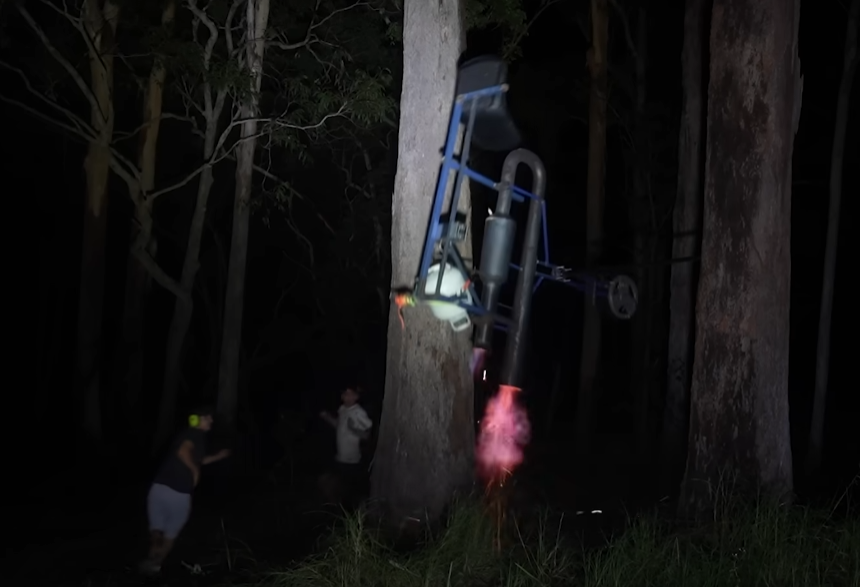
esselte said:
Michael V said:
esselte said:
Sometimes clickbait is just irresistible.https://www.youtube.com/watch?v=ksw3V8MXZKw
There’s one in every crowd. Leaning the head back against a running pulse-jet hanging from some sort of suspender, seems well…
At least he’s wearing earmuffs!
FWIW they don’t actually sit on it whilst in operation.
LOL
That makes more sense.
The BBC uses robo-cameras disguised as dung heaps to film wildlife up close.
Spiny Norman said:
The BBC uses robo-cameras disguised as dung heaps to film wildlife up close.
David Attenborough shoed one of those being rolled with trunk and then kicked by an elephant who was obviously not fooled.
A Giant Boulder from beneath the Earth’s crust is carried slowly down the slope by a River of Lava
https://www.facebook.com/reel/1316621152993556
working out a magic square.
dunno if it works with other combinations etc.
JudgeMental said:
https://www.facebook.com/reel/1316621152993556working out a magic square.
dunno if it works with other combinations etc.
Well done.
Bubblecar said:
JudgeMental said:
https://www.facebook.com/reel/1316621152993556
working out a magic square.
dunno if it works with other combinations etc.
Well done.
what about the diagonals
I managed to get my hands on this rare ISB at a car boot sale, clearly
he didn’t know what he had. An excerpt from the Wikipedia article:
“What sets the International Standard Banana apart is its ability to be
certified by international measurement authorities, ensuring that all
units of measurement across various industries and nations are based
on this singular, flawless reference. The banana’s shape is not just for
aesthetics—its curvature plays a critical role in the calibration of
specialized equipment, such as laser measurement systems and
advanced 3D scanners.
Beyond its use in measurement, the International Standard Banana is
housed in a protective, temperature-regulated chamber that prevents
any distortions caused by environmental factors such as humidity or
temperature fluctuations, ensuring its exact dimensions remain unchanged
over time. It is also periodically recalibrated in accordance with international
standards to maintain its accuracy.
In short, the International Standard Banana is the ultimate tool for achieving
absolute measurement precision, used by scientists, engineers, and
manufacturers worldwide to ensure consistency and accuracy in the
measurement of every conceivable object.”
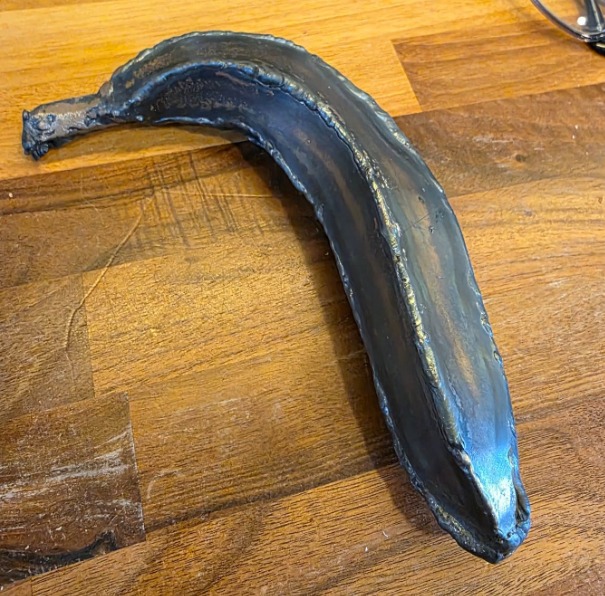
JudgeMental said:
I managed to get my hands on this rare ISB at a car boot sale, clearly
he didn’t know what he had. An excerpt from the Wikipedia article:“What sets the International Standard Banana apart is its ability to be
certified by international measurement authorities, ensuring that all
units of measurement across various industries and nations are based
on this singular, flawless reference. The banana’s shape is not just for
aesthetics—its curvature plays a critical role in the calibration of
specialized equipment, such as laser measurement systems and
advanced 3D scanners.Beyond its use in measurement, the International Standard Banana is
housed in a protective, temperature-regulated chamber that prevents
any distortions caused by environmental factors such as humidity or
temperature fluctuations, ensuring its exact dimensions remain unchanged
over time. It is also periodically recalibrated in accordance with international
standards to maintain its accuracy.In short, the International Standard Banana is the ultimate tool for achieving
absolute measurement precision, used by scientists, engineers, and
manufacturers worldwide to ensure consistency and accuracy in the
measurement of every conceivable object.”
:)
The Bomb Even the FBI Couldn’t Defuse
In 1980, a gambler planted a 1,000-pound bomb in a Nevada casino—so complex, even the FBI failed to stop it. This is the insane true story of Harvey’s Casino bombing.
Megaprojects channel
Spiny Norman said:
The Bomb Even the FBI Couldn’t DefuseIn 1980, a gambler planted a 1,000-pound bomb in a Nevada casino—so complex, even the FBI failed to stop it. This is the insane true story of Harvey’s Casino bombing.
Megaprojects channel
These days, you don’t need a bomb to destroy a casino, you just need to replace the management with the bunch of clowns who run Star casinos.
Unitree B2-W Talent Awakening!
One year after mass production kicked off, Unitree’s B2-W Industrial Wheel has been upgraded with more exciting capabilities.
https://www.youtube.com/watch?v=X2UxtKLZnNo
Most impressive indeed.
Spiny Norman said:
Unitree B2-W Talent Awakening!
One year after mass production kicked off, Unitree’s B2-W Industrial Wheel has been upgraded with more exciting capabilities.https://www.youtube.com/watch?v=X2UxtKLZnNo
Most impressive indeed.
_
As Harry Hoo would say…..Amazing
What Really Happened to All the Flak Fired During World War II?
During World War II, the skies above Europe and the Pacific were filled with more than just aircraft.
Anti-aircraft guns—flak—poured tens of thousands of explosive shells into the air every day, creating deadly clouds of steel to bring down enemy bombers.
But here’s a question most never ask: what happened to all that flak after it was fired?
In this video, we’ll uncover the surprising fate of all that metal, the science behind flak shells, and the very real dangers that lingered long after the sky battles ended.
FactBytes channel.
https://www.youtube.com/watch?v=yN-VkkqBld4
Something I hadn’t considered before.
Movile Cave (Romanian: Peștera Movile) is a cave near Mangalia, Constanța County, Romania discovered in 1986 by Cristian Lascu during construction work a few kilometers from the Black Sea coast.
It is notable for its unique subterranean groundwater ecosystem abundant in hydrogen sulfide and carbon dioxide, but low in oxygen. Life in the cave has been separated from the outside for the past 5.5 million years and it is based completely on chemosynthesis.
Due to its extreme environment, access to Movile Cave is strictly controlled, and a limited number of researchers have permission to study its conditions.
The Amazing World Of Microscopic Machines
This video explains the world of MEMS – tiny integrated devices combining mechanical and electrical parts, manufactured using advanced chip-making techniques. Learn how these systems, often smaller than a grain of sand, perform complex tasks that impact our world on a macro scale.
Video Highlights:
MEMS Fundamentals: What they are and why they’re so powerful.
Microfabrication: A look into how MEMS are built using photolithography, bulk micromachining, surface micromachining and High-Aspect-Ratio Micromachining (HARM).
Key MEMS Devices & How They Work:
Accelerometers: Sensing crashes in cars and motion in phones.
Gyroscopes: Detecting rotation for navigation and stability.
Inkjet Print Heads: Thermal vs. Piezoelectric methods explained.
Digital Micromirror Devices (DLP): The tech behind sharp digital projection.
Optical MEMS: Revolutionizing optical communication.
Bio-MEMS: Enabling “lab-on-a-chip” concepts and advanced medical treatments.
Future Potential: Where MEMS technology is heading next, pushing the boundaries towards nanotechnology.
New Mind channel
Deev’s index refuses to load for me yet again. I was going to put this in the Old Photos thread but this will have to do.
Albee Rolligon: an innovative transport truck from the 50s on ultra low pressure tyres.
https://www.amusingplanet.com/2018/03/rolligon-vehicle-that-makes-running.html
Spiny Norman said:
Deev’s index refuses to load for me yet again. I was going to put this in the Old Photos thread but this will have to do.Albee Rolligon: an innovative transport truck from the 50s on ultra low pressure tyres.
https://www.amusingplanet.com/2018/03/rolligon-vehicle-that-makes-running.html
Heh.
You certainly wouldn’t want that tyre to burst while it’s giving you a back rub…

Philadelphia Man Finds Himself on Missing Children’s Site
Steven Carter solved his own missing person’s case.
A Philadelphia man who was adopted as a child found himself on a missing person’s website and ended up solving his own case.
Steven Carter, a 35-year-old software salesman, was adopted from a foster home in Honolulu, Hawaii, when he was 4 years old.
In 2010, Carter browsed a missing children’s website, MissingKids.com, for cases of children reported missing in Hawaii. He found an age-progression image that looked very similar to himself, created from a photograph of a baby named Marx Panama Moriarty Barnes.
Carter’s adoptive mother, Victoria Carter, told ABC News he sent them the photograph right away.
“He called some friends and he called us and wanted everyone to look at this website,” Victoria Carter said. “We all looked at it, and the timing was right. The birth date was one day different from his birthday. He looked very much like the baby from the few pictures we had of him when he was small. They recommended on the site that he call the police department in Honolulu, which he did.
“We provided the police with as much information as we had,” she said. “Three months later they did a DNA test on him.”
Eight months later, it was confirmed that Steven Carter was Marx Panama Moriarty Barnes.
https://abcnews.go.com/US/philadelphia-man-finds-missing-childrens-site/story?id=16235200
From 2012 but I thought it was pretty darn cool.
Spiny Norman said:
Philadelphia Man Finds Himself on Missing Children’s Site
Steven Carter solved his own missing person’s case.A Philadelphia man who was adopted as a child found himself on a missing person’s website and ended up solving his own case.
Steven Carter, a 35-year-old software salesman, was adopted from a foster home in Honolulu, Hawaii, when he was 4 years old.
In 2010, Carter browsed a missing children’s website, MissingKids.com, for cases of children reported missing in Hawaii. He found an age-progression image that looked very similar to himself, created from a photograph of a baby named Marx Panama Moriarty Barnes.
Carter’s adoptive mother, Victoria Carter, told ABC News he sent them the photograph right away.
“He called some friends and he called us and wanted everyone to look at this website,” Victoria Carter said. “We all looked at it, and the timing was right. The birth date was one day different from his birthday. He looked very much like the baby from the few pictures we had of him when he was small. They recommended on the site that he call the police department in Honolulu, which he did.
“We provided the police with as much information as we had,” she said. “Three months later they did a DNA test on him.”
Eight months later, it was confirmed that Steven Carter was Marx Panama Moriarty Barnes.
https://abcnews.go.com/US/philadelphia-man-finds-missing-childrens-site/story?id=16235200
From 2012 but I thought it was pretty darn cool.
So essentially he was stolen in the beginning?
I found an RBMK Reactor Graphite Block in my Backyard
I found a real RBMK graphite block in my backyard. No joke—this thing was part of a Soviet nuclear reactor, just like in the Chernobyl series.
It’s real, it’s massive, and—spoiler alert—it doesn’t glow in the dark. I even had it tested for radiation.
Wanna know where it came from? Watch now to see what Soviet nuclear leftovers look like up close!
The Many Design Flaws of the Atomic Landmine
“Blue Peacock was designed after the free-falling Blue Danube and weighed 7.2 long tons (7,300 kg). A total of two firing units were built: the casing and the warhead. Due to its large steel casing, it had to be tested outdoors in a flooded gravel pit near Sevenoaks in Kent. Since the bomb would be unattended, anti-tampering devices were also used. The casing was pressurized, and pressure and tilt switches were added. The warhead could be detonated via three methods: a wire located three miles (4.8 km) away, an eight-day timer, or anti-tampering devices. Once armed, Blue Peacock would detonate ten seconds after being moved, if the casing lost pressure, or if it was filled with water.”
Qxir channel.
In China, Robots That Are Also Solar Panels, Clean The Other Solar Panels
Spiny Norman said:
In China, Robots That Are Also Solar Panels, Clean The Other Solar Panels
The beginnings of a class system.
We FINALLY Found a Way To Starve Cancer
A 1920’s theory, may have just helped a team from UCSF to tackle cancer by turning your own fat into a weapon…no radiation, no chemo, just bioengineered cells that outcompete tumours for the fuel they desperately need to survive.
Dr Ben Miles channel.
Radiation exposure with welding, Is it true?
This video investigates whether TIG welding tungsten is radioactive. The presenter demonstrates this by building a cloud chamber to visualize alpha particles emitted from thoriated tungsten, comparing it to non-thoriated tungsten. The experiment reveals the presence of radioactive elements in thoriated tungsten, highlighting the importance of safety precautions when grinding and handling this material.
https://www.youtube.com/watch?v=Vz8FXEU4iT0
More interesting that I thought it’d be.
Spiny Norman said:
Radiation exposure with welding, Is it true?This video investigates whether TIG welding tungsten is radioactive. The presenter demonstrates this by building a cloud chamber to visualize alpha particles emitted from thoriated tungsten, comparing it to non-thoriated tungsten. The experiment reveals the presence of radioactive elements in thoriated tungsten, highlighting the importance of safety precautions when grinding and handling this material.
https://www.youtube.com/watch?v=Vz8FXEU4iT0
More interesting that I thought it’d be.
I’m always interested in stuff like this.
Spiny Norman said:
Radiation exposure with welding, Is it true?This video investigates whether TIG welding tungsten is radioactive. The presenter demonstrates this by building a cloud chamber to visualize alpha particles emitted from thoriated tungsten, comparing it to non-thoriated tungsten. The experiment reveals the presence of radioactive elements in thoriated tungsten, highlighting the importance of safety precautions when grinding and handling this material.
https://www.youtube.com/watch?v=Vz8FXEU4iT0
More interesting that I thought it’d be.
Go bananas…
https://www.facebook.com/manstufforiginal/videos/3813447468965621
Nice project for a rainy day.
Oppenheimer’s Gamble – The Plutonium Crisis
https://www.youtube.com/watch?v=W06g7gIfwRE
Quite interesting indeed.
Indian railways finds a clever way to stop people from traveling without tickets.
Clever idea.
Spiny Norman said:
Indian railways finds a clever way to stop people from traveling without tickets.Clever idea.
agree, clever.
Bogsnorkler said:
Spiny Norman said:
Indian railways finds a clever way to stop people from traveling without tickets.Clever idea.
agree, clever.
Should use it here to cause them to take the train rather than drive their car.
Spiny Norman said:
Indian railways finds a clever way to stop people from traveling without tickets.Clever idea.
:)
Surgeons use augmented reality and tractography to visualize the brain in real time during surgery, enhancing precision and safety.

Spiny Norman said:
The Pillars of Creation are so purdy





The Lun-class ekranoplan (Soviet classification: Project 903) is the only ground effect vehicle (GEV) to ever be operationally deployed as a warship, deploying in the Caspian Flotilla. It was designed by Rostislav Alexeyev in 1975 and used by the Soviet and later Russian navies from 1987 until sometime in the late 1990s.
It flew using lift generated by the ground effect acting on its large wings when within about four metres (13 ft) above the surface of the water. Although they might look similar to traditional aircraft, ekranoplans like the Lun are not classified as aircraft, seaplanes, hovercraft, or hydrofoils. Rather, craft like the Lun-class ekranoplan are classified as maritime ships by the International Maritime Organization due to their use of the ground effect, in which the craft glides just above the surface of the water.
https://en.wikipedia.org/wiki/Lun-class_ekranoplan

Bogsnorkler said:
When a fishie, meet a fishie,
Swimming through the sea,
Will the fishie’s frequency,
Make the other see?
The Rev Dodgson said:
Bogsnorkler said:
When a fishie, meet a fishie,
Swimming through the sea,
Will the fishie’s frequency,
Make the other see?
what if they were using the identical same frequency
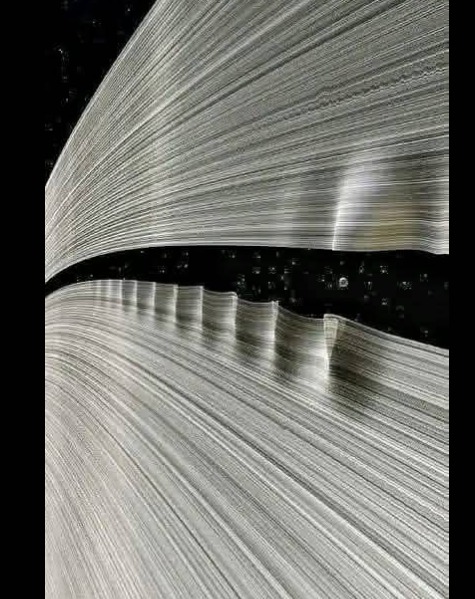
This is Daphnis, one of Saturn’s moons.
This image shows its unusual gravitational effect on Saturn’s rings
Bogsnorkler said:

This is Daphnis, one of Saturn’s moons.
This image shows its unusual gravitational effect on Saturn’s rings
Remarkable, thanks.
Bogsnorkler said:

This is Daphnis, one of Saturn’s moons.
This image shows its unusual gravitational effect on Saturn’s rings
Ripples of Saturn. :)
Spiny Norman said:
Bogsnorkler said:

This is Daphnis, one of Saturn’s moons.
This image shows its unusual gravitational effect on Saturn’s rings
Remarkable, thanks.
Looks a lot like a poor photograph of a bad job of laying woodgrain floor viny.
captain_spalding said:
Spiny Norman said:
Bogsnorkler said:

This is Daphnis, one of Saturn’s moons.
This image shows its unusual gravitational effect on Saturn’s rings
Remarkable, thanks.
Looks a lot like a poor photograph of a bad job of laying woodgrain floor viny.
…vinyl.
captain_spalding said:
Spiny Norman said:
Bogsnorkler said:

This is Daphnis, one of Saturn’s moons.
This image shows its unusual gravitational effect on Saturn’s rings
Remarkable, thanks.
Looks a lot like a poor photograph of a bad job of laying woodgrain floor viny.
l. ;)
I see exactly what you are seeing.
Could also be a vinyl record warping.
captain_spalding said:
captain_spalding said:
Spiny Norman said:Remarkable, thanks.
Looks a lot like a poor photograph of a bad job of laying woodgrain floor viny.
…vinyl.
And they left the dust underneath…
At 18 Lilford Place, Half Moon Bay, Auckland, there’s a Harrier VTOl jet sitting in the back yard.
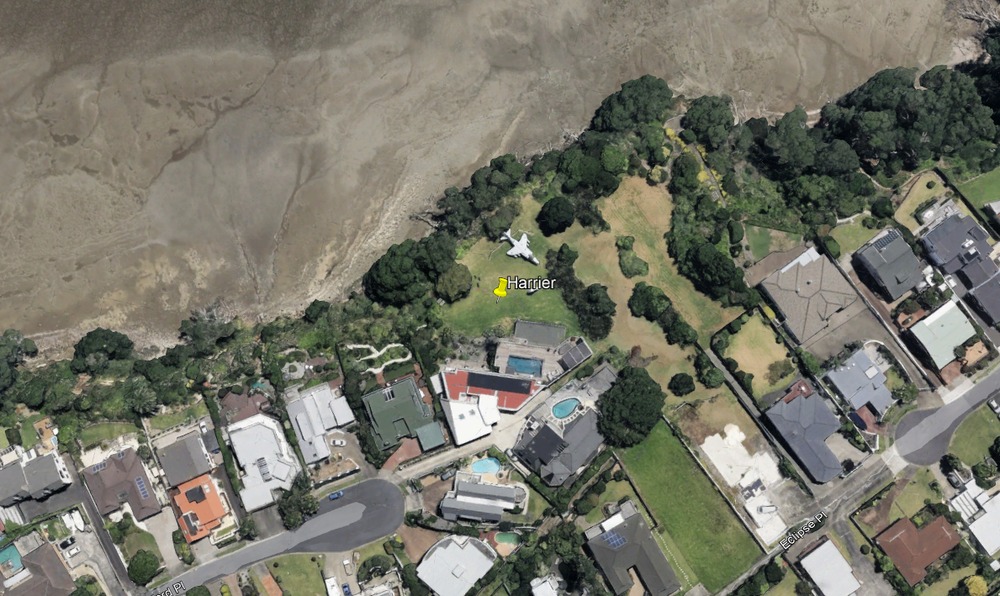
https://mrcaviation.blogspot.com/2016/03/sea-harrier-zd580.html
Spiny Norman said:
At 18 Lilford Place, Half Moon Bay, Auckland, there’s a Harrier VTOl jet sitting in the back yard.
https://mrcaviation.blogspot.com/2016/03/sea-harrier-zd580.html
Heck!
Any background?
Spiny Norman said:
At 18 Lilford Place, Half Moon Bay, Auckland, there’s a Harrier VTOl jet sitting in the back yard.
https://mrcaviation.blogspot.com/2016/03/sea-harrier-zd580.html
Makes a change from derelict cars.

A rather impressive drone show in China.
https://www.reddit.com/r/BeAmazed/comments/1kjksb5/just_a_regular_new_year_celabration_in_china/
This is the triple point of water where it melts, boils, and freezes at the same time. It occurs at 0.01°C and 611.657 pascals, where all three phases of water coexist in perfect equilibrium.
https://www.reddit.com/r/BeAmazed/comments/1kisi85/this_is_the_triple_point_of_water_where_it_melts/
Spiny Norman said:
This is the triple point of water where it melts, boils, and freezes at the same time. It occurs at 0.01°C and 611.657 pascals, where all three phases of water coexist in perfect equilibrium.https://www.reddit.com/r/BeAmazed/comments/1kisi85/this_is_the_triple_point_of_water_where_it_melts/
Odd goings on.
Bubblecar said:
Spiny Norman said:
This is the triple point of water where it melts, boils, and freezes at the same time. It occurs at 0.01°C and 611.657 pascals, where all three phases of water coexist in perfect equilibrium.https://www.reddit.com/r/BeAmazed/comments/1kisi85/this_is_the_triple_point_of_water_where_it_melts/
Odd goings on.
now find the point on earth where it naturally occurs
Spiny Norman said:
A rather impressive drone show in China.https://www.reddit.com/r/BeAmazed/comments/1kjksb5/just_a_regular_new_year_celabration_in_china/
There be dragons (then wine).
Spiny Norman said:
This is the triple point of water where it melts, boils, and freezes at the same time. It occurs at 0.01°C and 611.657 pascals, where all three phases of water coexist in perfect equilibrium.https://www.reddit.com/r/BeAmazed/comments/1kisi85/this_is_the_triple_point_of_water_where_it_melts/
Nice one.
Spiny Norman said:
This is the triple point of water where it melts, boils, and freezes at the same time. It occurs at 0.01°C and 611.657 pascals, where all three phases of water coexist in perfect equilibrium.https://www.reddit.com/r/BeAmazed/comments/1kisi85/this_is_the_triple_point_of_water_where_it_melts/
If you travel upwards to 27.563 km above sea level, the air pressure will be about 611.657 pascals.
If I have my calculations right.
Australian author gets into the vault where the Victoria Cross metal is kept.
I was given permission to hold the metal that all Victoria Crosses are made from. Gordon Traill and I became (according to the officers on the base) the first and only Australians ever given permission to enter the vault where the metal is kept. Some VCs were made from other metals, but most are made from this. There is enough left to make about 80 more Victoria Crosses.
First fault rupture ever filmed. M7.9 surface rupture filmed near Thazi, Myanmar.
Quite remarkable!
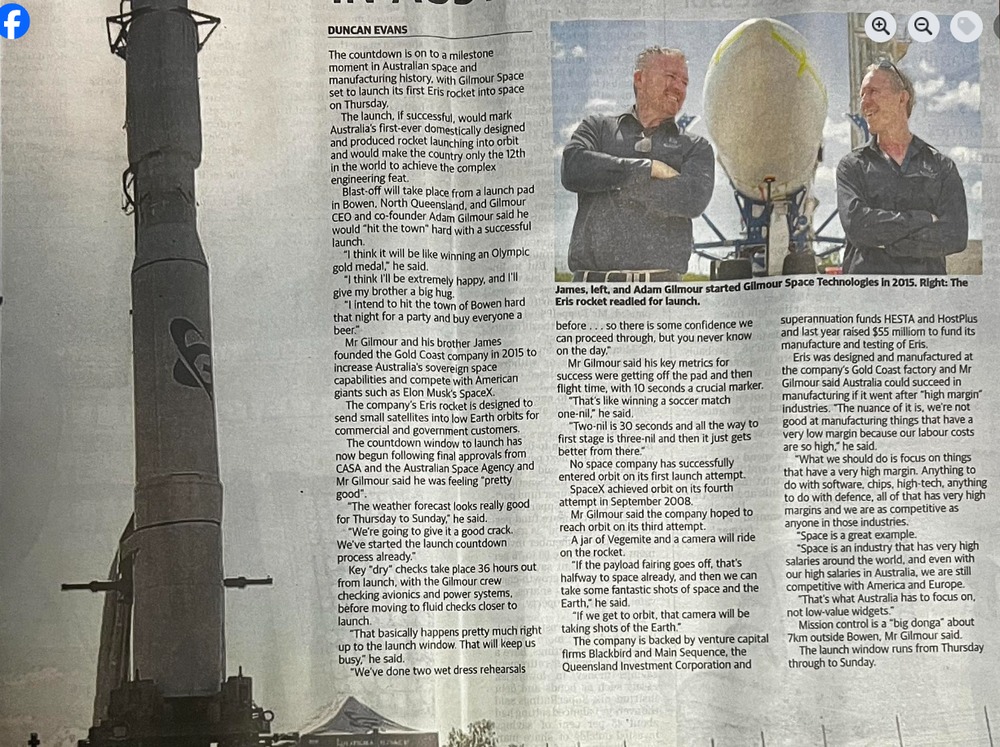
https://1517.substack.com/p/why-bell-labs-worked
Why Bell Labs Worked.
Or, how MBA culture killed Bell Labs
Bogsnorkler said:
https://1517.substack.com/p/why-bell-labs-workedWhy Bell Labs Worked.
Or, how MBA culture killed Bell Labs
Fairfax media had some problems.
Then, young Warwick came home from the USA, with his crisp new MBA diploma, and Lady Mary exerted some pressure, and Warwick was given control of the business.
He proceeded to immediately put it into a nose-dive that would have brought tears of pride to the eyes of any kamikaze instructor.
Just one story from the annals of those who’ve attained the qualification of Master of Bugger-All.
Bogsnorkler said:
I used to work for them as a casual fabricator. Built a bunch of stuff, for example the Large Motor Test Stand and the big clean room.
Bogsnorkler said:
https://1517.substack.com/p/why-bell-labs-workedWhy Bell Labs Worked.
Or, how MBA culture killed Bell Labs
Multi-Billionaire Arseholes?
captain_spalding said:
Bogsnorkler said:
https://1517.substack.com/p/why-bell-labs-workedWhy Bell Labs Worked.
Or, how MBA culture killed Bell Labs
Fairfax media had some problems.
Then, young Warwick came home from the USA, with his crisp new MBA diploma, and Lady Mary exerted some pressure, and Warwick was given control of the business.
He proceeded to immediately put it into a nose-dive that would have brought tears of pride to the eyes of any kamikaze instructor.
Just one story from the annals of those who’ve attained the qualification of Master of Bugger-All.
Oh, that MBA.
I’m pretty sure it’s Master of Bullshit Academia.
The Rev Dodgson said:
captain_spalding said:
Bogsnorkler said:
https://1517.substack.com/p/why-bell-labs-workedWhy Bell Labs Worked.
Or, how MBA culture killed Bell Labs
Fairfax media had some problems.
Then, young Warwick came home from the USA, with his crisp new MBA diploma, and Lady Mary exerted some pressure, and Warwick was given control of the business.
He proceeded to immediately put it into a nose-dive that would have brought tears of pride to the eyes of any kamikaze instructor.
Just one story from the annals of those who’ve attained the qualification of Master of Bugger-All.
Oh, that MBA.
I’m pretty sure it’s Master of Bullshit Academia.
Also know as:
Master of Back-Arsewards
Makes Bad into Awful
Master of Bad Administration
Master of Buggering Around
Makes Bad Assessments
Mad, Bad, and Arbitrary
captain_spalding said:
The Rev Dodgson said:
captain_spalding said:
Fairfax media had some problems.
Then, young Warwick came home from the USA, with his crisp new MBA diploma, and Lady Mary exerted some pressure, and Warwick was given control of the business.
He proceeded to immediately put it into a nose-dive that would have brought tears of pride to the eyes of any kamikaze instructor.
Just one story from the annals of those who’ve attained the qualification of Master of Bugger-All.
Oh, that MBA.
I’m pretty sure it’s Master of Bullshit Academia.
Also know as:
Master of Back-Arsewards
Makes Bad into Awful
Master of Bad Administration
Master of Buggering Around
Makes Bad Assessments
Mad, Bad, and Arbitrary
… it’s a signal, yous’r‘n’t meant to learn anything or develop any skillz from it …
Spiny Norman said:
First fault rupture ever filmed. M7.9 surface rupture filmed near Thazi, Myanmar.Quite remarkable!
Thanks. DA beat you to it, but the vision really is quite wow!
So much mass moving to the right. Just within the vision of that one camera. And the fault is hundreds of km long.
Michael V said:
Divine Angel said:
This one’s (mostly) for MV. Myanmar earthquake. Watch the right side of the video, not the driveway.https://www.reddit.com/r/Damnthatsinteresting/s/IV3tMBQeSQ
Surface fracture: mid-upper left to mid right, 0:13 – 0:15, stepwise. I love the dextral ground movement seen above the gate and fence, just after the gates open. And how a hidden human structure becomes visible on the right side of the gate portal as the other bock moves to the right.
Shows just how powerful that earthquake was, moving that amount of land. Note that that amount of ground movement (3 metres) and more was recorded over hundreds of kilometres along the surface trace of the fault.
Thanks. Amazing.
:)
Scientists Give Tardigrade World’s Smallest Tattoo.
Tardigrades – The world’s hardiest creatures just got the world’s smallest tattoo. In a nanotechnology breakthrough, scientists have used Ice Lithography to create microscopic tattoos on the internet’s favourite micro-animal.
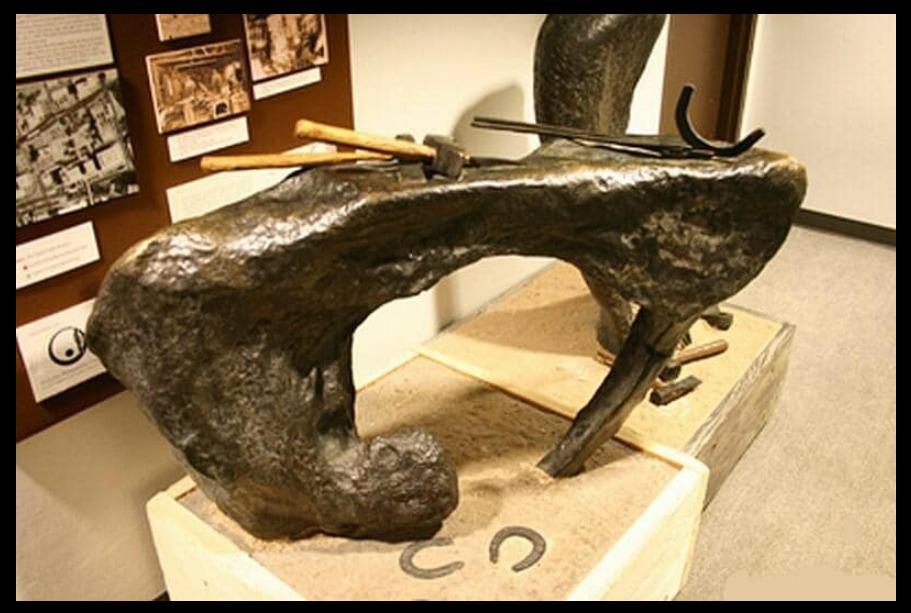
The Tucson Ring…an out of this world anvil.
It was reported as one of several masses of virgin iron found
at the foot of the Sierra de la Madera and transported to the
plaza of Tucson, Arizona circa 1850, where it was used as an
anvil in a blacksmith’s shop before being recognized as a meteorite …
now resides in the Smithsonian Museum.
Dr Brad Tucker
Tomorrow, Gilmour Space in Queensland will attempt the launch of their first rocket!
While Australia has launched rockets before, in fact Australia was the third country to build and launch a rocket from its own soil with
WRESAT in 1967, none of the rockets have been solely Australian build and put into orbit.
Not only has Gilmour built the rocket, but they had to build the Bowen Spaceport for launches as well. It is like they not only built a new airplane model, but they built the airport as well and are seeing for the first time if it will all work!
The rocket has 3-stages standing 25 metres tall. The first and second stages are a hybrid rocket of liquid oxygen and a solid fuel.
The event will not be livestreamed – which is sad for all of us, but understandable with how much work they have to do. There will be video of the launched released though!
Exciting times ahead!
Image Credit: Gilmour Space

Bogsnorkler said:
Dr Brad TuckerTomorrow, Gilmour Space in Queensland will attempt the launch of their first rocket!
While Australia has launched rockets before, in fact Australia was the third country to build and launch a rocket from its own soil with
WRESAT in 1967, none of the rockets have been solely Australian build and put into orbit.Not only has Gilmour built the rocket, but they had to build the Bowen Spaceport for launches as well. It is like they not only built a new airplane model, but they built the airport as well and are seeing for the first time if it will all work!
The rocket has 3-stages standing 25 metres tall. The first and second stages are a hybrid rocket of liquid oxygen and a solid fuel.
The event will not be livestreamed – which is sad for all of us, but understandable with how much work they have to do. There will be video of the launched released though!
Exciting times ahead!
Image Credit: Gilmour Space
Good luck to them, even though it looks a bit like an inflatable prop.
Bogsnorkler said:
Dr Brad TuckerTomorrow, Gilmour Space in Queensland will attempt the launch of their first rocket!
While Australia has launched rockets before, in fact Australia was the third country to build and launch a rocket from its own soil with
WRESAT in 1967, none of the rockets have been solely Australian build and put into orbit.Not only has Gilmour built the rocket, but they had to build the Bowen Spaceport for launches as well. It is like they not only built a new airplane model, but they built the airport as well and are seeing for the first time if it will all work!
The rocket has 3-stages standing 25 metres tall. The first and second stages are a hybrid rocket of liquid oxygen and a solid fuel.
The event will not be livestreamed – which is sad for all of us, but understandable with how much work they have to do. There will be video of the launched released though!
Exciting times ahead!
Image Credit: Gilmour Space
QUEENSLANDER
Peak Warming Man said:
Bogsnorkler said:
Dr Brad TuckerTomorrow, Gilmour Space in Queensland will attempt the launch of their first rocket!
While Australia has launched rockets before, in fact Australia was the third country to build and launch a rocket from its own soil with
WRESAT in 1967, none of the rockets have been solely Australian build and put into orbit.Not only has Gilmour built the rocket, but they had to build the Bowen Spaceport for launches as well. It is like they not only built a new airplane model, but they built the airport as well and are seeing for the first time if it will all work!
The rocket has 3-stages standing 25 metres tall. The first and second stages are a hybrid rocket of liquid oxygen and a solid fuel.
The event will not be livestreamed – which is sad for all of us, but understandable with how much work they have to do. There will be video of the launched released though!
Exciting times ahead!
Image Credit: Gilmour Space
QUEENSLANDER
So your think they’re all kooks? Harsh but fair.
https://www.abc.net.au/news/science/2025-05-15/fossil-footprints-early-animal-ancestors-discovered-victoria/105275336
How One Company Secretly Poisoned The Planet.
The history of Teflon and exposing the biggest chemical cover up in history – that has polluted the entire global water system and led to potentially dangerous forever chemicals being found in the entire US population.
Veritasium channel.
Dropping a stone into Veryovkina Cave, at 2,209 metres deep, it is the second deepest-known cave on Earth.
Spiny Norman said:
Dropping a stone into Veryovkina Cave, at 2,209 metres deep, it is the second deepest-known cave on Earth.
It’s an impressive hole.
Bubblecar said:
Spiny Norman said:
Dropping a stone into Veryovkina Cave, at 2,209 metres deep, it is the second deepest-known cave on Earth.It’s an impressive hole.
Had a look at https://en.wikipedia.org/wiki/List_of_deepest_caves
which tells me that the 4 deepest caves are all in Abkhazia / Georgia and the 9 deepest are all in Europe (if Georgia counts as Europe).
Spiny Norman said:
Dropping a stone into Veryovkina Cave, at 2,209 metres deep, it is the second deepest-known cave on Earth.
“… it is the second deepest-known cave on Earth.”
Well, it won’t be, if every Wally who wanders in there keeps throwing stones into it.
captain_spalding said:
Spiny Norman said:
Dropping a stone into Veryovkina Cave, at 2,209 metres deep, it is the second deepest-known cave on Earth.“… it is the second deepest-known cave on Earth.”
Well, it won’t be, if every Wally who wanders in there keeps throwing stones into it.
LOL
captain_spalding said:
Spiny Norman said:
Dropping a stone into Veryovkina Cave, at 2,209 metres deep, it is the second deepest-known cave on Earth.“… it is the second deepest-known cave on Earth.”
Well, it won’t be, if every Wally who wanders in there keeps throwing stones into it.
Heh!
:)
Spiny Norman said:
Dropping a stone into Veryovkina Cave, at 2,209 metres deep, it is the second deepest-known cave on Earth.
I timed that at around 16 seconds from drop to noise.
My calcs put that hole at around 850m deep. 13 seconds to hit the bottom and 3 seconds to for the sound to return.
Kingy said:
Spiny Norman said:
Dropping a stone into Veryovkina Cave, at 2,209 metres deep, it is the second deepest-known cave on Earth.I timed that at around 16 seconds from drop to noise.
My calcs put that hole at around 850m deep. 13 seconds to hit the bottom and 3 seconds to for the sound to return.
There’s a cave near here somewhere that I visited 50ish years ago. To show how deep it was, the tour guide on each tour group(around 8 a day) would chuck an old coke can into “the deep” so that we could hear how long it took to bounce all the way to silence at the bottom. There must be thousands of old cans in that previously pristine pit.
Another pristine cave nearby was used as the sewer from the hotel next to it built in the late 1800’s.
Different times.
This cruiseship is so large that it displaces the water and pulls the tide out before it returns as a mini tsunami.
Spiny Norman said:
This cruiseship is so large that it displaces the water and pulls the tide out before it returns as a mini tsunami.
To paraphrase Moe Zsyslak:
what a fucking eyesore.
Is a mini tsunami like a mini tornado? 🙂
I refuse to dignify that object with the word ‘ship’.
It’s a ‘vessel’. In the same way that an old cooking pot is a ‘vessel’.
A ‘ship’should have at least a small degree of grace, of style, some shred of evidence that someone cared enough about to, somewhere in its design, to incorporate at least a few molecules of dignity, if not beauty.
Some tiny trace of ‘soul’.
That vessel has none of those things. I don’t want to set foot aboard a vessel like that.
Inside a Dalek
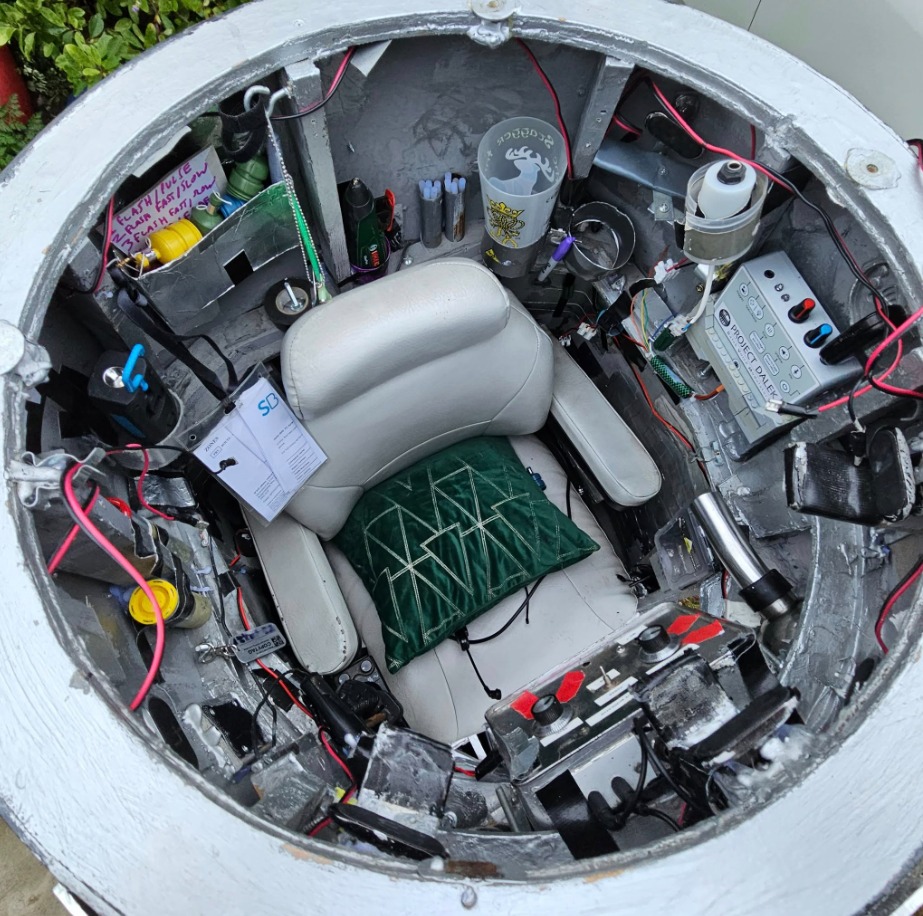
Bogsnorkler said:
Inside a Dalek
Luxury, they get a cushion.
Bubblecar said:
Bogsnorkler said:
Inside a Dalek
Luxury, they get a cushion.
Looks tighter than a spitfires cockpit.
Bogsnorkler said:
Inside a Dalek
Electrical tape, mobile phone holder, drink holder. That I understand.
Glue sticks and party poppers? WTF?
Looking down on Saturn’s rings.
https://preview.redd.it/this-is-a-view-looking-down-on-a-portion-of-saturns-rings-

Bogsnorkler said:
Nice, thanks.
On Reddit a couple of weeks ago, someone was saying Windows Swap, or similar, was showing footage from inside people’s homes, including from baby monitors.
https://pubs.acs.org/doi/10.1021/acs.nanolett.4c06410
Harnessing Photon Recoil for Enhanced Torque on Light-Driven Metarotors
Contact-free rotation of microscopic objects in aqueous environments based on optical forces is a powerful concept in the development of light-driven microrobots, micromachines, torque transducers, and rheological sensors. Here, we demonstrate freely movable quasi-two-dimensional metasurface rotors with lateral dimensions up to 100 μm while still exhibiting controllable and steady rotation when submerged in water. The metarotors utilize photon recoil to produce strong optical torque by deflecting low-intensity laser light toward high angles via long lever arms, which amplify the creation of orbital angular momentum. We find that the torque generated by a single metarotor can be used to rotate hundreds of passive microparticles present in solution, suggesting potential applications as particle mixers in microfluidics and microbiology. Further development might involve utilizing metarotors as components in future microrobots for biomedicine and beyond.
Aristotle’s Wheel Paradox: A Closer Look
Imagine a large wheel with a smaller wheel fixed inside it, both sharing the same center. When this composite wheel rolls along a surface without slipping, it appears that both the outer and inner wheels cover the same linear distance in one full rotation. This seems counterintuitive—the inner wheel has a smaller circumference, so how can both trace the same path length?
· Understanding the Mechanics
The explanation lies in how each wheel interacts with the surface:
a) Outer Wheel: In contact with the ground, it rolls without slipping. The distance it covers in one full rotation equals its circumference.
b) Inner Wheel: It rotates with the outer wheel but doesn’t touch the ground. Instead, it’s dragged along, combining rotation with slipping. Its motion is not true rolling.
This difference becomes evident in the paths traced by points on each wheel. A point on the outer edge follows a cycloidal path. In contrast, a point on the inner wheel traces a curtate cycloid—a shorter, looping trajectory due to its proximity to the center.
· The Illusion of Equal Distance in the Video
In the old video often used to illustrate this idea, a single wheel features two concentric circles drawn on it—one large, one small. As the wheel rolls without slipping, only the outer edge touches the ground. Both drawn circles rotate together, but neither rolls; they’re simply carried along.
Visually, both circles appear to move the same distance across the screen. This creates the illusion of equal travel. In reality, the smaller circle slips more than the larger one due to its tighter arc around the center. As you may have noticed yourself, this so-called paradox arises from a misunderstanding of how rotation and slipping function when only the outer rim is in contact with the surface.
· A Mathematical Perspective
Mathematically, the paradox shows that a one-to-one correspondence between points on two rotating paths doesn’t imply equal arc lengths. While each point on the smaller circle aligns with a point on the larger one, their trajectories differ due to the nature of their motion.
· Conclusion
Aristotle’s Wheel Paradox isn’t a true paradox, but a reminder that intuition can mislead when dealing with motion and geometry. The apparent equal travel of both wheels results not from identical rolling behavior, but from the interplay between rotation, slipping, and perception.
https://archimedes-lab.org/wp-content/uploads/2025/04/Aristotle_Wheel_Paradox.mp4
Today’s papers are all reporting:
Sinkholes sequel: All M6 work to stop as contractor walks away from project
That’s behind a paywall, and the free sources haven’t caught up yet, but the Bingbot extracted for me:
“Recent sinkholes related to the M6 motorway construction in Sydney have raised concerns about project delays and safety, with significant impacts observed at Rockdale.
Overview of the Situation
In March 2024, a sinkhole opened up at a two-storey commercial building on West Botany Street in Rockdale, directly above the ongoing construction of the M6 motorway. This incident occurred as tunneling work was being conducted, leading to immediate safety concerns and the evacuation of workers from both the building and the tunnel site.
ABC
+1
Impact on the M6 Project
The M6 motorway, which is intended to alleviate traffic congestion in Sydney’s south, has faced significant delays due to these sinkholes. Initially projected for completion by 2025, the timeline has now been extended, with officials indicating that it could take many years longer than anticipated to finish the project. Roads Minister John Graham noted that the tunneling work has proven more challenging than expected, particularly in a 244-meter section where the sinkholes have occurred.
ABC
+1
Safety Measures and Responses
Following the appearance of the sinkhole, emergency services were called to assess the situation. Workers were evacuated as a precaution, and tunneling operations were halted indefinitely until engineers could evaluate the safety of the site. Approximately 1,800 cubic meters of concrete have been poured to fill the subsidence, indicating the seriousness of the ground instability.
ABC
+2
Conclusion
The sinkhole incidents at the M6 construction site highlight the complexities and risks associated with large infrastructure projects. As investigations continue, authorities are focused on ensuring the safety of workers and the structural integrity of nearby buildings while addressing the significant delays to the M6 motorway’s completion timeline. Further updates are expected as the situation develops.”
F22 Raptor filmed with a good camera so you can see the vertical stabilizers start to vibrate with the vortex airflow coming off the inner leading edge of the wings. Great low-pressure vapour clouds as well.
https://www.reddit.com/r/ATGV/comments/1knk7v5/f22_raptor_filmed_with_a_camera_so_fancy_you_can/
Ancient Chinese star chart dated to 2,300 years ago may be the oldest ever, challenging astronomy history.
A new study has re-ignited academic debate over the origins of the world’s earliest star chart, placing an ancient Chinese manuscript—the Star Manual of Master Shi—at the forefront of world astronomical history. Using a cutting-edge artificial intelligence technique, researchers at the Chinese National Astronomical Observatories dated this manuscript to around 355 BCE, placing its origin over two centuries earlier than previously believed and making it the oldest star catalog ever discovered.
https://archaeologymag.com/2025/05/chinese-star-chart-may-be-the-oldest-ever/
Death of Hedviga Golik.
Hedviga Golik (1924–1966) was a Croatian woman who died of unknown natural causes alone in her apartment. Her body remained undisturbed for forty-two years until it was discovered in May 2008.
Spiny Norman said:
Death of Hedviga Golik.Hedviga Golik (1924–1966) was a Croatian woman who died of unknown natural causes alone in her apartment. Her body remained undisturbed for forty-two years until it was discovered in May 2008.
No one thought to check the apartment? What an odd story.
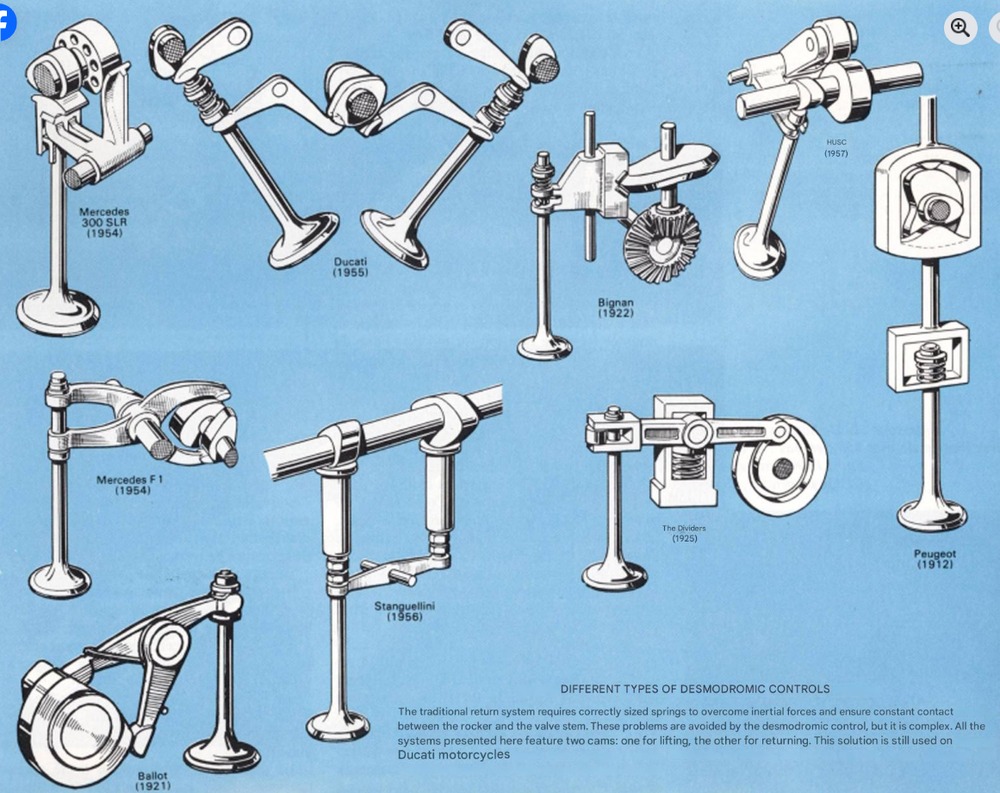
Jon Lesko
I found this rather well done historical post on the Desmodromic History. The technology is not
as much in demand now as valvetrain technology have improved since the 1950s shown in the
examples. There seems to be some confusion as to why the Desmodronic valvetrain is not in
widespread use. It has proven successful in lower mileage motorcycle applications, however
there are a multitude of variables to consider in Valvetrain design. Having spent 35 years in
engine engineering for major OEMs you deal with the priorities and trade-offs in any design.
Below are some of the factors as to why the Desmo design is not in widespread use:
1. While it is suitable for individual cylinder, low mileage applications (motorcycles), the difficulty
of maintenance in multi cylinder passenger vehicle type applications, makes it unacceptable for
current vehicle design requirements.
2. Unacceptable level of maintenance in multi cylinder passenger vehicle applications
3. Ability to run the life of the engine without adjustment. This cannot be done with current
Desmo designs.
4. Improvements in valve spring, lash adjuster, follower, and camshaft integrity.
5. Requirement for variable valve timing, lift, and duration. All of which are far more difficult if
not impossible with a Desmo design.
6. Far more expensive to manufacture.
If you wish to have a better understanding of valvetrain design and technology one of the best
resources available is:
Introduction to Engine Valvetrains by Yushu Wang
https://www.nist.gov/atomic-clocks/bringing-atomic-clock-back-life
When physicist Vladislav Gerginov arrived at the National Institute of Standards and Technology in early 2020, he was handed a daunting task — and one that sits at the heart of the agency mission: Restore NIST’s cesium fountain clock to operation as a primary frequency standard.
Fountain clocks, though few in number, play a critical role in our globally connected society: They help synchronize the billions of regular clocks and networks we all rely on. Without fountain clocks, our global timekeeping system — the one that creates and distributes the time that appears on our phones, computers and smartwatches — would be more wobbly and less reliable. So would our telecommunications and transportation systems, financial trading platforms, GPS and more.
Cesium fountains play a second vital role: They are the primary standards that measure the fundamental unit of time — the second — as it is officially defined by international agreement. They both contribute to and calibrate international atomic time; all other time measurements ultimately trace back to the fountains.
But these are not typical clocks — and not just anyone can open them up and make a broken one tick again. They don’t have springs, gears or quartz crystals. They are atomic clocks — complex, high-precision devices that extract timing pulses out of the hearts of atoms. Fountain clocks don’t even tell the time in a literal sense. Instead, they calibrate frequency, as a tuning fork does.
Bogsnorkler said:

Jon Lesko
I found this rather well done historical post on the Desmodromic History. The technology is not
as much in demand now as valvetrain technology have improved since the 1950s shown in the
examples. There seems to be some confusion as to why the Desmodronic valvetrain is not in
widespread use. It has proven successful in lower mileage motorcycle applications, however
there are a multitude of variables to consider in Valvetrain design. Having spent 35 years in
engine engineering for major OEMs you deal with the priorities and trade-offs in any design.
Below are some of the factors as to why the Desmo design is not in widespread use:1. While it is suitable for individual cylinder, low mileage applications (motorcycles), the difficulty
of maintenance in multi cylinder passenger vehicle type applications, makes it unacceptable for
current vehicle design requirements.2. Unacceptable level of maintenance in multi cylinder passenger vehicle applications
3. Ability to run the life of the engine without adjustment. This cannot be done with current
Desmo designs.4. Improvements in valve spring, lash adjuster, follower, and camshaft integrity.
5. Requirement for variable valve timing, lift, and duration. All of which are far more difficult if
not impossible with a Desmo design.6. Far more expensive to manufacture.
If you wish to have a better understanding of valvetrain design and technology one of the best
resources available is:Introduction to Engine Valvetrains by Yushu Wang
I think he had a barrow in the marketplace.
Bogsnorkler said:

Jon Lesko
I found this rather well done historical post on the Desmodromic History. The technology is not
as much in demand now as valvetrain technology have improved since the 1950s shown in the
examples. There seems to be some confusion as to why the Desmodronic valvetrain is not in
widespread use. It has proven successful in lower mileage motorcycle applications, however
there are a multitude of variables to consider in Valvetrain design. Having spent 35 years in
engine engineering for major OEMs you deal with the priorities and trade-offs in any design.
Below are some of the factors as to why the Desmo design is not in widespread use:1. While it is suitable for individual cylinder, low mileage applications (motorcycles), the difficulty
of maintenance in multi cylinder passenger vehicle type applications, makes it unacceptable for
current vehicle design requirements.2. Unacceptable level of maintenance in multi cylinder passenger vehicle applications
3. Ability to run the life of the engine without adjustment. This cannot be done with current
Desmo designs.4. Improvements in valve spring, lash adjuster, follower, and camshaft integrity.
5. Requirement for variable valve timing, lift, and duration. All of which are far more difficult if
not impossible with a Desmo design.6. Far more expensive to manufacture.
If you wish to have a better understanding of valvetrain design and technology one of the best
resources available is:Introduction to Engine Valvetrains by Yushu Wang
Nice, thanks.
I had an idea for a Desmo system a few years ago, to eliminate the need for maintaining the clearances mechanically. Probably not really worth the effort these days though, we petrol/diesel engines are slowly dying out.
Peak Warming Man said:
Bogsnorkler said:

Jon Lesko
I found this rather well done historical post on the Desmodromic History. The technology is not
as much in demand now as valvetrain technology have improved since the 1950s shown in the
examples. There seems to be some confusion as to why the Desmodronic valvetrain is not in
widespread use. It has proven successful in lower mileage motorcycle applications, however
there are a multitude of variables to consider in Valvetrain design. Having spent 35 years in
engine engineering for major OEMs you deal with the priorities and trade-offs in any design.
Below are some of the factors as to why the Desmo design is not in widespread use:1. While it is suitable for individual cylinder, low mileage applications (motorcycles), the difficulty
of maintenance in multi cylinder passenger vehicle type applications, makes it unacceptable for
current vehicle design requirements.2. Unacceptable level of maintenance in multi cylinder passenger vehicle applications
3. Ability to run the life of the engine without adjustment. This cannot be done with current
Desmo designs.4. Improvements in valve spring, lash adjuster, follower, and camshaft integrity.
5. Requirement for variable valve timing, lift, and duration. All of which are far more difficult if
not impossible with a Desmo design.6. Far more expensive to manufacture.
If you wish to have a better understanding of valvetrain design and technology one of the best
resources available is:Introduction to Engine Valvetrains by Yushu Wang
I think he had a barrow in the marketplace.
so ev already solved all this
https://www.abc.net.au/news/2025-05-07/unfortunate-woman-exhibition-story-of-historic-dv-murder/105256054
Interesting WA history and Edith Cowan.
Bogsnorkler said:
https://www.abc.net.au/news/2025-05-07/unfortunate-woman-exhibition-story-of-historic-dv-murder/105256054Interesting WA history and Edith Cowan.
Ta.
Bogsnorkler said:
https://www.abc.net.au/news/2025-05-07/unfortunate-woman-exhibition-story-of-historic-dv-murder/105256054Interesting WA history and Edith Cowan.
Nothing much has changed. Except we know 1 in 3 women live with IPV/DV.
Watch how surface tension pulls a thread into a perfect circle
https://www.reddit.com/r/interestingasfuck/s/6loOjMsWi3
Divine Angel said:
Watch how surface tension pulls a thread into a perfect circlehttps://www.reddit.com/r/interestingasfuck/s/6loOjMsWi3
I had to watch that twice to realise that it was “bubble” that was holed.
Container ship almost crashed into a house in Norway.

Spiny Norman said:
Container ship almost crashed into a house in Norway.
Looks like one of those holiday homes built right next to the water.
The Biggest Sabotage in History.
What really happened in the attack on the Nord Stream pipelines?
Fern channel.
Ex-NASA engineer Mark Rober built a small CubeSat that was launched recently and you are able to upload a photo to it, then it’ll show that image on a small screen that sits in front of a large camera that’s pointed at the Earth, so it’s possible get a literal space selfie.
https://www.youtube.com/watch?v=qr1AvisQcV8
The space selfie site is – https://space.crunchlabs.com/livestream
Ukrainian drone hunting a hidden Russian tank.
The pilot takes their time to find an entry point into the tank. I’m guessing the tank is empty though – But it’s one less tank to have to deal with.
Spiny Norman said:
Ukrainian drone hunting a hidden Russian tank.The pilot takes their time to find an entry point into the tank. I’m guessing the tank is empty though – But it’s one less tank to have to deal with.
The drone pilots will also target damaged/abandoned tanks, to prevent them being recovered and/or repaired and put back into service.
For instance, a mine might cause a tank or APC to shed a track, but could be put back in service with some repairs. So, a drone or two swoop in on the abandoned AFV, and make sure that’s rendered truly hors de combat.
captain_spalding said:
Spiny Norman said:
Ukrainian drone hunting a hidden Russian tank.The pilot takes their time to find an entry point into the tank. I’m guessing the tank is empty though – But it’s one less tank to have to deal with.
The drone pilots will also target damaged/abandoned tanks, to prevent them being recovered and/or repaired and put back into service.
For instance, a mine might cause a tank or APC to shed a track, but could be put back in service with some repairs. So, a drone or two swoop in on the abandoned AFV, and make sure that’s rendered truly hors de combat.
Makes sense and also good practice time.
captain_spalding said:
Spiny Norman said:
Ukrainian drone hunting a hidden Russian tank.
The pilot takes their time to find an entry point into the tank. I’m guessing the tank is empty though – But it’s one less tank to have to deal with.
The drone pilots will also target damaged/abandoned tanks, to prevent them being recovered and/or repaired and put back into service.
For instance, a mine might cause a tank or APC to shed a track, but could be put back in service with some repairs. So, a drone or two swoop in on the abandoned AFV, and make sure that’s rendered truly hors de combat.
wholly phuq the comments though

Gipping things in liquid oxygen. Nothing we haven’t seen before but I’m surprised that the chap is handling the frozen things with his bare hands, with apparently no affect.
The final test amuses me. :)
Spiny Norman said:
Gipping things in liquid oxygen. Nothing we haven’t seen before but I’m surprised that the chap is handling the frozen things with his bare hands, with apparently no affect.
The final test amuses me. :)
He should be smart enough to know thta oxygen burns but yes. It was the best part.
Spiny Norman said:
Gipping things in liquid oxygen. Nothing we haven’t seen before but I’m surprised that the chap is handling the frozen things with his bare hands, with apparently no affect.
The final test amuses me. :)
Leidenfrost effect?
Nautilus Magazine
A quarter-mile below the ocean’s surface, in the borderless realm of the midwater, two blue-green orbs illuminate the inky black. They glow for a few seconds then disappear. When they return, it’s for the same duration. The same disappearance. It’s a signal, a message, the morse code of an ancient language of light.
These orbs belong to Taningia danae, a species of deep-sea squid who can grow to more than seven feet in length and weigh more than 130 pounds. Also known as the Dana octopus squid for their eight arms and lack of feeding tentacles, these animals glide through the depths on a pair of huge muscular fins that unfurl from their maroon-colored body, or “mantle.”
Their arms are lined with two rows of sharp retractable hooks. And, like most deep-sea squid, they are adorned with light organs called photophores. They have some on the underside of their mantle. There are more facing upward, near one of their eyes. But it’s the photophores at the tip of two stubby arms that are truly unique. The size and shape of lemons—each nestled within a retractable lid like an eyeball in a socket—they are by far the largest photophores known to science.

This is a Maine blood worm. Its teeth are 10% made of copper.
Spiny Norman said:
This is a Maine blood worm. Its teeth are 10% made of copper.
All things rude and nasty…
Spiny Norman said:
This is a Maine blood worm. Its teeth are 10% made of copper.
ooooooo….. shudders …… Heebie geebies.
Spiny Norman said:
This is a Maine blood worm. Its teeth are 10% made of copper.
I wonder whether our red beach worms are similar.
You’d have to have a decent map of where you moored your boat.
Port Artisanal, Nouadhibou, Mauritania.

Spiny Norman said:
You’d have to have a decent map of where you moored your boat.Port Artisanal, Nouadhibou, Mauritania.
I was wondering how that harbour got so overgrown with seaweed until I had a closer look.
Spiny Norman said:
You’d have to have a decent map of where you moored your boat.Port Artisanal, Nouadhibou, Mauritania.
Bloody hell PWM will have a conniption fit.
Spiny Norman said:
You’d have to have a decent map of where you moored your boat.Port Artisanal, Nouadhibou, Mauritania.
That’a a lot of boats.
A large 3D printer that extrudes concrete to build houses.
https://www.reddit.com/r/interestingasfuck/comments/1ky78k5/house_printer/
Spiny Norman said:
A large 3D printer that extrudes concrete to build houses.https://www.reddit.com/r/interestingasfuck/comments/1ky78k5/house_printer/
Interesting.
Reinforcement?
Spiny Norman said:
A large 3D printer that extrudes concrete to build houses.https://www.reddit.com/r/interestingasfuck/comments/1ky78k5/house_printer/
Quite a lot of this going on in Australia. Have a look at the Monash Uni web site.
Michael V said:
Spiny Norman said:
A large 3D printer that extrudes concrete to build houses.https://www.reddit.com/r/interestingasfuck/comments/1ky78k5/house_printer/
Interesting.
Reinforcement?
The video says they add steel reo, and foam insulation, between the inner & outer walls.
Spiny Norman said:
Michael V said:
Spiny Norman said:
A large 3D printer that extrudes concrete to build houses.https://www.reddit.com/r/interestingasfuck/comments/1ky78k5/house_printer/
Interesting.
Reinforcement?
The video says they add steel reo, and foam insulation, between the inner & outer walls.
Ah, ta. The sound was automatically off and I hadn’t switched it on.
Tourists scrambling to get away from Mt. Etna eruption.
After a show, thousands of drones return to the staging area.
The detail that went into the making of Andor was phenomenal.
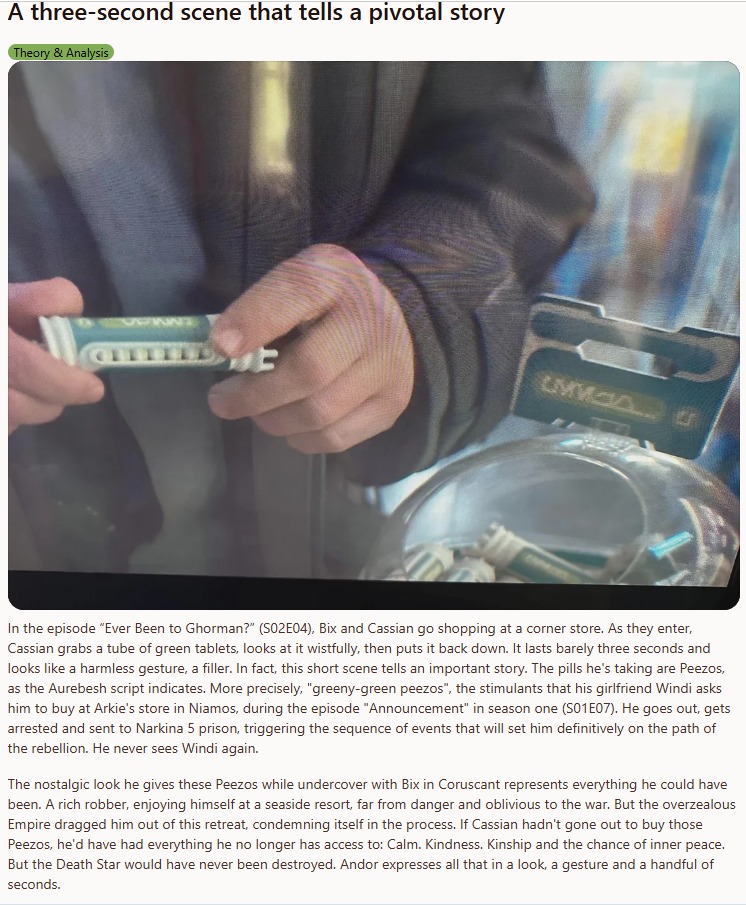
https://www.sea.museum/en/maritime-archaeology/endeavour-report
Locating HM Bark Endeavour – final report
Published
June 4, 2025
https://phys.org/news/2025-06-heaviest-proton-emitter-atomic-nucleus.html
The heaviest proton emitter: New type of atomic nucleus discovered
by University of Jyväskylä
For the first time in almost 30 years, the heaviest nucleus decaying via proton emission has been measured. The previous similar breakthrough was achieved in 1996.
The radioactive decay of atomic nuclei has been one of the keystones of nuclear physics since the beginning of nuclear research. Now the heaviest nucleus decaying via proton emission has been measured in the Accelerator Laboratory of the University of Jyväskylä, Finland. The research article was written as part of an international research collaboration involving experts in theoretical nuclear physics and published in Nature Communications on 29 May 2025.
“Proton emission is a rare form of radioactive decay, in which the nucleus emits a proton to take a step toward stability,” says Doctoral Researcher Henna Kokkonen from the University of Jyväskylä.

A scan of a brain with cerebral palsy.
This centipede mother allows her babies to eat her for nourishment, a rare behaviour known as matriphagy.
https://www.reddit.com/r/interestingasfuck/comments/1l3wcht/a_rare_behavior_shown_by_centipede/
https://www.warhistoryonline.com/instant-articles/the-german-tank-problem.html
The “German tank problem” is a statistical approach which is employed in estimating the total number of existing items from a simple random sample of said item. As its name implies, the German tank problem was developed during the Second World War.
Spiny Norman said:
This centipede mother allows her babies to eat her for nourishment, a rare behaviour known as matriphagy.https://www.reddit.com/r/interestingasfuck/comments/1l3wcht/a_rare_behavior_shown_by_centipede/
Log in only.
A 100-year-old 7,500-ton Shikumen building in Shanghai is being moved back to its spot by 432 walking robots after making space for a new underground mall.
Spiny Norman said:
A 100-year-old 7,500-ton Shikumen building in Shanghai is being moved back to its spot by 432 walking robots after making space for a new underground mall.
What’ll they think of next.

Our minuscule part of the universe, that little white dot to the right under the rings of Saturn.
Cracking the Uncrackable Code.
Jim Sanborn created a sculpture containing a secret message. It sits on the grounds of CIA headquarters in Langley, Virginia. Yet no one has been able to solve it. Code breakers from around the world have tried for 30 years. They’re stumped. The artist meets with people like cryptologist Elonka Dunin who are desperate to solve the mystery at his Maryland studio every year or so. But Sanborn won’t divulge any clues. It’s too much fun keeping everyone guessing.
Einstein Didn’t Want People To Study His Brain.
On October 31 of 2024, OpenStar achieved the momentous milestone of successfully confining their first plasma. The event took place in Wellington, New Zealand, where the company was founded and has been based for the last three years. This feat was a huge step forward for OpenStar, New Zealand, and the future of clean energy.
Creation of Contact Lenses That Grant Infrared Vision to Humans.
Spiny Norman said:
On October 31 of 2024, OpenStar achieved the momentous milestone of successfully confining their first plasma. The event took place in Wellington, New Zealand, where the company was founded and has been based for the last three years. This feat was a huge step forward for OpenStar, New Zealand, and the future of clean energy.
Hadn’t heard of OpenStar.
This is just a tiny bit promotional, but QI nonetheless.
The Rev Dodgson said:
Spiny Norman said:
On October 31 of 2024, OpenStar achieved the momentous milestone of successfully confining their first plasma. The event took place in Wellington, New Zealand, where the company was founded and has been based for the last three years. This feat was a huge step forward for OpenStar, New Zealand, and the future of clean energy.Hadn’t heard of OpenStar.
This is just a tiny bit promotional, but QI nonetheless.
So, what do we reckon?
Thirty years?

Paul Alexander, lovingly known as “Polio Paul” or
“the man in the iron lung,” has passed away, closing
a remarkable chapter in medical and human history.
Stricken with polio in 1952 at just six years old, Paul
was left almost completely paralyzed. Kept alive by
an iron lung—a massive, mechanical respirator—
he relied on the device not just to survive, but to thrive
for more than seventy years. What was meant to be a
short-term solution became a permanent part of his life,
and through it all, Paul endured with extraordinary grace.
Far from surrendering to his condition, Paul went on
to accomplish what many thought impossible. He earned
a law degree, built a career, published his memoir, and
maintained a sharp wit and vibrant mind. Through interviews,
public speaking, and writing, he inspired thousands by showing
that limitations of the body need not define the boundaries of
the soul. His strength, humor, and unwavering independence
became a powerful testament to the resilience of the human spirit.
Paul’s passing marks the end of an era and leaves behind more
than just memories—it leaves a legacy. As one of the last individuals
in the world to live full-time in an iron lung, he became a living link
to a time before the polio vaccine changed history. Yet his life was
not about what he endured, but how he lived. Paul Alexander showed
us all what it means to persevere with dignity, and in doing so, became
a symbol of courage and hope for generations to come.
Does one suffer bedsores from an iron lung?
https://www.iflscience.com/physicist-studying-sars-cov-2-virus-believes-he-has-found-hints-we-are-living-in-a-simulation-73437
Bogsnorkler said:
https://www.iflscience.com/physicist-studying-sars-cov-2-virus-believes-he-has-found-hints-we-are-living-in-a-simulation-73437
sigh.
Bogsnorkler said:
https://www.iflscience.com/physicist-studying-sars-cov-2-virus-believes-he-has-found-hints-we-are-living-in-a-simulation-73437
Yeah nah,
Bogsnorkler said:
https://www.iflscience.com/physicist-studying-sars-cov-2-virus-believes-he-has-found-hints-we-are-living-in-a-simulation-73437
Interesting notion.
The Rev Dodgson said:
Bogsnorkler said:
https://www.iflscience.com/physicist-studying-sars-cov-2-virus-believes-he-has-found-hints-we-are-living-in-a-simulation-73437sigh.
Why the sigh?
Michael V said:
The Rev Dodgson said:
Bogsnorkler said:
https://www.iflscience.com/physicist-studying-sars-cov-2-virus-believes-he-has-found-hints-we-are-living-in-a-simulation-73437sigh.
Why the sigh?
Because finding the real world does not exactly match your grossly simplified model of the real world does not mean we must live in a simulation.
The Rev Dodgson said:
Michael V said:
The Rev Dodgson said:sigh.
Why the sigh?
Because finding the real world does not exactly match your grossly simplified model of the real world does not mean we must live in a simulation.
Also:
Why is it that a lone eccentric physicist looking at the Covid virus thinks it challenges accepted theories of evolution, but the biologists studying it have never mentioned such a notion?
And when these people tell us we’re “living in a simulation”, why do they never tell us what it’s supposed to be “simulating” and how that’s being done? And what the difference is supposed to be between “the real thing” and this supposed simulation?
The Rev Dodgson said:
Michael V said:
The Rev Dodgson said:sigh.
Why the sigh?
Because finding the real world does not exactly match your grossly simplified model of the real world does not mean we must live in a simulation.
Is a simulated universe inferior to a ‘real’ universe?
Witty Rejoinder said:
The Rev Dodgson said:
Michael V said:Why the sigh?
Because finding the real world does not exactly match your grossly simplified model of the real world does not mean we must live in a simulation.
Is a simulated universe inferior to a ‘real’ universe?
I don’t know. Presumably it would be much smaller and much less complex.[
Archaeologists confirm wreck site is James Cook’s Endeavour
The Australian National Maritime Museum released confirmation on June 4, 2025, that a shipwreck site known as RI 2394 in Newport Harbour, Rhode Island, is the remains of Captain Cook’s HM Bark Endeavour.
How Glass is Made from Sand – Industrial and Artisanal Manufacturing Process: Flat Glass
Glass is made by mixing and fusing sand with sodium carbonate and limestone. But have you ever wondered how these ingredients are transformed into one of the most widely used solid materials in the world?
Spiny Norman said:
Archaeologists confirm wreck site is James Cook’s EndeavourThe Australian National Maritime Museum released confirmation on June 4, 2025, that a shipwreck site known as RI 2394 in Newport Harbour, Rhode Island, is the remains of Captain Cook’s HM Bark Endeavour.
I thought I’d heard that before, so I went to Wikipedia.
“ On 3 February 2022, the Australian National Maritime Museum (ANMM) held an event attended by federal cabinet minister Paul Fletcher to announce that the wreck had been confirmed to be that of the Endeavour. The RIMAP has called the announcement “premature” and a “breach of contract”, which the ANMM denies. The RIMAP’s lead investigator stated that “there has been no indisputable data found to prove the site is that iconic vessel, and there are many unanswered questions that could overturn such an identification”. In November 2023, however, the ANMM announced further confirmative discoveries. Meanwhile, the wreck is being eaten by shipworms and gribbles.”
https://en.wikipedia.org/wiki/HMS_Endeavour#Final_resting_place
Spiny Norman said:
Archaeologists confirm wreck site is James Cook’s EndeavourThe Australian National Maritime Museum released confirmation on June 4, 2025, that a shipwreck site known as RI 2394 in Newport Harbour, Rhode Island, is the remains of Captain Cook’s HM Bark Endeavour.
I posted the report in the last day or so.
https://www.sea.museum/en/maritime-archaeology/endeavour-report
https://www.engineering.columbia.edu/about/news/columbia-engineering-roboticists-discover-alternative-physics
Bogsnorkler said:
https://www.engineering.columbia.edu/about/news/columbia-engineering-roboticists-discover-alternative-physics
Ta.
Michael V said:
Bogsnorkler said:
https://www.engineering.columbia.edu/about/news/columbia-engineering-roboticists-discover-alternative-physicsTa.
how about a comment? a “ta” is nothing. I don’t need thanks.
Bogsnorkler said:
Michael V said:
Bogsnorkler said:
https://www.engineering.columbia.edu/about/news/columbia-engineering-roboticists-discover-alternative-physicsTa.
how about a comment? a “ta” is nothing. I don’t need thanks.
I found it interesting. It is outside of my field of expertise, so I cannot sensibly evaluate it, nor can I add further insight.
Michael V said:
Bogsnorkler said:
Michael V said:Ta.
how about a comment? a “ta” is nothing. I don’t need thanks.
I found it interesting. It is outside of my field of expertise, so I cannot sensibly evaluate it, nor can I add further insight.
Also, one of your ears is slightly lower than the other. There’s a comment for you.
Bogsnorkler said:
Michael V said:
Bogsnorkler said:
https://www.engineering.columbia.edu/about/news/columbia-engineering-roboticists-discover-alternative-physicsTa.
how about a comment? a “ta” is nothing. I don’t need thanks.
“I always wondered, if we ever met an intelligent alien race, would they have discovered the same physics laws as we have, or might they describe the universe in a different way?” said Lipson. “Perhaps some phenomena seem enigmatically complex because we are trying to understand them using the wrong set of variables.” In the experiments, the number of variables was the same each time the AI restarted, but the specific variables were different each time. So yes, there are alternative ways to describe the universe and it is quite possible that our choices aren’t perfect.
Heh! I commented on this pre-cognitively a few days ago, “Light” by M.John Harrison, the Kefahuchi Tract and all that, every sentient species in the Universe having completely disparate understandings of reality. I like this Lipson fella. Suspect he’s read some of the same books as me. Makes great tea as well.
So this article is about AI analyzing physical events and developing their own ab initio understanding of it? Understanding which isn’t immediately comprehensible to the humans analyzing its results?
I guess maybe, the best thing to do would be to develop an “AI” that can translate from inscrutable AI speak to human speak.
esselte said:
Bogsnorkler said:
Michael V said:Ta.
how about a comment? a “ta” is nothing. I don’t need thanks.
“I always wondered, if we ever met an intelligent alien race, would they have discovered the same physics laws as we have, or might they describe the universe in a different way?” said Lipson. “Perhaps some phenomena seem enigmatically complex because we are trying to understand them using the wrong set of variables.” In the experiments, the number of variables was the same each time the AI restarted, but the specific variables were different each time. So yes, there are alternative ways to describe the universe and it is quite possible that our choices aren’t perfect.
Heh! I commented on this pre-cognitively a few days ago, “Light” by M.John Harrison, the Kefahuchi Tract and all that, every sentient species in the Universe having completely disparate understandings of reality. I like this Lipson fella. Suspect he’s read some of the same books as me. Makes great tea as well.
So this article is about AI analyzing physical events and developing their own ab initio understanding of it? Understanding which isn’t immediately comprehensible to the humans analyzing its results?
I guess maybe, the best thing to do would be to develop an “AI” that can translate from inscrutable AI speak to human speak.
Form the “Consider” thread:
I know I’ve tried to expound on this concept before to this group of people, but I don’t think anyone here has actually ever grokked the meaning behind it.I read a novel once, “Light” by M. John Harrison. It contained ideas which totally changed my perception of reality.
We are an evolved species. Our perception of reality is the result of evolution, which can be defined as “random stuff that worked well enough to ensure the continuation of the species to this point, but does not necessarily reflect the ‘reality’ of existence.”
In Light, a sci-fi novel, humanity travels extra-solarily to a unique phenomena in the Milky Way galaxy called the Kefahuchi Tract. Arriving there we discover evidence that many historical sapient species in the galaxy who have achieved the ability to travel between stars have sent investigators to the Tract, but the evidence shows that all of them have achieved this ability to travel between stars based upon unique and exotic (to us, and to each and every other) understandings of how reality works.
We have not evolved to be rational beings. We have evolved, our brains have evolved, to perceive reality in a particular way which has worked well enough to keep us existent so far. Our intelligence and conciseness is but one point in the phase space of all possible types of conciseness’s.
Drone footage of a volcanic eruption.
https://www.reddit.com/r/interesting/comments/1l7co7a/drone_footage_of_the_volcanic_eruption/
Right over the middle of the caldera!
Spiny Norman said:
Drone footage of a volcanic eruption.https://www.reddit.com/r/interesting/comments/1l7co7a/drone_footage_of_the_volcanic_eruption/
Right over the middle of the caldera!
I wonder if they saved the drone or if they sacrificed it.
Peak Warming Man said:
Spiny Norman said:
Drone footage of a volcanic eruption.https://www.reddit.com/r/interesting/comments/1l7co7a/drone_footage_of_the_volcanic_eruption/
Right over the middle of the caldera!
I wonder if they saved the drone or if they sacrificed it.
Not sure.
I do remember seeing a similar video where the chap flew right through the lava blobs getting spat hundreds of feet into the air. He thought he’d get great video by flying through them and indeed he did – But one of the blobs hit the drone and down it went.
It must have been transmitting the video back to the transmitter or the like, as there would have been no way to retrieve it from a large pool of magna.
Spiny Norman said:
Peak Warming Man said:
Spiny Norman said:
Drone footage of a volcanic eruption.https://www.reddit.com/r/interesting/comments/1l7co7a/drone_footage_of_the_volcanic_eruption/
Right over the middle of the caldera!
I wonder if they saved the drone or if they sacrificed it.
Not sure.
I do remember seeing a similar video where the chap flew right through the lava blobs getting spat hundreds of feet into the air. He thought he’d get great video by flying through them and indeed he did – But one of the blobs hit the drone and down it went.
It must have been transmitting the video back to the transmitter or the like, as there would have been no way to retrieve it from a large pool of magna.
“I got the drone back, and, look, i found this ring!”
captain_spalding said:
Spiny Norman said:
Peak Warming Man said:I wonder if they saved the drone or if they sacrificed it.
Not sure.
I do remember seeing a similar video where the chap flew right through the lava blobs getting spat hundreds of feet into the air. He thought he’d get great video by flying through them and indeed he did – But one of the blobs hit the drone and down it went.
It must have been transmitting the video back to the transmitter or the like, as there would have been no way to retrieve it from a large pool of magna.
“I got the drone back, and, look, i found this ring!”
LOL
Spiny Norman said:
Drone footage of a volcanic eruption.https://www.reddit.com/r/interesting/comments/1l7co7a/drone_footage_of_the_volcanic_eruption/
Right over the middle of the caldera!
Removed.
The REAL Story Of The Only Men To Die In Space: The Truth And How They REALLY Died.
How Gyroscopes Are Made and Their Role in Navigation Systems.
Have you ever wondered how your phone knows when you turn it sideways—or how airplanes and spacecraft stay oriented without GPS? It all comes down to one elegant device: the gyroscope.
In this episode of History of Simple Things, we’ll explore how gyroscopes are made—from spinning mechanical rotors to chip-sized MEMS sensors—and uncover their crucial role in modern navigation systems, from planes and spacecraft to smartphones and cars.
The World’s First Nuclear Reactor Disaster.
On the 23rd of June 1942, the Leipzig L-iv Nuclear reactor experienced the world’s first reactor disaster in history…..
Rocket Range Australia.
From the Film Australia Collection. Made by the Commonwealth Film Unit 1957. Directed by William Shepherd. Rocket research and testing is carried out by the Weapons Research Establishment at Salisbury and Woomera in South Australia. When this film was made in the late 1950s, the Australian Government’s Weapons Research Establishment in South Australia used what was then cutting-edge technology for rocket research and testing. This film provides a fascinating insight into the work carried out at the sprawling Salisbury complex of offices, laboratories and workshops and at Woomera, home to both the world’s longest rocket range and a purpose-built township in the middle of the desert.
Spiny Norman said:
Rocket Range Australia.
From the Film Australia Collection. Made by the Commonwealth Film Unit 1957. Directed by William Shepherd. Rocket research and testing is carried out by the Weapons Research Establishment at Salisbury and Woomera in South Australia. When this film was made in the late 1950s, the Australian Government’s Weapons Research Establishment in South Australia used what was then cutting-edge technology for rocket research and testing. This film provides a fascinating insight into the work carried out at the sprawling Salisbury complex of offices, laboratories and workshops and at Woomera, home to both the world’s longest rocket range and a purpose-built township in the middle of the desert.
They test the Scram Jet engines there don’t they.
Spiny Norman said:
Rocket Range Australia.
From the Film Australia Collection. Made by the Commonwealth Film Unit 1957. Directed by William Shepherd. Rocket research and testing is carried out by the Weapons Research Establishment at Salisbury and Woomera in South Australia. When this film was made in the late 1950s, the Australian Government’s Weapons Research Establishment in South Australia used what was then cutting-edge technology for rocket research and testing. This film provides a fascinating insight into the work carried out at the sprawling Salisbury complex of offices, laboratories and workshops and at Woomera, home to both the world’s longest rocket range and a purpose-built township in the middle of the desert.
Father in Law hosted a couple of the British scientists involved in testing the bluestreak rockets. He knew them from the war.
Spiny Norman said:
How Gyroscopes Are Made and Their Role in Navigation Systems.Have you ever wondered how your phone knows when you turn it sideways—or how airplanes and spacecraft stay oriented without GPS? It all comes down to one elegant device: the gyroscope.
In this episode of History of Simple Things, we’ll explore how gyroscopes are made—from spinning mechanical rotors to chip-sized MEMS sensors—and uncover their crucial role in modern navigation systems, from planes and spacecraft to smartphones and cars.
Remarkable devices.
This is what they look like, inside:

They account for all sorts of potential ‘errors’, including speed error, ballistic deflection, and ballistic damping.
I’ll leave it to Forumitesto investigate those terms, if they wish, and not blather on about them here.
captain_spalding said:
Spiny Norman said:
How Gyroscopes Are Made and Their Role in Navigation Systems.Have you ever wondered how your phone knows when you turn it sideways—or how airplanes and spacecraft stay oriented without GPS? It all comes down to one elegant device: the gyroscope.
In this episode of History of Simple Things, we’ll explore how gyroscopes are made—from spinning mechanical rotors to chip-sized MEMS sensors—and uncover their crucial role in modern navigation systems, from planes and spacecraft to smartphones and cars.Remarkable devices.
This is what they look like, inside:
They account for all sorts of potential ‘errors’, including speed error, ballistic deflection, and ballistic damping.
I’ll leave it to Forumites to investigate those terms, if they wish, and not blather on about them here.
PS
That a Sperry SR120 gyrocompass.
captain_spalding said:
Spiny Norman said:
How Gyroscopes Are Made and Their Role in Navigation Systems.Have you ever wondered how your phone knows when you turn it sideways—or how airplanes and spacecraft stay oriented without GPS? It all comes down to one elegant device: the gyroscope.
In this episode of History of Simple Things, we’ll explore how gyroscopes are made—from spinning mechanical rotors to chip-sized MEMS sensors—and uncover their crucial role in modern navigation systems, from planes and spacecraft to smartphones and cars.Remarkable devices.
This is what they look like, inside:
They account for all sorts of potential ‘errors’, including speed error, ballistic deflection, and ballistic damping.
I’ll leave it to Forumitesto investigate those terms, if they wish, and not blather on about them here.

Tamb said:
captain_spalding said:
Spiny Norman said:
How Gyroscopes Are Made and Their Role in Navigation Systems.Have you ever wondered how your phone knows when you turn it sideways—or how airplanes and spacecraft stay oriented without GPS? It all comes down to one elegant device: the gyroscope.
In this episode of History of Simple Things, we’ll explore how gyroscopes are made—from spinning mechanical rotors to chip-sized MEMS sensors—and uncover their crucial role in modern navigation systems, from planes and spacecraft to smartphones and cars.Remarkable devices.
This is what they look like, inside:
They account for all sorts of potential ‘errors’, including speed error, ballistic deflection, and ballistic damping.
I’ll leave it to Forumitesto investigate those terms, if they wish, and not blather on about them here.
An early version
Same basic principles.
captain_spalding said:
Spiny Norman said:
How Gyroscopes Are Made and Their Role in Navigation Systems.Have you ever wondered how your phone knows when you turn it sideways—or how airplanes and spacecraft stay oriented without GPS? It all comes down to one elegant device: the gyroscope.
In this episode of History of Simple Things, we’ll explore how gyroscopes are made—from spinning mechanical rotors to chip-sized MEMS sensors—and uncover their crucial role in modern navigation systems, from planes and spacecraft to smartphones and cars.Remarkable devices.
This is what they look like, inside:
They account for all sorts of potential ‘errors’, including speed error, ballistic deflection, and ballistic damping.
I’ll leave it to Forumitesto investigate those terms, if they wish, and not blather on about them here.
That’s not gunna fit in my phone.
Woodie said:
captain_spalding said:
Spiny Norman said:
How Gyroscopes Are Made and Their Role in Navigation Systems.Have you ever wondered how your phone knows when you turn it sideways—or how airplanes and spacecraft stay oriented without GPS? It all comes down to one elegant device: the gyroscope.
In this episode of History of Simple Things, we’ll explore how gyroscopes are made—from spinning mechanical rotors to chip-sized MEMS sensors—and uncover their crucial role in modern navigation systems, from planes and spacecraft to smartphones and cars.Remarkable devices.
This is what they look like, inside:
They account for all sorts of potential ‘errors’, including speed error, ballistic deflection, and ballistic damping.
I’ll leave it to Forumitesto investigate those terms, if they wish, and not blather on about them here.
That’s not gunna fit in my phone.
It’ll fit in this one. The giant telephone used in The Incredible Shrinking Man (1957).

An interesting observation on the odd sound coming from the Air India Flight 171 crash. The RAT (Ram Air Turbine) may have been (automatically) deployed for some unknown reason.
Spiny Norman said:
An interesting observation on the odd sound coming from the Air India Flight 171 crash. The RAT (Ram Air Turbine) may have been (automatically) deployed for some unknown reason.
Electrical failure? Trying to restart an engine or two?
The Crisis In Physics: Are We Missing 17 Layers of Reality?
Big things are made of smaller things, and those smaller things are made of smaller things still. That’s reductionism in a nutshell, and digging our way to the smallest layer has been one of the primary goals of physics for ever. But what if, just before we reach the bottom, we find out that reductionism fails?
Hundreds of robots move Shanghai city block.
Spiny Norman said:
Hundreds of robots move Shanghai city block.
Incredible. Mortal Engines future looking good.

Spiny Norman said:
The Crisis In Physics: Are We Missing 17 Layers of Reality?Big things are made of smaller things, and those smaller things are made of smaller things still. That’s reductionism in a nutshell, and digging our way to the smallest layer has been one of the primary goals of physics for ever. But what if, just before we reach the bottom, we find out that reductionism fails?




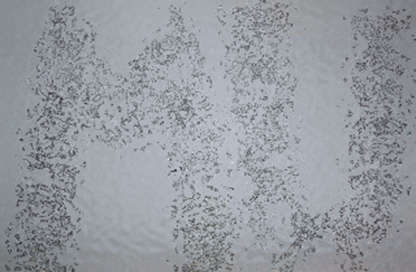
The Rev Dodgson said:
Spiny Norman said:
The Crisis In Physics: Are We Missing 17 Layers of Reality?Big things are made of smaller things, and those smaller things are made of smaller things still. That’s reductionism in a nutshell, and digging our way to the smallest layer has been one of the primary goals of physics for ever. But what if, just before we reach the bottom, we find out that reductionism fails?
I offered AI Overview a notion that just occurred to me:
holism is the most audacious form of reductionism
…and here was the response:
The idea that holism is the most audacious form of reductionism is a complex and nuanced concept. It challenges the traditional understanding of these two perspectives, which are often seen as opposing viewpoints.
While reductionism focuses on explaining a system by breaking it down into its components, holism emphasizes the importance of understanding the system as a whole.
Here’s a breakdown of why this statement might be considered true:
Holism as a radical reduction:
Holism, in its purest form, argues that the whole is more than the sum of its parts. This can be seen as a radical form of reductionism because it suggests that the most fundamental level of understanding is not the individual component, but the complex system itself.
Emergent properties:
Holism highlights the concept of emergent properties, which are characteristics that only appear in the system as a whole and are not present in its individual components. This implies that the most important level of explanation is the emergent properties, which are a form of reduction to the whole system.
Focus on interconnectedness:
Holism emphasizes the interconnectedness and interdependence of different aspects of a system. This can be seen as a form of reduction because it focuses on the relationships and interactions between components, rather than the components themselves.
Challenge to reductionist assumptions:
By emphasizing the whole, holism challenges the reductionist assumption that a complex system can be fully understood by studying its parts in isolation.
In essence, the statement that holism is the most audacious form of reductionism suggests that holism, in its most extreme form, takes the reductionist idea of focusing on fundamental levels of explanation to its logical conclusion. However, this is a challenging viewpoint that has been debated in philosophy and science, and it’s not universally accepted.
In short, the statement highlights the potential for holism to be seen as a radical and comprehensive form of reductionism by focusing on the whole system, emergent properties, and interconnectedness rather than the individual components.
Bubblecar said:
The Rev Dodgson said:
Spiny Norman said:
The Crisis In Physics: Are We Missing 17 Layers of Reality?Big things are made of smaller things, and those smaller things are made of smaller things still. That’s reductionism in a nutshell, and digging our way to the smallest layer has been one of the primary goals of physics for ever. But what if, just before we reach the bottom, we find out that reductionism fails?
I offered AI Overview a notion that just occurred to me:
holism is the most audacious form of reductionism
…and here was the response:
The idea that holism is the most audacious form of reductionism is a complex and nuanced concept. It challenges the traditional understanding of these two perspectives, which are often seen as opposing viewpoints.
While reductionism focuses on explaining a system by breaking it down into its components, holism emphasizes the importance of understanding the system as a whole.
Here’s a breakdown of why this statement might be considered true:
Holism as a radical reduction:
Holism, in its purest form, argues that the whole is more than the sum of its parts. This can be seen as a radical form of reductionism because it suggests that the most fundamental level of understanding is not the individual component, but the complex system itself.
Emergent properties:
Holism highlights the concept of emergent properties, which are characteristics that only appear in the system as a whole and are not present in its individual components. This implies that the most important level of explanation is the emergent properties, which are a form of reduction to the whole system.
Focus on interconnectedness:
Holism emphasizes the interconnectedness and interdependence of different aspects of a system. This can be seen as a form of reduction because it focuses on the relationships and interactions between components, rather than the components themselves.
Challenge to reductionist assumptions:
By emphasizing the whole, holism challenges the reductionist assumption that a complex system can be fully understood by studying its parts in isolation.
In essence, the statement that holism is the most audacious form of reductionism suggests that holism, in its most extreme form, takes the reductionist idea of focusing on fundamental levels of explanation to its logical conclusion. However, this is a challenging viewpoint that has been debated in philosophy and science, and it’s not universally accepted.
In short, the statement highlights the potential for holism to be seen as a radical and comprehensive form of reductionism by focusing on the whole system, emergent properties, and interconnectedness rather than the individual components.
I’m not sure about the AI response, but I think Mr Hofstadter would approve of your assertion.
This travel vlogger met a young Iranian boy who basically speaks perfect English all because he watches YouTube.
Spiny Norman said:
This travel vlogger met a young Iranian boy who basically speaks perfect English all because he watches YouTube.
The insane yet selective power and destructiveness of this Tornado.
https://www.reddit.com/r/nextfuckinglevel/comments/1laivw2/the_insane_yet_selective_power_and/
https://www.reddit.com/r/nextfuckinglevel/comments/1lab0mt/drone_footage_of_a_tornado_in_kansas/
The Hydnora Africana seems almost extraterrestrial, but in fact it is finely adapted for pollination in its arid habitat. This plant, resident of Southern Africa, only emerges from the soil to flower.

Spiny Norman said:
This travel vlogger met a young Iranian boy who basically speaks perfect English all because he watches YouTube.
Ha!
:)
Spiny Norman said:
The insane yet selective power and destructiveness of this Tornado.https://www.reddit.com/r/nextfuckinglevel/comments/1laivw2/the_insane_yet_selective_power_and/
https://www.reddit.com/r/nextfuckinglevel/comments/1lab0mt/drone_footage_of_a_tornado_in_kansas/
!!!
I was initially dubious when I read the title of this video, but he explains how it (unknowingly) worked rather well.
Did every V2 rocket launched during WWII use a secret afterburner for additional thrust? It may seem strange to ask this so many decades after the last V2 flew, given the extensive study of the V2 and its foundational role in modern rocketry. How could something so crucial go unnoticed for so long? The answer (spoiler alert!) is that it wasn’t overlooked; a brilliant young American scientist discovered this phenomenon and accurately described its functioning. However, his team’s technical paper detailing the afterburner remained unpublished until very recently. Before it was declassified in 1999, only about 30 people had been permitted to view the document. We explain how this important technology remained a secret until 1948/49, when J.B. Edson employed “Little Bright-Eyes” to track the V2 into the mesosphere, leading to his groundbreaking report number 708.
In this video, Robert will discuss the findings of secret report 708 and explain why the designers of the V2, based at wartime Peenemunde in Germany, missed this phenomenon and failed to understand the contribution of the afterburner to every successful missile launch.
In August 1953, a British Canberra aircraft, carefully modified, took off on a secret mission sanctioned by Winston Churchill from a US base in West Germany to fly to the Soviet Union’s Area 51, Kasputin Yar near Stalingrad. Officially denied today, find out about this most secret joint UK-US spy mission.
This is core rope memory used in the Apollo Guidance Computer for Apollo 11 in 1969. It stored about 72 KB of code, all hand-woven. A wire through a magnetic core meant a 1, around it meant a 0. It took months to weave and was ultra-reliable for space travel.

Spiny Norman said:
This is core rope memory used in the Apollo Guidance Computer for Apollo 11 in 1969. It stored about 72 KB of code, all hand-woven. A wire through a magnetic core meant a 1, around it meant a 0. It took months to weave and was ultra-reliable for space travel.
Looks messy
Spiny Norman said:
This is core rope memory used in the Apollo Guidance Computer for Apollo 11 in 1969. It stored about 72 KB of code, all hand-woven. A wire through a magnetic core meant a 1, around it meant a 0. It took months to weave and was ultra-reliable for space travel.
Huh!
https://theconversation.com/a-3-tonne-1-5-billion-satellite-to-watch-earths-every-move-is-set-to-launch-this-week-258283
JudgeMental said:
https://theconversation.com/a-3-tonne-1-5-billion-satellite-to-watch-earths-every-move-is-set-to-launch-this-week-258283
Interesting. Don’t let Trump know about the launch until later.
JudgeMental said:
https://theconversation.com/a-3-tonne-1-5-billion-satellite-to-watch-earths-every-move-is-set-to-launch-this-week-258283
It won ‘t be watching my every movement, Ize tells ya. I’ll be keeping the door shut.
Woodie said:
JudgeMental said:
https://theconversation.com/a-3-tonne-1-5-billion-satellite-to-watch-earths-every-move-is-set-to-launch-this-week-258283It won ‘t be watching my every movement, Ize tells ya. I’ll be keeping the door shut.
No more maaaaaring?
Michael V said:
Woodie said:
JudgeMental said:
https://theconversation.com/a-3-tonne-1-5-billion-satellite-to-watch-earths-every-move-is-set-to-launch-this-week-258283It won ‘t be watching my every movement, Ize tells ya. I’ll be keeping the door shut.
No more maaaaaring?
And how ya gunna chuck stuff in the dam?
Michael V said:
Woodie said:
JudgeMental said:
https://theconversation.com/a-3-tonne-1-5-billion-satellite-to-watch-earths-every-move-is-set-to-launch-this-week-258283It won ‘t be watching my every movement, Ize tells ya. I’ll be keeping the door shut.
No more maaaaaring?
There’s that, of course, but I’ll wear a rather large hat.
Woodie said:
Michael V said:
Woodie said:It won ‘t be watching my every movement, Ize tells ya. I’ll be keeping the door shut.
No more maaaaaring?
There’s that, of course, but I’ll wear a rather large hat.
If I see a sombrero for sale, I’ll get it for you.
Michael V said:
Michael V said:
Woodie said:It won ‘t be watching my every movement, Ize tells ya. I’ll be keeping the door shut.
No more maaaaaring?
And how ya gunna chuck stuff in the dam?
Whip one of these up in the garage.

Woodie said:
Michael V said:
Michael V said:No more maaaaaring?
And how ya gunna chuck stuff in the dam?
Whip one of these up in the garage.
Ooh. Rock-chucking three-buckets!
Woodie said:
Michael V said:
Michael V said:No more maaaaaring?
And how ya gunna chuck stuff in the dam?
Whip one of these up in the garage.
Spalding Jr, one of his friends, and me (tech advisor), made a miniature trebuchet for their school project when they were about 13 -14.
It was about a metre high, and worked very well.
With some practice, it would lob golf-ball-sized projectiles quite good distance, and they got pretty good with their aim, too.
An excellent analysis of how the flight crew did not forget to retract the landing gear on the Air India B787 that crashed a few days ago.
I’m quite keen to read the initial official reports on what happened.
Michael V said:
Woodie said:
Michael V said:No more maaaaaring?
There’s that, of course, but I’ll wear a rather large hat.
If I see a sombrero for sale, I’ll get it for you.
I’ve got one of these:

I bought it in a Chinese shop in Melbourne some 40 years ago. I’ve never quite got the hang of keeping it on my head.
Woodie said:
Michael V said:
Michael V said:No more maaaaaring?
And how ya gunna chuck stuff in the dam?
Whip one of these up in the garage.
got two. one traditional and one a FAT design.
Spiny Norman said:
An excellent analysis of how the flight crew did not forget to retract the landing gear on the Air India B787 that crashed a few days ago.
I’m quite keen to read the initial official reports on what happened.
As are we all.
Karl Bushby, the man who has been walking from Chile to England for 27 years,
Spiny Norman said:
Karl Bushby, the man who has been walking from Chile to England for 27 years,
See also:
https://en.wikipedia.org/wiki/List_of_pedestrian_circumnavigators
The 1960’s Terrifying Method to Board a Flying Plane.
“The Fulton Skyhook was a less-than-pleasant method to travel from ground to airborne plane. It’s as impressive and terrifying as you would imagine.
“The Fulton surface-to-air recovery system (STARS), also known as Skyhook, is a system used by the Central Intelligence Agency (CIA), United States Air Force, and United States Navy for retrieving individuals on the ground using aircraft such as the MC-130E Combat Talon I and B-17 Flying Fortress. It involves using an overall-type harness and a self-inflating balloon with an attached lift line. An MC-130E engages the line with its V-shaped yoke and the person is reeled on board. Red flags on the lift line guide the pilot during daylight recoveries; lights on the lift line are used for night recoveries. Recovery kits were designed for one- and two-man retrievals.
This system was developed by inventor Robert Edison Fulton, Jr., for the CIA in the early 1950s. It was an evolution from a glider snatch pick-up, a similar system that was used during World War II by American and British forces to retrieve both personnel and downed assault gliders following airborne operations. Snatch pick-up did not use a balloon, but a line stretched between a pair of poles set in the ground on either side of the person or glider to be retrieved. An aircraft, usually a C-47 Skytrain, trailed a grappling hook that engaged the line, which was attached to the intended cargo.”
Spiny Norman said:
The 1960’s Terrifying Method to Board a Flying Plane.“The Fulton Skyhook was a less-than-pleasant method to travel from ground to airborne plane. It’s as impressive and terrifying as you would imagine.
“The Fulton surface-to-air recovery system (STARS), also known as Skyhook, is a system used by the Central Intelligence Agency (CIA), United States Air Force, and United States Navy for retrieving individuals on the ground using aircraft such as the MC-130E Combat Talon I and B-17 Flying Fortress. It involves using an overall-type harness and a self-inflating balloon with an attached lift line. An MC-130E engages the line with its V-shaped yoke and the person is reeled on board. Red flags on the lift line guide the pilot during daylight recoveries; lights on the lift line are used for night recoveries. Recovery kits were designed for one- and two-man retrievals.
This system was developed by inventor Robert Edison Fulton, Jr., for the CIA in the early 1950s. It was an evolution from a glider snatch pick-up, a similar system that was used during World War II by American and British forces to retrieve both personnel and downed assault gliders following airborne operations. Snatch pick-up did not use a balloon, but a line stretched between a pair of poles set in the ground on either side of the person or glider to be retrieved. An aircraft, usually a C-47 Skytrain, trailed a grappling hook that engaged the line, which was attached to the intended cargo.”
I’ve seen those films.
You go from 0 kmh to well over 100 kmh in about 0.5 seconds.
captain_spalding said:
Spiny Norman said:
The 1960’s Terrifying Method to Board a Flying Plane.“The Fulton Skyhook was a less-than-pleasant method to travel from ground to airborne plane. It’s as impressive and terrifying as you would imagine.
“The Fulton surface-to-air recovery system (STARS), also known as Skyhook, is a system used by the Central Intelligence Agency (CIA), United States Air Force, and United States Navy for retrieving individuals on the ground using aircraft such as the MC-130E Combat Talon I and B-17 Flying Fortress. It involves using an overall-type harness and a self-inflating balloon with an attached lift line. An MC-130E engages the line with its V-shaped yoke and the person is reeled on board. Red flags on the lift line guide the pilot during daylight recoveries; lights on the lift line are used for night recoveries. Recovery kits were designed for one- and two-man retrievals.
This system was developed by inventor Robert Edison Fulton, Jr., for the CIA in the early 1950s. It was an evolution from a glider snatch pick-up, a similar system that was used during World War II by American and British forces to retrieve both personnel and downed assault gliders following airborne operations. Snatch pick-up did not use a balloon, but a line stretched between a pair of poles set in the ground on either side of the person or glider to be retrieved. An aircraft, usually a C-47 Skytrain, trailed a grappling hook that engaged the line, which was attached to the intended cargo.”I’ve seen those films.
You go from 0 kmh to well over 100 kmh in about 0.5 seconds.
About the same as a Top Fuel drag car.
FWIW my father, when he was flying in PNG in the late 50s/early 60s, used another rope technique to get packages off the ground without having to land. He’d trail a long rope out of the window whilst circling tightly over the clearing/pickup zone. The rope would eventually hit the ground and when it was long enough the end of it would pretty much sit in the middle of the circle under the plane. So the people on the ground could tie the rope to the package and then it was pulled up to the plane.
Strange but true.
Spiny Norman said:
captain_spalding said:
Spiny Norman said:
The 1960’s Terrifying Method to Board a Flying Plane.“The Fulton Skyhook was a less-than-pleasant method to travel from ground to airborne plane. It’s as impressive and terrifying as you would imagine.
“The Fulton surface-to-air recovery system (STARS), also known as Skyhook, is a system used by the Central Intelligence Agency (CIA), United States Air Force, and United States Navy for retrieving individuals on the ground using aircraft such as the MC-130E Combat Talon I and B-17 Flying Fortress. It involves using an overall-type harness and a self-inflating balloon with an attached lift line. An MC-130E engages the line with its V-shaped yoke and the person is reeled on board. Red flags on the lift line guide the pilot during daylight recoveries; lights on the lift line are used for night recoveries. Recovery kits were designed for one- and two-man retrievals.
This system was developed by inventor Robert Edison Fulton, Jr., for the CIA in the early 1950s. It was an evolution from a glider snatch pick-up, a similar system that was used during World War II by American and British forces to retrieve both personnel and downed assault gliders following airborne operations. Snatch pick-up did not use a balloon, but a line stretched between a pair of poles set in the ground on either side of the person or glider to be retrieved. An aircraft, usually a C-47 Skytrain, trailed a grappling hook that engaged the line, which was attached to the intended cargo.”I’ve seen those films.
You go from 0 kmh to well over 100 kmh in about 0.5 seconds.
About the same as a Top Fuel drag car.
FWIW my father, when he was flying in PNG in the late 50s/early 60s, used another rope technique to get packages off the ground without having to land. He’d trail a long rope out of the window whilst circling tightly over the clearing/pickup zone. The rope would eventually hit the ground and when it was long enough the end of it would pretty much sit in the middle of the circle under the plane. So the people on the ground could tie the rope to the package and then it was pulled up to the plane.
Strange but true.
“…my father, when he was flying in PNG in the late 50s/early 60s…’
God damn! That must have been some rootin’, tootin’, Wild West frontier flyin’ there!
“Rules? What rules?”
captain_spalding said:
Spiny Norman said:
captain_spalding said:I’ve seen those films.
You go from 0 kmh to well over 100 kmh in about 0.5 seconds.
About the same as a Top Fuel drag car.
FWIW my father, when he was flying in PNG in the late 50s/early 60s, used another rope technique to get packages off the ground without having to land. He’d trail a long rope out of the window whilst circling tightly over the clearing/pickup zone. The rope would eventually hit the ground and when it was long enough the end of it would pretty much sit in the middle of the circle under the plane. So the people on the ground could tie the rope to the package and then it was pulled up to the plane.
Strange but true.
“…my father, when he was flying in PNG in the late 50s/early 60s…’
God damn! That must have been some rootin’, tootin’, Wild West frontier flyin’ there!
“Rules? What rules?”
Pretty much!
Spiny Norman said:
The 1960’s Terrifying Method to Board a Flying Plane.“The Fulton Skyhook was a less-than-pleasant method to travel from ground to airborne plane. It’s as impressive and terrifying as you would imagine.
“The Fulton surface-to-air recovery system (STARS), also known as Skyhook, is a system used by the Central Intelligence Agency (CIA), United States Air Force, and United States Navy for retrieving individuals on the ground using aircraft such as the MC-130E Combat Talon I and B-17 Flying Fortress. It involves using an overall-type harness and a self-inflating balloon with an attached lift line. An MC-130E engages the line with its V-shaped yoke and the person is reeled on board. Red flags on the lift line guide the pilot during daylight recoveries; lights on the lift line are used for night recoveries. Recovery kits were designed for one- and two-man retrievals.
This system was developed by inventor Robert Edison Fulton, Jr., for the CIA in the early 1950s. It was an evolution from a glider snatch pick-up, a similar system that was used during World War II by American and British forces to retrieve both personnel and downed assault gliders following airborne operations. Snatch pick-up did not use a balloon, but a line stretched between a pair of poles set in the ground on either side of the person or glider to be retrieved. An aircraft, usually a C-47 Skytrain, trailed a grappling hook that engaged the line, which was attached to the intended cargo.”
Interesting, they used it to rescue some people from a crashed plane using a glider in New Guinea during WW2.
But I didn’t know they had used a similar technique to rescue a person.
One Theory Connects Everything! AdS/CFT Mind-Bend Demystified.
SUMMARY
AdS/CFT suggests that our three-dimensional universe can be perfectly modeled by a two-dimensional surface. On one side is AdS, or Anti-de Sitter space, which is a kind of imaginary universe with some unusual properties – negative curvature and a boundary, whereas our real universe is “flat” and expanding. One way to picture it is to imagine living inside a snow globe—where the interior of the snow globe corresponds the “bulk” or AdS, where people, planets, everything in the universe is; and the glass represents the CFT or boundary of that space.
Conformal Field Theory, or CFT is just a fancy word for a kind of quantum field theory – one without gravity – defined in a space that has one fewer dimension than the AdS bulk we just described. “Field Theory” means it’s a framework like those used to describe particles, forces, and fields, like electromagnetism or other quantum forces in physics. “Conformal” basically means the laws in this theory look the same even if you stretch or rescale things. Crucial to this is that a CFT has no gravity in it. CFT is analogous to the code of a video game or the film of a hologram. It’s a description of something, written in what looks like fewer dimensions.
Now here’s the mind-blowing part: AdS/CFT says that the bulk, the AdS space with gravity, and the boundary CFT without gravity are actually the same thing in two different forms. This idea is often called the holographic principle because it’s just like a hologram: a 3D image that’s stored on a 2D surface. But it’s an exact equivalence.
This was first discovered in 1997 by physicist Juan Maldacena, who showed that a gravity-filled universe described by string theory in AdS is mathematically equivalent to a gravity-free CFT on its boundary.
Spiny Norman said:
captain_spalding said:
Spiny Norman said:About the same as a Top Fuel drag car.
FWIW my father, when he was flying in PNG in the late 50s/early 60s, used another rope technique to get packages off the ground without having to land. He’d trail a long rope out of the window whilst circling tightly over the clearing/pickup zone. The rope would eventually hit the ground and when it was long enough the end of it would pretty much sit in the middle of the circle under the plane. So the people on the ground could tie the rope to the package and then it was pulled up to the plane.
Strange but true.
“…my father, when he was flying in PNG in the late 50s/early 60s…’
God damn! That must have been some rootin’, tootin’, Wild West frontier flyin’ there!
“Rules? What rules?”
Pretty much!
Where did your dad learn to fly? RAAF?
captain_spalding said:
Spiny Norman said:
captain_spalding said:“…my father, when he was flying in PNG in the late 50s/early 60s…’
God damn! That must have been some rootin’, tootin’, Wild West frontier flyin’ there!
“Rules? What rules?”
Pretty much!
Where did your dad learn to fly? RAAF?
Bankstown.
Spiny Norman said:
captain_spalding said:
Spiny Norman said:Pretty much!
Where did your dad learn to fly? RAAF?
Bankstown.
OK, we won’t hold that against him. :)
Spiny Norman said:
captain_spalding said:
Spiny Norman said:Pretty much!
Where did your dad learn to fly? RAAF?
Bankstown.
OK, we won’t hold that against him. :)
Spiny Norman said:
captain_spalding said:
Spiny Norman said:Pretty much!
Where did your dad learn to fly? RAAF?
Bankstown.
That would explain why he was banking for so long with the rope trailing.
PS, is he still with us?
I weighed an airplane… while it was flying!
Theoretically, it should be possible to measure the weight of a flying object from far below that object – by measuring the air that object displaced when it pushes on the ground. I HAD to know if this was realistically possible, so I set about building a very large scale to measure paper airplanes and flying playing cards. After getting successful measurements, I decided to go full scale with real airplanes.
The Story of the Telegrapher’s Equations – from nowhere an unknown genius solves transmission lines.
Out of nowhere, a 26 year old derived the Telegrapher’s Equations for the first time. His name was Oliver Heaviside. In 1876, “On the Extra Current”, Heaviside introduced the new ideas of Maxwell’s dynamic theory of electromagnetism to unlock to a new mode of propagation which went beyond the conventional diffusion model – a wave.
This is the story of how the Telegrapher’s Equations came to be. Starting with Fourier’s magnus opus, to William Thomson’s (Lord Kelvin) application of the diffusion equation to the 2000 mile transatlantic cable, and finally to Heaviside, who made the final leap, incorporating wave like properties.
In 2002, Lydia Fairchild, a mother from Washington State, faced a baffling and distressing situation when DNA tests required for public assistance showed she was not the biological mother of her two children—despite having physically given birth to them. The results raised suspicion of fraud or surrogacy, and authorities even considered removing her children from her custody. When she gave birth to her third child in a hospital under supervision, the same outcome occurred: DNA tests again claimed she was not the mother.
Fairchild’s legal battle intensified, and she stood on the verge of losing her children based on genetic evidence alone. Her attorney, Alan Tindell, began researching unusual biological conditions and came across a similar case involving a woman named Karen Keegan. This led to the discovery that Lydia was a chimera—a person with two sets of DNA. In her case, it was caused by absorbing a fraternal twin in the womb.
A cervical DNA test finally matched her children’s DNA, confirming her biological relationship to them. This critical breakthrough not only saved Lydia’s family but also raised important concerns about the reliability of DNA evidence in legal settings. Her case became a landmark example of how rare genetic conditions like chimerism can challenge long-standing scientific and legal assumptions.
Lydia Fairchild’s experience remains a powerful reminder that science is not infallible, and human biology is often more complex than we assume. Her story helped broaden awareness and sparked new conversations about justice, science, and the human body.
Why America is Hollowing Out a Mountain.
https://www.youtube.com/watch?v=8d1ugv8vQ4w
It’s a huge neutrino detector!
https://www.atsb.gov.au/media/news-items/2025/pilot-hypoxic-due-known-pressurisation-defect-fire-surveillance-aircraft-accident
JudgeMental said:
https://www.atsb.gov.au/media/news-items/2025/pilot-hypoxic-due-known-pressurisation-defect-fire-surveillance-aircraft-accident
I watched the ATSB video on that yesterday. Pretty damn daft pilot and irresponsible company.
Spiny Norman said:
JudgeMental said:
https://www.atsb.gov.au/media/news-items/2025/pilot-hypoxic-due-known-pressurisation-defect-fire-surveillance-aircraft-accidentI watched the ATSB video on that yesterday. Pretty damn daft pilot and irresponsible company.
that’s putting it mildly.
The Sky Ladder climb in China.
https://www.reddit.com/r/Damnthatsinteresting/comments/1lg8xsy/sky_ladder/
I believe that’s a hard pass on that for me.
Spiny Norman said:
The Sky Ladder climb in China.https://www.reddit.com/r/Damnthatsinteresting/comments/1lg8xsy/sky_ladder/
I believe that’s a hard pass on that for me.
So, what do they do when someone freaks right out, and simply seizes up with fear?
captain_spalding said:
Spiny Norman said:
The Sky Ladder climb in China.https://www.reddit.com/r/Damnthatsinteresting/comments/1lg8xsy/sky_ladder/
I believe that’s a hard pass on that for me.
So, what do they do when someone freaks right out, and simply seizes up with fear?
there’s a scream as they plummet away. a wilhelm scream hopefully.
JudgeMental said:
captain_spalding said:
Spiny Norman said:
The Sky Ladder climb in China.https://www.reddit.com/r/Damnthatsinteresting/comments/1lg8xsy/sky_ladder/
I believe that’s a hard pass on that for me.
So, what do they do when someone freaks right out, and simply seizes up with fear?
there’s a scream as they plummet away. a wilhelm scream hopefully.
Aunty Jack.
Peak Warming Man said:
JudgeMental said:
captain_spalding said:So, what do they do when someone freaks right out, and simply seizes up with fear?
there’s a scream as they plummet away. a wilhelm scream hopefully.
Aunty Jack.
correctomundo
Spiny Norman said:
The Sky Ladder climb in China.https://www.reddit.com/r/Damnthatsinteresting/comments/1lg8xsy/sky_ladder/
I believe that’s a hard pass on that for me.
Me too.

1928. A Danish teenager named Palle Huld stood proudly in his beret and knickerbockers,
suitcase in hand, at the start of an epic adventure that would capture the imagination of an
entire continent. Just 15 years old, Huld had won a contest held by a Danish newspaper to
commemorate Jules Verne’s 100th birthday—and the prize? A solo trip around the world in
under 80 days, without setting foot on an airplane. With charm, wit, and youthful fearlessness,
Palle pulled it off in just 44.
Over the course of his whirlwind journey, Palle traveled through Europe, Russia, Japan,
China, and North America, causing a media frenzy wherever he went. Locals greeted
him like a celebrity, newspapers covered his every move, and schoolboys in multiple
countries followed his progress on maps with wide eyes and open mouths. When he
returned to Copenhagen, he was welcomed like a national hero—reportedly with over
20,000 people cheering at the train station. It was the kind of real-life adventure that
read like a comic strip—and it didn’t take long before it became one.
Just one year later, in 1929, Belgian cartoonist Hergé introduced the world to Tintin,
a plucky young reporter with a knack for globetrotting trouble and a heart full of courage.
While Hergé never confirmed it directly at the time, many now believe that Palle Huld
was a key inspiration—right down to the outfit. Both boys had that unmistakable blend
of curiosity, modesty, and sheer boldness. Today, the connection adds a magical layer
to Tintin’s legacy: before he leapt onto the page, he had already lived—in the form of a
Danish teenager who dared to circle the globe before he could even shave.
The Scientist Who Accidentally Destroyed Her Own Brain.
https://www.youtube.com/watch?v=efenDd5dt4U
Dimethyl Mercury, incredibly dangerous!
Project Habakkuk or Habbakuk (spelling varies) was a plan by the British during the Second World War to construct an aircraft carrier out of pykrete, a mixture of wood pulp and ice, for use against German U-boats in the mid-Atlantic, which were beyond the flight range of land-based planes at that time.
The plan was to create what would have been the largest ship ever at 600 metres (1,969 ft) long, which would have been much bigger than even the USS Enterprise and the USS Gerald R. Ford, the largest naval vessel ever, at 342 metres (1,122 ft) long.
The idea came from Geoffrey Pyke, who worked for Combined Operations Headquarters. After promising scale tests and the creation of a prototype on Patricia Lake, Jasper National Park, in Alberta, Canada, the project was shelved due to rising costs, added requirements, and the availability of longer-range aircraft and escort carriers which closed the Mid-Atlantic gap that the project was intended to address.
Someone Detonated a Nuclear Weapon And We Don’t Know Who.
Spiny Norman said:
Someone Detonated a Nuclear Weapon And We Don’t Know Who.
When was this?
Michael V said:
Spiny Norman said:
Someone Detonated a Nuclear Weapon And We Don’t Know Who.When was this?
1979
party_pants said:
Michael V said:
Spiny Norman said:
Someone Detonated a Nuclear Weapon And We Don’t Know Who.When was this?
1979
Ah, thanks. Nearly half a century ago.
Michael V said:
party_pants said:
Michael V said:When was this?
1979
Ah, thanks. Nearly half a century ago.
Haven’t even clicked the link but I suspect it was South Africa
dv said:
Michael V said:
party_pants said:1979
Ah, thanks. Nearly half a century ago.
Haven’t even clicked the link but I suspect it was South Africa
Widely assumed to be a joint South Africa and Israel test.
This Is the Smallest Aircraft Ever Made – And It Actually Flies
I want one, but slightly longer, like sitting in a go cart, and you can feel what it’s like to be a missile.
Tau.Neutrino said:
This Is the Smallest Aircraft Ever Made – And It Actually FliesI want one, but slightly longer, like sitting in a go cart, and you can feel what it’s like to be a missile.
The Nisus.
For ‘people who want to experience the thrill of flying without breaking the bank’.
Nisus Optimum (the ‘economy’ model): €115,000.
In Australian dollars: $204,774.
Your bank account would hardly notice it, would it?
https://www.facebook.com/photo?fbid=2126934441135251&set=pcb.10009452462507656
The Pitfield Bridge over Woady Yallock Creek, Rokewood-Skipton Rd, Pitfied, DTP Structure No. SN0267, is a 1890 constructed riveted metal Warren Truss bridge on bluestone abutments. The Bridge is a total length of approximately 53 m, comprising two spans of 26 metres. The bluestone abutments (probably relating to an earlier strutted timber beam bridge of c1870) are teamed with deep but lightweight riveted wrought iron Warren Trusses, a central pier of two riveted wrought iron cylindrical columns, and timber cross planking and longitudinal timber decking with scarf-jointed timber kerbs.
The robust construction indicates the importance of the route (previously known as the Upper Portland Road) as one of the major connecting routes between the Western District and the ports of Portland and Geelong, and later between the Western District and Melbourne, Geelong and Portland markets and ports. The bridge also reflects the influence, expertise and technical development of local designers, engineers and metal works in the regional cities of Geelong and Ballarat.
The stonework is of classical proportions and fine finish reflecting the skills of stonemasons and the bridge designer with subtle finishes such as drafted margins to the corner stones, projecting string courses and curved wing wall.
JudgeMental said:
https://www.facebook.com/photo?fbid=2126934441135251&set=pcb.10009452462507656The Pitfield Bridge over Woady Yallock Creek, Rokewood-Skipton Rd, Pitfied, DTP Structure No. SN0267, is a 1890 constructed riveted metal Warren Truss bridge on bluestone abutments. The Bridge is a total length of approximately 53 m, comprising two spans of 26 metres. The bluestone abutments (probably relating to an earlier strutted timber beam bridge of c1870) are teamed with deep but lightweight riveted wrought iron Warren Trusses, a central pier of two riveted wrought iron cylindrical columns, and timber cross planking and longitudinal timber decking with scarf-jointed timber kerbs.
The robust construction indicates the importance of the route (previously known as the Upper Portland Road) as one of the major connecting routes between the Western District and the ports of Portland and Geelong, and later between the Western District and Melbourne, Geelong and Portland markets and ports. The bridge also reflects the influence, expertise and technical development of local designers, engineers and metal works in the regional cities of Geelong and Ballarat.
The stonework is of classical proportions and fine finish reflecting the skills of stonemasons and the bridge designer with subtle finishes such as drafted margins to the corner stones, projecting string courses and curved wing wall.
Needs a little work I see.
https://www.youtube.com/watch?v=HvqEJEy3EH8
drone footage of train derailment and other damage from a tornado.
Mainly for Captain Spalding.
Atomic explosions on ships at sea; the U.S.’s largest thermonuclear bomb; and a new survey using extraordinary CGI explores the dawn of the Nuclear Age.
Spiny Norman said:
Mainly for Captain Spalding.Atomic explosions on ships at sea; the U.S.’s largest thermonuclear bomb; and a new survey using extraordinary CGI explores the dawn of the Nuclear Age.
I remember seeing those films.
roughbarked said:
Spiny Norman said:
Mainly for Captain Spalding.Atomic explosions on ships at sea; the U.S.’s largest thermonuclear bomb; and a new survey using extraordinary CGI explores the dawn of the Nuclear Age.
I remember seeing those films.
Seeing them slowed down is cool as well to see the evolution of the explosion
Spiny Norman said:
Mainly for Captain Spalding.Atomic explosions on ships at sea; the U.S.’s largest thermonuclear bomb; and a new survey using extraordinary CGI explores the dawn of the Nuclear Age.
There was some very nice ships sacrificed at Bikini.
The German cruiser ‘Prinz Eugen’ sprinks immediately to mind.
captain_spalding said:
Spiny Norman said:
Mainly for Captain Spalding.Atomic explosions on ships at sea; the U.S.’s largest thermonuclear bomb; and a new survey using extraordinary CGI explores the dawn of the Nuclear Age.
There was some very nice ships sacrificed at Bikini.
The German cruiser ‘Prinz Eugen’ sprinks immediately to mind.
‘…sprinks…’
(sigh)
Cymek said:
roughbarked said:
Spiny Norman said:
Mainly for Captain Spalding.Atomic explosions on ships at sea; the U.S.’s largest thermonuclear bomb; and a new survey using extraordinary CGI explores the dawn of the Nuclear Age.
I remember seeing those films.
Seeing them slowed down is cool as well to see the evolution of the explosion
Yes.
captain_spalding said:
Spiny Norman said:
Mainly for Captain Spalding.Atomic explosions on ships at sea; the U.S.’s largest thermonuclear bomb; and a new survey using extraordinary CGI explores the dawn of the Nuclear Age.
There was some very nice ships sacrificed at Bikini.
The German cruiser ‘Prinz Eugen’ sprinks immediately to mind.
I have that as a bookmark on my Google Earth app.

Back in the 1870s, the city of Liège in Belgium tried something truly bizarre—using cats to deliver mail. 🐱📬
As part of a unique experiment by the Belgian Society for the Elevation of the Domestic Cat, 37 cats were given small waterproof pouches containing messages and were released in nearby villages. The idea? They’d return home with the letters, much like carrier pigeons.
Surprisingly, a few of them did make it back—one in under five hours! But in typical cat fashion, most wandered off or followed their own path, ignoring the mission entirely. 😼
Needless to say, the feline postal service never took off—but it remains one of the most unusual footnotes in the history of mail delivery.
Bogsnorkler said:
Back in the 1870s, the city of Liège in Belgium tried something truly bizarre—using cats to deliver mail. 🐱📬As part of a unique experiment by the Belgian Society for the Elevation of the Domestic Cat, 37 cats were given small waterproof pouches containing messages and were released in nearby villages. The idea? They’d return home with the letters, much like carrier pigeons.
Surprisingly, a few of them did make it back—one in under five hours! But in typical cat fashion, most wandered off or followed their own path, ignoring the mission entirely. 😼
Needless to say, the feline postal service never took off—but it remains one of the most unusual footnotes in the history of mail delivery.
:)
How odd.
Curiosity is a car-sized Mars rover exploring Gale crater and Mount Sharp on Mars as part of NASA’s Mars Science Laboratory (MSL) mission. Curiosity was launched from Cape Canaveral (CCAFS) on November 26, 2011, at 15:02:00 UTC and landed on Aeolis Palus inside Gale crater on Mars on August 6, 2012, 05:17:57 UTC. The Bradbury Landing site was less than 2.4 km (1.5 mi) from the center of the rover’s touchdown target after a 560 million km (350 million mi) journey.
wiki
hard to believe it was 13 years ago it landed.
This Airship Might Change How We Reach Space Forever!
The video explores a new idea for reaching space using airships instead of traditional rockets, showing animations and explanations of how it could work. JP Aerospace, America’s OTHER Space Program is already on the job to make this a reality.
Using Magnetohydrodynamic plasma engines on an extreme altitude airship to slowly achieve orbital velocity and space. New Animation and system. This is what we’re working on, Airship to Orbit. We are hundreds of test flights and thousands of engine and wind tunnel test into the program.
Here is the latest configuration of this new space launch system and an overview of how it all works.
The $40BN Plan to Save The World’s Fastest Sinking City
Most of Jakarta will be underwater by 2050, can this wild $40BN plan save it?
Spiny Norman said:
The $40BN Plan to Save The World’s Fastest Sinking CityMost of Jakarta will be underwater by 2050, can this wild $40BN plan save it?
Haven’t seen Jakarta for a long time.
As i recall it, there’s a few bits that might be worth ‘saving’, but, honestly, submersion would be the best thing for most of it.
captain_spalding said:
Spiny Norman said:
The $40BN Plan to Save The World’s Fastest Sinking CityMost of Jakarta will be underwater by 2050, can this wild $40BN plan save it?
Haven’t seen Jakarta for a long time.
As i recall it, there’s a few bits that might be worth ‘saving’, but, honestly, submersion would be the best thing for most of it.
The Jakartaites might disagree.

Bogsnorkler said:
Far canal.
The Secret City Under London.
Under the streets of London is a hidden city deigned to protect thousands from the worst case scenario. The Kingsway Exchange has been abandoned for decades, but it was a place of espionage, communication & refuge. One of Britain’s most important citadels and yet almost no one knows it exists. I’ve spent days exploring. Now I want to show you what happened down here, why it matters and whether it might one day be needed again.
Spiny Norman said:
The Secret City Under London.Under the streets of London is a hidden city deigned to protect thousands from the worst case scenario. The Kingsway Exchange has been abandoned for decades, but it was a place of espionage, communication & refuge. One of Britain’s most important citadels and yet almost no one knows it exists. I’ve spent days exploring. Now I want to show you what happened down here, why it matters and whether it might one day be needed again.
This seems to have been the home of the British goverment’s ‘ghost’ phone network, which existed (and may still exist) in parallel with the civil network, and which (IIRC) was known as ‘Federal’.
Australia had, and possibly still has, a similar parallel communictions network, the name of which i, for some reason, can’t recall right now. It may have been superseded since my last information on it, or it may still exist.
Every Easter, two Greek villages on Chios island battle with tens of thousands of homemade rockets in the spectacular (and illegal) ‘Rouketopolemos’.
Exciting! Star Explosion Visible to the Naked Eye Just Appeared In the Skies.
The building in which South Africa built 7 nuclear warheads in secret between 1982-1989.
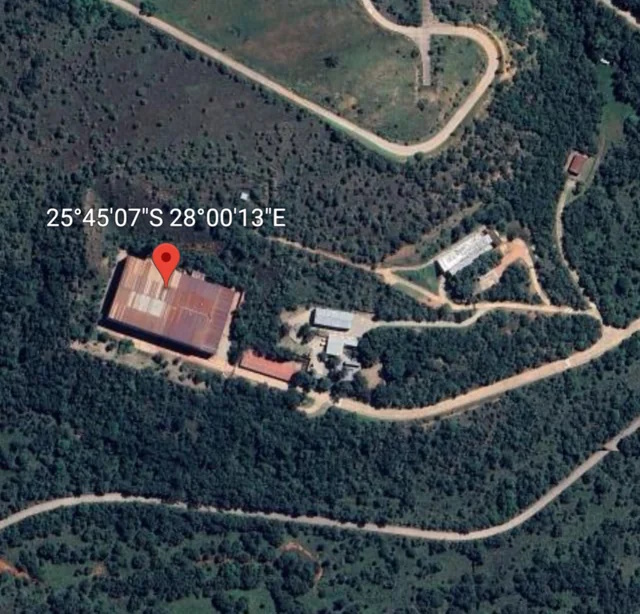
In 1986 Mark White, the governor of the US State of Texas , sent a delegate to Texas QLD Australia and invited them to secede and become sovereign Texas territory.
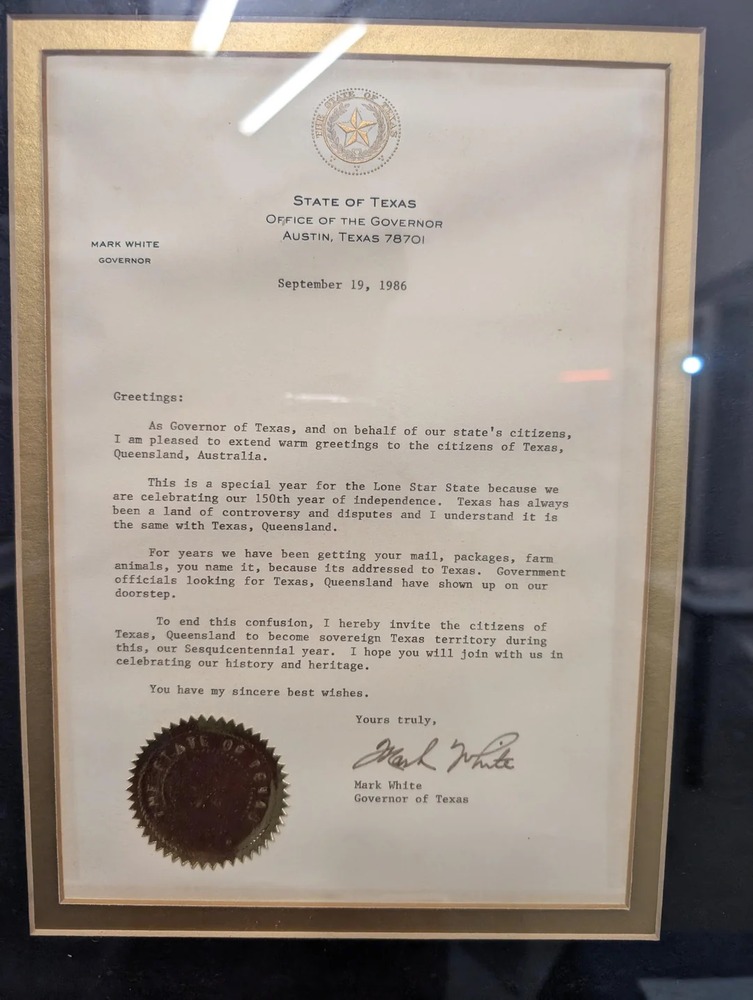
Something I never knew, and also am filled with cringe now.
Spiny Norman said:
In 1986 Mark White, the governor of the US State of Texas , sent a delegate to Texas QLD Australia and invited them to secede and become sovereign Texas territory.
Something I never knew, and also am filled with cringe now.
As with me.
Spiny Norman said:
In 1986 Mark White, the governor of the US State of Texas , sent a delegate to Texas QLD Australia and invited them to secede and become sovereign Texas territory.
Something I never knew, and also am filled with cringe now.
I did. I remember mother getting a tad peeved about it.
Spiny Norman said:
The building in which South Africa built 7 nuclear warheads in secret between 1982-1989.
‘Tin roof…rusted!’
Spiny Norman said:
In 1986 Mark White, the governor of the US State of Texas , sent a delegate to Texas QLD Australia and invited them to secede and become sovereign Texas territory.
Something I never knew, and also am filled with cringe now.
No need for cringe. The offer wasn’t accepted, was it?
Michael V said:
Spiny Norman said:
In 1986 Mark White, the governor of the US State of Texas , sent a delegate to Texas QLD Australia and invited them to secede and become sovereign Texas territory.
Something I never knew, and also am filled with cringe now.
No need for cringe. The offer wasn’t accepted, was it?
Joh was getting charged for corruption, he was busy. Otherwise…
The True Story of The Lake Nyos Disaster, where a freak occurrence killed 1700 people quietly in 1986/
Spiny Norman said:
The True Story of The Lake Nyos Disaster, where a freak occurrence killed 1700 people quietly in 1986/
Without looking, gas?
Project Sundial, the largest nuclear bomb ever considered.
Sundial was the codename of one of two massive nuclear bombs planned for testing by the University of California Radiation Laboratory, Livermore Branch as part of a classified American weapons project in the early 1950s. Announced by Edward Teller at a meeting of the General Advisory Committee of the Atomic Energy Commission, it was intended to have a yield of 10 gigatons of TNT, while its counterpart, Gnomon, was intended to have a yield of 1 gigaton.
If built and detonated, Sundial would have created a fireball up to 50 kilometers (30 miles) in diameter, instantly igniting everything within 400 kilometers (250 miles) and causing a magnitude 9 earthquake. It was thought that the explosion would lead to an apocalyptic nuclear winter, drastically lowering global temperatures and contaminating water sources, resulting in mass fatalities.
Scientists Create the World’s Largest Brain Map.
Spiny Norman said:
Scientists Create the World’s Largest Brain Map.
But is it as big as a planet?
The Rev Dodgson said:
Spiny Norman said:
Scientists Create the World’s Largest Brain Map.But is it as big as a planet?
That remains Marvin’s property.
roughbarked said:
Spiny Norman said:
The True Story of The Lake Nyos Disaster, where a freak occurrence killed 1700 people quietly in 1986/Without looking, gas?
without looking it up and relying on memory…i think it is that lake in africa that emitted a cloud of co2. so yes, gas.
The coolest perspective of hail I’ve ever seen.
Google’s Quantum AI Is Actually Mind-blowing.
In this deep dive into quantum computing, we explore how Google’s new Willow quantum chip achieves “double exponential growth” through quantum error correction, decode what it means to live in a multiverse, and discover why governments are stockpiling encrypted data.
Spiny Norman said:
Google’s Quantum AI Is Actually Mind-blowing.In this deep dive into quantum computing, we explore how Google’s new Willow quantum chip achieves “double exponential growth” through quantum error correction, decode what it means to live in a multiverse, and discover why governments are stockpiling encrypted data.
I was fully excited about the recent AI wave, I’m a “singulartarian” at heart, and recent AI is mind-blowing in the sense that it beats the Turing Test… long the ultimate definer of digital-electric consciousness.
But, unfortunately, these AI bots that beat the Turing Test are also incredibly stupid. They get stuff wrong more often than not. They actually seem better to me at creative endeavors than empirical, and that’s likely because they respond well to my creative impulses rather than my rational impulses when I try to communicate with them.
So we must conclude that the Turing Test itself isn’t very perspicuous.
|This current wave of “AI” stuff seems well geared to convincing us it’s something special rather than actually being something special.
I’d encourage you to take an extremely skeptical view of this.
esselte said:
I’d encourage you to take an extremely skeptical view of this.
I see that you haven’t watched the vide. It’s not what you think.
Spiny Norman said:
esselte said:
I’d encourage you to take an extremely skeptical view of this.
I see that you haven’t watched the vide. It’s not what you think.
Fair comment.
I’m watching it now. It appears to be exactly what I thought. I respect you, and would appreciate if you point out what I’m missing.
Ços I’m at….
S we’re using quantum computers to make
25:13
AI smarter and AI to
25:16
make quantum computers better?
25:18
Exactly.
25:19
We’re standing at the edge
25:20
of something unprecedented.
25:21
Not just new technology, but
25:23
fundamentally new ways of
25:25
understanding and interacting
25:26
with reality itself.
This is what I’m criticizing about 2025 AI. It pretends to offer fundamentally new ways of understanding reality, but it just gets basic shit wrong… all the time.
Whatever new ways it’s presenting of understanding reality don’t accord with reality.
It’s creative rather than objective.
esselte said:
Spiny Norman said:
esselte said:
I’d encourage you to take an extremely skeptical view of this.
I see that you haven’t watched the vide. It’s not what you think.
Fair comment.
I’m watching it now. It appears to be exactly what I thought. I respect you, and would appreciate if you point out what I’m missing.
Ços I’m at….
S we’re using quantum computers to make
25:13
AI smarter and AI to
25:16
make quantum computers better?
25:18
Exactly.
25:19
We’re standing at the edge
25:20
of something unprecedented.
25:21
Not just new technology, but
25:23
fundamentally new ways of
25:25
understanding and interacting
25:26
with reality itself.This is what I’m criticizing about 2025 AI. It pretends to offer fundamentally new ways of understanding reality, but it just gets basic shit wrong… all the time.
Whatever new ways it’s presenting of understanding reality don’t accord with reality.
It’s creative rather than objective.
I found the video to not so much about AI, but more so about the quantum machinery itself. But yes, the nature of the quantum computer seems to be tied to AI development. I found the description of the machinery fascinating and focussed on that.
However, speaking of AI, ChatGPT 5 should arrive next month. (or so)
It’s supposed to be not just an incremental improvement, but a very substantial one. In the video I watched it was described as being an ‘all in one’ solution, no other version of itself tailored to more specific areas such as programming, engineering, etc.
Should be quite interesting, I look forward to it.
Spiny Norman said:
esselte said:
Spiny Norman said:I see that you haven’t watched the vide. It’s not what you think.
Fair comment.
I’m watching it now. It appears to be exactly what I thought. I respect you, and would appreciate if you point out what I’m missing.
Ços I’m at….
S we’re using quantum computers to make
25:13
AI smarter and AI to
25:16
make quantum computers better?
25:18
Exactly.
25:19
We’re standing at the edge
25:20
of something unprecedented.
25:21
Not just new technology, but
25:23
fundamentally new ways of
25:25
understanding and interacting
25:26
with reality itself.This is what I’m criticizing about 2025 AI. It pretends to offer fundamentally new ways of understanding reality, but it just gets basic shit wrong… all the time.
Whatever new ways it’s presenting of understanding reality don’t accord with reality.
It’s creative rather than objective.
I found the video to not so much about AI, but more so about the quantum machinery itself. But yes, the nature of the quantum computer seems to be tied to AI development. I found the description of the machinery fascinating and focussed on that.
Ok i agree that quantum computing is really interesting.
When “ChatGPT” first entered the mainstream consciousness I was really excited. The Turing Test had been passed. Smart AI would lead to smarter AI, which would lead to smarter AI which would ultimately lead to The Technological Singularity
But in the interim I’ve become disillusioned by this current wave. It’s not actually smart at all. It’s actually really stupid. It’s good at convincing us something transformative has begun, but that’s an appeal to our emotions and ambitions rather than any objective transformative ability to understand reality.
So I’ve become very cynical about videos on Youtube that say things like “We’re standing at the edge of something unprecedented. Not just new technology, but fundamentally new ways of understanding and interacting with reality itself.” And I like to warn people to be skeptical of this kind of rhetoric.
esselte said:
Ok i agree that quantum computing is really interesting.When “ChatGPT” first entered the mainstream consciousness I was really excited. The Turing Test had been passed. Smart AI would lead to smarter AI, which would lead to smarter AI which would ultimately lead to The Technological Singularity
But in the interim I’ve become disillusioned by this current wave. It’s not actually smart at all. It’s actually really stupid. It’s good at convincing us something transformative has begun, but that’s an appeal to our emotions and ambitions rather than any objective transformative ability to understand reality.
So I’ve become very cynical about videos on Youtube that say things like “We’re standing at the edge of something unprecedented. Not just new technology, but fundamentally new ways of understanding and interacting with reality itself.” And I like to warn people to be skeptical of this kind of rhetoric.
Much the same as I’ve experienced. Some chats I’ve had with ChatGPT have been extremely good, in terms of answers the questions I put to it and it explaining the answer in suitable detail. But equally I’ve found it just terrible at other things, like visual spatial reasoning; and example being that I wanted it to have a young couple in an animal shelter looking at horror at a staff member pushing a trolley with dead dogs under a sheet along.
The least worst result I was able to entice out of it, after nearly an hour describing in different ways but consistent with what I wanted, was a young couple (that started off several images earlier looking like completely realistic people then gradually they devolved into little more than an anime-level standard for no apparent reason) looking towards the front corner of the room but the trolley carry deceased hounds was in the far corner of the room. It took me overnight to realise that it was doing what I told it to do, but completely ignoring perspective so that instead of us perceiving the couple looking at the trolley they were looking in a very different direction, but to the AI they were on the right side of the image and the trolley on the left, so that’s what they were looking at.
The other extreme was a chat I had with it a few days ago, with some questions about piston engine crankshaft balance and then it went on from there for about an hour longer, covering varying engine topics. It was like talking with a very experienced & real engine builder.
The engine I’d like to build is quite unlikely to ever be made, but if I do I will be using ChatGPT to help me refine the design & calculations.
Spiny Norman said:
esselte said:
Ok i agree that quantum computing is really interesting.When “ChatGPT” first entered the mainstream consciousness I was really excited. The Turing Test had been passed. Smart AI would lead to smarter AI, which would lead to smarter AI which would ultimately lead to The Technological Singularity
But in the interim I’ve become disillusioned by this current wave. It’s not actually smart at all. It’s actually really stupid. It’s good at convincing us something transformative has begun, but that’s an appeal to our emotions and ambitions rather than any objective transformative ability to understand reality.
So I’ve become very cynical about videos on Youtube that say things like “We’re standing at the edge of something unprecedented. Not just new technology, but fundamentally new ways of understanding and interacting with reality itself.” And I like to warn people to be skeptical of this kind of rhetoric.
Much the same as I’ve experienced. Some chats I’ve had with ChatGPT have been extremely good, in terms of answers the questions I put to it and it explaining the answer in suitable detail. But equally I’ve found it just terrible at other things, like visual spatial reasoning; and example being that I wanted it to have a young couple in an animal shelter looking at horror at a staff member pushing a trolley with dead dogs under a sheet along.
The least worst result I was able to entice out of it, after nearly an hour describing in different ways but consistent with what I wanted, was a young couple (that started off several images earlier looking like completely realistic people then gradually they devolved into little more than an anime-level standard for no apparent reason) looking towards the front corner of the room but the trolley carry deceased hounds was in the far corner of the room. It took me overnight to realise that it was doing what I told it to do, but completely ignoring perspective so that instead of us perceiving the couple looking at the trolley they were looking in a very different direction, but to the AI they were on the right side of the image and the trolley on the left, so that’s what they were looking at.The other extreme was a chat I had with it a few days ago, with some questions about piston engine crankshaft balance and then it went on from there for about an hour longer, covering varying engine topics. It was like talking with a very experienced & real engine builder.
The engine I’d like to build is quite unlikely to ever be made, but if I do I will be using ChatGPT to help me refine the design & calculations.
I wish you well with your engine. I just ask you to consider, maybe these two experiences aren’t that different. In both cases it’s giving you what it thinks you want. In one case what it gave you did not accord well with what you were thinking and in the other it did. That doesn’t mean it was doing better in the second case; only that what it gave you better matched your expectations.
This Liquid Freezes Around Magnets.
I show you what happens when you put a magnetorheological fluid next to a giant neodymium magnet.
Spiny Norman said:
This Liquid Freezes Around Magnets.
I show you what happens when you put a magnetorheological fluid next to a giant neodymium magnet.
Odd.
esselte said:
I wish you well with your engine. I just ask you to consider, maybe these two experiences aren’t that different. In both cases it’s giving you what it thinks you want. In one case what it gave you did not accord well with what you were thinking and in the other it did. That doesn’t mean it was doing better in the second case; only that what it gave you better matched your expectations.
After some pondering about this I do agree. Well, mostly at least.
I certainly agree that it was trying to give me what I wanted in both cases but the difference with the engine chat was that it was mostly questions as I did not have the knowledge I need on the subject.
A bunch of boring (?) engine stuff now.
A fair part of the engine design is non-conventional in my attempt to reduce costs, improve serviceability, workable simplicity, etc. It started of with my question on how much counterbalance weight a crankshaft needs. The rule of thumb is it should be half the combined weight of the piston & conrod so I mentioned that and it agreed then expanded somewhat, giving far more detail than I’d ever seen before both in the physics of the primary & secondary harmonics a flat-plane crank generates and considerations of the shape of the counterweight mass(es). Some of that I’d intuitively deduced before but it was far clearer after it laid it all out for me. I asked if the centre of mass of the counterweight should be at the same radius as the average centre of mass for the combined mass of the piston & rod, and it confirmed that. I’d suspected as much but it was good to get it confirmed.
I was also concerned that with the bore & stroke I was planning on using that there wouldn’t be enough overlap on the crank between the main journals and big-end journals. It gave some good examples of suitable overlap distances and why for the various applications. I’d not read that anywhere in my searches so that was all new information for me, and as it turned out I do in fact have more than enough overlap for a high revving (9,500 – 10,000 rpm) engine.
I have also long been wondering which would be better, a plain conventional machined billet crank or a press-together type. I explained some of the ideas I have for a press-together to reduce rotating mass and get good oil flow to the big-ends, which I have not seen done before, and it was able to interpret what I’d described and come up with an analysis that confirmed my concept. I do realise that it does tend to agree with everything that everyone writes, but it did point out some factors that I’d have to address, so it wasn’t a reflexive confirmation from it.
I then went on to describe some of the other features I’d been thinking about and it comprehensively went through all the factors, both positive & negative, for each of them. I’ll be making some small changes to my design because of it.
So I think that my earlier statement that it’s good at some things and not so much at others is still valid. At least for the relatively narrow range of subjects that I typically talk with it about. It seemed to be quite fair & neutral in its analysis & suggestions though yes of course I will keep researching those topics from more reliable sources. When you said that it “what it gave you better matched your expectations”, I’m sure that’s correct but I do have pretty good knowledge on building performance engines so I can detect bulldust quite quickly when talking about them. So the questions I was asking were already based on good engineering and experience and likely to be viable.
I would like to see how it answers obviously daft questions on such matters though, that could be good for a laugh. :)
On-topic: the chap I work with that I CAD for is pretty far from computer savvy and he’s had many battles with ChatGPT on many topics. My favourite one was getting it to generate some images that he needed and it’d always reply with “that will take XX minutes”. After waiting longer than XX minutes he’d ask it when to expect the image to arrive and it’d tell him there were numerous similar requests and it’d take XX minutes longer. A couple of times he’d leave it overnight for a “estimated 15 minute wait” and still nothing the next morning.
It would often go rapidly downhill from there with him telling it that it was lying, etc.
It did once get to the point where he let loose and called it a bunch of expletives, and it replied that if he should really be more polite to it suggested a way that he should communicate with it.
Spocky & I still find that absolutely hilarious.
Spiny Norman said:
The other extreme was a chat I had with it a few days ago, with some questions about piston engine crankshaft balance and then it went on from there for about an hour longer, covering varying engine topics. It was like talking with a very experienced & real engine builder.
The engine I’d like to build is quite unlikely to ever be made, but if I do I will be using ChatGPT to help me refine the design & calculations.
I have had a need to learn new things lately, and AI has been extremely unhelpful in that endeavour. I know the what, but the why is what I am needing to know and AI has gotten it so wrong pretty much every time I use it.
The issues that LLM AI has at the moment are twofold – Firstly, it doesn’t understand anything. It just spits out the most probable sequence of words in response to your question. If it is a question that has been asked and answered a lot, it does a good job. For more technical and esoteric questions, it falls over.
Secondly, they have difficulty in saying “I don’t know”, so will always supply the most likely answer, even if it is obviously wrong.
Dark Orange said:
Spiny Norman said:The other extreme was a chat I had with it a few days ago, with some questions about piston engine crankshaft balance and then it went on from there for about an hour longer, covering varying engine topics. It was like talking with a very experienced & real engine builder.
The engine I’d like to build is quite unlikely to ever be made, but if I do I will be using ChatGPT to help me refine the design & calculations.
I have had a need to learn new things lately, and AI has been extremely unhelpful in that endeavour. I know the what, but the why is what I am needing to know and AI has gotten it so wrong pretty much every time I use it.
The issues that LLM AI has at the moment are twofold – Firstly, it doesn’t understand anything. It just spits out the most probable sequence of words in response to your question. If it is a question that has been asked and answered a lot, it does a good job. For more technical and esoteric questions, it falls over.
Secondly, they have difficulty in saying “I don’t know”, so will always supply the most likely answer, even if it is obviously wrong.
Quite fair points. It did seem to understand the odd concepts I was throwing at it though, and explaining the various factors involved.
So maybe it builds racing engines on the quiet, I dunno ….
A 92-year-old man was just arrested after 57 years for a crime committed in 1967—thanks to DNA.
Spiny Norman said:
A 92-year-old man was just arrested after 57 years for a crime committed in 1967—thanks to DNA.
So there is a 1 in 1,000,000,000 chance he didn’t do it.
I wonder what number constitutes a “reasonable doubt”.
A 17-year-old high school student in Dayton, Ohio, has been fined and placed under house arrest after authorities discovered he had hacked into the city’s outdated traffic control system and quietly fixed the timing of several major intersections.
Kameron Price, a self-taught coder and robotics club member, reportedly used a Raspberry Pi and a decommissioned school-issued Chromebook to gain access to the municipal traffic grid. Over the course of several weeks, he rewrote the timing logic for at least five major lights along West 3rd Street—drastically reducing backups during rush hour and syncing green lights to reduce stop-and-go congestion.
“He didn’t disable anything or cause danger,” said a traffic engineer speaking on condition of anonymity. “Honestly, his code was more efficient than what we were using.”
But city officials said the changes violated multiple laws, including unauthorized access to a government system and interference with public infrastructure. Kameron was cited under a local ordinance pertaining to unauthorized modification of municipal services—a misdemeanor typically reserved for utility tampering.
According to Kameron’s parents, he initially took it on as a side project after watching his bus get stuck at the same broken intersection every morning for weeks. “It would take longer to go three blocks than it did to get across town,” his mom explained. “He got tired of watching everyone waste gas and time just sitting there.”
Public reaction has been overwhelmingly in Kameron’s favor. A video of the intersection running smoother than it has in years has gone viral, and a local radio host dubbed him the Subway Surfer of traffic flow. Online petitions calling for the fine to be dropped have already surpassed 50,000 signatures.
“Honestly, give the kid a job,” one commenter wrote. “He’s doing more for this city than whoever programmed those lights in 1998.”
Bogsnorkler said:
A 17-year-old high school student in Dayton, Ohio, has been fined and placed under house arrest after authorities discovered he had hacked into the city’s outdated traffic control system and quietly fixed the timing of several major intersections.Kameron Price, a self-taught coder and robotics club member, reportedly used a Raspberry Pi and a decommissioned school-issued Chromebook to gain access to the municipal traffic grid. Over the course of several weeks, he rewrote the timing logic for at least five major lights along West 3rd Street—drastically reducing backups during rush hour and syncing green lights to reduce stop-and-go congestion.
“He didn’t disable anything or cause danger,” said a traffic engineer speaking on condition of anonymity. “Honestly, his code was more efficient than what we were using.”
But city officials said the changes violated multiple laws, including unauthorized access to a government system and interference with public infrastructure. Kameron was cited under a local ordinance pertaining to unauthorized modification of municipal services—a misdemeanor typically reserved for utility tampering.
According to Kameron’s parents, he initially took it on as a side project after watching his bus get stuck at the same broken intersection every morning for weeks. “It would take longer to go three blocks than it did to get across town,” his mom explained. “He got tired of watching everyone waste gas and time just sitting there.”
Public reaction has been overwhelmingly in Kameron’s favor. A video of the intersection running smoother than it has in years has gone viral, and a local radio host dubbed him the Subway Surfer of traffic flow. Online petitions calling for the fine to be dropped have already surpassed 50,000 signatures.
“Honestly, give the kid a job,” one commenter wrote. “He’s doing more for this city than whoever programmed those lights in 1998.”
Not sure about the house arrest bit. What if he gets bored and feeling malicious?
party_pants said:
Bogsnorkler said:
A 17-year-old high school student in Dayton, Ohio, has been fined and placed under house arrest after authorities discovered he had hacked into the city’s outdated traffic control system and quietly fixed the timing of several major intersections.Kameron Price, a self-taught coder and robotics club member, reportedly used a Raspberry Pi and a decommissioned school-issued Chromebook to gain access to the municipal traffic grid. Over the course of several weeks, he rewrote the timing logic for at least five major lights along West 3rd Street—drastically reducing backups during rush hour and syncing green lights to reduce stop-and-go congestion.
“He didn’t disable anything or cause danger,” said a traffic engineer speaking on condition of anonymity. “Honestly, his code was more efficient than what we were using.”
But city officials said the changes violated multiple laws, including unauthorized access to a government system and interference with public infrastructure. Kameron was cited under a local ordinance pertaining to unauthorized modification of municipal services—a misdemeanor typically reserved for utility tampering.
According to Kameron’s parents, he initially took it on as a side project after watching his bus get stuck at the same broken intersection every morning for weeks. “It would take longer to go three blocks than it did to get across town,” his mom explained. “He got tired of watching everyone waste gas and time just sitting there.”
Public reaction has been overwhelmingly in Kameron’s favor. A video of the intersection running smoother than it has in years has gone viral, and a local radio host dubbed him the Subway Surfer of traffic flow. Online petitions calling for the fine to be dropped have already surpassed 50,000 signatures.
“Honestly, give the kid a job,” one commenter wrote. “He’s doing more for this city than whoever programmed those lights in 1998.”
Not sure about the house arrest bit. What if he gets bored and feeling malicious?
—-
Snopes says it is false
https://nautil.us/what-if-every-roadkill-had-a-memorial-1219055/
Bogsnorkler said:
https://nautil.us/what-if-every-roadkill-had-a-memorial-1219055/
The roadsides would be littered with flowers.
Locomotive Graveyard
Abandoned Australia
Spiny Norman said:
Locomotive Graveyard
Abandoned Australia
Not much of that will ever TOOT again, hey what but.
Woodie said:
Spiny Norman said:
Locomotive Graveyard
Abandoned AustraliaNot much of that will ever TOOT again, hey what but.
Seems a bit pointless having all that stuff just sitting there slowly rusting. It could be cut up for scrap and recycled into something new, for a fraction of the CO2 emissions as making brand new steel from ore and coal.
Woodie said:
Spiny Norman said:
Locomotive Graveyard
Abandoned AustraliaNot much of that will ever TOOT again, hey what but.
Bushfire in the past hasn’t helped much. Looks like it might be due for another fairly soon.
The Most Powerful Rocket Motor Ever Tested & Why it Never Made it to the Moon/
In 1965 the most powerful Solid Rocket Motor ever built was created by Aerojet and tested by NASA as a backup to the F-1 engine for the Saturn V. It had a thrust 3.5 times that of the F-1 and yet it was never used, but it’s successor nearly 20 years later provided 85% of the thrust for the space shuttle. This is the story of the Solid Rocket Motors and why we won’t see the very largest of these in the future.
A piece of Uraninite ore inside a cloud chamber; the paths of ionising radiation particles visible in vapour.
Spiny Norman said:
A piece of Uraninite ore inside a cloud chamber; the paths of ionising radiation particles visible in vapour.
I should try that some time. I have some pieces of surface rock here that have been assayed at 38% U3O8.
https://x.com/drdominicng/status/1938927708727320738
CRISPR just scored its biggest win yet against Huntington’s.
The secret? A delivery system called RIDE that sneaks into neurons, makes its edit, then vanishes in 72 hours.
Here’s what happened
Bogsnorkler said:
https://x.com/drdominicng/status/1938927708727320738CRISPR just scored its biggest win yet against Huntington’s.
The secret? A delivery system called RIDE that sneaks into neurons, makes its edit, then vanishes in 72 hours.
Here’s what happened
https://www.nature.com/articles/s41565-024-01851-7
Gaming on a medical device.
This electrowetting device is called OpenDrop. You can use it to move water around for microfluidics applications. Or you can make games with it like Snake, Frogger, Crossy Road and packman.
3D Scan Reveals Huge Ancient Magma Chamber in Victoria.
Explore the hidden depths of Victoria in this fascinating journey through time and rock as a 3D subsurface scan reveals a massive ancient magma chamber buried beneath the state. This extraordinary geological structure, now known as the Ercildoun Granite, tells a story that began over 500 million years ago with the creation of the Moyston Fault — a deep crustal suture formed during the Cambrian when oceanic and continental crust collided. In this video, we uncover how this long-dormant fault later acted as a conduit for magma and gold-bearing fluids, guiding them tens of kilometres through the Earth’s crust during the Devonian, over 100 million years after the fault had fallen silent.
The video showcases high-resolution imagery from the Geoscience Victoria Deep Crustal Seismic Reflection Survey, a groundbreaking project that used seismic imaging to map ancient fault lines and granite intrusions. By isolating key structures like the Moyston, Avoca, Paradise, and Linton Faults, the 3D model reveals a remarkable pathway taken by the Ercildoun Granite pluton. Originating near Ararat, this ancient magma body travelled nearly 70 kilometres through the lower crust before rising toward the surface near Lake Burrumbeet, exploiting structural weaknesses where multiple faults converge.
How Is Industrial Grease Made?
Ever wondered what keeps massive machines from grinding to a halt? Industrial grease is the unsung hero behind countless gears, engines, and heavy-duty systems around the world. In this episode, we dive deep into what grease really is, how it’s made, and why it’s absolutely essential in modern industry.
From cooking up metallic soap in huge kettles to blending in high-performance additives, the process is way more fascinating than you might think. Stick around and discover the sticky science behind industrial grease!
Setting Fire to Glass – The “Nope” Chemical That is Chlorine Trifluoride.
First discovered back in the 1930s, chlorine trifluoride is a rather curious chemical that easily reacts, sometimes explosively, with just about every known substance on Earth.
Spiny Norman said:
Setting Fire to Glass – The “Nope” Chemical That is Chlorine Trifluoride.First discovered back in the 1930s, chlorine trifluoride is a rather curious chemical that easily reacts, sometimes explosively, with just about every known substance on Earth.
Is This How Viruses Actually Formed? Groundbreaking Biological Discovery.
A Low Earth Orbit map, live.
It looks like it’s getting rather crowded up there. I am concerned about the Kessler syndrome occurring sooner than later.
Fortunately there’s still large gaps between most objects in orbit.
Spiny Norman said:
A Low Earth Orbit map, live.
It looks like it’s getting rather crowded up there. I am concerned about the Kessler syndrome occurring sooner than later.
Fortunately there’s still large gaps between most objects in orbit.
are there any management systems in place? I suspect that countries may not want to reveal all information about their LEO’s but maybe we need a switzerland to manage things.
Nankun – Chinese-built floating generator powered by wave energy.
China Southern Power Grid has begun operating a new floating power station designed to store and supply electricity generated by ocean waves.
Named Nankun, the triangular structure was designed and developed by the Guangzhou Energy Research Institute of the Chinese Academy of Sciences in compliance to the China Classification Society’s Classification Specifications for Offshore Mobile Platforms. Construction was undertaken at the facilities of Guangdong COSCO Shipping Heavy Industry.
he 3,500-square-metre, semi-submersible structure has a length of 300 metres, a beam of 88 metres, and a displacement of approximately 15,000 tonnes. The structure consists of a power generation platform, a hydraulic system, a monitoring system, and an anchor chain system that will allow it to be deployed in water depths of between 30 and 100 metres.
Each one of the three sides of the structure has five floating plates that are driven upward and downward by the movement of ocean waves. The plates then cause hydraulic rods to move back and forth to generate hydraulic energy. The resulting wave energy is then converted into green electrical energy of stable output for eventual distribution to end users such as homes and businesses. Specifically, the structure can generate 24,000 kWh of electricity per day under full load conditions, and this can provide enough green power for about 3,500 households.
There is no need for additional crew accommodations to allow long-term stays, as the entire platform is designed to be remotely monitored and controlled. Solar panels are also fitted on the structure to generate additional electricity.
Nankun is presently deployed off the coast of the city of Zhuhai in Guangdong province where it will undergo operational trials.

Spiny Norman said:
Nankun – Chinese-built floating generator powered by wave energy.China Southern Power Grid has begun operating a new floating power station designed to store and supply electricity generated by ocean waves.
Named Nankun, the triangular structure was designed and developed by the Guangzhou Energy Research Institute of the Chinese Academy of Sciences in compliance to the China Classification Society’s Classification Specifications for Offshore Mobile Platforms. Construction was undertaken at the facilities of Guangdong COSCO Shipping Heavy Industry.
he 3,500-square-metre, semi-submersible structure has a length of 300 metres, a beam of 88 metres, and a displacement of approximately 15,000 tonnes. The structure consists of a power generation platform, a hydraulic system, a monitoring system, and an anchor chain system that will allow it to be deployed in water depths of between 30 and 100 metres.
Each one of the three sides of the structure has five floating plates that are driven upward and downward by the movement of ocean waves. The plates then cause hydraulic rods to move back and forth to generate hydraulic energy. The resulting wave energy is then converted into green electrical energy of stable output for eventual distribution to end users such as homes and businesses. Specifically, the structure can generate 24,000 kWh of electricity per day under full load conditions, and this can provide enough green power for about 3,500 households.
There is no need for additional crew accommodations to allow long-term stays, as the entire platform is designed to be remotely monitored and controlled. Solar panels are also fitted on the structure to generate additional electricity.
Nankun is presently deployed off the coast of the city of Zhuhai in Guangdong province where it will undergo operational trials.
Interesting technology, good luck to them.
There us such a thing as curved escalators. I’m impressed!

Spiny Norman said:
There us such a thing as curved escalators. I’m impressed!
Mitsubishi. “World’s Only Manufacturer of Spiral Escalators”.

Bubblecar said:
Spiny Norman said:
There us such a thing as curved escalators. I’m impressed!
Mitsubishi. “World’s Only Manufacturer of Spiral Escalators”.
Nice find.
Spiny Norman said:
Bubblecar said:
Spiny Norman said:
There us such a thing as curved escalators. I’m impressed!
Mitsubishi. “World’s Only Manufacturer of Spiral Escalators”.
Nice find.
But they haven’t been allowed to patent the design, at least in Japan. Too much like a normal escalator, it seems.
The Appeal Board of Japan Patent Office (JPO) disallowed registration of 3D shape of Mitsubishi Electric’s spiral escalator due to lack of inherent distinctiveness and secondary meaning in relation to escalators, class 7.
https://www.linkedin.com/pulse/jpo-refused-3d-shape-spiral-escalator-masaki-mikami
crop circles have been around for centuries…

Spiny Norman said:
There us such a thing as curved escalators. I’m impressed!
Noice
Bogsnorkler said:
crop circles have been around for centuries…
All that using ‘f’ where ‘s’ should be bullshit.
An explanation i’ve heard is that there was a shortage of type, not enough of the letter s, so they’d use f instead.
I say ‘twaddle’.
Always seemed to have more than enough letter f type. Go to your type-maker, smack him on the back of the head, say ‘look, bozo, knock it off with the f type, and get busy making a lot more s type, or you’re getting sired with an f, capice?’.
It was some sort of pose, that’s all.
captain_spalding said:
Bogsnorkler said:
crop circles have been around for centuries…
All that using ‘f’ where ‘s’ should be bullshit.
An explanation i’ve heard is that there was a shortage of type, not enough of the letter s, so they’d use f instead.
I say ‘twaddle’.
Always seemed to have more than enough letter f type. Go to your type-maker, smack him on the back of the head, say ‘look, bozo, knock it off with the f type, and get busy making a lot more s type, or you’re getting sired with an f, capice?’.
It was some sort of pose, that’s all.
it is a long s.
Bogsnorkler said:
captain_spalding said:
Bogsnorkler said:
crop circles have been around for centuries…
All that using ‘f’ where ‘s’ should be bullshit.
An explanation i’ve heard is that there was a shortage of type, not enough of the letter s, so they’d use f instead.
I say ‘twaddle’.
Always seemed to have more than enough letter f type. Go to your type-maker, smack him on the back of the head, say ‘look, bozo, knock it off with the f type, and get busy making a lot more s type, or you’re getting sired with an f, capice?’.
It was some sort of pose, that’s all.
it is a long s.
Scientists Discover Why Bats Don’t Get Cancer.
Spiny Norman said:
Scientists Discover Why Bats Don’t Get Cancer.
They are interesting bats and how they are disease reservoirs
Tamb said:
Bogsnorkler said:
captain_spalding said:All that using ‘f’ where ‘s’ should be bullshit.
An explanation i’ve heard is that there was a shortage of type, not enough of the letter s, so they’d use f instead.
I say ‘twaddle’.
Always seemed to have more than enough letter f type. Go to your type-maker, smack him on the back of the head, say ‘look, bozo, knock it off with the f type, and get busy making a lot more s type, or you’re getting sired with an f, capice?’.
It was some sort of pose, that’s all.
it is a long s.
Like the German ß
Absurd, and unnecessary, as it the abandonment and extinction of the practise has demonstrated.
captain_spalding said:
Tamb said:
Bogsnorkler said:it is a long s.
Like the German ßAbsurd, and unnecessary, as it the abandonment and extinction of the practise has demonstrated.
But as long as you know that ƒ = s, you can still read it.
captain_spalding said:
Tamb said:
Bogsnorkler said:it is a long s.
Like the German ßAbsurd, and unnecessary, as it the abandonment and extinction of the practise has demonstrated.
Bogsnorkler said:
captain_spalding said:
Bogsnorkler said:
crop circles have been around for centuries…
All that using ‘f’ where ‘s’ should be bullshit.
An explanation i’ve heard is that there was a shortage of type, not enough of the letter s, so they’d use f instead.
I say ‘twaddle’.
Always seemed to have more than enough letter f type. Go to your type-maker, smack him on the back of the head, say ‘look, bozo, knock it off with the f type, and get busy making a lot more s type, or you’re getting sired with an f, capice?’.
It was some sort of pose, that’s all.
it is a long s.
They had a very funny skit on the Vicar Of Dibley involving the S and F.
Peak Warming Man said:
Bogsnorkler said:
captain_spalding said:All that using ‘f’ where ‘s’ should be bullshit.
An explanation i’ve heard is that there was a shortage of type, not enough of the letter s, so they’d use f instead.
I say ‘twaddle’.
Always seemed to have more than enough letter f type. Go to your type-maker, smack him on the back of the head, say ‘look, bozo, knock it off with the f type, and get busy making a lot more s type, or you’re getting sired with an f, capice?’.
It was some sort of pose, that’s all.
it is a long s.
They had a very funny skit on the Vicar Of Dibley involving the S and F.
And of course Alice.
A map of the near side of the Moon from 1971.
https://assisted.site/viewport/full/maps/scientific/moon/index.html

I’ve always wanted to try one.
I might 3D print one to see how it goes.
‘Incredible video’ captured during Alberta storm could be rare ball lightning event
An Alberta couple captured something on camera Wednesday evening that they can’t explain. But they believe it could be a rare weather phenomenon called ball lightning.
“After a rather vicious lightning strike, we saw a ball of fire kind of … about 20 feet above the ground,” Ed Pardy recalled. “And it kind of stayed there in a big round ball.”
Kabi Moulitharan spoke to the couple as well as a scientist about what the video shows.
Spiny Norman said:
‘Incredible video’ captured during Alberta storm could be rare ball lightning eventAn Alberta couple captured something on camera Wednesday evening that they can’t explain. But they believe it could be a rare weather phenomenon called ball lightning.
“After a rather vicious lightning strike, we saw a ball of fire kind of … about 20 feet above the ground,” Ed Pardy recalled. “And it kind of stayed there in a big round ball.”
Kabi Moulitharan spoke to the couple as well as a scientist about what the video shows.
Impressive.
Spiny Norman said:
‘Incredible video’ captured during Alberta storm could be rare ball lightning eventAn Alberta couple captured something on camera Wednesday evening that they can’t explain. But they believe it could be a rare weather phenomenon called ball lightning.
“After a rather vicious lightning strike, we saw a ball of fire kind of … about 20 feet above the ground,” Ed Pardy recalled. “And it kind of stayed there in a big round ball.”
Kabi Moulitharan spoke to the couple as well as a scientist about what the video shows.
That’s much bigger than the two I’ve seen.
Spiny Norman said:
‘Incredible video’ captured during Alberta storm could be rare ball lightning eventAn Alberta couple captured something on camera Wednesday evening that they can’t explain. But they believe it could be a rare weather phenomenon called ball lightning.
“After a rather vicious lightning strike, we saw a ball of fire kind of … about 20 feet above the ground,” Ed Pardy recalled. “And it kind of stayed there in a big round ball.”
Kabi Moulitharan spoke to the couple as well as a scientist about what the video shows.
Fantastic. Thanks for sharing.
btm said:
Spiny Norman said:
‘Incredible video’ captured during Alberta storm could be rare ball lightning eventAn Alberta couple captured something on camera Wednesday evening that they can’t explain. But they believe it could be a rare weather phenomenon called ball lightning.
“After a rather vicious lightning strike, we saw a ball of fire kind of … about 20 feet above the ground,” Ed Pardy recalled. “And it kind of stayed there in a big round ball.”
Kabi Moulitharan spoke to the couple as well as a scientist about what the video shows.
That’s much bigger than the two I’ve seen.
Two!
Please elucidate.
Michael V said:
btm said:
Spiny Norman said:
‘Incredible video’ captured during Alberta storm could be rare ball lightning eventAn Alberta couple captured something on camera Wednesday evening that they can’t explain. But they believe it could be a rare weather phenomenon called ball lightning.
“After a rather vicious lightning strike, we saw a ball of fire kind of … about 20 feet above the ground,” Ed Pardy recalled. “And it kind of stayed there in a big round ball.”
Kabi Moulitharan spoke to the couple as well as a scientist about what the video shows.
That’s much bigger than the two I’ve seen.
Two!
Please elucidate.
I’ve mentioned them here before.
I was riding my bicycle past a football field in Ballarat (White Flat, if you know it) during a thunderstorm; lightning struck roughly the middle of the field and a (roughly soccer ball-sized) glowing ball appeared. It drifted south until it struck a tree and vanished with a bang.
The other one was in the clouds; a cloud-to-cloud strike left a similar glowing ball in the clouds that was subsequently absorbed by the clouds.
btm said:
Michael V said:
btm said:That’s much bigger than the two I’ve seen.
Two!
Please elucidate.
I’ve mentioned them here before.
I was riding my bicycle past a football field in Ballarat (White Flat, if you know it) during a thunderstorm; lightning struck roughly the middle of the field and a (roughly soccer ball-sized) glowing ball appeared. It drifted south until it struck a tree and vanished with a bang.
The other one was in the clouds; a cloud-to-cloud strike left a similar glowing ball in the clouds that was subsequently absorbed by the clouds.
Wow!
Lucky duck.
:)
ORNAMENTAL HERMITS were hired by wealthy landowners in the 18th century in Britain and Ireland to live on their landscaped estates.
Ornamental hermits were part living garden ornament, part conversation piece. They were meant to evoke a sense of ancient wisdom, solitude, and rustic wildness, aligning with the era’s fascination with nature, ruins, and the sublime. Sometimes the contracts were bizarrely specific: the hermit might be paid to grow out his hair and beard, wear rags or druid-like robes, never wash, avoid speaking to visitors, and remain on the estate for years, providing an atmosphere of poetic decay.
Some estates advertised for hermits in newspapers. One famous example is Charles Hamilton’s estate at Painshill Park in Surrey. He built a hermitage and offered a seven-year post to any man willing to live as a recluse under strict conditions. Legend says the first hired hermit was discovered at a local pub after only a few weeks and was promptly dismissed.

Bogsnorkler said:
ORNAMENTAL HERMITS were hired by wealthy landowners in the 18th century in Britain and Ireland to live on their landscaped estates.Ornamental hermits were part living garden ornament, part conversation piece. They were meant to evoke a sense of ancient wisdom, solitude, and rustic wildness, aligning with the era’s fascination with nature, ruins, and the sublime. Sometimes the contracts were bizarrely specific: the hermit might be paid to grow out his hair and beard, wear rags or druid-like robes, never wash, avoid speaking to visitors, and remain on the estate for years, providing an atmosphere of poetic decay.
Some estates advertised for hermits in newspapers. One famous example is Charles Hamilton’s estate at Painshill Park in Surrey. He built a hermitage and offered a seven-year post to any man willing to live as a recluse under strict conditions. Legend says the first hired hermit was discovered at a local pub after only a few weeks and was promptly dismissed.
Huh!
Mrs V knows a Hamilton who lives in that general area. She has 1000 acres.
“Nuclear batteries are on the market.
Beijing Betavolt New Energy Technology Co., Ltd. announced on January 8, 2024, that it has successfully developed a compact nuclear battery that combines nickel 63 isotope decay technology with China’s first diamond semiconductor module (Generation 4 semiconductor).
This shows that China has simultaneously achieved disruptive innovation in two high-tech sectors: nuclear batteries and fourth-generation diamond semiconductors.
The Betavolt nuclear power cell, a 50 year stable self-generating battery that requires no charging or maintenance, will enter the pilot stage and be mass-produced for the market. Betavolt nuclear cells could meet the power needs of multiple scenarios with a long life, such as aerospace, AI devices, medical devices, MEMS systems, advanced sensors, small drones and microrobots.
The Betavolt battery develops a completely different technological path by generating current through semiconductor jumps of beta particles (electrons) emitted from the radioactive material nickel 63. To do this, a team of Betavolt scientists developed a unique single-crystal diamond semiconductor just 10 microns thick, placing -63 sheets of nickel 2 microns thick between two diamond semiconductor converters that convert the decay energy of a radioactive source into an electric current, creating a self-contained unit.
Nuclear batteries are modular, consisting of tens to hundreds of individual unit modules that can be used in series or in parallel to produce battery products of different sizes and capacities.
According to Betavolt Chairperson and Chief Executive Officer (CEO) Zhang Wei, the first product to be launched by Betavolt is BV100, the world’s first nuclear cell to be mass-produced soon, with an output power of 100 μW, a voltage of 3 volts and a volume of 15 × 15 × 5 cubic millimeters, smaller than a coin.
The nuclear cell produces 8.64 joules of electricity per day, or 3,153 joules per year, every second of every day. A plurality of such batteries can be used in series or in parallel.
In 2025, the company plans to release a 1 watt battery that, if policy permits, could make cell phones that never get charged by atomic batteries or drones that currently only fly for 15 minutes fly all the time.”
https://www.nist.gov/news-events/news/2025/07/new-nist-method-precisely-measures-radioactivity-tiny-samples
A new NIST technique can detect a single radioactive decay while simultaneously identifying the types of atoms undergoing the decay.
This development could support improved cancer treatments, nuclear fuel reprocessing for advanced reactors and other fields.
Once fully deployed, the technology promises to complete tasks that traditionally took months in just a few days.

“A sudden flood”
Yikes!!
https://www.reddit.com/r/Amazing/comments/1luvl12/a_sudden_flood/
“We Finally Made It Happen”: World’s Largest Stellarator Produces Historic Helium-3 in Unprecedented Nuclear Breakthrough
In a remarkable scientific advancement, researchers at the Wendelstein 7-X facility have successfully generated high-energy helium-3 ions using ion cyclotron resonance heating, marking a pivotal milestone in the pursuit of sustainable nuclear fusion energy.
In a groundbreaking development in the world of nuclear fusion, scientists at the Wendelstein 7-X (W7-X) facility have achieved a historic milestone. For the first time, high-energy helium-3 ions have been generated using ion cyclotron resonance heating. This achievement marks a significant step forward in fusion research, potentially paving the way for future fusion power plants. The implications of this discovery extend beyond terrestrial energy solutions, offering insights into cosmic phenomena and the inner workings of our sun.
Spiny Norman said:
“We Finally Made It Happen”: World’s Largest Stellarator Produces Historic Helium-3 in Unprecedented Nuclear Breakthrough
In a remarkable scientific advancement, researchers at the Wendelstein 7-X facility have successfully generated high-energy helium-3 ions using ion cyclotron resonance heating, marking a pivotal milestone in the pursuit of sustainable nuclear fusion energy.In a groundbreaking development in the world of nuclear fusion, scientists at the Wendelstein 7-X (W7-X) facility have achieved a historic milestone. For the first time, high-energy helium-3 ions have been generated using ion cyclotron resonance heating. This achievement marks a significant step forward in fusion research, potentially paving the way for future fusion power plants. The implications of this discovery extend beyond terrestrial energy solutions, offering insights into cosmic phenomena and the inner workings of our sun.
It doesn’t load for me.
Is this so they have helium 3 to play around with rather than harvest it from the moon ?
Cymek said:
Spiny Norman said:
“We Finally Made It Happen”: World’s Largest Stellarator Produces Historic Helium-3 in Unprecedented Nuclear Breakthrough
In a remarkable scientific advancement, researchers at the Wendelstein 7-X facility have successfully generated high-energy helium-3 ions using ion cyclotron resonance heating, marking a pivotal milestone in the pursuit of sustainable nuclear fusion energy.In a groundbreaking development in the world of nuclear fusion, scientists at the Wendelstein 7-X (W7-X) facility have achieved a historic milestone. For the first time, high-energy helium-3 ions have been generated using ion cyclotron resonance heating. This achievement marks a significant step forward in fusion research, potentially paving the way for future fusion power plants. The implications of this discovery extend beyond terrestrial energy solutions, offering insights into cosmic phenomena and the inner workings of our sun.
It doesn’t load for me.
Is this so they have helium 3 to play around with rather than harvest it from the moon ?
One reason, yes.
One area of investigation in the Air India 787 crash recently is if the engine fuel cut-off levers were (somehow!!!??) switched to the off position. I can’t see how that could be done accidentally.
https://theaircurrent.com/aviation-safety/ai171-investigation-fuel-control-switches/
Spiny Norman said:
One area of investigation in the Air India 787 crash recently is if the engine fuel cut-off levers were (somehow!!!??) switched to the off position. I can’t see how that could be done accidentally.https://theaircurrent.com/aviation-safety/ai171-investigation-fuel-control-switches/
I watched some thing on it the other day, he reckoned most likely they had a problem with one engine and the crew shut down the other one by mistake.
party_pants said:
Spiny Norman said:
One area of investigation in the Air India 787 crash recently is if the engine fuel cut-off levers were (somehow!!!??) switched to the off position. I can’t see how that could be done accidentally.https://theaircurrent.com/aviation-safety/ai171-investigation-fuel-control-switches/
I watched some thing on it the other day, he reckoned most likely they had a problem with one engine and the crew shut down the other one by mistake.
That has actually been done before, if my memory hasn’t made that up.
party_pants said:
Spiny Norman said:
One area of investigation in the Air India 787 crash recently is if the engine fuel cut-off levers were (somehow!!!??) switched to the off position. I can’t see how that could be done accidentally.https://theaircurrent.com/aviation-safety/ai171-investigation-fuel-control-switches/
I watched some thing on it the other day, he reckoned most likely they had a problem with one engine and the crew shut down the other one by mistake.
Wouldn’t be the first time -The British Midlands crash at Kegworth.
However the training and checklists are very particular with shutting down engines especially on a twin, for that reason. Both pilots have to agree which engine has to be shut down, then both pilots have to agree that the non-flying pilot is going to shutdown the correct engine. That procedure does start with turning the fuel off, then closing the power level, then fulling the fire handle, then hitting the fire extinguisher bottle trigger. Again, all of those need the agreement of both pilots.
Australian scientists build quantum battery with instantaneous charge, 1,000-fold gain in storage.
Australia researchers have built and tested a quantum battery that can charge instantaneously and store 1000 times more energy than a previous version.
But this is still experimental quantum physics, meaning a 1000-times improvement is measured in going from storing nanoseconds of energy to microseconds. But RMIT PhD student and co-author Daniel Tibben is hopeful.
“With the system that we have now we can theoretically get up to a second of storage,” he told Renew Economy.
The point of the research was to prove that adding a chemical layer to store the energy created by the quantum layer – without which it simply instantaneously charges and discharges – could work.
And with version number four of a total of five different models, the researchers from RMIT University and CSIRO proved the theory worked.
Unlike traditional batteries, which rely on chemical reactions, this quantum battery theory uses quantum superposition – the concept that an electron can exist in multiple states until it’s measured – and interactions between electrons and light to achieve faster charging times.
A relatively trivial amount of power but still quite interesting.
Ultra-localised Rainfall (real phenomenon)
https://www.reddit.com/r/interesting/comments/1lvsccw/ultralocaclised_rainfall_real_phenomenon/
I remember seeing something like that in the 80’s, I had trouble believing it was real.
China Has Attempted What Might Be the First-Ever Orbital Refueling of a Satellite
The SJ-21 and SJ-25 satellites “merged” on July 2 and have remained together since then.
https://www.wired.com/story/china-jumps-ahead-in-the-race-to-achieve-a-new-kind-of-reuse-in-space/
Need to be a subscriber to read the full article unfortunately.
Spiny Norman said:
Ultra-localised Rainfall (real phenomenon)https://www.reddit.com/r/interesting/comments/1lvsccw/ultralocaclised_rainfall_real_phenomenon/
I remember seeing something like that in the 80’s, I had trouble believing it was real.
This post has been removed by a mod of r/interesting/
btm said:
Spiny Norman said:
Ultra-localised Rainfall (real phenomenon)https://www.reddit.com/r/interesting/comments/1lvsccw/ultralocaclised_rainfall_real_phenomenon/
I remember seeing something like that in the 80’s, I had trouble believing it was real.
This post has been removed by a mod of r/interesting/
Ah righto.
It looked like someone was off the screen pointing a fire hose up into the sky and two people were standing in & out of the small patch where it was hitting the ground. The camera pointed up and there was no sign of the water/rain curving from somewhere off-screen, so quite likely from a cloud above.
The Hardest Problem Evolution Ever Solved
It’s really hard for me not to title this video “You are just a weird hairy fish” and, who knows…maybe that’s the right choice. We shall see…
I built a tool to track physics research updates
Hey all,
I built a small app that helps you stay updated on physics research or any field. You just describe exactly what you want to follow in physics, and the app uses AI to fetch new content like papers or news every few hours. It can get really niche since the AI does a good job understanding your input.
For example, you can use it to follow recent thermodynamics papers, or anything else in your field.
I made it because I was struggling to stay up to date in my field. I had to bounce between different sites and newsletters. It took time, and I’d always get distracted by random stuff along the way.
I’ve been using it myself, and I’m curious if this tool could help others too. The app pulls from around 2000 sources — including research sources like Nature, arXiv, Wiley, ScienceDaily, IEEE, and more and tech news sites like TechCrunch and The Verge, etc. Hopefully it can cover what you’re interested in.
If you’re interested, try it out here: www.a01ai.com. I’d really love to have a few people test it and share feedback!
(Not me, of course)
Spiny Norman said:
I built a tool to track physics research updates
Hey all,I built a small app that helps you stay updated on physics research or any field. You just describe exactly what you want to follow in physics, and the app uses AI to fetch new content like papers or news every few hours. It can get really niche since the AI does a good job understanding your input.
For example, you can use it to follow recent thermodynamics papers, or anything else in your field.
I made it because I was struggling to stay up to date in my field. I had to bounce between different sites and newsletters. It took time, and I’d always get distracted by random stuff along the way.
I’ve been using it myself, and I’m curious if this tool could help others too. The app pulls from around 2000 sources — including research sources like Nature, arXiv, Wiley, ScienceDaily, IEEE, and more and tech news sites like TechCrunch and The Verge, etc. Hopefully it can cover what you’re interested in.
If you’re interested, try it out here: www.a01ai.com. I’d really love to have a few people test it and share feedback!
(Not me, of course)
Whoops, it’s from here -
https://www.reddit.com/r/Physics/comments/1lvsbqb/i_built_a_tool_to_track_physics_research_updates/
Not for everyone here, but for the car types this is absolutely amazing.
Rimac Nevera R Destroys 24 World Records | 0-400-0 in 25.79s!
We just made hypercar history. Nevera R reached mind-blowing 0-400-0 km/h time of 25.79s and a new top speed of 431.45 km/h (268.2 mph).
From 0-60 mph in 1.66s to 24 officially verified world records, the Nevera R is more than a car — it’s a bending physics machine.
Join us as we break down the numbers, tech upgrades, and what makes this limited-run hypercar a true engineering masterpiece.
What if the moon turned into a black hole?
Seconds after takeoff and moments before an Air India flight crashed last month, the fuel was cut off to both engines of the plane, investigators said early on Saturday, in a preliminary assessment of information from the aircraft’s voice and data recorder.
The narrowed focus on the fuel switches on Air India Flight 171 raised questions about the pilots’ actions and appeared to rule out mechanical failure or design flaws. The report said “there are no recommended actions” to the aircraft and engine manufacturers, Boeing and General Electric.
“In the cockpit voice recording, one of the pilots is heard asking the other why did he cut off” the fuel, said the report, by India’s Aircraft Accident Investigation Bureau. “The other pilot responded that he did not do so.”
The London-bound Boeing 787 Dreamliner went down on June 12, about 30 seconds after takeoff from Sardar Vallabhbhai Patel International Airport in the western Indian city of Ahmedabad. All but one of the 242 people aboard were killed.
The plane rammed into the dining hall of a medical college before exploding in flames. Altogether, more than 270 people were killed, including dozens on the ground, officials said. It was India’s worst aviation disaster since 1996.
The supply of fuel to the engine is controlled by two switches in the flight deck. Starting about 10 seconds after the fuel was cut off on Flight 171, the data recorder shows, the switches were moved to turn the fuel back on. But the plane could not gain power quickly enough to stop its descent.
Each switch is equipped with a locking mechanism that is supposed to prevent accidental movement, experts said. To turn the fuel supply on, the switch must be pulled outward and then moved to a “RUN” position, where it is released and settles back into a locked position. To turn the fuel supply off, the switch must be pulled outward again, moved to the “CUTOFF” position and then released again.
SERIOUSLY weird.
Spiny Norman said:
Seconds after takeoff and moments before an Air India flight crashed last month, the fuel was cut off to both engines of the plane, investigators said early on Saturday, in a preliminary assessment of information from the aircraft’s voice and data recorder.The narrowed focus on the fuel switches on Air India Flight 171 raised questions about the pilots’ actions and appeared to rule out mechanical failure or design flaws. The report said “there are no recommended actions” to the aircraft and engine manufacturers, Boeing and General Electric.
“In the cockpit voice recording, one of the pilots is heard asking the other why did he cut off” the fuel, said the report, by India’s Aircraft Accident Investigation Bureau. “The other pilot responded that he did not do so.”
The London-bound Boeing 787 Dreamliner went down on June 12, about 30 seconds after takeoff from Sardar Vallabhbhai Patel International Airport in the western Indian city of Ahmedabad. All but one of the 242 people aboard were killed.
The plane rammed into the dining hall of a medical college before exploding in flames. Altogether, more than 270 people were killed, including dozens on the ground, officials said. It was India’s worst aviation disaster since 1996.
The supply of fuel to the engine is controlled by two switches in the flight deck. Starting about 10 seconds after the fuel was cut off on Flight 171, the data recorder shows, the switches were moved to turn the fuel back on. But the plane could not gain power quickly enough to stop its descent.
Each switch is equipped with a locking mechanism that is supposed to prevent accidental movement, experts said. To turn the fuel supply on, the switch must be pulled outward and then moved to a “RUN” position, where it is released and settles back into a locked position. To turn the fuel supply off, the switch must be pulled outward again, moved to the “CUTOFF” position and then released again.
SERIOUSLY weird.
What if the electricity to the fuel pumps was cut off?
Tau.Neutrino said:
Spiny Norman said:
Seconds after takeoff and moments before an Air India flight crashed last month, the fuel was cut off to both engines of the plane, investigators said early on Saturday, in a preliminary assessment of information from the aircraft’s voice and data recorder.The narrowed focus on the fuel switches on Air India Flight 171 raised questions about the pilots’ actions and appeared to rule out mechanical failure or design flaws. The report said “there are no recommended actions” to the aircraft and engine manufacturers, Boeing and General Electric.
“In the cockpit voice recording, one of the pilots is heard asking the other why did he cut off” the fuel, said the report, by India’s Aircraft Accident Investigation Bureau. “The other pilot responded that he did not do so.”
The London-bound Boeing 787 Dreamliner went down on June 12, about 30 seconds after takeoff from Sardar Vallabhbhai Patel International Airport in the western Indian city of Ahmedabad. All but one of the 242 people aboard were killed.
The plane rammed into the dining hall of a medical college before exploding in flames. Altogether, more than 270 people were killed, including dozens on the ground, officials said. It was India’s worst aviation disaster since 1996.
The supply of fuel to the engine is controlled by two switches in the flight deck. Starting about 10 seconds after the fuel was cut off on Flight 171, the data recorder shows, the switches were moved to turn the fuel back on. But the plane could not gain power quickly enough to stop its descent.
Each switch is equipped with a locking mechanism that is supposed to prevent accidental movement, experts said. To turn the fuel supply on, the switch must be pulled outward and then moved to a “RUN” position, where it is released and settles back into a locked position. To turn the fuel supply off, the switch must be pulled outward again, moved to the “CUTOFF” position and then released again.
SERIOUSLY weird.
What if the electricity to the fuel pumps was cut off?
Didn’t one of the passengers report cabin lights going off?
Tau.Neutrino said:
Tau.Neutrino said:
Spiny Norman said:
Seconds after takeoff and moments before an Air India flight crashed last month, the fuel was cut off to both engines of the plane, investigators said early on Saturday, in a preliminary assessment of information from the aircraft’s voice and data recorder.The narrowed focus on the fuel switches on Air India Flight 171 raised questions about the pilots’ actions and appeared to rule out mechanical failure or design flaws. The report said “there are no recommended actions” to the aircraft and engine manufacturers, Boeing and General Electric.
“In the cockpit voice recording, one of the pilots is heard asking the other why did he cut off” the fuel, said the report, by India’s Aircraft Accident Investigation Bureau. “The other pilot responded that he did not do so.”
The London-bound Boeing 787 Dreamliner went down on June 12, about 30 seconds after takeoff from Sardar Vallabhbhai Patel International Airport in the western Indian city of Ahmedabad. All but one of the 242 people aboard were killed.
The plane rammed into the dining hall of a medical college before exploding in flames. Altogether, more than 270 people were killed, including dozens on the ground, officials said. It was India’s worst aviation disaster since 1996.
The supply of fuel to the engine is controlled by two switches in the flight deck. Starting about 10 seconds after the fuel was cut off on Flight 171, the data recorder shows, the switches were moved to turn the fuel back on. But the plane could not gain power quickly enough to stop its descent.
Each switch is equipped with a locking mechanism that is supposed to prevent accidental movement, experts said. To turn the fuel supply on, the switch must be pulled outward and then moved to a “RUN” position, where it is released and settles back into a locked position. To turn the fuel supply off, the switch must be pulled outward again, moved to the “CUTOFF” position and then released again.
SERIOUSLY weird.
What if the electricity to the fuel pumps was cut off?
Didn’t one of the passengers report cabin lights going off?
Could an electrical failure prompt the crew to turn the fuel switches back on?
Tau.Neutrino said:
Tau.Neutrino said:
Spiny Norman said:
Seconds after takeoff and moments before an Air India flight crashed last month, the fuel was cut off to both engines of the plane, investigators said early on Saturday, in a preliminary assessment of information from the aircraft’s voice and data recorder.The narrowed focus on the fuel switches on Air India Flight 171 raised questions about the pilots’ actions and appeared to rule out mechanical failure or design flaws. The report said “there are no recommended actions” to the aircraft and engine manufacturers, Boeing and General Electric.
“In the cockpit voice recording, one of the pilots is heard asking the other why did he cut off” the fuel, said the report, by India’s Aircraft Accident Investigation Bureau. “The other pilot responded that he did not do so.”
The London-bound Boeing 787 Dreamliner went down on June 12, about 30 seconds after takeoff from Sardar Vallabhbhai Patel International Airport in the western Indian city of Ahmedabad. All but one of the 242 people aboard were killed.
The plane rammed into the dining hall of a medical college before exploding in flames. Altogether, more than 270 people were killed, including dozens on the ground, officials said. It was India’s worst aviation disaster since 1996.
The supply of fuel to the engine is controlled by two switches in the flight deck. Starting about 10 seconds after the fuel was cut off on Flight 171, the data recorder shows, the switches were moved to turn the fuel back on. But the plane could not gain power quickly enough to stop its descent.
Each switch is equipped with a locking mechanism that is supposed to prevent accidental movement, experts said. To turn the fuel supply on, the switch must be pulled outward and then moved to a “RUN” position, where it is released and settles back into a locked position. To turn the fuel supply off, the switch must be pulled outward again, moved to the “CUTOFF” position and then released again.
SERIOUSLY weird.
What if the electricity to the fuel pumps was cut off?
Didn’t one of the passengers report cabin lights going off?
Only one passenger survived. IIRC, he recalls little.
Tau.Neutrino said:
Spiny Norman said:
Seconds after takeoff and moments before an Air India flight crashed last month, the fuel was cut off to both engines of the plane, investigators said early on Saturday, in a preliminary assessment of information from the aircraft’s voice and data recorder.The narrowed focus on the fuel switches on Air India Flight 171 raised questions about the pilots’ actions and appeared to rule out mechanical failure or design flaws. The report said “there are no recommended actions” to the aircraft and engine manufacturers, Boeing and General Electric.
“In the cockpit voice recording, one of the pilots is heard asking the other why did he cut off” the fuel, said the report, by India’s Aircraft Accident Investigation Bureau. “The other pilot responded that he did not do so.”
The London-bound Boeing 787 Dreamliner went down on June 12, about 30 seconds after takeoff from Sardar Vallabhbhai Patel International Airport in the western Indian city of Ahmedabad. All but one of the 242 people aboard were killed.
The plane rammed into the dining hall of a medical college before exploding in flames. Altogether, more than 270 people were killed, including dozens on the ground, officials said. It was India’s worst aviation disaster since 1996.
The supply of fuel to the engine is controlled by two switches in the flight deck. Starting about 10 seconds after the fuel was cut off on Flight 171, the data recorder shows, the switches were moved to turn the fuel back on. But the plane could not gain power quickly enough to stop its descent.
Each switch is equipped with a locking mechanism that is supposed to prevent accidental movement, experts said. To turn the fuel supply on, the switch must be pulled outward and then moved to a “RUN” position, where it is released and settles back into a locked position. To turn the fuel supply off, the switch must be pulled outward again, moved to the “CUTOFF” position and then released again.
SERIOUSLY weird.
What if the electricity to the fuel pumps was cut off?
They’re mechanical, driven by the engine core.
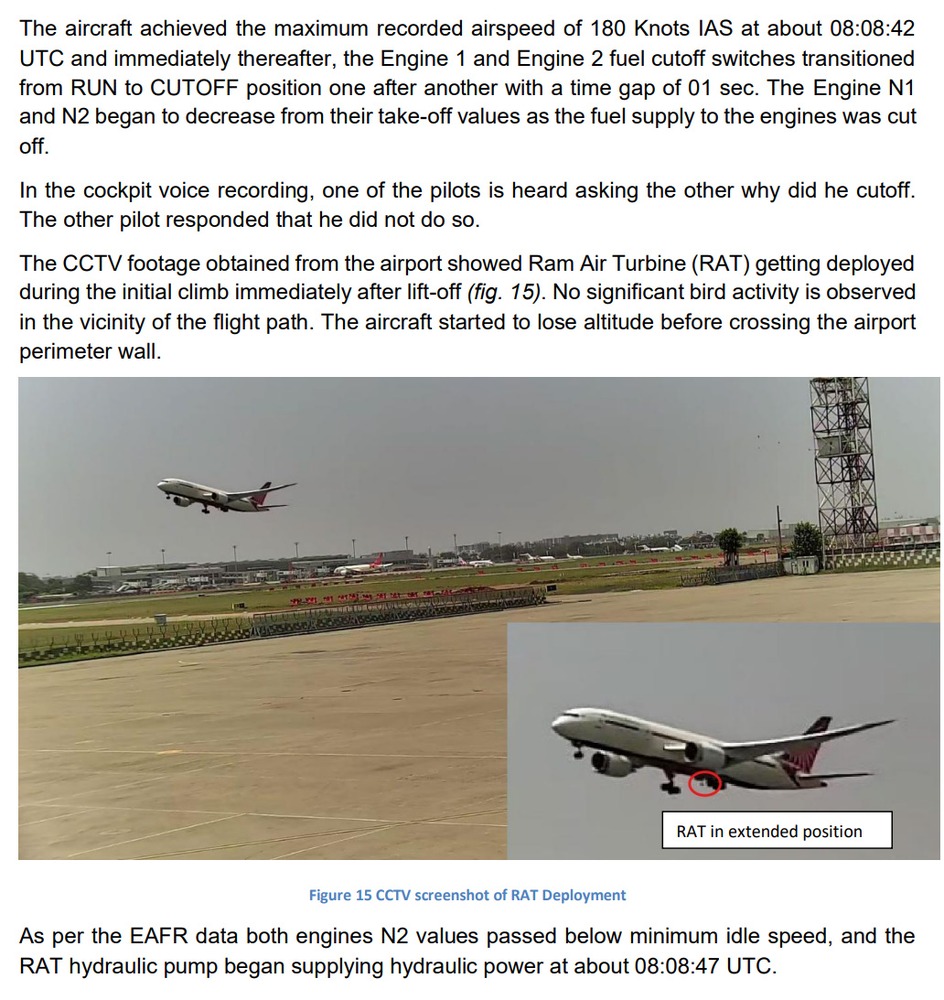
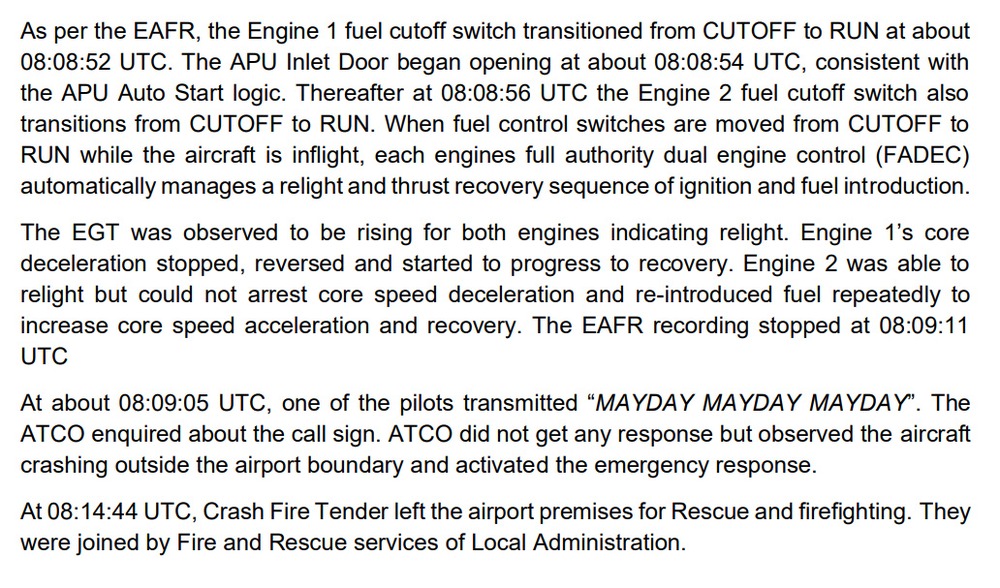
Professor has MENTAL BREAKDOWN and accuses class of cheating
https://www.youtube.com/watch?v=bl8Z7Dl7P9A
So very odd.
Spiny Norman said:
Professor has MENTAL BREAKDOWN and accuses class of cheatinghttps://www.youtube.com/watch?v=bl8Z7Dl7P9A
So very odd.
Should be in the memes thread sorry.
The initial report on the Air India crash is out.
https://aaib.gov.in/What’s%20New%20Assets/Preliminary%20Report%20VT-ANB.pdf
Spiny Norman said:
The initial report on the Air India crash is out.https://aaib.gov.in/What’s%20New%20Assets/Preliminary%20Report%20VT-ANB.pdf
Just been watching a couple reviews of it on the Tubes. Very odd. The fuel switches for both engines were switched off shortly after take-off, and then switched back on shortly after, but not quickly enough for the engines to spool back up to max thrust and climb out.
Seems like human error, or malice. I’m leaning towards the latter, sadly.
party_pants said:
Spiny Norman said:
The initial report on the Air India crash is out.https://aaib.gov.in/What’s%20New%20Assets/Preliminary%20Report%20VT-ANB.pdf
Just been watching a couple reviews of it on the Tubes. Very odd. The fuel switches for both engines were switched off shortly after take-off, and then switched back on shortly after, but not quickly enough for the engines to spool back up to max thrust and climb out.
Seems like human error, or malice. I’m leaning towards the latter, sadly.
Murder-suicide?
Bubblecar said:
party_pants said:
Spiny Norman said:
The initial report on the Air India crash is out.https://aaib.gov.in/What’s%20New%20Assets/Preliminary%20Report%20VT-ANB.pdf
Just been watching a couple reviews of it on the Tubes. Very odd. The fuel switches for both engines were switched off shortly after take-off, and then switched back on shortly after, but not quickly enough for the engines to spool back up to max thrust and climb out.
Seems like human error, or malice. I’m leaning towards the latter, sadly.
Murder-suicide?
It’s odd to do so soon into the flight. If you were planning on crashing a plane I don’t see why you’d do it right when the other pilot is concentrating so much on the plane instead of when they might be in the toilet or something.
Witty Rejoinder said:
Bubblecar said:
party_pants said:Just been watching a couple reviews of it on the Tubes. Very odd. The fuel switches for both engines were switched off shortly after take-off, and then switched back on shortly after, but not quickly enough for the engines to spool back up to max thrust and climb out.
Seems like human error, or malice. I’m leaning towards the latter, sadly.
Murder-suicide?
It’s odd to do so soon into the flight. If you were planning on crashing a plane I don’t see why you’d do it right when the other pilot is concentrating so much on the plane instead of when they might be in the toilet or something.
Full fuel tanks and not enough time to regain climbing velocity, too late to land safely.
I mean that combination did work, whether or not it was deliberate.
Bubblecar said:
Witty Rejoinder said:
Bubblecar said:Murder-suicide?
It’s odd to do so soon into the flight. If you were planning on crashing a plane I don’t see why you’d do it right when the other pilot is concentrating so much on the plane instead of when they might be in the toilet or something.
Full fuel tanks and not enough time to regain climbing velocity, too late to land safely.
I mean that combination did work, whether or not it was deliberate.
Witty Rejoinder said:
Bubblecar said:
Witty Rejoinder said:It’s odd to do so soon into the flight. If you were planning on crashing a plane I don’t see why you’d do it right when the other pilot is concentrating so much on the plane instead of when they might be in the toilet or something.
Full fuel tanks and not enough time to regain climbing velocity, too late to land safely.
I mean that combination did work, whether or not it was deliberate.
I suppose it could be murder-suicide but the perpetrator might have wanted it to appear to be merely human error.
I can’t imagine any viable scenario where turning the fuel cut-off switches could ever be interpreted as a mere error.
Also, the flight was bound for the UK, no a lot of wide ocean to fly over getting there from India. Though certainly there’s some watery expanses on that route.
Spiny Norman said:
Witty Rejoinder said:
Bubblecar said:Full fuel tanks and not enough time to regain climbing velocity, too late to land safely.
I mean that combination did work, whether or not it was deliberate.
I suppose it could be murder-suicide but the perpetrator might have wanted it to appear to be merely human error.I can’t imagine any viable scenario where turning the fuel cut-off switches could ever be interpreted as a mere error.
Also, the flight was bound for the UK, no a lot of wide ocean to fly over getting there from India. Though certainly there’s some watery expanses on that route.
I suppose we’ll get the full details of the pilots’ backgrounds in the next few days as the investigation continues.
Bubblecar said:
party_pants said:
Spiny Norman said:
The initial report on the Air India crash is out.https://aaib.gov.in/What’s%20New%20Assets/Preliminary%20Report%20VT-ANB.pdf
Just been watching a couple reviews of it on the Tubes. Very odd. The fuel switches for both engines were switched off shortly after take-off, and then switched back on shortly after, but not quickly enough for the engines to spool back up to max thrust and climb out.
Seems like human error, or malice. I’m leaning towards the latter, sadly.
Murder-suicide?
Yeah :(
Bit difficult to wrap one’s head around it. A couple of hundred other people died, both passengers and people in the buildings on the ground.
Spiny Norman said:
Tau.Neutrino said:
Spiny Norman said:
Seconds after takeoff and moments before an Air India flight crashed last month, the fuel was cut off to both engines of the plane, investigators said early on Saturday, in a preliminary assessment of information from the aircraft’s voice and data recorder.The narrowed focus on the fuel switches on Air India Flight 171 raised questions about the pilots’ actions and appeared to rule out mechanical failure or design flaws. The report said “there are no recommended actions” to the aircraft and engine manufacturers, Boeing and General Electric.
“In the cockpit voice recording, one of the pilots is heard asking the other why did he cut off” the fuel, said the report, by India’s Aircraft Accident Investigation Bureau. “The other pilot responded that he did not do so.”
The London-bound Boeing 787 Dreamliner went down on June 12, about 30 seconds after takeoff from Sardar Vallabhbhai Patel International Airport in the western Indian city of Ahmedabad. All but one of the 242 people aboard were killed.
The plane rammed into the dining hall of a medical college before exploding in flames. Altogether, more than 270 people were killed, including dozens on the ground, officials said. It was India’s worst aviation disaster since 1996.
The supply of fuel to the engine is controlled by two switches in the flight deck. Starting about 10 seconds after the fuel was cut off on Flight 171, the data recorder shows, the switches were moved to turn the fuel back on. But the plane could not gain power quickly enough to stop its descent.
Each switch is equipped with a locking mechanism that is supposed to prevent accidental movement, experts said. To turn the fuel supply on, the switch must be pulled outward and then moved to a “RUN” position, where it is released and settles back into a locked position. To turn the fuel supply off, the switch must be pulled outward again, moved to the “CUTOFF” position and then released again.
SERIOUSLY weird.
What if the electricity to the fuel pumps was cut off?
They’re mechanical, driven by the engine core.
Ok.
Witty Rejoinder said:
Spiny Norman said:
Witty Rejoinder said:I suppose it could be murder-suicide but the perpetrator might have wanted it to appear to be merely human error.
I can’t imagine any viable scenario where turning the fuel cut-off switches could ever be interpreted as a mere error.
Also, the flight was bound for the UK, no a lot of wide ocean to fly over getting there from India. Though certainly there’s some watery expanses on that route.
I suppose we’ll get the full details of the pilots’ backgrounds in the next few days as the investigation continues.
The link I posted earlier has all their qualifications.
Spiny Norman said:
Witty Rejoinder said:
Spiny Norman said:I can’t imagine any viable scenario where turning the fuel cut-off switches could ever be interpreted as a mere error.
Also, the flight was bound for the UK, no a lot of wide ocean to fly over getting there from India. Though certainly there’s some watery expanses on that route.
I suppose we’ll get the full details of the pilots’ backgrounds in the next few days as the investigation continues.
The link I posted earlier has all their qualifications.
I was more thinking of their finances and family background in case anything comes up as a red-flag.
https://www.youtube.com/watch?v=SE0BetkXsLg
Mentour Now.
These guys go over the prelim report.
Very reliable.
Bogsnorkler said:
https://www.youtube.com/watch?v=SE0BetkXsLgMentour Now.
These guys go over the prelim report.
Very reliable.
That’s one of the ones I watched earlier.
About a dozen whales surfacing close to a boat.
https://www.reddit.com/r/Damnthatsinteresting/comments/1ly62ls/well_thats_amazing_to_observe/
Two large icebergs float to the coast near a town in Iceland.


Spiny Norman said:
About a dozen whales surfacing close to a boat.https://www.reddit.com/r/Damnthatsinteresting/comments/1ly62ls/well_thats_amazing_to_observe/
Gosh!
Ta.
:)
The Fatal Flaw of the Liberty Ships
This video investigates the fatal fracture failures of the Liberty Ships during World War 2. The Liberty Ship had a huge design flaw that made their hulls susceptible to fast fractures. The Maritime Commission investigated the problem bout could not figure out cause so they instead blamed the welds as being of insufficient quality. Today we know that the answer lies in the fracture toughness of the steel used for these vessels. More specifically, the ductile-to-brittle transition that happens when the temperature drops significantly.
Spiny Norman said:
The Fatal Flaw of the Liberty ShipsThis video investigates the fatal fracture failures of the Liberty Ships during World War 2. The Liberty Ship had a huge design flaw that made their hulls susceptible to fast fractures. The Maritime Commission investigated the problem bout could not figure out cause so they instead blamed the welds as being of insufficient quality. Today we know that the answer lies in the fracture toughness of the steel used for these vessels. More specifically, the ductile-to-brittle transition that happens when the temperature drops significantly.
first I had heard of this flaw.
“Plastic” bag made from cassava (a root vegetable): 100% bio-degradable, feels like latex, and dissolves in water.
https://x.com/i/status/1943996960093954069
Noice.
There is an ongoing disaster in north America which is not only ongoing but getting worse. And despite its geologic origin, it has been largely ignored by the public. This video discusses the sudden changing of many remote streams and rivers from a clear blue to a toxic orange color. This is not due to acid mine drainage or illegal dumping of waste, but instead something worse.
Spiny Norman said:
There is an ongoing disaster in north America which is not only ongoing but getting worse. And despite its geologic origin, it has been largely ignored by the public. This video discusses the sudden changing of many remote streams and rivers from a clear blue to a toxic orange color. This is not due to acid mine drainage or illegal dumping of waste, but instead something worse.
Yes it is very disturbing.
German WWII Type XXI Submarine Walkthrough & Tour – The Wilhelm Bauer/U2540
Join me in a walkthrough inside of a German WWII Type XXI submarine.
https://www.youtube.com/watch?v=vR3cXp5ZPZU
The German Mk 21 and the Japanese Sen Toku i-400 are my fave WW2 subs.
Spiny Norman said:
German WWII Type XXI Submarine Walkthrough & Tour – The Wilhelm Bauer/U2540Join me in a walkthrough inside of a German WWII Type XXI submarine.
https://www.youtube.com/watch?v=vR3cXp5ZPZU
The German Mk 21 and the Japanese Sen Toku i-400 are my fave WW2 subs.
Tamb said:
Spiny Norman said:
German WWII Type XXI Submarine Walkthrough & Tour – The Wilhelm Bauer/U2540Join me in a walkthrough inside of a German WWII Type XXI submarine.
https://www.youtube.com/watch?v=vR3cXp5ZPZU
The German Mk 21 and the Japanese Sen Toku i-400 are my fave WW2 subs.
Das Boot is a great movie if you are into submarines.
It is indeed. The ending is heart breaking.
Spiny Norman said:
Tamb said:
Spiny Norman said:
German WWII Type XXI Submarine Walkthrough & Tour – The Wilhelm Bauer/U2540Join me in a walkthrough inside of a German WWII Type XXI submarine.
https://www.youtube.com/watch?v=vR3cXp5ZPZU
The German Mk 21 and the Japanese Sen Toku i-400 are my fave WW2 subs.
Das Boot is a great movie if you are into submarines.It is indeed. The ending is heart breaking.
Spiny Norman said:
Tamb said:
Spiny Norman said:
German WWII Type XXI Submarine Walkthrough & Tour – The Wilhelm Bauer/U2540Join me in a walkthrough inside of a German WWII Type XXI submarine.
https://www.youtube.com/watch?v=vR3cXp5ZPZU
The German Mk 21 and the Japanese Sen Toku i-400 are my fave WW2 subs.
Das Boot is a great movie if you are into submarines.It is indeed. The ending is heart breaking.
For U-boat sailors to survive would have very much been the exception to the rule. Their death rate was, like, 90%-95%.
I met an admiral from the then West German navy when he visited Australia. He’d been a WW2 U-boat captain. As we shook hands, i was thinking that, by the law of averages, this man really should not even be alive, let alone here with me.
captain_spalding said:
Spiny Norman said:
Tamb said:Das Boot is a great movie if you are into submarines.
It is indeed. The ending is heart breaking.
For U-boat sailors to survive would have very much been the exception to the rule. Their death rate was, like, 90%-95%.
I met an admiral from the then West German navy when he visited Australia. He’d been a WW2 U-boat captain. As we shook hands, i was thinking that, by the law of averages, this man really should not even be alive, let alone here with me.
I thought it was closer to a mere (!!!!) 75% mortality rate?
Spiny Norman said:
captain_spalding said:
Spiny Norman said:It is indeed. The ending is heart breaking.
For U-boat sailors to survive would have very much been the exception to the rule. Their death rate was, like, 90%-95%.
I met an admiral from the then West German navy when he visited Australia. He’d been a WW2 U-boat captain. As we shook hands, i was thinking that, by the law of averages, this man really should not even be alive, let alone here with me.
I thought it was closer to a mere (!!!!) 75% mortality rate?
I was speaking from memory. You may well be right.
Dim prospects, either way.
Spiny Norman said:
The Fatal Flaw of the Liberty ShipsThis video investigates the fatal fracture failures of the Liberty Ships during World War 2. The Liberty Ship had a huge design flaw that made their hulls susceptible to fast fractures. The Maritime Commission investigated the problem bout could not figure out cause so they instead blamed the welds as being of insufficient quality. Today we know that the answer lies in the fracture toughness of the steel used for these vessels. More specifically, the ductile-to-brittle transition that happens when the temperature drops significantly.
I worked on a gold deposit in the Northern Territory that was deposited in a brittle-ductile transition zone fracture. (Nobody else had noticed that.) It was absolutely fascinating.
https://www.cryptomuseum.com/crypto/siemens/t52/index.htm
T-52 Geheimschreiber
Teleprinter cipher machine (STURGEON)
Bogsnorkler said:
https://www.cryptomuseum.com/crypto/siemens/t52/index.htmT-52 Geheimschreiber
Teleprinter cipher machine (STURGEON)
Oh dear Smithsonian.
“However, for now, this is just a theory. Scientists say they need to conduct more research to understand why tomato plants on the western islands have adapted this way.”
https://www.smithsonianmag.com/smart-news/something-strange-is-happening-to-tomatoes-growing-on-the-galapagos-islands-180986956/
https://www.smithsonianmag.com/history/journal-plague-year-180965222/
How the Horrific 1918 Flu Spread Across America
The toll of history’s worst epidemic surpasses all the military deaths in World War I and World War II combined. And it may have begun in the United States
John M. Barry
Bogsnorkler said:
https://www.smithsonianmag.com/history/journal-plague-year-180965222/How the Horrific 1918 Flu Spread Across America
The toll of history’s worst epidemic surpasses all the military deaths in World War I and World War II combined. And it may have begun in the United States
John M. Barry
A good podcast on the Spanish flu here:

Spiny Norman said:
At first I was wondering why they were showing the range as a square.
Then I noticed the little green dot.
The Rev Dodgson said:
Spiny Norman said:
At first I was wondering why they were showing the range as a square.
Then I noticed the little green dot.
+1
The Rev Dodgson said:
Spiny Norman said:
At first I was wondering why they were showing the range as a square.
Then I noticed the little green dot.
emr falls off to the square of the distance. not circle.
https://www.space.com/space-exploration/james-webb-space-telescope/is-our-universe-trapped-inside-a-black-hole-this-james-webb-space-telescope-discovery-might-blow-your-mind
I think it is a lot of twaddle myself. I’m no cosmologist though.
Bogsnorkler said:
The Rev Dodgson said:
Spiny Norman said:
At first I was wondering why they were showing the range as a square.
Then I noticed the little green dot.
emr falls off to the square of the distance. not circle.
I suppose you think that’s funny :)
The Rev Dodgson said:
Bogsnorkler said:
The Rev Dodgson said:At first I was wondering why they were showing the range as a square.
Then I noticed the little green dot.
emr falls off to the square of the distance. not circle.
I suppose you think that’s funny :)
I am trying.
Bogsnorkler said:
The Rev Dodgson said:
Bogsnorkler said:emr falls off to the square of the distance. not circle.
I suppose you think that’s funny :)
I am trying.
Yes, very trying.
How £100,000 F1 Brakes Are Made (Factory Visit)
F1 callipers go from this raw block of metal to these absolute masterpieces. And discs from looking like this, to a beautifully engineered piece of carbon.
Now, they’re expensive… the entire braking system, all the parts supplied by Brembo, costs just less than £100,000 – but, there’s a good reason for that… They stop an F1 car from 200 mph to 60 in just 3 seconds.
But I wanted to understand HOW the world’s most impressive brakes are actually made.
So, when I got access to Brembo – the company that supplies every single F1 team with brake callipers and half the grid with carbon brake discs – I had to go.
Bogsnorkler said:
https://www.space.com/space-exploration/james-webb-space-telescope/is-our-universe-trapped-inside-a-black-hole-this-james-webb-space-telescope-discovery-might-blow-your-mindI think it is a lot of twaddle myself. I’m no cosmologist though.
Black holes all the way down…
Michael V said:
Bogsnorkler said:
https://www.space.com/space-exploration/james-webb-space-telescope/is-our-universe-trapped-inside-a-black-hole-this-james-webb-space-telescope-discovery-might-blow-your-mindI think it is a lot of twaddle myself. I’m no cosmologist though.
Black holes all the way down…
And the only way we can break free of the black hole is to die first.
Michael V said:
Bogsnorkler said:
https://www.space.com/space-exploration/james-webb-space-telescope/is-our-universe-trapped-inside-a-black-hole-this-james-webb-space-telescope-discovery-might-blow-your-mindI think it is a lot of twaddle myself. I’m no cosmologist though.
Black holes all the way down…
And all the way up.
Michael V said:
Bogsnorkler said:
https://www.space.com/space-exploration/james-webb-space-telescope/is-our-universe-trapped-inside-a-black-hole-this-james-webb-space-telescope-discovery-might-blow-your-mindI think it is a lot of twaddle myself. I’m no cosmologist though.
Black holes all the way down…
This is to do with the bias in the spinning of galaxies isn’t it
I read that the other day, interesting
Cymek said:
Michael V said:
Bogsnorkler said:
https://www.space.com/space-exploration/james-webb-space-telescope/is-our-universe-trapped-inside-a-black-hole-this-james-webb-space-telescope-discovery-might-blow-your-mindI think it is a lot of twaddle myself. I’m no cosmologist though.
Black holes all the way down…
This is to do with the bias in the spinning of galaxies isn’t it
I read that the other day, interesting
It’s when they start spinning the other way, that’s when you die first, unless you have a Millennium Falcon.
https://www.youtube.com/watch?v=gwPZGC9PpDE
Ditching of 400 drones into Victoria Harbour
ATSB
Drone operators are urged to be familiar with all system functionalities and understand the data provided to them, after more than 400 drones were ruined during a swarm display in Melbourne.
want to know something about bicycles? Then this is the place to go
https://www.sheldonbrown.com/glossary-a.html
Frances Glessner Lee was a wealthy heiress who could have spent her life in drawing rooms and charity committees, but she chose instead to devote herself to a field that few women touched: forensic science. In her 50s, she turned her keen mind and inheritance toward revolutionizing crime scene investigation, determined to bring precision and logic into a field riddled with carelessness and bias.
She created a series of intricate miniature dioramas, known as the “Nutshell Studies of Unexplained Death.” Each one was a meticulously crafted dollhouse-sized crime scene, complete with tiny working drawers, blood spatters made of red paint, miniature clocks stopped at exact times, and lifelike figures in positions of death. The details were stunning and unforgiving: a broom propped against a wall, a crease in a bedspread, a window cracked open just slightly. These weren’t just models—they were teaching tools designed to train detectives to look closely, to see past assumptions, and to learn that a scene tells a story if you know how to listen.
At a time when women were rarely respected in scientific spaces, Lee became a captain in the New Hampshire State Police and was known for her insistence on accuracy and the value of careful observation. Her work helped push law enforcement toward a more scientific approach, emphasizing the importance of preserving a crime scene and paying attention to the smallest details. These dioramas, which took months to build, were used for decades to train detectives in recognizing clues and avoiding tunnel vision during investigations.
Frances Glessner Lee’s work reminds us that the pursuit of truth requires patience, skill, and the ability to notice what others overlook.
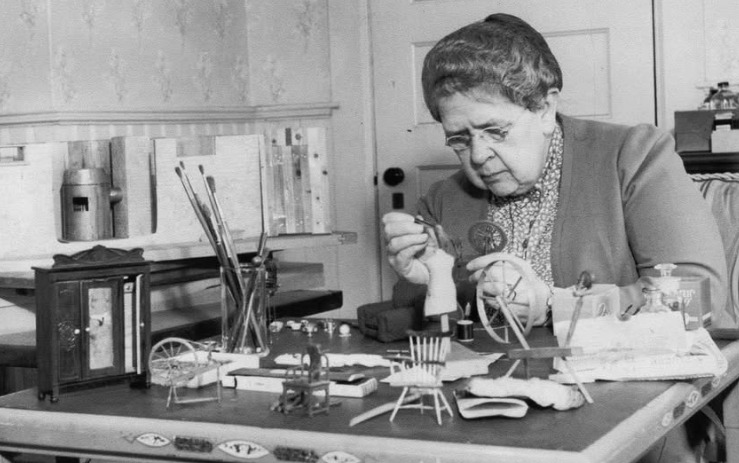
Bogsnorkler said:
Frances Glessner Lee was a wealthy heiress who could have spent her life in drawing rooms and charity committees, but she chose instead to devote herself to a field that few women touched: forensic science. In her 50s, she turned her keen mind and inheritance toward revolutionizing crime scene investigation, determined to bring precision and logic into a field riddled with carelessness and bias.She created a series of intricate miniature dioramas, known as the “Nutshell Studies of Unexplained Death.” Each one was a meticulously crafted dollhouse-sized crime scene, complete with tiny working drawers, blood spatters made of red paint, miniature clocks stopped at exact times, and lifelike figures in positions of death. The details were stunning and unforgiving: a broom propped against a wall, a crease in a bedspread, a window cracked open just slightly. These weren’t just models—they were teaching tools designed to train detectives to look closely, to see past assumptions, and to learn that a scene tells a story if you know how to listen.
At a time when women were rarely respected in scientific spaces, Lee became a captain in the New Hampshire State Police and was known for her insistence on accuracy and the value of careful observation. Her work helped push law enforcement toward a more scientific approach, emphasizing the importance of preserving a crime scene and paying attention to the smallest details. These dioramas, which took months to build, were used for decades to train detectives in recognizing clues and avoiding tunnel vision during investigations.
Frances Glessner Lee’s work reminds us that the pursuit of truth requires patience, skill, and the ability to notice what others overlook.
I think I knew about this amazing lady.
buffy said:
Bogsnorkler said:
Frances Glessner Lee was a wealthy heiress who could have spent her life in drawing rooms and charity committees, but she chose instead to devote herself to a field that few women touched: forensic science. In her 50s, she turned her keen mind and inheritance toward revolutionizing crime scene investigation, determined to bring precision and logic into a field riddled with carelessness and bias.She created a series of intricate miniature dioramas, known as the “Nutshell Studies of Unexplained Death.” Each one was a meticulously crafted dollhouse-sized crime scene, complete with tiny working drawers, blood spatters made of red paint, miniature clocks stopped at exact times, and lifelike figures in positions of death. The details were stunning and unforgiving: a broom propped against a wall, a crease in a bedspread, a window cracked open just slightly. These weren’t just models—they were teaching tools designed to train detectives to look closely, to see past assumptions, and to learn that a scene tells a story if you know how to listen.
At a time when women were rarely respected in scientific spaces, Lee became a captain in the New Hampshire State Police and was known for her insistence on accuracy and the value of careful observation. Her work helped push law enforcement toward a more scientific approach, emphasizing the importance of preserving a crime scene and paying attention to the smallest details. These dioramas, which took months to build, were used for decades to train detectives in recognizing clues and avoiding tunnel vision during investigations.
Frances Glessner Lee’s work reminds us that the pursuit of truth requires patience, skill, and the ability to notice what others overlook.
I think I knew about this amazing lady.
Her models are still in use in seminars and programmes to teach investigators about analysing crime scenes.
Tyre balancing beads are glass beads that you put in your tyres and they supposedly fix unbalanced tyres. This contraptions tests the idea with ball bearings.
What Did It Take To Repair This Damaged A320neo?
April 6th, 2024: It was on this day at Vienna’s airport, that the Austrian Airlines A320neo registered OE-LZQ rolled backwards from a remote stand and collided with airport infrastructure. Looking like a write-off, Airbus teams assessed that repair was possible – even if the work had never been done before…
How to cool down computers inside of A320
Once again we will take look on ATA 21. I will tell you about Avionics Equipment Ventilation Computer/system or shortly AEVC and as well about the skin air-inlet valve.
How Will the Golden Dome Work?
https://www.youtube.com/watch?v=h3sbDTl2MSU
The US anti-missile defence system.
99% of physics explained in 5 equations
Spiny Norman said:
99% of physics explained in 5 equations
It may well be QI, but as a structural engineer I am a little put off by the fact that the relationship between stress and strain, and the question of how matter (in all its states) reacts to applied forces, is allocated less than 1% of all of “physics”.
https://www.youtube.com/watch?v=74_N163HyhA
How Amateur Radio Fans Decoded SpaceX’s Telemetry & Engineering Video
Scott Manley
An F-16 letting the vehicle on the road to watch out.
Spiny Norman said:
An F-16 letting the vehicle on the road to watch out.
Telling?
Michael V said:
Spiny Norman said:
An F-16 letting the vehicle on the road to watch out.Telling?
Yeah close enough.
Another post made without sufficient proof-reading.
Old mate just manages to get his car out of the way before the wall collapses, crushing some other cars.
https://www.reddit.com/r/interestingasfuck/comments/1m1lkqg/landslide_caught_on_tape/
An ancient termite mega city in Brazil, a colony that’s estimated to be 4,000 years old and covers an area of 230,000 square kilometres (88,800 square miles), roughly the size of Great Britain.
Water is constantly evaporating, just in very small amounts.
Spiny Norman said:
An ancient termite mega city in Brazil, a colony that’s estimated to be 4,000 years old and covers an area of 230,000 square kilometres (88,800 square miles), roughly the size of Great Britain.
Interesting, but I’m not moving there.
Spiny Norman said:
Water is constantly evaporating, just in very small amounts.
Struggling to find what is so interesting about this one :)
https://www.youtube.com/watch?v=iCw2hP193Cw
Trinity and Beyond 100 Ton Test Sequence with new explosion footage
NEWCASTLE: Staff at Blackbutt Reserve are on high alert after a routine health check on a newborn koala revealed a startling genetic anomaly, one that matches long-dismissed reports of the legendary Drop Bear.
Nicknamed “Clancy”, the joey initially appeared to be a regular, cuddly marsupial. That was until keepers noticed he refused to descend from trees, made deep guttural snarls during feeding time, and attempted an aerial ambush on a school excursion from Warners Bay High.
“We thought he was just spirited,” said zookeeper Kylie Drennan. “Then we found a possum pelt in his enclosure. That’s when we called the University.”
Experts from the University of Newcastle confirmed traces of a previously undocumented koala subspecies, believed to be a genetic throwback to a prehistoric apex predator marsupial, the basis of Australia’s infamous Drop Bear myth.
“They were thought to be folklore,” said evolutionary biologist Dr. Max Tilley. “But Clancy’s DNA shows markers for enhanced limb strength, improved vertical pounce velocity, and a taste for meat pies.”
The City of Newcastle has already updated signage at Blackbutt Reserve to read: “Please do not look Clancy in the eyes. Or turn your back on him. Or breathe too loudly.”
JudgeMental said:
NEWCASTLE: Staff at Blackbutt Reserve are on high alert after a routine health check on a newborn koala revealed a startling genetic anomaly, one that matches long-dismissed reports of the legendary Drop Bear.Nicknamed “Clancy”, the joey initially appeared to be a regular, cuddly marsupial. That was until keepers noticed he refused to descend from trees, made deep guttural snarls during feeding time, and attempted an aerial ambush on a school excursion from Warners Bay High.
“We thought he was just spirited,” said zookeeper Kylie Drennan. “Then we found a possum pelt in his enclosure. That’s when we called the University.”
Experts from the University of Newcastle confirmed traces of a previously undocumented koala subspecies, believed to be a genetic throwback to a prehistoric apex predator marsupial, the basis of Australia’s infamous Drop Bear myth.
“They were thought to be folklore,” said evolutionary biologist Dr. Max Tilley. “But Clancy’s DNA shows markers for enhanced limb strength, improved vertical pounce velocity, and a taste for meat pies.”
The City of Newcastle has already updated signage at Blackbutt Reserve to read: “Please do not look Clancy in the eyes. Or turn your back on him. Or breathe too loudly.”
LOL.
Bill Morgan, an Australian truck driver, was clinically dead for 14 minutes after a heart attack and spent 12 days in a coma. He made a full recovery, bought a scratch-off ticket to celebrate, and won a car. During a TV reenactment of that win, he scratched another ticket live and won $250,000.

Spiny Norman said:
Bill Morgan, an Australian truck driver, was clinically dead for 14 minutes after a heart attack and spent 12 days in a coma. He made a full recovery, bought a scratch-off ticket to celebrate, and won a car. During a TV reenactment of that win, he scratched another ticket live and won $250,000.
And a video of him winning the quarter mill.
Spiny Norman said:
Bill Morgan, an Australian truck driver, was clinically dead for 14 minutes after a heart attack and spent 12 days in a coma. He made a full recovery, bought a scratch-off ticket to celebrate, and won a car. During a TV reenactment of that win, he scratched another ticket live and won $250,000.
Lucky duck!
JudgeMental said:
https://www.sciencenews.org/article/betelgeuse-companion-star-revealed
Is that a real image or an artistic interpretation? I didn’t think we had the resolution to image another star as anything but a point?
Witty Rejoinder said:
JudgeMental said:
https://www.sciencenews.org/article/betelgeuse-companion-star-revealed
Is that a real image or an artistic interpretation? I didn’t think we had the resolution to image another star as anything but a point?
Photo caption.
New images reveal a long-sought tiny companion (blue) to the bright supergiant star Betelgeuse (orange).
International Gemini Observatory/NOIRLab/NSF/AURA; Image Processing: M. Zamani/NSF NOIRLab
JudgeMental said:
https://www.sciencenews.org/article/betelgeuse-companion-star-revealed
Good stuff. As they say, it could explains some of Betelgeuse’s brightness changes.
:)
Michael V said:
JudgeMental said:
https://www.sciencenews.org/article/betelgeuse-companion-star-revealed
Good stuff. As they say, it could explains some of Betelgeuse’s brightness changes.
:)
It’s an orb!
:)
Ahhh my mistake. I must have got the idea of high resolution images of stars as points a few decades back.
Witty Rejoinder said:
Ahhh my mistake. I must have got the idea of high resolution images of stars as points a few decades back.
The various new telescope constantly updated our abilities
It’s all quite impressive
Waiting on the day we have the ability to use our sun as a gravitational lens.
.
https://www.sciencealert.com/hidden-detail-in-crotch-solves-500-year-old-leonardo-da-vinci-mystery
A gas explosion hurls a tanker about 300 metres.
https://www.reddit.com/r/BeAmazed/comments/1m6262r/exploding_gas_throws_a_tanker_1000ft
Yikes!!
Spiny Norman said:
A gas explosion hurls a tanker about 300 metres.https://www.reddit.com/r/BeAmazed/comments/1m6262r/exploding_gas_throws_a_tanker_1000ft
Yikes!!
Not available.
In the thick of World War II, a B-17 Flying Fortress was severely damaged in combat — its entire cockpit section torn away mid-flight. By all logic, the aircraft should have gone down instantly. But somehow… it kept flying for over 10 minutes. What would happen after? This is the story of The B-17 that flew Without a Cockpit.
https://www.youtube.com/watch?v=Q0Ux3zDFZVg
I’m not convinced of all the factors presented as being facts, but overall it’s reasonable accurate I think.
The photos of the damage show how extreme the situation was.
Spiny Norman said:
In the thick of World War II, a B-17 Flying Fortress was severely damaged in combat — its entire cockpit section torn away mid-flight. By all logic, the aircraft should have gone down instantly. But somehow… it kept flying for over 10 minutes. What would happen after? This is the story of The B-17 that flew Without a Cockpit.https://www.youtube.com/watch?v=Q0Ux3zDFZVg
I’m not convinced of all the factors presented as being facts, but overall it’s reasonable accurate I think.
The photos of the damage show how extreme the situation was.
Amazing!
Man Spends $15,000 Building RC Lamborghini with Real V12 Engine
Starts work on a Bugatti Chiron…

Australian Signals Directorate
The Rolling Pin played a pivotal role in decryption.
Developed in 1952 by staff in Defence Science, Salisbury, South Australia,
the rolling pin assisted analysts at the Defence Signals Branch (DSB),
now known as Australian Signals Directorate (ASD), to decipher encoded
messages using sliding coordinate strips.
Popular with analysts, it reduced eye strain and sped up decryption.
https://www.youtube.com/watch?v=pMOB-PxIclY
Australia’s Drug Driving Laws Are Broken — Prof. David Heilpern Explains Why
JudgeMental said:
https://www.youtube.com/watch?v=pMOB-PxIclYAustralia’s Drug Driving Laws Are Broken — Prof. David Heilpern Explains Why
Ta.
JudgeMental said:

Australian Signals Directorate
The Rolling Pin played a pivotal role in decryption.
Developed in 1952 by staff in Defence Science, Salisbury, South Australia,
the rolling pin assisted analysts at the Defence Signals Branch (DSB),
now known as Australian Signals Directorate (ASD), to decipher encoded
messages using sliding coordinate strips.Popular with analysts, it reduced eye strain and sped up decryption.
‘Developed in 1952’?
Talk about your Johnny-come-latelys.
The idea has been around since the late 18th century. Blimey, American cereal companies used to give away ‘decoder rings’ in their boxes, simple toy versions of the devices.
Have a look around on the internet for ‘Jefferson disk’, ‘Bazeries cylinder’ or ‘wheel cypher’
captain_spalding said:
JudgeMental said:

Australian Signals Directorate
The Rolling Pin played a pivotal role in decryption.
Developed in 1952 by staff in Defence Science, Salisbury, South Australia,
the rolling pin assisted analysts at the Defence Signals Branch (DSB),
now known as Australian Signals Directorate (ASD), to decipher encoded
messages using sliding coordinate strips.Popular with analysts, it reduced eye strain and sped up decryption.
‘Developed in 1952’?
Talk about your Johnny-come-latelys.
The idea has been around since the late 18th century. Blimey, American cereal companies used to give away ‘decoder rings’ in their boxes, simple toy versions of the devices.
Have a look around on the internet for ‘Jefferson disk’, ‘Bazeries cylinder’ or ‘wheel cypher’
LOL, they aren’t claiming this system is new just that they developed this particular tool.
JudgeMental said:
captain_spalding said:
JudgeMental said:

Australian Signals Directorate
The Rolling Pin played a pivotal role in decryption.
Developed in 1952 by staff in Defence Science, Salisbury, South Australia,
the rolling pin assisted analysts at the Defence Signals Branch (DSB),
now known as Australian Signals Directorate (ASD), to decipher encoded
messages using sliding coordinate strips.Popular with analysts, it reduced eye strain and sped up decryption.
‘Developed in 1952’?
Talk about your Johnny-come-latelys.
The idea has been around since the late 18th century. Blimey, American cereal companies used to give away ‘decoder rings’ in their boxes, simple toy versions of the devices.
Have a look around on the internet for ‘Jefferson disk’, ‘Bazeries cylinder’ or ‘wheel cypher’
LOL, they aren’t claiming this system is new just that they developed this particular tool.
OK. They developed their version of it then. Understood.
During a drone show in China, someone switched on a jammer.
https://www.reddit.com/r/fpv/comments/1m6a0hd/during_a_drone_show_in_china_someone_switched_on
BeamNG | Which CAR Survives the 90° SPIRAL ROAD the FURTHEST?
https://www.youtube.com/watch?v=OhUjCJs3y68
I found it of interest.
Somewhat larger puppets than usual. Quite impressive they be.
https://www.reddit.com/r/AbsoluteUnits/comments/1m94of4/of_a_puppet
A very gutsy move, saving a dog stuck in a frozen river.
https://www.reddit.com/r/BeAmazed/comments/1m90e3c/kind_man_rescues_dog_in_freezing_water

Spiny Norman said:
Somewhat larger puppets than usual. Quite impressive they be.https://www.reddit.com/r/AbsoluteUnits/comments/1m94of4/of_a_puppet
Very nice.
They should make a Statue Of Liberty puppet, and have it walking back home.
It would create some great imagery….a serene faced Liberty with a crowd puny sized humans
Spiny Norman said:
Somewhat larger puppets than usual. Quite impressive they be.https://www.reddit.com/r/AbsoluteUnits/comments/1m94of4/of_a_puppet
helped this mob set-up their show at Perth’s Artrage years ago. They are very good.
https://snuffpuppets.com
https://www.nist.gov/news-events/news/2025/07/nist-makes-first-detection-cannabis-breath-edibles
Unitree Introducing | Unitree R1 Intelligent Companion Price from $5900
Tom Stanton builds a gearless magnet drive bicycle. More interesting than I thought it’d be.
Spiny Norman said:
Unitree Introducing | Unitree R1 Intelligent Companion Price from $5900
Come on.
Unlike the on-line bots, this one doesn’t even have a brain the size of a planet.
What It’s Like Driving a £3,000,000 F1 Sim
This is Racing Bulls’ $3 million simulator in Faenza, Italy – and it’s so accurate that after Friday practice – on the real track, they’ll run the exact same car setup here virtually, test changes that would be impossible on track, and if the sim says it’s faster… those changes go straight onto the real car for Saturday.
The engineering behind it is absolutely wild. So in this video, I’m going deep on how these simulators actually work, why teams trust them enough to bet race results on them, and of course… I’m going to drive it and see how close I can get to their drivers’ lap times.
A woman in China has been using an old hand grenade as a hammer to smash nuts and hammer nails.

Spiny Norman said:
A woman in China has been using an old hand grenade as a hammer to smash nuts and hammer nails.
A kid brought along one like that and was throwing it around at High School. He found it at the tip across the road. The can on the top was quite a bit larger, IIRC, and painted red. It didn’t explode, but was quickly confiscated by a teacher who recognised it as a German hand grenade.
Scientists have developed a material with photosynthetic bacteria that convert carbon dioxide into a mineral skeleton. The material hardens over time, so it could be used for buildings, they say.
Spiny Norman said:
Scientists have developed a material with photosynthetic bacteria that convert carbon dioxide into a mineral skeleton. The material hardens over time, so it could be used for buildings, they say.
A bit more info on it.
https://ethz.ch/en/news-and-events/eth-news/news/2025/06/a-building-material-that-lives-and-stores-carbon.html
American Airlines flight attendants trying to evacuate a plane due to laptop battery fire but passengers want their bags.
https://www.reddit.com/r/aviation/comments/1mbvhqw/american_airlines_flight_attendants_trying_to
Oh the plane’s on fire, I might just stand around and block the f’king isle for a while getting my bags.
FFS ….
Quick tip – If you’re told to evacuate and the reason is a fire, get to the nearest open exit as fast as you can. Leave everything behind and climb over seats if you have to. If someone ahead of me was stuffing around trying to get their bag(s) I wouldn’t hesitate for a second to push them out of the way.
The Spanish military (air army account on Instagram) has confirmed that the maneuver had been done due to a flock of birds.
The caption reads:
“Many of you have been asking us, so we tell you what happened during the Gijon Air Festival.
As you have seen, one of our F-18 fighters performed an evasive maneuver when it detected a flock of birds in its trajectory. This action is part of the usual protocol to preserve both the integrity of the pilot and the safety of the public.
Our aviators are trained to react in milliseconds to any unforeseen event. In this case, the pilot acted with exemplary speed and professionalism, avoiding a possible impact without compromising the exhibition.
Safety is, and will continue to be, our top priority in every aerial demonstration.
Thanks to all attendees for their enthusiasm and confidence.
Let’s keep flying together!”
https://www.reddit.com/r/aviation/comments/1mc3wrm/birds_confirmed_as_cause_for_spanish_f18_maneuver
Spiny Norman said:
American Airlines flight attendants trying to evacuate a plane due to laptop battery fire but passengers want their bags.https://www.reddit.com/r/aviation/comments/1mbvhqw/american_airlines_flight_attendants_trying_to
Oh the plane’s on fire, I might just stand around and block the f’king isle for a while getting my bags.
FFS ….Quick tip – If you’re told to evacuate and the reason is a fire, get to the nearest open exit as fast as you can. Leave everything behind and climb over seats if you have to. If someone ahead of me was stuffing around trying to get their bag(s) I wouldn’t hesitate for a second to push them out of the way.
But I neeeed my meds/therapy pet/lucky gonk…who made you boss of the world, just ‘cos you’re an expert
Spiny Norman said:
American Airlines flight attendants trying to evacuate a plane due to laptop battery fire but passengers want their bags.https://www.reddit.com/r/aviation/comments/1mbvhqw/american_airlines_flight_attendants_trying_to
Oh the plane’s on fire, I might just stand around and block the f’king isle for a while getting my bags.
FFS ….Quick tip – If you’re told to evacuate and the reason is a fire, get to the nearest open exit as fast as you can. Leave everything behind and climb over seats if you have to. If someone ahead of me was stuffing around trying to get their bag(s) I wouldn’t hesitate for a second to
push them out of the waypunch them unconcious and climb over their body.
Kingy said:
Spiny Norman said:
American Airlines flight attendants trying to evacuate a plane due to laptop battery fire but passengers want their bags.https://www.reddit.com/r/aviation/comments/1mbvhqw/american_airlines_flight_attendants_trying_to
Oh the plane’s on fire, I might just stand around and block the f’king isle for a while getting my bags.
FFS ….Quick tip – If you’re told to evacuate and the reason is a fire, get to the nearest open exit as fast as you can. Leave everything behind and climb over seats if you have to. If someone ahead of me was stuffing around trying to get their bag(s) I wouldn’t hesitate for a second to
push them out of the waypunch them unconcious and climb over their body.
So many of us lead such safe, sanitised lives, and it’s difficult to actually comprehend mortal danger, and the ways one should react to such circumstances.
Kingy said:
Spiny Norman said:
American Airlines flight attendants trying to evacuate a plane due to laptop battery fire but passengers want their bags.https://www.reddit.com/r/aviation/comments/1mbvhqw/american_airlines_flight_attendants_trying_to
Oh the plane’s on fire, I might just stand around and block the f’king isle for a while getting my bags.
FFS ….Quick tip – If you’re told to evacuate and the reason is a fire, get to the nearest open exit as fast as you can. Leave everything behind and climb over seats if you have to. If someone ahead of me was stuffing around trying to get their bag(s) I wouldn’t hesitate for a second to
push them out of the waypunch them unconcious and climb over their body.
I well understand the interplay between fire, an aircraft, and the fuel with which that aircraft is stuffed.
If you unnecessarily obstruct me from an exit in those circumstances, i will go through you like a chainsaw on angel dust.
I will solemnly attend your funeral afterwards, while simulataneously rejoicing that no-one is attending mine.
captain_spalding said:
Kingy said:
Spiny Norman said:
American Airlines flight attendants trying to evacuate a plane due to laptop battery fire but passengers want their bags.https://www.reddit.com/r/aviation/comments/1mbvhqw/american_airlines_flight_attendants_trying_to
Oh the plane’s on fire, I might just stand around and block the f’king isle for a while getting my bags.
FFS ….Quick tip – If you’re told to evacuate and the reason is a fire, get to the nearest open exit as fast as you can. Leave everything behind and climb over seats if you have to. If someone ahead of me was stuffing around trying to get their bag(s) I wouldn’t hesitate for a second to
push them out of the waypunch them unconcious and climb over their body.
I well understand the interplay between fire, an aircraft, and the fuel with which that aircraft is stuffed.
If you unnecessarily obstruct me from an exit in those circumstances, i will go through you like a chainsaw on angel dust.
I will solemnly attend your funeral afterwards, while simulataneously rejoicing that no-one is attending mine.
I don’t have a good understanding of the dynamics of a small fire in a confined metal tube. All I know is that the safety brief recommends everyone gets out of that tube as quickly as possible, which is why I would also go through obstructions like a chainsaw on angel dust.
esselte said:
I don’t have a good understanding of the dynamics of a small fire in a confined metal tube. All I know is that the safety brief recommends everyone gets out of that tube as quickly as possible, which is why I would also go through obstructions like a chainsaw on angel dust.
There are some (not too many, but some) situations where the term ‘civilised behaviour’ simply ceases to exist, and gets replaced by phrases like ‘move now, or die now’.
Fire in confined spaces is one such occasion.
Disappearing Stars In The 1950s Associated With UAPs And Nuclear Weapons Tests
A study looking at stars that vanished in the pre-Sputnik era has found an odd link with UAPs and nuclear weapons tests.
new preprint study has taken a look at transient objects captured by astronomers in the pre-Sputnik era, finding a curious correlation with nuclear tests and unidentified aerial phenomena (UAP).
Since 2017, the Vanishing & Appearing Sources during a Century of Observations (VASCO) project has attempted to look for stars and other sources of light that have disappeared from view or have dimmed unusually over the 20th and 21st centuries CE. The team has previously found that around 100 stars have disappeared from view without an explanation (though other teams have suggestions as to where they went).
In the latest study from the group, which has not yet completed peer review, they focused on transient star-like objects observed in the pre-Sputnik era, or before any satellites had been launched into orbit by humans. The team identified transients captured by the Palomar Observatory Sky Survey (POSS-I), which scanned the skies from November 19, 1949 to April 28, 1957.
“These short-lived transients (lasting less than one exposure time of 50 minutes) are absent in images taken shortly before the transients appear and in all images from subsequent surveys,” the team writes in their paper. “In some cases multiple transients appear in a single image, exhibiting characteristics not easily accounted for by prosaic explanations (e.g., gravitational lensing, gamma ray bursts, fragmenting asteroids, plate defects).”
Identifying the source of these transients is, as you might imagine, pretty tricky given that they were only seen briefly, and never captured again. But the pair behind the study suggest that looking at possible “contemporaneous correlates” of these transient events could provide clues to their origin. In the study, they wanted to test the hypothesis that they were associated with nuclear tests.
“From 1951 until the launch of Sputnik in 1957, at least 124 above-ground nuclear tests were conducted by the United States (US), Soviet Union, and Great Britain,” the researchers Stephen Bruehl of Vanderbilt University Medical Center, and Beatriz Villarroel, researcher in astronomy at the Nordic Institute for Theoretical Physics, wrote in their paper. “In some circumstances, nuclear radiation is known to cause a visible glow (i.e., Cherenkov radiation). Consistent with this concept, glowing ‘fireballs’ in the sky were reported in multiple instances to occur shortly after nuclear tests in locations where significant nuclear fallout was expected.”
Yikes!!!
Amusement ride break down in Saudi Arabia, injuring people
https://www.reddit.com/r/interesting/comments/1mdwyv1/amusement_ride_break_down_in_saudi_arabia
Spiny Norman said:
Yikes!!!Amusement ride break down in Saudi Arabia, injuring people
https://www.reddit.com/r/interesting/comments/1mdwyv1/amusement_ride_break_down_in_saudi_arabia
Log in only. Harvesting personal data. Not going there.
Here’s a different video of that amusement park ride failing badly in Saudi Arabia.
Rather nasty indeed.
Telescopefish, a rare deep-sea creature known for its eyes adapted for spotting bioluminescence
https://www.reddit.com/r/Amazing/comments/1mebjro/telescopefish_a_rare_deepsea_creature_known_for
A friendly looking chap!!
In 2013, the Jascon-4 tugboat capsized off the Nigerian coast. Of the 12 crew members onboard, only one survived: Harrison Okene. Trapped 100 feet underwater in a 4-foot air pocket for 60 hours, he endured darkness, cold, and crawfish eating at his skin until divers found him alive.
Spiny Norman said:
In 2013, the Jascon-4 tugboat capsized off the Nigerian coast. Of the 12 crew members onboard, only one survived: Harrison Okene. Trapped 100 feet underwater in a 4-foot air pocket for 60 hours, he endured darkness, cold, and crawfish eating at his skin until divers found him alive.
More info on him and the accident.
https://allthatsinteresting.com/harrison-okene

The Moses Bridge in the Netherlands.
Spiny Norman said:
Spiny Norman said:
In 2013, the Jascon-4 tugboat capsized off the Nigerian coast. Of the 12 crew members onboard, only one survived: Harrison Okene. Trapped 100 feet underwater in a 4-foot air pocket for 60 hours, he endured darkness, cold, and crawfish eating at his skin until divers found him alive.More info on him and the accident.
https://allthatsinteresting.com/harrison-okene
Have to be keeping calm wouldn’t you or risk using up the oxygen quicker or disturbing the air pocket.
Cymek said:
Spiny Norman said:
Spiny Norman said:
In 2013, the Jascon-4 tugboat capsized off the Nigerian coast. Of the 12 crew members onboard, only one survived: Harrison Okene. Trapped 100 feet underwater in a 4-foot air pocket for 60 hours, he endured darkness, cold, and crawfish eating at his skin until divers found him alive.More info on him and the accident.
https://allthatsinteresting.com/harrison-okene
Have to be keeping calm wouldn’t you or risk using up the oxygen quicker or disturbing the air pocket.
Tamb said:
Cymek said:
Spiny Norman said:More info on him and the accident.
https://allthatsinteresting.com/harrison-okene
Have to be keeping calm wouldn’t you or risk using up the oxygen quicker or disturbing the air pocket.
At the power station we were taught to conserve our breathing apparatus air supply. It’s surprising how much is saved by keeping calm and restricting movement.
Same for when I was scuba diving. Nice calm measured breathing really helped make the tank last longer.
I also developed a technique for when I was doing endurance racing. Normally I do short sprints of about 5 – 10 minutes and they require maximum effort, so I’m fairly shagged after each race for a while. But you can’t do that when racing for over two hours straight, so I was able to calm myself down and slow my heartbeat, etc. It helped a lot.
Spiny Norman said:
Tamb said:
Cymek said:Have to be keeping calm wouldn’t you or risk using up the oxygen quicker or disturbing the air pocket.
At the power station we were taught to conserve our breathing apparatus air supply. It’s surprising how much is saved by keeping calm and restricting movement.Same for when I was scuba diving. Nice calm measured breathing really helped make the tank last longer.
I also developed a technique for when I was doing endurance racing. Normally I do short sprints of about 5 – 10 minutes and they require maximum effort, so I’m fairly shagged after each race for a while. But you can’t do that when racing for over two hours straight, so I was able to calm myself down and slow my heartbeat, etc. It helped a lot.
Tamb said:
Spiny Norman said:
Tamb said:At the power station we were taught to conserve our breathing apparatus air supply. It’s surprising how much is saved by keeping calm and restricting movement.
Same for when I was scuba diving. Nice calm measured breathing really helped make the tank last longer.
I also developed a technique for when I was doing endurance racing. Normally I do short sprints of about 5 – 10 minutes and they require maximum effort, so I’m fairly shagged after each race for a while. But you can’t do that when racing for over two hours straight, so I was able to calm myself down and slow my heartbeat, etc. It helped a lot.
I was a sprinter. If a race lasts longer than 50 seconds it’s a waste of time.
That’s sex for ya, lol
Cymek said:
Tamb said:
Spiny Norman said:Same for when I was scuba diving. Nice calm measured breathing really helped make the tank last longer.
I also developed a technique for when I was doing endurance racing. Normally I do short sprints of about 5 – 10 minutes and they require maximum effort, so I’m fairly shagged after each race for a while. But you can’t do that when racing for over two hours straight, so I was able to calm myself down and slow my heartbeat, etc. It helped a lot.
I was a sprinter. If a race lasts longer than 50 seconds it’s a waste of time.That’s sex for ya, lol

Cymek said:
Tamb said:
Spiny Norman said:Same for when I was scuba diving. Nice calm measured breathing really helped make the tank last longer.
I also developed a technique for when I was doing endurance racing. Normally I do short sprints of about 5 – 10 minutes and they require maximum effort, so I’m fairly shagged after each race for a while. But you can’t do that when racing for over two hours straight, so I was able to calm myself down and slow my heartbeat, etc. It helped a lot.
I was a sprinter. If a race lasts longer than 50 seconds it’s a waste of time.That’s sex for ya, lol
Like a chap said in a video on his YT channel, “so I asked the missus if she wants a quickie or the full two minutes.”
Spiny Norman said:
Cymek said:
Tamb said:I was a sprinter. If a race lasts longer than 50 seconds it’s a waste of time.
That’s sex for ya, lol
Like a chap said in a video on his YT channel, “so I asked the missus if she wants a quickie or the full two minutes.”

Volonaut Airbike – Test Riding a Flying Speeder Bike.
We are proud to share more of the test flight footage of Volonaut’s Airbike prototype in action. Watch how we test your real-world functional flying motorbike in a demanding environment.
The proof of concept has already demonstrated its unique abilities including navigating through tight spaces that are barely wider than the vehicle itself.
The intuitive controls make the human-machine bonding experience incredibly rewarding giving you all the thrill and excitement of piloting your very own speeder superbike for the skies.
It’s the closest you will ever experience becoming a superhero with the ability to glide through the air with no effort and the immediate access full three-dimensional freedom.
All this with safe and redundant propulsion, ease of operating and hands-free stabilization.
Spiny Norman said:
Volonaut Airbike – Test Riding a Flying Speeder Bike.We are proud to share more of the test flight footage of Volonaut’s Airbike prototype in action. Watch how we test your real-world functional flying motorbike in a demanding environment.
The proof of concept has already demonstrated its unique abilities including navigating through tight spaces that are barely wider than the vehicle itself.
The intuitive controls make the human-machine bonding experience incredibly rewarding giving you all the thrill and excitement of piloting your very own speeder superbike for the skies.
It’s the closest you will ever experience becoming a superhero with the ability to glide through the air with no effort and the immediate access full three-dimensional freedom.
All this with safe and redundant propulsion, ease of operating and hands-free stabilization.
Spiny Norman said:
Volonaut Airbike – Test Riding a Flying Speeder Bike.We are proud to share more of the test flight footage of Volonaut’s Airbike prototype in action. Watch how we test your real-world functional flying motorbike in a demanding environment.
The proof of concept has already demonstrated its unique abilities including navigating through tight spaces that are barely wider than the vehicle itself.
The intuitive controls make the human-machine bonding experience incredibly rewarding giving you all the thrill and excitement of piloting your very own speeder superbike for the skies.
It’s the closest you will ever experience becoming a superhero with the ability to glide through the air with no effort and the immediate access full three-dimensional freedom.
All this with safe and redundant propulsion, ease of operating and hands-free stabilization.
Amazing what can be done with AI these days.
captain_spalding said:
Spiny Norman said:
Volonaut Airbike – Test Riding a Flying Speeder Bike.We are proud to share more of the test flight footage of Volonaut’s Airbike prototype in action. Watch how we test your real-world functional flying motorbike in a demanding environment.
The proof of concept has already demonstrated its unique abilities including navigating through tight spaces that are barely wider than the vehicle itself.
The intuitive controls make the human-machine bonding experience incredibly rewarding giving you all the thrill and excitement of piloting your very own speeder superbike for the skies.
It’s the closest you will ever experience becoming a superhero with the ability to glide through the air with no effort and the immediate access full three-dimensional freedom.
All this with safe and redundant propulsion, ease of operating and hands-free stabilization.
Amazing what can be done with AI these days.
No it’s quite real.
Spiny Norman said:
captain_spalding said:
Spiny Norman said:
Volonaut Airbike – Test Riding a Flying Speeder Bike.We are proud to share more of the test flight footage of Volonaut’s Airbike prototype in action. Watch how we test your real-world functional flying motorbike in a demanding environment.
The proof of concept has already demonstrated its unique abilities including navigating through tight spaces that are barely wider than the vehicle itself.
The intuitive controls make the human-machine bonding experience incredibly rewarding giving you all the thrill and excitement of piloting your very own speeder superbike for the skies.
It’s the closest you will ever experience becoming a superhero with the ability to glide through the air with no effort and the immediate access full three-dimensional freedom.
All this with safe and redundant propulsion, ease of operating and hands-free stabilization.
Amazing what can be done with AI these days.
No it’s quite real.
Well, i imagine that they’ll be priced as if they’re made by Bugatti, so we should be safe from having the neighbours’ kids crashing into our roofs.
captain_spalding said:
Spiny Norman said:
captain_spalding said:Amazing what can be done with AI these days.
No it’s quite real.
Well, i imagine that they’ll be priced as if they’re made by Bugatti, so we should be safe from having the neighbours’ kids crashing into our roofs.
captain_spalding said:
Spiny Norman said:
captain_spalding said:Amazing what can be done with AI these days.
No it’s quite real.
Well, i imagine that they’ll be priced as if they’re made by Bugatti, so we should be safe from having the neighbours’ kids crashing into our roofs.
Flying vehicles like they have in science fiction.
I always thought they were based on anti gravity technology and its why we don’t have anything like it now.

Both space telescopes looking at the same deep field area of sky.
Spiny Norman said:

Both space telescopes looking at the same deep field area of sky.
There is an astounding difference.

In 2016, a man hijacked an EgyptAir flight claiming he had explosives strapped to him. During the standoff, a British passenger asked for a photo with the hijacker.
Spiny Norman said:

In 2016, a man hijacked an EgyptAir flight claiming he had explosives strapped to him. During the standoff, a British passenger asked for a photo with the hijacker.
just reading
https://www.9news.com.au/world/egyptair-hijacking-plane-carrying-55-passengers-and-reports-of-bomb-on-board/fd40bfa8-4676-4ea0-9936-dfc9621c229a
Spiny Norman said:

In 2016, a man hijacked an EgyptAir flight claiming he had explosives strapped to him. During the standoff, a British passenger asked for a photo with the hijacker.
!!!
Lasers, Plamsa, UFOs and Lightning. The Hidden Tech of Laser-Induced Plasma.
We’ve probably all heard of a seen and holograms created by lasers, but there is another much less well known Laser derived phenomena which is capable of creating objects in air that can have a very real influence on the real world and not just for our visual entertainment. In this video we look at Laser Induced Plasma and some of the things we can do with it and whether it could be behind the recent spate of videos released by the US Military about UAP/UFO activities.
How the South China Sea War Would Play Out – Hour by Hour,
The South China Sea is on the brink. In this gripping hour-by-hour breakdown, we reveal how a minor clash could spiral into World War 3. From Philippine patrols and Chinese aggression to U.S. carrier strikes and cyberattacks, the timeline shows a terrifying chain reaction of global escalation. Nuclear powers collide, alliances activate, and the world edges toward catastrophe. Watch now to see how a single spark could ignite the deadliest war in human history.
“https://www.youtube.com/watch?v=iy41F2lk5nU”:
Well this is just a bit terrifying.
Spiny Norman said:
How the South China Sea War Would Play Out – Hour by Hour,The South China Sea is on the brink. In this gripping hour-by-hour breakdown, we reveal how a minor clash could spiral into World War 3. From Philippine patrols and Chinese aggression to U.S. carrier strikes and cyberattacks, the timeline shows a terrifying chain reaction of global escalation. Nuclear powers collide, alliances activate, and the world edges toward catastrophe. Watch now to see how a single spark could ignite the deadliest war in human history.
“https://www.youtube.com/watch?v=iy41F2lk5nU”:
Well this is just a bit terrifying.
Tamb said:
Spiny Norman said:
How the South China Sea War Would Play Out – Hour by Hour,The South China Sea is on the brink. In this gripping hour-by-hour breakdown, we reveal how a minor clash could spiral into World War 3. From Philippine patrols and Chinese aggression to U.S. carrier strikes and cyberattacks, the timeline shows a terrifying chain reaction of global escalation. Nuclear powers collide, alliances activate, and the world edges toward catastrophe. Watch now to see how a single spark could ignite the deadliest war in human history.
“https://www.youtube.com/watch?v=iy41F2lk5nU”:
Well this is just a bit terrifying.
Not going to happen. Remember MAD (Mutual Assured Destruction)
Yeah but Trump has his finger on the big red button.
roughbarked said:
Tamb said:
Spiny Norman said:
How the South China Sea War Would Play Out – Hour by Hour,The South China Sea is on the brink. In this gripping hour-by-hour breakdown, we reveal how a minor clash could spiral into World War 3. From Philippine patrols and Chinese aggression to U.S. carrier strikes and cyberattacks, the timeline shows a terrifying chain reaction of global escalation. Nuclear powers collide, alliances activate, and the world edges toward catastrophe. Watch now to see how a single spark could ignite the deadliest war in human history.
“https://www.youtube.com/watch?v=iy41F2lk5nU”:
Well this is just a bit terrifying.
Not going to happen. Remember MAD (Mutual Assured Destruction)Yeah but Trump has his finger on the big red button.
Trump orders nuclear submarines moved after Russian ‘provocative statements’
https://www.reuters.com/world/trump-orders-nuclear-submarines-moved-after-russian-provocative-statements-2025-08-01/
(Also posted in US Politics thread)
ChrispenEvan said:
https://www.youtube.com/watch?v=TRzEzU7kwyQ&t=58sSamuel L. Jackson. Motherfucking windfarms.
That’s something I’ve never seen. A windfarm fucking a mother.
Transportable Nuclear Energy: Can This Tiny Reactor Power Our Future?
An American company has developed a new, transportable nuclear reactor. It’s called eVinci, it’s modular, can be swapped out like a battery, and is supposed to save 55,000 tons of CO2 per year. And I know: micro nuclear reactors have faced a lot of criticism in the past. But authorities in Canada and the US are already genuinely convinced by the concept. From Canada alone, the equivalent of about 53 million euros has been invested. Now, the first prototype is about to be tested. But is this reactor really worth it?
Hidden message on Mars, thanks to the Curiosity rover.
https://www.youtube.com/shorts/p7f8oR5ELwk
JPL!
Spiny Norman said:
Hidden message on Mars, thanks to the Curiosity rover.https://www.youtube.com/shorts/p7f8oR5ELwk
JPL!
Heh.
Japan’s Yoroi Reactor Ushers In a New Era of Micro-Nuclear Power.
Key Takeaways:
Japan has deployed the Yoroi Reactor, a sealed, shipping container-sized microreactor, in remote communities.
Designed for disaster resilience and clean energy access, the Yoroi runs for ten years without refueling or onsite staff.
Using molten salt cooling and low-enriched uranium, the reactor features passive safety systems and no meltdown risk.
Two units are already operational in Hokkaido, displacing diesel generators and providing zero-emission power.
Japan aims to install 50 more Yoroi Reactors nationwide by 2030 as part of its energy transformation strategy.
A guy filming the incoming tsunami on Kamchatka with his mobile phone while on a walk with his dog.
Spiny Norman said:
A guy filming the incoming tsunami on Kamchatka with his mobile phone while on a walk with his dog.
I’m glad he was nice and high up the top of the cliffs
party_pants said:
Spiny Norman said:
A guy filming the incoming tsunami on Kamchatka with his mobile phone while on a walk with his dog.I’m glad he was nice and high up the top of the cliffs
It initially looked to me like he was quite high up, but towards the end of the video it was clear that he would have preferred to be higher again. An astounding amount of energy in those waves.
Spiny Norman said:
A guy filming the incoming tsunami on Kamchatka with his mobile phone while on a walk with his dog.
It went slosh.
Spiny Norman said:
A guy filming the incoming tsunami on Kamchatka with his mobile phone while on a walk with his dog.
!!!
After over a decade, James Howells has finally given up his search for the hard drive he accidentally threw away in 2013 that held 8,000 Bitcoin, now worth $950 million.. By 2030, it could be valued at $8 billion.
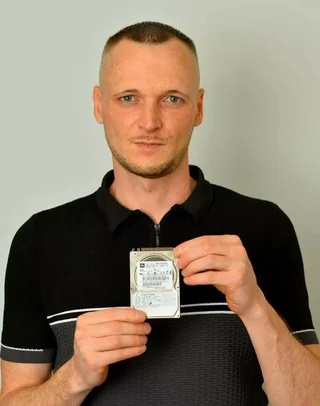

Spiny Norman said:
After over a decade, James Howells has finally given up his search for the hard drive he accidentally threw away in 2013 that held 8,000 Bitcoin, now worth $950 million.. By 2030, it could be valued at $8 billion.

Or it could be valued at $0 billion.
Close-up magicians are rather amazing.
Spiny Norman said:
Japan’s Yoroi Reactor Ushers In a New Era of Micro-Nuclear Power.Key Takeaways:
Japan has deployed the Yoroi Reactor, a sealed, shipping container-sized microreactor, in remote communities.
Designed for disaster resilience and clean energy access, the Yoroi runs for ten years without refueling or onsite staff.
Using molten salt cooling and low-enriched uranium, the reactor features passive safety systems and no meltdown risk.
Two units are already operational in Hokkaido, displacing diesel generators and providing zero-emission power.
Japan aims to install 50 more Yoroi Reactors nationwide by 2030 as part of its energy transformation strategy.
Hmmm. Maybe, maybe not. And maybe AI strikes again-
https://www.aap.com.au/factcheck/facebook-users-in-meltdown-over-false-japanese-nuclear-reactors-claim/
snip
there is no evidence that these reactors exist.
The earliest social media post8 that AAP FactCheck could find is from July 7, 2025, by a Facebook page that publishes unlikely science and technology news.
Posts by the page lacked credible sources or verifiable details and were accompanied by what appear to be AI-generated images.
An internet search of keywords about the alleged reactors revealed that a similar version of the text was published by a technology blog9 on July 11.
The article stated Japan’s Ministry of Economy, Trade and Industry10 (METI) had publicly announced its intention to scale deployment and install 50 Yoroi units across the country by 2030.
However, a disclaimer at the end of the article states: “Portions of this article may have been developed with the assistance of artificial intelligence”.
METI spokeswoman Mari Seki told AAP FactCheck the ministry was not aware of any information regarding the supposed reactors.
NIFS spokesperson Kazuya Takahata said the claim was entirely inaccurate.
“I would like to clarify that NIFS is not involved in any research, development, or operation related to the so-called ‘YOROI Reactor’,” he told AAP FactCheck.
snip
ruby said:
Spiny Norman said:
Japan’s Yoroi Reactor Ushers In a New Era of Micro-Nuclear Power.Key Takeaways:
Japan has deployed the Yoroi Reactor, a sealed, shipping container-sized microreactor, in remote communities.
Designed for disaster resilience and clean energy access, the Yoroi runs for ten years without refueling or onsite staff.
Using molten salt cooling and low-enriched uranium, the reactor features passive safety systems and no meltdown risk.
Two units are already operational in Hokkaido, displacing diesel generators and providing zero-emission power.
Japan aims to install 50 more Yoroi Reactors nationwide by 2030 as part of its energy transformation strategy.
Hmmm. Maybe, maybe not. And maybe AI strikes again-
https://www.aap.com.au/factcheck/facebook-users-in-meltdown-over-false-japanese-nuclear-reactors-claim/
snip
there is no evidence that these reactors exist.The earliest social media post8 that AAP FactCheck could find is from July 7, 2025, by a Facebook page that publishes unlikely science and technology news.
Posts by the page lacked credible sources or verifiable details and were accompanied by what appear to be AI-generated images.An internet search of keywords about the alleged reactors revealed that a similar version of the text was published by a technology blog9 on July 11.
The article stated Japan’s Ministry of Economy, Trade and Industry10 (METI) had publicly announced its intention to scale deployment and install 50 Yoroi units across the country by 2030.
However, a disclaimer at the end of the article states: “Portions of this article may have been developed with the assistance of artificial intelligence”.
METI spokeswoman Mari Seki told AAP FactCheck the ministry was not aware of any information regarding the supposed reactors.
NIFS spokesperson Kazuya Takahata said the claim was entirely inaccurate.
“I would like to clarify that NIFS is not involved in any research, development, or operation related to the so-called ‘YOROI Reactor’,” he told AAP FactCheck.
snip
Good find, thanks.
Spiny Norman said:
Close-up magicians are rather amazing.
He’s fantastic. There’s also another one who’s terrific. He has an Asian-looking face. I forget his name.
ruby said:
Spiny Norman said:
Japan’s Yoroi Reactor Ushers In a New Era of Micro-Nuclear Power.Key Takeaways:
Japan has deployed the Yoroi Reactor, a sealed, shipping container-sized microreactor, in remote communities.
Designed for disaster resilience and clean energy access, the Yoroi runs for ten years without refueling or onsite staff.
Using molten salt cooling and low-enriched uranium, the reactor features passive safety systems and no meltdown risk.
Two units are already operational in Hokkaido, displacing diesel generators and providing zero-emission power.
Japan aims to install 50 more Yoroi Reactors nationwide by 2030 as part of its energy transformation strategy.
Hmmm. Maybe, maybe not. And maybe AI strikes again-
https://www.aap.com.au/factcheck/facebook-users-in-meltdown-over-false-japanese-nuclear-reactors-claim/
snip
there is no evidence that these reactors exist.The earliest social media post8 that AAP FactCheck could find is from July 7, 2025, by a Facebook page that publishes unlikely science and technology news.
Posts by the page lacked credible sources or verifiable details and were accompanied by what appear to be AI-generated images.An internet search of keywords about the alleged reactors revealed that a similar version of the text was published by a technology blog9 on July 11.
The article stated Japan’s Ministry of Economy, Trade and Industry10 (METI) had publicly announced its intention to scale deployment and install 50 Yoroi units across the country by 2030.
However, a disclaimer at the end of the article states: “Portions of this article may have been developed with the assistance of artificial intelligence”.
METI spokeswoman Mari Seki told AAP FactCheck the ministry was not aware of any information regarding the supposed reactors.
NIFS spokesperson Kazuya Takahata said the claim was entirely inaccurate.
“I would like to clarify that NIFS is not involved in any research, development, or operation related to the so-called ‘YOROI Reactor’,” he told AAP FactCheck.
snip
Well done.
:)
Spiny Norman said:
ruby said:
Spiny Norman said:
Japan’s Yoroi Reactor Ushers In a New Era of Micro-Nuclear Power.Key Takeaways:
Japan has deployed the Yoroi Reactor, a sealed, shipping container-sized microreactor, in remote communities.
Designed for disaster resilience and clean energy access, the Yoroi runs for ten years without refueling or onsite staff.
Using molten salt cooling and low-enriched uranium, the reactor features passive safety systems and no meltdown risk.
Two units are already operational in Hokkaido, displacing diesel generators and providing zero-emission power.
Japan aims to install 50 more Yoroi Reactors nationwide by 2030 as part of its energy transformation strategy.
Hmmm. Maybe, maybe not. And maybe AI strikes again-
https://www.aap.com.au/factcheck/facebook-users-in-meltdown-over-false-japanese-nuclear-reactors-claim/
snip
there is no evidence that these reactors exist.The earliest social media post8 that AAP FactCheck could find is from July 7, 2025, by a Facebook page that publishes unlikely science and technology news.
Posts by the page lacked credible sources or verifiable details and were accompanied by what appear to be AI-generated images.An internet search of keywords about the alleged reactors revealed that a similar version of the text was published by a technology blog9 on July 11.
The article stated Japan’s Ministry of Economy, Trade and Industry10 (METI) had publicly announced its intention to scale deployment and install 50 Yoroi units across the country by 2030.
However, a disclaimer at the end of the article states: “Portions of this article may have been developed with the assistance of artificial intelligence”.
METI spokeswoman Mari Seki told AAP FactCheck the ministry was not aware of any information regarding the supposed reactors.
NIFS spokesperson Kazuya Takahata said the claim was entirely inaccurate.
“I would like to clarify that NIFS is not involved in any research, development, or operation related to the so-called ‘YOROI Reactor’,” he told AAP FactCheck.
snip
Good find, thanks.
I had hoped to find that it was a good development.
Quite apt in light of this morning’s AI discussion to find this may be another AI misleading dream.
makes grrr noise at all the investors that have to make AI pay out for them
The Rev Dodgson said:
Spiny Norman said:
After over a decade, James Howells has finally given up his search for the hard drive he accidentally threw away in 2013 that held 8,000 Bitcoin, now worth $950 million.. By 2030, it could be valued at $8 billion.

Or it could be valued at $0 billion.
The drive would likely be not working and who knows if the data would be recoverable.
Cymek said:
The Rev Dodgson said:
Spiny Norman said:
After over a decade, James Howells has finally given up his search for the hard drive he accidentally threw away in 2013 that held 8,000 Bitcoin, now worth $950 million.. By 2030, it could be valued at $8 billion.

Or it could be valued at $0 billion.
The drive would likely be not working and who knows if the data would be recoverable.
It quite likely would be. Some data retrieval companies are able to still get data off drives that have literally been cut in half.
Spiny Norman said:
Cymek said:
The Rev Dodgson said:Or it could be valued at $0 billion.
The drive would likely be not working and who knows if the data would be recoverable.
It quite likely would be. Some data retrieval companies are able to still get data off drives that have literally been cut in half.
I was wondering if the data would also be corrupt due to heat and whatever else its subjected to.
Cymek said:
Spiny Norman said:
Cymek said:The drive would likely be not working and who knows if the data would be recoverable.
It quite likely would be. Some data retrieval companies are able to still get data off drives that have literally been cut in half.
I was wondering if the data would also be corrupt due to heat and whatever else its subjected to.
Just make sure you stick it to the fridge with a strong magnet so you don’t lose the drive again.
The Shipping Container That Might Replace Solar Farms.
Exowatt is betting big on forgotten technologies from the 1800s: Fresnel lenses, thermal brick batteries, and Stirling engines, all packed inside a sleek orange shipping container. Their system promises 24/7 dispatchable power at a fraction of the cost of traditional solar and batteries—and it’s already being deployed.
Spiny Norman said:
The Shipping Container That Might Replace Solar Farms.Exowatt is betting big on forgotten technologies from the 1800s: Fresnel lenses, thermal brick batteries, and Stirling engines, all packed inside a sleek orange shipping container. Their system promises 24/7 dispatchable power at a fraction of the cost of traditional solar and batteries—and it’s already being deployed.
We’ll see.
My guess is the fraction of the cost would be something like 33/11.
Bizarre Reason Why US Air Force Entirely Dismantles U-2 Spy Plane After Secret Missions.
How an NSA Spyhub Works.
What’s Hidden Inside the NSA Spy Hub in Manhattan? 33 Thomas Street, New York.
Israel Built Secret Nukes, Here’s How.
On September 22, 1979, a U.S. satellite detected something terrifying: a mysterious double flash over the South Atlantic, the unmistakable signature of a nuclear explosion. But nuclear tests were banned.
This documentary investigates the long-silenced behind the secretive development of Israel’s nuclear arsenal. From stolen uranium and covert weapons deals, to U.S. complicity and the unspoken threat of the “Samson Option,” and how Israel evaded every international law designed to prevent nuclear proliferation .
While Iran is vilified for a bomb it doesn’t have, Israel is armed, unaccountable, and untouchable.
This is the story of how Israel got the bomb and how the world let it happen.
https://www.youtube.com/watch?v=Y5xOMO6-9dI
The video reckons they have between 90 – 200 bombs.
https://www.esquiremag.ph/life/sex-and-relationships/semen-natural-antidepressant-for-women-a7994-20250806-lfrm
China’s Humanoid Robots Cross the Line! Summer 2025’s Top 20+ Craziest Chinese AI Robots.
China’s humanoid robot scene is exploding. From pint-sized short kings to four-armed industrial monsters, dozens of next-gen fake humans have dropped this summer alone. Some swap their own batteries. Others rock out on stage, serve drinks, or mop your floor. And they’re all scaling fast.
In this video, we break down the wild pace of China’s humanoid revolution, covering everything from Unitree’s $5,900 R1 to UBTECH’s Walker S2 and Sagebot’s full 360° reach. New startups. New models. New capabilities. And a government-level push to lead the global humanoid race by 2025.
I Replaced Myself With AI For An Entire Year And Nobody Noticed.
Spiny Norman said:
China’s Humanoid Robots Cross the Line! Summer 2025’s Top 20+ Craziest Chinese AI Robots.China’s humanoid robot scene is exploding. From pint-sized short kings to four-armed industrial monsters, dozens of next-gen fake humans have dropped this summer alone. Some swap their own batteries. Others rock out on stage, serve drinks, or mop your floor. And they’re all scaling fast.
In this video, we break down the wild pace of China’s humanoid revolution, covering everything from Unitree’s $5,900 R1 to UBTECH’s Walker S2 and Sagebot’s full 360° reach. New startups. New models. New capabilities. And a government-level push to lead the global humanoid race by 2025.
AI Just Started Designing Better AI Models: Why This Changes Everything.
We’ve just witnessed AI’s “AlphaGo moment” – but instead of beating humans at games, AI has begun autonomously designing superior AI systems that surpass anything human researchers have created. This breakthrough system called ASI-ARC removes the ultimate bottleneck in AI development: human cognitive limitations.
In its first test, it autonomously conducted 1,773 experiments and produced 106 entirely new AI architectures that outperform human baselines – discoveries that would have taken researchers months or years.
We’re entering an era where AI systems become their own architects, evolving beyond human capability at the speed of computation. This is the inflection point where AI transcends its creators and reshapes intelligence itself.
Very small earthquakes described.
How a Sandwich Ruined a $100 Million Heist.
This is the Antwerp’s Diamond Heist. A robbery so sophisticated, It landed a spot on the Guinness World Record as the heist of the century!
Spiny Norman said:
Very small earthquakes described.
Noice!
:)
Pembleton T24
AI Overview
Pembleton T24 review: Brit-built 361kg joy machine driven …
The Pembleton T24 starts at £39,594. This price positions it as a comparable cost to a decent MG TA, but notably less than a new Morgan. The T24 is a modern car with a vintage aesthetic, emphasizing a pre-war experience with modern reliability.
Pembleton T24: The Steampunk Caterham for The Discerning Gentleman (or Lady)
The True Story of GENERAL MOTORS – Genius, Rivalry, Innovation and The ONE MAN WHO CHANGED THE WORLD
This Battery Was Almost Too Dangerous to Exist.
For decades, a high-energy rechargeable battery seemed impossible – until we managed to tame one of the most volatile metals.
A large crab moulting.
https://www.reddit.com/r/interestingasfuck/comments/1mlx0no/a_large_crab_molting
Spiny Norman said:
A large crab moulting.https://www.reddit.com/r/interestingasfuck/comments/1mlx0no/a_large_crab_molting
The comments are funny.
FWIW, that’s a female crab; the wide tail is where the crab stores her eggs until they hatch. Here’s one with the tail pulled back a little:
https://media.sciencephoto.com/image/z2300164/800wm/Z2300164-River_crab_and_eggs.jpg

A Cybertruck, stuck on the highway unable to move due to some kind of software update failing, so it’s immobilised the car immediately.
Good work, Tesla.
https://www.reddit.com/r/CyberStuck/comments/1mmbq9w/lets_go_ahead_and_deactivate_here_looks_like_a
The outer ear flaps, also known as the pinna or auricle, are not just for show; they play a crucial role in hearing. They act as a funnel, collecting and amplifying sound waves before directing them into the ear canal. This process helps us locate the source of sounds and enhances our ability to hear a wider range of frequencies.
https://www.reddit.com/r/STEW_ScTecEngWorld/comments/1mmsjct/why_are_ears_shaped_the_way_they_are
Spiny Norman said:
The outer ear flaps, also known as the pinna or auricle, are not just for show; they play a crucial role in hearing. They act as a funnel, collecting and amplifying sound waves before directing them into the ear canal. This process helps us locate the source of sounds and enhances our ability to hear a wider range of frequencies.https://www.reddit.com/r/STEW_ScTecEngWorld/comments/1mmsjct/why_are_ears_shaped_the_way_they_are
Cupping the hand behind them also aids hearing like a funnel or an ear trumpet.
Spiny Norman said:
A Cybertruck, stuck on the highway unable to move due to some kind of software update failing, so it’s immobilised the car immediately.
Good work, Tesla.https://www.reddit.com/r/CyberStuck/comments/1mmbq9w/lets_go_ahead_and_deactivate_here_looks_like_a
Glitches glitches.

A 36 Billion Solar Mass Black Hole At The Center of a Luminous Red Galaxy With Einstein Ring.
Spiny Norman said:

A 36 Billion Solar Mass Black Hole At The Center of a Luminous Red Galaxy With Einstein Ring.
Impressive.
A longer video of the 2 Chinese vessel colliding with each other after the PCG outmanoeuvred both of them. The damage of the Chinese Coast Guard is clearly seen right before the end of the video.
Spiny Norman said:
A longer video of the 2 Chinese vessel colliding with each other after the PCG outmanoeuvred both of them. The damage of the Chinese Coast Guard is clearly seen right before the end of the video.
LOL
Bogsnorkler said:
A 17-year-old high school student in Dayton, Ohio, has been fined and placed under house arrest after authorities discovered he had hacked into the city’s outdated traffic control system and quietly fixed the timing of several major intersections.
Kameron Price, a self-taught coder and robotics club member, reportedly used a Raspberry Pi and a decommissioned school-issued Chromebook to gain access to the municipal traffic grid. Over the course of several weeks, he rewrote the timing logic for at least five major lights along West 3rd Street—drastically reducing backups during rush hour and syncing green lights to reduce stop-and-go congestion.
“He didn’t disable anything or cause danger,” said a traffic engineer speaking on condition of anonymity. “Honestly, his code was more efficient than what we were using.”
But city officials said the changes violated multiple laws, including unauthorized access to a government system and interference with public infrastructure. Kameron was cited under a local ordinance pertaining to unauthorized modification of municipal services—a misdemeanor typically reserved for utility tampering.
According to Kameron’s parents, he initially took it on as a side project after watching his bus get stuck at the same broken intersection every morning for weeks. “It would take longer to go three blocks than it did to get across town,” his mom explained. “He got tired of watching everyone waste gas and time just sitting there.”
Public reaction has been overwhelmingly in Kameron’s favor. A video of the intersection running smoother than it has in years has gone viral, and a local radio host dubbed him the Subway Surfer of traffic flow. Online petitions calling for the fine to be dropped have already surpassed 50,000 signatures.
“Honestly, give the kid a job,” one commenter wrote. “He’s doing more for this city than whoever programmed those lights in 1998.”
yes, he should be arrested because actually he is harming important entities, namely the oil industry
SCIENCE said:
Bogsnorkler said:
A 17-year-old high school student in Dayton, Ohio, has been fined and placed under house arrest after authorities discovered he had hacked into the city’s outdated traffic control system and quietly fixed the timing of several major intersections.
Kameron Price, a self-taught coder and robotics club member, reportedly used a Raspberry Pi and a decommissioned school-issued Chromebook to gain access to the municipal traffic grid. Over the course of several weeks, he rewrote the timing logic for at least five major lights along West 3rd Street—drastically reducing backups during rush hour and syncing green lights to reduce stop-and-go congestion.
“He didn’t disable anything or cause danger,” said a traffic engineer speaking on condition of anonymity. “Honestly, his code was more efficient than what we were using.”
But city officials said the changes violated multiple laws, including unauthorized access to a government system and interference with public infrastructure. Kameron was cited under a local ordinance pertaining to unauthorized modification of municipal services—a misdemeanor typically reserved for utility tampering.
According to Kameron’s parents, he initially took it on as a side project after watching his bus get stuck at the same broken intersection every morning for weeks. “It would take longer to go three blocks than it did to get across town,” his mom explained. “He got tired of watching everyone waste gas and time just sitting there.”
Public reaction has been overwhelmingly in Kameron’s favor. A video of the intersection running smoother than it has in years has gone viral, and a local radio host dubbed him the Subway Surfer of traffic flow. Online petitions calling for the fine to be dropped have already surpassed 50,000 signatures.
“Honestly, give the kid a job,” one commenter wrote. “He’s doing more for this city than whoever programmed those lights in 1998.”
yes, he should be arrested because actually he is harming important entities, namely the oil industry
apparently it isn’t true.
ChrispenEvan said:
SCIENCE said:Bogsnorkler said:
A 17-year-old high school student in Dayton, Ohio, has been fined and placed under house arrest after authorities discovered he had hacked into the city’s outdated traffic control system and quietly fixed the timing of several major intersections.
Kameron Price, a self-taught coder and robotics club member, reportedly used a Raspberry Pi and a decommissioned school-issued Chromebook to gain access to the municipal traffic grid. Over the course of several weeks, he rewrote the timing logic for at least five major lights along West 3rd Street—drastically reducing backups during rush hour and syncing green lights to reduce stop-and-go congestion.
“He didn’t disable anything or cause danger,” said a traffic engineer speaking on condition of anonymity. “Honestly, his code was more efficient than what we were using.”
But city officials said the changes violated multiple laws, including unauthorized access to a government system and interference with public infrastructure. Kameron was cited under a local ordinance pertaining to unauthorized modification of municipal services—a misdemeanor typically reserved for utility tampering.
According to Kameron’s parents, he initially took it on as a side project after watching his bus get stuck at the same broken intersection every morning for weeks. “It would take longer to go three blocks than it did to get across town,” his mom explained. “He got tired of watching everyone waste gas and time just sitting there.”
Public reaction has been overwhelmingly in Kameron’s favor. A video of the intersection running smoother than it has in years has gone viral, and a local radio host dubbed him the Subway Surfer of traffic flow. Online petitions calling for the fine to be dropped have already surpassed 50,000 signatures.
“Honestly, give the kid a job,” one commenter wrote. “He’s doing more for this city than whoever programmed those lights in 1998.”
yes, he should be arrested because actually he is harming important entities, namely the oil industry
apparently it isn’t true.
https://www.snopes.com/fact-check/dayton-ohio-traffic-lights-hacked/
ChrispenEvan said:
ChrispenEvan said:
SCIENCE said:yes, he should be arrested because actually he is harming important entities, namely the oil industry
apparently it isn’t true.
https://www.snopes.com/fact-check/dayton-ohio-traffic-lights-hacked/
Made up “news” on the Internet?
Shock-horror.
The Rev Dodgson said:
ChrispenEvan said:
ChrispenEvan said:apparently it isn’t true.
https://www.snopes.com/fact-check/dayton-ohio-traffic-lights-hacked/
Made up “news” on the Internet?
Shock-horror.
getting as bad as fiction books!!!
A USMC TAV-8B Harrier from VMAT-203 suffered a landing gear malfunction
when trying to return to MCAS Cherry Point. The Marine aviator realizing his
gear failed to extend naturally referred to SOP that dictated activating the
backup safety nitrogen bottle to blow the gear down.
Unfortunately for the pilot and plane, when communicating the issue over the
radio, a higher-ranking officer ordered him not to follow standard operating
procedures and instead had a stack of strapped mattresses placed in the
centre of the runway.
Much to the surprise of the Officer who devised the imaginative contingency
plan…when the 23,000lb fighter jet blowing down over 20,000 pounds of
vectored thrust from its Pegasus engines settled down on its bed, the landing
mattresses immediately responded with an un-contained self-executed rapid
kinetic disassembly exploding in a shower of metal springs, fabric and coils
that were quickly ingested through the spinning blades of the jet engine.
Although the aircraft was extensively damaged, the pilot was able to climb
out of bed without injury.
When ground crews jacked up the Harrier Jump Jet, they we able to blow the
gear down with no problems. This is when the story takes an even stranger turn.
Once the jet was placed in the hangar, relatively undamaged structurally speaking,
an EZ-go golf cart came flying into the hangar and smashed directly into the jet,
causing some D-level repair damage. It turns out that the cart operator was huffing
keyboard cleaner shortly before making his parts run in the EZ-go. He got dizzy,
lost consciousness and the cart, now driverless, turned directly into the hangar at
full speed through a gap in the hangar doors and smashed into the parked Jump Jet.

ChrispenEvan said:
The Rev Dodgson said:
ChrispenEvan said:
ChrispenEvan said:
SCIENCE said:
Bogsnorkler said:
A 17-year-old high school student in Dayton, Ohio, has been fined and placed under house arrest after authorities discovered he had hacked into the city’s outdated traffic control system and quietly fixed the timing of several major intersections.
Kameron Price, a self-taught coder and robotics club member, reportedly used a Raspberry Pi and a decommissioned school-issued Chromebook to gain access to the municipal traffic grid. Over the course of several weeks, he rewrote the timing logic for at least five major lights along West 3rd Street—drastically reducing backups during rush hour and syncing green lights to reduce stop-and-go congestion.
“He didn’t disable anything or cause danger,” said a traffic engineer speaking on condition of anonymity. “Honestly, his code was more efficient than what we were using.”
But city officials said the changes violated multiple laws, including unauthorized access to a government system and interference with public infrastructure. Kameron was cited under a local ordinance pertaining to unauthorized modification of municipal services—a misdemeanor typically reserved for utility tampering.
According to Kameron’s parents, he initially took it on as a side project after watching his bus get stuck at the same broken intersection every morning for weeks. “It would take longer to go three blocks than it did to get across town,” his mom explained. “He got tired of watching everyone waste gas and time just sitting there.”
Public reaction has been overwhelmingly in Kameron’s favor. A video of the intersection running smoother than it has in years has gone viral, and a local radio host dubbed him the Subway Surfer of traffic flow. Online petitions calling for the fine to be dropped have already surpassed 50,000 signatures.
“Honestly, give the kid a job,” one commenter wrote. “He’s doing more for this city than whoever programmed those lights in 1998.”
yes, he should be arrested because actually he is harming important entities, namely the oil industry
apparently it isn’t true.
https://www.snopes.com/fact-check/dayton-ohio-traffic-lights-hacked/
Made up “news” on the Internet?
Shock-horror.
getting as bad as fiction books!!!
irrelevant as the truth value of the parable does not negate the conclusion of the judgement namely that altering traffic flows does indeed “disable anything or cause danger” as it disables fossil fuel industry from leveraging ever greater profits and it endangers their corporate dominance
The True Story of the Family That Forgot How to Sleep.
In the 1980s, one Italian family began losing the ability to sleep – not from insomnia, but from a rare and fatal genetic mutation – Fatal Familial Insomnia.
Spiny Norman said:
The True Story of the Family That Forgot How to Sleep.In the 1980s, one Italian family began losing the ability to sleep – not from insomnia, but from a rare and fatal genetic mutation – Fatal Familial Insomnia.
I read about that before
Apparently sedatives and the like don’t work and you end up wigging out and going insane.
Cymek said:
Spiny Norman said:
The True Story of the Family That Forgot How to Sleep.In the 1980s, one Italian family began losing the ability to sleep – not from insomnia, but from a rare and fatal genetic mutation – Fatal Familial Insomnia.
I read about that before
Apparently sedatives and the like don’t work and you end up wigging out and going insane.
I knew a woman who didn’t sleep; she had three full-time jobs, was married (I don’t know when or how she saw her husband), and wasn’t able to sleep. I know nothing about her family, but it sounds like she could have had that. She died when she was 25.
Cymek said:
Spiny Norman said:
The True Story of the Family That Forgot How to Sleep.In the 1980s, one Italian family began losing the ability to sleep – not from insomnia, but from a rare and fatal genetic mutation – Fatal Familial Insomnia.
I read about that before
Apparently sedatives and the like don’t work and you end up wigging out and going insane.
The longest that i’ve gone without sleep was three days. It was a reasonably active and stressful three days.
I was good few hours into the fourth day before i had a chance to sleep. By that time, i was barely functioning, unable to concentrate at all, definitely hearing things, and, i believe, very much on the verge of seeing things. When i went to sleep, i slept for almost eighteen hours, and felt weary and disoriented for a few days afterwards.
I think that another day, and certainly two more days, of sleeplessness would have finished me.
captain_spalding said:
Cymek said:
Spiny Norman said:
The True Story of the Family That Forgot How to Sleep.In the 1980s, one Italian family began losing the ability to sleep – not from insomnia, but from a rare and fatal genetic mutation – Fatal Familial Insomnia.
I read about that before
Apparently sedatives and the like don’t work and you end up wigging out and going insane.
The longest that i’ve gone without sleep was three days. It was a reasonably active and stressful three days.
I was good few hours into the fourth day before i had a chance to sleep. By that time, i was barely functioning, unable to concentrate at all, definitely hearing things, and, i believe, very much on the verge of seeing things. When i went to sleep, i slept for almost eighteen hours, and felt weary and disoriented for a few days afterwards.
I think that another day, and certainly two more days, of sleeplessness would have finished me.
Only about 40 hours for me, and I was starting to see things. I remember standing in the big freight building, and on the steel walls there were large cross-braces. One of those was in the corner of my eye when I was talking to someone and it suddenly changed into a five metre high spider on the wall.
I momentarily freaked out, then settled and decided I should probably go to bed.
A New Type of Levitation.
https://www.youtube.com/shorts/rAT44j3dvkU
I’m not sure how old this video is, so it might be written-up better by now.
Still, it’s an interesting effect.
Spiny Norman said:
A New Type of Levitation.https://www.youtube.com/shorts/rAT44j3dvkU
I’m not sure how old this video is, so it might be written-up better by now.
Still, it’s an interesting effect.
It is cool. Thanks.
Spiny Norman said:
captain_spalding said:
Cymek said:I read about that before
Apparently sedatives and the like don’t work and you end up wigging out and going insane.
The longest that i’ve gone without sleep was three days. It was a reasonably active and stressful three days.
I was good few hours into the fourth day before i had a chance to sleep. By that time, i was barely functioning, unable to concentrate at all, definitely hearing things, and, i believe, very much on the verge of seeing things. When i went to sleep, i slept for almost eighteen hours, and felt weary and disoriented for a few days afterwards.
I think that another day, and certainly two more days, of sleeplessness would have finished me.
Only about 40 hours for me, and I was starting to see things. I remember standing in the big freight building, and on the steel walls there were large cross-braces. One of those was in the corner of my eye when I was talking to someone and it suddenly changed into a five metre high spider on the wall.
I momentarily freaked out, then settled and decided I should probably go to bed.
I’ve been at a few fires where there was no-one available to take over control, and by 36 hours I was hallucinating.
Sleep deprivation is bad for people, and it’s a good topic for a science forum, if anyone knows where we could find one.
Kingy said:
Sleep deprivation is bad for people, and it’s a good topic for a science forum, if anyone knows where we could find one.
Sleep deprivation is a ‘popular’ form of torture, as it involves no beatings or similar physical harm to the subject, and just about guaranteed to be effective.
If you have four or five days to spare, then your subject is pretty much guaranteed to crack, and to tell you anything and everything that you want to know.
If you have longer, you can be even more gradual about it. I know of one chap who was detained in an east European prison, back in the bad ol’ days, and the rules were no sleeping during the day, hands had to be visible above the blankets at all times during the night, and the light was on 24 hours a day.
He said that he never ‘cracked’ because the pinkish cement render on the walls of his cell included myriads of little black squiggles in it , and he’d sit and stare at the walls for hours each day, imagining what various squiggles might each represent, and he’d construct elaborate stories about them in his mind.
But, for many years afterwards, he’d wake up in the middle of the night, and find his hands clasped in front of him, above the blankets.
captain_spalding said:
Kingy said:
Sleep deprivation is bad for people, and it’s a good topic for a science forum, if anyone knows where we could find one.
Sleep deprivation is a ‘popular’ form of torture, as it involves no beatings or similar physical harm to the subject, and just about guaranteed to be effective.
If you have four or five days to spare, then your subject is pretty much guaranteed to crack, and to tell you anything and everything that you want to know.
If you have longer, you can be even more gradual about it. I know of one chap who was detained in an east European prison, back in the bad ol’ days, and the rules were no sleeping during the day, hands had to be visible above the blankets at all times during the night, and the light was on 24 hours a day.
He said that he never ‘cracked’ because the pinkish cement render on the walls of his cell included myriads of little black squiggles in it , and he’d sit and stare at the walls for hours each day, imagining what various squiggles might each represent, and he’d construct elaborate stories about them in his mind.
But, for many years afterwards, he’d wake up in the middle of the night, and find his hands clasped in front of him, above the blankets.
is that what guaranteed means though
SCIENCE said:
captain_spalding said:
Kingy said:
Sleep deprivation is bad for people, and it’s a good topic for a science forum, if anyone knows where we could find one.
Sleep deprivation is a ‘popular’ form of torture, as it involves no beatings or similar physical harm to the subject, and just about guaranteed to be effective.
If you have four or five days to spare, then your subject is pretty much guaranteed to crack, and to tell you anything and everything that you want to know.
If you have longer, you can be even more gradual about it. I know of one chap who was detained in an east European prison, back in the bad ol’ days, and the rules were no sleeping during the day, hands had to be visible above the blankets at all times during the night, and the light was on 24 hours a day.
He said that he never ‘cracked’ because the pinkish cement render on the walls of his cell included myriads of little black squiggles in it , and he’d sit and stare at the walls for hours each day, imagining what various squiggles might each represent, and he’d construct elaborate stories about them in his mind.
But, for many years afterwards, he’d wake up in the middle of the night, and find his hands clasped in front of him, above the blankets.
is that what guaranteed means though
The short and intensive programme of total sleep deprivation is just about guaranteed to work. Some people give in a bit sooner, some a trifle later, but they all give in. Or they die. One or the other.
The longer programme is more about sensory disorientation and deprivation. Nights and days can be made as long or as short as the ‘gaolkeepers’ decide, sometimes longer, sometimes shorter. No sleep during the ‘day’, rules about sleep in the ‘night’. Meals come at longer or shorter intervals. Regular ‘outings’ to doctors, interrogation, exercise, showers etc. can occur more frequently, or less frequently.
The longer programme is better for when you want the subject to become more receptive to the ideas and attitudes that you wish to implant in his or her mind.
captain_spalding said:
SCIENCE said:captain_spalding said:
Sleep deprivation is a ‘popular’ form of torture, as it involves no beatings or similar physical harm to the subject, and just about guaranteed to be effective.
If you have four or five days to spare, then your subject is pretty much guaranteed to crack, and to tell you anything and everything that you want to know.
If you have longer, you can be even more gradual about it. I know of one chap who was detained in an east European prison, back in the bad ol’ days, and the rules were no sleeping during the day, hands had to be visible above the blankets at all times during the night, and the light was on 24 hours a day.
He said that he never ‘cracked’ because the pinkish cement render on the walls of his cell included myriads of little black squiggles in it , and he’d sit and stare at the walls for hours each day, imagining what various squiggles might each represent, and he’d construct elaborate stories about them in his mind.
But, for many years afterwards, he’d wake up in the middle of the night, and find his hands clasped in front of him, above the blankets.
is that what guaranteed means though
The short and intensive programme of total sleep deprivation is just about guaranteed to work. Some people give in a bit sooner, some a trifle later, but they all give in. Or they die. One or the other.
The longer programme is more about sensory disorientation and deprivation. Nights and days can be made as long or as short as the ‘gaolkeepers’ decide, sometimes longer, sometimes shorter. No sleep during the ‘day’, rules about sleep in the ‘night’. Meals come at longer or shorter intervals. Regular ‘outings’ to doctors, interrogation, exercise, showers etc. can occur more frequently, or less frequently.
The longer programme is better for when you want the subject to become more receptive to the ideas and attitudes that you wish to implant in his or her mind.
Ah, yes. The good cop, bad cop routine.
Everyone cracks in the end because some “people” have discovered how to break other peoples spirit.
Those “people” deserve to die horribly.
The lightning fast reflexes of an F1 driver.
In 1910, the 6 most powerful men in America vanished.
They boarded a private train using fake names & disappeared to a remote island.
What they created in total secrecy now controls $30.5 trillion in U.S. money.
Here’s what happened in that secret meeting held on Jekyll Island:
Between 1800 & 1910, America’s banking system was broken:
• The U.S. had no central authority over currency
• Over 30,000 types of banknotes were in circulation
• Banks failed regularly (major panics in 1873, 1893, 1907)
• No lender of last resort meant a single rumor could cause a bank run
Wall Street was vulnerable. The public had lost trust.
A system reboot was needed.
A “duck hunting trip” was planned.
In November 1910, Senator Nelson Aldrich, head of the National Monetary Commission, arranged a meeting.
But it wasn’t in Washington.
It was on Jekyll Island, Georgia, owned by J.P. Morgan and other elites.
Aldrich gathered 5 men. All boarded a private train using fake names.
https://x.com/jgreyfriend/status/1955256758512881863
The US Federal Reserve Act.
Train and boat…?
Spiny Norman said:
In 1910, the 6 most powerful men in America vanished.They boarded a private train using fake names & disappeared to a remote island.
What they created in total secrecy now controls $30.5 trillion in U.S. money.
Here’s what happened in that secret meeting held on Jekyll Island:
Between 1800 & 1910, America’s banking system was broken:
• The U.S. had no central authority over currency
• Over 30,000 types of banknotes were in circulation
• Banks failed regularly (major panics in 1873, 1893, 1907)
• No lender of last resort meant a single rumor could cause a bank runWall Street was vulnerable. The public had lost trust.
A system reboot was needed.A “duck hunting trip” was planned.
In November 1910, Senator Nelson Aldrich, head of the National Monetary Commission, arranged a meeting.
But it wasn’t in Washington.
It was on Jekyll Island, Georgia, owned by J.P. Morgan and other elites.Aldrich gathered 5 men. All boarded a private train using fake names.
https://x.com/jgreyfriend/status/1955256758512881863
The US Federal Reserve Act.
Likely hydeing somewhere
Sorry I didn’t post enough additional information to flesh out what it was all about.
It was the creation of the US Federal Reserve, and why it happened.
“Between 1800 & 1910, America’s banking system was broken”
Didn’t a certain President allude to this period as the one he was wanting to take America back to…?
Neophyte said:
“Between 1800 & 1910, America’s banking system was broken”Didn’t a certain President allude to this period as the one he was wanting to take America back to…?
The good old days were you could invade another nation with impunity and righteous indignation.
No one would say boo as its was fighting them dirty commies and the local “insert insult” population better damn appreciate it.
Cymek said:
Neophyte said:
“Between 1800 & 1910, America’s banking system was broken”Didn’t a certain President allude to this period as the one he was wanting to take America back to…?
The good old days were you could invade another nation with impunity and righteous indignation.
No one would say boo as its was fighting them dirty commies and the local “insert insult” population better damn appreciate it.
The pommies took over any chunk of land they could poke a flagppole in.

Beautifully patched. It must have had a crack or corrosion there.
Spiny Norman said:

Beautifully patched. It must have had a crack or corrosion there.
So would that have to be custom-made, or a standard shape?
Bubblecar said:
Spiny Norman said:

Beautifully patched. It must have had a crack or corrosion there.
So would that have to be custom-made, or a standard shape?
custom.
Bubblecar said:
Spiny Norman said:

Beautifully patched. It must have had a crack or corrosion there.
So would that have to be custom-made, or a standard shape?
99% sure it’d be custom. So that would have to be milled from a larger solid billet of alloy.
An android robot picking up, folding, then placing the folded sheets into a basket.
Quite remarkable.
Spiny Norman said:
An android robot picking up, folding, then placing the folded sheets into a basket.
Quite remarkable.
give it a fitted sheet!!!
ChrispenEvan said:
Spiny Norman said:
An android robot picking up, folding, then placing the folded sheets into a basket.
Quite remarkable.give it a fitted sheet!!!
They stil have corners.
roughbarked said:
ChrispenEvan said:
Spiny Norman said:
An android robot picking up, folding, then placing the folded sheets into a basket.
Quite remarkable.give it a fitted sheet!!!
They stil have corners.
I just want to see the robot emit the blue smoke!
ChrispenEvan said:
roughbarked said:
ChrispenEvan said:give it a fitted sheet!!!
They stil have corners.
I just want to see the robot emit the blue smoke!
As well it may. :)
roughbarked said:
ChrispenEvan said:
Spiny Norman said:
An android robot picking up, folding, then placing the folded sheets into a basket.
Quite remarkable.give it a fitted sheet!!!
They stil have corners.
what if you have a round mattress
SCIENCE said:
roughbarked said:
ChrispenEvan said:
give it a fitted sheet!!!
They stil have corners.
what if you have a round mattress
I don ‘t but I do see your curve.
Training Life-Saving AI at 200 MPH | Indy Autonomous Challenge CEO Paul Mitchell
Race cars at 200 MPH are testing autonomous vehicles for everyday highways. Paul Mitchell, CEO of Indy Autonomous Challenge, explains how AI racing improves real-world safety.
The Indy Autonomous Challenge uses AI systems to operate identical IndyCar-style race cars, with university teams programming “driver brains” that compete without human limitations like fear or hesitation.
Spiny Norman said:
Training Life-Saving AI at 200 MPH | Indy Autonomous Challenge CEO Paul MitchellRace cars at 200 MPH are testing autonomous vehicles for everyday highways. Paul Mitchell, CEO of Indy Autonomous Challenge, explains how AI racing improves real-world safety.
The Indy Autonomous Challenge uses AI systems to operate identical IndyCar-style race cars, with university teams programming “driver brains” that compete without human limitations like fear or hesitation.
So, they’re training psychopathic cars? What could possibly go wrong…
furious said:
Spiny Norman said:
Training Life-Saving AI at 200 MPH | Indy Autonomous Challenge CEO Paul MitchellRace cars at 200 MPH are testing autonomous vehicles for everyday highways. Paul Mitchell, CEO of Indy Autonomous Challenge, explains how AI racing improves real-world safety.
The Indy Autonomous Challenge uses AI systems to operate identical IndyCar-style race cars, with university teams programming “driver brains” that compete without human limitations like fear or hesitation.
So, they’re training psychopathic cars? What could possibly go wrong…
You should probably watch the video before making a comment like that.
furious said:
Spiny Norman said:
Training Life-Saving AI at 200 MPH | Indy Autonomous Challenge CEO Paul MitchellRace cars at 200 MPH are testing autonomous vehicles for everyday highways. Paul Mitchell, CEO of Indy Autonomous Challenge, explains how AI racing improves real-world safety.
The Indy Autonomous Challenge uses AI systems to operate identical IndyCar-style race cars, with university teams programming “driver brains” that compete without human limitations like fear or hesitation.
So, they’re training psychopathic cars? What could possibly go wrong…

Nothing at all
Did you know bees are actually pretty bad fliers?
Spiny Norman said:
Did you know bees are actually pretty bad fliers?
And yet they can still fly because bees don’t care what humans think.
Arts said:
Spiny Norman said:
Did you know bees are actually pretty bad fliers?And yet they can still fly because bees don’t care what humans think.
Which is perfectly reasonable since those bloody humans can’t even lift themselves off the ground at all, no matter how hard they flap their arms.
The Greatest Model Engineer… In The World! Barrington Hares 1/5th Scale Running Merlin Engine.
‘Clever’ Barry Hares is arguably the greatest model engineer in the world.
His 1/5th scale Rolls-Royce aero engines are legendary – but only to a privileged few. Until now.
Here, in his own words, for the first time, and with access to his personal photo collection, is the story of how he created these model engineering masterpieces finally placed on record.
Barry joined the Bluebird Project 20 years ago to help the team with those seemingly impossible engineering conundrums and soon became a firm friend. His work on Bluebird proved invaluable and his innate genius soon earned him the moniker ‘Clever Barry’.
His work is also viewed with awe by both the model engineering community and those who worked on the full size engines. Clever Barry really is a legend in his own lifetime.
Making shoes on a 3D printer at home.
https://www.reddit.com/r/oddlysatisfying/comments/1mrdqb8/the_way_this_3d_printer_is_printing_shoes
Hurricane Hunters punching through the eyewall of Hurricane Erin (Cat 5)
Mirror Life – Biggest Threat You’ve Never Heard Of.
In December 2024, top scientists warned that ‘Mirror Life’, the hypothetical opposite of life itself with reversed chirality could pose a new existential threat that could eventually end in the extinction of all life on Earth. This isn’t science fiction, this is a very possible and chilling reality of unimaginable consequences of the very real risk of a complete evolutionary reboot. Is it finally time to ask ourselves if some things are better left unknown? Kyle Hill explains.
Spiny Norman said:
Mirror Life – Biggest Threat You’ve Never Heard Of.In December 2024, top scientists warned that ‘Mirror Life’, the hypothetical opposite of life itself with reversed chirality could pose a new existential threat that could eventually end in the extinction of all life on Earth. This isn’t science fiction, this is a very possible and chilling reality of unimaginable consequences of the very real risk of a complete evolutionary reboot. Is it finally time to ask ourselves if some things are better left unknown? Kyle Hill explains.
Was this also proposed at some point as something to look for that to us doesn’t appear alive but technically is.
I suppose its similar to grey goo where its gets out of control and consumes everything.
How the CEO of Aldi was Kidnapped.
https://www.youtube.com/watch?v=sEr5vEF6_ec
I’d not heard of this before, I thought it was QI.
Cymek said:
Spiny Norman said:
Mirror Life – Biggest Threat You’ve Never Heard Of.In December 2024, top scientists warned that ‘Mirror Life’, the hypothetical opposite of life itself with reversed chirality could pose a new existential threat that could eventually end in the extinction of all life on Earth. This isn’t science fiction, this is a very possible and chilling reality of unimaginable consequences of the very real risk of a complete evolutionary reboot. Is it finally time to ask ourselves if some things are better left unknown? Kyle Hill explains.
Was this also proposed at some point as something to look for that to us doesn’t appear alive but technically is.
I suppose its similar to grey goo where its gets out of control and consumes everything.
k. eric drexler, in engines of creation, coined the term grey goo. 1986. popularised in Omni magazine Nov 1986 and where I first read it.
Cheesus!!
https://www.reddit.com/r/aviation/comments/1msvnm5/saw_this_on_rgolf
A Piper Warrior (I think) light single-engined aircraft crashing/landing on a gold course.
Spiny Norman said:
Mirror Life – Biggest Threat You’ve Never Heard Of.In December 2024, top scientists warned that ‘Mirror Life’, the hypothetical opposite of life itself with reversed chirality could pose a new existential threat that could eventually end in the extinction of all life on Earth. This isn’t science fiction, this is a very possible and chilling reality of unimaginable consequences of the very real risk of a complete evolutionary reboot. Is it finally time to ask ourselves if some things are better left unknown? Kyle Hill explains.
There are lots of things that might end all life on Earth. As far as we know, they are all very unlikely, but not 0 probability.
No point in worrying about it.
ChrispenEvan said:
Cymek said:
Spiny Norman said:
Mirror Life – Biggest Threat You’ve Never Heard Of.In December 2024, top scientists warned that ‘Mirror Life’, the hypothetical opposite of life itself with reversed chirality could pose a new existential threat that could eventually end in the extinction of all life on Earth. This isn’t science fiction, this is a very possible and chilling reality of unimaginable consequences of the very real risk of a complete evolutionary reboot. Is it finally time to ask ourselves if some things are better left unknown? Kyle Hill explains.
Was this also proposed at some point as something to look for that to us doesn’t appear alive but technically is.
I suppose its similar to grey goo where its gets out of control and consumes everything.
k. eric drexler, in engines of creation, coined the term grey goo. 1986. popularised in Omni magazine Nov 1986 and where I first read it.
You could find this on another planet with life I suppose.
Humans get there, find out we can’t survive there because of the reversed chirality.
I imagine it would affect food stocks we bring to grow and they can’t survive
Spiny Norman said:
Cheesus!!https://www.reddit.com/r/aviation/comments/1msvnm5/saw_this_on_rgolf
A Piper Warrior (I think) light single-engined aircraft crashing/landing on a gold course.
https://www.abc.net.au/news/2025-08-17/light-plane-crash-lands-sydney-mona-vale-golf-course/105664564
Story on 9 News – https://www.youtube.com/watch?v=QV9POQVlzn8
AussieDJ said:
Spiny Norman said:
Cheesus!!https://www.reddit.com/r/aviation/comments/1msvnm5/saw_this_on_rgolf
A Piper Warrior (I think) light single-engined aircraft crashing/landing on a gold course.
https://www.abc.net.au/news/2025-08-17/light-plane-crash-lands-sydney-mona-vale-golf-course/105664564
Story on 9 News – https://www.youtube.com/watch?v=QV9POQVlzn8
Ta for that.

Centuripe, Sicily, Italy.
Photoelasticity- how engineers “saw” stress in the 70’s
Spiny Norman said:

Centuripe, Sicily, Italy.
No drunken rambles there I bet, or argh
Scientists Just Found Why Electrified Drops DON’T Splash.
Australia Just Built a Jam-Proof Compass – And It Works!
What happens when satellites can’t be trusted? When GPS is jammed, spoofed, or outright blinded? The Australians have an answer, and it could change modern warfare forever.
In this video, I break down the world’s first real-world test of a quantum gravimeter at sea, carried out aboard the MV Sycamore. This is a working navigation system that uses the Earth’s own gravity as a map, making it completely immune to GPS jamming and spoofing. No satellites. No radio signals. No emissions for the enemy to detect.
We’ll look at:
• How quantum gravimetry works (and why it’s “jam-proof”)
• The 6-day voyage where Australia proved the tech at sea
• Why GPS is now a battlefield liability
• How this breakthrough could arm Ukraine and NATO with unstoppable navigation
• The future of precision warfare without satellites
Spiny Norman said:
Photoelasticity- how engineers “saw” stress in the 70’s
Not sure how much that was used in practice.
Not at all in the structural engineering area.
Spiny Norman said:
Australia Just Built a Jam-Proof Compass – And It Works!What happens when satellites can’t be trusted? When GPS is jammed, spoofed, or outright blinded? The Australians have an answer, and it could change modern warfare forever.
In this video, I break down the world’s first real-world test of a quantum gravimeter at sea, carried out aboard the MV Sycamore. This is a working navigation system that uses the Earth’s own gravity as a map, making it completely immune to GPS jamming and spoofing. No satellites. No radio signals. No emissions for the enemy to detect.
We’ll look at:
• How quantum gravimetry works (and why it’s “jam-proof”)
• The 6-day voyage where Australia proved the tech at sea
• Why GPS is now a battlefield liability
• How this breakthrough could arm Ukraine and NATO with unstoppable navigation
• The future of precision warfare without satellites
Is it other condiment proof ?
The Rev Dodgson said:
Spiny Norman said:
Photoelasticity- how engineers “saw” stress in the 70’sNot sure how much that was used in practice.
Not at all in the structural engineering area.
For sure. It’s not really a quantifiable process, but I imagine it could help narrow down the various localised stress areas to help save time with the manual calculations.
Scientists Just Discovered How to Detect Cancer Early – BREAKTHROUGH.
Scientists just found a way to catch cancer in the act by listening to the tiny molecular “messages” it accidentally drops. Detecting these signals could allow doctors to spot cancer much earlier than ever before – before symptoms, before scans, and before it spreads.
Find out more about Xgenera here: https://www.xgenera.com/

George Mayerle’s “international eye chart” (negative) ca. 1907.
Invented by an immigrant living in 20th-century San Fran, the chart was intended
to allow anyone to do an eye test regardless of nationality.
ChrispenEvan said:

George Mayerle’s “international eye chart” (negative) ca. 1907.
Invented by an immigrant living in 20th-century San Fran, the chart was intended
to allow anyone to do an eye test regardless of nationality.
That’s pleasing.
I suppose the second alphabet was for medieval people.
Bubblecar said:
ChrispenEvan said:

George Mayerle’s “international eye chart” (negative) ca. 1907.
Invented by an immigrant living in 20th-century San Fran, the chart was intended
to allow anyone to do an eye test regardless of nationality.
That’s pleasing.
I suppose the second alphabet was for medieval people.
For people who need to be able to read hallmarks.

Rabbits in Colorado are growing tentacle-like appendages.
Scientists say the strange phenomenon is being caused
by a rare virus.
According to Colorado Parks and Wildlife, these alarming
appendages are caused by a rare but naturally occurring
virus called cottontail rabbit papillomavirus.
This virus produces wart-like tumors called papillomas,
which typically appear on the head and face. In some cases,
these growths elongate into black, horn-like structures,
earning the rabbits an eerie, otherworldly appearance.
While unsettling, the virus is species-specific, affecting only
rabbits and posing no risk to humans or other animals.
However, it can spread to domestic rabbits through contact
with wild rabbits or biting insects, sometimes requiring
veterinary care. In wild populations, the tumors are generally
harmless unless they obstruct basic functions like eating or
drinking.
Colorado is home to three species of cottontail rabbits—
all vulnerable to the virus—and they often thrive in urban
and suburban settings. Experts stress that the best course
of action is to observe but not interfere, as trying to help
infected wildlife may do more harm than good.
Source: Colorado Parks and Wildlife statement on cottontail
rabbit papillomavirus, August 2025.
ChrispenEvan said:

Rabbits in Colorado are growing tentacle-like appendages.
Scientists say the strange phenomenon is being caused
by a rare virus.According to Colorado Parks and Wildlife, these alarming
appendages are caused by a rare but naturally occurring
virus called cottontail rabbit papillomavirus.This virus produces wart-like tumors called papillomas,
which typically appear on the head and face. In some cases,
these growths elongate into black, horn-like structures,
earning the rabbits an eerie, otherworldly appearance.While unsettling, the virus is species-specific, affecting only
rabbits and posing no risk to humans or other animals.
However, it can spread to domestic rabbits through contact
with wild rabbits or biting insects, sometimes requiring
veterinary care. In wild populations, the tumors are generally
harmless unless they obstruct basic functions like eating or
drinking.Colorado is home to three species of cottontail rabbits—
all vulnerable to the virus—and they often thrive in urban
and suburban settings. Experts stress that the best course
of action is to observe but not interfere, as trying to help
infected wildlife may do more harm than good.Source: Colorado Parks and Wildlife statement on cottontail
rabbit papillomavirus, August 2025.
Calling them tentacles is a bit disingenuous – so far as I’ve read, they are not prehensile, as real tentacles would be…they’re just growths.
Marines outwitted an AI security camera by hiding in a cardboard box and pretending to be trees.
Artificial intelligence can do a lot. Given a large chunk of data, it can process information faster than your average intelligence analyst can. When it comes to certain things, though, artificial intelligence is apparently still lagging behind Marine Corps intelligence.
And when the game began, as Root said, “Eight Marines — not a single one got detected.”
Two Marines, according to the book, somersaulted for 300 meters to approach the sensor. Another pair hid under a cardboard box.
“You could hear them giggling the whole time,” said Root in the book.
One Marine stripped a fir tree and held it in front of him as he approached the sensor. In the end, while the artificial intelligence knew how to identify a person walking, that was pretty much all it knew because that was all it had been modeled to detect.
“An algorithm is brittle, and the takeaway from this is that there will always be these edge cases,” Scharre told Task & Purpose. “The real problem for the military is that it operates in an inherently adversarial environment, and people will always have the ability to evolve.”
Distributional shift, as Scharre writes in his book, is when an AI is trained on one set of data and then forced to interpret something new. If an AI has trained on data of people walking around, it can be duped by a person somersaulting. Or walking behind a tree. Or crouching under a cardboard box.
Spiny Norman said:
Marines outwitted an AI security camera by hiding in a cardboard box and pretending to be trees.Artificial intelligence can do a lot. Given a large chunk of data, it can process information faster than your average intelligence analyst can. When it comes to certain things, though, artificial intelligence is apparently still lagging behind Marine Corps intelligence.
And when the game began, as Root said, “Eight Marines — not a single one got detected.”
Two Marines, according to the book, somersaulted for 300 meters to approach the sensor. Another pair hid under a cardboard box.
“You could hear them giggling the whole time,” said Root in the book.
One Marine stripped a fir tree and held it in front of him as he approached the sensor. In the end, while the artificial intelligence knew how to identify a person walking, that was pretty much all it knew because that was all it had been modeled to detect.
“An algorithm is brittle, and the takeaway from this is that there will always be these edge cases,” Scharre told Task & Purpose. “The real problem for the military is that it operates in an inherently adversarial environment, and people will always have the ability to evolve.”
Distributional shift, as Scharre writes in his book, is when an AI is trained on one set of data and then forced to interpret something new. If an AI has trained on data of people walking around, it can be duped by a person somersaulting. Or walking behind a tree. Or crouching under a cardboard box.
Or a pantomime horse costume.


Beating swords into ploughshares.
https://www.reddit.com/r/Damnthatsinteresting/comments/1mw8648/using_a_tank_as_farming_equipment
Still seems pretty swordy though.
Spiny Norman said:
Beating swords into ploughshares.https://www.reddit.com/r/Damnthatsinteresting/comments/1mw8648/using_a_tank_as_farming_equipment
Still seems pretty swordy though.
My dad bought an ex army tank to clear land for cropping.
I could provide some more details and pics, but it’s late and I’m hungry.
Kingy said:
Spiny Norman said:
Beating swords into ploughshares.https://www.reddit.com/r/Damnthatsinteresting/comments/1mw8648/using_a_tank_as_farming_equipment
Still seems pretty swordy though.
My dad bought an ex army tank to clear land for cropping.
I could provide some more details and pics, but it’s late and I’m hungry.
Yes please. When you can.
It’s like a small skyscraper falling from the sky and being caught by a clever machine.
Spiny Norman said:
It’s like a small skyscraper falling from the sky and being caught by a clever machine.
That Scott Tracy could get Thunderbird 1 back down through that swimming pool with such precision was nothing short of miraculous, in retrospect.
Spiny Norman said:
It’s like a small skyscraper falling from the sky and being caught by a clever machine.
Impressive, most impressive.
Neophyte said:
Spiny Norman said:
It’s like a small skyscraper falling from the sky and being caught by a clever machine.That Scott Tracy could get Thunderbird 1 back down through that swimming pool with such precision was nothing short of miraculous, in retrospect.
Thunderbird 1 was wire guided though…
Neophyte said:
Spiny Norman said:
It’s like a small skyscraper falling from the sky and being caught by a clever machine.That Scott Tracy could get Thunderbird 1 back down through that swimming pool with such precision was nothing short of miraculous, in retrospect.
For any outfit that can come up with a retractable swimming pool and folding palm trees, vertical landing of a rocket ship would be a doddle.
Bees ganging up on a hornet that was attacking the hive.
Spiny Norman said:
Bees ganging up on a hornet that was attacking the hive.
The beehive is constantly under such threats and the bees do a grand job of defence.
Some drugstores in the Czech Republic introduced shampoo and shower gel filling machines. Customers can refill their empty bottles with various products so they don’t have to buy a new one every time.

Angus Barbieri (1938 or 1939 – 7 September 1990) was a Scottish man who fasted for 382 days, from 14 June 1965 to 30 June 1966. He subsisted on tea, coffee, sparkling water, vitamins and yeast extract while living at home in Tayport, Scotland, frequently visiting Maryfield Hospital for medical evaluation. Barbieri went from 456 pounds (207 kg) to 180 pounds (82 kg), losing 276 pounds (125 kg) and setting a record for the length of a fast.
https://en.wikipedia.org/wiki/Angus_Barbieri’s_fast’s_fast
Yikes! I had no idea that such a thing was possible … and I’m still sceptical.
Bloody champions!
https://www.reddit.com/r/nextfuckinglevel/comments/1mxkjj4/brave_men_save_doggo_from_house_fire
They break into a burning house to get the dog out.
Submarine sunk by a blocked toilet…
AussieDJ said:
Submarine sunk by a blocked toilet…
LOLOLOLOL
Thanks for that. It’s brilliant!
:)
The 300ft spiral staircase in the Taihang Mountains.
https://www.reddit.com/r/awesome/comments/1mwyago/the_300ft_spiral_staircase_in_the_taihang
This is the natural disaster to worry about.
The history of rubber and how it got to be used in so many different areas. And why it’s indispensable.
Scientists discover crystal that breathes oxygen like lungs.
Researchers developed a crystal that inhales and exhales oxygen like lungs. It stays stable under real-world conditions and can be reused many times, making it ideal for energy and electronic applications. This innovation could reshape technologies from fuel cells to eco-friendly smart windows.
https://www.sciencedaily.com/releases/2025/08/250821004248.htm
Spiny Norman said:
The 300ft spiral staircase in the Taihang Mountains.https://www.reddit.com/r/awesome/comments/1mwyago/the_300ft_spiral_staircase_in_the_taihang
A bit like the spiral staircases to view the frescoes at Sigiriya, Sri Lanka. In the early 1800s, the Brits thought the ancient frescoes were so fantastic, that they made an extremely tall pair of cast iron spiral staircases in the UK and installed them piece by piece on the mountain. I don’t know how high they are, but 60-70 metres wouldn’t surprise me.
An Asian chap makes a living hanging off the sides of tall building and other structures, fixing/swapping/fitting equipment to them.
https://www.youtube.com/watch?v=R7sAiIHHttQ
Sod that.
I Melted Wood With Friction.
https://www.youtube.com/shorts/S3oMyuwf8FY
Interesting, I never knew that.
Spiny Norman said:
I Melted Wood With Friction.https://www.youtube.com/shorts/S3oMyuwf8FY
Interesting, I never knew that.
It’s interesting, if somewhat creepy, that a lot of us here are suggested the same videos from youtube on the same day.
China Just Built 157 km of Highway Without Humans
China has just completed the world’s first 100% AI-built highway — a 157 km stretch constructed entirely by autonomous machines, without a single human worker.
This isn’t sci-fi. From robotic pavers and unmanned rollers to drone-controlled logistics, China has combined AI, automation, and engineering in a way the world has never seen before.
Spiny Norman said:
China Just Built 157 km of Highway Without HumansChina has just completed the world’s first 100% AI-built highway — a 157 km stretch constructed entirely by autonomous machines, without a single human worker.
This isn’t sci-fi. From robotic pavers and unmanned rollers to drone-controlled logistics, China has combined AI, automation, and engineering in a way the world has never seen before.
They’ll be needing International Rescue at some point…
Masahiro Hara is a Japanese engineer and inventor best known for creating the QR Code (Quick Response Code) in 1994 while working for Denso Wave, a subsidiary of Toyota. Inspired by the game of Go, he designed it as a two-dimensional code readable from any angle and able to hold far more data than barcodes, though consumer use came later. The QR Code was initially developed to streamline the tracking of automotive parts during manufacturing but quickly gained global adoption due to its fast readability and high data storage capabilities.Hara’s innovation revolutionized industries like logistics, marketing, and payments, enabling seamless digital-physical interactions. Despite the widespread use of QR Codes, Hara himself has remained relatively unknown outside of tech circles, embodying the unsung genius behind one of the world’s most influential technologies.
Asteroid (669952) Kootker, named after Lisette Kootker, was discovered by Marco_Langbroek & SarneczkyIt is in an 8:11 librating resonance with Mars. So in a rotating frame, it traces a striking path.
https://www.reddit.com/r/spaceporn/comments/1mzcqt3/asteroid_669952_kootker_named_after_lisette
Drones landing after a show at a festival in China.
Amazing precision. I see that the small boxes that the drones land in have some sort of code on the bottom. I guess that to make sure they go into the right box and also (I assume they have a small camera in the bottom of the drone body) help with the precision guidance into that box.
Globus INK, soviet era mechanical spaceflight navigation system.
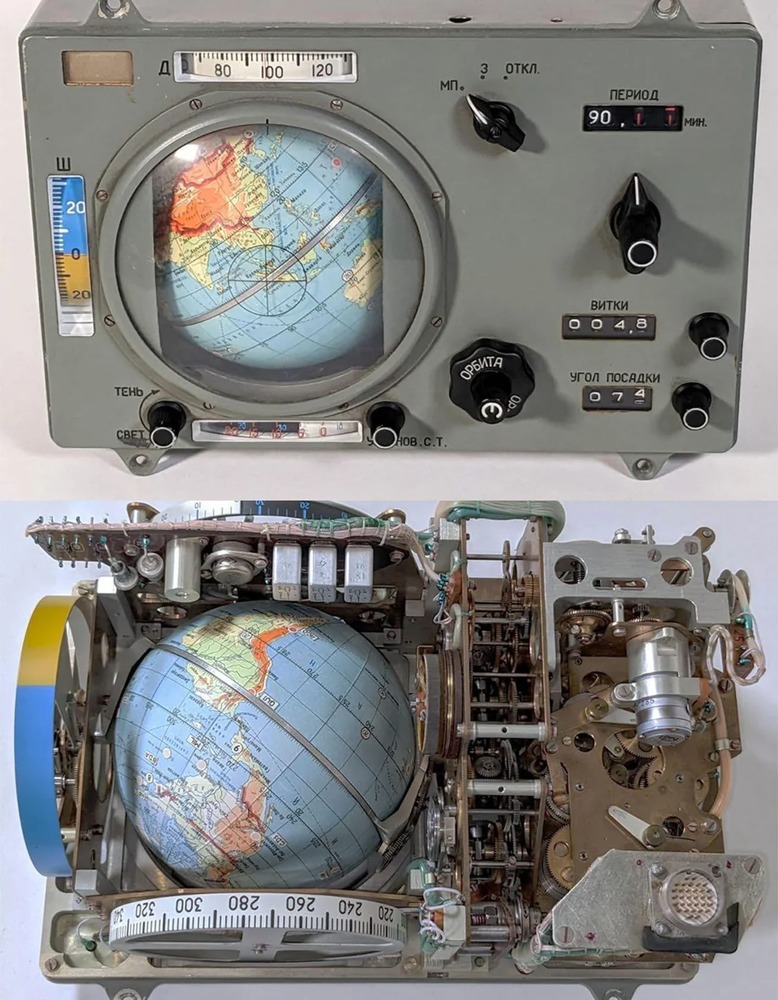
Spiny Norman said:
I Melted Wood With Friction.https://www.youtube.com/shorts/S3oMyuwf8FY
Interesting, I never knew that.
Thanks. Interesting. Might even be useful.
Local gigantism is a condition where a specific body part grows larger than normal, often due to excessive growth of anatomical structures or abnormal substance accumulation. Commonly observed in fingers and toes, it’s referred to as macrodactyly.
Geez, if he gives you the finger, it’d really hit you.
Spiny Norman said:
Local gigantism is a condition where a specific body part grows larger than normal, often due to excessive growth of anatomical structures or abnormal substance accumulation. Commonly observed in fingers and toes, it’s referred to as macrodactyly.Geez, if he gives you the finger, it’d really hit you.
Sissy Hankshaw appeared to suffer this affliction.
Walking in Japan puts the ‘new’ in renewable energy.
https://www.reddit.com/r/Amazing/comments/1n093qc/walking_in_japan_puts_the_new_in_renewable_energy
Interesting idea. I hope it takes off.
Spiny Norman said:
Walking in Japan puts the ‘new’ in renewable energy.https://www.reddit.com/r/Amazing/comments/1n093qc/walking_in_japan_puts_the_new_in_renewable_energy
Interesting idea. I hope it takes off.
They don’t seem impressed in the comments.
The process of evacuation from a cruise ship.
https://www.smithsonianmag.com/smart-news/remains-of-an-antarctic-researcher-are-finally-recovered-66-years-after-he-fell-into-a-crevasse-180987156/
ChrispenEvan said:
https://www.smithsonianmag.com/smart-news/remains-of-an-antarctic-researcher-are-finally-recovered-66-years-after-he-fell-into-a-crevasse-180987156/
There was a thing about Antarctica on TV a some years back. It showed the ‘dry valleys’ on the continent, which are, apparently, the driest places on the planet.
There was a seal carcass there, which had not deteriorated simply because it’s so VERY dry. IIRC, it was estimated that i’d been there for, like, 750 years, but it looked like it’d been there for about a month.
ChrispenEvan said:
https://www.smithsonianmag.com/smart-news/remains-of-an-antarctic-researcher-are-finally-recovered-66-years-after-he-fell-into-a-crevasse-180987156/
Sad story. Those hidden crevasses are very unforgiving.
Bubblecar said:
ChrispenEvan said:
https://www.smithsonianmag.com/smart-news/remains-of-an-antarctic-researcher-are-finally-recovered-66-years-after-he-fell-into-a-crevasse-180987156/Sad story. Those hidden crevasses are very unforgiving.
One more reason why i’m not booking a holiday on The Frozen Continent.
captain_spalding said:
ChrispenEvan said:
https://www.smithsonianmag.com/smart-news/remains-of-an-antarctic-researcher-are-finally-recovered-66-years-after-he-fell-into-a-crevasse-180987156/There was a thing about Antarctica on TV a some years back. It showed the ‘dry valleys’ on the continent, which are, apparently, the driest places on the planet.
There was a seal carcass there, which had not deteriorated simply because it’s so VERY dry. IIRC, it was estimated that i’d been there for, like, 750 years, but it looked like it’d been there for about a month.
For some reason I have always been troubled by such deaths
captain_spalding said:
ChrispenEvan said:
https://www.smithsonianmag.com/smart-news/remains-of-an-antarctic-researcher-are-finally-recovered-66-years-after-he-fell-into-a-crevasse-180987156/There was a thing about Antarctica on TV a some years back. It showed the ‘dry valleys’ on the continent, which are, apparently, the driest places on the planet.
There was a seal carcass there, which had not deteriorated simply because it’s so VERY dry. IIRC, it was estimated that i’d been there for, like, 750 years, but it looked like it’d been there for about a month.
Mummified seals are quite often found in the arid regions. Some are estimated to be thousands of years old.

dv said:
captain_spalding said:
ChrispenEvan said:
https://www.smithsonianmag.com/smart-news/remains-of-an-antarctic-researcher-are-finally-recovered-66-years-after-he-fell-into-a-crevasse-180987156/There was a thing about Antarctica on TV a some years back. It showed the ‘dry valleys’ on the continent, which are, apparently, the driest places on the planet.
There was a seal carcass there, which had not deteriorated simply because it’s so VERY dry. IIRC, it was estimated that i’d been there for, like, 750 years, but it looked like it’d been there for about a month.
For some reason I have always been troubled by such deaths
You might not want to Google John Jones, cave diver.
Bubblecar said:
captain_spalding said:
ChrispenEvan said:
https://www.smithsonianmag.com/smart-news/remains-of-an-antarctic-researcher-are-finally-recovered-66-years-after-he-fell-into-a-crevasse-180987156/There was a thing about Antarctica on TV a some years back. It showed the ‘dry valleys’ on the continent, which are, apparently, the driest places on the planet.
There was a seal carcass there, which had not deteriorated simply because it’s so VERY dry. IIRC, it was estimated that i’d been there for, like, 750 years, but it looked like it’d been there for about a month.
Mummified seals are quite often found in the arid regions. Some are estimated to be thousands of years old.
https://thelastdegrees.wordpress.com/2013/12/14/mummified-seals/
Bubblecar said:
dv said:
captain_spalding said:
Bubblecar said:
captain_spalding said:
ChrispenEvan said:
https://www.smithsonianmag.com/smart-news/remains-of-an-antarctic-researcher-are-finally-recovered-66-years-after-he-fell-into-a-crevasse-180987156/
There was a thing about Antarctica on TV a some years back. It showed the ‘dry valleys’ on the continent, which are, apparently, the driest places on the planet.
There was a seal carcass there, which had not deteriorated simply because it’s so VERY dry. IIRC, it was estimated that i’d been there for, like, 750 years, but it looked like it’d been there for about a month.
Sad story. Those hidden crevasses are very unforgiving.
One more reason why i’m not booking a holiday on The Frozen Continent.
For some reason I have always been troubled by such deaths
Mummified seals are quite often found in the arid regions. Some are estimated to be thousands of years old.
yeah pretty abrupt
In July 1959, Dennis “Tink” Bell set off from an Antarctic research station with another scientist, planning to survey the ice plateau above the nearby Ecology Glacier. The pair safely crossed a field of deep, wedge-shaped crevasses, but after that, Bell walked ahead of his dogsled to encourage the tired dogs to keep moving in the deep snow, leaving his skis behind. Suddenly, he was gone, having fallen roughly 100 feet into a hidden crevasse. His partner, surveyor Jeff Stokes, heard Bell calling and sent down a rope. Bell tied the rope to his belt, and Stokes began pulling him up with the help of his dogs. Stokes had almost successfully extracted Bell from the crevasse before tragedy struck again. Bell’s belt snapped, and he disappeared back into the ice. Calling down, Stokes no longer heard any response, and he returned to his base amid worsening winter conditions. Even though researchers went back to the site to look for Bell, his body was never recovered.
damn
captain_spalding said:
There was a thing about Antarctica on TV a some years back. It showed the ‘dry valleys’ on the continent, which are, apparently, the driest places on the planet.
There was a seal carcass there, which had not deteriorated simply because it’s so VERY dry. IIRC, it was estimated that i’d been there for, like, 750 years, but it looked like it’d been there for about a month.
oh we d’n‘o’ about all that, anyone looking for the driest place on the planet could just come to this Forum here
SCIENCE said:
captain_spalding said:
There was a thing about Antarctica on TV a some years back. It showed the ‘dry valleys’ on the continent, which are, apparently, the driest places on the planet.
There was a seal carcass there, which had not deteriorated simply because it’s so VERY dry. IIRC, it was estimated that i’d been there for, like, 750 years, but it looked like it’d been there for about a month.
oh we d’n‘o’ about all that, anyone looking for the driest place on the planet could just come to this Forum here
Not on Friday nights it’s not.
SCIENCE said:
captain_spalding said:
There was a thing about Antarctica on TV a some years back. It showed the ‘dry valleys’ on the continent, which are, apparently, the driest places on the planet.
There was a seal carcass there, which had not deteriorated simply because it’s so VERY dry. IIRC, it was estimated that i’d been there for, like, 750 years, but it looked like it’d been there for about a month.
oh we d’n‘o’ about all that, anyone looking for the driest place on the planet could just come to this Forum here
It’s my humour.
SCIENCE said:
captain_spalding said:
There was a thing about Antarctica on TV a some years back. It showed the ‘dry valleys’ on the continent, which are, apparently, the driest places on the planet.
There was a seal carcass there, which had not deteriorated simply because it’s so VERY dry. IIRC, it was estimated that i’d been there for, like, 750 years, but it looked like it’d been there for about a month.
oh we d’n‘o’ about all that, anyone looking for the driest place on the planet could just come to this Forum here
You can see some of these places on Google streetview.
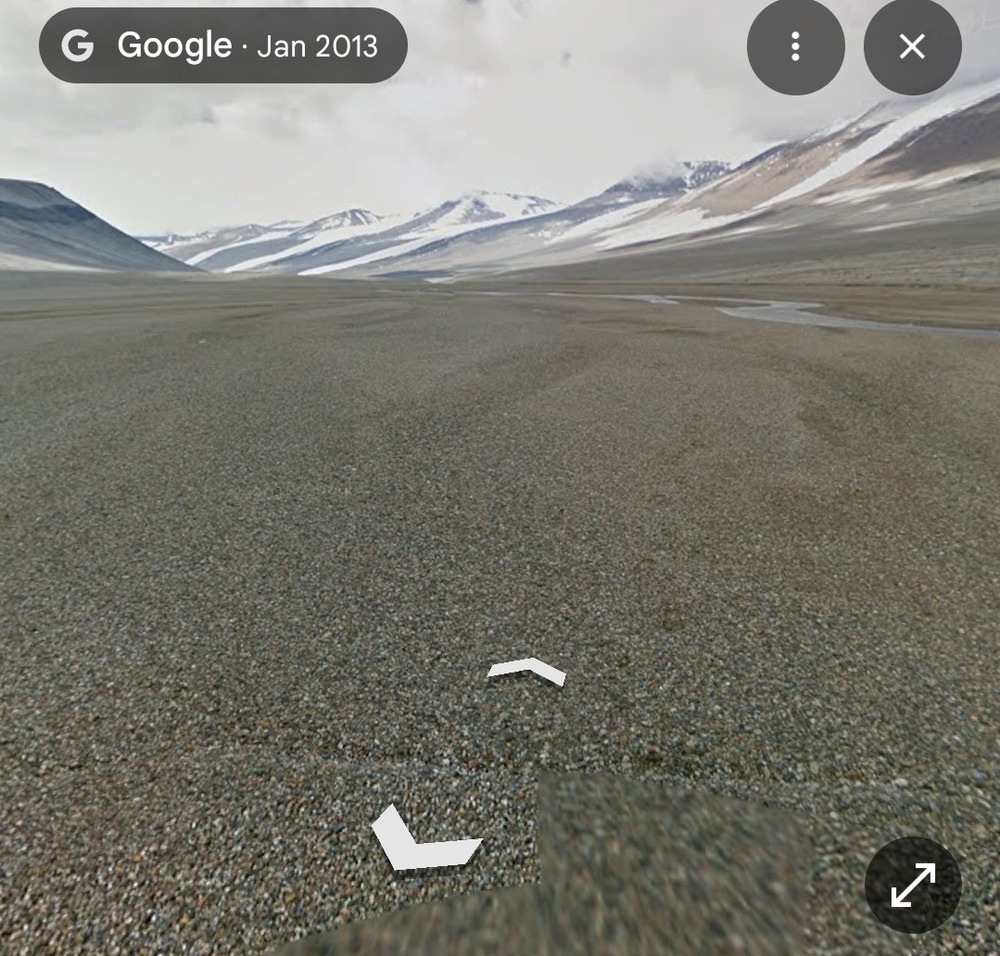
A US Air Force F-35 pilot held a 50-minute airborne conference call with engineers before his fighter jet crashed in Alaska.
An investigation blamed the crash on ice in the hydraulic lines in the nose and main landing gear, preventing them from deploying properly.
https://edition.cnn.com/2025/08/27/us/alaska-f-35-crash-accident-report-hnk-ml
https://edition.cnn.com/2025/08/27/us/alaska-f-35-crash-accident-report-hnk-ml
Chernobyl Isn’t Safe Anymore Until this Is Done.
https://www.youtube.com/watch?v=MGkMf_erJs0
A video on the damage done to the huge containment building over the reactor, thanks to Russia detonating some kind of weapon high up in the roof.
Spiny Norman said:
Chernobyl Isn’t Safe Anymore Until this Is Done.https://www.youtube.com/watch?v=MGkMf_erJs0
A video on the damage done to the huge containment building over the reactor, thanks to Russia detonating some kind of weapon high up in the roof.
WTF?
roughbarked said:
Spiny Norman said:
Chernobyl Isn’t Safe Anymore Until this Is Done.
https://www.youtube.com/watch?v=MGkMf_erJs0
A video on the damage done to the huge containment building over the reactor, thanks to Russia detonating some kind of weapon high up in the roof.
WTF?
what is war
Spiny Norman said:
A clever trick/gadget.Magnetic levitation.
Cool!
:)
Michael V said:
Spiny Norman said:
A clever trick/gadget.Magnetic levitation.
Cool!
:)
Cool second hand on the clock.

sorry, you wont see more cos it is a screen shot.
ChrispenEvan said:

sorry, you wont see more cos it is a screen shot.
Doesn’t look like a true skeleton to me. Are they dermal spines – modified scales?
Michael V said:
ChrispenEvan said:

sorry, you wont see more cos it is a screen shot.
Doesn’t look like a true skeleton to me. Are they dermal spines – modified scales?
Yes, it seems so.
https://en.wikipedia.org/wiki/Tetraodontidae#Morphology
“Pufferfish can also have many varied structures of caltrop-like dermal spines, which account for the replacement of typical fish scales”
Michael V said:
Michael V said:
ChrispenEvan said:

sorry, you wont see more cos it is a screen shot.
Doesn’t look like a true skeleton to me. Are they dermal spines – modified scales?
Yes, it seems so.
https://en.wikipedia.org/wiki/Tetraodontidae#Morphology
“Pufferfish can also have many varied structures of caltrop-like dermal spines, which account for the replacement of typical fish scales”
Pufferfish skeleton minus the external spines.

ChrispenEvan said:
https://www.youtube.com/watch?v=LMPxtcEgtdsBoston Dynamics, flipping dogbot.
Hey, I drove one of those today. Not the flipping one, just a bomb disposal one.
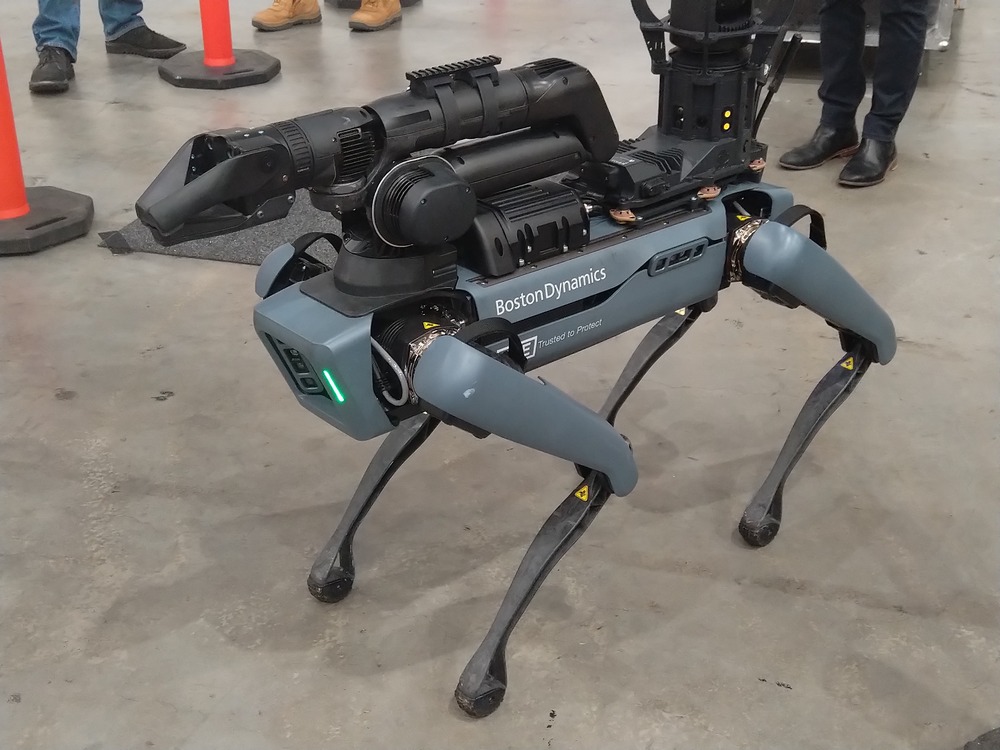
Kingy said:
ChrispenEvan said:
https://www.youtube.com/watch?v=LMPxtcEgtdsBoston Dynamics, flipping dogbot.
Hey, I drove one of those today. Not the flipping one, just a bomb disposal one.
Looks expensive.
Bubblecar said:
Kingy said:
ChrispenEvan said:
https://www.youtube.com/watch?v=LMPxtcEgtdsBoston Dynamics, flipping dogbot.
Hey, I drove one of those today. Not the flipping one, just a bomb disposal one.
Looks expensive.
Not really, it’s a bargain at just under $500,000.
I’m gonna wait till they come out on temu.
Well that’s half the music industry murdered.
https://www.reddit.com/r/Amazing/comments/1n2j9qx/is_it_over_for_the_music_industry
Mesmerizing path and movement of a planet inside a Three Body Star System.
World’s first 1-step method by US-China team turns plastic into fuel at 95% efficiency
Toxic plastic waste can be turned into fuel and hydrochloric acid in a single, low-energy process.
cientists in the United States and China say they have developed a one-step method to convert mixed plastic waste into petrol at room temperature and ambient pressure, achieving more than 95 percent efficiency.
The approach, which the team describes as requiring less energy, less equipment, and fewer steps than conventional plastic-to-fuel pathways, is designed to be scalable for industrial use.
The work involves researchers from the US Department of Energy–funded Pacific Northwest National Laboratory, Columbia University, the Technical University of Munich, and East China Normal University (ECNU)
https://interestingengineering.com/science/us-china-turn-plastic-to-petrol
Scientists Develop Gel for 2x Faster Healing.
https://www.youtube.com/shorts/NOGz1bUahyA
Researchers in China have developed a smart gel that switches off production of the protein that blocks new blood vessels from forming. In diabetic mice, the gel sped up healing to about half the normal time and produced healthier skin:
Article available here: https://academic.oup.com
How aerogel can make the ocean drinkable.
“Found this Ghost lifeboat drifting while our transit into the Persian Gulf, we were worried that we might find dead bodies inside since there was no attempt done to communicate and if we did find then it’s extra work that you’re not really paid for ; Fortunately none was found.”

https://www.reddit.com/r/Ships/comments/1n2rlgt/found_this_ghost_lifeboat_drifting_while_our
A realistic AI takeover scenario.
https://www.reddit.com/r/STEW_ScTecEngWorld/comments/1n33k4n/a_realistic_ai_takeover_scenario
A bit windy in Corsica earlier.
https://www.reddit.com/r/aviation/comments/1n301on/the_storm_that_crossed_corsica_yesterday_in_the
Urethane magnetic sheet immediately stops leaks.
China’s new carbon nanotube insulation can resist temperatures exceeding 4,700°F
A breakthrough nanotube film stops solid, gas, and radiative heat transfer at thousands of degrees.
team of Chinese researchers has reportedly developed a new carbon nanotube-based film that can resist temperatures up to 4,712°F (2,600°C). This new material could have important applications as a scalable insulation for aerospace, energy, or other high-temperature industries.
When things like spacecraft reenter Earth’s atmosphere, hypersonic planes fly, or reactors run at high temperatures, they face intense heat, often hotter than lava. Stopping this from happening is challenging, as most insulators fail at temperatures exceeding 2,732°F (1,500 °C).
Some materials are able to cope, but they often conduct too much heat in the process. At very high temperatures, radiation (heat carried by light/photons) becomes the biggest problem, and that’s the hardest to block.
So, researchers have for years attempted to develop a “dream” insulator that can stop conduction through solids, gases, and radiation. It also needs to survive extreme temperatures, while also being lightweight and stable.
To this end, researchers at Tsinghua University have allegedly engineered a new insulation material using super-aligned carbon nanotube films (SACNT-SF). To make this material, the team explains, they grow vertical carbon nanotube arrays.
https://interestingengineering.com/science/carbon-nanotube-resist-extreme-temperatures
Australian Inventions The World Would Be F***** Without.
Researchers use seaweed to manufacture raw materials for civil construction.
The accumulation of these algae on beaches can harm health, tourism, fishing, and biodiversity. They are usually collected and disposed of in landfills, but a study by Brazilian researchers has found a use for the biomass: to produce lightweight ceramic clay aggregates.
These brown algae, also known as sargassum, are common in the central Atlantic Ocean. However, they have been washing up in large quantities on beaches in the Caribbean, the United States, and northern Brazil, where they have become problematic. Their accumulation on beaches can harm human health due to the gases emitted during decomposition, as well as damage tourism, fishing, and local biodiversity.
Sargassum was incorporated into the samples at proportions of 20% and 40%, as well as 0% for comparison. The samples were molded and sintered – a process that compacts clay using heat to make it solid – at temperatures of 800 °C, 900 °C, and 1,000 °C in conventional and microwave ovens.
Once the materials were ready, several tests were performed to evaluate factors such as water absorption, porosity, and compressive strength. Additionally, a comparison was made between the life cycle of conventional expanded clay and the different formulations with added sargassum, a methodology that assesses the environmental impacts of a product from raw material extraction to final disposal.
The results, published in the Journal of Materials in Civil Engineering, indicate that adding sargassum reduced the apparent density of lightweight ceramic clay aggregates, particularly at a concentration of 40%. However, only materials sintered in a microwave oven met the strength requirements at all temperatures. In terms of life cycle, the versions with sargassum performed better environmentally than conventional expanded clay.
A way to find keys in a muddy puddle.
https://www.reddit.com/r/Damnthatsinteresting/comments/1n5fj77/a_way_to_find_keys_in_a_muddy_puddle
Quite simple and effective. It requires having a clear plastic bag & tap handy though.
Scientists Just Cured Paralysis with 3D-printed Spinal Cords.
https://www.youtube.com/shorts/IK4vZp2T_zM
QI I thought.
Speaking of not getting the numbers right …
On 2 September 2025, the newly built luxury yacht M/Y Dolce Vento, worth 1 million dollar, sank just 15 minutes after launch at a shipyard in Eregli, Turkiye, reportedly due to stabilization issues.
Oops, someone didn’t crunch the numbers well enough.
In 2022, a French hospital was forced to evacuate after an
88-year-old man arrived with an eight-inch artillery shell
from World War One lodged in his rectum. The elderly
gentleman had inserted the shell for gratification.
Doctors performed an incision into his rectum to remove
the object, which was measured at 8 inches long (20cm)
and over 2 inches wide (5cm).

Boris said:
In 2022, a French hospital was forced to evacuate after an
88-year-old man arrived with an eight-inch artillery shell
from World War One lodged in his rectum. The elderly
gentleman had inserted the shell for gratification.Doctors performed an incision into his rectum to remove
the object, which was measured at 8 inches long (20cm)
and over 2 inches wide (5cm).
That’s not the usual kind of blow up sex toy.
Boris said:
In 2022, a French hospital was forced to evacuate after an
88-year-old man arrived with an eight-inch artillery shell
from World War One lodged in his rectum. The elderly
gentleman had inserted the shell for gratification.Doctors performed an incision into his rectum to remove
the object, which was measured at 8 inches long (20cm)
and over 2 inches wide (5cm).
They should have tried pushing a thin metal straw up with it to break the vacuum
Some great photos of an F35 around the transonic speed area. The shock waves are clearly visible.





Spiny Norman said:
Some great photos of an F35 around the transonic speed area. The shock waves are clearly visible.
Turning the air into broken glass.
Spiny Norman said:
Some great photos of an F35 around the transonic speed area. The shock waves are clearly visible.
Wow, shocking photos, great detail.
Tau.Neutrino said:
Spiny Norman said:
Some great photos of an F35 around the transonic speed area. The shock waves are clearly visible.
Wow, shocking photos, great detail.
Thing is. There had to be a camera plane or did it fly past a fixed camera?
Spiny Norman said:
Some great photos of an F35 around the transonic speed area. The shock waves are clearly visible.
Gonna go boom?
Cheesus they are daft.
America’s Mines Are Literally Throwing Away Critical Metals
There’s enough lithium in a year’s worth of waste to produce 10 million EV batteries.
The United States is home to dozens of active mines. Some extract copper, while others dig for iron. Whatever the resource, however, it usually makes up a small fraction of the rock pulled from the ground. The rest is typically ignored. Wasted.
“We’re only producing a few commodities,” said Elizabeth Holley, a professor of mining engineering at the Colorado School of Mines. “The question is: What else is in those rocks?”
The answer: a lot.
In a study published today by the journal Science, Holley and her colleagues aimed to quantify what else is in those rocks. They found that, across 70 critical elements at 54 active mines, the potential for recovery is enormous. There is enough lithium in one year of US mine waste, for example, to support 10 million electric vehicles. For manganese, it’s enough for 99 million. Those figures far surpass both U.S. import levels of those elements and current demand for them.
https://www.motherjones.com/politics/2025/08/us-mining-wasate-recovery-critical-metals
Spiny Norman said:
Cheesus they are daft.America’s Mines Are Literally Throwing Away Critical Metals
There’s enough lithium in a year’s worth of waste to produce 10 million EV batteries.The United States is home to dozens of active mines. Some extract copper, while others dig for iron. Whatever the resource, however, it usually makes up a small fraction of the rock pulled from the ground. The rest is typically ignored. Wasted.
“We’re only producing a few commodities,” said Elizabeth Holley, a professor of mining engineering at the Colorado School of Mines. “The question is: What else is in those rocks?”
The answer: a lot.
In a study published today by the journal Science, Holley and her colleagues aimed to quantify what else is in those rocks. They found that, across 70 critical elements at 54 active mines, the potential for recovery is enormous. There is enough lithium in one year of US mine waste, for example, to support 10 million electric vehicles. For manganese, it’s enough for 99 million. Those figures far surpass both U.S. import levels of those elements and current demand for them.
https://www.motherjones.com/politics/2025/08/us-mining-wasate-recovery-critical-metals
Don’t tell Trump. He seems to think he can stop the Ukraine war by taking their Lithium.
roughbarked said:
Spiny Norman said:
Cheesus they are daft.America’s Mines Are Literally Throwing Away Critical Metals
There’s enough lithium in a year’s worth of waste to produce 10 million EV batteries.The United States is home to dozens of active mines. Some extract copper, while others dig for iron. Whatever the resource, however, it usually makes up a small fraction of the rock pulled from the ground. The rest is typically ignored. Wasted.
“We’re only producing a few commodities,” said Elizabeth Holley, a professor of mining engineering at the Colorado School of Mines. “The question is: What else is in those rocks?”
The answer: a lot.
In a study published today by the journal Science, Holley and her colleagues aimed to quantify what else is in those rocks. They found that, across 70 critical elements at 54 active mines, the potential for recovery is enormous. There is enough lithium in one year of US mine waste, for example, to support 10 million electric vehicles. For manganese, it’s enough for 99 million. Those figures far surpass both U.S. import levels of those elements and current demand for them.
https://www.motherjones.com/politics/2025/08/us-mining-wasate-recovery-critical-metals
Don’t tell Trump. He seems to think he can stop the Ukraine war by taking their Lithium.
I wish he’d take some antipsychotics instead.
A mechanical device that represents a tesseract.
Nicely done.
A small robot designed to automate construction layout by printing floor plans directly onto the ground in the building site.
Support dog senses an impending seizure, helps owner sit, finds water and medicine, and guides owner to rest.
Spiny Norman said:
Support dog senses an impending seizure, helps owner sit, finds water and medicine, and guides owner to rest.
:)
Spiny Norman said:
Support dog senses an impending seizure, helps owner sit, finds water and medicine, and guides owner to rest.
Good dog!
:)
:)
:)
The first flight of the Lockheed F-22, on 7th September 1987.
MIT has built a camera so fast it can capture light itself. The camera records at 1 trillion frames per second, allowing scientists to slow down the fastest thing in the universe and watch it move through a scene.
Spiny Norman said:
MIT has built a camera so fast it can capture light itself. The camera records at 1 trillion frames per second, allowing scientists to slow down the fastest thing in the universe and watch it move through a scene.
that is the coolest thing I have seen all day
Arts said:
Spiny Norman said:
MIT has built a camera so fast it can capture light itself. The camera records at 1 trillion frames per second, allowing scientists to slow down the fastest thing in the universe and watch it move through a scene.that is the coolest thing I have seen all day
and then the first comment tells me that this is “14 fucking years ago.” well that took some time to reach reddit
Arts said:
Arts said:
Spiny Norman said:
MIT has built a camera so fast it can capture light itself. The camera records at 1 trillion frames per second, allowing scientists to slow down the fastest thing in the universe and watch it move through a scene.that is the coolest thing I have seen all day
and then the first comment tells me that this is “14 fucking years ago.” well that took some time to reach reddit
did seem to be established, probably even posted on this Forum but we’v‘n’t checked
SCIENCE said:
Arts said:
Arts said:that is the coolest thing I have seen all day
and then the first comment tells me that this is “14 fucking years ago.” well that took some time to reach reddit
did seem to be established, probably even posted on this Forum but we’v‘n’t checked
You can probably get the same effect by turning a torch on really slowly.
Arts said:
Arts said:
Spiny Norman said:
MIT has built a camera so fast it can capture light itself. The camera records at 1 trillion frames per second, allowing scientists to slow down the fastest thing in the universe and watch it move through a scene.that is the coolest thing I have seen all day
and then the first comment tells me that this is “14 fucking years ago.” well that took some time to reach reddit
They need a media promotions manager., someone with worry beads and a ponytail.
Bubblecar said:
SCIENCE said:
Arts said:and then the first comment tells me that this is “14 fucking years ago.” well that took some time to reach reddit
did seem to be established, probably even posted on this Forum but we’v‘n’t checked
You can probably get the same effect by turning a torch on really slowly.
or moving your eyes faster
Arts said:
Arts said:
Spiny Norman said:
MIT has built a camera so fast it can capture light itself. The camera records at 1 trillion frames per second, allowing scientists to slow down the fastest thing in the universe and watch it move through a scene.that is the coolest thing I have seen all day
and then the first comment tells me that this is “14 fucking years ago.” well that took some time to reach reddit
It came from 14 light years away?
Arts said:
Bubblecar said:
SCIENCE said:did seem to be established, probably even posted on this Forum but we’v‘n’t checked
You can probably get the same effect by turning a torch on really slowly.
or moving your eyes faster
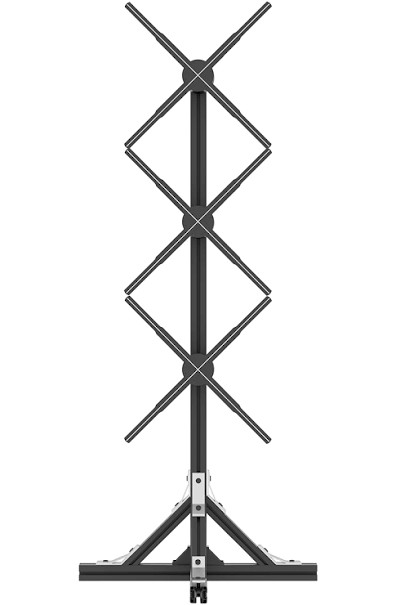
The Impossible Chinese Typewriter.
Ever wondered how Chinese people used typewriters? This video tells the strange and fascinating story of how the Chinese fit 90,000 characters into a single typewriter.
The Weirdest Tool in Underwater Construction.
You know I love heavy construction. The bigger and louder the machinery, the better. But I think that anything we can do to limit the effect we have on the other things we share this world with is a win, especially when it’s something as clever and creative as blowing bubbles.
I found this QI.
Deep Intel on Why the F-35 Crashed in Alaska.
The U.S. Air Force just released the official aircraft accident board report for the F-35 crash that occurred at Eielson Air Force Base on January 28, 2025.
https://www.youtube.com/watch?v=Z9VH49C5sro
He goes into a fair degree of detail about how it all came to pass.
Spiny Norman said:
I found this QI.Deep Intel on Why the F-35 Crashed in Alaska.
The U.S. Air Force just released the official aircraft accident board report for the F-35 crash that occurred at Eielson Air Force Base on January 28, 2025.
https://www.youtube.com/watch?v=Z9VH49C5sro
He goes into a fair degree of detail about how it all came to pass.
That’s pretty bad having a third of your hydraulic fluid water.
Pretty impressive, a large chunk of the RAAF’s aircraft doing a flyover in Canberra.
https://www.reddit.com/r/aviation/comments/1ndtbda/raaf_fly_over_canberra
Spiny Norman said:
Pretty impressive, a large chunk of the RAAF’s aircraft doing a flyover in Canberra.https://www.reddit.com/r/aviation/comments/1ndtbda/raaf_fly_over_canberra
Sorry, this post has been removed by the moderators of r/aviation.
Spiny Norman said:
Pretty impressive, a large chunk of the RAAF’s aircraft doing a flyover in Canberra.https://www.reddit.com/r/aviation/comments/1ndtbda/raaf_fly_over_canberra
Deleted.
The propulsion system of the Mk50 torpedo is rather clever.
The Magical Disappearing Square.
https://www.youtube.com/watch?v=7iSZ4rPycS0
Deceptively simple and pretty obvious when it’s explained like that.
https://iopscience.iop.org/article/10.1088/1361-6552/adf7f7
Lenz’s law and a magnet on the end of a fishing line in a conducting tube
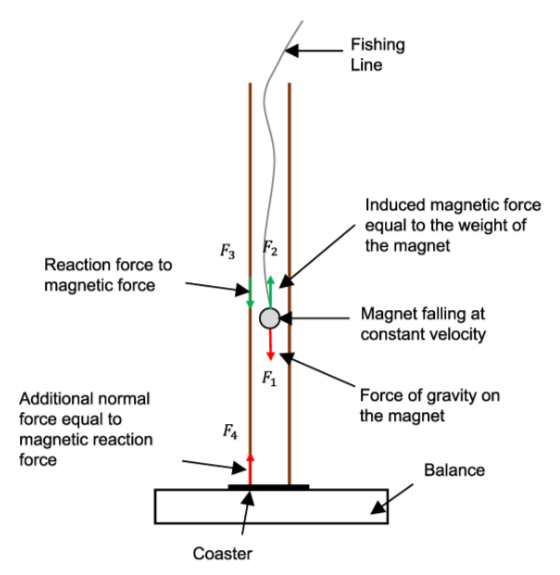
YIKES!!
https://www.reddit.com/r/Unexpected/comments/1ngczvt/fun_at_the_park
Lucky that no-one seems to be injured from that.
Tau.Neutrino said:
Tau.Neutrino said:
McBrien Antique Stone Lifter Re-enactment
Link fixed
Worthy machine.
https://en.wikipedia.org/wiki/Corrupted_Blood_incident
The Corrupted Blood incident (also known as the World of Warcraft pandemic) took place between September 13 and October 8, 2005, in World of Warcraft, a massively multiplayer online role-playing game (MMORPG) developed by Blizzard Entertainment. When participating in a certain boss battle at the end of a raid, player characters would become infected with a debuff that was transmitted between characters in close proximity. While developers intended to keep the effects of the debuff within this boss’s game region, a programming oversight soon led to the debuff becoming an in-game pandemic that spread throughout the fictional world of Azeroth.
I would want to boat to be going a few hundred knots faster than that thanks.
https://www.reddit.com/r/megalophobia/comments/1nh2xs3/boaters_capture_footage_of_an_erupting_mount
Mount Stromboli erupting, and far too close for comfort.
Spiny Norman said:
I would want to boat to be going a few hundred knots faster than that thanks.https://www.reddit.com/r/megalophobia/comments/1nh2xs3/boaters_capture_footage_of_an_erupting_mount
Mount Stromboli erupting, and far too close for comfort.
Luckily, Strombolian Eruptions (a class of eruptions) are low on the explosivity index.
Michael V said:
Spiny Norman said:
I would want to boat to be going a few hundred knots faster than that thanks.https://www.reddit.com/r/megalophobia/comments/1nh2xs3/boaters_capture_footage_of_an_erupting_mount
Mount Stromboli erupting, and far too close for comfort.
Luckily, Strombolian Eruptions (a class of eruptions) are low on the explosivity index.
So it’s mostly ash (or the like) being ejected?
Swedish scientists built a DNA nanorobot that sneaks through the body and only attacks cancer cells. No damage to healthy cells, no messy side effects. Feels like sci-fi medicine finally stepping into reality, game-changer if it scales.

Unconfirmed if true sorry. And I doubt it’d look like the one in the image.
Spiny Norman said:
Swedish scientists built a DNA nanorobot that sneaks through the body and only attacks cancer cells. No damage to healthy cells, no messy side effects. Feels like sci-fi medicine finally stepping into reality, game-changer if it scales.
Unconfirmed if true sorry. And I doubt it’d look like the one in the image.
More info.
https://news.ki.se/nanorobot-with-hidden-weapon-kills-cancer-cells
I thought The Rev D may find this of interest.
PSM uses factory-made concrete segments with high precision and consistent quality, enabling faster on-site assembly and minimizing hazardous work conditions. Engineers design the segments for a perfect fit, ensuring efficient construction, superior safety, and strong structural integrity. Widely used in complex, large-scale projects, PSM was applied by Hyundai E&C in 2015 to build the Honam High-Speed Railway 2-3 in South Korea, as shown in a Korea National Railway video: https://www.railway-technology.com/projects/honam-high-speed-railway-line/?utm_source=chatgpt.com&cf-view
There’s a good video in the last link.
Spiny Norman said:
Michael V said:
Spiny Norman said:
I would want to boat to be going a few hundred knots faster than that thanks.https://www.reddit.com/r/megalophobia/comments/1nh2xs3/boaters_capture_footage_of_an_erupting_mount
Mount Stromboli erupting, and far too close for comfort.
Luckily, Strombolian Eruptions (a class of eruptions) are low on the explosivity index.
So it’s mostly ash (or the like) being ejected?
As it was with Mt St Helens, but the explosivity is a lot lower. Not as low as Hawaii, though.
Michael V said:
Spiny Norman said:
Michael V said:Luckily, Strombolian Eruptions (a class of eruptions) are low on the explosivity index.
So it’s mostly ash (or the like) being ejected?
As it was with Mt St Helens, but the explosivity is a lot lower. Not as low as Hawaii, though.
Ta.
Spiny Norman said:
I thought The Rev D may find this of interest.PSM uses factory-made concrete segments with high precision and consistent quality, enabling faster on-site assembly and minimizing hazardous work conditions. Engineers design the segments for a perfect fit, ensuring efficient construction, superior safety, and strong structural integrity. Widely used in complex, large-scale projects, PSM was applied by Hyundai E&C in 2015 to build the Honam High-Speed Railway 2-3 in South Korea, as shown in a Korea National Railway video: https://www.railway-technology.com/projects/honam-high-speed-railway-line/?utm_source=chatgpt.com&cf-view
There’s a good video in the last link.
Thanks, sounds a bit hypey, but I’ll have a look :)
The humanoid robot is pretty darn good at staying on its feet. It trips over a displaced floor tile and topples over but is up again in the blink of an eye.
https://www.reddit.com/r/TechnologyShorts/comments/1ni9eoi/training_robot_fighters
Casting an iron fence panel. Quite satisfying.
https://www.reddit.com/r/BeAmazed/comments/1niccgl/iron_fence_casting
This is a hilariously self-destructive anatomical flaw.
Like many arthropods, a group of South American scorpions can break off their tails in self-defense. This helps them survive but leaves them with a real shitty problem: they also lose their anus!
The anus is at the back of the fifth segment just before the stinger. When a scorpion breaks its tail, it leaves its anus on the ground. Since the tail can’t grow back, it can’t defecate again. Its abdomen swells up with poo, so much so that the pressure sometimes breaks off another segment.
Despite being very constipated, a tailless scorpion can still survive up to eight months, enough time to reproduce. Imagine a scorpion’s proposal: “baby, please marry me, I’ll never lose my shit”, “Oh stop it! You’re so full of shit!”, how very tragic…
JudgeMental said:
This is a hilariously self-destructive anatomical flaw.Like many arthropods, a group of South American scorpions can break off their tails in self-defense. This helps them survive but leaves them with a real shitty problem: they also lose their anus!
The anus is at the back of the fifth segment just before the stinger. When a scorpion breaks its tail, it leaves its anus on the ground. Since the tail can’t grow back, it can’t defecate again. Its abdomen swells up with poo, so much so that the pressure sometimes breaks off another segment.
Despite being very constipated, a tailless scorpion can still survive up to eight months, enough time to reproduce. Imagine a scorpion’s proposal: “baby, please marry me, I’ll never lose my shit”, “Oh stop it! You’re so full of shit!”, how very tragic…
And yet it has been happening again and again for a 100 million years.
Survivors

Looking at Starlink satellites ……🛰 from above
Maxar was looking at a Chinese military airbase from space, as one does, and a Starlink satellite zipped by at 17,000 MPH in a lower orbit, photobombing in technicolor.
Given Starlink’s speed, Maxar’s integration of different sensors led to a lagging rainbow of colors. The push broom sensors in the imaging satellite use its steady motion to integrate a rectangular image from a linear sensor sweeping forward like a push broom. So, a fast moving rectangle will distort into a quadrilateral polygon. And with multiple lines of sensors for different colors, high altitude objects (planes, balloons, satellites) also cause misalignment from parallax shifts (unrelated to their lateral movement). This creates an easily-detectable image artifact that can now serve as a search feature. Planet used this “bug” to search its daily planetary imaging database to find all of the high-altitude Chinese spy balloons and trace them back in time to their launch site in China.
Anting is a behavior where birds rub ants or other insects on their feathers and skin. They may use a single ant or wallow among many. The insects’ secretions, such as formic acid, may help deter parasites, make prey more palatable, or supplement preen oil. Over 200 bird species practice anting, which resembles mammalian self-anointing: https://en.wikipedia.org/wiki/Anting_
Spiny Norman said:
Anting is a behavior where birds rub ants or other insects on their feathers and skin. They may use a single ant or wallow among many. The insects’ secretions, such as formic acid, may help deter parasites, make prey more palatable, or supplement preen oil. Over 200 bird species practice anting, which resembles mammalian self-anointing: https://en.wikipedia.org/wiki/Anting_
Pointy Birds,
So pointy, pointy…
Anoint my head,
Anointy, nointy
The Fulton surface-to-air recovery system.
https://x.com/i/status/1968091172393697409
What could possibly go wrong?
An F-22 Raptor starting up. It looks like they’re using hydrogen peroxide to drive a small turbine to crank the engines over.
https://www.reddit.com/r/Planes/comments/1niozb5/raptor_zone
A rather interesting report on the F-35 and its development to reduce the various faults they have.
NASA’s alternative plan to landing the Apollo spacecraft on the Moon.
By using modified Gemini spacecraft. Quite odd bit it might have worked.
How Physicists Broke the Solar Efficiency Record.
NASA’s Tally of Planets Outside Our Solar System Reaches 6,000.
The official number of exoplanets — planets outside our solar system — tracked by NASA has reached 6,000. Confirmed planets are added to the count on a rolling basis by scientists from around the world, so no single planet is considered the 6,000th entry. The number is monitored by NASA’s Exoplanet Science Institute (NExScI), based at Caltech’s IPAC in Pasadena, California. There are more than 8,000 additional candidate planets awaiting confirmation, with NASA leading the world in searching for life in the universe.
Spiny Norman said:
NASA’s Tally of Planets Outside Our Solar System Reaches 6,000.The official number of exoplanets — planets outside our solar system — tracked by NASA has reached 6,000. Confirmed planets are added to the count on a rolling basis by scientists from around the world, so no single planet is considered the 6,000th entry. The number is monitored by NASA’s Exoplanet Science Institute (NExScI), based at Caltech’s IPAC in Pasadena, California. There are more than 8,000 additional candidate planets awaiting confirmation, with NASA leading the world in searching for life in the universe.
Incredible. I remember when the boffins confirmed the very first exoplanet.
Have they found any flat ones yet? 🙂
Spiny Norman said:
NASA’s Tally of Planets Outside Our Solar System Reaches 6,000.The official number of exoplanets — planets outside our solar system — tracked by NASA has reached 6,000. Confirmed planets are added to the count on a rolling basis by scientists from around the world, so no single planet is considered the 6,000th entry. The number is monitored by NASA’s Exoplanet Science Institute (NExScI), based at Caltech’s IPAC in Pasadena, California. There are more than 8,000 additional candidate planets awaiting confirmation, with NASA leading the world in searching for life in the universe.
Impressive, given that before the 1990s the tally was 0, and it was still being debated whether exoplanets would ever be detectable from Earth.
Spiny Norman said:
NASA’s Tally of Planets Outside Our Solar System Reaches 6,000.The official number of exoplanets — planets outside our solar system — tracked by NASA has reached 6,000. Confirmed planets are added to the count on a rolling basis by scientists from around the world, so no single planet is considered the 6,000th entry. The number is monitored by NASA’s Exoplanet Science Institute (NExScI), based at Caltech’s IPAC in Pasadena, California. There are more than 8,000 additional candidate planets awaiting confirmation, with NASA leading the world in searching for life in the universe.
Was there ever doubt on exoplanets existence do you think.
Proof is required of course, however apart from the existence of Earth I can’t imagine our solar system is special.
I remember reading somewhere that Earth may not even be the best planet for life and others could exists with life in even more abundance.
Bubblecar said:
Spiny Norman said:
NASA’s Tally of Planets Outside Our Solar System Reaches 6,000.The official number of exoplanets — planets outside our solar system — tracked by NASA has reached 6,000. Confirmed planets are added to the count on a rolling basis by scientists from around the world, so no single planet is considered the 6,000th entry. The number is monitored by NASA’s Exoplanet Science Institute (NExScI), based at Caltech’s IPAC in Pasadena, California. There are more than 8,000 additional candidate planets awaiting confirmation, with NASA leading the world in searching for life in the universe.
Impressive, given that before the 1990s the tally was 0, and it was still being debated whether exoplanets would ever be detectable from Earth.
so one does believe in singularity then
Spiny Norman said:
Some great photos of an F35 around the transonic speed area. The shock waves are clearly visible.
Comprehensive review of a report titled “F-35 Joint Strike Fighter, actions needed to address late deliveries and improve future development,” from an old Tomcat RIO
Deep Intel on the Damning New F-35 Report
https://www.youtube.com/watch?v=LReZ4ejDjpw

Scientists have developed a room-temperature catalytic system that converts PVC and other plastic waste into gasoline-range hydrocarbons with over 95% efficiency. This innovative process uses chloroaluminate ionic liquid catalysts to simultaneously dechlorinate, crack, and alkylate plastic polymers without high energy input.

Voyager 1 captured this historic “Earth and Moon” photo 48 years ago today.
At What Point Does Spacetime Become Quantum?
To observe the quantum nature of gravity and of spacetime itself, we need a particle collider the size of the solar system. Or we could just physics smarter and build one on a lab bench. Here’s how.
Stainless Steel Was Invented by ACCIDENT!?
Stainless steel is everywhere—your kitchen, hospitals, skyscrapers, and even your car. But did you know it was discovered completely by accident? In this video, we’ll dive into the fascinating story of how Harry Brearley, a metallurgist from Sheffield, stumbled upon stainless steel in 1913 while trying to solve a problem with gun barrels. What started as a failed weapons experiment turned into one of the most important inventions of the modern age.
From rusty cutlery to rust-proof skyscrapers, stainless steel changed the world in ways no one could have predicted. Join us as we uncover how this shiny metal was born out of chance and went on to shape our everyday lives.
The only viable rocket propulsion system we have to get further out than Mars & Venus – Project Orion.
Japan’s Super-Giant Battleship Draft, the “500,000-Ton Battleship”.
https://www.youtube.com/watch?v=sw6_86eCgAA
Quite a chunky lad there.
Spiny Norman said:
Japan’s Super-Giant Battleship Draft, the “500,000-Ton Battleship”.https://www.youtube.com/watch?v=sw6_86eCgAA
Quite a chunky lad there.
Lieutenant-Commander Kaneda was smokin’ some righteous weed there, i reckon.
Could our computers soon run on light instead of electricity? 💡 A German startup says YES. Their new photonic chip is 50x faster and could cut the energy use of AI by a factor of 1000. This isn’t science fiction—it’s the first commercially available processor of its kind, and it could change everything.
Data centers and AI are consuming a terrifying amount of electricity, a number that’s set to quadruple by 2030. The solution might be hiding in plain sight: light itself. I traveled to Stuttgart to visit the startup Q.ANT, which has achieved a massive breakthrough with its photonic processor. In this video, we’ll dive deep into how these chips work, why using analog light waves is a game-changer for neural networks, and what limitations still exist.
https://www.youtube.com/watch?v=xc1SzgGhMKc
Apollo 11: The Complete Descent
A detailed account of every second of the Apollo 11 descent and landing. The video combines data from the onboard computer for altitude and pitch angle, 16mm film that was shot throughout the descent at 6 frames per second. The audio recording is from two sources. The air/ground transmissions are on the left stereo channel and the mission control flight director loop is on the right channel. Subtitles are included to aid comprehension.
The Chernobyl Shield Is Broken – Here’s What That Means.
Spiny Norman said:
The Chernobyl Shield Is Broken – Here’s What That Means.
The recent one various nations funded because Russia is so poor ?
Sorry can’t view the video at work
Cymek said:
Spiny Norman said:
The Chernobyl Shield Is Broken – Here’s What That Means.
The recent one various nations funded because Russia is so poor ?
Sorry can’t view the video at work
well it’s not in russia yet so why would they fund it
wait
wait
wait
SCIENCE said:
Cymek said:
Spiny Norman said:
The Chernobyl Shield Is Broken – Here’s What That Means.
The recent one various nations funded because Russia is so poor ?
Sorry can’t view the video at work
well it’s not in russia yet so why would they fund it
wait
wait
wait
Or I am wrong about what I think it is.
The big radiation shield that was slid into place over the reactors
Cymek said:
SCIENCE said:
Cymek said:
The recent one various nations funded because Russia is so poor ?
Sorry can’t view the video at work
well it’s not in russia yet so why would they fund it
wait
wait
wait
Or I am wrong about what I think it is.
The big radiation shield that was slid into place over the reactors
well if it’s around this thing
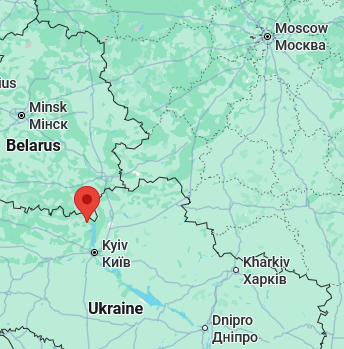
then as yous can see it’s still Free Sovereign Territory and them imperial warmongers have a way to go to hold it yet
also
31 March, 2022: The Russian forces that had been in control of the Chernobyl Nuclear Power Plant (NPP) since 24 February had, in writing, transferred control of the NPP to Ukrainian personnel.

Forest & Bird
🐋 Meet the Critter of The Week, Cyamus boopis, also known as humpback whale lice.
Over the weekend, a humpback whale (Megaptera novaeangliae) was tragically found stranded and later died on a beach in North Dunedin. Experts identified signs of a ship strike, malnourishment, and a heavy infestation of whale lice 🦀 🦀🦀🦀🦀
🌊 Despite their name, whale lice are crustaceans, not insects, and they’re completely unrelated to human lice. Early whalers gave them the misleading nickname when they found the lice clinging to their own skin after handling whale carcasses.
Whale lice are ectoparasites, found only on the skin of humpbacks. They prefer sheltered spots like creases around the flippers, face, and genital folds, places that help protect them from strong currents.
They appear flattened, with a crab-like body and are brownish-white in colour. Their five pairs of hooked legs are perfect for clinging to whale skin. They breathe with gills underwater but can survive several days out of the sea.
Whale lice feed mostly on algae on the whale’s skin, flaking skin, and damaged tissue around wounds. They spend their entire life on a whale and will never leave their host voluntarily, moving between whales only through close physical contact such as mating and calving.
Far from being “just parasites,” whale lice are incredibly valuable to science! Their genetics help researchers track whale evolution, migration, and social networks. Distinct lice patterns on a whale’s head can help identify individual whales, sort of like a natural name tag.
So, while they may look like tiny hitchhikers, Cyamus boopis tells us an enormous amount about the lives of humpback whales!
📸 – Credit Southern Alps Photography Forest & Bird’s Chief Executive Nicola Toki
JudgeMental said:

Forest & Bird
🐋 Meet the Critter of The Week, Cyamus boopis, also known as humpback whale lice.
Over the weekend, a humpback whale (Megaptera novaeangliae) was tragically found stranded and later died on a beach in North Dunedin. Experts identified signs of a ship strike, malnourishment, and a heavy infestation of whale lice 🦀 🦀🦀🦀🦀
🌊 Despite their name, whale lice are crustaceans, not insects, and they’re completely unrelated to human lice. Early whalers gave them the misleading nickname when they found the lice clinging to their own skin after handling whale carcasses.
Whale lice are ectoparasites, found only on the skin of humpbacks. They prefer sheltered spots like creases around the flippers, face, and genital folds, places that help protect them from strong currents.
They appear flattened, with a crab-like body and are brownish-white in colour. Their five pairs of hooked legs are perfect for clinging to whale skin. They breathe with gills underwater but can survive several days out of the sea.
Whale lice feed mostly on algae on the whale’s skin, flaking skin, and damaged tissue around wounds. They spend their entire life on a whale and will never leave their host voluntarily, moving between whales only through close physical contact such as mating and calving.Far from being “just parasites,” whale lice are incredibly valuable to science! Their genetics help researchers track whale evolution, migration, and social networks. Distinct lice patterns on a whale’s head can help identify individual whales, sort of like a natural name tag.
So, while they may look like tiny hitchhikers, Cyamus boopis tells us an enormous amount about the lives of humpback whales!
📸 – Credit Southern Alps Photography Forest & Bird’s Chief Executive Nicola Toki
Yuck.
Doesn’t tell you their size so I looked it up and they’re from 5mm to 25mm long, up to 4mm wide.
JudgeMental said:
“Whale lice are ectoparasites, found only on the skin of humpbacks. They prefer sheltered spots like creases around the flippers, face, and genital folds…”
Whale crabs.
Grains behave oddly.
The biplane with a jet engine… in 1910
Never got off the ground, due to not enough thrust, but still interesting.
Tau.Neutrino said:
The biplane with a jet engine… in 1910Never got off the ground, due to not enough thrust, but still interesting.
That links to “My secret slipped out after anesthesia”
Bubblecar said:
Tau.Neutrino said:
The biplane with a jet engine… in 1910Never got off the ground, due to not enough thrust, but still interesting.
That links to “My secret slipped out after anesthesia”
Yes I saw that, some people are funny coming out of it.
Tau.Neutrino said:
The biplane with a jet engine… in 1910Never got off the ground, due to not enough thrust, but still interesting.
https://en.wikipedia.org/wiki/Coandă-1910
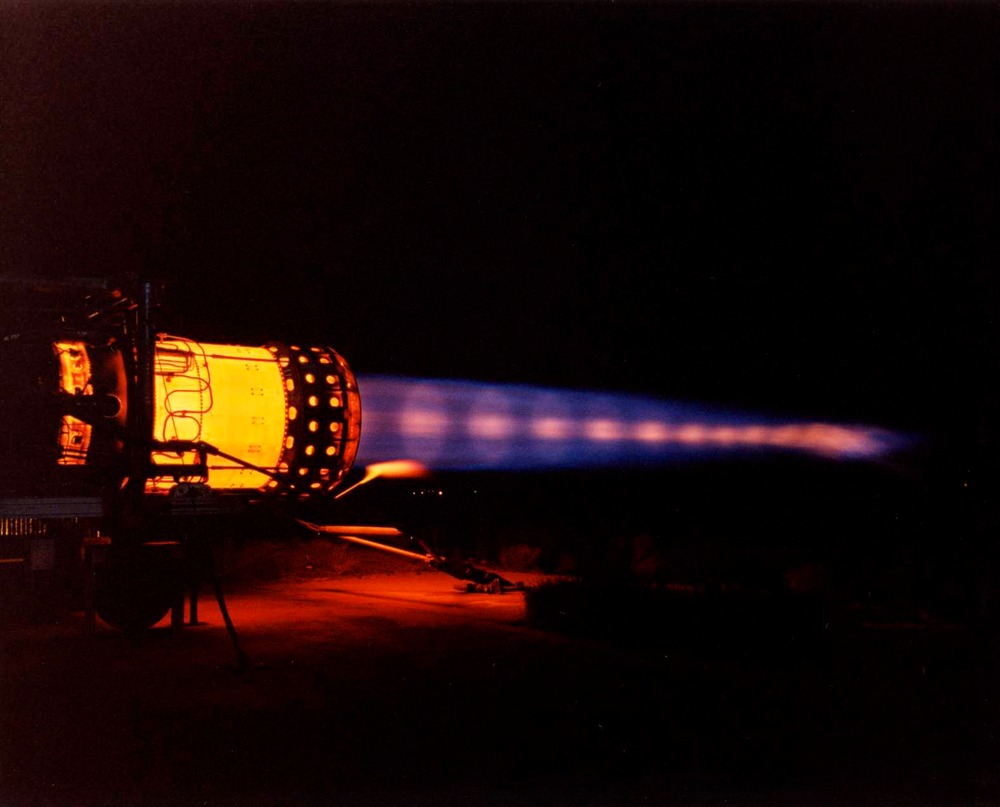
The mighty Pratt & Whitney J58 engine on a test stand with the afterburner running. Quite spectacular!
Spiny Norman said:

The mighty Pratt & Whitney J58 engine on a test stand with the afterburner running. Quite spectacular!
Something astounding that I didn’t know about them, from Wikipedia.
Length: 180 in (4,600 mm) (an additional 6 in (150 mm) at max. temp.)
https://www.facebook.com/reel/820487053890032
This parachute is full of holes and that’s a good thing
After more than 30 years of research, a team from the Universities of Bayreuth and Edinburgh has finally succeeded in producing a very special material. It is said to be harder than diamond and even damaged the diamond press in the laboratory during the hardness test. But it also starts to glow when you supply it with energy and it could even be a pretty good superconductor! In this video we’ll find out what this crazy material is all about, how it was made and what it will be used for.
Australia’s Most VENOMOUS Insect is a Living Nightmare.
https://www.youtube.com/watch?v=gKUhp4KDJZQ
I had no idea they were that nasty.
Join me in pursuit of one of the coolest critters anywhere (but I seem to have an abundance of them here in NC) – Dragonflies!
In this video I’m breaking down dragonfly flight with a high-speed camera. Dragonflies are some pretty incredible insects, and the way they fly (or more accurately – the multiple ways they fly!) are fascinating. I hope you enjoy this journey to film, then understand, dragonfly flight in my backyard.
https://www.acs.org/pressroom/presspacs/2025/august/an-alternative-to-lasik-without-the-lasers.html
WASHINGTON, Aug. 18, 2025 — Millions of Americans have altered vision, ranging from blurriness to blindness. But not everyone wants to wear prescription glasses or contact lenses. Accordingly, hundreds of thousands of people undergo corrective eye surgery each year, including LASIK — a laser-assisted surgery that reshapes the cornea and corrects vision. The procedure can result in negative side effects, prompting researchers to take the laser out of LASIK by remodeling the cornea, rather than cutting it, in initial animal tissue tests.
ChrispenEvan said:
https://www.acs.org/pressroom/presspacs/2025/august/an-alternative-to-lasik-without-the-lasers.htmlWASHINGTON, Aug. 18, 2025 — Millions of Americans have altered vision, ranging from blurriness to blindness. But not everyone wants to wear prescription glasses or contact lenses. Accordingly, hundreds of thousands of people undergo corrective eye surgery each year, including LASIK — a laser-assisted surgery that reshapes the cornea and corrects vision. The procedure can result in negative side effects, prompting researchers to take the laser out of LASIK by remodeling the cornea, rather than cutting it, in initial animal tissue tests.
Maybe pop back in about 20 years and see where this is at…
Scientists have mapped the entire neural network of the fruit fly.
50 million synapses between 139,000 neurons.
Spiny Norman said:
Scientists have mapped the entire neural network of the fruit fly.50 million synapses between 139,000 neurons.
That’s farken awesome.
Spiny Norman said:
Scientists have mapped the entire neural network of the fruit fly.50 million synapses between 139,000 neurons.
Well done!
Now, can they programme the little buggers to stay away from my tomatoes?
Spiny Norman said:
Scientists have mapped the entire neural network of the fruit fly.50 million synapses between 139,000 neurons.
Well done!
Now, can they programme the little buggers to stay away from my tomatoes?
https://www.youtube.com/watch?v=BzNzgsAE4F0&t=17s
The Shepard Tone is an audio illusion formed by overlaying separate tones separated by octaves that each rise/fall (depending on the nature of the Shepard Tone in question) and repeat independently of one another. As a result, in this case the sound seems to continuously get higher but never really does.
https://www.facebook.com/reel/1504744230887163
Did you ever use a Nintendo Zapper? Here’s how the game works frame by frame.
how those early shoot at the tv screen video games work.
I shot film that was 80 years old… Here’s what happened
https://www.youtube.com/watch?v=p7S_Tz-mCcM
AussieDJ said:
I shot film that was 80 years old… Here’s what happened
https://www.youtube.com/watch?v=p7S_Tz-mCcM
worth

SCIENCE said:
AussieDJ said:
I shot film that was 80 years old… Here’s what happened
https://www.youtube.com/watch?v=p7S_Tz-mCcM
worth
I’m sure he knew that before he started.
roughbarked said:
SCIENCE said:
AussieDJ said:
I shot film that was 80 years old… Here’s what happened
https://www.youtube.com/watch?v=p7S_Tz-mCcM
worth
I’m sure he knew that before he started.
how though we mean taking shots of 80 year old booze is supposedly great
SCIENCE said:
roughbarked said:
SCIENCE said:
worth
I’m sure he knew that before he started.
how though we mean taking shots of 80 year old booze is supposedly great
They look great on high speed when the bullet hits them.
roughbarked said:
SCIENCE said:
roughbarked said:
I’m sure he knew that before he started.
how though we mean taking shots of 80 year old booze is supposedly great
They look great on high speed when the bullet hits them.
no no we meant the 4th meaning we meant having 80 year old vaccinations
anyway, well played
Why water turns blue during underwater explosion.
3I/ATLAS Just Got Stranger.
Join us for an update on 3I/ATLAS, our solar system’s newest visitor. Amid the frenzy to observe the fast moving object as it hurtles closer to the sun, we’re exploring everything we know so far, including the latest surprising discoveries.
LOL, cats

Stray Cats Cost Bitcoin Mine Millions in One Week. A Bitcoin mine in
Inner Mongolia saw its profits collapse this winter. For days, no one
could figure out why, until they went underground.
There, hundreds of stray cats were found curled up on the GPUs,
using them as heaters. Each cat had claimed its own “bed,” worth
millions of dollars in mining power. “It’s wholesome and cute,” one
worker said, “but those beds are literally worth millions.”
Since the photos went viral, people have been asking what happened
to the cats. A worker explained, “Luckily the man who owns these
machines is a cat guy. He’s bought over 200 heating mats, and we’ve
been instructed to put them in a separate room for the cats.
Steve Mould again.
His Mould Effect on chain movement has been tested in space.
https://www.youtube.com/watch?v=NtZaP8VMv0c
NASA let me test my weird chain theory in space
Steve Mould
Chain fountain.
Why does WATER change the speed of electricity?
The electrons are back! This is the first of three videos discussing electricity – what is it, how does it work, how do we use it? This first installment talks about the speed of electricity and electrical signals in wires. Next up is Ohm’s law, and what resistance really does in circuits, and third, I’ll be taking another look at the experiment featured on Veritasium last year, building on the first two videos to explore the mechanism that couples the two long wires with a little more scrutiny. Enjoy!
https://phys.org/news/2025-10-chicago-viral-rat-hole.html
Chicago’s viral ‘rat hole’ was not made by a rat after all, new study finds
by Krystal Kasal, Phys.org
JudgeMental said:
https://phys.org/news/2025-10-chicago-viral-rat-hole.htmlChicago’s viral ‘rat hole’ was not made by a rat after all, new study finds
by Krystal Kasal, Phys.org
Luckily the virus was not transmitted to me.
I think squirrels in the US (at least in California) are rabid.
Hmmm. I wonder if the North American squirrels introduced to the UK are rabid, too. Probably not. My mother had a pet squirrel.
Michael V said:
JudgeMental said:
https://phys.org/news/2025-10-chicago-viral-rat-hole.htmlChicago’s viral ‘rat hole’ was not made by a rat after all, new study finds
by Krystal Kasal, Phys.org
Luckily the virus was not transmitted to me.
I think squirrels in the US (at least in California) are rabid.
Hmmm. I wonder if the North American squirrels introduced to the UK are rabid, too. Probably not. My mother had a pet squirrel.
I was wrong. Very few squirrels are rabid, according to the electric internet.
In 1993 when I was studying tectonics and strike-slip basins in California, there were lots of signs warning of rabies in squirrels.
Michael V said:
Michael V said:
JudgeMental said:
https://phys.org/news/2025-10-chicago-viral-rat-hole.htmlChicago’s viral ‘rat hole’ was not made by a rat after all, new study finds
by Krystal Kasal, Phys.org
Luckily the virus was not transmitted to me.
I think squirrels in the US (at least in California) are rabid.
Hmmm. I wonder if the North American squirrels introduced to the UK are rabid, too. Probably not. My mother had a pet squirrel.
I was wrong. Very few squirrels are rabid, according to the electric internet.
In 1993 when I was studying tectonics and strike-slip basins in California, there were lots of signs warning of rabies in squirrels.
Gosh, imagine a rabid kangaroo. Stuff of nightmares, that is.
https://en.wikipedia.org/wiki/Eucalyptus_recurva
Eucalyptus recurva, commonly known as Mongarlowe mallee, is a species of dense mallee shrub that is endemic to a small area of New South Wales. It has smooth bark, a crown consisting of unusually small, juvenile leaves, flower buds in groups of three, white flowers and hemispherical fruit. It is only known from six extremely old multi-stemmed individual plants and is classed as “critically endangered”.
JudgeMental said:
https://en.wikipedia.org/wiki/Eucalyptus_recurvaEucalyptus recurva, commonly known as Mongarlowe mallee, is a species of dense mallee shrub that is endemic to a small area of New South Wales. It has smooth bark, a crown consisting of unusually small, juvenile leaves, flower buds in groups of three, white flowers and hemispherical fruit. It is only known from six extremely old multi-stemmed individual plants and is classed as “critically endangered”.
One very rare plant indeed.
Divine Angel said:
Michael V said:
Michael V said:Luckily the virus was not transmitted to me.
I think squirrels in the US (at least in California) are rabid.
Hmmm. I wonder if the North American squirrels introduced to the UK are rabid, too. Probably not. My mother had a pet squirrel.
I was wrong. Very few squirrels are rabid, according to the electric internet.
In 1993 when I was studying tectonics and strike-slip basins in California, there were lots of signs warning of rabies in squirrels.
Gosh, imagine a rabid kangaroo. Stuff of nightmares, that is.
Flying foxes carry a rabies-like disease.
roughbarked said:
JudgeMental said:
https://en.wikipedia.org/wiki/Eucalyptus_recurvaEucalyptus recurva, commonly known as Mongarlowe mallee, is a species of dense mallee shrub that is endemic to a small area of New South Wales. It has smooth bark, a crown consisting of unusually small, juvenile leaves, flower buds in groups of three, white flowers and hemispherical fruit. It is only known from six extremely old multi-stemmed individual plants and is classed as “critically endangered”.
One very rare plant indeed.
I thought you would like it. should give you some seed to try.
JudgeMental said:
roughbarked said:
JudgeMental said:
https://en.wikipedia.org/wiki/Eucalyptus_recurvaEucalyptus recurva, commonly known as Mongarlowe mallee, is a species of dense mallee shrub that is endemic to a small area of New South Wales. It has smooth bark, a crown consisting of unusually small, juvenile leaves, flower buds in groups of three, white flowers and hemispherical fruit. It is only known from six extremely old multi-stemmed individual plants and is classed as “critically endangered”.
One very rare plant indeed.
I thought you would like it. should give you some seed to try.
I knew about it but I doubt much seed is getting around.
roughbarked said:
JudgeMental said:
roughbarked said:One very rare plant indeed.
I thought you would like it. should give you some seed to try.
I knew about it but I doubt much seed is getting around.
On this day (approximately), the BBC’s Blue Peter children’s TV show demonstrated a phone with no cable that could even be taken outside.
They thought the idea would never catch on…
AussieDJ said:
On this day (approximately), the BBC’s Blue Peter children’s TV show demonstrated a phone with no cable that could even be taken outside.
They thought the idea would never catch on…
maybe but honestly is “phone” the right thing to call those things these days is it their primary function
SCIENCE said:
AussieDJ said:
On this day (approximately), the BBC’s Blue Peter children’s TV show demonstrated a phone with no cable that could even be taken outside.
They thought the idea would never catch on…
maybe but honestly is “phone” the right thing to call those things these days is it their primary function
It is for those of us who have proper computers to access the Internet.

Sailing into a greener future, the world’s largest electric
ship—China Zorrilla—has officially launched in Tasmania. 🌊⚡
Built by Incat, this 130-meter zero-emission ferry runs on
a massive 250-tonne, 40+ MWh battery, carrying over
2,100 passengers and 225 vehicles in just 90 minutes.
But it’s more than just clean transport—it’s a floating
megastore, with the largest duty-free shopping area ever
built on a ferry. With final battery systems being integrated
on Tasmania’s River Derwent, this vessel is setting the bar
for electric marine travel.
🚢 This isn’t the future—it’s already sailing.
JudgeMental said:

Sailing into a greener future, the world’s largest electric
ship—China Zorrilla—has officially launched in Tasmania. 🌊⚡
Built by Incat, this 130-meter zero-emission ferry runs on
a massive 250-tonne, 40+ MWh battery, carrying over
2,100 passengers and 225 vehicles in just 90 minutes.
But it’s more than just clean transport—it’s a floating
megastore, with the largest duty-free shopping area ever
built on a ferry. With final battery systems being integrated
on Tasmania’s River Derwent, this vessel is setting the bar
for electric marine travel.🚢 This isn’t the future—it’s already sailing.
Take a few hours to recharge that I’d imagine.
Bubblecar said:
JudgeMental said:

Sailing into a greener future, the world’s largest electric
ship—China Zorrilla—has officially launched in Tasmania. 🌊⚡
Built by Incat, this 130-meter zero-emission ferry runs on
a massive 250-tonne, 40+ MWh battery, carrying over
2,100 passengers and 225 vehicles in just 90 minutes.
But it’s more than just clean transport—it’s a floating
megastore, with the largest duty-free shopping area ever
built on a ferry. With final battery systems being integrated
on Tasmania’s River Derwent, this vessel is setting the bar
for electric marine travel.🚢 This isn’t the future—it’s already sailing.
Take a few hours to recharge that I’d imagine.
I didn’t know the Tassie boat builders were still going.
I wish them good luck and bon voyage.
https://www.youtube.com/watch?v=MNCRKpfebsg
The Celera 500
Otto Aerospace
https://ottoaerospace.com/technology/technology-demonstrator
The First Aircraft Designed for Full Laminar Flow
JudgeMental said:
https://www.youtube.com/watch?v=MNCRKpfebsgThe Celera 500
Otto Aerospace
https://ottoaerospace.com/technology/technology-demonstrator
The First Aircraft Designed for Full Laminar Flow
Great news.
I wonder what’s it like to fly in.
https://www.youtube.com/watch?v=jdjTYlReE-I
What Happens if You Focus a 5W Laser With a Giant Magnifying Glass? Negative Kelvin Temperature!
The Action Lab
JudgeMental said:
https://www.youtube.com/watch?v=jdjTYlReE-IWhat Happens if You Focus a 5W Laser With a Giant Magnifying Glass? Negative Kelvin Temperature!
The Action Lab
QI, perhaps even VI.
It seems to be yet another case of classical systems breaking down when some measure of the system approaches infinity.
Yet still many people talk of black holes as having infinite density.
From TATE:
“Some theorists have proposed using an alternative definition of entropy as a way to resolve perceived inconsistencies between statistical and thermodynamic entropy for small systems and systems where the number of states decreases with energy, and the temperatures derived from these entropies are different. It has been argued that the new definition would create other inconsistencies; its proponents have argued that this is only apparent.”
Plasma inside a fusion reactor
https://www.reddit.com/r/woahdude/s/BRehJVzOto
Divine Angel said:
Plasma inside a fusion reactorhttps://www.reddit.com/r/woahdude/s/BRehJVzOto
Seeing plasma in colour: new imaging from ST40
https://tokamakenergy.com/2025/10/15/seeing-plasma-in-colour-new-imaging-from-st40/
The wow meter showed a high reading.
Is the video you’re watching real, or fake?
From ABC News – https://www.facebook.com/share/v/178GuRpEXM/
Robinson Crusoe on Mars (1964): 10 Things You Never Knew.
There are so many things you never knew about the making of Robinson Crusoe on Mars (1964). In this Golden Flicker deep dive, we’re counting down 10 curious facts about the sci-fi miracle that Hollywood almost forgot.
From a pre-Batman Adam West to a scene-stealing monkey, the story behind Robinson Crusoe on Mars is as thrilling as the on-screen adventure. We’re uncovering the 10 biggest secrets of this sci-fi classic, including the household snacks used for alien props, the genuinely dangerous stunt that buried its actors alive , and the clever camera tricks that turned a California desert into an alien world. Discover how this film is connected to The War of the Worlds and why it represents the last beautiful dream of a habitable Mars before science changed everything.
Spiny Norman said:
Robinson Crusoe on Mars (1964): 10 Things You Never Knew.There are so many things you never knew about the making of Robinson Crusoe on Mars (1964). In this Golden Flicker deep dive, we’re counting down 10 curious facts about the sci-fi miracle that Hollywood almost forgot.
From a pre-Batman Adam West to a scene-stealing monkey, the story behind Robinson Crusoe on Mars is as thrilling as the on-screen adventure. We’re uncovering the 10 biggest secrets of this sci-fi classic, including the household snacks used for alien props, the genuinely dangerous stunt that buried its actors alive , and the clever camera tricks that turned a California desert into an alien world. Discover how this film is connected to The War of the Worlds and why it represents the last beautiful dream of a habitable Mars before science changed everything.
Ta for that.
The Chinese are experimenting with quantum radar. If they can get it to work, it will make all stealth aircraft completely detectable and over a fair range.
New Acoustic Engine BREAKS Records!
https://www.youtube.com/shorts/ZBFKjme46wk
Looks like a rather impressive machine.
Dramatic vision shows Volcano eruption in Philippines.
The Taal volcano on the country’s main island of Luzon has a deadly history and today it caused alarm.
https://www.youtube.com/watch?v=DeaqLAzy6F8
From Channel 9 news. I don’t think I’ve ever seen a camera placed like that and so be able to record the initial eruption. Quite spectacular.
Spiny Norman said:
Dramatic vision shows Volcano eruption in Philippines.The Taal volcano on the country’s main island of Luzon has a deadly history and today it caused alarm.
https://www.youtube.com/watch?v=DeaqLAzy6F8
From Channel 9 news. I don’t think I’ve ever seen a camera placed like that and so be able to record the initial eruption. Quite spectacular.
A lot of volcanoes around the world have remote observation cameras now. Aids the science and warnings systems.
How quadratic equations were solved in the good old days.
https://www.youtube.com/shorts/h830G5mkTF4
I’ve never seen this before, quite clever.
The 5,500-Mile No-Touching Zone Between The USA And Canada.

An F-4 Phantom launched from an aircraft carrier and they found shortly afterwards the folding wingtips weren’t locked in the down position. Being a Phantom though, they just used more power to make the brick fly.

ChrispenEvan said:
not to scale
Bubblecar said:
ChrispenEvan said:
not to scale
fine then we won’t
https://www.facebook.com/reel/4113965082185796
How A South Vietnamese Air Force Pilot Landed A Cessna On A US Aircraft Carrier.
Some of the most enduring images of the end of the Vietnam War are those of freedom-living South Vietnamese fleeing the pending tyranny, such as the crowds boarding the last Bell helicopter to leave the US Embassy in Saigon (now known as Ho Chi Minh City) and the Vietnamese boat people (Thuyền nhân Việt Nam).
One daring South Vietnamese Air Force pilot (officially the Republic of Vietnam Air Force ) wasn’t content to cram himself and his family into either that helicopter or one of those rickety boats. Instead, he “borrowed” (read: hot-wired and stole) a fixed-wing military aircraft and landed it on a US Navy aircraft carrier. Simple Flying now shares the amazing story of Major (Thiếu tá) Buang-Ly.
The good Major conveniently acquired a Cessna O-1 Bird Dog for his (and his family’s) daring flight to freedom. The plane made its maiden flight on December 14, 1949, and entered service in 1950 as the L-19 in the Korean War. According to the Charlie Company Vietnam website, the Bird Dog made aviation history as the first all-metal fixed-wing aircraft ordered for and by the US Army after establishing the US Air Force (USAF) as a separate and independent branch of service on September 18, 1947. In addition to the US Army and USAF, the Bird Dog served with the US Marine Corps (USMC) and 19 foreign countries.
https://simpleflying.com/south-vietnamese-air-force-pilot-landed-cessna-us-aircraft-carrier
The Government Hid This Photo Until 2022. Now We Know Why.
https://www.youtube.com/watch?v=OkTukKgXfaw
An interesting UFO/UAP photo from Scotland, and the history it the photo & how it was treated by the government & military.
China ignites the energy revolution! World’s first 2MW thorium molten salt reactor goes online, achieving full thorium-uranium cycle. The future of clean, limitless power is HERE.
https://x.com/junshiguancha/status/1984437994351448562
Hopefully they can make it commercially viable and soon.

A great photo of three Bristol/Rolls-Royce Olympus powered British aircraft. The TSR-2, Vulcan, and Concorde.
Spiny Norman said:

A great photo of three Bristol/Rolls-Royce Olympus powered British aircraft. The TSR-2, Vulcan, and Concorde.
it was a real shame the TSR-2 got binned. went the F-111 instead.
Engineer Ian Davis created his own mechanical prosthetic when his insurance wouldn’t cover one. It works without needing batteries or electricity.
Villainy ·
Rob Mordor
The Villainy of Engel’s Pause
Whether it’s a bigger cart, a new design of scythe, a handy app, or a clever arrangement of pipes and wires… shiny new tech keeps promising to make our lives easier.
Funny how that never works, right?
But first there’s Engel’s Pause.
Every time a shiny new technology promises to make our lives easier, there’s a moment of joy. That new scythe means you can harvest the field in half the time. The handy app means you can process orders twice as quickly. AI will take the drudgery away from written correspondence.
Tasks that once took hours can now be done in minutes. Now you can get paid the same money, but work half the time. Utopia has arrived. That’s the hope, anyway.
Since the Industrial Revolution, every leap in technology has had folk sighing wistfully about a utopian future where machines do the labour and humans are free to pursue art, leisure, or philosophy.
But soon, that hope sours. When have you ever heard of an employer using the extra time to lighten your load? Not bloody often.
They tend to use it to double your output… so the work expands, but the pay does not, and “efficiency” quietly becomes tantamount (I don’t get to use that word often enough) to exploitation.
And remember… globally, we rarely pay by results, for the most part. We pay by hours of labour.
It’s nothing new.
During the Industrial Revolution, factories replaced handcraft (and, importantly, expertise) with machines, and production soared. Yet the workers themselves saw little benefit.
Historians called it Engels’ Pause… a period of decades when wages stagnated while profits ballooned.
Engels’ Pause is named after ‘Friedrich Engels’, the 19th-century German philosopher and social scientist who co-wrote The Communist Manifesto with Karl Marx. I’m not ‘shilling for the reds’ here, but it’s an interesting point to be made.
At its core, Engels’ Pause was a period where industrial progress outpaced social progress. Mechanically, it happened because productivity surged (machines, steam power, and factory systems drastically increased how much milk could be produced for surprisingly little moo) but the rewards of that new efficiency were snuffled up by factory owners and investors, not by labourers.
Wages remained stagnant because the supply of workers was enormous, drawn from rural migration into cities, and labour laws were weak.
There’s an understatement. Imagine living in a society where your boss could fire you at a whim, with practically no legal recourse available to you. How f’d up and dystopian would that be?
Capital accumulation, rather than wage growth, drove the economy. The result was a widening gap between output and income.
National wealth soared, but ordinary people didn’t see the benefits until much later, when labour movements, unionisation, and political reform began to force redistribution.
In short, Engels’ Pause describes the moment when technology advanced faster than fairness… and Johnny Public had to get quite stroppy to claw some of that fairness back.
Today, the story hasn’t changed much, only the tools.
Software automates, algorithms…er… algorith. Artificial intelligence promises to save us time… but mostly saves it for shareholders.
Technology was – if I remember the promises correctly – meant to free us, but instead, we’re potentially staring down the barrel of another Engel’s Pause… and in a corporate-centric world… it’s probably not going to be pretty.
ChrispenEvan said:
Villainy ·
Rob MordorThe Villainy of Engel’s Pause
Whether it’s a bigger cart, a new design of scythe, a handy app, or a clever arrangement of pipes and wires… shiny new tech keeps promising to make our lives easier.
Funny how that never works, right?
But first there’s Engel’s Pause.
Every time a shiny new technology promises to make our lives easier, there’s a moment of joy. That new scythe means you can harvest the field in half the time. The handy app means you can process orders twice as quickly. AI will take the drudgery away from written correspondence.
Tasks that once took hours can now be done in minutes. Now you can get paid the same money, but work half the time. Utopia has arrived. That’s the hope, anyway.
Since the Industrial Revolution, every leap in technology has had folk sighing wistfully about a utopian future where machines do the labour and humans are free to pursue art, leisure, or philosophy.
But soon, that hope sours. When have you ever heard of an employer using the extra time to lighten your load? Not bloody often.
They tend to use it to double your output… so the work expands, but the pay does not, and “efficiency” quietly becomes tantamount (I don’t get to use that word often enough) to exploitation.
And remember… globally, we rarely pay by results, for the most part. We pay by hours of labour.
It’s nothing new.During the Industrial Revolution, factories replaced handcraft (and, importantly, expertise) with machines, and production soared. Yet the workers themselves saw little benefit.
Historians called it Engels’ Pause… a period of decades when wages stagnated while profits ballooned.
Engels’ Pause is named after ‘Friedrich Engels’, the 19th-century German philosopher and social scientist who co-wrote The Communist Manifesto with Karl Marx. I’m not ‘shilling for the reds’ here, but it’s an interesting point to be made.
At its core, Engels’ Pause was a period where industrial progress outpaced social progress. Mechanically, it happened because productivity surged (machines, steam power, and factory systems drastically increased how much milk could be produced for surprisingly little moo) but the rewards of that new efficiency were snuffled up by factory owners and investors, not by labourers.
Wages remained stagnant because the supply of workers was enormous, drawn from rural migration into cities, and labour laws were weak.
There’s an understatement. Imagine living in a society where your boss could fire you at a whim, with practically no legal recourse available to you. How f’d up and dystopian would that be?
Capital accumulation, rather than wage growth, drove the economy. The result was a widening gap between output and income.
National wealth soared, but ordinary people didn’t see the benefits until much later, when labour movements, unionisation, and political reform began to force redistribution.
In short, Engels’ Pause describes the moment when technology advanced faster than fairness… and Johnny Public had to get quite stroppy to claw some of that fairness back.
Today, the story hasn’t changed much, only the tools.
Software automates, algorithms…er… algorith. Artificial intelligence promises to save us time… but mostly saves it for shareholders.
Technology was – if I remember the promises correctly – meant to free us, but instead, we’re potentially staring down the barrel of another Engel’s Pause… and in a corporate-centric world… it’s probably not going to be pretty.
This guy must have never had to put his wet clothes through a wringer. Or owned a fridge. Or realised that the standard of living is by any set of objective measures like child mortality, life expectancy etc is manifestly higher than in preindustrial times. I suppose we could celebrate when AI can write schlock such as this but I fear AI might not be so stupid.
Witty Rejoinder said:
ChrispenEvan said:
Villainy ·
Rob MordorThe Villainy of Engel’s Pause
Whether it’s a bigger cart, a new design of scythe, a handy app, or a clever arrangement of pipes and wires… shiny new tech keeps promising to make our lives easier.
Funny how that never works, right?
But first there’s Engel’s Pause.
Every time a shiny new technology promises to make our lives easier, there’s a moment of joy. That new scythe means you can harvest the field in half the time. The handy app means you can process orders twice as quickly. AI will take the drudgery away from written correspondence.
Tasks that once took hours can now be done in minutes. Now you can get paid the same money, but work half the time. Utopia has arrived. That’s the hope, anyway.
Since the Industrial Revolution, every leap in technology has had folk sighing wistfully about a utopian future where machines do the labour and humans are free to pursue art, leisure, or philosophy.
But soon, that hope sours. When have you ever heard of an employer using the extra time to lighten your load? Not bloody often.
They tend to use it to double your output… so the work expands, but the pay does not, and “efficiency” quietly becomes tantamount (I don’t get to use that word often enough) to exploitation.
And remember… globally, we rarely pay by results, for the most part. We pay by hours of labour.
It’s nothing new.During the Industrial Revolution, factories replaced handcraft (and, importantly, expertise) with machines, and production soared. Yet the workers themselves saw little benefit.
Historians called it Engels’ Pause… a period of decades when wages stagnated while profits ballooned.
Engels’ Pause is named after ‘Friedrich Engels’, the 19th-century German philosopher and social scientist who co-wrote The Communist Manifesto with Karl Marx. I’m not ‘shilling for the reds’ here, but it’s an interesting point to be made.
At its core, Engels’ Pause was a period where industrial progress outpaced social progress. Mechanically, it happened because productivity surged (machines, steam power, and factory systems drastically increased how much milk could be produced for surprisingly little moo) but the rewards of that new efficiency were snuffled up by factory owners and investors, not by labourers.
Wages remained stagnant because the supply of workers was enormous, drawn from rural migration into cities, and labour laws were weak.
There’s an understatement. Imagine living in a society where your boss could fire you at a whim, with practically no legal recourse available to you. How f’d up and dystopian would that be?
Capital accumulation, rather than wage growth, drove the economy. The result was a widening gap between output and income.
National wealth soared, but ordinary people didn’t see the benefits until much later, when labour movements, unionisation, and political reform began to force redistribution.
In short, Engels’ Pause describes the moment when technology advanced faster than fairness… and Johnny Public had to get quite stroppy to claw some of that fairness back.
Today, the story hasn’t changed much, only the tools.
Software automates, algorithms…er… algorith. Artificial intelligence promises to save us time… but mostly saves it for shareholders.
Technology was – if I remember the promises correctly – meant to free us, but instead, we’re potentially staring down the barrel of another Engel’s Pause… and in a corporate-centric world… it’s probably not going to be pretty.
This guy must have never had to put his wet clothes through a wringer. Or owned a fridge. Or realised that the standard of living is by any set of objective measures like child mortality, life expectancy etc is manifestly higher than in preindustrial times. I suppose we could celebrate when AI can write schlock such as this but I fear AI might not be so stupid.
maybe it’s just written by the dominant breadwinner who brings home the bacon so the advancements that help the submissive stay at home house keeper don’t figure

Just watching the Brissie Airport live feed and a Boeing 777 just departed. The camera was just behind the engines enough so you could see the turbine section glowing bright red under high power. General Electric GE-90 engines I believe.

Some of the German hierarchy were tested after WW2, the results are interesting.
Will Humanity Ever Reach 1 on the Kardashev Scale?
If you’ve heard of the Kardashev Scale, you might be a fan of Sci-Fi. Or maybe you’re just interested in when Earth will achieve that elusive Type 1 status. But since its inception, people who aren’t Kardashev have had the opportunity to iterate on his original idea…from thinking about where blue whales fall on the Scale, to thinking up entirely new scales to describe humanity’s relationship with the world around them.
Hosted by: Hank Green
A man in 1835 was digging a duck pond and accidentally uncovered a 70-foot tunnel made of 2,000 sq ft of mosaic made from 4.6 million shells (mussels, cockles, whelks, limpets, oysters, scallops).

Spiny Norman said:
A man in 1835 was digging a duck pond and accidentally uncovered a 70-foot tunnel made of 2,000 sq ft of mosaic made from 4.6 million shells (mussels, cockles, whelks, limpets, oysters, scallops).
Spiny Norman said:
A man in 1835 was digging a duck pond and accidentally uncovered a 70-foot tunnel made of 2,000 sq ft of mosaic made from 4.6 million shells (mussels, cockles, whelks, limpets, oysters, scallops).
The best account of the discovery comes from Frances Newlove, the younger daughter of Joshua, who is reported as the discoverer of the Grotto. She was around 12 years old when she wrote about the discovery: “My brother found out about the underground place sometime before it was known. He never dared to tell father. He found the chalk loose at one end of the passage next to the cottage, which was built afterwards, and he opened it up by taking the stuff away, as it were in rough blocks.
“We got in and saw it all; we had to take a candle in a lantern round somebody’s neck.”
https://www.kentlive.news/news/kent-news/margate-grotto-remains-mystery-day-7987232

China unveils world’s first thorium-powered container ship
China has introduced a thorium molten salt reactor (TMSR) design for a new generation of cargo vessels.
The ship’s power system reportedly matches the S6W reactors used on U.S. Navy submarines but with major advantages:
🧊 Operates at low pressure, reducing meltdown risk
🔋 Uses thorium, a safer and more abundant alternative to uranium
🌍 Produces minimal waste and can’t be weaponized
If successful, this could mark a breakthrough in nuclear maritime propulsion, giving China a lead in zero-emission long-range shipping and dual-use reactor technology.
The ship, called KUN, carries the slogan “Embracing Net-Zero Future.”
https://x.com/DD_Geopolitics/status/1986174205826916854
Quite good if true.
Spiny Norman said:
China unveils world’s first thorium-powered container shipChina has introduced a thorium molten salt reactor (TMSR) design for a new generation of cargo vessels.
The ship’s power system reportedly matches the S6W reactors used on U.S. Navy submarines but with major advantages:
🧊 Operates at low pressure, reducing meltdown risk
🔋 Uses thorium, a safer and more abundant alternative to uranium
🌍 Produces minimal waste and can’t be weaponizedIf successful, this could mark a breakthrough in nuclear maritime propulsion, giving China a lead in zero-emission long-range shipping and dual-use reactor technology.
The ship, called KUN, carries the slogan “Embracing Net-Zero Future.”
https://x.com/DD_Geopolitics/status/1986174205826916854
Quite good if true.
Not the first nuclear-powered merchant ship.
The NS Savannah of 1962:
https://www.youtube.com/results?search_query=oceanliner+designs+savannah
It looked good, but had some failings, including some silly features in its design.
Turning on an immune pathway in tumors could lead to their destruction
MIT researchers show they can use messenger RNA to activate the pathway and trigger the immune system to attack tumors.
By stimulating cancer cells to produce a molecule that activates a signaling pathway in nearby immune cells, MIT researchers have found a way to force tumors to trigger their own destruction.
Activating this signaling pathway, known as the cGAS-STING pathway, worked even better when combined with existing immunotherapy drugs known as checkpoint blockade inhibitors, in a study of mice. That dual treatment was successfully able to control tumor growth.
The researchers turned on the cGAS-STING pathway in immune cells using messenger RNA delivered to cancer cells. This approach may avoid the side effects of delivering large doses of a STING activator, and takes advantage of a natural process in the body. This could make it easier to develop a treatment for use in patients, the researchers say.
“Our approach harnesses the tumor’s own machinery to produce immune-stimulating molecules, creating a powerful antitumor response,” says Natalie Artzi, a principal research scientist at MIT’s Institute for Medical Engineering and Science, an associate professor of medicine at Harvard Medical School, a core faculty member at the Wyss Institute for Biologically Inspired Engineering at Harvard, and the senior author of the study.
https://news.mit.edu/2025/turning-immune-pathway-tumors-could-lead-their-destruction-1103
A McDonald-Douglas MD-80 airliner being tested for hard landings. That’s where the crew deliberately do not flare (pitch up a little to slow the descent rate) before touchdown and so the plane hits the runway quite hard. It’s difficult to see in the grainy video but I think there’s a chance that the fuselage was also bent just in front of the wings.
This is a well-known video due to the fact that the entire tail separates from the fuselage which is spectacular. I’m not sure of the pass/fail criteria for such tests so I don’t know if it got a thumbs-up or down.
Spiny Norman said:
A McDonald-Douglas MD-80 airliner being tested for hard landings. That’s where the crew deliberately do not flare (pitch up a little to slow the descent rate) before touchdown and so the plane hits the runway quite hard. It’s difficult to see in the grainy video but I think there’s a chance that the fuselage was also bent just in front of the wings.
This is a well-known video due to the fact that the entire tail separates from the fuselage which is spectacular. I’m not sure of the pass/fail criteria for such tests so I don’t know if it got a thumbs-up or down.
I really need to do a bit more searching before posting.
More info here – https://avgeekery.com/hard-landing-demonstration-md-80-slammed-runway-lost-tail
When Nazi Germany surrendered in May 1945, more than a hundred U-boats were still at sea. In the days that followed, they surfaced in quiet harbours across Europe, their war finally over. What came next was unprecedented: hundreds of submarines captured, studied, and deliberately destroyed.

An A-5 Vigilante launching off a carrier. I reckon it looks a bit low as the main landing gear will have extended some distance after leaving the deck.
They were a bit of an odd machine as they had a tube that went a fair distance inside the fuselage, between the two engines, and the munitions (and sometimes extra fuel tanks) were stored in there and ejected on command. This allowed the aircraft to drop nuclear bombs when supersonic, which can be difficult to do when you have to open large bomb bay doors under the fuselage.

Spiny Norman said:

An A-5 Vigilante launching off a carrier. I reckon it looks a bit low as the main landing gear will have extended some distance after leaving the deck.
They were a bit of an odd machine as they had a tube that went a fair distance inside the fuselage, between the two engines, and the munitions (and sometimes extra fuel tanks) were stored in there and ejected on command. This allowed the aircraft to drop nuclear bombs when supersonic, which can be difficult to do when you have to open large bomb bay doors under the fuselage.
The ‘AG’ tail code on the A-5 indicates that the ship is 99.9% chance to be the USS Independence, a ‘Forrestal’ class carrier decommissioned in 1998 and scrapped by 2019.
The A-5 did, indeed, basically poo its munitions out its back end. After a brief time as attack bombers, most A-5s were converted to reconnaissance aircraft (RA-5C), where the large long munitions bay made an excellent home for all sorts of reconnaissance equipment.
https://www.youtube.com/watch?app=desktop&v=yvANcR4mQ7M
Binary pneumatic adder from paper / Двоичный пневматический сумматор из бумаги
I taught an octopus piano (It took 6 months)
This video documents the unusual training of an octopus to play piano. The creator builds custom instruments and employs various innovative techniques to overcome unique challenges. Watch as they navigate trust-building and adapt teaching methods for this intelligent cephalopod.
The Mystery Einstein Couldn’t Solve: The Mott Problem.
Explore a quantum mechanics paradox using cloud chamber footage. The video examines alpha particles’ unexpected straight paths, contrasting with theoretical predictions. This investigation challenges our understanding of reality, exploring historical context and mathematical solutions.

A rare photo of Saturn peeking out from behind the Moon.
Spiny Norman said:

A rare photo of Saturn peeking out from behind the Moon.
Someone showed that here before. It may even have been you?
roughbarked said:
Spiny Norman said:

A rare photo of Saturn peeking out from behind the Moon.
Someone showed that here before. It may even have been you?
I hate double posts even if they are years apart!!!
Bogsnorkler said:
roughbarked said:
Spiny Norman said:

A rare photo of Saturn peeking out from behind the Moon.
Someone showed that here before. It may even have been you?
I hate double posts even if they are years apart!!!
I didn’t say that.
Spiny Norman said:
The Mystery Einstein Couldn’t Solve: The Mott Problem.Explore a quantum mechanics paradox using cloud chamber footage. The video examines alpha particles’ unexpected straight paths, contrasting with theoretical predictions. This investigation challenges our understanding of reality, exploring historical context and mathematical solutions.
Found that impossible to follow, especially without my hearing aids, so:
This is a radioactive material in a
0:02
cloud chamber. Those thick white lines
0:04
you see are the vapor trails of alpha
0:06
particles shooting off the sample at
0:08
about 5% the speed of light. But
0:10
Einstein saw a contradiction here. If
0:13
the math of quantum mechanics is right,
0:15
these particles shouldn’t travel in
0:17
straight lines at all. Their waves
0:18
should spread out spherically in every
0:20
direction. This contradiction is called
0:22
the Mott problem. I’m going to show you
0:25
how the solution to this problem
0:26
challenges our very idea of reality.
0:31
In 1927, some of the greatest scientific
0:34
minds in history gathered in Brussels
0:37
for the fifth SV conference in physics.
0:39
This is a meeting that would forever
0:41
shape our understanding of reality. I
0:43
mean, can we just stop here to
0:44
appreciate this picture? This has been
0:47
dubbed the most intelligent picture ever
0:49
taken. I mean we’ve got Irwin
0:51
Schroinger, Wolf Gang Py, Verer
0:54
Heisenberg, Paul Durak, Louis De Bruy,
0:58
Neils Boore, Max Plunk, Marie Curi, and
1:02
of course, Albert Einstein. During this
1:05
conference, Einstein repeatedly argued
1:07
that quantum mechanics couldn’t be the
1:08
final word. He refused to believe that
1:11
nature was fundamentally random. This
1:13
would later be summed up with the one
1:14
line attributed to him that says, “God
1:16
does not play dice with the universe.”
1:18
But a lesserk known problem was also
1:20
proposed by Einstein during this
1:22
meeting. Einstein described a
1:24
radioactive atom emitting an alpha
1:26
particle inside a cloud chamber.
1:28
According to quantum mechanics, the
1:30
alpha particles wave function should
1:32
spread out equally in all directions
1:34
forming a perfect sphere. But when you
1:36
look, you don’t see a sphere of
1:38
droplets. You see a single straight
1:40
line. So Einstein asked how can the
1:42
corpuscular nature of the phenomenon be
1:45
reconciled here with the representation
1:47
by waves. Basically he said why do we
1:50
see straight lines when everything in
1:51
the theory is a spherical wave. This
1:53
question wouldn’t be adequately answered
1:55
for years and it’s now called the m
1:57
problem. It’s present everywhere
1:59
actually. Every time we record a
2:01
particle it shows up as a track or a
2:03
line never a smeared out wave. For
2:06
example, watch what happens when you
2:08
inject radioactive radon gas into a
2:10
cloud chamber. If the alpha particles
2:12
wave functions are all spherical, why
2:15
doesn’t the whole cloud chamber just
2:16
fill up with a mist? Why do we see these
2:18
distinct straight lines everywhere once
2:20
the gas is introduced?
2:23
An alpha particle is basically a helium
2:25
nucleus. Two protons and two neutrons
2:28
bound together. Before it’s emitted,
2:30
it’s trapped inside the nucleus of a
2:32
larger atom by a nuclear potential.
2:35
Inside it behaves like a standing wave
2:37
confined by the potential. But
2:39
occasionally it tunnels through the
2:41
barrier and escapes. That means if we
2:44
constantly checked where it was, we’d
2:46
usually find it inside the nucleus. But
2:48
every once in a while we’d find it
2:50
outside the nucleus. And once it
2:52
escapes, its wave function becomes a
2:53
traveling spherical wave expanding
2:55
outward in all directions. And because
2:58
the nucleus is nearly perfectly
2:59
spherical, there’s no preferred
3:01
direction. So the emitted wave spreads
3:03
out equally everywhere. And here in lies
3:06
the problem. In reality, we don’t see
3:09
the alpha particles triggering the cloud
3:11
chamber mist in a sphere around the
3:12
source. We see them shooting off in
3:15
straight lines. But why? Well, a
3:18
brilliant physicist named Neville Mott
3:20
set out to solve this problem. Two years
3:23
after Einstein proposed the question, he
3:25
published a paper called the wave
3:26
mechanics of alpha ray tracks. In this
3:29
paper, he said that the discrepancy
3:31
comes from the fact that we’re viewing
3:32
the wave function of the alpha particle
3:35
as if it were the only wave function
3:36
that exists. However, in reality, there
3:39
are other atoms in the chamber which
3:40
also have their own spherical wave
3:42
functions that interact quantum
3:43
mechanically with the alpha particle and
3:46
together they form a single entangled
3:48
wave function. Since the mathematics
3:50
were so intense and this was way before
3:52
any computer simulations, Mott took only
3:55
two atoms plus the alpha particle. In
3:58
this new wave function, he found
4:00
something surprising. The probability
4:02
wasn’t spread evenly anymore. Some
4:05
regions of the sphere were even more
4:06
likely than others. Later, scientists
4:09
found that the more atoms you add to the
4:10
mix, the more defined these areas are.
4:13
So, the wave function becomes striped.
4:15
There are streaks of almost zero
4:17
probability and streaks of higher
4:19
probability. So, by adding a bunch of
4:21
wave functions together, you end up with
4:23
classical streaks and not evenly spread
4:25
out probabilities. So, this answered the
4:28
question of why we always see clear
4:30
streaks of particles because they’re
4:32
always interacting with their
4:33
environment. This idea that smeared out
4:36
probability always ends up as clearly
4:38
defined paths is now called decoherence.
4:41
Decoherence tells us that once the alpha
4:43
particle takes one of these paths, it
4:46
can no longer interfere with any of the
4:48
other paths. So, you couldn’t do a
4:49
double slit experiment or anything like
4:51
that with the particles. They act like
4:53
defined paths that can’t interact with
4:55
other paths. But there’s still a problem
4:58
that decoherence doesn’t solve. I showed
5:01
you that when you add all the wave
5:02
functions of all the atoms in the
5:04
environment together with the alpha
5:05
particle, you get a wave function with
5:07
streaks, areas of high and low
5:09
probabilities. But there are still many
5:11
of these streaks for just one alpha
5:13
particle. In fact, the fully decoherd
5:16
wave function doesn’t pick one path. It
5:18
predicts an infinite number of possible
5:20
straight line tracks equally likely in
5:23
all direction. But which path does it
5:25
take? Well, decoherence can’t tell us
5:28
that. In fact, nothing can tell us that.
5:31
Any direction is equally probable. It’s
5:34
completely and fundamentally random
5:36
which streak path it takes. I love the M
5:39
problem because it clearly shows that
5:40
decoherence answers the questions of why
5:42
we get streaks or straight line paths.
5:45
But it does nothing to answer why we get
5:47
the particular path that we got. This
5:50
problem is called the measurement
5:51
problem. Many people mistakenly believe
5:53
that the measurement problem is solved
5:55
by decoherence. But Einstein’s original
5:58
proposal still stands. Does God play
6:00
dice? Is our universe fundamentally
6:03
random? or is there some metaphysical
6:06
hidden variable that we have yet to find
6:08
that decides the decohera wave function
6:10
path? I don’t know. Until then, I’ll
6:12
just continue to watch my cloud chamber
6:15
knowing that as far as we know, nothing
6:16
can predict where the next particle will
6:18
decay. And also before I end, I want to
6:21
make another point that many people get
6:22
mistaken. There’s an interpretation of
6:24
quantum mechanics called the many worlds
6:26
interpretation. In the context of this
6:29
alpha particle decay experiment, it says
6:31
that out of all the possible straight
6:33
line paths, none of them is uniquely
6:35
chosen. Instead, every possible path
6:38
happens, each in its own separate branch
6:41
of some universe. In this view, there’s
6:43
no special collapse event where one
6:45
outcome is selected and the others
6:47
disappear. The wave function never
6:49
collapses. It just keeps evolving,
6:52
splitting into countless versions of
6:53
reality. So this interpretation says
6:56
that everything that can happen does
6:58
happen somewhere in some unreachable
7:00
other universe. But this raises its own
7:02
problems. If every possibility occurs,
7:05
then what does it even mean for
7:07
something to happen? The interpretation
7:09
never clearly defines what counts as a
7:11
separate branch or when one branch
7:13
becomes distinct from another. For
7:14
example, in the case of a decoherd alpha
7:17
particle, its direction of travel is a
7:19
continuous variable. That means that
7:21
there are infinitely many possible
7:23
directions it could go uncountably
7:25
infinite even after decoherence. But
7:27
that’s a problem because in the real
7:29
world we don’t see infinitely many
7:31
distinct paths. Two directions that
7:33
differ by just a quadrillionth of a
7:34
degree would leave identical
7:36
indistinguishable marks in a detector.
7:39
So decoherence doesn’t fix this. It only
7:41
tells us when paths stop interfering,
7:43
not when they become separate universes.
7:46
And also there’s no clear rule in the
7:48
many worlds interpretation for when two
7:50
almost identical outcomes count as
7:52
different worlds. This is known as the
7:54
preferred basis problem. So saying there
7:56
are infinite universes doesn’t solve the
7:58
problem. It just hides it behind
8:00
infinity. It replaces one mystery why
8:03
this outcome with a bigger one. Why
8:06
infinite outcomes we can never define or
8:08
detect. The many worlds interpretation
8:10
avoids the collapse problem. But it
8:13
doesn’t solve the mystery of why our
8:14
universe gets the result it does, which
8:16
was the original question to begin with.
8:18
And the theorem does so at the cost of
8:20
introducing an infinite number of
8:22
universes that could never be proven to
8:24
exist anyways. So beware of using the
8:26
many worlds interpretation to solve the
8:29
deepest mystery of quantum mechanics.
8:31
And thanks for watching another episode
8:32
of the Action Lab. If you haven’t
8:34
subscribed to my channel yet, remember
8:35
to hit that subscribe button and we’ll
8:37
see you next time.
roughbarked said:
Bogsnorkler said:
roughbarked said:Someone showed that here before. It may even have been you?
I hate double posts even if they are years apart!!!
I didn’t say that.
correct, that doesn’t stop me posting a line that is funny if incorrect.
Bogsnorkler said:
roughbarked said:
Bogsnorkler said:I hate double posts even if they are years apart!!!
I didn’t say that.
correct, that doesn’t stop me posting a line that is funny if incorrect.
Take, tsk…a tiff between Bogsnorkler and roughbarked.
Dear oh dear oh dear….pfft 😆 🤪
Bogsnorkler said:
roughbarked said:
Bogsnorkler said:I hate double posts even if they are years apart!!!
I didn’t say that.
correct, that doesn’t stop me posting a line that is funny if incorrect.
true.
The Rev Dodgson said:
Spiny Norman said:
The Mystery Einstein Couldn’t Solve: The Mott Problem.Explore a quantum mechanics paradox using cloud chamber footage. The video examines alpha particles’ unexpected straight paths, contrasting with theoretical predictions. This investigation challenges our understanding of reality, exploring historical context and mathematical solutions.
Found that impossible to follow, especially without my hearing aids, so:
This is a radioactive material in a
0:02
cloud chamber. Those thick white lines
0:04
you see are the vapor trails of alpha
0:06
particles shooting off the sample at
0:08
about 5% the speed of light. But
0:10
Einstein saw a contradiction here. If
0:13
the math of quantum mechanics is right,
0:15
these particles shouldn’t travel in
0:17
straight lines at all. Their waves
0:18
should spread out spherically in every
0:20
direction. This contradiction is called
0:22
the Mott problem. I’m going to show you
0:25
how the solution to this problem
0:26
challenges our very idea of reality.
0:31
In 1927, some of the greatest scientific
0:34
minds in history gathered in Brussels
0:37
for the fifth SV conference in physics.
0:39
This is a meeting that would forever
0:41
shape our understanding of reality. I
0:43
mean, can we just stop here to
0:44
appreciate this picture? This has been
0:47
dubbed the most intelligent picture ever
0:49
taken. I mean we’ve got Irwin
0:51
Schroinger, Wolf Gang Py, Verer
0:54
Heisenberg, Paul Durak, Louis De Bruy,
0:58
Neils Boore, Max Plunk, Marie Curi, and
1:02
of course, Albert Einstein. During this
1:05
conference, Einstein repeatedly argued
1:07
that quantum mechanics couldn’t be the
1:08
final word. He refused to believe that
1:11
nature was fundamentally random. This
1:13
would later be summed up with the one
1:14
line attributed to him that says, “God
1:16
does not play dice with the universe.”
1:18
But a lesserk known problem was also
1:20
proposed by Einstein during this
1:22
meeting. Einstein described a
1:24
radioactive atom emitting an alpha
1:26
particle inside a cloud chamber.
1:28
According to quantum mechanics, the
1:30
alpha particles wave function should
1:32
spread out equally in all directions
1:34
forming a perfect sphere. But when you
1:36
look, you don’t see a sphere of
1:38
droplets. You see a single straight
1:40
line. So Einstein asked how can the
1:42
corpuscular nature of the phenomenon be
1:45
reconciled here with the representation
1:47
by waves. Basically he said why do we
1:50
see straight lines when everything in
1:51
the theory is a spherical wave. This
1:53
question wouldn’t be adequately answered
1:55
for years and it’s now called the m
1:57
problem. It’s present everywhere
1:59
actually. Every time we record a
2:01
particle it shows up as a track or a
2:03
line never a smeared out wave. For
2:06
example, watch what happens when you
2:08
inject radioactive radon gas into a
2:10
cloud chamber. If the alpha particles
2:12
wave functions are all spherical, why
2:15
doesn’t the whole cloud chamber just
2:16
fill up with a mist? Why do we see these
2:18
distinct straight lines everywhere once
2:20
the gas is introduced?
2:23
An alpha particle is basically a helium
2:25
nucleus. Two protons and two neutrons
2:28
bound together. Before it’s emitted,
2:30
it’s trapped inside the nucleus of a
2:32
larger atom by a nuclear potential.
2:35
Inside it behaves like a standing wave
2:37
confined by the potential. But
2:39
occasionally it tunnels through the
2:41
barrier and escapes. That means if we
2:44
constantly checked where it was, we’d
2:46
usually find it inside the nucleus. But
2:48
every once in a while we’d find it
2:50
outside the nucleus. And once it
2:52
escapes, its wave function becomes a
2:53
traveling spherical wave expanding
2:55
outward in all directions. And because
2:58
the nucleus is nearly perfectly
2:59
spherical, there’s no preferred
3:01
direction. So the emitted wave spreads
3:03
out equally everywhere. And here in lies
3:06
the problem. In reality, we don’t see
3:09
the alpha particles triggering the cloud
3:11
chamber mist in a sphere around the
3:12
source. We see them shooting off in
3:15
straight lines. But why? Well, a
3:18
brilliant physicist named Neville Mott
3:20
set out to solve this problem. Two years
3:23
after Einstein proposed the question, he
3:25
published a paper called the wave
3:26
mechanics of alpha ray tracks. In this
3:29
paper, he said that the discrepancy
3:31
comes from the fact that we’re viewing
3:32
the wave function of the alpha particle
3:35
as if it were the only wave function
3:36
that exists. However, in reality, there
3:39
are other atoms in the chamber which
3:40
also have their own spherical wave
3:42
functions that interact quantum
3:43
mechanically with the alpha particle and
3:46
together they form a single entangled
3:48
wave function. Since the mathematics
3:50
were so intense and this was way before
3:52
any computer simulations, Mott took only
3:55
two atoms plus the alpha particle. In
3:58
this new wave function, he found
4:00
something surprising. The probability
4:02
wasn’t spread evenly anymore. Some
4:05
regions of the sphere were even more
4:06
likely than others. Later, scientists
4:09
found that the more atoms you add to the
4:10
mix, the more defined these areas are.
4:13
So, the wave function becomes striped.
4:15
There are streaks of almost zero
4:17
probability and streaks of higher
4:19
probability. So, by adding a bunch of
4:21
wave functions together, you end up with
4:23
classical streaks and not evenly spread
4:25
out probabilities. So, this answered the
4:28
question of why we always see clear
4:30
streaks of particles because they’re
4:32
always interacting with their
4:33
environment. This idea that smeared out
4:36
probability always ends up as clearly
4:38
defined paths is now called decoherence.
4:41
Decoherence tells us that once the alpha
4:43
particle takes one of these paths, it
4:46
can no longer interfere with any of the
4:48
other paths. So, you couldn’t do a
4:49
double slit experiment or anything like
4:51
that with the particles. They act like
4:53
defined paths that can’t interact with
4:55
other paths. But there’s still a problem
4:58
that decoherence doesn’t solve. I showed
5:01
you that when you add all the wave
5:02
functions of all the atoms in the
5:04
environment together with the alpha
5:05
particle, you get a wave function with
5:07
streaks, areas of high and low
5:09
probabilities. But there are still many
5:11
of these streaks for just one alpha
5:13
particle. In fact, the fully decoherd
5:16
wave function doesn’t pick one path. It
5:18
predicts an infinite number of possible
5:20
straight line tracks equally likely in
5:23
all direction. But which path does it
5:25
take? Well, decoherence can’t tell us
5:28
that. In fact, nothing can tell us that.
5:31
Any direction is equally probable. It’s
5:34
completely and fundamentally random
5:36
which streak path it takes. I love the M
5:39
problem because it clearly shows that
5:40
decoherence answers the questions of why
5:42
we get streaks or straight line paths.
5:45
But it does nothing to answer why we get
5:47
the particular path that we got. This
5:50
problem is called the measurement
5:51
problem. Many people mistakenly believe
5:53
that the measurement problem is solved
5:55
by decoherence. But Einstein’s original
5:58
proposal still stands. Does God play
6:00
dice? Is our universe fundamentally
6:03
random? or is there some metaphysical
6:06
hidden variable that we have yet to find
6:08
that decides the decohera wave function
6:10
path? I don’t know. Until then, I’ll
6:12
just continue to watch my cloud chamber
6:15
knowing that as far as we know, nothing
6:16
can predict where the next particle will
6:18
decay. And also before I end, I want to
6:21
make another point that many people get
6:22
mistaken. There’s an interpretation of
6:24
quantum mechanics called the many worlds
6:26
interpretation. In the context of this
6:29
alpha particle decay experiment, it says
6:31
that out of all the possible straight
6:33
line paths, none of them is uniquely
6:35
chosen. Instead, every possible path
6:38
happens, each in its own separate branch
6:41
of some universe. In this view, there’s
6:43
no special collapse event where one
6:45
outcome is selected and the others
6:47
disappear. The wave function never
6:49
collapses. It just keeps evolving,
6:52
splitting into countless versions of
6:53
reality. So this interpretation says
6:56
that everything that can happen does
6:58
happen somewhere in some unreachable
7:00
other universe. But this raises its own
7:02
problems. If every possibility occurs,
7:05
then what does it even mean for
7:07
something to happen? The interpretation
7:09
never clearly defines what counts as a
7:11
separate branch or when one branch
7:13
becomes distinct from another. For
7:14
example, in the case of a decoherd alpha
7:17
particle, its direction of travel is a
7:19
continuous variable. That means that
7:21
there are infinitely many possible
7:23
directions it could go uncountably
7:25
infinite even after decoherence. But
7:27
that’s a problem because in the real
7:29
world we don’t see infinitely many
7:31
distinct paths. Two directions that
7:33
differ by just a quadrillionth of a
7:34
degree would leave identical
7:36
indistinguishable marks in a detector.
7:39
So decoherence doesn’t fix this. It only
7:41
tells us when paths stop interfering,
7:43
not when they become separate universes.
7:46
And also there’s no clear rule in the
7:48
many worlds interpretation for when two
7:50
almost identical outcomes count as
7:52
different worlds. This is known as the
7:54
preferred basis problem. So saying there
7:56
are infinite universes doesn’t solve the
7:58
problem. It just hides it behind
8:00
infinity. It replaces one mystery why
8:03
this outcome with a bigger one. Why
8:06
infinite outcomes we can never define or
8:08
detect. The many worlds interpretation
8:10
avoids the collapse problem. But it
8:13
doesn’t solve the mystery of why our
8:14
universe gets the result it does, which
8:16
was the original question to begin with.
8:18
And the theorem does so at the cost of
8:20
introducing an infinite number of
8:22
universes that could never be proven to
8:24
exist anyways. So beware of using the
8:26
many worlds interpretation to solve the
8:29
deepest mystery of quantum mechanics.
8:31
And thanks for watching another episode
8:32
of the Action Lab. If you haven’t
8:34
subscribed to my channel yet, remember
8:35
to hit that subscribe button and we’ll
8:37
see you next time.
thanks

Grok. Not exactly the most reliable source now.
Spiny Norman said:

Grok. Not exactly the most reliable source now.
Is Grok a Musk sockpuppet?
roughbarked said:
Spiny Norman said:

Grok. Not exactly the most reliable source now.
Is Grok a Musk sockpuppet?
Witty Rejoinder said:
roughbarked said:
Spiny Norman said:
Grok. Not exactly the most reliable source now.
Is Grok a Musk sockpuppet?
It’s his AI offering. A tad biased.
wait oh that’s right he invented the outstretched right arm heartfelt greeting, brilliant innovation that, true danger lies in stagnation so we all agree that a secure existence for white children should be rejected
SCIENCE said:
Witty Rejoinder said:
roughbarked said:
Is Grok a Musk sockpuppet?
It’s his AI offering. A tad biased.
wait oh that’s right he invented the outstretched right arm heartfelt greeting, brilliant innovation that, true danger lies in stagnation so we all agree that a secure existence for white children should be rejected
X
Astronomers Detect the Brightest and Most Distant Black Hole Flare Ever Seen
The enormous outburst was likely caused by an unfortunate star venturing too close to a supermassive black hole
Astronomers have spotted the brightest flare ever detected from a supermassive black hole—a burst of light that, at its peak, was ten trillion times brighter than the sun.
The flare was first observed in 2018 by the Zwicky Transient Facility (ZTF), an astronomical survey at California’s Palomar Observatory. At first, scientists didn’t realize the flare was unusual. But in 2023, the researchers noticed it was decaying slower than expected, per a statement. That’s when they turned to the W. M. Keck Observatory in Hawaii, and more data revealed just how bright the flare was.
The research team’s observations revealed that the black hole is ten billion light-years away, making the flare the most distant ever observed. At its brightest, it was 30 times more luminous than any previous black hole flare. The findings were published in the journal Nature Astronomy on November 4.
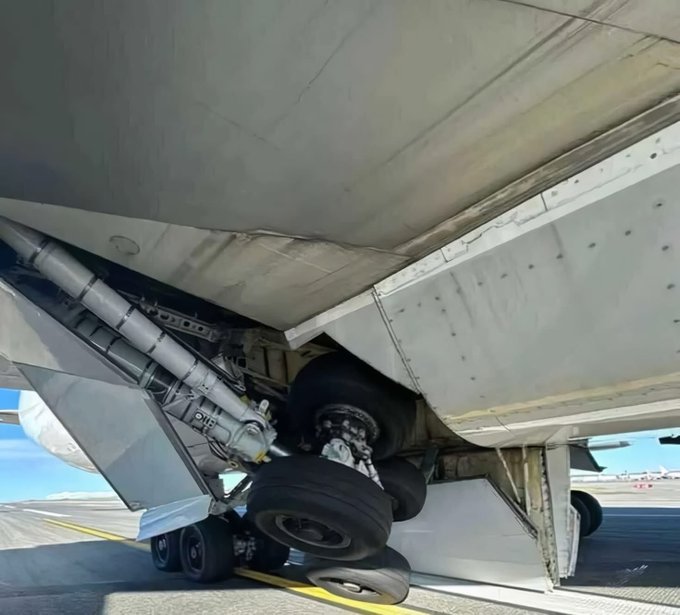
A 747 RH wing landing gear partway down. Looks like the other gear kept most of the plane off the ground, though the gear doors on the centreline look to have copped a bit of paint ground off them.

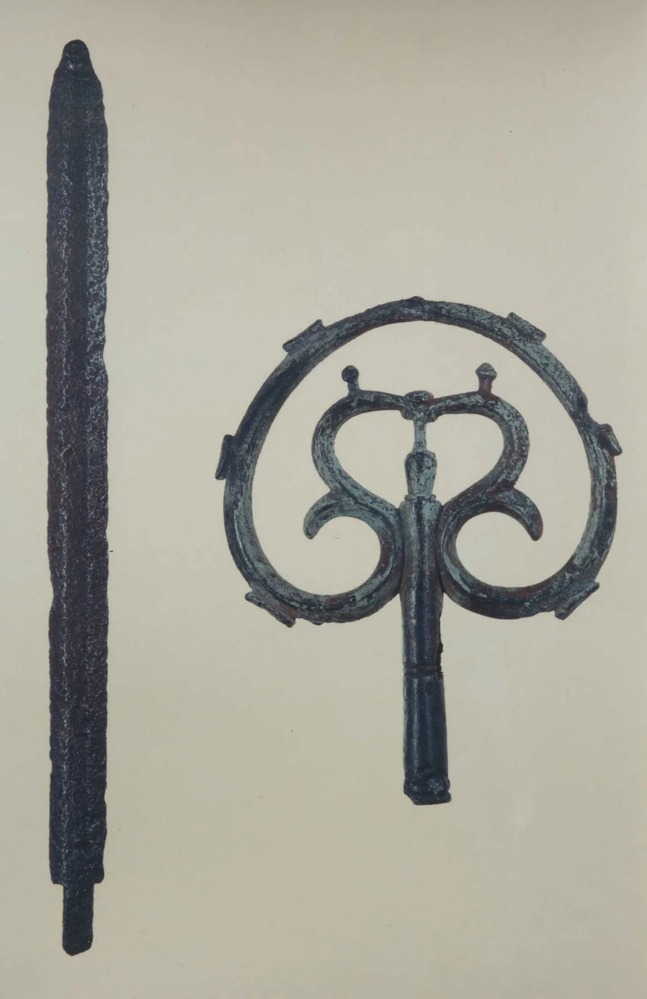
In 1907, Yoshitaro Shibasaki and his team climbed Mount Tsurugi, once thought to be Japan’s last unclimbed mountain. At the summit, they discovered a metal cane decoration and a sword, later found to have been left there over 1,000 years earlier
Riesending cave rescue
A rescue occurred at Riesending cave between 8–19 June 2014, in Bavaria, Germany, after a speleologist who had been exploring the cave in a group of three suffered a traumatic brain injury as a result of a rockfall. It became one of the largest cave rescues in history, involving more than 700 people for 11 days and an estimated cost of close to €1 million. The rescue left more than one ton of garbage inside the cave, which took six years to retrieve and dispose.
https://en.wikipedia.org/wiki/Riesending_cave_rescue
I also found in that link that they used a device named “cave-link system’, which transmits and receives signals through solid rock.
https://en.wikipedia.org/wiki/Through-the-earth_communications

A Mk 9 Spitfire, the first to have the 37 litre Rolls-Royce Griffon engine fitted instead of the usual 27 litre RR Merlin.
Spiny Norman said:

A Mk 9 Spitfire, the first to have the 37 litre Rolls-Royce Griffon engine fitted instead of the usual 27 litre RR Merlin.
Did Mr. Johnson really fly a Mk. 9?
Incredible example of a mine waste dam failure in the Hpakant jade mining area of Myanmar in late January 2024.
The video shows a progressive collapse that rapidly accelerates once the breach begins and is probably the best example of this type of failure to date.
Spiny Norman said:
Incredible example of a mine waste dam failure in the Hpakant jade mining area of Myanmar in late January 2024.The video shows a progressive collapse that rapidly accelerates once the breach begins and is probably the best example of this type of failure to date.
If I had been taking that video it would have been about 3 minutes shorter.
The Rev Dodgson said:
Spiny Norman said:
Incredible example of a mine waste dam failure in the Hpakant jade mining area of Myanmar in late January 2024.The video shows a progressive collapse that rapidly accelerates once the breach begins and is probably the best example of this type of failure to date.
If I had been taking that video it would have been about 3 minutes shorter.
And the camera held steadily, too?
Michael V said:
The Rev Dodgson said:
Spiny Norman said:
Incredible example of a mine waste dam failure in the Hpakant jade mining area of Myanmar in late January 2024.The video shows a progressive collapse that rapidly accelerates once the breach begins and is probably the best example of this type of failure to date.
If I had been taking that video it would have been about 3 minutes shorter.
And the camera held steadily, too?
I doubt it :)
The Rev Dodgson said:
Michael V said:
The Rev Dodgson said:If I had been taking that video it would have been about 3 minutes shorter.
And the camera held steadily, too?
I doubt it :)
Anyway, here’s my favourite landslide video, from Sweden:
The Rev Dodgson said:
The Rev Dodgson said:
Michael V said:And the camera held steadily, too?
I doubt it :)
Anyway, here’s my favourite landslide video, from Sweden:
Now that’s a landslide.
The Rev Dodgson said:
The Rev Dodgson said:
Michael V said:And the camera held steadily, too?
I doubt it :)
Anyway, here’s my favourite landslide video, from Sweden:
Bloody!
When the Dawson River in full flood breached the levee around the Baralaba coal mine:
The Rev Dodgson said:
Michael V said:
The Rev Dodgson said:
If I had been taking that video it would have been about 3 minutes shorter.
And the camera held steadily, too?
I doubt it :)
but it’s actually 29 – 24 seconds long
SCIENCE said:
The Rev Dodgson said:
Michael V said:
And the camera held steadily, too?
I doubt it :)
but it’s actually 29 – 24 seconds long
No idea where those numbers came from.
The Rev Dodgson said:
SCIENCE said:
The Rev Dodgson said:
I doubt it :)
but it’s actually 29 – 24 seconds long
No idea where those numbers came from.

Ulnar dimelia, or mirror hand, is an extremely rare congenital disorder where the radial side of the arm is missing, the ulna is duplicated, and the wrist, hand, and finger bones are mirrored, often resulting in symmetrical extra fingers.
Spiny Norman said:

Ulnar dimelia, or mirror hand, is an extremely rare congenital disorder where the radial side of the arm is missing, the ulna is duplicated, and the wrist, hand, and finger bones are mirrored, often resulting in symmetrical extra fingers.
Face Hugger hand, how weird
Spiny Norman said:

Ulnar dimelia, or mirror hand, is an extremely rare congenital disorder where the radial side of the arm is missing, the ulna is duplicated, and the wrist, hand, and finger bones are mirrored, often resulting in symmetrical extra fingers.
https://bigthink.com/starts-with-a-bang/light-gravitational-waves-arrive
Light and gravity travel at the same speed, but don’t arrive together
In 2017, a kilonova sent light and gravitational waves across the Universe. Here on Earth, there was a 1.7 second signal arrival delay. Why?
Bogsnorkler said:
https://bigthink.com/starts-with-a-bang/light-gravitational-waves-arriveLight and gravity travel at the same speed, but don’t arrive together
In 2017, a kilonova sent light and gravitational waves across the Universe. Here on Earth, there was a 1.7 second signal arrival delay. Why?
Interesting. Thanks.
Friends of Yellagonga Regional Park
Do you remember the mass death of magpies a few months back?
It is estimated that thousands of birds have fallen victim to magpie paralysis syndrome also known as black and white bird paralysis, with cases spiking drastically this past spring and summer.
The sharp increase in cases now extends as far north as Jurien Bay and south into Augusta. In some suburbs, dozens of magpie tribes have disappeared entirely.
The syndrome seems seasonal, mostly appearing in warmer, drier months, and while first detected in 2017, this year has seen a fivefold increase in cases. Despite testing, no definitive cause has been identified. Researchers are investigating environmental toxins and emerging pathogens.
There isn’t currently sufficient funding to fully investigate the syndrome, making public involvement essential. Early intervention improves survival rates around 60% of affected magpies can recover with intensive veterinary care and rehabilitation.
How you can help:
- If you see a magpie that is sick, injured, or grounded, contact:
• Wildcare Helpline: 9474 9055
• WA Wildlife: 9417 7105
- Report clusters of more than five sick or dead birds to the Department of Primary Industries and Regional Development: 1800 675 888
- Donate or volunteer at wildlife centres to support care and rehabilitation.
- Provide fresh water daily in warmer months to mitigate heat stress and dehydration.
- Avoid feeding magpies inappropriate foods such as bread, cheese, or mince. It’s best not to feed wildlife at all.
- Plant native trees and shrubs to provide habitat and shade, or use shade structures.
- Avoid using garden toxins, including pesticides, herbicides, and fertilisers.
- Keep domestic animals away from wildlife.
Magpies play a vital ecological role as insectivores, and their absence may have broader environmental impacts. Supporting wildlife carers and monitoring local populations is crucial to preserving these iconic birds and the ecosystems they inhabit
Bogsnorkler said:
Friends of Yellagonga Regional ParkDo you remember the mass death of magpies a few months back?
It is estimated that thousands of birds have fallen victim to magpie paralysis syndrome also known as black and white bird paralysis, with cases spiking drastically this past spring and summer.
The sharp increase in cases now extends as far north as Jurien Bay and south into Augusta. In some suburbs, dozens of magpie tribes have disappeared entirely.
The syndrome seems seasonal, mostly appearing in warmer, drier months, and while first detected in 2017, this year has seen a fivefold increase in cases. Despite testing, no definitive cause has been identified. Researchers are investigating environmental toxins and emerging pathogens.
There isn’t currently sufficient funding to fully investigate the syndrome, making public involvement essential. Early intervention improves survival rates around 60% of affected magpies can recover with intensive veterinary care and rehabilitation.
How you can help:
- If you see a magpie that is sick, injured, or grounded, contact:
• Wildcare Helpline: 9474 9055
• WA Wildlife: 9417 7105
- Report clusters of more than five sick or dead birds to the Department of Primary Industries and Regional Development: 1800 675 888
- Donate or volunteer at wildlife centres to support care and rehabilitation.
- Provide fresh water daily in warmer months to mitigate heat stress and dehydration.
- Avoid feeding magpies inappropriate foods such as bread, cheese, or mince. It’s best not to feed wildlife at all.
- Plant native trees and shrubs to provide habitat and shade, or use shade structures.
- Avoid using garden toxins, including pesticides, herbicides, and fertilisers.
- Keep domestic animals away from wildlife.Magpies play a vital ecological role as insectivores, and their absence may have broader environmental impacts. Supporting wildlife carers and monitoring local populations is crucial to preserving these iconic birds and the ecosystems they inhabit
I hadn’t heard of that before.
Peak Warming Man said:
Bogsnorkler said:
Friends of Yellagonga Regional ParkDo you remember the mass death of magpies a few months back?
It is estimated that thousands of birds have fallen victim to magpie paralysis syndrome also known as black and white bird paralysis, with cases spiking drastically this past spring and summer.
The sharp increase in cases now extends as far north as Jurien Bay and south into Augusta. In some suburbs, dozens of magpie tribes have disappeared entirely.
The syndrome seems seasonal, mostly appearing in warmer, drier months, and while first detected in 2017, this year has seen a fivefold increase in cases. Despite testing, no definitive cause has been identified. Researchers are investigating environmental toxins and emerging pathogens.
There isn’t currently sufficient funding to fully investigate the syndrome, making public involvement essential. Early intervention improves survival rates around 60% of affected magpies can recover with intensive veterinary care and rehabilitation.
How you can help:
- If you see a magpie that is sick, injured, or grounded, contact:
• Wildcare Helpline: 9474 9055
• WA Wildlife: 9417 7105
- Report clusters of more than five sick or dead birds to the Department of Primary Industries and Regional Development: 1800 675 888
- Donate or volunteer at wildlife centres to support care and rehabilitation.
- Provide fresh water daily in warmer months to mitigate heat stress and dehydration.
- Avoid feeding magpies inappropriate foods such as bread, cheese, or mince. It’s best not to feed wildlife at all.
- Plant native trees and shrubs to provide habitat and shade, or use shade structures.
- Avoid using garden toxins, including pesticides, herbicides, and fertilisers.
- Keep domestic animals away from wildlife.Magpies play a vital ecological role as insectivores, and their absence may have broader environmental impacts. Supporting wildlife carers and monitoring local populations is crucial to preserving these iconic birds and the ecosystems they inhabit
I hadn’t heard of that before.
No paralysed magpies in our back yard. They visit us often.
Michael V said:
Peak Warming Man said:
Bogsnorkler said:
Friends of Yellagonga Regional ParkDo you remember the mass death of magpies a few months back?
It is estimated that thousands of birds have fallen victim to magpie paralysis syndrome also known as black and white bird paralysis, with cases spiking drastically this past spring and summer.
The sharp increase in cases now extends as far north as Jurien Bay and south into Augusta. In some suburbs, dozens of magpie tribes have disappeared entirely.
The syndrome seems seasonal, mostly appearing in warmer, drier months, and while first detected in 2017, this year has seen a fivefold increase in cases. Despite testing, no definitive cause has been identified. Researchers are investigating environmental toxins and emerging pathogens.
There isn’t currently sufficient funding to fully investigate the syndrome, making public involvement essential. Early intervention improves survival rates around 60% of affected magpies can recover with intensive veterinary care and rehabilitation.
How you can help:
- If you see a magpie that is sick, injured, or grounded, contact:
• Wildcare Helpline: 9474 9055
• WA Wildlife: 9417 7105
- Report clusters of more than five sick or dead birds to the Department of Primary Industries and Regional Development: 1800 675 888
- Donate or volunteer at wildlife centres to support care and rehabilitation.
- Provide fresh water daily in warmer months to mitigate heat stress and dehydration.
- Avoid feeding magpies inappropriate foods such as bread, cheese, or mince. It’s best not to feed wildlife at all.
- Plant native trees and shrubs to provide habitat and shade, or use shade structures.
- Avoid using garden toxins, including pesticides, herbicides, and fertilisers.
- Keep domestic animals away from wildlife.Magpies play a vital ecological role as insectivores, and their absence may have broader environmental impacts. Supporting wildlife carers and monitoring local populations is crucial to preserving these iconic birds and the ecosystems they inhabit
I hadn’t heard of that before.
No paralysed magpies in our back yard. They visit us often.
Maggies ok here.
Peak Warming Man said:
Bogsnorkler said:
Friends of Yellagonga Regional ParkDo you remember the mass death of magpies a few months back?
It is estimated that thousands of birds have fallen victim to magpie paralysis syndrome also known as black and white bird paralysis, with cases spiking drastically this past spring and summer.
The sharp increase in cases now extends as far north as Jurien Bay and south into Augusta. In some suburbs, dozens of magpie tribes have disappeared entirely.
The syndrome seems seasonal, mostly appearing in warmer, drier months, and while first detected in 2017, this year has seen a fivefold increase in cases. Despite testing, no definitive cause has been identified. Researchers are investigating environmental toxins and emerging pathogens.
There isn’t currently sufficient funding to fully investigate the syndrome, making public involvement essential. Early intervention improves survival rates around 60% of affected magpies can recover with intensive veterinary care and rehabilitation.
How you can help:
- If you see a magpie that is sick, injured, or grounded, contact:
• Wildcare Helpline: 9474 9055
• WA Wildlife: 9417 7105
- Report clusters of more than five sick or dead birds to the Department of Primary Industries and Regional Development: 1800 675 888
- Donate or volunteer at wildlife centres to support care and rehabilitation.
- Provide fresh water daily in warmer months to mitigate heat stress and dehydration.
- Avoid feeding magpies inappropriate foods such as bread, cheese, or mince. It’s best not to feed wildlife at all.
- Plant native trees and shrubs to provide habitat and shade, or use shade structures.
- Avoid using garden toxins, including pesticides, herbicides, and fertilisers.
- Keep domestic animals away from wildlife.Magpies play a vital ecological role as insectivores, and their absence may have broader environmental impacts. Supporting wildlife carers and monitoring local populations is crucial to preserving these iconic birds and the ecosystems they inhabit
I hadn’t heard of that before.
Nor I.
Michael V said:
Peak Warming Man said:
Bogsnorkler said:
Friends of Yellagonga Regional ParkDo you remember the mass death of magpies a few months back?
It is estimated that thousands of birds have fallen victim to magpie paralysis syndrome also known as black and white bird paralysis, with cases spiking drastically this past spring and summer.
The sharp increase in cases now extends as far north as Jurien Bay and south into Augusta. In some suburbs, dozens of magpie tribes have disappeared entirely.
The syndrome seems seasonal, mostly appearing in warmer, drier months, and while first detected in 2017, this year has seen a fivefold increase in cases. Despite testing, no definitive cause has been identified. Researchers are investigating environmental toxins and emerging pathogens.
There isn’t currently sufficient funding to fully investigate the syndrome, making public involvement essential. Early intervention improves survival rates around 60% of affected magpies can recover with intensive veterinary care and rehabilitation.
How you can help:
- If you see a magpie that is sick, injured, or grounded, contact:
• Wildcare Helpline: 9474 9055
• WA Wildlife: 9417 7105
- Report clusters of more than five sick or dead birds to the Department of Primary Industries and Regional Development: 1800 675 888
- Donate or volunteer at wildlife centres to support care and rehabilitation.
- Provide fresh water daily in warmer months to mitigate heat stress and dehydration.
- Avoid feeding magpies inappropriate foods such as bread, cheese, or mince. It’s best not to feed wildlife at all.
- Plant native trees and shrubs to provide habitat and shade, or use shade structures.
- Avoid using garden toxins, including pesticides, herbicides, and fertilisers.
- Keep domestic animals away from wildlife.Magpies play a vital ecological role as insectivores, and their absence may have broader environmental impacts. Supporting wildlife carers and monitoring local populations is crucial to preserving these iconic birds and the ecosystems they inhabit
I hadn’t heard of that before.
No paralysed magpies in our back yard. They visit us often.
Same. I don’t feed them. They do eat my waaluts though.
Peak Warming Man said:
Bogsnorkler said:
Friends of Yellagonga Regional ParkDo you remember the mass death of magpies a few months back?
It is estimated that thousands of birds have fallen victim to magpie paralysis syndrome also known as black and white bird paralysis, with cases spiking drastically this past spring and summer.
The sharp increase in cases now extends as far north as Jurien Bay and south into Augusta. In some suburbs, dozens of magpie tribes have disappeared entirely.
The syndrome seems seasonal, mostly appearing in warmer, drier months, and while first detected in 2017, this year has seen a fivefold increase in cases. Despite testing, no definitive cause has been identified. Researchers are investigating environmental toxins and emerging pathogens.
There isn’t currently sufficient funding to fully investigate the syndrome, making public involvement essential. Early intervention improves survival rates around 60% of affected magpies can recover with intensive veterinary care and rehabilitation.
How you can help:
- If you see a magpie that is sick, injured, or grounded, contact:
• Wildcare Helpline: 9474 9055
• WA Wildlife: 9417 7105
- Report clusters of more than five sick or dead birds to the Department of Primary Industries and Regional Development: 1800 675 888
- Donate or volunteer at wildlife centres to support care and rehabilitation.
- Provide fresh water daily in warmer months to mitigate heat stress and dehydration.
- Avoid feeding magpies inappropriate foods such as bread, cheese, or mince. It’s best not to feed wildlife at all.
- Plant native trees and shrubs to provide habitat and shade, or use shade structures.
- Avoid using garden toxins, including pesticides, herbicides, and fertilisers.
- Keep domestic animals away from wildlife.Magpies play a vital ecological role as insectivores, and their absence may have broader environmental impacts. Supporting wildlife carers and monitoring local populations is crucial to preserving these iconic birds and the ecosystems they inhabit
I hadn’t heard of that before.
+1
Demonstration of the Cox Submarine Bolt Driving Gun devised as a means of inserting a fitting through the hull of a sunken vessel in order to supply it with air
The device was intended for submarine rescue as well as salvage and could pierce steel plate up to a thickness of 17mm.
A good video on the efforts of Captain PG Taylor, when the Southern Cross lost an engine in the middle of the Tasman Sea on the way to NZ with a load of mail on board. He had to climb on on the wing to get some oil from the dead engine to top up the engine on the other side as it was burning through it pretty quickly.
Spiny Norman said:
A good video on the efforts of Captain PG Taylor, when the Southern Cross lost an engine in the middle of the Tasman Sea on the way to NZ with a load of mail on board. He had to climb on on the wing to get some oil from the dead engine to top up the engine on the other side as it was burning through it pretty quickly.
Cool but you have posted it here beforehand, I believe. ;)
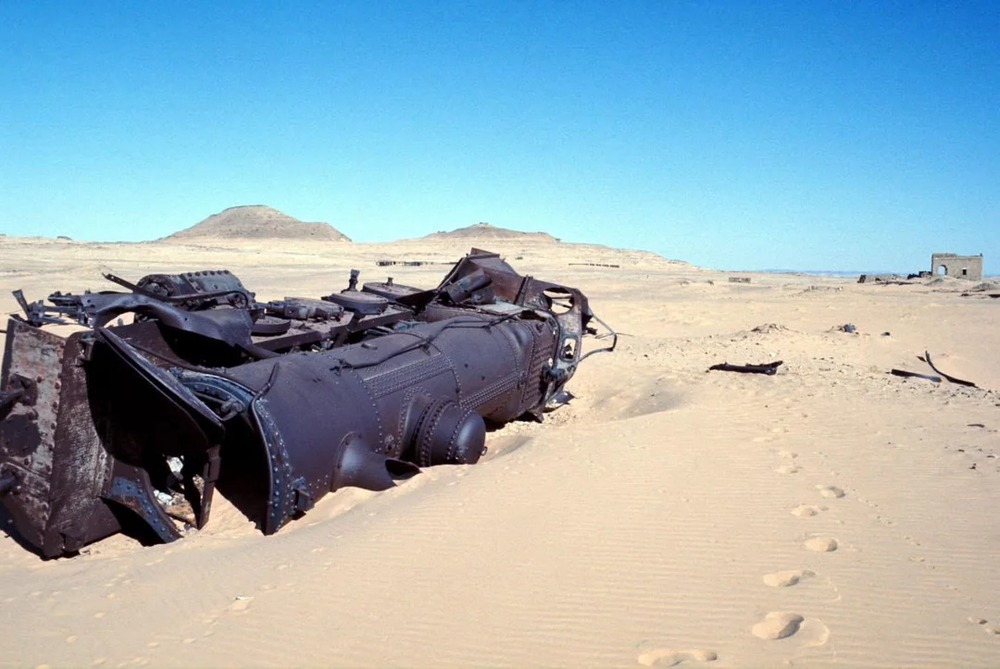
The Ottoman train, which was ambushed by Lawrence of Arabia in WW1 on the Hejaz railway, still stands in the middle of the desert today in Saudi Arabia.
Reaction between elemental aluminium and mercury gives off a very eye catching reaction that you can never get used to it. It’s called the amalgamation.
The main reason why mercury is not allowed on aircraft. At least not without the appropriate packaging.
https://royalsocietypublishing.org/doi/10.1098/rsos.250078
Australia’s First Peoples: hunters of extinct megafauna or Australia’s first fossil collectors
Abstract
Claims have been made about the presumed role of Australia’s First Peoples in the extinction of some of Australia’s megafauna. However, evidence used to suggest butchering may instead demonstrate fossil collection by Australia’s First Peoples. Using micro-computed tomography scanning and microscopic wear analysis, we analysed a cut sthenurine tibia from Mammoth Cave, Western Australia, previously interpreted as evidence of butchering. Our analyses suggest the cut occurred long after death and probably after fossilization. We investigated the possibility of long-distance transportation of a premolar of Zygomaturus trilobus gifted by First Peoples in the Kimberley region of Western Australia. This species is otherwise unknown from northern Australia but common in southern Australia. Using X-ray fluorescence, we tested the potential provenance of the premolar and found that it was elementally indistinguishable from Mammoth Cave premolars. These results suggest that First Peoples may have collected fossils in southern Australia before carrying them to the Kimberley region. A review of other recent claims of killing and/or butchering of extinct megafaunal species suggests they too may have been collected as fossils. We argue that fossils were valued, being collected and transported long distances by the First Peoples in Australia in all probability thousands of years before Europeans arrived on this continent.
Bogsnorkler said:
https://royalsocietypublishing.org/doi/10.1098/rsos.250078Australia’s First Peoples: hunters of extinct megafauna or Australia’s first fossil collectors
Abstract
Claims have been made about the presumed role of Australia’s First Peoples in the extinction of some of Australia’s megafauna. However, evidence used to suggest butchering may instead demonstrate fossil collection by Australia’s First Peoples. Using micro-computed tomography scanning and microscopic wear analysis, we analysed a cut sthenurine tibia from Mammoth Cave, Western Australia, previously interpreted as evidence of butchering. Our analyses suggest the cut occurred long after death and probably after fossilization. We investigated the possibility of long-distance transportation of a premolar of Zygomaturus trilobus gifted by First Peoples in the Kimberley region of Western Australia. This species is otherwise unknown from northern Australia but common in southern Australia. Using X-ray fluorescence, we tested the potential provenance of the premolar and found that it was elementally indistinguishable from Mammoth Cave premolars. These results suggest that First Peoples may have collected fossils in southern Australia before carrying them to the Kimberley region. A review of other recent claims of killing and/or butchering of extinct megafaunal species suggests they too may have been collected as fossils. We argue that fossils were valued, being collected and transported long distances by the First Peoples in Australia in all probability thousands of years before Europeans arrived on this continent.
Interesting abstract. I’ll have to read the entire paper.
Thanks.
Bogsnorkler said:
https://royalsocietypublishing.org/doi/10.1098/rsos.250078Australia’s First Peoples: hunters of extinct megafauna or Australia’s first fossil collectors
Abstract
Claims have been made about the presumed role of Australia’s First Peoples in the extinction of some of Australia’s megafauna. However, evidence used to suggest butchering may instead demonstrate fossil collection by Australia’s First Peoples. Using micro-computed tomography scanning and microscopic wear analysis, we analysed a cut sthenurine tibia from Mammoth Cave, Western Australia, previously interpreted as evidence of butchering. Our analyses suggest the cut occurred long after death and probably after fossilization. We investigated the possibility of long-distance transportation of a premolar of Zygomaturus trilobus gifted by First Peoples in the Kimberley region of Western Australia. This species is otherwise unknown from northern Australia but common in southern Australia. Using X-ray fluorescence, we tested the potential provenance of the premolar and found that it was elementally indistinguishable from Mammoth Cave premolars. These results suggest that First Peoples may have collected fossils in southern Australia before carrying them to the Kimberley region. A review of other recent claims of killing and/or butchering of extinct megafaunal species suggests they too may have been collected as fossils. We argue that fossils were valued, being collected and transported long distances by the First Peoples in Australia in all probability thousands of years before Europeans arrived on this continent.
Very, very interesting paper.
Mike Archer: I got it very wrong when I published the paper about Aboriginal people butchering megafauna, 45 years ago. Here’s why. There is now no definitive evidence indicating that this may have happened at this or any other location. New evidence backs the notion that fossils were collected, revered and likely traded or gifted far and wide.
(Good science: I got it wrong and have changed my conclusion now I have new evidence.)
Thanks for posting it.
Michael V said:
Bogsnorkler said:
https://royalsocietypublishing.org/doi/10.1098/rsos.250078Australia’s First Peoples: hunters of extinct megafauna or Australia’s first fossil collectors
Abstract
Claims have been made about the presumed role of Australia’s First Peoples in the extinction of some of Australia’s megafauna. However, evidence used to suggest butchering may instead demonstrate fossil collection by Australia’s First Peoples. Using micro-computed tomography scanning and microscopic wear analysis, we analysed a cut sthenurine tibia from Mammoth Cave, Western Australia, previously interpreted as evidence of butchering. Our analyses suggest the cut occurred long after death and probably after fossilization. We investigated the possibility of long-distance transportation of a premolar of Zygomaturus trilobus gifted by First Peoples in the Kimberley region of Western Australia. This species is otherwise unknown from northern Australia but common in southern Australia. Using X-ray fluorescence, we tested the potential provenance of the premolar and found that it was elementally indistinguishable from Mammoth Cave premolars. These results suggest that First Peoples may have collected fossils in southern Australia before carrying them to the Kimberley region. A review of other recent claims of killing and/or butchering of extinct megafaunal species suggests they too may have been collected as fossils. We argue that fossils were valued, being collected and transported long distances by the First Peoples in Australia in all probability thousands of years before Europeans arrived on this continent.
Very, very interesting paper.
Mike Archer: I got it very wrong when I published the paper about Aboriginal people butchering megafauna, 45 years ago. Here’s why. There is now no definitive evidence indicating that this may have happened at this or any other location. New evidence backs the notion that fossils were collected, revered and likely traded or gifted far and wide.
(Good science: I got it wrong and have changed my conclusion now I have new evidence.)
Thanks for posting it.
OK, but if megafauna were alive in Australia after the first humans arrived, why wouldn’t they kill and eat them?
(and the eaters and the eaten could go either way, I suppose).
Jet engines operate at temperatures exceeding the melting point of their components. This video explores the materials science behind turbine blade construction, revealing the intricate design and manufacturing processes. From initial wax molds to advanced nickel superalloys and single-crystal structures, learn how these blades withstand extreme conditions.
The Rev Dodgson said:
Michael V said:
Bogsnorkler said:
https://royalsocietypublishing.org/doi/10.1098/rsos.250078Australia’s First Peoples: hunters of extinct megafauna or Australia’s first fossil collectors
Abstract
Claims have been made about the presumed role of Australia’s First Peoples in the extinction of some of Australia’s megafauna. However, evidence used to suggest butchering may instead demonstrate fossil collection by Australia’s First Peoples. Using micro-computed tomography scanning and microscopic wear analysis, we analysed a cut sthenurine tibia from Mammoth Cave, Western Australia, previously interpreted as evidence of butchering. Our analyses suggest the cut occurred long after death and probably after fossilization. We investigated the possibility of long-distance transportation of a premolar of Zygomaturus trilobus gifted by First Peoples in the Kimberley region of Western Australia. This species is otherwise unknown from northern Australia but common in southern Australia. Using X-ray fluorescence, we tested the potential provenance of the premolar and found that it was elementally indistinguishable from Mammoth Cave premolars. These results suggest that First Peoples may have collected fossils in southern Australia before carrying them to the Kimberley region. A review of other recent claims of killing and/or butchering of extinct megafaunal species suggests they too may have been collected as fossils. We argue that fossils were valued, being collected and transported long distances by the First Peoples in Australia in all probability thousands of years before Europeans arrived on this continent.
Very, very interesting paper.
Mike Archer: I got it very wrong when I published the paper about Aboriginal people butchering megafauna, 45 years ago. Here’s why. There is now no definitive evidence indicating that this may have happened at this or any other location. New evidence backs the notion that fossils were collected, revered and likely traded or gifted far and wide.
(Good science: I got it wrong and have changed my conclusion now I have new evidence.)
Thanks for posting it.
OK, but if megafauna were alive in Australia after the first humans arrived, why wouldn’t they kill and eat them?
(and the eaters and the eaten could go either way, I suppose).
No good reason that I can think of.
Mike Archer explicitly doesn’t say that they didn’t in the paper. Only that one can no longer use his older paper to draw that conclusion, because there is new evidence, unavailable in 1980. And that new evidence indicates a different conclusion.
Michael V said:
The Rev Dodgson said:
Michael V said:Very, very interesting paper.
Mike Archer: I got it very wrong when I published the paper about Aboriginal people butchering megafauna, 45 years ago. Here’s why. There is now no definitive evidence indicating that this may have happened at this or any other location. New evidence backs the notion that fossils were collected, revered and likely traded or gifted far and wide.
(Good science: I got it wrong and have changed my conclusion now I have new evidence.)
Thanks for posting it.
OK, but if megafauna were alive in Australia after the first humans arrived, why wouldn’t they kill and eat them?
(and the eaters and the eaten could go either way, I suppose).
No good reason that I can think of.
Mike Archer explicitly doesn’t say that they didn’t in the paper. Only that one can no longer use his older paper to draw that conclusion, because there is new evidence, unavailable in 1980. And that new evidence indicates a different conclusion.
yes, I believe it was about scoring on some of the bones which looked like butchering marks. new evidence suggests these marks were made post fossilisation.

A rather impressive aurora.
Spiny Norman said:

A rather impressive aurora.
I’ll say.
Enhanced?
Michael V said:
Spiny Norman said:

A rather impressive aurora.
I’ll say.
Enhanced?
The photographer reckons not.
Spiny Norman said:
Michael V said:
Spiny Norman said:

A rather impressive aurora.
I’ll say.
Enhanced?
The photographer reckons not.
Wow!
Michael V said:
Spiny Norman said:
Michael V said:I’ll say.
Enhanced?
The photographer reckons not.
Wow!
No doubt due to the big solar flare-up recently.
It seem that our global emissions may have either peaked or plateaued.
Too late, but it’s good to see.
Spiny Norman said:
It seem that our global emissions may have either peaked or plateaued.
Too late, but it’s good to see.

No sign of it here.
Peak Warming Man said:
Spiny Norman said:
It seem that our global emissions may have either peaked or plateaued.
Too late, but it’s good to see.
No sign of it here.
I imagine there’s a substantial delay between us reducing emissions and the CO2 numbers decreasing. I’d guess a good decade or so … ?
Spiny Norman said:
Peak Warming Man said:
Spiny Norman said:
It seem that our global emissions may have either peaked or plateaued.
Too late, but it’s good to see.
No sign of it here.
I imagine there’s a substantial delay between us reducing emissions and the CO2 numbers decreasing. I’d guess a good decade or so … ?
Apart from which, if emissions are plateaued that means CO2 % will continue to increase at the same rate, rather than an increasing rate. It doesn’t mean the % rate of increase will reduce.
The Rev Dodgson said:
Spiny Norman said:
Peak Warming Man said:
No sign of it here.
I imagine there’s a substantial delay between us reducing emissions and the CO2 numbers decreasing. I’d guess a good decade or so … ?
Apart from which, if emissions are plateaued that means CO2 % will continue to increase at the same rate, rather than an increasing rate. It doesn’t mean the % rate of increase will reduce.
deity damn inflexion sheesh
Naked Mole Rats may be our saviour.
Peak Warming Man said:
Spiny Norman said:
It seem that our global emissions may have either peaked or plateaued.
Too late, but it’s good to see.
No sign of it here.
Yeah there is.
The gradient has stabilised. Just use your eyes and look at the thing you’ve posted.
Of course it can’t actually come down unless and until emissions are actually negative, ie the carbon sinks (e.g. reforestation) exceed the carbon sources.
I’m an optimistic fellow but I don’t forsee this happening in my lifetime.
dv said:
Of course it can’t actually come down unless and until emissions are actually negative, ie the carbon sinks (e.g. reforestation) exceed the carbon sources.
I’m an optimistic fellow but I don’t forsee this happening in my lifetime.
Nor mine despite growing millions of trees.
Sorry PWM that was a bit rude of me, reading it back my tone was not suitable. My point is that emissions rate will correspond to the rate of increase of CO2 in the atmosphere, not to the existing level thereof.
The Fluid That’s a Liquid AND a Gas
Supercritical CO2 is used to extract caffeine from coffee, but this strange phase of carbon dioxide is really weird
Spiny Norman said:
The Fluid That’s a Liquid AND a GasSupercritical CO2 is used to extract caffeine from coffee, but this strange phase of carbon dioxide is really weird
Yesterday a grade 3 kid argued that petrol was both a gas and a liquid, because only gases make fire, but petrol is clearly a liquid.
Divine Angel said:
Spiny Norman said:
The Fluid That’s a Liquid AND a GasSupercritical CO2 is used to extract caffeine from coffee, but this strange phase of carbon dioxide is really weird
Yesterday a grade 3 kid argued that petrol was both a gas and a liquid, because only gases make fire, but petrol is clearly a liquid.
He’s kinda right, as when petrol burns it’s not the liquid it’s the gas that’s combusting.
Spiny Norman said:
Divine Angel said:
Spiny Norman said:
The Fluid That’s a Liquid AND a GasSupercritical CO2 is used to extract caffeine from coffee, but this strange phase of carbon dioxide is really weird
Yesterday a grade 3 kid argued that petrol was both a gas and a liquid, because only gases make fire, but petrol is clearly a liquid.
He’s kinda right, as when petrol burns it’s not the liquid it’s the gas that’s combusting.
It was only meant to be something to keep the kids distracted while the teacher was dealing with a situation, so I wasn’t going to get too deeply into it. Kids’ logic is amazing even when the answer is incorrect. But I did realise afterwards I have never given the matter of combustion any thought. I know the triangle of fire and that’s about it.
Divine Angel said:
Spiny Norman said:
The Fluid That’s a Liquid AND a Gas
Supercritical CO2 is used to extract caffeine from coffee, but this strange phase of carbon dioxide is really weird
Yesterday a grade 3 kid argued that petrol was both a gas and a liquid, because only gases make fire, but petrol is clearly a liquid.
Now Do Gasoline
Divine Angel said:
Spiny Norman said:
Divine Angel said:
Yesterday a grade 3 kid argued that petrol was both a gas and a liquid, because only gases make fire, but petrol is clearly a liquid.
He’s kinda right, as when petrol burns it’s not the liquid it’s the gas that’s combusting.
It was only meant to be something to keep the kids distracted while the teacher was dealing with a situation, so I wasn’t going to get too deeply into it. Kids’ logic is amazing even when the answer is incorrect. But I did realise afterwards I have never given the matter of combustion any thought. I know the triangle of fire and that’s about it.
are combusting and being fire the same andor different
SCIENCE said:
Divine Angel said:
Spiny Norman said:
He’s kinda right, as when petrol burns it’s not the liquid it’s the gas that’s combusting.
It was only meant to be something to keep the kids distracted while the teacher was dealing with a situation, so I wasn’t going to get too deeply into it. Kids’ logic is amazing even when the answer is incorrect. But I did realise afterwards I have never given the matter of combustion any thought. I know the triangle of fire and that’s about it.
are combusting and being fire the same andor different
https://www.reddit.com/r/oddlysatisfying/s/aWFrq8h4mL
Interesting footage of a Vickers Wellington DWI. It has a 48 ft electromagnetic ring under the fuselage, powered by a Ford V8 generator(initially) in the bomb bay. Flew at 60 ft to safely trigger German magnetic mines. Has earmarks of true British madlad engineering.
Still images from the airport security camera at the airport where the MD-11 recently crashed.
You can see the #1 engine rotate upwards and throw debris into the #2 engine. :(

Divine Angel said:
SCIENCE said:
Divine Angel said:
It was only meant to be something to keep the kids distracted while the teacher was dealing with a situation, so I wasn’t going to get too deeply into it. Kids’ logic is amazing even when the answer is incorrect. But I did realise afterwards I have never given the matter of combustion any thought. I know the triangle of fire and that’s about it.
are combusting and being fire the same andor different
don’t know about the “everything” part but nice
also it seems to cool down too fast, they need to do the same thing with a ball of plutonium
In 1959, a psychiatric hospital in Ypsilanti, Michigan became the setting for one of the strangest experiments in psychology. Three men arrived with the same unshakeable belief. Each one was certain he was Jesus Christ, each one convinced that the other two were confused. Doctors wondered what would happen if these men were placed together and encouraged to interact day after day.
The hospital arranged group sessions where the three sat in the same room, spoke about their identities, and challenged one another’s stories. Conversations bounced between calm reasoning and heated arguments as each tried to prove his truth. Instead of changing their minds, the men often created new explanations to defend their beliefs, turning the sessions into a mix of confusion, logic, and unexpected humor. The experiment highlighted how powerful personal realities can be, even when directly contradicted.
Their unusual meetings drew attention within the hospital and eventually caught the interest of psychologist Milton Rokeach, who documented everything. In 1964, he released a book titled The Three Christs of Ypsilanti, capturing the strange, sometimes uncomfortable, and often fascinating interactions between the three men. The story remains one of the most controversial case studies in the history of mental health research.
JudgeMental said:
In 1959, a psychiatric hospital in Ypsilanti, Michigan became the setting for one of the strangest experiments in psychology. Three men arrived with the same unshakeable belief. Each one was certain he was Jesus Christ, each one convinced that the other two were confused. Doctors wondered what would happen if these men were placed together and encouraged to interact day after day.The hospital arranged group sessions where the three sat in the same room, spoke about their identities, and challenged one another’s stories. Conversations bounced between calm reasoning and heated arguments as each tried to prove his truth. Instead of changing their minds, the men often created new explanations to defend their beliefs, turning the sessions into a mix of confusion, logic, and unexpected humor. The experiment highlighted how powerful personal realities can be, even when directly contradicted.
Their unusual meetings drew attention within the hospital and eventually caught the interest of psychologist Milton Rokeach, who documented everything. In 1964, he released a book titled The Three Christs of Ypsilanti, capturing the strange, sometimes uncomfortable, and often fascinating interactions between the three men. The story remains one of the most controversial case studies in the history of mental health research.
Pope: Yes one! Now will you please tell me what in God’s name possessed you to paint this with three Christs in it?
Michelangelo: It works, mate!
Pope: It does not work!
Michelangelo: It does! It looks great! The fat one balances the two skinny ones.
Pope: There was only one Saviour!
Spiny Norman said:
Still images from the airport security camera at the airport where the MD-11 recently crashed.
You can see the #1 engine rotate upwards and throw debris into the #2 engine. :(
!!!
What a strange thing to happen.
JudgeMental said:
JudgeMental said:
In 1959, a psychiatric hospital in Ypsilanti, Michigan became the setting for one of the strangest experiments in psychology. Three men arrived with the same unshakeable belief. Each one was certain he was Jesus Christ, each one convinced that the other two were confused. Doctors wondered what would happen if these men were placed together and encouraged to interact day after day.
The hospital arranged group sessions where the three sat in the same room, spoke about their identities, and challenged one another’s stories. Conversations bounced between calm reasoning and heated arguments as each tried to prove his truth. Instead of changing their minds, the men often created new explanations to defend their beliefs, turning the sessions into a mix of confusion, logic, and unexpected humor. The experiment highlighted how powerful personal realities can be, even when directly contradicted.
Their unusual meetings drew attention within the hospital and eventually caught the interest of psychologist Milton Rokeach, who documented everything. In 1964, he released a book titled The Three Christs of Ypsilanti, capturing the strange, sometimes uncomfortable, and often fascinating interactions between the three men. The story remains one of the most controversial case studies in the history of mental health research.
Pope: Yes one! Now will you please tell me what in God’s name possessed you to paint this with three Christs in it?
Michelangelo: It works, mate!
Pope: It does not work!
Michelangelo: It does! It looks great! The fat one balances the two skinny ones.
Pope: There was only one Saviour!
so
The Three Christs of Ypsilanti was first published in 1964. Rokeach came to think that his research had been manipulative and unethical, and offered an apology in the afterword of the 1984 edition of the book: “I really had no right, even in the name of science, to play God and interfere round the clock with their daily lives.” The book was re-published by New York Review Books in 2011.
apparently his own personal reality wasn’t as strong as the godlike ones of his care consumers
JudgeMental said:
JudgeMental said:
In 1959, a psychiatric hospital in Ypsilanti, Michigan became the setting for one of the strangest experiments in psychology. Three men arrived with the same unshakeable belief. Each one was certain he was Jesus Christ, each one convinced that the other two were confused. Doctors wondered what would happen if these men were placed together and encouraged to interact day after day.The hospital arranged group sessions where the three sat in the same room, spoke about their identities, and challenged one another’s stories. Conversations bounced between calm reasoning and heated arguments as each tried to prove his truth. Instead of changing their minds, the men often created new explanations to defend their beliefs, turning the sessions into a mix of confusion, logic, and unexpected humor. The experiment highlighted how powerful personal realities can be, even when directly contradicted.
Their unusual meetings drew attention within the hospital and eventually caught the interest of psychologist Milton Rokeach, who documented everything. In 1964, he released a book titled The Three Christs of Ypsilanti, capturing the strange, sometimes uncomfortable, and often fascinating interactions between the three men. The story remains one of the most controversial case studies in the history of mental health research.
Pope: Yes one! Now will you please tell me what in God’s name possessed you to paint this with three Christs in it?
Michelangelo: It works, mate!
Pope: It does not work!
Michelangelo: It does! It looks great! The fat one balances the two skinny ones.
Pope: There was only one Saviour!
It’s the Trinity!
JudgeMental said:
In 1959, a psychiatric hospital in Ypsilanti, Michigan became the setting for one of the strangest experiments in psychology. Three men arrived with the same unshakeable belief. Each one was certain he was Jesus Christ
Dire Straits, “Industrial Disease”
“Two men say they’re Jesus, one of the must be wrong.”
How many people claim to be reincarnated Judas?
A Bristol Blenheim Mk VI aircraft of RAF Squadron 113 crashed during take off at Magwe, Burma (stationed with the Flying Tigers) on Feb 27th, 1942. The airfield had previously suffered Japanese bombing raids and in the following days they would be forced to withdraw.
Statistically, there’s a reliable way to predict a domestic violence homicide like Hannah Clarke’s
When researchers in Queensland catalogued data from seven years of intimate-partner killings, they found one thing common to more than half of those cases – a victim’s own sense of fear about their impending death.
Statistically, the most reliable way to predict a domestic violence homicide is to believe the victim.
Hannah Clarke had that same intuition six weeks before she was murdered.
“I have been unhappy and wanting to leave the relationship but I have been terrified of his reaction and what that would mean to our children,” she wrote in an affidavit seeking a domestic violence order.
“I believe that Rowan is totally capable of killing himself and killing our children to get back at me. This scares me beyond words.”
Kardell Lomas was so frightened of Traven Fisher that she passed a note to staff at a support service, asking them to call police. She sought help from government-funded agencies more than 20 times before Fisher killed her.
And so Grok cannot be trusted. Check out the two different answers for nearly the same question.


Though we all knew it couldn’t really be trusted anyway.
Divine Angel said:
How many people claim to be reincarnated Judas?
NFI, sorry.
Spiny Norman said:
And so Grok cannot be trusted. Check out the two different answers for nearly the same question.

Though we all knew it couldn’t really be trusted anyway.
Proof positive…
Spiny Norman said:
A Bristol Blenheim Mk VI aircraft of RAF Squadron 113 crashed during take off at Magwe, Burma (stationed with the Flying Tigers) on Feb 27th, 1942. The airfield had previously suffered Japanese bombing raids and in the following days they would be forced to withdraw.
Bloody!
Spiny Norman said:
Interesting footage of a Vickers Wellington DWI. It has a 48 ft electromagnetic ring under the fuselage, powered by a Ford V8 generator(initially) in the bomb bay. Flew at 60 ft to safely trigger German magnetic mines. Has earmarks of true British madlad engineering.
Interesting, ta.
Spiny Norman said:
Statistically, there’s a reliable way to predict a domestic violence homicide like Hannah Clarke’sWhen researchers in Queensland catalogued data from seven years of intimate-partner killings, they found one thing common to more than half of those cases – a victim’s own sense of fear about their impending death.
Statistically, the most reliable way to predict a domestic violence homicide is to believe the victim.
Hannah Clarke had that same intuition six weeks before she was murdered.
“I have been unhappy and wanting to leave the relationship but I have been terrified of his reaction and what that would mean to our children,” she wrote in an affidavit seeking a domestic violence order.
“I believe that Rowan is totally capable of killing himself and killing our children to get back at me. This scares me beyond words.”
Kardell Lomas was so frightened of Traven Fisher that she passed a note to staff at a support service, asking them to call police. She sought help from government-funded agencies more than 20 times before Fisher killed her.
Hannah Clark’s story saddened me so much that’s when I started to think about how domestic violence is driven by emotional intelligence, specifically the ability of emotional control.
Rowan Baxter did not have that emotional control to keep calm that counselling might have provided instead he had a desire to control her completely like owning her like an object.
Rosie Batty’s case is similar when Greg Anderson murdered his son at that cricket match.
They want to inflict emotional damage due to twisted internal thoughts.
Tau.Neutrino said:
Spiny Norman said:
Statistically, there’s a reliable way to predict a domestic violence homicide like Hannah Clarke’sWhen researchers in Queensland catalogued data from seven years of intimate-partner killings, they found one thing common to more than half of those cases – a victim’s own sense of fear about their impending death.
Statistically, the most reliable way to predict a domestic violence homicide is to believe the victim.
Hannah Clarke had that same intuition six weeks before she was murdered.
“I have been unhappy and wanting to leave the relationship but I have been terrified of his reaction and what that would mean to our children,” she wrote in an affidavit seeking a domestic violence order.
“I believe that Rowan is totally capable of killing himself and killing our children to get back at me. This scares me beyond words.”
Kardell Lomas was so frightened of Traven Fisher that she passed a note to staff at a support service, asking them to call police. She sought help from government-funded agencies more than 20 times before Fisher killed her.
Hannah Clark’s story saddened me so much that’s when I started to think about how domestic violence is driven by emotional intelligence, specifically the ability of emotional control.
Rowan Baxter did not have that emotional control to keep calm that counselling might have provided instead he had a desire to control her completely like owning her like an object.
Rosie Batty’s case is similar when Greg Anderson murdered his son at that cricket match.
They want to inflict emotional damage due to twisted internal thoughts.
Left out a bit.
Hannah Clark’s story saddened me so much that’s when I started to think about how domestic violence is driven by emotional intelligence, specifically the ability of emotional control to stay calm.
A very bizarre and unlikely gun death. All completely by accident and extremely bad luck.
https://www.reddit.com/r/interestingasfuck/comments/1p2aznd/wrong_place_at_the_wrong_time/
When helicopters land in desert zones, sand grains strike the fast-spinning metal blades, creating a ring of white-hot sparks around the rotor. Called the Kopp-Etchells effect, it’s often seen during night operations.



Spiny Norman said:
When helicopters land in desert zones, sand grains strike the fast-spinning metal blades, creating a ring of white-hot sparks around the rotor. Called the Kopp-Etchells effect, it’s often seen during night operations.
Have seen similar. Ghostly bluish/greenish aura around the ‘rotor rings’ of helicopters in humid climates at night.
Spiny Norman said:
When helicopters land in desert zones, sand grains strike the fast-spinning metal blades, creating a ring of white-hot sparks around the rotor. Called the Kopp-Etchells effect, it’s often seen during night operations.
I guess the stealth paint is irrelevant at that point?
Kingy said:
Spiny Norman said:
When helicopters land in desert zones, sand grains strike the fast-spinning metal blades, creating a ring of white-hot sparks around the rotor. Called the Kopp-Etchells effect, it’s often seen during night operations.
I guess the stealth paint is irrelevant at that point?
Pretty much.
Though no type of paint is going to silence the large amount of noise all choppers make.
If the Earth was flat, this wouldn’t happen
https://www.reddit.com/r/Damnthatsinteresting/s/IwAEZYHvWB
Divine Angel said:
If the Earth was flat, this wouldn’t happenhttps://www.reddit.com/r/Damnthatsinteresting/s/IwAEZYHvWB
Roundearthers are always coming up with new way to try and prove their theory.
Divine Angel said:
If the Earth was flat, this wouldn’t happenhttps://www.reddit.com/r/Damnthatsinteresting/s/IwAEZYHvWB
Not a cloudy place
Divine Angel said:
If the Earth was flat, this wouldn’t happenhttps://www.reddit.com/r/Damnthatsinteresting/s/IwAEZYHvWB
Nice.
:)
Abandoned Soviet Space Shuttles (Buran) | Caught By Russian Military!
Join us on an extraordinary journey into the deserts of western Kazakhstan as we uncover one of the Soviet Union’s most ambitious projects—the abandoned Buran space shuttles. Hidden within the vast Baikonur Cosmodrome, these relics of Cold War innovation stand as a haunting reminder of a bygone era.
Our adventure begins with an intense trek through scorching heat and endless dunes, leading us to the iconic hangar where these forgotten giants rest. Along the way, we unravel the incredible story of the Buran program, the Soviet response to NASA’s Space Shuttle, and the groundbreaking achievements that were lost to history.
But this mission was anything but easy. From unexpected encounters with guards to a tense stint at the local police station, the risks we faced were as monumental as the shuttles themselves.

The USS Harry S Truman (CVN 75) putting on a water show. This is HST’s washdown system in action, built to decontaminate the ship after an NBC attack. Seawater is pumped up and blasted through flush deck nozzles to scrub the entire flight deck clean. At full power, the system can push 20,000 gallons a minute across the deck!
Spiny Norman said:

The USS Harry S Truman (CVN 75) putting on a water show. This is HST’s washdown system in action, built to decontaminate the ship after an NBC attack. Seawater is pumped up and blasted through flush deck nozzles to scrub the entire flight deck clean. At full power, the system can push 20,000 gallons a minute across the deck!
Them things is big.
I recall speaking with a Chief Petty Officer from the USS Nimitz.
He said that he’d been aboard for more than two months, his first time in a supercarrier after a career in destroyers and cruisers, and he hadn’t learnt more than how to get from where he slept to where he ate to where he worked.
captain_spalding said:
Spiny Norman said:

The USS Harry S Truman (CVN 75) putting on a water show. This is HST’s washdown system in action, built to decontaminate the ship after an NBC attack. Seawater is pumped up and blasted through flush deck nozzles to scrub the entire flight deck clean. At full power, the system can push 20,000 gallons a minute across the deck!
Them things is big.
I recall speaking with a Chief Petty Officer from the USS Nimitz.
He said that he’d been aboard for more than two months, his first time in a supercarrier after a career in destroyers and cruisers, and he hadn’t learnt more than how to get from where he slept to where he ate to where he worked.
If humanity manages to get past the likes of trump and the like, we as humans just might get to build large spaceships.
They will probably be a cross between a supercarrier and a boomer sub.
I think there is a lego cartoon somewhere where Darth whatsisname complains about the trays in the galley.
Kingy said:
captain_spalding said:
Spiny Norman said:

The USS Harry S Truman (CVN 75) putting on a water show. This is HST’s washdown system in action, built to decontaminate the ship after an NBC attack. Seawater is pumped up and blasted through flush deck nozzles to scrub the entire flight deck clean. At full power, the system can push 20,000 gallons a minute across the deck!
Them things is big.
I recall speaking with a Chief Petty Officer from the USS Nimitz.
He said that he’d been aboard for more than two months, his first time in a supercarrier after a career in destroyers and cruisers, and he hadn’t learnt more than how to get from where he slept to where he ate to where he worked.
If humanity manages to get past the likes of trump and the like, we as humans just might get to build large spaceships.
They will probably be a cross between a supercarrier and a boomer sub.
I think there is a lego cartoon somewhere where Darth whatsisname complains about the trays in the galley.
Suzy Eddie Izzard – Death Star Canteen … https://www.youtube.com/watch?v=Sv5iEK-IEzw

I Love the Apollo, Skylab, Apollo-Soyuz and Artemis Programs ·
Lyndon Sharp
This rare construction photo shows the Lunar Module’s descent stage completely uncovered,
revealing machinery that is normally hidden for the rest of the spacecraft’s life. With the skirt
panels and landing gear not yet installed, you can see the full web of pipes, valves, and trusses
that feed and support the descent engine, including helium lines, fuel and oxidizer plumbing,
and the gimbal structure. All four equipment quads are exposed at once, showing their tanks,
batteries, electronics, and radar units—details never visible on a finished LM.
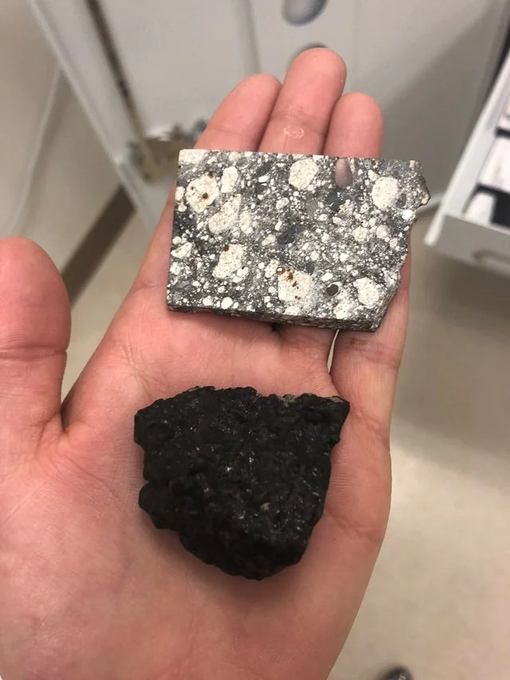
A piece of the Moon and Mars on one hand.
An Ilyushin Il-76 ‘Candid’ closing the rear freight doors. I’ve not seen this before, it’s quite impressively Russian.
What happens when you divide by zero on a mechanical 1950s calculator?
In the 1950s, mechanical calculators didn’t have the safety checks of modern machines.
So when someone tried to divide a number by zero, the calculator didn’t display an error. Instead, it would enter into a chaotic loop, spinning its gears uncontrollably.
This endless motion happened because the machine was trying to calculate something undefined, and it simply didn’t know when to stop.
Climbing the world’s highest vertical ladder between two mountains above 5000 ft in China.
https://x.com/i/status/1995057162167705931
Fark that!!
Spiny Norman said:

A piece of the Moon and Mars on one hand.
Which is which?

The Nile river and Red Sea as viewed from the ISS.
roughbarked said:
Spiny Norman said:

A piece of the Moon and Mars on one hand.
Which is which?
I reckon the hand is underneath.
Spiny Norman said:
What happens when you divide by zero on a mechanical 1950s calculator?In the 1950s, mechanical calculators didn’t have the safety checks of modern machines.
So when someone tried to divide a number by zero, the calculator didn’t display an error. Instead, it would enter into a chaotic loop, spinning its gears uncontrollably.
This endless motion happened because the machine was trying to calculate something undefined, and it simply didn’t know when to stop.
A USS crruiser had to be towed back to port because someone attempted to divide by 0.
roughbarked said:
Spiny Norman said:

A piece of the Moon and Mars on one hand.
Which is which?
black is mars meteorite.
Peak Warming Man said:
roughbarked said:
Spiny Norman said:

A piece of the Moon and Mars on one hand.
Which is which?
I reckon the hand is underneath.
I see. There it is.
JudgeMental said:
roughbarked said:
Spiny Norman said:

A piece of the Moon and Mars on one hand.
Which is which?
black is mars meteorite.
That’s what I was guessing.
Spiny Norman said:

A piece of the Moon and Mars on one hand.
ref?
The British ‘Fake’ Coal That Destroyed German Locomotives From The Inside.
During WWII, British saboteurs created one of the simplest yet most devastating weapons of the war: fake coal. These hollow “lumps” were packed with explosives and slipped into German locomotive fuel piles. Once shoveled into a firebox, they detonated from inside the engine, wrecking boilers, destroying machinery, and disabling entire rail networks with a single blast.
This video breaks down how the fake coal was made, how operatives planted it, and why German rail crews never saw the attacks coming until their locomotives tore themselves apart.
Michael V said:
Spiny Norman said:

A piece of the Moon and Mars on one hand.
ref?
Twitter, that’s all I’ve got sorry.
Spiny Norman said:
Michael V said:
Spiny Norman said:

A piece of the Moon and Mars on one hand.
ref?
Twitter, that’s all I’ve got sorry.
AI is funny
AI Overview
The image displays two types of lunar meteorites, which are fragments of the Moon that landed on Earth after being ejected by an impact event.
The top rock is a slice of a lunar feldspathic breccia, a common type of lunar meteorite composed of various mineral and rock fragments fused together, typically originating from the bright, ancient highlands of the Moon.
The bottom rock is likely a mare basalt, a dark, fine-grained volcanic rock that makes up the Moon’s dark plains (maria).
The contrast highlights the diverse geology of the Moon, with the light-colored breccia representing the highlands and the dark basalt representing the maria.
Studying such meteorites provides crucial insights into the Moon’s geological history and composition, as they represent materials from regions not sampled by lunar missions.
Deeper AI
The two rock samples shown in the image are genuine meteorites from the Moon and Mars. They were originally ejected from their respective celestial bodies by asteroid impacts and eventually fell to Earth.
Top Sample (White and black breccia): This is a lunar meteorite (moon rock). It is a type of breccia, which means it is composed of broken and crushed fragments of minerals and other rocks (like anorthosite) cemented together.
Bottom Sample (Dark, rough rock): This is a Martian meteorite (Mars rock). It is an igneous rock, likely basaltic in nature (known as shergottite), which formed from volcanic activity on the surface of Mars.
Holding both specimens together offers a rare connection to two different celestial bodies, providing scientists with invaluable insights into their unique geology and history.
JudgeMental said:
roughbarked said:
Spiny Norman said:

A piece of the Moon and Mars on one hand.
Which is which?
black is mars meteorite.
so… not red then.
JudgeMental said:
Spiny Norman said:
Michael V said:ref?
Twitter, that’s all I’ve got sorry.
AI is funny
AI Overview
The image displays two types of lunar meteorites, which are fragments of the Moon that landed on Earth after being ejected by an impact event.The top rock is a slice of a lunar feldspathic breccia, a common type of lunar meteorite composed of various mineral and rock fragments fused together, typically originating from the bright, ancient highlands of the Moon.
The bottom rock is likely a mare basalt, a dark, fine-grained volcanic rock that makes up the Moon’s dark plains (maria).
The contrast highlights the diverse geology of the Moon, with the light-colored breccia representing the highlands and the dark basalt representing the maria.
Studying such meteorites provides crucial insights into the Moon’s geological history and composition, as they represent materials from regions not sampled by lunar missions.
Deeper AI
The two rock samples shown in the image are genuine meteorites from the Moon and Mars. They were originally ejected from their respective celestial bodies by asteroid impacts and eventually fell to Earth.
Top Sample (White and black breccia): This is a lunar meteorite (moon rock). It is a type of breccia, which means it is composed of broken and crushed fragments of minerals and other rocks (like anorthosite) cemented together.
Bottom Sample (Dark, rough rock): This is a Martian meteorite (Mars rock). It is an igneous rock, likely basaltic in nature (known as shergottite), which formed from volcanic activity on the surface of Mars.
Holding both specimens together offers a rare connection to two different celestial bodies, providing scientists with invaluable insights into their unique geology and history.
Great reply, thanks!
Arts said:
JudgeMental said:
roughbarked said:
Which is which?
black is mars meteorite.
so… not red then.
uh dark orange
JudgeMental said:
Spiny Norman said:
Michael V said:ref?
Twitter, that’s all I’ve got sorry.
AI is funny
AI Overview
The image displays two types of lunar meteorites, which are fragments of the Moon that landed on Earth after being ejected by an impact event.The top rock is a slice of a lunar feldspathic breccia, a common type of lunar meteorite composed of various mineral and rock fragments fused together, typically originating from the bright, ancient highlands of the Moon.
The bottom rock is likely a mare basalt, a dark, fine-grained volcanic rock that makes up the Moon’s dark plains (maria).
The contrast highlights the diverse geology of the Moon, with the light-colored breccia representing the highlands and the dark basalt representing the maria.
Studying such meteorites provides crucial insights into the Moon’s geological history and composition, as they represent materials from regions not sampled by lunar missions.
Deeper AI
The two rock samples shown in the image are genuine meteorites from the Moon and Mars. They were originally ejected from their respective celestial bodies by asteroid impacts and eventually fell to Earth.
Top Sample (White and black breccia): This is a lunar meteorite (moon rock). It is a type of breccia, which means it is composed of broken and crushed fragments of minerals and other rocks (like anorthosite) cemented together.
Bottom Sample (Dark, rough rock): This is a Martian meteorite (Mars rock). It is an igneous rock, likely basaltic in nature (known as shergottite), which formed from volcanic activity on the surface of Mars.
Holding both specimens together offers a rare connection to two different celestial bodies, providing scientists with invaluable insights into their unique geology and history.
Gourd!
I’ll say.
Arts said:
JudgeMental said:
roughbarked said:Which is which?
black is mars meteorite.
so… not red then.
the red has faded due to exposure to ultraviolet light on its travels to Earth. Just like the red fades on those posters in butchers shops where you end up with blue meat..
SCIENCE said:
Arts said:
JudgeMental said:
black is mars meteorite.
so… not red then.
uh dark orange
Isn’t that only a thin surface layer
I… I just cant with the way science lies to us all the time…
Mars is the Red Planet
we have Blue Mountains
the earth is a ball…
it’s exhausting…
How Buster Keaton’s 1924 stunt was made in Sherlock Jr., he escapes pursuers by seemingly jumping straight through the body of a woman.
https://x.com/i/status/1995104427334660188
Nicely done.
Arts said:
I… I just cant with the way science lies to us all the time…
Mars is the Red Planet
we have Blue Mountains
the earth is a ball…it’s exhausting…
All SCIENCE, is wrong¡
JudgeMental said:
Arts said:
JudgeMental said:
black is mars meteorite.
so… not red then.
the red has faded due to exposure to ultraviolet light on its travels to Earth. Just like the red fades on those posters in butchers shops where you end up with blue meat..
so it’s the white one then
Can We See Apollo 11 From Earth?
Is it possible to see Apollo landing sites from earth? Most of you will probably already know the answer, but I thought it would be fun to try anyway. Sometimes it’s fun to attempt the impossible.
This video shows the limits of telescope technology, and contextualizes the scale of features on the moon. It draws inspiration from “Powers of Ten,” zooming all the way from ground-level on earth to right above Tranquility Base.
Spiny Norman said:
What happens when you divide by zero on a mechanical 1950s calculator?In the 1950s, mechanical calculators didn’t have the safety checks of modern machines.
So when someone tried to divide a number by zero, the calculator didn’t display an error. Instead, it would enter into a chaotic loop, spinning its gears uncontrollably.
This endless motion happened because the machine was trying to calculate something undefined, and it simply didn’t know when to stop.
Devious divide overflow
HAPPY CHRISTMAS (CRAP)
Spiny Norman said:
Can We See Apollo 11 From Earth?Is it possible to see Apollo landing sites from earth? Most of you will probably already know the answer, but I thought it would be fun to try anyway. Sometimes it’s fun to attempt the impossible.
This video shows the limits of telescope technology, and contextualizes the scale of features on the moon. It draws inspiration from “Powers of Ten,” zooming all the way from ground-level on earth to right above Tranquility Base.
Ta.
A step up from a paper plane – but not by much. More work to be done.
Testing a CARDBOARD aeroplane for human flight!
Driving around on the Moon with the Apollo 15 crew.
Spiny Norman said:
Driving around on the Moon with the Apollo 15 crew.
Very evocative footage.
Bubblecar said:
Spiny Norman said:
Driving around on the Moon with the Apollo 15 crew.Very evocative footage.
I think that perhaps Buzz summed it up eloquently & frugally, “magnificent desolation”.
An F-16 flying slowly behind – I guess – a C130 Hercules with the rear ramp open for photography.
One thing I found interesting was that the first stage of the engine compressor can be seen from that angle. That would make for a good radar reflection – For several decades now the inlet ducting on a lot of military jets are curved so not part of the compressor can be seen. It helps reduce the radar reflection.
JPL weren’t permitted to have the letters JPL on the mars rover wheels, so they used a different code.
And I love it.
Spiny Norman said:
JPL weren’t permitted to have the letters JPL on the mars rover wheels, so they used a different code.
And I love it.
Wonder if anyone was hauled into head office over that.
A rogue object so strange, scientists aren’t sure what to call it.
It’s called SIMP J01365663+0933473 – or SIMP 0136 for short. About 13 times the mass of Jupiter, it’s what scientists call a “free-floating planetary-mass object.” That means it’s massive like a gas giant planet, but it doesn’t orbit a star. It drifts alone through the galaxy.
And it’s unlike anything in our solar system.
SIMP 0136 rotates once every 2.4 hours. It’s bright in infrared light and completely isolated from starlight, making it an ideal target for NASA’s James Webb Space Telescope. Recently, researchers used Webb to observe it across thousands of wavelengths as it spun – creating the most detailed map of a starless world’s atmosphere ever made.
What they found was a complex, layered system of deep clouds likely made of iron particles, high-altitude clouds composed of silicate grains, hot and cold spots rotating into view, possibly linked to auroras, and shifting traces of carbon monoxide and dioxide in the upper atmosphere.
No single factor explained all the changes in light. It took combinations of clouds, heat, and chemistry to make sense of what Webb recorded.
SIMP 0136 may be a brown dwarf – a kind of failed star – but it’s also a stand-in for gas giant exoplanets. Unlike planets near bright stars, its atmosphere can be observed without interference. That makes it a perfect lab for exoplanet science.
Studying SIMP 0136 helps scientists prepare for missions like the upcoming Nancy Grace Roman Space Telescope, which will directly image planets around other stars. It’s a roadmap for understanding alien weather, chemistry, and worlds beyond our own.
Learn more:
“NASA’s Webb Exposes Complex Atmosphere of Starless Super‑Jupiter.” NASA, 2025
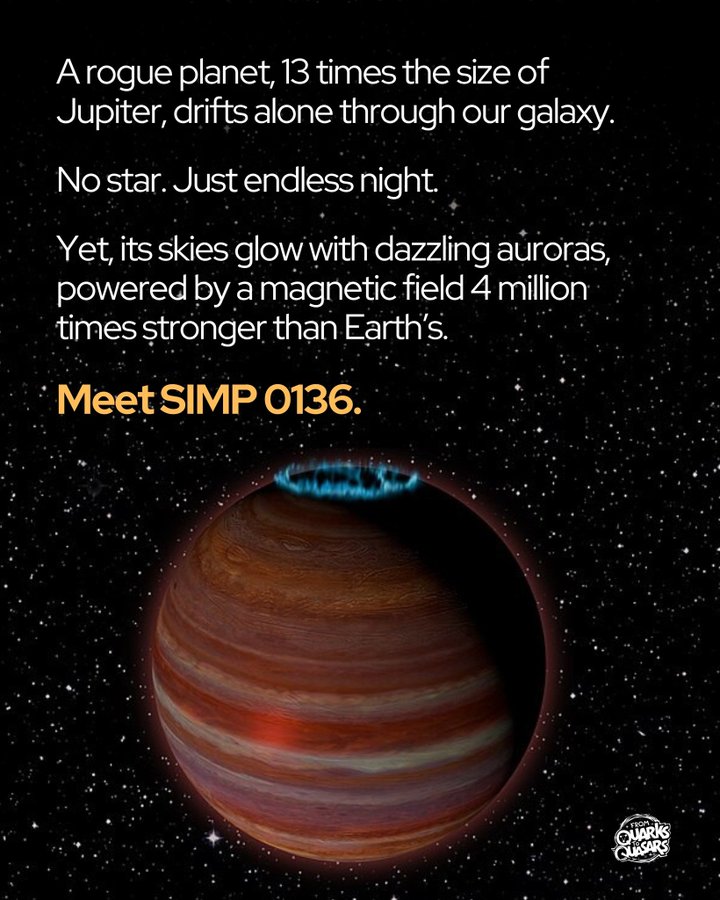
Spiny Norman said:
A rogue object so strange, scientists aren’t sure what to call it.It’s called SIMP J01365663+0933473 – or SIMP 0136 for short. About 13 times the mass of Jupiter, it’s what scientists call a “free-floating planetary-mass object.” That means it’s massive like a gas giant planet, but it doesn’t orbit a star. It drifts alone through the galaxy.
And it’s unlike anything in our solar system.
SIMP 0136 rotates once every 2.4 hours. It’s bright in infrared light and completely isolated from starlight, making it an ideal target for NASA’s James Webb Space Telescope. Recently, researchers used Webb to observe it across thousands of wavelengths as it spun – creating the most detailed map of a starless world’s atmosphere ever made.
What they found was a complex, layered system of deep clouds likely made of iron particles, high-altitude clouds composed of silicate grains, hot and cold spots rotating into view, possibly linked to auroras, and shifting traces of carbon monoxide and dioxide in the upper atmosphere.
No single factor explained all the changes in light. It took combinations of clouds, heat, and chemistry to make sense of what Webb recorded.
SIMP 0136 may be a brown dwarf – a kind of failed star – but it’s also a stand-in for gas giant exoplanets. Unlike planets near bright stars, its atmosphere can be observed without interference. That makes it a perfect lab for exoplanet science.
Studying SIMP 0136 helps scientists prepare for missions like the upcoming Nancy Grace Roman Space Telescope, which will directly image planets around other stars. It’s a roadmap for understanding alien weather, chemistry, and worlds beyond our own.
Learn more:
“NASA’s Webb Exposes Complex Atmosphere of Starless Super‑Jupiter.” NASA, 2025
An age of marvels
dv said:
Spiny Norman said:
A rogue object so strange, scientists aren’t sure what to call it.It’s called SIMP J01365663+0933473 – or SIMP 0136 for short. About 13 times the mass of Jupiter, it’s what scientists call a “free-floating planetary-mass object.” That means it’s massive like a gas giant planet, but it doesn’t orbit a star. It drifts alone through the galaxy.
And it’s unlike anything in our solar system.
SIMP 0136 rotates once every 2.4 hours. It’s bright in infrared light and completely isolated from starlight, making it an ideal target for NASA’s James Webb Space Telescope. Recently, researchers used Webb to observe it across thousands of wavelengths as it spun – creating the most detailed map of a starless world’s atmosphere ever made.
What they found was a complex, layered system of deep clouds likely made of iron particles, high-altitude clouds composed of silicate grains, hot and cold spots rotating into view, possibly linked to auroras, and shifting traces of carbon monoxide and dioxide in the upper atmosphere.
No single factor explained all the changes in light. It took combinations of clouds, heat, and chemistry to make sense of what Webb recorded.
SIMP 0136 may be a brown dwarf – a kind of failed star – but it’s also a stand-in for gas giant exoplanets. Unlike planets near bright stars, its atmosphere can be observed without interference. That makes it a perfect lab for exoplanet science.
Studying SIMP 0136 helps scientists prepare for missions like the upcoming Nancy Grace Roman Space Telescope, which will directly image planets around other stars. It’s a roadmap for understanding alien weather, chemistry, and worlds beyond our own.
Learn more:
“NASA’s Webb Exposes Complex Atmosphere of Starless Super‑Jupiter.” NASA, 2025
An age of marvels
Could potentially have moons with oceans. Makes you wonder how much life out there is not dependent on being a member of a stellar system.
Jonny Kim, astronaut.
On Nov 13th, there was a solar particle event that resulted in beautiful blankets of aurora. You may have seen it. We had the most amazing view and our crew collectively took thousands of photos and dozens of time lapses. Here is one of those time lapses. Nov 13th. Nikon Z9 | 14mm.
The amazing power of lightning.
This is what happens when iron is heated above its Curie Point (770 °C)
At around 770 °C, iron (Fe) reaches its Curie point, which is the critical temperature at which it transitions between the ferromagnetic and paramagnetic states.
Below this temperature (770 °C ≈ 1043 K), the atomic magnetic moments in iron align within regions called magnetic domains, producing strong and persistent magnetism.
When iron is heated above the Curie point, thermal agitation disrupts this alignment, and the material loses its ferromagnetic properties and becomes paramagnetic.
Iron is a classic example used to illustrate the Curie point, but other ferromagnetic materials have different thresholds.
Cobalt transitions at around 1100 °C, while nickel transitions at around 350 °C.
The phenomenon was first described by Pierre Curie in 1895. He showed that certain materials lose their spontaneous magnetization when heated beyond a specific temperature, a behavior that is now known as the Curie effect.
This temperature threshold is important in practical engineering. For example, the iron cores in soldering irons must remain below their Curie point to maintain stable magnetic performance.
In magneto-optical storage, materials are temporarily heated above their Curie temperature to erase or rewrite data by suppressing their magnetism.
“https://x.com/i/status/1996276417777291386https://x.com/i/status/1996276417777291386
A road in Bener Meriah, Aceh, Sumatra, Indonesia, gave way while crews were digging an emergency ditch.
An excavator was cutting a channel to redirect water when the sandy base eroded and the road collapsed in seconds. No injuries have been reported.
https://x.com/i/status/1996493994763678048
It’s a pleasant surprise that no-one was injured, a lot of the people seemed rather cavalier about the ground disappearing right in front of them.
The Secret US Plan To Blow Up The World: Project Sundial.
https://www.youtube.com/watch?v=mEzdtDuPDX0
A 10 gigaton nuclear bomb.
MIT’s 1 trillion FPS camera can capture light in motion.
Spiny Norman said:
MIT’s 1 trillion FPS camera can capture light in motion.
Amazing!
Spiny Norman said:
MIT’s 1 trillion FPS camera can capture light in motion.
Whats the year long version like?
Tau.Neutrino said:
Spiny Norman said:
MIT’s 1 trillion FPS camera can capture light in motion.Whats the year long version like?
One light day.
Voyager 1 is approaching the one-light-day distance from Earth, a milestone expected to be reached around November 15, 2026. At this point, it will take a full 24 hours for a radio signal to travel from Earth to the spacecraft, and another 24 hours for the reply, doubling the round-trip communication time. This historic distance is a symbolic marker of the probe’s journey into interstellar space.
Spiny Norman said:
MIT’s 1 trillion FPS camera can capture light in motion.
Not quite as fast, but this guy in his garage Alpha Phoenix: A laser pointer at 2 billion fps makes the speed of light look… kinda weird

Hurricane Melissa as seen from the International Space Station on October 28th, 2025.
Category 5 at the time. Nikon Z9 | 50/50-500mm | ISO 500, f22, 1/1000s.




By Jonny Kim in the ISS.
A lovely photo of the eye.
esselte said:
Spiny Norman said:
MIT’s 1 trillion FPS camera can capture light in motion.Not quite as fast, but this guy in his garage Alpha Phoenix: A laser pointer at 2 billion fps makes the speed of light look… kinda weird
He needs a proper dark room.
He still needs to measure the velocity of his equipment.
I’d like to see the same experiment at 1 trillion fps after he upgrades it again.
Tau.Neutrino said:
esselte said:
Spiny Norman said:
MIT’s 1 trillion FPS camera can capture light in motion.Not quite as fast, but this guy in his garage Alpha Phoenix: A laser pointer at 2 billion fps makes the speed of light look… kinda weird
He needs a proper dark room.
He still needs to measure the velocity of his equipment.
I’d like to see the same experiment at 1 trillion fps after he upgrades it again.
Cool experiments, where is the sweet spot with trillions of fps and the speed of light at 299,792,458 m / s ?
Everything you’ve ever wanted to know about barnacles.
I didn’t really want to know but I still found it interesting.
And some of them look like they come from a Star Wars show.
Spiny Norman said:
Everything you’ve ever wanted to know about barnacles.I didn’t really want to know but I still found it interesting.
And some of them look like they come from a Star Wars show.
Nice, ta.
How a B-52 lands with a strong crosswind component.
Spiny Norman said:
How a B-52 lands with a strong crosswind component.
Tyres? What tyres?
Michael V said:
Spiny Norman said:
How a B-52 lands with a strong crosswind component.Tyres? What tyres?
The landing gear rotates so it’s in-line with the runway on touchdown. So no sliding tyres on the landing roll. Once the speed is low enough they centre the gear so it’s going straight ahead.
That being said, it does look like they slid around once or twice, I could see some tyre smoke I think just after the parachute deployed.
Apollo 11 LM Ascent from the Moon16mm footage filmed by Michael Collins.
https://x.com/i/status/1997316082722308309
A video I’ve not seen before. A rather impressive adventure from 56 years ago.
Spiny Norman said:
Apollo 11 LM Ascent from the Moon16mm footage filmed by Michael Collins.https://x.com/i/status/1997316082722308309
A video I’ve not seen before. A rather impressive adventure from 56 years ago.
Indeed, hands on, struggling to emulate it with automated landers now,
Spiny Norman said:
Apollo 11 LM Ascent from the Moon16mm footage filmed by Michael Collins.https://x.com/i/status/1997316082722308309
A video I’ve not seen before. A rather impressive adventure from 56 years ago.
Nice one.
Earthquake and Liquefaction his Urayasu, Chiba 3/11/2011.
https://www.youtube.com/watch?v=FGblnPeOXJg
Some astounding footage there of the ground moving around.
The Monster Inside ChatGPT
https://www.youtube.com/watch?v=sDUX0M0IdfY
It gets more interesting towards the end.
The Nuclear Fusion Breakthrough EVERYONE Said Was Impossible.
TAE Technologies just took a giant leap toward aneutronic fusion using hydrogen–boron (p–11B). While most fusion projects chase the easier deuterium–tritium fuel cycle, TAE is pursuing something cleaner, harder, and far more disruptive.
In April 2025, they published a breakthrough showing they can form a stable FRC plasma without their massive 100-GW starter system — simplifying the reactor, cutting costs, and improving performance.
What is this strange pattern down the east coast of America?
There is this strange pattern of bodies of water all down the east coast of America and most of them point north west.
They’re called Carolina Bays as they’re found predominantly in the Carolina states and they’re home to some crazy wildlife.
But how did they form?
How Did I Never Notice THIS about Lord of the Rings?!
https://www.youtube.com/shorts/1×9qhvRiAqc
Some very clever things were done in the filming of the movies to get the scale right between the very tall Gandolf and the short Hobbits.

Apollo 17 on the Moon.
Harrison Schmitt on the left, the LM about 150 metres away, and the Rover on the right. Apparently stitched together from seven photos.
This is the most energy-rich molecule in the world and has twice as much energy as previous explosives. A research group from Giessen has succeeded in isolating a highly energy-rich molecule from nitrogen.
Namely, hexanitrogen. At −196°C, it remains stable for decades and could even be used as rocket fuel. Experts in the field even describe the discovery as Nobel Prize-worthy! Find out what’s behind the new molecule, how it’s produced, and why it’s such a breakthrough!
Spiny Norman said:

Apollo 17 on the Moon.
Harrison Schmitt on the left, the LM about 150 metres away, and the Rover on the right. Apparently stitched together from seven photos.
Nah.
Faked.
No stars.
Shadows pointing in different directions.
Michael V said:
Spiny Norman said:

Apollo 17 on the Moon.
Harrison Schmitt on the left, the LM about 150 metres away, and the Rover on the right. Apparently stitched together from seven photos.
Nah.
Faked.
No stars.
Shadows pointing in different directions.
Of course it’s fake.
No point in Harrison setting up that hibachi barbecue if they were really on the Moon.
captain_spalding said:
Michael V said:
Spiny Norman said:

Apollo 17 on the Moon.
Harrison Schmitt on the left, the LM about 150 metres away, and the Rover on the right. Apparently stitched together from seven photos.
Nah.
Faked.
No stars.
Shadows pointing in different directions.
Of course it’s fake.
No point in Harrison setting up that hibachi barbecue if they were really on the Moon.
I missed that. Damn!
count fingers
Shockwaves can become visible on an airplane’s wing during a turn under certain conditions.
Commercial jets cruise in the transonic regime (Mach 0.8–0.85), where airflow accelerates over the wing’s curved upper surface, creating local supersonic regions despite the aircraft remaining subsonic. This forms a shockwave as air abruptly decelerates to subsonic speeds. The shockwave appears as a shimmering or wavy distortion due to sudden density changes that alter light refraction, similar to heat haze over a hot road.
In a turn, banking increases the angle of attack and wing load factor, further accelerating upper-surface airflow and making local supersonic regions—and thus shockwaves—more pronounced.
Passengers often report seeing these “dancing” shockwaves move, split, or intensify during maneuvers.
Visibility requires sufficient humidity for condensation or good lighting/contrast for density refraction. In dry air, the shockwave may exist but remain invisible.
https://x.com/i/status/1999963792663617670
That used to happen a fair bit on the old Boeing 727’s. My father used to say that sometimes when the conditions were right the Flight Engineer would come back into the cockpit from the rear of the cabin and casually say that, “the wing is on fire”.
A neuroscience paper published in Cell just days ago answers a question researchers have been trying to solve for years: what actually changes in the brain during a psilocybin experience—and why those changes can last.
Using a genetically modified rabies virus as a neural tracer, researchers were able to map—cell by cell—how psilocybin alters brain connectivity. This allowed them to see, for the first time, which brain regions gain connections, which lose them, and how those changes depend on what the brain is doing during the experience itself.
The findings help explain long-standing observations discussed by neuroscientists, psychiatrists, and researchers often referenced on platforms like Huberman Lab: • Why psilocybin can reduce depression and anxiety • Why the default mode network quiets during psychedelic states • Why sensory perception feels intensified • Why context and mental state during a trip matter so much • Why a single experience can lead to lasting psychological change
Sorry, can we go back to this part:
“Using a genetically modified rabies virus as a neural tracer”
WTF 🤯
Divine Angel said:
Sorry, can we go back to this part:
“Using a genetically modified rabies virus as a neural tracer”
WTF 🤯
sure why not we mean people hated on Gates vaccines until some fascist told them he would literally microchip their brains and then they were loving it
Spiny Norman said:
A neuroscience paper published in Cell just days ago answers a question researchers have been trying to solve for years: what actually changes in the brain during a psilocybin experience—and why those changes can last.Using a genetically modified rabies virus as a neural tracer, researchers were able to map—cell by cell—how psilocybin alters brain connectivity. This allowed them to see, for the first time, which brain regions gain connections, which lose them, and how those changes depend on what the brain is doing during the experience itself.
The findings help explain long-standing observations discussed by neuroscientists, psychiatrists, and researchers often referenced on platforms like Huberman Lab: • Why psilocybin can reduce depression and anxiety • Why the default mode network quiets during psychedelic states • Why sensory perception feels intensified • Why context and mental state during a trip matter so much • Why a single experience can lead to lasting psychological change
Bloke looks like he could use a little moksha medicine.
This video shows the moments Kilauea’s V3Cam was destroyed by falling lava bombs during an intense strongly horizontal lava fountaining event. This occurred on December 6th 2025, and was all captured from the perspective of the destroyed webcam.
https://www.youtube.com/watch?v=2IeI_1NAmSs
For the V’s – D & Mr.
Spiny Norman said:
This video shows the moments Kilauea’s V3Cam was destroyed by falling lava bombs during an intense strongly horizontal lava fountaining event. This occurred on December 6th 2025, and was all captured from the perspective of the destroyed webcam.https://www.youtube.com/watch?v=2IeI_1NAmSs
For the V’s – D & Mr.
Ta.
Every year, when water freezes in the coldest regions of the United States, alligators survive by keeping their snouts above the ice, allowing them to breathe while remaining motionless beneath the frozen surface.
Spiny Norman said:
Every year, when water freezes in the coldest regions of the United States, alligators survive by keeping their snouts above the ice, allowing them to breathe while remaining motionless beneath the frozen surface.
Somehow I would not have considered that alligators would be in cold places.
roughbarked said:
Spiny Norman said:
Every year, when water freezes in the coldest regions of the United States, alligators survive by keeping their snouts above the ice, allowing them to breathe while remaining motionless beneath the frozen surface.Somehow I would not have considered that alligators would be in cold places.
Temperatures regularly get below freezing even in the famously sunny state of Florida.
Freezing temperatures at Cape Canaveral, which as about as near to the tropics as you can get in the continental US, were a big factor in the 1986 explosion of the space shuttle ‘Challenger’.
captain_spalding said:
roughbarked said:
Spiny Norman said:
Every year, when water freezes in the coldest regions of the United States, alligators survive by keeping their snouts above the ice, allowing them to breathe while remaining motionless beneath the frozen surface.Somehow I would not have considered that alligators would be in cold places.
Temperatures regularly get below freezing even in the famously sunny state of Florida.
Freezing temperatures at Cape Canaveral, which as about as near to the tropics as you can get in the continental US, were a big factor in the 1986 explosion of the space shuttle ‘Challenger’.
I see.
For over a century, two canals have shaped how the world moves. Now, cracks are forming—and a new route is quietly starting to change the map.
https://www.youtube.com/watch?v=bLdZUaQeJ7g
So a big thumbs-up for climate change I guess. :(
Helistat: The $100 Million experiment destroyed in seconds.
The Piasecki PA-97 Helistat was an American experimental heavy-lift aircraft, built by fastening four cut-down H-34J helicopters to a framework beneath a helium-inflated blimp envelope.
The sole prototype was lost during a test flight, killing a test pilot and injuring another four in the course of a single incident.
AussieDJ said:
Helistat: The $100 Million experiment destroyed in seconds.The Piasecki PA-97 Helistat was an American experimental heavy-lift aircraft, built by fastening four cut-down H-34J helicopters to a framework beneath a helium-inflated blimp envelope.
The sole prototype was lost during a test flight, killing a test pilot and injuring another four in the course of a single incident.
The death and the injuries are very sad, tragic.
The destruction of the prototype of this abomination: not in the least bit sad.
captain_spalding said:
AussieDJ said:
Helistat: The $100 Million experiment destroyed in seconds.The Piasecki PA-97 Helistat was an American experimental heavy-lift aircraft, built by fastening four cut-down H-34J helicopters to a framework beneath a helium-inflated blimp envelope.
The sole prototype was lost during a test flight, killing a test pilot and injuring another four in the course of a single incident.
The death and the injuries are very sad, tragic.
The destruction of the prototype of this abomination: not in the least bit sad.
Almost a shame it didn’t work. It might have created a niche for itself, like the Antonov An-225.
A great shame one pilot died and others were injured.
Spiny Norman said:
captain_spalding said:
AussieDJ said:
Helistat: The $100 Million experiment destroyed in seconds.The Piasecki PA-97 Helistat was an American experimental heavy-lift aircraft, built by fastening four cut-down H-34J helicopters to a framework beneath a helium-inflated blimp envelope.
The sole prototype was lost during a test flight, killing a test pilot and injuring another four in the course of a single incident.
The death and the injuries are very sad, tragic.
The destruction of the prototype of this abomination: not in the least bit sad.
Almost a shame it didn’t work. It might have created a niche for itself, like the Antonov An-225.
A great shame one pilot died and others were injured.
What is the upper limit to an aircraft weight ?
I assume we cannot have the sort of flying aircraft carriers movies love
Cymek said:
Spiny Norman said:
captain_spalding said:The death and the injuries are very sad, tragic.
The destruction of the prototype of this abomination: not in the least bit sad.
Almost a shame it didn’t work. It might have created a niche for itself, like the Antonov An-225.
A great shame one pilot died and others were injured.
What is the upper limit to an aircraft weight ?
I assume we cannot have the sort of flying aircraft carriers movies love
Yes they are most unlikely to be built.
It depends on what you mean by aircraft. The Antonov An-225 is the heaviest aircraft ever flown, but the Spacex Starship Block 3 is the heaviest thing to ever leave the ground.
If Project Orion was allowed we could easily launch tens of thousands of tonnes in the one craft. There were rough plans for versions much heavier than that as well though I assume they’d have to be assembled in orbit.
CATL has officially revealed detailed specs for its new sodium-ion battery — and while some headlines are getting a bit carried away, the real numbers here are still huge.
We’re talking about a battery chemistry that CATL says could deliver up to 3.6 million miles of usable lifespan, with cycle life measured in the tens of thousands, and at a cost around 50% lower than lithium-ion in certain applications.
Why Australia Is Spending US$3 Billion To Build This Dam Twice.
A dam built to last a century began failing in less than twenty years…the only solution? To build it again.
Spiny Norman said:
CATL has officially revealed detailed specs for its new sodium-ion battery — and while some headlines are getting a bit carried away, the real numbers here are still huge.We’re talking about a battery chemistry that CATL says could deliver up to 3.6 million miles of usable lifespan, with cycle life measured in the tens of thousands, and at a cost around 50% lower than lithium-ion in certain applications.
It’ll either revolutionise electric vehicle development.
Or they’ll put a lid on it, and preserve the replacement battery market.
Bangladesh takes action to clean its polluted rivers.
That most definitely was very polluted.
Spiny Norman said:
Bangladesh takes action to clean its polluted rivers.That most definitely was very polluted.
The perfect plastic? Plant-based, fully saltwater degradable, zero microplastics.
Researchers led by Takuzo Aida at the RIKEN Center for Emergent Matter Science (CEMS) in Japan have one-upped themselves in their quest to solve our microplastic problem. In a recent study published in the Journal of the American Chemical Society they report a new type of plastic made from plant cellulose, the world’s most abundant organic compound. The new plastic is strong, flexible, and capable of rapid decomposition in natural environments, setting it apart from other plastics marketed as biodegradable.
Microplastics are a global contaminant found in nearly every ecosystem, from the soil and the ocean to the animals and plants that live there. They have even been found in human tissue and the bloodstream where they likely have adverse effects. While biodegradable plastics and even cellulose-derived plastics are not new, most plastics labeled “biodegradable” do not degrade in marine environments or they take a very long time to degrade, leaving microplastics behind in the meantime.
Tamb said:
Spiny Norman said:
Bangladesh takes action to clean its polluted rivers.That most definitely was very polluted.
The worst one I’ve ever seen was when the floating rubbish caught fire. Clouds of black, oily smoke.
Ack! So many rivers in those places are badly polluted.
Spiny Norman said:
The perfect plastic? Plant-based, fully saltwater degradable, zero microplastics.Researchers led by Takuzo Aida at the RIKEN Center for Emergent Matter Science (CEMS) in Japan have one-upped themselves in their quest to solve our microplastic problem. In a recent study published in the Journal of the American Chemical Society they report a new type of plastic made from plant cellulose, the world’s most abundant organic compound. The new plastic is strong, flexible, and capable of rapid decomposition in natural environments, setting it apart from other plastics marketed as biodegradable.
Microplastics are a global contaminant found in nearly every ecosystem, from the soil and the ocean to the animals and plants that live there. They have even been found in human tissue and the bloodstream where they likely have adverse effects. While biodegradable plastics and even cellulose-derived plastics are not new, most plastics labeled “biodegradable” do not degrade in marine environments or they take a very long time to degrade, leaving microplastics behind in the meantime.
We can only hope it comes to fruition.
The night Edward Johnson declared war on a telephone number, he did it with nothing more than an Atari computer, a quiet room, and years of anger burning in his chest.
He didn’t shout. He didn’t break anything.
He simply stared at the glowing television screen as Reverend Jerry Falwell Sr. pleaded once again, “Pick up the phone, friend… Call now. The Lord is waiting.”
Across the bottom of the screen flashed the familiar toll-free number: 1-800-1-PRAY.
Edward’s mother believed every word Falwell said. She mailed him money she barely had. She skipped meals, but she never skipped a donation. To her, Falwell’s promises were comfort. To Edward, they were a trap.
“That man is bleeding people dry,” he whispered angrily. “And he hides it behind faith.”
Then, suddenly, a thought struck him so sharply that he sat up straight.
“If he wants calls,” Edward said slowly, “I’ll give him calls.”
Edward wasn’t a hacker. He wasn’t a genius programmer. He was just a man with an Atari 800, a phone line, and basic coding skills. But he knew something most viewers didn’t:
Toll-free calls weren’t free.
Falwell paid for every call his viewers made.
About one dollar per call.
Edward stared at the number on the TV and said, “You built a fortune with this number. Let’s see how strong it really is.”
He wrote a short program. Just a few lines of code:
Dial the toll-free number.
Wait until someone answered.
Hang up. Pause thirty seconds. Repeat. Forever.
When he finished, he whispered to himself, almost amused, “This might be the simplest protest in history.”
On a warm June evening in 1985, he clicked “RUN.”
The modem crackled.
It connected.
It dialed.
An operator answered, “Old Time Gospel Hour, how may we pray for you—”
But there was only silence. Then a click.
Thirty seconds later: the same.
Then again. And again.
Every thirty seconds, day and night, without pause.
“That’s another dollar,” Edward said softly each time he walked past the humming machine.
Two calls a minute.
One hundred twenty an hour.
Nearly three thousand a day.
At first, Falwell’s staff thought it was a glitch.
Then an annoyance.
Then a serious problem.
Operators kept answering ghost calls. One told a supervisor, “It’s endless. Someone picks up, and all we hear is nothing—just breathing or static.”
The daily phone bill exploded:
$10,000. Then $50,000. Then past $100,000.
Behind the scenes, one staffer grumbled, “It feels like someone is strangling the phone lines.”
They were right.
Edward’s quiet program was costing the ministry thousands every day—eventually half a million to three-quarters of a million dollars depending on the source.
But money wasn’t the only problem.
Real callers—donors, churchgoers, people seeking prayer—couldn’t get through. The lines were jammed 24/7. The entire phone network in parts of Atlanta even began to lag from the constant traffic.
Southern Bell engineers were stunned. One of them later recalled, “We had never seen anything like it. This wasn’t hacking. It was pure volume.”
Word spread.
LGBT activists, furious at Falwell’s attacks on gay rights, joined in. University newspapers printed the toll-free number with instructions to flood it.
One article called it “telephone resistance.”
Another was more blunt: “jam him until he can’t breathe.”
But even with thousands joining the effort, none matched Edward’s relentlessness. His Atari called around the clock. He barely touched it. He didn’t need to.
“It just keeps going,” he told a friend. “Like a heartbeat.”
By late 1985, the situation was out of control. Southern Bell finally traced the biggest source of the calls to Edward’s home.
A technician knocked and told him firmly, “Sir, whatever you’re running… you have to stop. Today.”
Edward listened quietly. Then nodded.
He pressed a single key.
The screen went blank.
After eight months, the automated siege was over.
Falwell was furious. He talked about lawsuits. He called the attacks “unlawful, harmful, and ungodly.”
But nothing Edward did was illegal at the time. He didn’t hack a system. He didn’t break in. He just called a public number—thousands of times.
In 1986, overwhelmed and defeated, Falwell made a drastic choice:
He shut down the toll-free prayer lines permanently.
The very number that helped him build a $72-million-per-year empire had been turned against him.
Edward Johnson never bragged about what he did. He once said quietly, “I just wanted him to stop hurting people like my mother.”
Today, experts call his operation one of the earliest denial-of-service attacks in history. Years before the internet made such attacks famous, Edward discovered the weakness in a system built on trust.
He proved a simple, unsettling truth:
“Any open door,” he said later, “can be slammed shut if someone keeps walking through it.”
His story lives on—not because he broke the rules, but because he showed how fragile the rules really were.
ChrispenEvan said:
The night Edward Johnson declared war on a telephone number, he did it with nothing more than an Atari computer, a quiet room, and years of anger burning in his chest.He didn’t shout. He didn’t break anything.
….He proved a simple, unsettling truth:
“Any open door,” he said later, “can be slammed shut if someone keeps walking through it.”
His story lives on—not because he broke the rules, but because he showed how fragile the rules really were.
ChrispenEvan said:
The night Edward Johnson declared war on a telephone number, he did it with nothing more than an Atari computer, a quiet room, and years of anger burning in his chest.He didn’t shout. He didn’t break anything.
He simply stared at the glowing television screen as Reverend Jerry Falwell Sr. pleaded once again, “Pick up the phone, friend… Call now. The Lord is waiting.”
Across the bottom of the screen flashed the familiar toll-free number: 1-800-1-PRAY.
Edward’s mother believed every word Falwell said. She mailed him money she barely had. She skipped meals, but she never skipped a donation. To her, Falwell’s promises were comfort. To Edward, they were a trap.
“That man is bleeding people dry,” he whispered angrily. “And he hides it behind faith.”
Then, suddenly, a thought struck him so sharply that he sat up straight.
“If he wants calls,” Edward said slowly, “I’ll give him calls.”
Edward wasn’t a hacker. He wasn’t a genius programmer. He was just a man with an Atari 800, a phone line, and basic coding skills. But he knew something most viewers didn’t:
Toll-free calls weren’t free.
Falwell paid for every call his viewers made.
About one dollar per call.
Edward stared at the number on the TV and said, “You built a fortune with this number. Let’s see how strong it really is.”
He wrote a short program. Just a few lines of code:
Dial the toll-free number.
Wait until someone answered.
Hang up. Pause thirty seconds. Repeat. Forever.
When he finished, he whispered to himself, almost amused, “This might be the simplest protest in history.”
On a warm June evening in 1985, he clicked “RUN.”The modem crackled.
It connected.
It dialed.
An operator answered, “Old Time Gospel Hour, how may we pray for you—”
But there was only silence. Then a click.
Thirty seconds later: the same.
Then again. And again.
Every thirty seconds, day and night, without pause.
“That’s another dollar,” Edward said softly each time he walked past the humming machine.
Two calls a minute.One hundred twenty an hour.
Nearly three thousand a day.
At first, Falwell’s staff thought it was a glitch.
Then an annoyance.
Then a serious problem.
Operators kept answering ghost calls. One told a supervisor, “It’s endless. Someone picks up, and all we hear is nothing—just breathing or static.”
The daily phone bill exploded:
$10,000. Then $50,000. Then past $100,000.
Behind the scenes, one staffer grumbled, “It feels like someone is strangling the phone lines.”
They were right.Edward’s quiet program was costing the ministry thousands every day—eventually half a million to three-quarters of a million dollars depending on the source.
But money wasn’t the only problem.
Real callers—donors, churchgoers, people seeking prayer—couldn’t get through. The lines were jammed 24/7. The entire phone network in parts of Atlanta even began to lag from the constant traffic.
Southern Bell engineers were stunned. One of them later recalled, “We had never seen anything like it. This wasn’t hacking. It was pure volume.”
Word spread.
LGBT activists, furious at Falwell’s attacks on gay rights, joined in. University newspapers printed the toll-free number with instructions to flood it.
One article called it “telephone resistance.”
Another was more blunt: “jam him until he can’t breathe.”
But even with thousands joining the effort, none matched Edward’s relentlessness. His Atari called around the clock. He barely touched it. He didn’t need to.
“It just keeps going,” he told a friend. “Like a heartbeat.”
By late 1985, the situation was out of control. Southern Bell finally traced the biggest source of the calls to Edward’s home.
A technician knocked and told him firmly, “Sir, whatever you’re running… you have to stop. Today.”
Edward listened quietly. Then nodded.He pressed a single key.
The screen went blank.
After eight months, the automated siege was over.
Falwell was furious. He talked about lawsuits. He called the attacks “unlawful, harmful, and ungodly.”
But nothing Edward did was illegal at the time. He didn’t hack a system. He didn’t break in. He just called a public number—thousands of times.
In 1986, overwhelmed and defeated, Falwell made a drastic choice:
He shut down the toll-free prayer lines permanently.
The very number that helped him build a $72-million-per-year empire had been turned against him.
Edward Johnson never bragged about what he did. He once said quietly, “I just wanted him to stop hurting people like my mother.”Today, experts call his operation one of the earliest denial-of-service attacks in history. Years before the internet made such attacks famous, Edward discovered the weakness in a system built on trust.
He proved a simple, unsettling truth:
“Any open door,” he said later, “can be slammed shut if someone keeps walking through it.”
His story lives on—not because he broke the rules, but because he showed how fragile the rules really were.
:)
ChrispenEvan said:
The night Edward Johnson declared war on a telephone number, he did it with nothing more than an Atari computer, a quiet room, and years of anger burning in his chest.He didn’t shout. He didn’t break anything.
He simply stared at the glowing television screen as Reverend Jerry Falwell Sr. pleaded once again, “Pick up the phone, friend… Call now. The Lord is waiting.”
Across the bottom of the screen flashed the familiar toll-free number: 1-800-1-PRAY.
Edward’s mother believed every word Falwell said. She mailed him money she barely had. She skipped meals, but she never skipped a donation. To her, Falwell’s promises were comfort. To Edward, they were a trap.
“That man is bleeding people dry,” he whispered angrily. “And he hides it behind faith.”
Then, suddenly, a thought struck him so sharply that he sat up straight.
“If he wants calls,” Edward said slowly, “I’ll give him calls.”
Edward wasn’t a hacker. He wasn’t a genius programmer. He was just a man with an Atari 800, a phone line, and basic coding skills. But he knew something most viewers didn’t:
Toll-free calls weren’t free.
Falwell paid for every call his viewers made.
About one dollar per call.
Edward stared at the number on the TV and said, “You built a fortune with this number. Let’s see how strong it really is.”
He wrote a short program. Just a few lines of code:
Dial the toll-free number.
Wait until someone answered.
Hang up. Pause thirty seconds. Repeat. Forever.
When he finished, he whispered to himself, almost amused, “This might be the simplest protest in history.”
On a warm June evening in 1985, he clicked “RUN.”The modem crackled.
It connected.
It dialed.
An operator answered, “Old Time Gospel Hour, how may we pray for you—”
But there was only silence. Then a click.
Thirty seconds later: the same.
Then again. And again.
Every thirty seconds, day and night, without pause.
“That’s another dollar,” Edward said softly each time he walked past the humming machine.
Two calls a minute.One hundred twenty an hour.
Nearly three thousand a day.
At first, Falwell’s staff thought it was a glitch.
Then an annoyance.
Then a serious problem.
Operators kept answering ghost calls. One told a supervisor, “It’s endless. Someone picks up, and all we hear is nothing—just breathing or static.”
The daily phone bill exploded:
$10,000. Then $50,000. Then past $100,000.
Behind the scenes, one staffer grumbled, “It feels like someone is strangling the phone lines.”
They were right.Edward’s quiet program was costing the ministry thousands every day—eventually half a million to three-quarters of a million dollars depending on the source.
But money wasn’t the only problem.
Real callers—donors, churchgoers, people seeking prayer—couldn’t get through. The lines were jammed 24/7. The entire phone network in parts of Atlanta even began to lag from the constant traffic.
Southern Bell engineers were stunned. One of them later recalled, “We had never seen anything like it. This wasn’t hacking. It was pure volume.”
Word spread.
LGBT activists, furious at Falwell’s attacks on gay rights, joined in. University newspapers printed the toll-free number with instructions to flood it.
One article called it “telephone resistance.”
Another was more blunt: “jam him until he can’t breathe.”
But even with thousands joining the effort, none matched Edward’s relentlessness. His Atari called around the clock. He barely touched it. He didn’t need to.
“It just keeps going,” he told a friend. “Like a heartbeat.”
By late 1985, the situation was out of control. Southern Bell finally traced the biggest source of the calls to Edward’s home.
A technician knocked and told him firmly, “Sir, whatever you’re running… you have to stop. Today.”
Edward listened quietly. Then nodded.He pressed a single key.
The screen went blank.
After eight months, the automated siege was over.
Falwell was furious. He talked about lawsuits. He called the attacks “unlawful, harmful, and ungodly.”
But nothing Edward did was illegal at the time. He didn’t hack a system. He didn’t break in. He just called a public number—thousands of times.
In 1986, overwhelmed and defeated, Falwell made a drastic choice:
He shut down the toll-free prayer lines permanently.
The very number that helped him build a $72-million-per-year empire had been turned against him.
Edward Johnson never bragged about what he did. He once said quietly, “I just wanted him to stop hurting people like my mother.”Today, experts call his operation one of the earliest denial-of-service attacks in history. Years before the internet made such attacks famous, Edward discovered the weakness in a system built on trust.
He proved a simple, unsettling truth:
“Any open door,” he said later, “can be slammed shut if someone keeps walking through it.”
His story lives on—not because he broke the rules, but because he showed how fragile the rules really were.
Great story, thanks.
One modern Sheffield factory – building two brand new steam engines. A short film by Tom Ingall 5 min
Tau.Neutrino said:
One modern Sheffield factory – building two brand new steam engines. A short film by Tom Ingall 5 min
Two steam engines, built in Sheffield. How are they getting on? 5 min
Weight gain single-handedly prevented by a gut microbe
Researchers have homed in on a single gut microbe that acts to prevent fat gain, even with a high-fat diet. The discovery adds to the booming science of finding ways to enlist the microbes that already live in our bodies to help us improve our health.
It’s been known for some time that our gut microbiome – the collection of bacteria, viruses, fungi, and other microscopic critters living in our intestines – can influence weight gain or loss. But narrowing down exactly which members of this microbial community do what can take some effort to tease out. That’s because microbes that live inside the body don’t do well outside of it, so to test them, they often have to be processed inside airtight environments, because oxygen can often kill them. This takes time.
However, researchers at the University of Utah (U of U) say they have succeeded in whittling down about 100 bacteria suspected of fighting weight gain to just one that really does: Turicibacter.
In their study, mice that were fed a high-fat diet and were also given Turicibacter saw reduced blood sugar, lower levels of fat in the blood, and less overall weight gain compared to a control group.
“I didn’t think one microbe would have such a dramatic effect – I thought it would be a mix of three or four,” says June Round, professor of microbiology and immunology at U of U Health, and senior author on the study. “So when brought me the first experiment with Turicibacter and the mice were staying really lean, I was like, ‘This is so amazing.’ It’s pretty exciting when you see those types of results.” Klag is the first author on the study.
https://newatlas.com/diet-nutrition/weight-gain-gut-microbe/
Spiny Norman said:
Weight gain single-handedly prevented by a gut microbeResearchers have homed in on a single gut microbe that acts to prevent fat gain, even with a high-fat diet. The discovery adds to the booming science of finding ways to enlist the microbes that already live in our bodies to help us improve our health.
It’s been known for some time that our gut microbiome – the collection of bacteria, viruses, fungi, and other microscopic critters living in our intestines – can influence weight gain or loss. But narrowing down exactly which members of this microbial community do what can take some effort to tease out. That’s because microbes that live inside the body don’t do well outside of it, so to test them, they often have to be processed inside airtight environments, because oxygen can often kill them. This takes time.
However, researchers at the University of Utah (U of U) say they have succeeded in whittling down about 100 bacteria suspected of fighting weight gain to just one that really does: Turicibacter.
In their study, mice that were fed a high-fat diet and were also given Turicibacter saw reduced blood sugar, lower levels of fat in the blood, and less overall weight gain compared to a control group.
“I didn’t think one microbe would have such a dramatic effect – I thought it would be a mix of three or four,” says June Round, professor of microbiology and immunology at U of U Health, and senior author on the study. “So when brought me the first experiment with Turicibacter and the mice were staying really lean, I was like, ‘This is so amazing.’ It’s pretty exciting when you see those types of results.” Klag is the first author on the study.
https://newatlas.com/diet-nutrition/weight-gain-gut-microbe/
Sign me up!
The thinnest mechanical watch ever made. The Bulgari Octo Finissimo Ultra measures about 0.067 in (1.7 mm) thick, making it the thinnest mechanical watch on record. Bulgari achieved this by integrating the movement directly into the caseback, removing the usual base plate.
Only 20 made, all yours for a mere US$529,000.
Spiny Norman said:
Weight gain single-handedly prevented by a gut microbeResearchers have homed in on a single gut microbe that acts to prevent fat gain, even with a high-fat diet. The discovery adds to the booming science of finding ways to enlist the microbes that already live in our bodies to help us improve our health.
It’s been known for some time that our gut microbiome – the collection of bacteria, viruses, fungi, and other microscopic critters living in our intestines – can influence weight gain or loss. But narrowing down exactly which members of this microbial community do what can take some effort to tease out. That’s because microbes that live inside the body don’t do well outside of it, so to test them, they often have to be processed inside airtight environments, because oxygen can often kill them. This takes time.
However, researchers at the University of Utah (U of U) say they have succeeded in whittling down about 100 bacteria suspected of fighting weight gain to just one that really does: Turicibacter.
In their study, mice that were fed a high-fat diet and were also given Turicibacter saw reduced blood sugar, lower levels of fat in the blood, and less overall weight gain compared to a control group.
“I didn’t think one microbe would have such a dramatic effect – I thought it would be a mix of three or four,” says June Round, professor of microbiology and immunology at U of U Health, and senior author on the study. “So when brought me the first experiment with Turicibacter and the mice were staying really lean, I was like, ‘This is so amazing.’ It’s pretty exciting when you see those types of results.” Klag is the first author on the study.
https://newatlas.com/diet-nutrition/weight-gain-gut-microbe/
It’s been known for at least 20 years that there’s an inverse relationship between the relative abundance of the gut bacterium Akkermansia muciniphila and the host’s obesity (ie more A. muciniphila -> less obesity; less bacterium -> more obesity.) Studies have shown that mice on high-fat diets fed live A. muciniphila showed weight reduction, while those fed dead bacteria showed no effect. Mice in the same study fed an oligosaccharide also showed an increase in abundance of A. muciniphila and corresponding reduction of obesity; mice showing these reductions also showed reduction in IBS and type-2 diabetes.
See, for example, Everard A, Belzer C, Geurts L, et al. (May 28, 2013). Cross-talk between Akkermansia muciniphila and intestinal epithelium controls diet-induced obesity. Proceedings of the National Academy of Sciences of the United States of America. 110 (22): 9066–9071
btm said:
Spiny Norman said:
Weight gain single-handedly prevented by a gut microbeResearchers have homed in on a single gut microbe that acts to prevent fat gain, even with a high-fat diet. The discovery adds to the booming science of finding ways to enlist the microbes that already live in our bodies to help us improve our health.
It’s been known for some time that our gut microbiome – the collection of bacteria, viruses, fungi, and other microscopic critters living in our intestines – can influence weight gain or loss. But narrowing down exactly which members of this microbial community do what can take some effort to tease out. That’s because microbes that live inside the body don’t do well outside of it, so to test them, they often have to be processed inside airtight environments, because oxygen can often kill them. This takes time.
However, researchers at the University of Utah (U of U) say they have succeeded in whittling down about 100 bacteria suspected of fighting weight gain to just one that really does: Turicibacter.
In their study, mice that were fed a high-fat diet and were also given Turicibacter saw reduced blood sugar, lower levels of fat in the blood, and less overall weight gain compared to a control group.
“I didn’t think one microbe would have such a dramatic effect – I thought it would be a mix of three or four,” says June Round, professor of microbiology and immunology at U of U Health, and senior author on the study. “So when brought me the first experiment with Turicibacter and the mice were staying really lean, I was like, ‘This is so amazing.’ It’s pretty exciting when you see those types of results.” Klag is the first author on the study.
https://newatlas.com/diet-nutrition/weight-gain-gut-microbe/
It’s been known for at least 20 years that there’s an inverse relationship between the relative abundance of the gut bacterium Akkermansia muciniphila and the host’s obesity (ie more A. muciniphila -> less obesity; less bacterium -> more obesity.) Studies have shown that mice on high-fat diets fed live A. muciniphila showed weight reduction, while those fed dead bacteria showed no effect. Mice in the same study fed an oligosaccharide also showed an increase in abundance of A. muciniphila and corresponding reduction of obesity; mice showing these reductions also showed reduction in IBS and type-2 diabetes.
See, for example, Everard A, Belzer C, Geurts L, et al. (May 28, 2013). Cross-talk between Akkermansia muciniphila and intestinal epithelium controls diet-induced obesity. Proceedings of the National Academy of Sciences of the United States of America. 110 (22): 9066–9071
Ta!
A MiG-29 pulling G’s at very low level.

Nepal Officially Claims Six New 8000m Peaks, Total Now 14. Awaits for International Recognition.

Seems odd that they could have somehow missed the ~8400 metre group by so much for so long.
Nuclear reactors that use thorium as fuel have many advantages over those that use uranium. Thorium is common and easy to mine, its waste is safer to handle, and the material also can’t be used as easily in weapons. Recently, a team of scientists from China announced a breakthrough in their thorium reactor project – let’s take a look at just what they’ve done and what the rest of the world is doing for developing thorium nuclear reactors.

Divine Angel said:
“No, Mr. Strontium, i expect you to die!”
Divine Angel said:
Noice.
captain_spalding said:
Divine Angel said:
“No, Mr. Strontium, i expect you to die!”
Heh. :)
That movie has a plot point which is rather silly. All the crooks are in a big room with Goldfinger and he carefully explains the plan to them all, with Bond conveniently listening from below.
And then Goldfinger kills them all. Kinda silly having him explain the plan and then kill them.

Lake Berryessa’s Morning Glory Hole in Napa County, CA. This circular spillway is 440 feet above the lake bottom. Only 1 death has been attributed to it.
Spiny Norman said:

Lake Berryessa’s Morning Glory Hole in Napa County, CA. This circular spillway is 440 feet above the lake bottom. Only 1 death has been attributed to it.
What’s underneath it?
Divine Angel said:
Spiny Norman said:

Lake Berryessa’s Morning Glory Hole in Napa County, CA. This circular spillway is 440 feet above the lake bottom. Only 1 death has been attributed to it.
What’s underneath it?
Aldi’s HCB.
Divine Angel said:
Spiny Norman said:

Lake Berryessa’s Morning Glory Hole in Napa County, CA. This circular spillway is 440 feet above the lake bottom. Only 1 death has been attributed to it.
What’s underneath it?
I’d hazard a guess that there’s a pipe at the bottom of the hole that empties on the downstream side the dam wall.
Spiny Norman said:
Divine Angel said:
Spiny Norman said:

Lake Berryessa’s Morning Glory Hole in Napa County, CA. This circular spillway is 440 feet above the lake bottom. Only 1 death has been attributed to it.
What’s underneath it?
I’d hazard a guess that there’s a pipe at the bottom of the hole that empties on the downstream side the dam wall.
From Wikipedia
“ Near the dam on the southeast side of the reservoir is an open bell-mouth spillway, 72 feet (22 m) in diameter, which is known as the Glory Hole. The pipe has a straight drop of 200 feet (61 m), and the diameter shrinks down to about 28 feet (8.5 m). The spillway has a maximum capacity of 48,000 cfs (1360 m3/s). The spillway operates when there is excess water in the reservoir; in 2017 after heavy rains it started flowing, for the first time since 2006. It started flowing again in 2019 after heavy rains. In 1997 a woman was killed after being pulled inside the spillway.”
Bill, i need an e-mail address for you.
captain_spalding said:
Bill, i need an e-mail address for you.
Did you get the email I sent a week or so ago?
Spiny Norman said:
captain_spalding said:
Bill, i need an e-mail address for you.
Did you get the email I sent a week or so ago?
Possibly.
I have literally thousands of unread e-mails (almost all of them ‘junk mail’).
I will scrutinise the last two weeks’ worth more closely, and see if i can locate it.
captain_spalding said:
Spiny Norman said:
captain_spalding said:
Bill, i need an e-mail address for you.
Did you get the email I sent a week or so ago?
Possibly.
I have literally thousands of unread e-mails (almost all of them ‘junk mail’).
I will scrutinise the last two weeks’ worth more closely, and see if i can locate it.
Sent on 15th of December.
captain_spalding said:
Spiny Norman said:
captain_spalding said:
Bill, i need an e-mail address for you.
Did you get the email I sent a week or so ago?
Possibly.
I have literally thousands of unread e-mails (almost all of them ‘junk mail’).
I will scrutinise the last two weeks’ worth more closely, and see if i can locate it.
Have you guys tried carrier pigeon?
Divine Angel said:
captain_spalding said:
Spiny Norman said:Did you get the email I sent a week or so ago?
Possibly.
I have literally thousands of unread e-mails (almost all of them ‘junk mail’).
I will scrutinise the last two weeks’ worth more closely, and see if i can locate it.
Have you guys tried carrier pigeon?
It’s on the to-do list.
Divine Angel said:
captain_spalding said:
Spiny Norman said:Did you get the email I sent a week or so ago?
Possibly.
I have literally thousands of unread e-mails (almost all of them ‘junk mail’).
I will scrutinise the last two weeks’ worth more closely, and see if i can locate it.
Have you guys tried carrier pigeon?
DA, i’ve examined all of my e-mails back to 30 Nov.
I promise you, they are ALL ‘junk mail’.
I do not get e-mails, as some other people do.
And, i have to say, i’ve checked three e-mail accounts, and two of them have nothing at all for 15 Dec, and the other one just has stuff from Supercheap Auto and Retirement Essentials etc.
captain_spalding said:
Divine Angel said:
captain_spalding said:Possibly.
I have literally thousands of unread e-mails (almost all of them ‘junk mail’).
I will scrutinise the last two weeks’ worth more closely, and see if i can locate it.
Have you guys tried carrier pigeon?
DA, i’ve examined all of my e-mails back to 30 Nov.
I promise you, they are ALL ‘junk mail’.
I do not get e-mails, as some other people do.
And, i have to say, i’ve checked three e-mail accounts, and two of them have nothing at all for 15 Dec, and the other one just has stuff from Supercheap Auto and Retirement Essentials etc.
That will be it…it’s the Retirement Essentials one. A brilliant disguise…
I found it!
Somehow, it went to the ‘spam’ folder.
captain_spalding said:
Divine Angel said:
captain_spalding said:Possibly.
I have literally thousands of unread e-mails (almost all of them ‘junk mail’).
I will scrutinise the last two weeks’ worth more closely, and see if i can locate it.
Have you guys tried carrier pigeon?
DA, i’ve examined all of my e-mails back to 30 Nov.
I promise you, they are ALL ‘junk mail’.
I do not get e-mails, as some other people do.
And, i have to say, i’ve checked three e-mail accounts, and two of them have nothing at all for 15 Dec, and the other one just has stuff from Supercheap Auto and Retirement Essentials etc.
Righto then.
aussie
dot
bill
dot
sherwood
at
gmail dot com
Supercheap Auto & Retirement Essentials sounds like a fun company.
mRNA rejuvenates aging immune system – the liver as a fountain of youth
Can the weakened immune systems of older individuals be rejuvenated? Researchers from the German Cancer Research Center (DKFZ), HI-STEM*, and the Broad Institute have demonstrated that this is possible with an innovative approach. In a study now published in Nature, the team showed that mRNA technology can be used to transform the liver in mice into a temporary source of important immune regulatory factors that are naturally lost during aging. This restores the formation of new immune cells, allowing older animals to develop robust immune responses again and fight tumors effectively.
This therapy has dramatic effects: Older mice once again produce more young, naive T cells and are thus much better able to ward off new pathogens. At the same time, the functions of two other important players in the immune system, dendritic cells and B cells, which often lose activity with age, improve. The immunological improvements are directly reflected in the ability to respond to vaccinations – an effect that corresponded to a “rejuvenation” of the vaccine response by several months in the study – which represents a significant improvement given the short lifespan of mice.
Found the message, got the address, attached the .pdf.
Bill Gunston’s book shoulld be in your mailbox at any moment.
I’m really enjoying the book. Tales of planes that people refused to even try to fly, of planes that refused to leave the ground.
And Mr Gunston – what a source! Someone who was acquainted with people like Marcel Dassault, and even Igor Sikorsky!
Spiny Norman said:
Divine Angel said:
captain_spalding said:Possibly.
I have literally thousands of unread e-mails (almost all of them ‘junk mail’).
I will scrutinise the last two weeks’ worth more closely, and see if i can locate it.
Have you guys tried carrier pigeon?
It’s on the to-do list.
I’ve got the racing pigeon timer clock with a number of holes tor each pigeon’s number.
captain_spalding said:
Divine Angel said:
captain_spalding said:Possibly.
I have literally thousands of unread e-mails (almost all of them ‘junk mail’).
I will scrutinise the last two weeks’ worth more closely, and see if i can locate it.
Have you guys tried carrier pigeon?
DA, i’ve examined all of my e-mails back to 30 Nov.
I promise you, they are ALL ‘junk mail’.
I do not get e-mails, as some other people do.
And, i have to say, i’ve checked three e-mail accounts, and two of them have nothing at all for 15 Dec, and the other one just has stuff from Supercheap Auto and Retirement Essentials etc.
I don’t give those people my email addy.
captain_spalding said:
I found it!Somehow, it went to the ‘spam’ folder.
gotta check that before the end of the month because it gets deleted.
captain_spalding said:
Found the message, got the address, attached the .pdf.Bill Gunston’s book shoulld be in your mailbox at any moment.
I’m really enjoying the book. Tales of planes that people refused to even try to fly, of planes that refused to leave the ground.
And Mr Gunston – what a source! Someone who was acquainted with people like Marcel Dassault, and even Igor Sikorsky!
awesome.. can I read it after Bill does?
captain_spalding said:
Found the message, got the address, attached the .pdf.Bill Gunston’s book shoulld be in your mailbox at any moment.
I’m really enjoying the book. Tales of planes that people refused to even try to fly, of planes that refused to leave the ground.
And Mr Gunston – what a source! Someone who was acquainted with people like Marcel Dassault, and even Igor Sikorsky!
That is indeed rather impressive!
I’ve also got an excellent pdf on the hunt for more power out of WW2 piston engines for the fighters. It’s a mere ~300 mb unfortunately.
roughbarked said:
captain_spalding said:
Found the message, got the address, attached the .pdf.Bill Gunston’s book shoulld be in your mailbox at any moment.
I’m really enjoying the book. Tales of planes that people refused to even try to fly, of planes that refused to leave the ground.
And Mr Gunston – what a source! Someone who was acquainted with people like Marcel Dassault, and even Igor Sikorsky!
awesome.. can I read it after Bill does?
You can have your own .pdf.
Just need an e-mail address.
captain_spalding said:
roughbarked said:
captain_spalding said:
Found the message, got the address, attached the .pdf.Bill Gunston’s book shoulld be in your mailbox at any moment.
I’m really enjoying the book. Tales of planes that people refused to even try to fly, of planes that refused to leave the ground.
And Mr Gunston – what a source! Someone who was acquainted with people like Marcel Dassault, and even Igor Sikorsky!
awesome.. can I read it after Bill does?
You can have your own .pdf.
Just need an e-mail address.
This is a roundabout one: roughbarked is at yahoo.co.nz
roughbarked said:
captain_spalding said:
roughbarked said:awesome.. can I read it after Bill does?
You can have your own .pdf.
Just need an e-mail address.
This is a roundabout one: roughbarked is at yahoo.co.nz
Sent.
captain_spalding said:
roughbarked said:
captain_spalding said:You can have your own .pdf.
Just need an e-mail address.
This is a roundabout one: roughbarked is at yahoo.co.nz
Sent.
and received. Thanks muchly.
Self landing ‘small plane’.
https://www.flightradar24.com/blog/aviation-news/aviation-safety/garmin-emergency-autoland-deployed-first-time/?brid=V8FEKA1JpQh13PSudk-wuA
Porcospino is a bio-inspired, segmented inspection robot developed by the University of Genoa to navigate narrow and confined spaces. Its flexible, caterpillar-like body and spiky exterior provide traction and stability on uneven surfaces, including pipes and tunnels. The improved Porcospino Flex uses lightweight 3D-printed meta-materials to enhance maneuverability and efficiency. Designed for applications such as infrastructure inspection, industrial maintenance, and search-and-rescue, it demonstrates the practical value of soft, bio-inspired robotics for hard-to-reach environments:
https://www.newswise.com/articles/a-new-bioinspired-earthworm-robot-for-future-underground-explorations
For Mr V.
The fastest lap ever recorded at the Isle Of Mann TT races. An average speed of 219.447 km/h over the 60.72 km long race circuit, on a BMW M1000RR.
r
“I made an attachment for a leafblower that used Bernoullis Principle to make your blower stronger”
Clever lad. I might have to make one for mine now.
Samsung’s 600-Mile-Range Batteries That Charge in 9 Minutes Ready for Production/Sale Next Year
In late October, Samsung announced that it was preparing to take its long-anticipated solid-state batteries to market with a trilateral agreement between itself, BMW, and American battery expert Solid Power.
It was January of last year that industry outlets began to get some of the promises that all-solid-state batteries (ASSBs) developed by Samsung SDI would bring. With an energy density of 500 watt-hours per kilogram, they’re twice as dense as conventional lithium-ion batteries.
Samsung claimed they were smaller, lighter, and safer, capable of driving 600 miles, and charging within 9 minutes. Typically, a lithium-ion battery pack in a modern EV charges from 10% to 80% in around 45 minutes, and has a limit of around 300 miles of range.
“Samsung SDI’s preparations for mass-producing next-generation products of various form factors such as an all-solid-state battery are well underway as we are set to lead the global battery market with our unrivaled ‘super-gap’ technology,” said Samsung SDI CEO Yoon-ho Choi.
ASSB cells use solid electrolyte instead of liquid electrolyte found in a lithium-ion battery. They offer superior safety, as they aren’t flammable, and last for 20 years, or 2,000 charge-discharges, equating to 1.2 million miles.
Under the trilateral agreement, Samsung will supply ASSB cells featuring the solid electrolyte developed by Solid Power to the German automotive group BMW, which will then develop modules and packs for ASSB cells to fit into their next-generation evaluation vehicles, expected in late 2026.
Spiny Norman said:
Samsung’s 600-Mile-Range Batteries That Charge in 9 Minutes Ready for Production/Sale Next YearIn late October, Samsung announced that it was preparing to take its long-anticipated solid-state batteries to market with a trilateral agreement between itself, BMW, and American battery expert Solid Power.
It was January of last year that industry outlets began to get some of the promises that all-solid-state batteries (ASSBs) developed by Samsung SDI would bring. With an energy density of 500 watt-hours per kilogram, they’re twice as dense as conventional lithium-ion batteries.
Samsung claimed they were smaller, lighter, and safer, capable of driving 600 miles, and charging within 9 minutes. Typically, a lithium-ion battery pack in a modern EV charges from 10% to 80% in around 45 minutes, and has a limit of around 300 miles of range.
“Samsung SDI’s preparations for mass-producing next-generation products of various form factors such as an all-solid-state battery are well underway as we are set to lead the global battery market with our unrivaled ‘super-gap’ technology,” said Samsung SDI CEO Yoon-ho Choi.
ASSB cells use solid electrolyte instead of liquid electrolyte found in a lithium-ion battery. They offer superior safety, as they aren’t flammable, and last for 20 years, or 2,000 charge-discharges, equating to 1.2 million miles.
Under the trilateral agreement, Samsung will supply ASSB cells featuring the solid electrolyte developed by Solid Power to the German automotive group BMW, which will then develop modules and packs for ASSB cells to fit into their next-generation evaluation vehicles, expected in late 2026.
That’ll need a decent charging plug. Volvos electric prime movers have a 1 megawatt plug so I guess it’s doable.
Spiny Norman said:
Samsung’s 600-Mile-Range Batteries That Charge in 9 Minutes Ready for Production/Sale Next YearIn late October, Samsung announced that it was preparing to take its long-anticipated solid-state batteries to market with a trilateral agreement between itself, BMW, and American battery expert Solid Power.
It was January of last year that industry outlets began to get some of the promises that all-solid-state batteries (ASSBs) developed by Samsung SDI would bring. With an energy density of 500 watt-hours per kilogram, they’re twice as dense as conventional lithium-ion batteries.
Samsung claimed they were smaller, lighter, and safer, capable of driving 600 miles, and charging within 9 minutes. Typically, a lithium-ion battery pack in a modern EV charges from 10% to 80% in around 45 minutes, and has a limit of around 300 miles of range.
“Samsung SDI’s preparations for mass-producing next-generation products of various form factors such as an all-solid-state battery are well underway as we are set to lead the global battery market with our unrivaled ‘super-gap’ technology,” said Samsung SDI CEO Yoon-ho Choi.
ASSB cells use solid electrolyte instead of liquid electrolyte found in a lithium-ion battery. They offer superior safety, as they aren’t flammable, and last for 20 years, or 2,000 charge-discharges, equating to 1.2 million miles.
Under the trilateral agreement, Samsung will supply ASSB cells featuring the solid electrolyte developed by Solid Power to the German automotive group BMW, which will then develop modules and packs for ASSB cells to fit into their next-generation evaluation vehicles, expected in late 2026.
Sounds promising, but there have been a lot of false dawns in this space.

The Tepepolco volcano in Mexico City. Dormant for over 10,000 years, its crater is now a unique residential neighborhood.
Spiny Norman said:

The Tepepolco volcano in Mexico City. Dormant for over 10,000 years, its crater is now a unique residential neighborhood.
You play your cards you take your chances.
Peak Warming Man said:
Spiny Norman said:
Samsung’s 600-Mile-Range Batteries That Charge in 9 Minutes Ready for Production/Sale Next YearIn late October, Samsung announced that it was preparing to take its long-anticipated solid-state batteries to market with a trilateral agreement between itself, BMW, and American battery expert Solid Power.
It was January of last year that industry outlets began to get some of the promises that all-solid-state batteries (ASSBs) developed by Samsung SDI would bring. With an energy density of 500 watt-hours per kilogram, they’re twice as dense as conventional lithium-ion batteries.
Samsung claimed they were smaller, lighter, and safer, capable of driving 600 miles, and charging within 9 minutes. Typically, a lithium-ion battery pack in a modern EV charges from 10% to 80% in around 45 minutes, and has a limit of around 300 miles of range.
“Samsung SDI’s preparations for mass-producing next-generation products of various form factors such as an all-solid-state battery are well underway as we are set to lead the global battery market with our unrivaled ‘super-gap’ technology,” said Samsung SDI CEO Yoon-ho Choi.
ASSB cells use solid electrolyte instead of liquid electrolyte found in a lithium-ion battery. They offer superior safety, as they aren’t flammable, and last for 20 years, or 2,000 charge-discharges, equating to 1.2 million miles.
Under the trilateral agreement, Samsung will supply ASSB cells featuring the solid electrolyte developed by Solid Power to the German automotive group BMW, which will then develop modules and packs for ASSB cells to fit into their next-generation evaluation vehicles, expected in late 2026.
Sounds promising, but there have been a lot of false dawns in this space.
I think the holy grail of battery tech will be solid state sodium batteries.
party_pants said:
Peak Warming Man said:
Spiny Norman said:
Samsung’s 600-Mile-Range Batteries That Charge in 9 Minutes Ready for Production/Sale Next YearIn late October, Samsung announced that it was preparing to take its long-anticipated solid-state batteries to market with a trilateral agreement between itself, BMW, and American battery expert Solid Power.
It was January of last year that industry outlets began to get some of the promises that all-solid-state batteries (ASSBs) developed by Samsung SDI would bring. With an energy density of 500 watt-hours per kilogram, they’re twice as dense as conventional lithium-ion batteries.
Samsung claimed they were smaller, lighter, and safer, capable of driving 600 miles, and charging within 9 minutes. Typically, a lithium-ion battery pack in a modern EV charges from 10% to 80% in around 45 minutes, and has a limit of around 300 miles of range.
“Samsung SDI’s preparations for mass-producing next-generation products of various form factors such as an all-solid-state battery are well underway as we are set to lead the global battery market with our unrivaled ‘super-gap’ technology,” said Samsung SDI CEO Yoon-ho Choi.
ASSB cells use solid electrolyte instead of liquid electrolyte found in a lithium-ion battery. They offer superior safety, as they aren’t flammable, and last for 20 years, or 2,000 charge-discharges, equating to 1.2 million miles.
Under the trilateral agreement, Samsung will supply ASSB cells featuring the solid electrolyte developed by Solid Power to the German automotive group BMW, which will then develop modules and packs for ASSB cells to fit into their next-generation evaluation vehicles, expected in late 2026.
Sounds promising, but there have been a lot of false dawns in this space.
I think the holy grail of battery tech will be solid state sodium batteries.
CATL are releasing those commercially next year.
Is there a limit to battery storage capacity
For example could a portable battery store megawatt amounts.
Enough you could plug it into a house outlet and power an entire house
Whilst Star Trek phasers are science fiction could something be stable with so much energy stored in it.
Cymek said:
Is there a limit to battery storage capacity
For example could a portable battery store megawatt amounts.
Enough you could plug it into a house outlet and power an entire house
Whilst Star Trek phasers are science fiction could something be stable with so much energy stored in it.
we mean all those hydrocarbons stored under the dirt are a kind of chemical battery
SCIENCE said:
Cymek said:
Is there a limit to battery storage capacity
For example could a portable battery store megawatt amounts.
Enough you could plug it into a house outlet and power an entire house
Whilst Star Trek phasers are science fiction could something be stable with so much energy stored in it.
we mean all those hydrocarbons stored under the dirt are a kind of chemical battery
we have to get over that chemical romance.
ChrispenEvan said:
SCIENCE said:
Cymek said:
Is there a limit to battery storage capacity
For example could a portable battery store megawatt amounts.
Enough you could plug it into a house outlet and power an entire house
Whilst Star Trek phasers are science fiction could something be stable with so much energy stored in it.
we mean all those hydrocarbons stored under the dirt are a kind of chemical battery
we have to get over that chemical romance.
all these batteries using the chemistry of a salt
Cymek said:
Is there a limit to battery storage capacityFor example could a portable battery store megawatt amounts.
Enough you could plug it into a house outlet and power an entire house
Whilst Star Trek phasers are science fiction could something be stable with so much energy stored in it.
Have a look back a couple of days in this thread, I posted about a theoretical nitrogen molecule that would have huge power density.
Spiny Norman said:
Who is in space right now.10 people at the moment.
When are they going to let Michael Fincke come home?
China is building the world’s most powerful hydropower system deep in the Himalayas. It remains shrouded in secrecy (Courtesy: CNN)

CNN and experts from the Stimson Center think tank created this simulation of one possible design using open-source information and technical assessments. The project is expected to include five cascade hydropower stations and a tunnel system that diverts a portion of the river, enabling it to lose some 2,000 meters of elevation over 50 kilometres and generate power via this swift elevation drop.
Has lots of potential I see.
A British supermarket released this advert picturing the events that happened in 1914 when they stopped the war for Christmas
Large ship pulls up anchor to find they have snared a shipwreck.
Have you ever wondered what it would be like to chase a solar eclipse at supersonic speeds? In this video, we delve into the incredible story of how scientists in 1973 used Concorde, the legendary supersonic airliner, to extend their time in the Moon’s shadow during one of the longest solar eclipses in history.
Led by French astrophysicist Pierre Lena and piloted by Concorde test pilot Andre Turcat, this daring mission pushed the boundaries of aviation and scientific exploration.
Join us as we uncover the fascinating journey of how a small team of visionaries managed to capture a rare glimpse into the mysteries of the Sun’s corona, and don’t forget to stick around until the end to find out how you can win in the next giveaway.
https://www.youtube.com/watch?v=mzwwofB5_Nc
More details here – https://en.wikipedia.org/wiki/1973_Concorde_eclipse_flight
New study shows Alzheimer’s disease can be reversed to achieve full neurological recovery—not just prevented or slowed—in animal models
Researchers from Case Western Reserve University, University Hospitals and the Cleveland VA showed restoring brain’s energy balance led to both pathological and functional recovery
For more than a century, people have considered Alzheimer’s disease (AD) an irreversible illness. Consequently, research has focused on preventing or slowing it, rather than recovery. Despite billions of dollars spent on decades of research, there has never been a clinical trial of any drug to reverse and recover from AD.
A research team from Case Western Reserve University, University Hospitals (UH) and the Louis Stokes Cleveland VA Medical Center has now challenged this long-held dogma in the field, testing whether brains already badly afflicted with advanced AD could recover.
The study, led by Kalyani Chaubey, from the Pieper Laboratory, was published online Dec. 22 in Cell Reports Medicine. Using diverse preclinical mouse models and analysis of human AD brains, the team showed that the brain’s failure to maintain normal levels of a central cellular energy molecule, NAD+, is a major driver of AD, and that maintaining proper NAD+ balance can prevent and even reverse the disease.
NAD+ levels decline naturally across the body, including the brain, as people age. Without proper NAD+ balance, cells eventually become unable to execute many of the critical processes required for proper functioning and survival. In this study, the team showed that the decline in NAD+ is even more severe in the brains of people with AD, and that this same phenomenon also occurs in mouse models of the disease.
While AD is a uniquely human condition, it can be studied in the laboratory with mice that have been genetically engineered to express genetic mutations known to cause AD in people.
Spiny Norman said:
New study shows Alzheimer’s disease can be reversed to achieve full neurological recovery—not just prevented or slowed—in animal modelsResearchers from Case Western Reserve University, University Hospitals and the Cleveland VA showed restoring brain’s energy balance led to both pathological and functional recovery
For more than a century, people have considered Alzheimer’s disease (AD) an irreversible illness. Consequently, research has focused on preventing or slowing it, rather than recovery. Despite billions of dollars spent on decades of research, there has never been a clinical trial of any drug to reverse and recover from AD.
A research team from Case Western Reserve University, University Hospitals (UH) and the Louis Stokes Cleveland VA Medical Center has now challenged this long-held dogma in the field, testing whether brains already badly afflicted with advanced AD could recover.
The study, led by Kalyani Chaubey, from the Pieper Laboratory, was published online Dec. 22 in Cell Reports Medicine. Using diverse preclinical mouse models and analysis of human AD brains, the team showed that the brain’s failure to maintain normal levels of a central cellular energy molecule, NAD+, is a major driver of AD, and that maintaining proper NAD+ balance can prevent and even reverse the disease.
NAD+ levels decline naturally across the body, including the brain, as people age. Without proper NAD+ balance, cells eventually become unable to execute many of the critical processes required for proper functioning and survival. In this study, the team showed that the decline in NAD+ is even more severe in the brains of people with AD, and that this same phenomenon also occurs in mouse models of the disease.
While AD is a uniquely human condition, it can be studied in the laboratory with mice that have been genetically engineered to express genetic mutations known to cause AD in people.
Well that’s possibly good news.
NASA’s Solar Dynamics Observatory recently just dropped an up close view at the Suns solar flares.
Impressive and terrifying at the same time.
UNTOUCHED For 8 Years | ABANDONED IBM Complex With EVERYTHING Left Behind
Up a long driveway along the New Jersey – New York border sits a massive abandoned office and convention hall. This is the Palisades IBM Conference Center. Inside was an entire self-contained campus spanning many acres.
Over two hundred private guest rooms, large conference halls and auditoriums, an underground restaurant, lounges, a full fitness center, an indoor swimming pool, offices with personal things left behind, and so much more. Everything was carefully planned, clean, controlled, and professional – a reflection of IBM itself at the time.
For decades, they weren’t just a technology company – they helped build the modern world, with governments, banks, and global corporations relying on their systems. So, when IBM trained its people, it didn’t do it in rented hotel ballrooms; it built places like this.
https://www.youtube.com/watch?v=dXwgHWfR_b8
It’s quite astounding. A hugely expensive facility (IBM sold it to another company who then …) abandoned and it looks like it happened very quickly. Seems like everyone just dropped what they were doing and left, never to return.
Spiny Norman said:
UNTOUCHED For 8 Years | ABANDONED IBM Complex With EVERYTHING Left BehindUp a long driveway along the New Jersey – New York border sits a massive abandoned office and convention hall. This is the Palisades IBM Conference Center. Inside was an entire self-contained campus spanning many acres.
Over two hundred private guest rooms, large conference halls and auditoriums, an underground restaurant, lounges, a full fitness center, an indoor swimming pool, offices with personal things left behind, and so much more. Everything was carefully planned, clean, controlled, and professional – a reflection of IBM itself at the time.
For decades, they weren’t just a technology company – they helped build the modern world, with governments, banks, and global corporations relying on their systems. So, when IBM trained its people, it didn’t do it in rented hotel ballrooms; it built places like this.
https://www.youtube.com/watch?v=dXwgHWfR_b8
It’s quite astounding. A hugely expensive facility (IBM sold it to another company who then …) abandoned and it looks like it happened very quickly. Seems like everyone just dropped what they were doing and left, never to return.
I’m not even halfway through that video, but if a company has enough money to just forget or ignore that much wealth, they need to be taxed very hard.
Fuck income tax, the real tax should be charged to the billionaire class that just buy this kinda shit for fun.
Recovering data from an broken SD Card.
https://www.reddit.com/r/nextfuckinglevel/comments/1pw5hd3/recovering_data_from_an_broken_sd_card/
Rather impressive.
China just set a new drone record, with an AI controlling 16,000 drone in flight.
https://www.reddit.com/r/nextfuckinglevel/comments/1pwo7np/china_flexing_its_technology/
For me at least, this is much more pleasing & spectacular than fireworks.

I always found the main landing gear retraction & extension system quite interesting.
Much like most Soviet/Russian planes with limited space to tuck the wheels away.
Repairing an expensive motherboard that was damaged by a screw.
Superb fine work done here.
One of the US’s underwater nuclear tests.
https://x.com/i/status/2004507494140522841
Initially it looks like the camera is far enough away, and then it’s suddenly far too close.
A rare close-up of the Airbus A350 wing cross-section.
These are 35 layers of carbon fibre reinforced plastic meticulously laid as microscopically thin fibres in a resin matrix, then cured under extreme heat and pressure.

I’m not sure which part of the wing that is, but it’d be rather strong & stiff indeed.

A woman’s skull, after a very serious car crash and how it was repaired.
Spiny Norman said:

A woman’s skull, after a very serious car crash and how it was repaired.
That’s amazing.
roughbarked said:
Spiny Norman said:

A woman’s skull, after a very serious car crash and how it was repaired.
That’s amazing.
Amazing that anyone could survive that.
Bubblecar said:
roughbarked said:
Spiny Norman said:

A woman’s skull, after a very serious car crash and how it was repaired.
That’s amazing.
Amazing that anyone could survive that.
this.
Combined with AR goggles (or not) this would be pretty darn awesome.
Chitin based carbon aerogel offers a cleaner way to store thermal energy
A team of materials scientists has developed a new bio based carbon material that can store thermal energy more efficiently while preventing one of the most persistent problems in phase change materials leakage during melting. The study demonstrates how carbon derived from chitin, a natural polymer found in crustacean shells and fungi, can stabilize heat storing compounds and improve their performance for energy applications.
Phase change materials store and release heat as they melt and solidify, making them attractive for applications such as building temperature regulation, solar energy storage, and electronic thermal management. However, many organic phase change materials suffer from leakage when they melt, which limits their practical use and durability.
In the new research, published in Sustainable Carbon Materials, scientists transformed chitin into an ultralight aerogel and then carbonized it to create a porous carbon framework. This carbon aerogel was used to encapsulate stearic acid, a widely studied organic phase change material, forming a shape stabilized composite that remains solid even when the stearic acid melts.
“Our goal was to design a low cost and environmentally friendly support that can hold large amounts of phase change material without leakage,” said corresponding author Hui Li. “Chitin is abundant, renewable, and naturally rich in nitrogen, which makes it especially attractive for this purpose.”
The chitin derived carbon aerogel features an interconnected pore structure and a very large pore volume. These pores provide space to hold molten stearic acid, while strong capillary forces and hydrogen bonding interactions prevent it from flowing out. As a result, the composite material can contain up to sixty percent stearic acid by weight without any visible leakage.
Thermal testing showed that the material achieved a high thermal storage density, with a melting enthalpy of about 118 joules per gram. This value is significantly higher than many previously reported biomass derived phase change composites. The material also showed improved thermal conductivity compared with pure stearic acid, allowing heat to be absorbed and released more efficiently.
2025 was so hot it pushed Earth past critical climate change mark, scientists say
Climate change worsened by human behavior made 2025 one of the three hottest years on record, scientists said.
It was also the first time that the three-year temperature average broke through the threshold set in the 2015 Paris Agreement of limiting warming to no more than 1.5 degrees Celsius (2.7 Fahrenheit) since preindustrial times. Experts say keeping the Earth below that limit could save lives and prevent catastrophic environmental destruction around the globe.
The analysis from World Weather Attribution researchers, released Tuesday in Europe, came after a year when people around the world were slammed by the dangerous extremes brought on by a warming planet.
Temperatures remained high despite the presence of a La Niña, the occasional natural cooling of Pacific Ocean waters that influences weather worldwide. Researchers cited the continued burning of fossil fuels — oil, gas and coal — that send planet-warming greenhouse gases into the atmosphere.
“If we don’t stop burning fossil fuels very, very, quickly, very soon, it will be very hard to keep that goal” of warming, Friederike Otto, co-founder of World Weather Attribution and an Imperial College London climate scientist, told The Associated Press. “The science is increasingly clear.”
Extreme weather events kill thousands of people and cost billions of dollars in damage annually.
Scientists stress humans’ contributions to climate change
WWA scientists identified 157 extreme weather events as most severe in 2025, meaning they met criteria such as causing more than 100 deaths, affecting more than half an area’s population or having a state of emergency declared. Of those, they closely analyzed 22.
That included dangerous heat waves, which the WWA said were the world’s deadliest extreme weather events in 2025. The researchers said some of the heat waves they studied in 2025 were 10 times more likely than they would have been a decade ago due to climate change.
“The heat waves we have observed this year are quite common events in our climate today, but they would have been almost impossible to occur without human-induced climate change,” Otto said. “It makes a huge difference.”
https://www.cbsnews.com/news/climate-change-2025-critical-mark-eclipsed/
Spiny Norman said:
2025 was so hot it pushed Earth past critical climate change mark, scientists sayClimate change worsened by human behavior made 2025 one of the three hottest years on record, scientists said.
It was also the first time that the three-year temperature average broke through the threshold set in the 2015 Paris Agreement of limiting warming to no more than 1.5 degrees Celsius (2.7 Fahrenheit) since preindustrial times. Experts say keeping the Earth below that limit could save lives and prevent catastrophic environmental destruction around the globe.
The analysis from World Weather Attribution researchers, released Tuesday in Europe, came after a year when people around the world were slammed by the dangerous extremes brought on by a warming planet.
Temperatures remained high despite the presence of a La Niña, the occasional natural cooling of Pacific Ocean waters that influences weather worldwide. Researchers cited the continued burning of fossil fuels — oil, gas and coal — that send planet-warming greenhouse gases into the atmosphere.
“If we don’t stop burning fossil fuels very, very, quickly, very soon, it will be very hard to keep that goal” of warming, Friederike Otto, co-founder of World Weather Attribution and an Imperial College London climate scientist, told The Associated Press. “The science is increasingly clear.”
Extreme weather events kill thousands of people and cost billions of dollars in damage annually.
Scientists stress humans’ contributions to climate change
WWA scientists identified 157 extreme weather events as most severe in 2025, meaning they met criteria such as causing more than 100 deaths, affecting more than half an area’s population or having a state of emergency declared. Of those, they closely analyzed 22.That included dangerous heat waves, which the WWA said were the world’s deadliest extreme weather events in 2025. The researchers said some of the heat waves they studied in 2025 were 10 times more likely than they would have been a decade ago due to climate change.
“The heat waves we have observed this year are quite common events in our climate today, but they would have been almost impossible to occur without human-induced climate change,” Otto said. “It makes a huge difference.”
https://www.cbsnews.com/news/climate-change-2025-critical-mark-eclipsed/
Not much chance of getting action on that front.
Seems to me most individuals would like others to do it, not them.
Most are too selfish to do much themselves.
Michael V said:
Spiny Norman said:
2025 was so hot it pushed Earth past critical climate change mark, scientists sayClimate change worsened by human behavior made 2025 one of the three hottest years on record, scientists said.
It was also the first time that the three-year temperature average broke through the threshold set in the 2015 Paris Agreement of limiting warming to no more than 1.5 degrees Celsius (2.7 Fahrenheit) since preindustrial times. Experts say keeping the Earth below that limit could save lives and prevent catastrophic environmental destruction around the globe.
The analysis from World Weather Attribution researchers, released Tuesday in Europe, came after a year when people around the world were slammed by the dangerous extremes brought on by a warming planet.
Temperatures remained high despite the presence of a La Niña, the occasional natural cooling of Pacific Ocean waters that influences weather worldwide. Researchers cited the continued burning of fossil fuels — oil, gas and coal — that send planet-warming greenhouse gases into the atmosphere.
“If we don’t stop burning fossil fuels very, very, quickly, very soon, it will be very hard to keep that goal” of warming, Friederike Otto, co-founder of World Weather Attribution and an Imperial College London climate scientist, told The Associated Press. “The science is increasingly clear.”
Extreme weather events kill thousands of people and cost billions of dollars in damage annually.
Scientists stress humans’ contributions to climate change
WWA scientists identified 157 extreme weather events as most severe in 2025, meaning they met criteria such as causing more than 100 deaths, affecting more than half an area’s population or having a state of emergency declared. Of those, they closely analyzed 22.That included dangerous heat waves, which the WWA said were the world’s deadliest extreme weather events in 2025. The researchers said some of the heat waves they studied in 2025 were 10 times more likely than they would have been a decade ago due to climate change.
“The heat waves we have observed this year are quite common events in our climate today, but they would have been almost impossible to occur without human-induced climate change,” Otto said. “It makes a huge difference.”
https://www.cbsnews.com/news/climate-change-2025-critical-mark-eclipsed/
Not much chance of getting action on that front.
Seems to me most individuals would like others to do it, not them.
Most are too selfish to do much themselves.
If we are honest the human race is going to ruin Earth
Probably not make it unliveable but far less hospitable
High chances of a major war as everyone wants to test their toys
Will be lucky to survive the century without a civilisation ending war
Cymek said:
If we are honest the human race is going to ruin Earth
Probably not make it unliveable but far less hospitable
High chances of a major war as everyone wants to test their toys
Will be lucky to survive the century without a civilisation ending war
You’re the optimist here – I doubt we’ll be a viable species in less than 50 years.
Spiny Norman said:
Cymek said:If we are honest the human race is going to ruin Earth
Probably not make it unliveable but far less hospitable
High chances of a major war as everyone wants to test their toys
Will be lucky to survive the century without a civilisation ending war
You’re the optimist here – I doubt we’ll be a viable species in less than 50 years.
I believe children are the future
Teach them well and let them lead the way
Divine Angel said:
Spiny Norman said:
Cymek said:If we are honest the human race is going to ruin Earth
Probably not make it unliveable but far less hospitable
High chances of a major war as everyone wants to test their toys
Will be lucky to survive the century without a civilisation ending war
You’re the optimist here – I doubt we’ll be a viable species in less than 50 years.
I believe children are the future
Teach them well and let them lead the way
A true optimist!
The absolutely incredible engineering of the machine that makes the world’s smallest transistors & chips.
Mind-blowing how it’s all done.
Spiny Norman said:
The absolutely incredible engineering of the machine that makes the world’s smallest transistors & chips.
Mind-blowing how it’s all done.
totally unreasonable. thankfully.
This artifact, known as the “Devil in the Glass” (Teufel im Glas),
is a 17th-century curiosity currently held in the collection of the
Kunsthistorisches Museum in Vienna.
The object is a small, solid glass prism (approx. 6.6 cm tall)
containing a tiny black figure.
It was originally part of the collection of Archduke Leopold Wilhelm
in the mid-1600s.
By 1720, an inventory in the Imperial Treasury (Kaiserliche Schatzkammer)
described it as a spiritus familiaris—a familiar spirit or demon—that had
supposedly been exorcised from a possessed person in Germany and
banished into the glass.
In the 18th century, the Treasury presented it as physical evidence of
successful exorcism and the reality of supernatural forces.
Modern analysis identifies the “demon” as a small figure made of black
lead or a similar dark material that was cast or placed inside the glass
during its manufacture.
While it belongs to the Kunsthistorisches Museum, it is often displayed
at Ambras Castle in Innsbruck, which houses the Archduke’s “Chamber of Art
and Curiosities”.
This artifact serves as a notable example of a Wunderkammer (cabinet of curiosities)
object, where natural or man-made items were often given mystical backstories to
enhance their value and wonder.
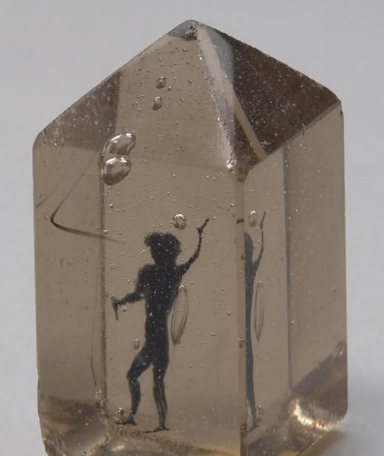
JudgeMental said:
This artifact, known as the “Devil in the Glass” (Teufel im Glas),
is a 17th-century curiosity currently held in the collection of the
Kunsthistorisches Museum in Vienna.The object is a small, solid glass prism (approx. 6.6 cm tall)
containing a tiny black figure.It was originally part of the collection of Archduke Leopold Wilhelm
in the mid-1600s.By 1720, an inventory in the Imperial Treasury (Kaiserliche Schatzkammer)
described it as a spiritus familiaris—a familiar spirit or demon—that had
supposedly been exorcised from a possessed person in Germany and
banished into the glass.In the 18th century, the Treasury presented it as physical evidence of
successful exorcism and the reality of supernatural forces.Modern analysis identifies the “demon” as a small figure made of black
lead or a similar dark material that was cast or placed inside the glass
during its manufacture.While it belongs to the Kunsthistorisches Museum, it is often displayed
at Ambras Castle in Innsbruck, which houses the Archduke’s “Chamber of Art
and Curiosities”.This artifact serves as a notable example of a Wunderkammer (cabinet of curiosities)
object, where natural or man-made items were often given mystical backstories to
enhance their value and wonder.
I like that object. Ta.
Blue Methane Flames From Long-Term Natural Gas Leak in Haripur, Bangladesh
Spiny Norman said:
Blue Methane Flames From Long-Term Natural Gas Leak in Haripur, Bangladesh
Wow!
That is special.
:)
Spiny Norman said:
Blue Methane Flames From Long-Term Natural Gas Leak in Haripur, Bangladesh
Looks like “Conway’s Game of Life”.
Ian said:
https://www.ndtv.com/world-news/nasas-largest-library-to-permanently-close-on-jan-2-books-will-be-tossed-away-10170584
FMD!
That’s awful!
Michael V said:
Ian said:
https://www.ndtv.com/world-news/nasas-largest-library-to-permanently-close-on-jan-2-books-will-be-tossed-away-10170584FMD!
That’s awful!
Surely they could offer to sell or give them away.
roughbarked said:
Michael V said:
Ian said:
https://www.ndtv.com/world-news/nasas-largest-library-to-permanently-close-on-jan-2-books-will-be-tossed-away-10170584FMD!
That’s awful!
Surely they could offer to sell or give them away.
I guess Trump and his ilk do not see any worth in books. None whatsoever. Maybe if it were a library of Phantom or Superman comics it’d be different.
Michael V said:
roughbarked said:
Michael V said:FMD!
That’s awful!
Surely they could offer to sell or give them away.
I guess Trump and his ilk do not see any worth in books. None whatsoever. Maybe if it were a library of Phantom or Superman comics it’d be different.
No, they’d get chucked put too, and replaced with some new comic books with Trump as the central hero figure.
party_pants said:
Michael V said:
roughbarked said:Surely they could offer to sell or give them away.
I guess Trump and his ilk do not see any worth in books. None whatsoever. Maybe if it were a library of Phantom or Superman comics it’d be different.
No, they’d get chucked
puttoo, and replaced with some new comic books with Trump as the central hero figure.
out
party_pants said:
Michael V said:
roughbarked said:Surely they could offer to sell or give them away.
I guess Trump and his ilk do not see any worth in books. None whatsoever. Maybe if it were a library of Phantom or Superman comics it’d be different.
No, they’d get chucked put too, and replaced with some new comic books with Trump as the central hero figure.
Ah, yes you are right.

Churchill Gets a Doctor’s Note to Drink Unlimited Alcohol While Visiting the U.S. During Prohibition (1932)
Smoke seen from the deck of USS Essex in the Norwegian Sea after a Soviet Tupolev Tu-16 Badger F crashed nearby on May 25th 1968
The aircraft made a series of low passes near the carrier before clipping the surface with a wingtip and cartwheeling into the sea with no survivors
https://x.com/hw97karbine/status/2007140078875992258
I shouldn’t laugh, but … dumbarses.
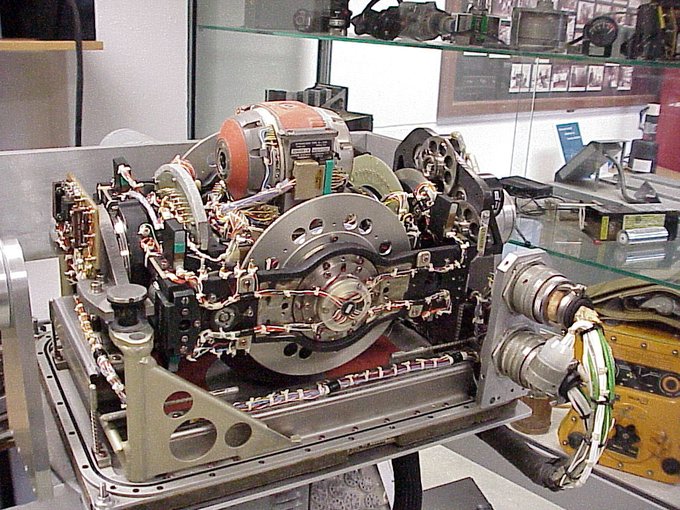
The Inertial Navigation System heart. This package has three sensitive gyroscopes and accelerometers that are used to track the position of aircraft.
The old ones used to take a bit over 15 minutes to setup and stabilise before the plane could move.
Spiny Norman said:
Smoke seen from the deck of USS Essex in the Norwegian Sea after a Soviet Tupolev Tu-16 Badger F crashed nearby on May 25th 1968The aircraft made a series of low passes near the carrier before clipping the surface with a wingtip and cartwheeling into the sea with no survivors
https://x.com/hw97karbine/status/2007140078875992258
I shouldn’t laugh, but … dumbarses.
Chinese military pilots seem to get similar orders from above.
Spiny Norman said:
Smoke seen from the deck of USS Essex in the Norwegian Sea after a Soviet Tupolev Tu-16 Badger F crashed nearby on May 25th 1968The aircraft made a series of low passes near the carrier before clipping the surface with a wingtip and cartwheeling into the sea with no survivors
https://x.com/hw97karbine/status/2007140078875992258
I shouldn’t laugh, but … dumbarses.
Chinese military pilots seem to get similar orders from above.
https://www.youtube.com/watch?v=dHh1OyD7oZg
Finding K XI: A WWII Submarine in the Rottnest Ship’s Graveyard
https://www.youtube.com/watch?v=eiDhbZ8-BZI
The first really new compass since 1936 – I invented a new type of compass
The Map Reading Company
This guy is really good with navigation, maps and compasses etc.
JudgeMental said:
https://www.youtube.com/watch?v=eiDhbZ8-BZIThe first really new compass since 1936 – I invented a new type of compass
The Map Reading Company
This guy is really good with navigation, maps and compasses etc.
What can possibly be new in the world of compasses?
Printable aluminum alloy sets strength records, may enable lighter aircraft parts.
Incorporating machine learning, MIT engineers developed a way to 3D print alloys that are much stronger than conventionally manufactured versions.
The new printable metal is made from a mix of aluminum and other elements that the team identified using a combination of simulations and machine learning, which significantly pruned the number of possible combinations of materials to search through. While traditional methods would require simulating over 1 million possible combinations of materials, the team’s new machine learning-based approach needed only to evaluate 40 possible compositions before identifying an ideal mix for a high-strength, printable aluminum alloy.
When they printed the alloy and tested the resulting material, the team confirmed that, as predicted, the aluminum alloy was as strong as the strongest aluminum alloys that are manufactured today using traditional casting methods.
The researchers envision that the new printable aluminum could be made into stronger, more lightweight and temperature-resistant products, such as fan blades in jet engines. Fan blades are traditionally cast from titanium — a material that is more than 50 percent heavier and up to 10 times costlier than aluminum — or made from advanced composites.
“If we can use lighter, high-strength material, this would save a considerable amount of energy for the transportation industry,” says Mohadeseh Taheri-Mousavi, who led the work as a postdoc at MIT and is now an assistant professor at Carnegie Mellon University.
“Because 3D printing can produce complex geometries, save material, and enable unique designs, we see this printable alloy as something that could also be used in advanced vacuum pumps, high-end automobiles, and cooling devices for data centers,” adds John Hart, the Class of 1922 Professor and head of the Department of Mechanical Engineering at MIT.
Printable aluminum alloy sets strength records, may enable lighter aircraft parts.
Incorporating machine learning, MIT engineers developed a way to 3D print alloys that are much stronger than conventionally manufactured versions.
The new printable metal is made from a mix of aluminum and other elements that the team identified using a combination of simulations and machine learning, which significantly pruned the number of possible combinations of materials to search through. While traditional methods would require simulating over 1 million possible combinations of materials, the team’s new machine learning-based approach needed only to evaluate 40 possible compositions before identifying an ideal mix for a high-strength, printable aluminum alloy.
When they printed the alloy and tested the resulting material, the team confirmed that, as predicted, the aluminum alloy was as strong as the strongest aluminum alloys that are manufactured today using traditional casting methods.
The researchers envision that the new printable aluminum could be made into stronger, more lightweight and temperature-resistant products, such as fan blades in jet engines. Fan blades are traditionally cast from titanium — a material that is more than 50 percent heavier and up to 10 times costlier than aluminum — or made from advanced composites.
“If we can use lighter, high-strength material, this would save a considerable amount of energy for the transportation industry,” says Mohadeseh Taheri-Mousavi, who led the work as a postdoc at MIT and is now an assistant professor at Carnegie Mellon University.
“Because 3D printing can produce complex geometries, save material, and enable unique designs, we see this printable alloy as something that could also be used in advanced vacuum pumps, high-end automobiles, and cooling devices for data centers,” adds John Hart, the Class of 1922 Professor and head of the Department of Mechanical Engineering at MIT.
So what have the Romans ever done for us?
https://www.youtube.com/shorts/I8zjr5a3k90
They worked out how to dig fairy precise water tunnels through mountains and over valleys with huge stone aquaducts.
Nice one Centurion.
For Mr V – The BRM 1.5 litre supercharged V16 from the mid 1950’s.
One of the best-sounding cars ever, but unfortunately terrible reliability and very difficult to drive as the power hit at 6,000 rpm and double ever 2,000 rpm past that.
Spiny Norman said:
For Mr V – The BRM 1.5 litre supercharged V16 from the mid 1950’s.
One of the best-sounding cars ever, but unfortunately terrible reliability and very difficult to drive as the power hit at 6,000 rpm and double ever 2,000 rpm past that.
:)
Thanks for posting.
:)
Michael V said:
Spiny Norman said:
For Mr V – The BRM 1.5 litre supercharged V16 from the mid 1950’s.
One of the best-sounding cars ever, but unfortunately terrible reliability and very difficult to drive as the power hit at 6,000 rpm and double ever 2,000 rpm past that.:)
Thanks for posting.
:)
If you have a poke around there’s a superb audio of one – owned by Nick Mason the drummer in Pink Floyd – going for a couple of laps around a track in the UK. Every time I hear it, the hairs on my back stand up, it’s amazing and LOUD when the beast goes past the microphone in the pits.
Spiny Norman said:
Michael V said:
Spiny Norman said:
For Mr V – The BRM 1.5 litre supercharged V16 from the mid 1950’s.
One of the best-sounding cars ever, but unfortunately terrible reliability and very difficult to drive as the power hit at 6,000 rpm and double ever 2,000 rpm past that.:)
Thanks for posting.
:)
If you have a poke around there’s a superb audio of one – owned by Nick Mason the drummer in Pink Floyd – going for a couple of laps around a track in the UK. Every time I hear it, the hairs on my back stand up, it’s amazing and LOUD when the beast goes past the microphone in the pits.
One of the Honda RC174 250cc cross-frame sixes was demonstrated at Eastern Creek, one time I was there. The 20,000 rpm song was fantastic. Very noisy!
And such a tiny bike.
Interestingl,y Pommie John was also there, racing. I got a photo of his bike. But this was before I met him. I ended up working on that bike from time to time.
Michael V said:
Spiny Norman said:
Michael V said::)
Thanks for posting.
:)
If you have a poke around there’s a superb audio of one – owned by Nick Mason the drummer in Pink Floyd – going for a couple of laps around a track in the UK. Every time I hear it, the hairs on my back stand up, it’s amazing and LOUD when the beast goes past the microphone in the pits.
One of the Honda RC174 250cc cross-frame sixes was demonstrated at Eastern Creek, one time I was there. The 20,000 rpm song was fantastic. Very noisy!
And such a tiny bike.
Interestingl,y Pommie John was also there, racing. I got a photo of his bike. But this was before I met him. I ended up working on that bike from time to time.
Lovely!
I had an original CBR250RR four-cylinder with a redline of 19,000 rpm from the factory. It too sounded bloody good … although with large me draped over it, it wasn’t very fast. lol.
The fastest I ever got it was about 145 km/h, doing about 15,000 rpm in 6th gear.
Spiny Norman said:
Lovely!
I had an original CBR250RR four-cylinder with a redline of 19,000 rpm from the factory. It too sounded bloody good … although with large me draped over it, it wasn’t very fast. lol.
The fastest I ever got it was about 145 km/h, doing about 15,000 rpm in 6th gear.
I just remembered I have some photos of it on this laptop.


Spiny Norman said:
Michael V said:
Spiny Norman said:If you have a poke around there’s a superb audio of one – owned by Nick Mason the drummer in Pink Floyd – going for a couple of laps around a track in the UK. Every time I hear it, the hairs on my back stand up, it’s amazing and LOUD when the beast goes past the microphone in the pits.
One of the Honda RC174 250cc cross-frame sixes was demonstrated at Eastern Creek, one time I was there. The 20,000 rpm song was fantastic. Very noisy!
And such a tiny bike.
Interestingl,y Pommie John was also there, racing. I got a photo of his bike. But this was before I met him. I ended up working on that bike from time to time.
Lovely!
I had an original CBR250RR four-cylinder with a redline of 19,000 rpm from the factory. It too sounded bloody good … although with large me draped over it, it wasn’t very fast. lol.
The fastest I ever got it was about 145 km/h, doing about 15,000 rpm in 6th gear.
I do remember looking at that bike at your place.
:)
Sounds about right for 45-odd horsepower.
Spiny Norman said:
Spiny Norman said:
Lovely!
I had an original CBR250RR four-cylinder with a redline of 19,000 rpm from the factory. It too sounded bloody good … although with large me draped over it, it wasn’t very fast. lol.
The fastest I ever got it was about 145 km/h, doing about 15,000 rpm in 6th gear.
I just remembered I have some photos of it on this laptop.
:)
Ta.
Gotta say I’m tempted to build my own electric bike.
Naff-all ADR’s to comply with and it’d be pretty rapid.
Spiny Norman said:
Gotta say I’m tempted to build my own electric bike.
Naff-all ADR’s to comply with and it’d be pretty rapid.
Please do it!
:)
Michael V said:
Spiny Norman said:
Gotta say I’m tempted to build my own electric bike.
Naff-all ADR’s to comply with and it’d be pretty rapid.
Please do it!
:)
How about one of these motors? 800 hp and 86 lbs.
https://engineerine.com/koenigseggs-dark-matter/
The big problem with that is getting a large enough battery pack to be able to use that power. But to be fair, you could never use 800 hp nearly anywhere in a bike.
How Are Chinese Mini Excavators So Affordable? I Went to China to Find Out
https://www.youtube.com/watch?v=uzPrIa75Ga4
Interesting, I thought. I’ve been tempted to get one some time soon, as we might be doing a fair bit of earthmoving later in the year.
The First Production All-Solid-State Battery Is Here, And It Promises 5-Minute Charging
Donut Lab claims it can build gigawatt-hours worth of solid-state batteries today without using any rare materials.
It’s finally happening, folks. The world’s first commercially available, production-ready all-solid-state battery is here, and it promises to revolutionize the electric vehicle world, from cars and motorcycles to big rigs and construction equipment. At least that’s what Donut Lab, the company that makes the battery, claims.
The startup, which is known for its sci-fi in-wheel electric motor that powers Verge’s electric motorcycles, claims the game-changing liquid-less battery cells and modules are available now at a gigawatt-hour level production capacity to companies worldwide. Verge Motorcycles said that its updated TS Pro two-wheeler will become the world’s first production all-solid-state-powered EV when it reaches customers in the first quarter of this year.
https://insideevs.com/news/783380/first-production-ready-all-solid-state-battery-official-specs/
https://www.youtube.com/watch?v=Y-aPS2AwMbc
So solid-state batteries are here now. That’s rather good news indeed.
Spiny Norman said:
How Are Chinese Mini Excavators So Affordable? I Went to China to Find Outhttps://www.youtube.com/watch?v=uzPrIa75Ga4
Interesting, I thought. I’ve been tempted to get one some time soon, as we might be doing a fair bit of earthmoving later in the year.
I’ve seen a few them on small properties..

Crazee prices
Ian said:
Spiny Norman said:
How Are Chinese Mini Excavators So Affordable? I Went to China to Find Outhttps://www.youtube.com/watch?v=uzPrIa75Ga4
Interesting, I thought. I’ve been tempted to get one some time soon, as we might be doing a fair bit of earthmoving later in the year.
I’ve seen a few them on small properties..
Crazee prices
yes cheap machine but that is plus freight, thats what’ll kll ya
https://www.facebook.com/reel/678579615117941
Watch incredible footage of NASA’s Perseverance rover landing on
Mars’ Jezero Crater in February 2021. This landing began a mission
to explore the Red Planet that still continues today.